Luxembourg - Small but Special
In June 2021 I took the opportunity of borders reopening as the Coronavirus situation improved to visit Luxembourg, one of the last countries in Western Europe that I have not yet had the chance to explore

In June 2021 I took the opportunity of borders reopening as the Coronavirus situation improved to visit Luxembourg, one of the last countries in Western Europe that I have not yet had the chance to explore. With less than 1 million people and an area of less than 3000 sq km, it is one of the smallest countries in the world, but at the same time has one of the highest GDP per capita.
Luxembourg features a rich history with many amazing castles dotted around the landscape, and a diverse and multicultural history and presence. Take a look at the photos below to get a glimpse of what I was able to see in 48 hours.

Hohllay Cave
Our first stop was in Berdorf, where you can find a small network of caves created by mining activity.

Man-made
The area was used to create circular millstones until the 19th century, so these are not natural cave structures.
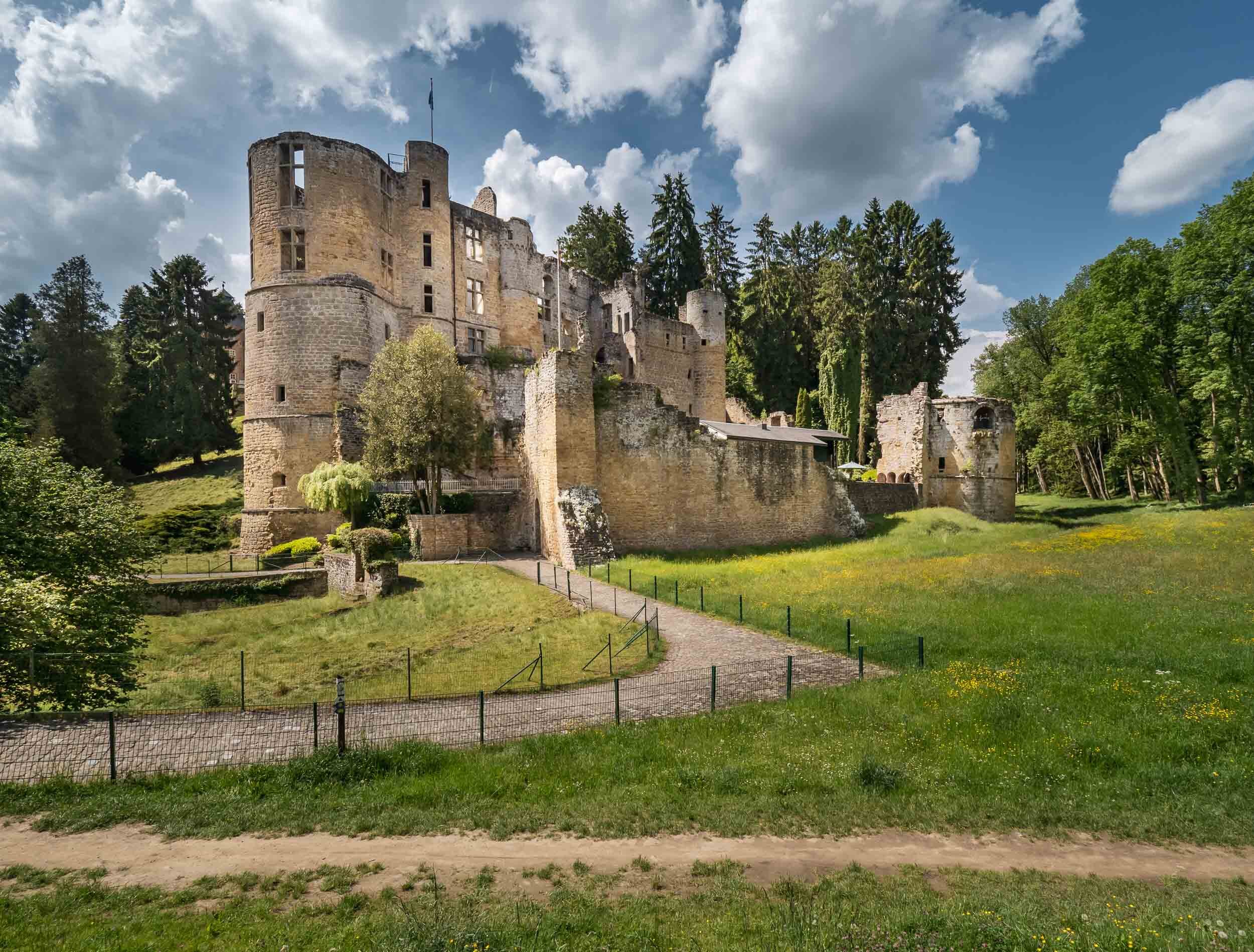
Beaufort Castle
Our second stop was Beaufort Castle, just a short drive away.
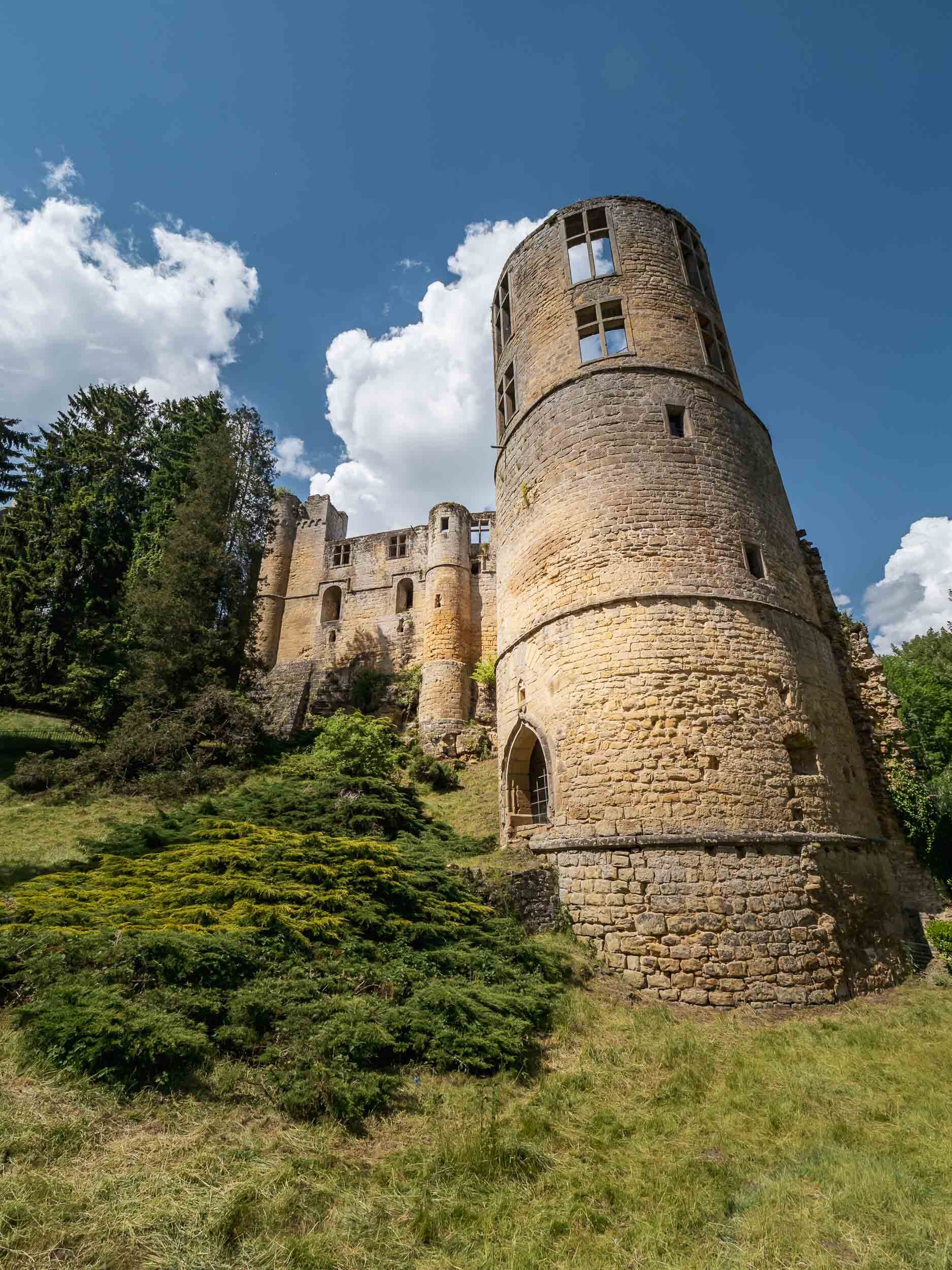
11th Century
First built almost 1000 years ago, since 1988 it has been a Luxembourg national monument.

Trees
It is surrounded by a small river and beautiful forest.

Path
An elevated path leads over the grounds.
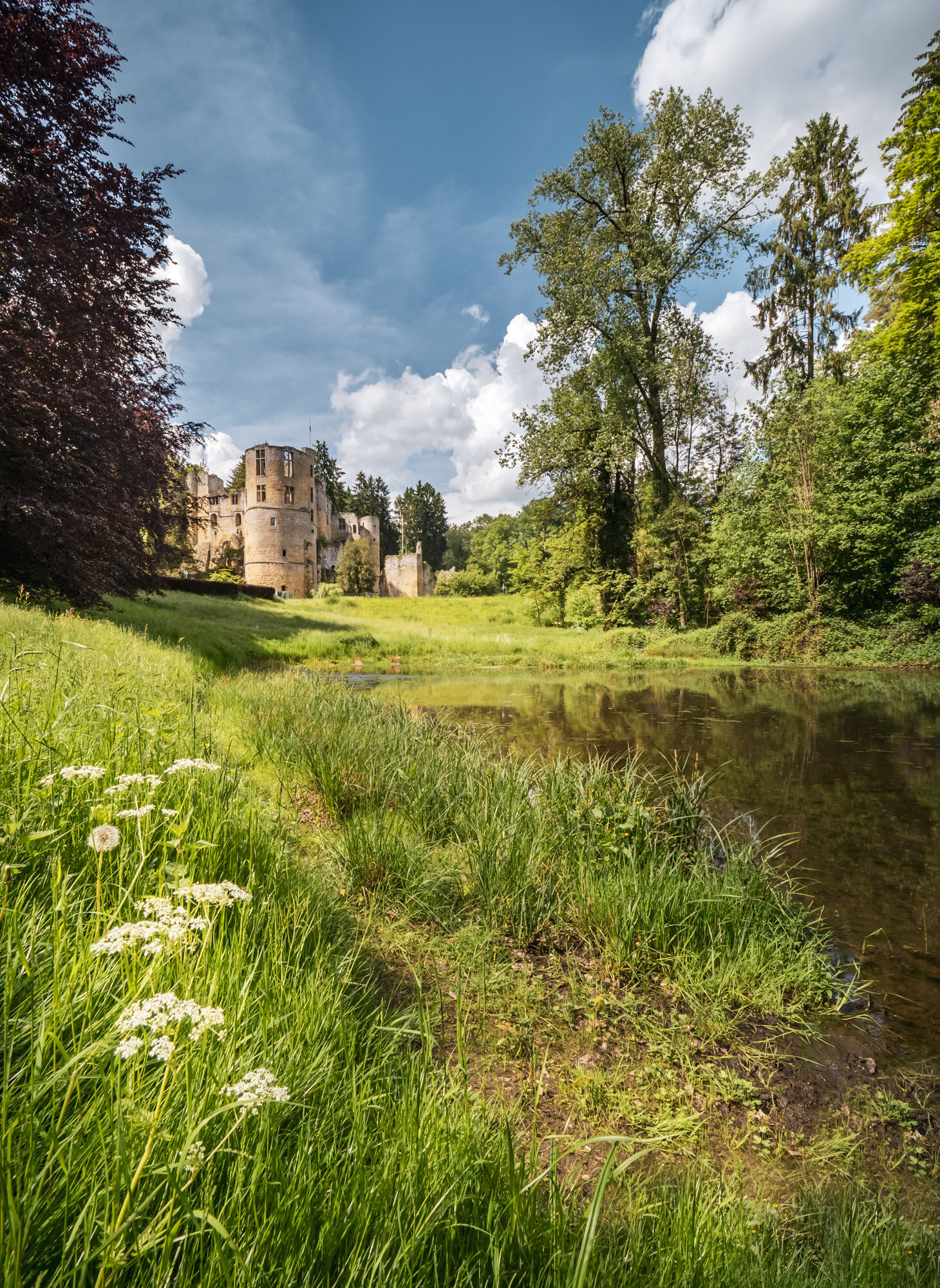
Grounds
A small lake on the southern side makes for beautiful scenery.
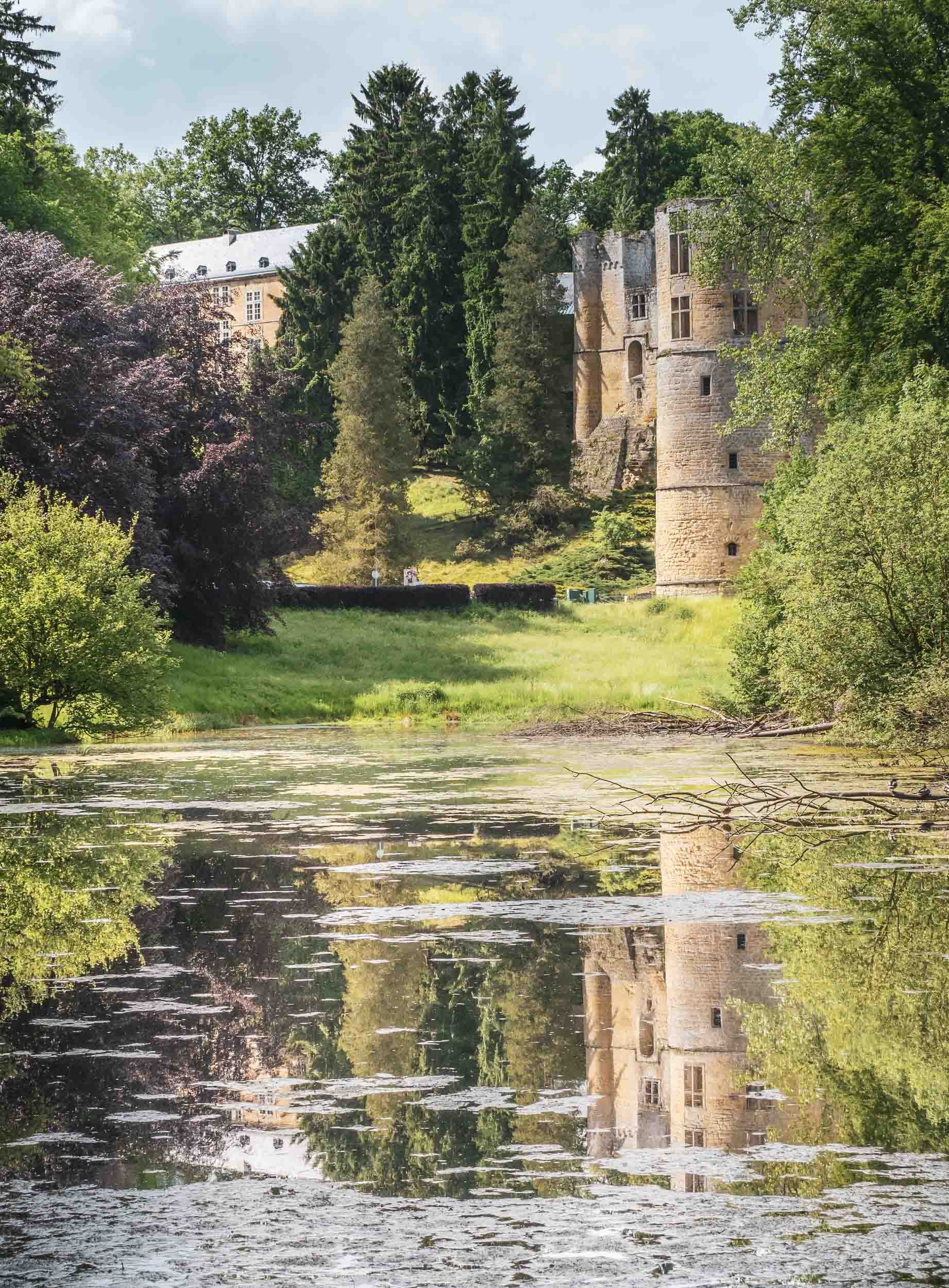
Reflections
Of course, that also means some great reflections.
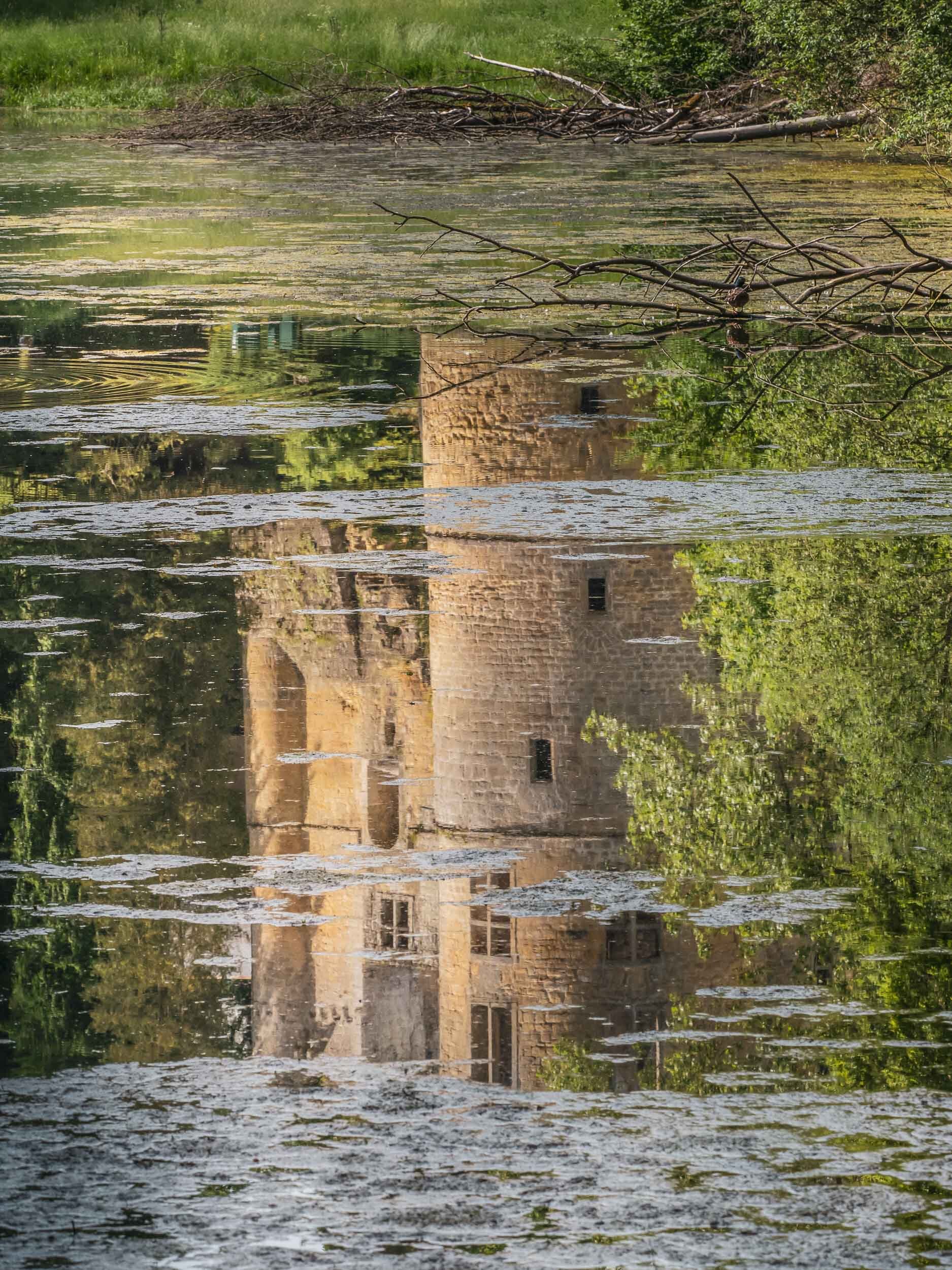
Upside Down
Did I say great reflections?
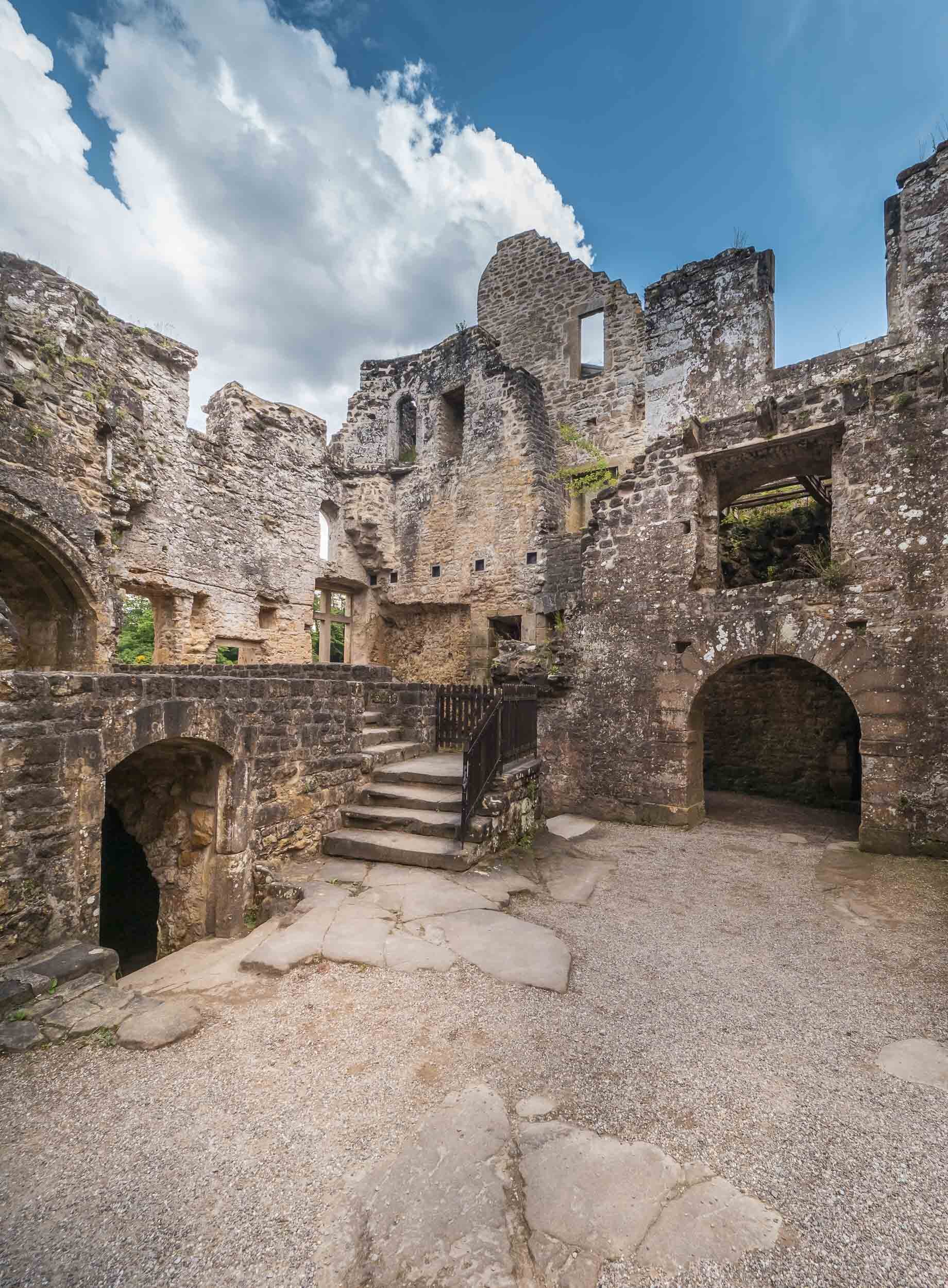
Interior
Most of the castle features medieval architecture, but a few Renaissance style extensions were added in the 1600s.
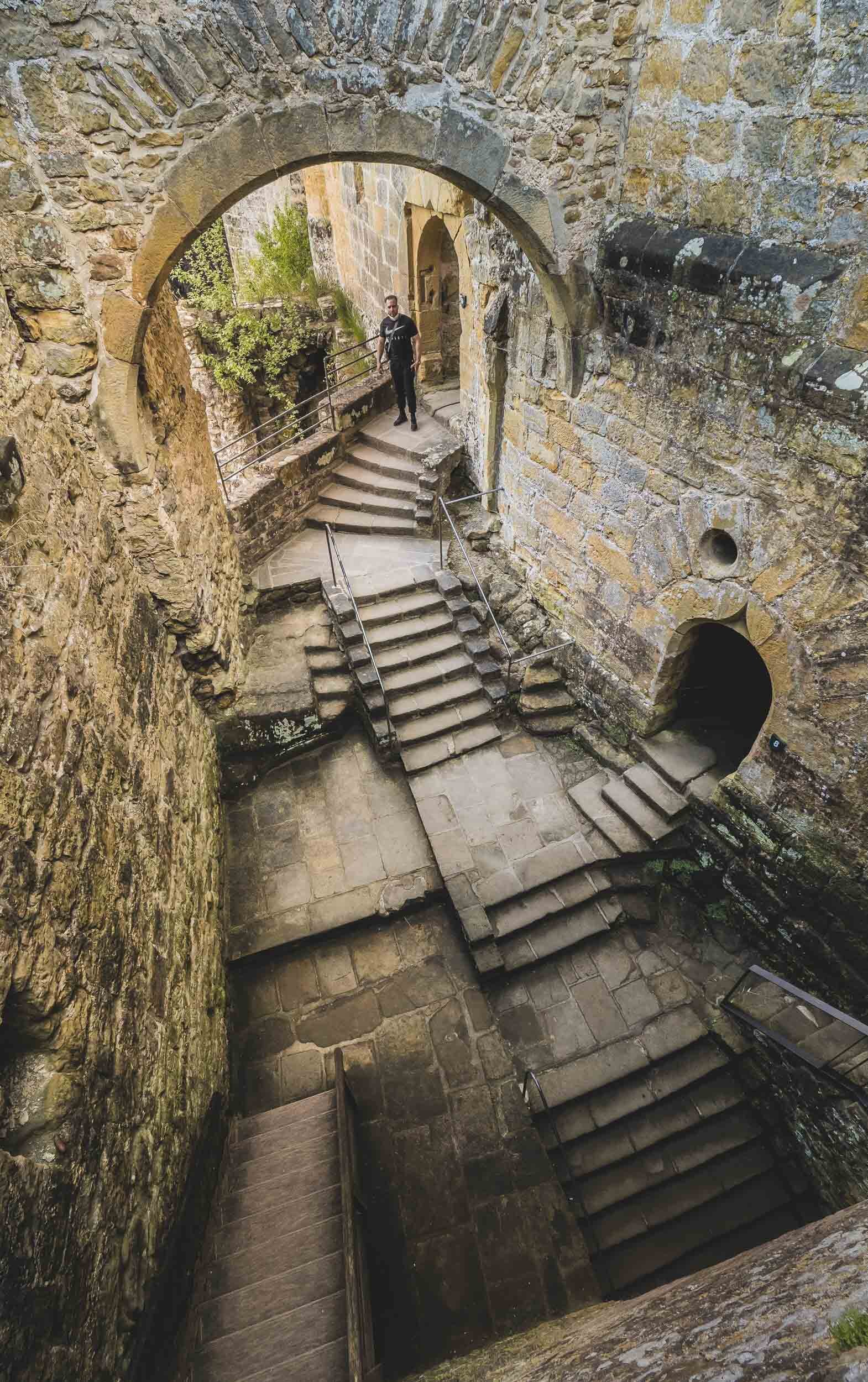
Stairs
The staircases in the central section leading to the different wings.
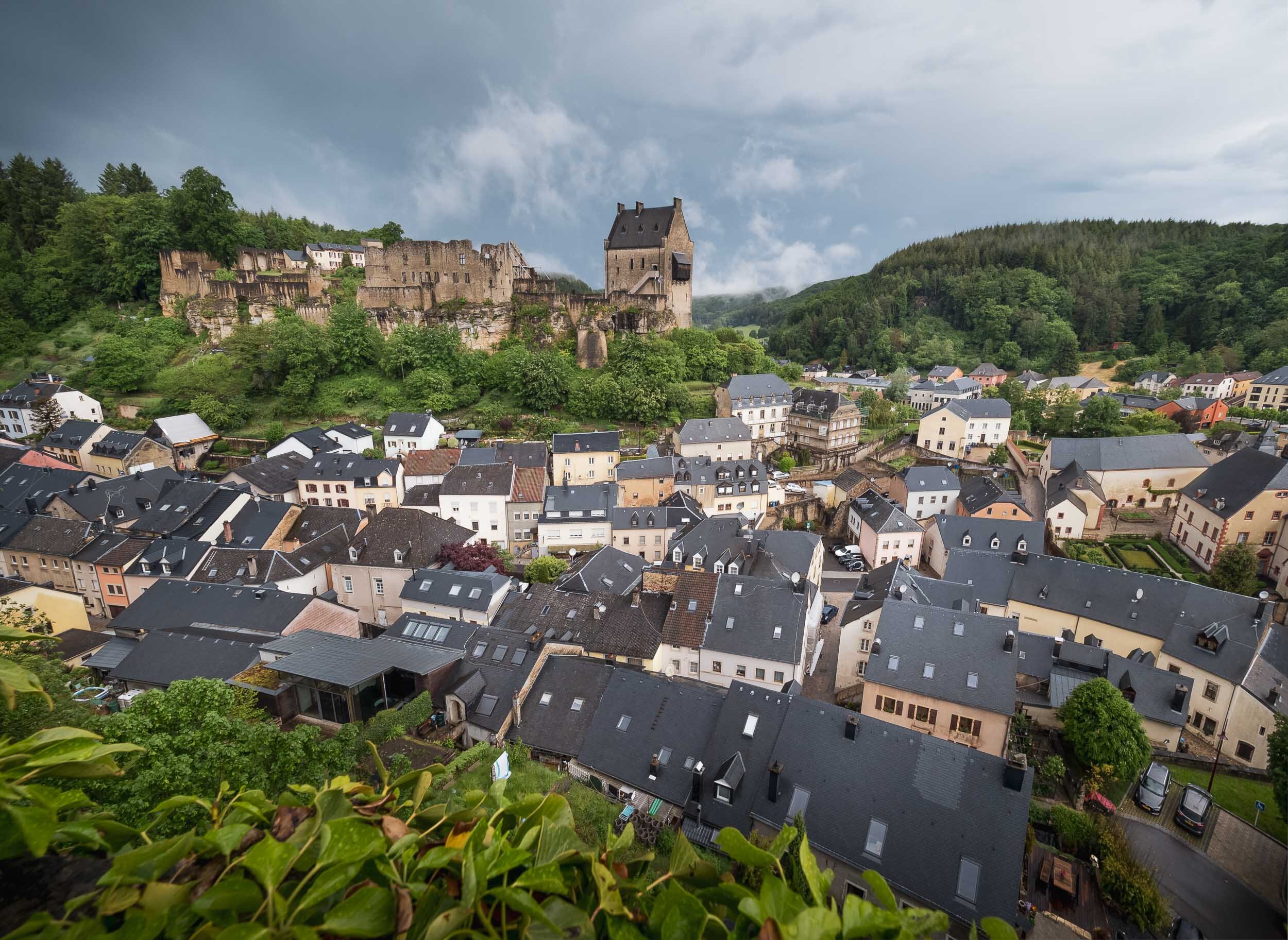
Larochette
The third stop brought us to Larochette, with another beautiful castle perched above the village. Dating from the 11th century, it was destroyed by fire at the end of the 16th century and has been restored and renovated in the 1970s.
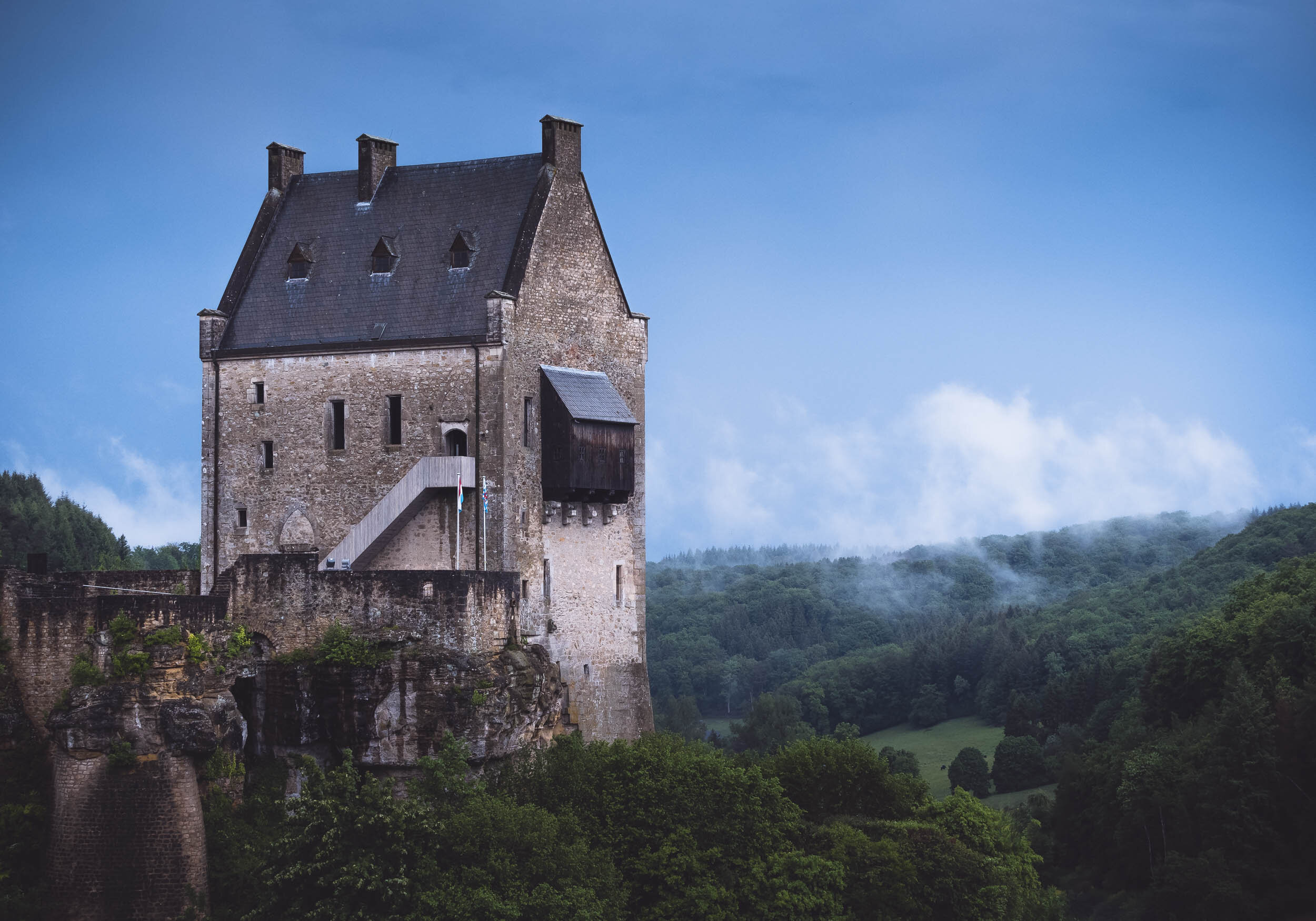
Clouds
After two hours of heavy (and I mean heavy) rain, a few clouds lingered around in the nearby forests as we made our way up to the viewpoint.
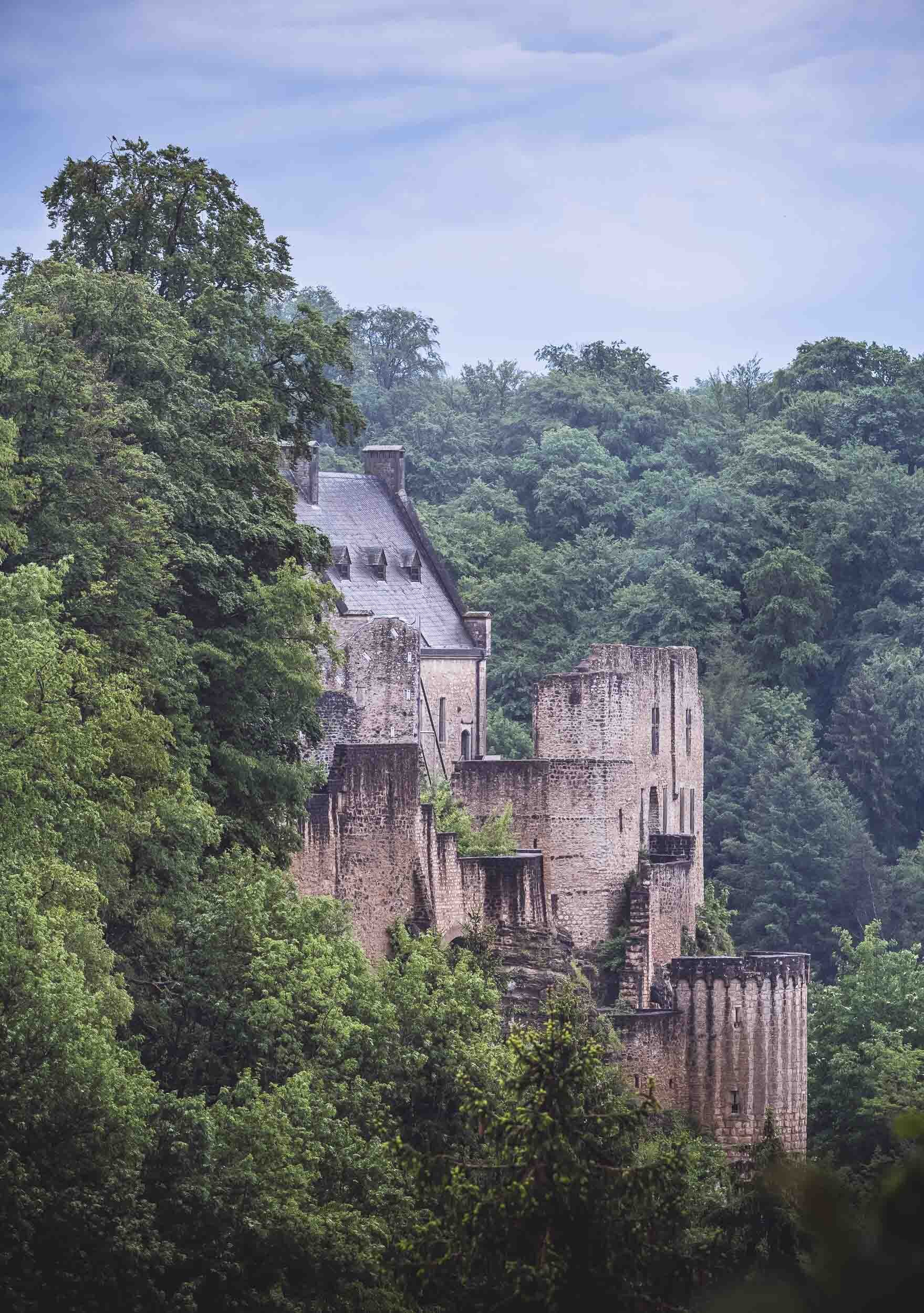
Glimpses
The surrounding hills offer a few glimpses towards the castle structure from different angles.
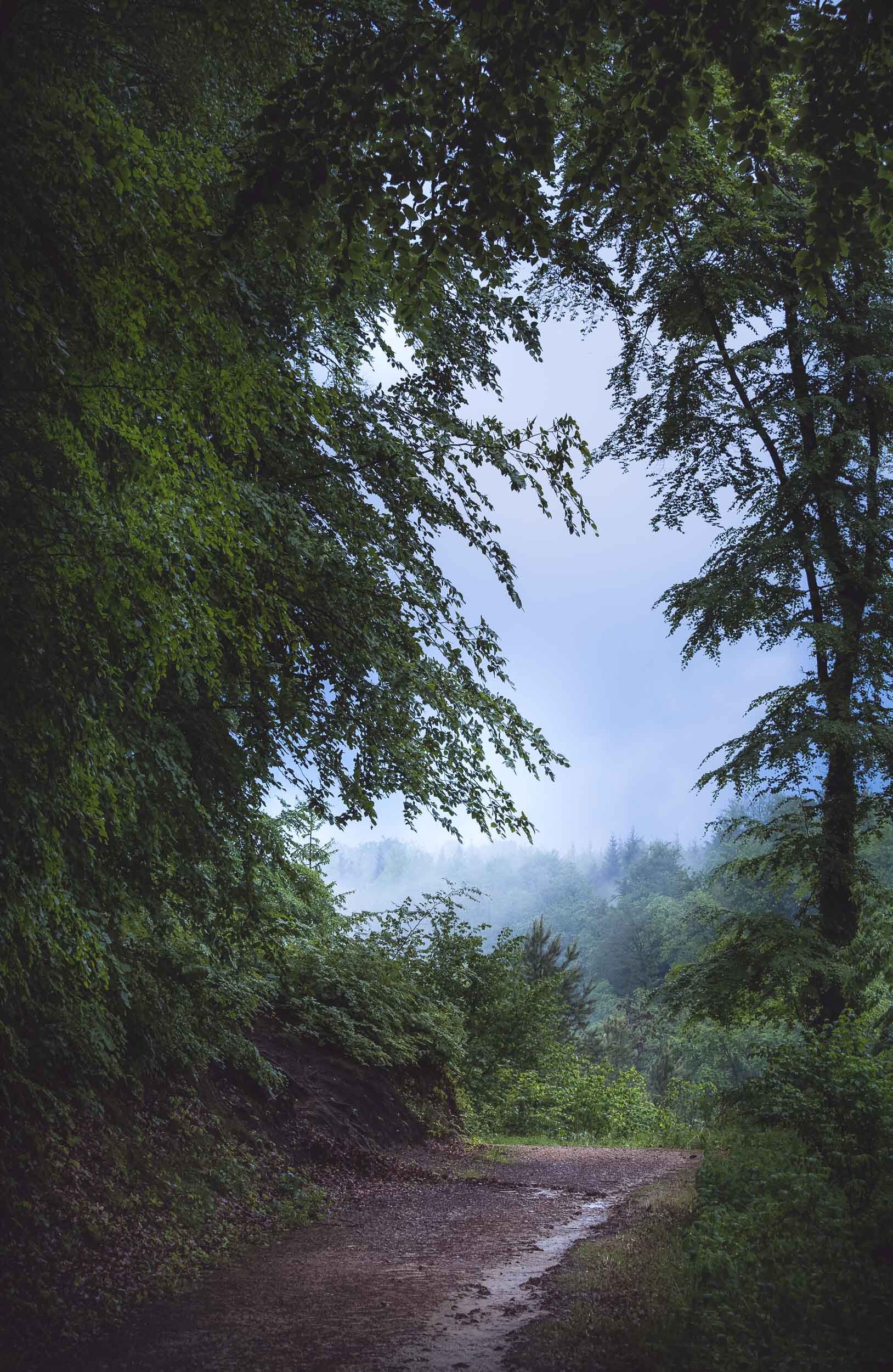
Post Rain
As the heavy rain subsided, the summer greenery of the forest felt twice as intense.

Path
We took them all - in total, we walked for over 40km during the 3 days.
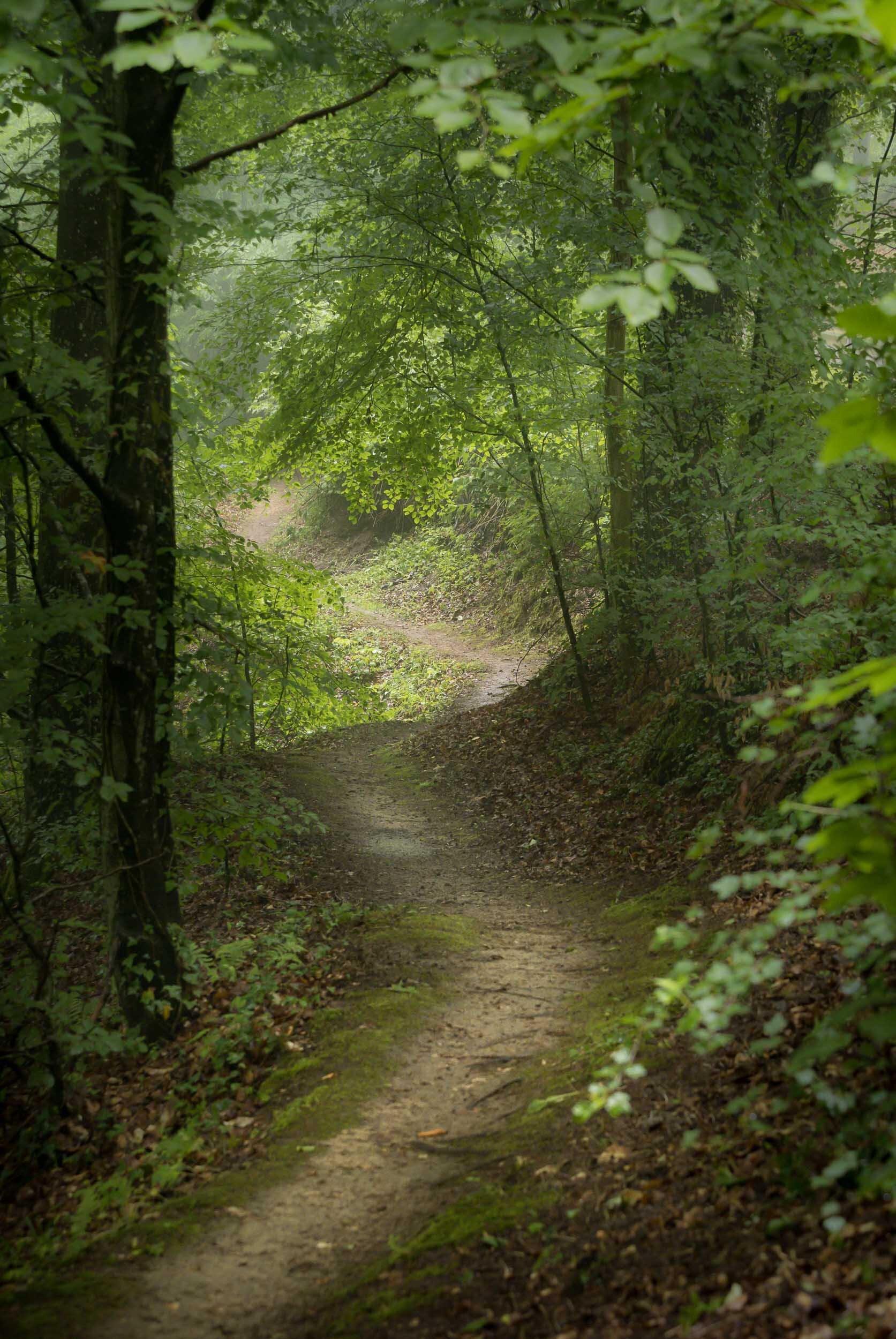
Worth it
Much easier though when the scenery looks like this.

Low Clouds
The post-rain clouds occasionally got stuck in the trees.
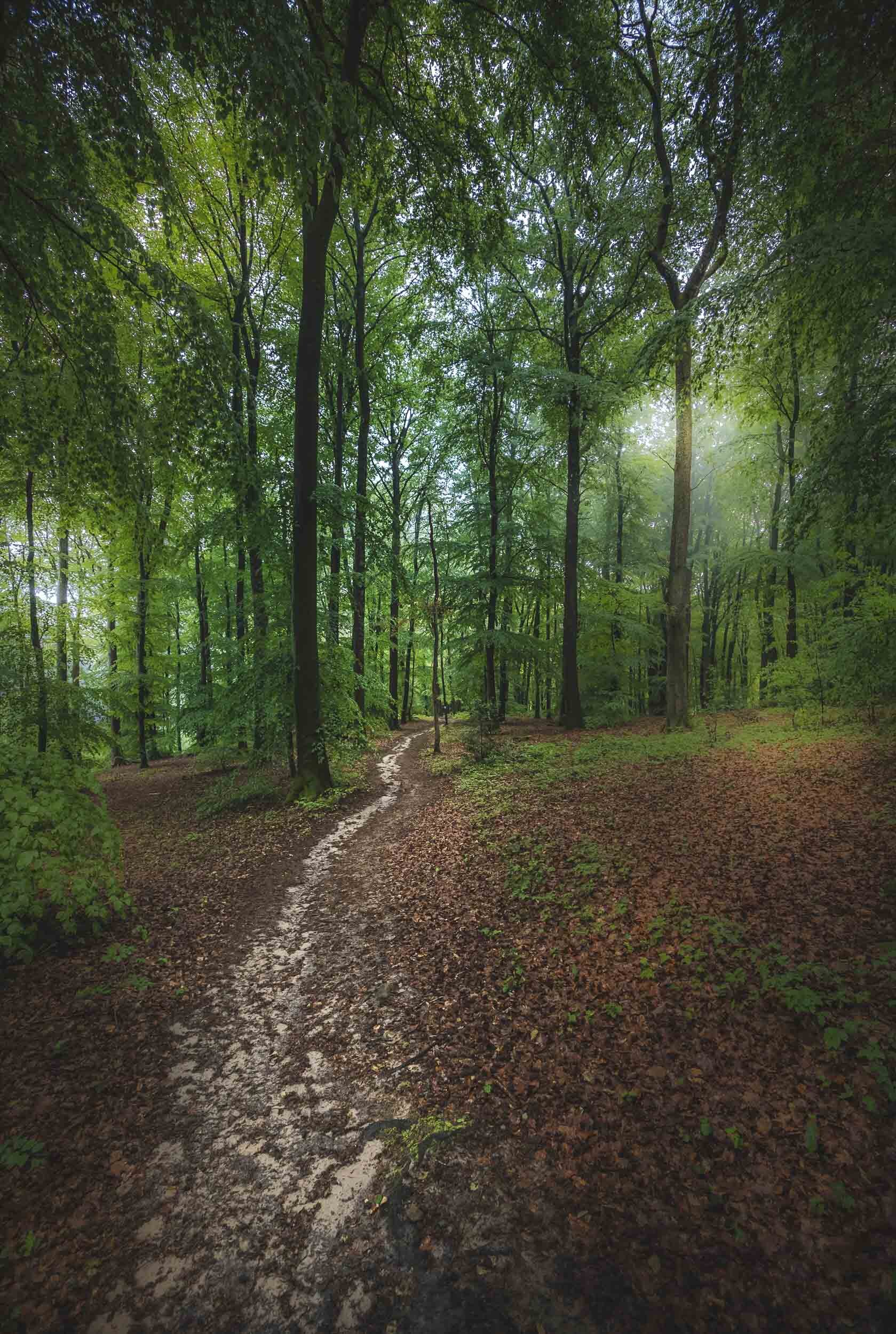
Enchanted
Another path through the forest areas surrounding Larochette.
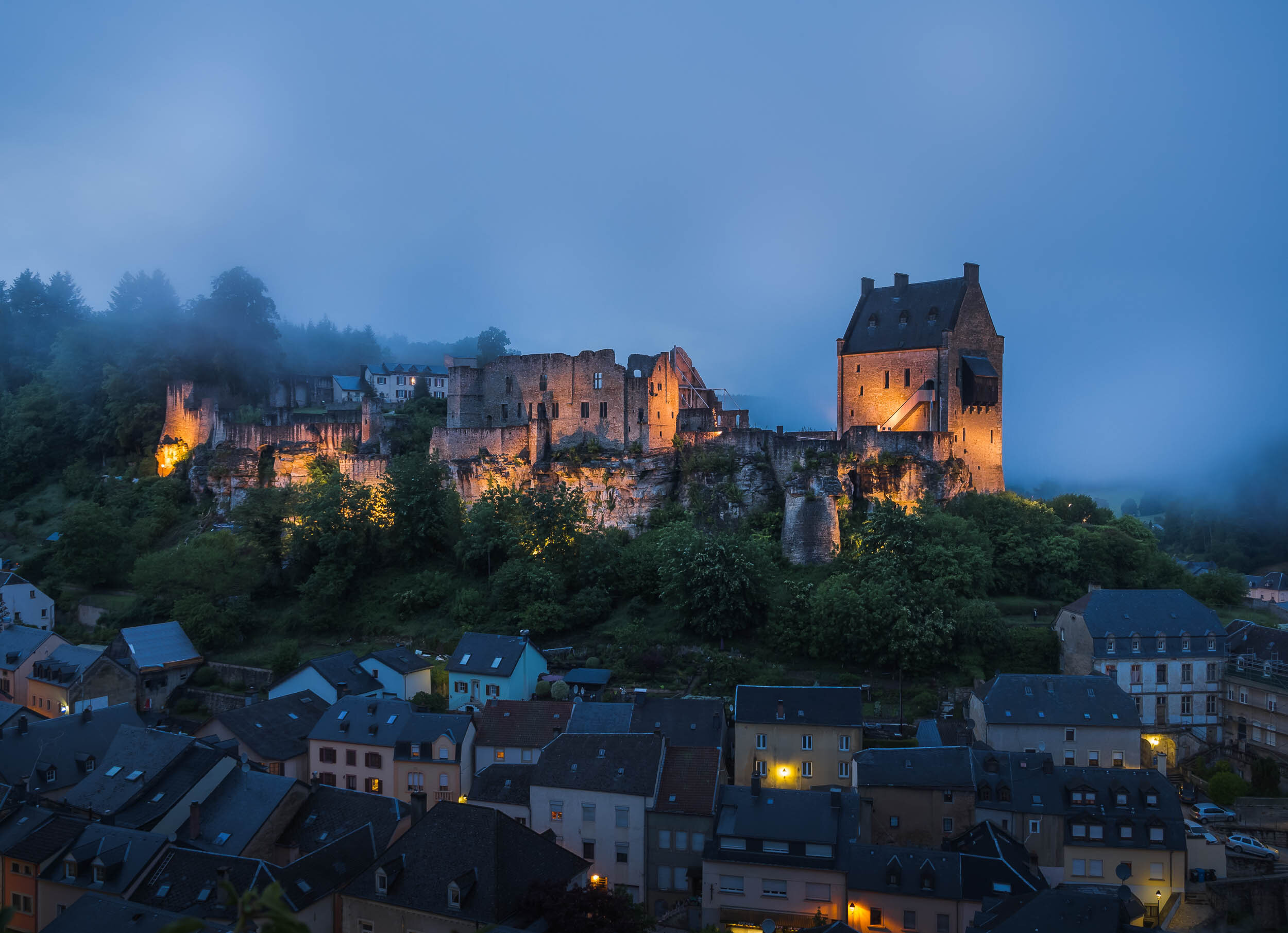
Nightfall
We made our way back to the castle viewpoint just as the lights turned on and the sky darkened.
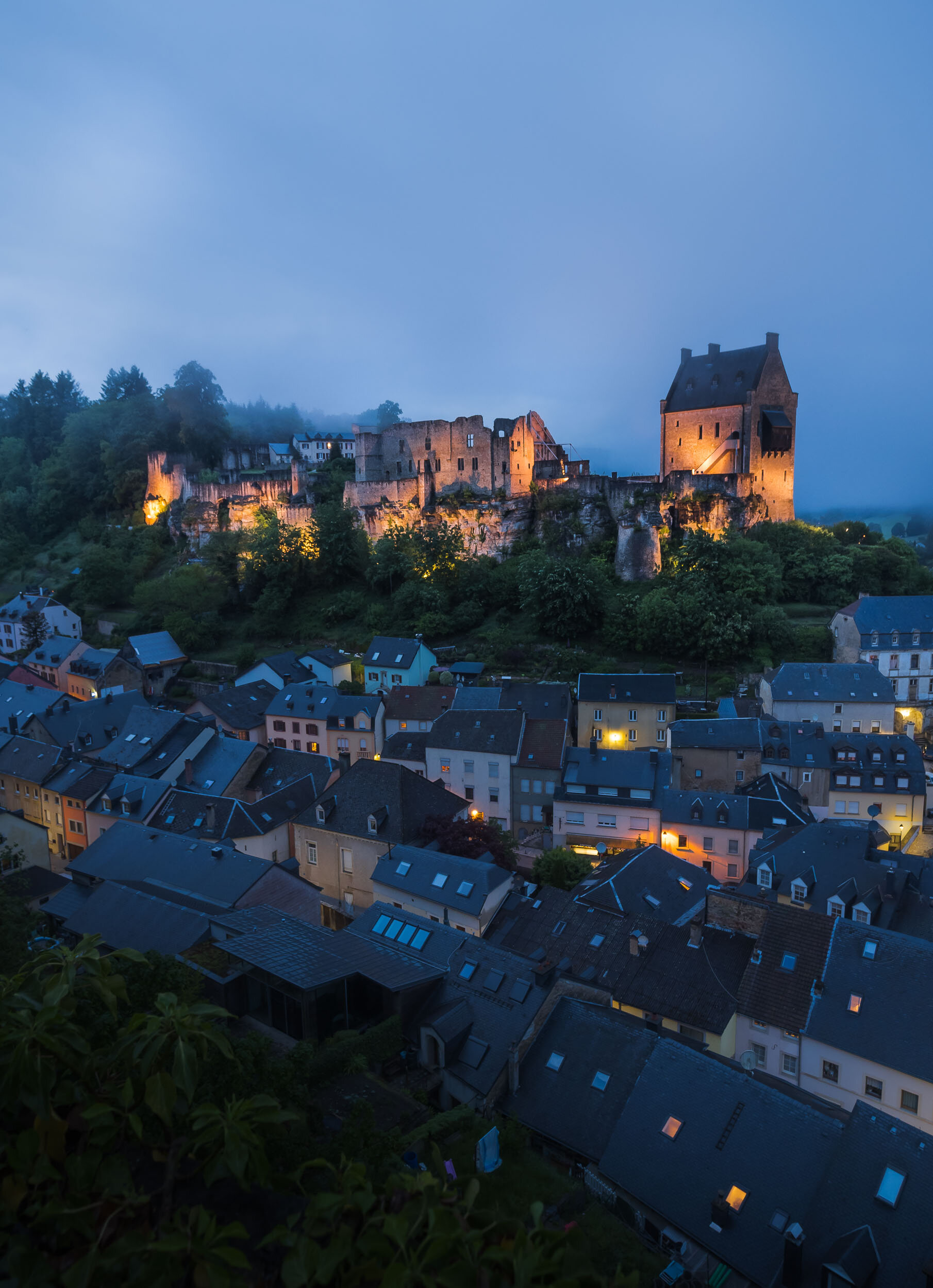
Commitment
To get these shots took some commitment - specifically a barefoot adventure through 5cm deep ice cold rain water.

Panoramic
A full view of Larochette.

Day 2
We spent our second day in Luxembourg city, the capital and home to around 125,000 people.
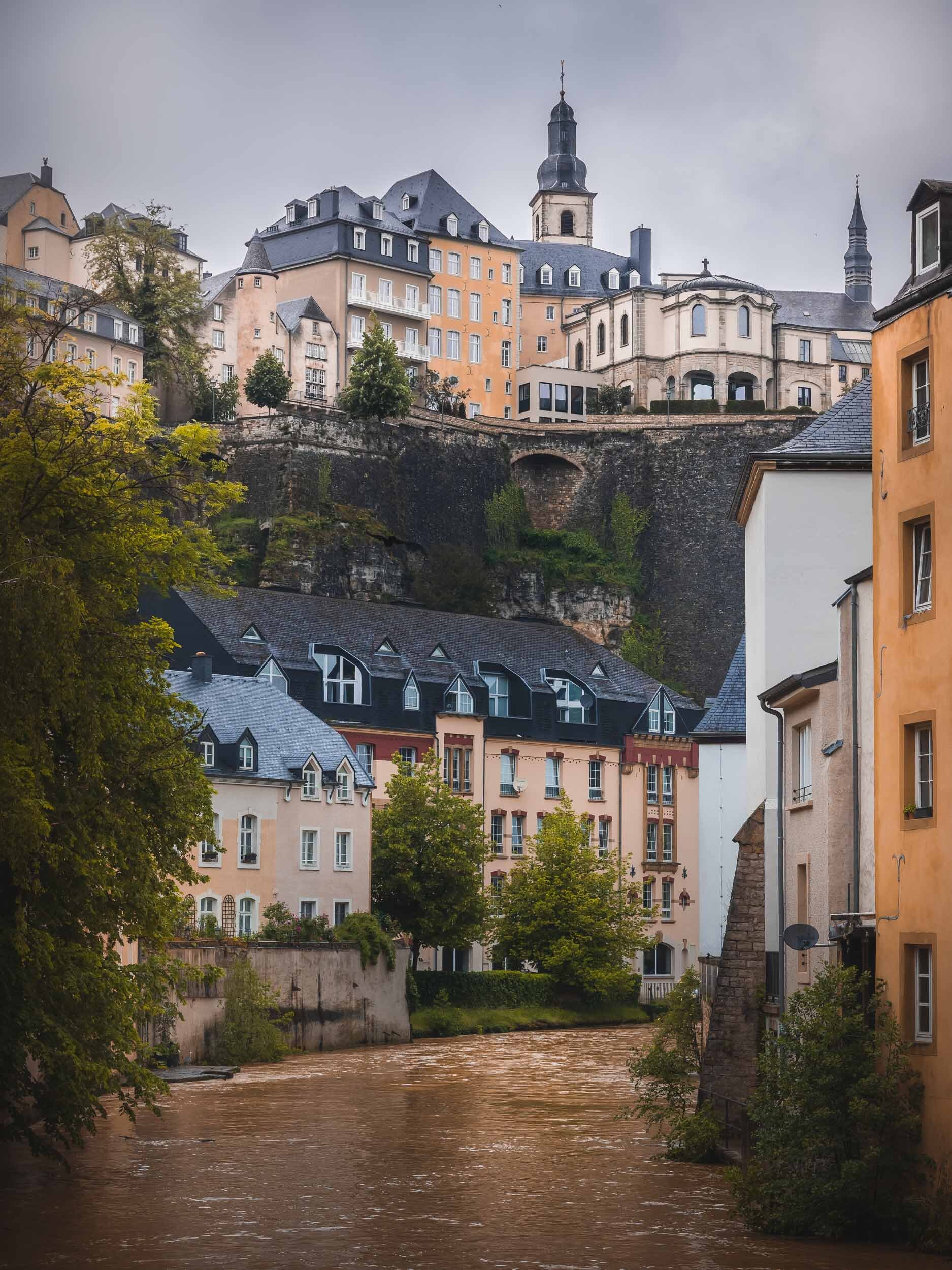
Grund
This district of Grund is quite picturesque - even more so when the Alzette river isn't brown owing to the heavy rainfall I would imagine.
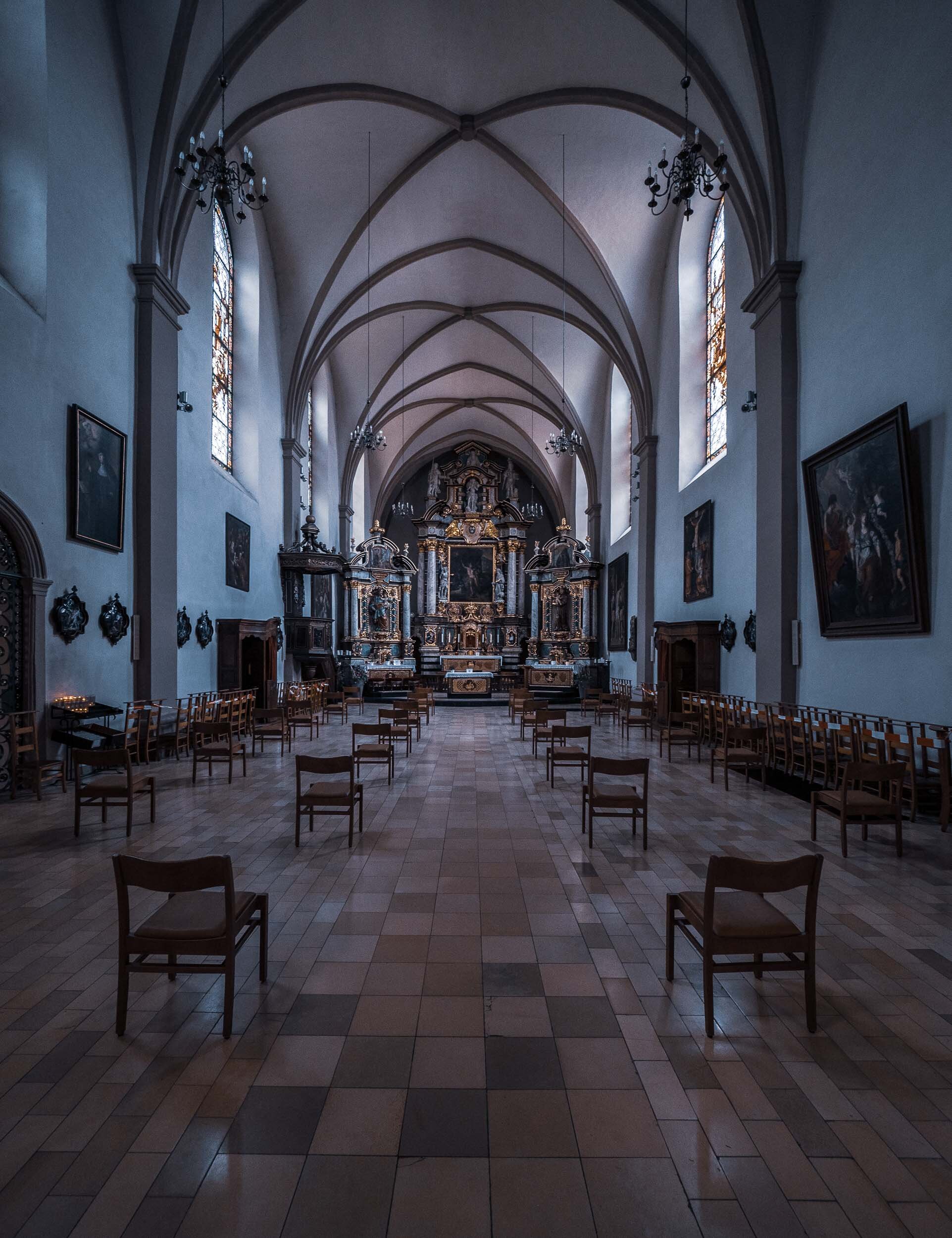
Socially Distanced
Religion during Covid.

International
Luxembourg is made up of almost 50% expatriats, and the city itself has an even higher percentage of non-native inhabitants.

The Look
I couldn't get a good cat shot this time, so this pigeon staring at me shall do the job.
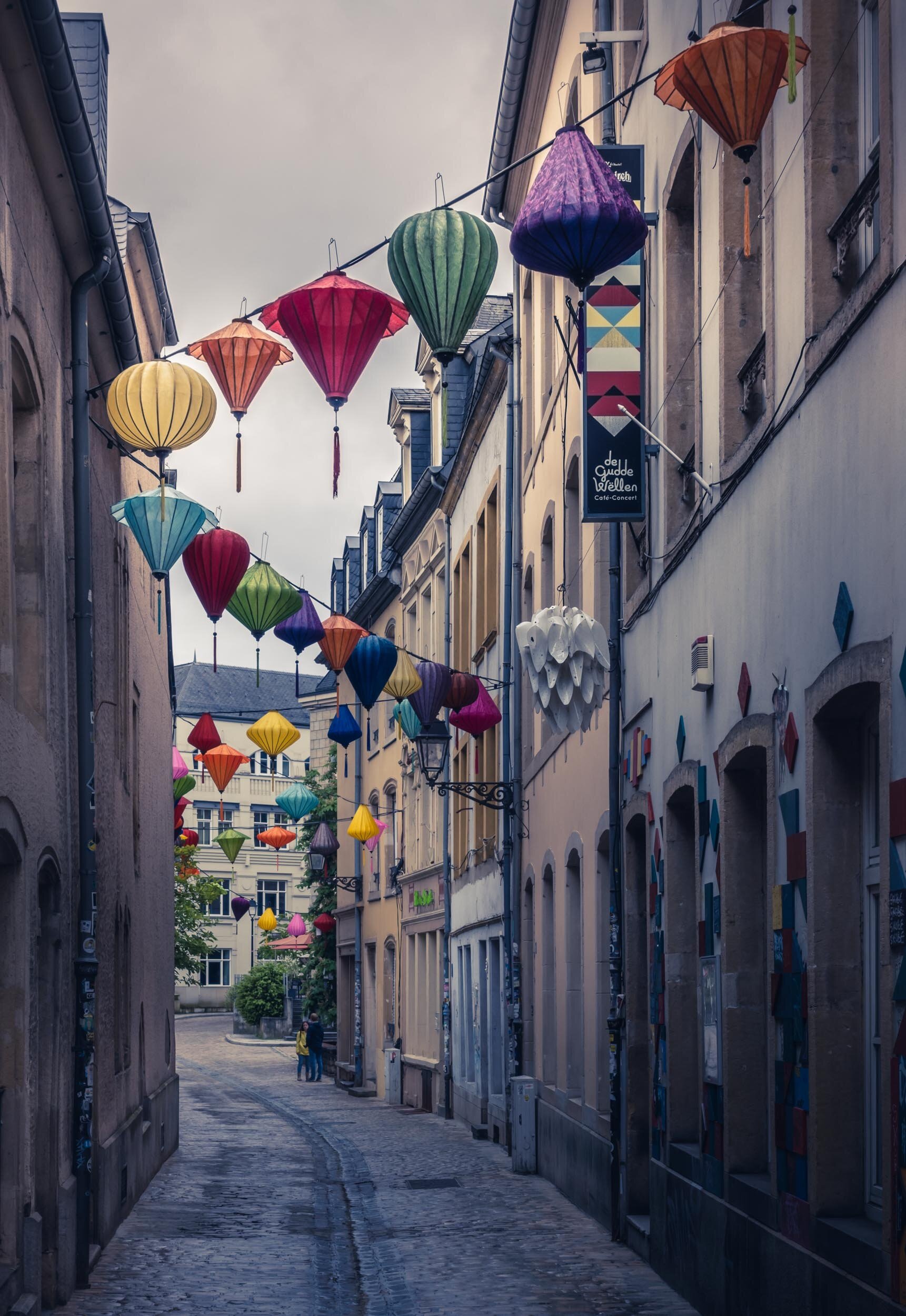
Colours
The first impression of the city was a bit quiet and sterile, but it did lighten up as the day progressed and we explored more.
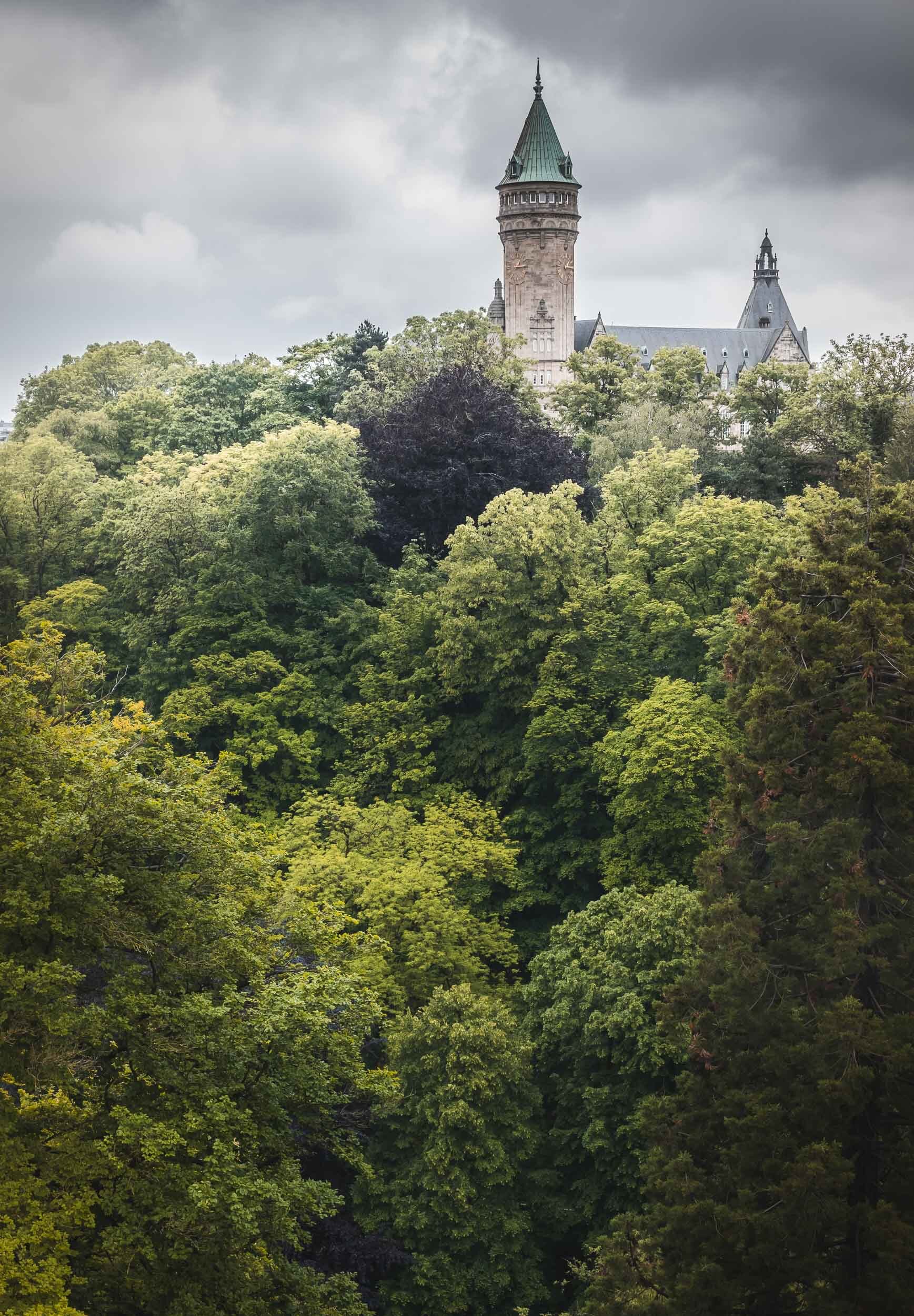
City Greens
The city centre is surrounded by canyons of the Alzette and Pétrusse rivers, filled with large trees, making for some interesting perspectives.
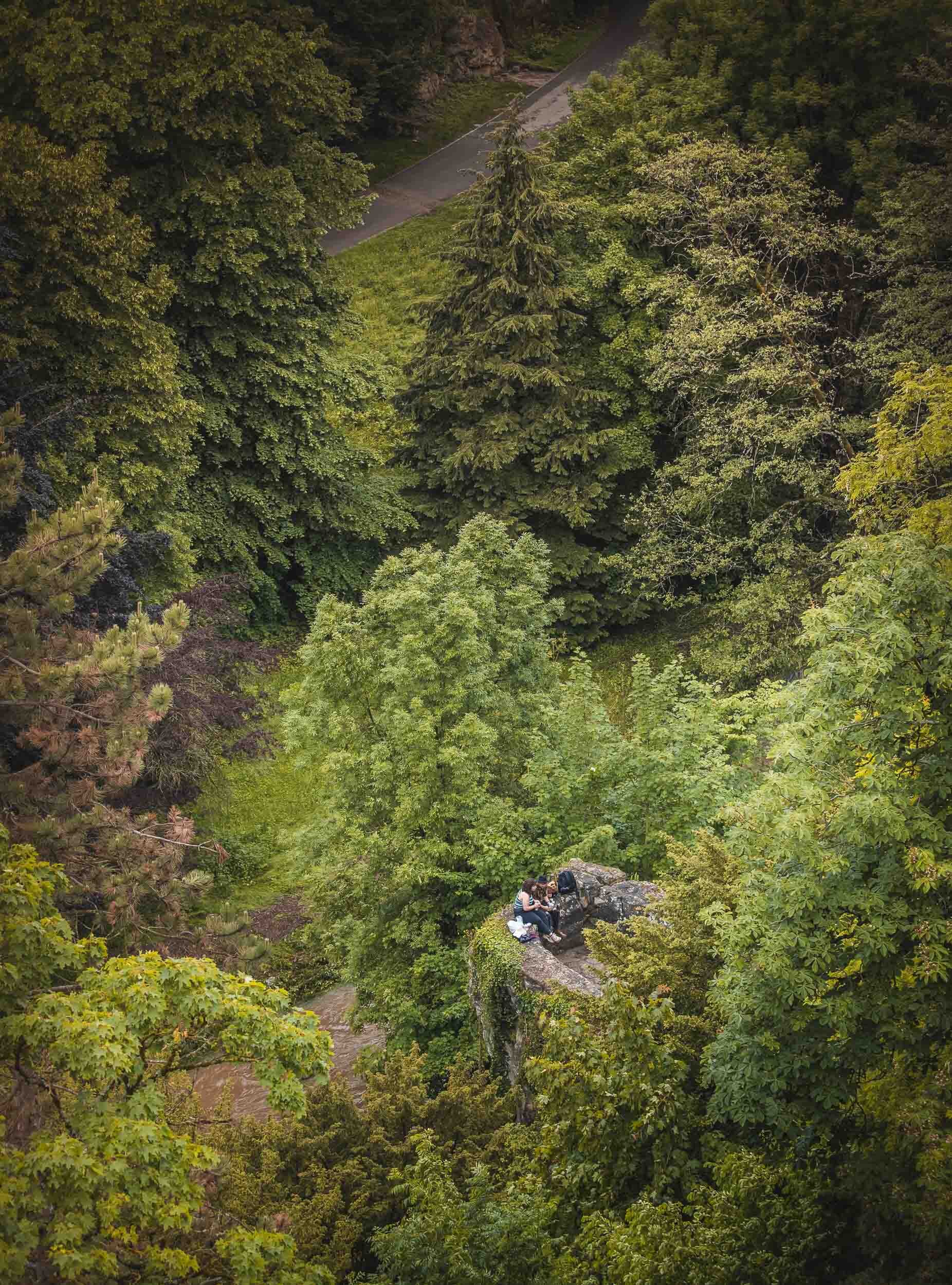
Spots
The canyons are accessible with small parks, bridges and full of small medieval remains.

Adolphe Bridge
This 1900s stone-arch bridge features a hanging walkway underneath, which opened in 2018.

In the Sky
A Cargolux plane - Luxembourg Airport's runway is in direct path of the city.
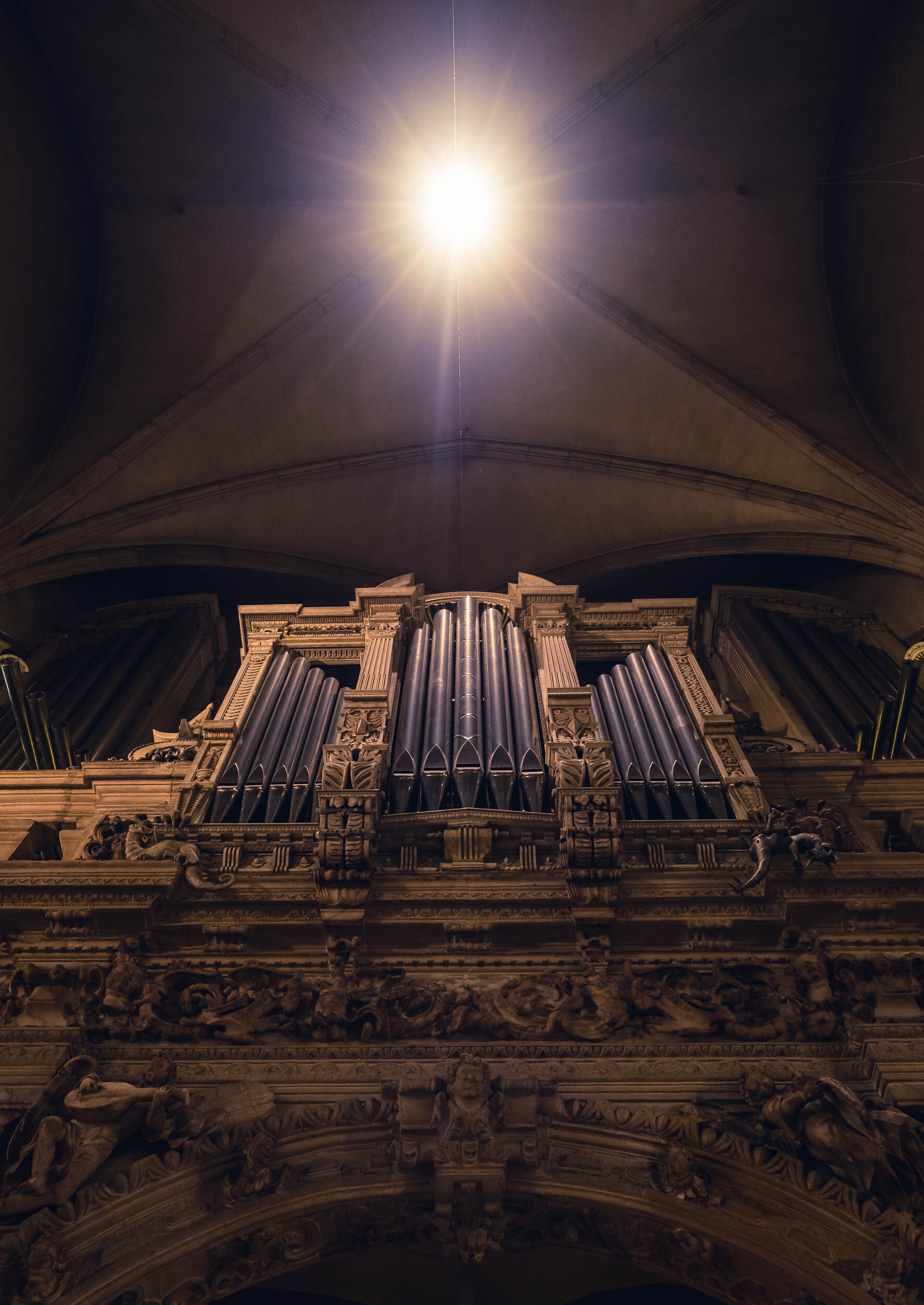
Pipes
One of my favourite instruments - this is the organ in the 17th century Notre Dame cathedral.

CBD
The Kirchberg district features the city's few skyscrapers, and several EU and other institutions.

Up
What goes up...

Down
... must come down again.

Modernity
This is one of the parts of the capital that feels distinctly modern - that is not the say the rest of the city didn't seem well maintained.

Philharmonie Luxembourg
Designed by Christian de Portzamparc, opened in 2005.

Contrasts
In many ways, one of the most fascinating aspects of the city is how elegantly it fused its medieval history with a modern cityscape, without overpowering it. Here's the Grand Duke Jean Museum of Modern Art with Musée Draï Eechelen in front.

Gold
The Court of Justice of the European Union is housed here.
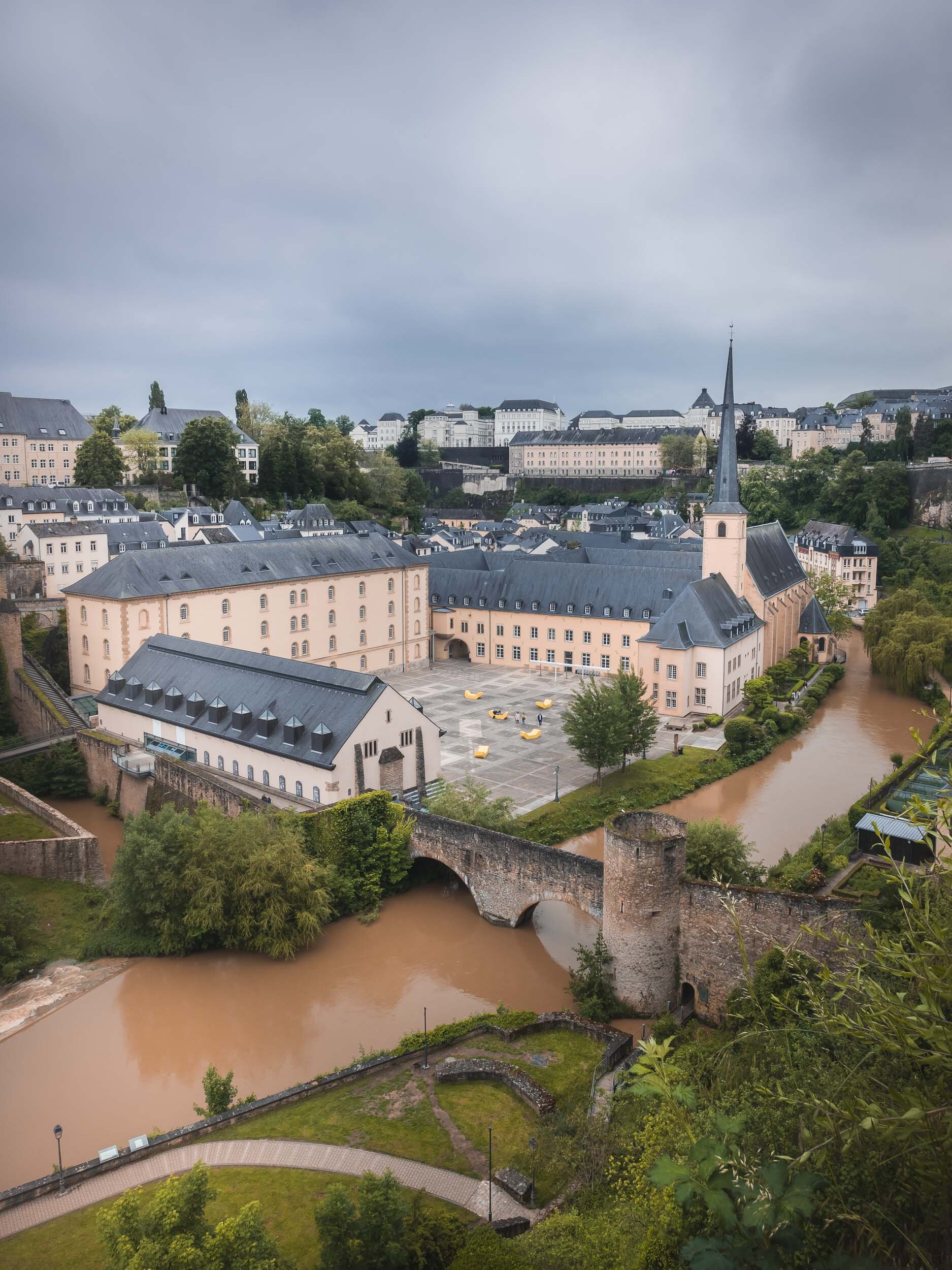
Church of Saint John
The Church of Saint John in Grund lies directly on the Alzette, and opposite the 11th cenury castle remains, around which the city settlement formed.
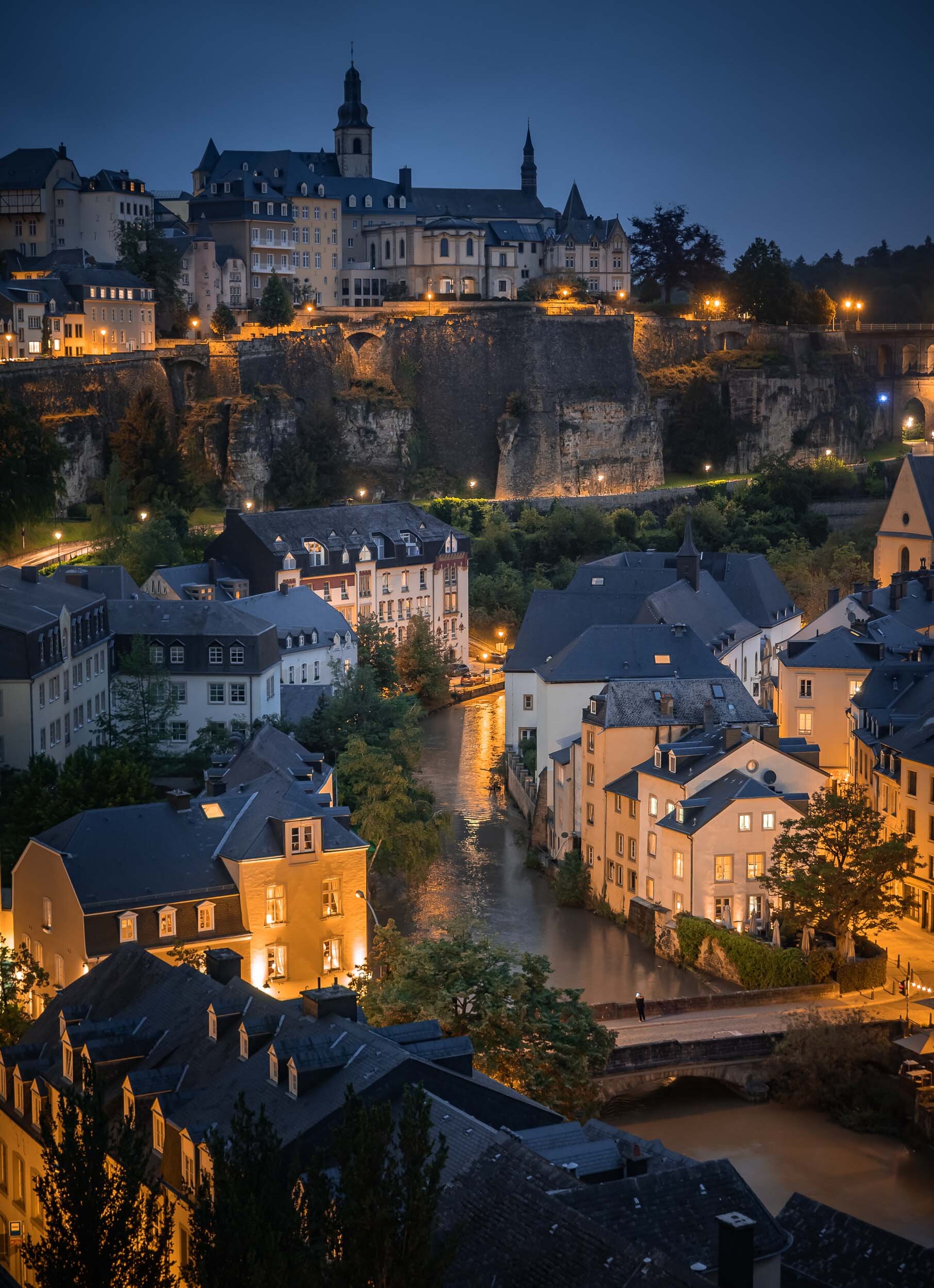
Evening Views
The late sunsets meant it took until 10pm to get these blue hour shots of the cityscape along the Alzette.
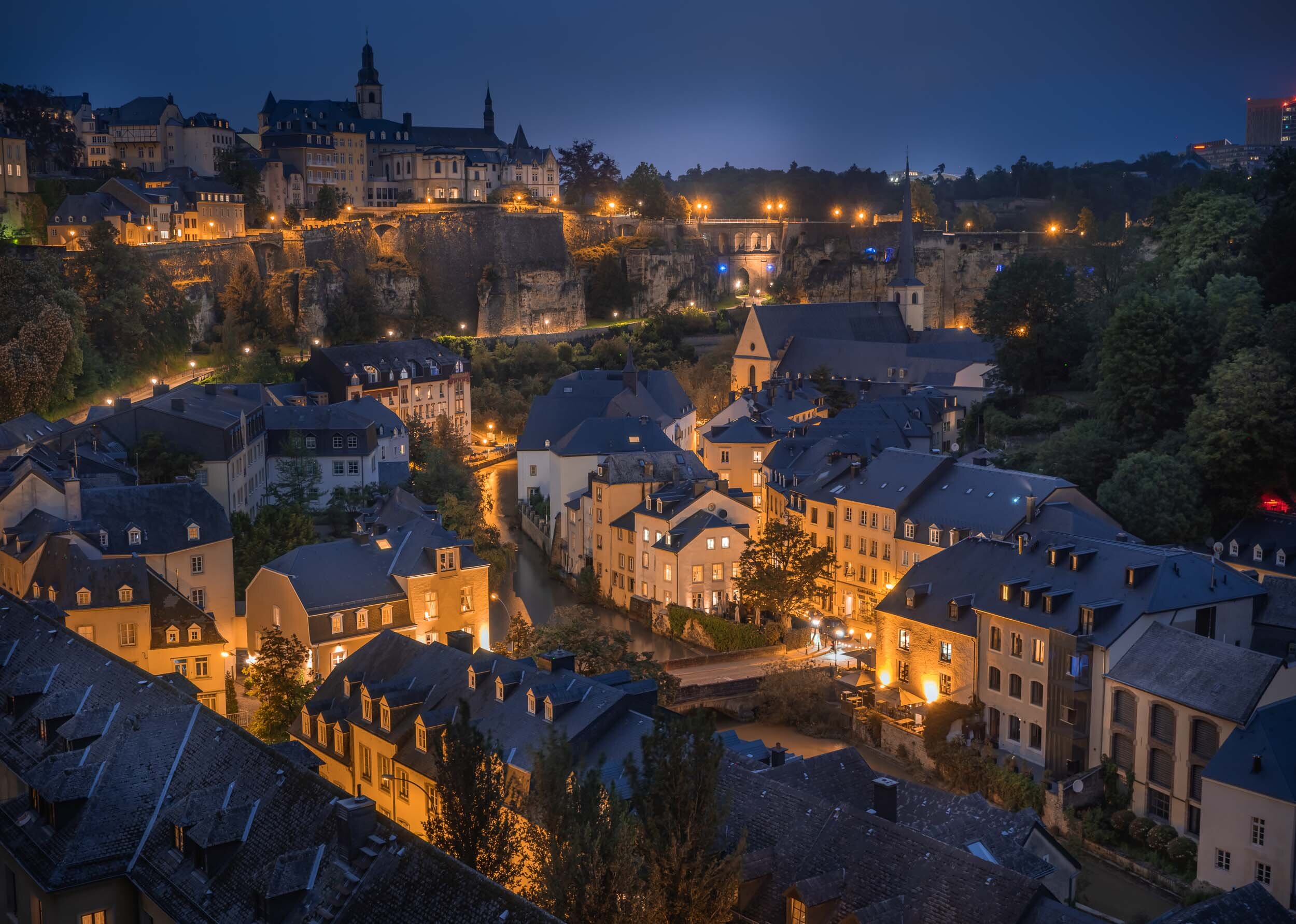
Nightfall over Luxembourg
It was worth the wait, and the extra 3km walk until we found the spot.
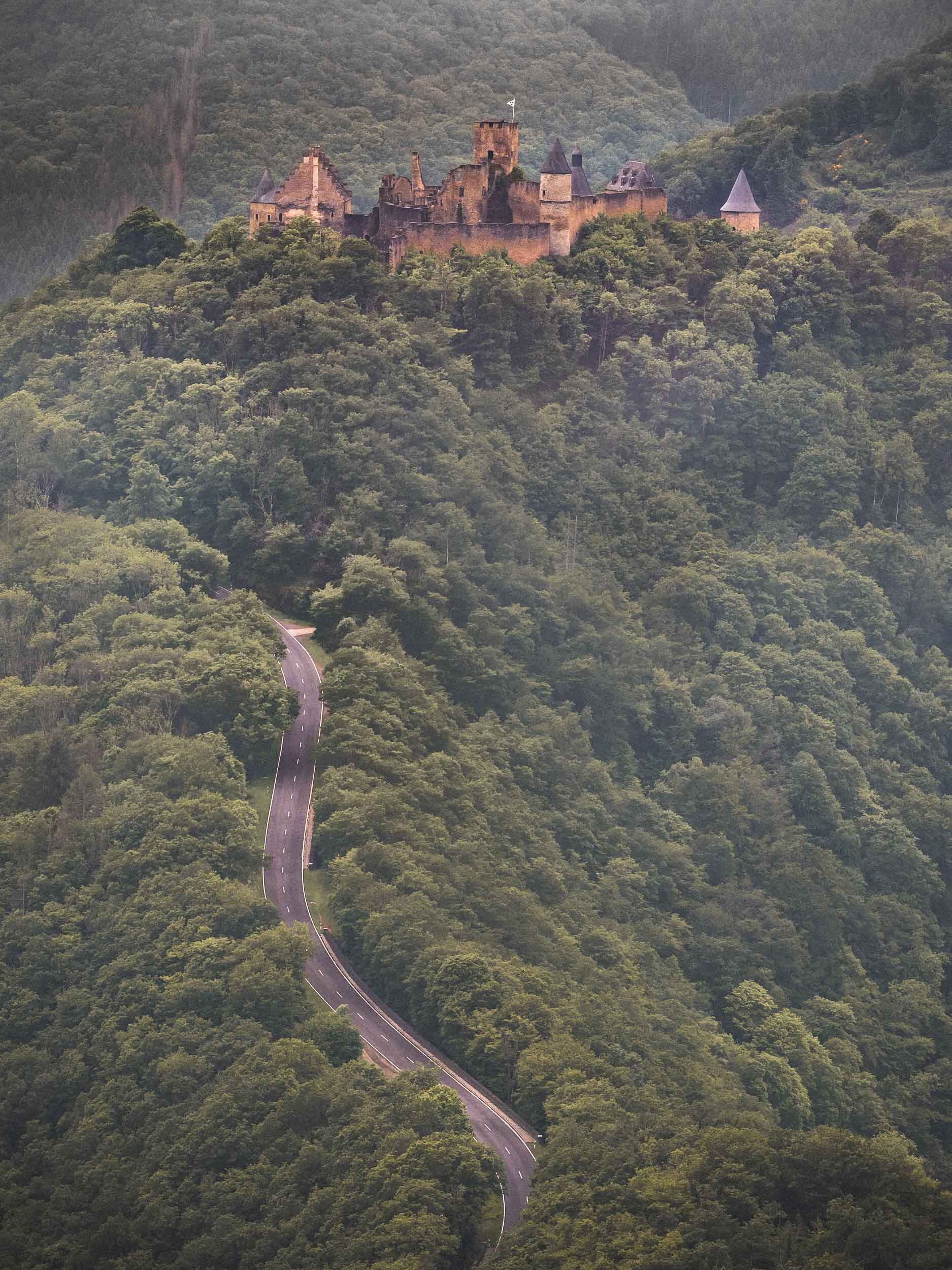
Bourscheid Castle
The last day had two more castles on the agenda. This is Bourscheid castle, some 150 metres above the River Sûre.

Angles
There are three nice view points on the surrounding hills, all giving a slightly different impression of the castle.

1000 years
From a distance it looks well preserved, but up close and inside it's more obvious that it has lost a lot of its original medieval structure.
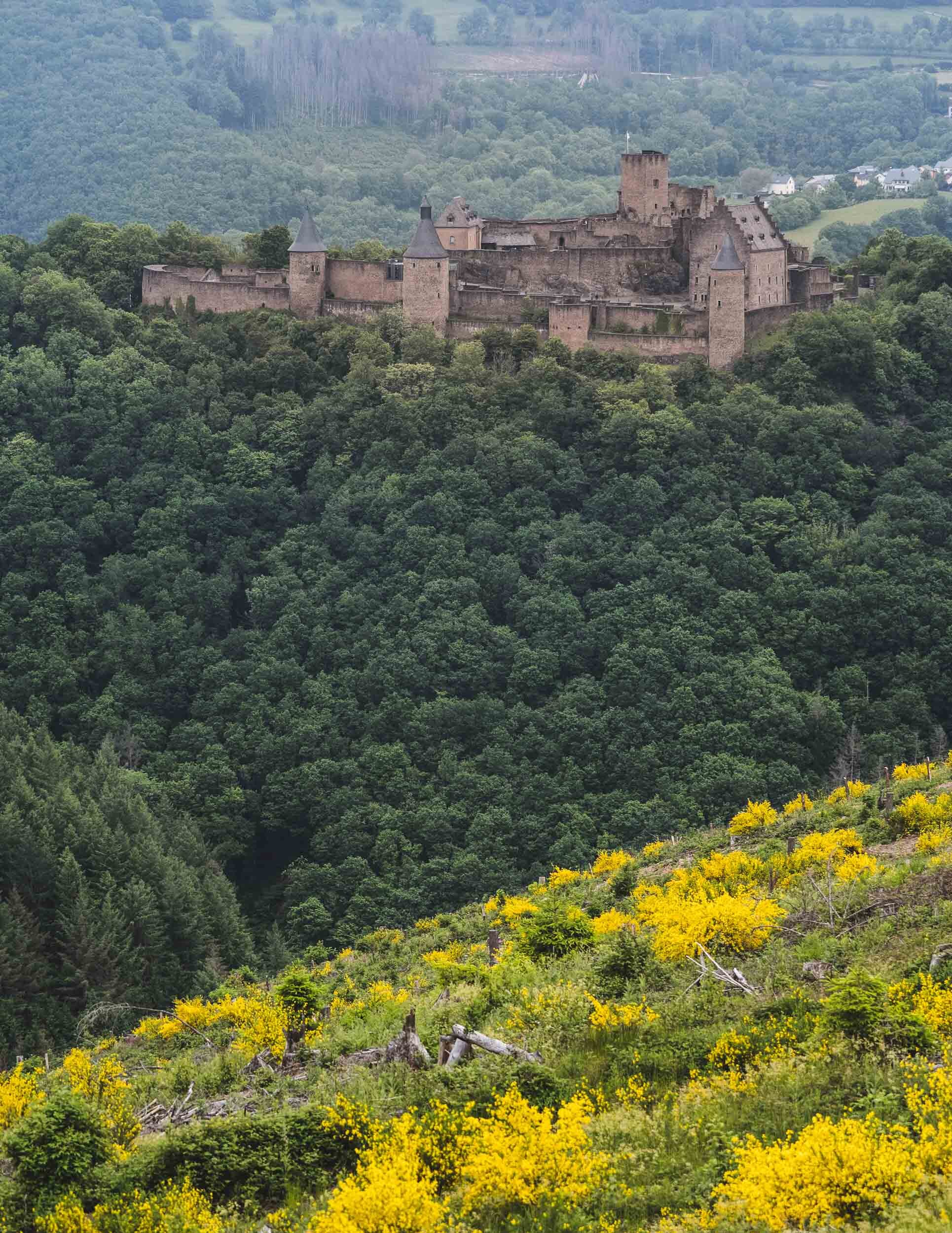
Yellow
The last viewpoint made for some beautiful contrasts with what I believe are rape seed flowers.

Lonely Trees
Can't resist those.
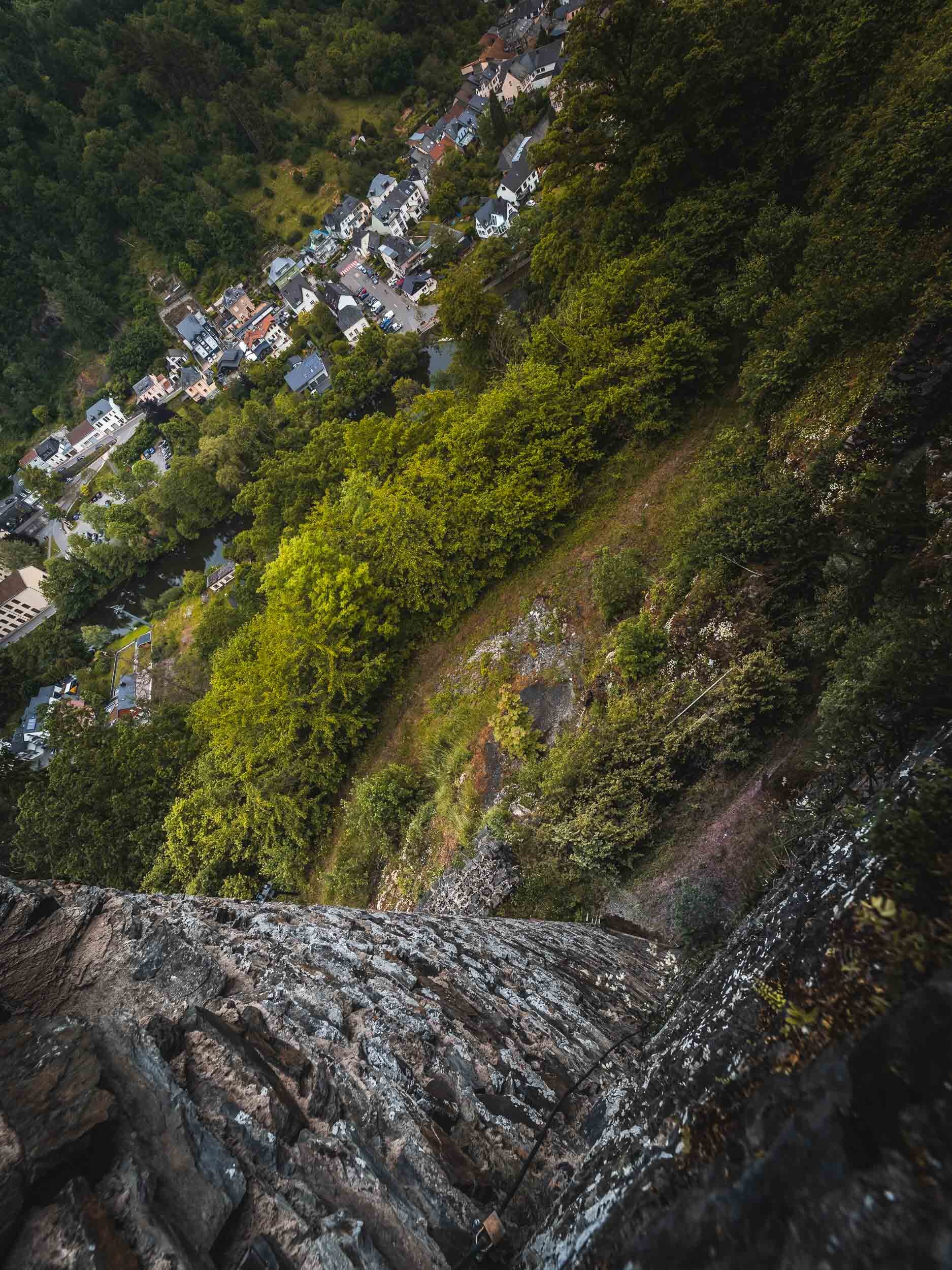
Perched High
It is situated over 300m above the city, which makes for some dramatic perspectives.

Castle No 4
And the last castle on the list was probably the most famous one - Vianden.
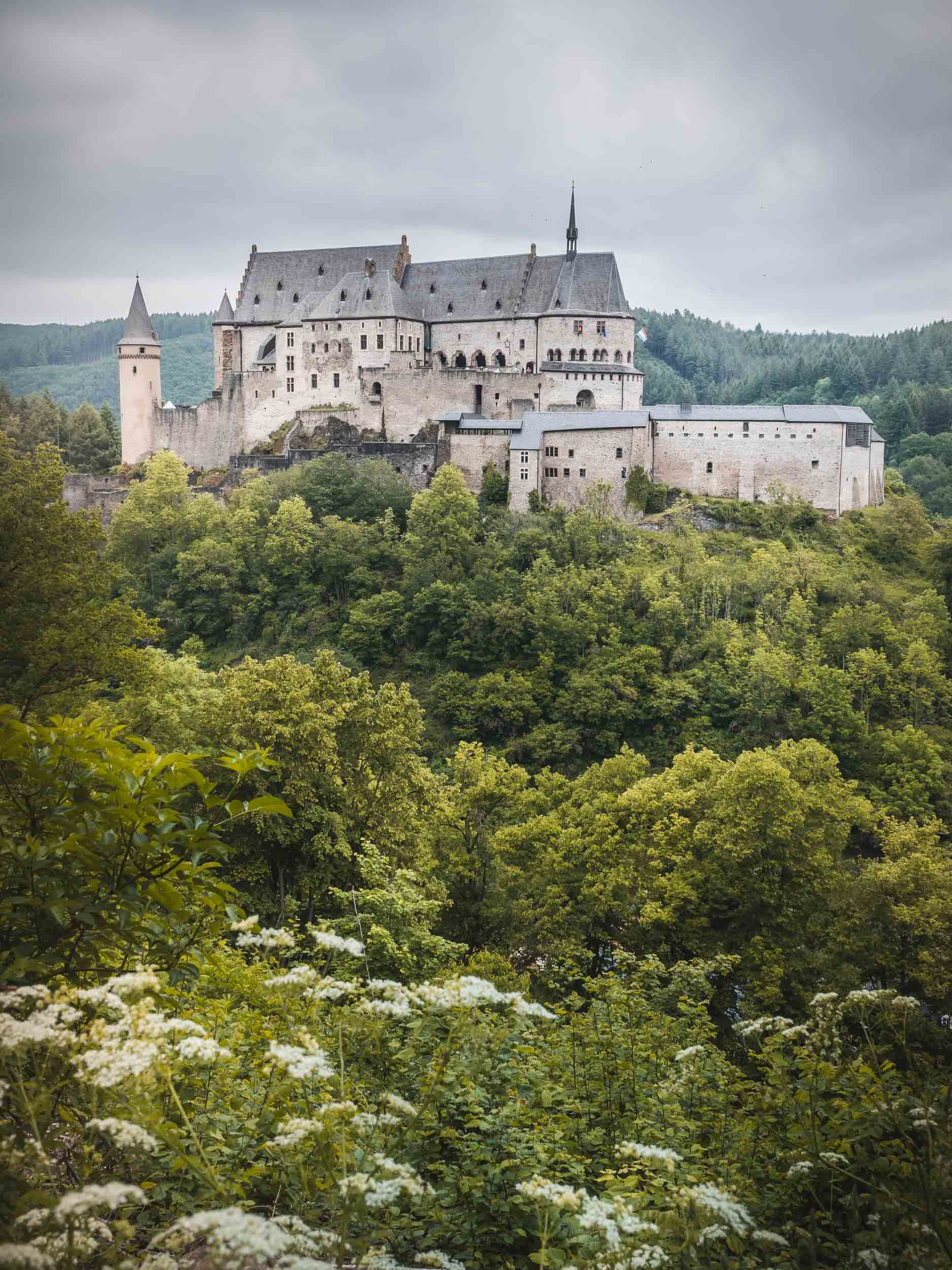
Transformations
The castle was built on the site of an ancient Roman castellum, and dates back almost a thousand years, although it has Gothic and Renaissance sections as well.
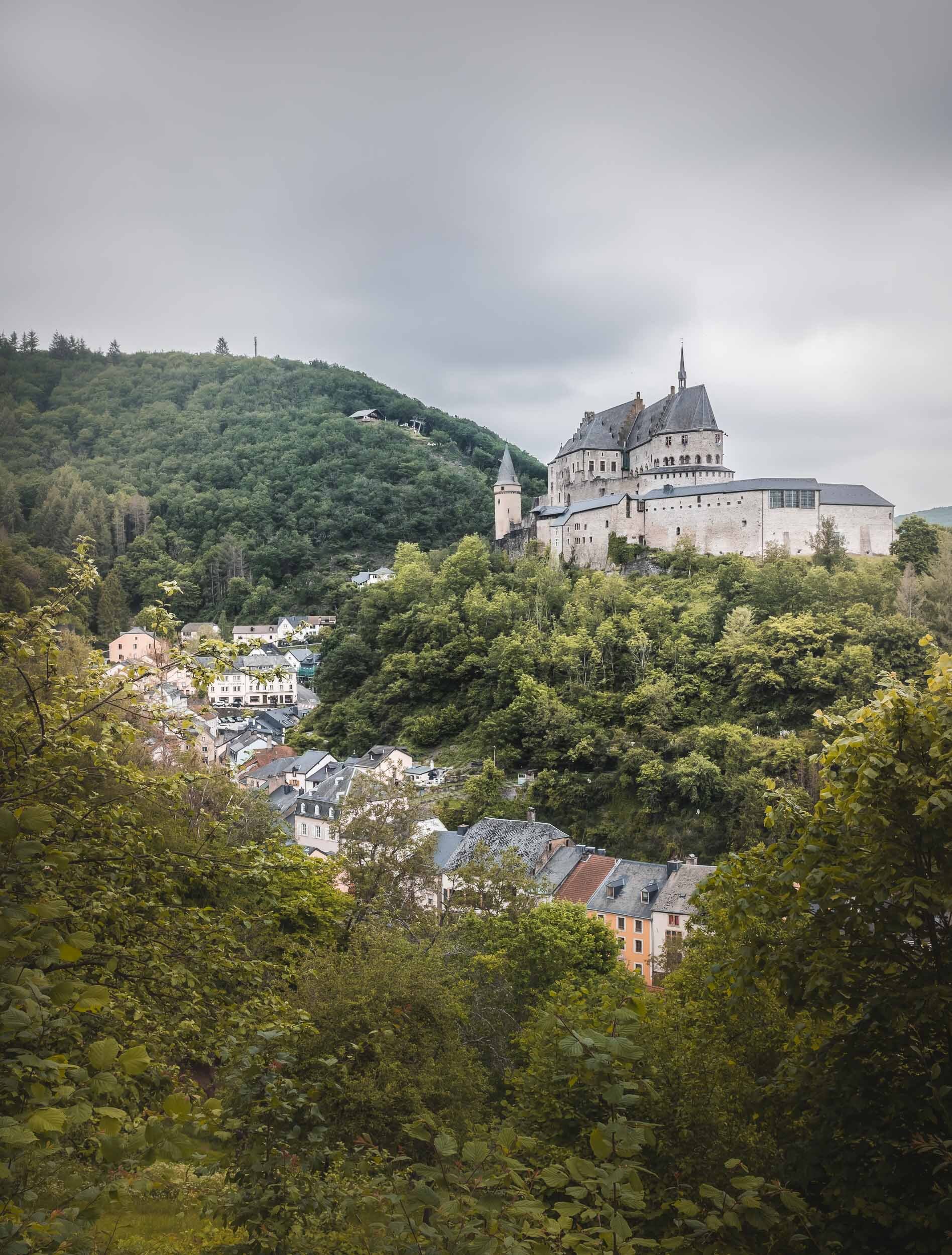
Modern Times
The castle played a military role in the second world war Battle of Vianden. It's final restoration was completed in 1990.
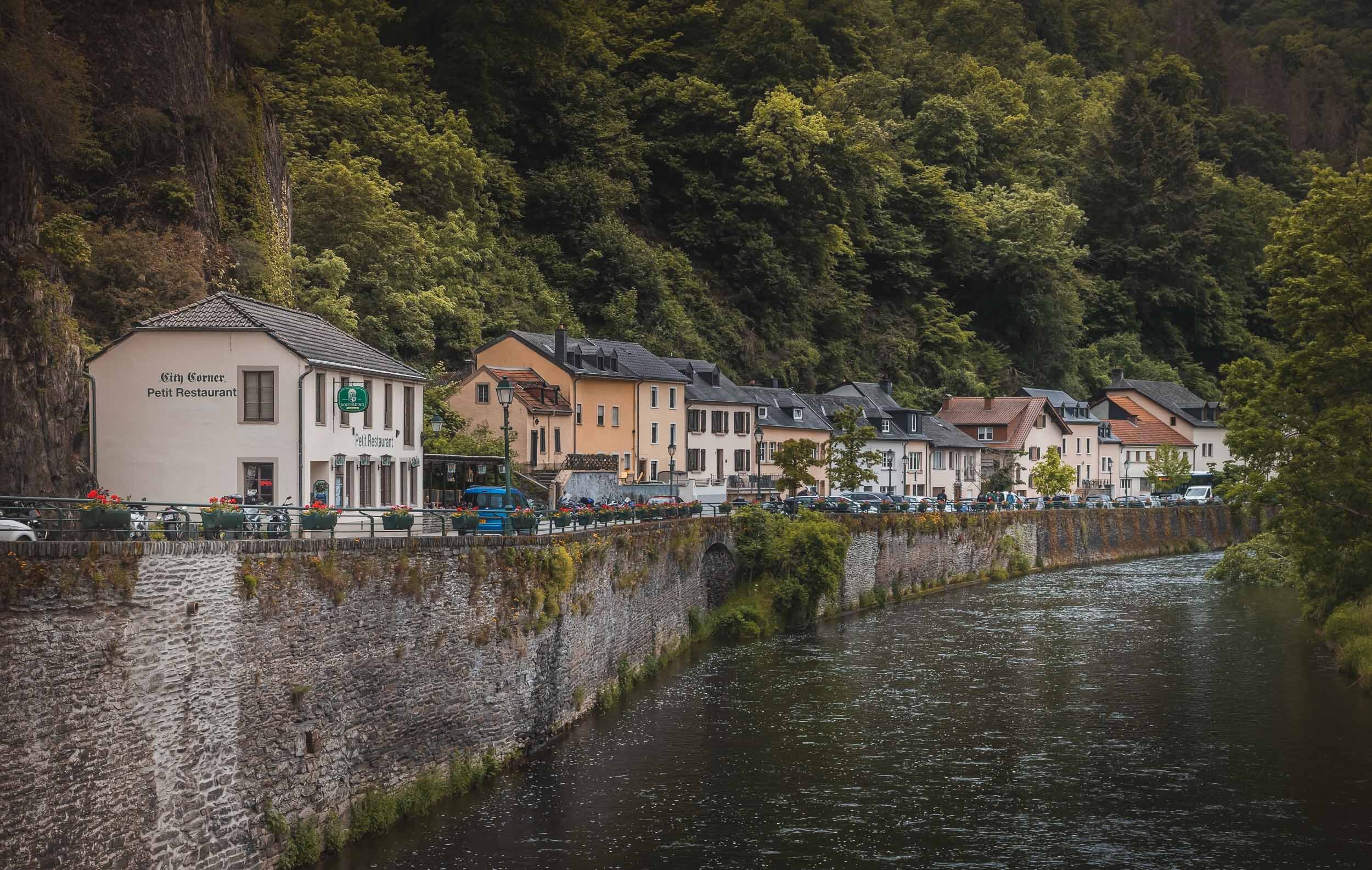
Vianden
The town of 1500 people lies on the Our river. It was our last station of the trip.
Slovenian Beauty - Lake Bled & Ljubljana
A two day trip to Slovenia brought us to the picturesque Lake Bled with its famous church island, and the beautiful capital Ljubljana.

While travel restrictions with health and safety requirements are still omnipresent, trips within certain countries in Europe are manageable with the right precautions. A two day trip to Slovenia brought us to the picturesque Lake Bled with its famous church island, and the beautiful capital Ljubljana.

Lake Bled
Our first stop was Lake Bled on the foot of the Karawanks mountain range.
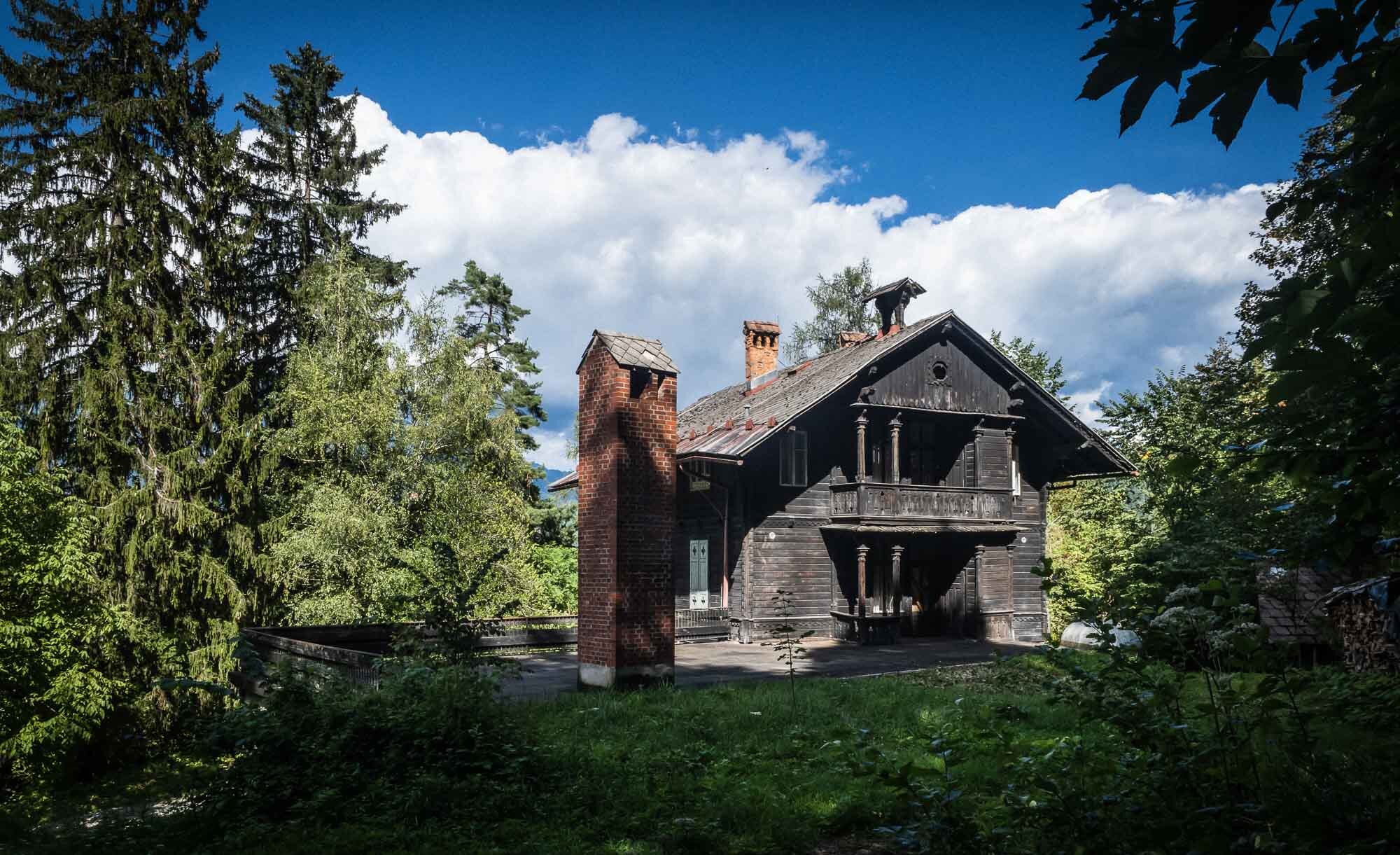
Mountain House
We crossed this wodden house on the hike up to Mala Osojnica, one of the best viewpoints over the lake.

Up
The hike is in fact quite steep - so steep that this staircase was installed near the top.

Mountain Tops
The lake is situated in the Julian Alps range.
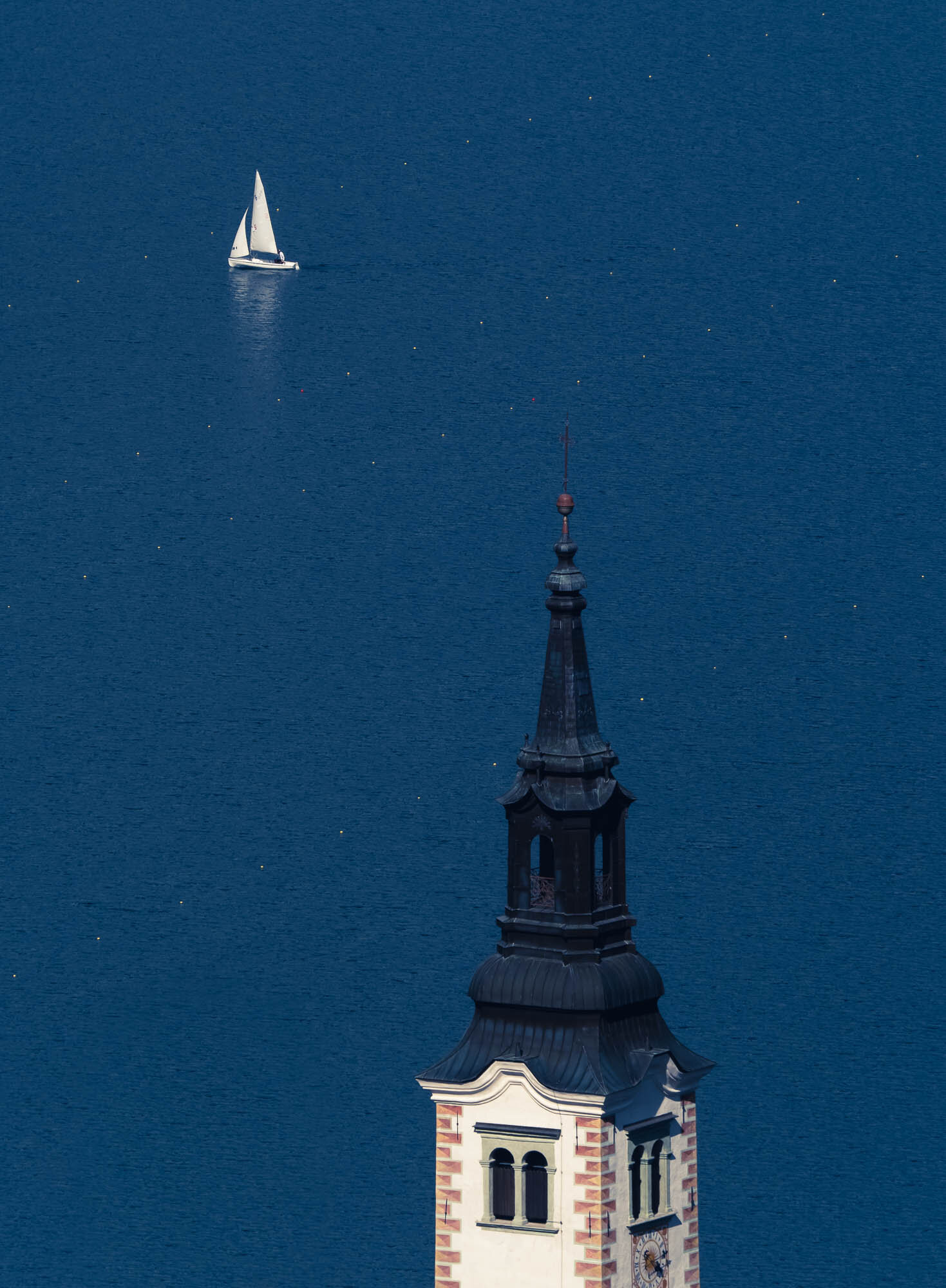
Church Tops
The tip of the 53m high tower of the famous church in the lake.
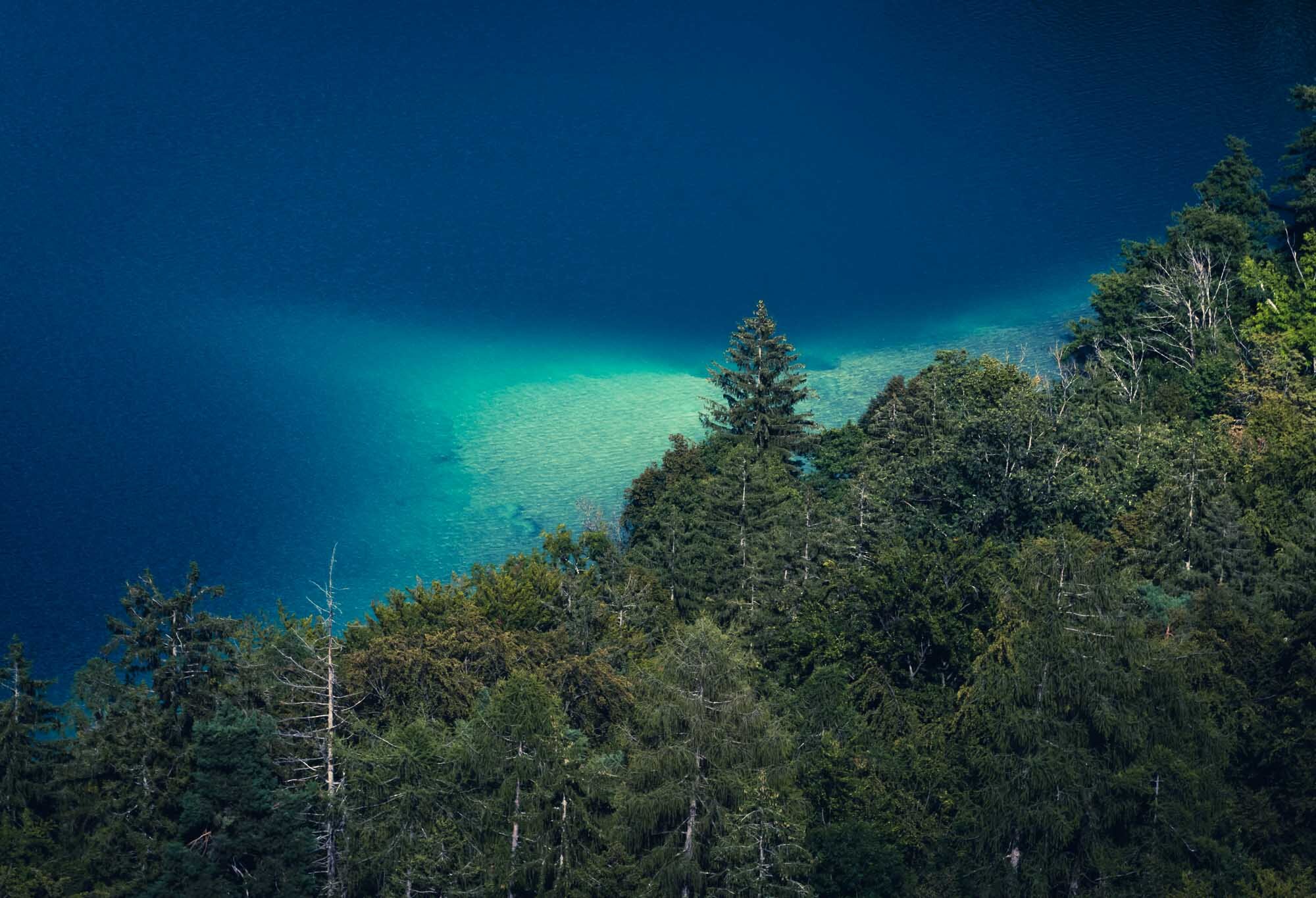
Lake Shores
The colour and clarity of the lake was incredible in the summer light.

Assumption of Mary Church
The famous church on the island in the middle of Lake Bled is a very famous photographic spot.
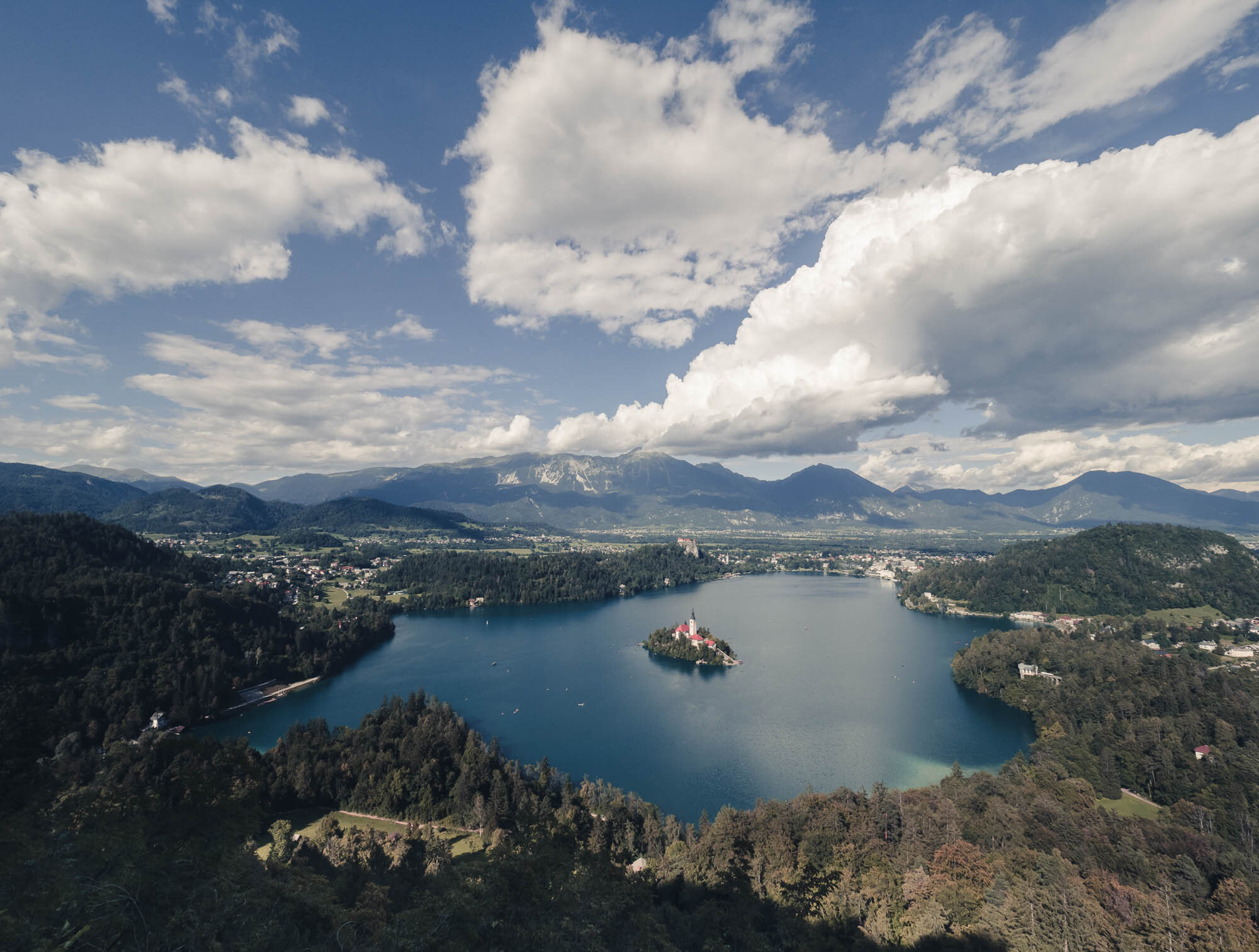
Views
The ascent to the viewpoint on the southern side of the lake is rewarding.

Trio
Lake Bled, the church island, and the Julian mountains.
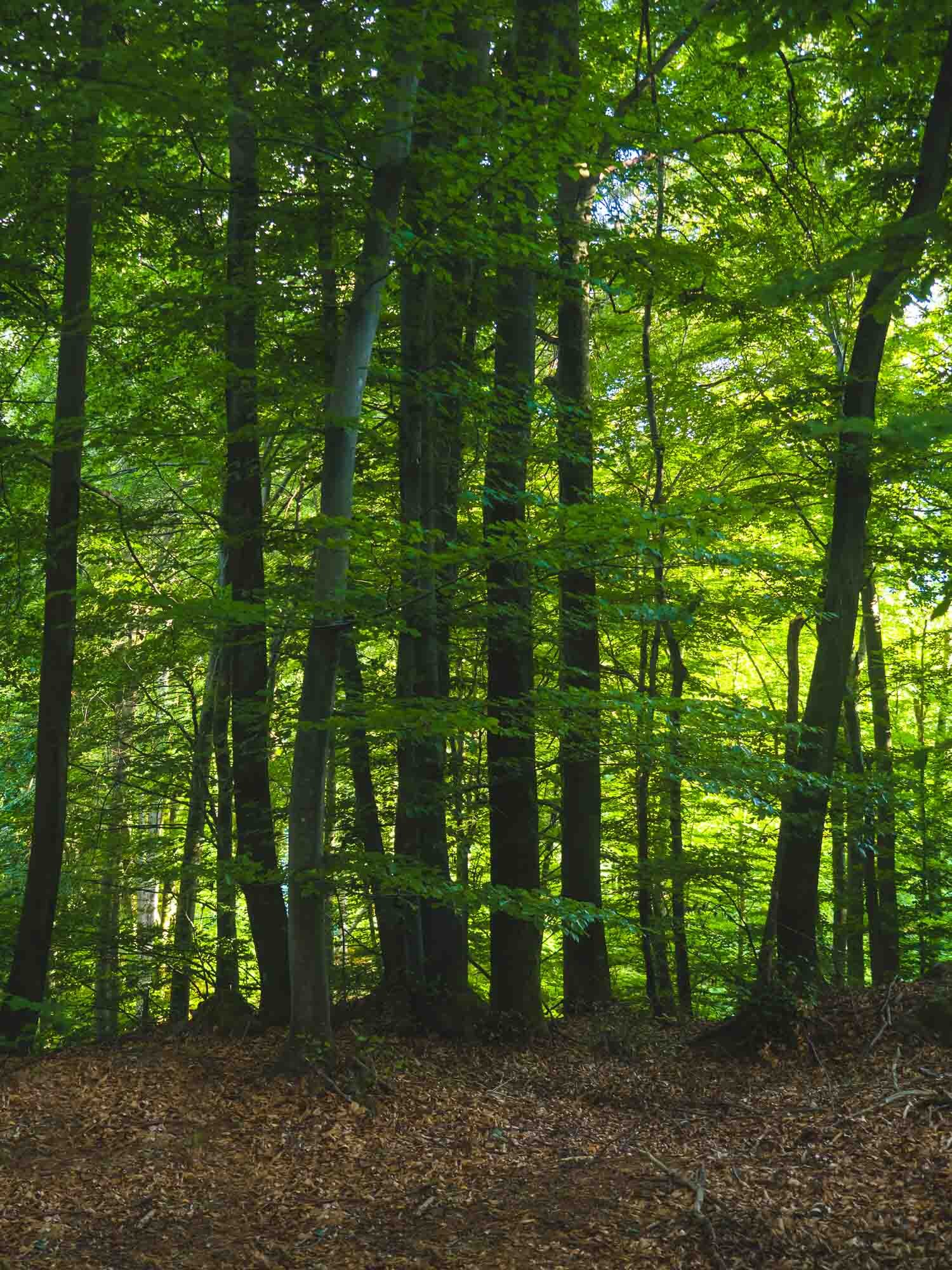
Summer Greens
The forest was positively glowing with the greens illuminated by the sun.

Light & Shade
The late afternoon sun shining into the woods.
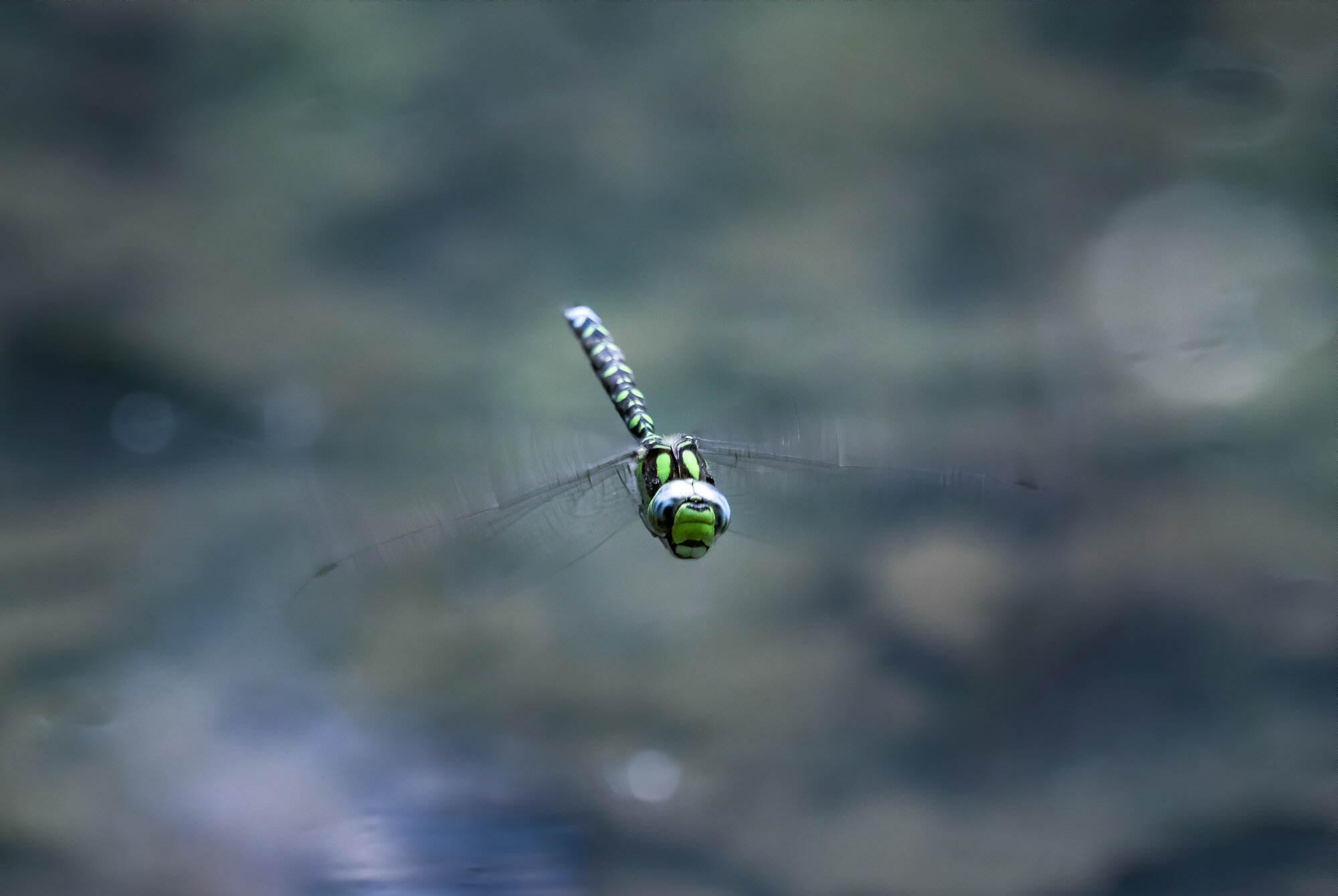
What's up!
A dragonfly was roaming around a small puddle in the forest.
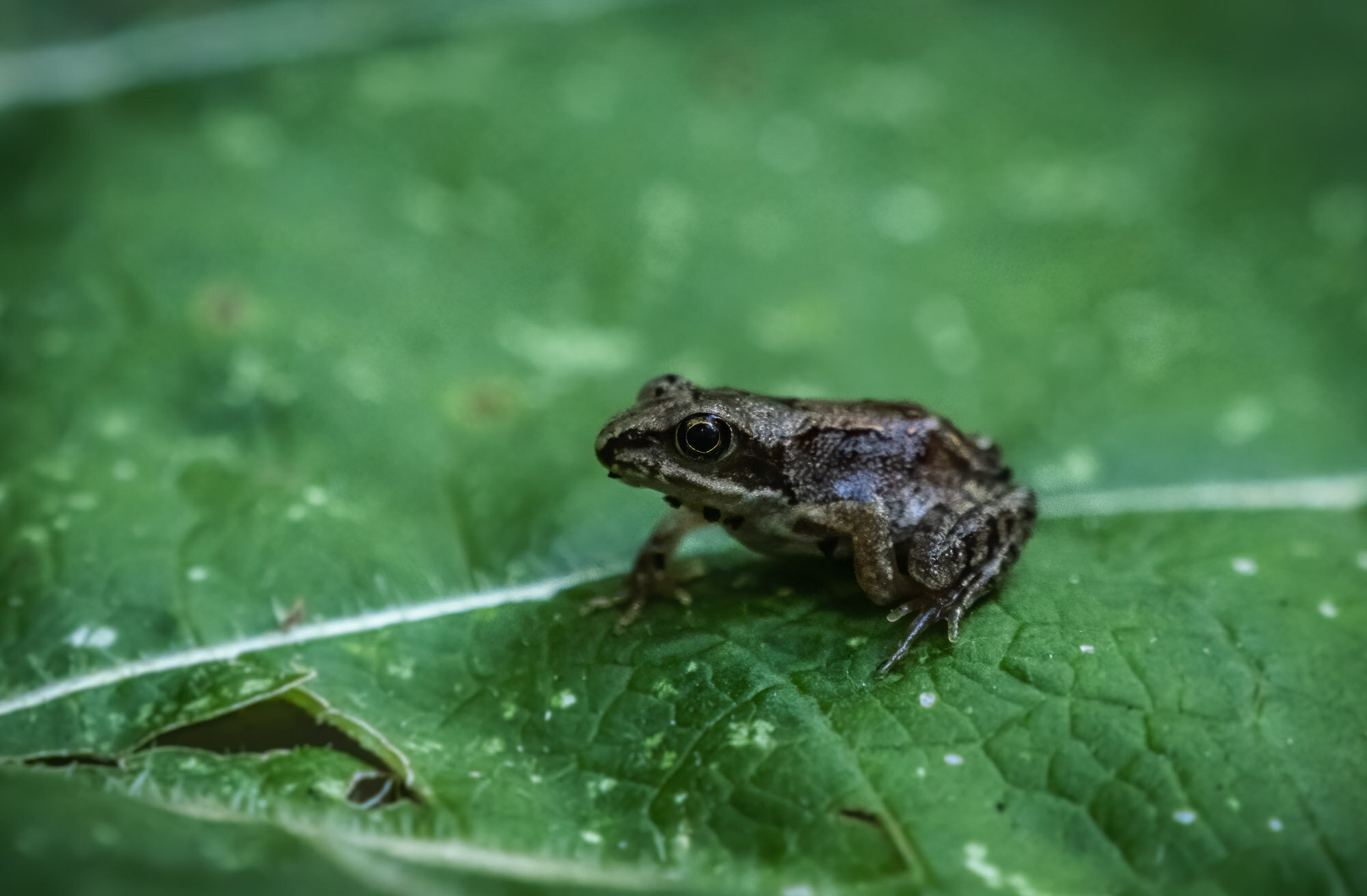
Baby Frog
The same puddle was also home to this little amphibian - who was surprisingly curious.

Afternoon Rays
The last views of the sun in the forest before it set behind the mountain range.
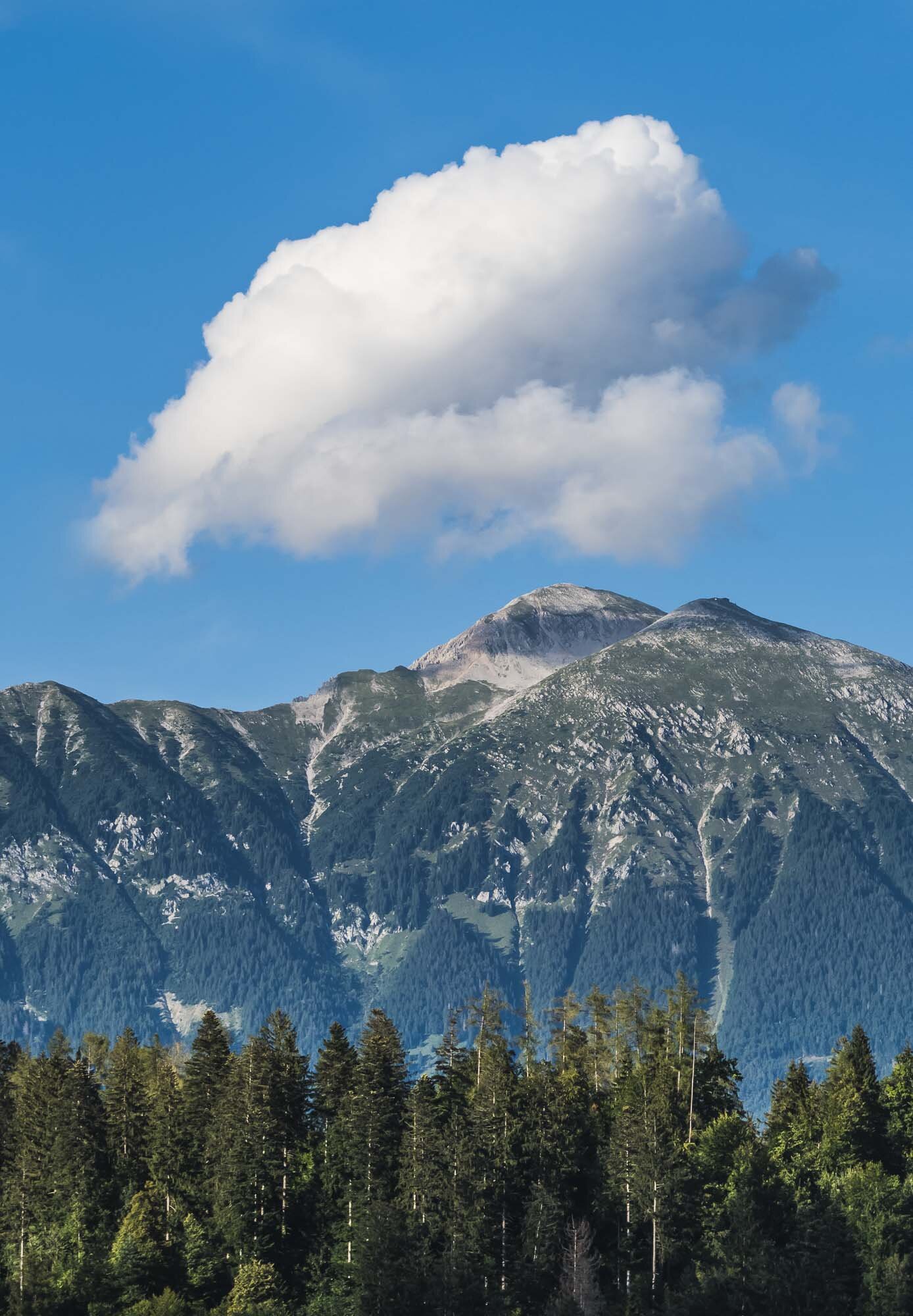
Layers
Green forests, rocky mointains, blue skies, fluffly clouds - welcome to the Alps.

Waterways
The only way to visit the church is by crossing the lake.
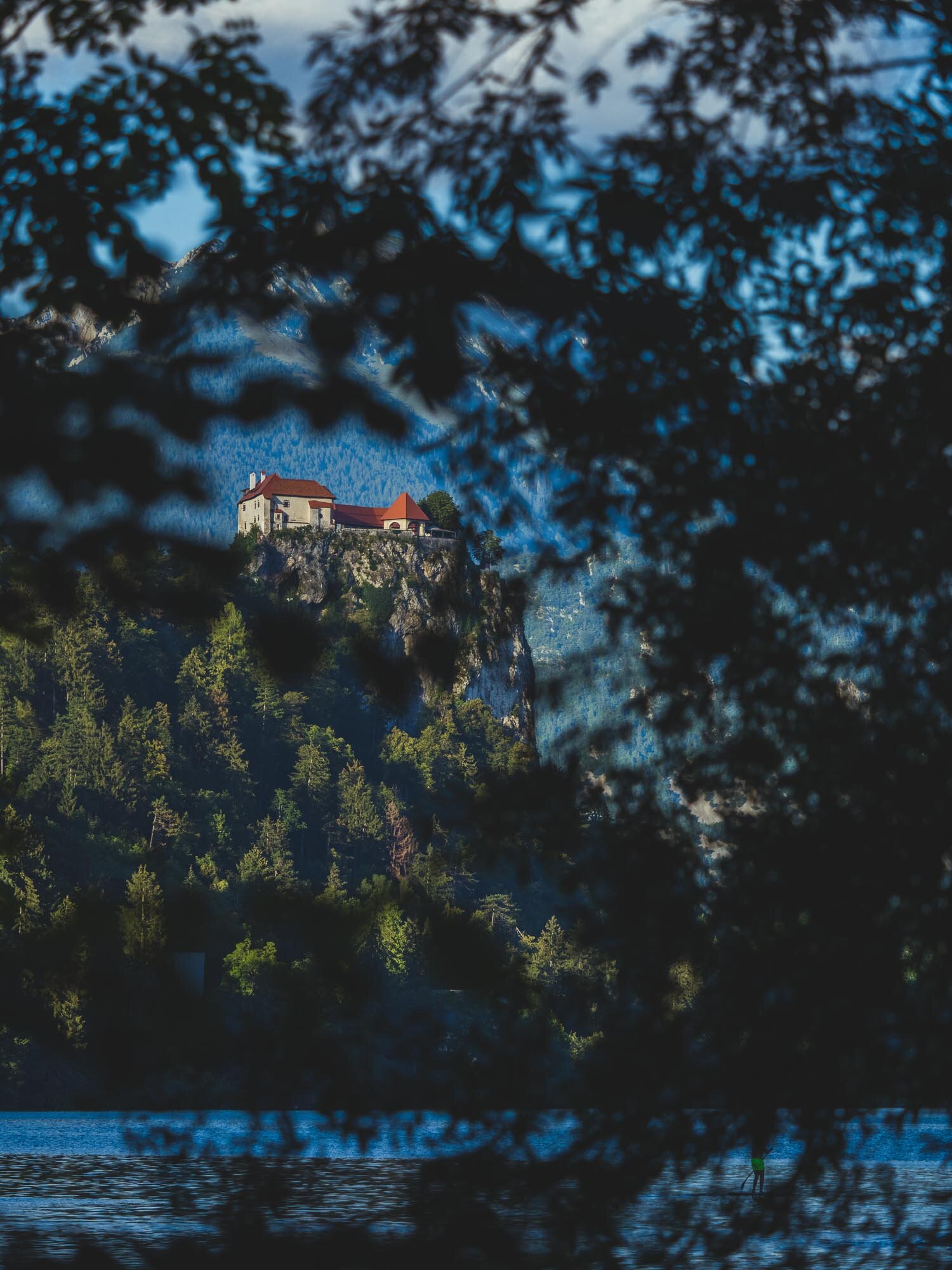
Bled Castle
The castle on the western side seen through some trees on the lake shore.
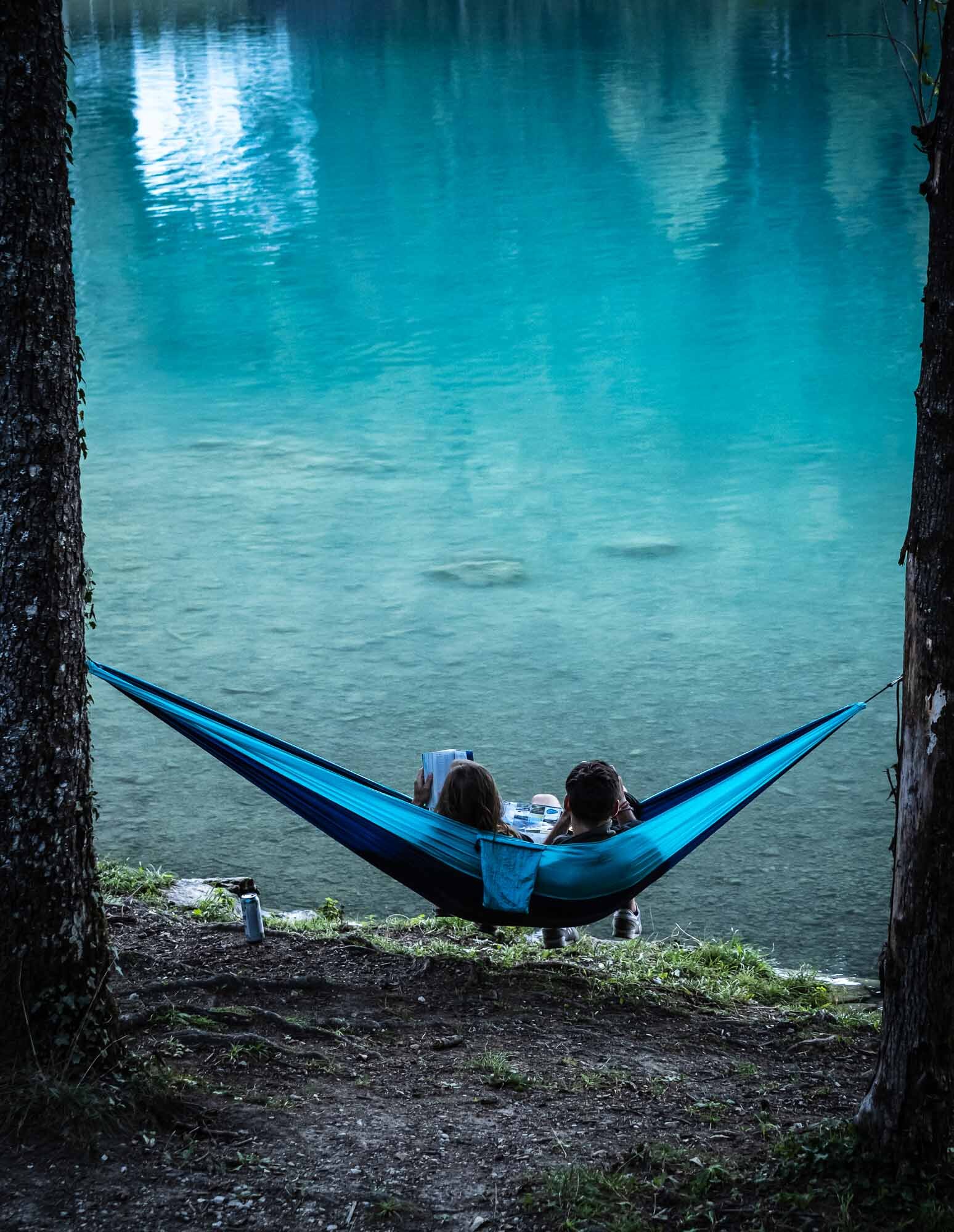
The Right Way...
... to enjoy the end of a summer day at the lake.
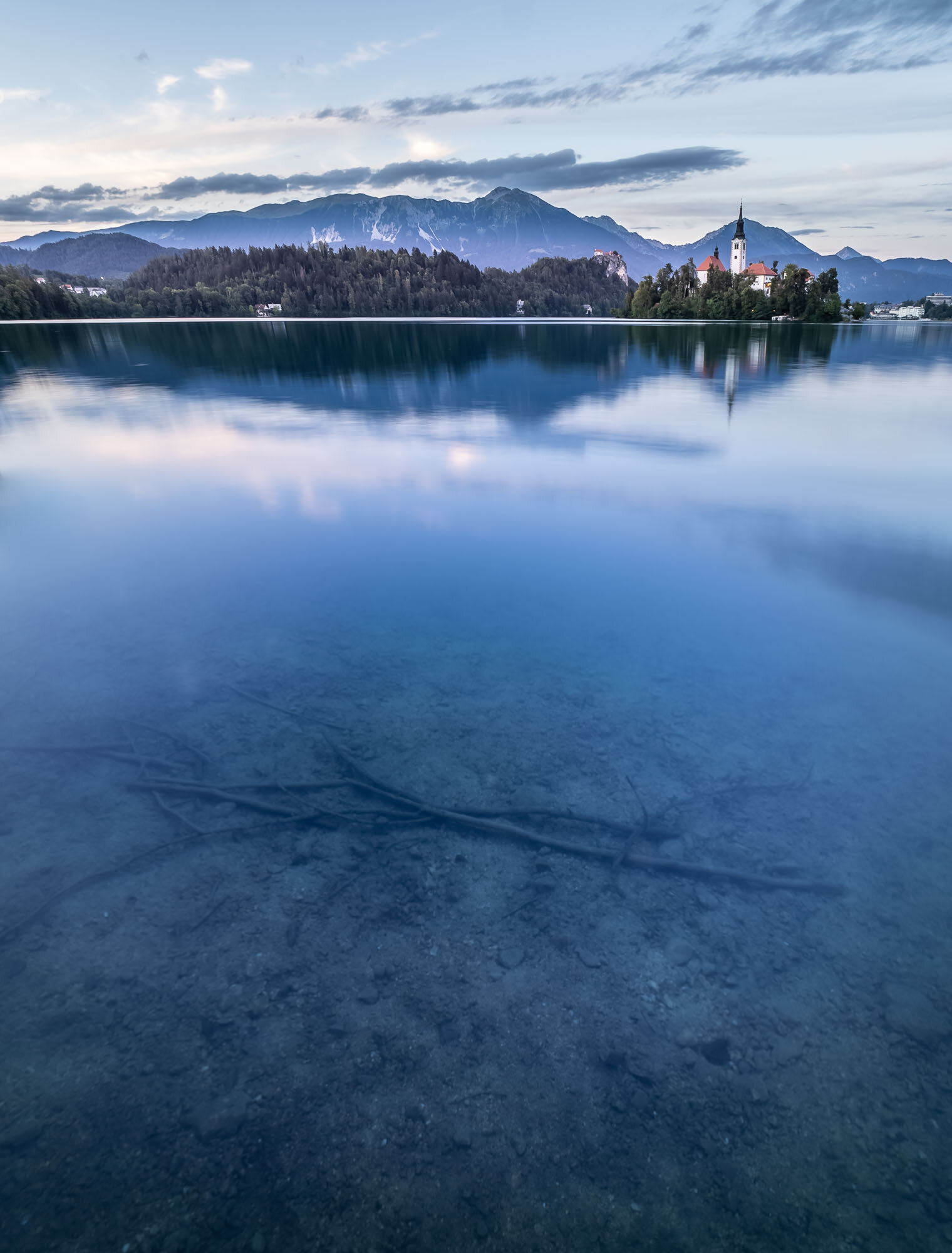
Clarity
Some tree branches under water near the eastern shoreline.
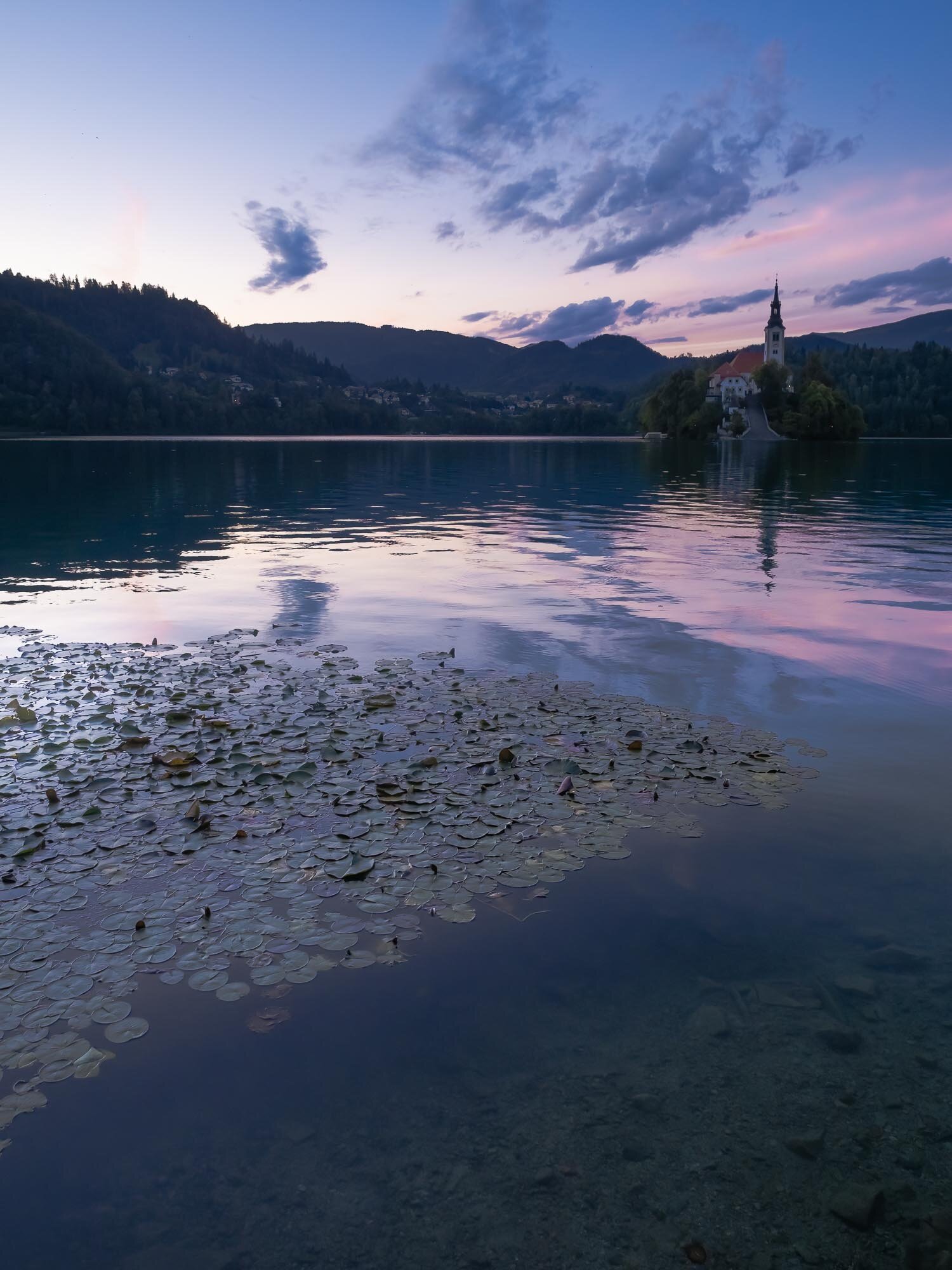
After Sunset
The lake is dotted with patches of water lilies by the shore.
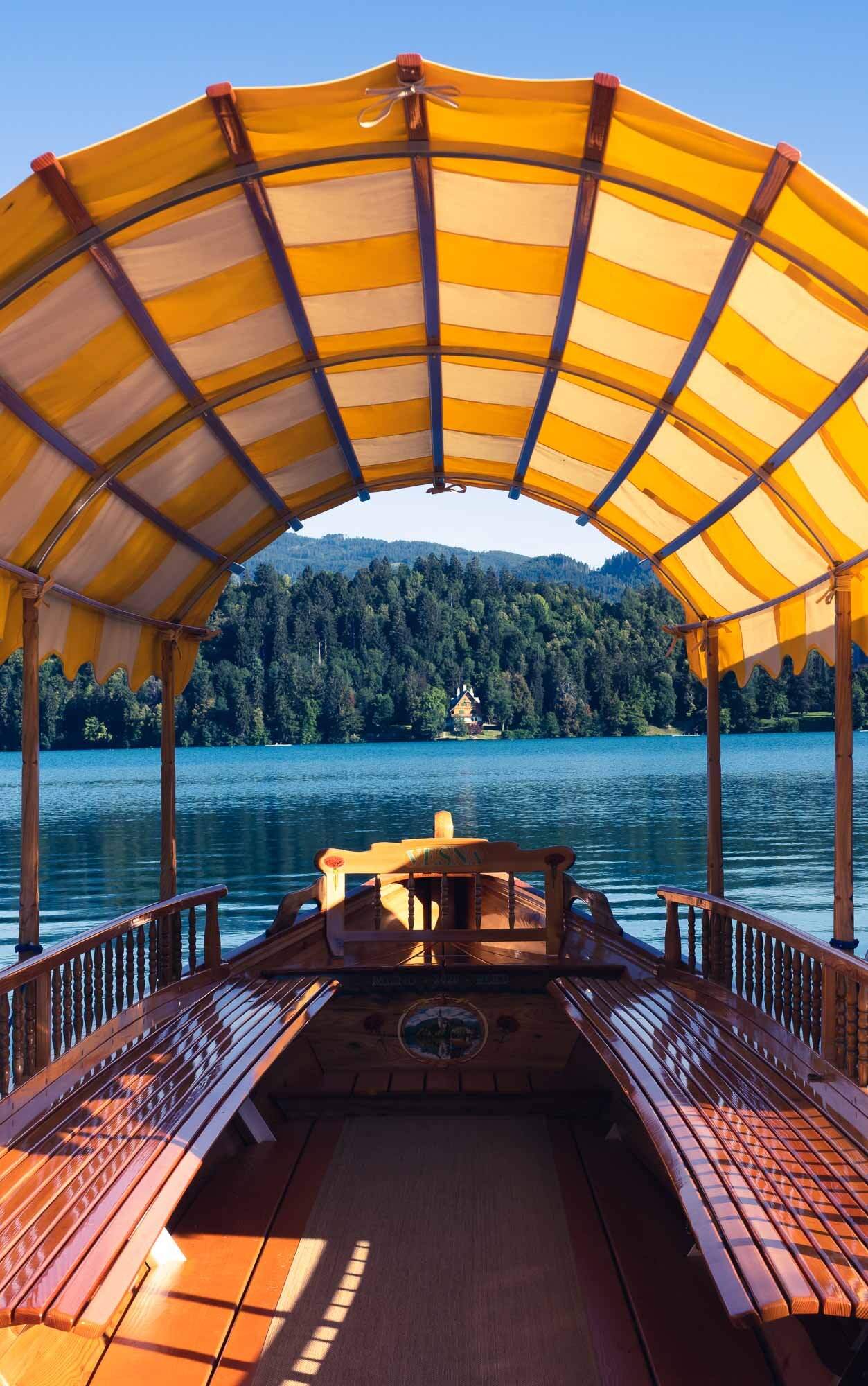
Transport
The traditional transportation to Bled Island is a wooden boat known as a pletna.
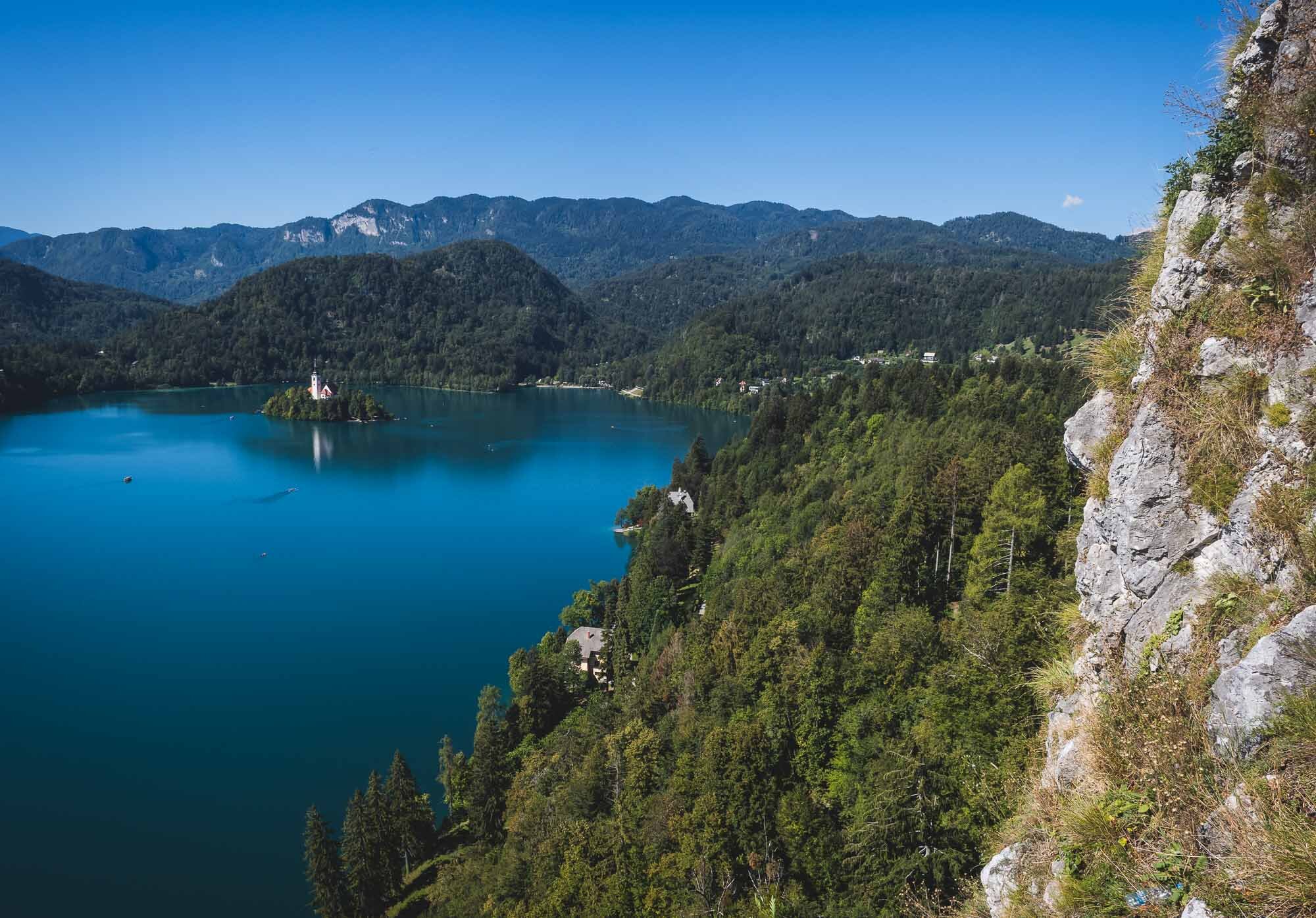
Opposite Views
The view over the lake from the other side, looking south from Bled castle.

Cliffs
Looking down from the castle walls.
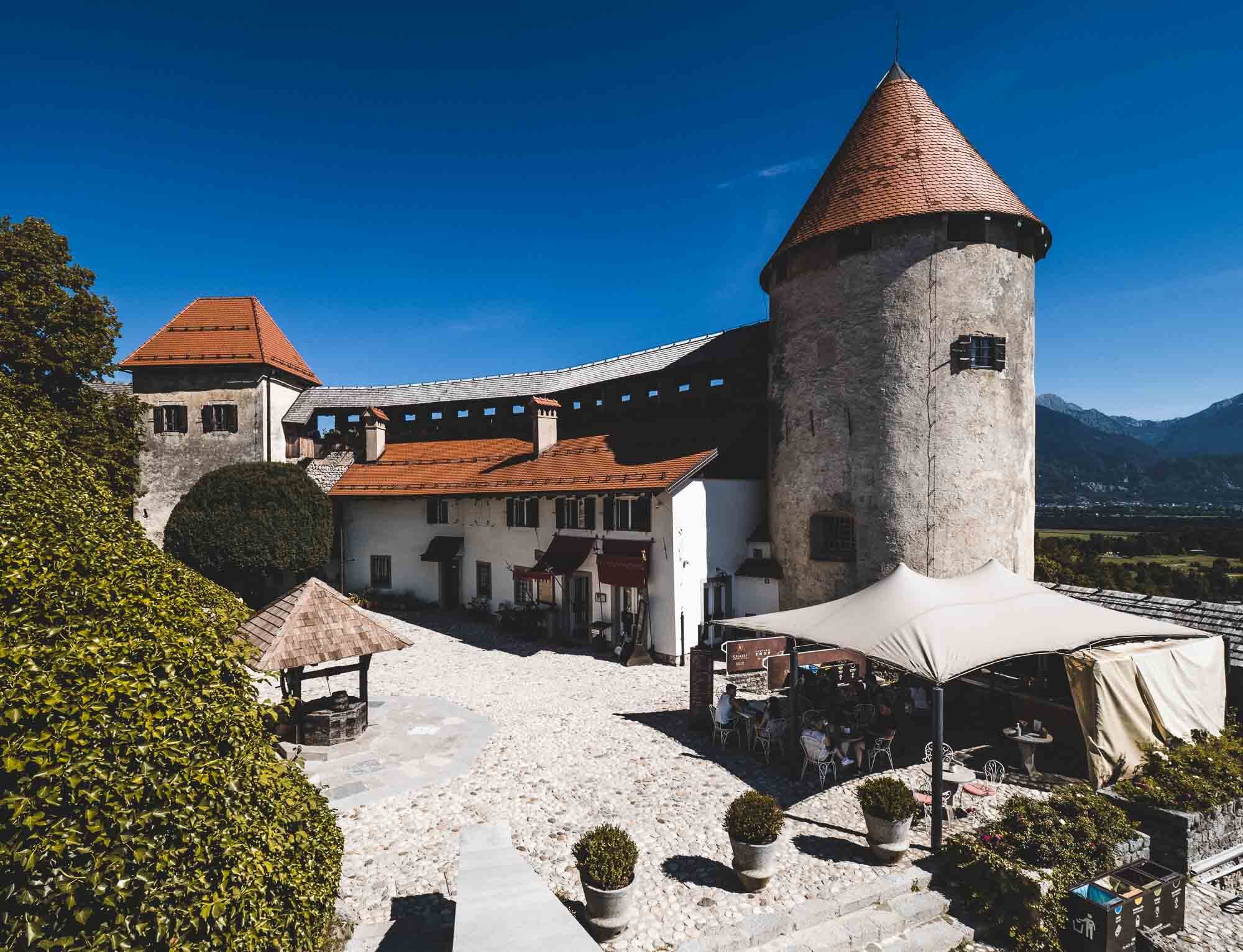
Bled Castle
The lower courtyard of the oldest castle in Slovenia.
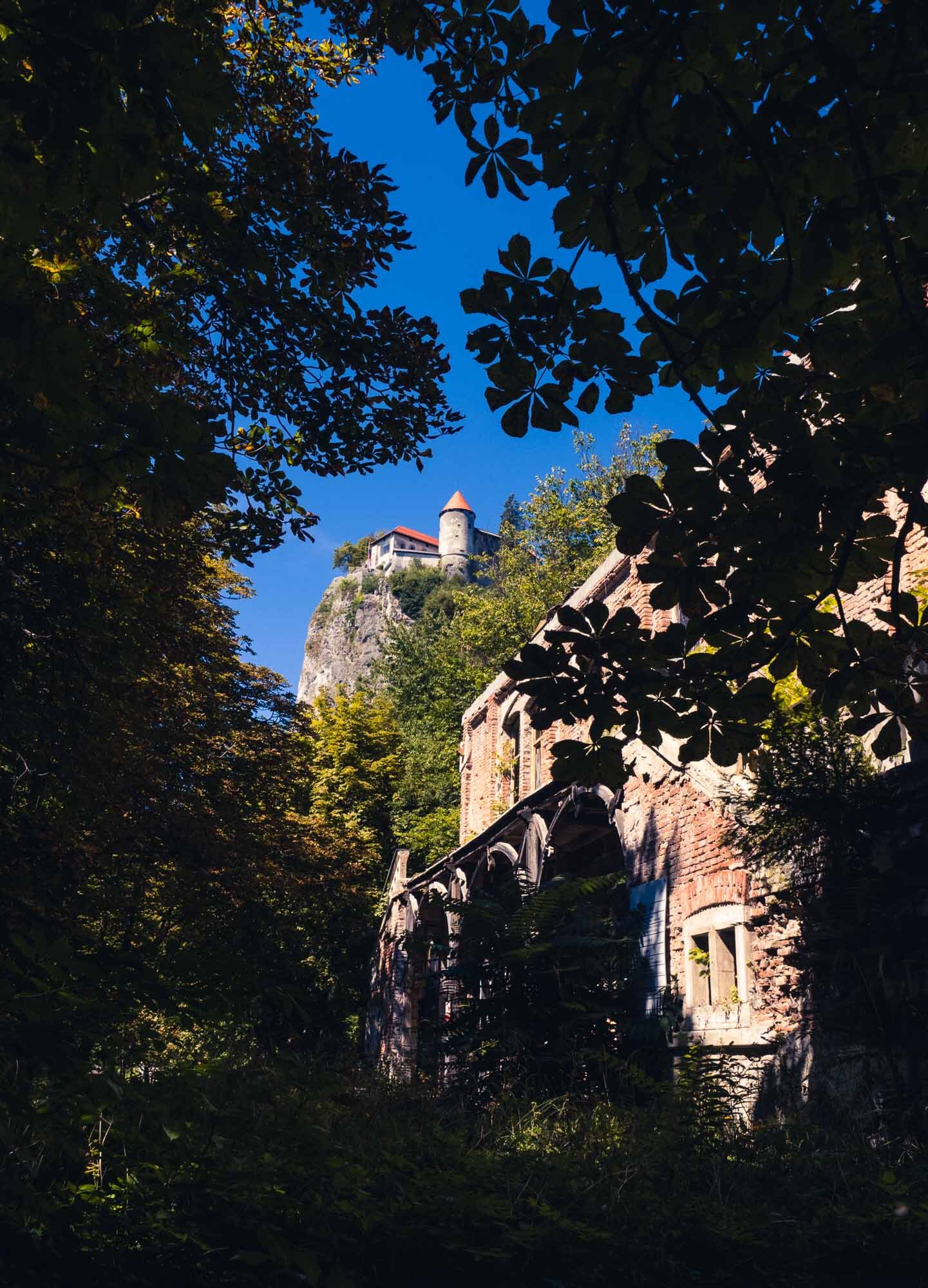
Abandoned
The castle seen with Villa Rikli, an abandoned old house on the shores of the lake.
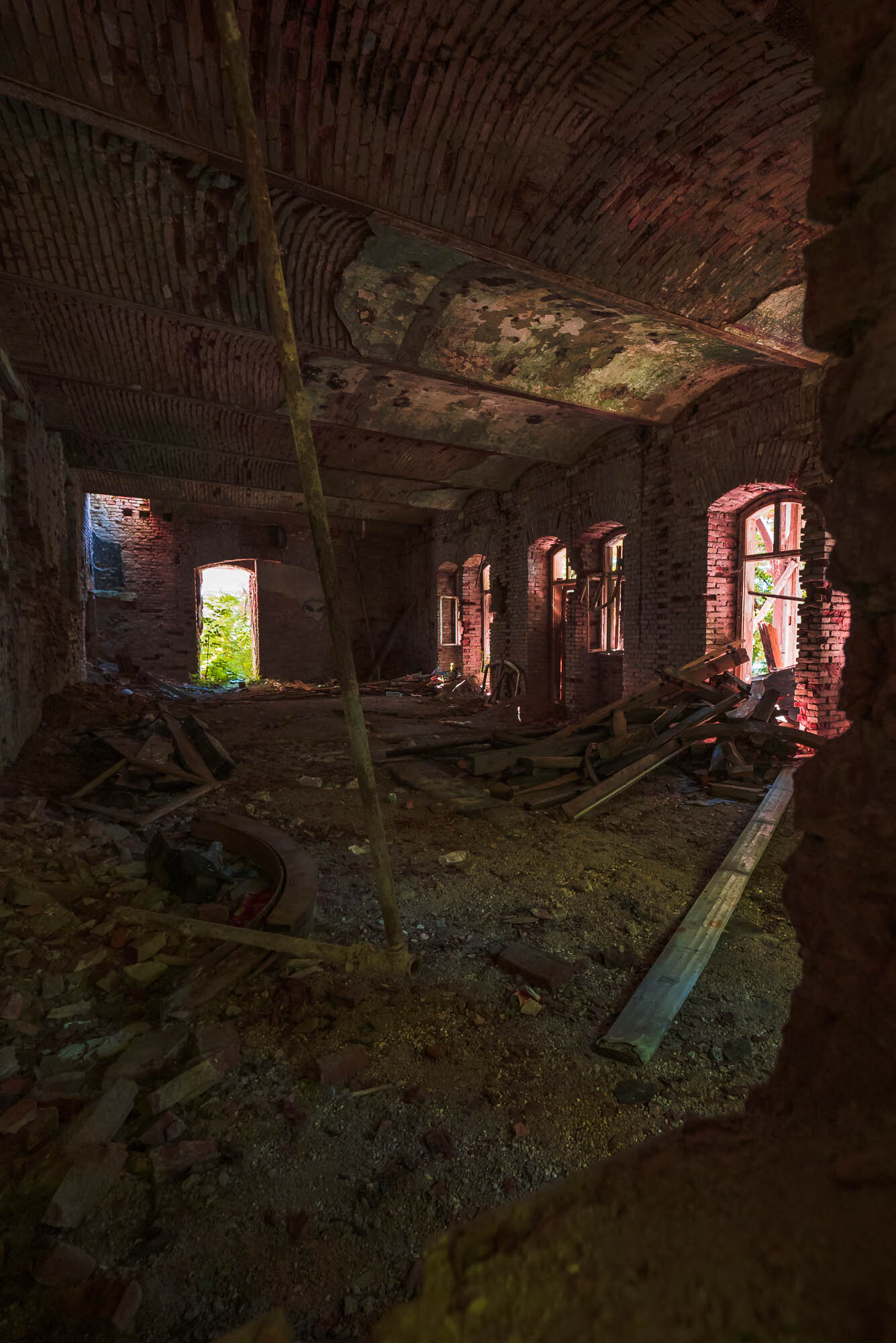
Villa Rikli
The inside of the building, which is supposed to be renovated and rebuilt. Who can spot the alien like shape on the wall?
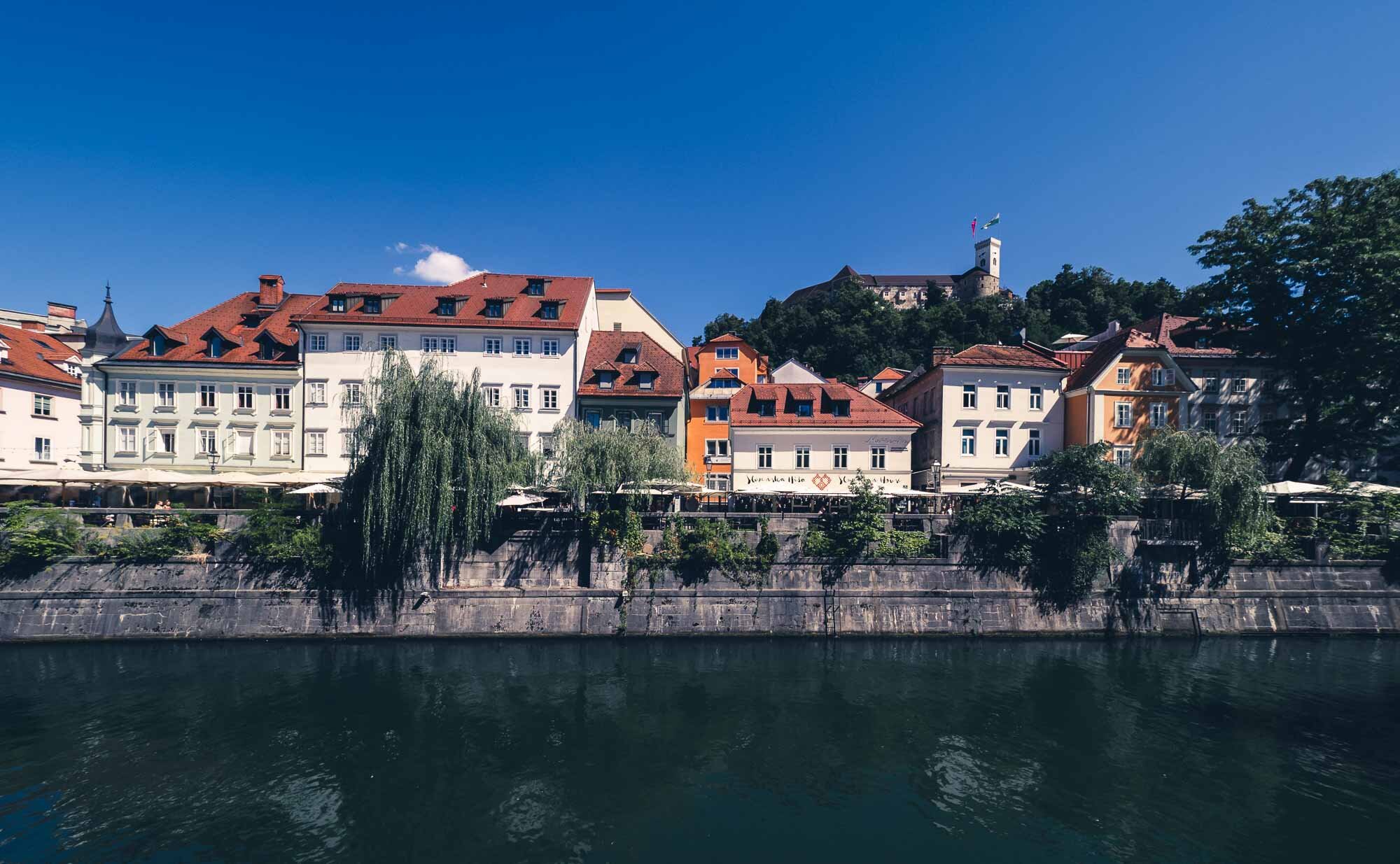
Ljubljana
We made it to the capital next, walking along the beautiful promenade of the Ljubljanica river.
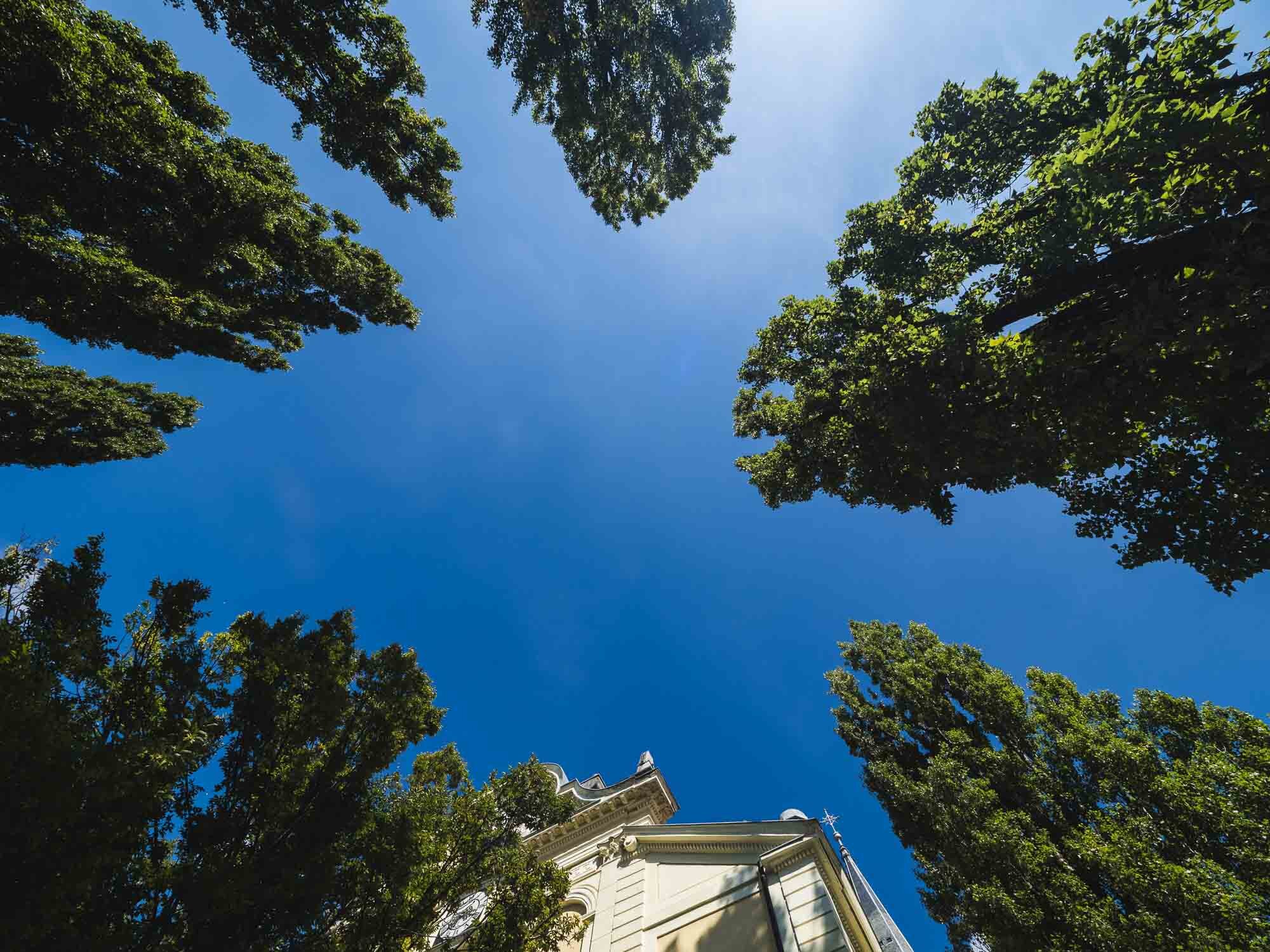
Trees
Another defining feature of the city are the skinny tall trees dotted in various places, such as here near St Jakob's church.
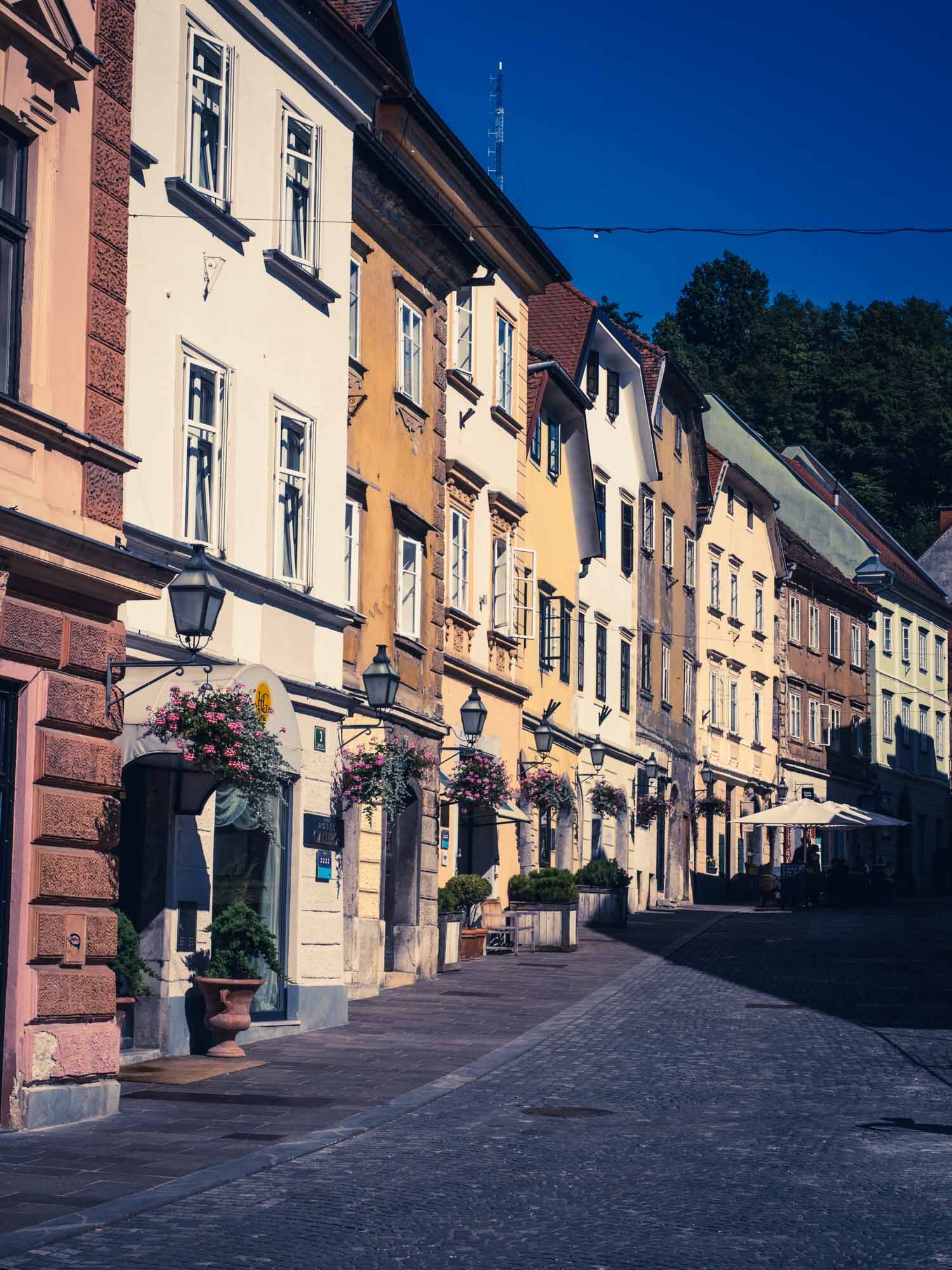
Gornji Trg
A row of houses near this famous street in Ljubljana's old town.
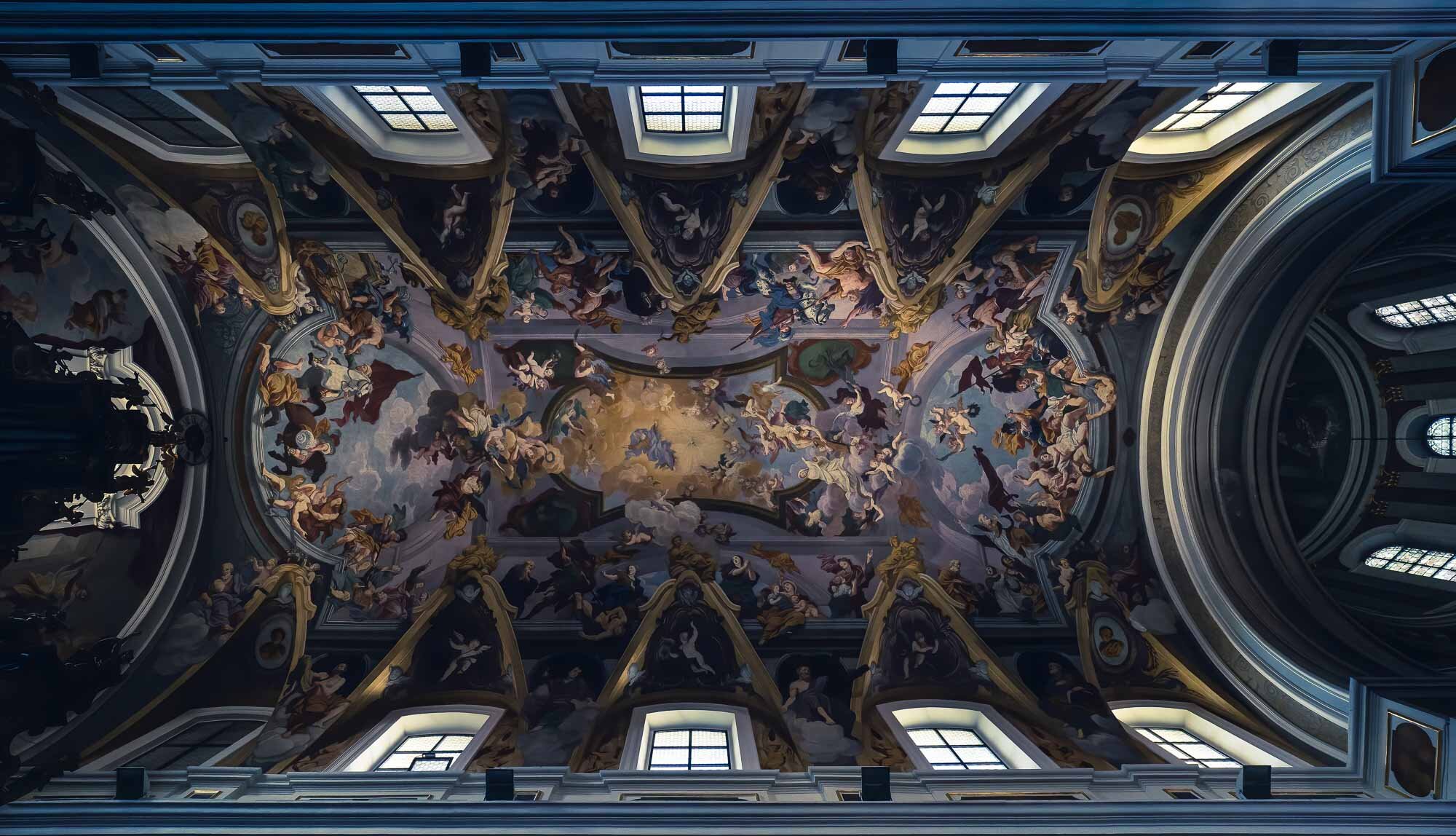
St. Nicholas's Cathedral
The roof paintings of the largest church in the city with frescoes by Giuglio Quaglio from the early 18th century.
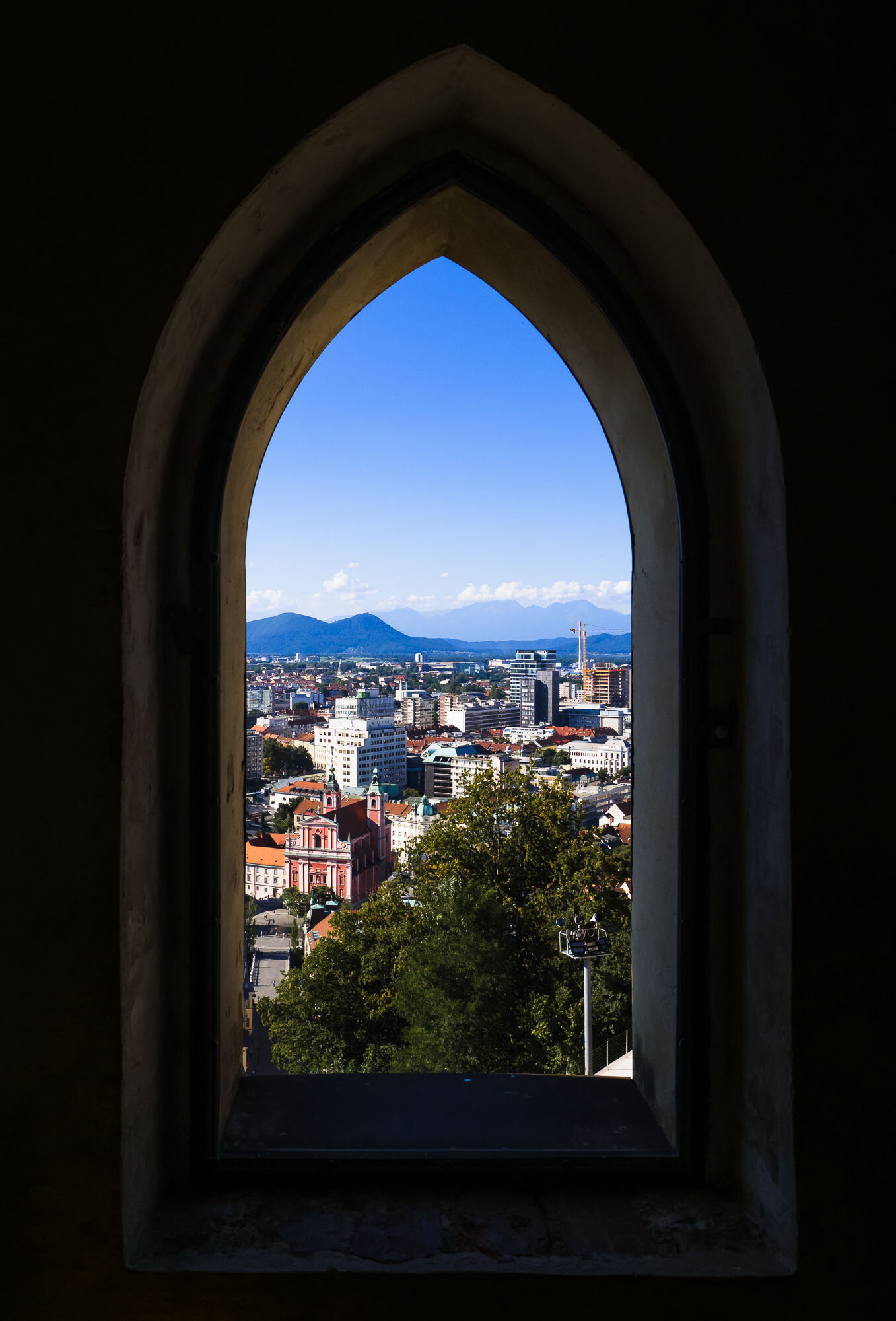
Window Views
Looking northwards from one of the castle windows, with the pink 17th-century Franciscan church visible at the bottom.

City Panorama
Looking southwards from the castle, you can see St Jakob's church, and on the bottom left the tower of St Florian's church, which - obviously - I tried to visit, but it was unforuntately closed (as Florian's often are).
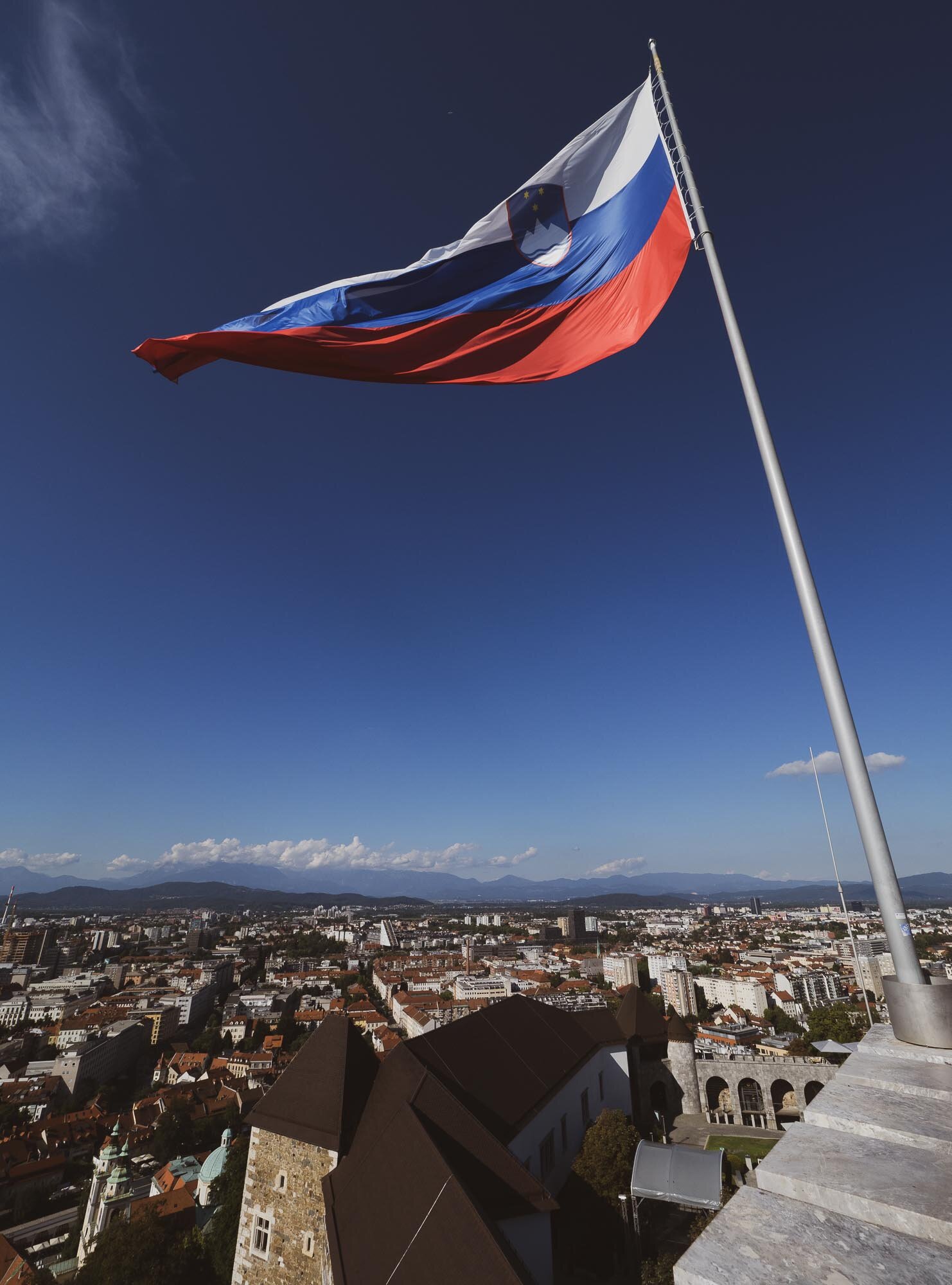
Slovenian Flag
The country is relatively young, emerging from Yugoslavia in 1991.
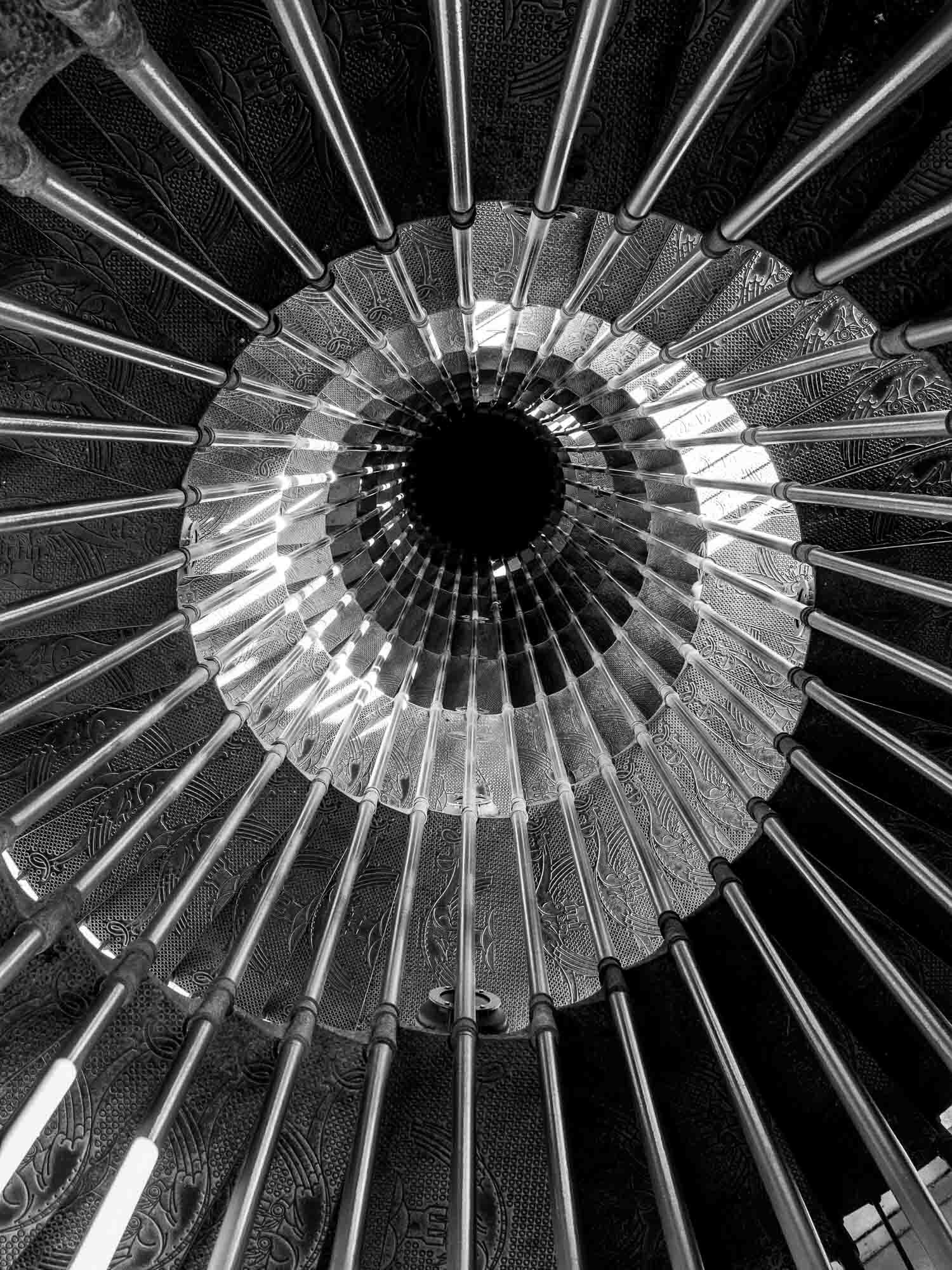
Stairs
The double staircase leading up and down the panoramic tower of the castle.
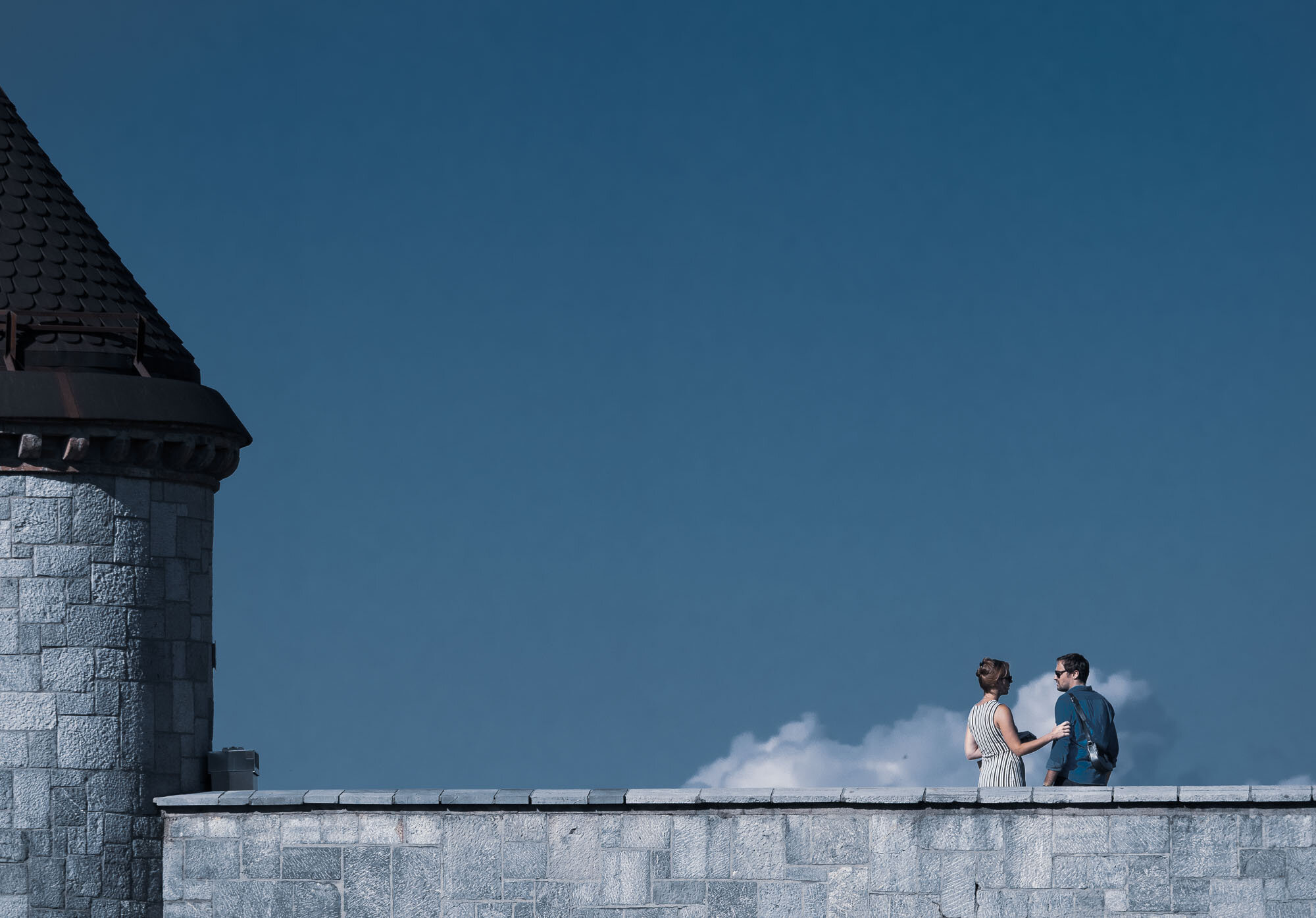
Castle Walls
A couple enjoying the view from the castle walls.
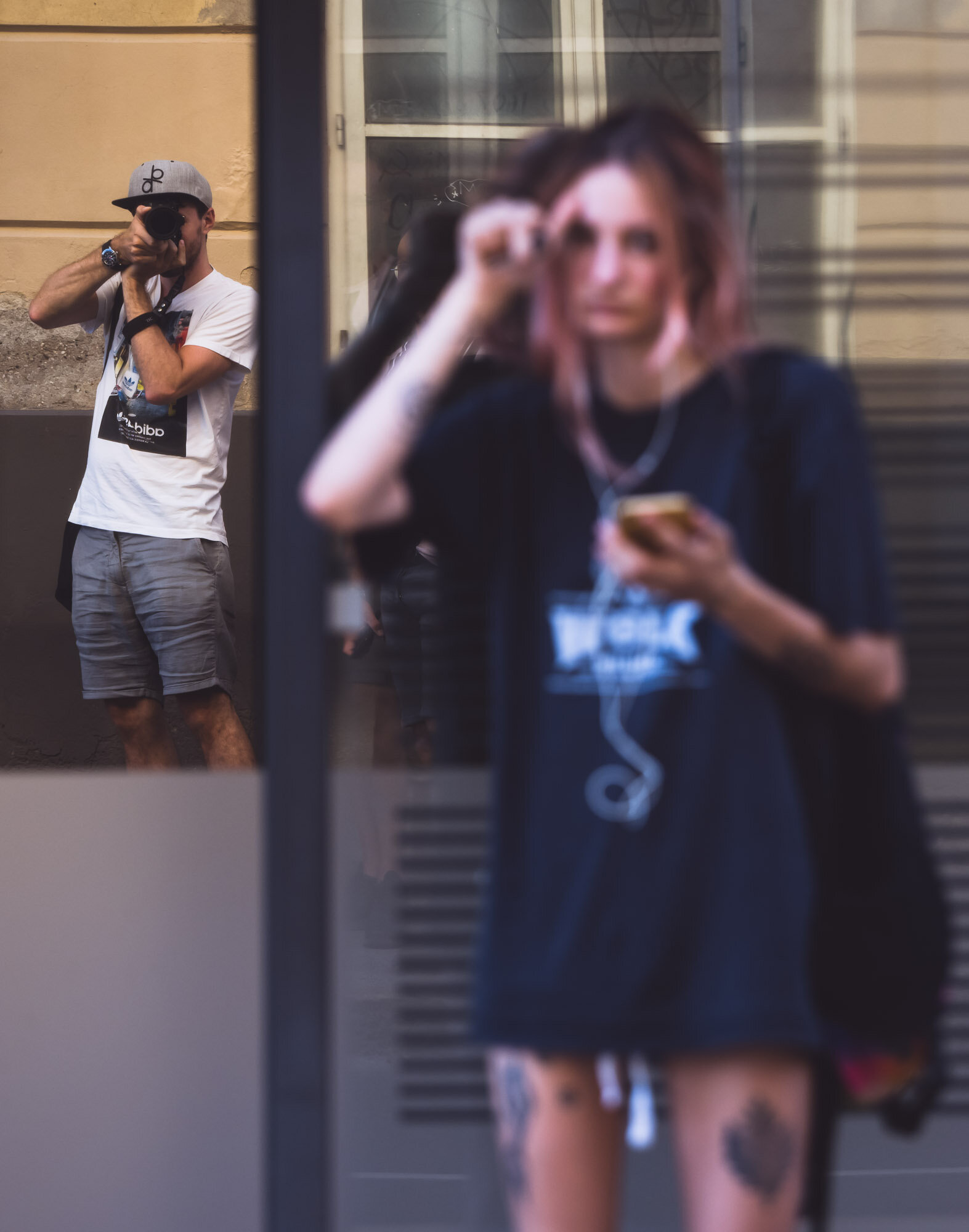
Selfie
My lack of focus skills resulted in this shot.
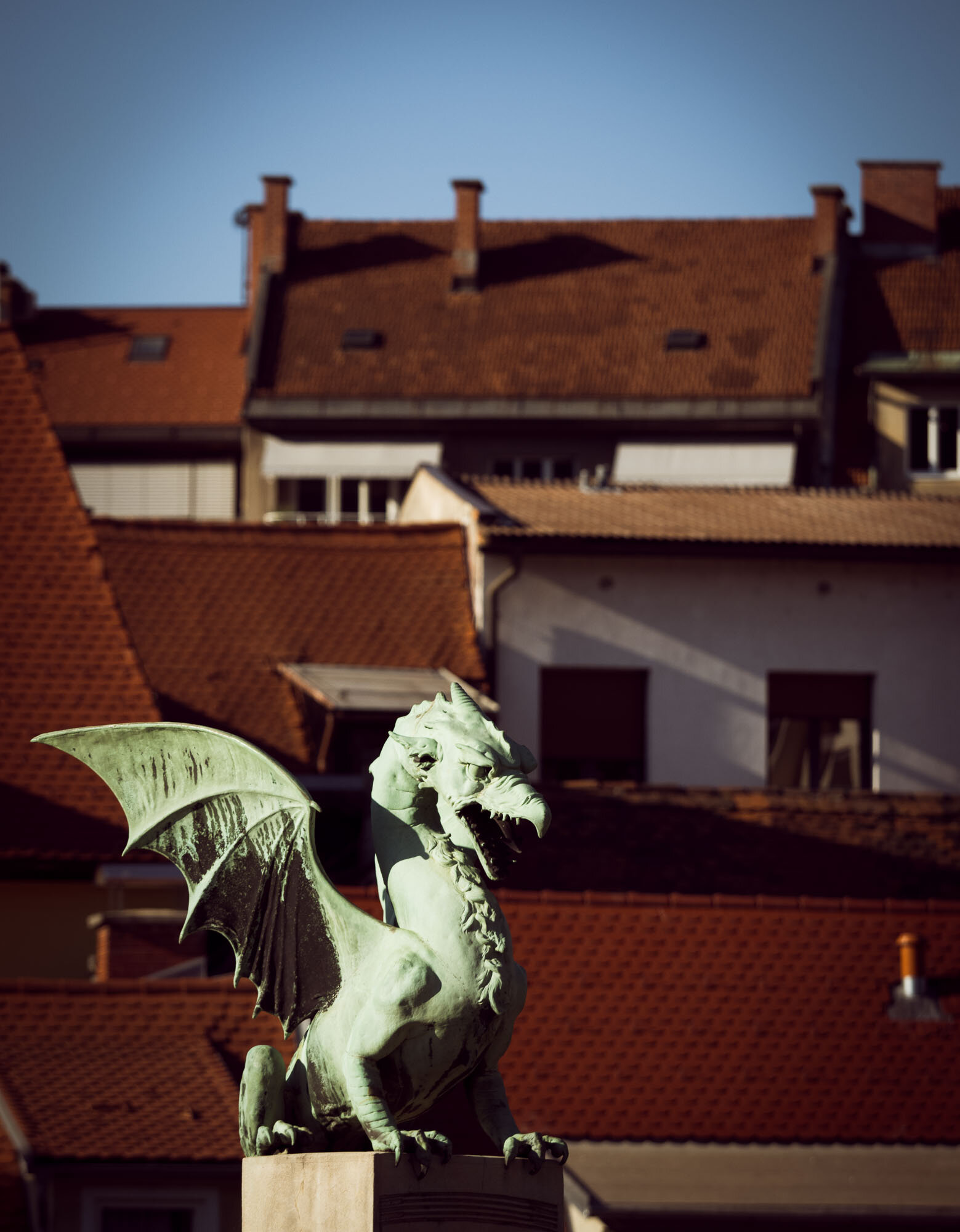
The Dragon Bridge
The Dragon is the symbol of the city, although the origin of this myth isn't fully clear.

Butchers' Bridge
One of the many bridges attracting tourists in Ljubljana, this one features the all too common padlocks.
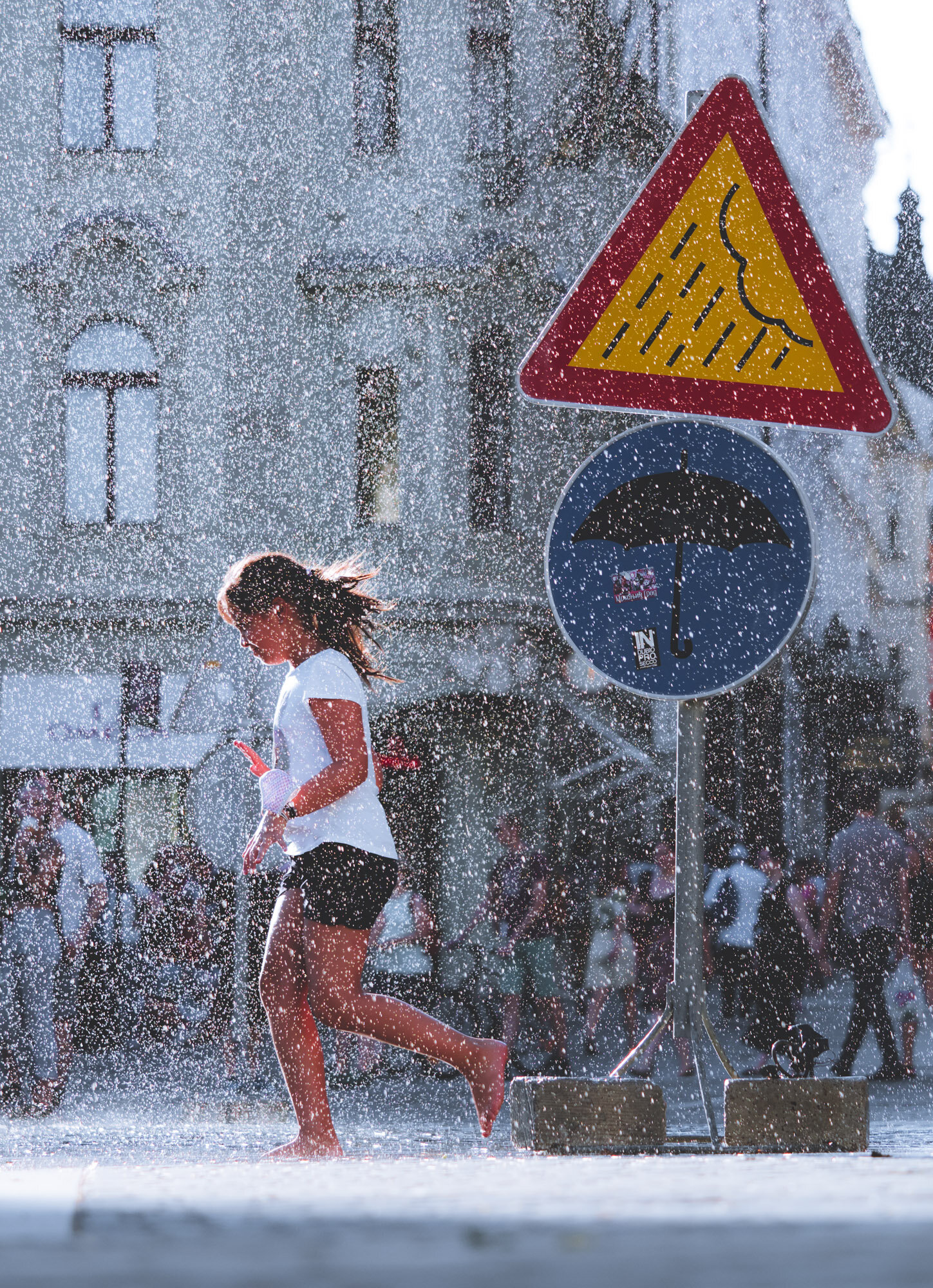
Prešeren Square Rain Installation
A sprinker installed 10m above the ground produces a simple but effective focal point for the square, with people enjoying a few refreshing drops in the August sun.
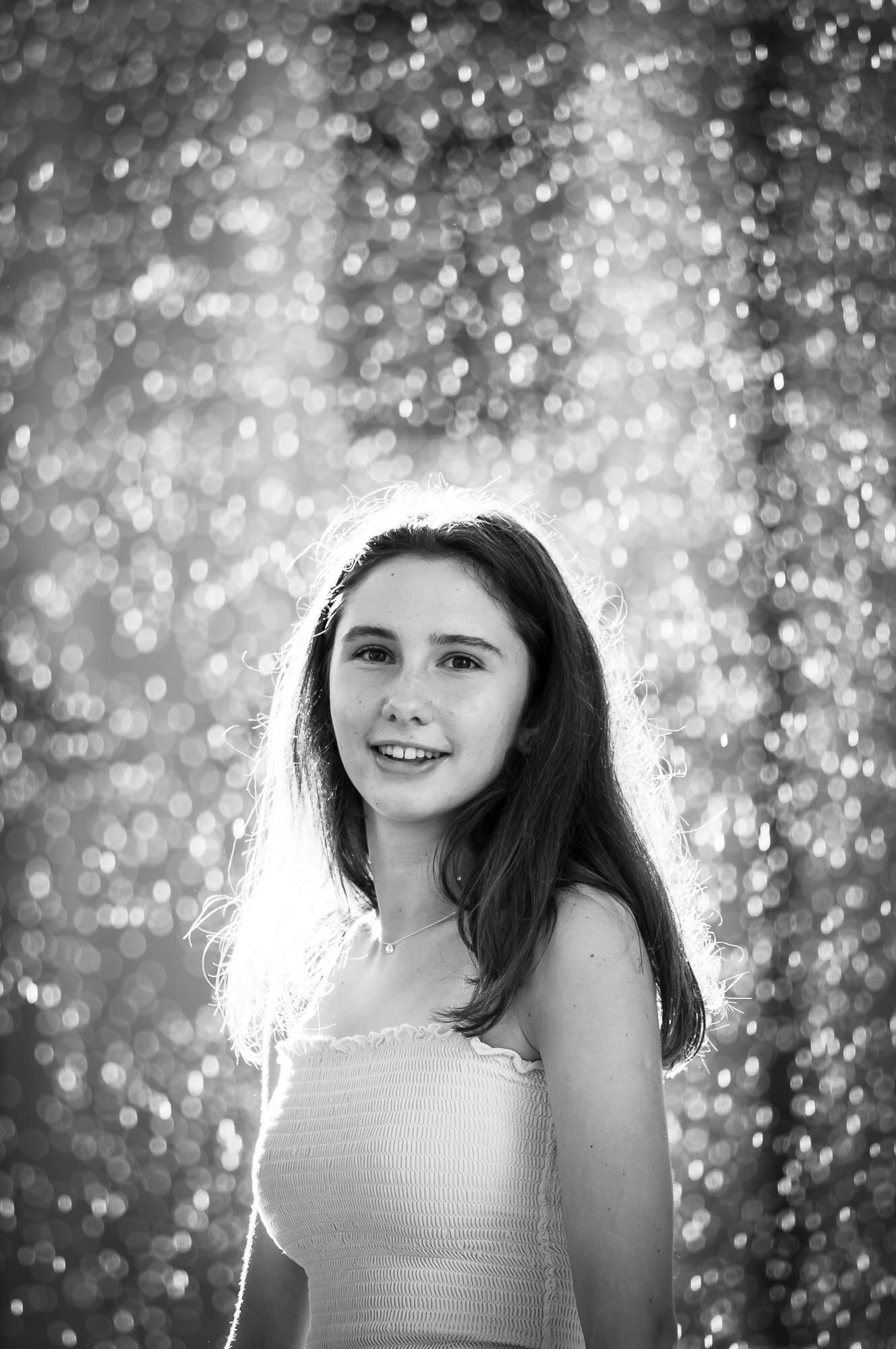
Rainy Portrait
Of course, it also makes for a great Instagram photo, although this girl did ignore her dedicted photographer for this shot.
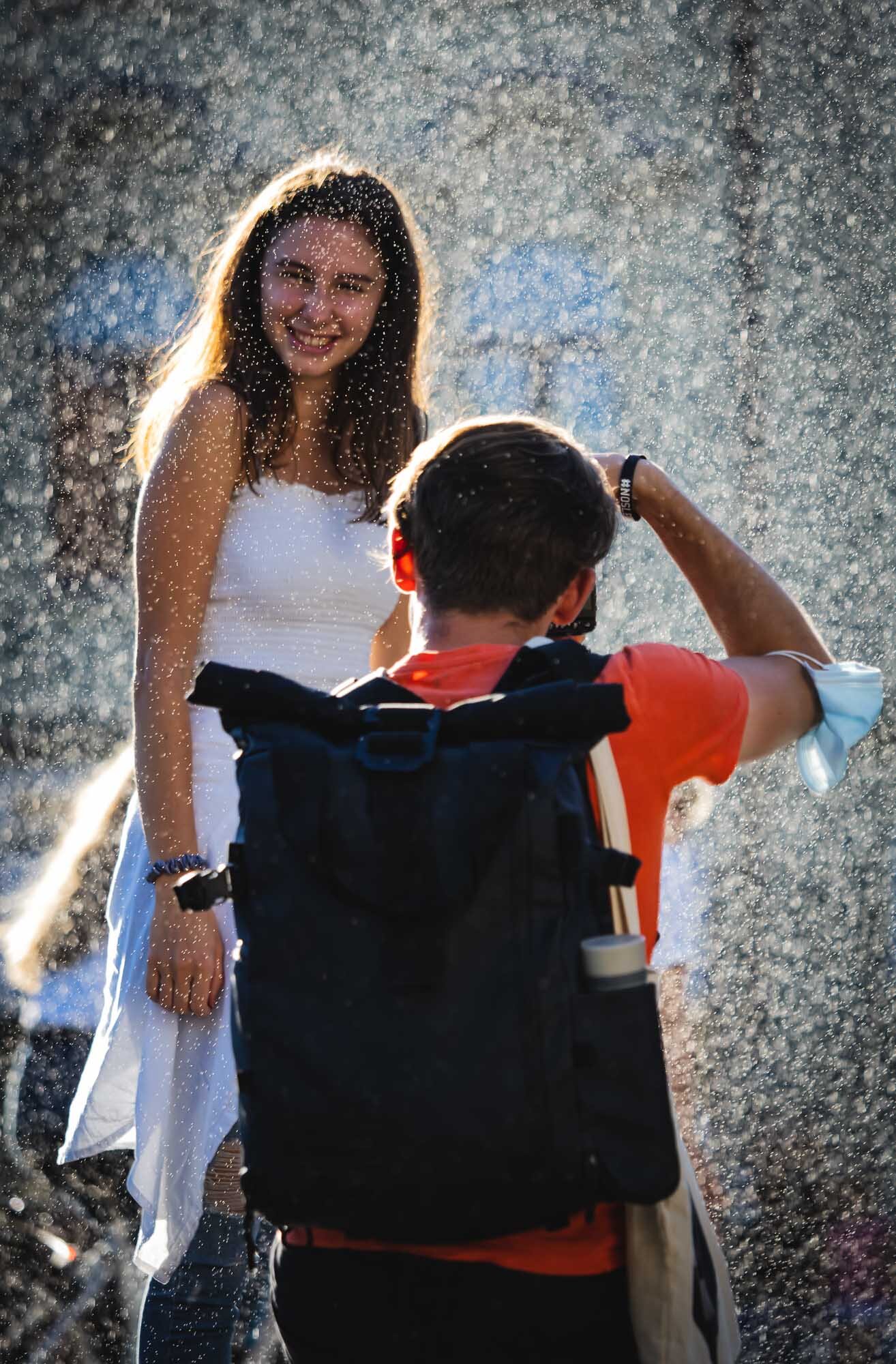
Instagram Boyfriend
...I'm sure she did get a good photo in the end though.
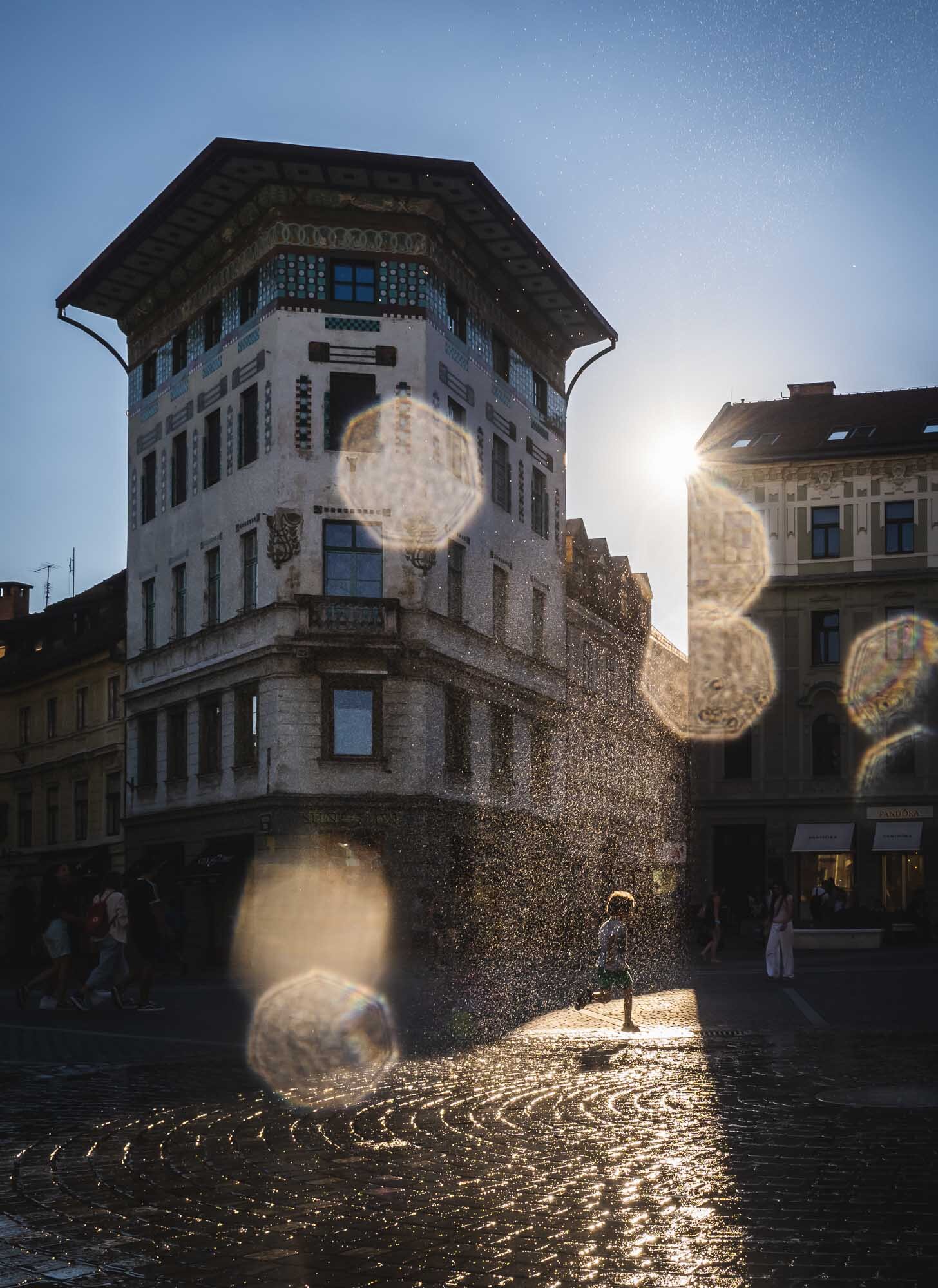
Raindrops keep falling on my lens...
A boy runs through the rainy installation, illuminated by the afternoon sun.
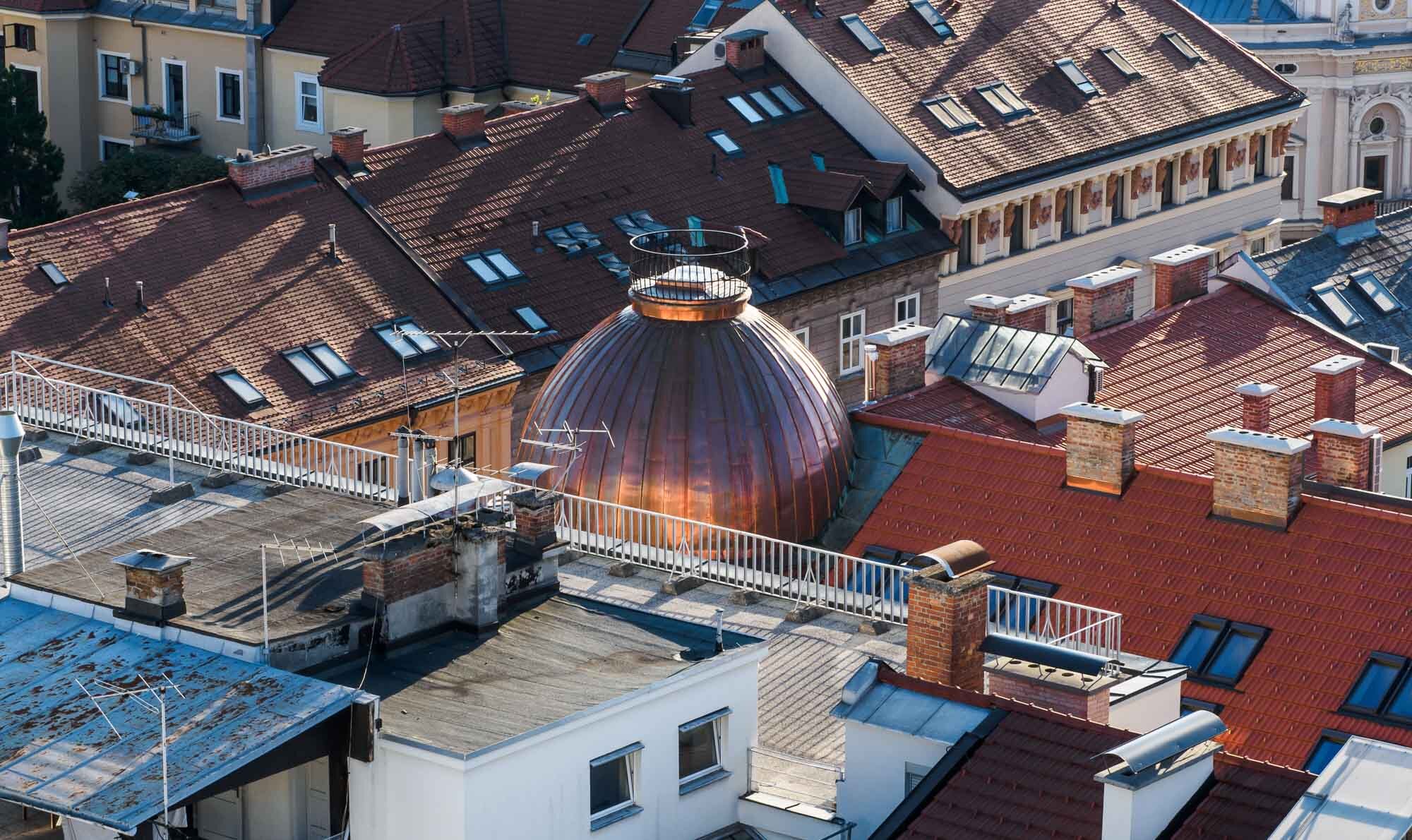
Ljubljana Rooftops
Anyone knows what this dome is?
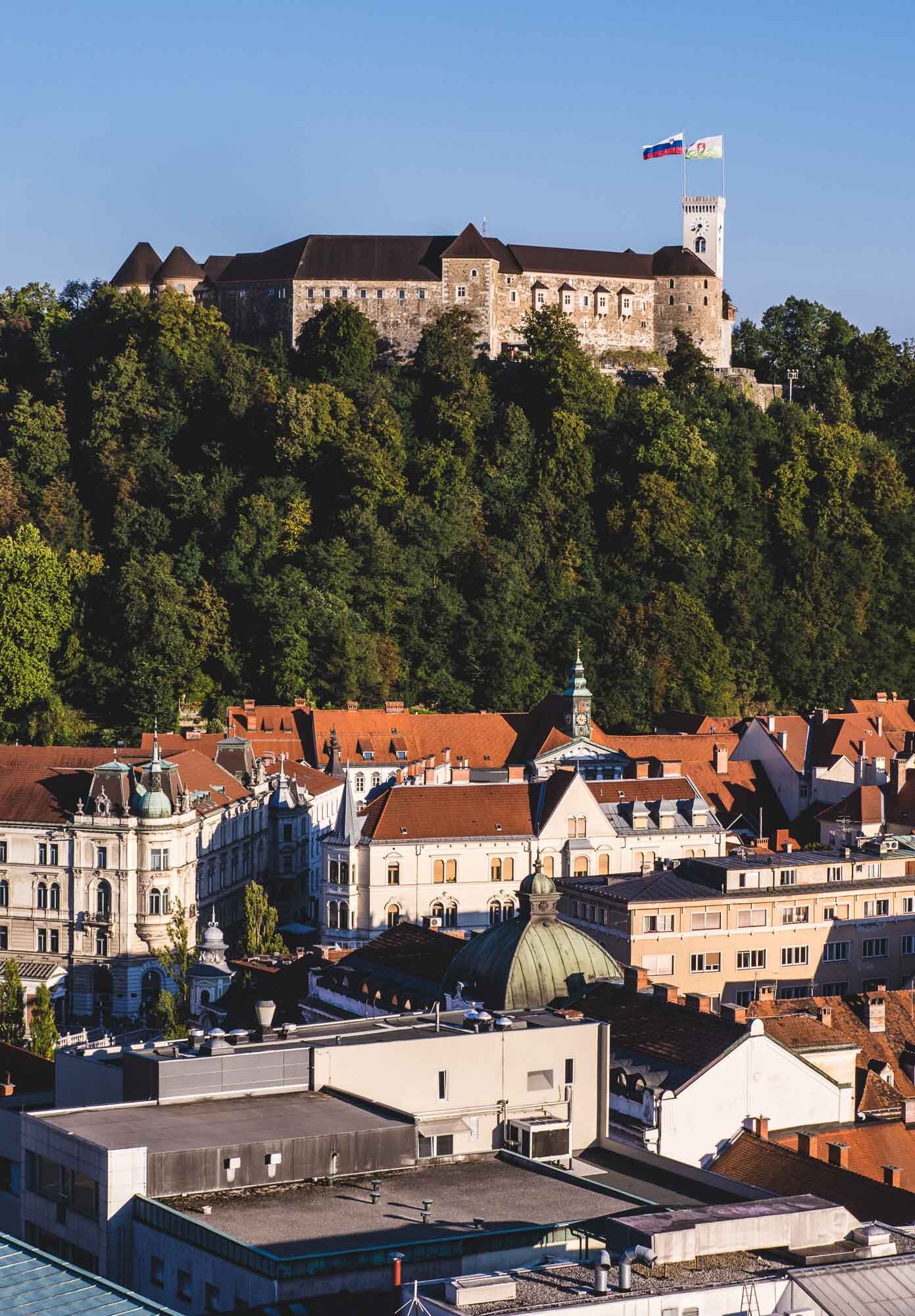
Castle Views
The Nebotičnik Skyscraper terrace provides a good 360 degree view of the city.
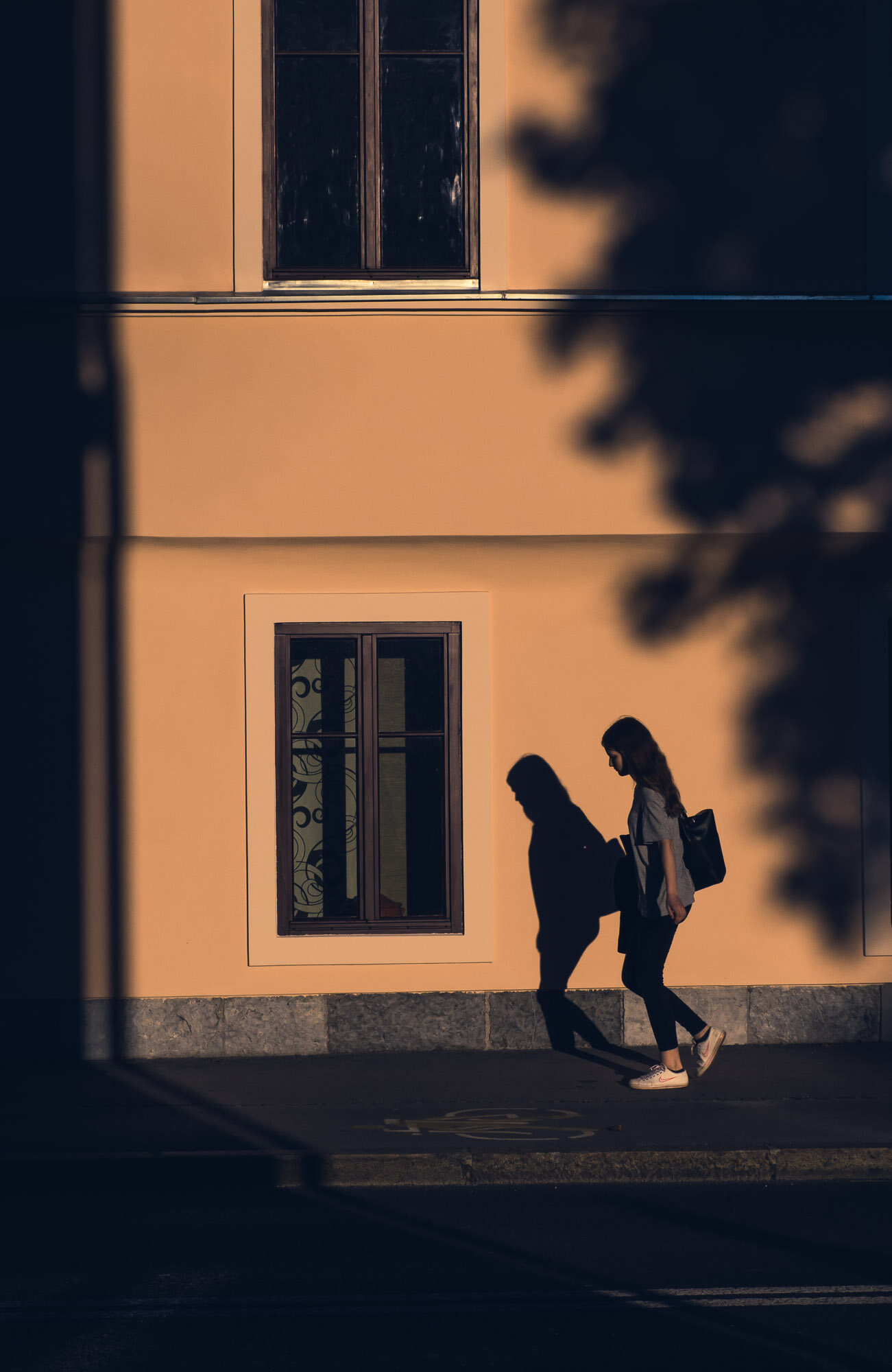
Shadows
The late sun is the best time for street photography in my view.
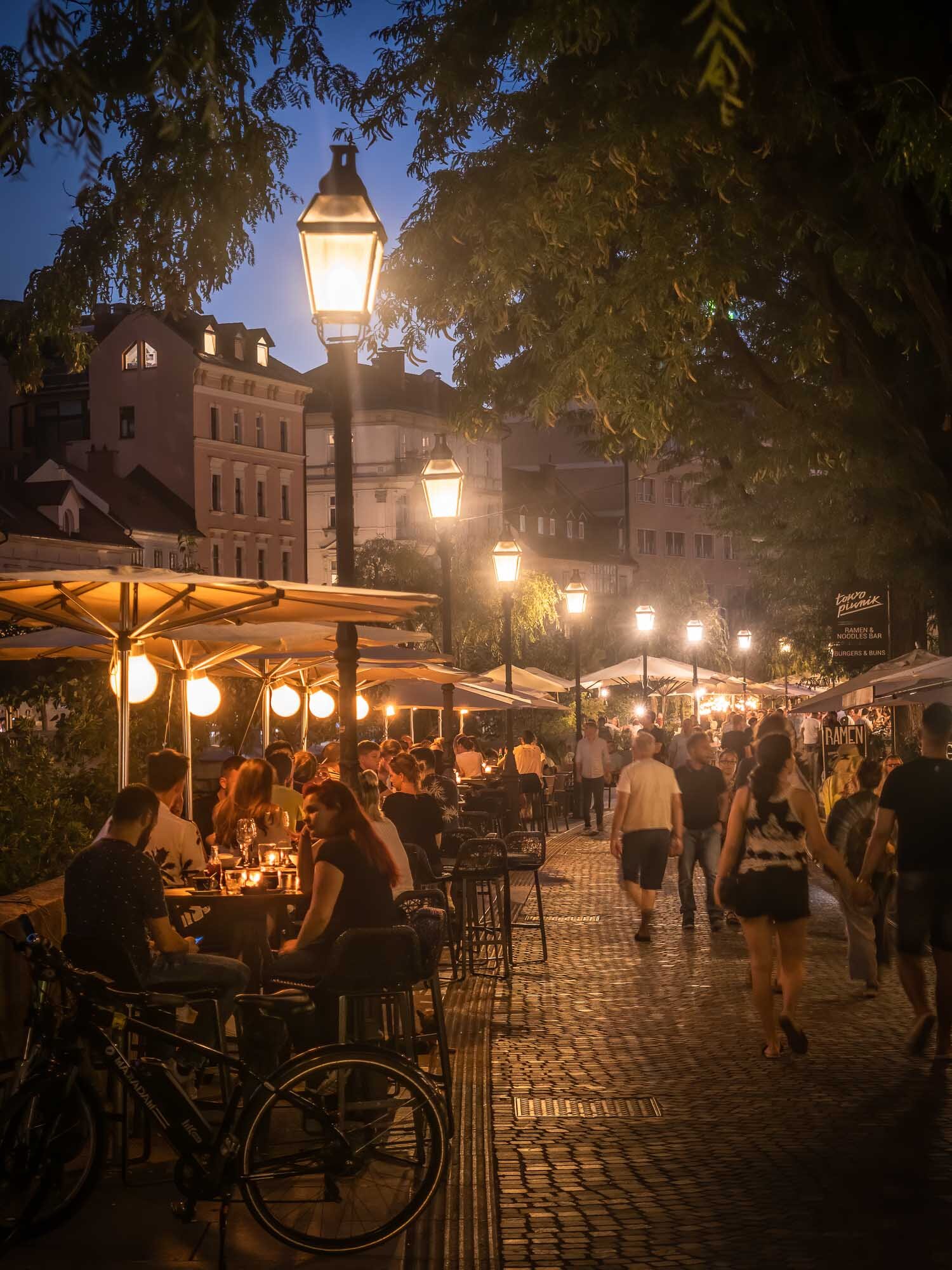
Evening Drinks
A view of some of the many promenade restaurants along the river.

Tripe Bridge
Looking towards the 19th-century bridge with 2 adjacent 20th-century footbridges that cross over the Ljubljanica River.
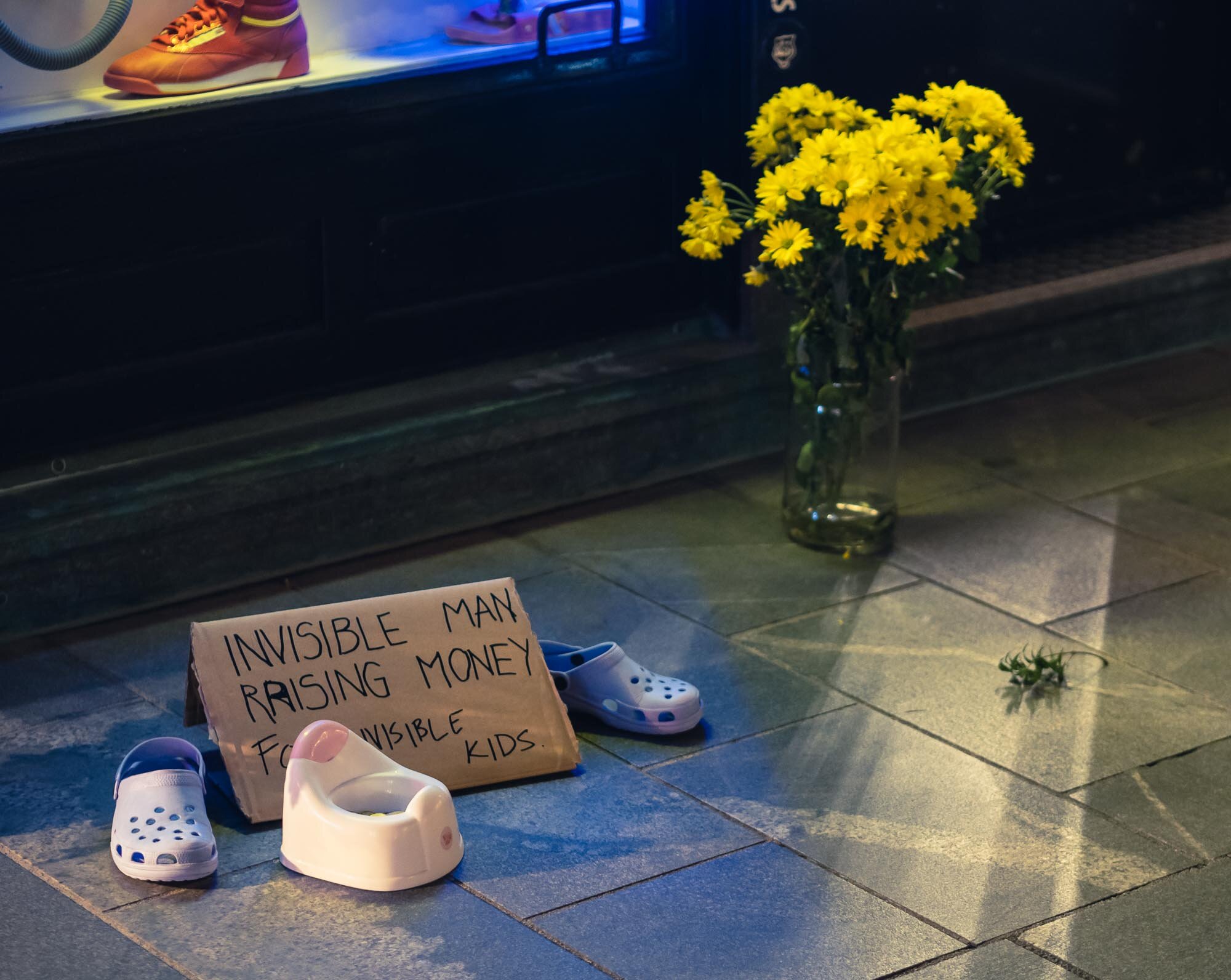
Nice Try
Don't we all wish to be invisible sometimes?

Graffiti with a Heart
Spotted on the Stari Trg street.
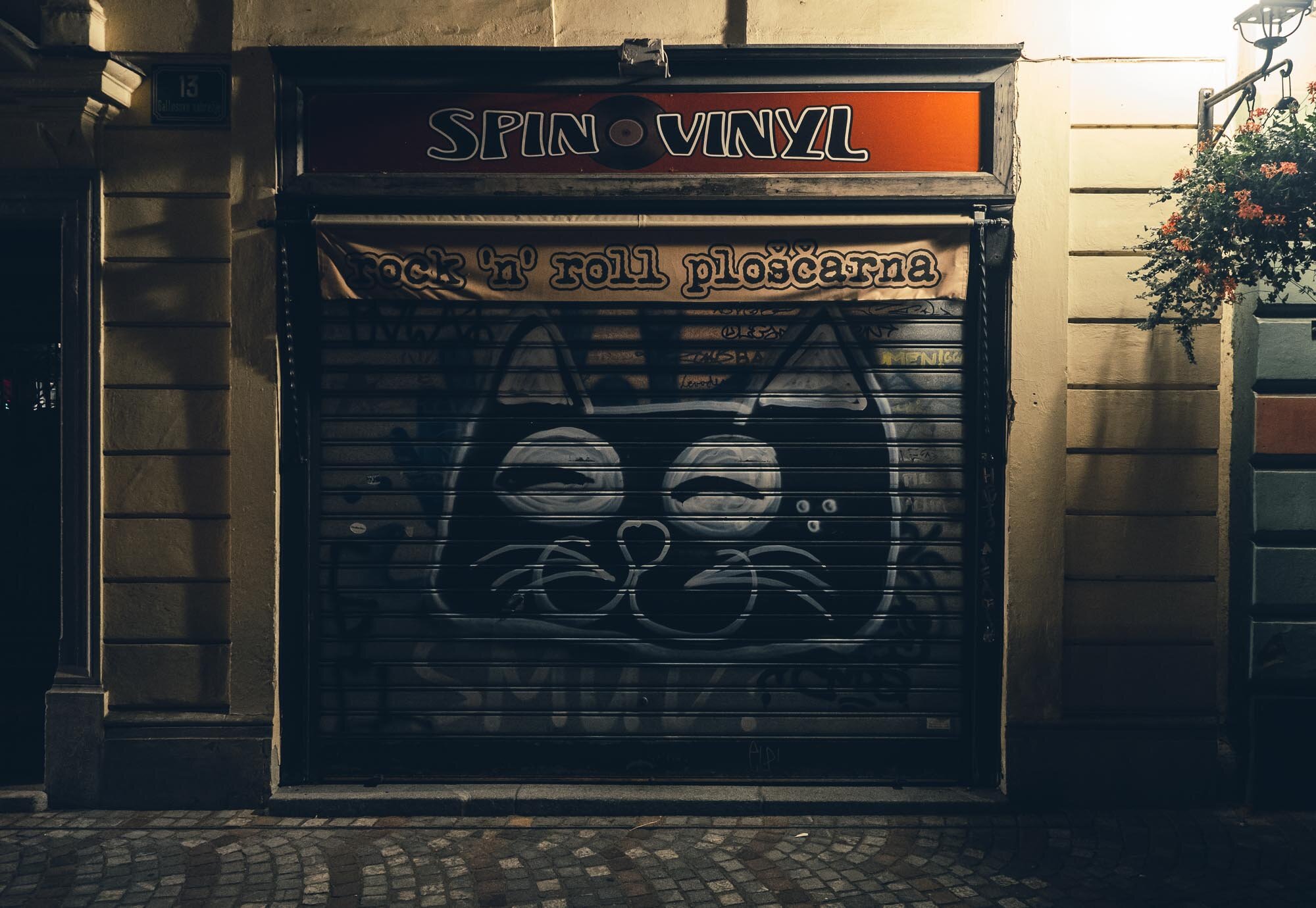
Rock 'N' Roll Cat
A vinyl shop in the city centre.
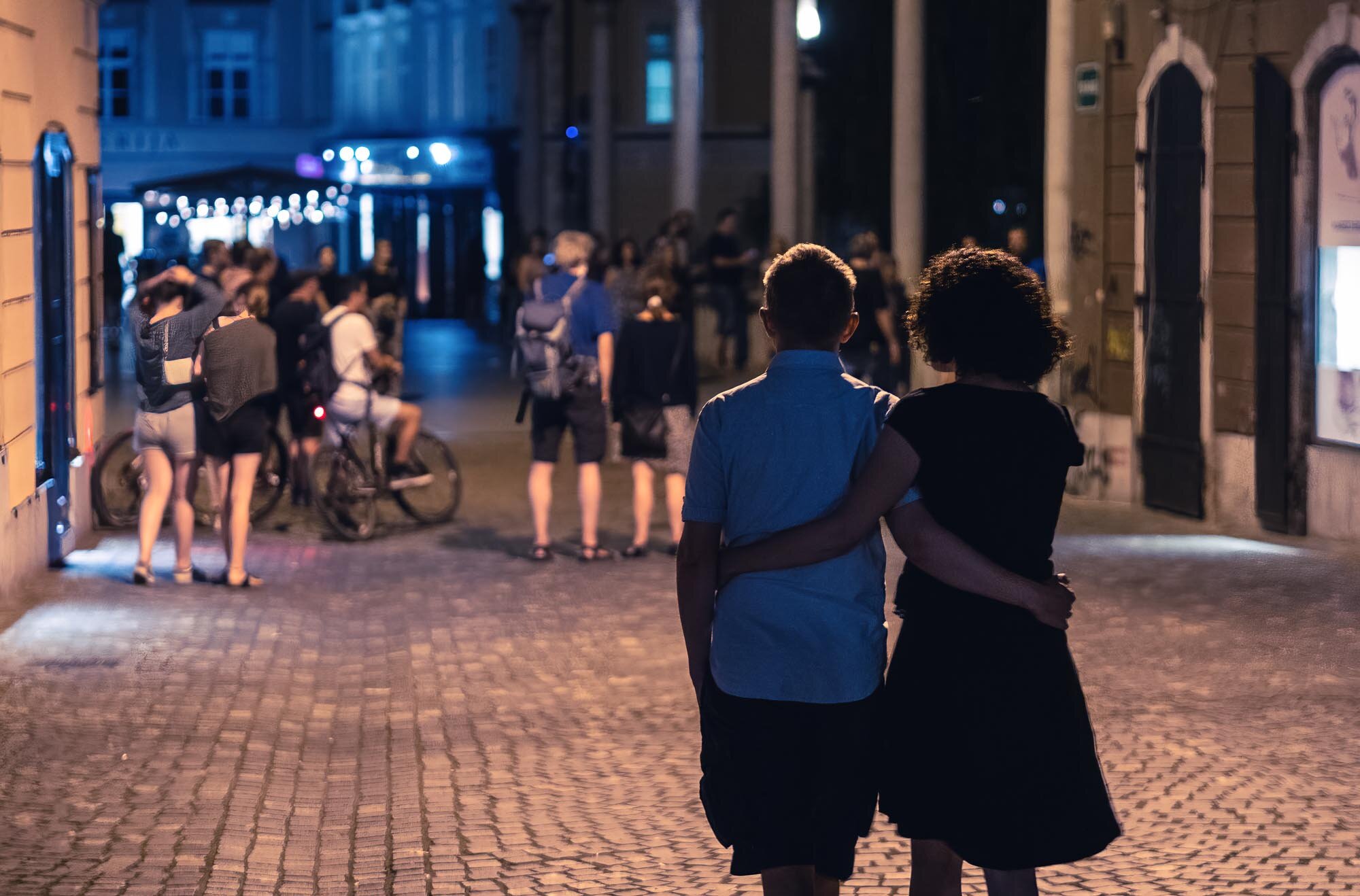
Nightly Walks
A couple walking through the city centre. The city seemed quite young and casual.
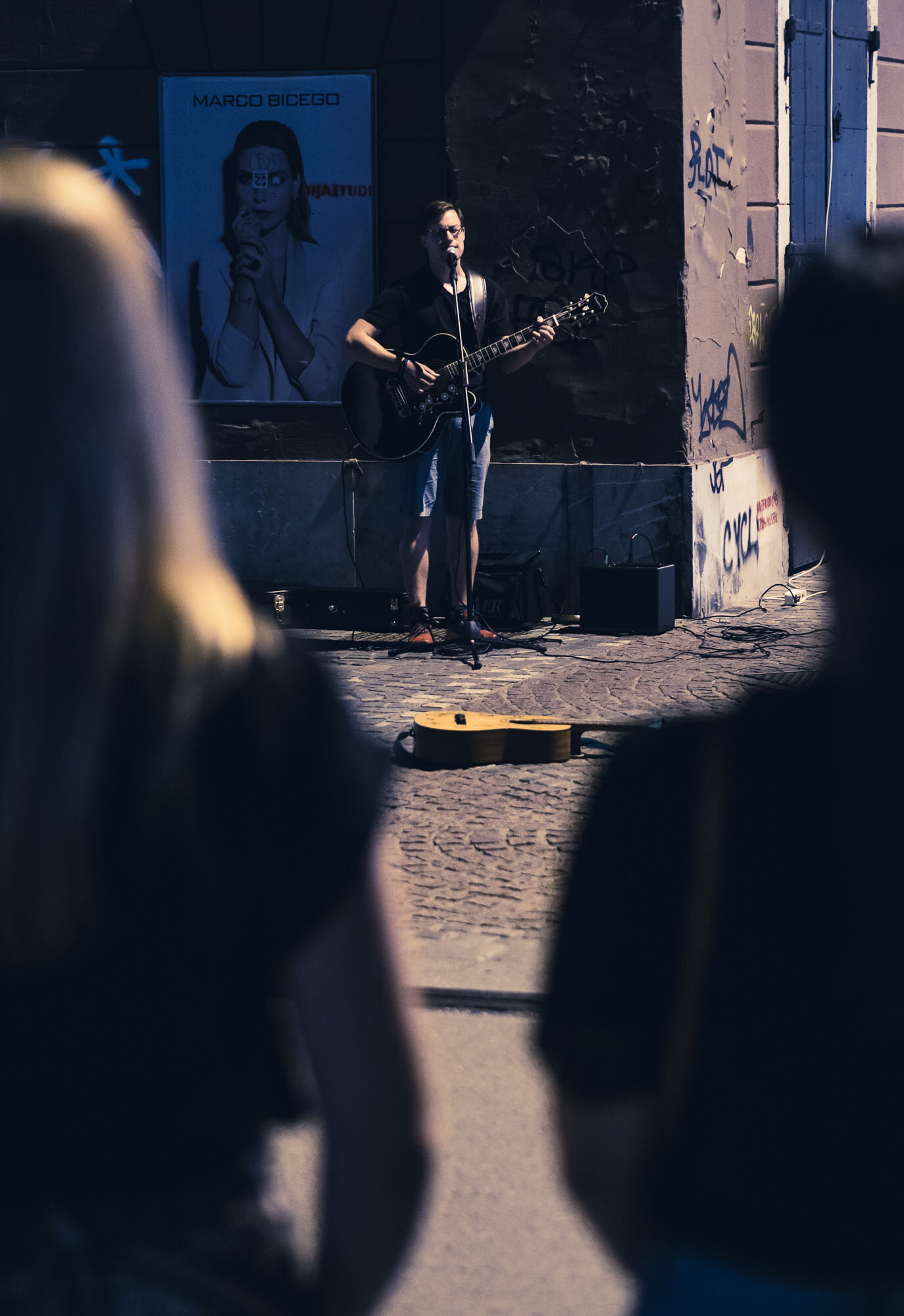
Performance
Two women watching a street musician.
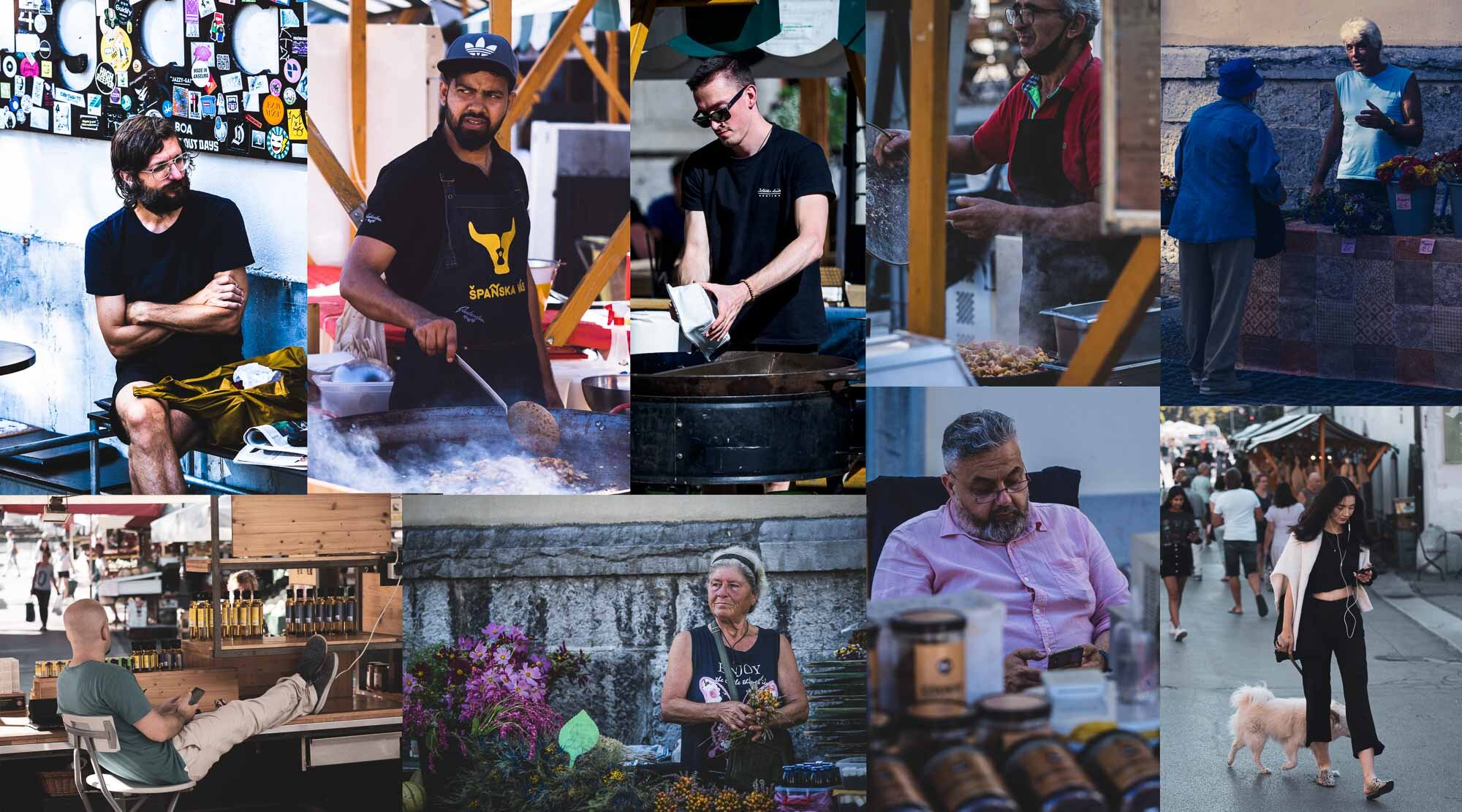
Market Scenes
The city has a beautiful market square, which was full of food, produce, and craft stalls on this Friday morning.
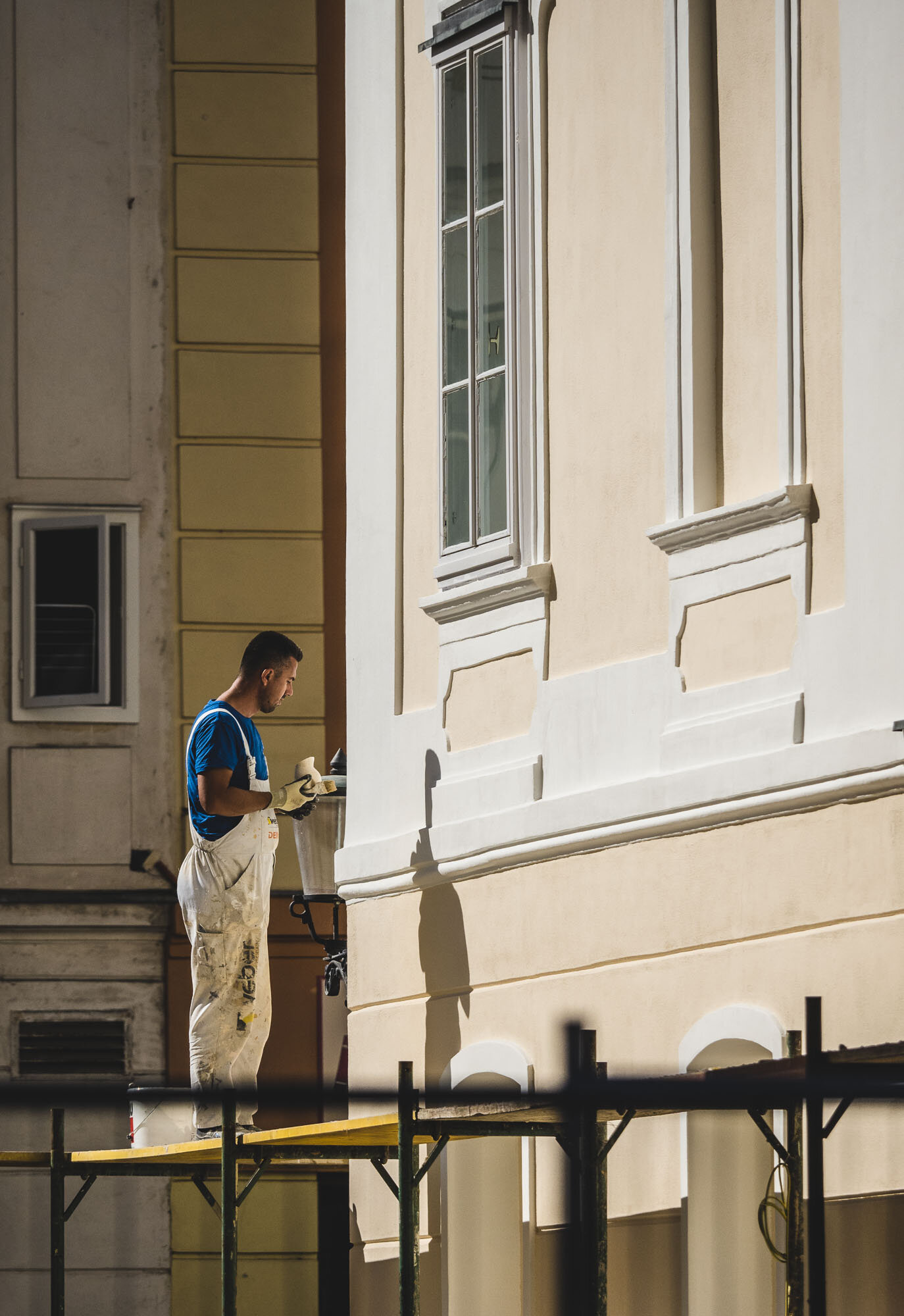
Maintenance
Ljubljana is well kept and clean - a pleasant city to walk around.

Bird Attack
Hunger overcomes all fears.
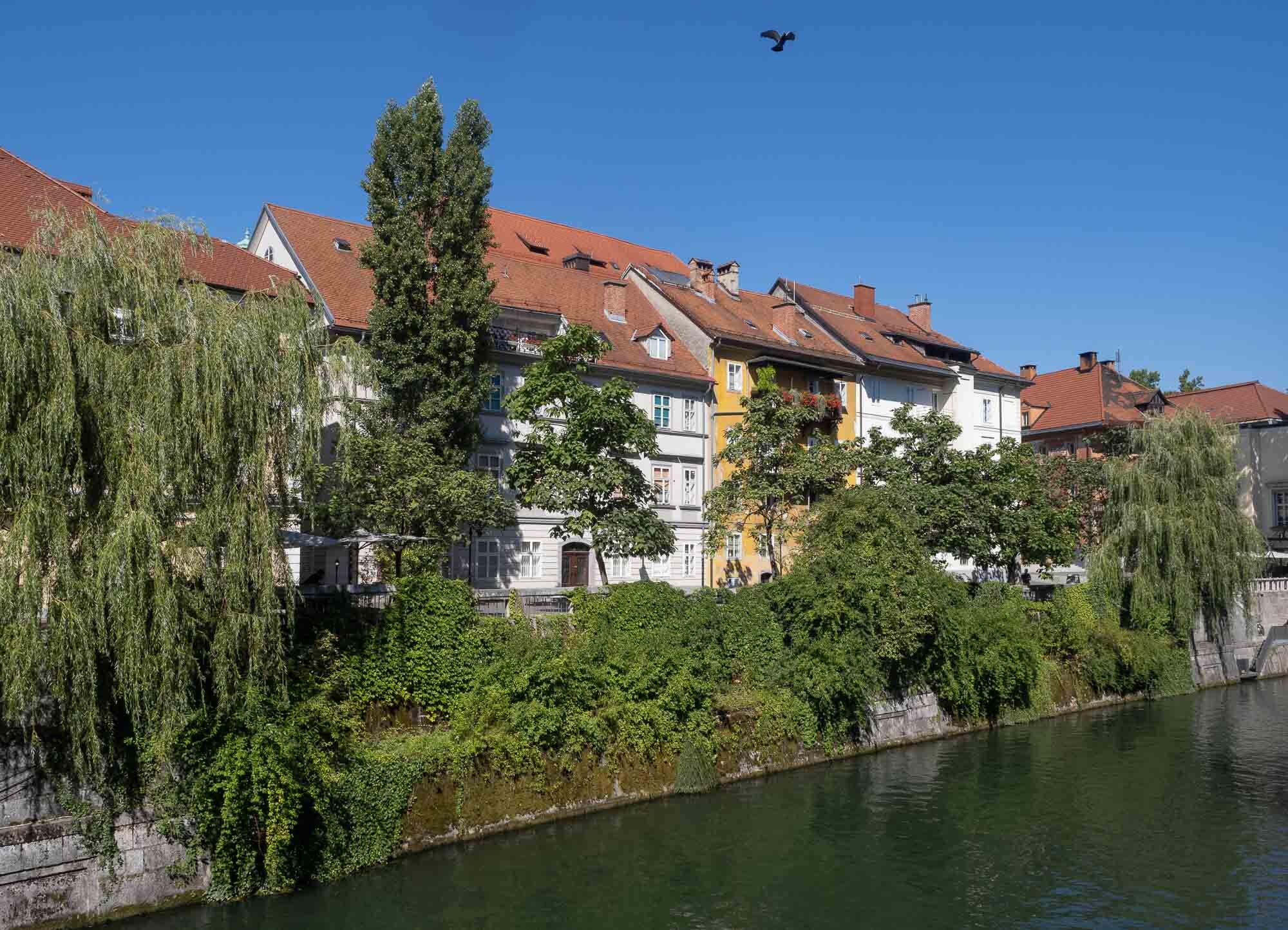
Green Shores
The river walls are covered with greenery, making the city feel quite lush. Definitely recommended for a summer visit.
A Day in Ulm and 768 Steps
Escaping the Dubai summer heat to Germany means there are opportunities to explore my home country, which firstly I didn’t do enough, and secondly is very underrated compared to many of its European neighbors.

Escaping the Dubai summer heat to Germany means there are opportunities to explore my home country, which firstly I didn’t do enough, and secondly is very underrated compared to many of its European neighbors. I’m undoubtedly biased, but particularly the southern part of Germany is full of amazing places to explore. Ulm is one of these places, and its landmark attraction, the tallest church in the world, makes it a must see. Combine that with the chance to meet old friends from Dubai, and it becomes a great day indeed.
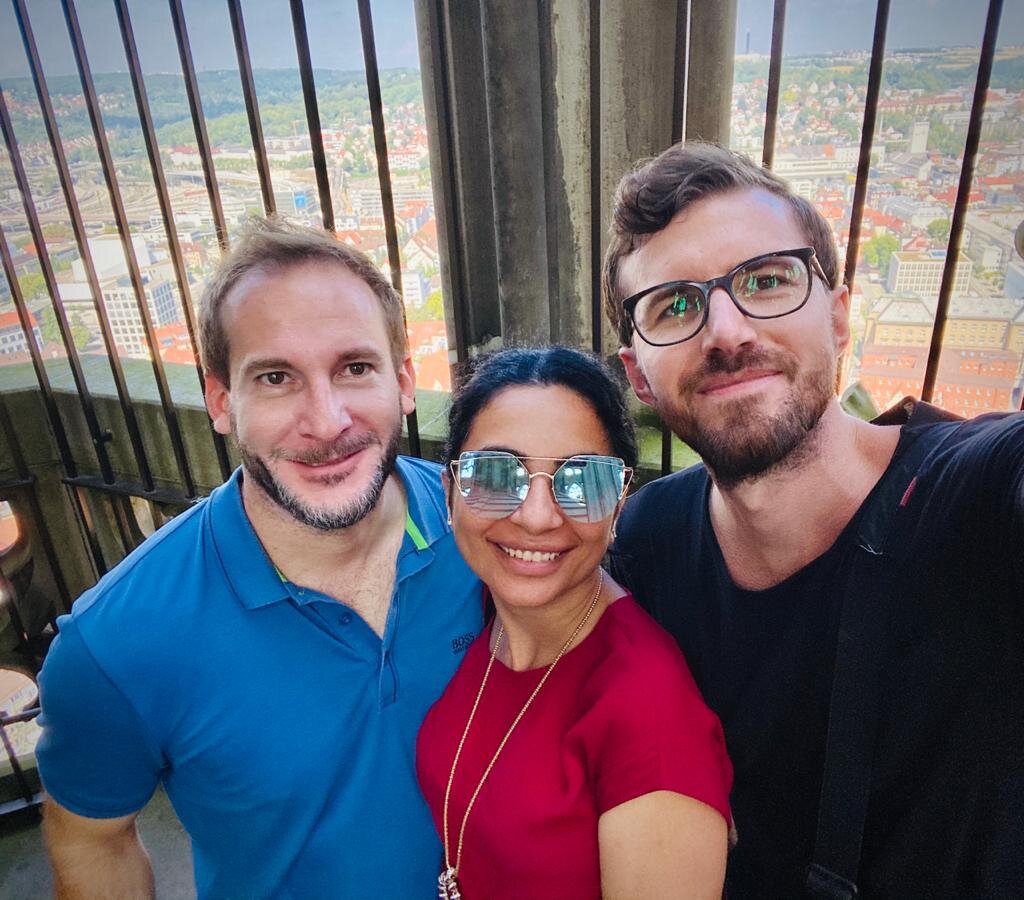
Two Germans, and Simon ;)
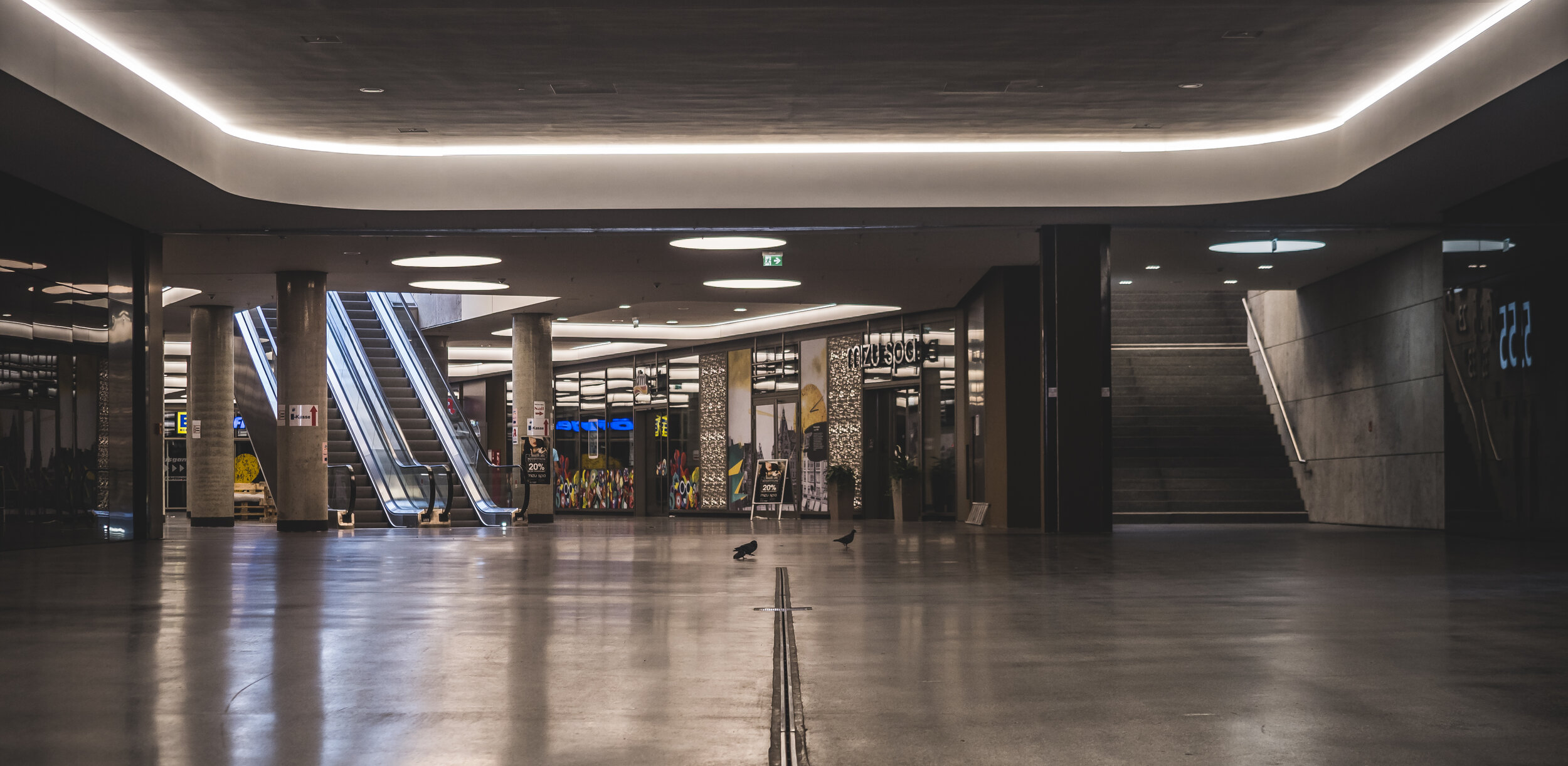
When the Birds Take Over
One could say this is a consequence of the Coronavirus epidemic, but it also was a Sunday morning.
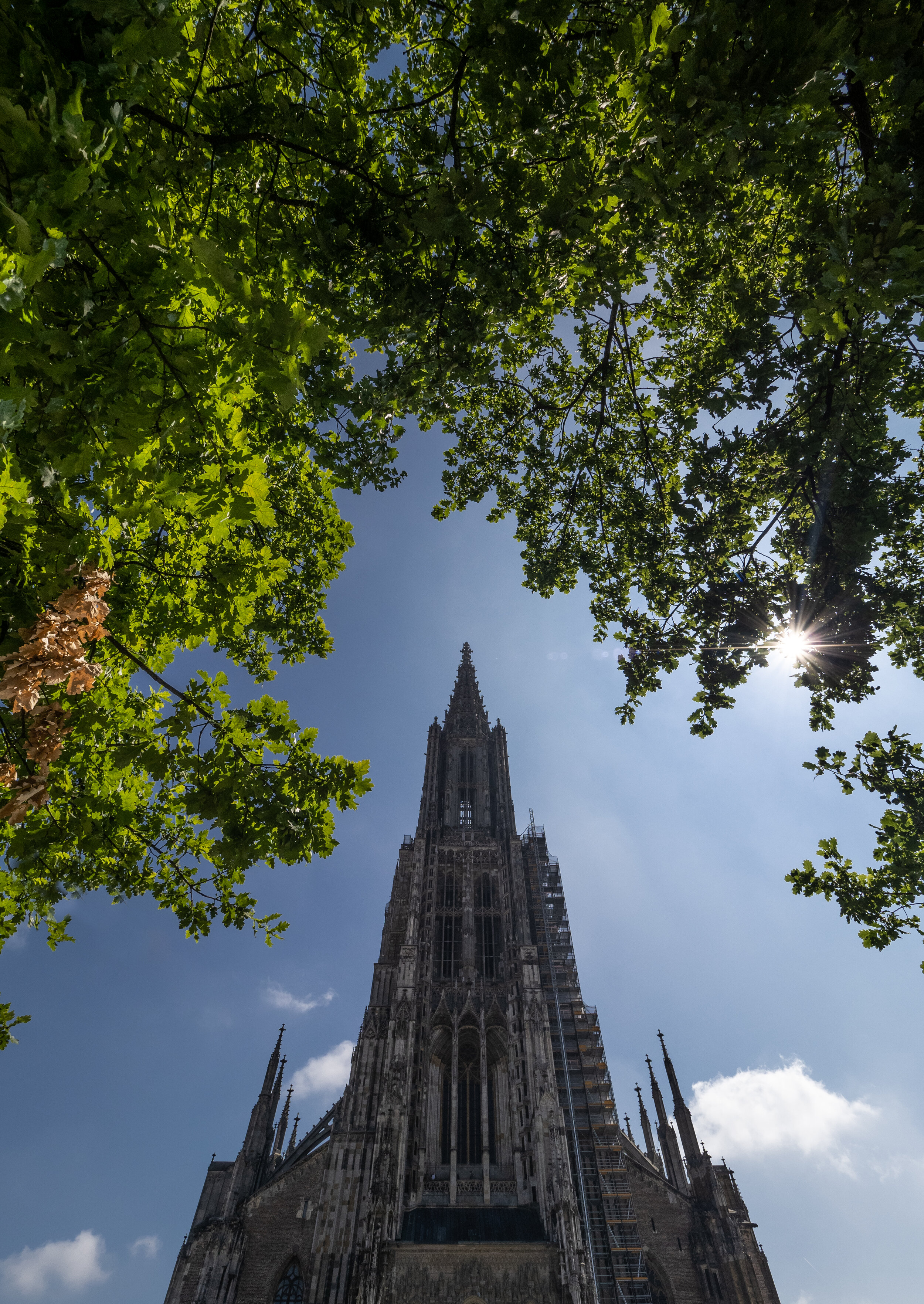
Ulm Minster
The tallest church in the world at 161.5m.
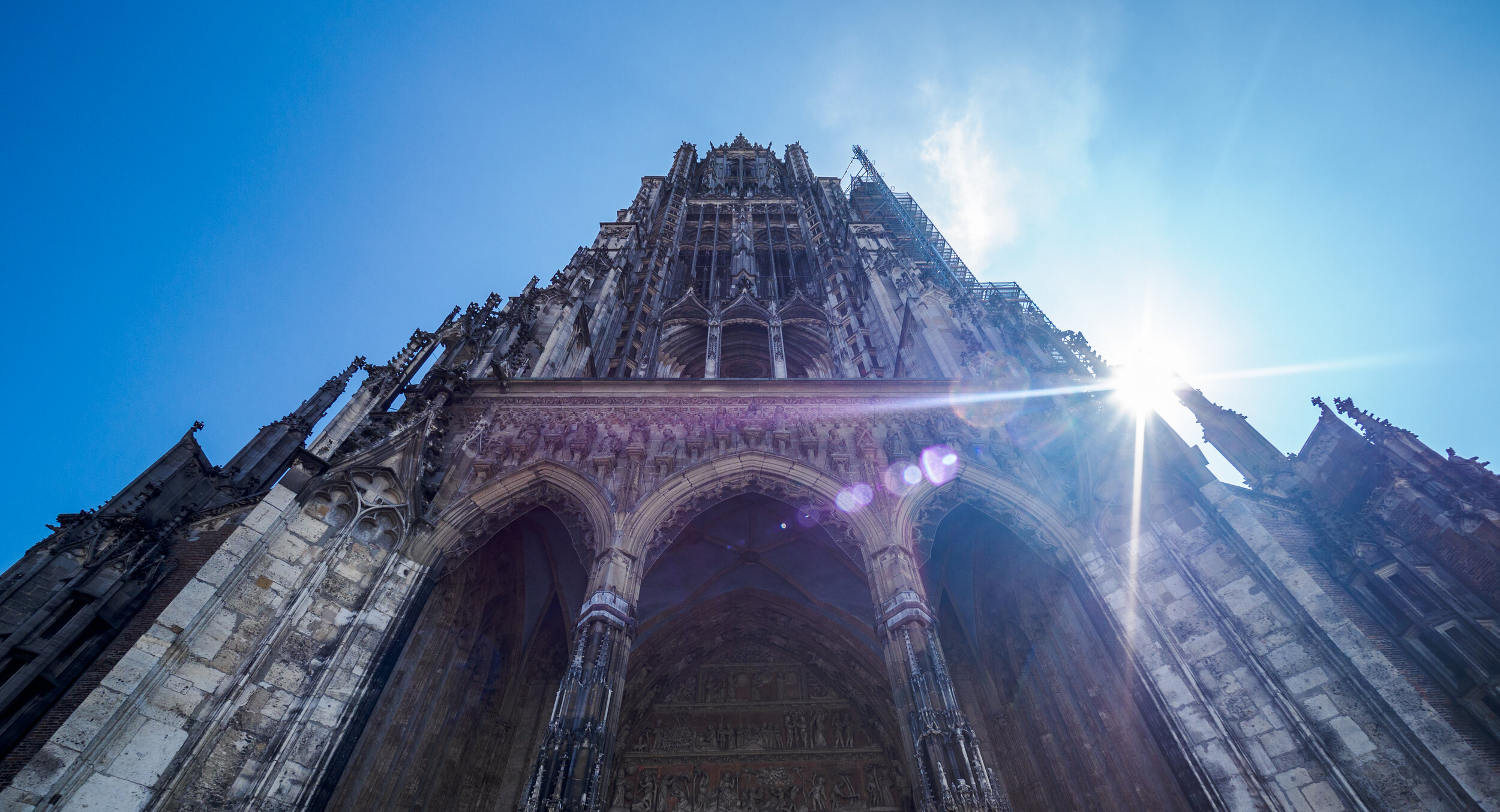
For now...
...at least until the Sagrada Familia will eventually be completed.
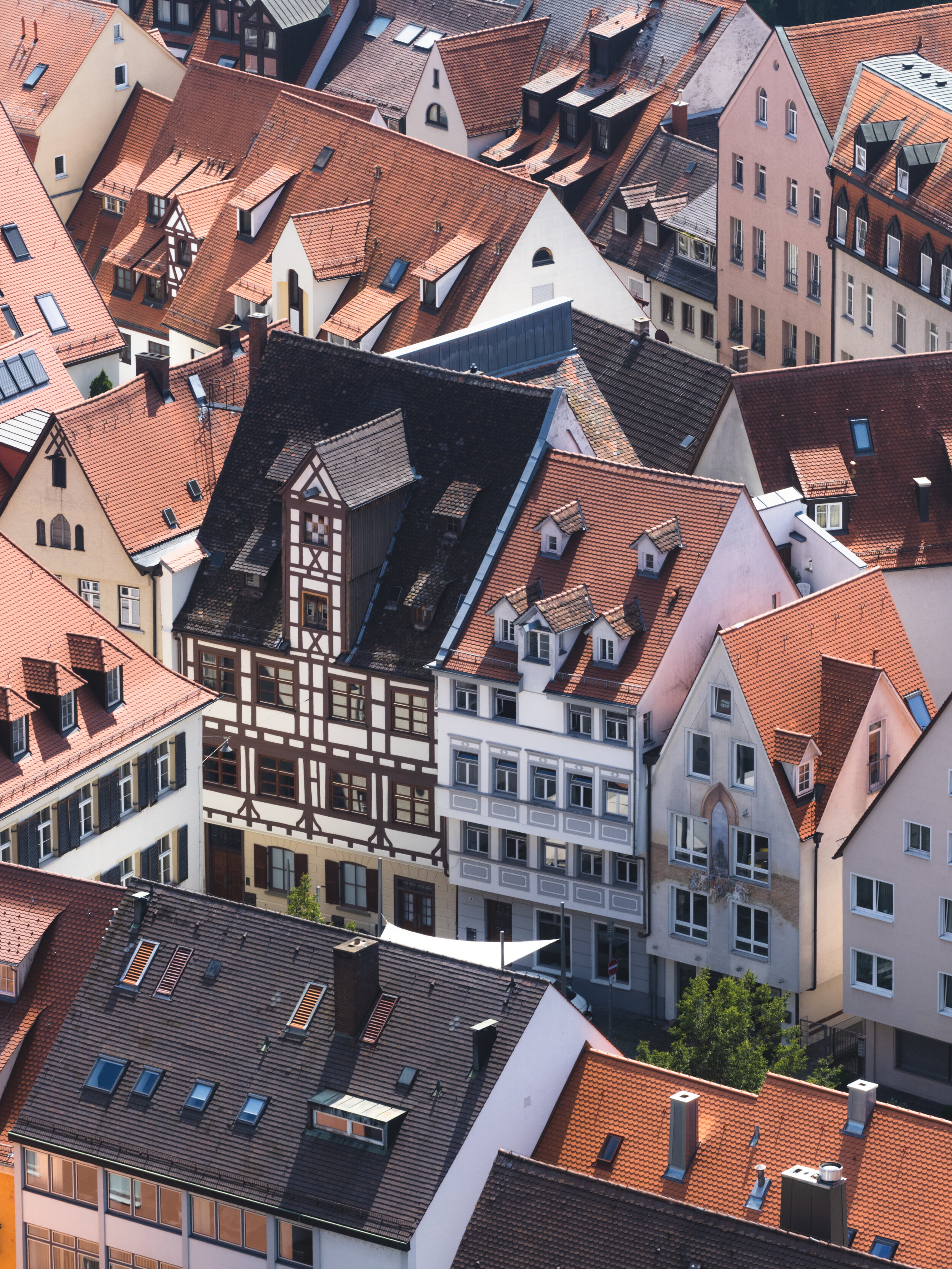
Houses
Some of the houses in Ulm still feature the traditional timbered architecture found in Swabia.
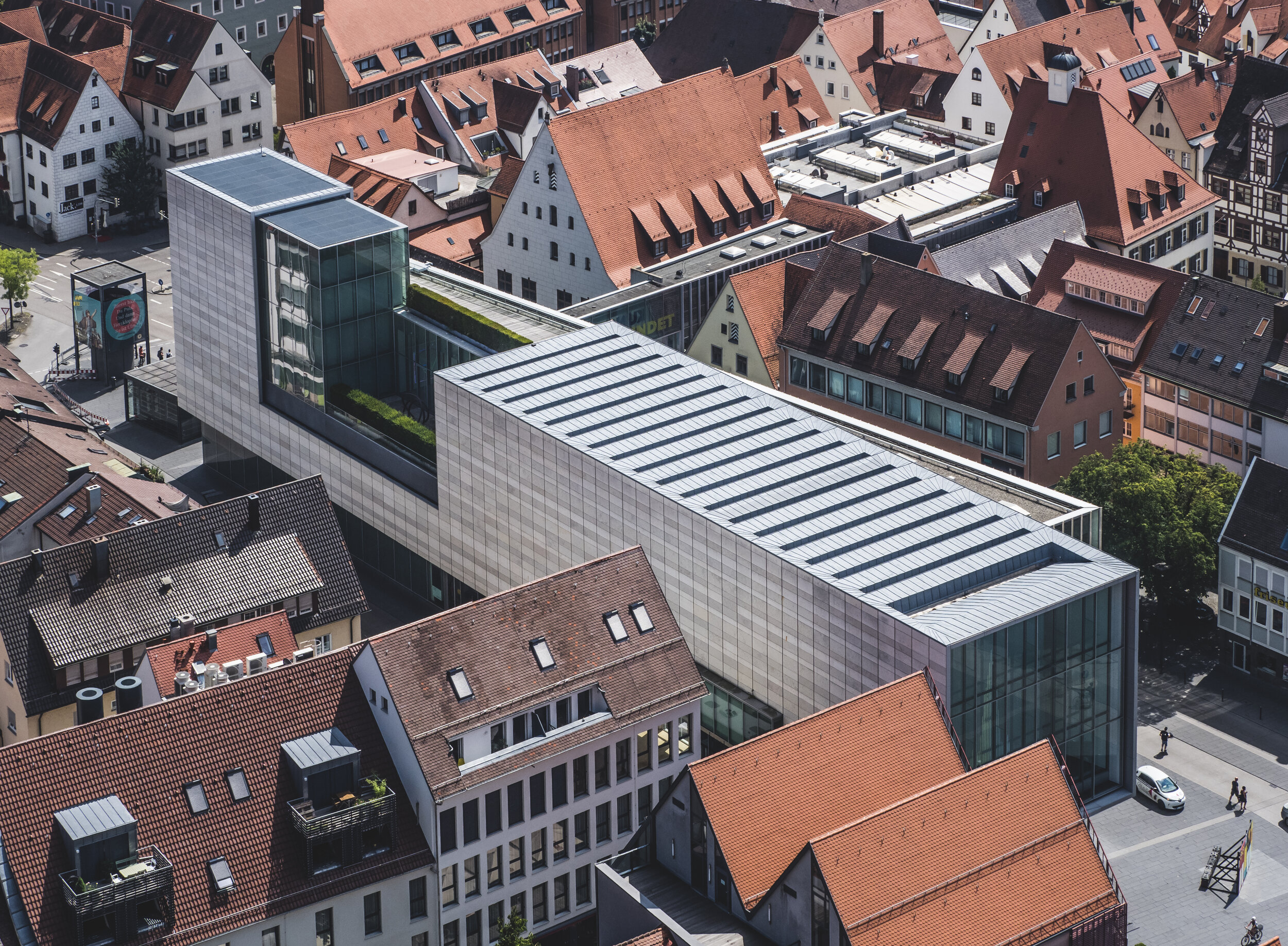
Contrasts
The city is dotted with modern buildings, such as this office and commercial building.
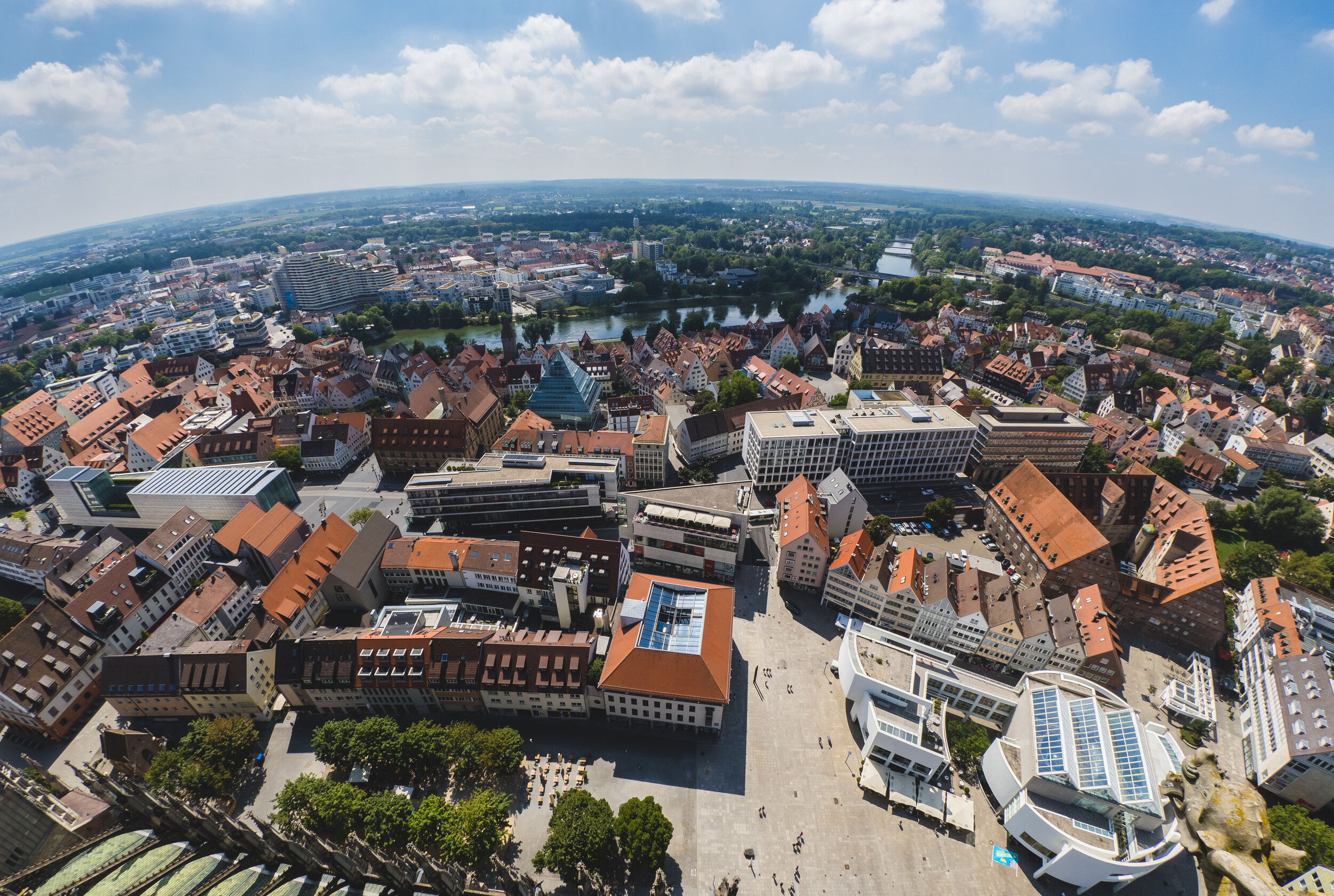
Surroundings
Ulm lies at an interesting geographical location, where the rivers Blau and Iller join the Danube. It was founded in 850, but is now split along the river into Ulm in the state of Baden-Württemberg, and Neu-Ulm (new Ulm) in Bavaria. On a clear day, you can see all the way to the Alps.
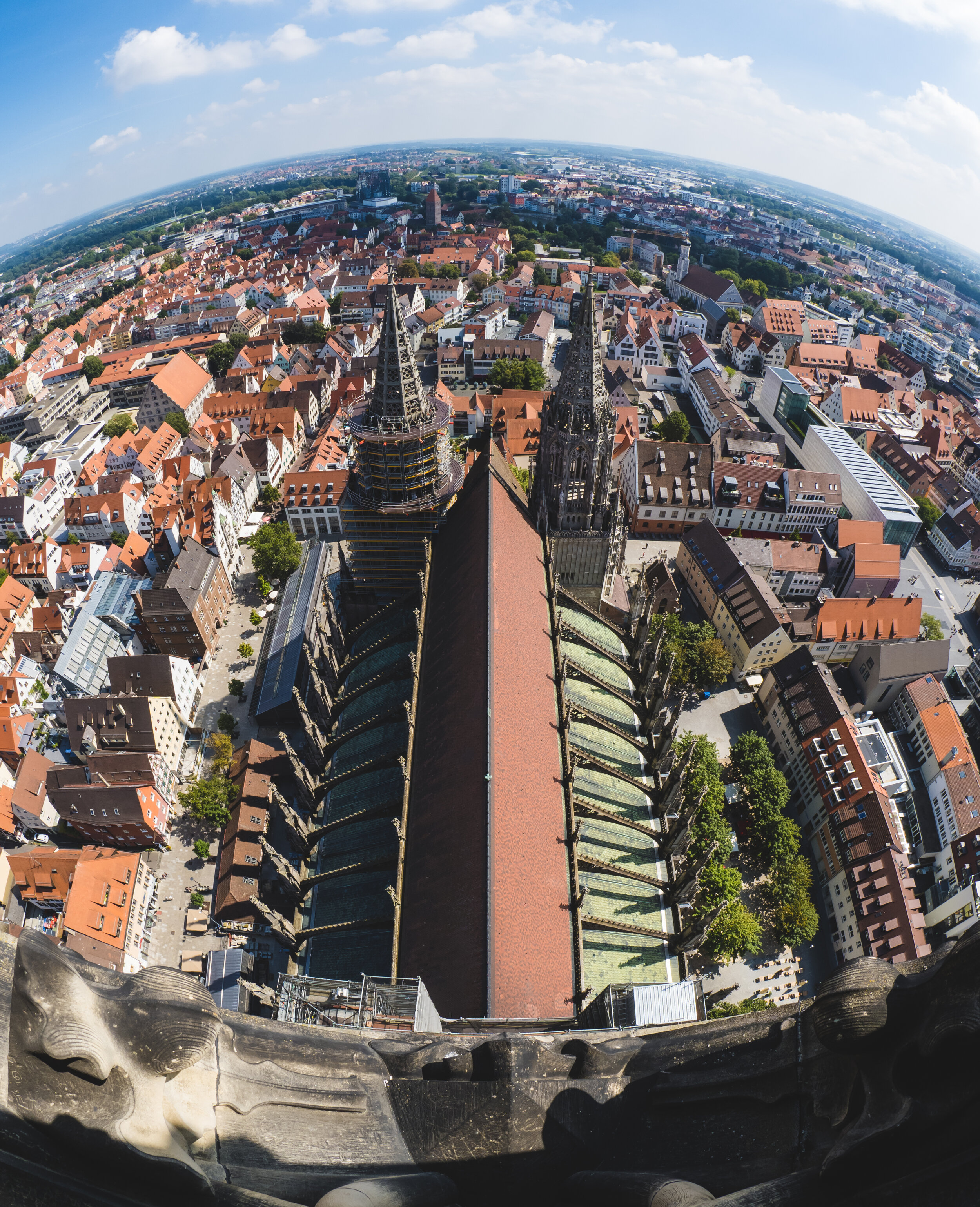
View from the Top
The 768 stairs take you all the way to the top, with a 360 degrees view - this is the choir side of the church looking east.
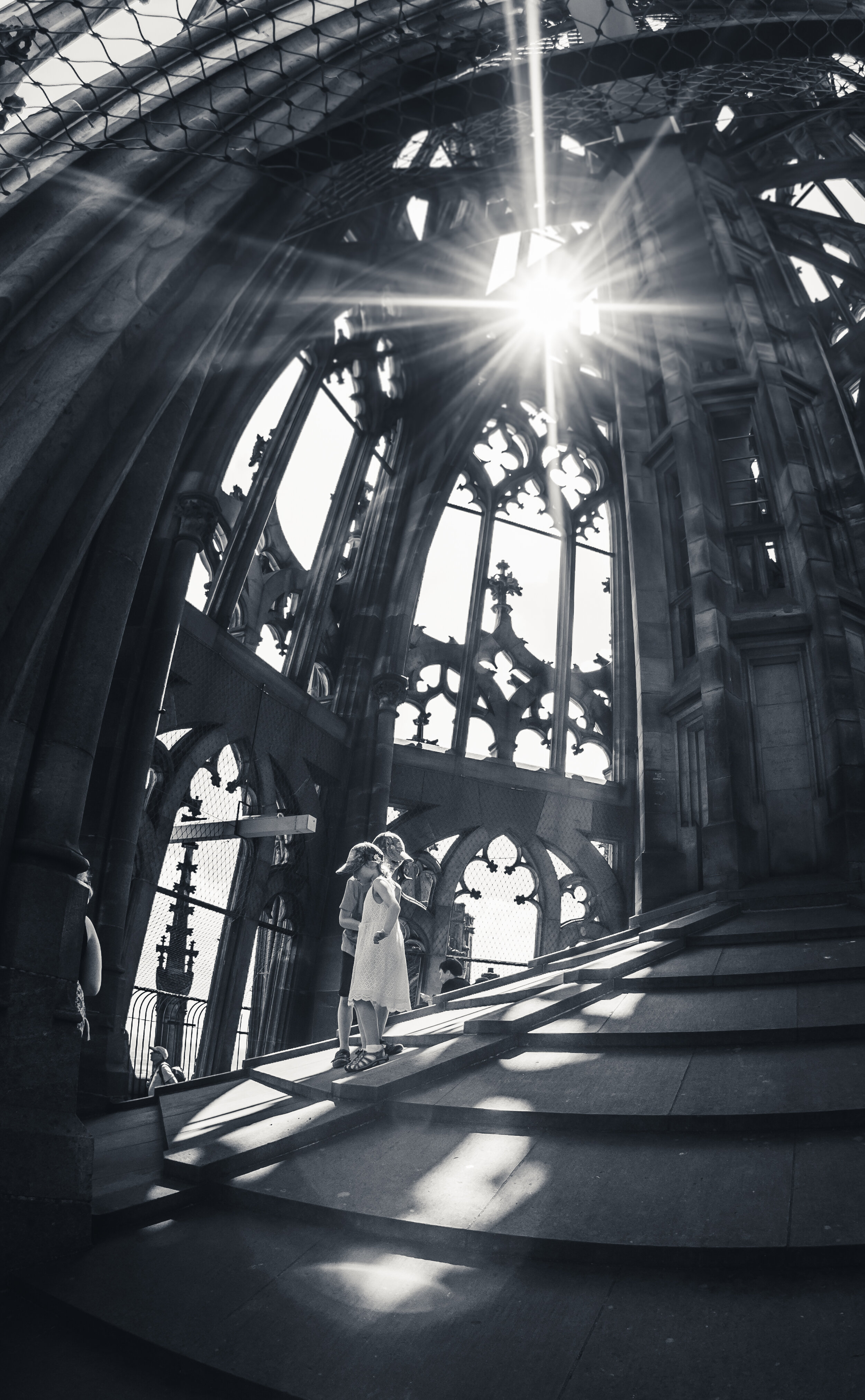
On the Roof
Two kids walking on the roof supporting the spire at the top of the main steeple.
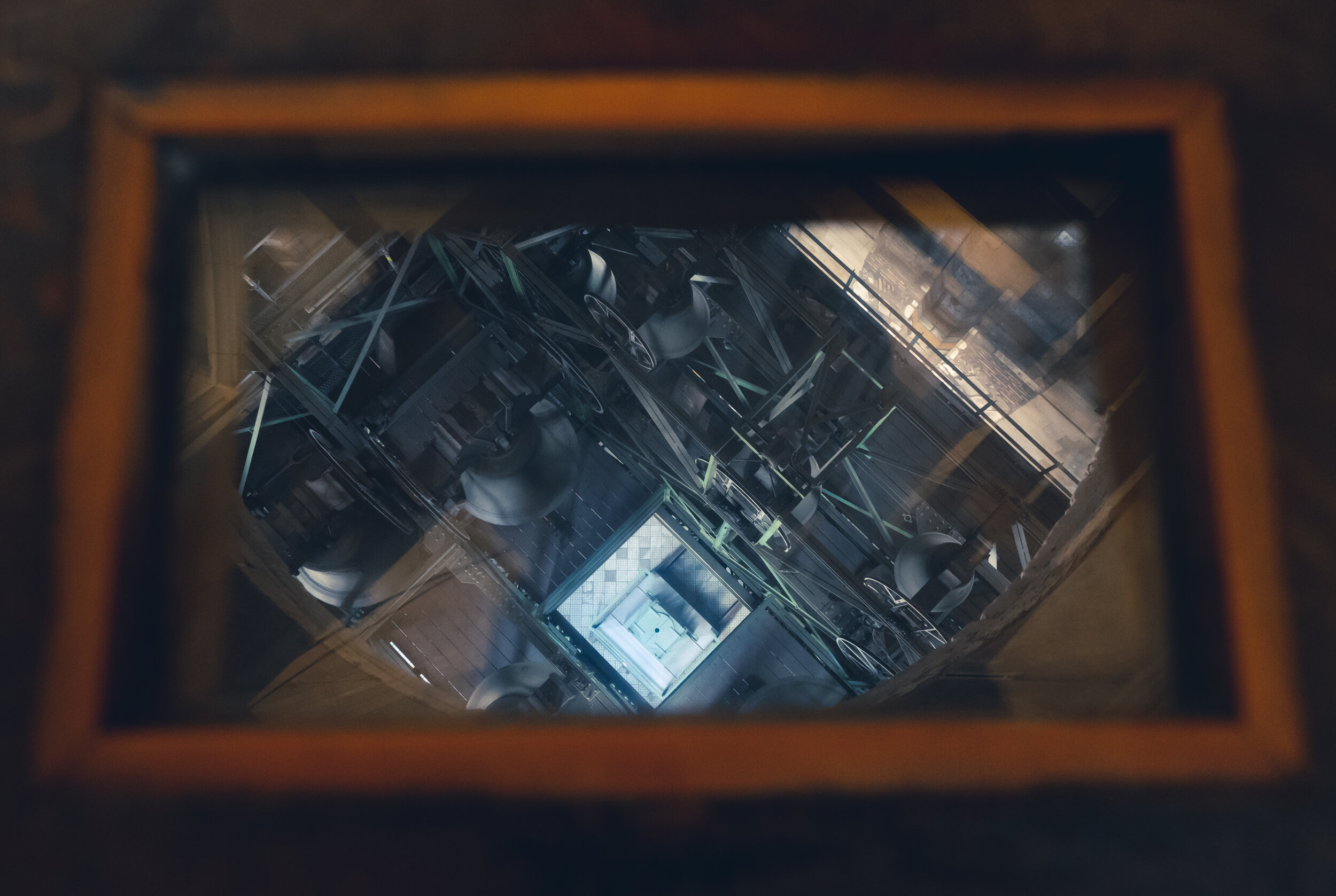
Bells
Small windows in the upper main steeple floors allow a view of the bells, some of which date back all the way to the original construction of the church in the 14th century.
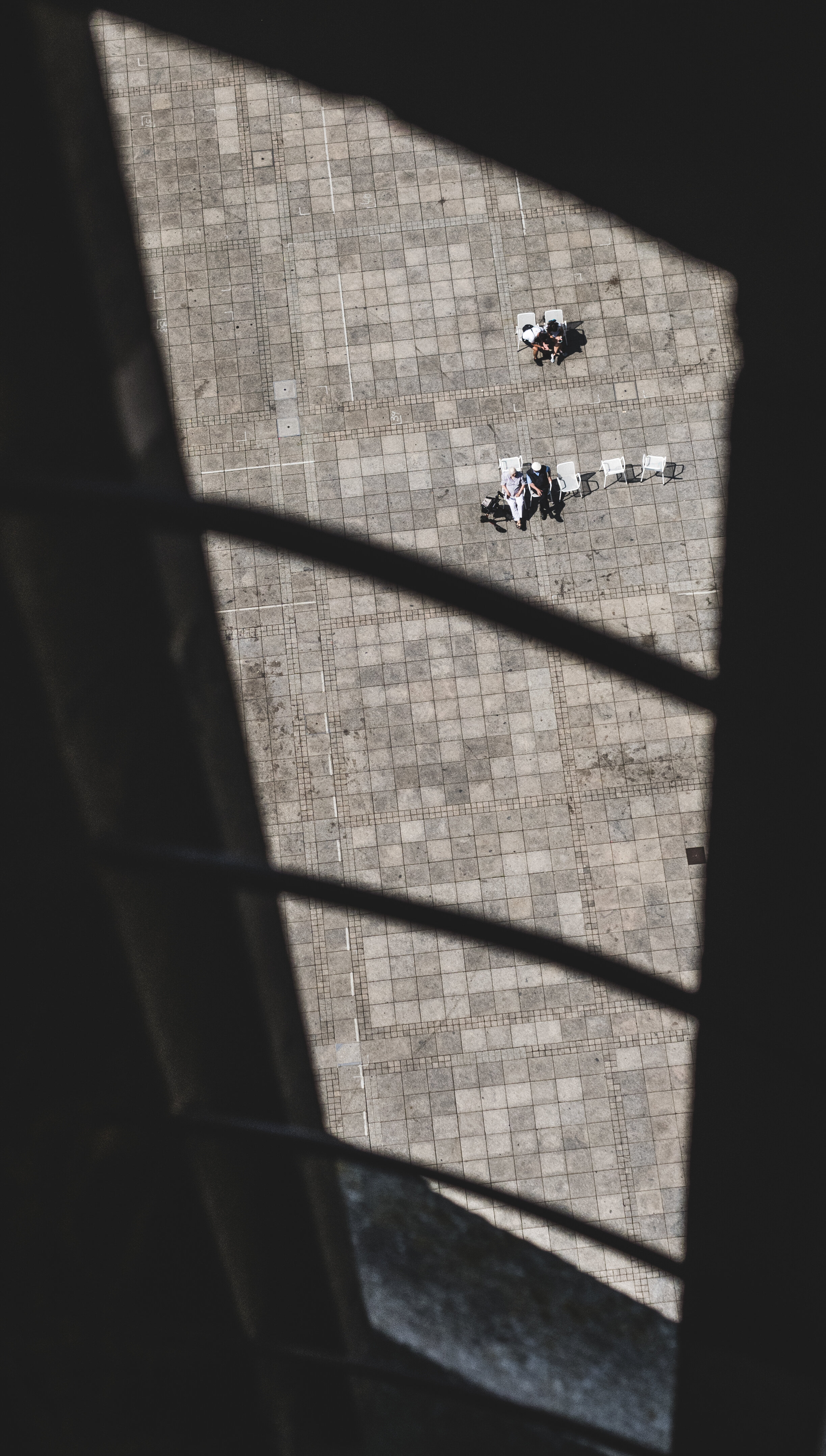
Main Square
Looking down the main square from the staircase leading up the minster.
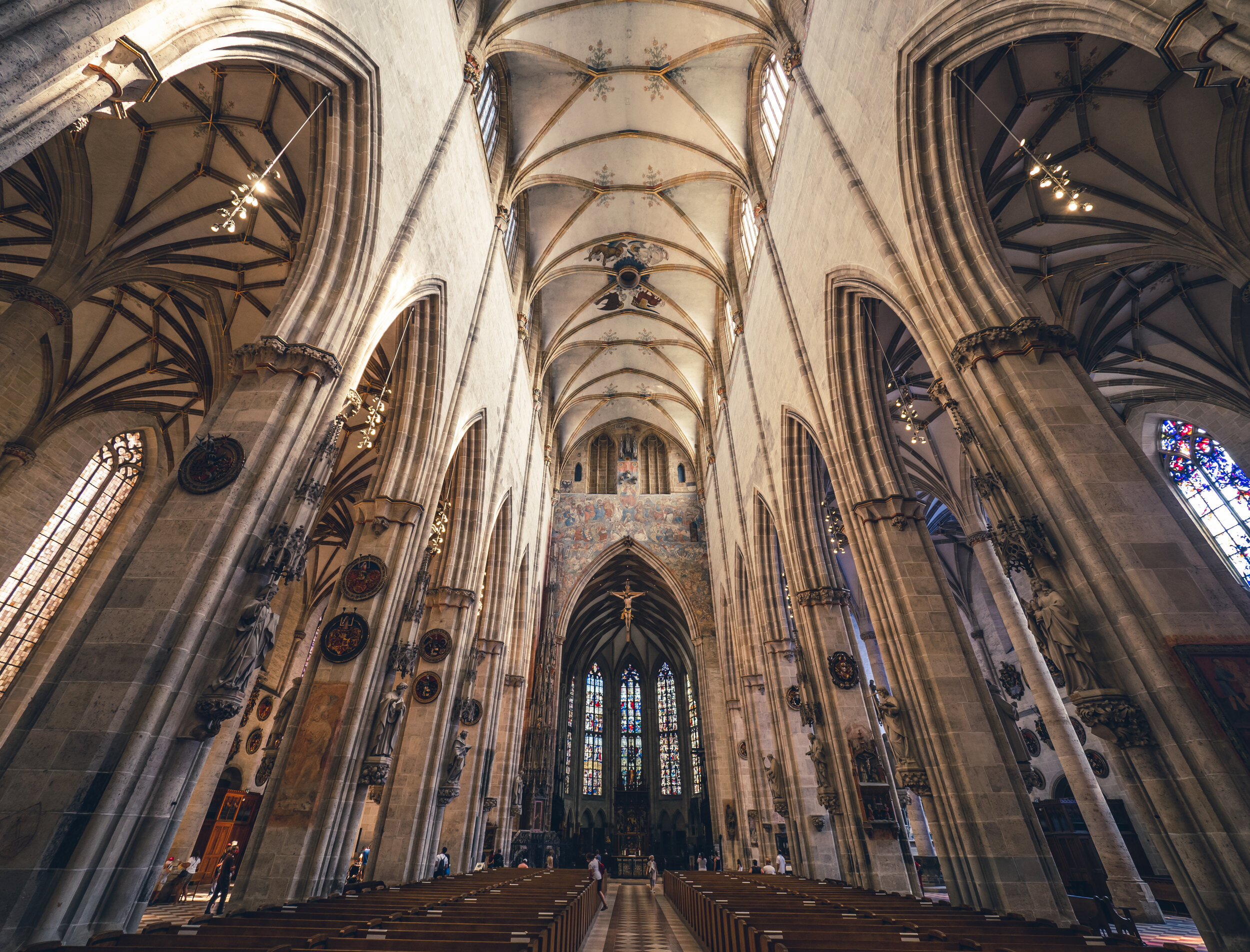
Sanctuary
The view to the east inside the church - which is not in fact a cathedral.

The Choir
Which, due to the change in plans during the construction phases, is much lower than the nave.
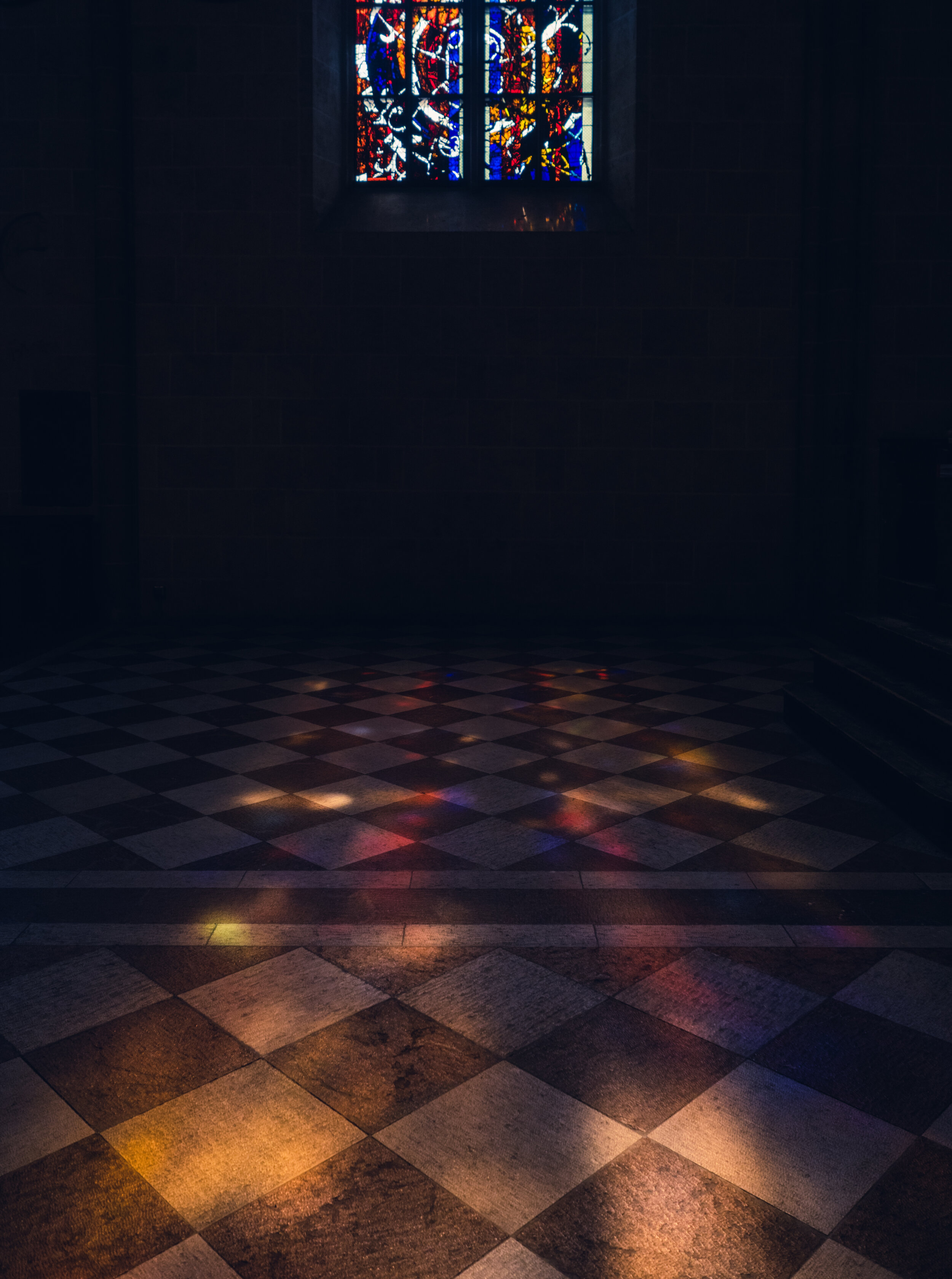
Colours
The original stained glass windows produce beautiful light on the ground.
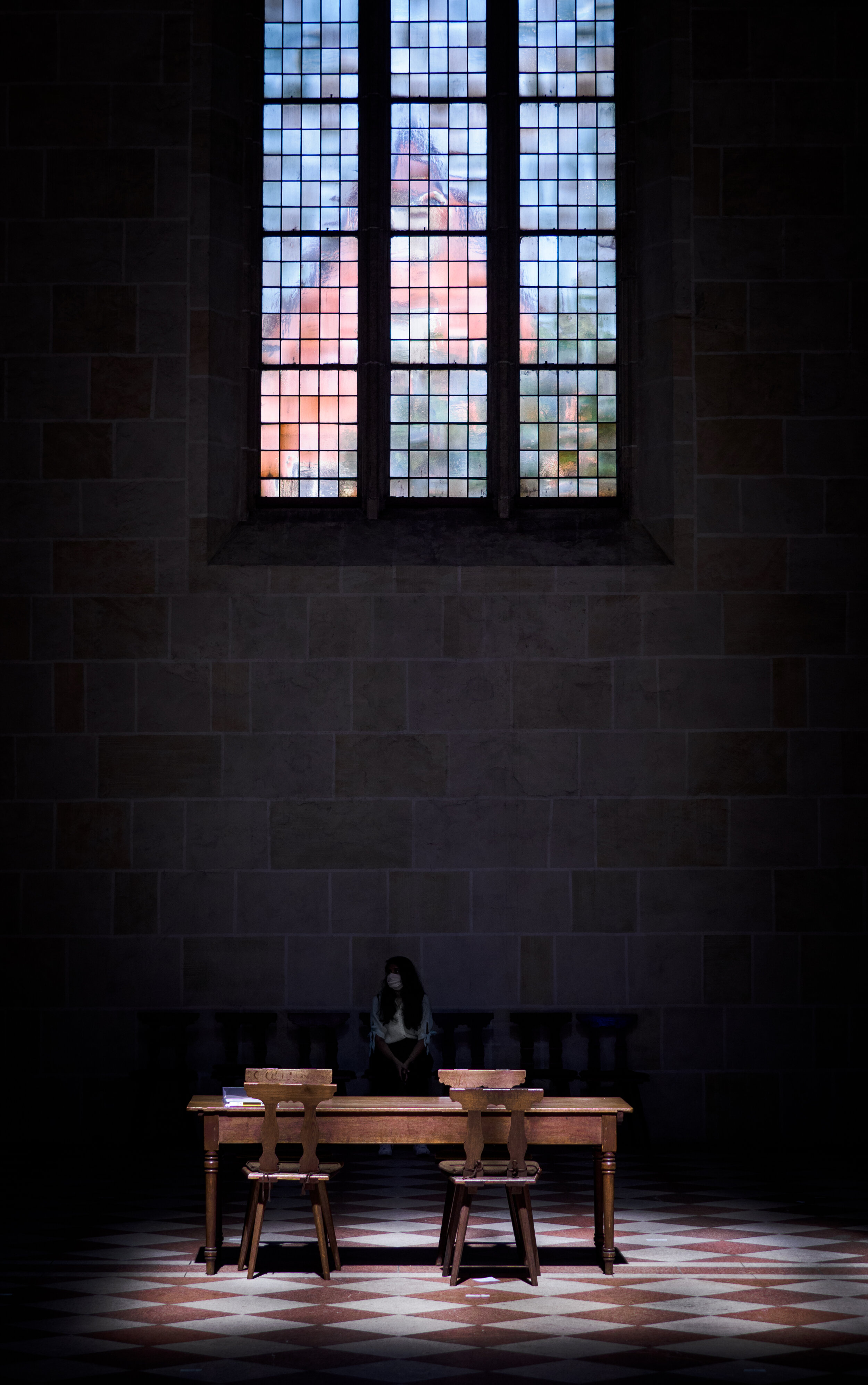
Glass Patterns
The northern side glass windows are slowly being decorated again after the original ones have been destroyed. While not as intricate as the the traditional style, they allow a glimpse of the houses on the outside which produces interesting changing light patterns.
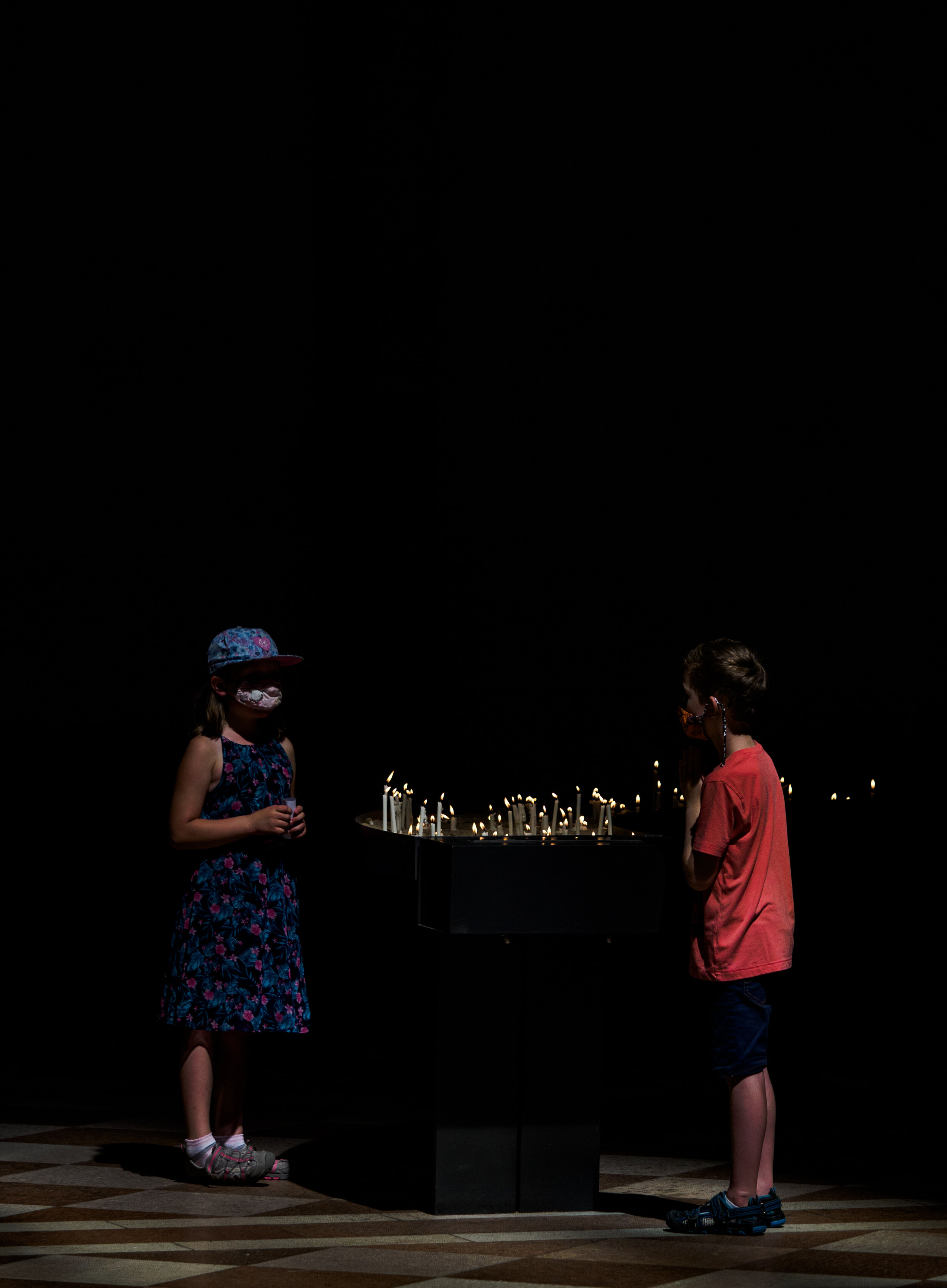
Visitors
At its peak, the church was able to accommodate 20000 people.
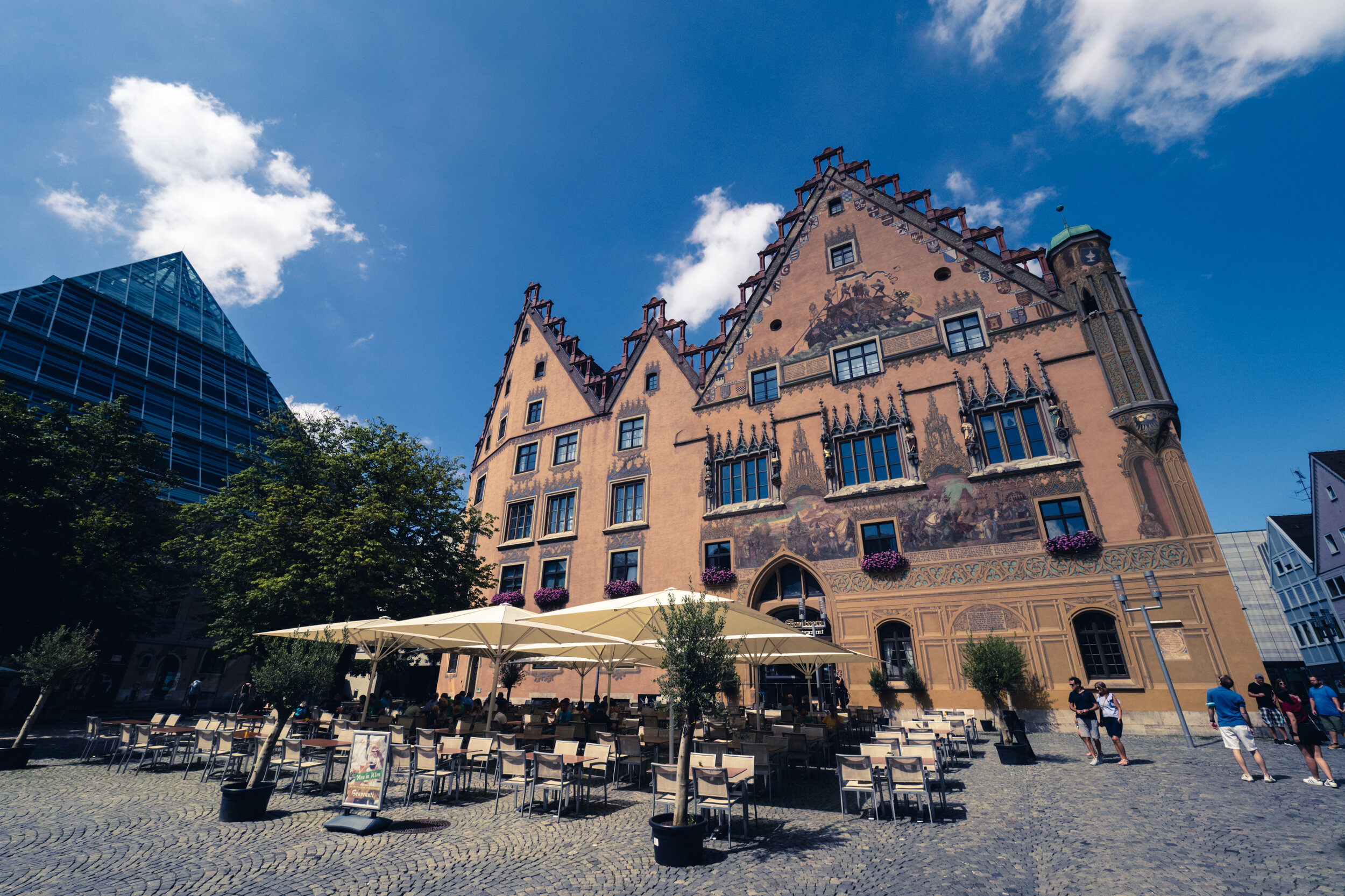
Town Hall
The 1370 town hall building and the public libary opened in 2004 to the left.

On the City Walls
You can stroll along the Danube on top of the city walls, with a glimpse of the beautiful houses on the shore.
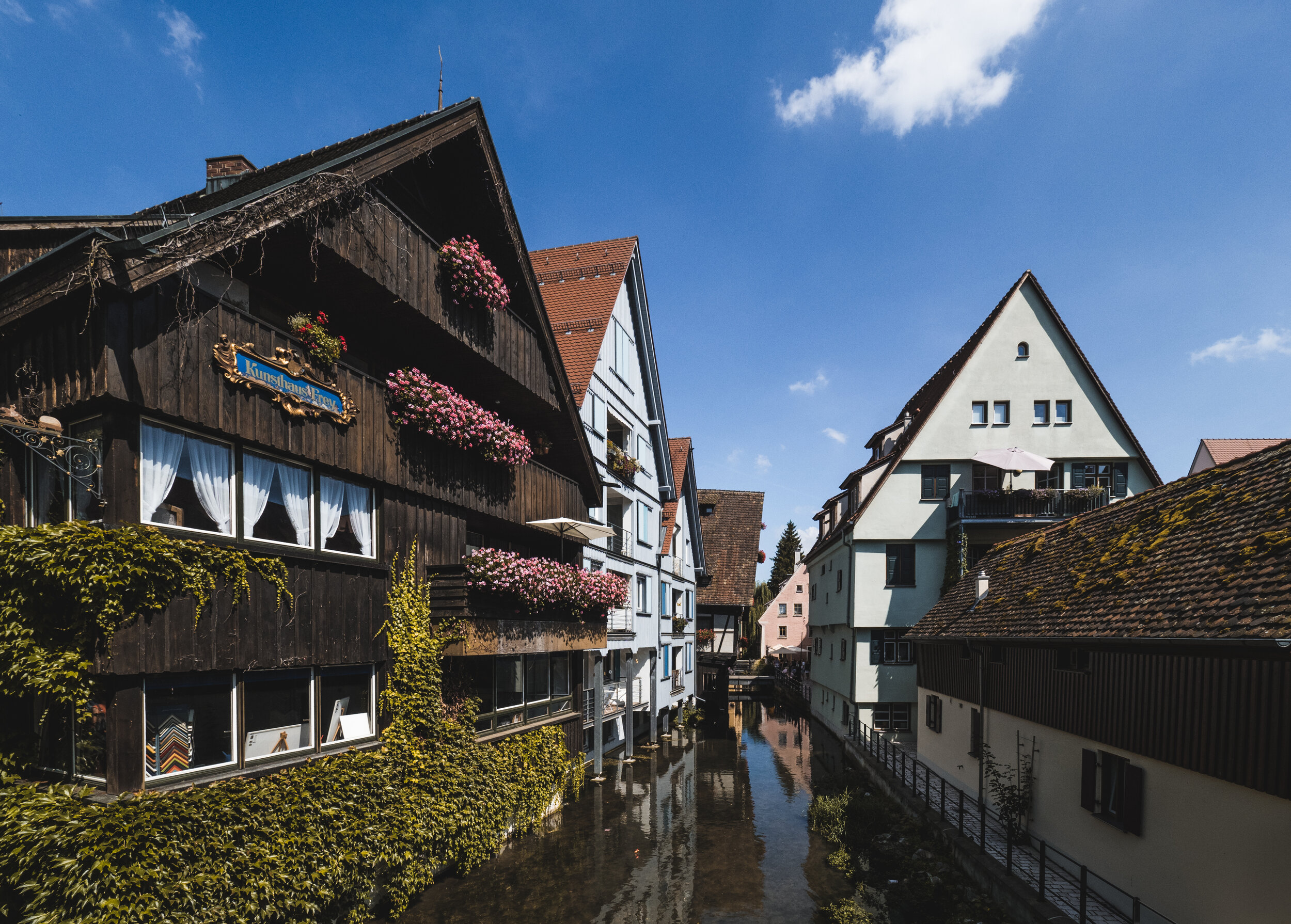
Fishermen's Quarter
This area with its canals and old houses is definitely one of the prettiest parts of the city.
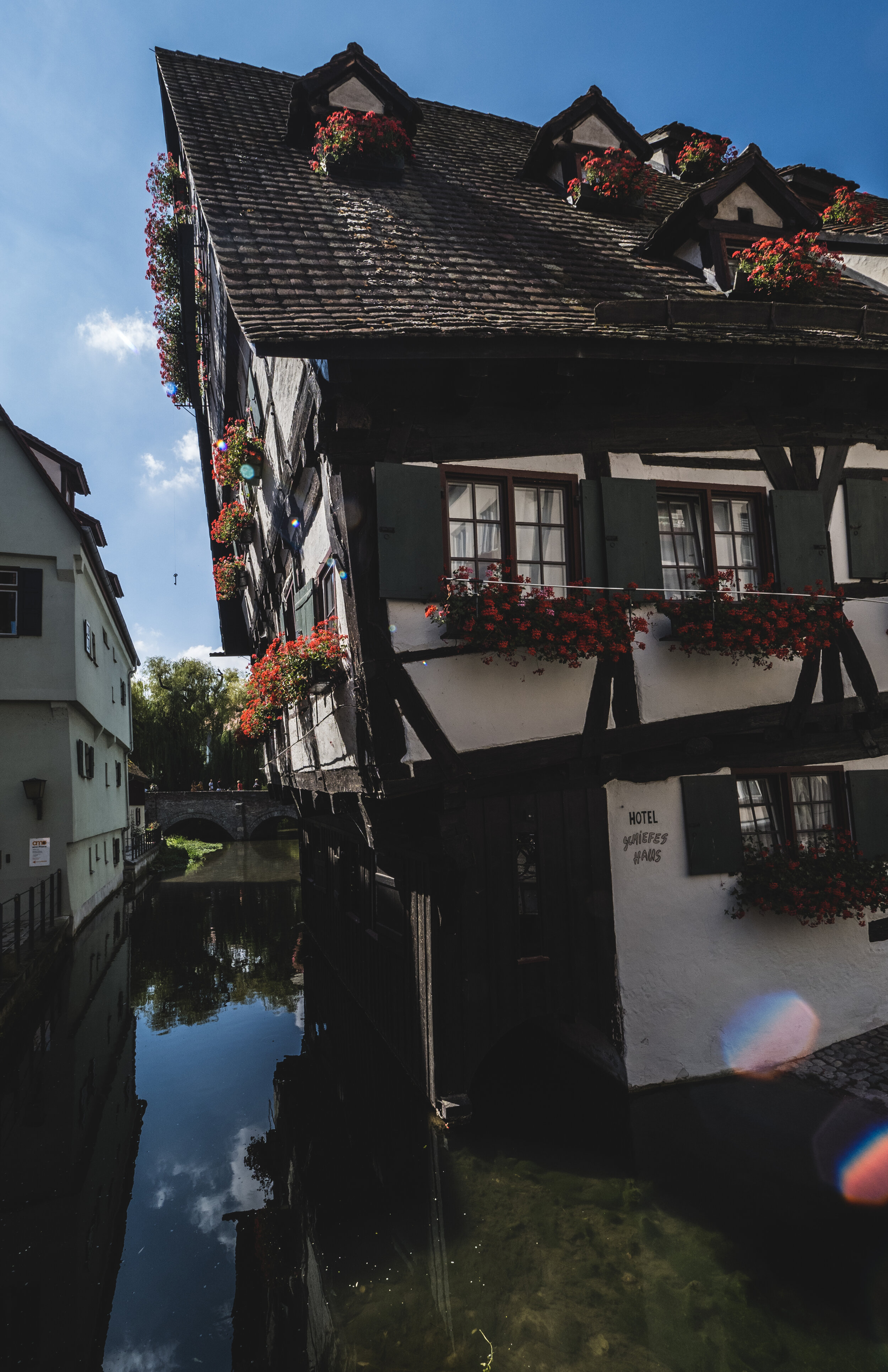
Schiefes Haus
Aptly named "The Leaning Hotel" and originally built in 1406, this building now houses 11 rooms to stay at.

Berblinger Tower
This recently opened art installation is dedicated to Albrecht Ludwig Berblinger, who in 1811 wanted to show off his gliding plane construction, but in front of many spectators ended up in the Danube when trying to take flight from a podestal at the shores.
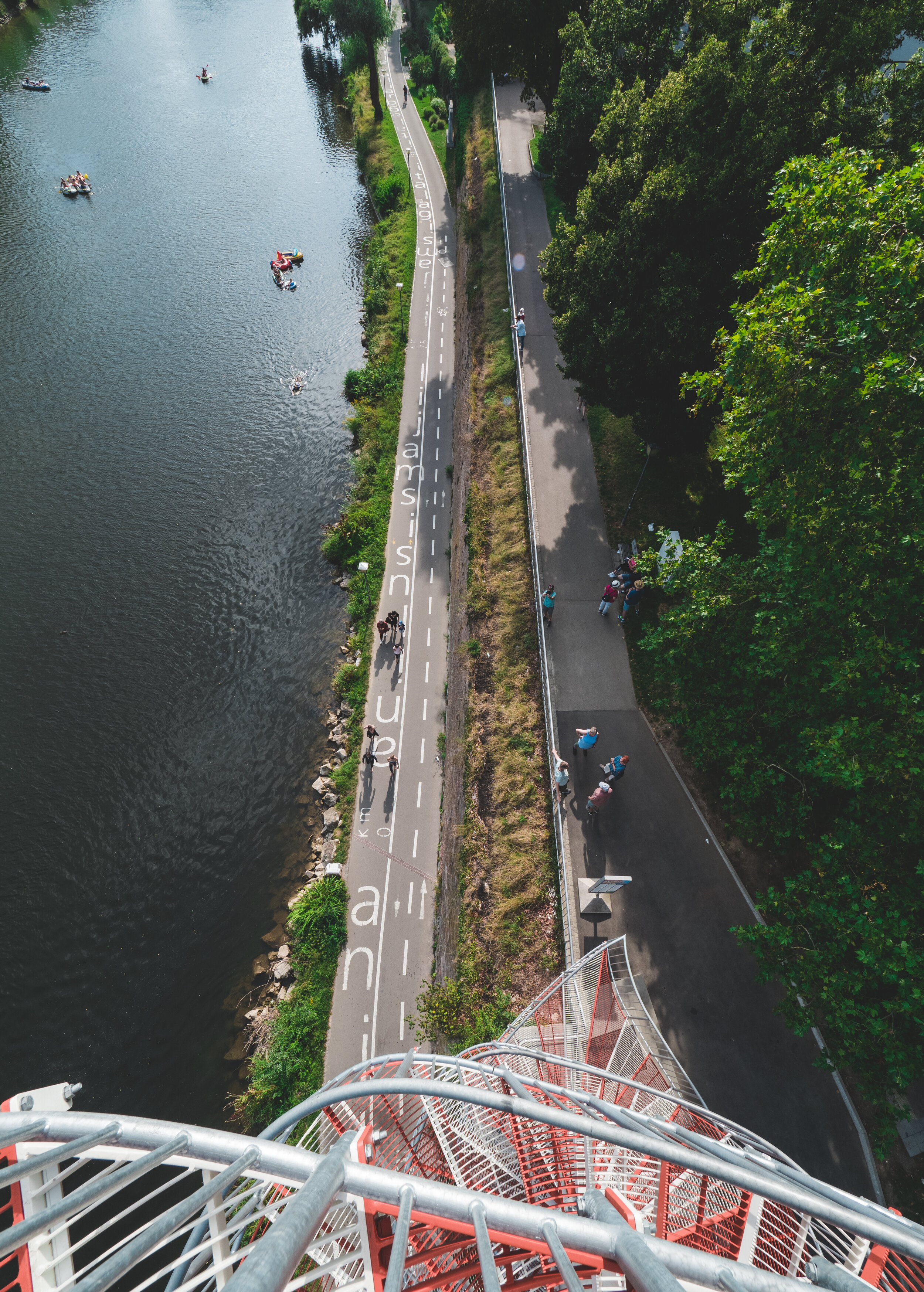
Up
The tower is tilted at 10 degrees and can be walked via 88 steel stairs, providing a panoramic view of the river.

Lonely Stand Up Paddler
So it seems - in fact, the river was full of people either exercising or just relaxing in the river.

Variety
Ulm provides stark contrasts of views, with the traditional houses, the gothic church, and modern buildings such as the glass pyramid library.
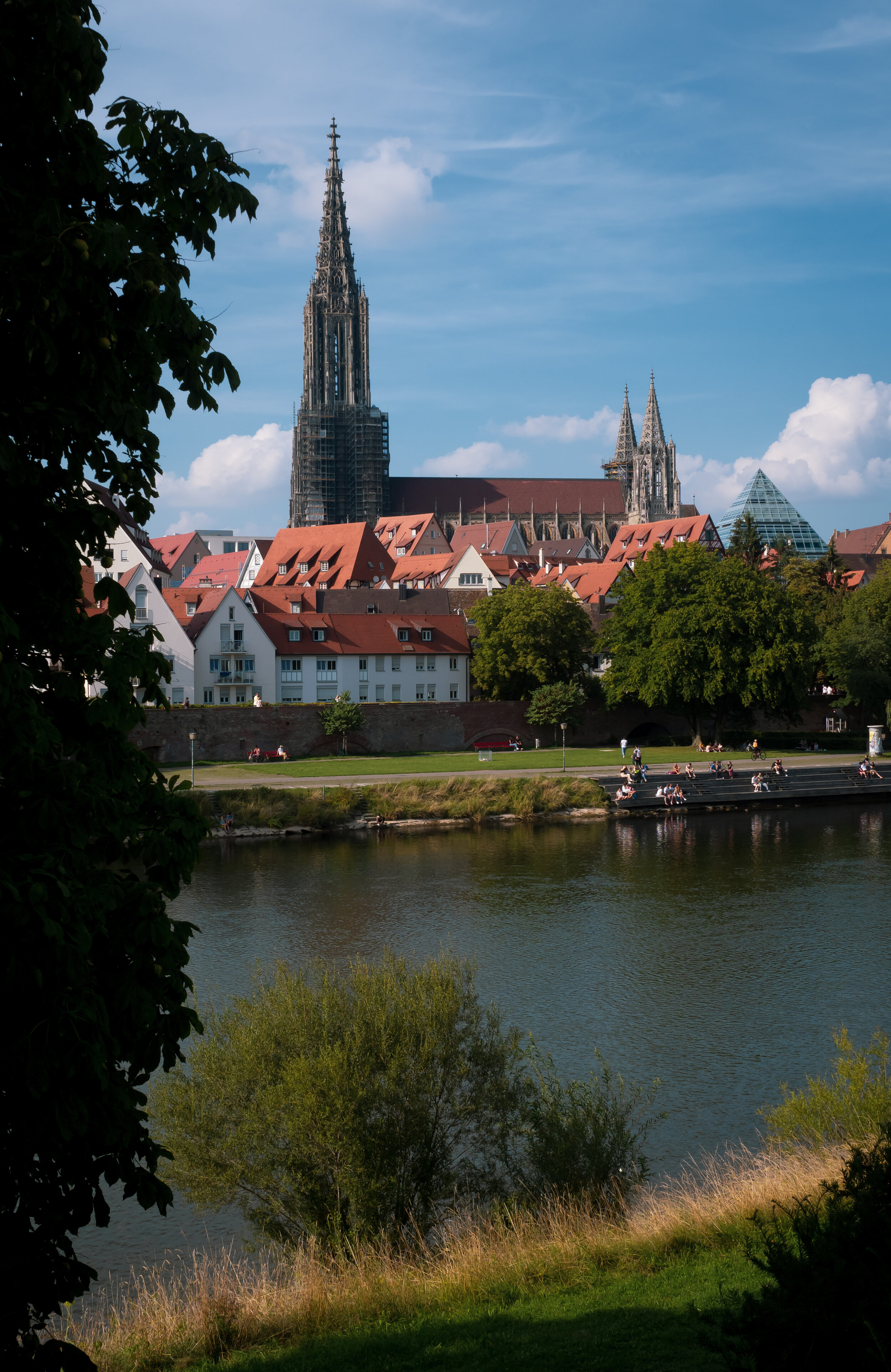
Danube Shores
The church seen from the Bavarian side of the Danube.

Water Village
The sunny August weather meant the Danube was full of people enjoying their flotation devices...
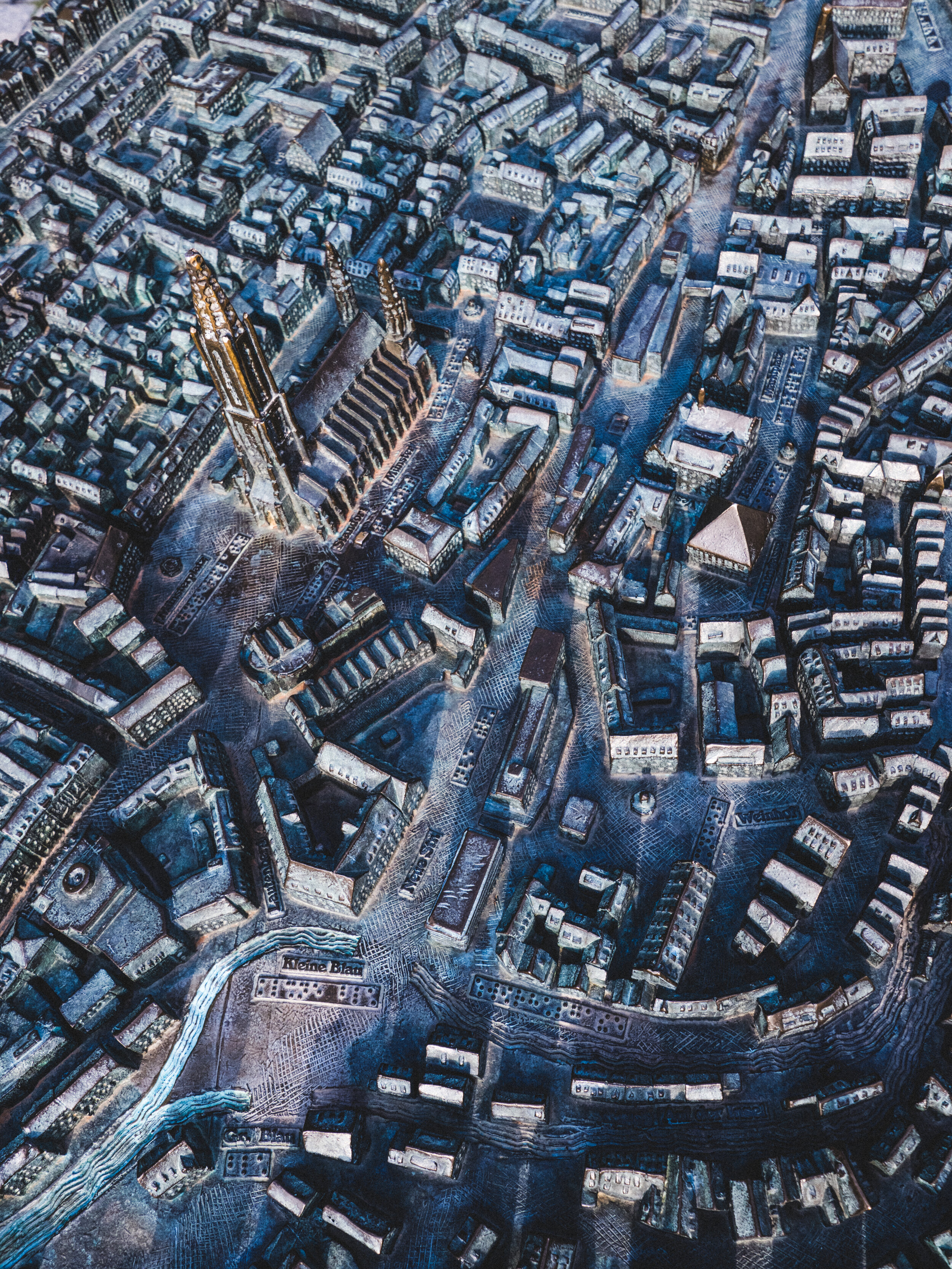
Model
A small model of the city next to the Minster shows how much the building stands out from its surroundings.
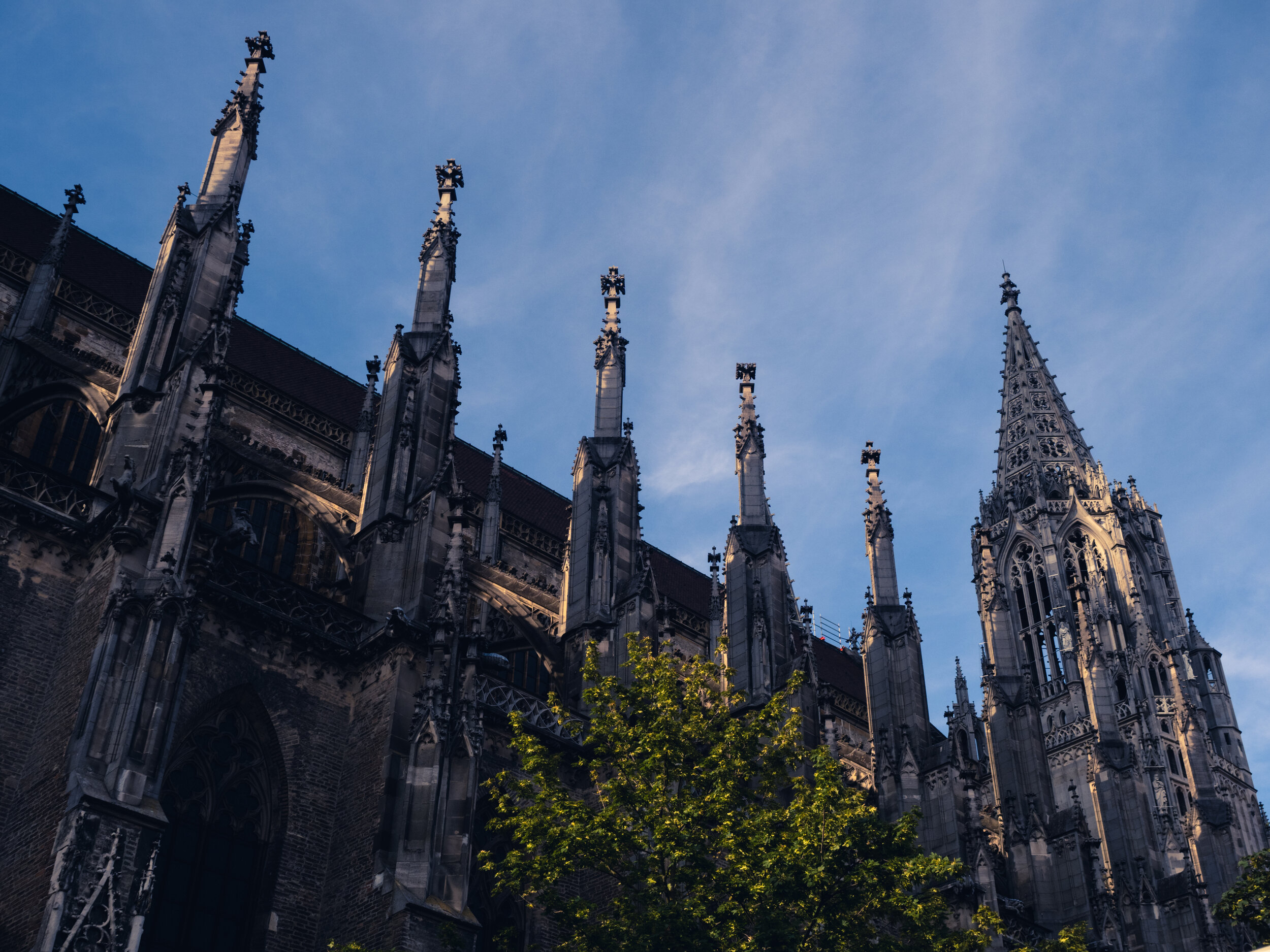
Sunset Rays
While much of the church is under renovation, some parts shine in all their glory.

Facades
More interesting modernist architecture.
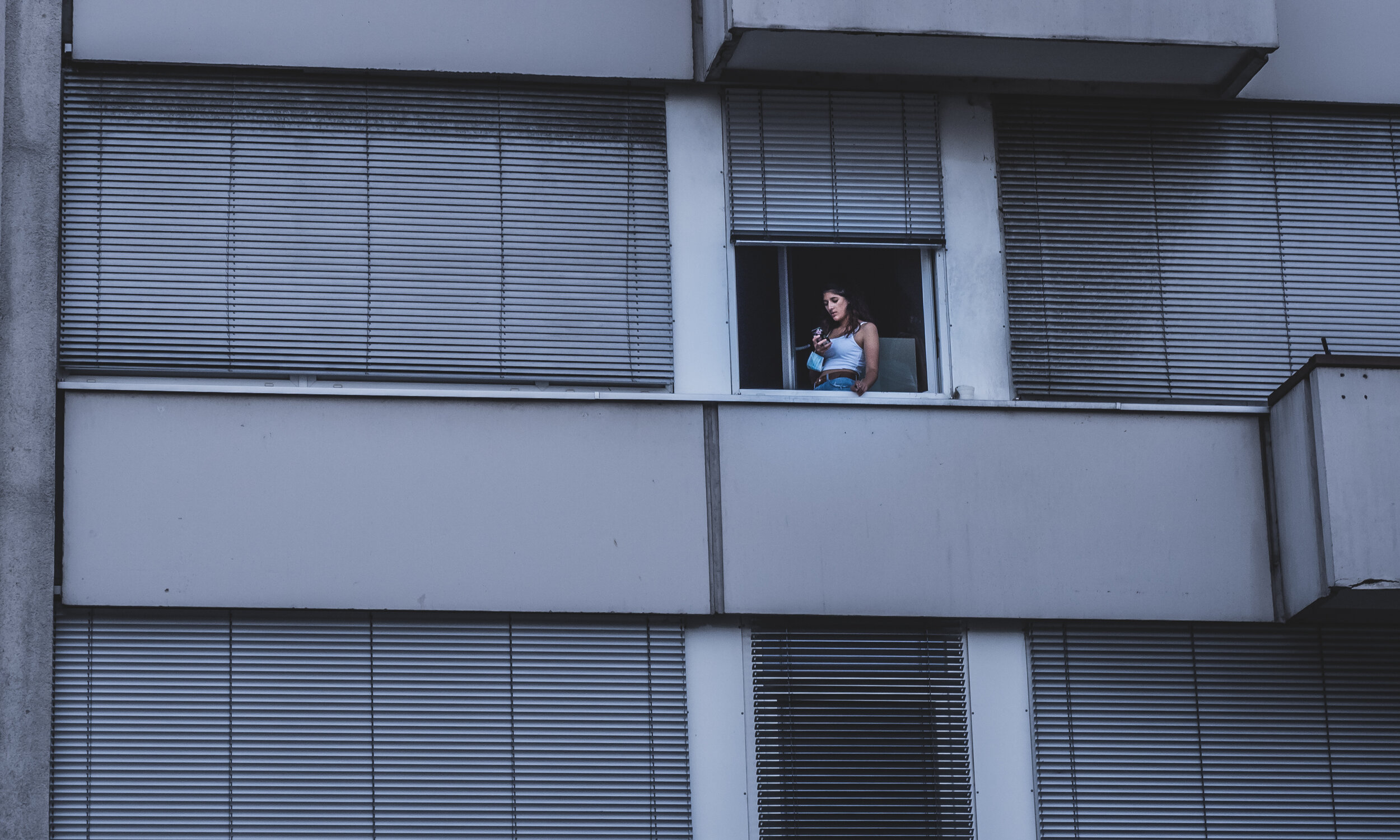
Mask, Phone & Cigarettes
Signs of the times.
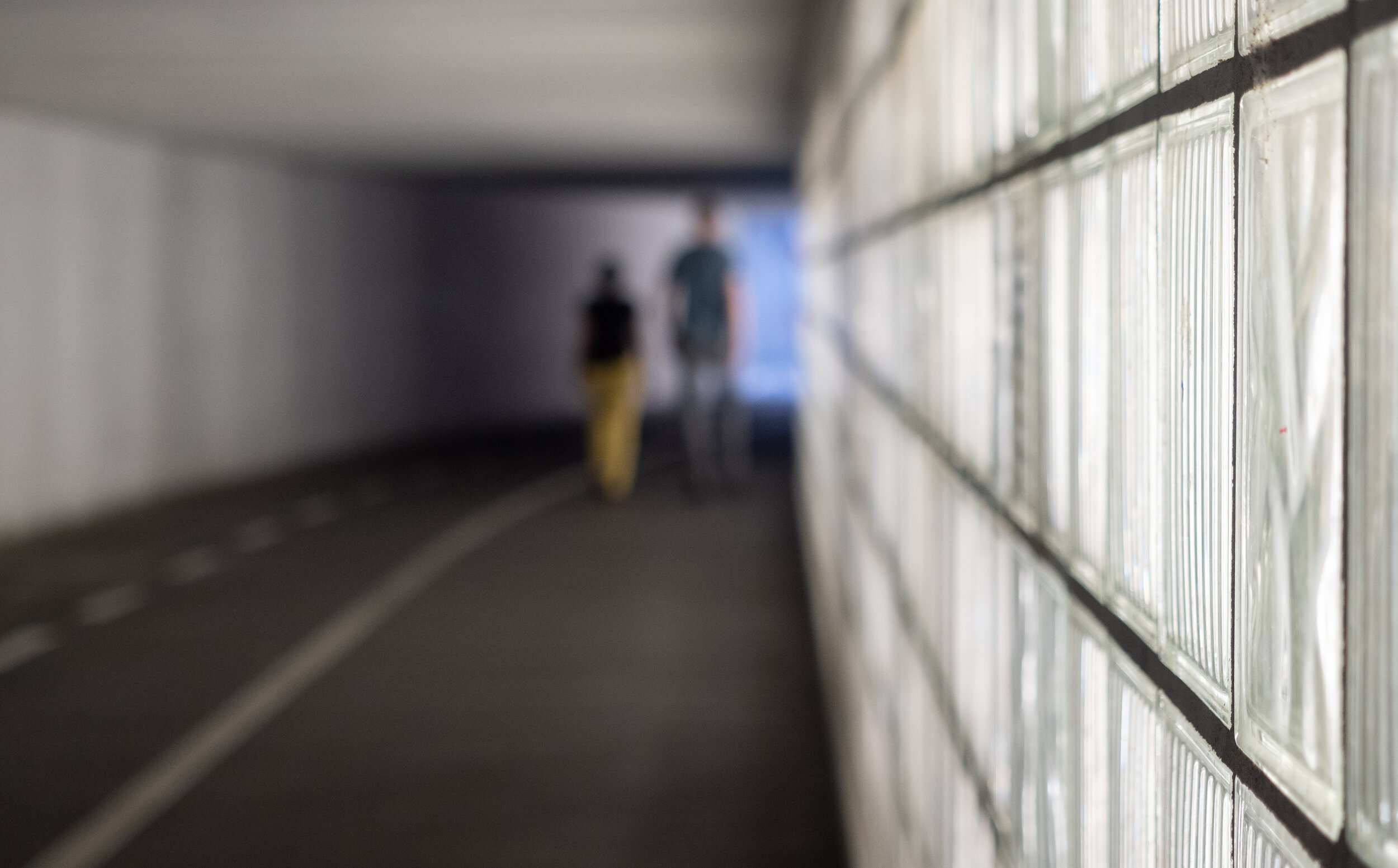
The Way Back
An underpass towards the train station.
Sicily - Island of Etna
Another beautiful wedding gave me the opportunity to visit Sicily, exploring Catania, hiking Mount Etna, and wandering through Acireale. Unfortunately three days are definitely not enough for the largest island in the Mediterranean, nevertheless you get a taste for the life across the Strait of Messina.
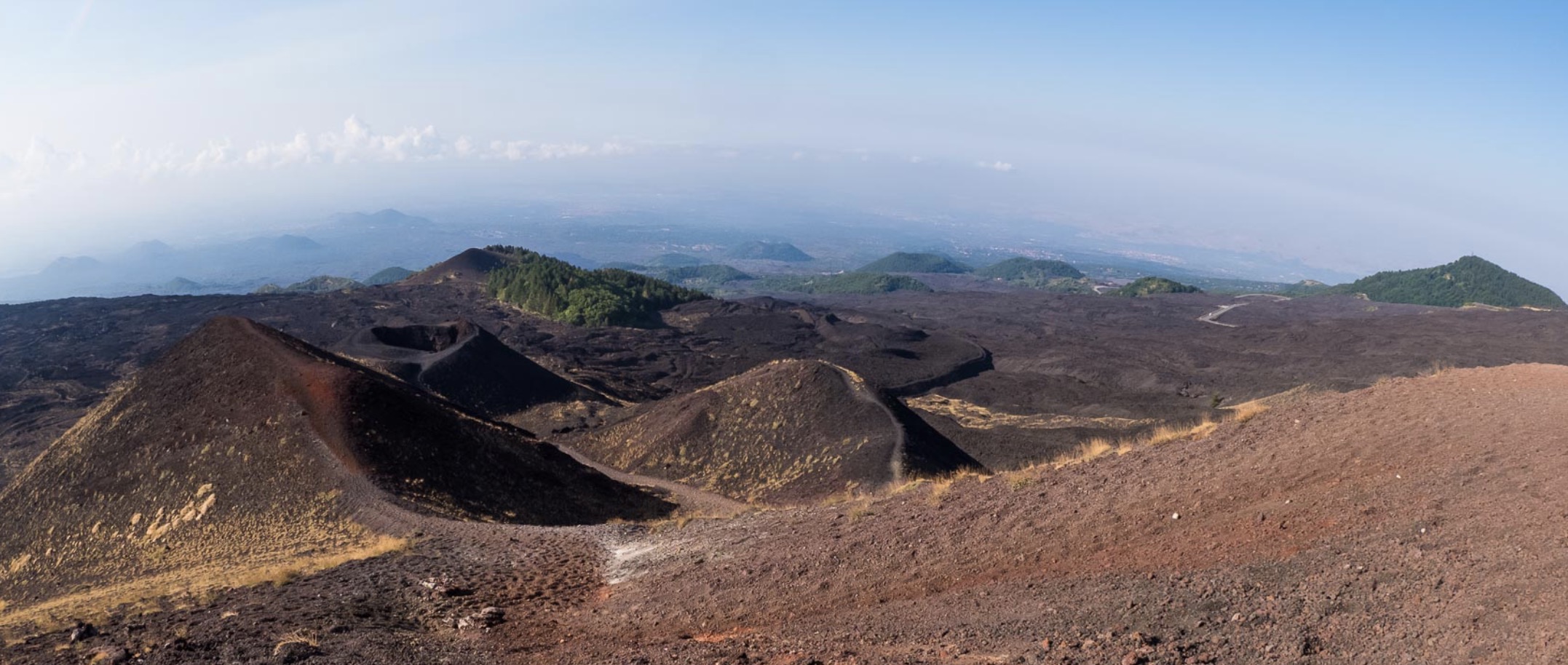
Another beautiful wedding gave me the opportunity to visit Sicily, exploring Catania, hiking Mount Etna, and wandering through Acireale. Unfortunately three days are definitely not enough for the largest island in the Mediterranean, nevertheless you get a taste for the life across the Strait of Messina.

Sicily from Above
The island is characterised by a tendency of overfarming, and by the clouds hanging over the Etna, often accompanied by a thin layer of dark smoke from the volcano.
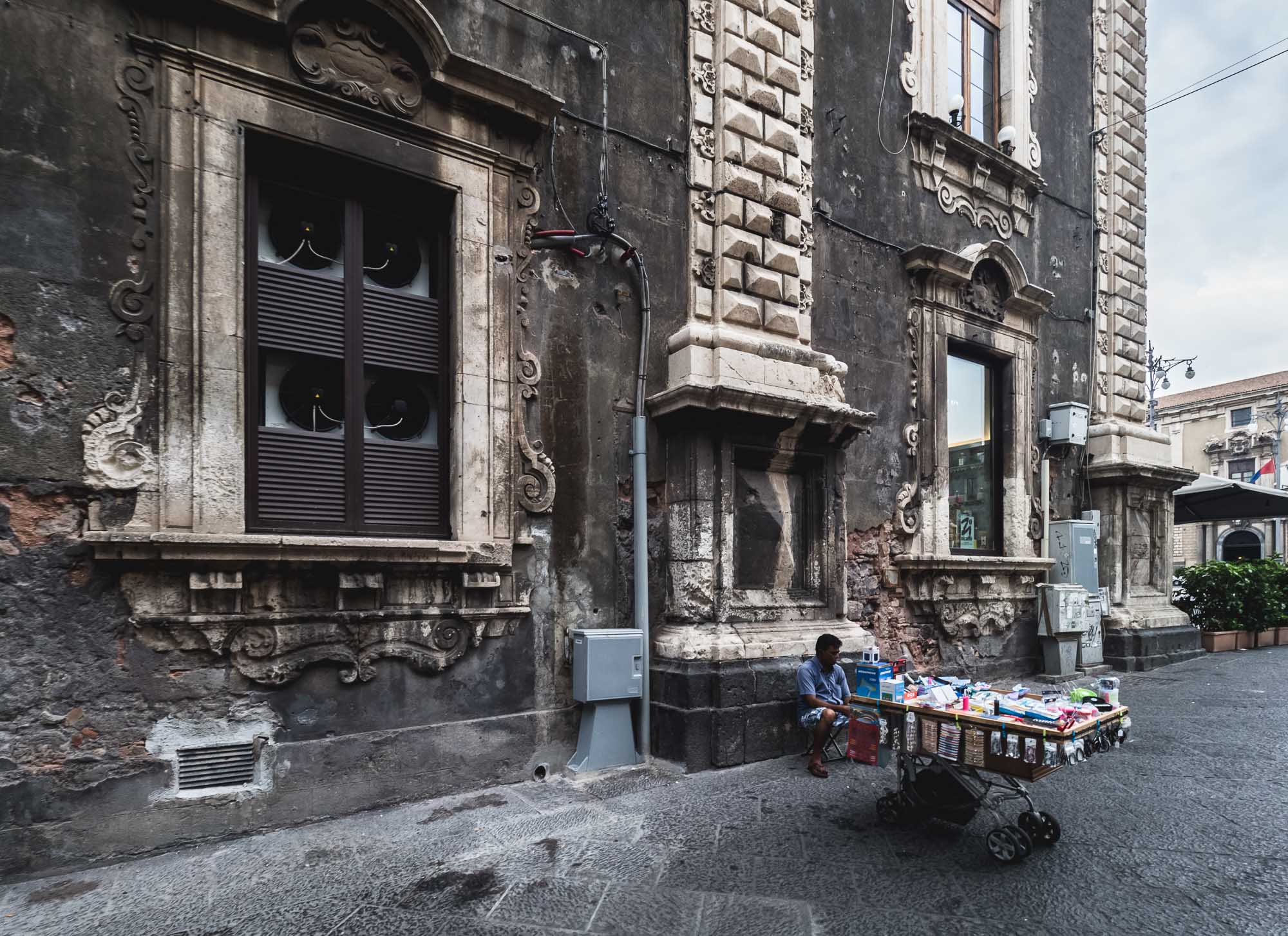
For Sale
A salesman with his goods near the main Piazza in Catania.
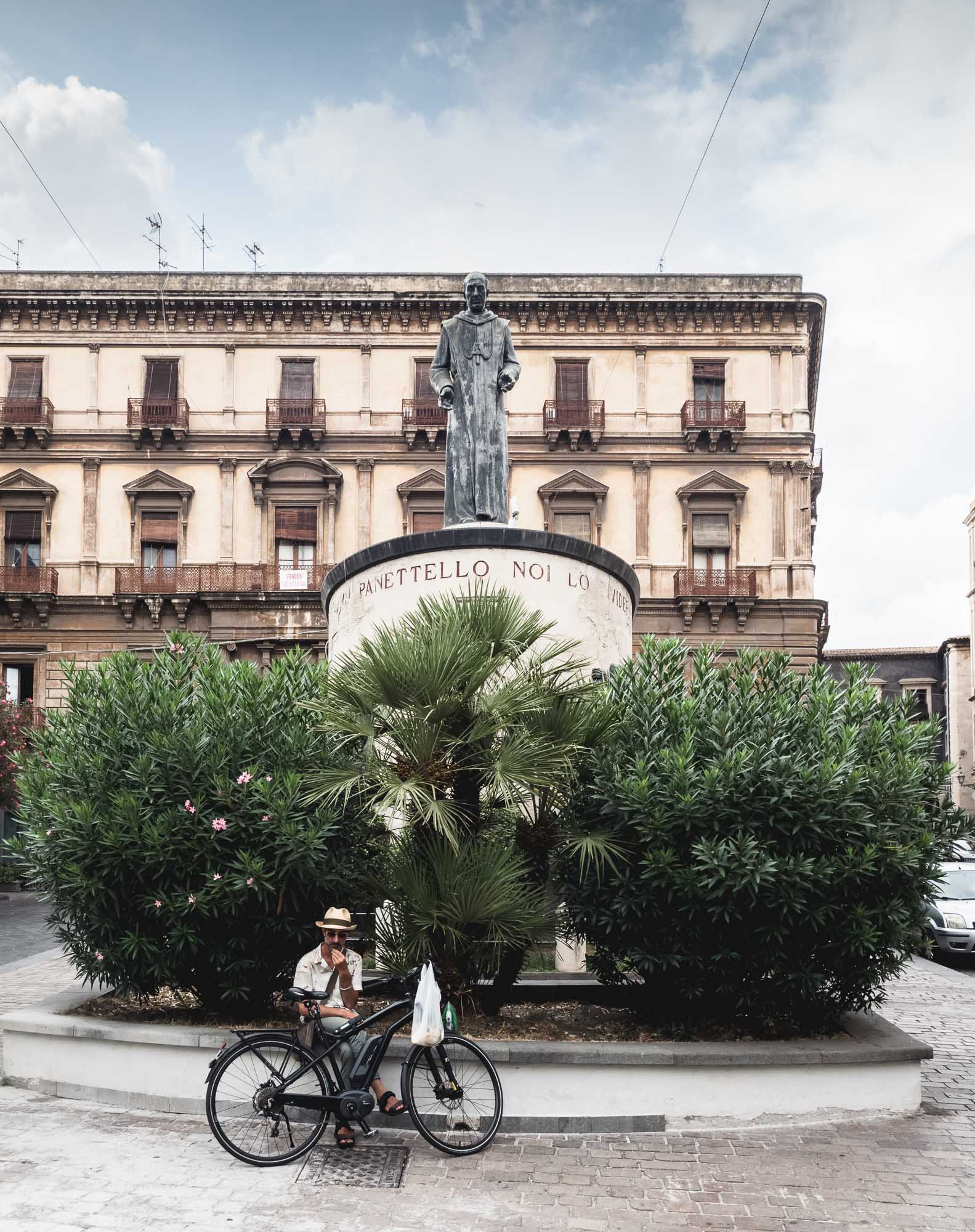
Piazza San Francesco d'Assisi
A man sitting in front of the Monumento al Cardinale Dusmet in Catania.

Roman Theatre of Catania
The theatre and Odeon were built on a pre-existing Greek structure. The lower part has sunk due to various eruptions and earthquakes, resulting in the city's underground Amenano river running through part of the center area.
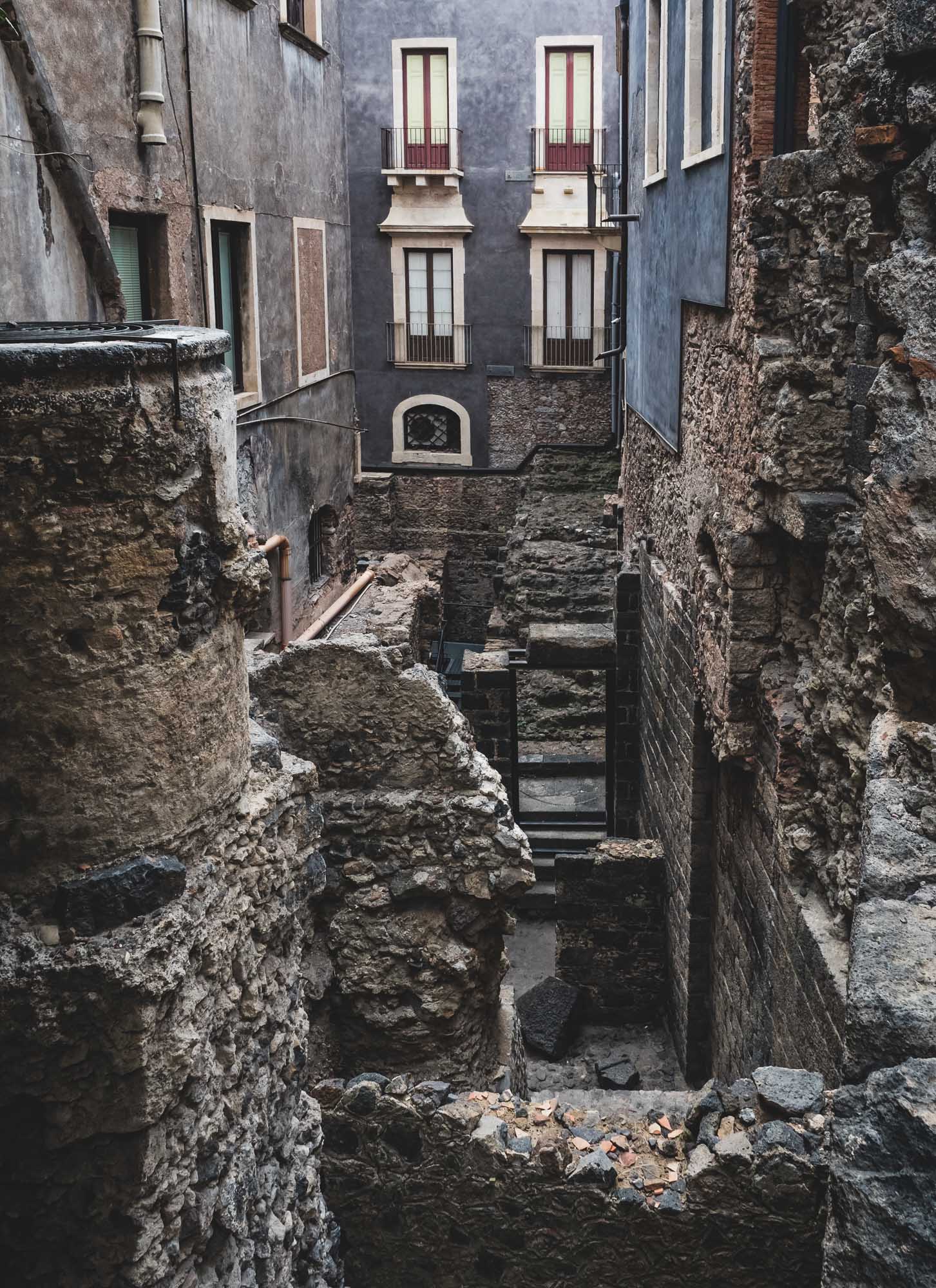
Above History
This photo shows how modern houses had been built on top of the structure of the Roman Theatre in the last few hundred years.

Layers
This aerial capture illustrates how the site looked before excavations began and the houses built on top of the amphiteatre were removed. Even today, archeologists still discover additional sections and artifacts below and around the site.
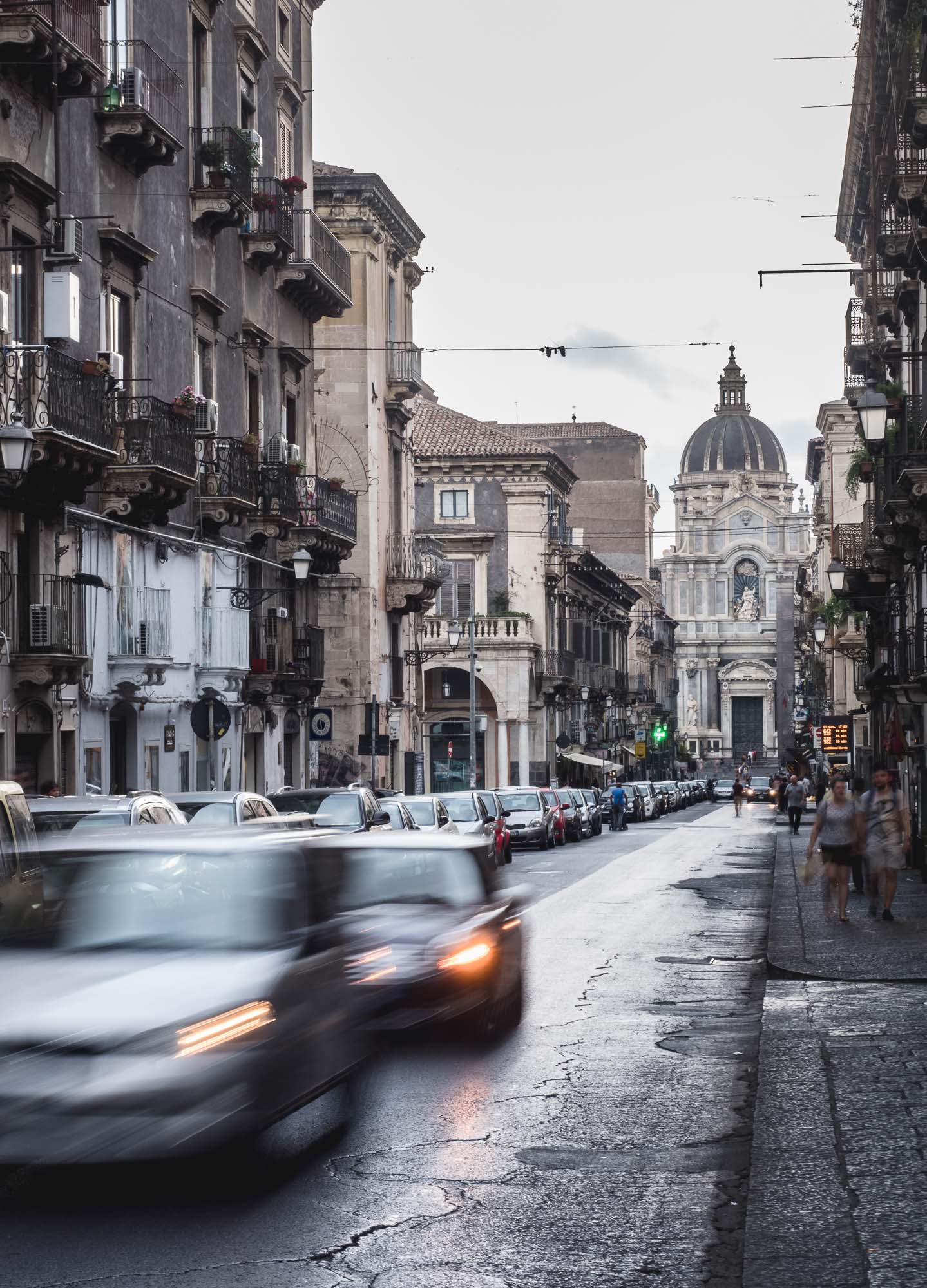
Street Views
The Cathedral of Saint Agatha at the end of Via Giuseppe Garibaldi.

18th Century Violine
On display at the Castello Ursino.

Artifacts
The 13th-century castle features objects from monastery & painted crafts.
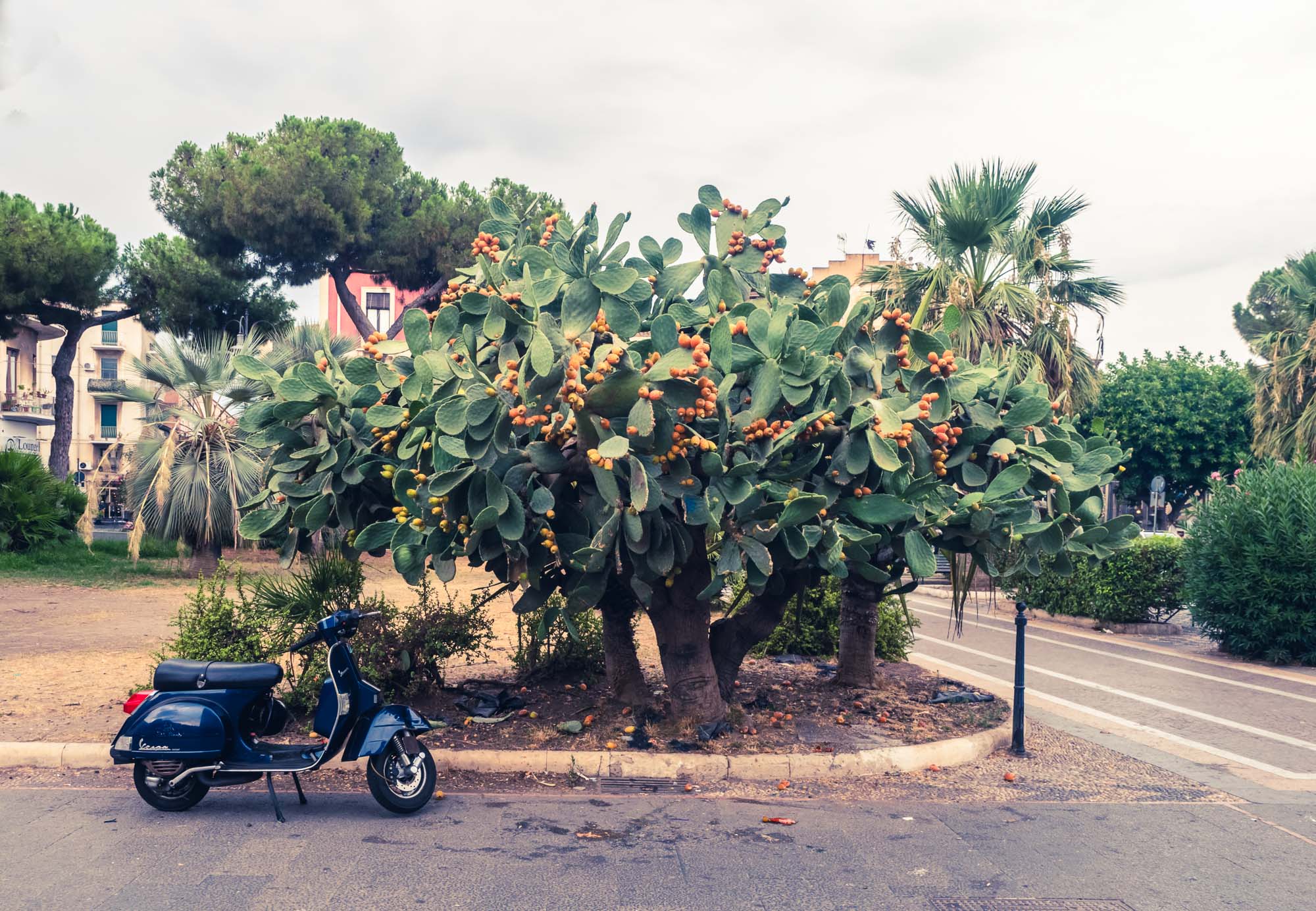
Scenery
A street corner in Catania.
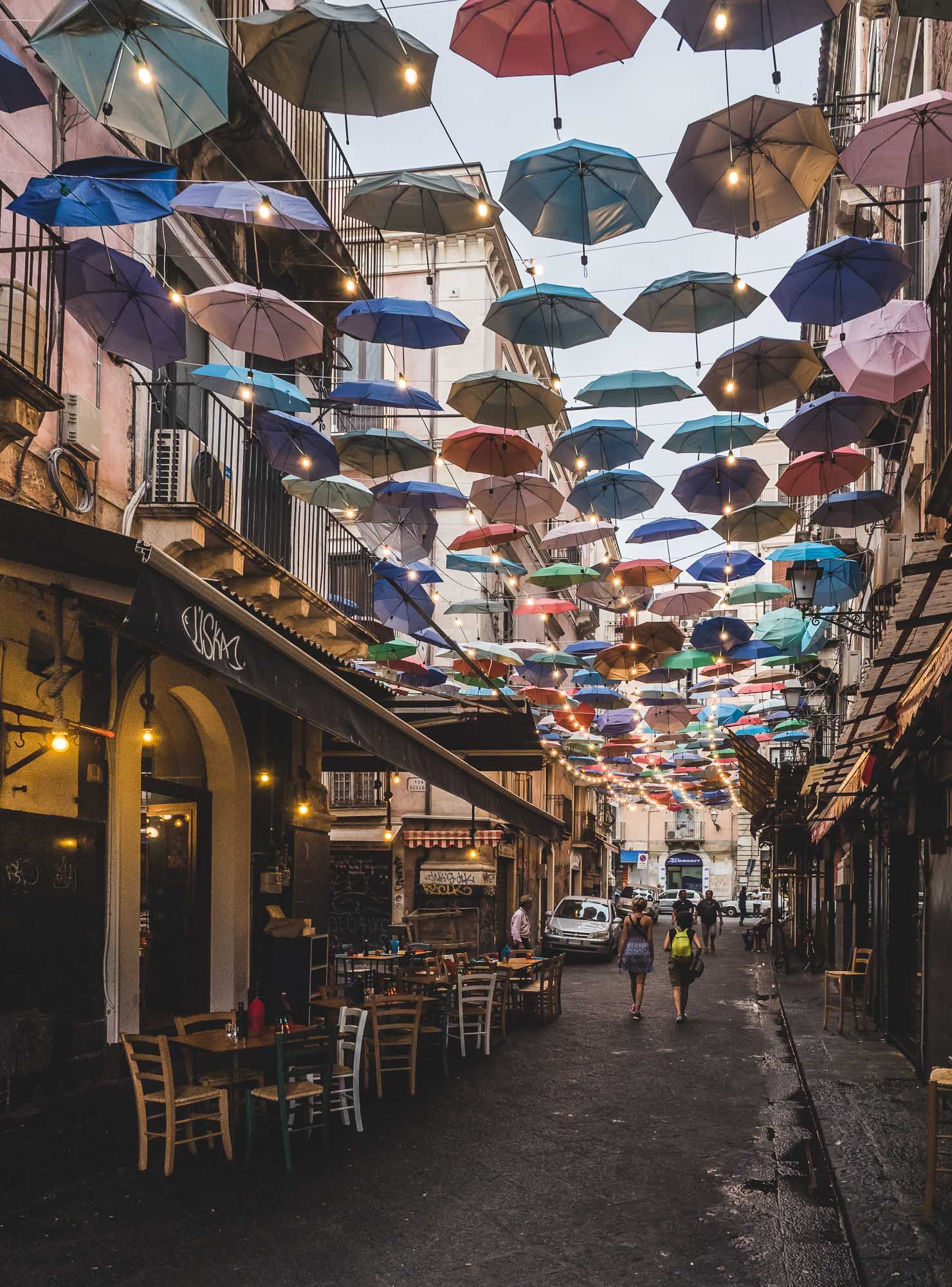
Closing Up
The market street after the activities of the day have ceased.
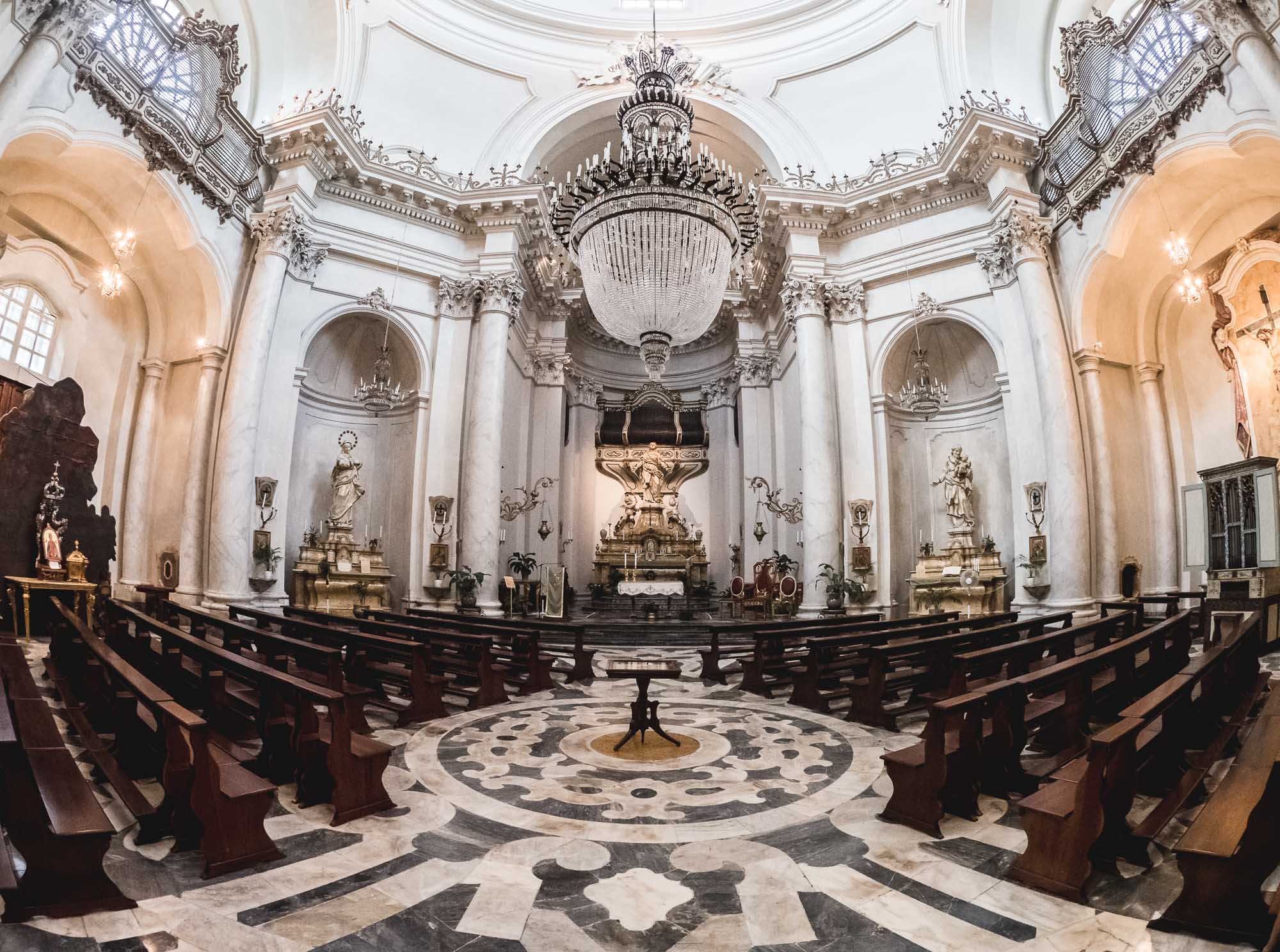
Church of the Abbey of Saint Agatha
The interior of the church with its baroque style, common in Sicily's churches.
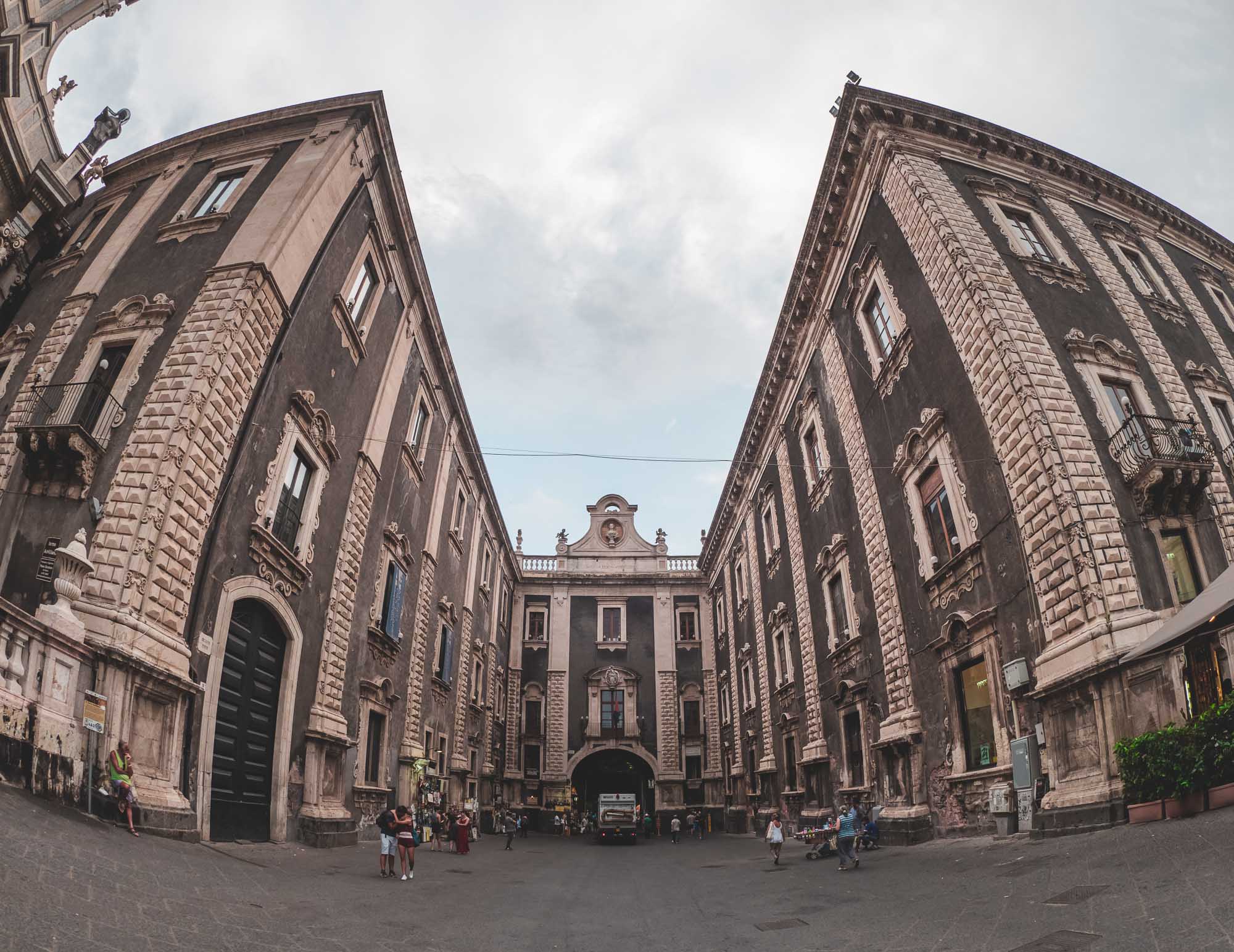
Porta Uzeda
The gate from 1695 built in typical Catanian baroque style acts as the entrance to the main Piazza.
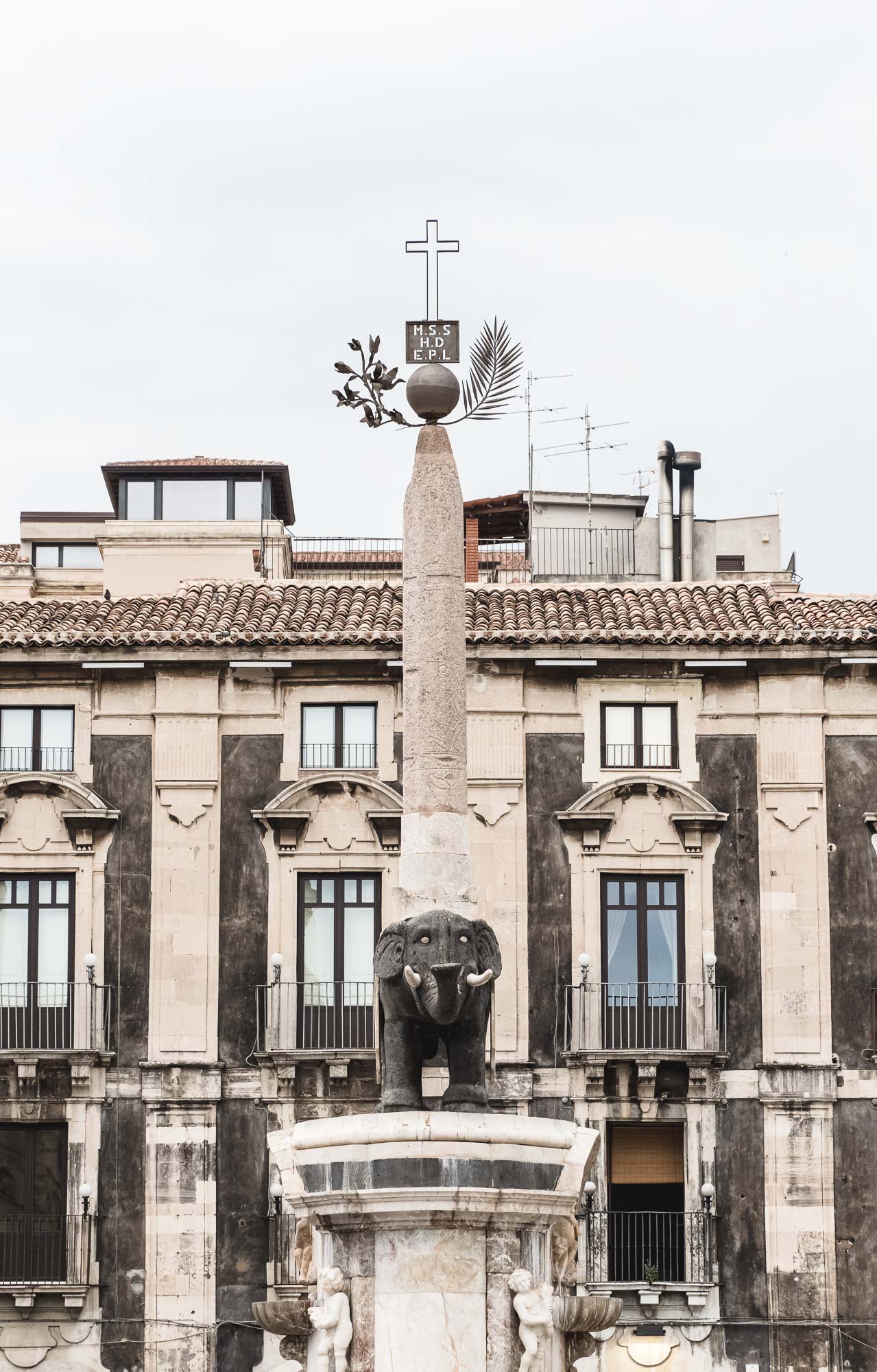
Fontana dell'Elefant
The fountain with a Roman statue of an elephant carved from basalt, now the symbol of the city. The origins of the symbolism aren't clearly defined, with several tales competing for the truth...
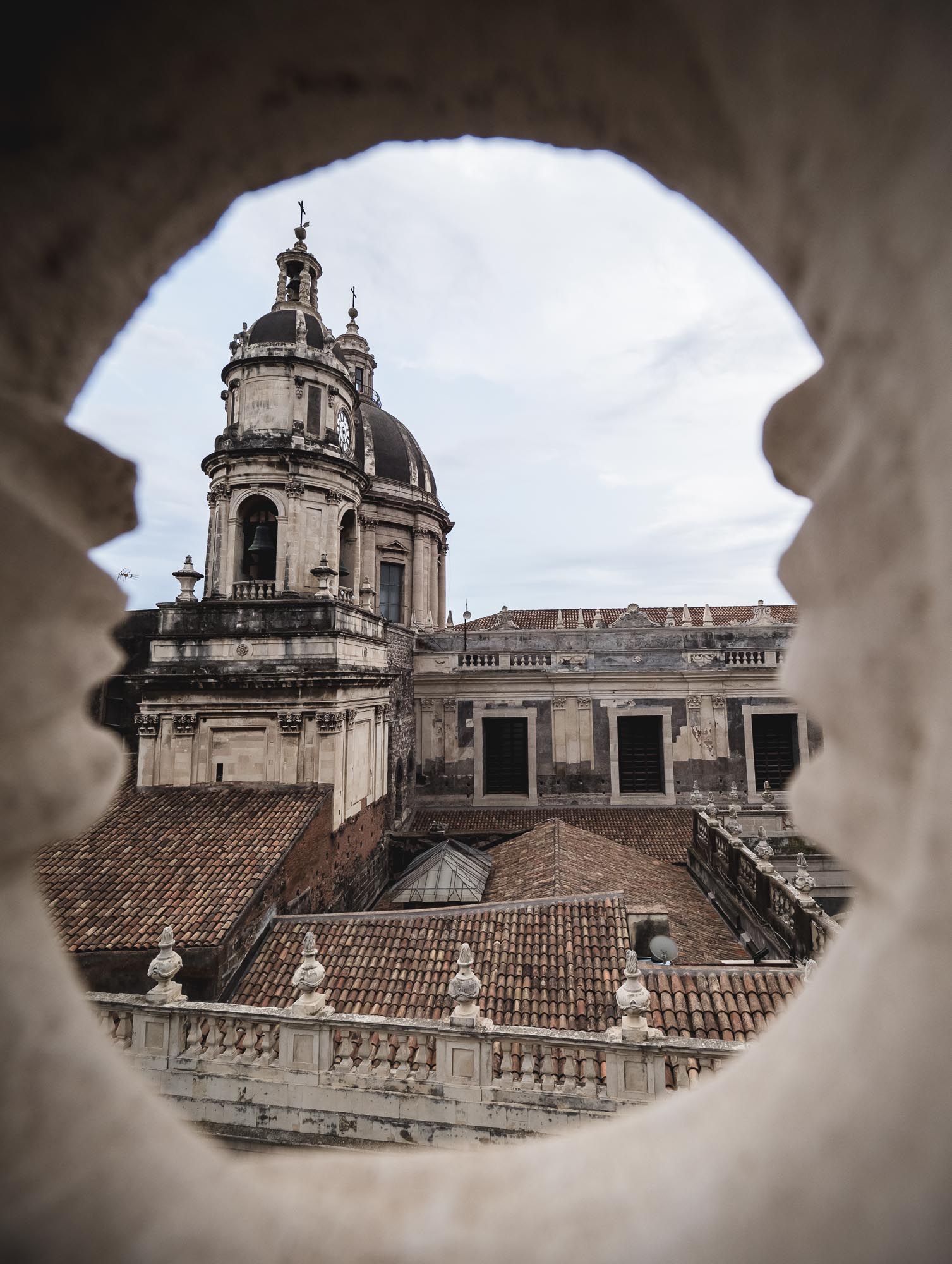
Roof Structures
The domed roof of the Cathedral of Saint Agatha seen from Church of the Abbey of Saint Agatha's roof.
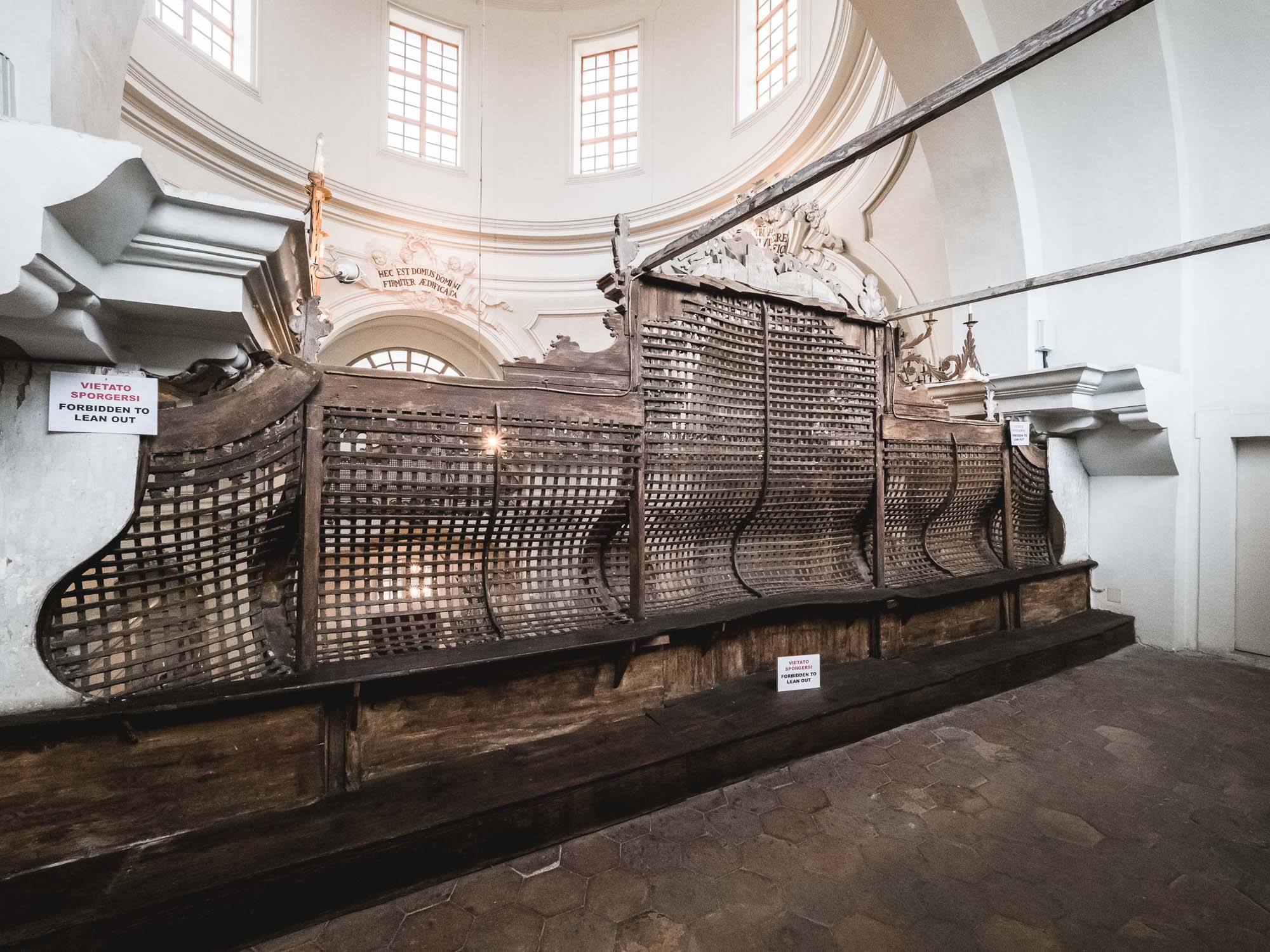
Fragile
A behind the scene view of the decorative elements of the church shows how intricate some of the work is.
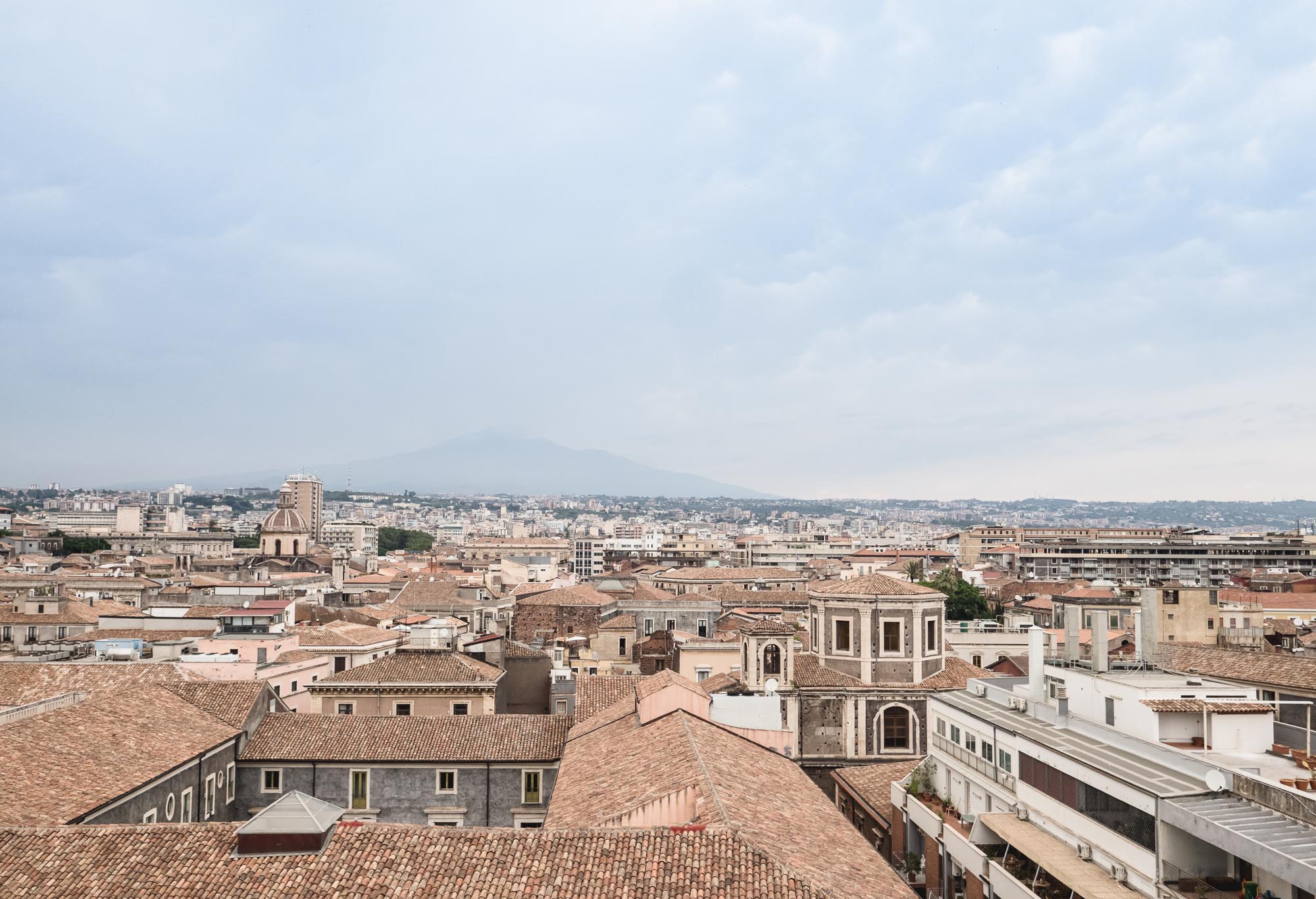
Catania Views
The church allows visitors to climb the roof level, providing a view over Catania with the Etna in the background.
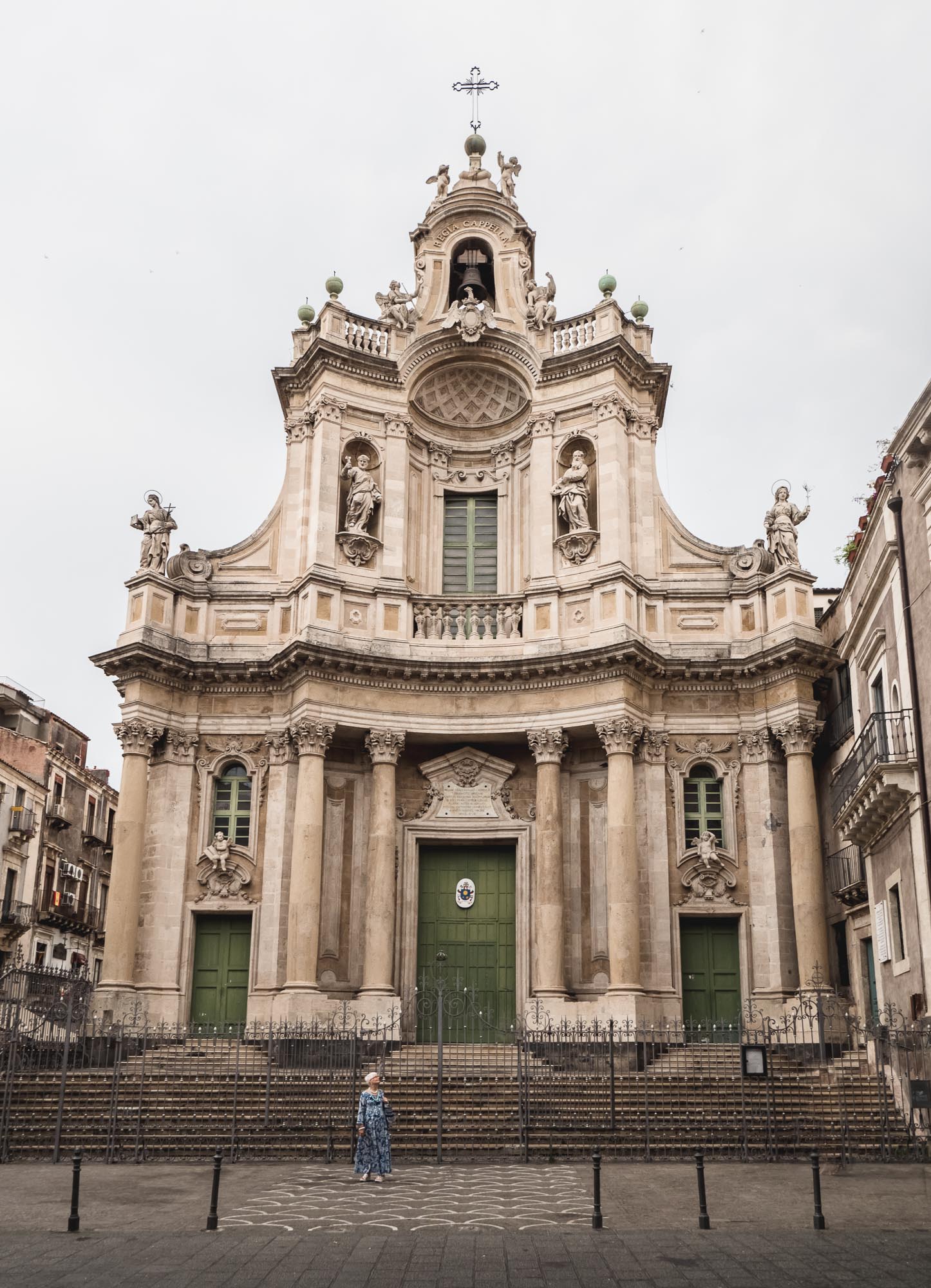
Facade
A woman looking at front of the Basilica della Collegiata from 1768.
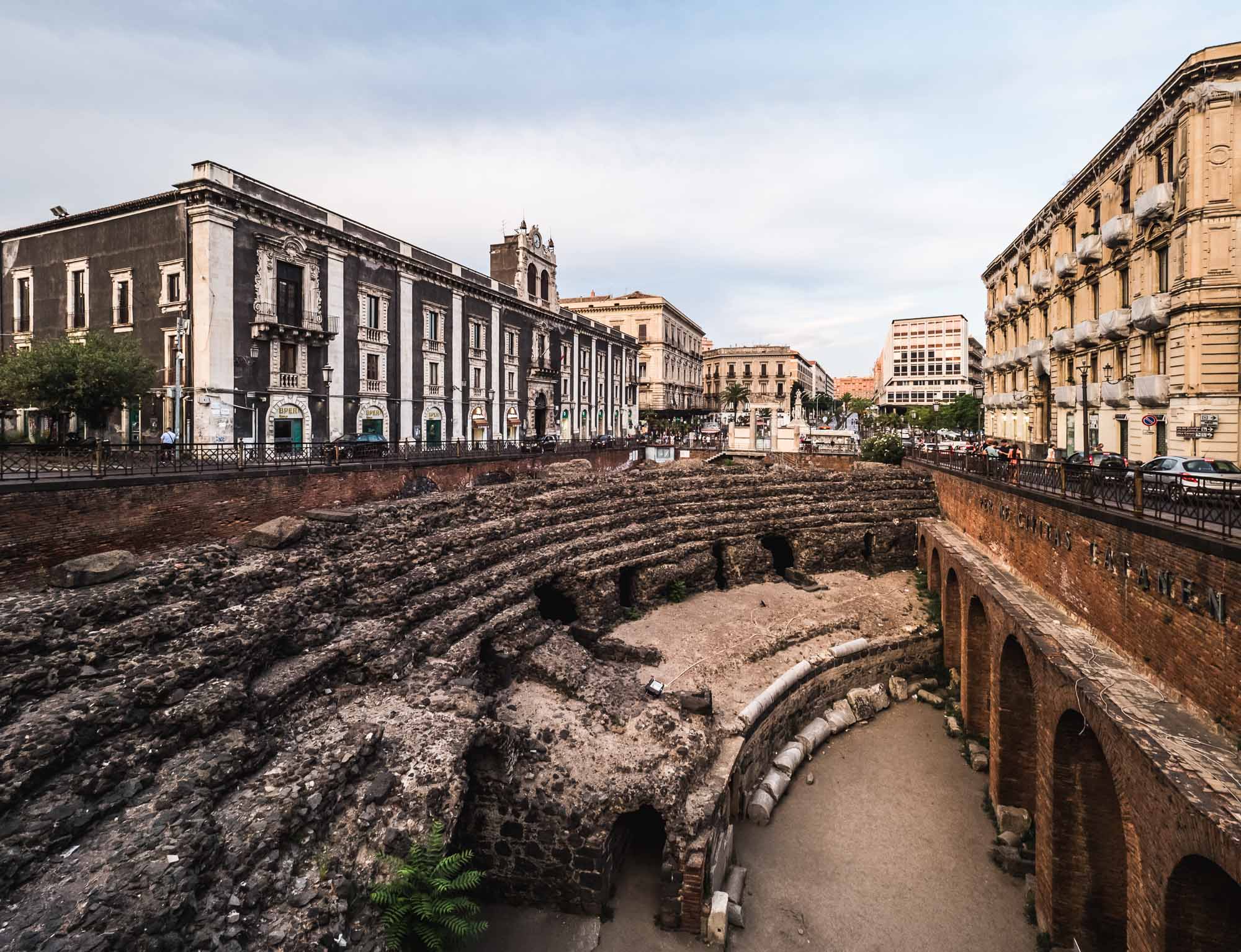
Roman Amphiteatre
The 2nd century AD arena was one of the largest in the Roman empire, but only a tenth or so is visible and excavated today.
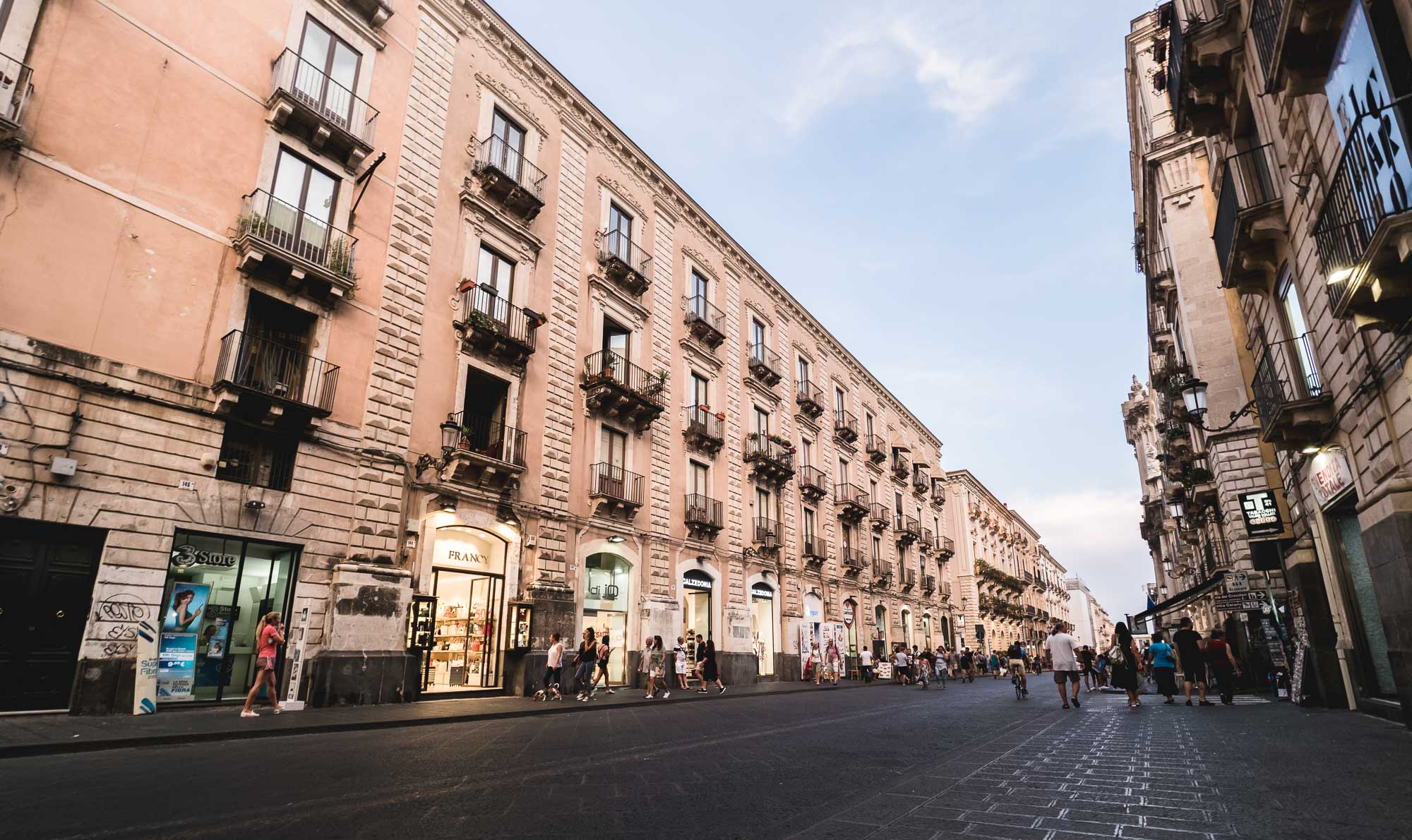
Via Etna
One of Catania's central roads.

Downwards
A narrow angled street in Catania lined with blossoming trees.

Sunset Skies
The front of the Church of St. Francis of Assisi.

Business
A group of Indian sales men and their starry balloons in front of the Cathedral of St Agatha.
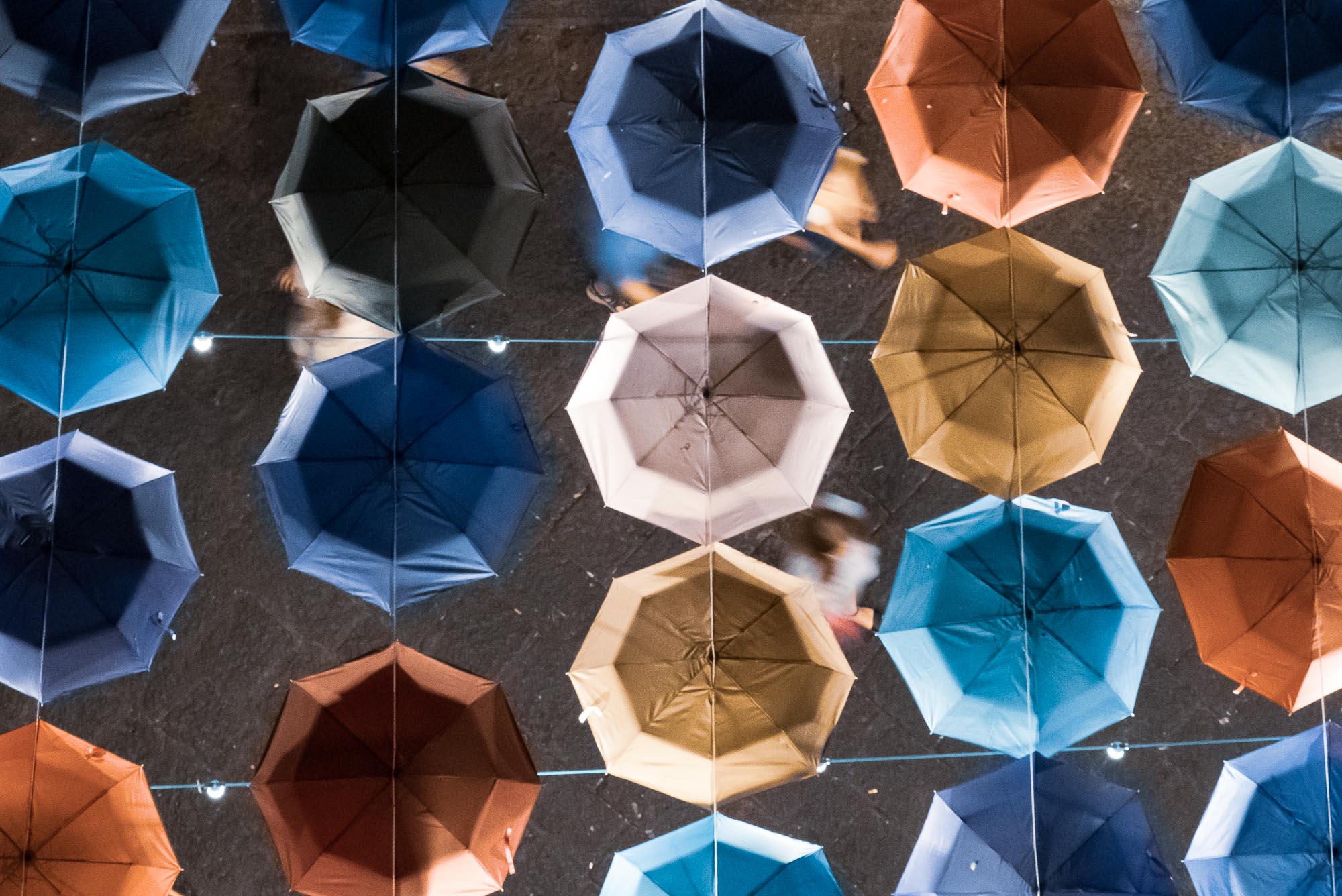
Birds Eye
People walking below the umbrellas hanging above the market street in Catania.

Musical
A singer in Catania's main square.
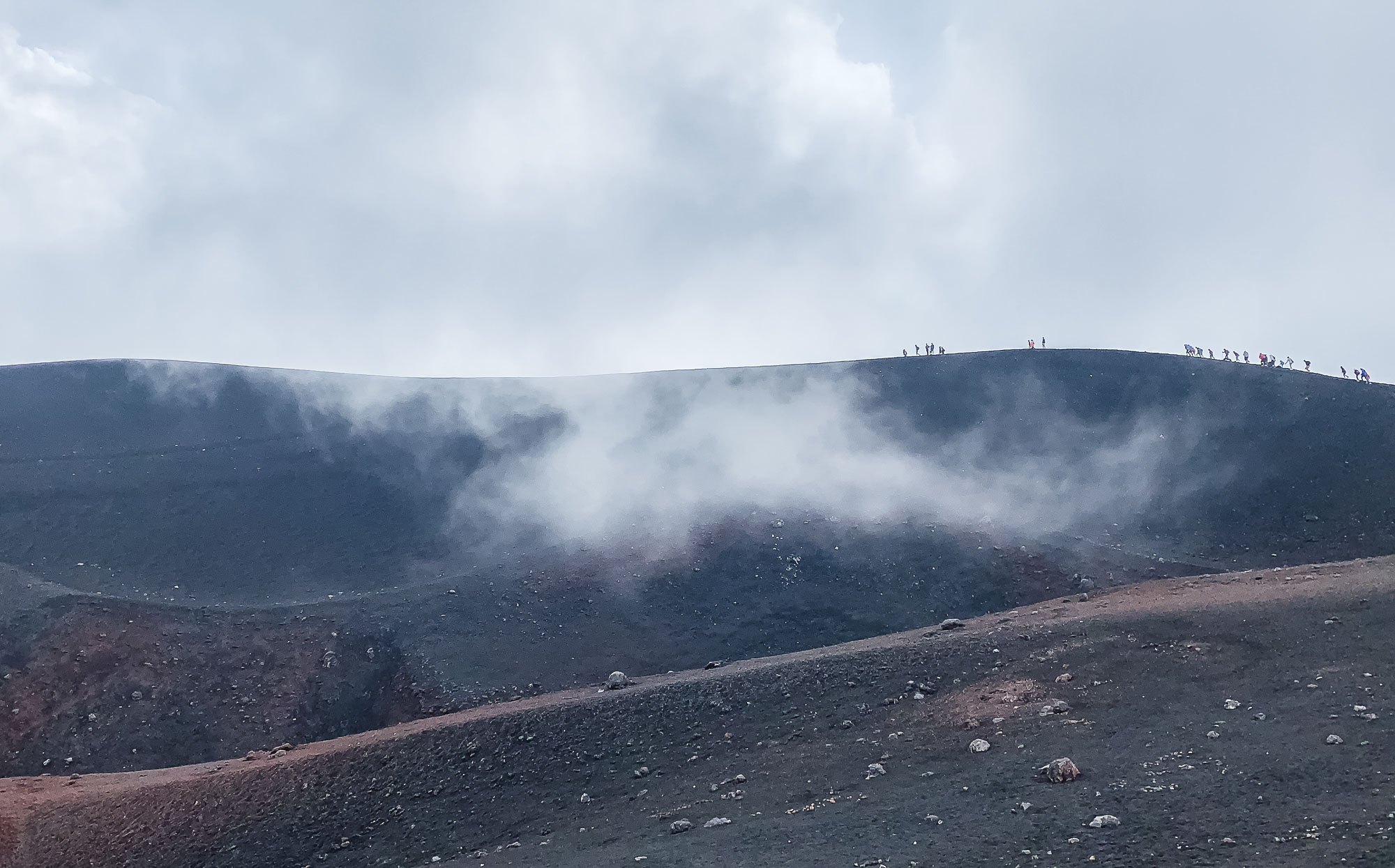
On the Crater's Edge
A group of people walking at the edge of the 2003 craters.
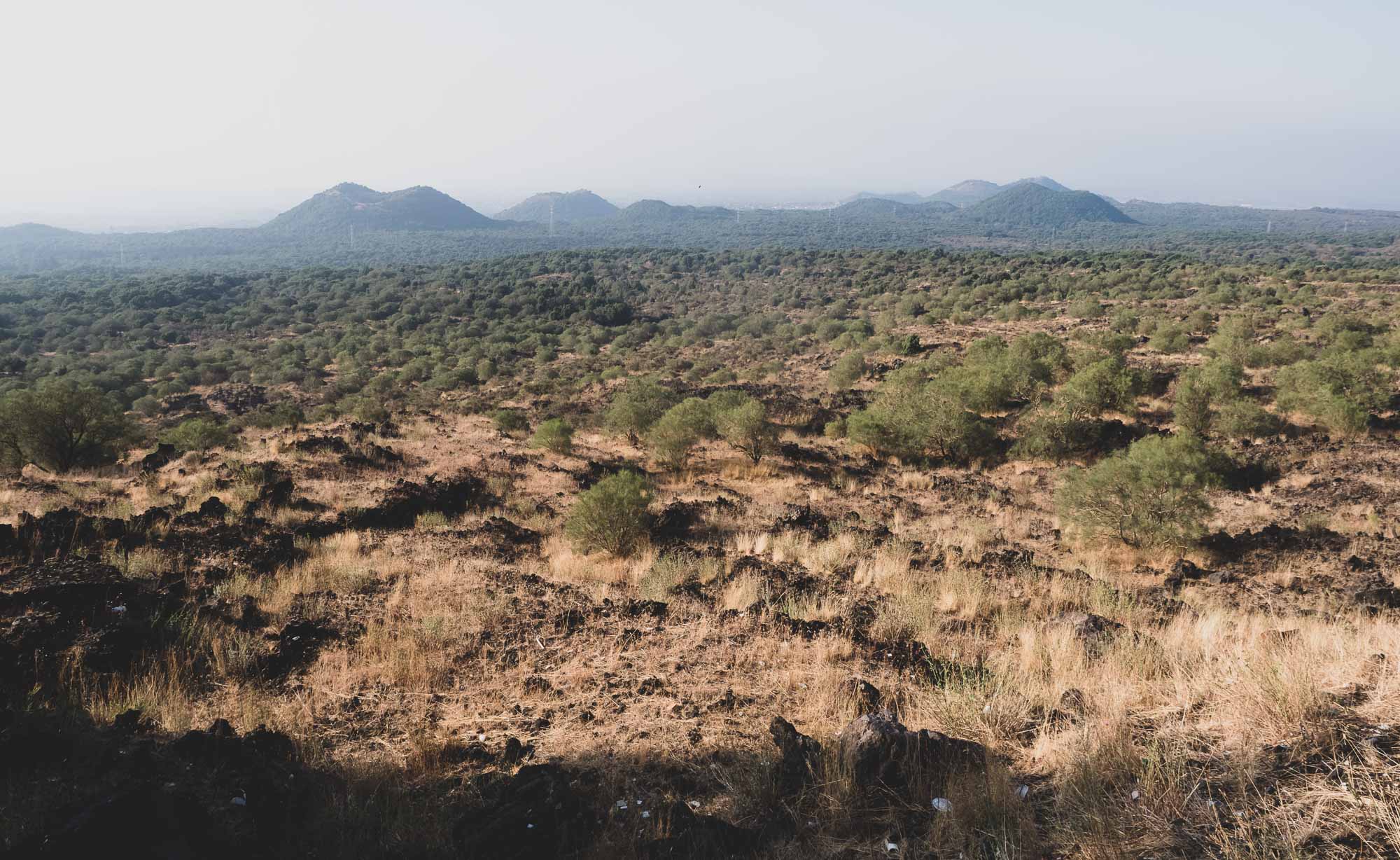
Landscapes
The base of the Etna features a hilly and relatively barren terrain.

Cold
It was about 20 degrees less than on the ground up at 2800m.
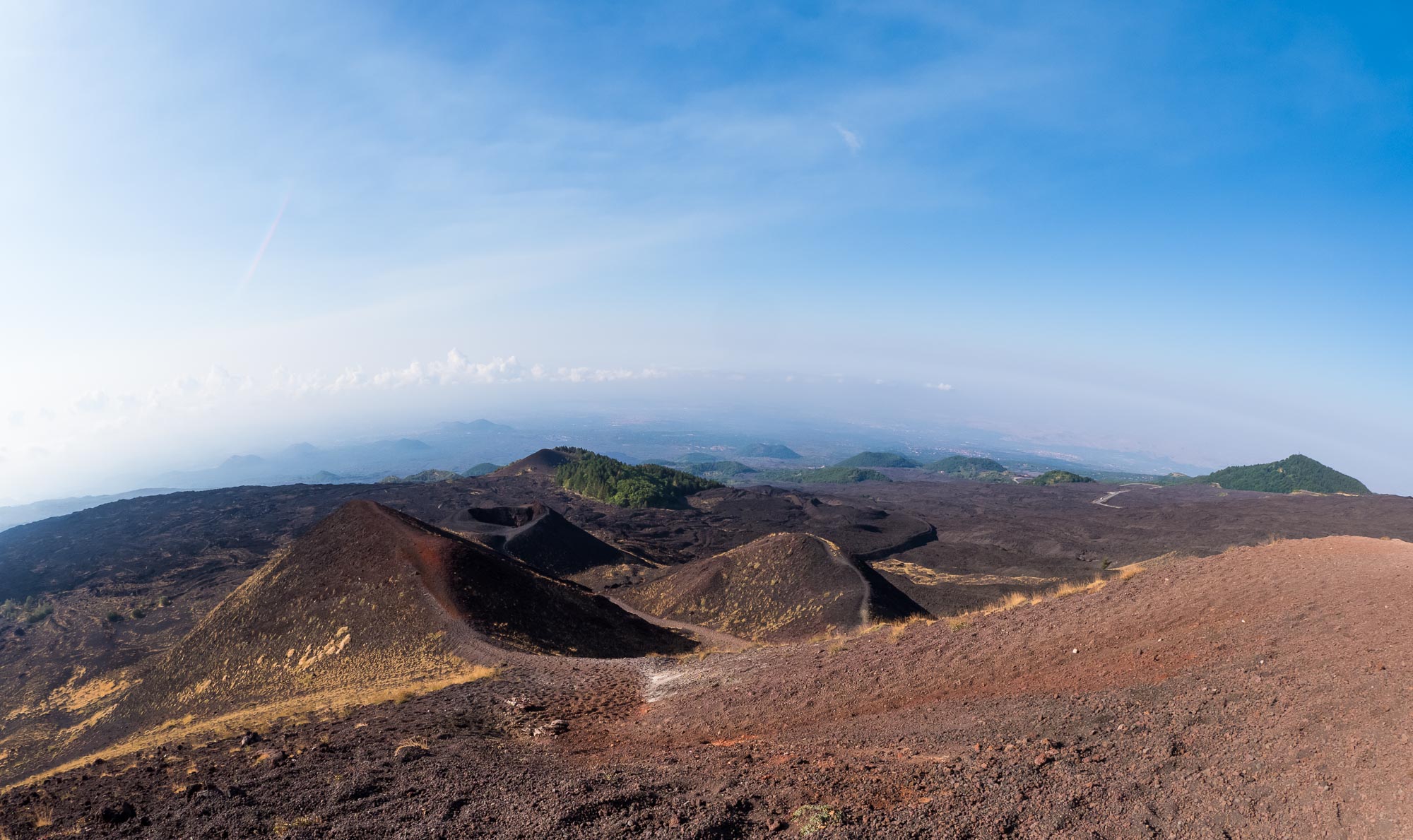
Panorama
The drive up the Etna transitions to an increasingly brown, reddish and black landscape as you come closer to the end of the main road.
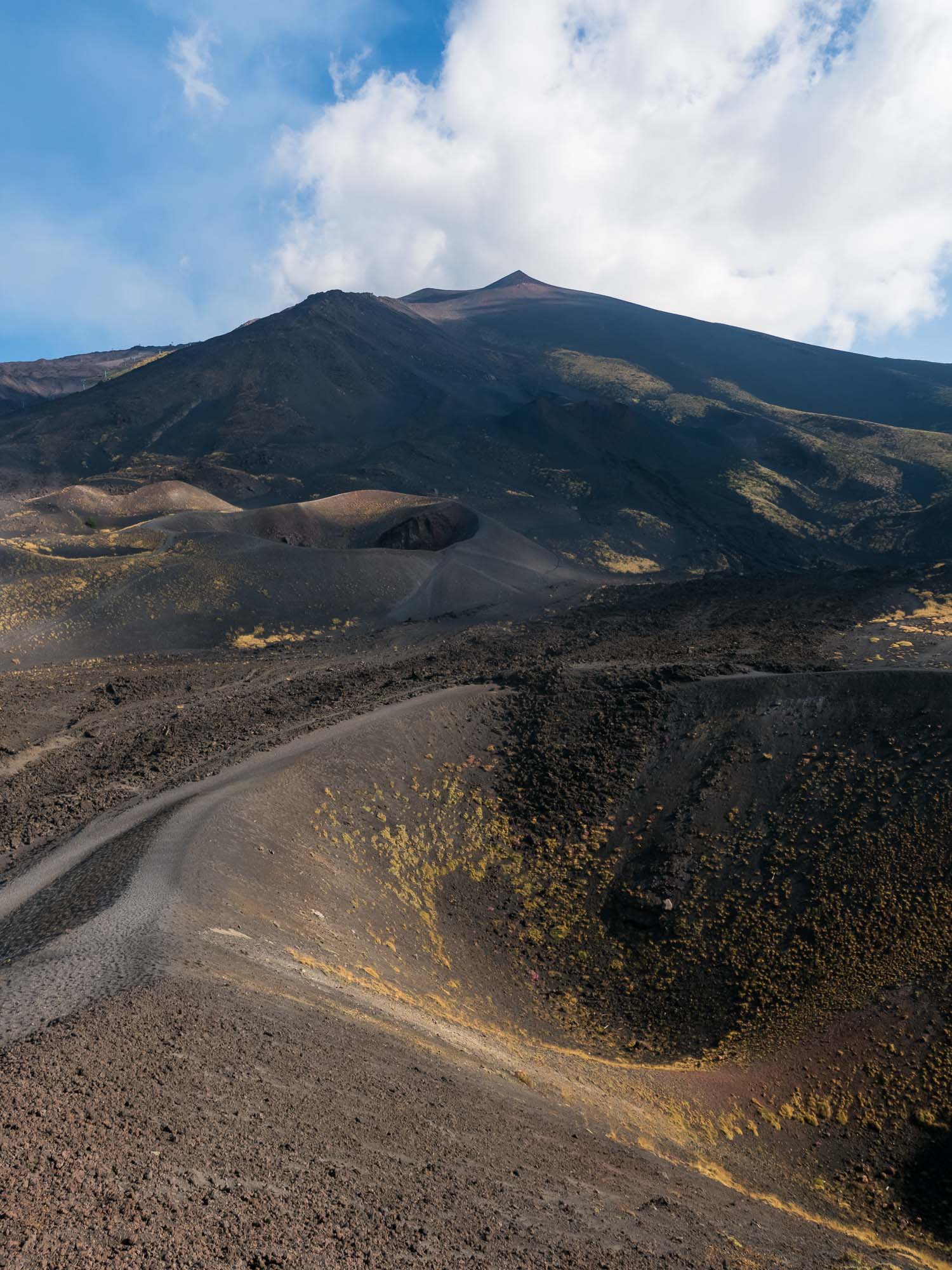
2001
The Southern flank of Mount Etna showing lateral cones and flow from the eruption of 2001.
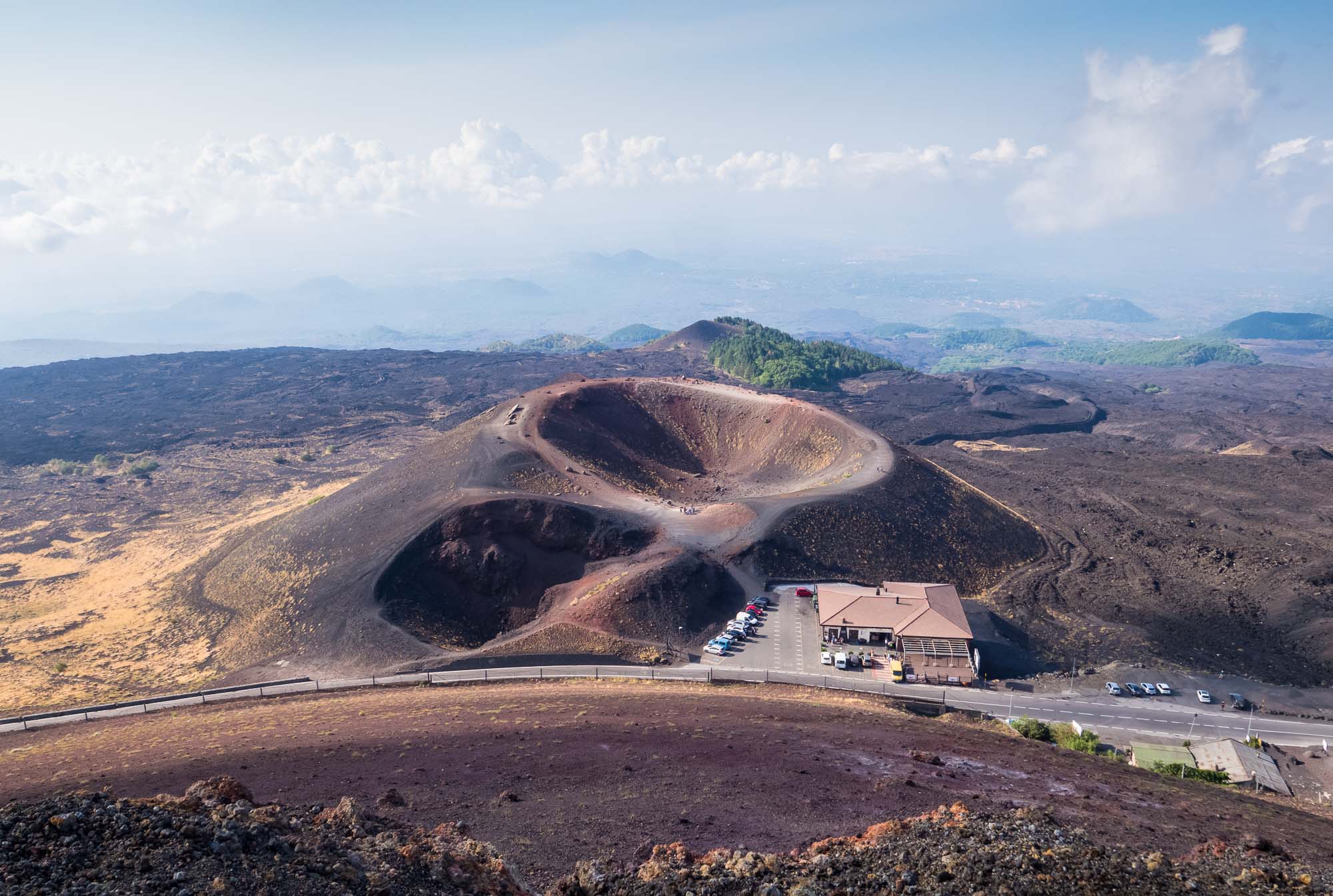
Craters Silvestri of Mount Etna
The two smaller craters near the end of the main road, seen from the third and larger one, are from 1892.

Patches
The only greenery you can find on the lava covered mountainscape as the cable car ascends.
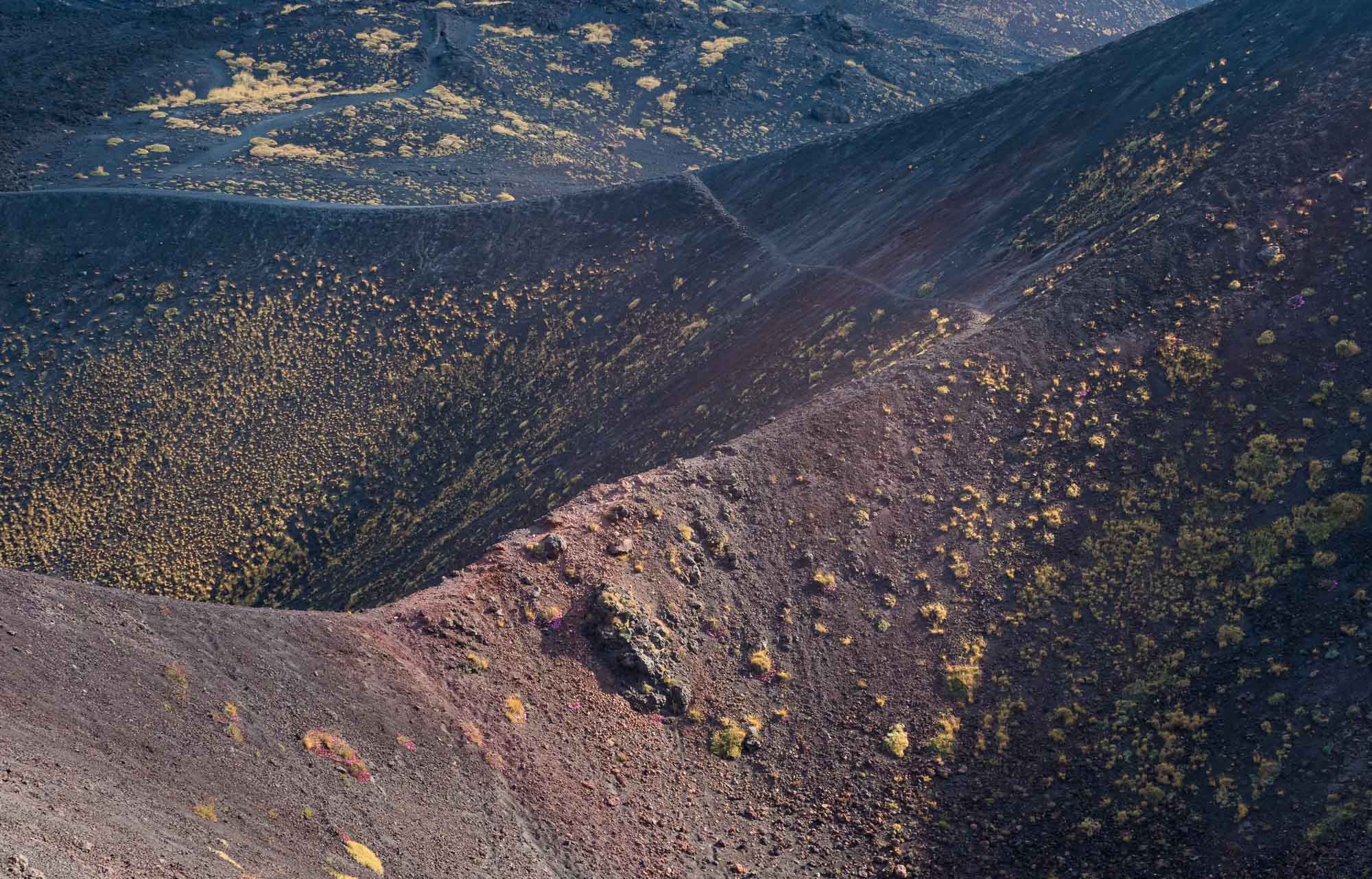
Flora
On the lower craters, there are still occassional bushes of colourful flowers, which slowly disappear as you go higher.
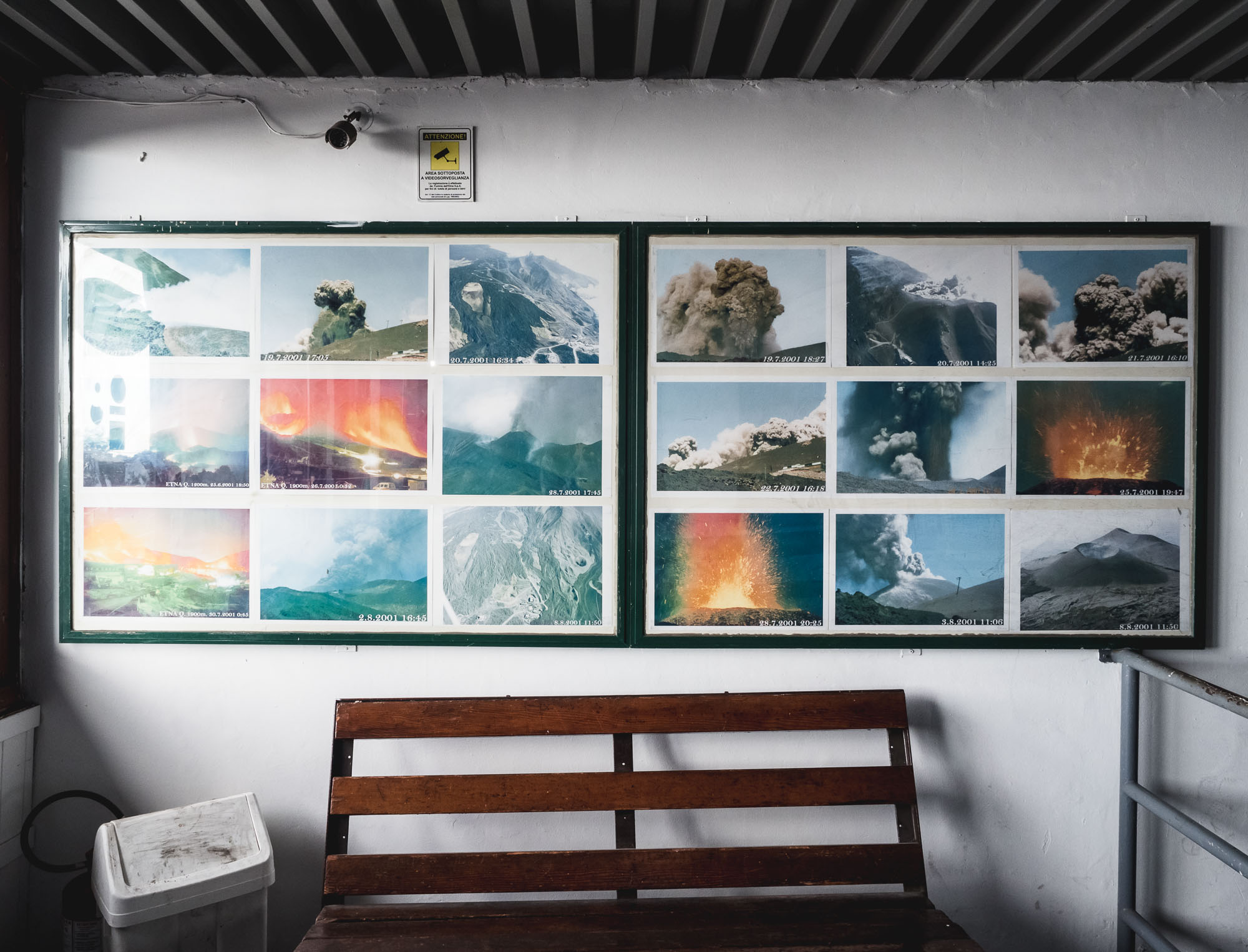
Evidence
Etna is one of the most active volcano's in the world, with plenty of recent evidence.
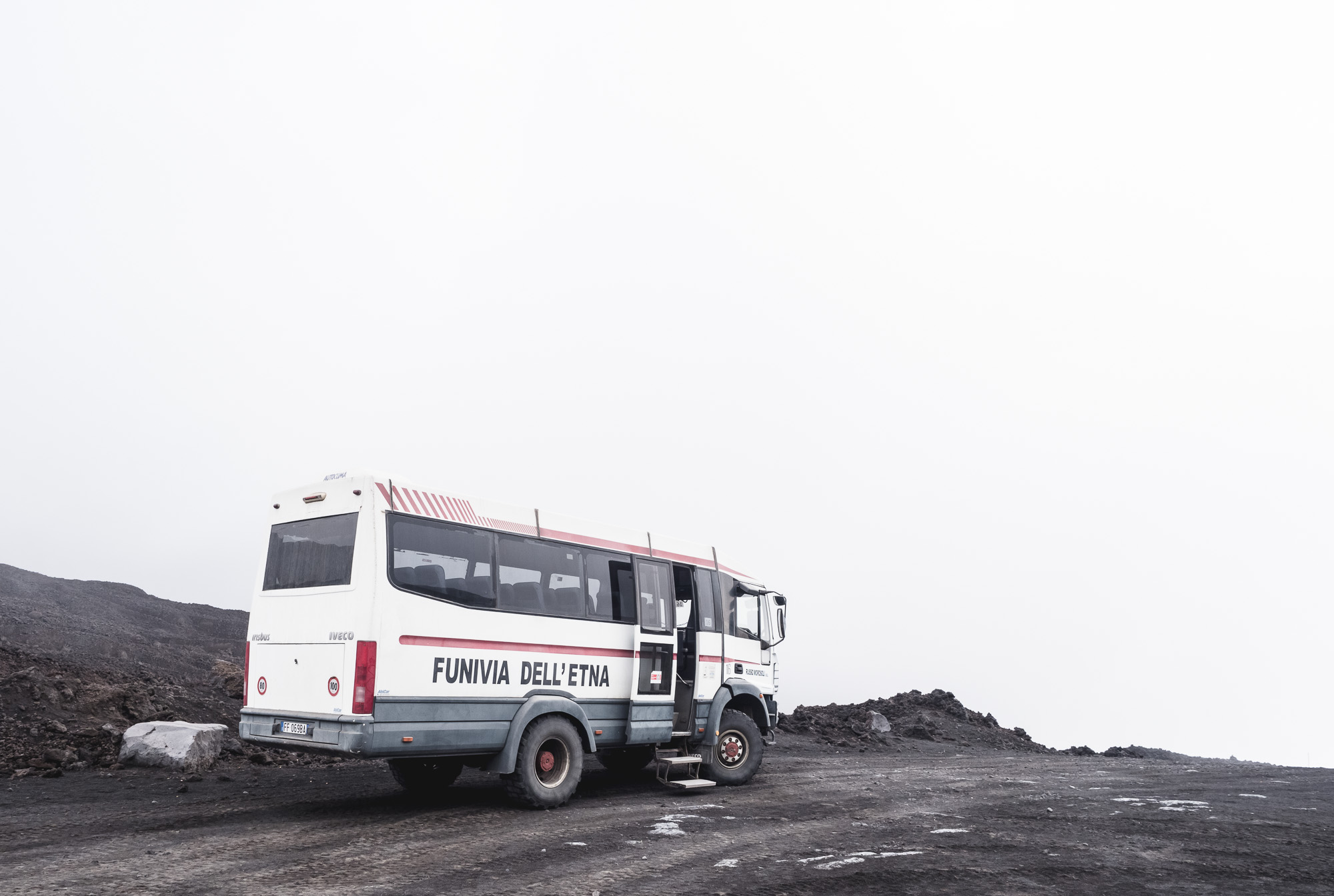
Transport
The cable car station isn't your last mode of transport - these vehicles take you up another few hundred metres.
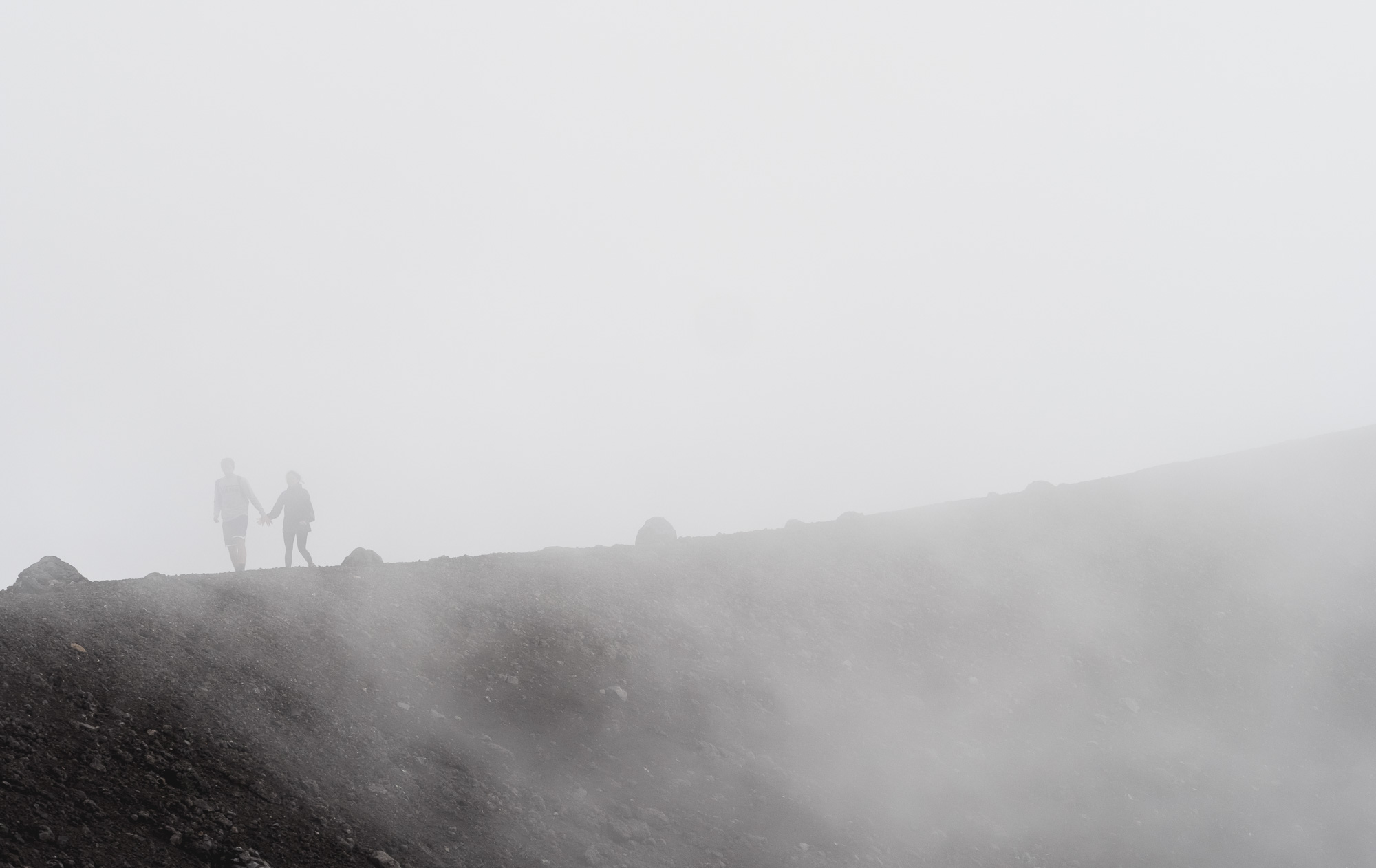
In the Clouds
It's rare to have a clear sky around the summit of the Etna.

To the Top
A group on the path to the top summit, which is another 2-3h hike from the end of the 4x4 road. While this is where the active craters are, luck is needed catch a clear day for this hike.

The Summit
The top of mount Etna, engulfed by clouds at 3300 metres. Usually, the early morning (this was around 10:30am) is the best time to catch a clearer glimpse. Note the yellow tone of the sulfur filled sediments.

Cloudy
Patches of clouds also touch the lower summits of the 4x4 landing area, at around 2900m.
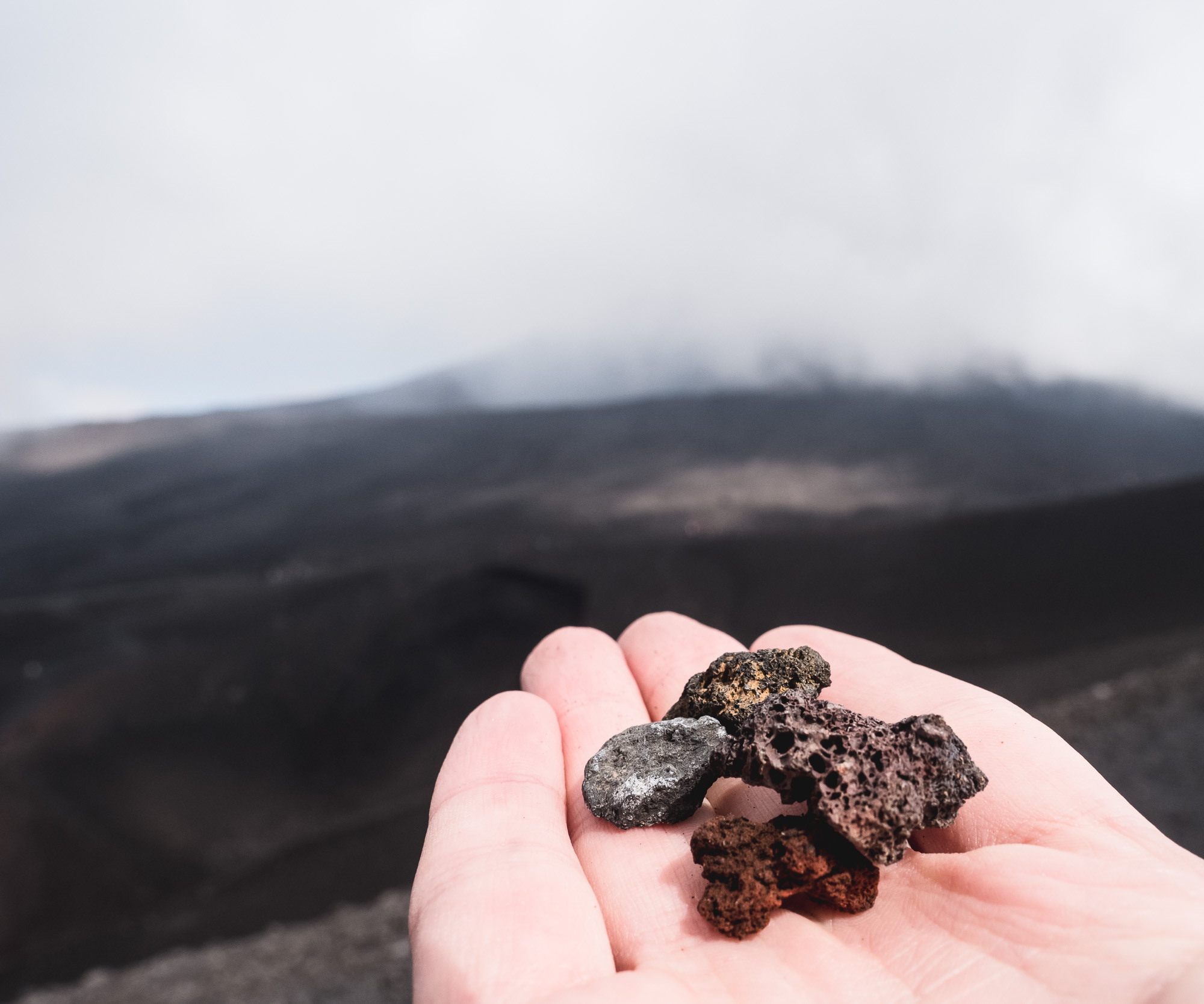
Colours
While from afar things appear of a more uniform blackish colour, looking closer at the ground reveals traces of sulfur, iron and more.

Warmth
Even the craters below the summit still have warm soil, once you dig a few centimetres.
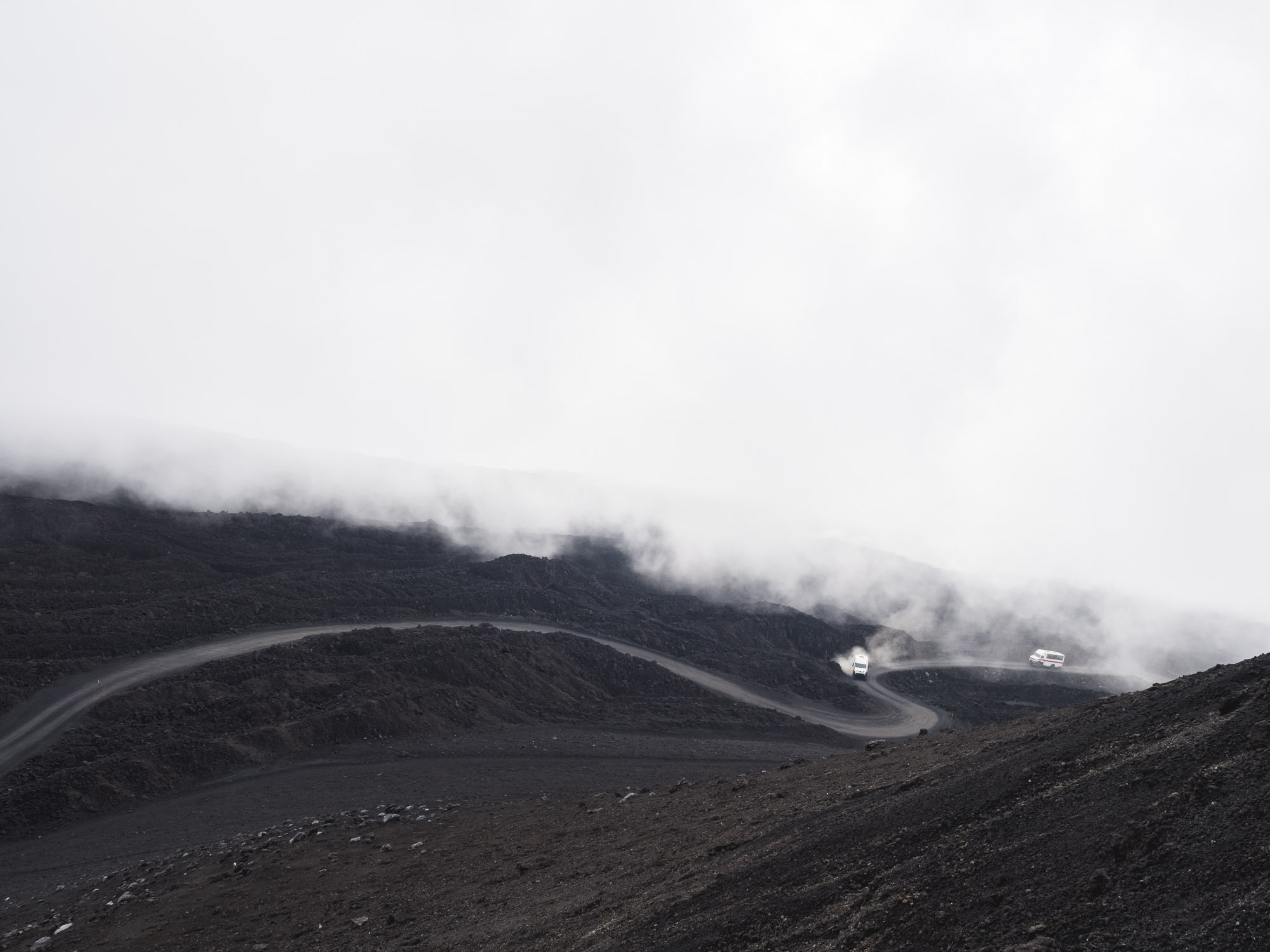
A Bumpy Road
The way up is not exactly a highway, and the fine lava sand means the road needs to be flattened regularly.

Entertainment
An old cinema and comedy club in Acireale.
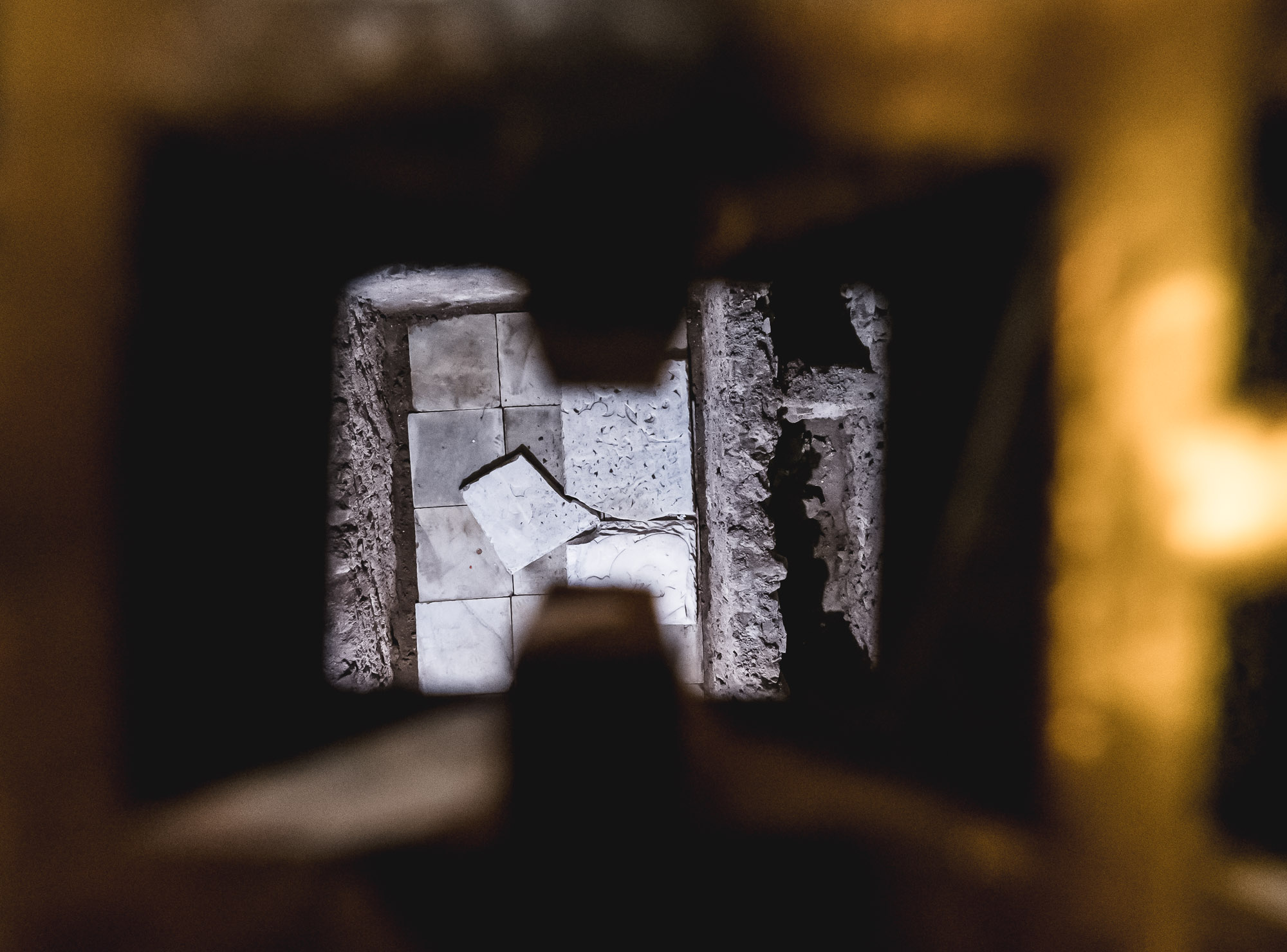
The Real Secrets...
...often lie below the floor of the churches of today, hidden from view unless you spot them through a drain hole, like in the case of this grave.
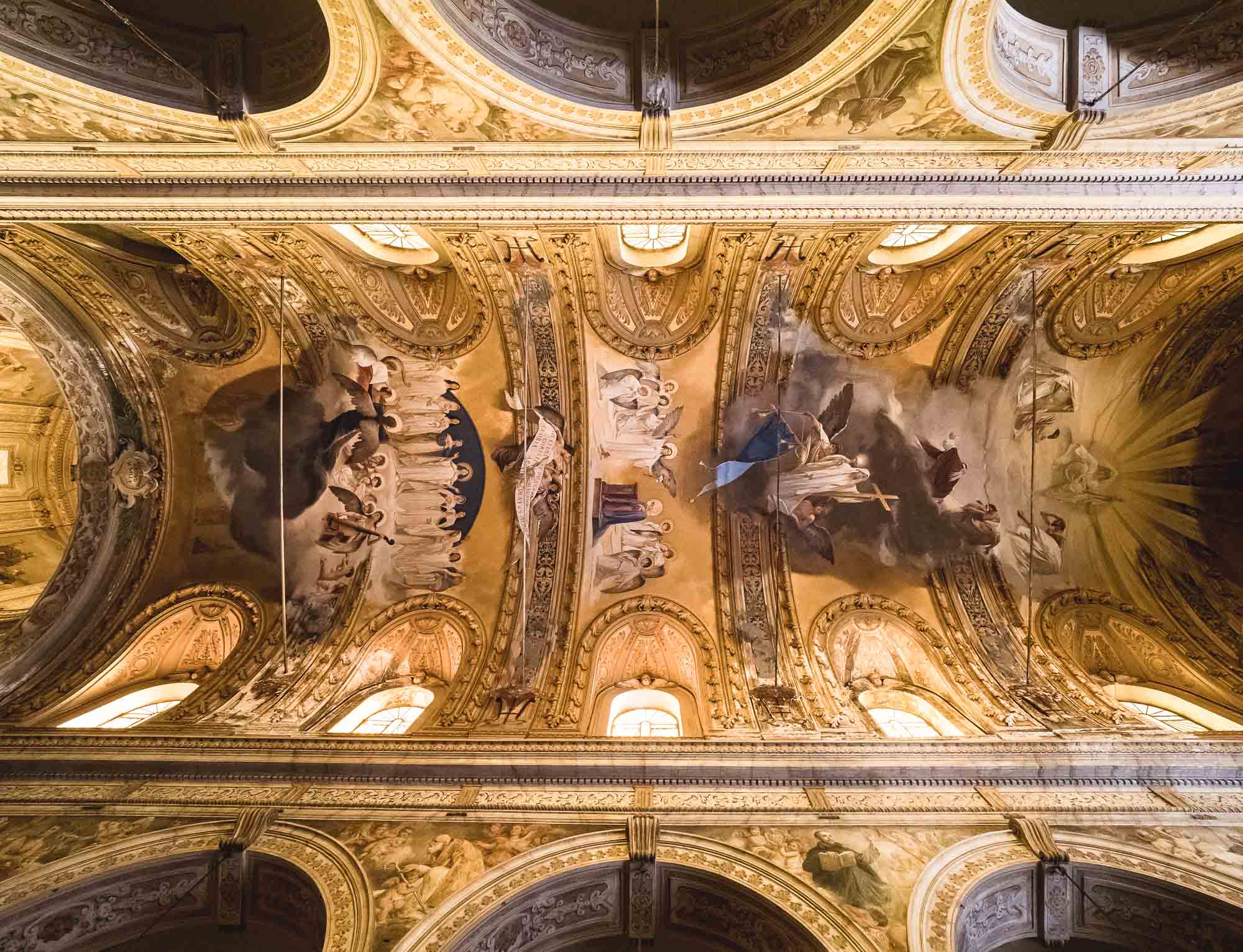
Ceiling Paintings
The illustrations on the Cathedral of Saint Mary of the Announcement.
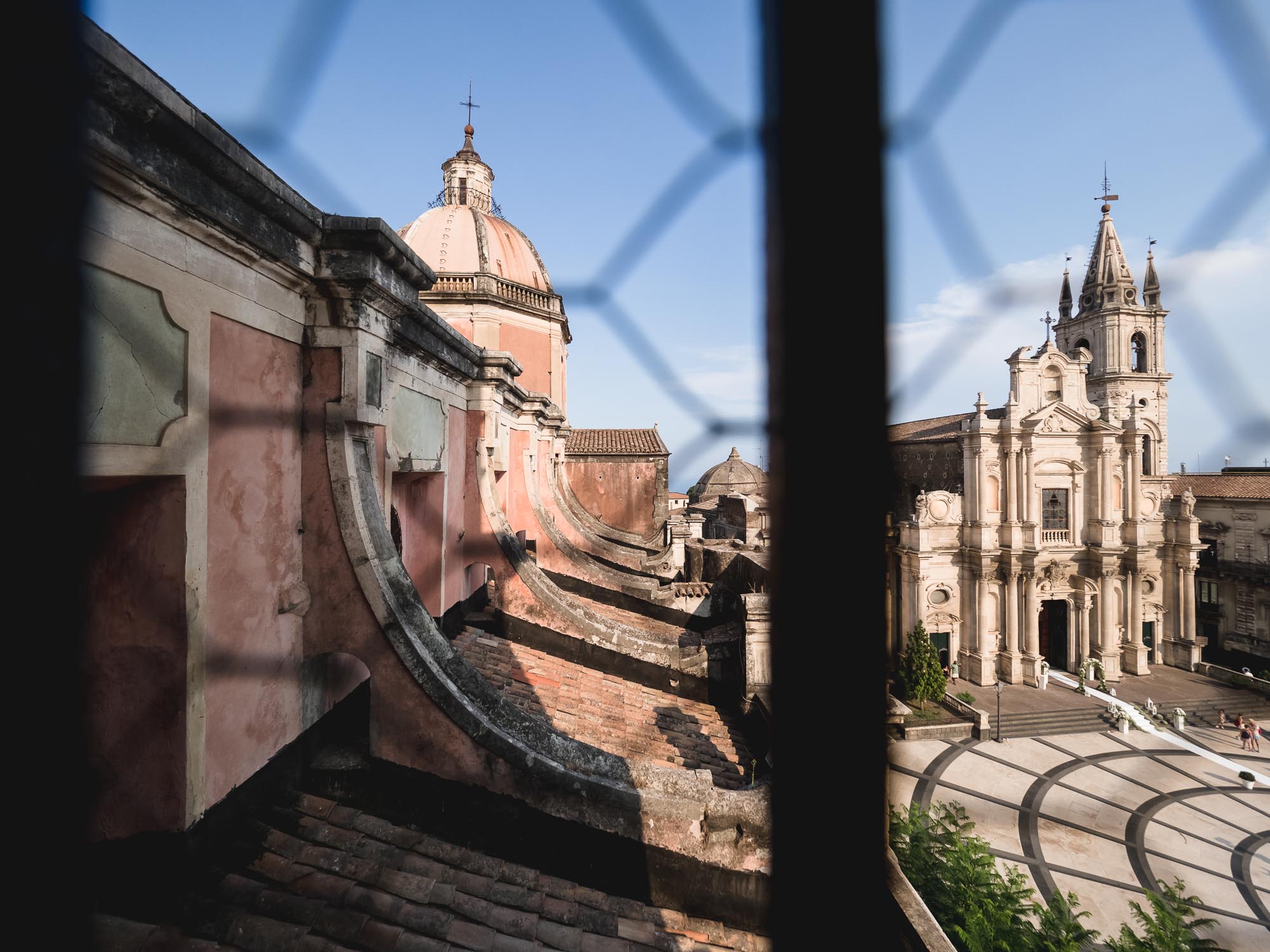
Back Views
The roofline of the Cathedral and the Basilica of the Holy Apostles Peter and Paul on the right just behind.

Church Bells
You can climb up a few stairs to the Cathedral of Acireale's bell towers. While they both look identical, the one on the south is from 1655, while the one to the north, is from 1890.
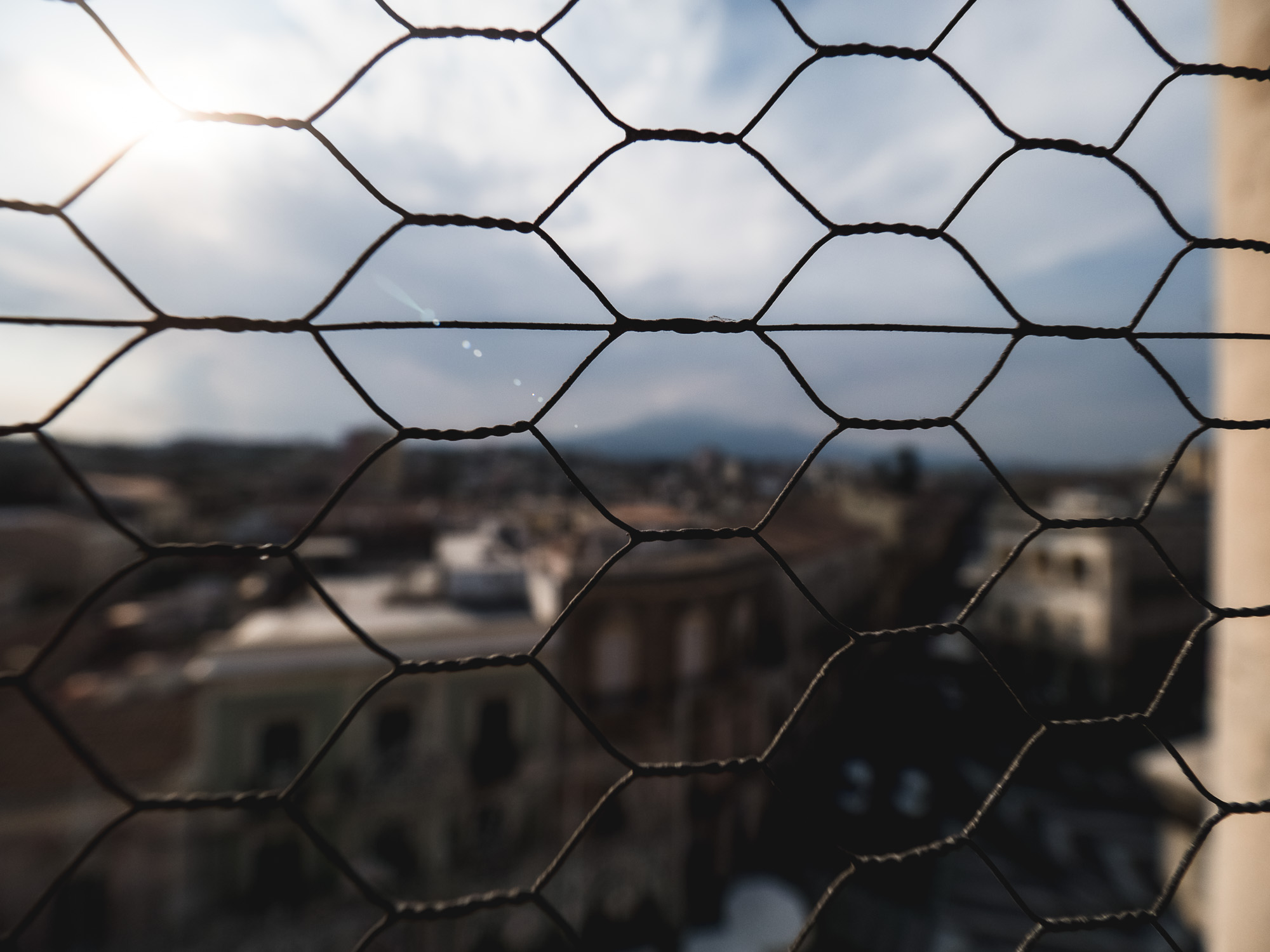
Acireale
The view from the bell tower is unfortunately obstructed by a fence to keep birds out, but you can still see the majestic Etna in the background.
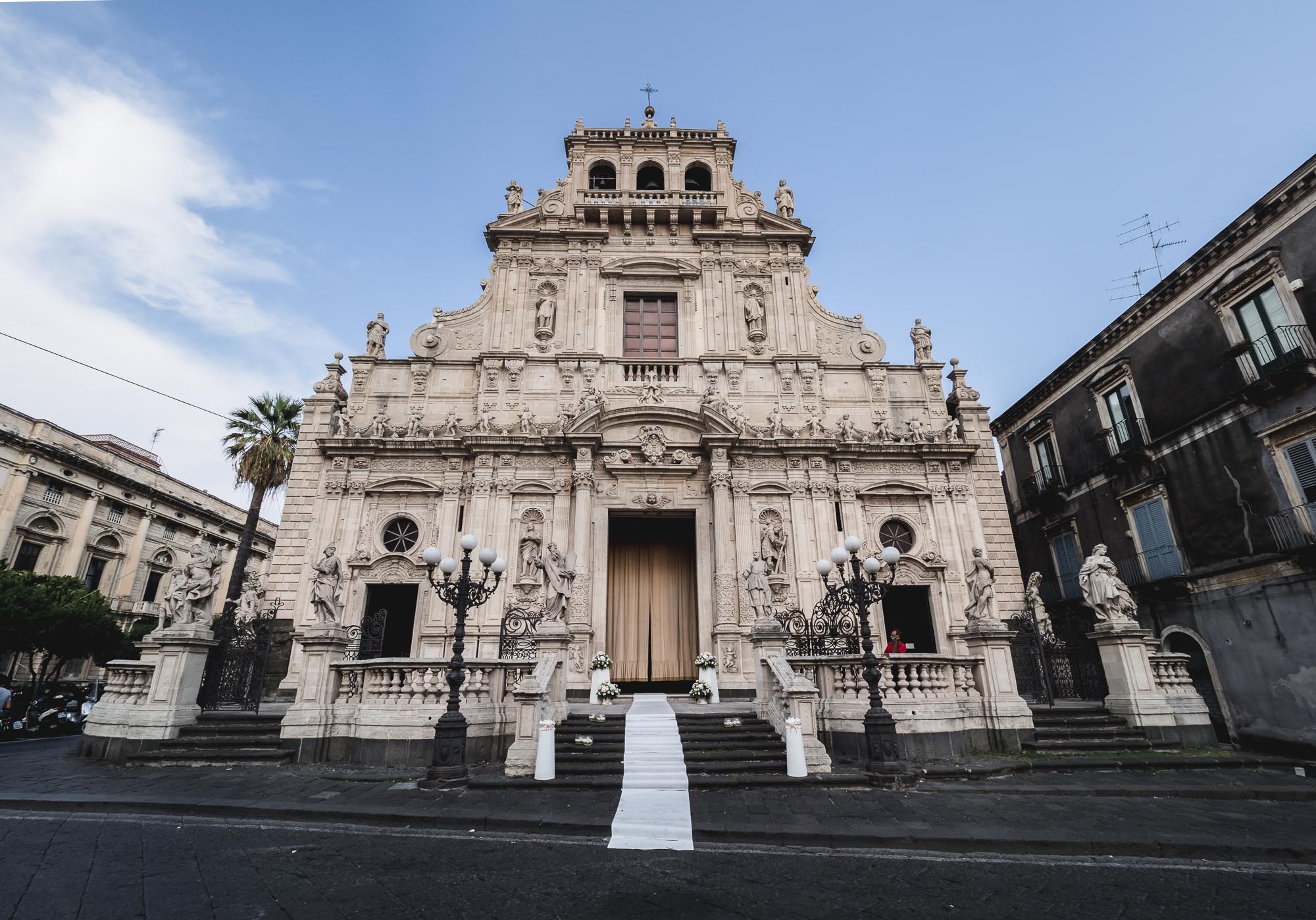
Triumvirat
The third major church in the centre of Acireale is the Basilica Collegiata San Sebastiano.
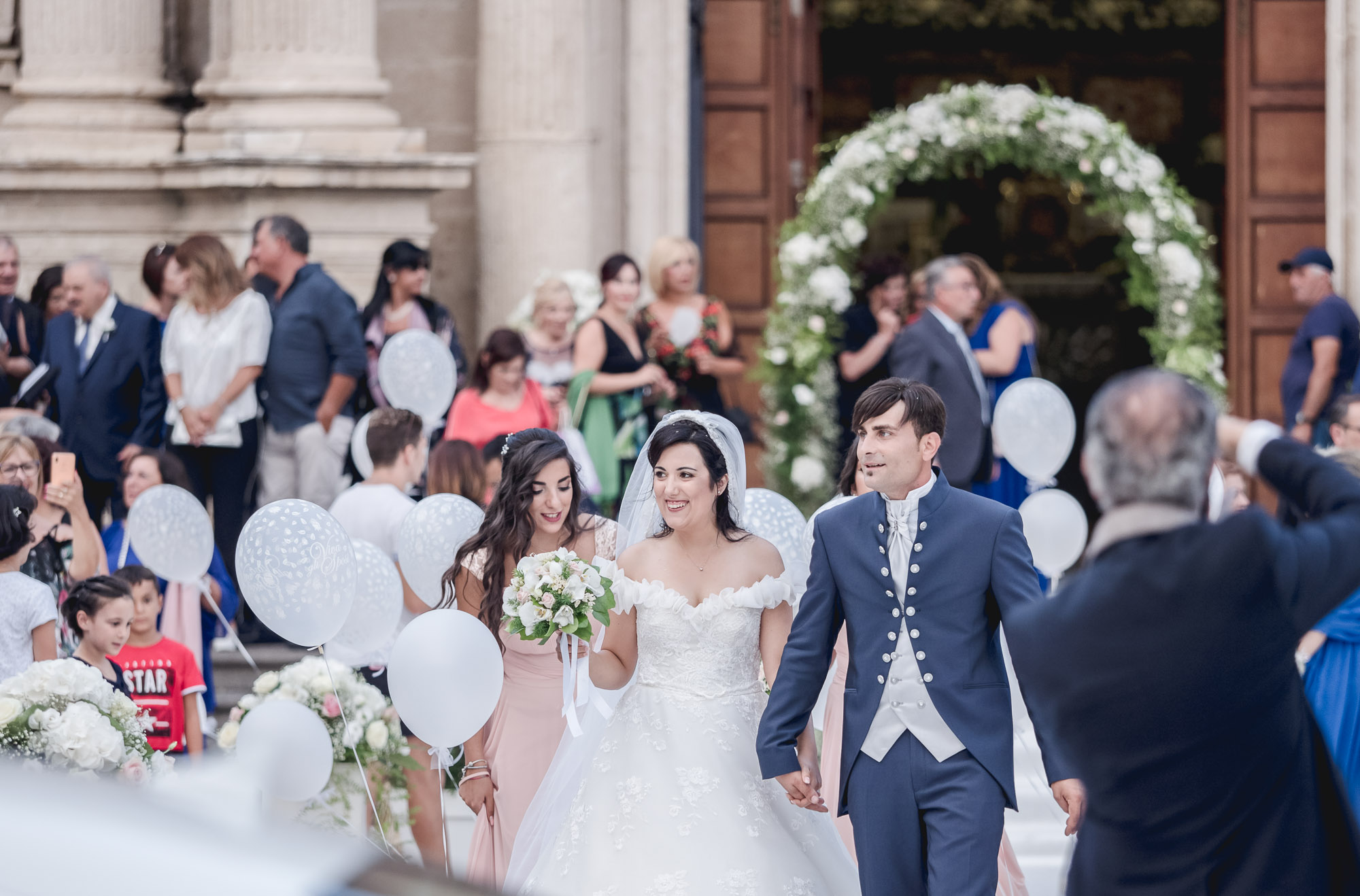
Procession
A wedding took place in the afternoon at Acireale's main square.
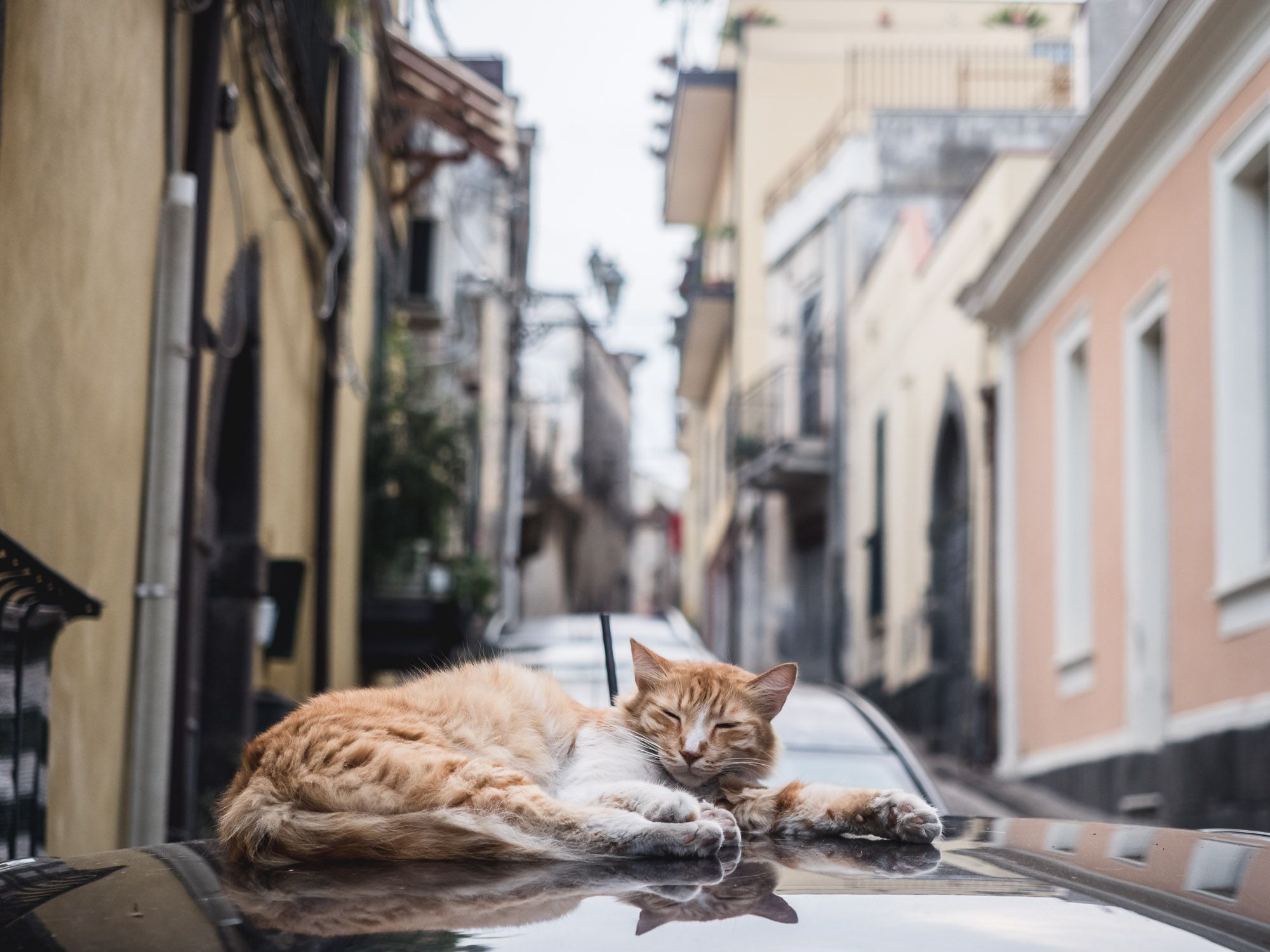
Just Chilling
The obligatory cat photo for this album.
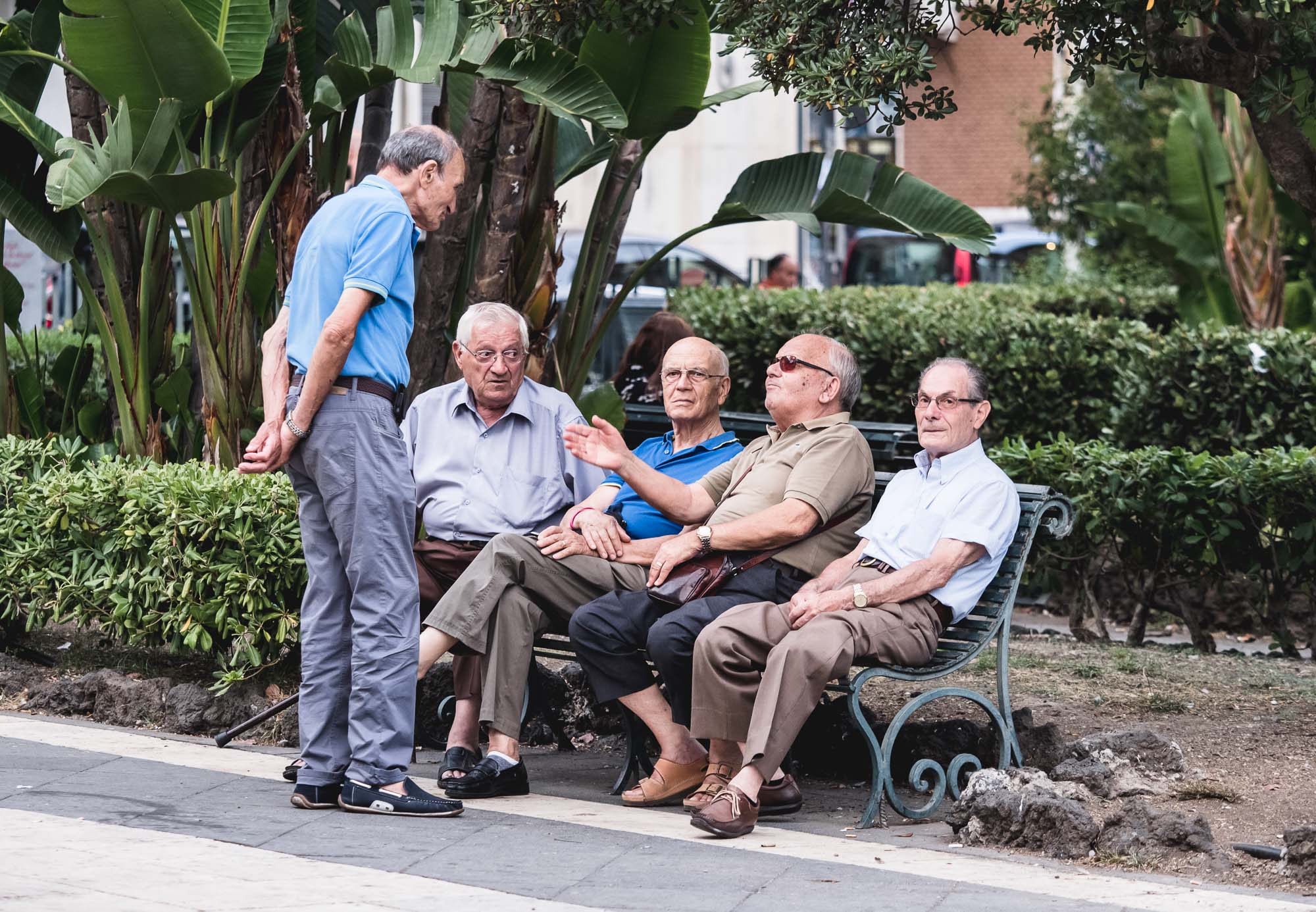
Conversations
Problems with the Mafia or the wife, who knows what the topic may be?
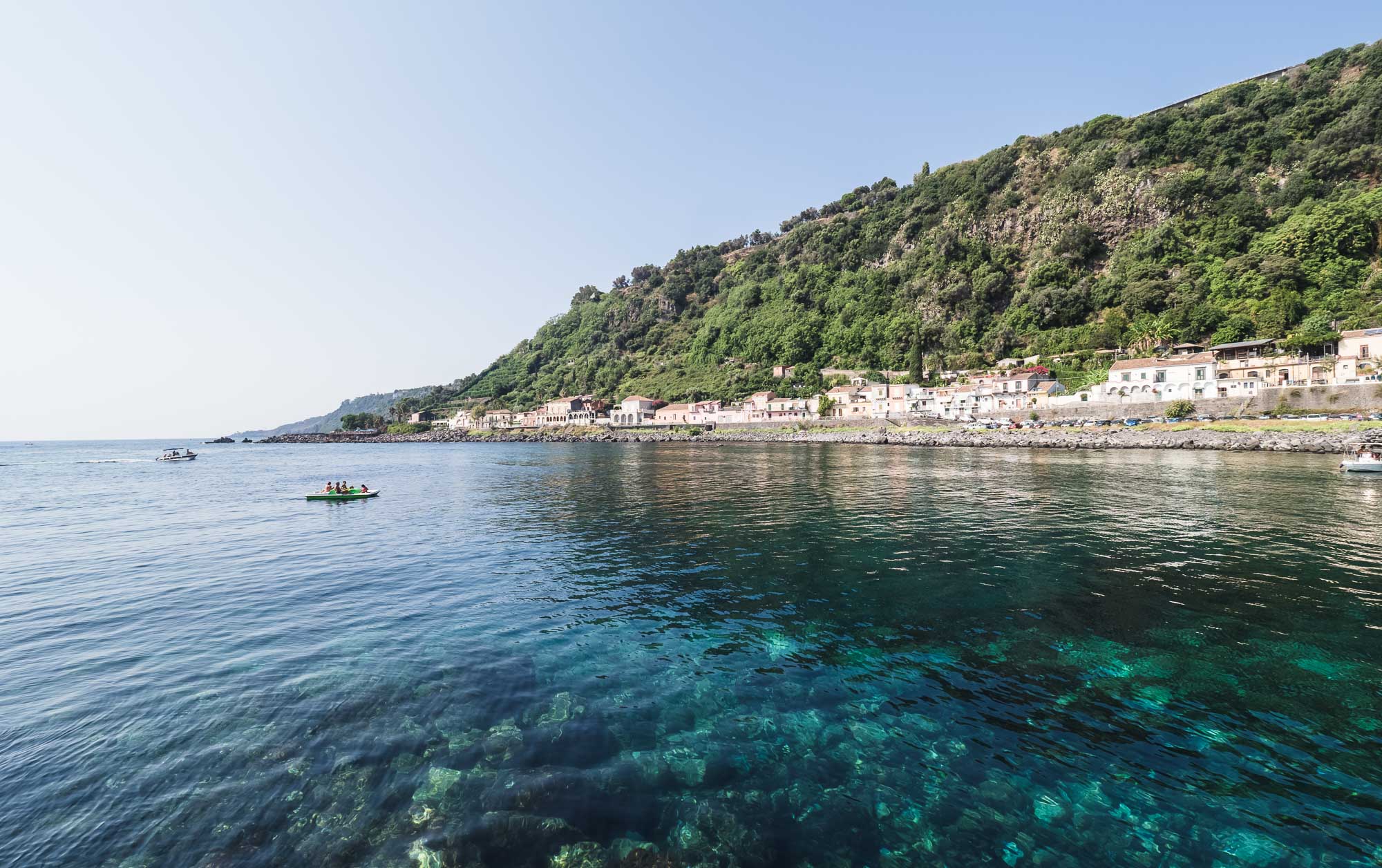
Clarity
The clear waters of the Mediterranean sea engulfe the island.
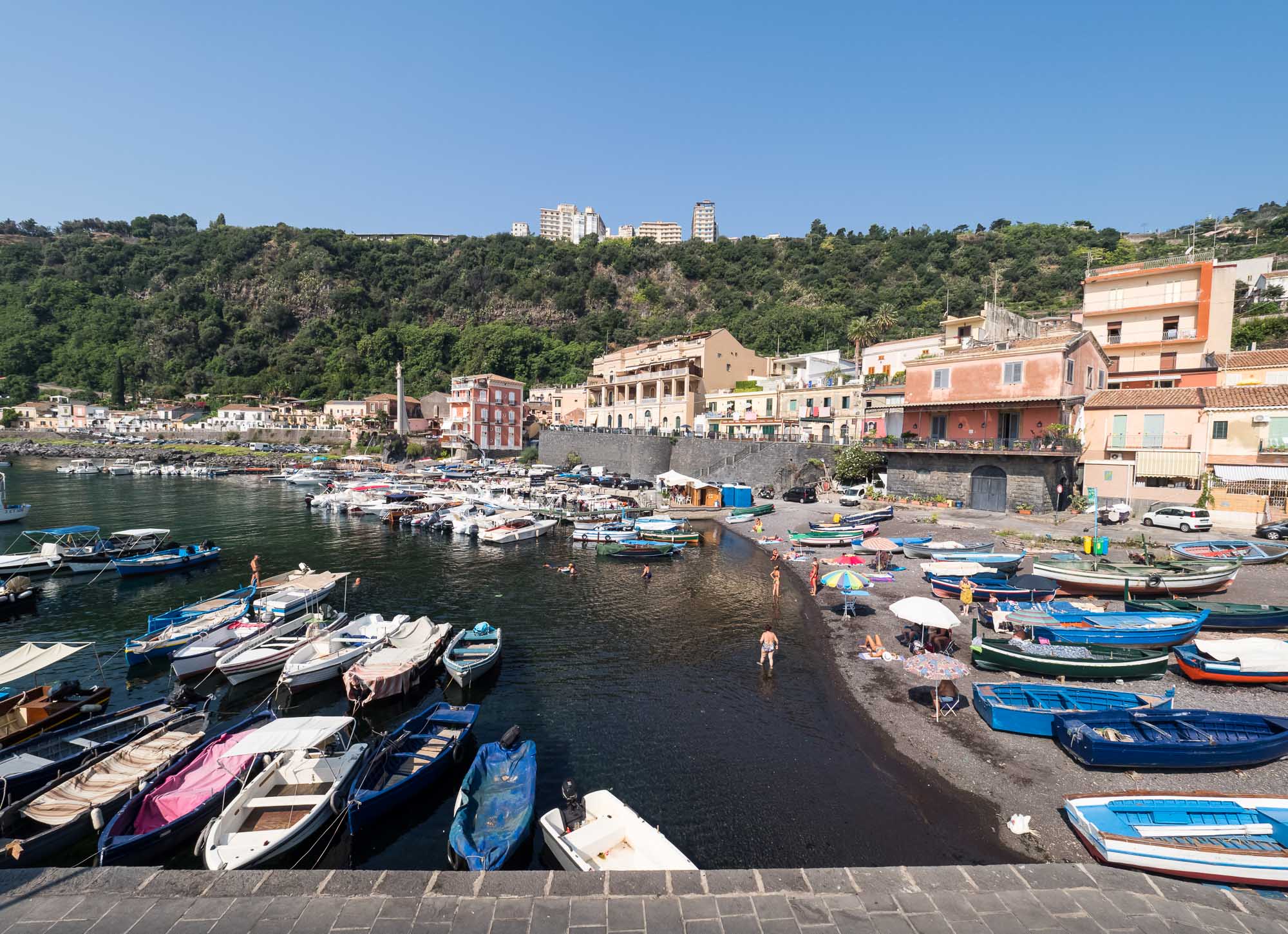
Coastal Views
The town of Santa Maria La Scala lies at the foot of the cliffs on which Acireale sits.
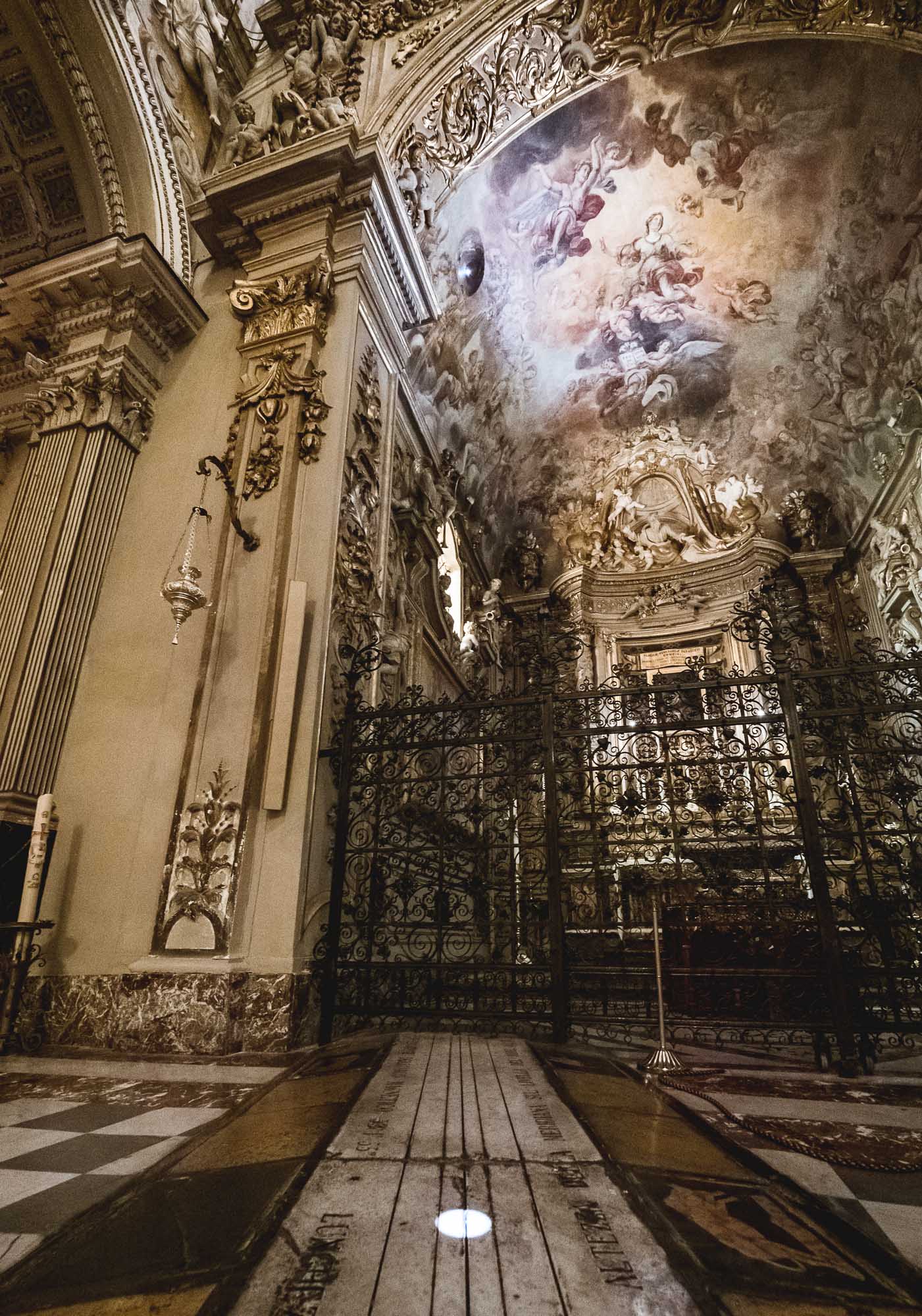
Meridian
In the Cathedral of Maria Santissima Annunziata is a meridian noon mark designed and built in 1843 by the Danish astronomer Frederik Christian Peters, which I was lucky enough to observe at the exact time it was meant to illustrate.
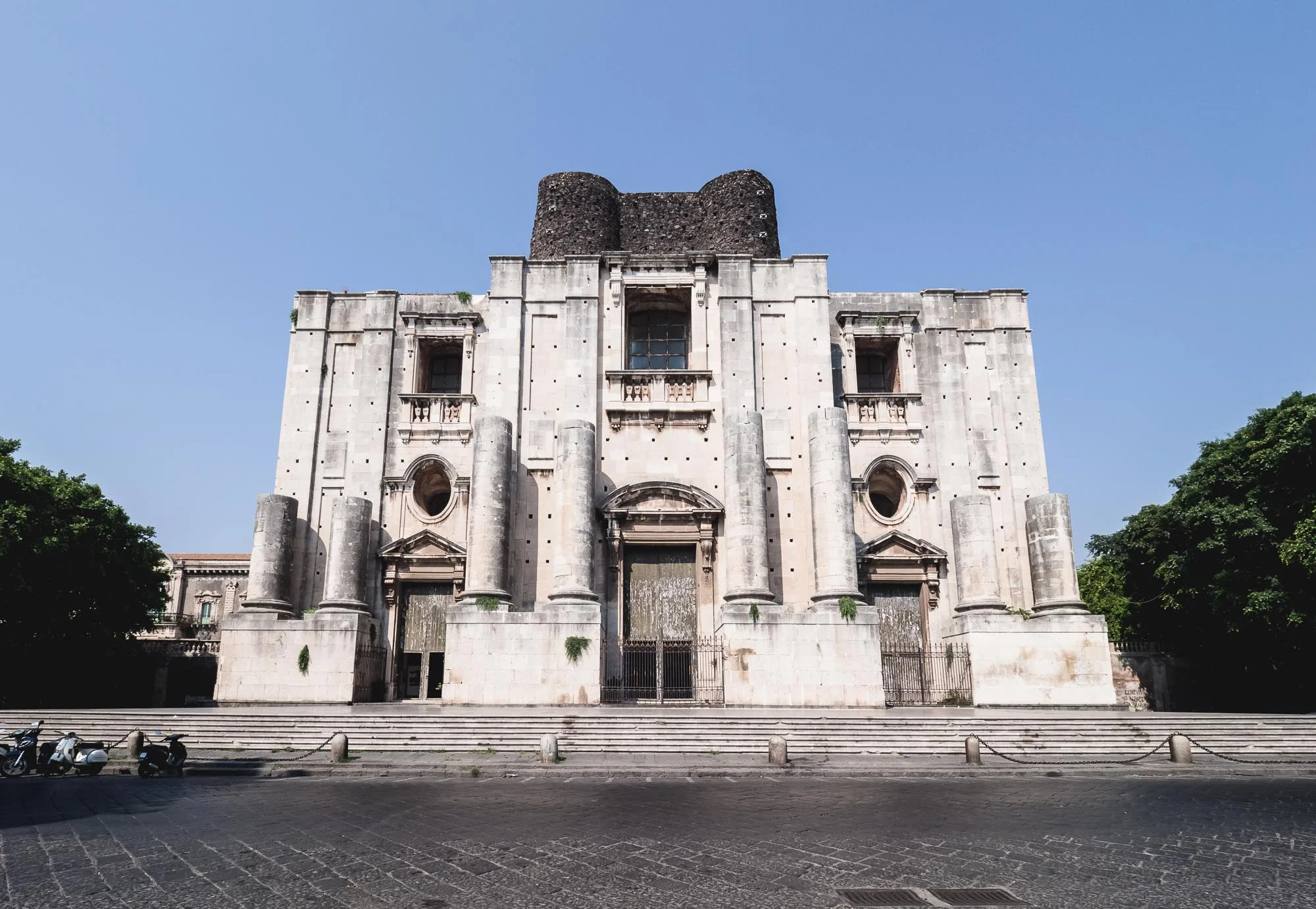
The Unfinished Church of San Nicol
Just attached to the Monastero dei Benedettini di San Nicolò l'Arena.
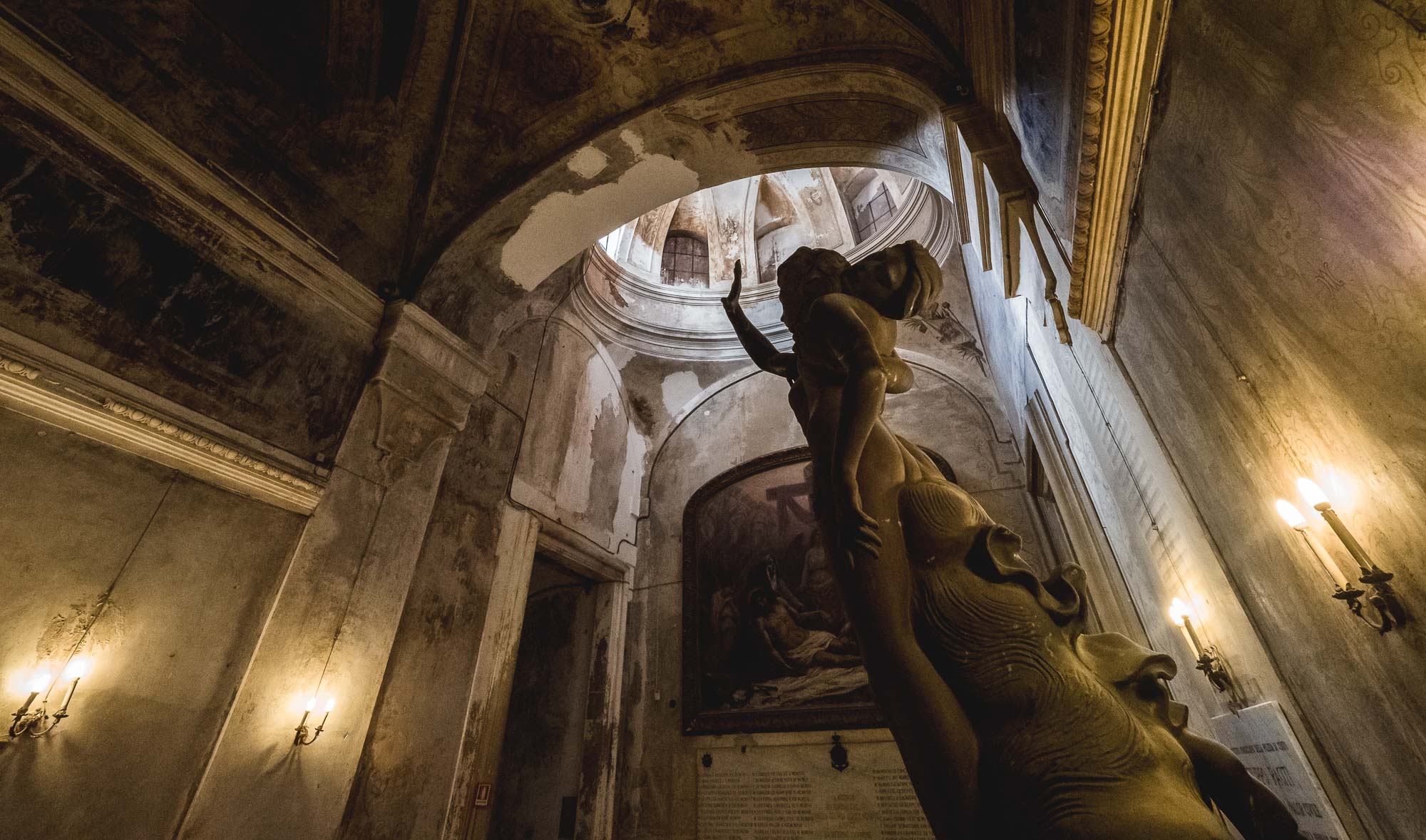
Raw
The church feels as raw on the inside as it does from the outside.

Entrance
The staircases for the monastery may as well be host to a Harry Potter movie.

No Passage
Some doors are closed more permanently than others.

Courtyard
The monastery is one of the largest monasteries in Europe and a UNESCO World Heritage Site, but today houses the Department of Humanities of the University of Catania

Bridge
The bridge acting as entrance into the monastery from the back is one of the oldest parts of the building, with lava remains from the 1669 eruption that destroyed a big part of the complex still visible on the left side.
Lebanon - Crossroads of Cultures
In July 2019, a wedding of one my best friends gave me the chance to visit another country in the Middle East: Lebanon. The history of the country and its natural setting result in a truly diversified experience. Assyrian, Hellenistic, Roman, Phoenician, Persian influences are evident throughout the country, which features everything from beaches, green mountains, nightlife, skiing in the winter, and some of the most impressive ancient sites in the world.
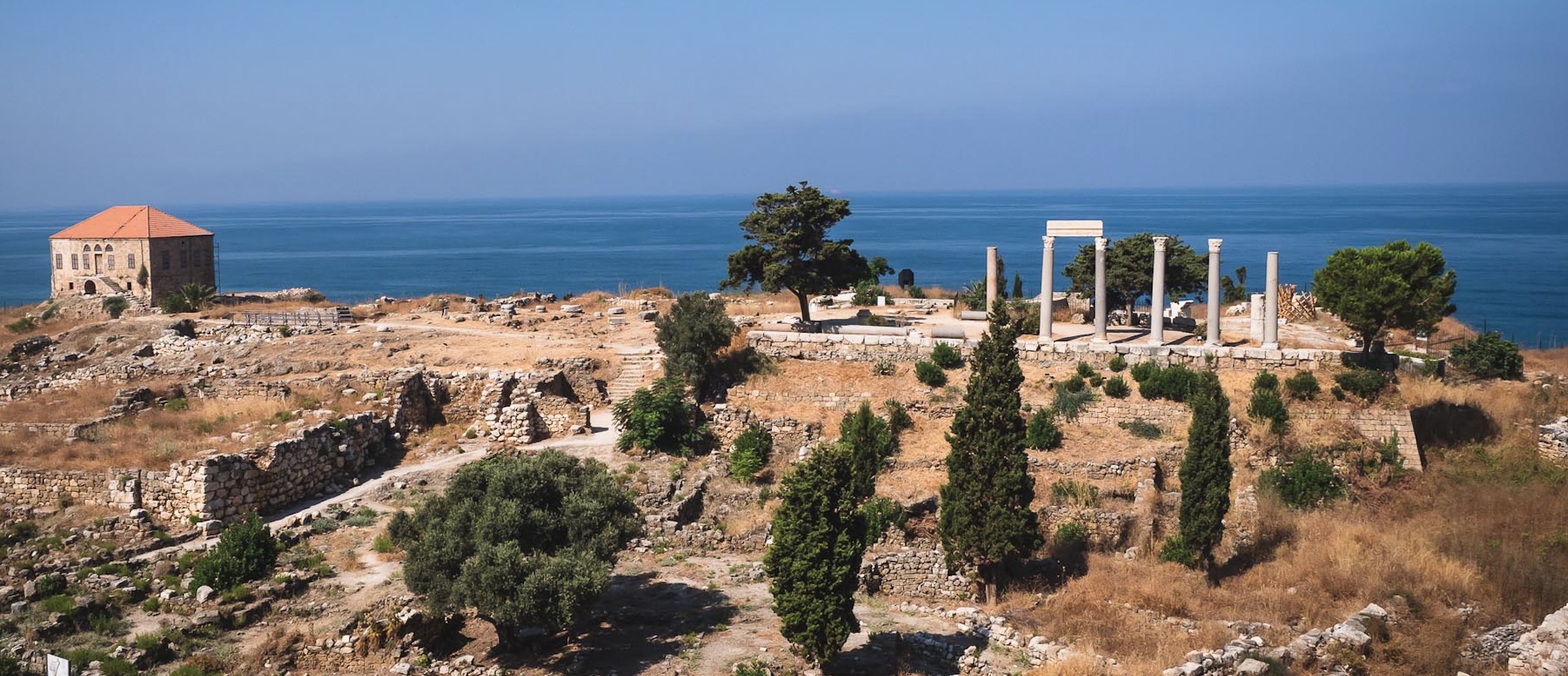
In July 2019 a wedding of one my best friends gave me the chance to visit another place in the Middle East: Lebanon. The history of the country and its natural setting result in a truly diversified experience. Assyrian, Hellenistic, Roman, Phoenician, Persian influences are evident throughout the country, which features everything from beaches, green mountains, nightlife, skiing in the winter, and some of the most impressive ancient sites in the world. While there is work to do to improve the traffic situation and general conditions of its major attractions, and the political situation remains challenging, it’s absolutely worth a visit (or two). During the 5 days, I visited Byblos, Harissa, the Jeita Grotto, Baalbek and explored parts of Beirut. Oh, and even passed by the Casino du Liban, once my mum told me my late grandfather and uncle had been there in the 1970s.
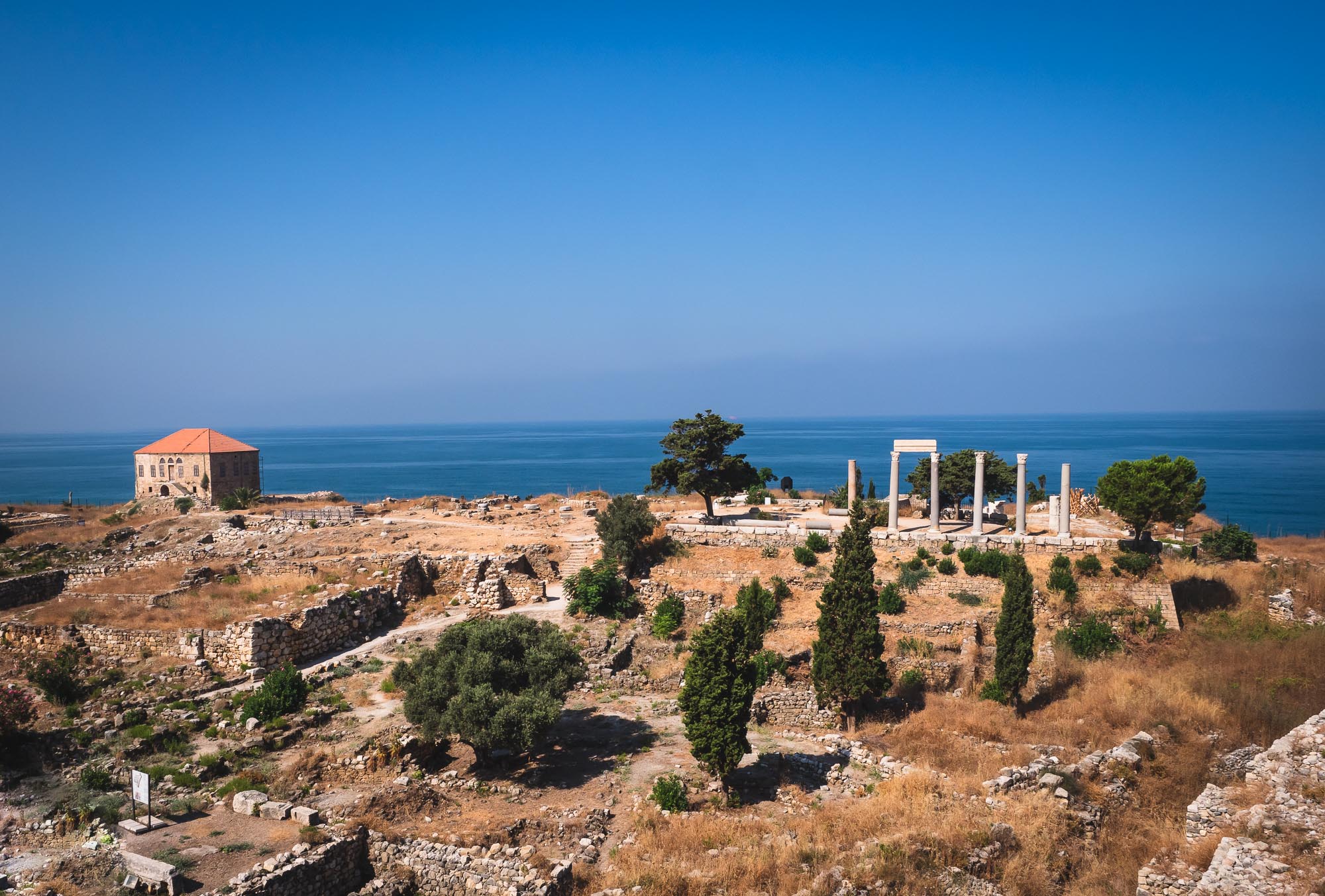
Contrasts
The traditional Lebanese house overlooking the Mediterranean sea is situated just next to the ruins of the Byblos castle area.
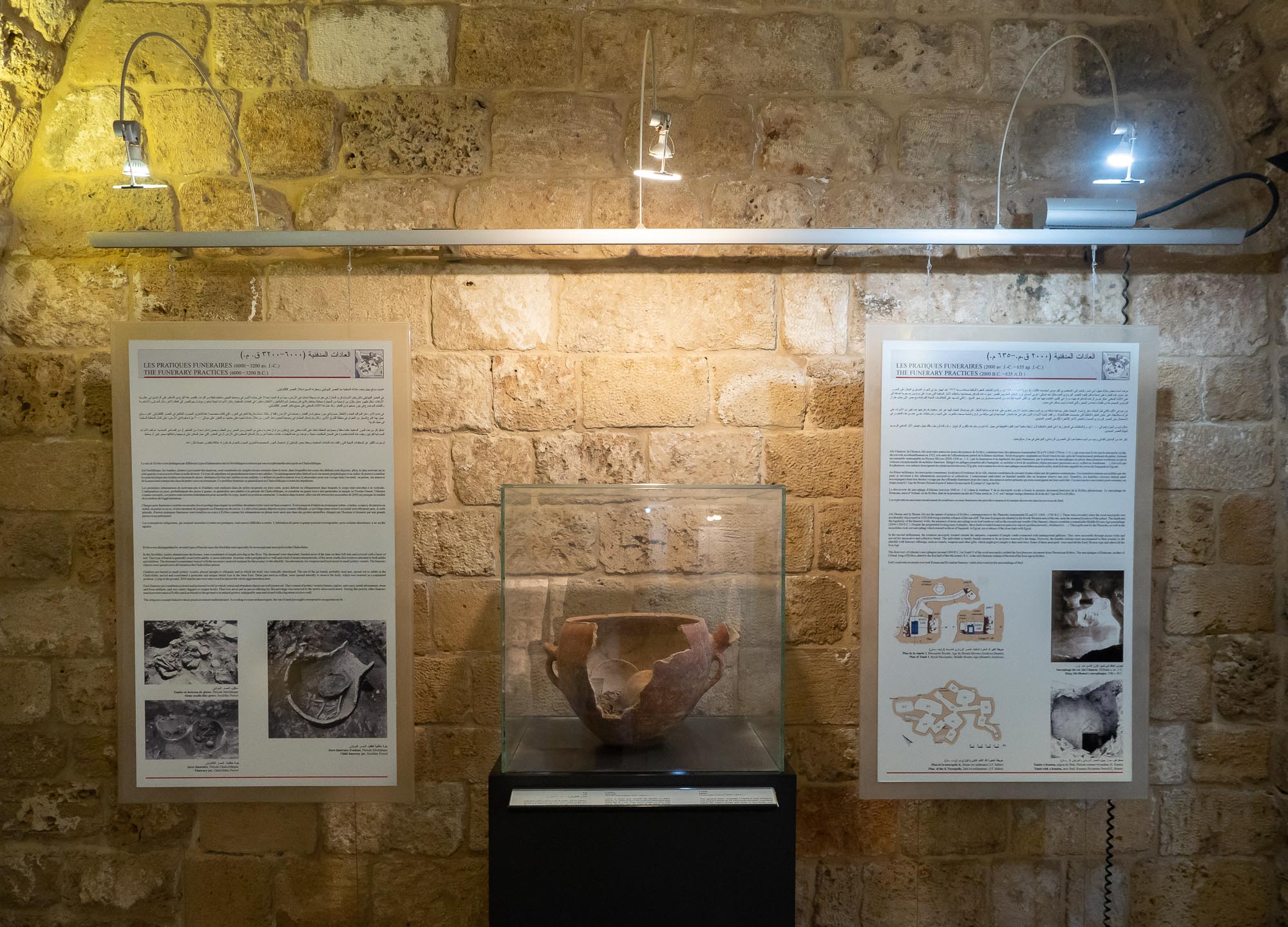
Artifacts
The museum in the castle features ornaments going back more than 5000 years. Byblos was first occupied in 7-8000 BC, and continuously inhabited since 5000 BC, making it one of the oldest continuously inhabited cities in the world.
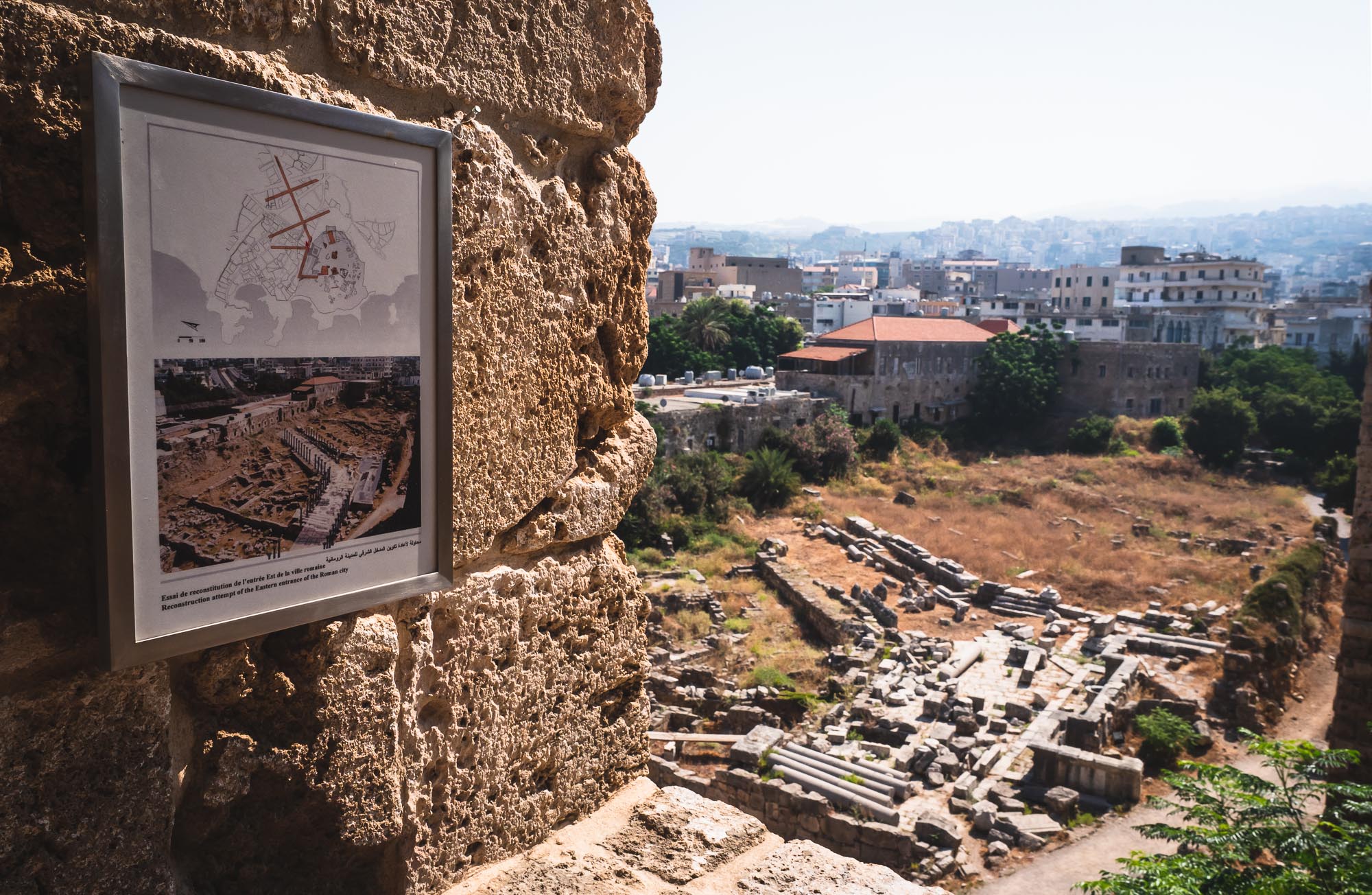
Ruins of the Roman City
The rendering on the left shows the eastern entrance to the Roman city, while the real ruins are currently undergoing reconstruction.
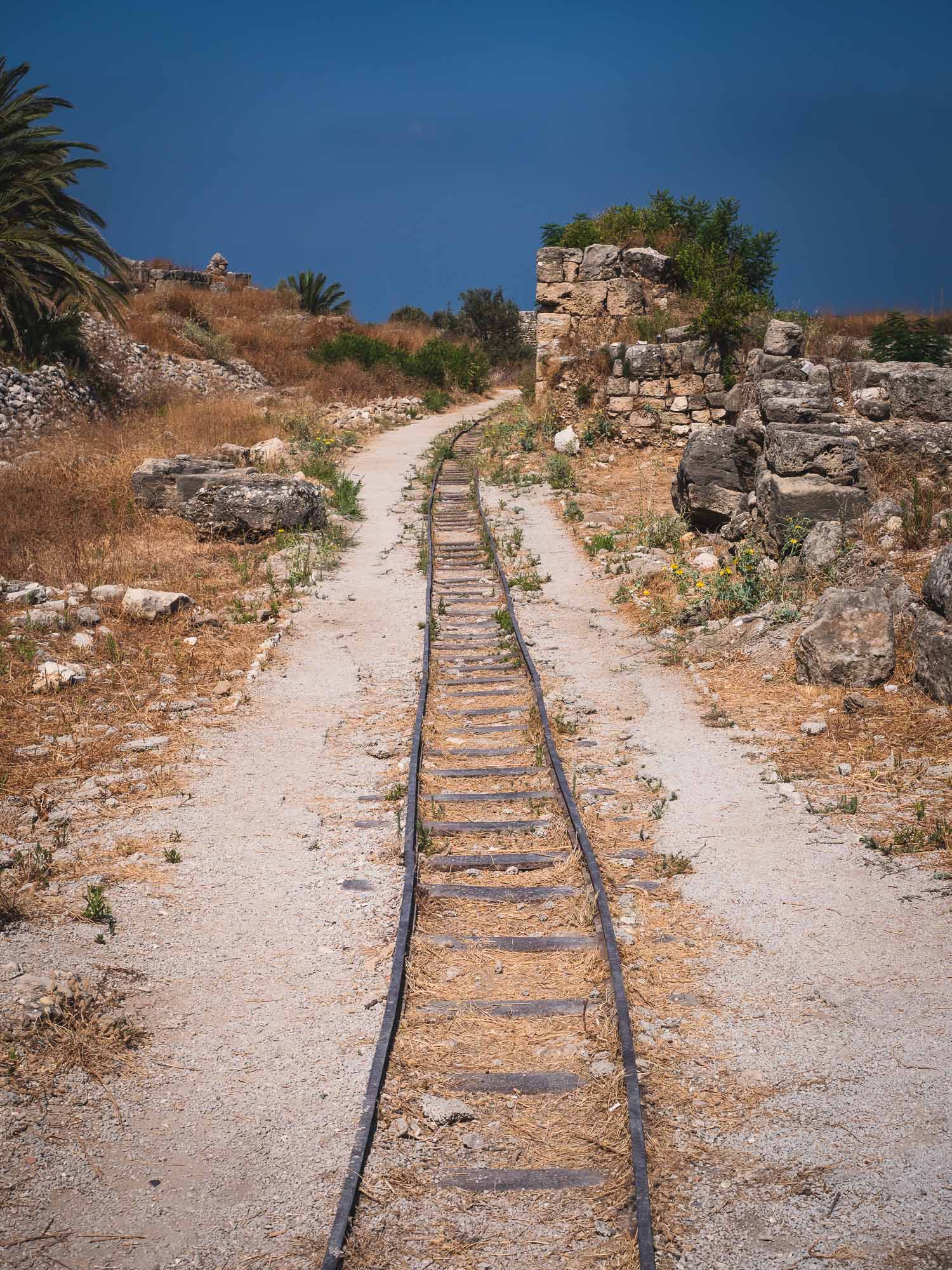
Trains
These tracks inside the castle district have not been used in a while - my guess is they were laid to transport stones and rocks during the excavations.
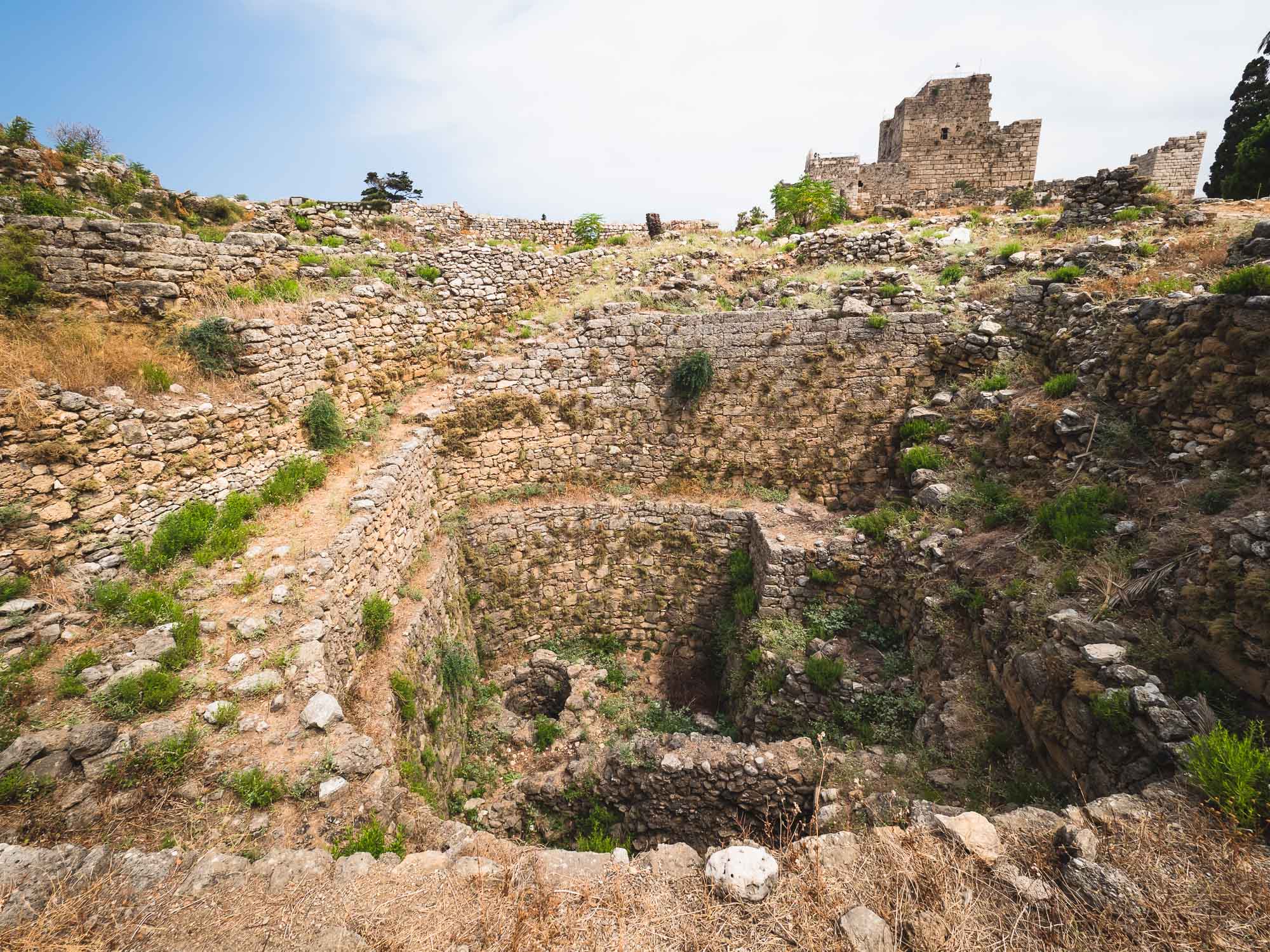
The King's Spring
Once the source of water for the city.
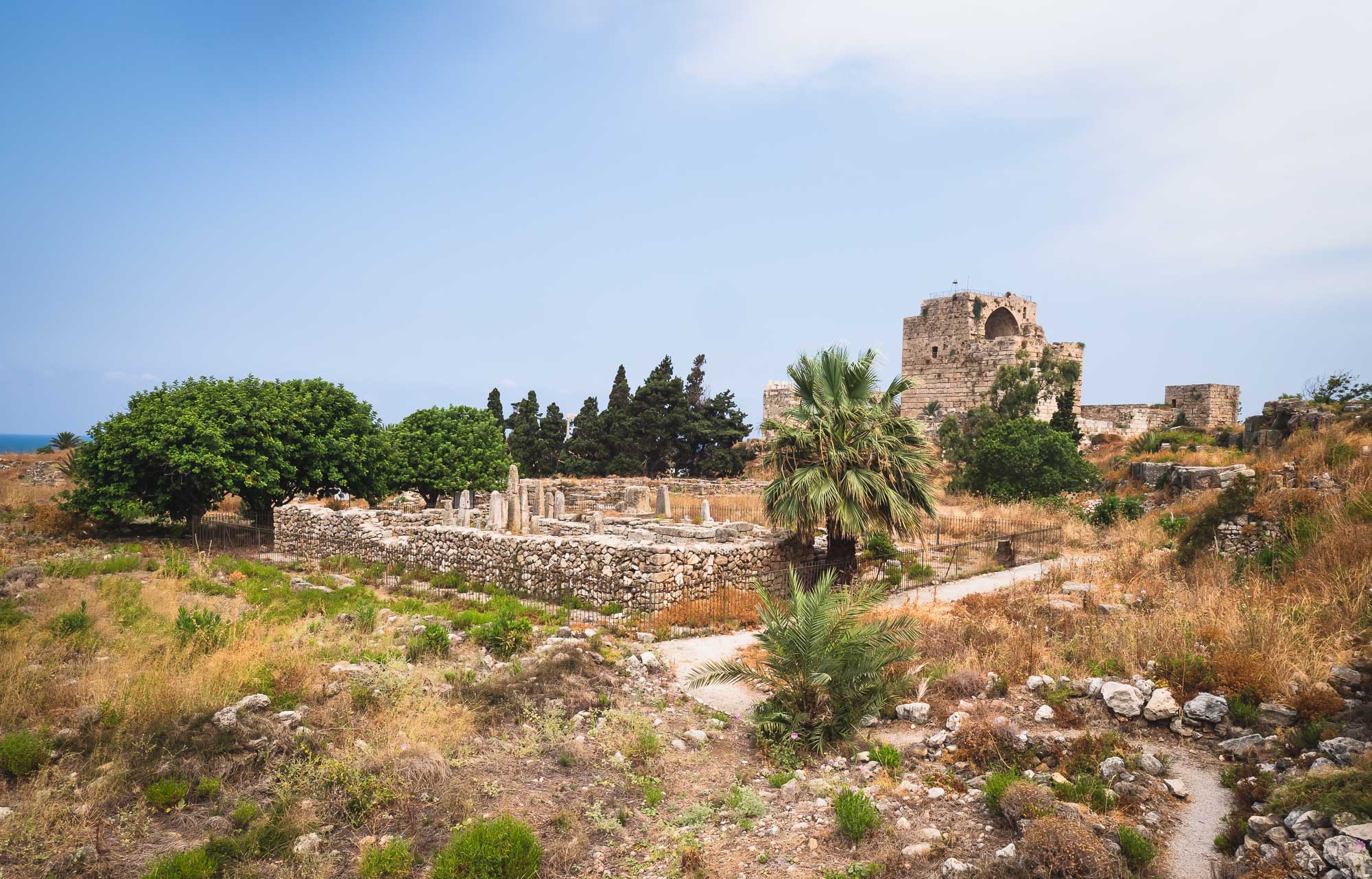
Temple of the Obelisks
Built over 3000 years ago, it was used for religious offerings.
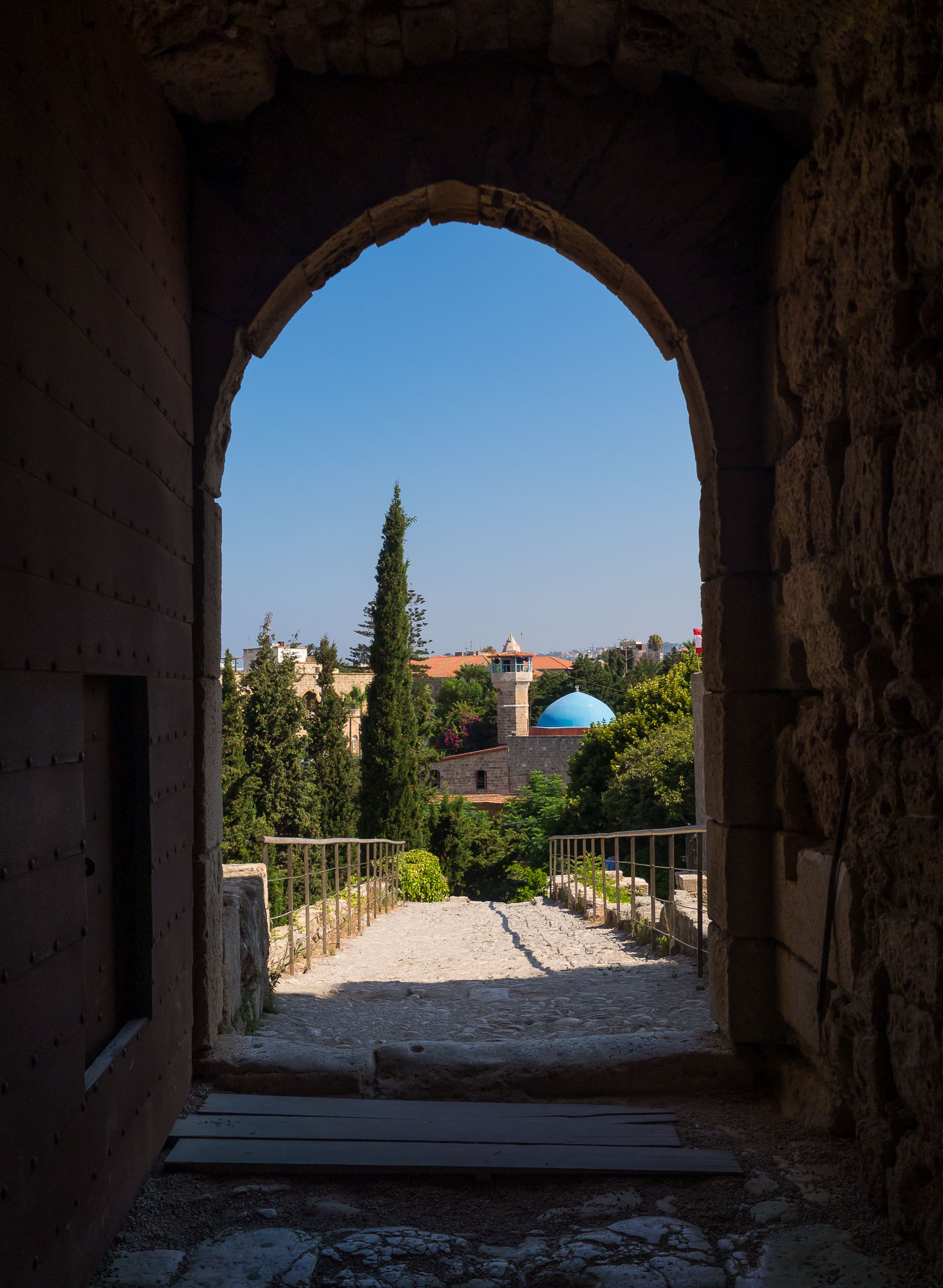
Entrance
Looking towards the Sultan Abdul Majid Mosque, built in the 1600s, at the exit of the Old Souk from the castle.
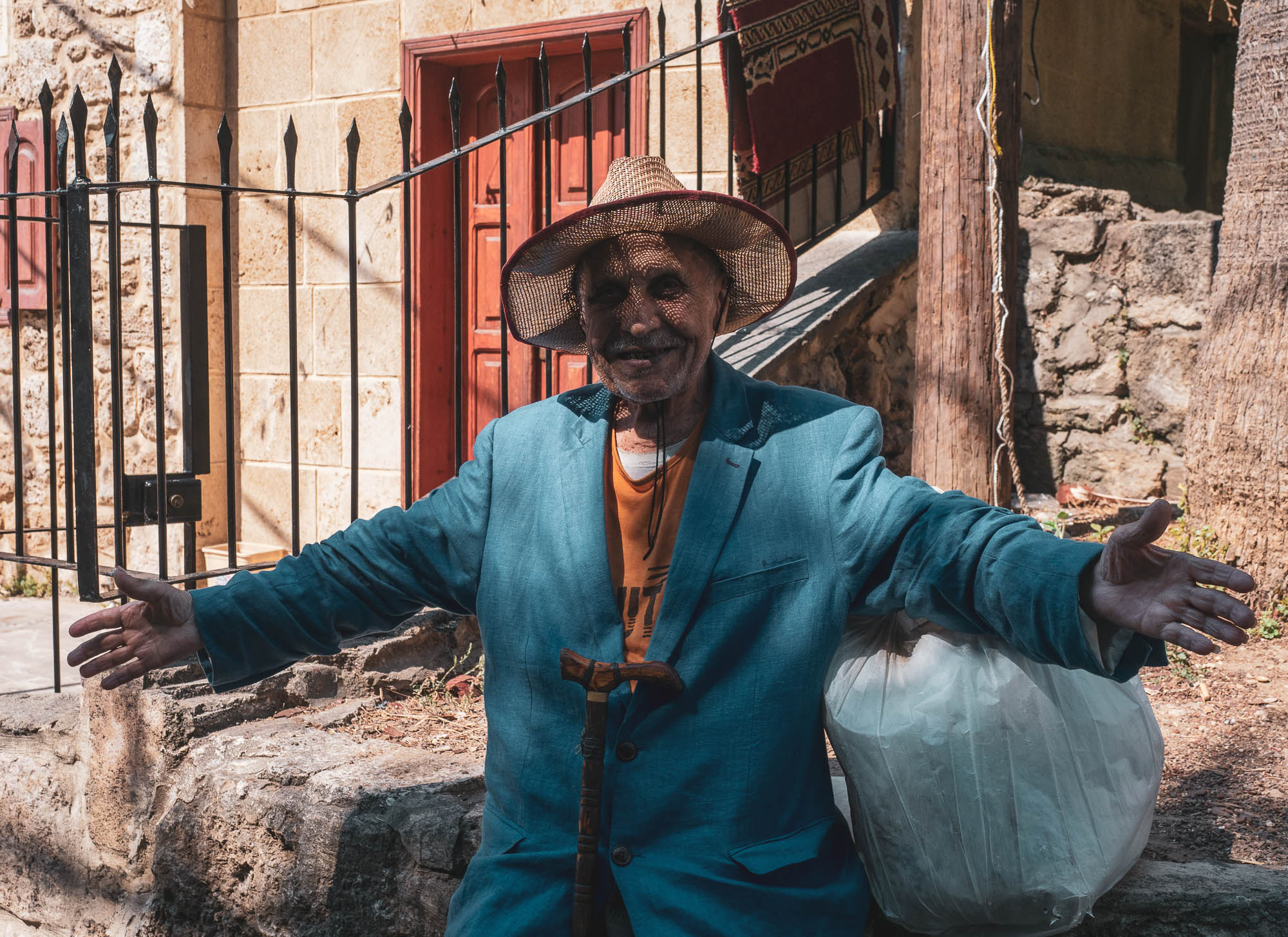
Open Arms
A local man was happy to have his photo taken.
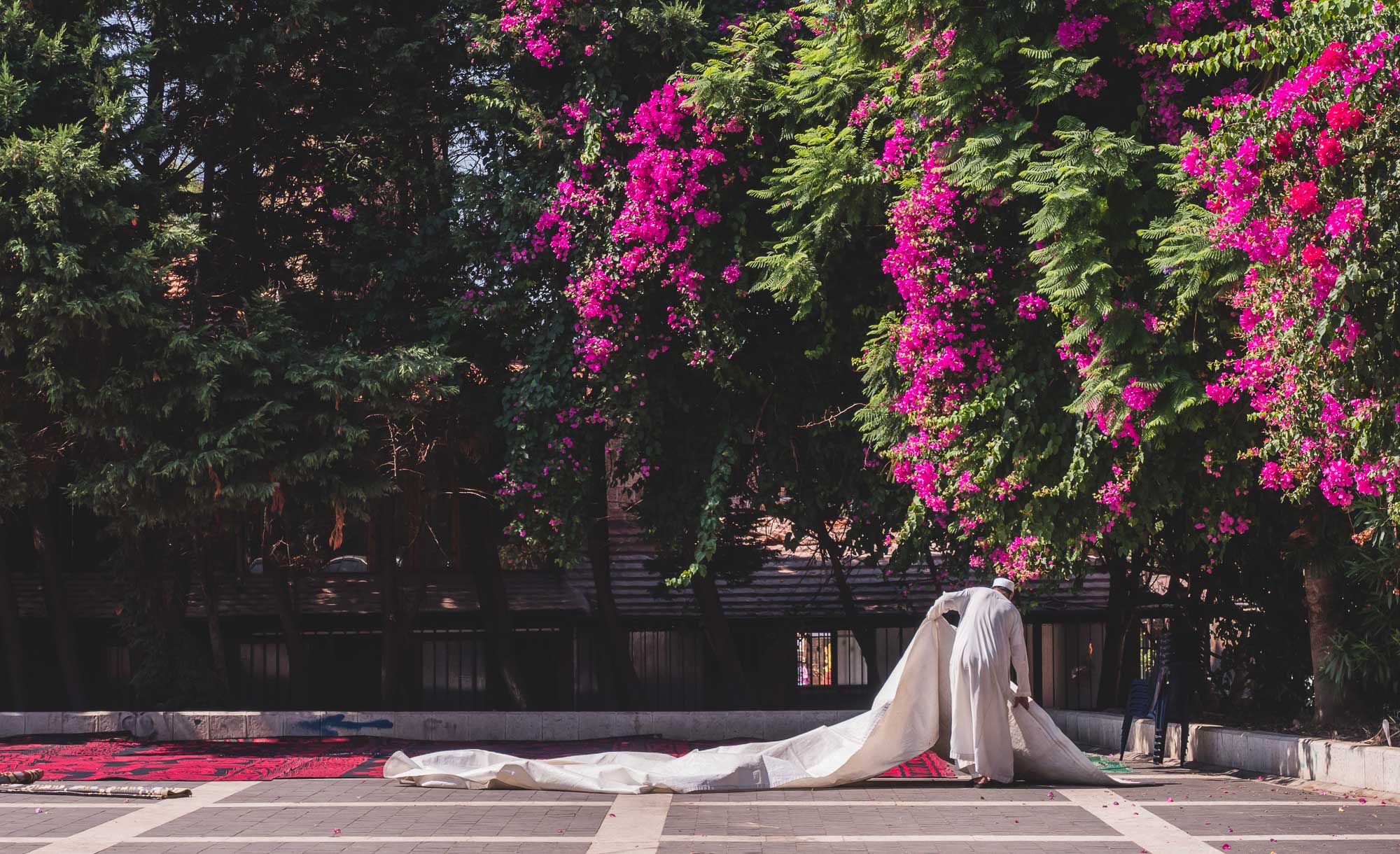
Preparations
A man - possibly the local Imam - preparing the area in front of the mosque for the Friday prayer.

St John the Baptist Church
The church was originally built during the crusades in the 1100s.

Interior
It isn't always open, but I was lucky to catch a glimpse at the sparse but imposing interior.
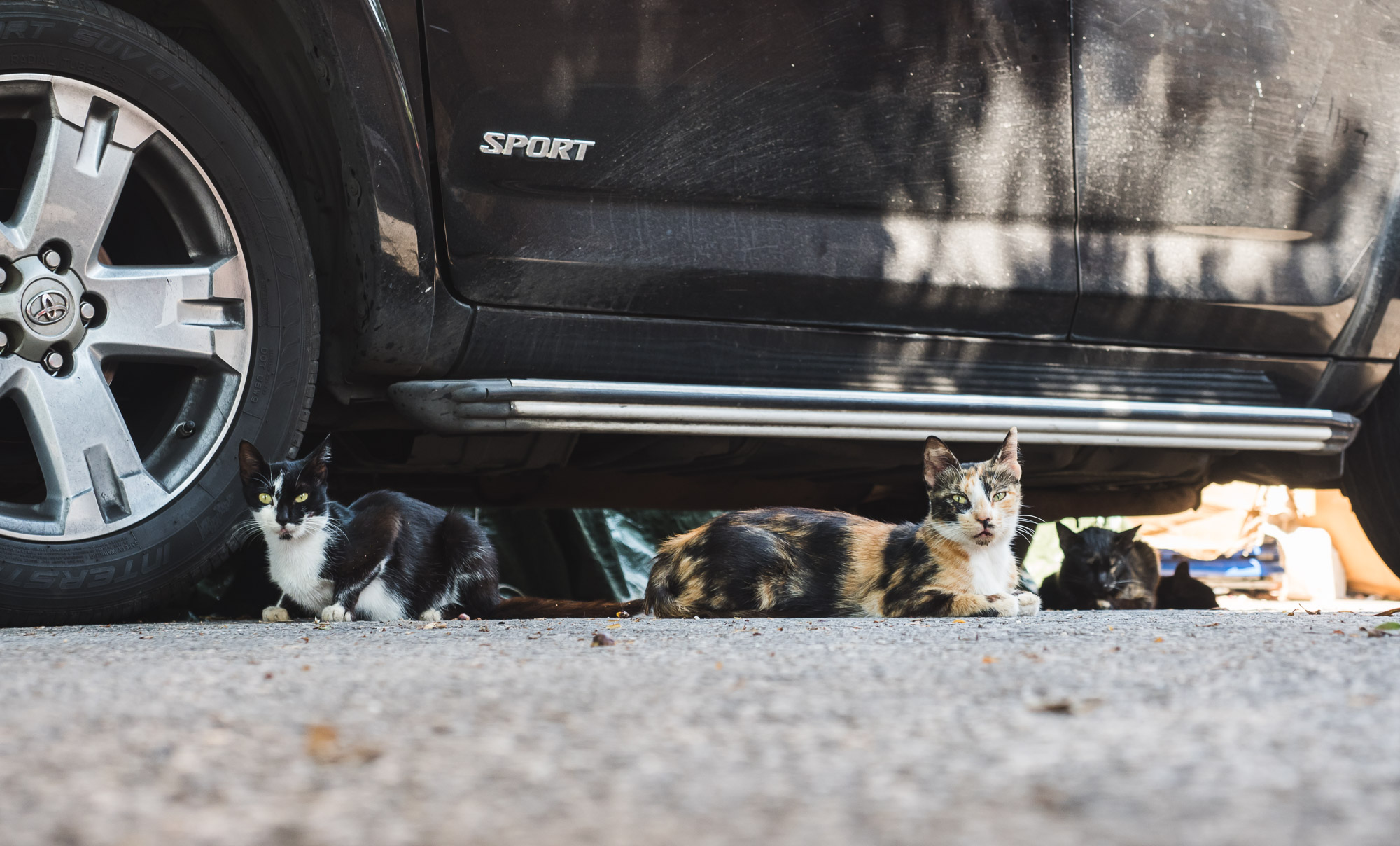
The Squad
Obligatory cat photo.
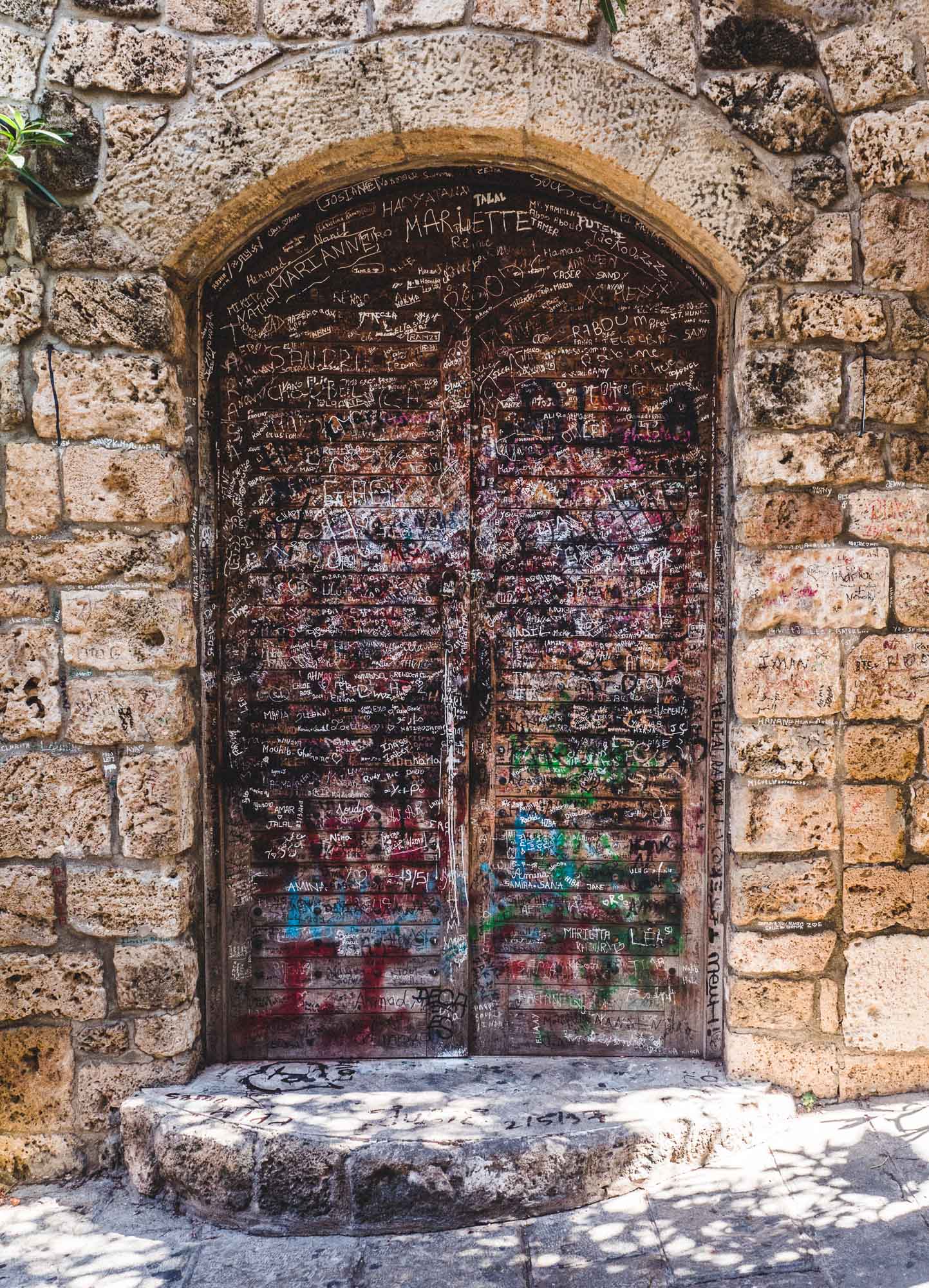
Messages
A door in the historic city quarters of Byblos.
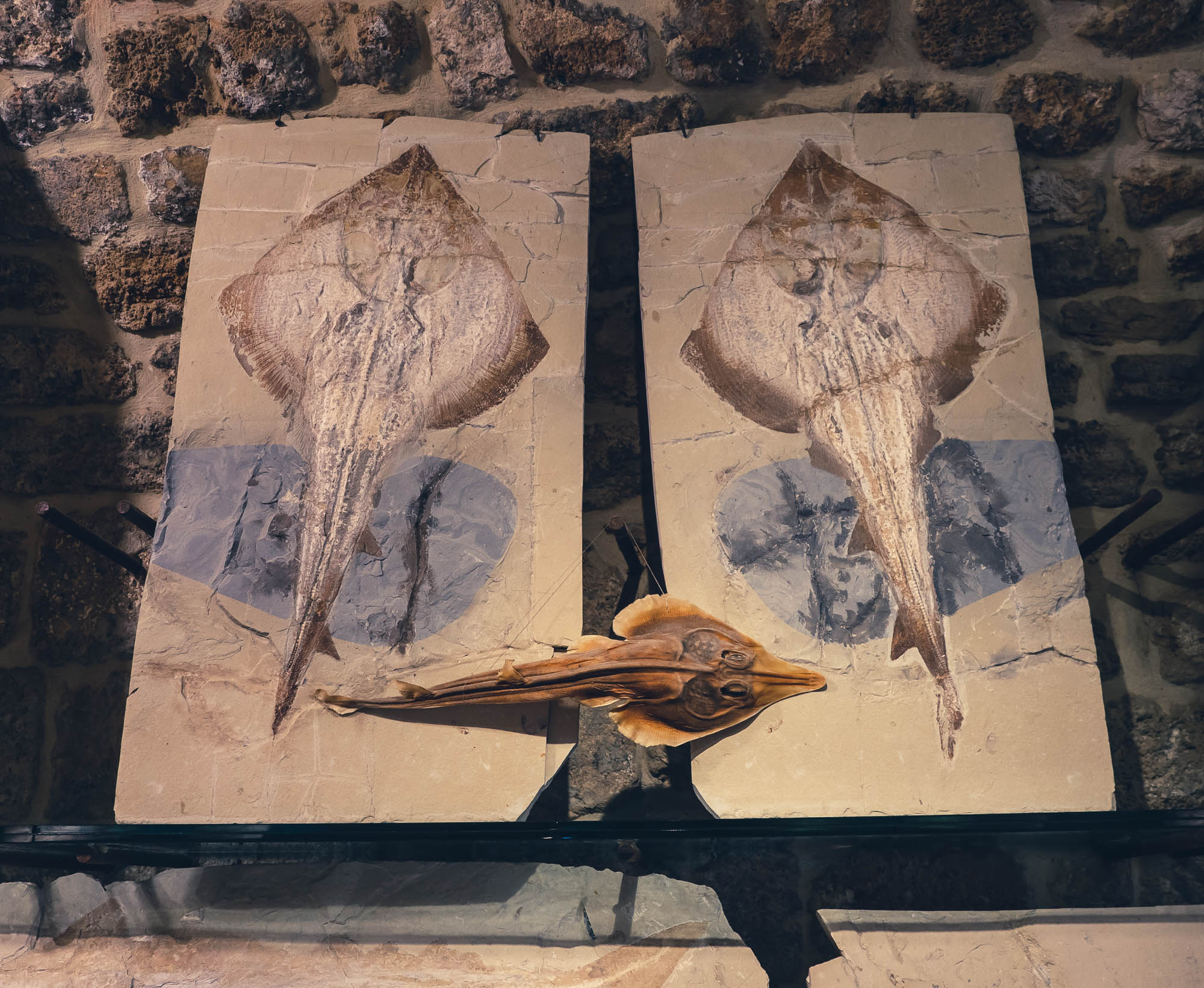
The Fossil Museum
The Lebanese mountains are home to many fossils from up to 100 million years ago, some of which are on display and even for sale in the local museum.
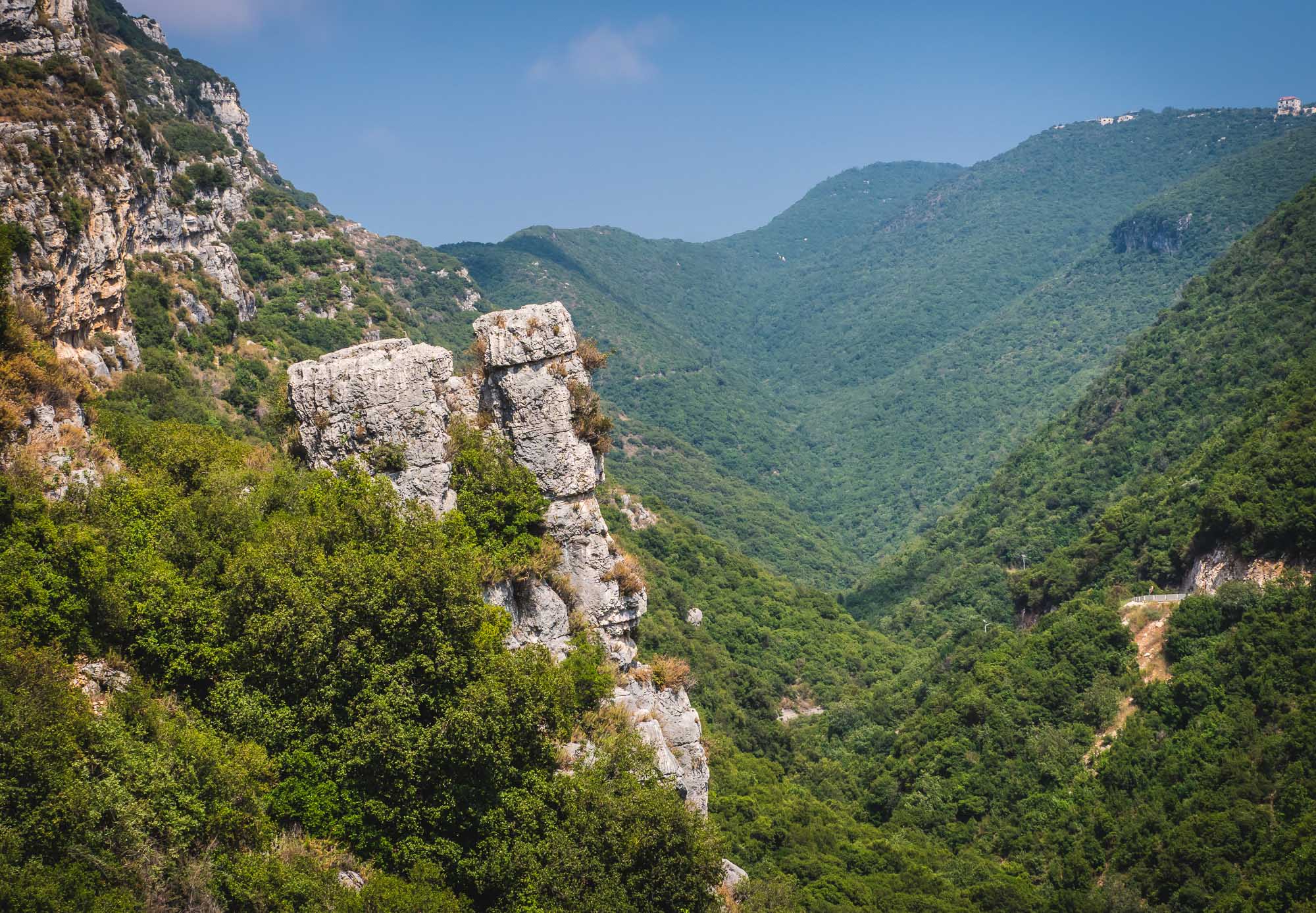
Hiking Trip
I took a few hours to explore the Lebanese mountain ranges, here in the Bentael Nature Reserve.

Greenery
The mountains of Lebanon are home to a wide range of Flora.
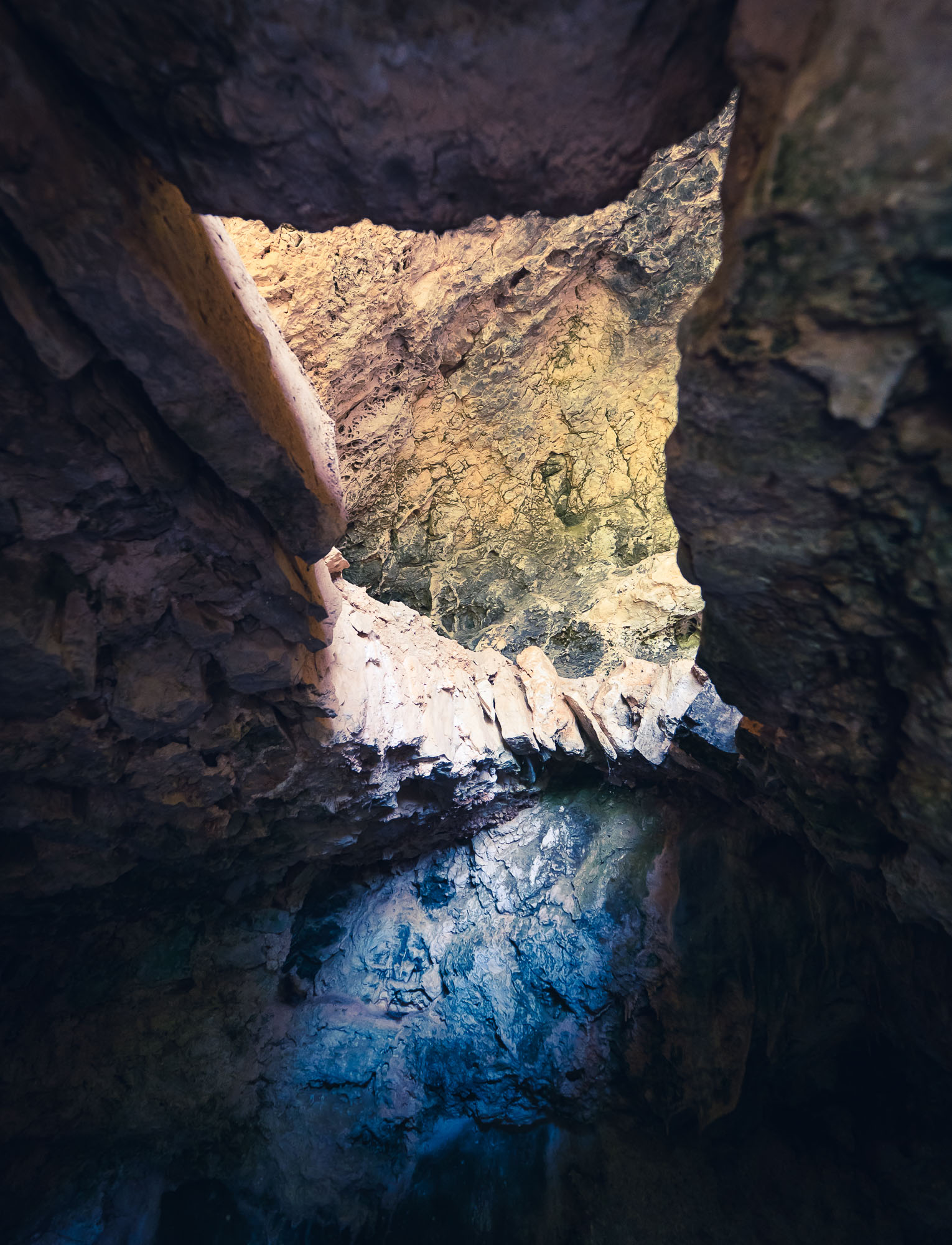
St. John’s Chapel
Inside the reserve, you can find this hidden 12th century chapel cut into the rock. This is one of the three caves.

Up
Another one is not reachable by foot, and most likely was used only for shelter.

Beaches
The coast to the south of Byblos.

Byblos Old Souk
At night, the old souk in Byblos turns into a street of bars and entertainment. (Taken on iPhone XS)

Wedding Fun
The primary reason for my visit? The wedding of these two amazing people. NB: Lebanese weddings are crazy.

Historic Quarters
Much of the central part of the city is now filled with restaurants and courtyards.

Bay Views
Moving southwards to Jounieh, and the view from the Harissa mountain area.

Notre Dame du Liban
The statue is a Marian shrine & pilgrimage site for Christians & Muslims alike.
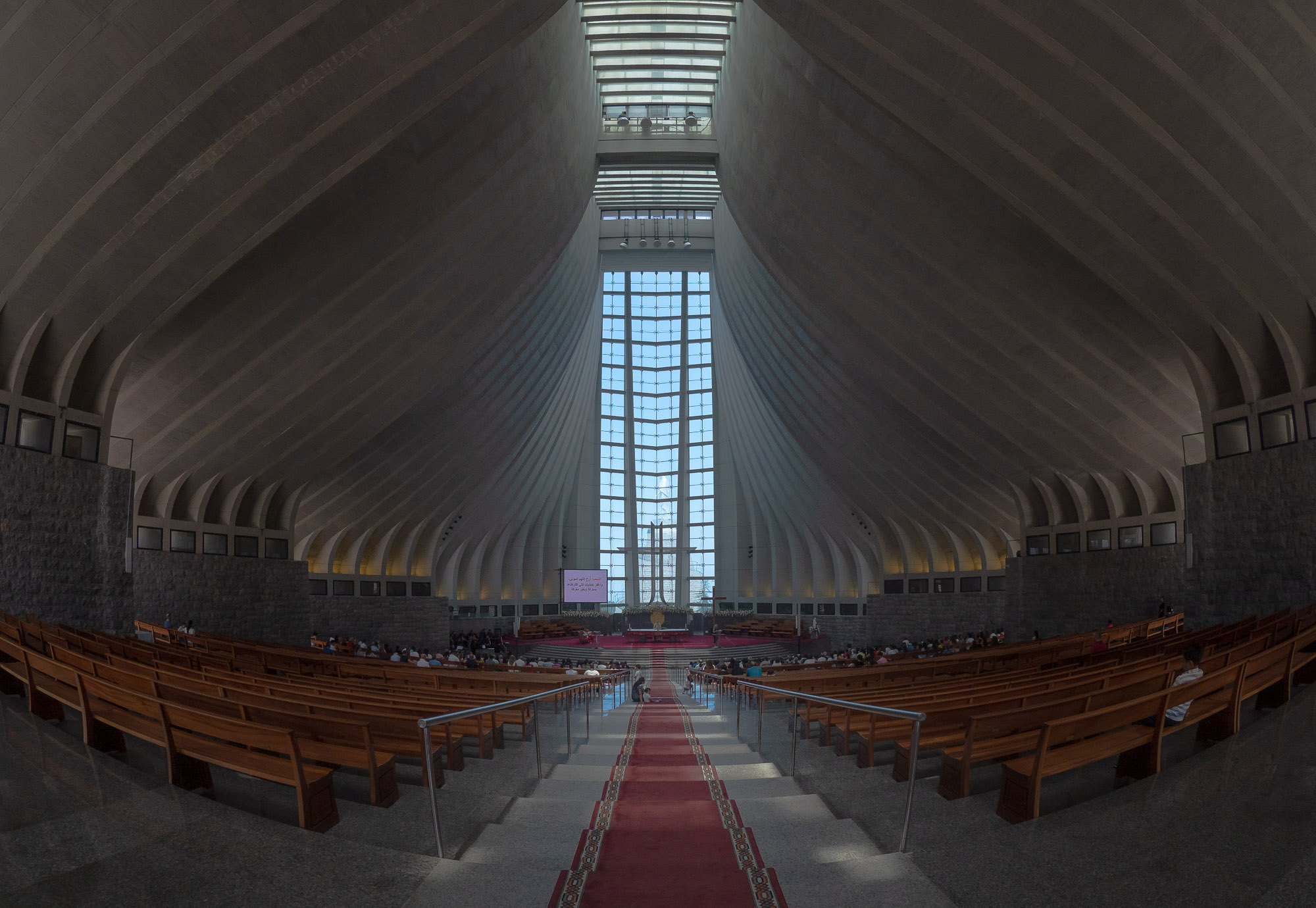
Modern Basilica
The moden cathedral next to the statue has a spare but impressive interior leaning on Brutalist architecture.
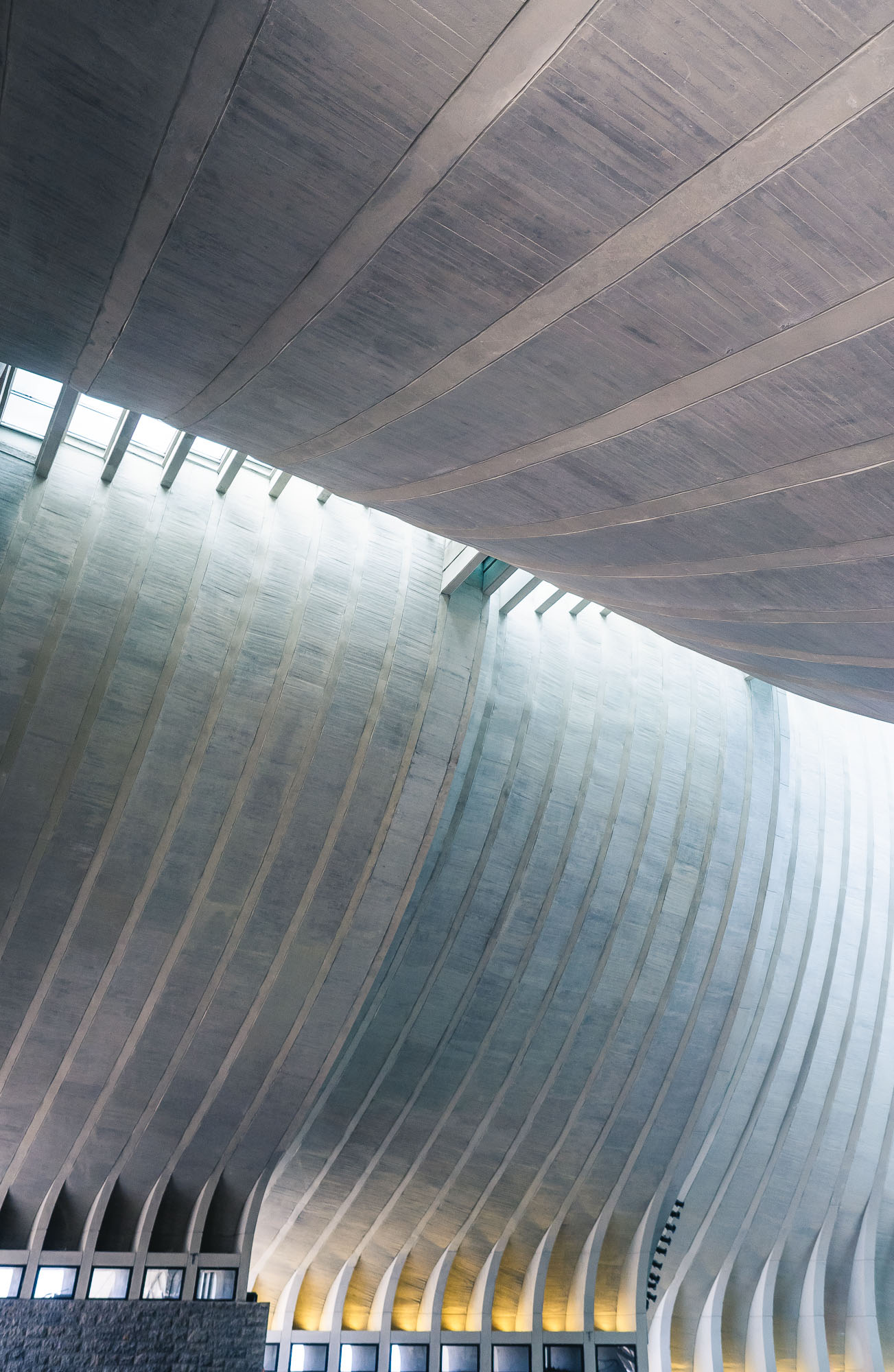
Echo
It produces amazing acoustics - I was lucky enough to hear a choir while visiting.
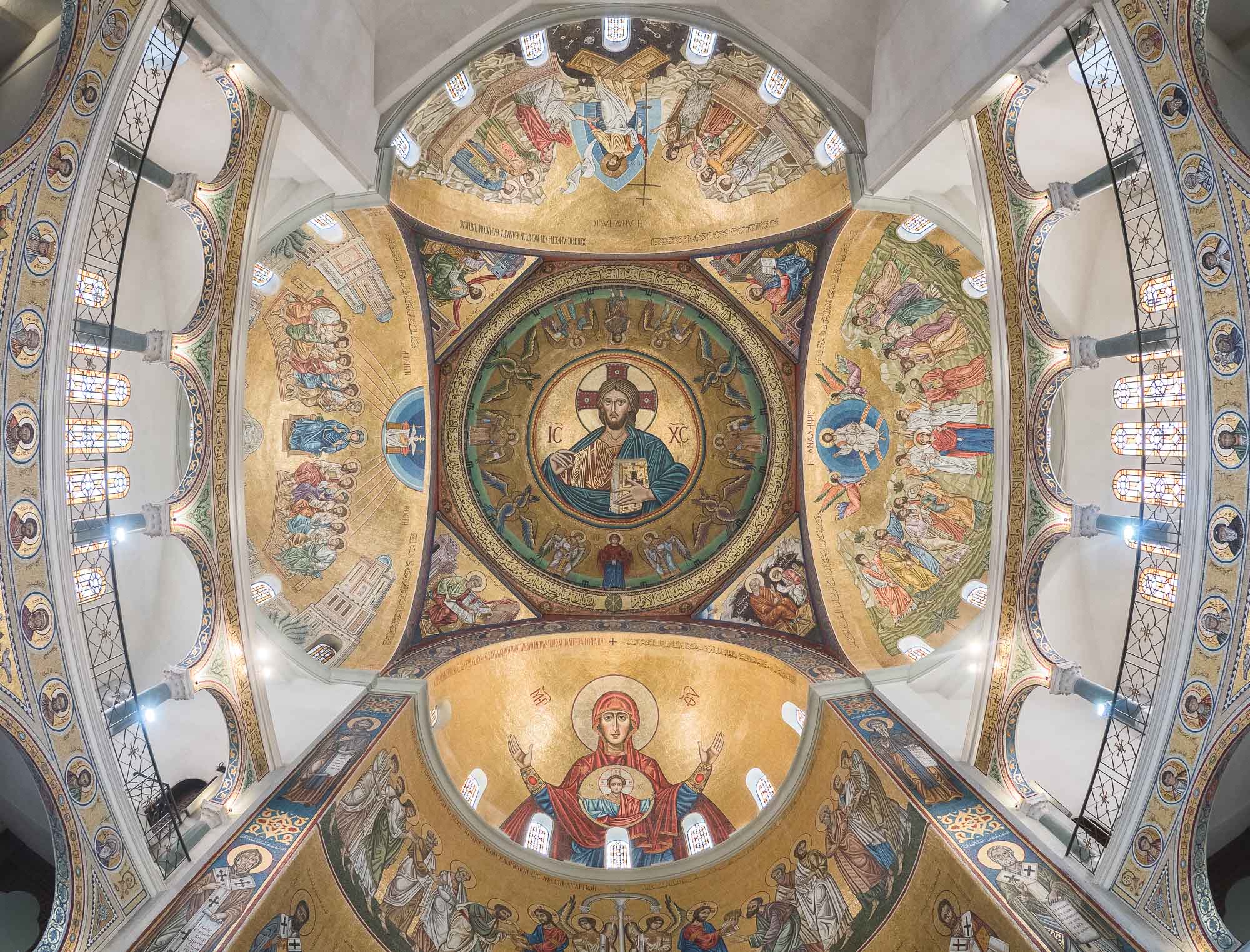
Basilica of Saint Paul
Just a few hundred metres away is the Basilica of Saint Paul, with its impressive mosaic lined walls and roof.
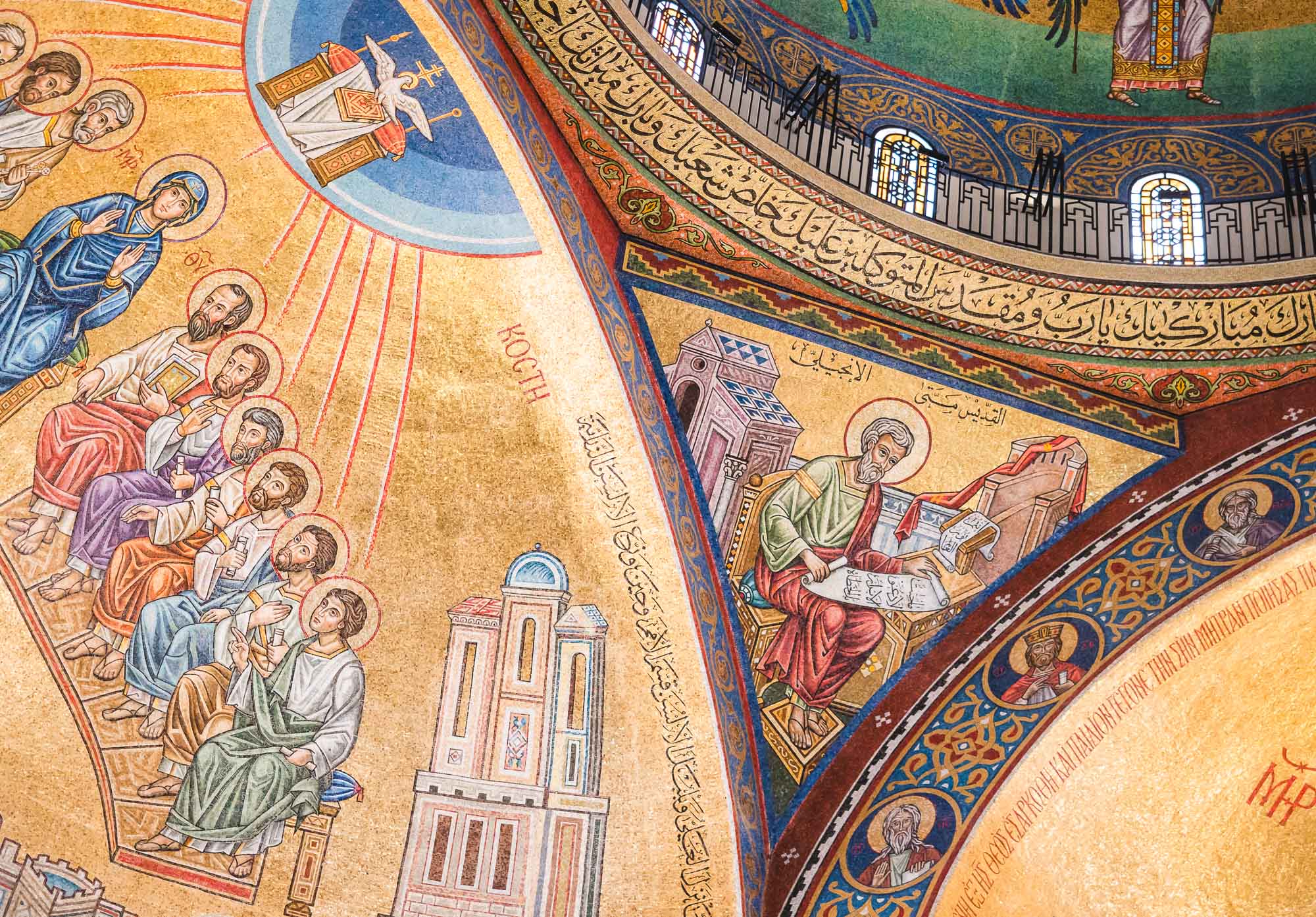
Detail
The decorative features of the illustrations in mosaic are incredible.
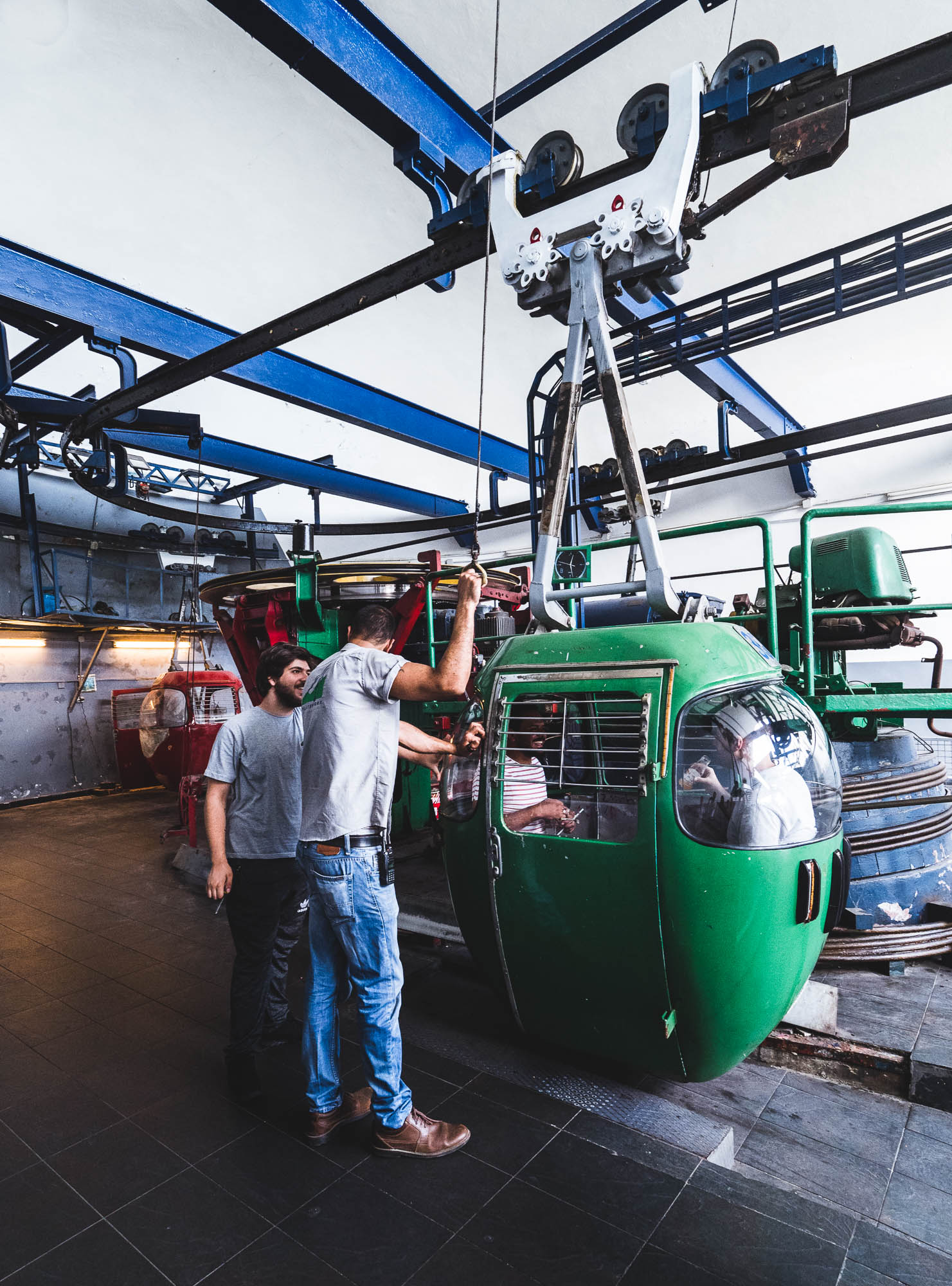
Téléphérique
The gondola lift taking you up and down the mountain. Note the manual release mechanism of the gondolas.
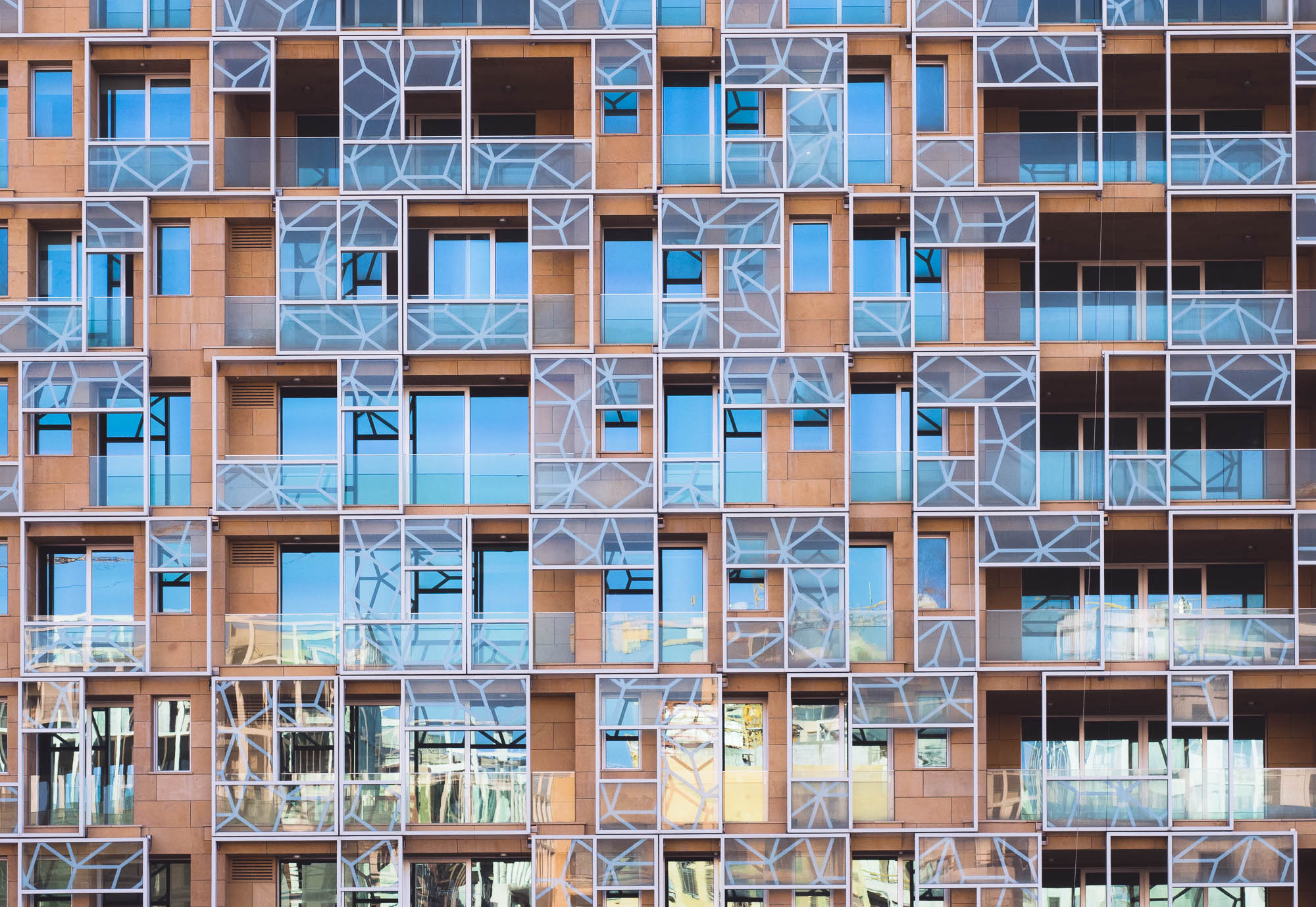
Squares
Beirut offers many interesting architectural details.
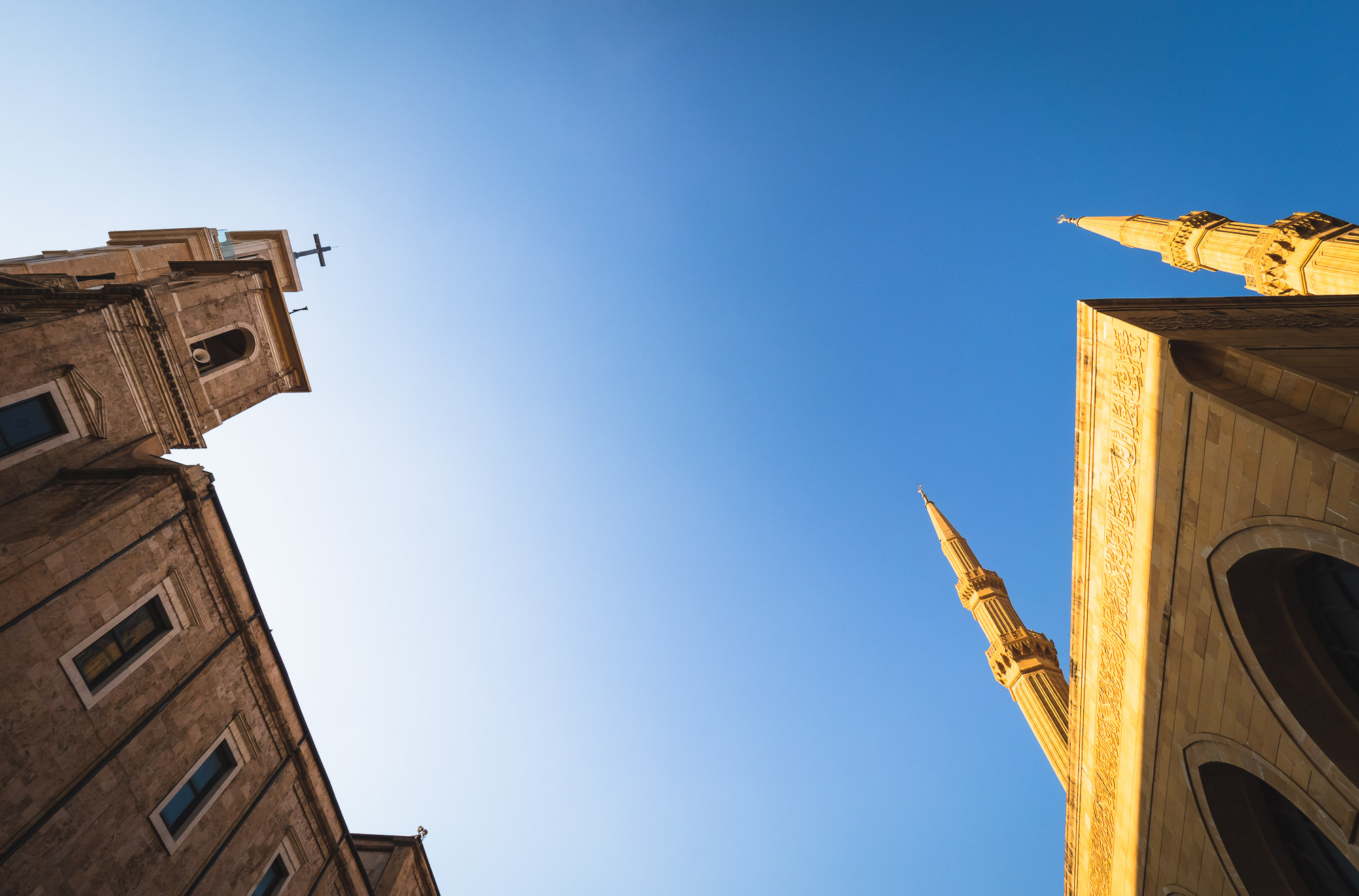
Crossroads
Lebanon's population is more or less half Christian, half Muslim. Churches are built side by side with Mosques.
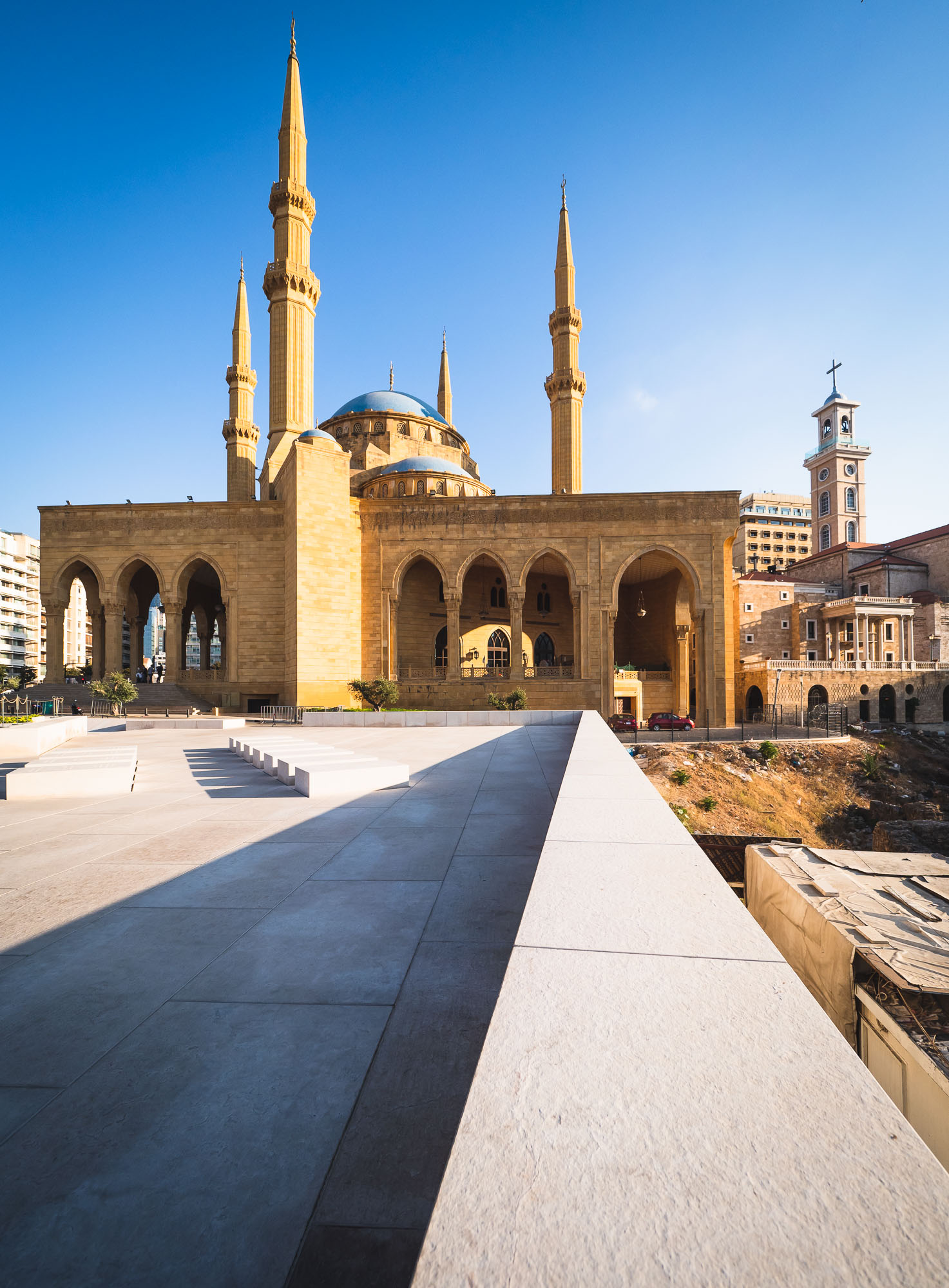
Mohammad Al-Amin Mosque
This modern mosque was built in 2008. During its construction, archeologists discovered Roman ruins just next to the site.
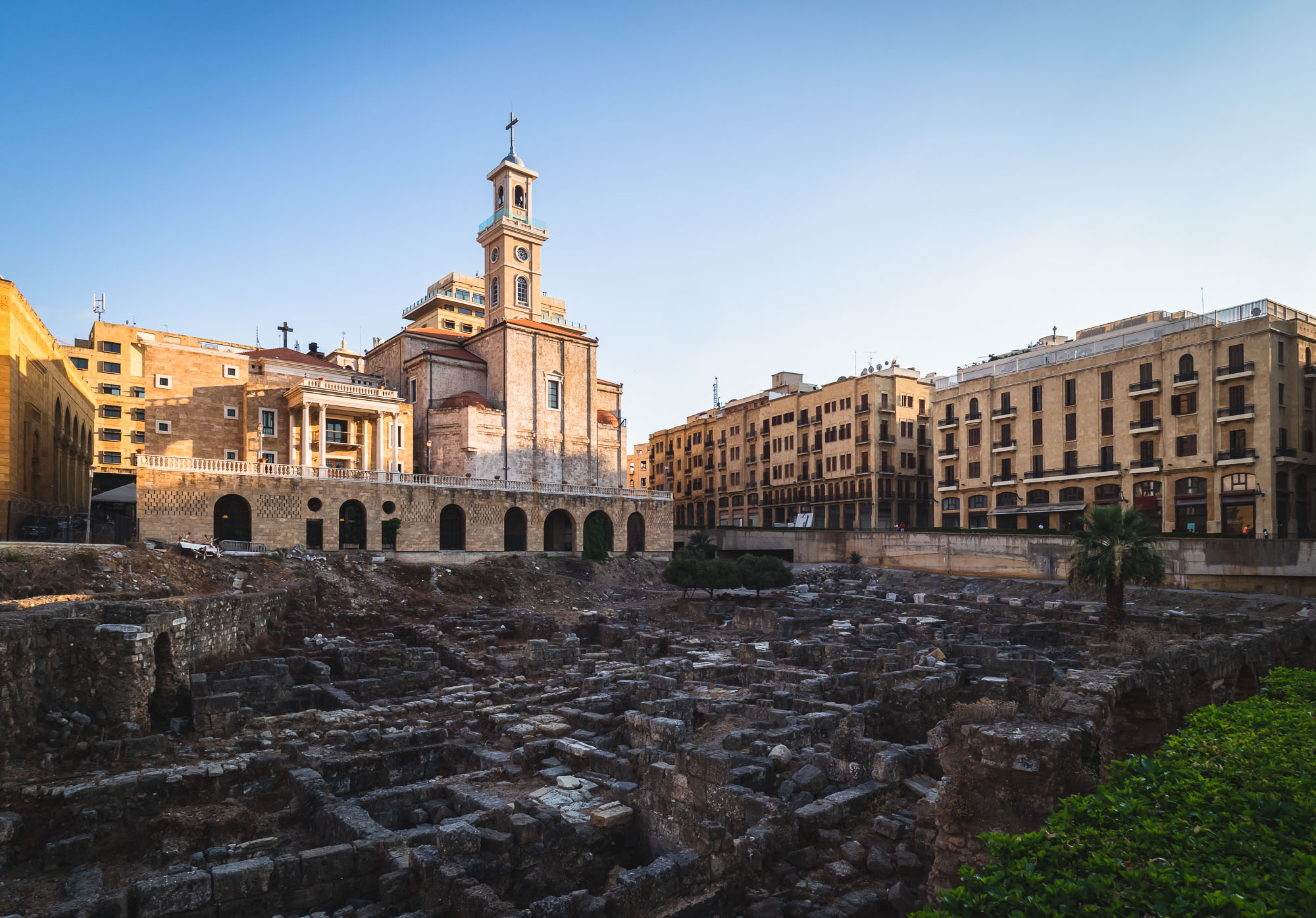
Saint Georges Maronite Cathedral
With the Roman ruins of the Beirut downtown area in the foreground.

Ottoman Style
The mosque follows the monumental Ottoman architecture.
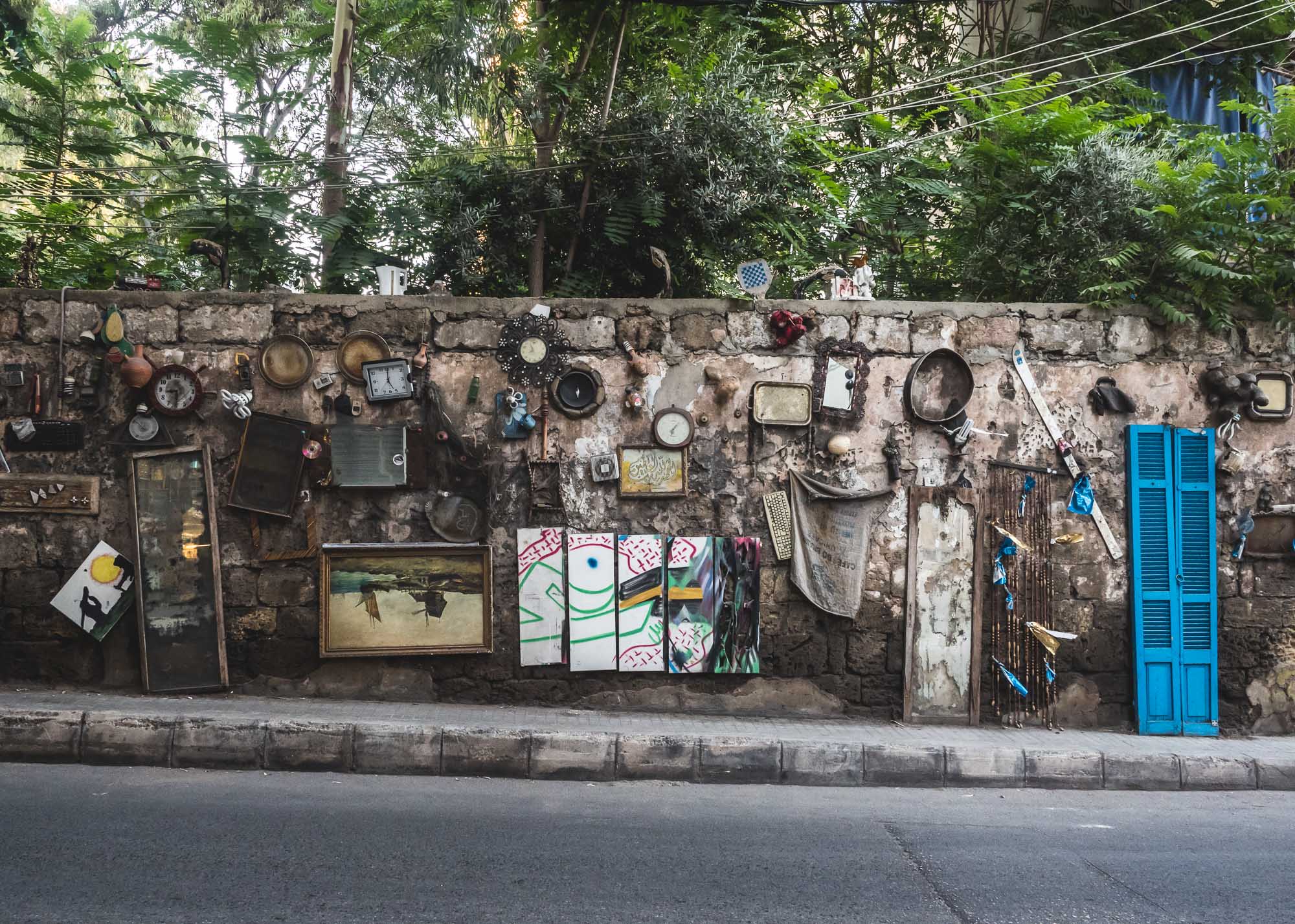
Artifacts
A decorated wall somewhere in downtown Beirut.
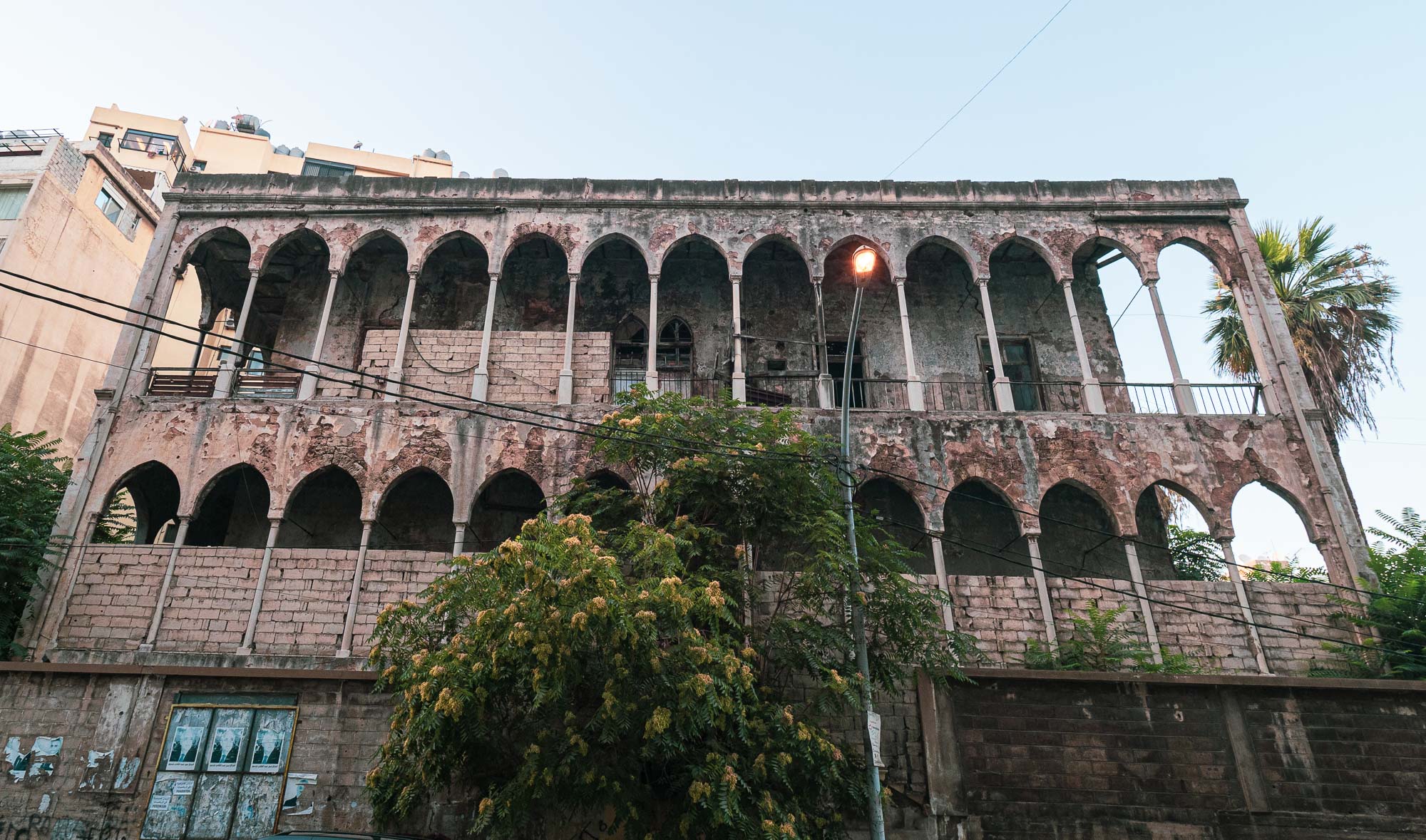
Bechara El Khoury
Zokak el-Blat was one of the more affluent Beirut areas, and home to many palaces, now abandoned, like this one.

Streets
The rarest thing in Lebanon? A helmet.

Parking
An empty lot between two buildings in Beirut.
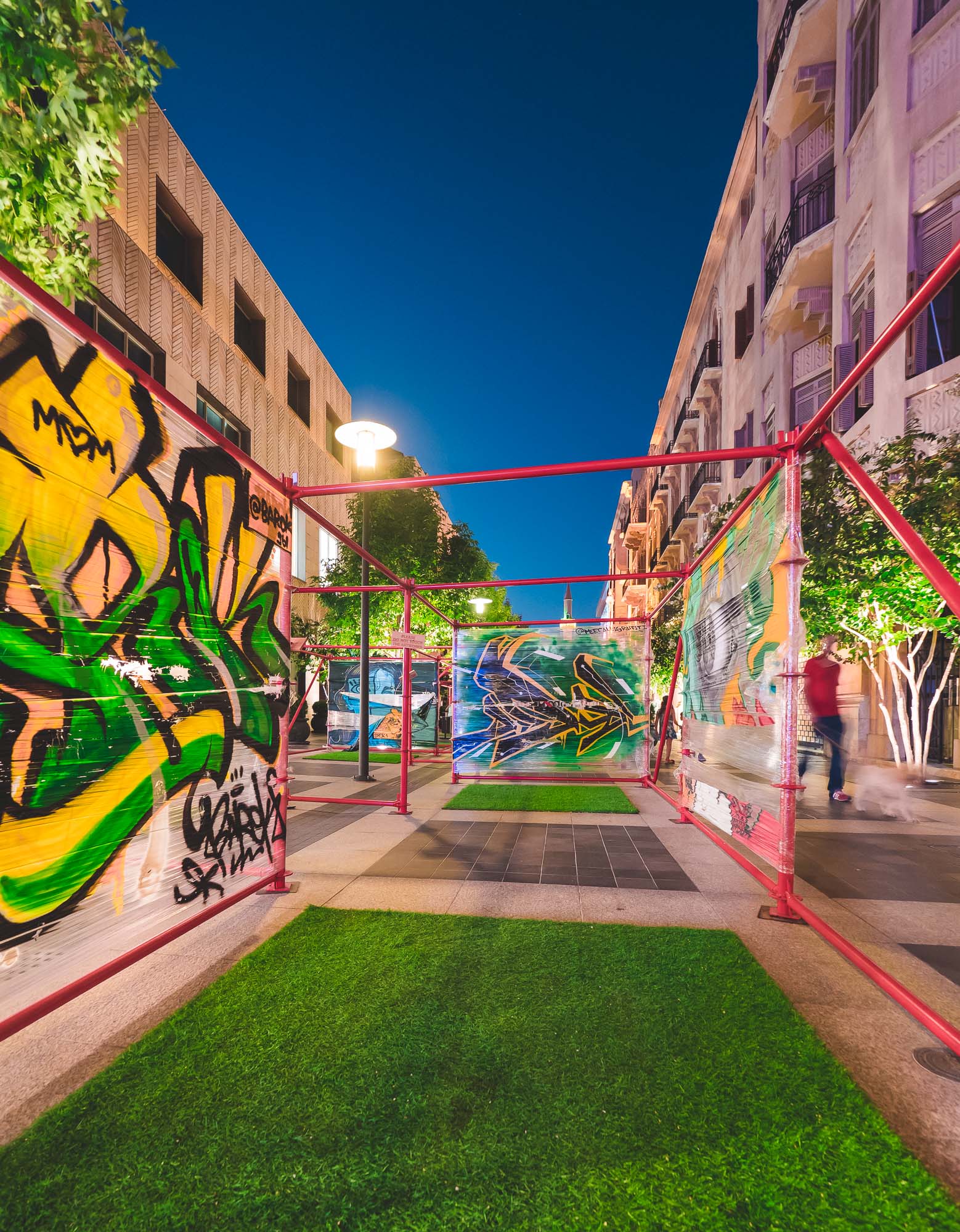
Exhibitions
The Beirut souk area features regular exhibitions and events.

Prince Monzer Mosque
Greenly lit at night.
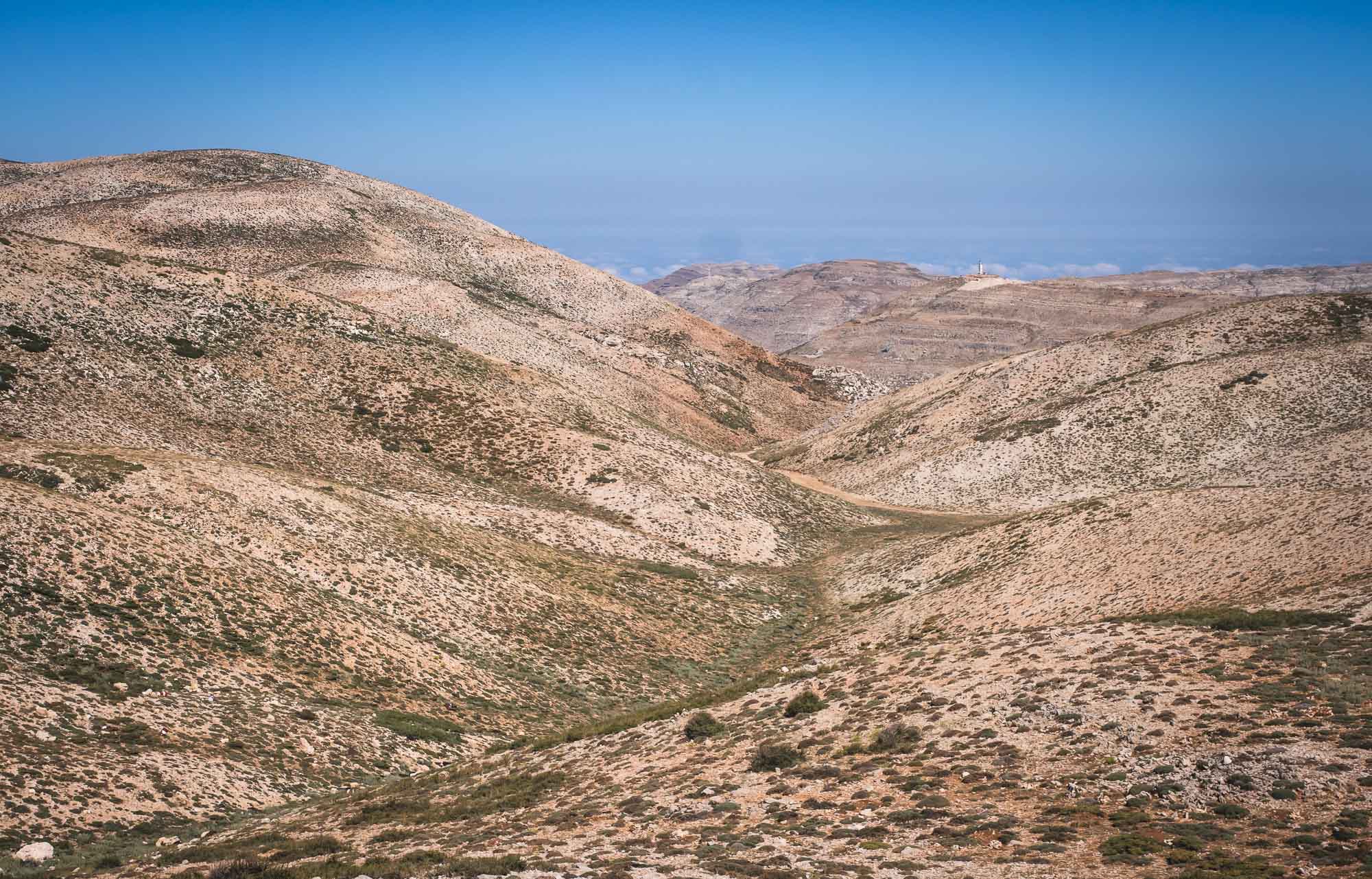
Into the Mountains
We took a trip to Baalbek into eastern Lebanon, which takes you over the central mountain ranges. While sparsely populated these days, parts of it become very busy in the winter when the skiing season kicks in. Yes, you can ski in Lebanon. The white statue of Saint Charbel in the background.
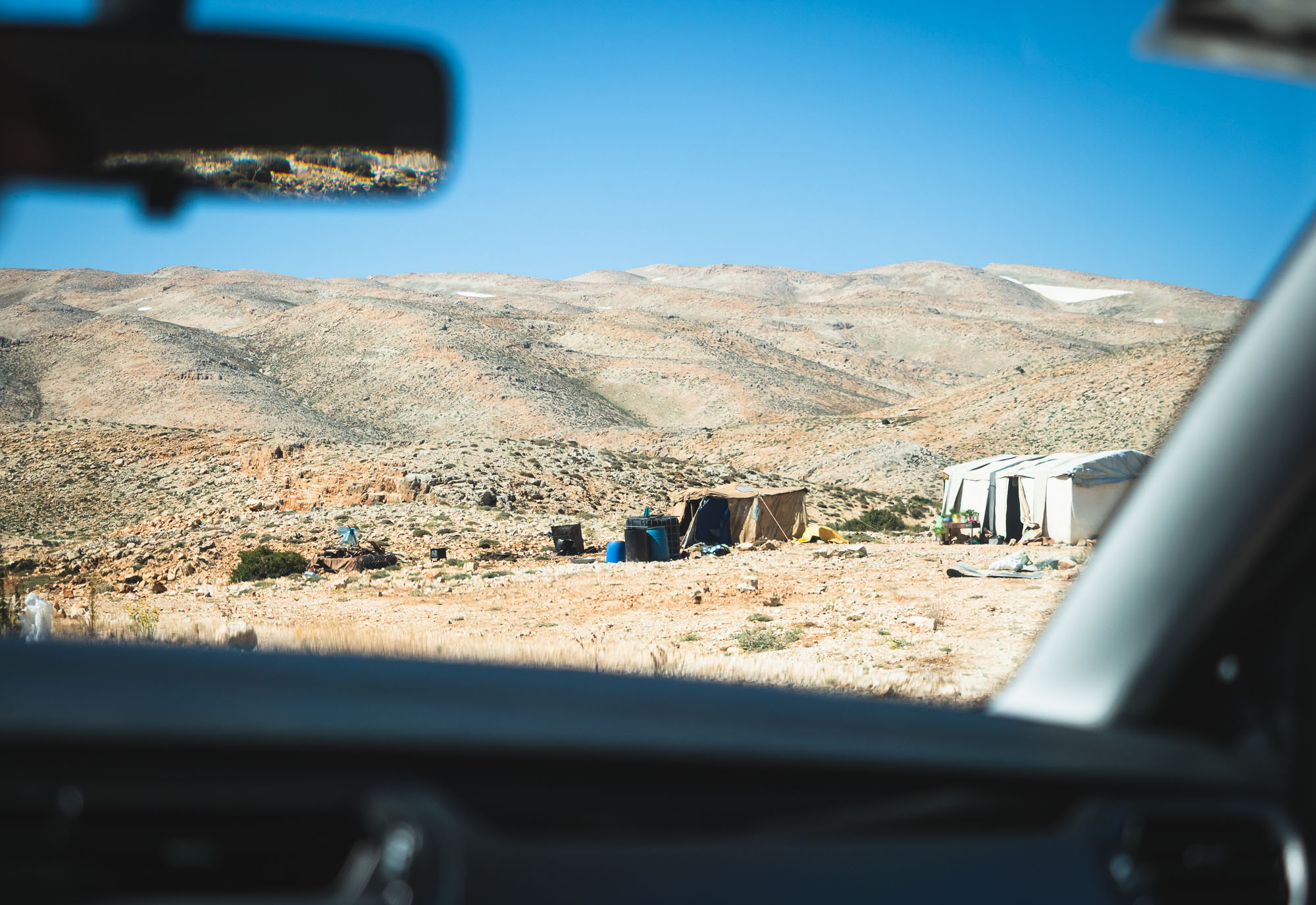
Tents & Huts
Local farmers live in temporary tents up in the mountains.
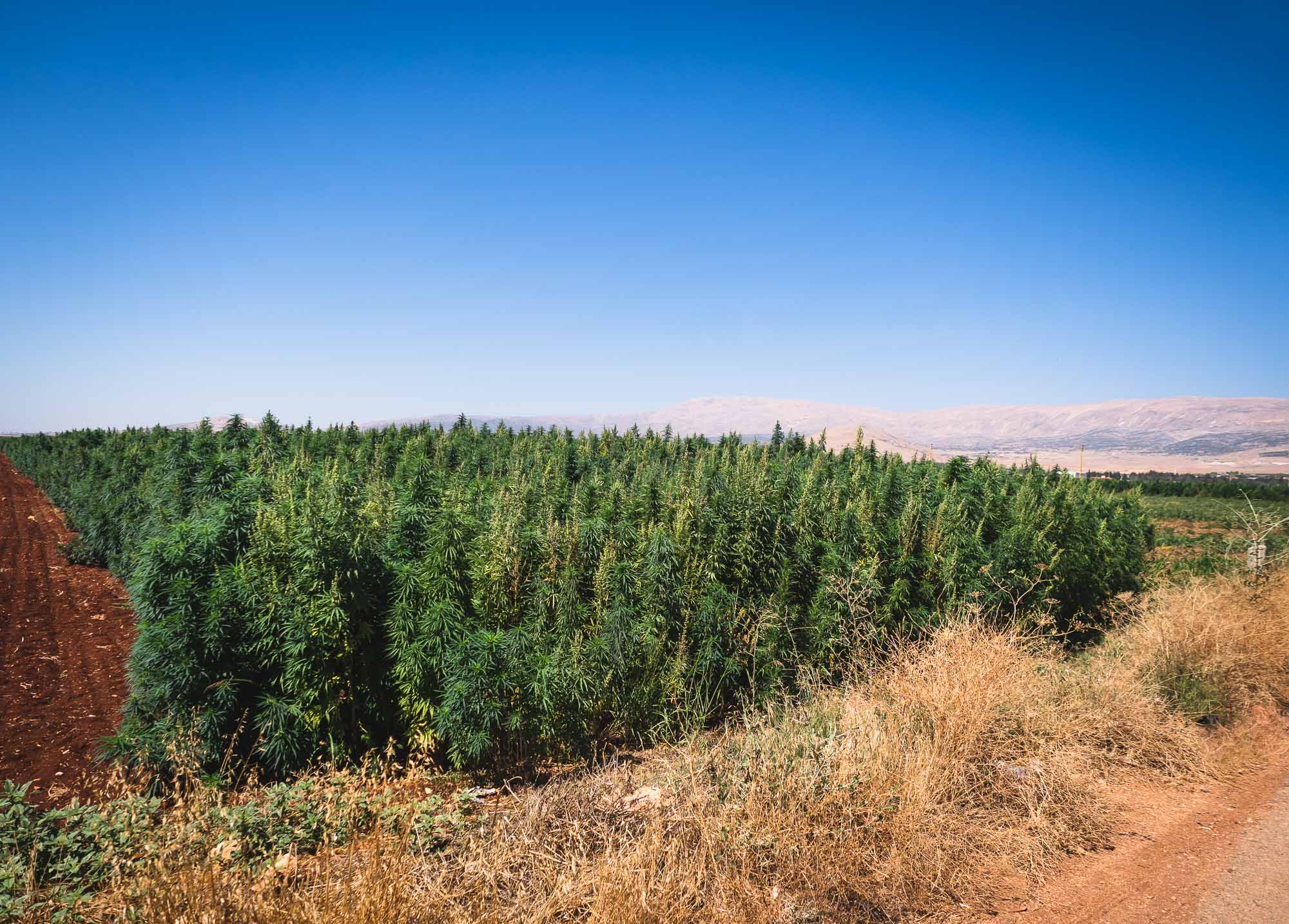
Unusual Crop
No comment.
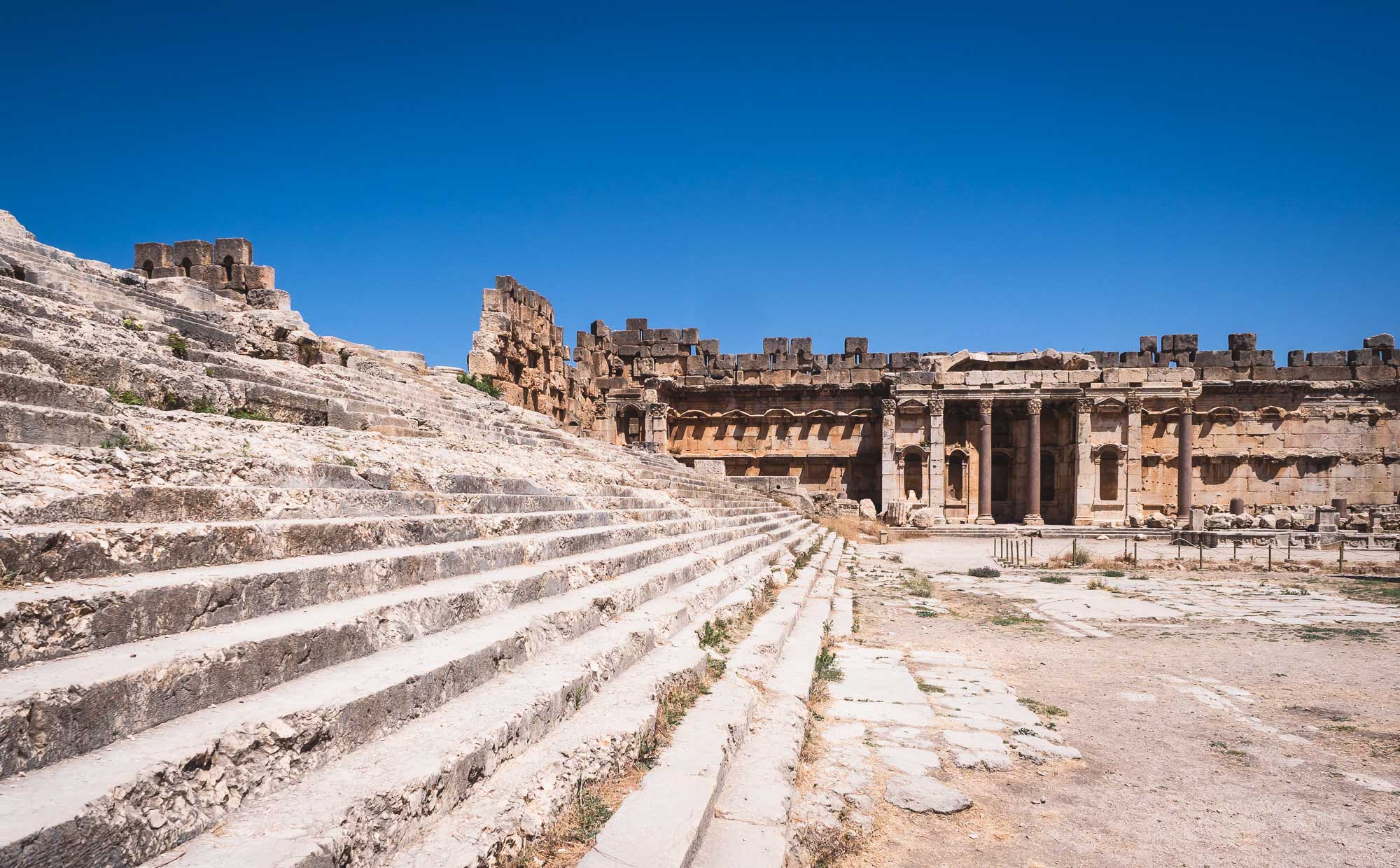
Stairs
The stairs leading to the Temple of Jupiter in Baalbek's complex of ancient ruins. It is the largest of the Roman world, but today only a few columns - currently under restoration - remain.

Temple of Bacchus
This second century temple, dedicated to the god of wine, is one of the best preserved ruins of the Roman empire.
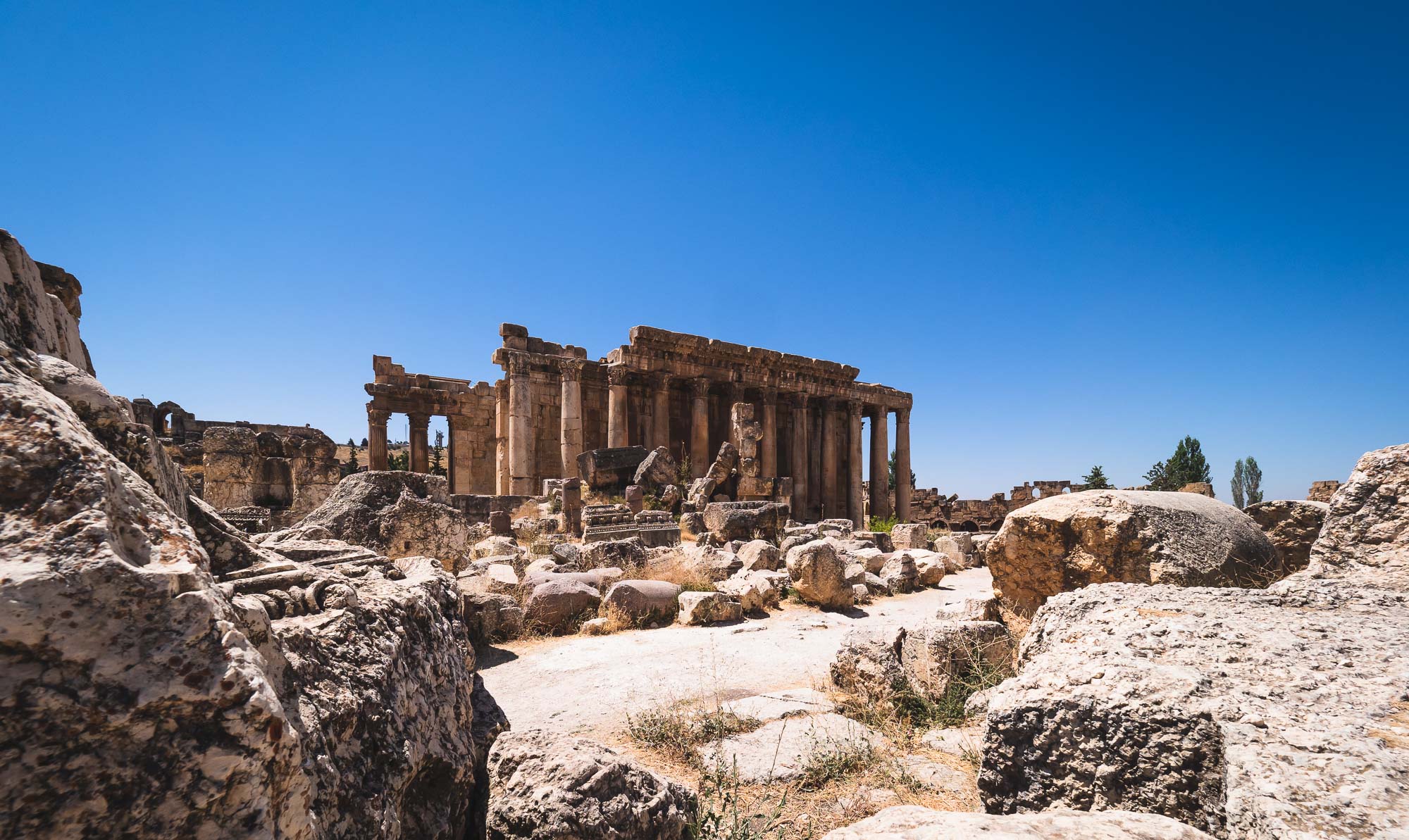
Columns
Another view of the temple from the Great Court.

Friends
A local that is selling Roman coins and guidebooks to tourists wanted to be part of my album.
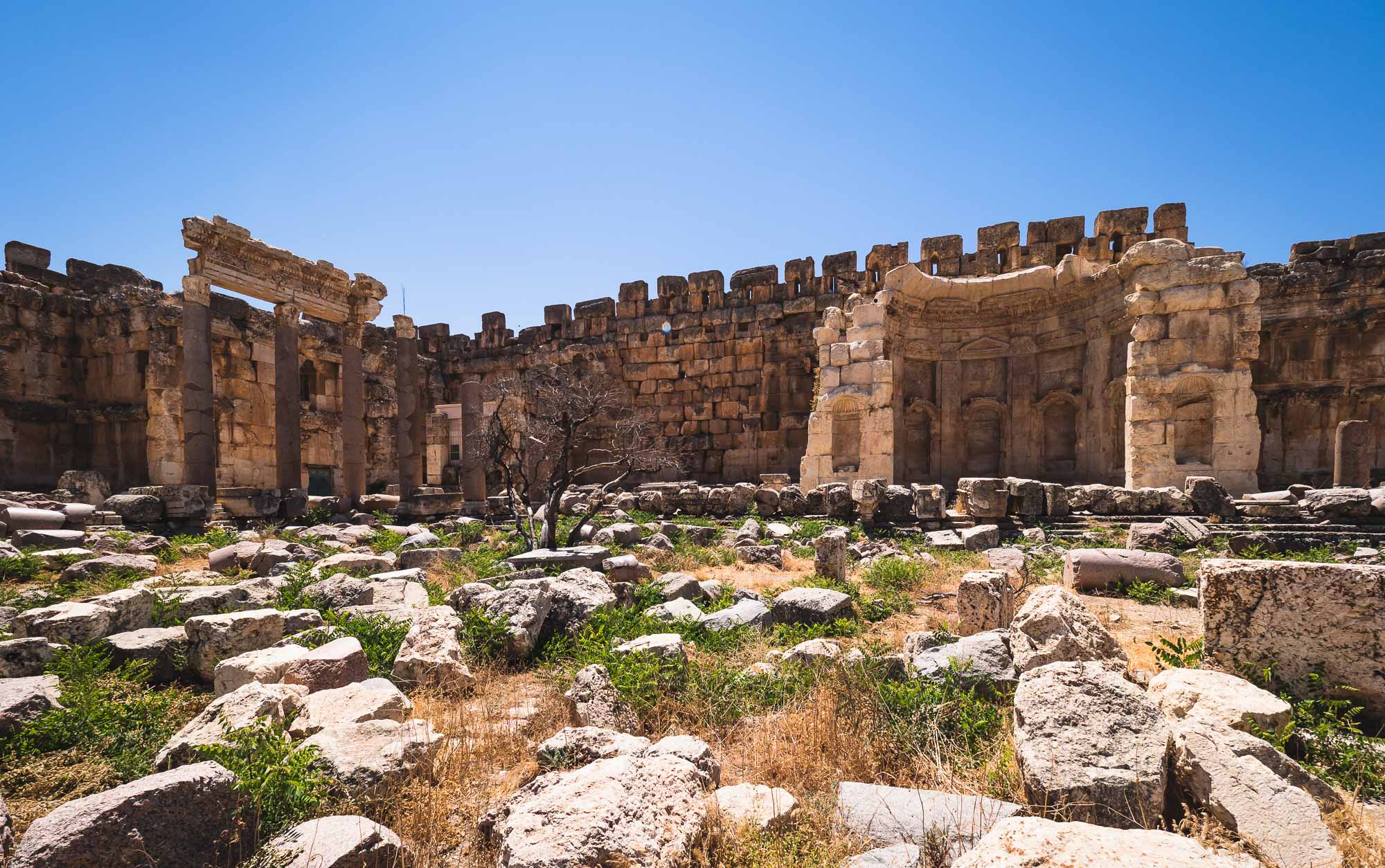
Great Court
The exterior walls of the Great Court. A basilica was later built inside the courtyard.

Bustan al-Khan
The ruins of Heliopolis, as Baalbek was called in Hellenic times, are today some of the most significant in the world. This section, south of the Temple of Jupiter, is a portico with twelve columns.

Stone of the Pregnant Woman
The podium of the temple complex includes 3 stones weighing 800 tons each. Even larger ones, among them this one, were found in the nearby quarry, weighing up to 1800 tons each. The original method of construction remains an archeological mystery, but the quarry was slightly higher than the temple complex, so some form of folling the stones to the site was probably used.
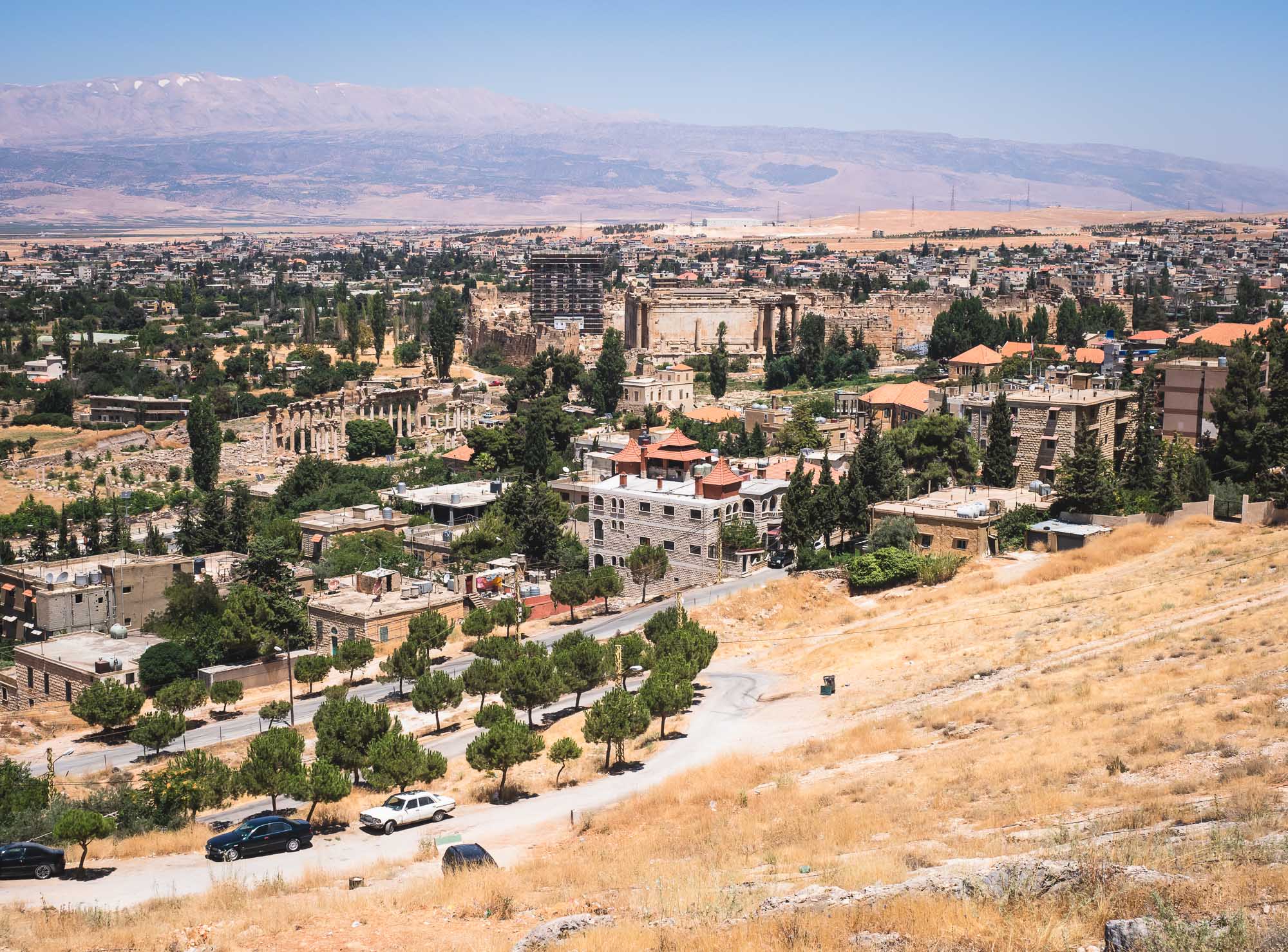
Overview
I hiked up a nearby hill to get an overview of the site. The Temple of Jupiter is visible with the pillars under restoration at the moment, thus covered in scaffolding. The Temple of Bacchus just in front. The entire complex was fortified later under Arabic rule, but not touched much anymore since the 14th century. There is a third temple, the Temple of Venus, not visible here, to the right of the Bacchus temple, as well as the Temple of Mercury, on the same hill this photo was taken from, but very little is left of it. To the very left is Bustan al-Khan.
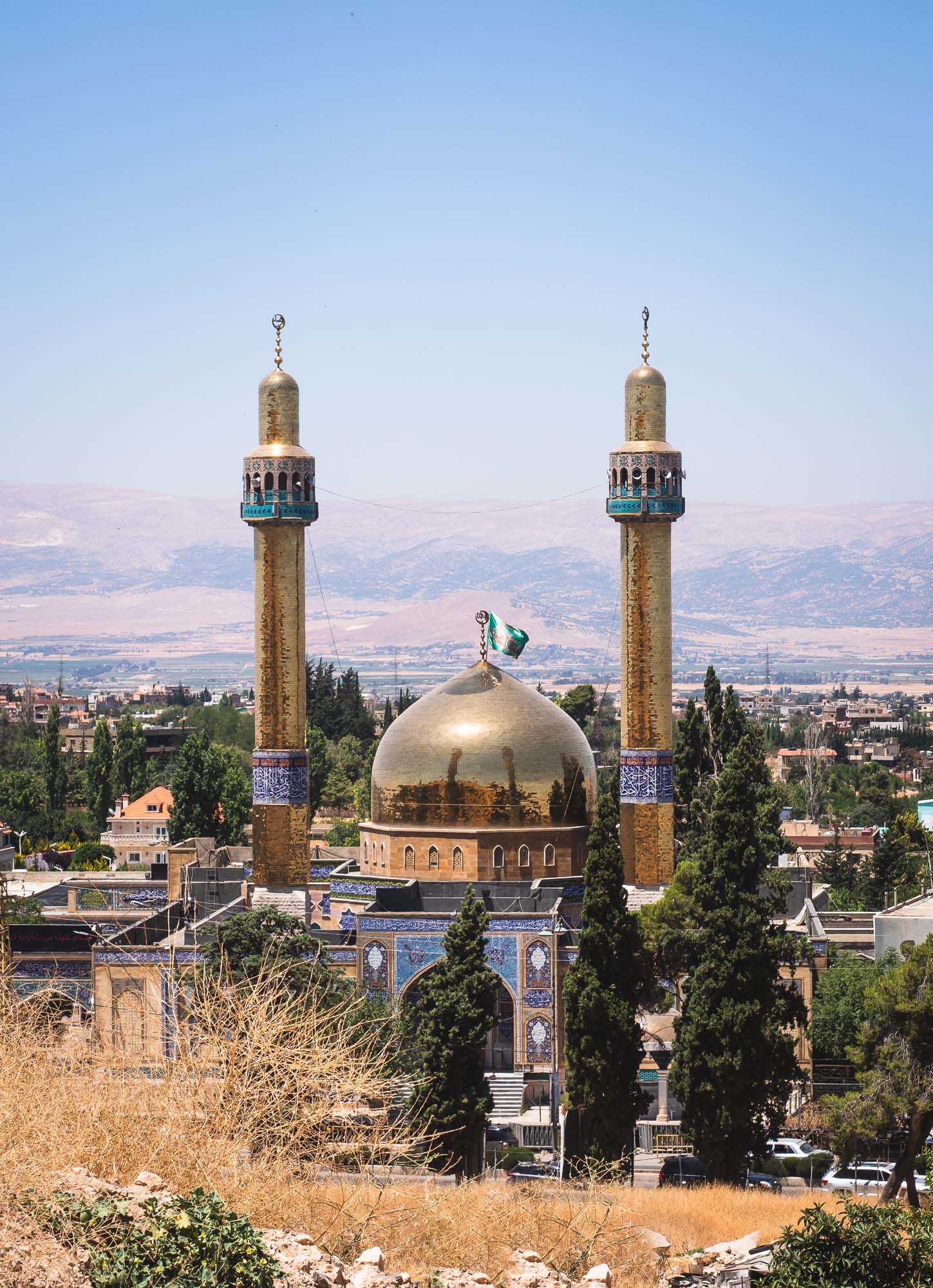
Sayyida Khawla Mosque
The golden roof makes this mosque hard to miss.
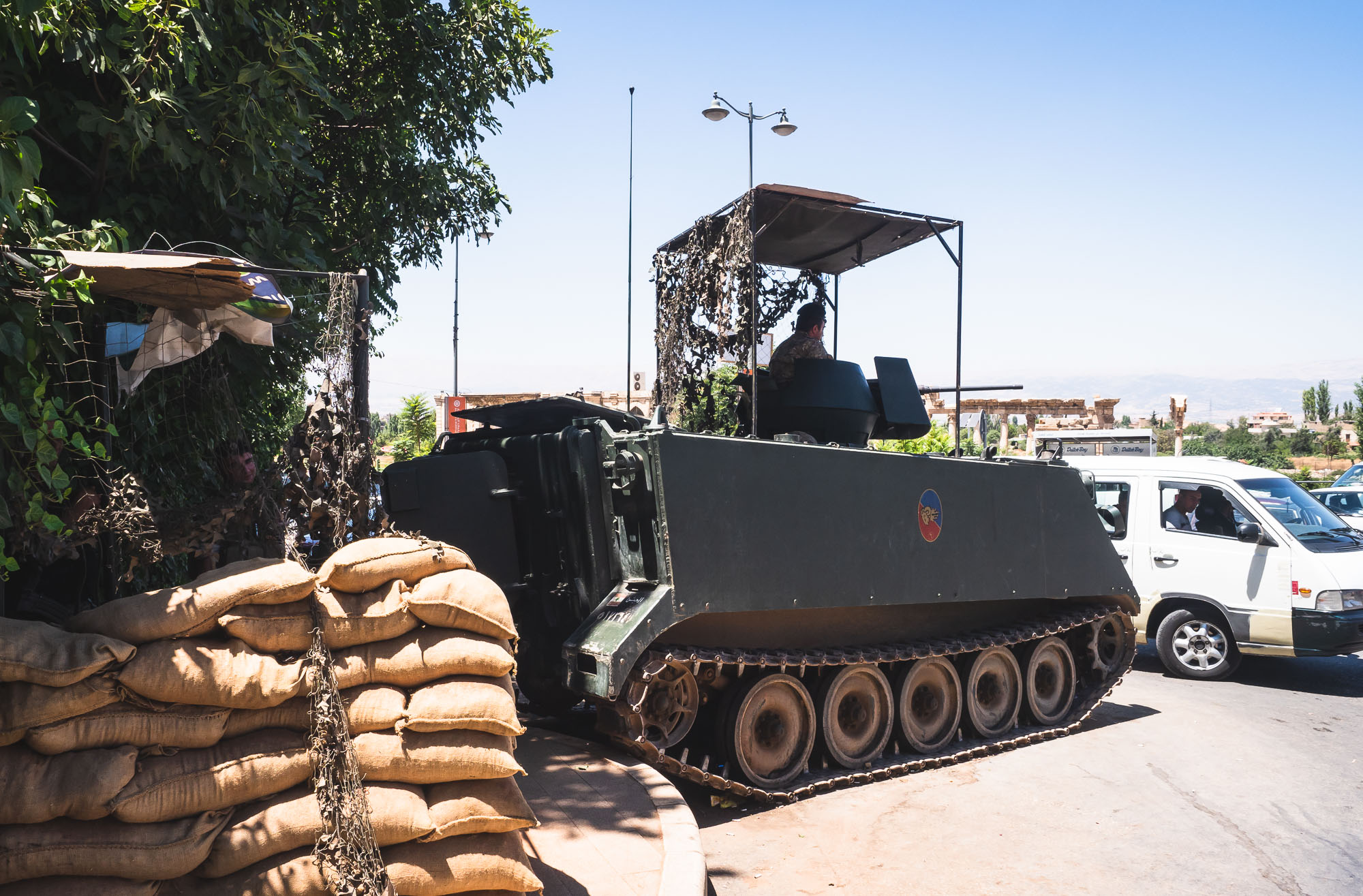
Military Presence
Given the close boarder to Syria, military posts and check points are still omnipresent in this area.
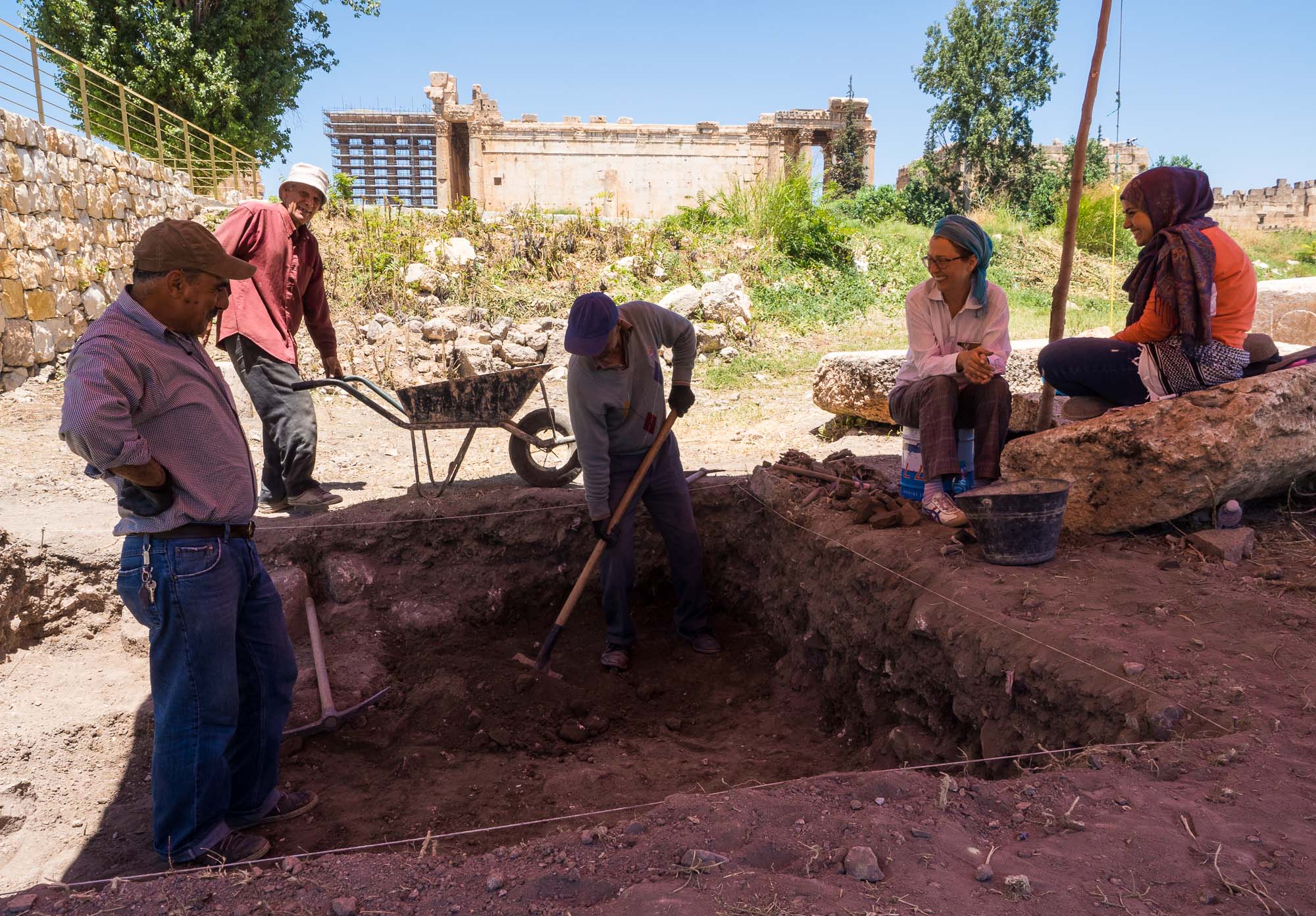
Digging
A team led by a German archeologistc is digging in the area east of the temples, to determine if further excavations would make sense.
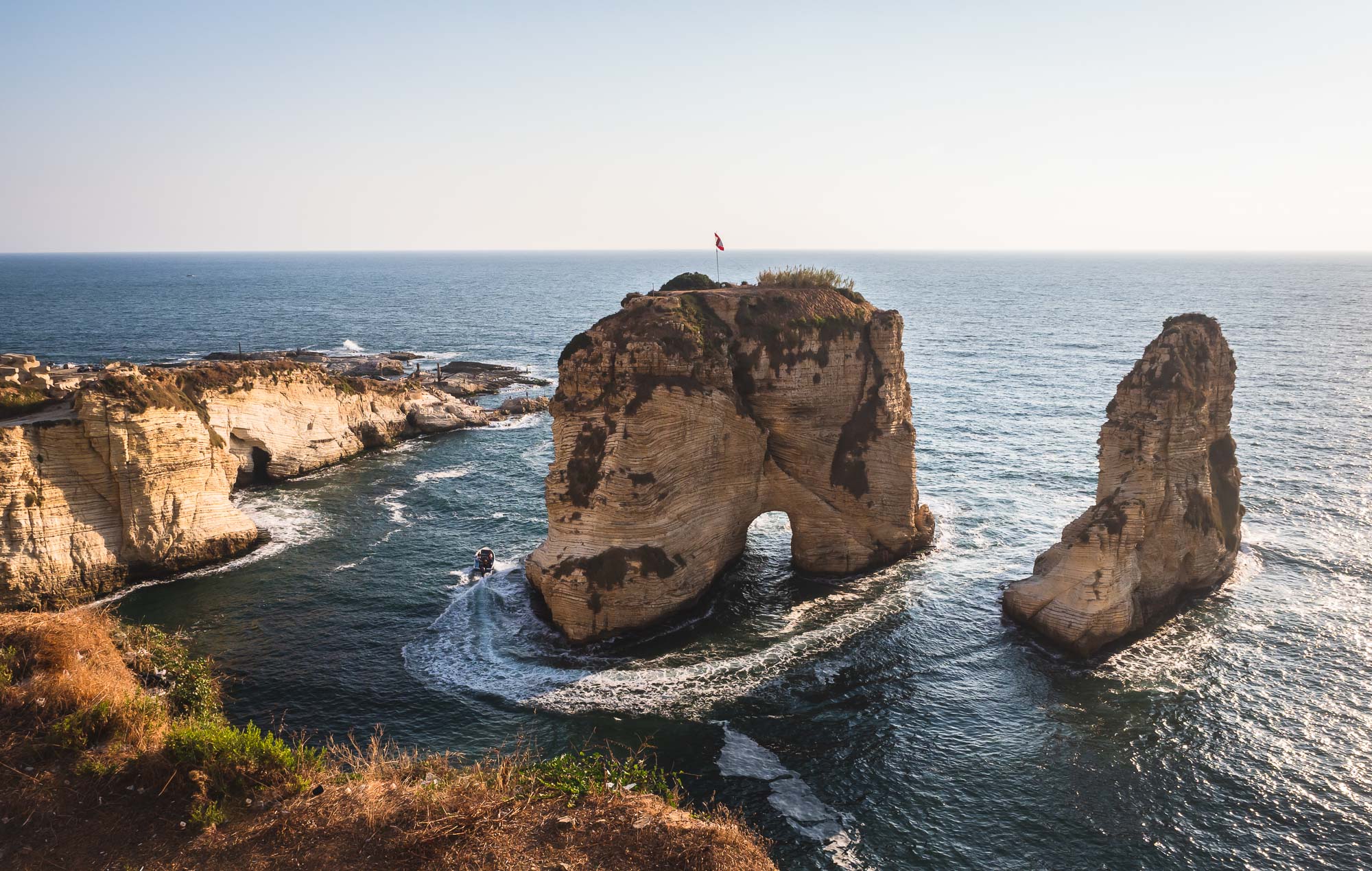
Raouche Rocks
These two rocks are probably the most famous of Beirut's landmarks.
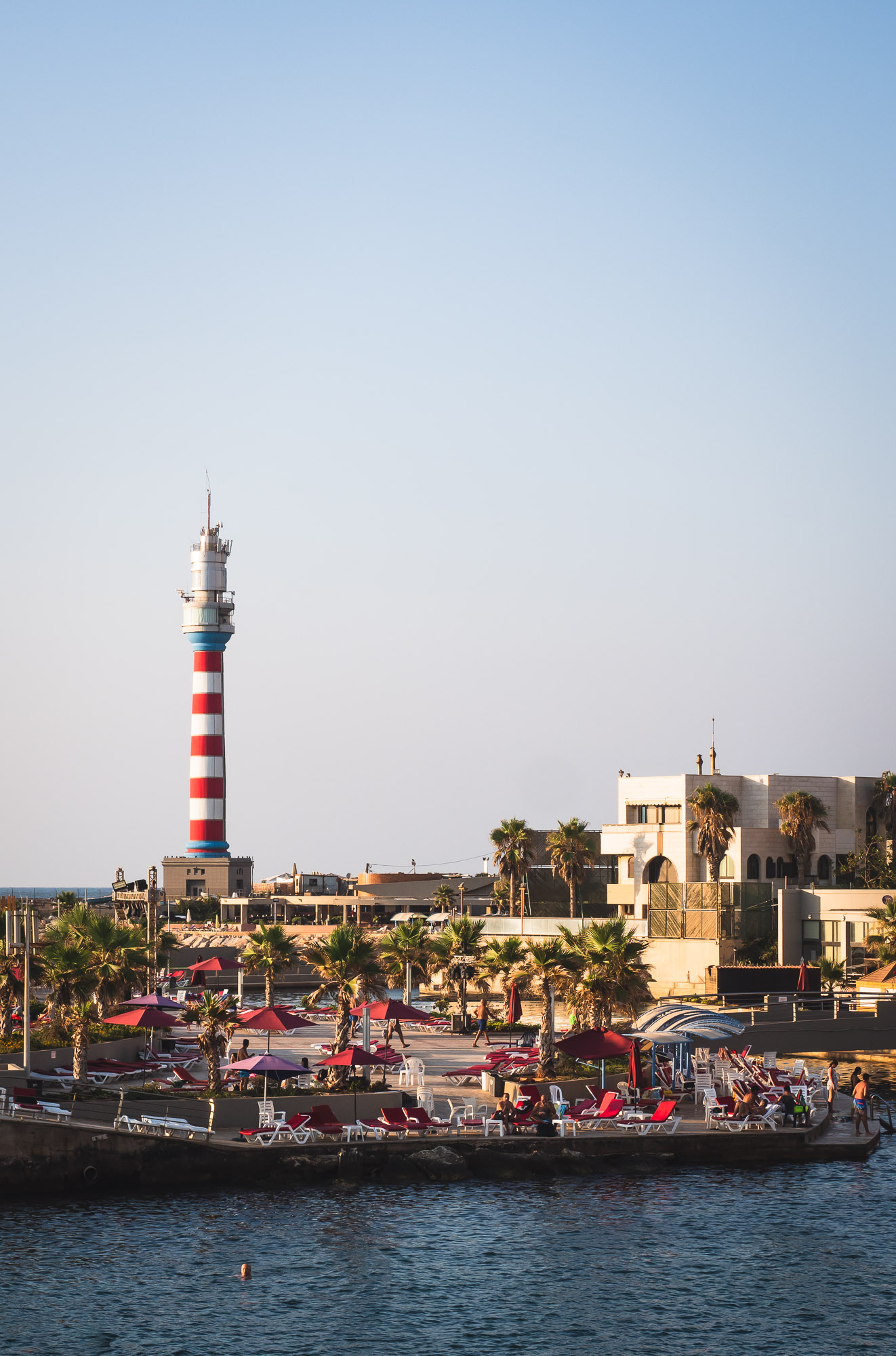
The New Lighthouse
While this one opened in 2003, it has been the same family that is responsible for Beirut's nightly guiding light for the past 150 years.
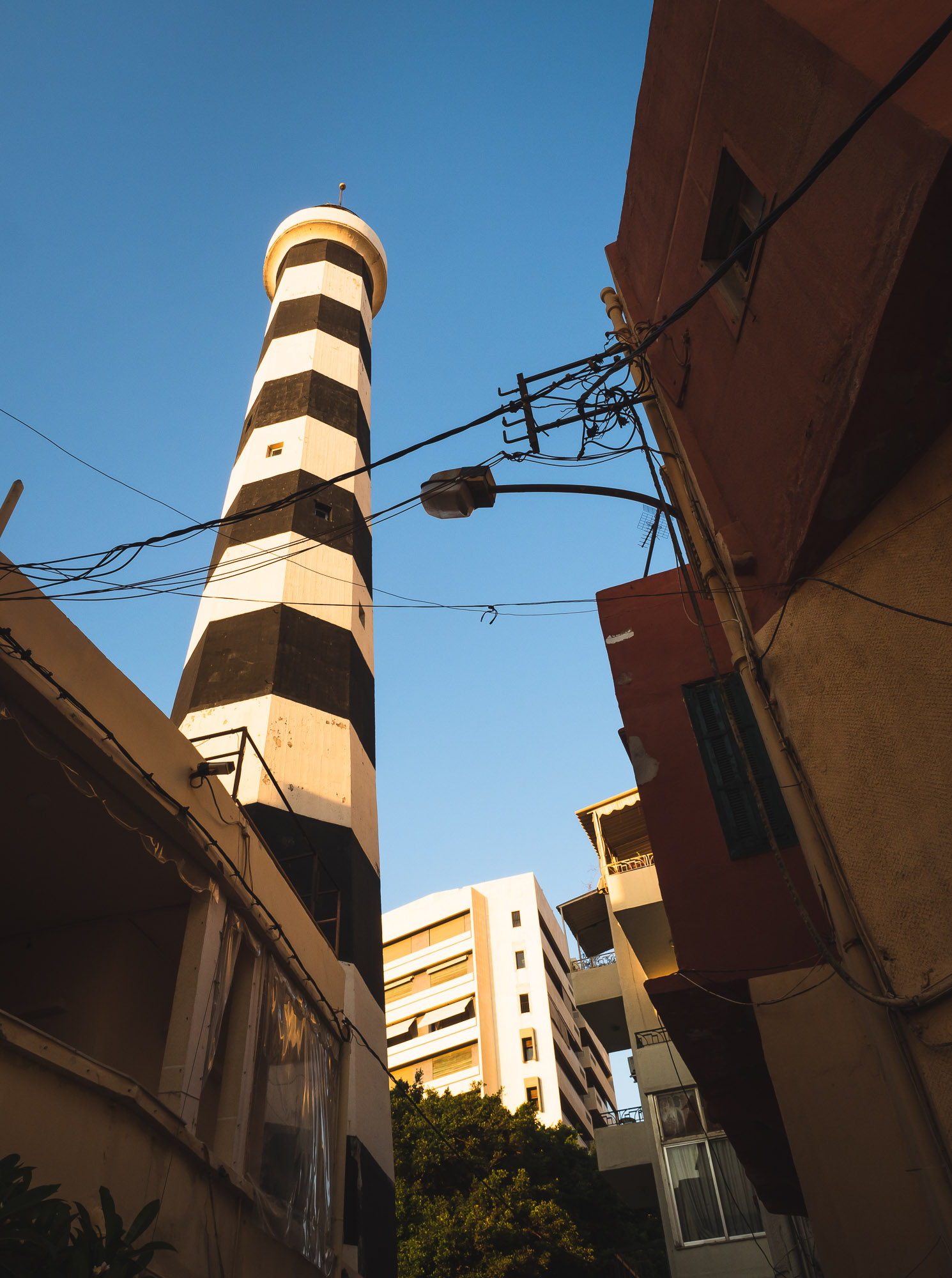
The Old Lighthouse
It was built in the 1920s, but when an influential businessman constructed a taller building in front, a new one closer to shore was needed.

The illustrious M
The BMW M badge seems to be highly coveted in Lebanon, and thus applied generously.
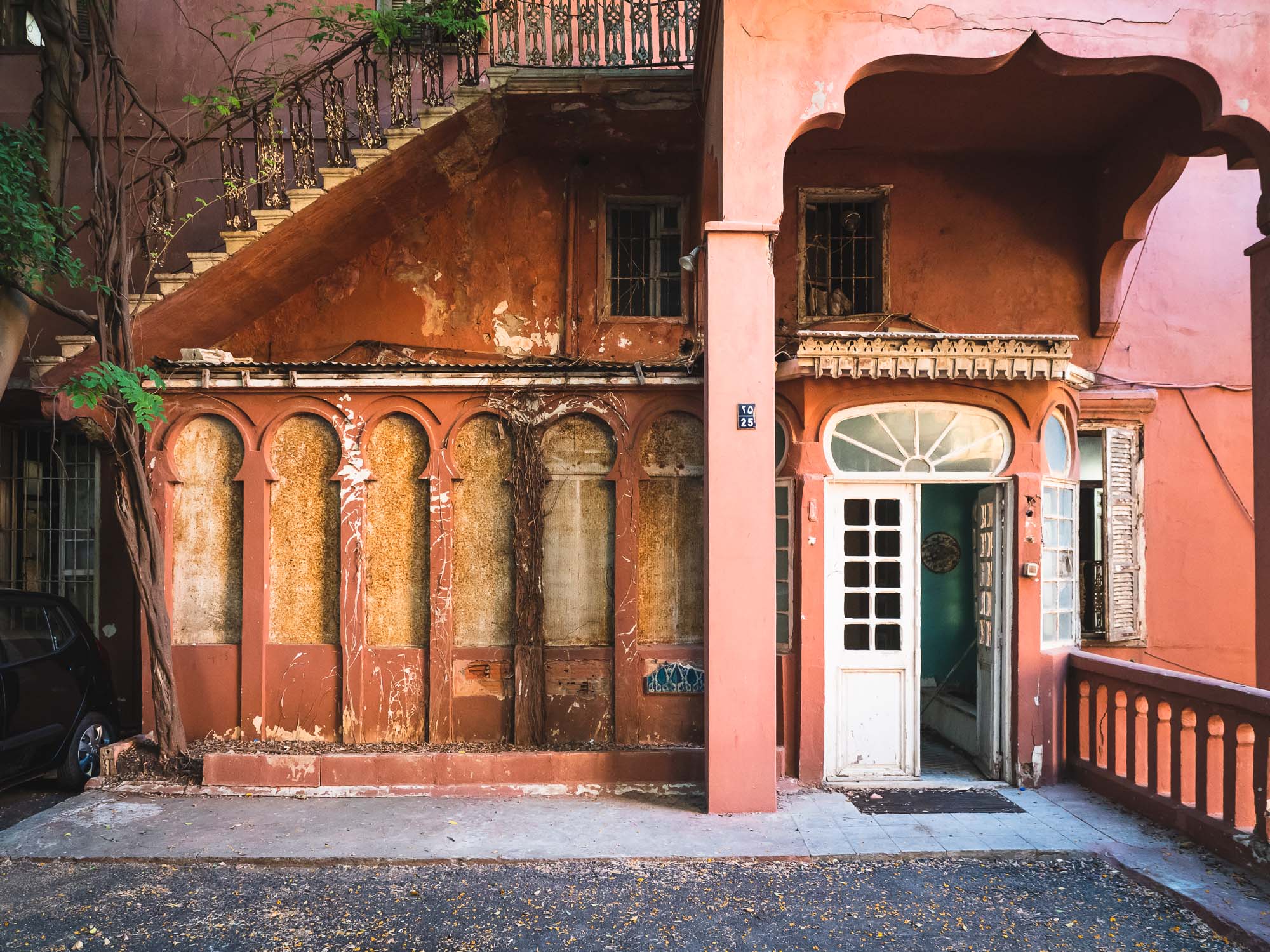
La Maison Rose
Another one of Beirut's abandoned palaces, this one is located directly on the hill on the north western tip of the Ras area. While the door was open, a very official letter posted at the entrance, and the questionable condition of the staircase, didn't quite give me the confidence to walk inside.
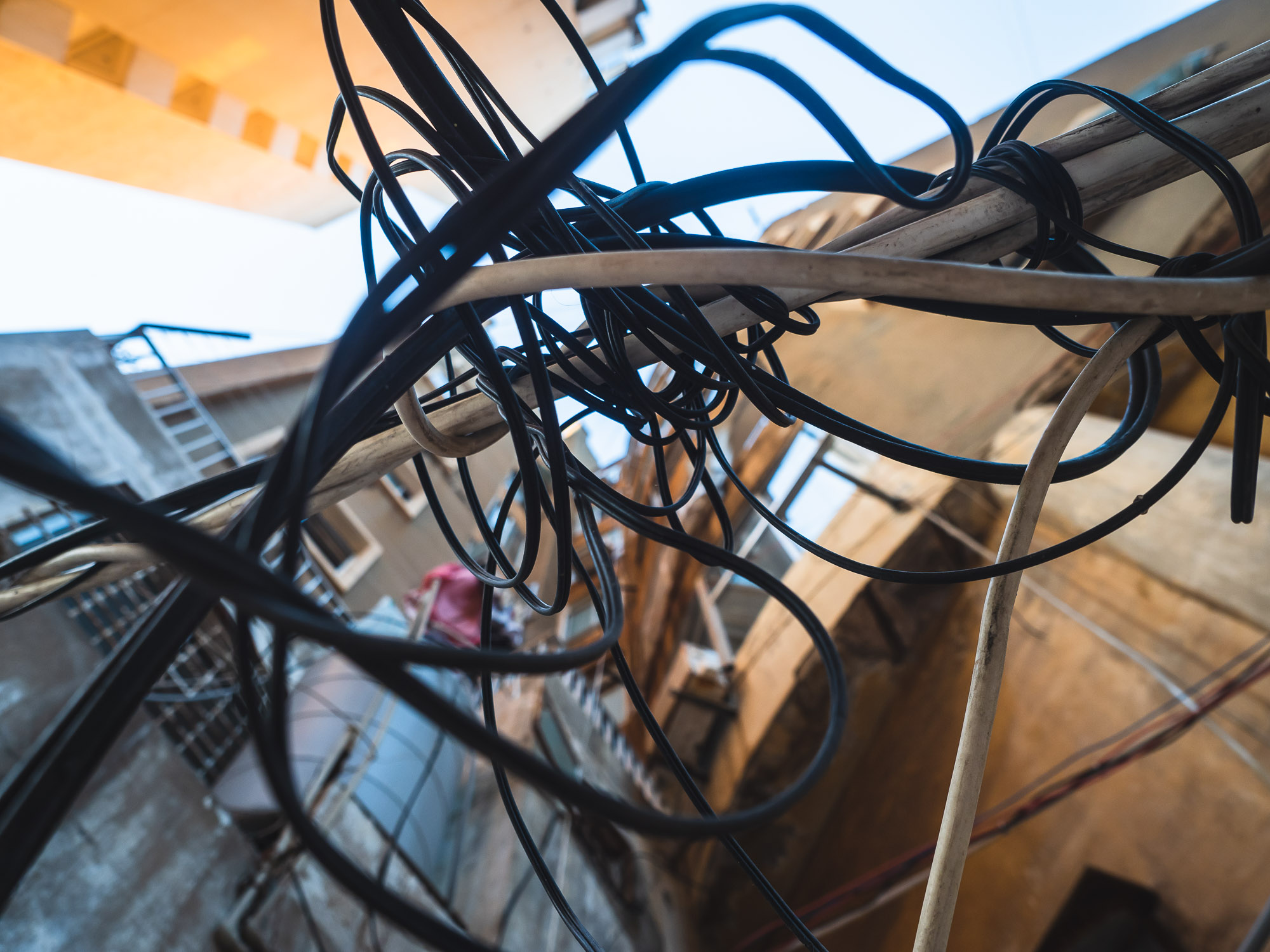
Power
Lebanon is famous for its regular power outages. One can only guess as to what may be the reason for such occurences...

Alignment
A bit of planning and the right spot allowed me to get the postcard shot, with the sun setting between the rocks, while a boat of tourists cruises around them.

Flying
A couple watches a plane approaching Beirut's Rafic Hariri International Airport.
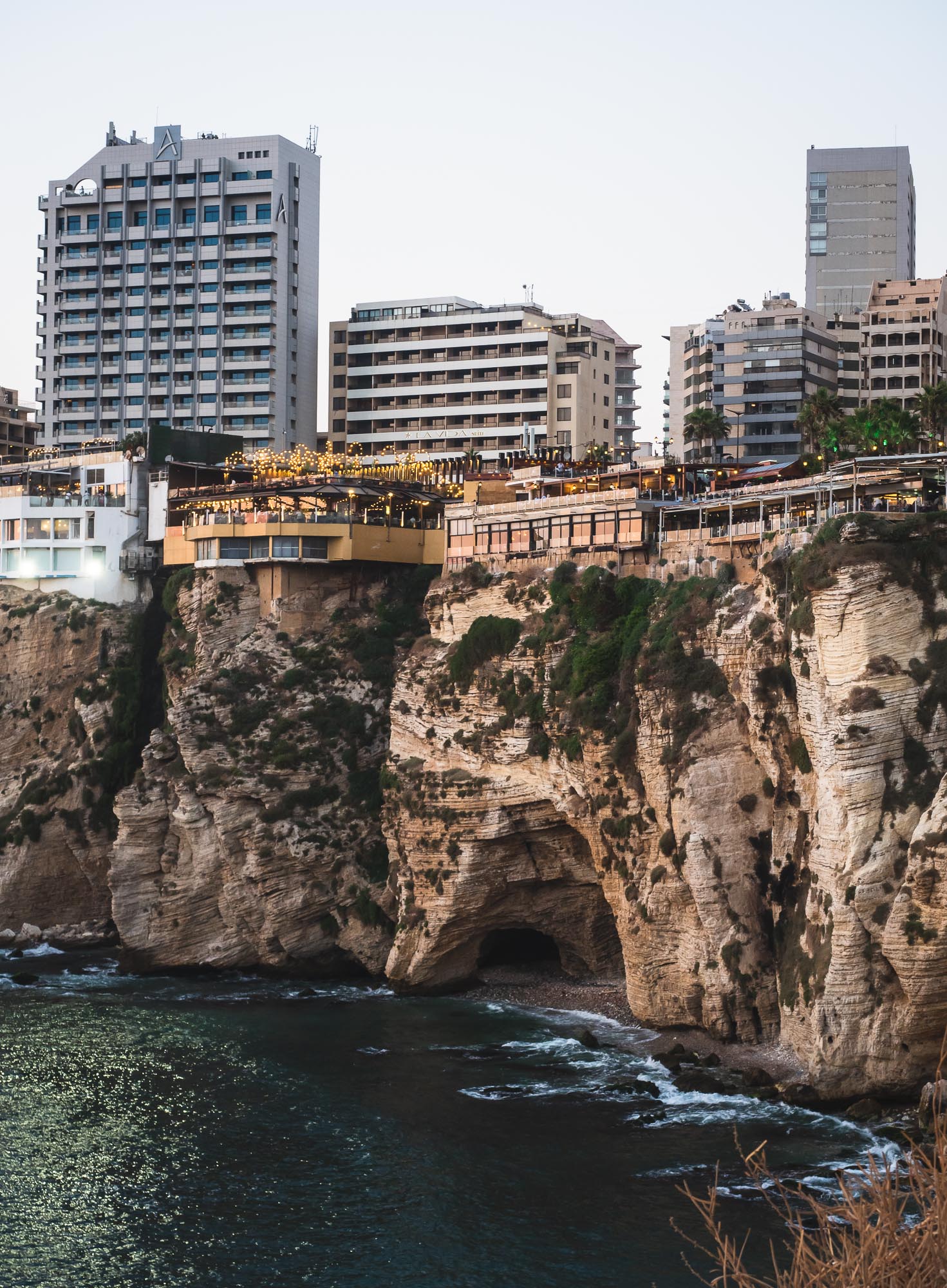
Cave
Unbeknownst to the diners above, the coastline in front of the famous rocks features a beautiful cave structure below.
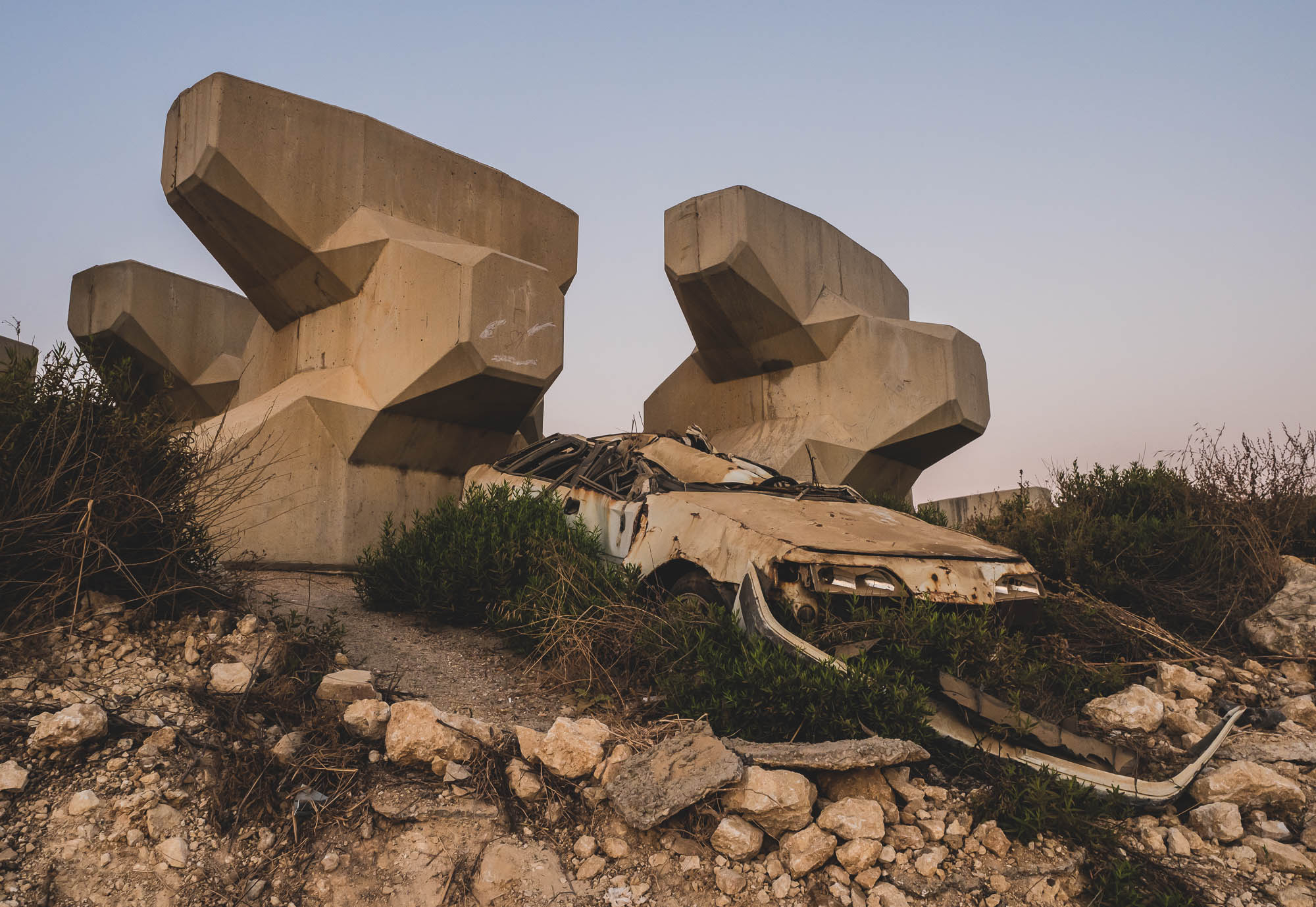
Strange Things
What are they, why are they here, and how did the car get in between them - these and other questions come to mind.
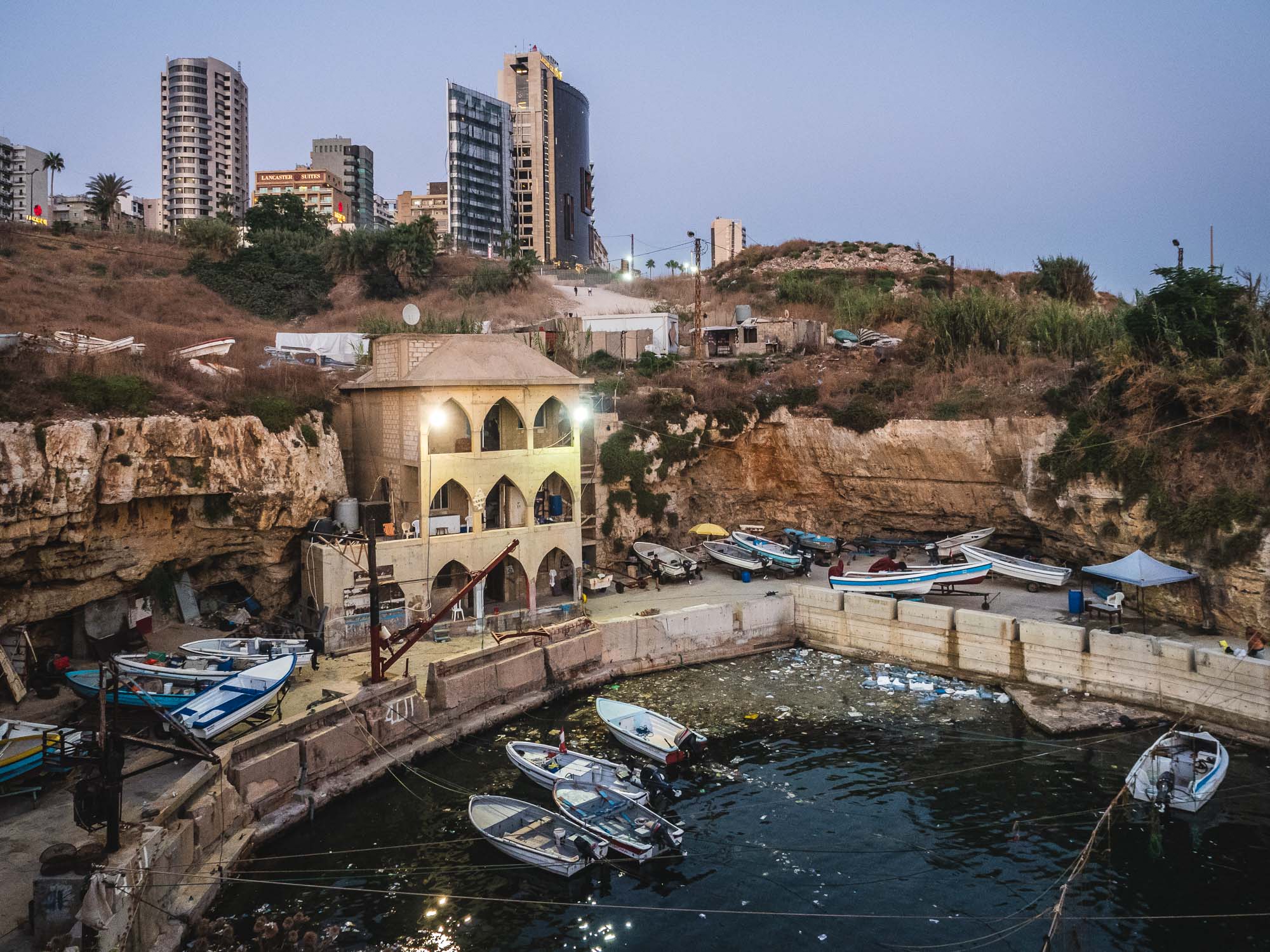
Mini Marina
A small harbour is perched in between the rocky coastline of Beirut.
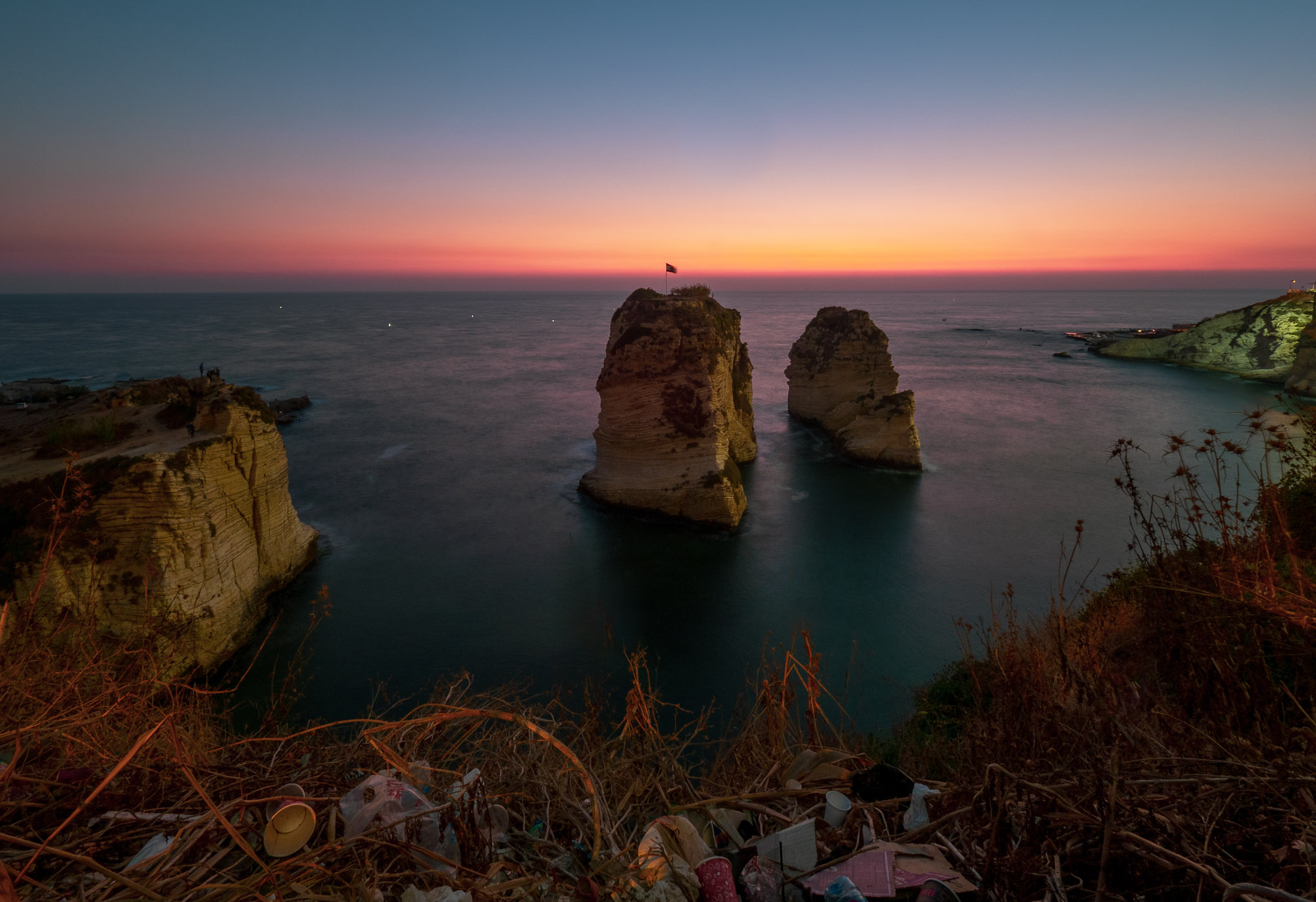
The Dark Side
One is sometimes tempted to apply a little photoshop and get the perfect photo - but the reality of the site is full of garbage and plastic, as seen here. In general, the country would be well advised to take better care of its beautiful setting.
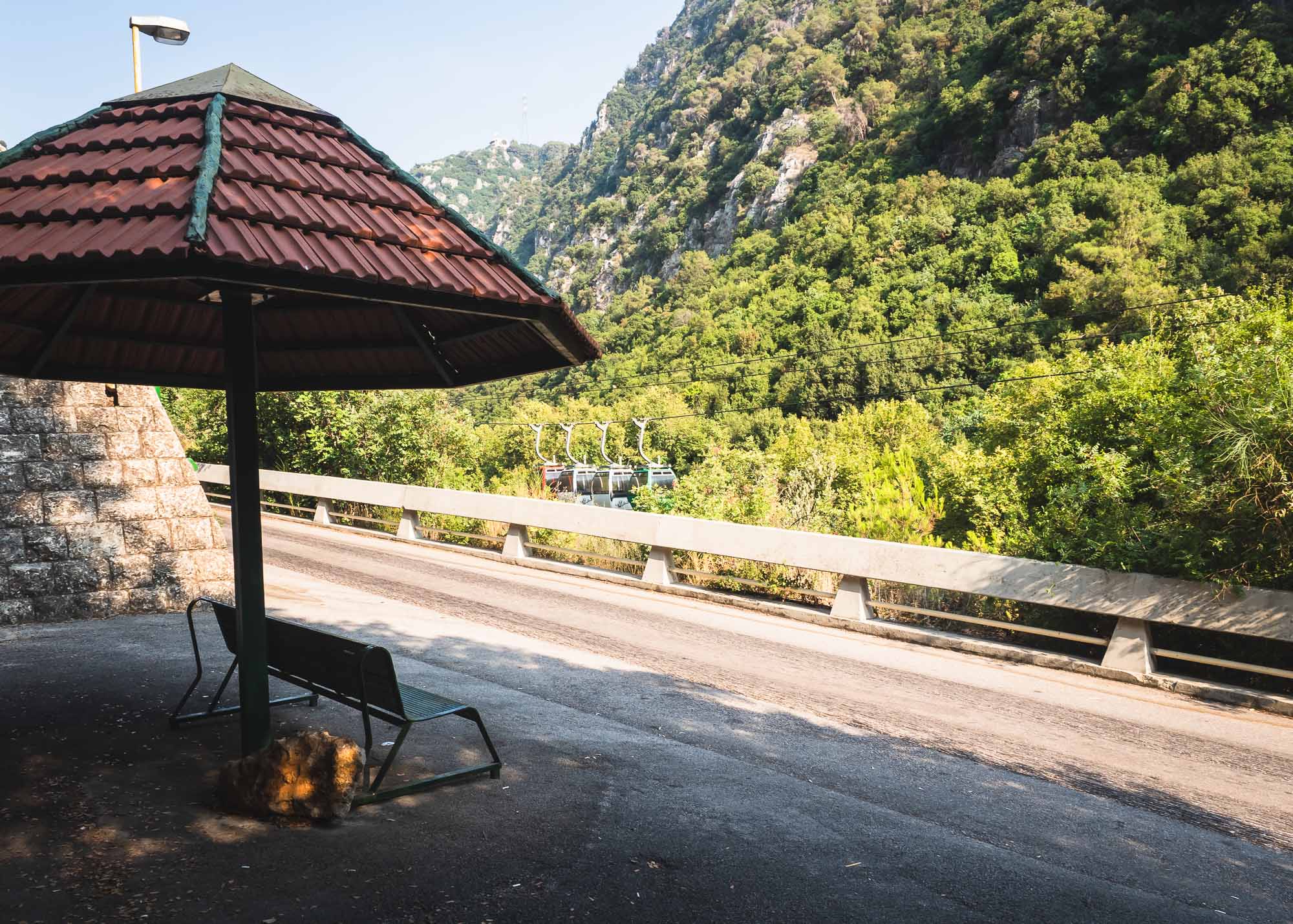
Jeita Grotto
The small road leading up to the cave is closed for cars - a cable car brings you to the top if you don't want to walk.
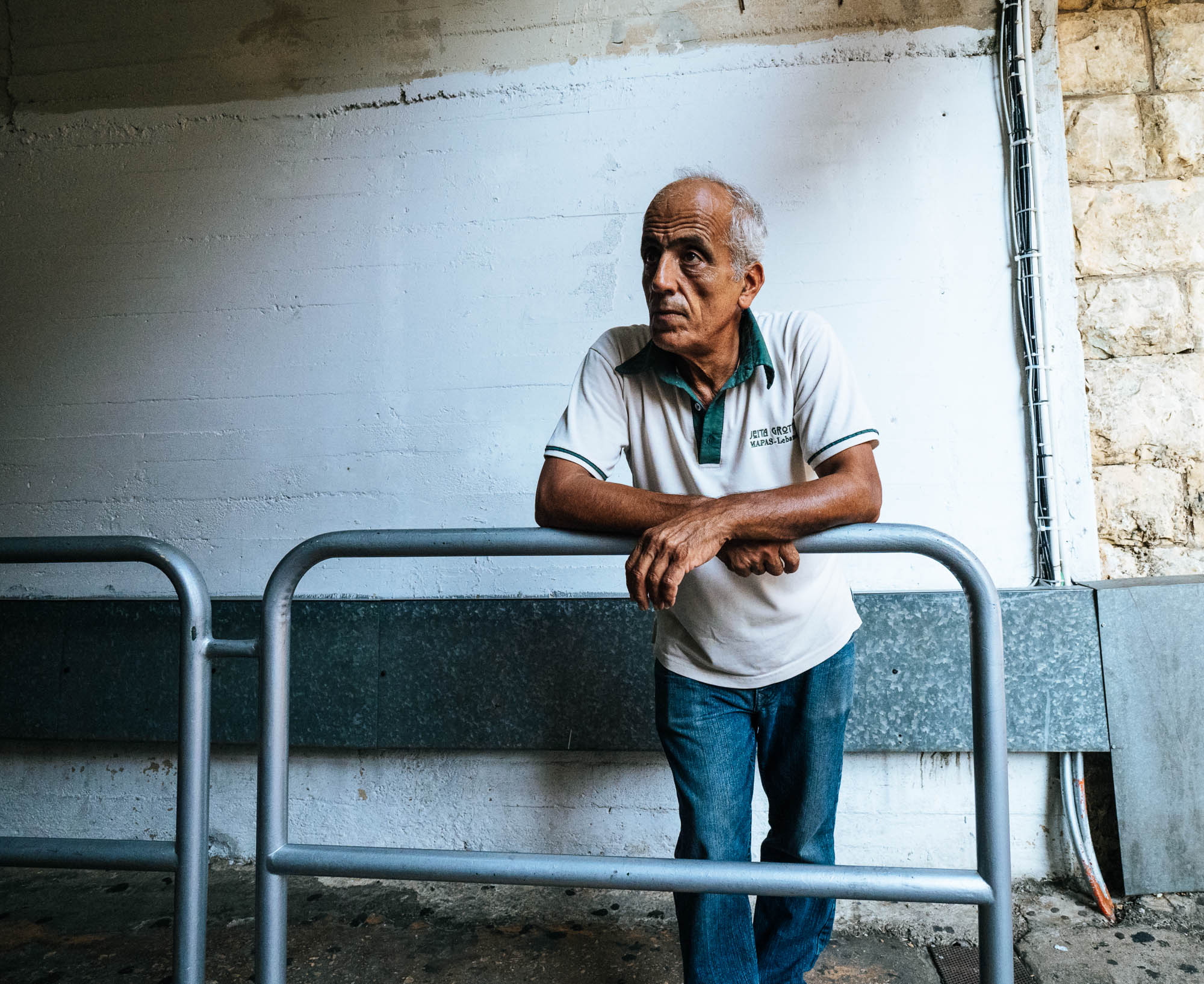
No Access
One of the team members of the Grotto's staff waiting for the next group to arrive.
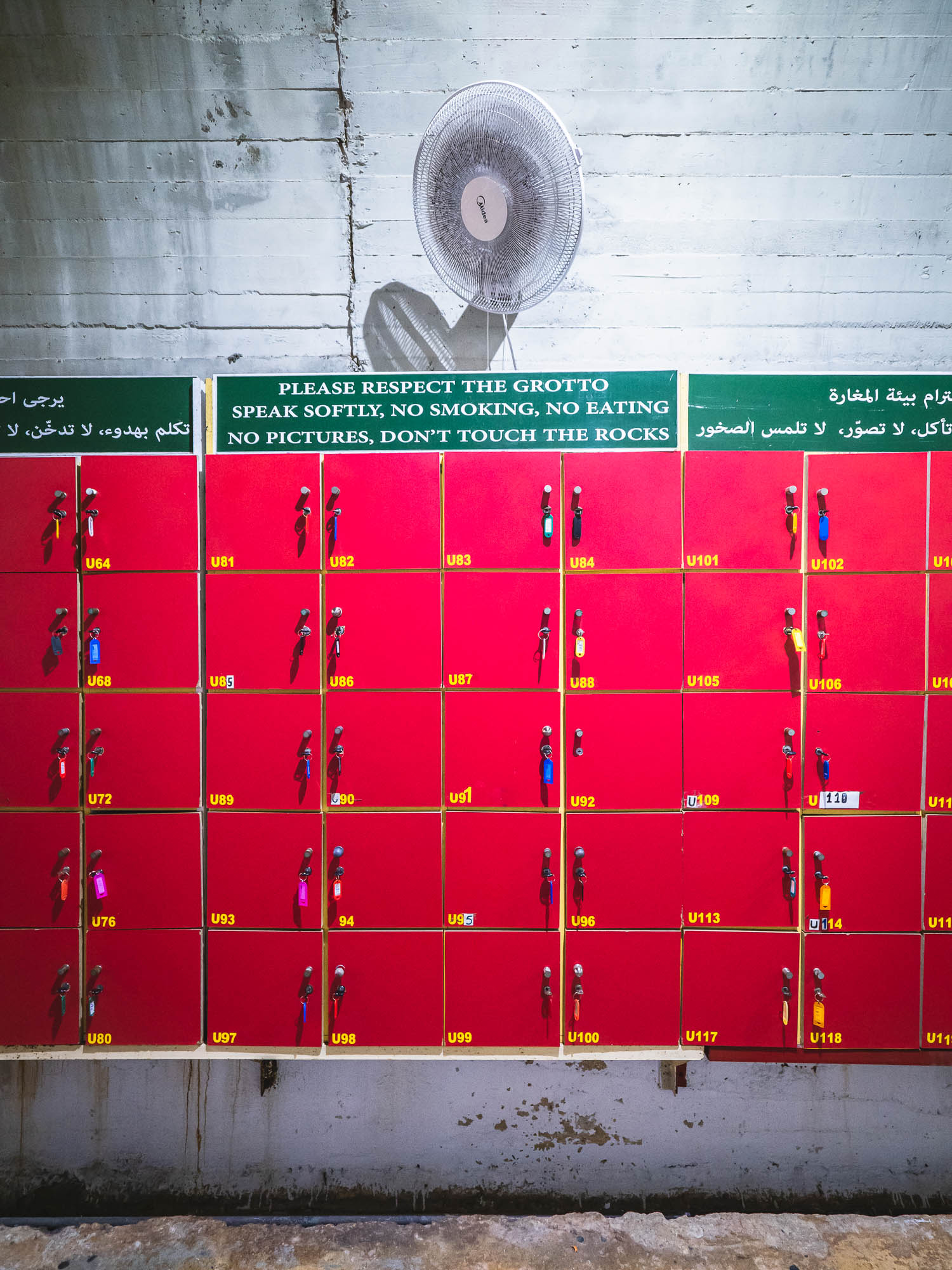
Respect the Grotto
The rules are strict, and phones and cameras are not allowed to be taken inside. Having met and listened to the General Manager of the site who has build and looked after most of the attraction since it reopened after the war in 1995, it was clear that his passion for keeping the attraction in a pristine state is behind the rules, and they seem to be working.
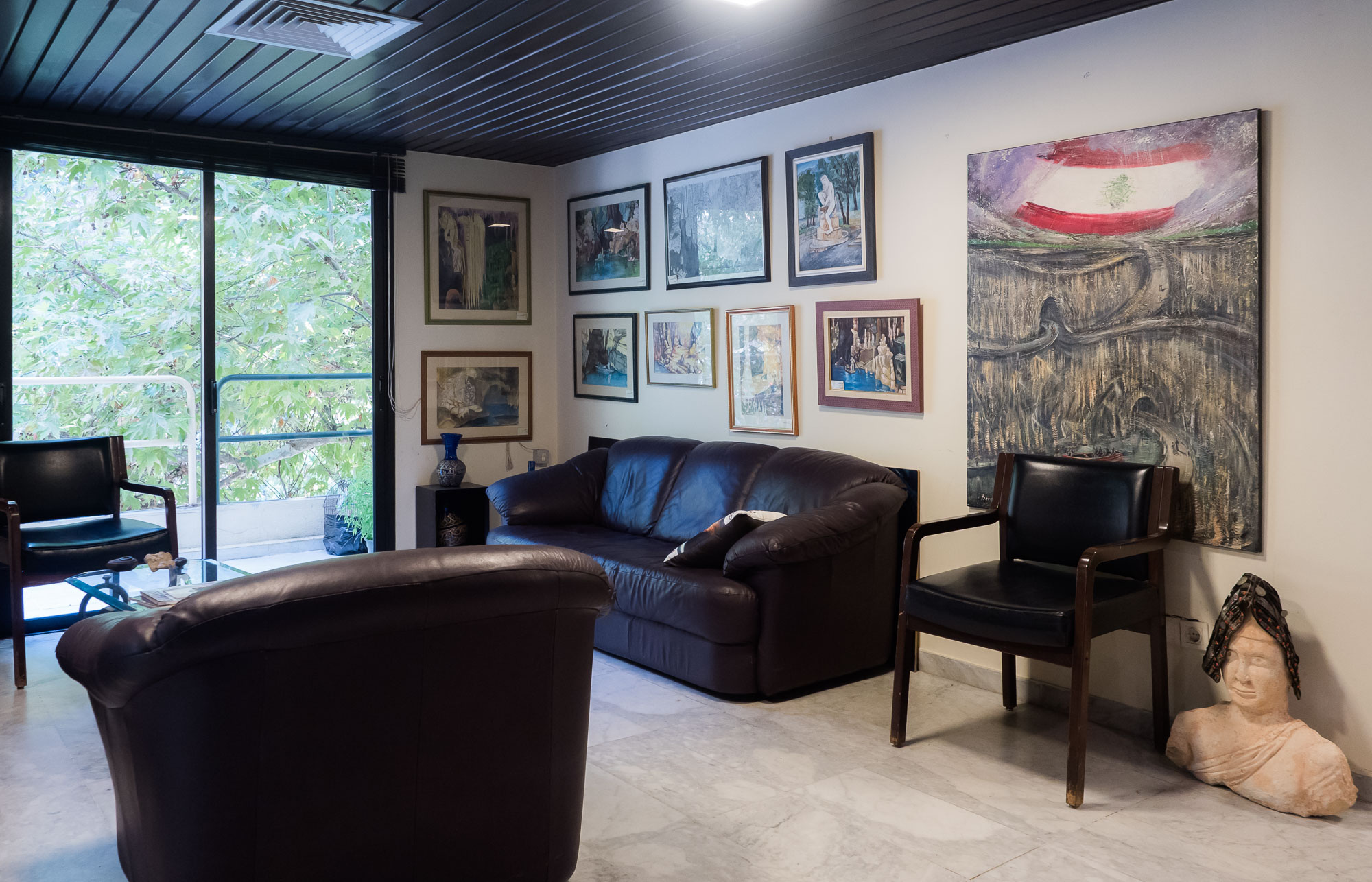
Artworks
The office of the General Manager of the Grotto features paintings of school children as part of a competition. As he explained to me, judges made them draw an outline of the painting on the back while evaluating the submissions, to be sure it was really the children who were responsible for the work.
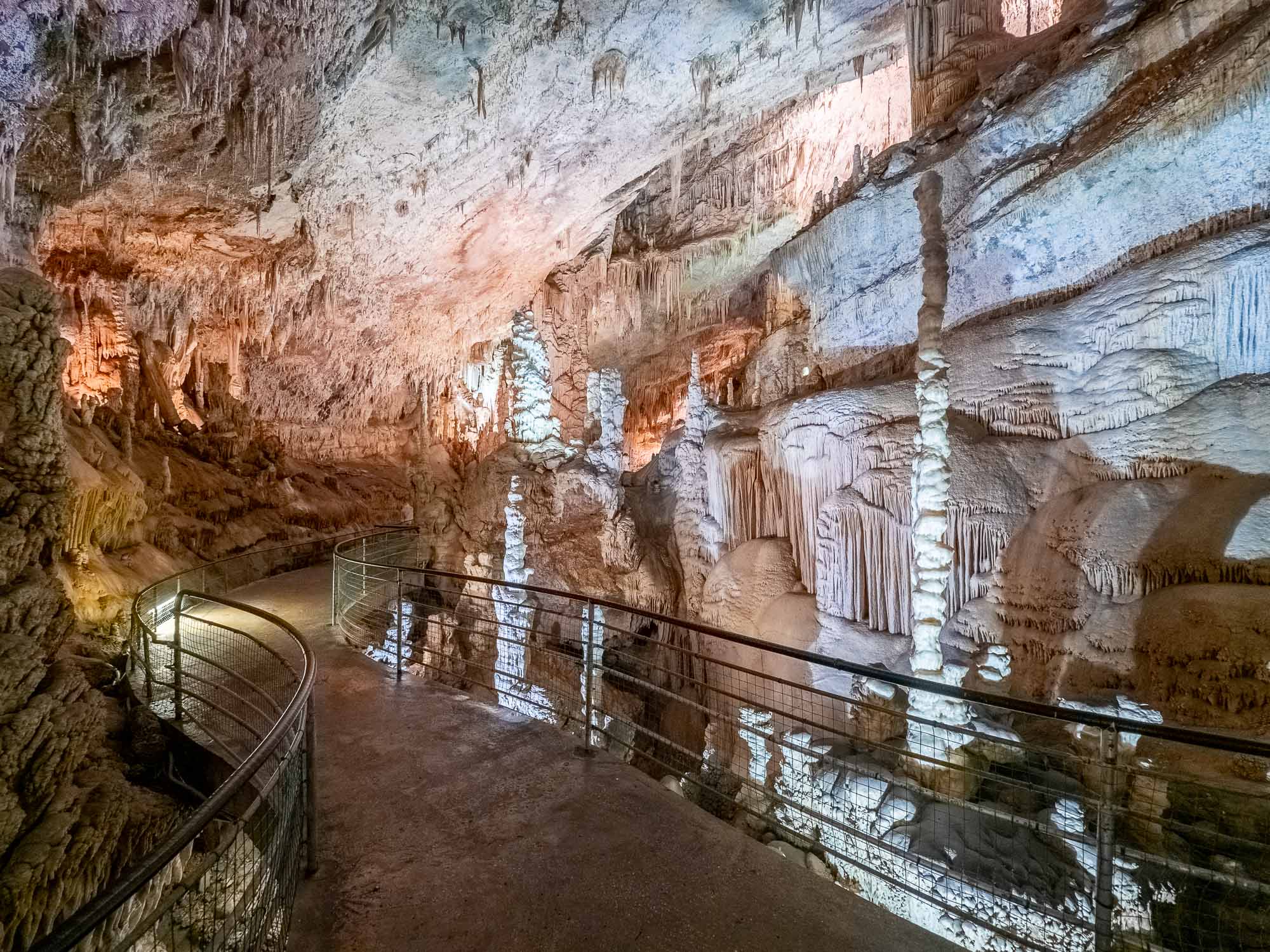
Opportunity
However, after a brief exchange I was deemed trustworthy enough to visit the Grotto after hours. While I didn't have much time inside, it was an incredible experience, for which I'm very grateful.
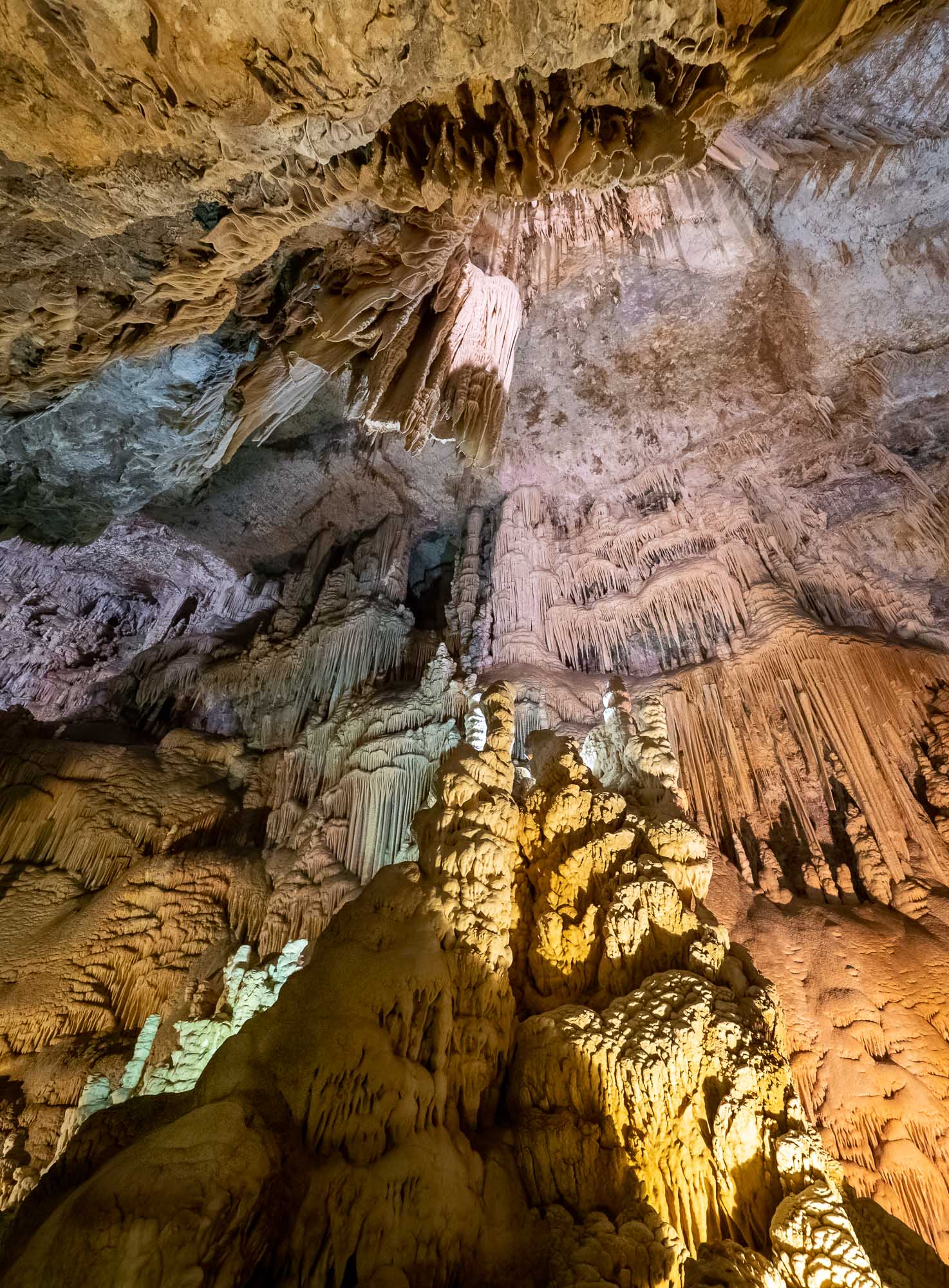
Lighting
One of the most impressive feats is the way the Grotto has been lit up by the team, accentuating the shapes, contrasts, and colours, in the right places.
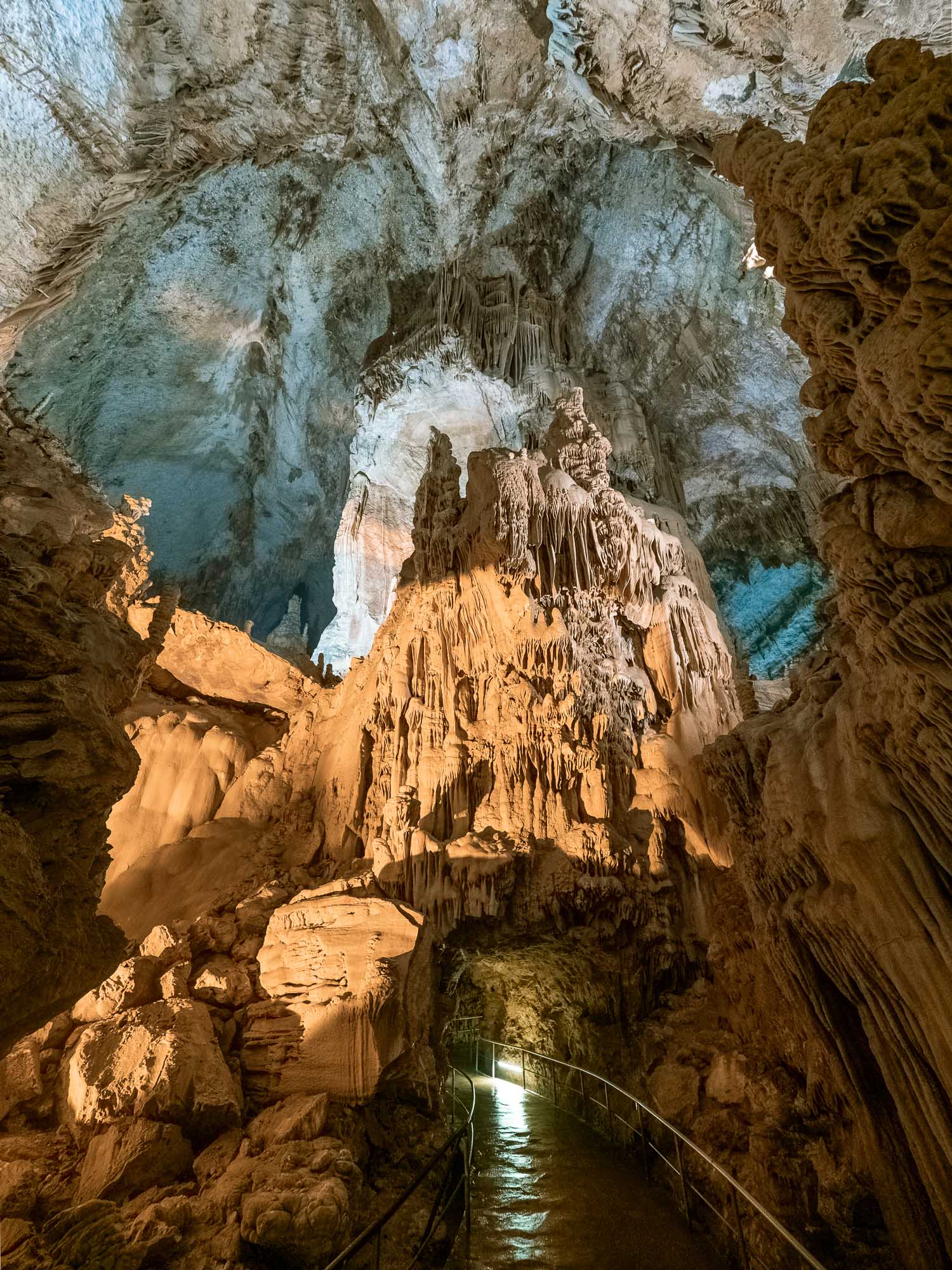
Tunnel
About 50m in, visitors walk through a tunnel connecting the accessible chambers.
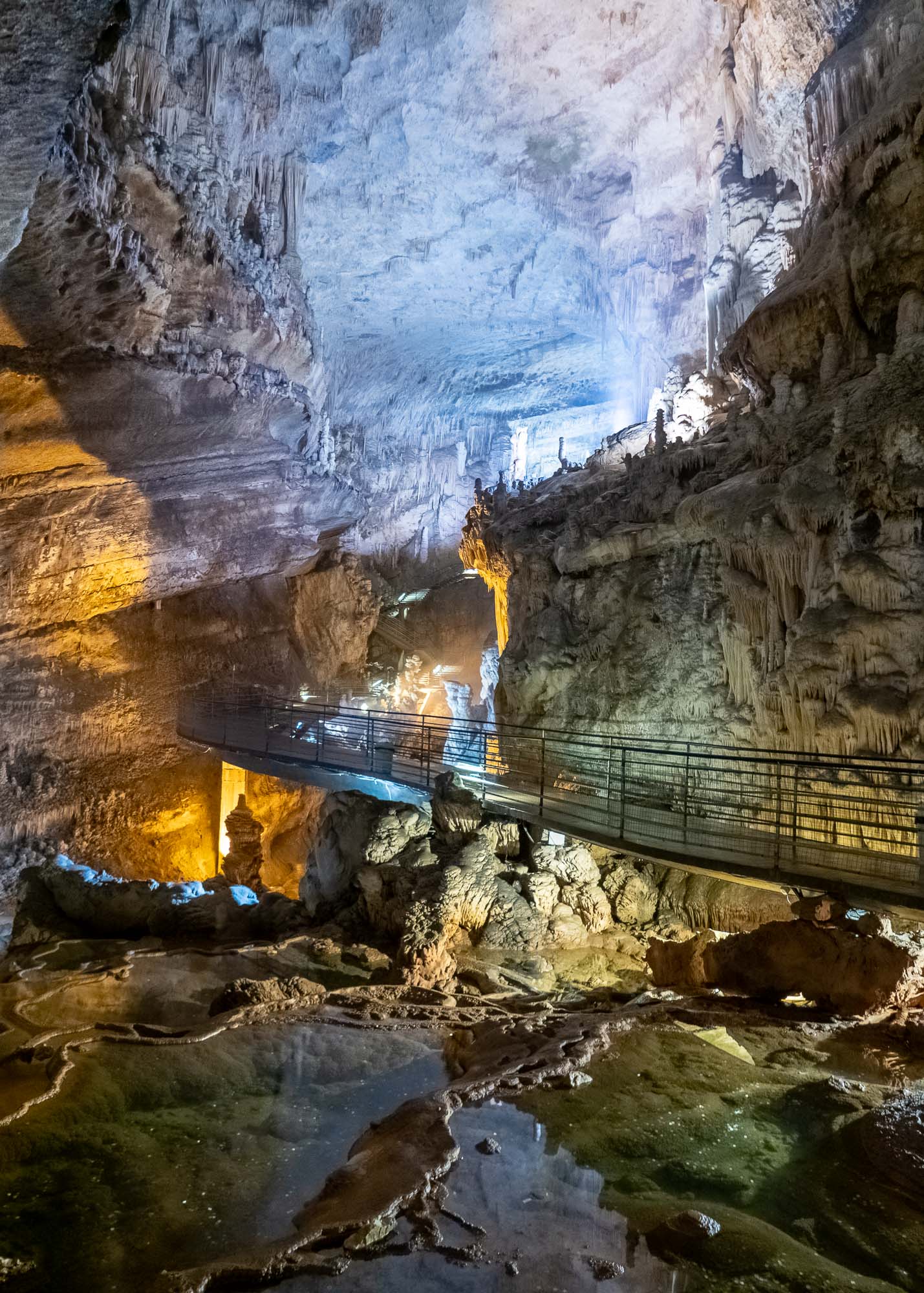
Puddles
While there are several spots where the water drips from the ceiling (side note - this is much more amazing if you get a chance to be in the cave in absolute silence like I was) water collects in only a few spots in the Upper Grotto.

Scale
Note the viewing platform on the top left, providing a sense of scale in this photo. The space is enourmous.
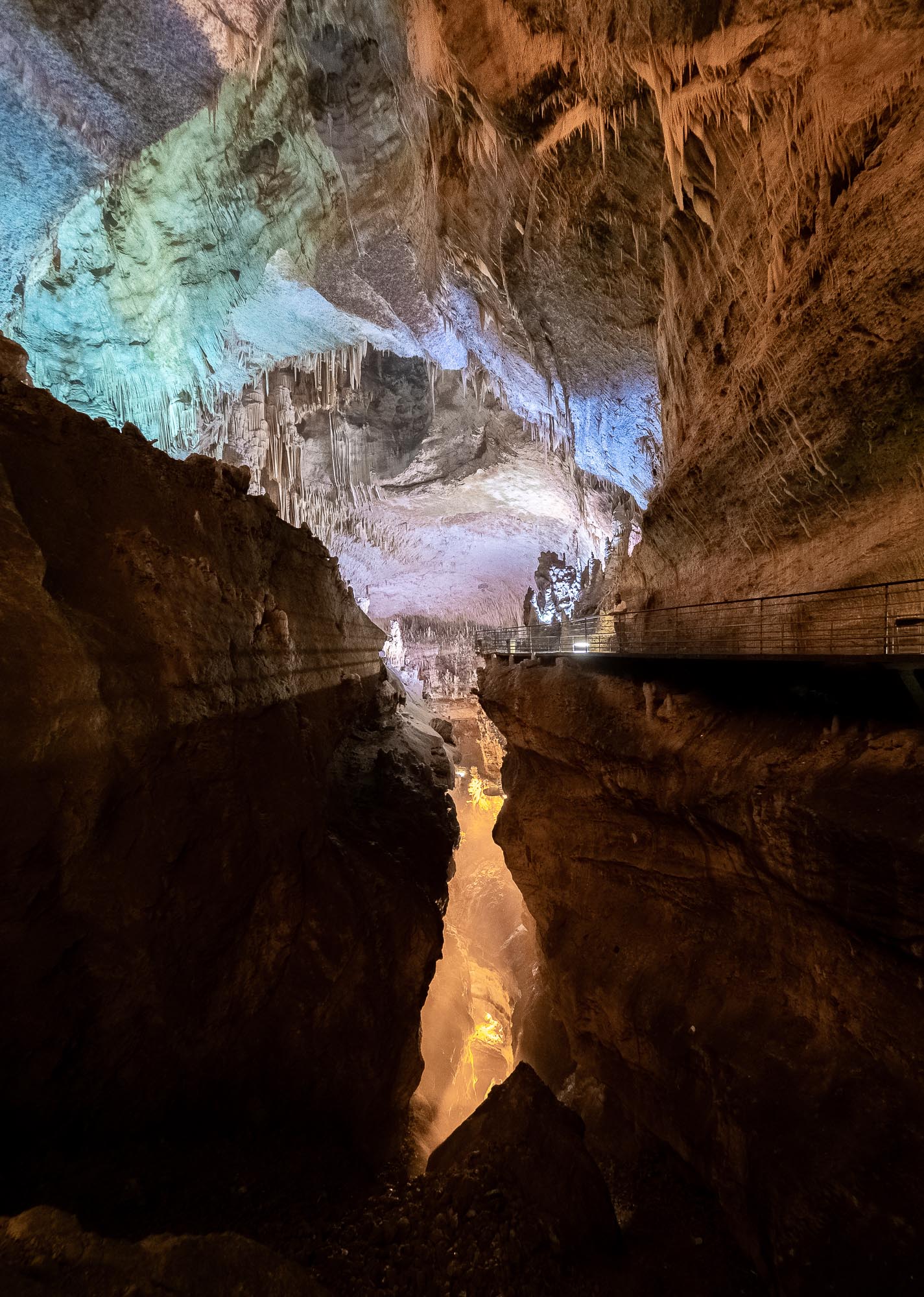
Depth
The total length of the two interconnected caves is almost 9km, but not all of it is accessible.
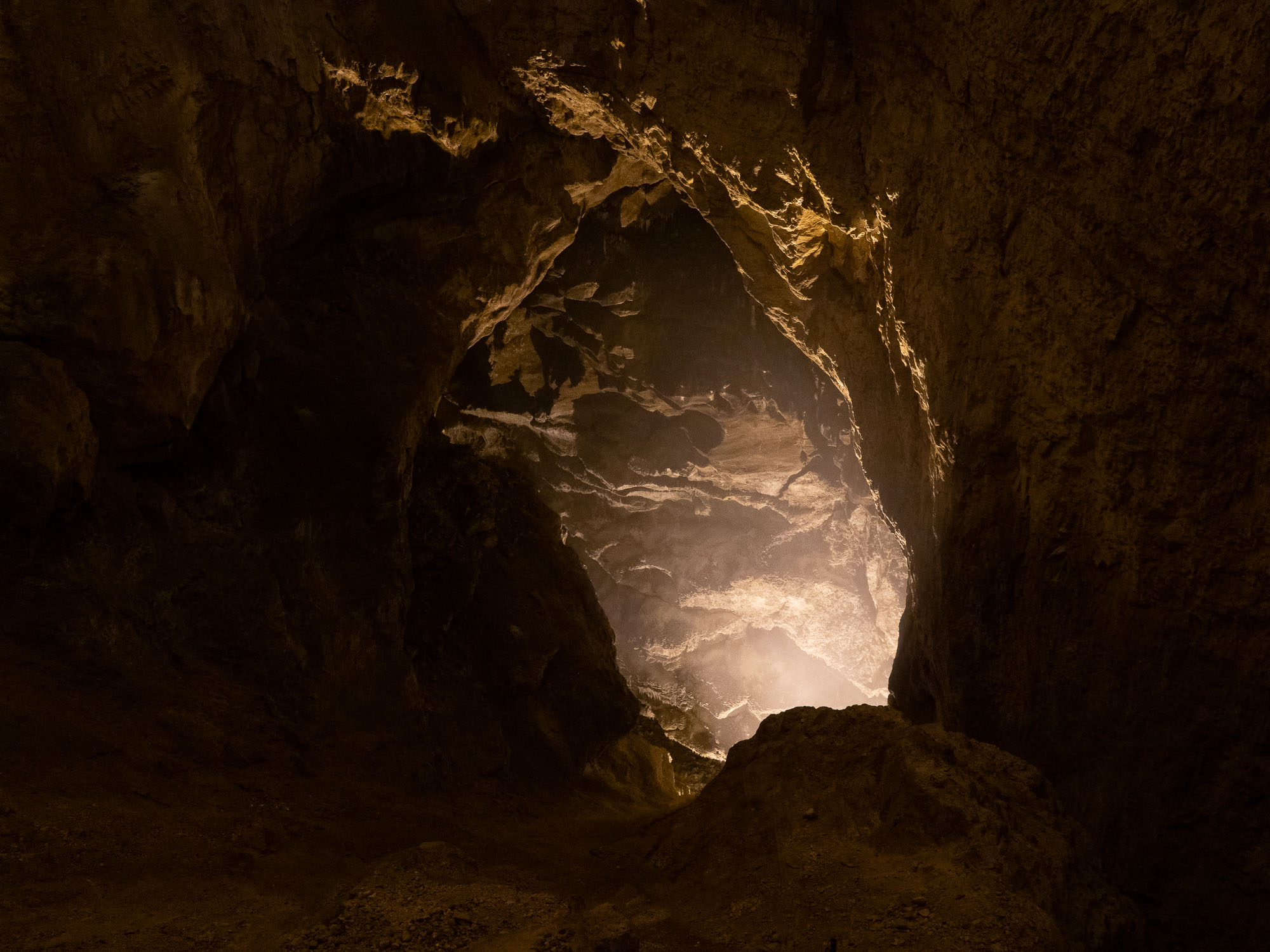
Into The Deep
Looking down into a part of the cave not accessible on the walkway, past the third and tallest chamber with an impressive height of 120m.
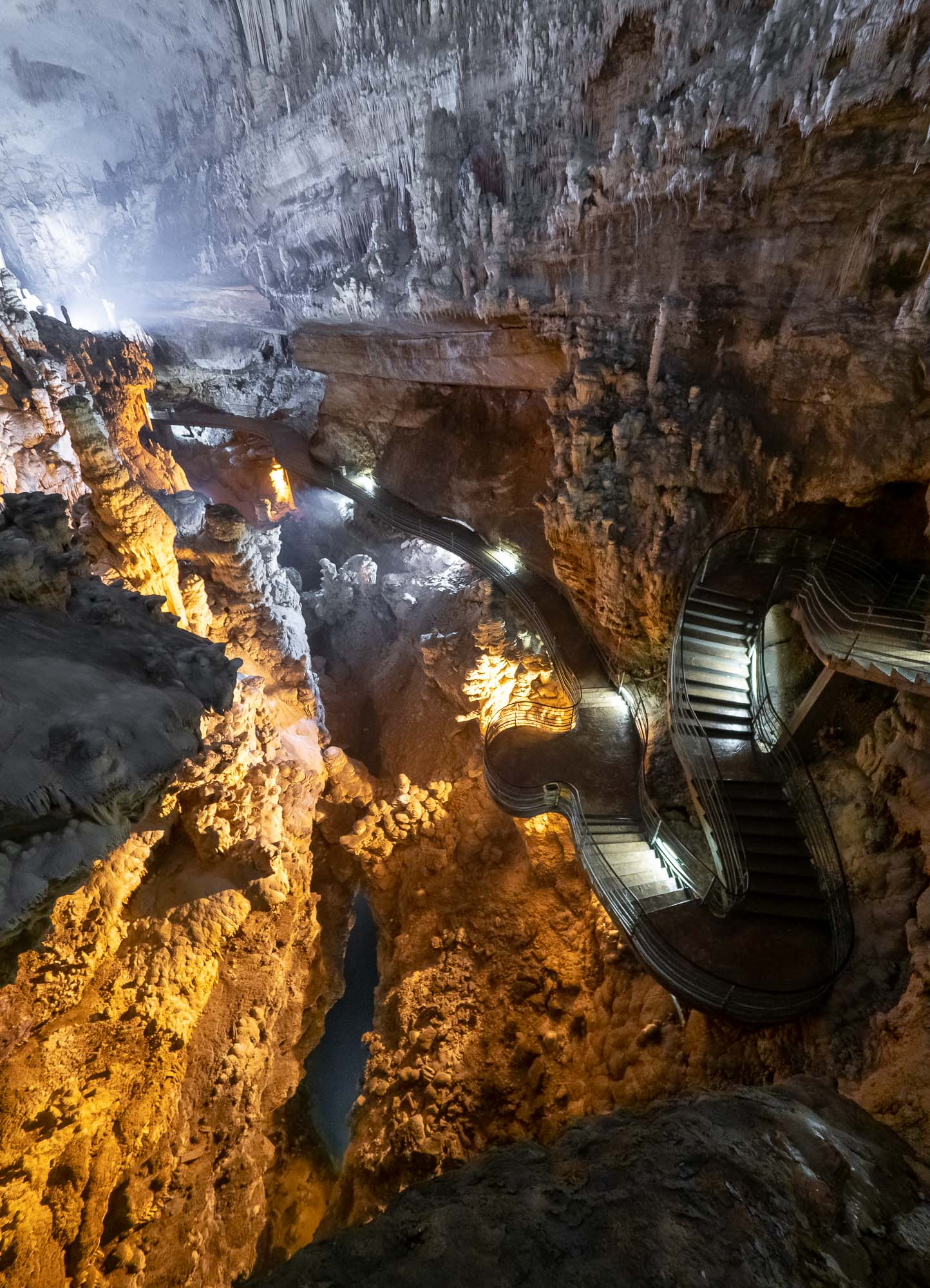
River
The underground river that runs into the second ower grotto, provides drinking water to more than 1 million people. You can get a glimpse of it on the bottom center in this photo.

Water
A close up between the tight gaps in the rocks reveals the river, 50m down from the platform.
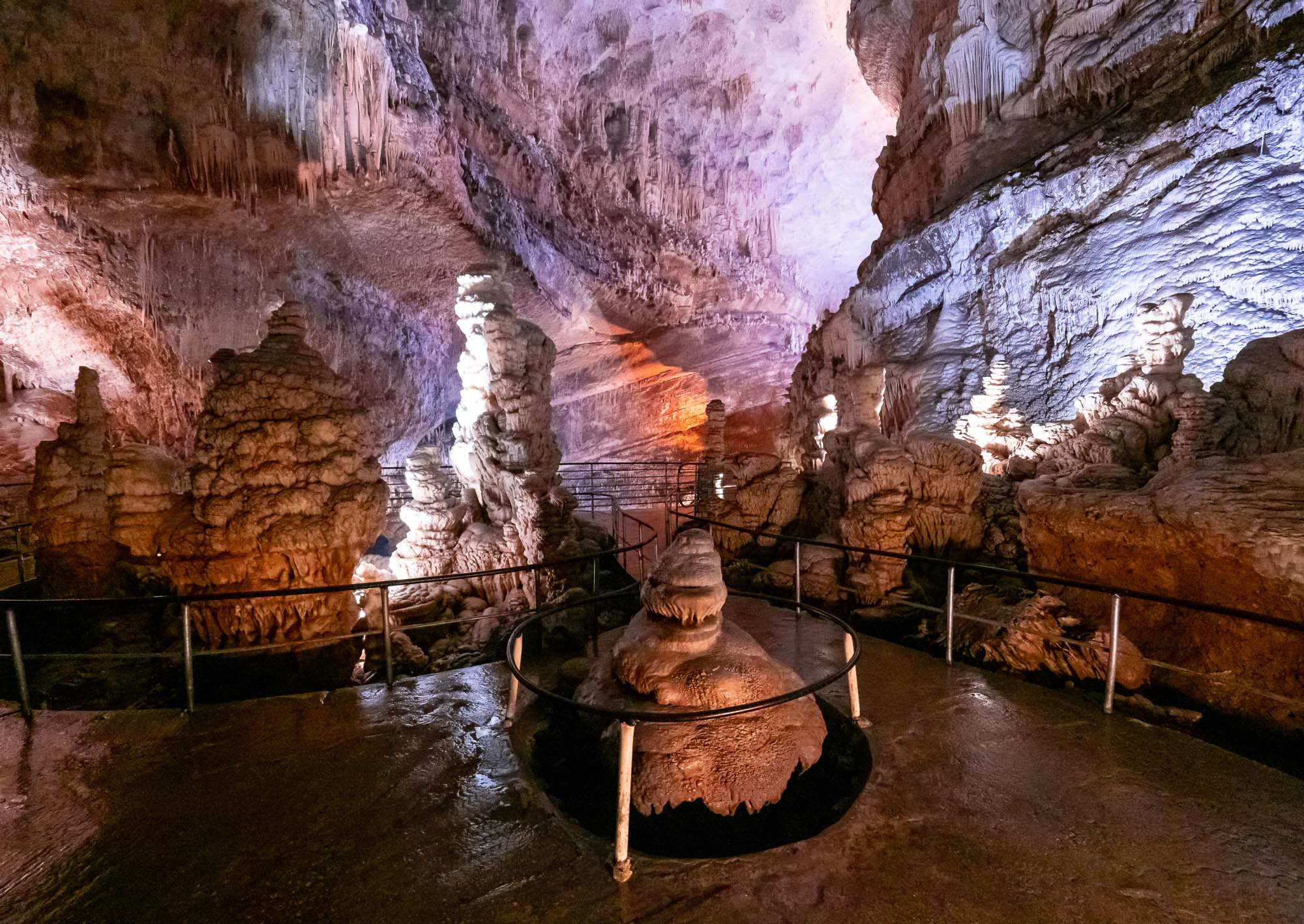
Walkway
A total of the three chambers are accessible to tourists in the Upper Cave, lined with walkways to avoid damaging the natural environment.
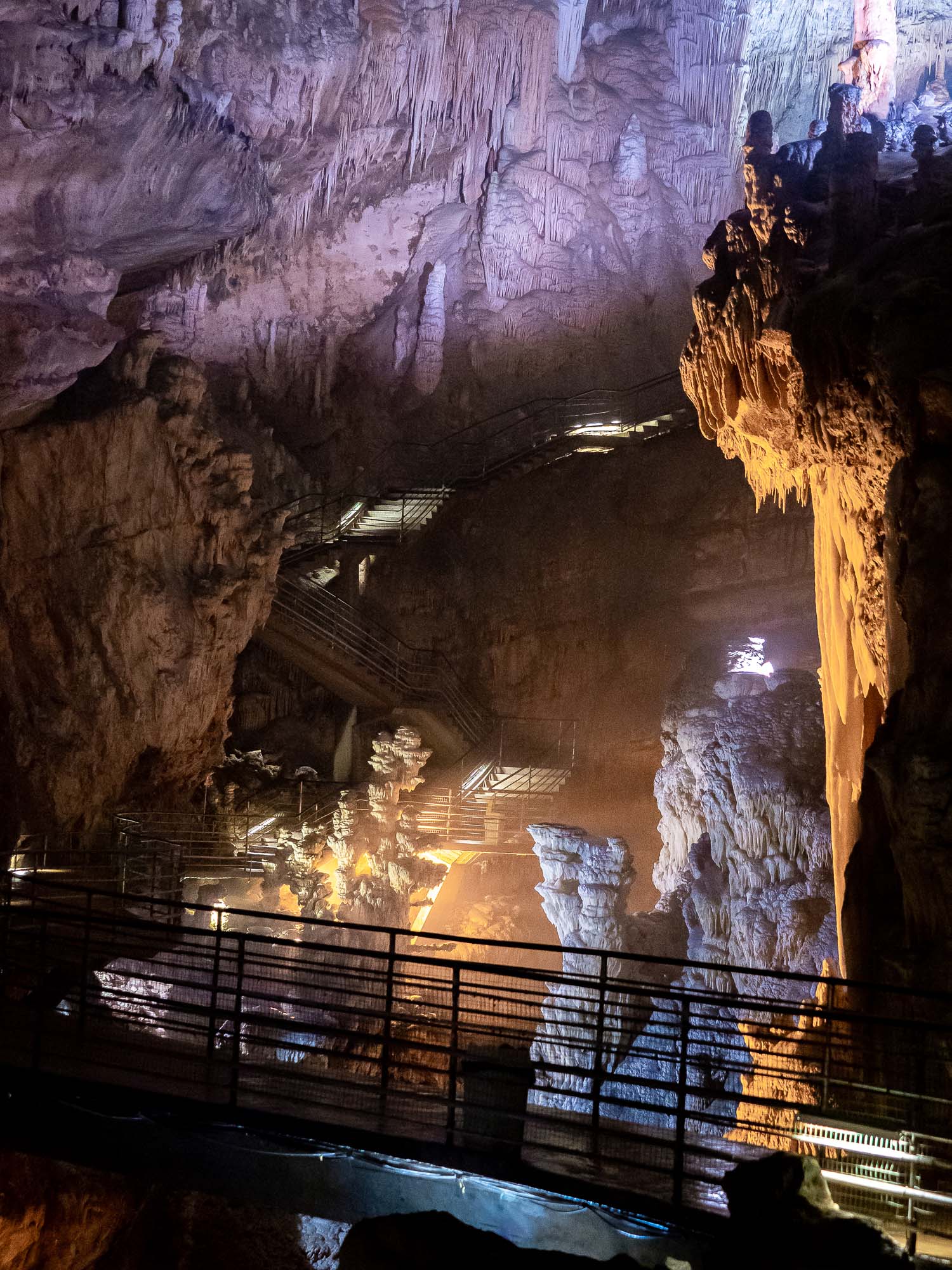
Climb
As you make your way up the 5th or 6th flight of stairs, you truly start to appreciate the size of the chambers.
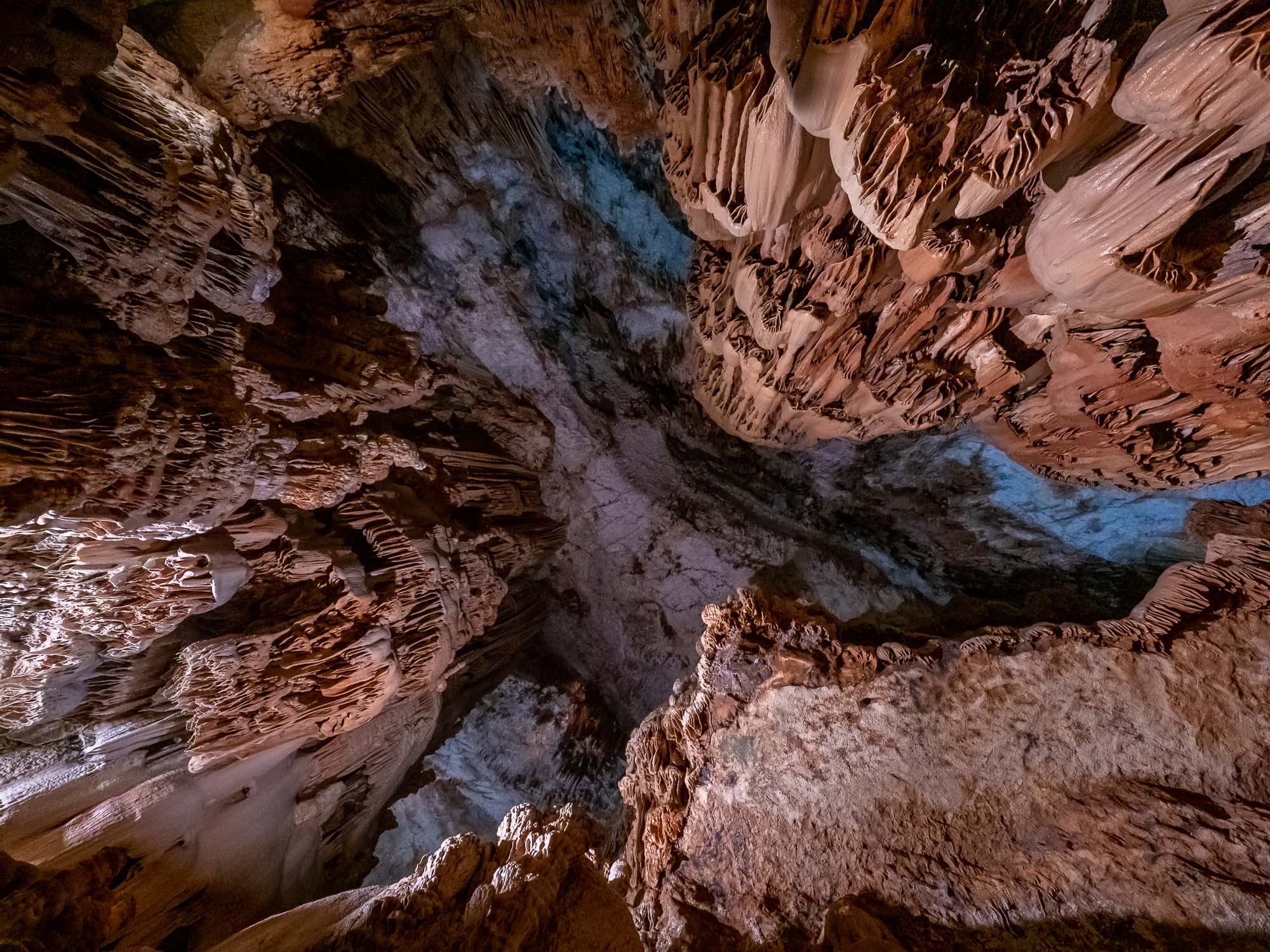
Upwards
A view upwards in between the karstic limestone rock formations.
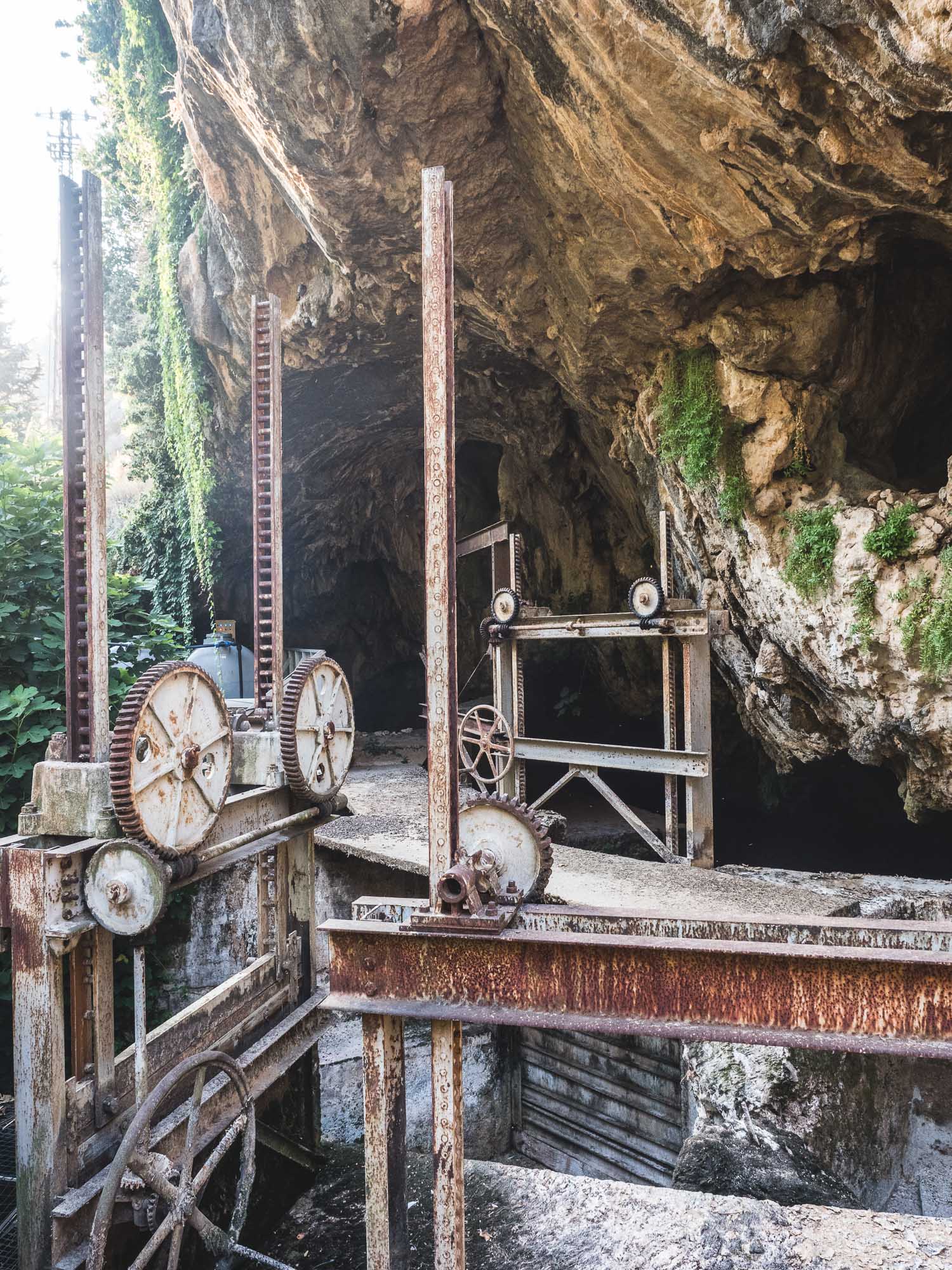
Flow Control
Water dams and valves have been set up to control the power of the river out of the grotto.
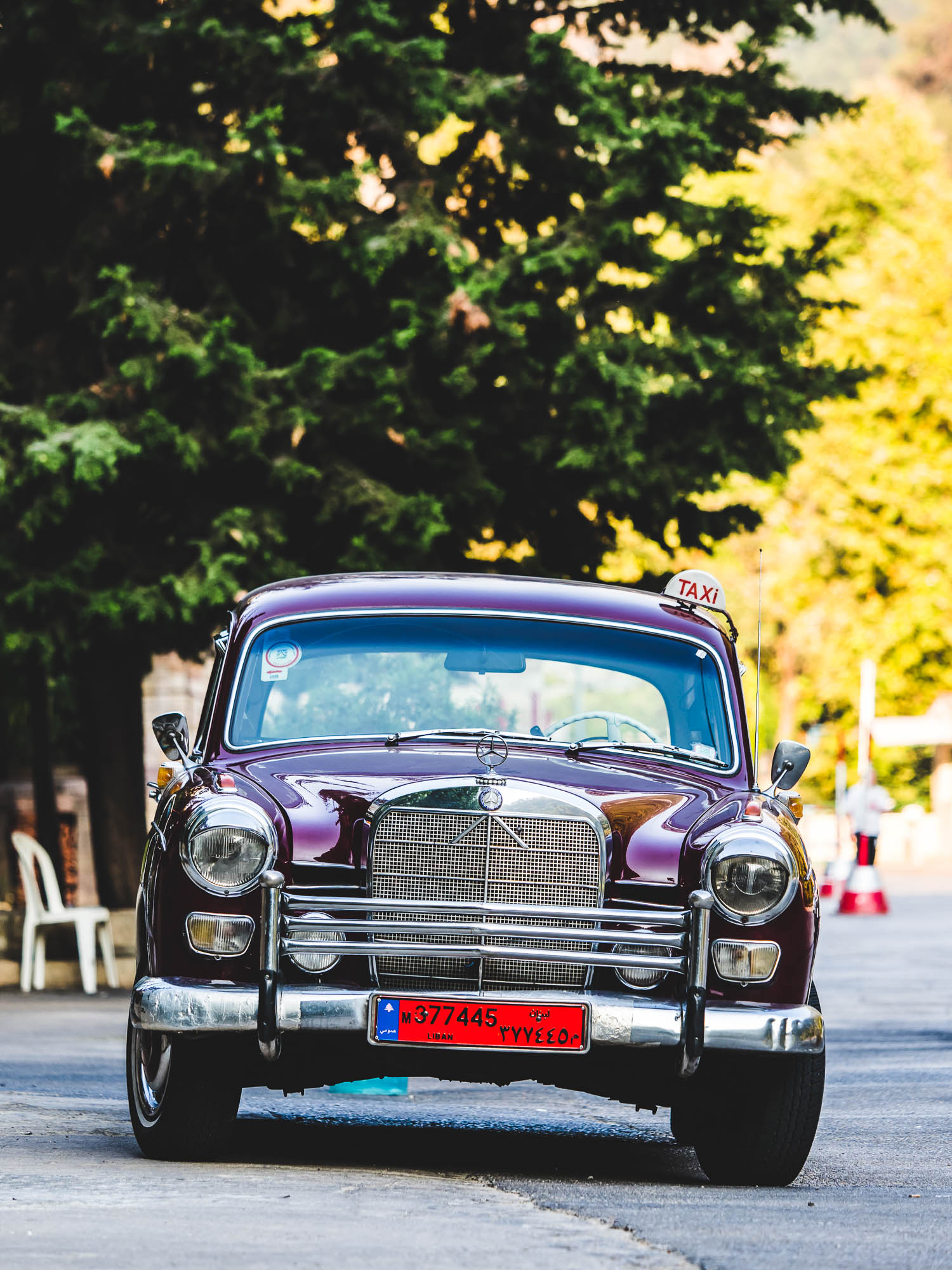
Classic
There are many old cars in Lebanon, but not many in this condition.
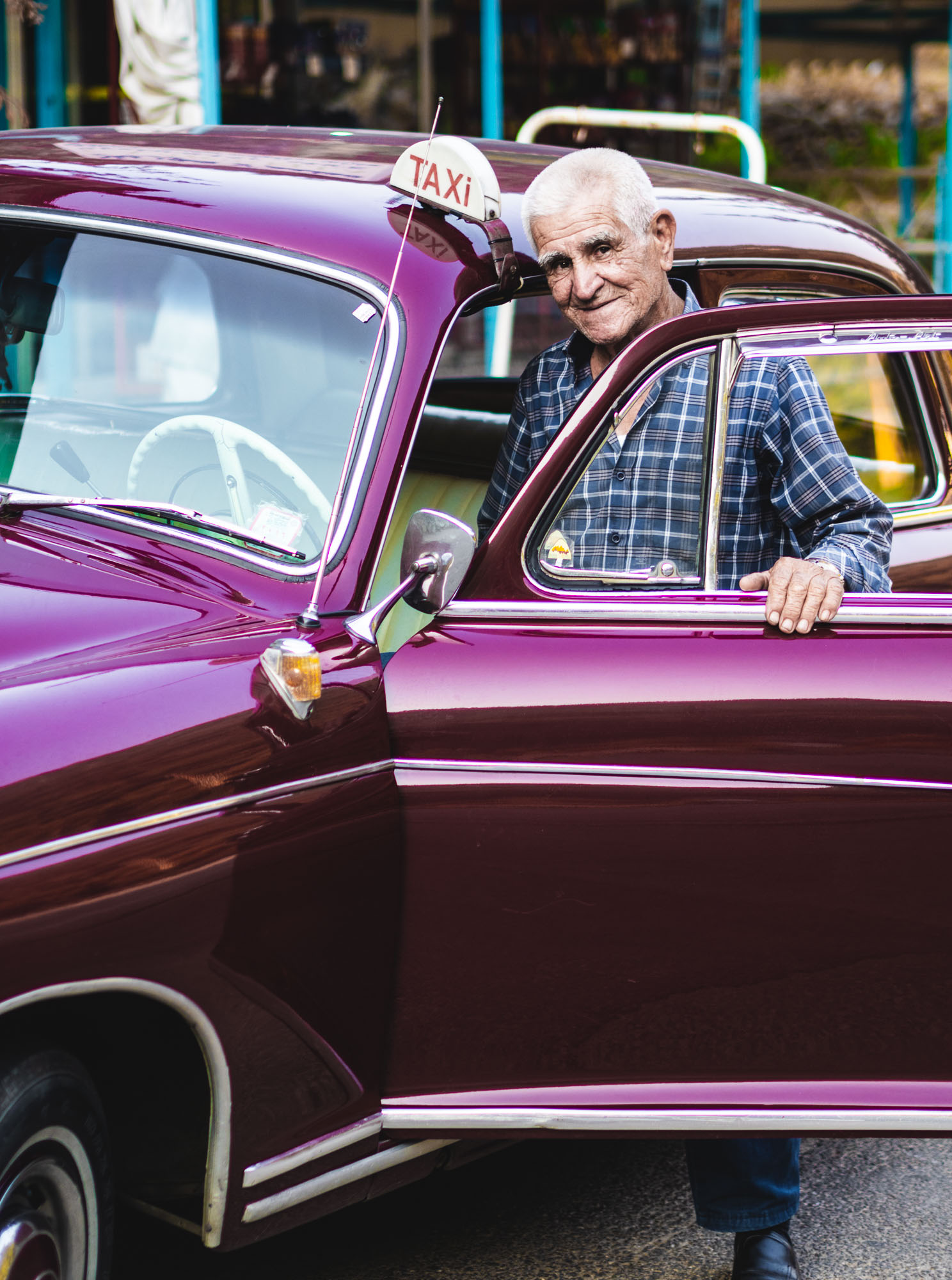
Owner
The owner is visibly proud of his vehicle.
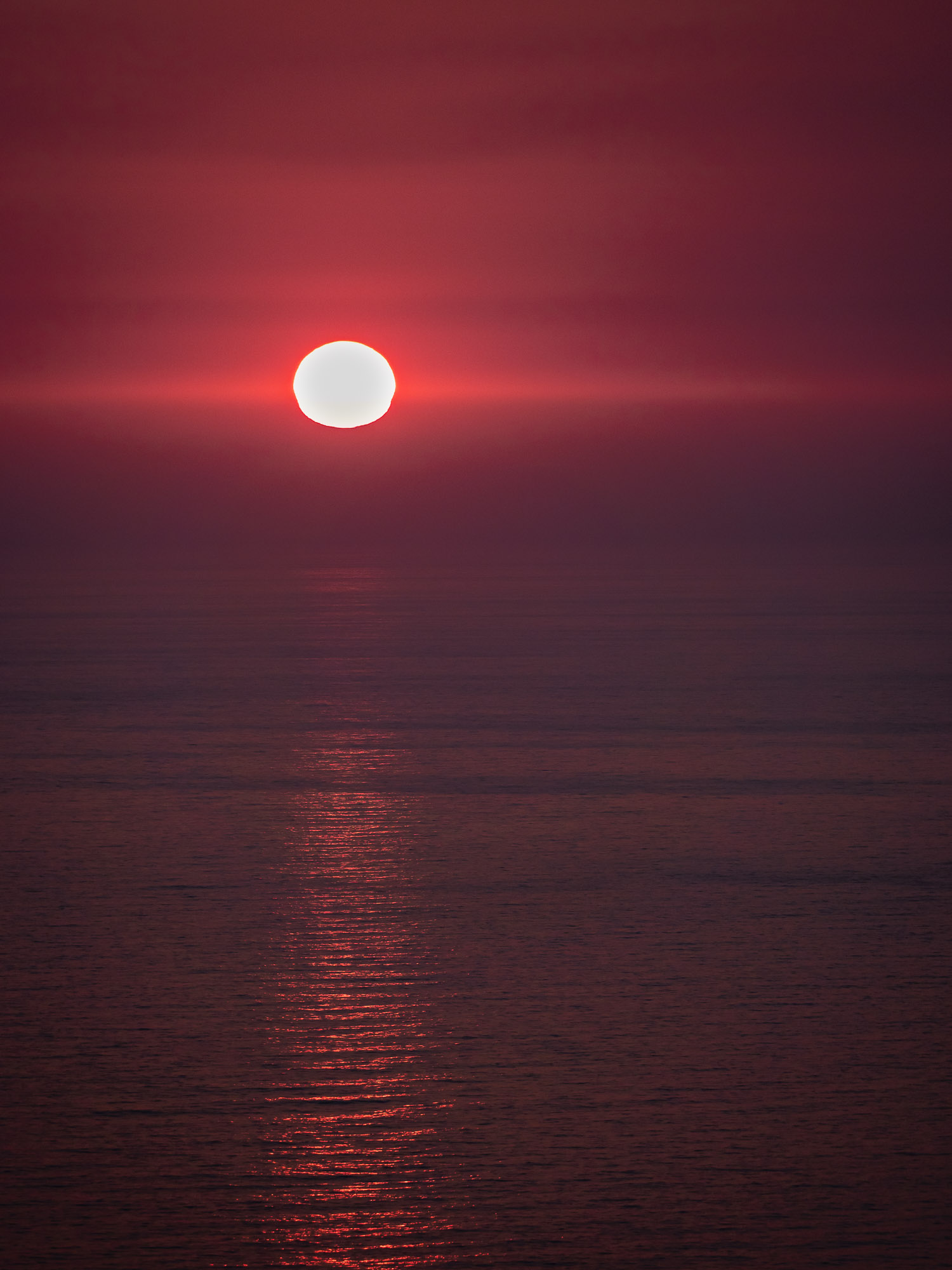
Last Evening
The end of my stay came with a beautiful red sunset and a nice dinner with the people that were the reason for the trip.
Puglia - Italy's South at its Best
A recent wedding invitation gave me the opportunity to explore the south of Italy a bit more, specifically the region of Apulia, or Puglia in the native language. 2 days of driving from Bari through Polignano a Mare, the Grotte di Castellana, Alberobello with its Trulli houses, and the white city of Ostuni gives you a great impression of the typical architecture, food and nature around this part of Italy.

A recent wedding invitation gave me the opportunity to explore the south of Italy a bit more, specifically the region of Apulia, or Puglia in the native language. 2 days of driving from Bari through Polignano a Mare, the Grotte di Castellana, Alberobello with its Trulli houses, and the white city of Ostuni gives you a great impression of the typical architecture, cityscape, and nature around this part of Italy.

Polignano a Mare
One of the most famous towns on the coast of Apulia, with the Lama Monachile, also known as Cala Porto, beach area surrounded by cliffs and houses.
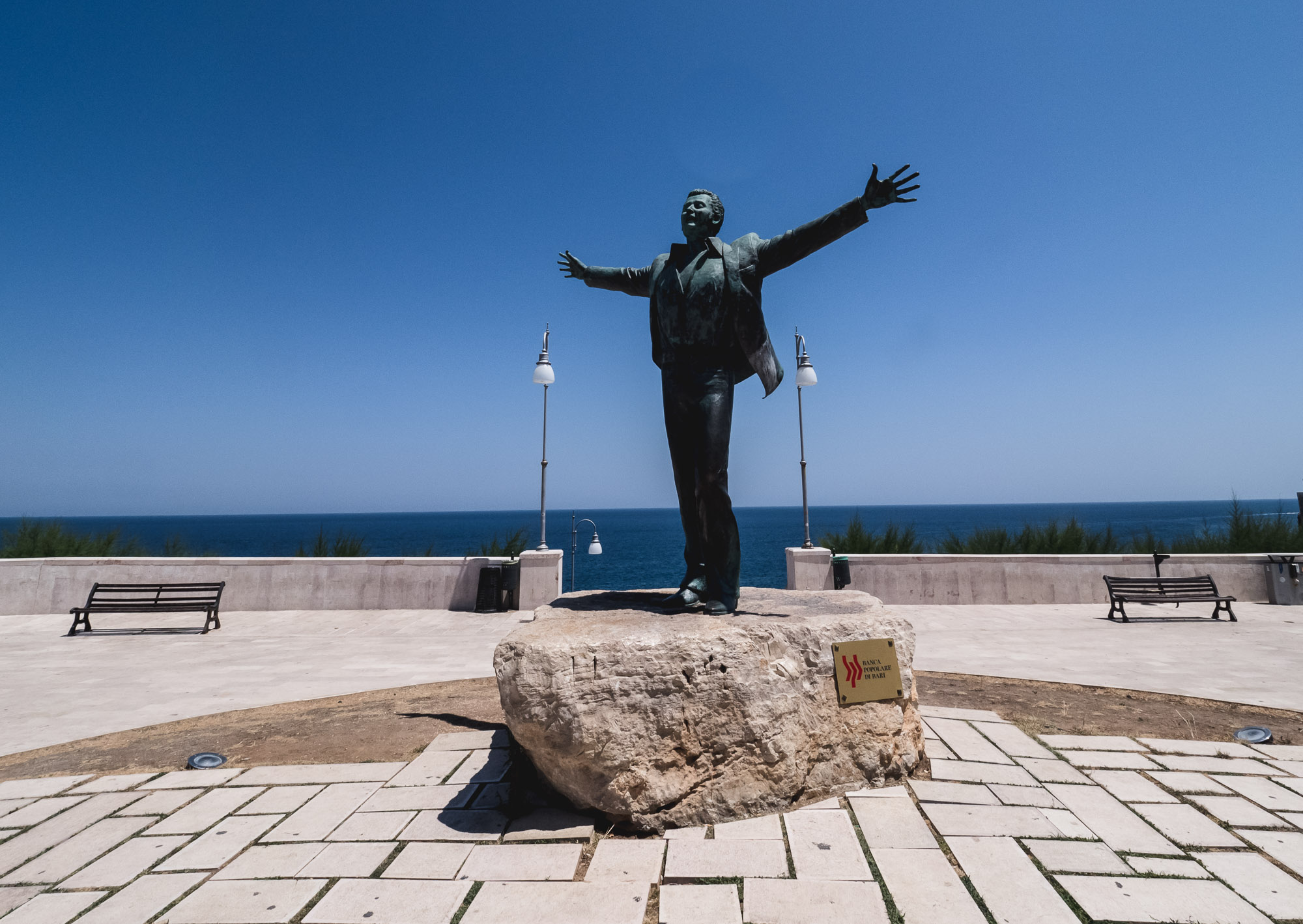
Statua di Domenico Modugno
Famous for the song Nel blu, dipinto di blu - or commonly known as "Volare".

Coast View
The view from the northern cliffs towards the cirty.
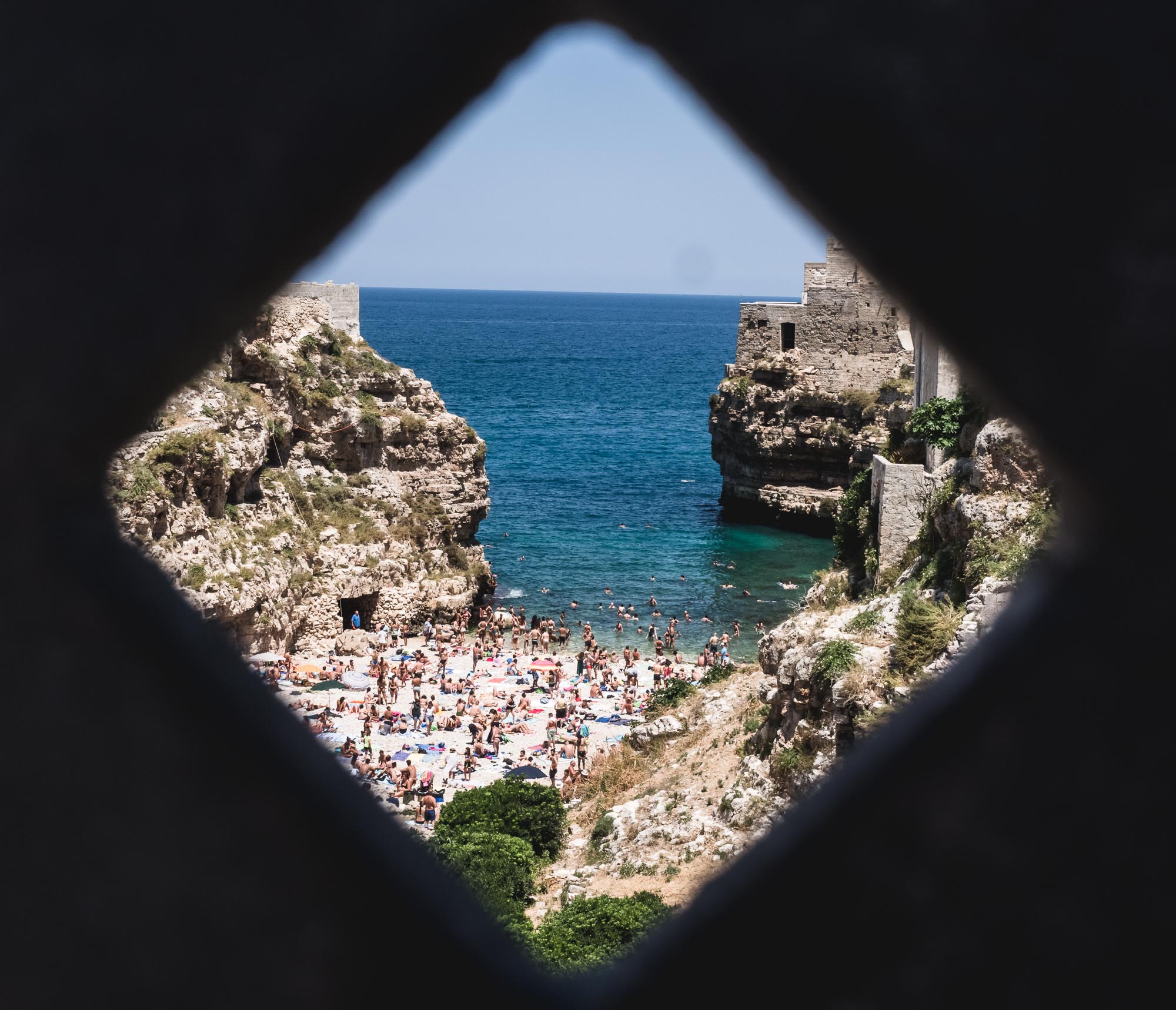
Postcard Beach
The city's most famous spot, seen through the rails of the Roman bridge.
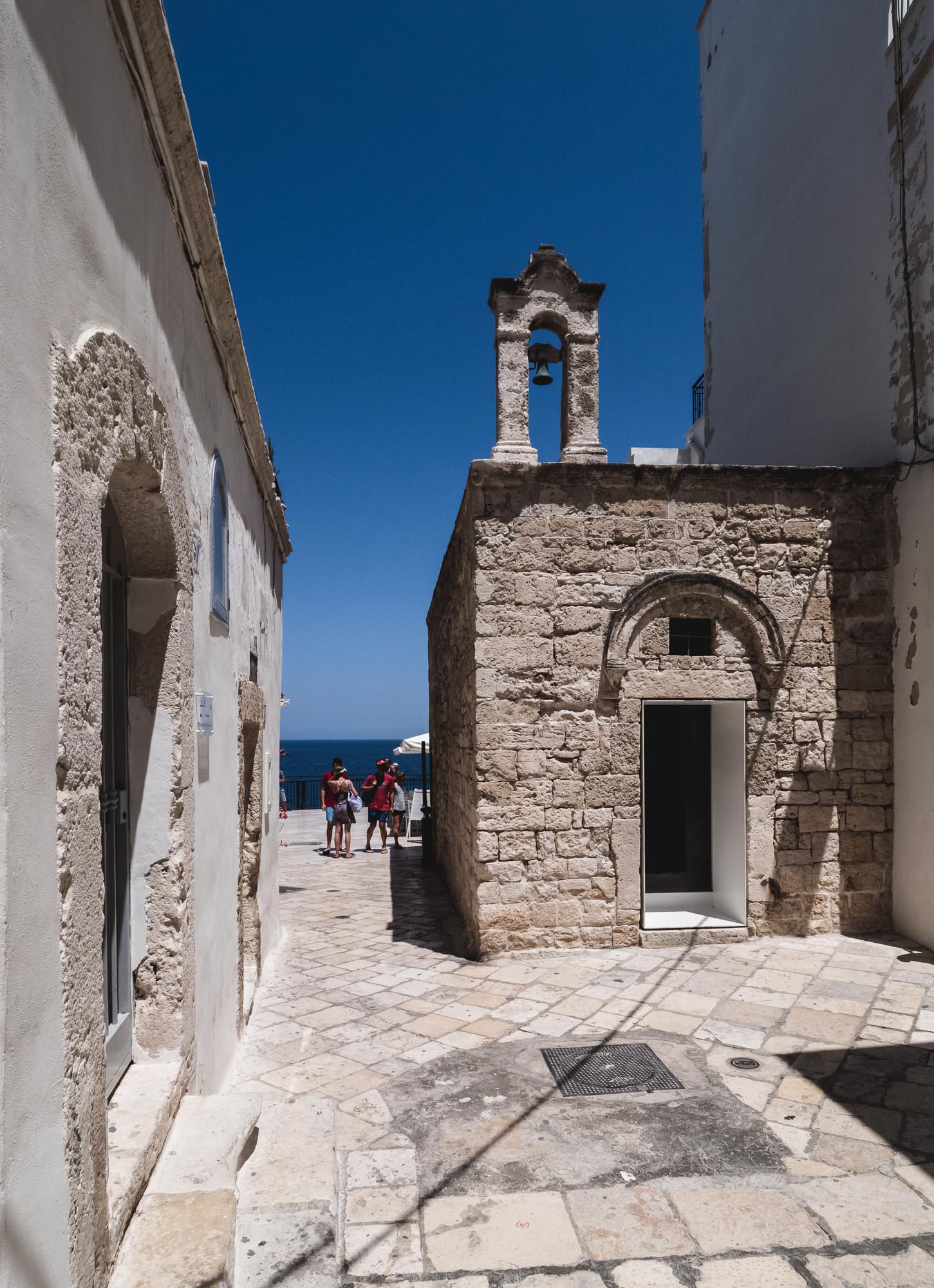
Little Church
A tiny church in the older parts of Polignano a Mare.
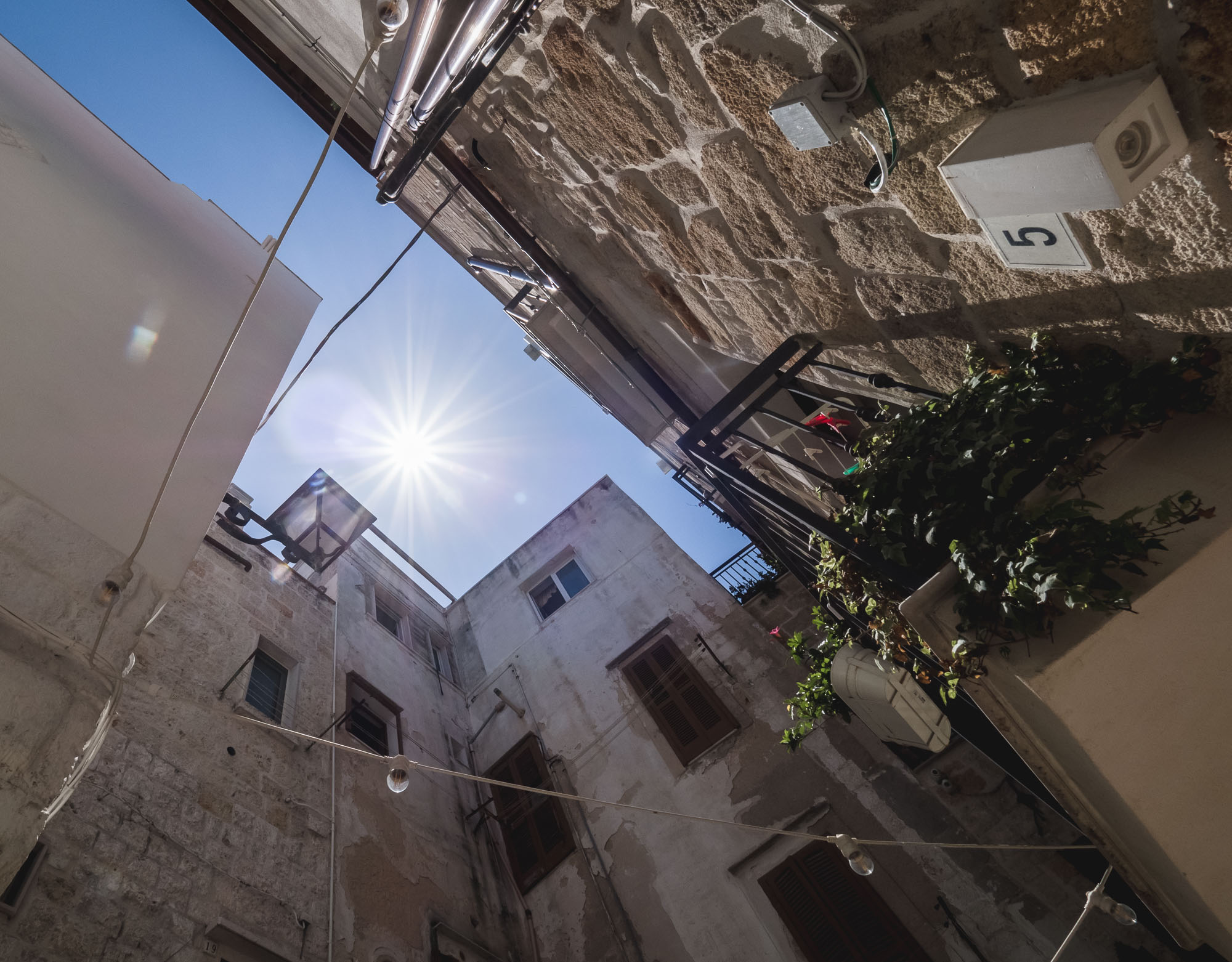
Up
Looking towards the sky between the tightly built houses.
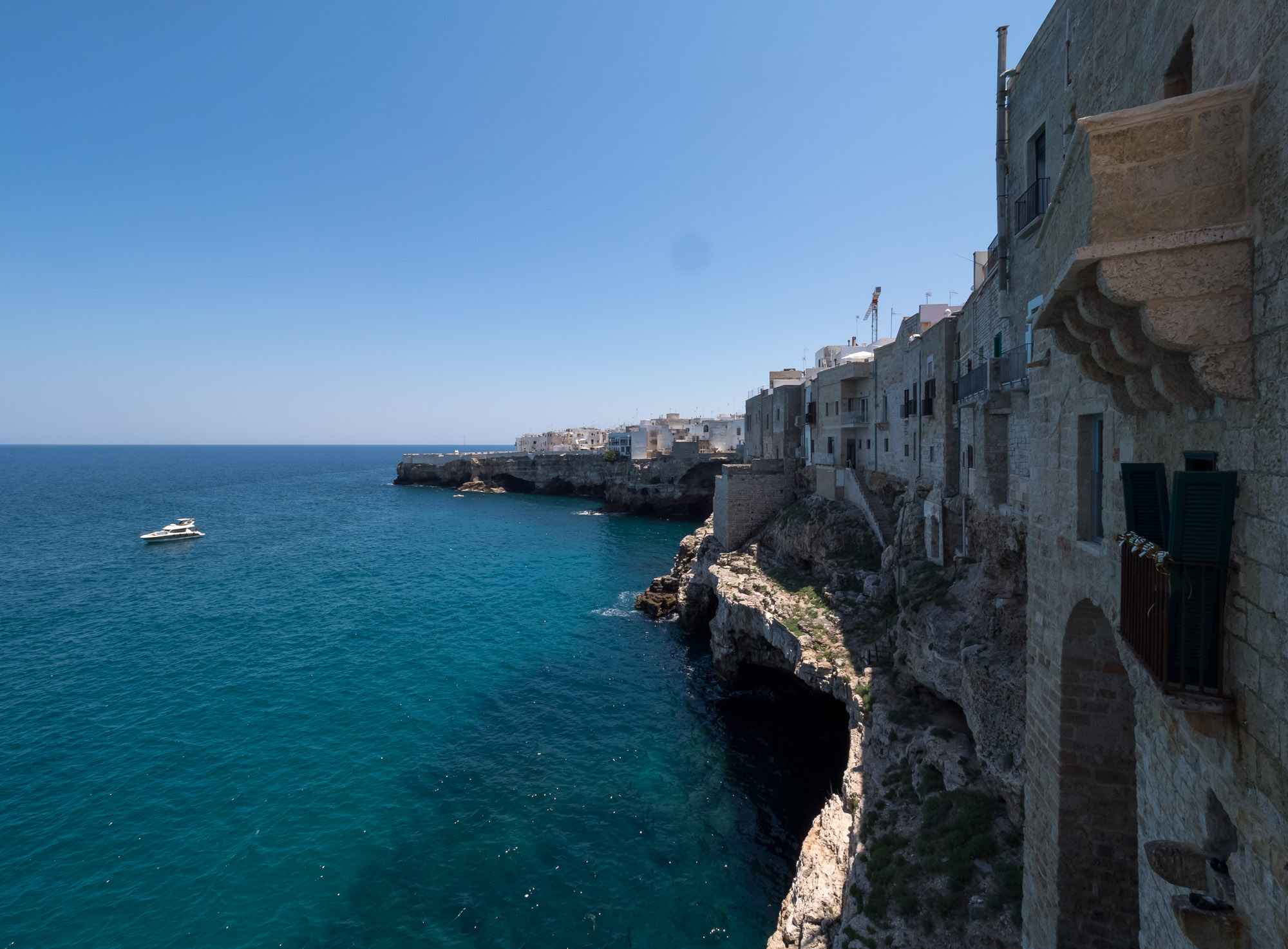
Cliffs
There are many small balconies and other spots in the city to enjoy these views.
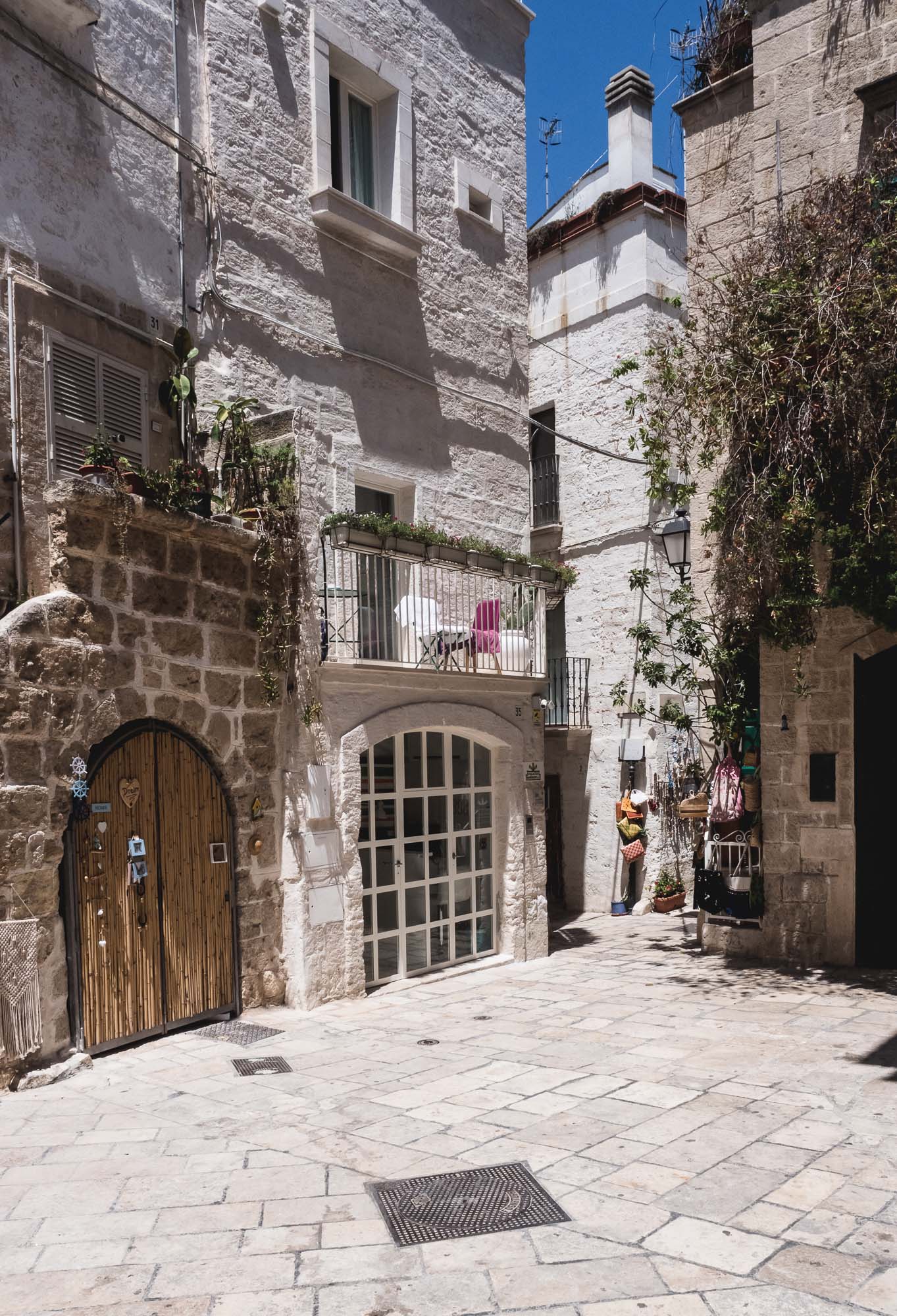
Cityscpe
Typical southern Italy impressions.
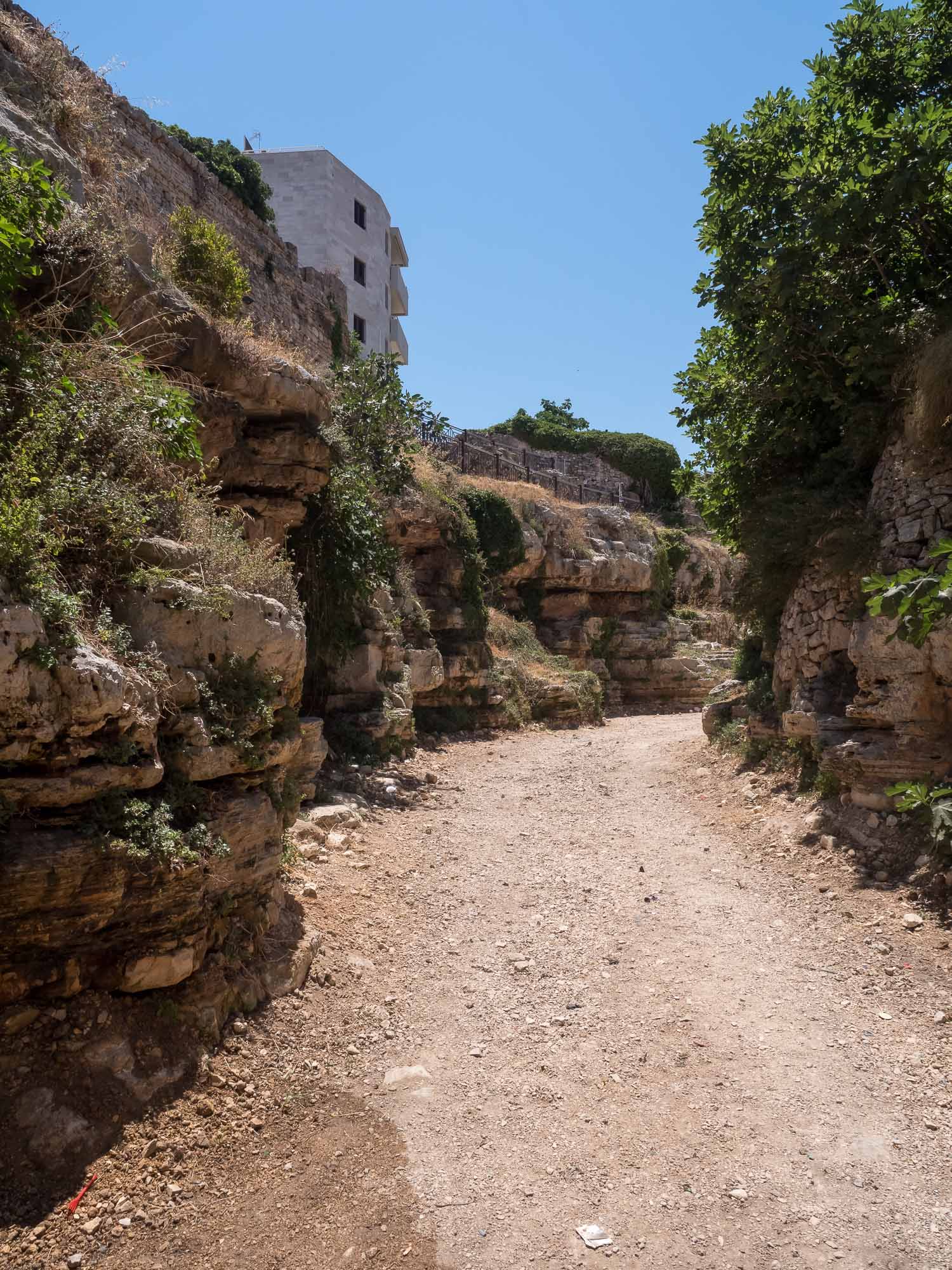
Riverbed
What I presume is a riverbed that was once flowing into the sea, and now leads to the famous beach, crossed by the Roman bridge.

Roman Bridge
The aforementioned bridge connecting two parts of the city.
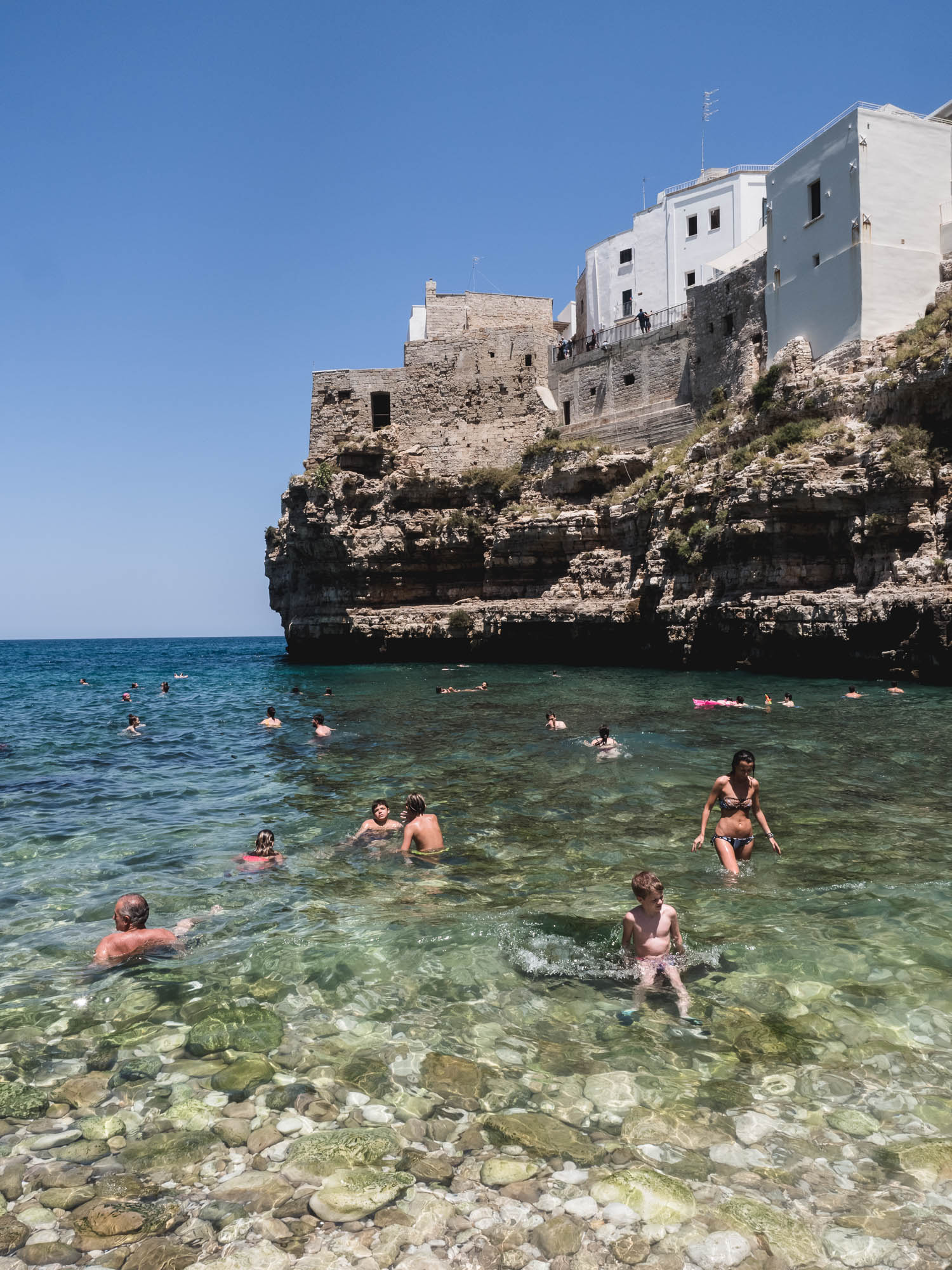
The Adriatic Sea
Beautiful water and good temperatures in July.

Unnatural Cliffs
Built on top the actual limestone rock are the houses framing the famous beach.
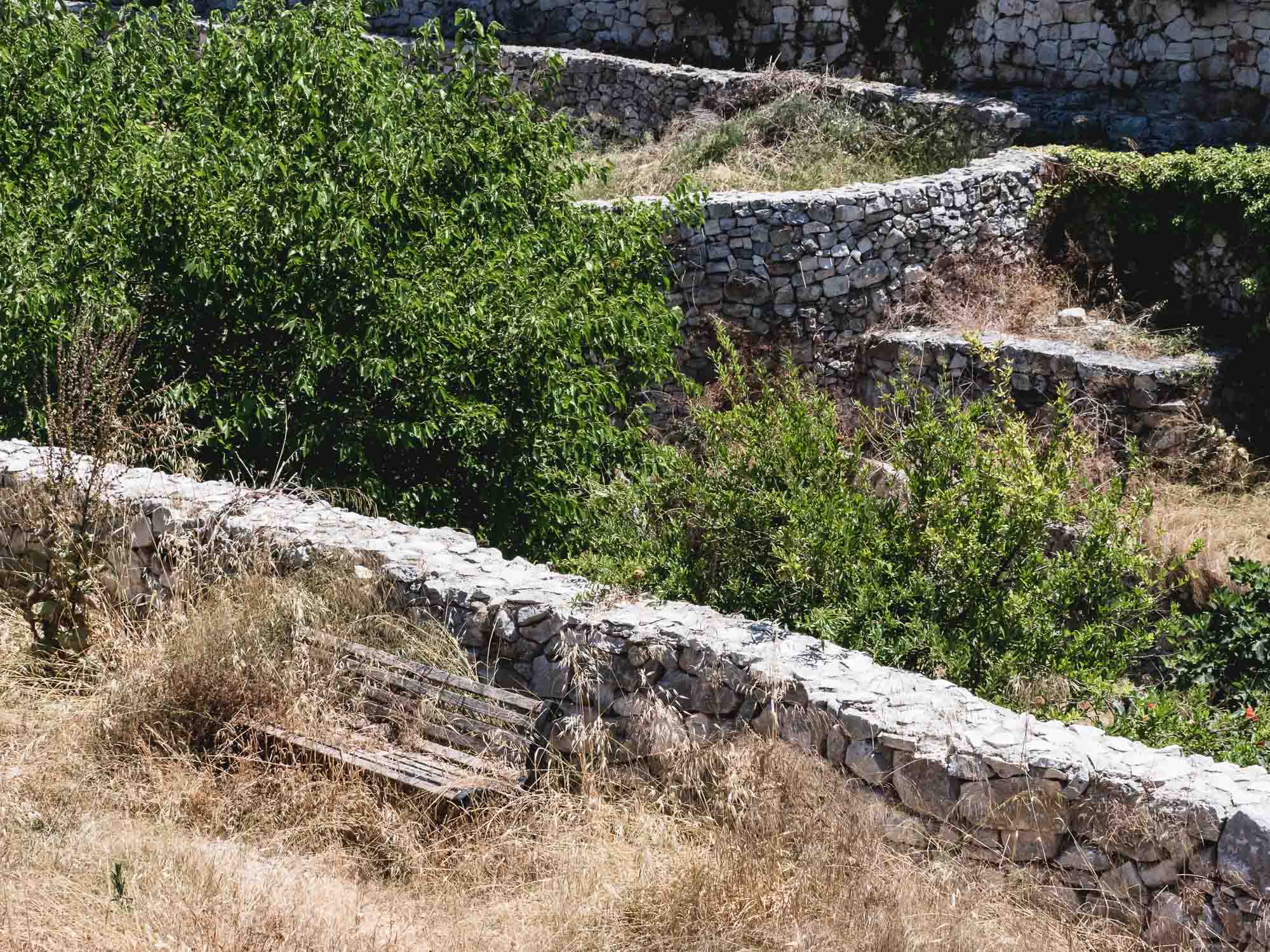
Unused
No one has been sitting here in a while.

Don't Come Closer
Obligatory cat photo, as I moved on from Polignano a Mare to the Grotte di Castellana.
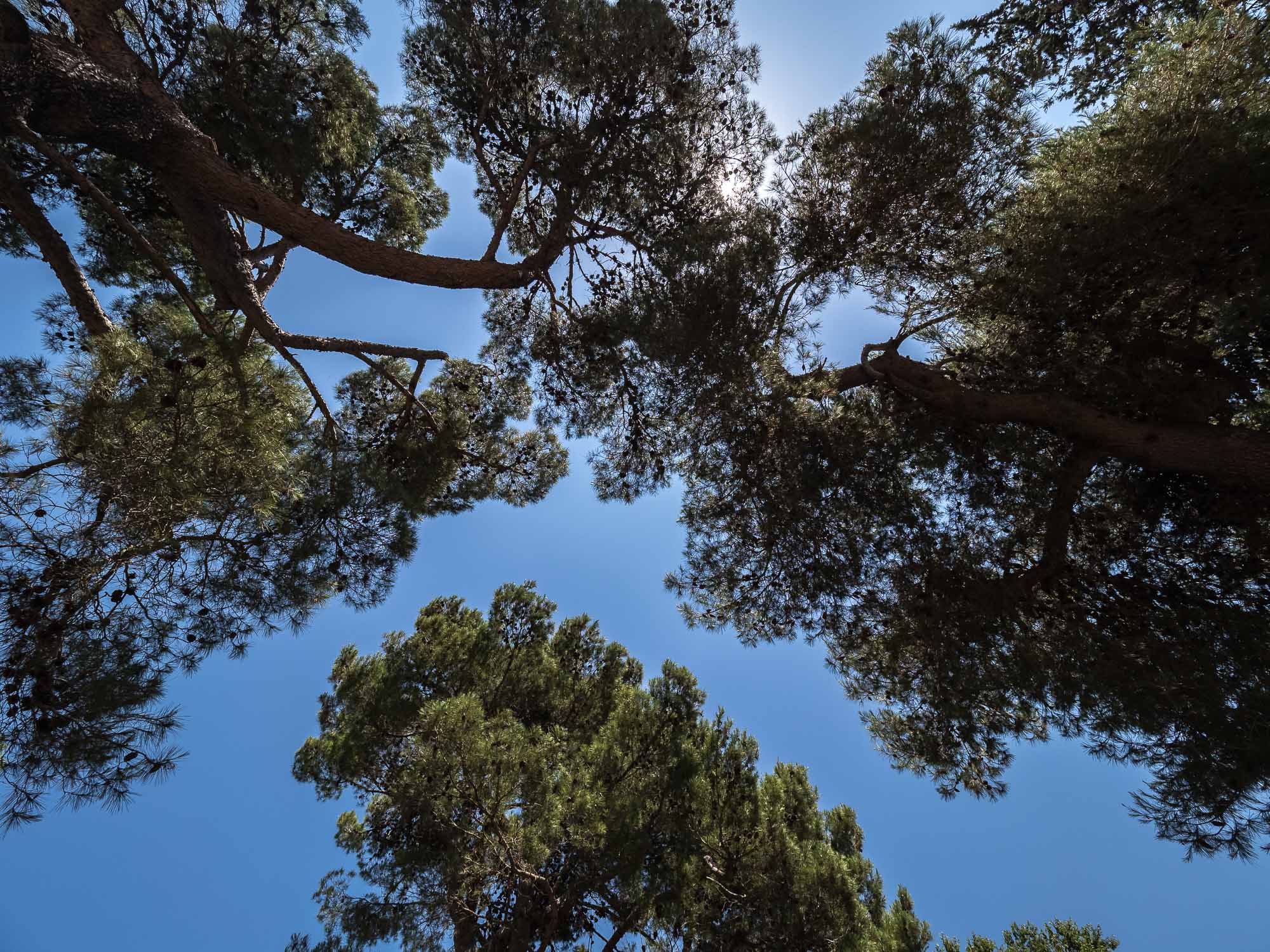
Trees
While Dubai does have more greenery than one would expect, you do miss this kind of view from time to time.
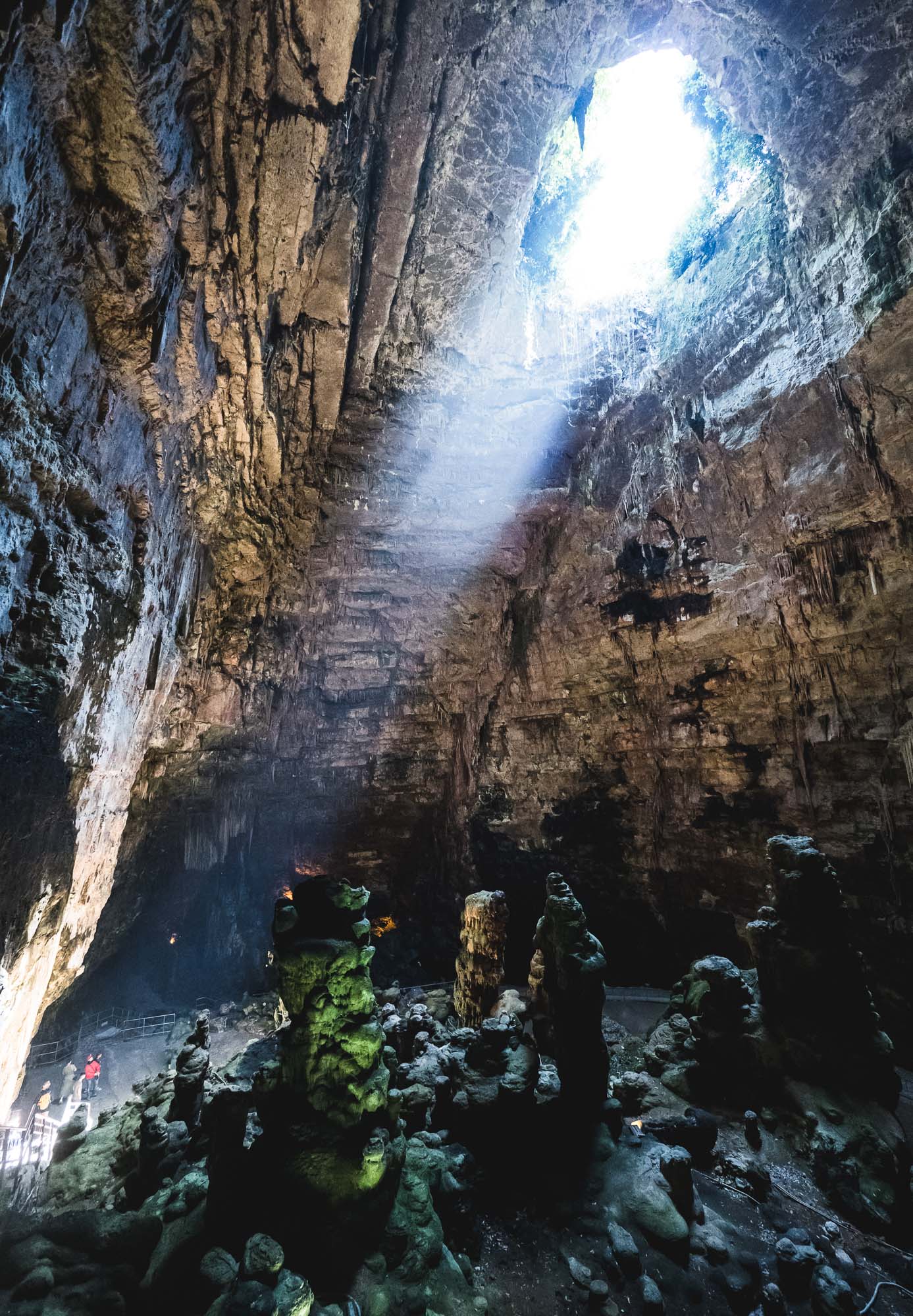
Grotte di Castellana
The main cave of the system, which is 3km overall. It's the only one with an opening to the outside, and also the only one you can take photos in.
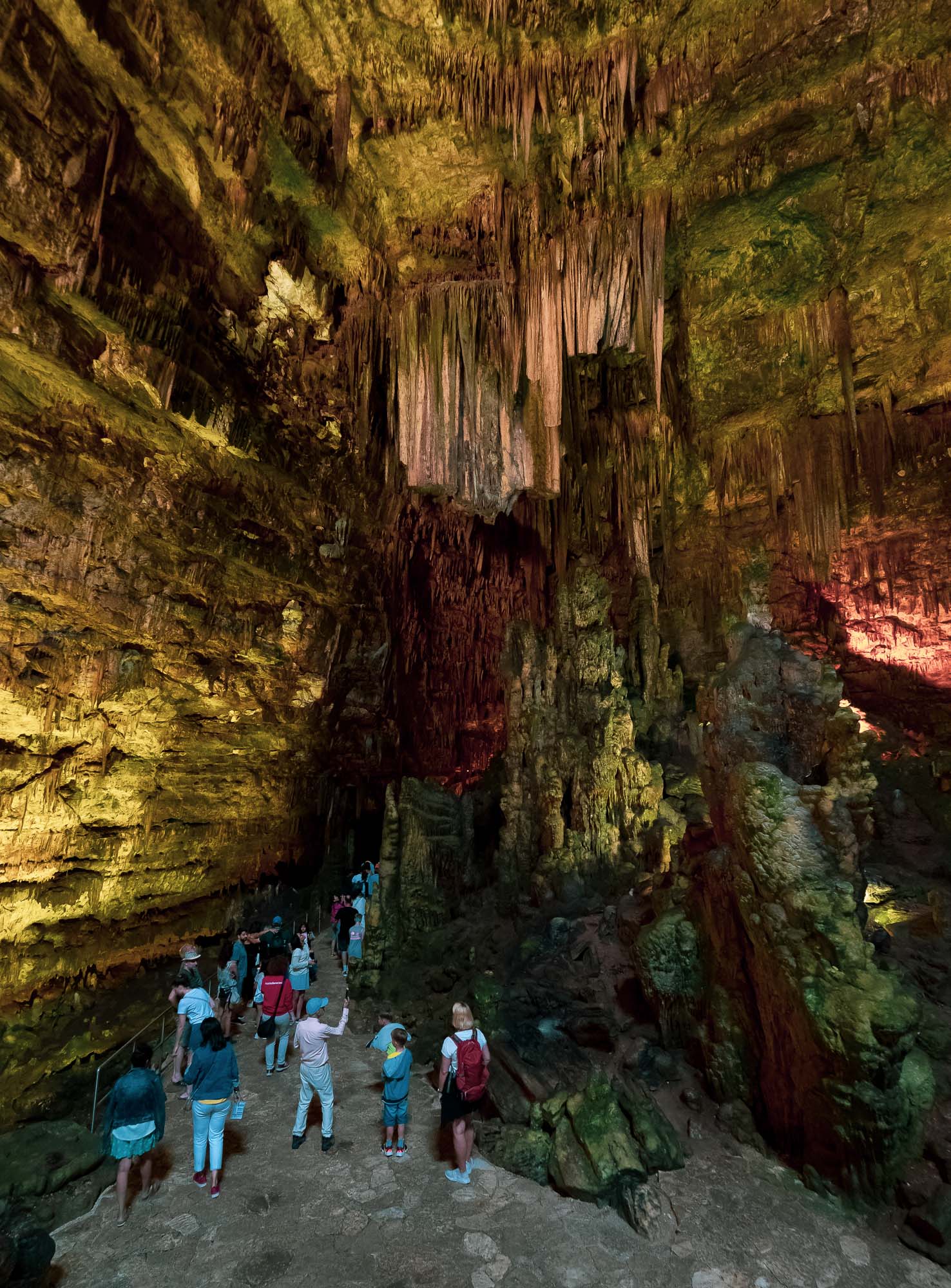
Stalactites and stalagmites embellish almost every wall in the caves. Humans for scale...
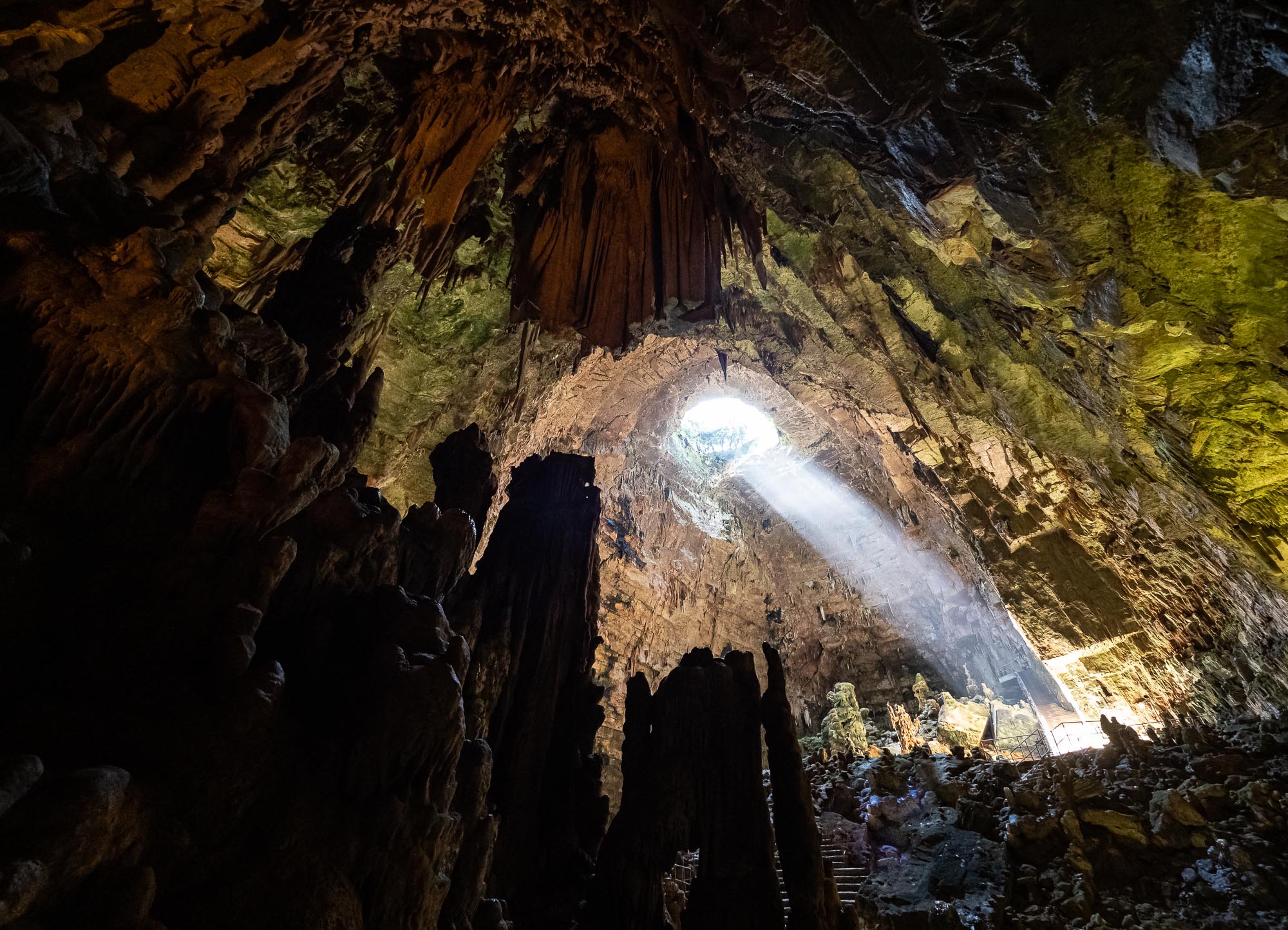
Backward
Looking backward to the main cave as you descend deeper.
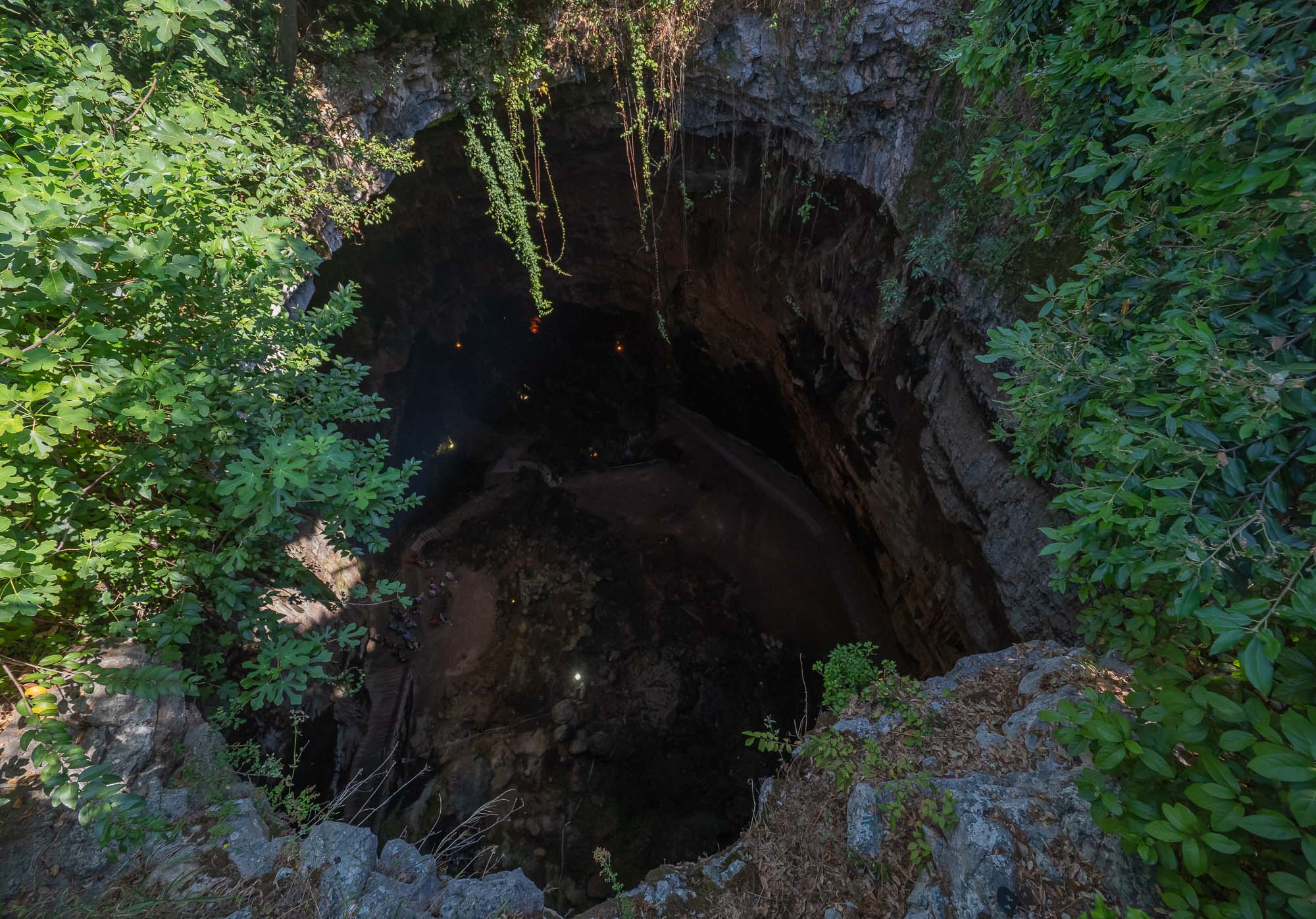
Downwards
This is the hole connecting the main cave to the outside world - it's hidden by trees and bushes, but can be viewed directly from the street.
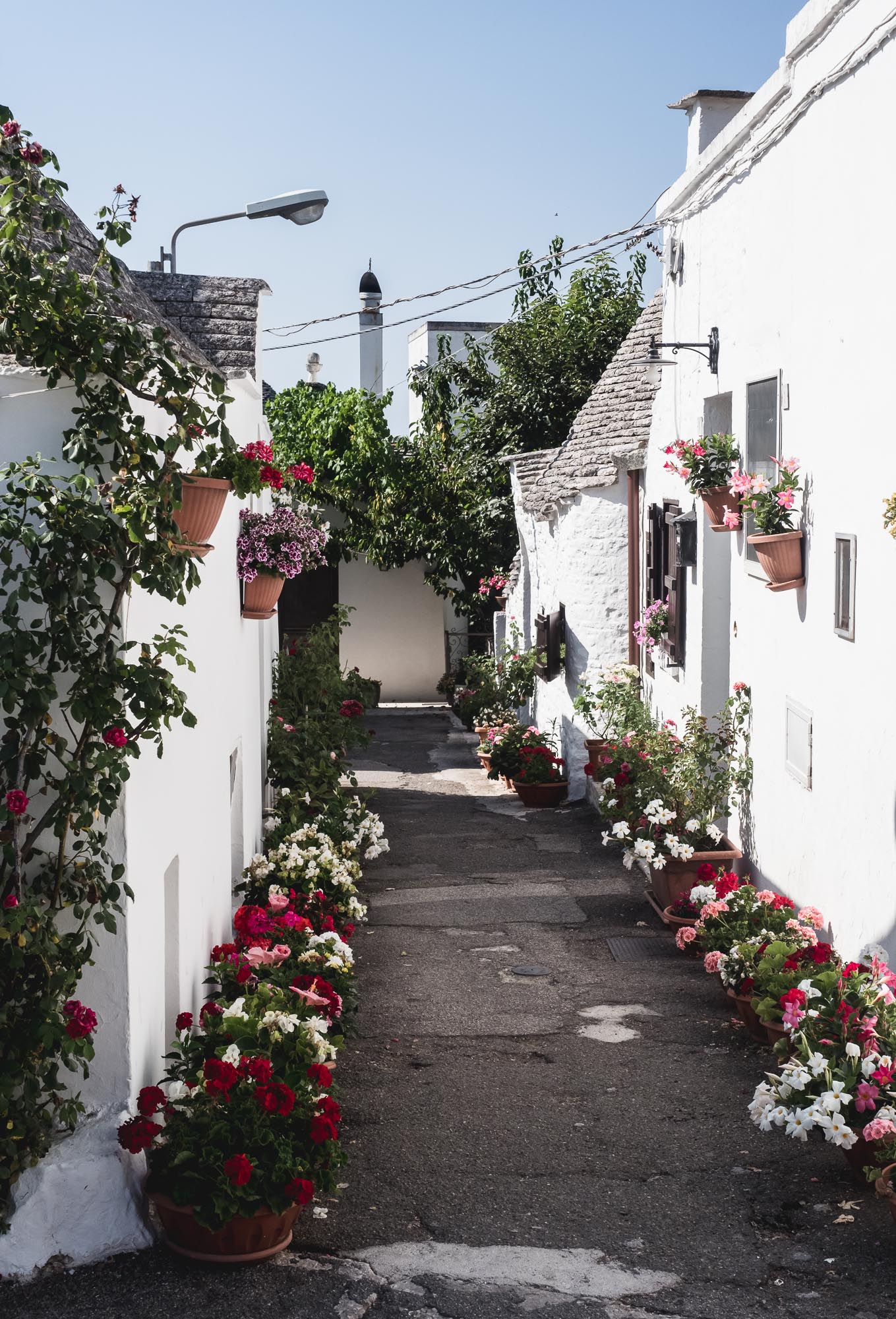
Alberobello
The next stop was Alberobello, famous for its Trullo buildings.
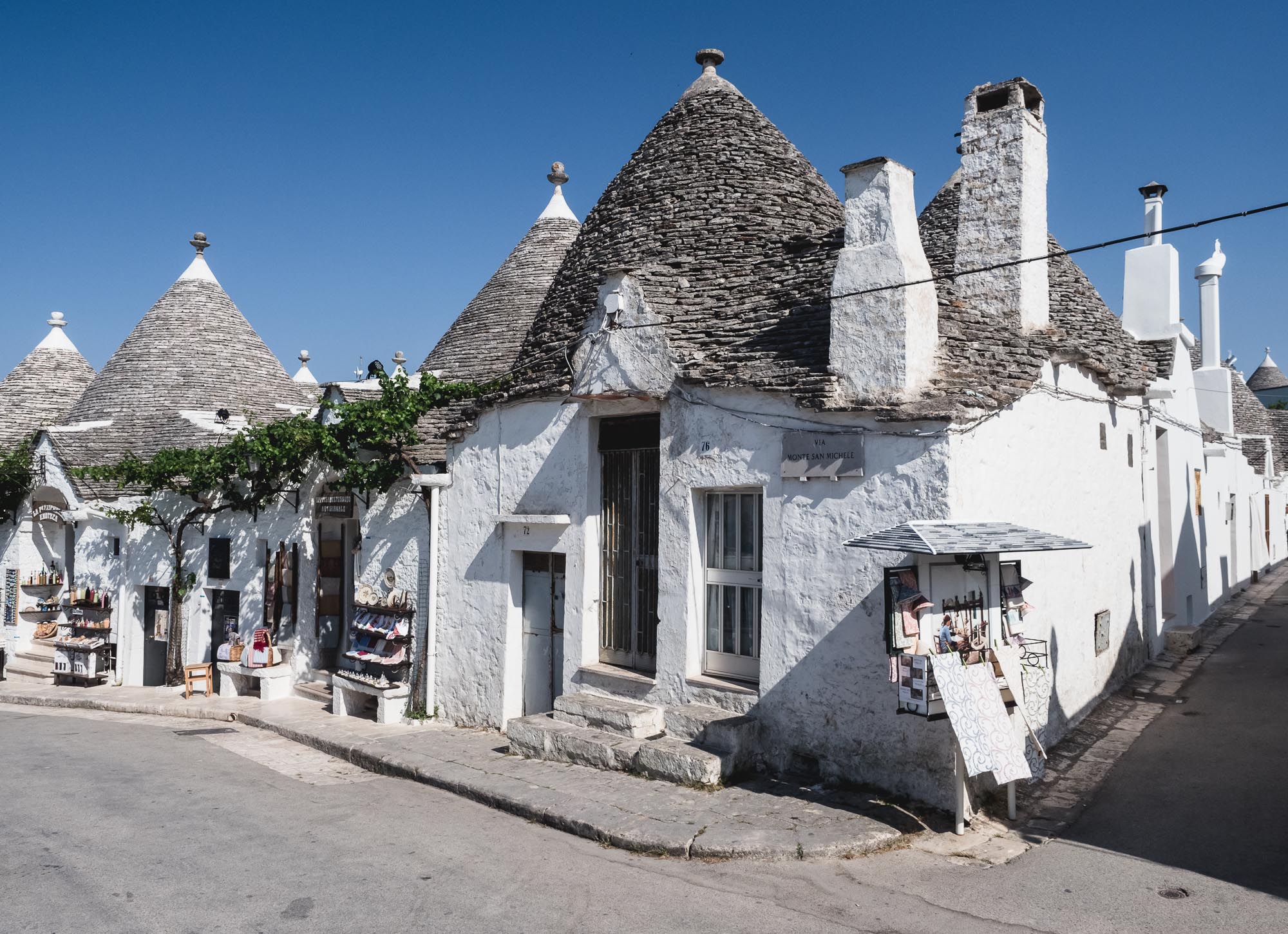
Trullo
The traditional Apulian dry stone hut with its conical roof.

History
Generally thought to be temporary storage or accommodation, these houses have been around for 200 years and more.

Legend
It is said that the houses were made of dry wall so they could be easily dismantled when tax inspectors were in the area, as historically Apulia had high property taxation.
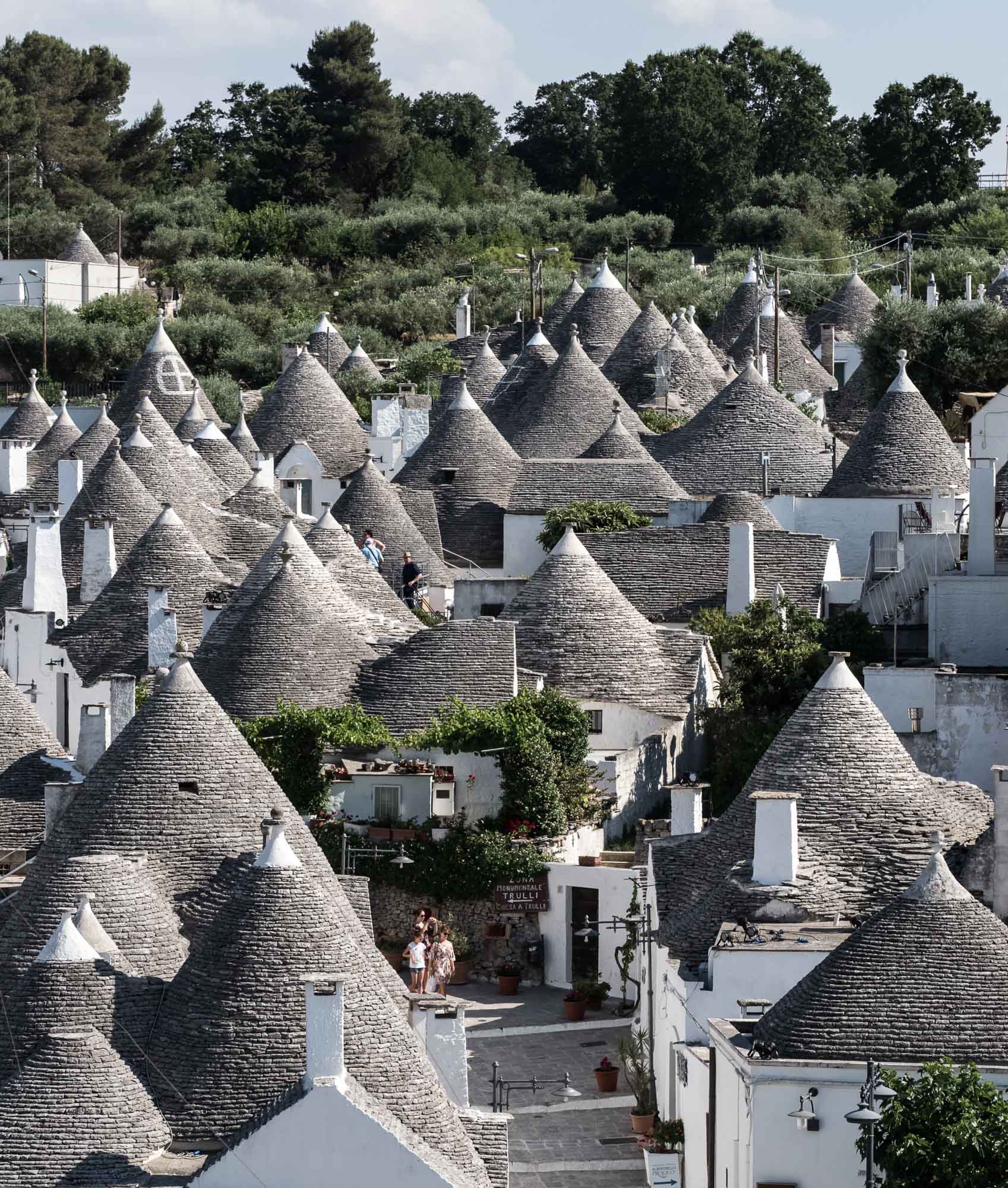
Protected
The area is a UNESCO world heritage site.
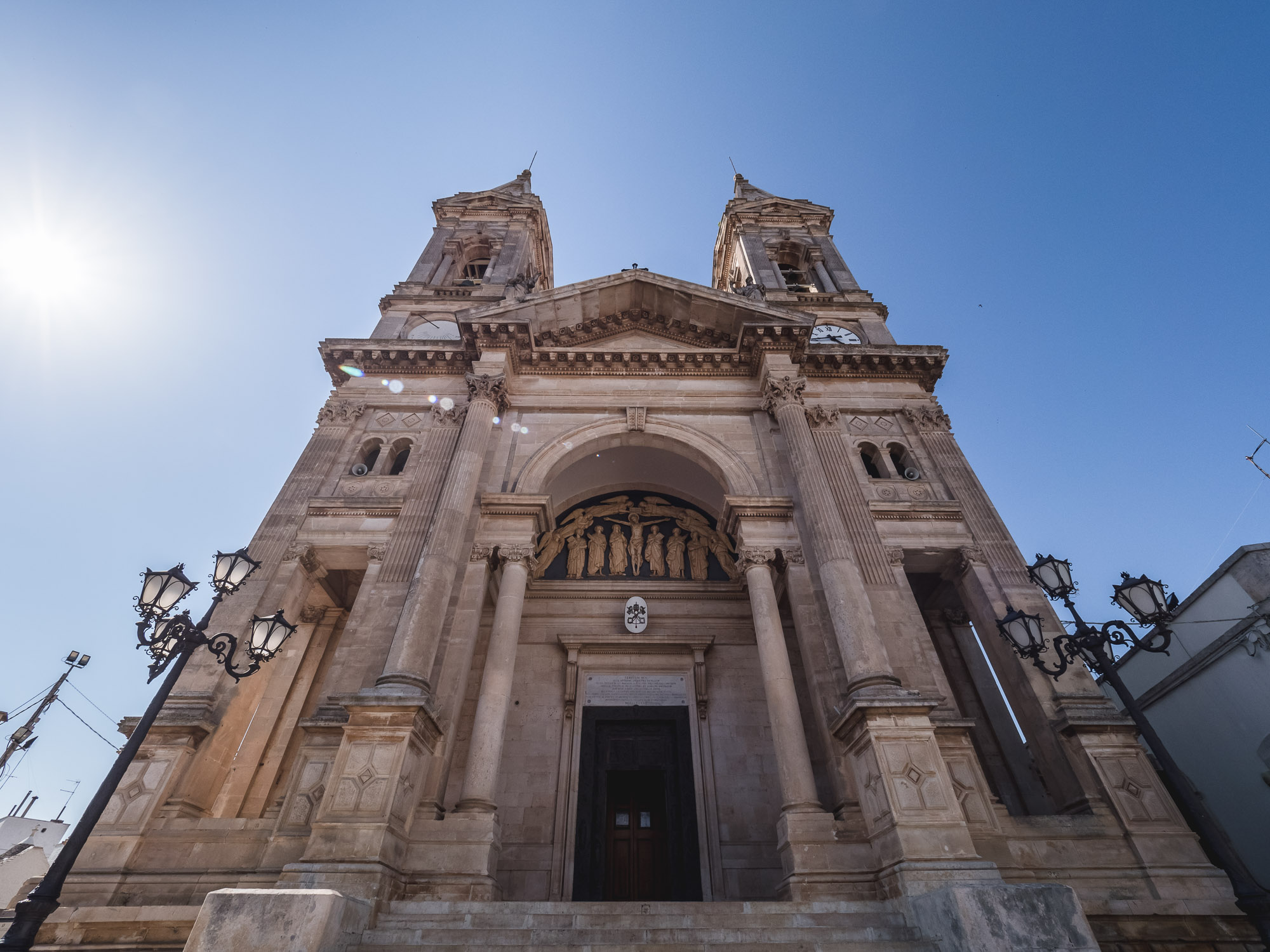
Basilica of Saints Cosmas and Damian
The centre of the religious history of the city.
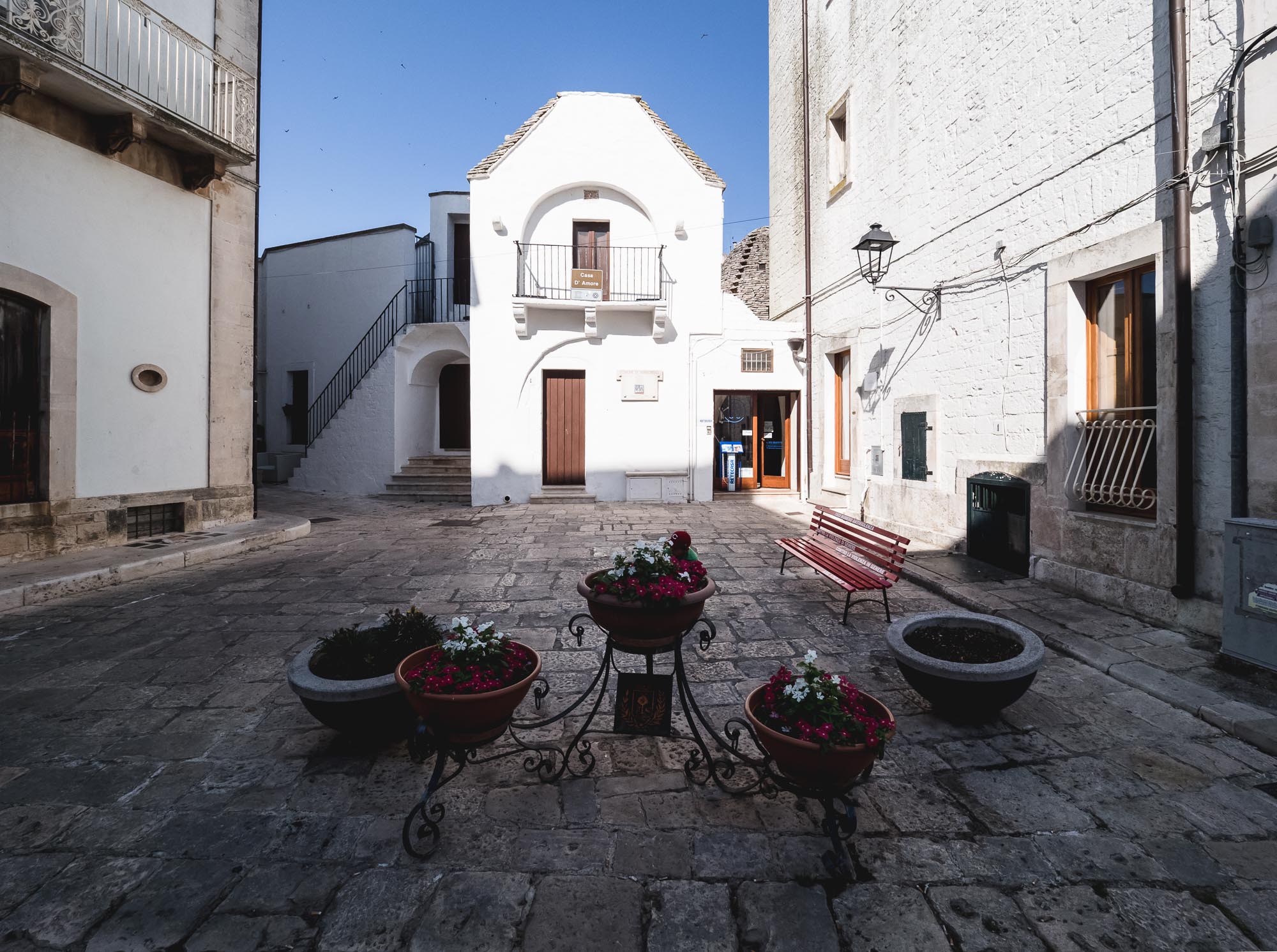
Casa d'Amore
A national monument, named after its former owner, for its role in the victory against the tyranny of the counts in the 18th century.

Conversion
Most of the Trullo houses have been turned into shops, tourist attractions, restaurants and small hotels.

Ostuni Streets
One of the many stairs in the city.
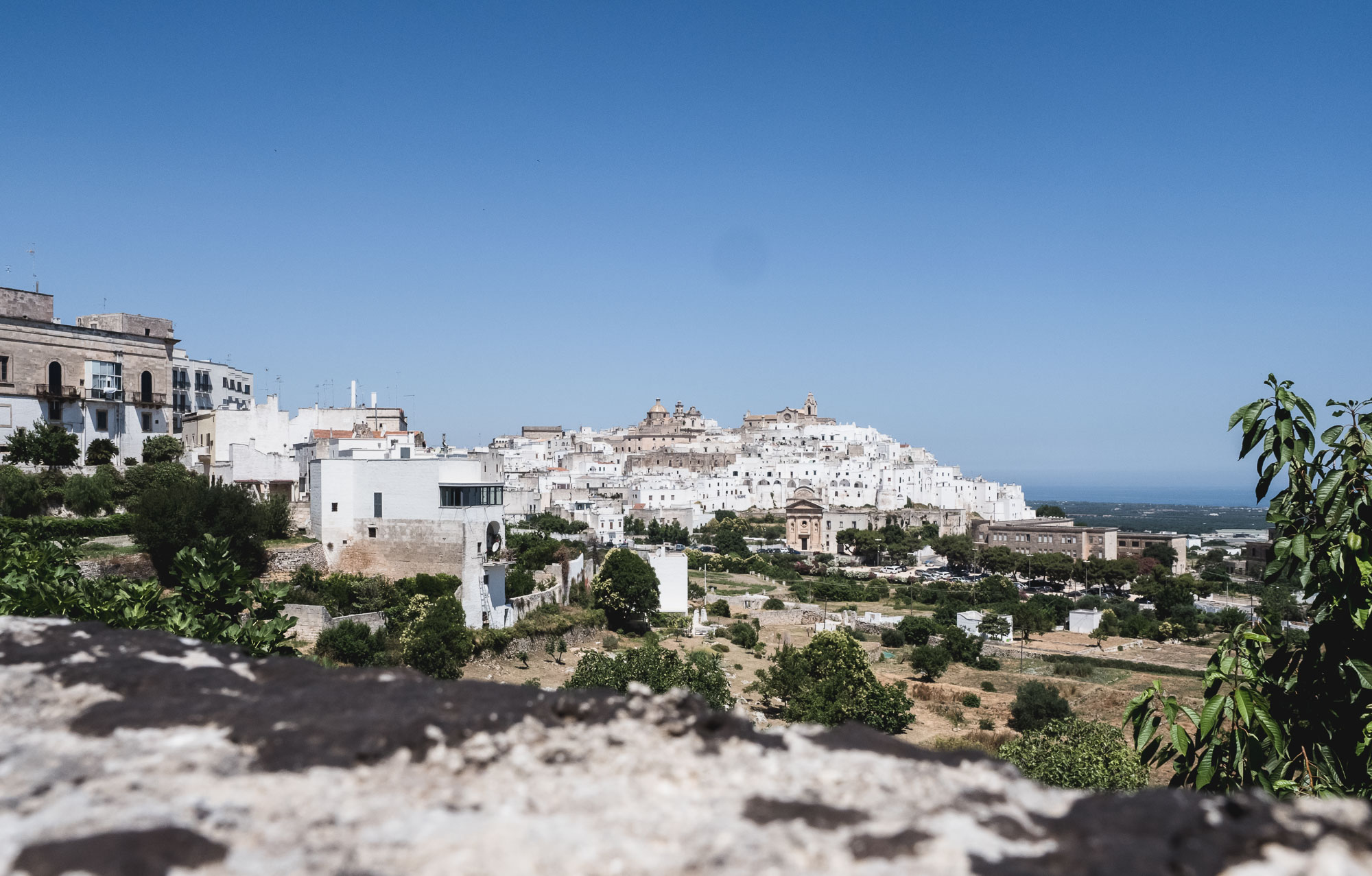
Ostuni
Or aptly nicknamed "The White City"
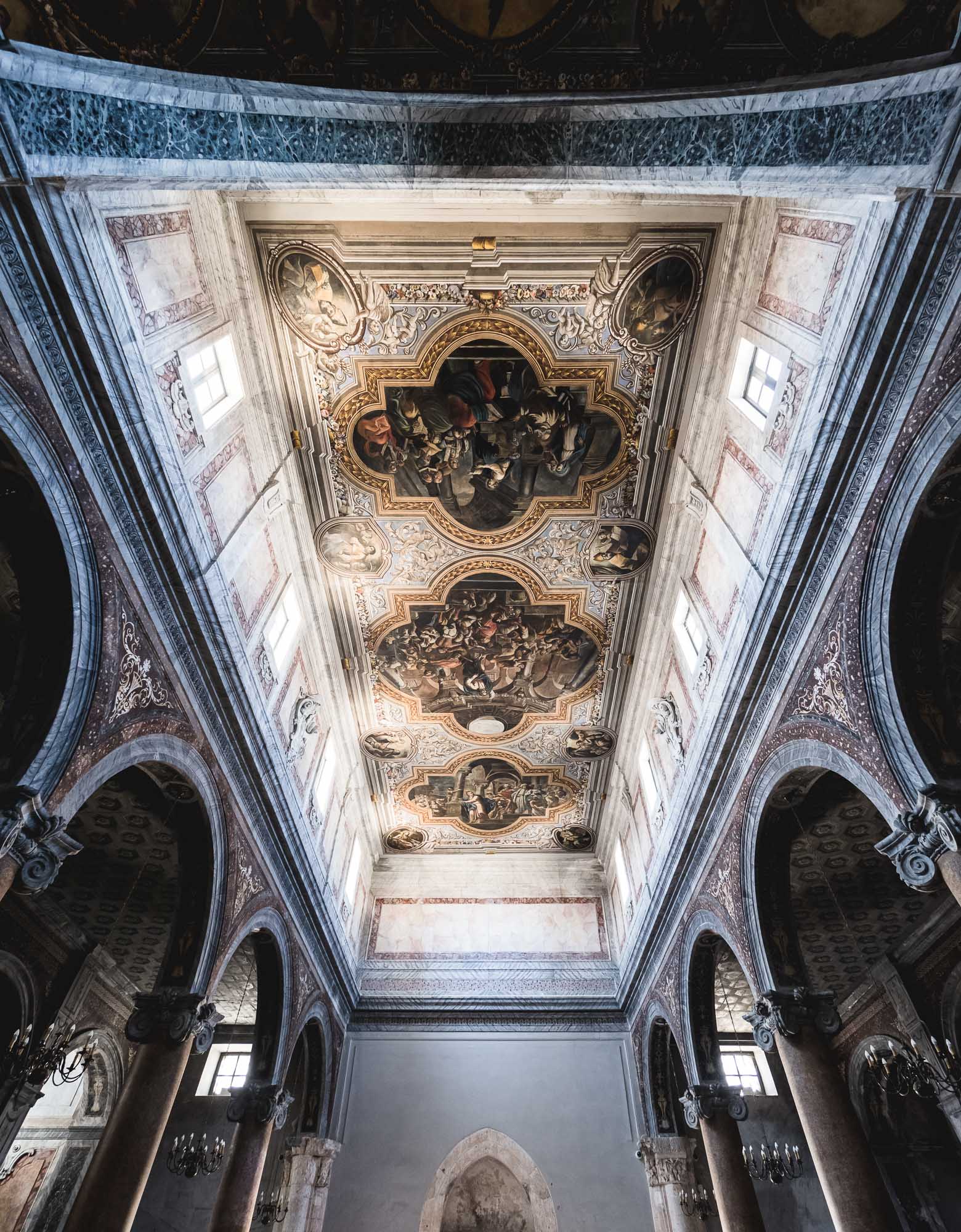
Interior of Ostuni Cathedral
The ceiling creates an impression of additional space beyond the roof.
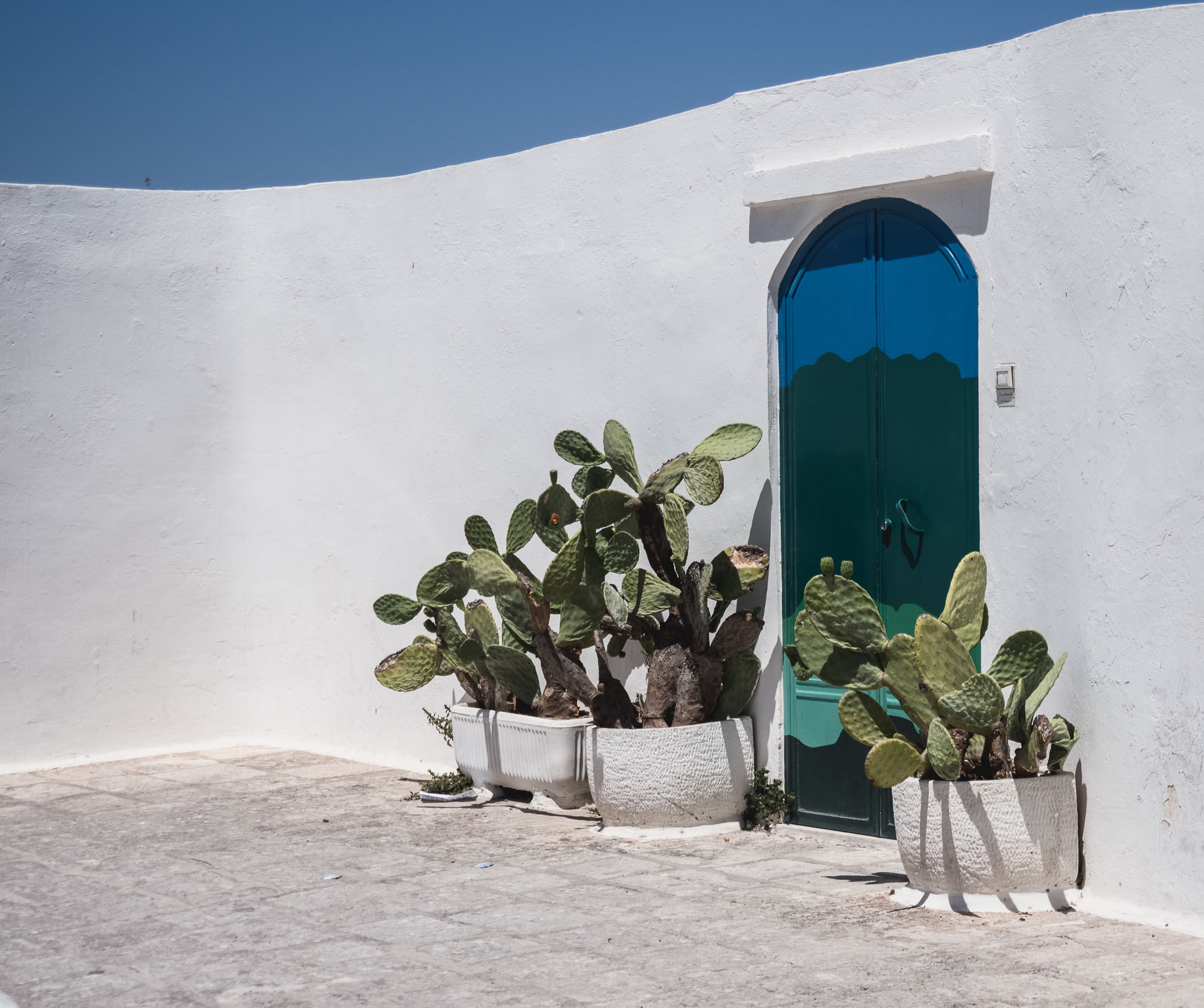
Succulent Door
Typical scene with plants framing doors and windows.
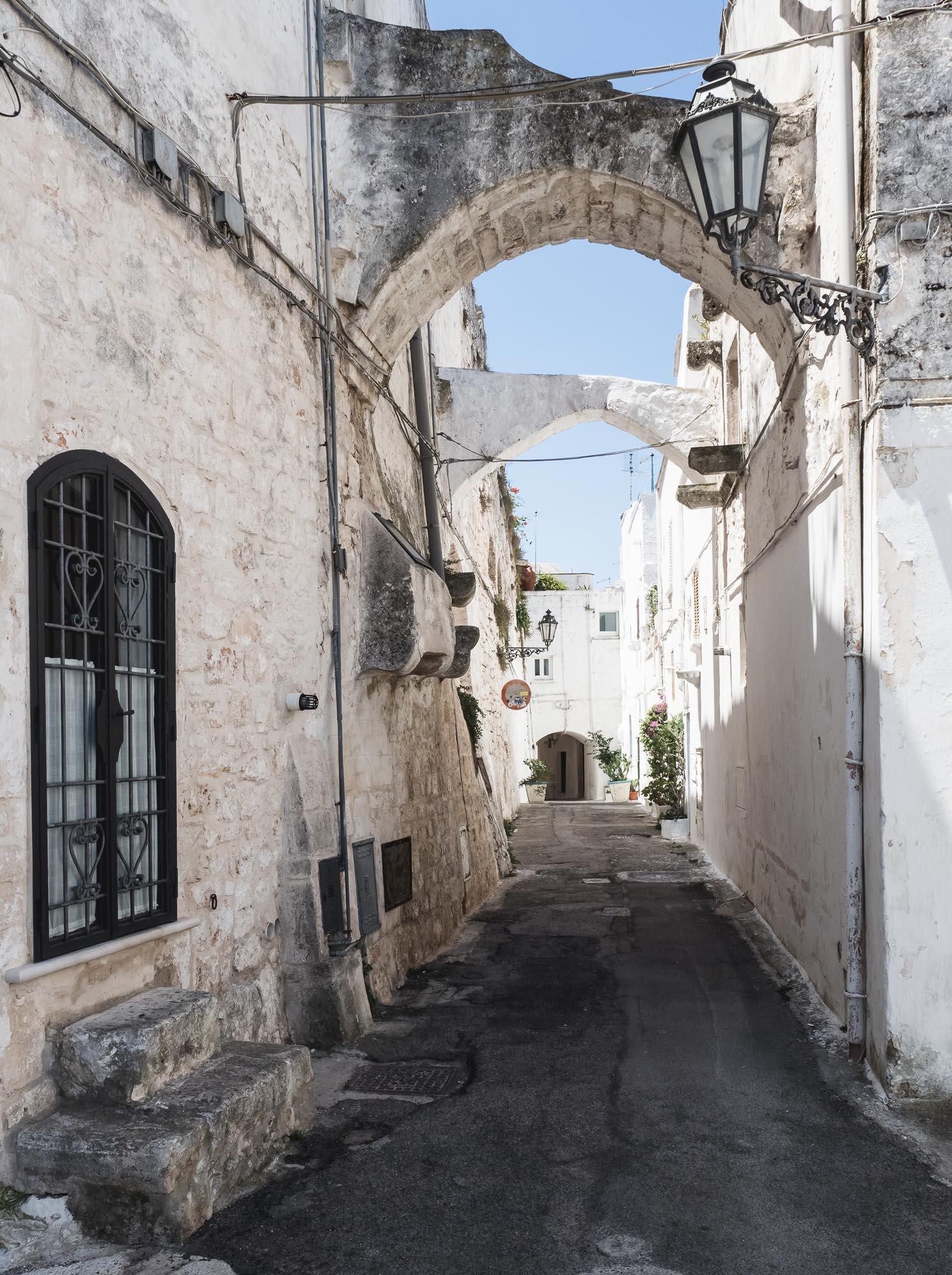
Streets of Ostuni
The arched streets are a typical feature of the city.
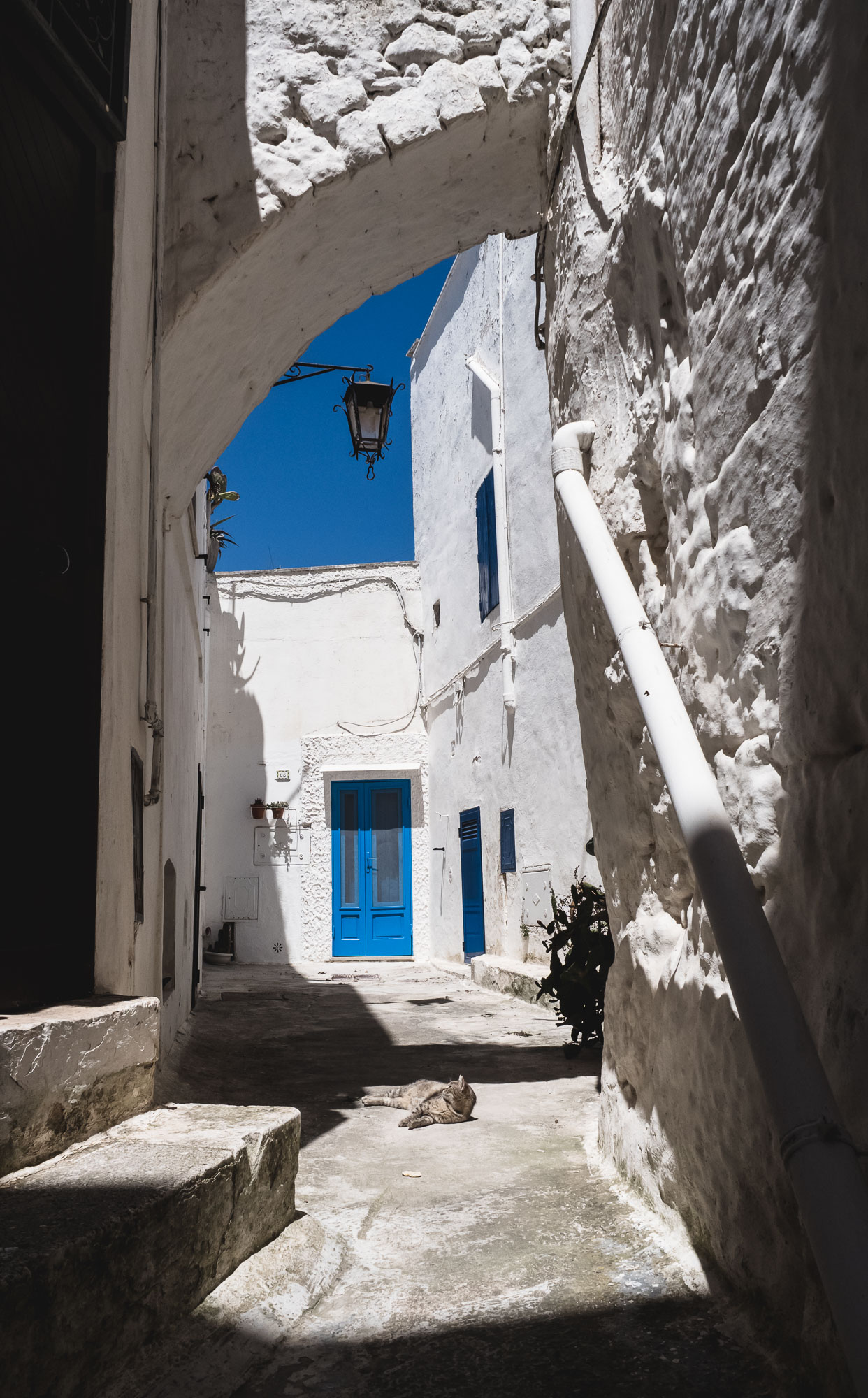
Just Chilling
The life of a cat.

Narrow
Even for humans, this is a one way street.
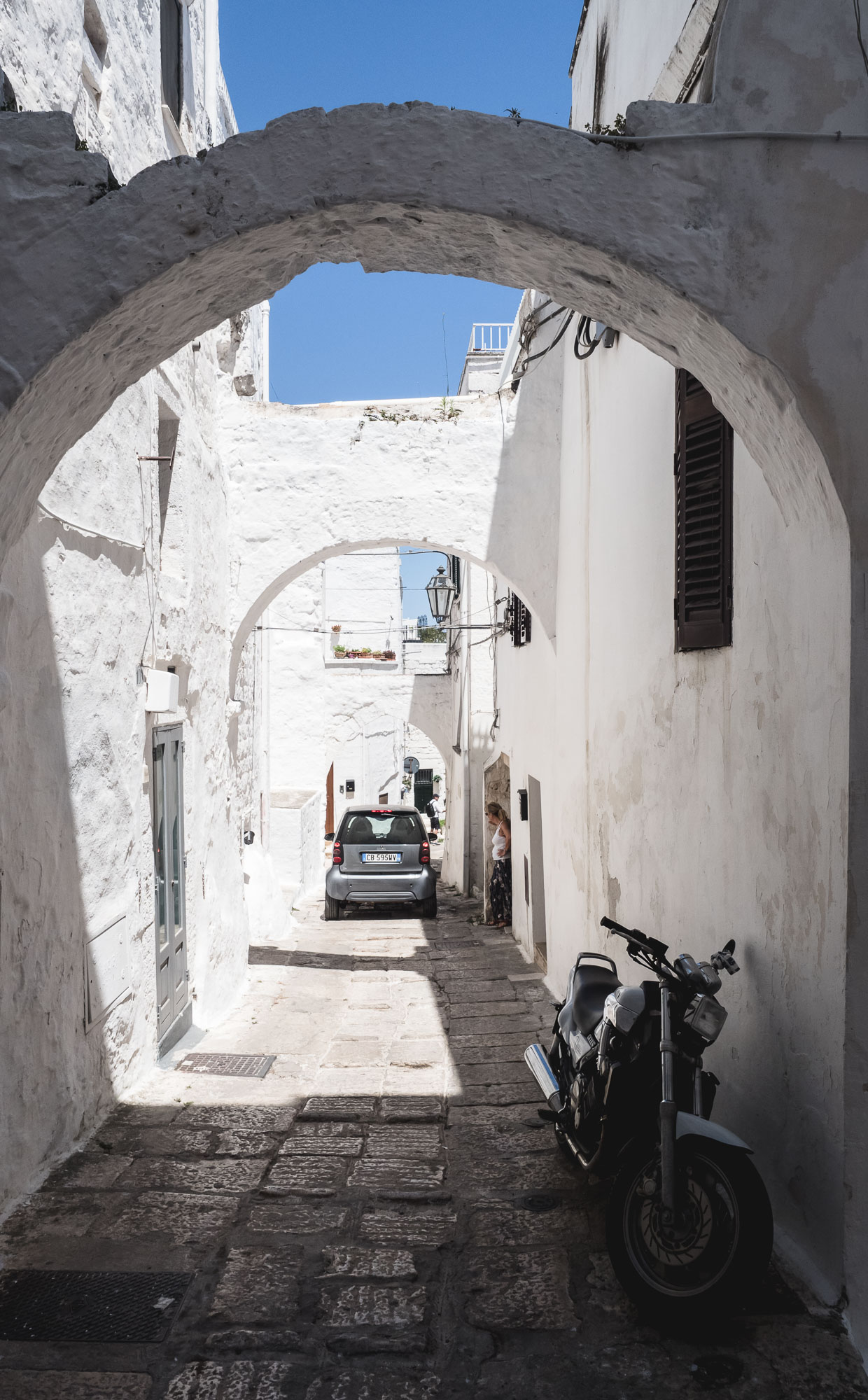
Modes of Transport
Not made for anything bigger than a Smart.
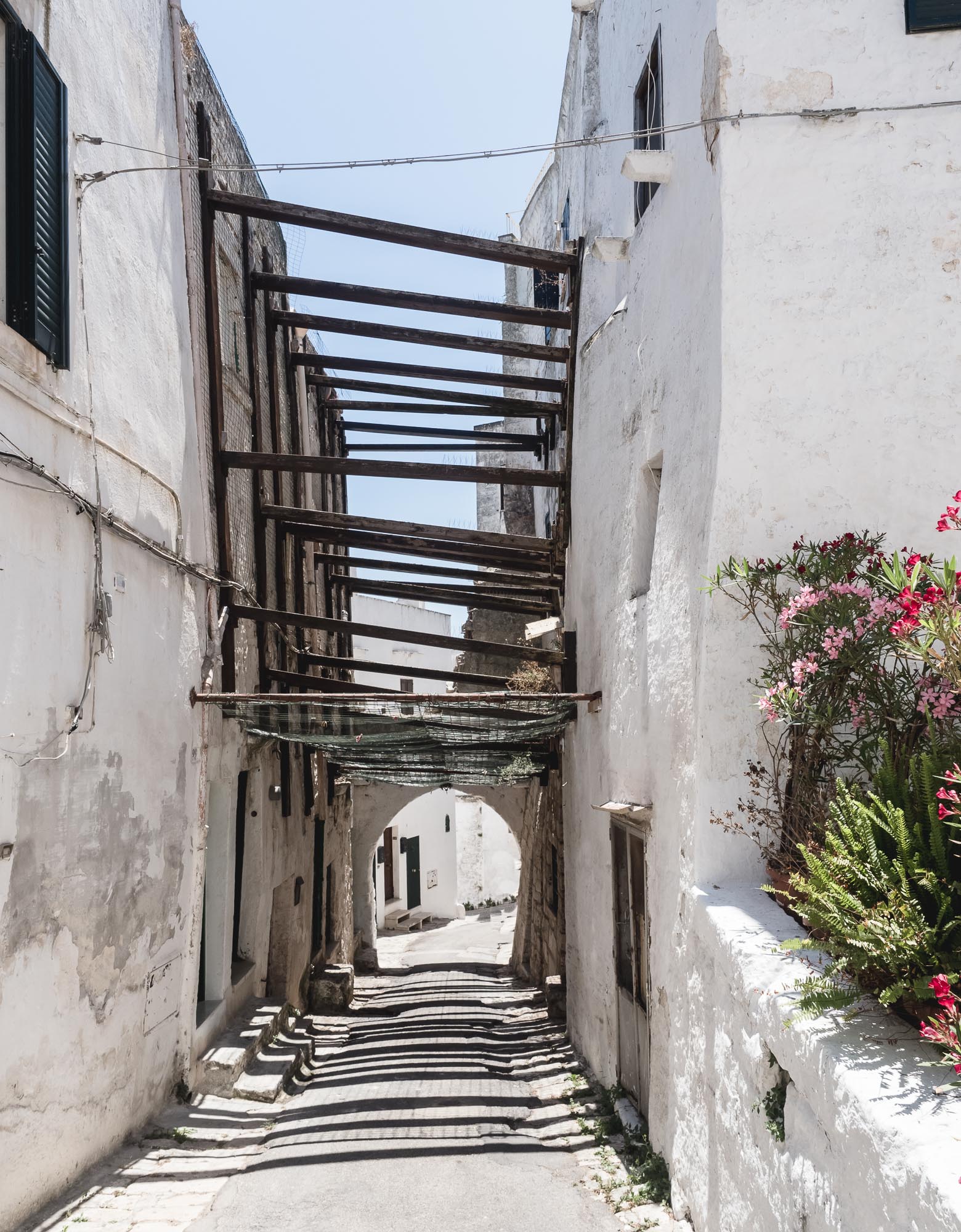
Support
The city was remarkably - and pleasantly - quiet. Not sure it would withstand hords of people.
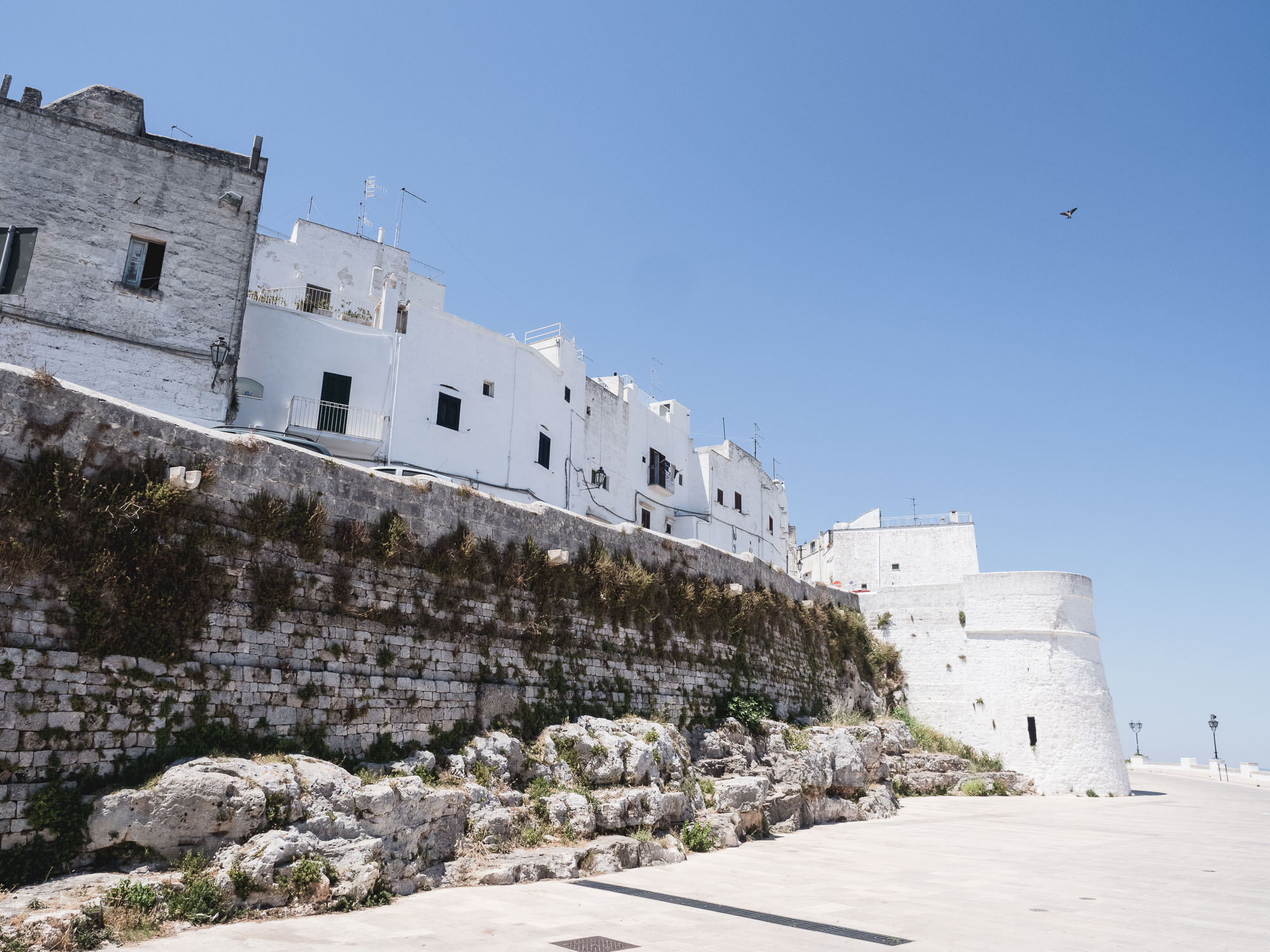
City Walls
The wall surrounding the elevated plateu on which Ostuni's historic centre is located.
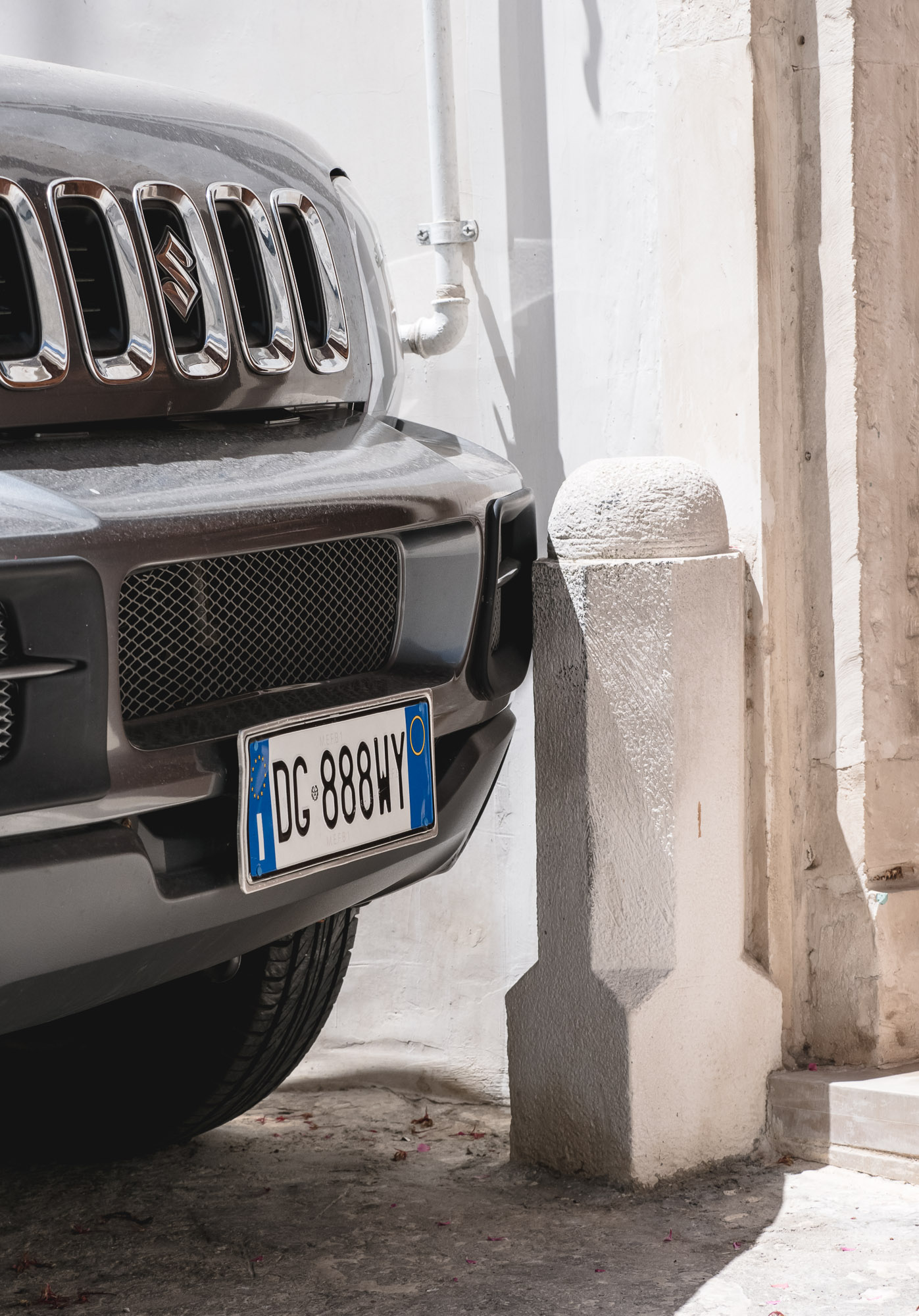
Tight
As I said, not much space for anything bigger than a Smart.

Plant Stairs
Even without a door, stairs must be decorated with some plants.
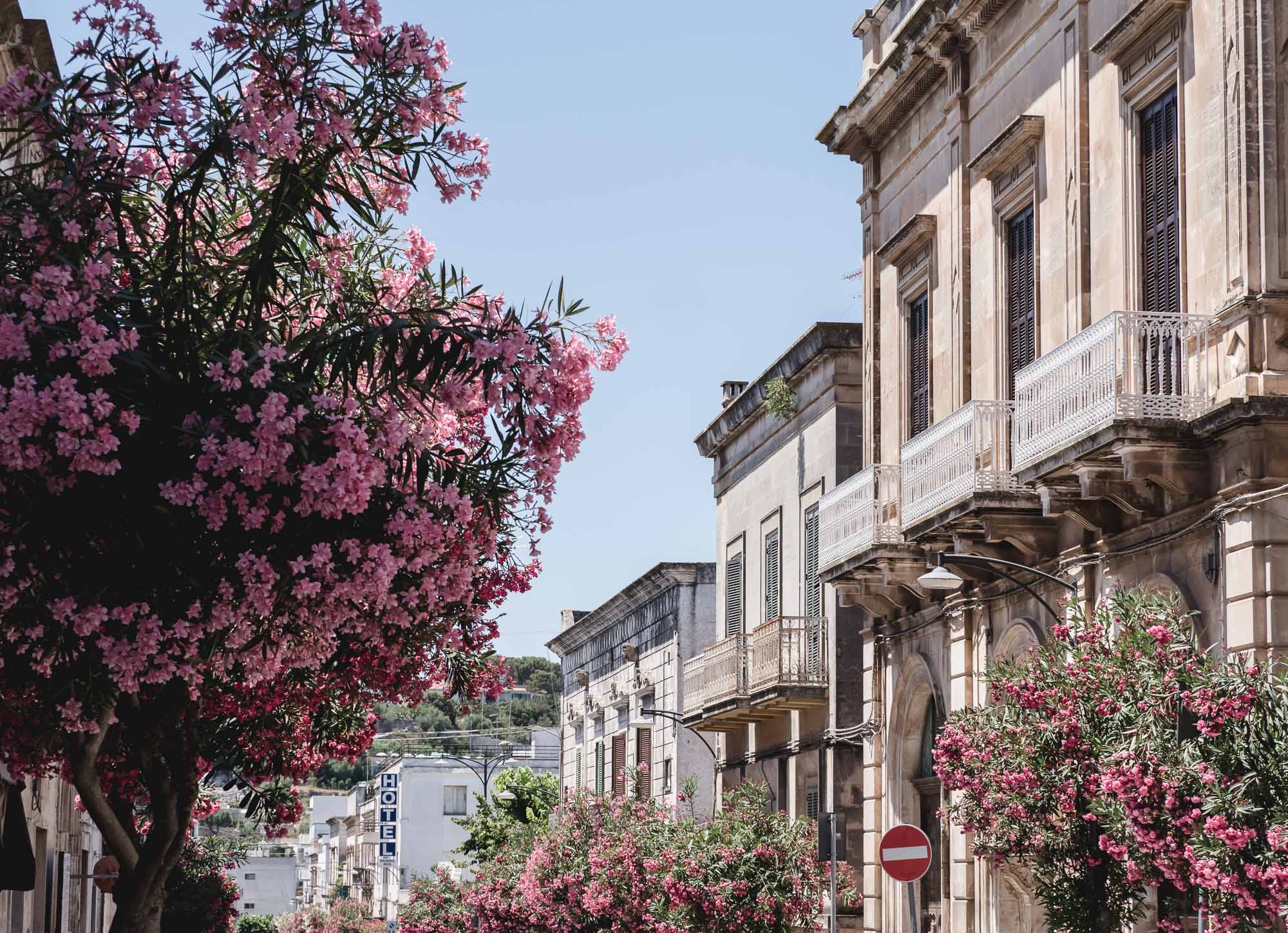
Blossoming
One of the main streets of Ostuni.
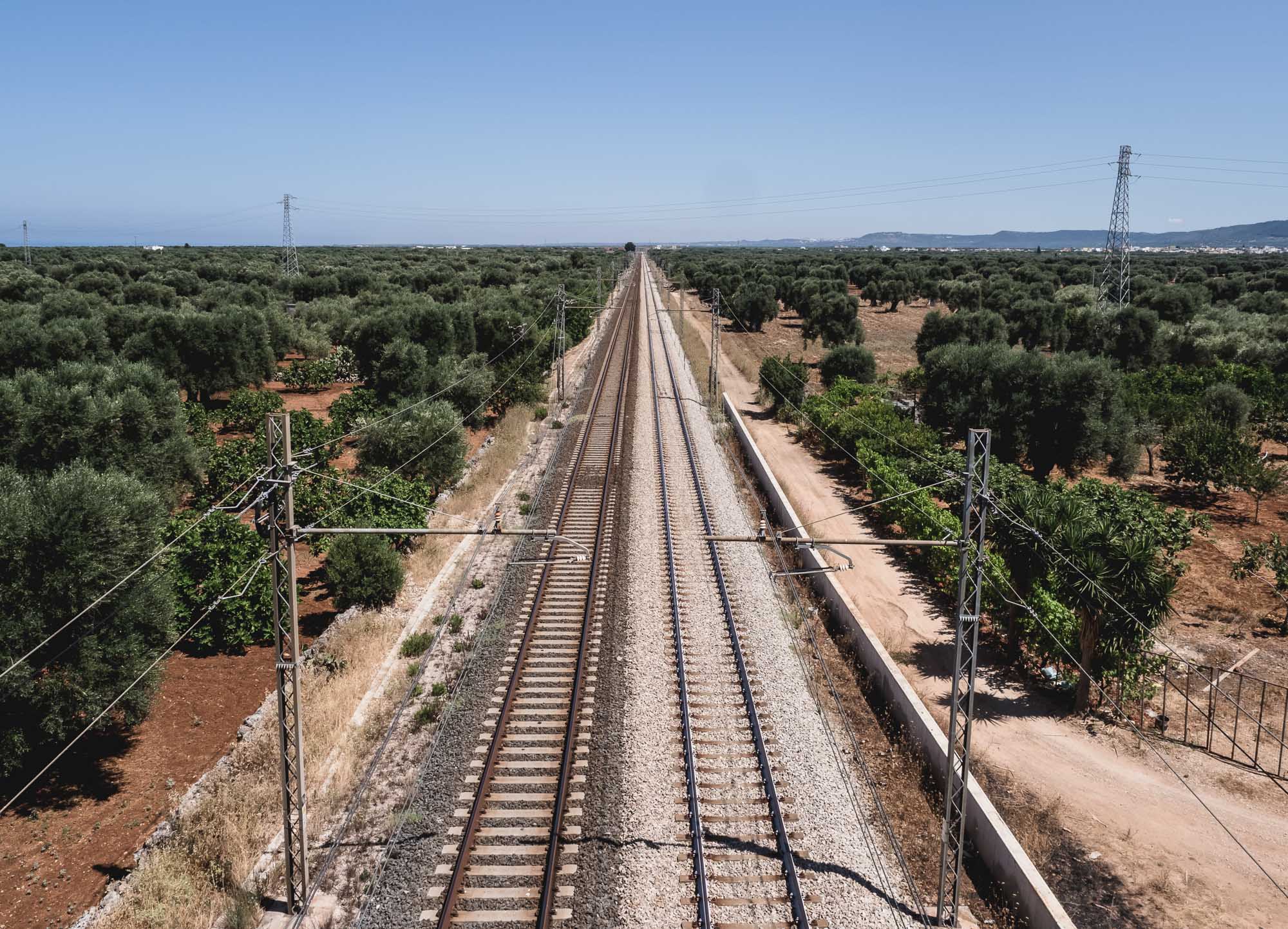
Landscape
Views over the Apulian landscape, with its many olive tree fields.

Towards the Sea
A road leading eastwards.
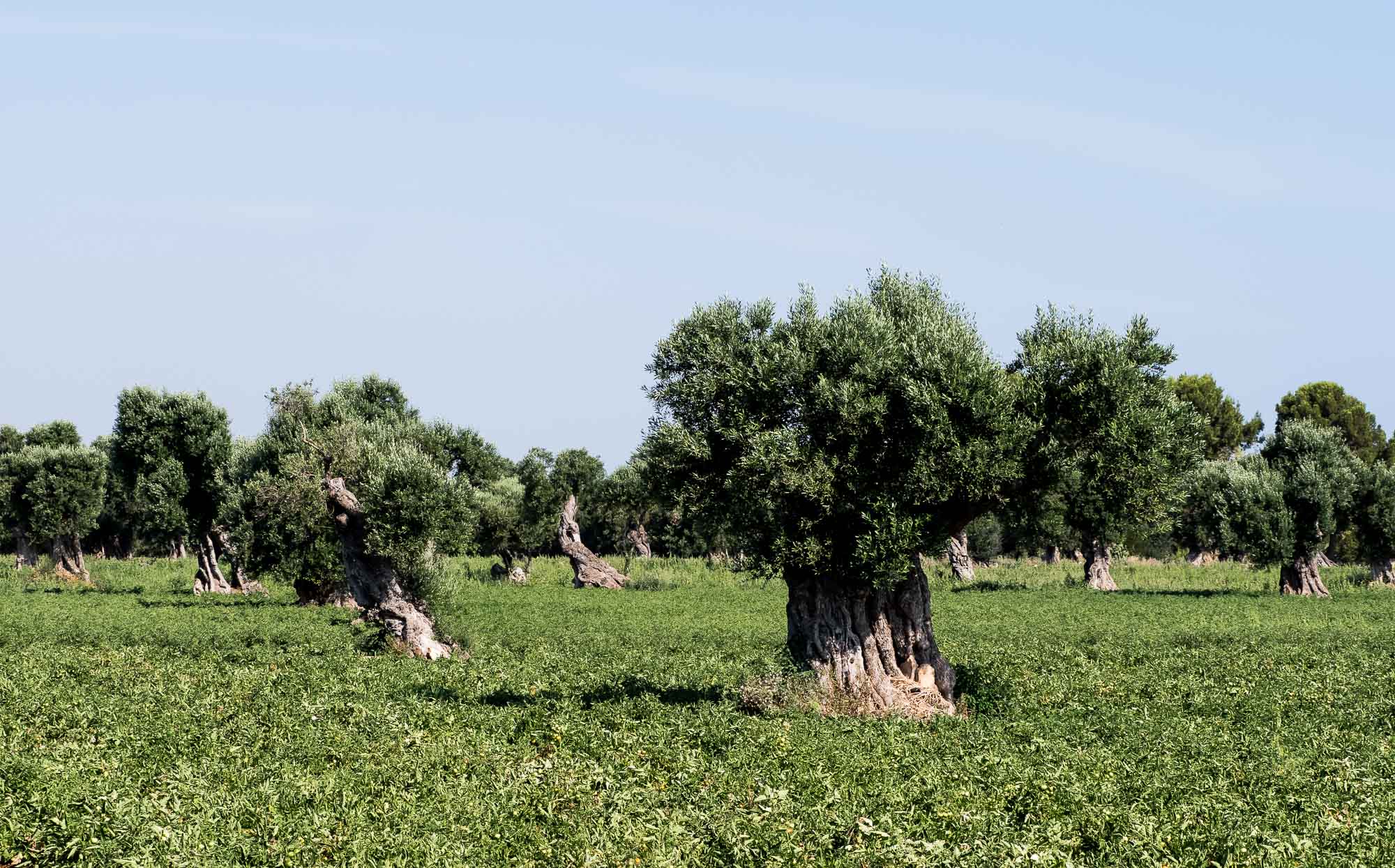
Olive Trees...
It's said that there are over 50 million olive trees in Apulia...
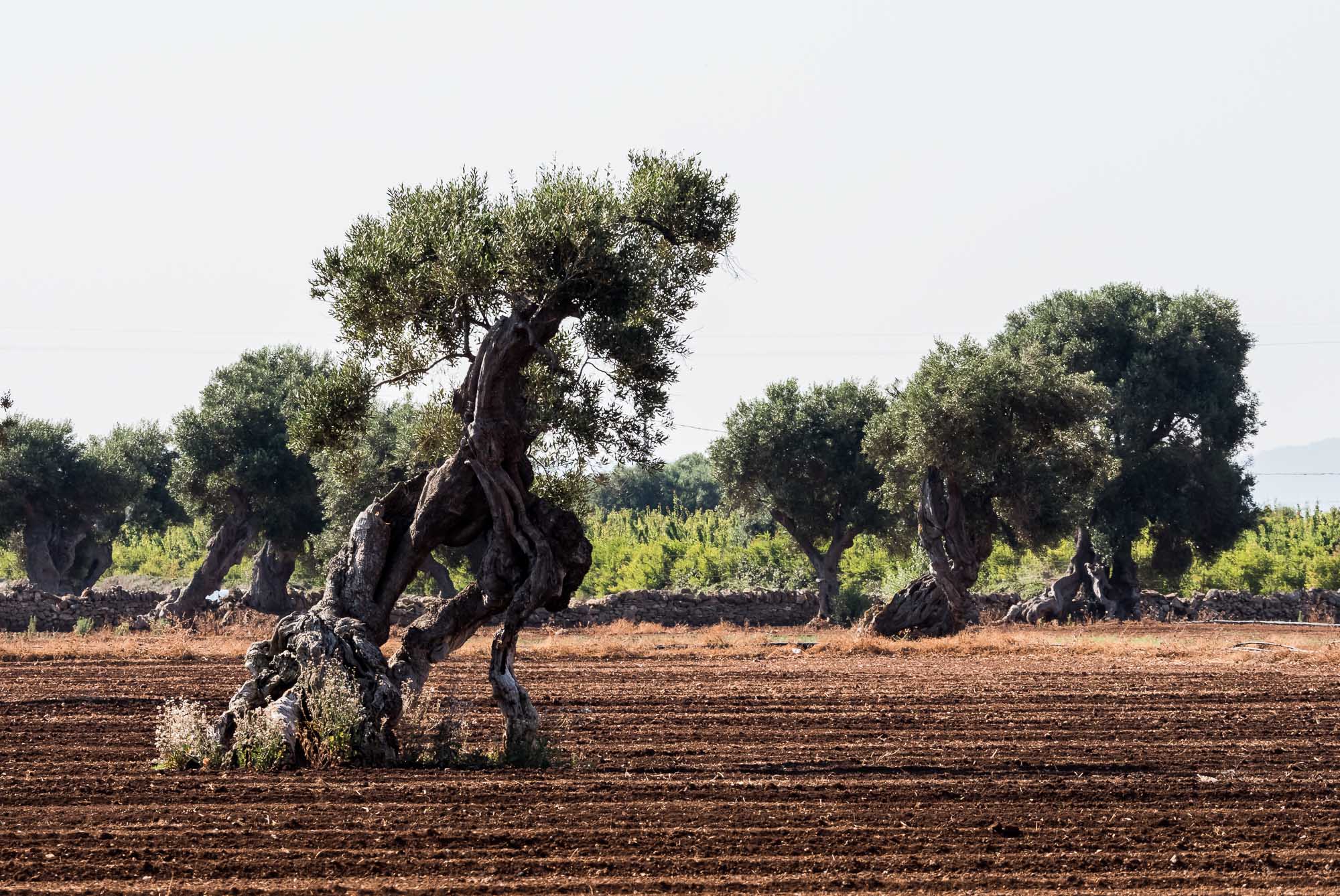
And more Olive Trees
...producing 40% of Italy's olive oil.
Malta - The Intriguing Island
On the way back to Dubai from a wedding in Puglia, I took the chance to stop over on the island of Malta. The small nation in the Mediterranean Sea features rich history, amazing nature, cute cityscapes and more things to see and do than I had expected. Having walked over 50km in just over 3 days, I took a few hundred photos, a short selection is below.

On the way back to Dubai from a wedding in Puglia, I took the chance to stop over on the island of Malta. The small nation in the Mediterranean Sea features rich history, amazing nature, cute cityscapes and more things to see and do than I had expected. Having walked over 50km in just over 3 days, I took a few hundred photos, a short selection is below.

Coastline
The country consists of three major inhabitated islands: Malta. Gozo and Comino.
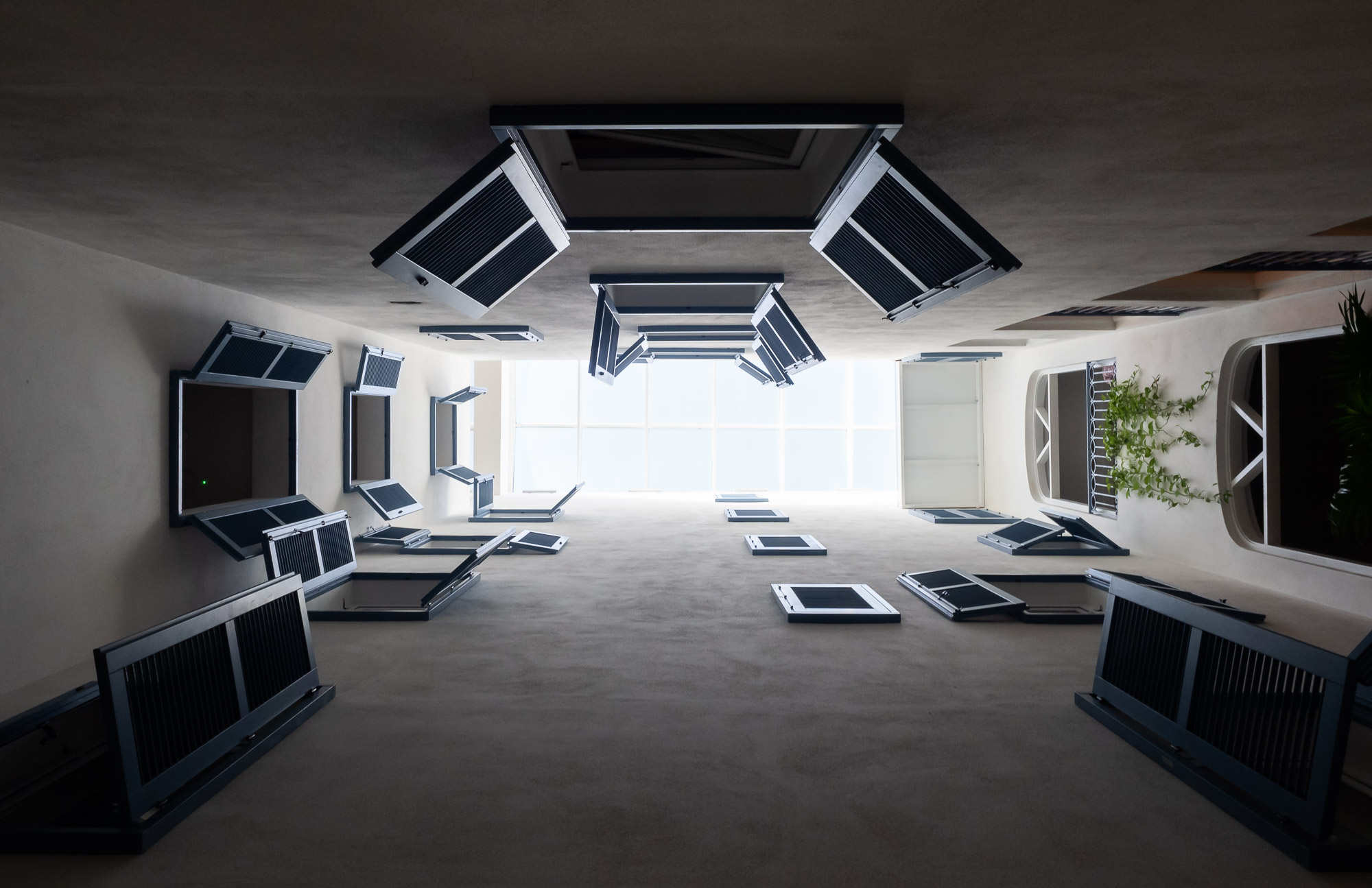
Courtyard
The interior of the hotel I stayed in, a renovated building in central Valletta.
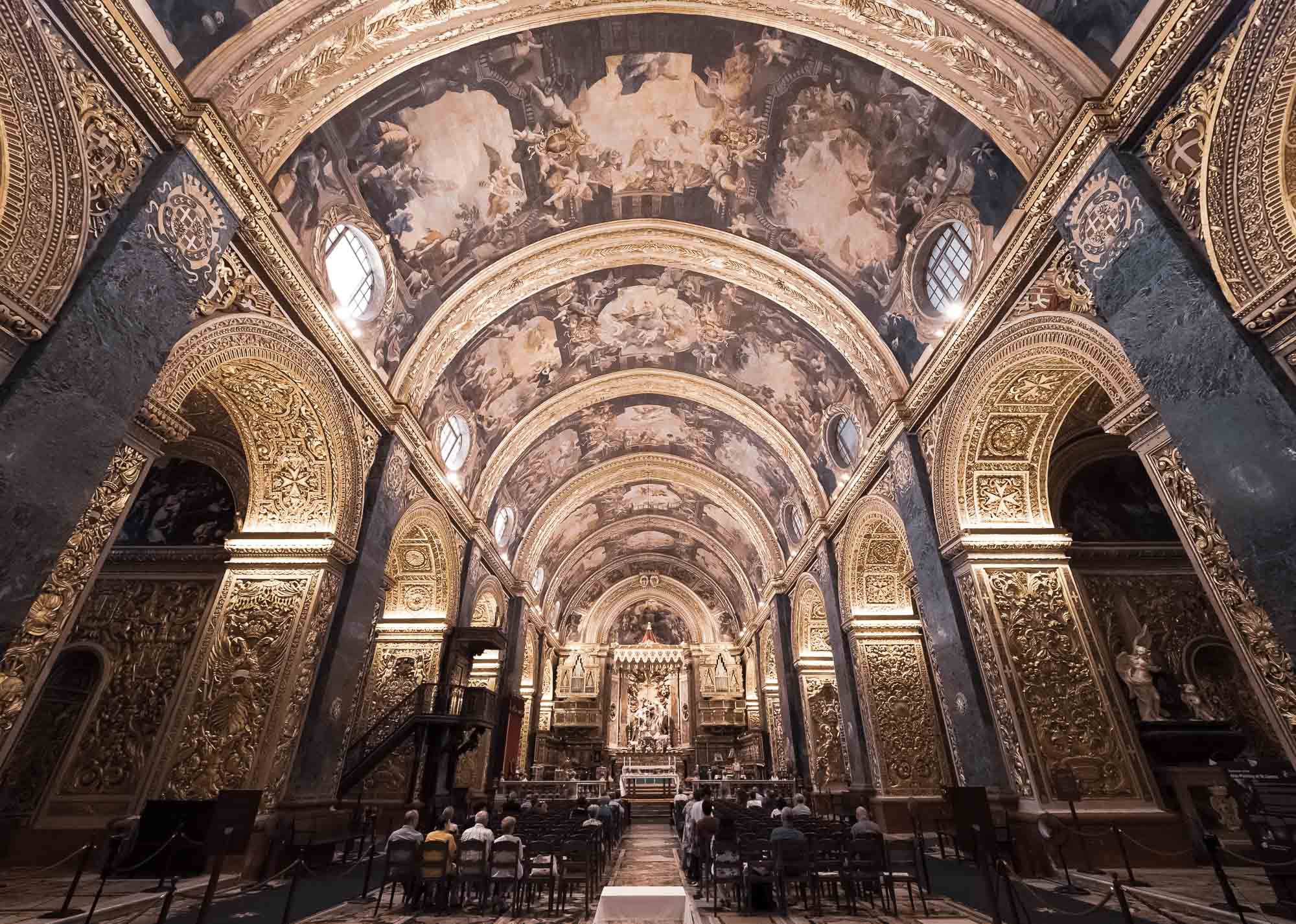
St John's Co-Cathedral
The nave of one of the most famous cathedrals in Malta, completed in 1577.
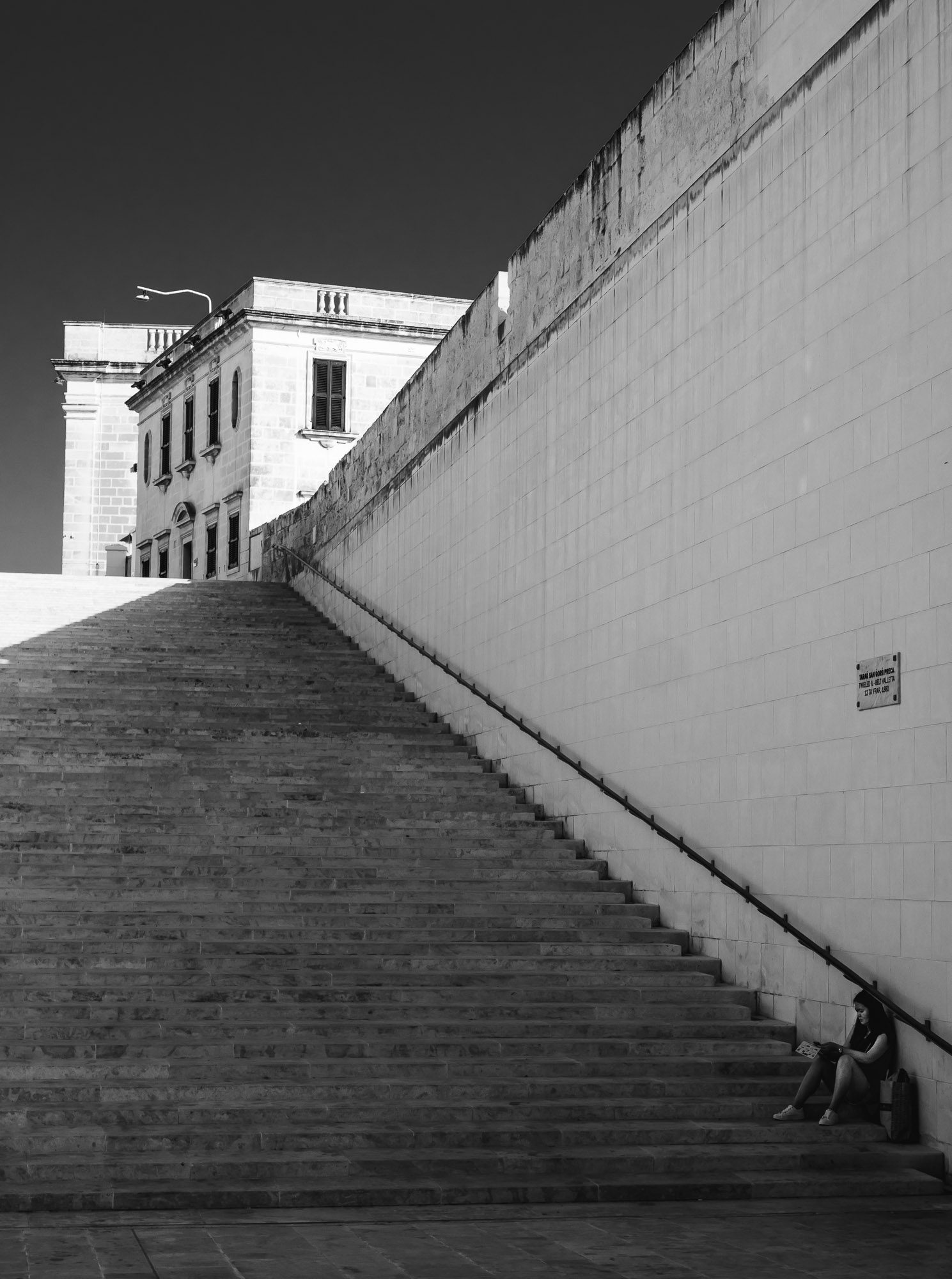
Steps
The Steps near the Valletta city gate, designed by Renzo Piano.
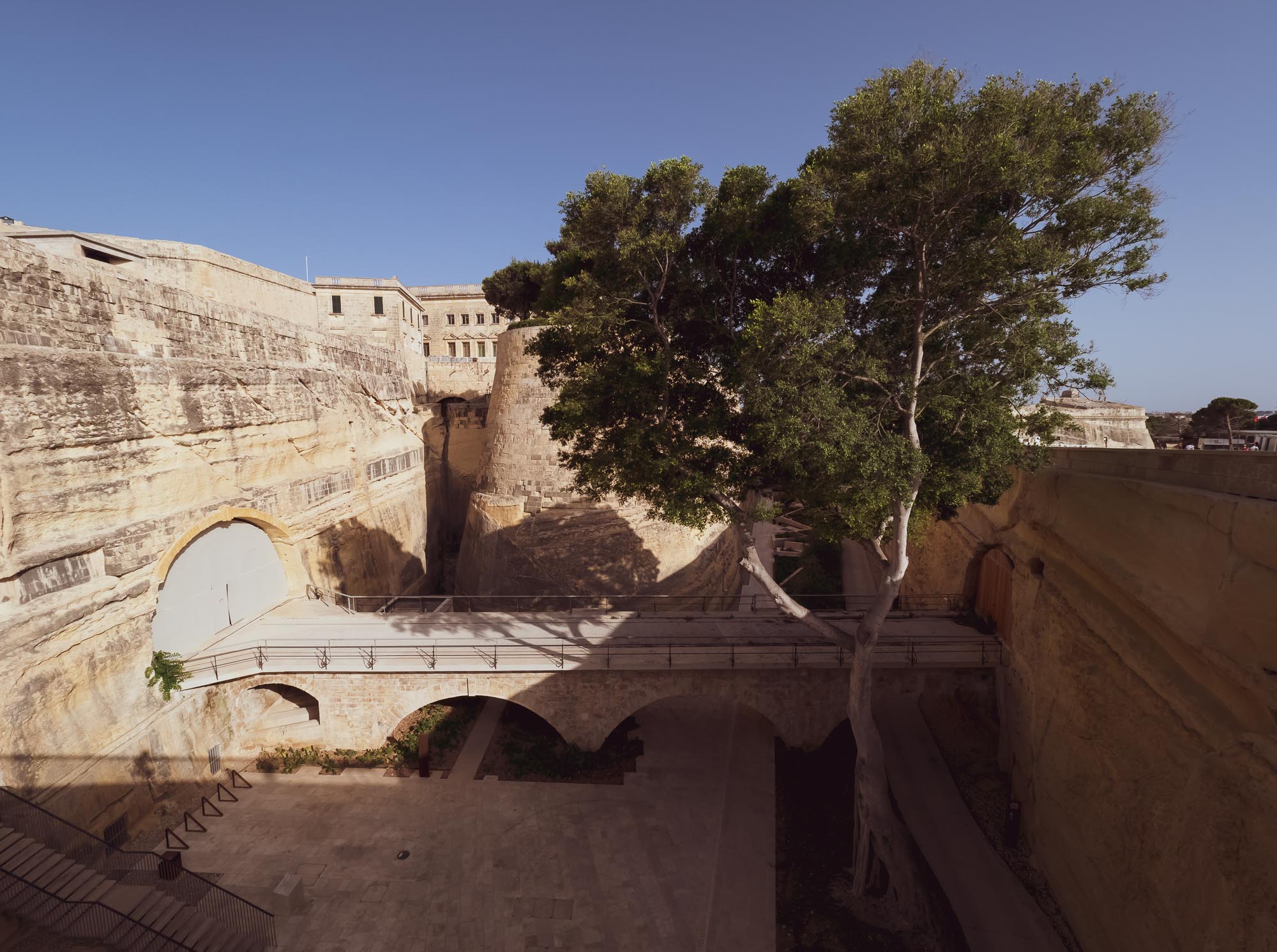
Walls
A tree growing in one of the many trenches around Malta's fortified walls.
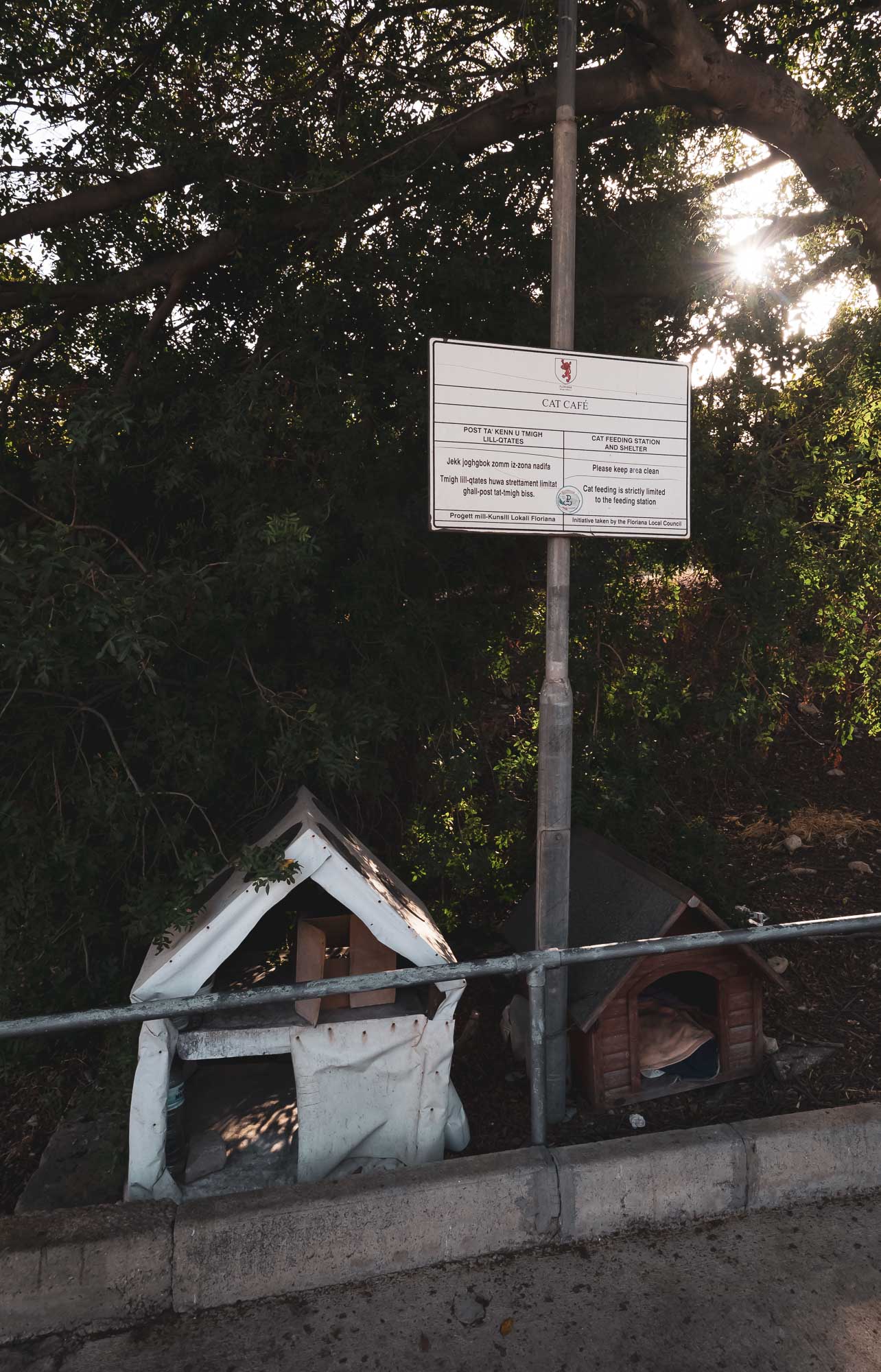
Cat Cafe
There seems to be a special place for cats in Maltese hearts, as I found a few spots for shelter and food.
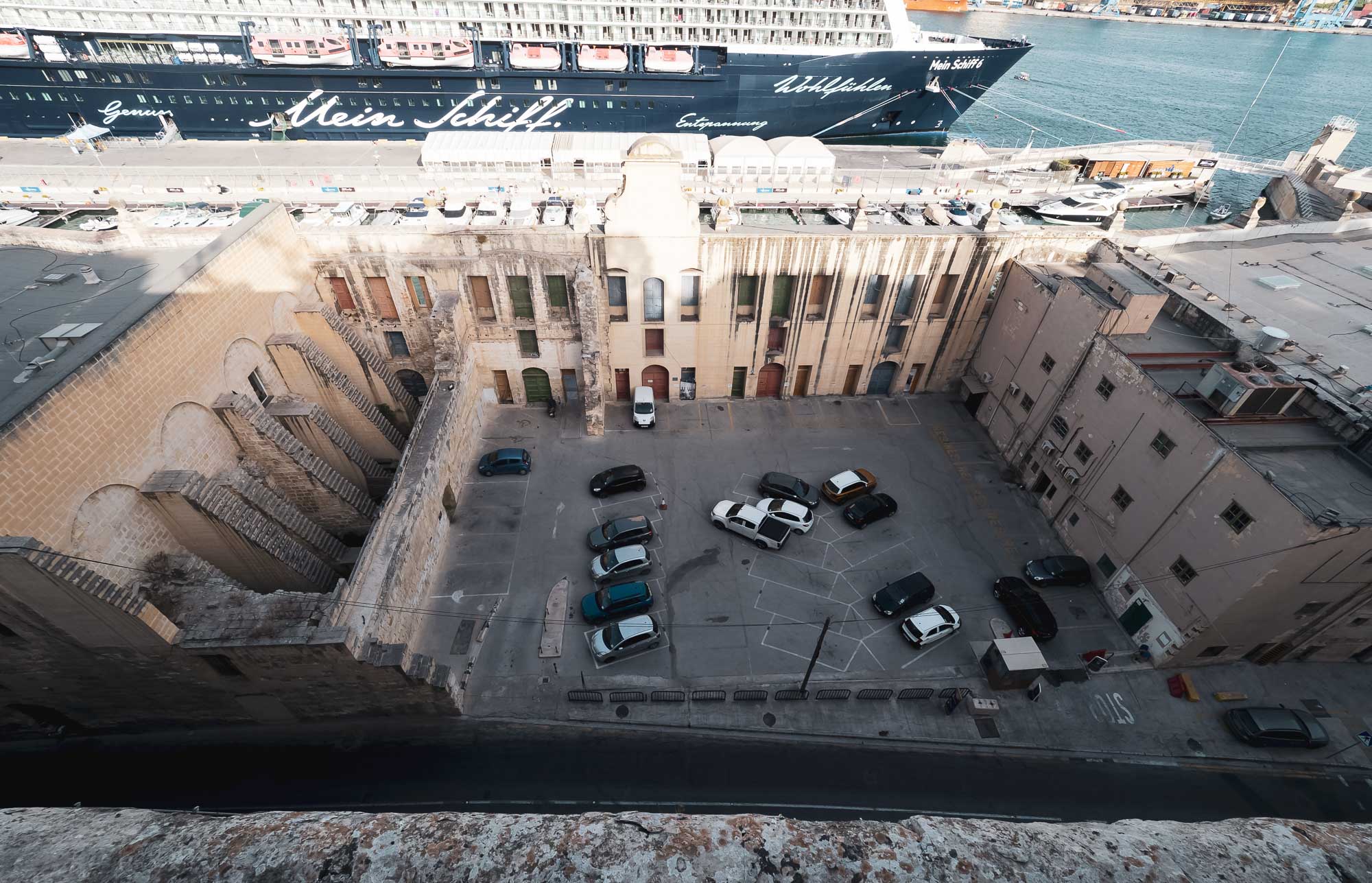
Unusual Parking Lot
A parking lot inside the walls remaining of this building.
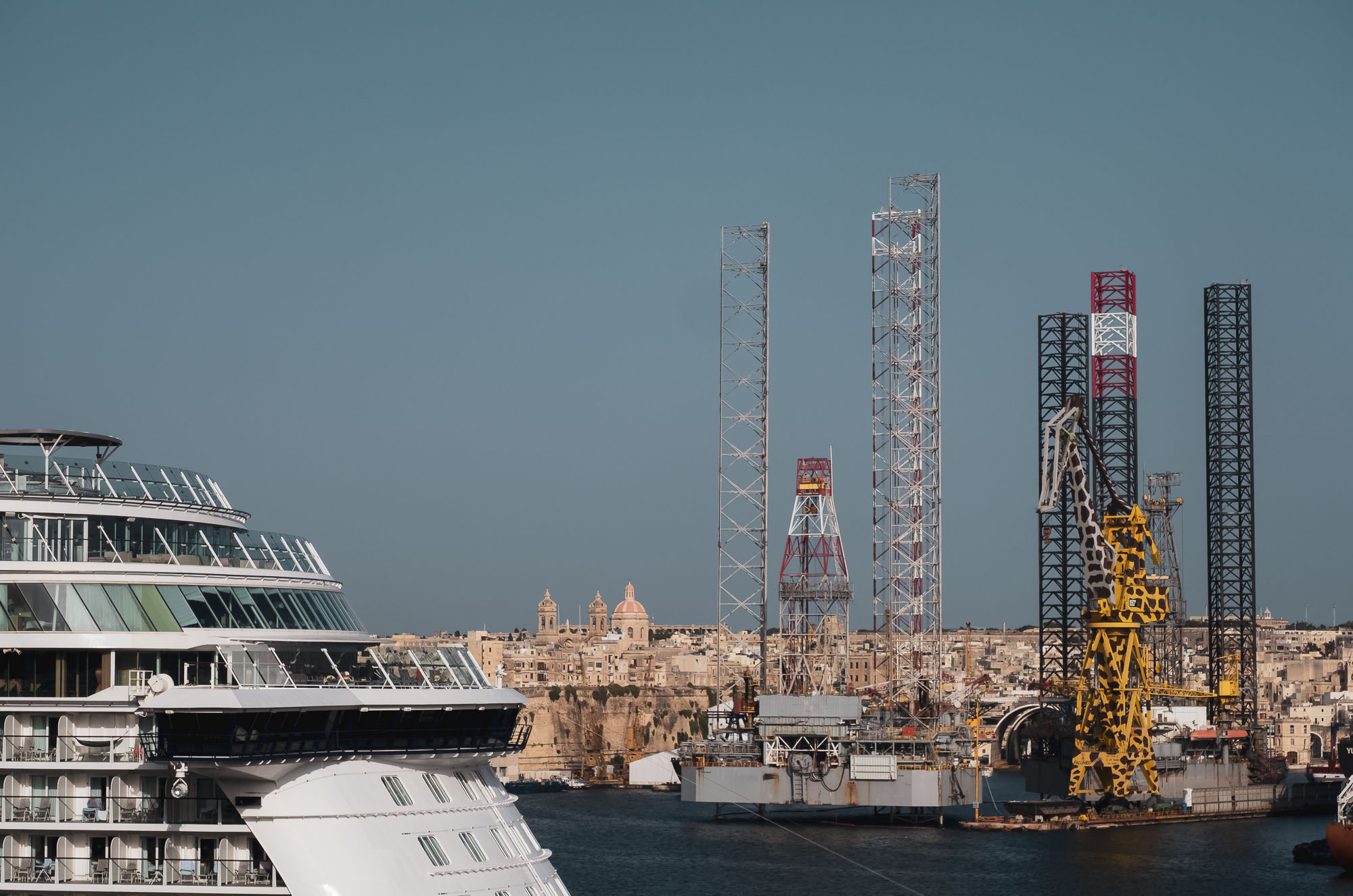
Contrasts
Huge moden cruise liners, fortified walls, churches, and port cranes all come together. Special mention to whoever came up with the idea of painting this crane like a giraffe.
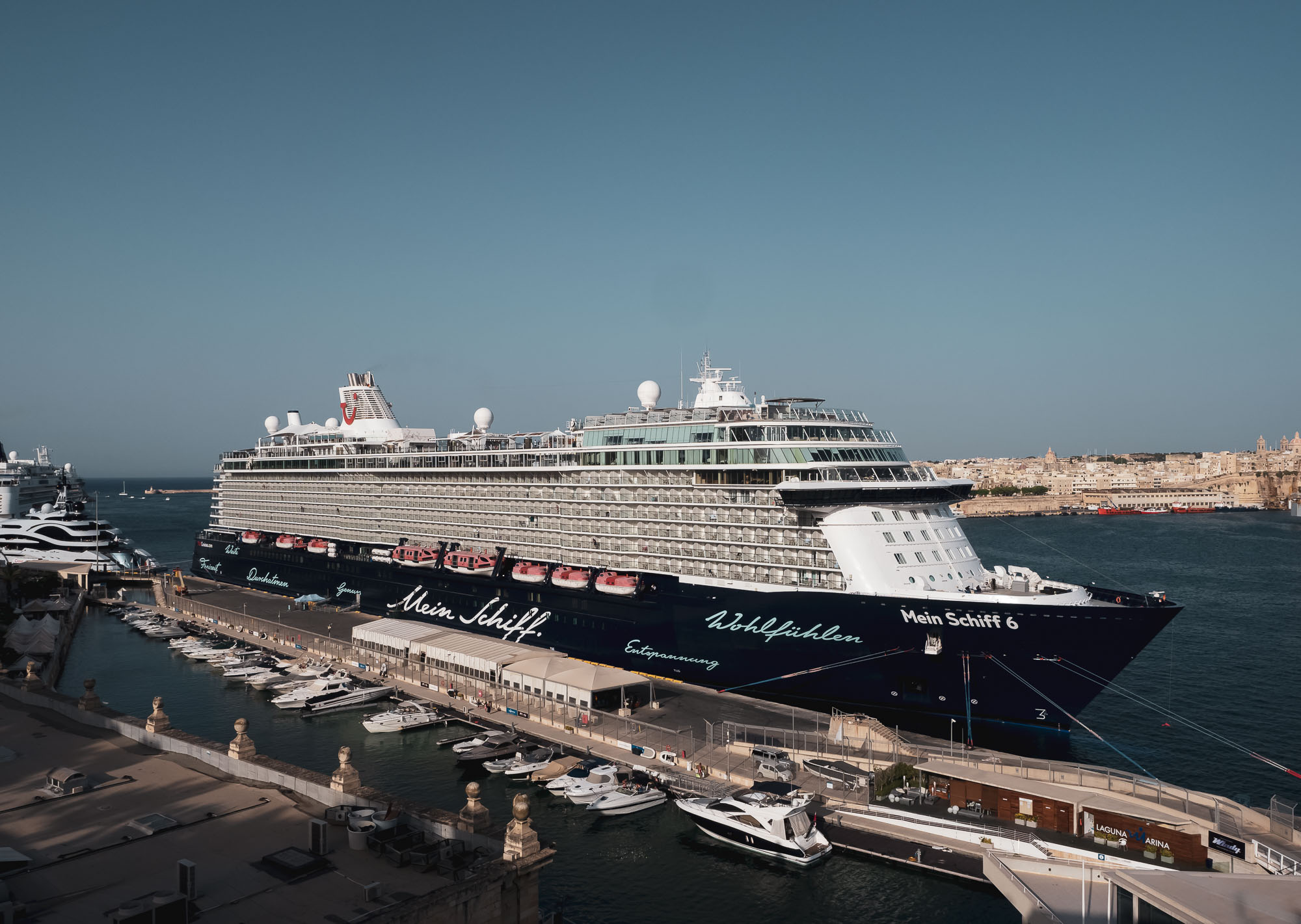
Mein Schiff
One of the ships of the Mein Schiff fleet from tour operator Tui. The Valletta waterfront is regularly home to large cruise liners.
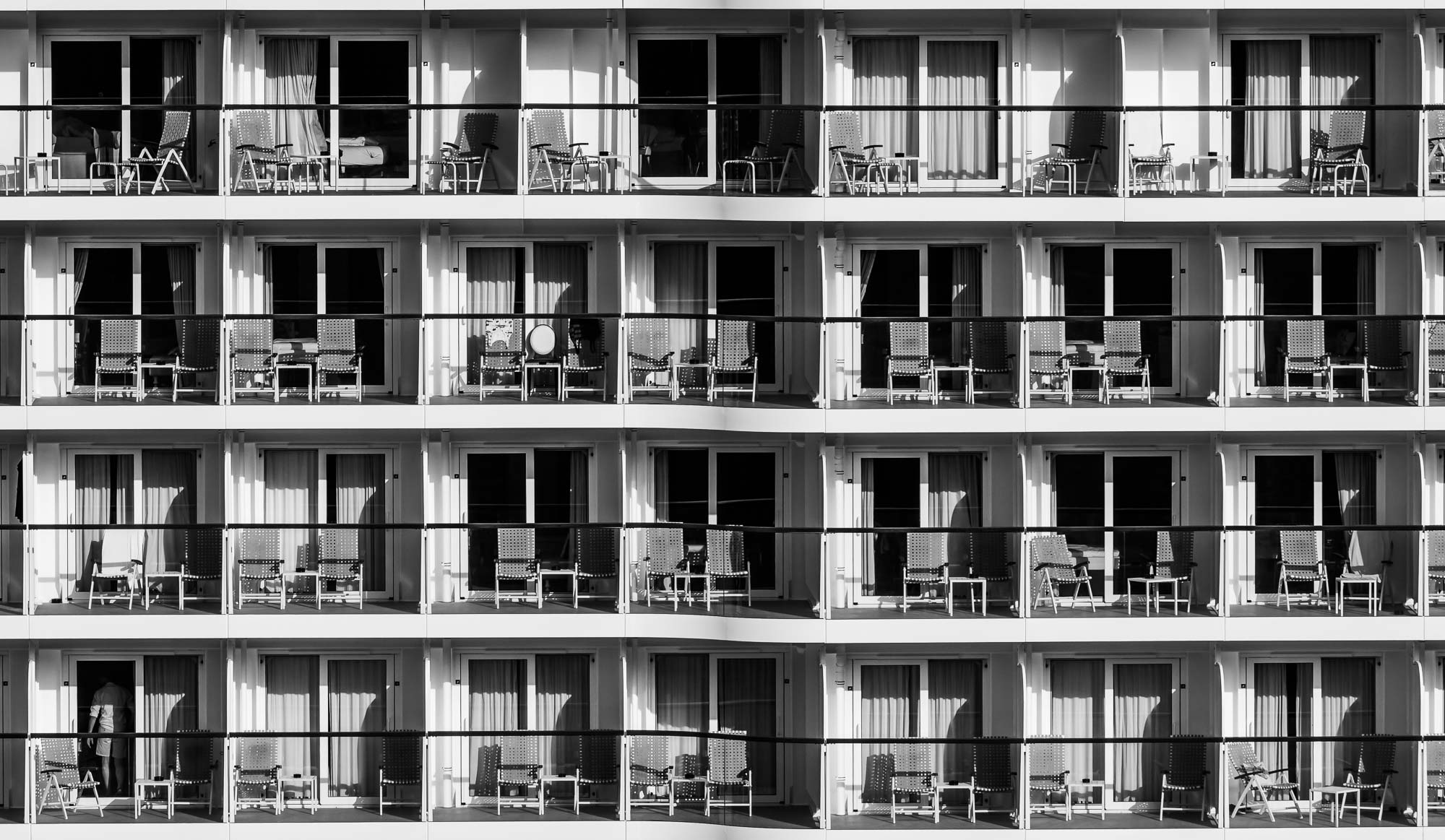
Cabins
With a capacity of 2500 people, this one is not quite yet up there with the largest in the world.
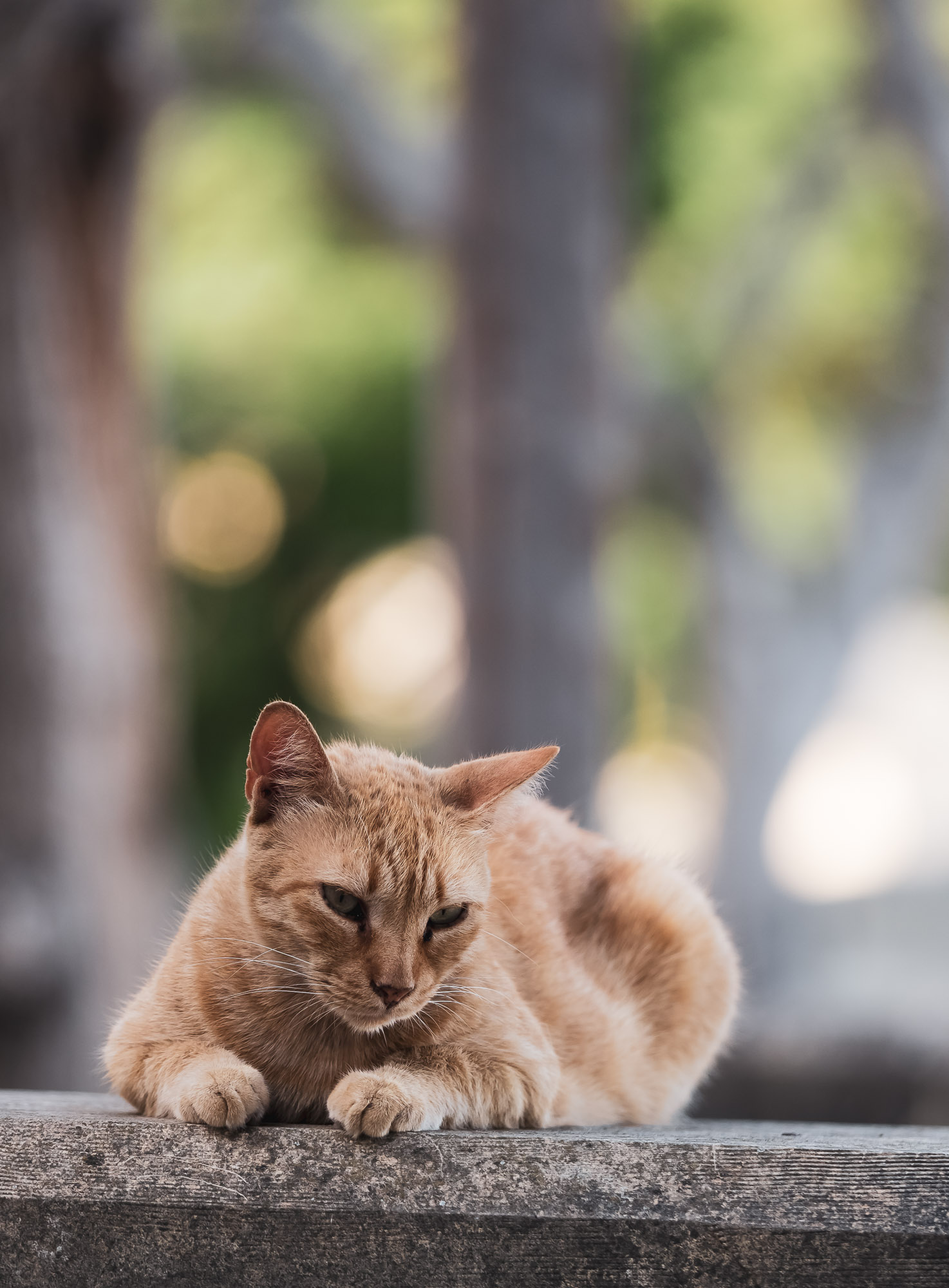
Feline Friend
One of the beneficiaries of the cat cafe.
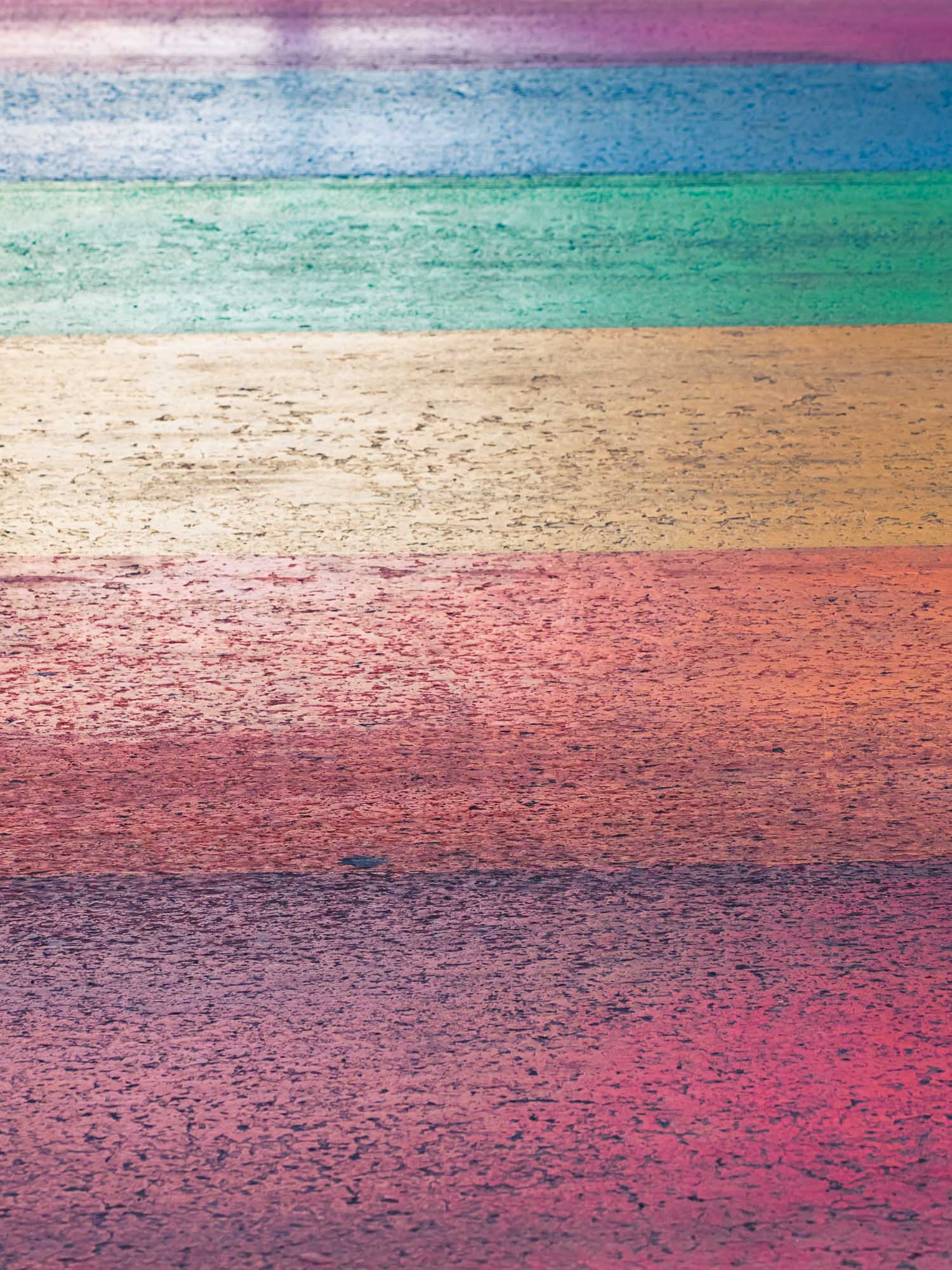
Pride
Unusual street crossing.
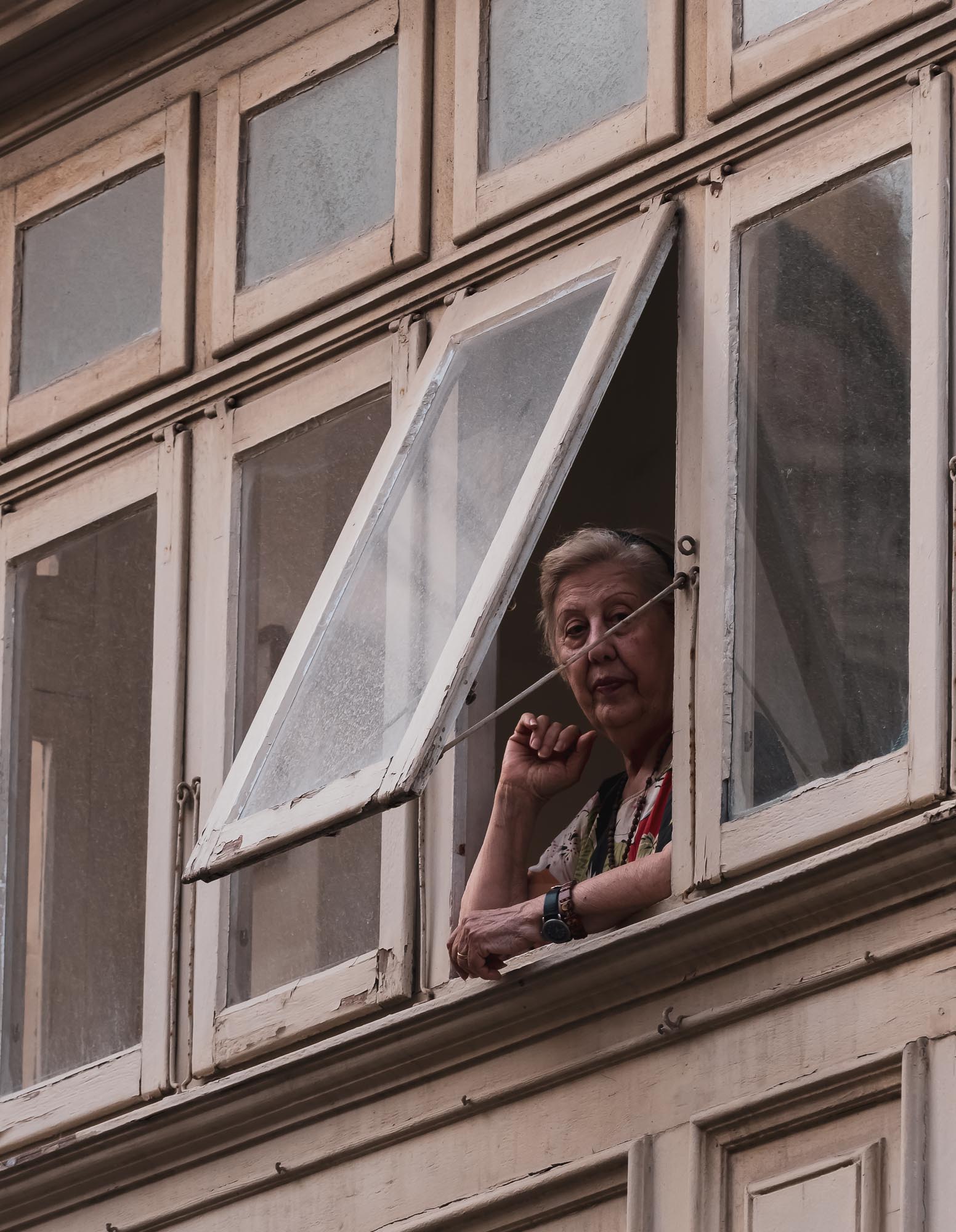
Judging You
Since 1951 or so...
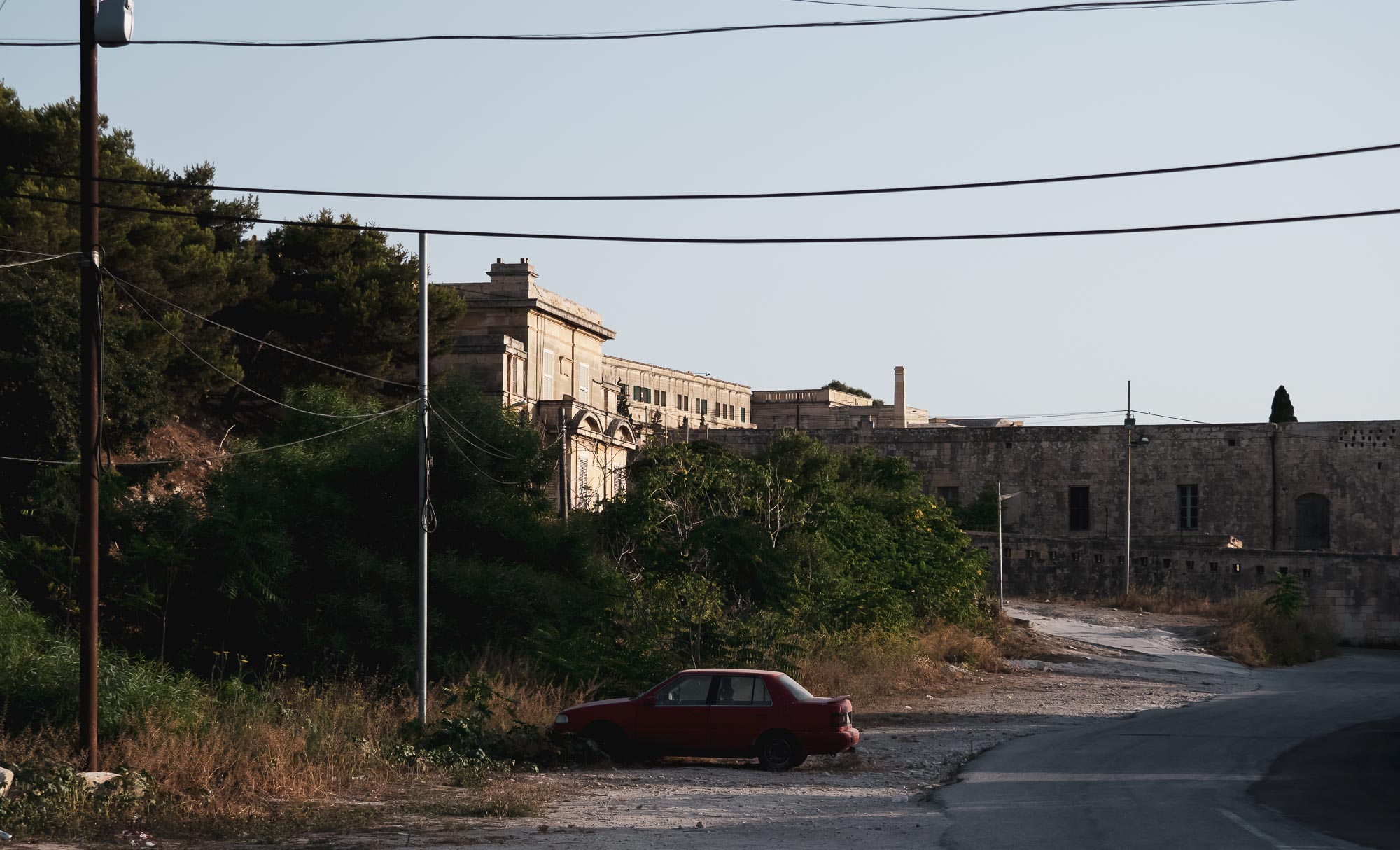
Backstreets
Malta has an unusual charme - it's clearly old and parts feel run down, but yet not dirty or unsafe.
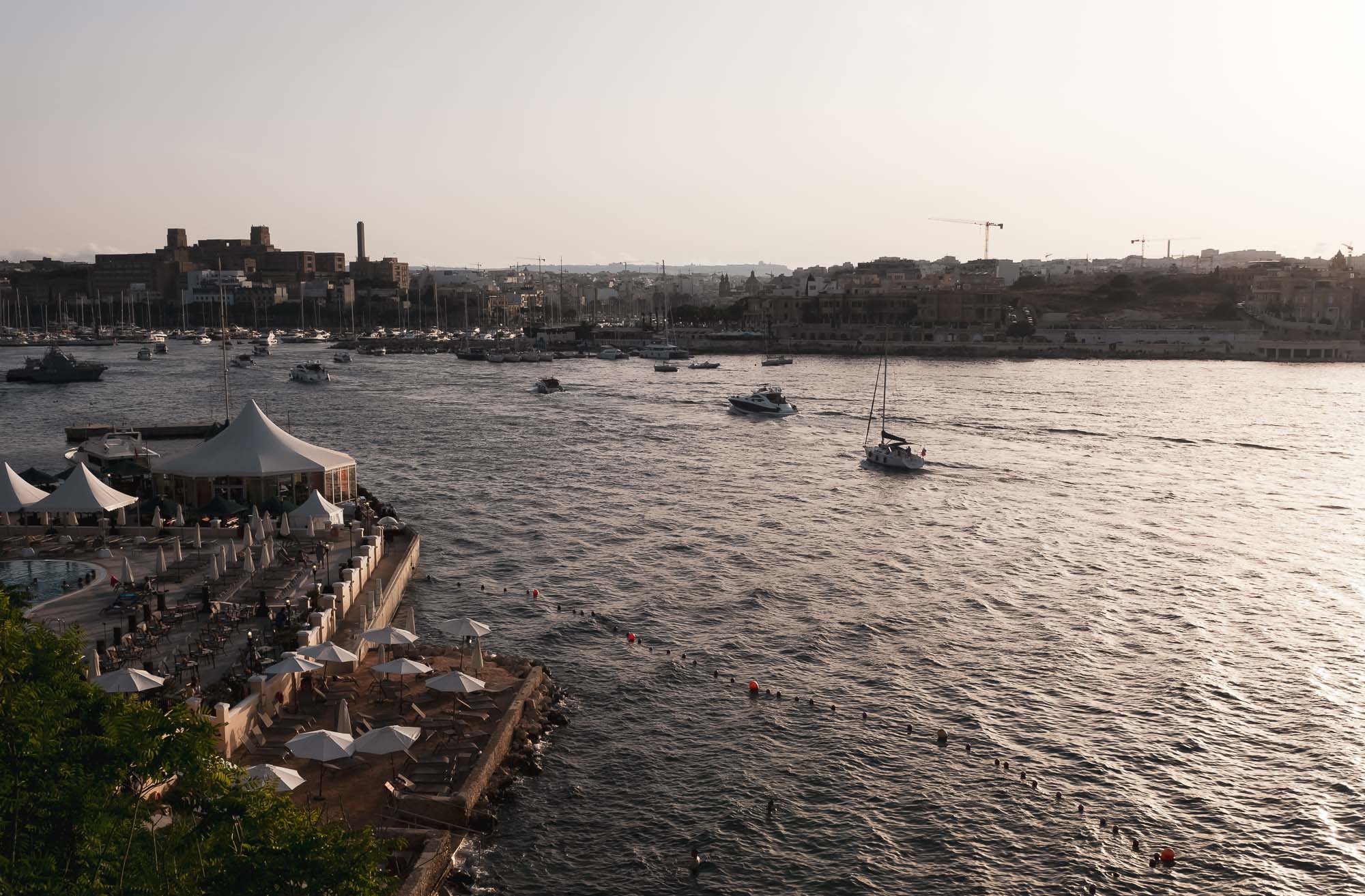
Waterfront
Looking westwards from Valetta into the harbour. There's quite a lot of cranes in the skyline, the economy is doing well and the government invests in infrastructure.
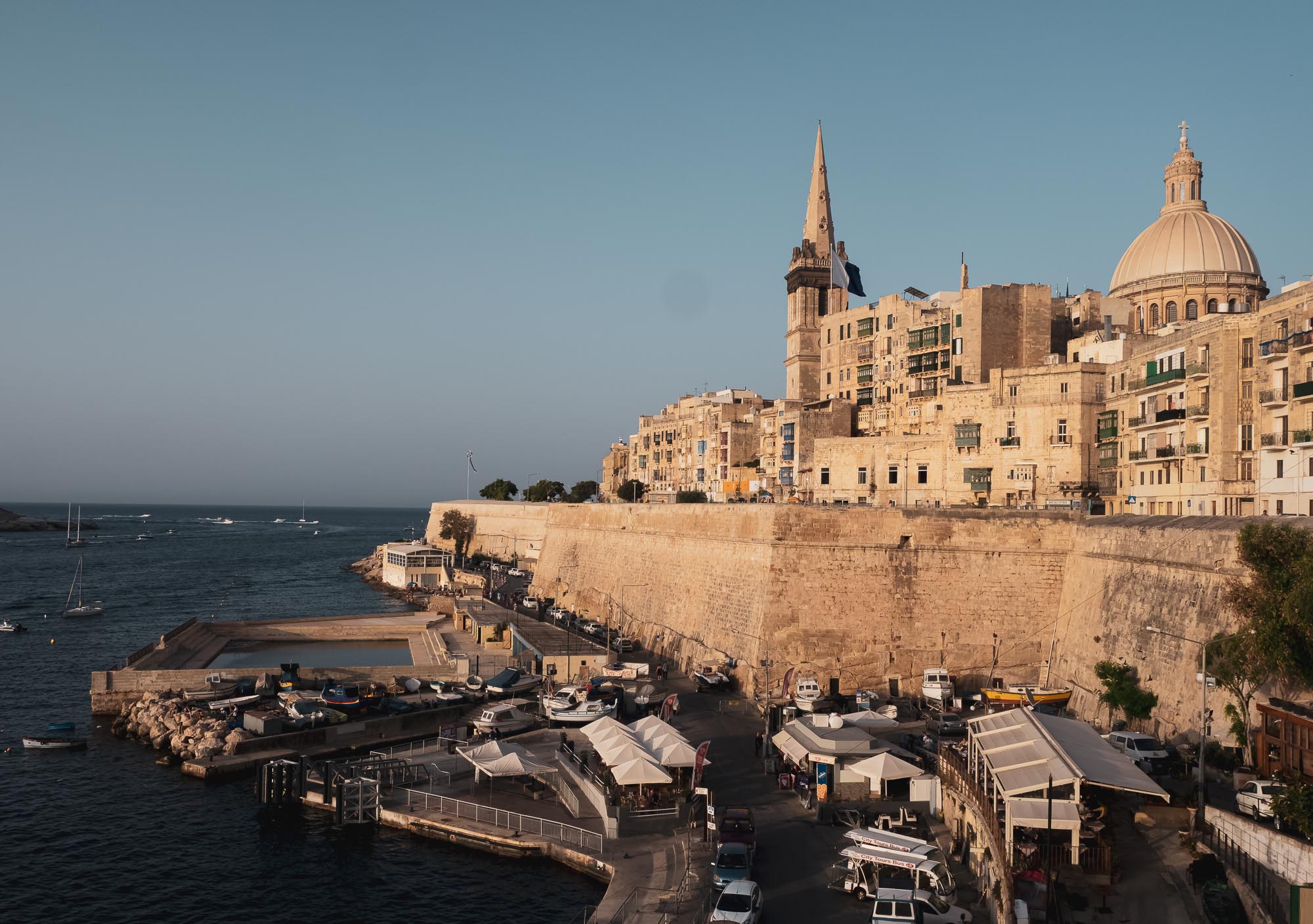
City Views
The north eastern side of Valetta, with the dome of Our Lady of Mount Carmel church.
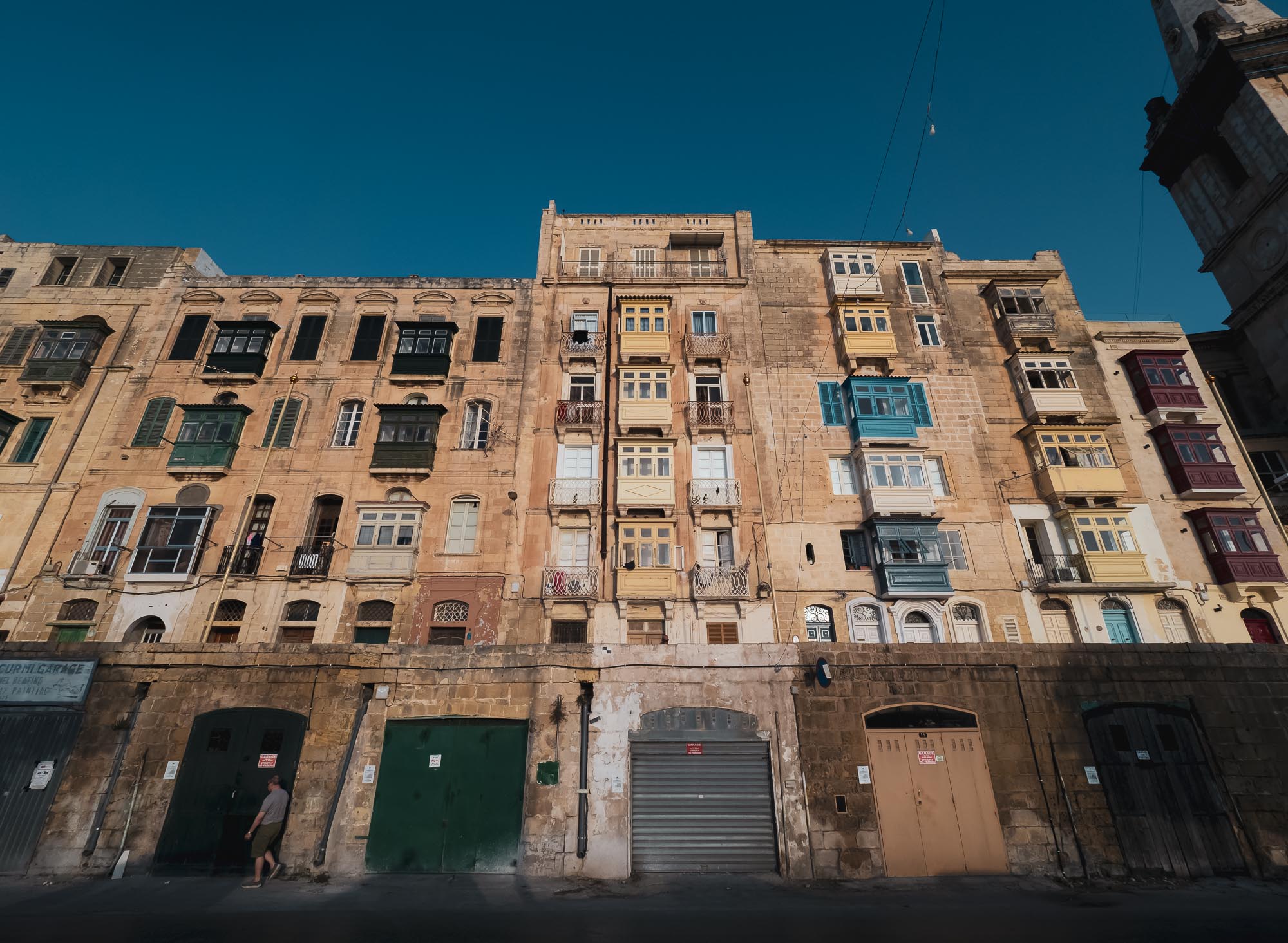
Walls
The typical building walls with colorful offset balconies.
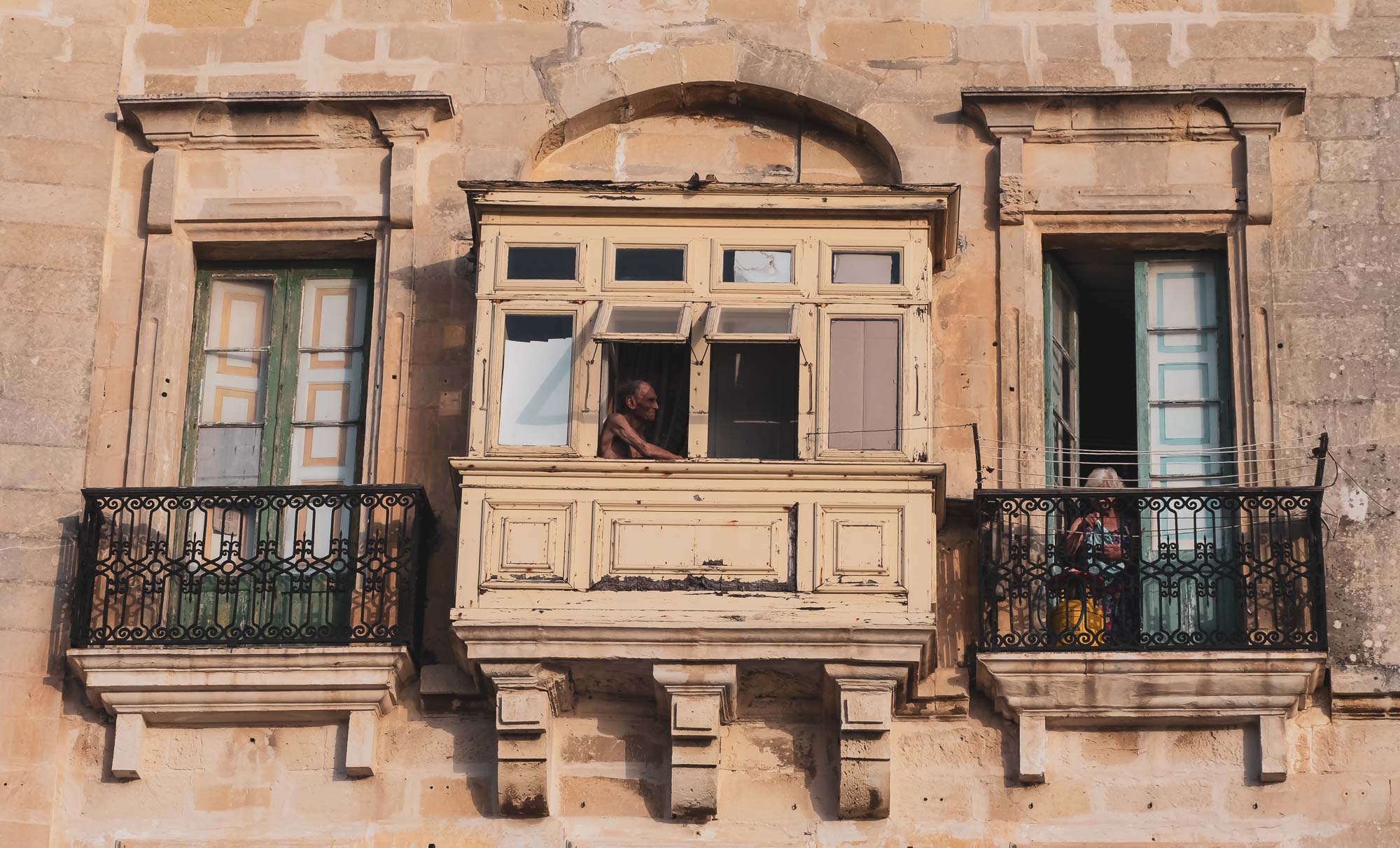
Looking out
He did have binoculars just a moment ago.
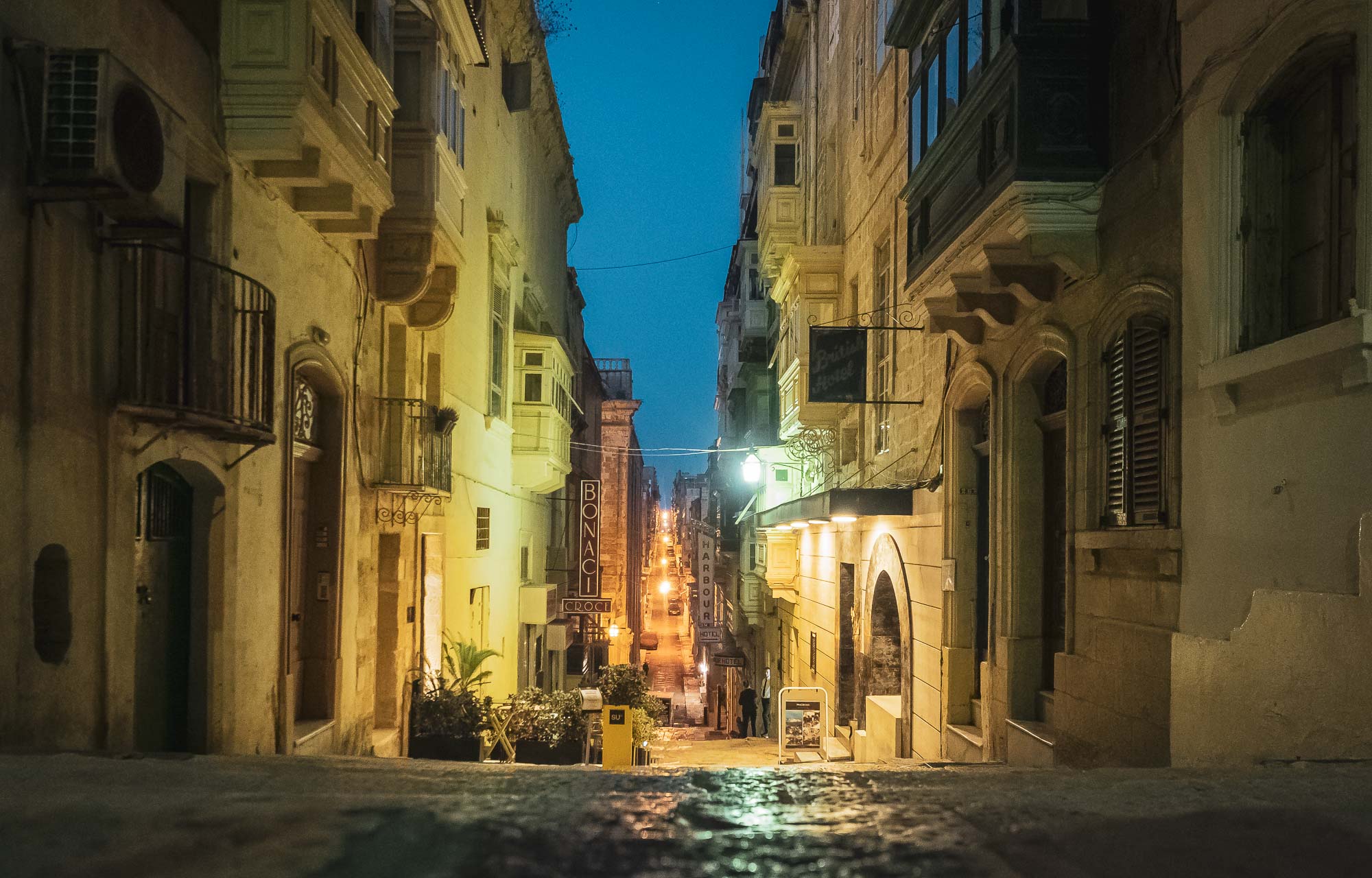
Street Views
You'll climb and descend a lot of streets in Valletta.
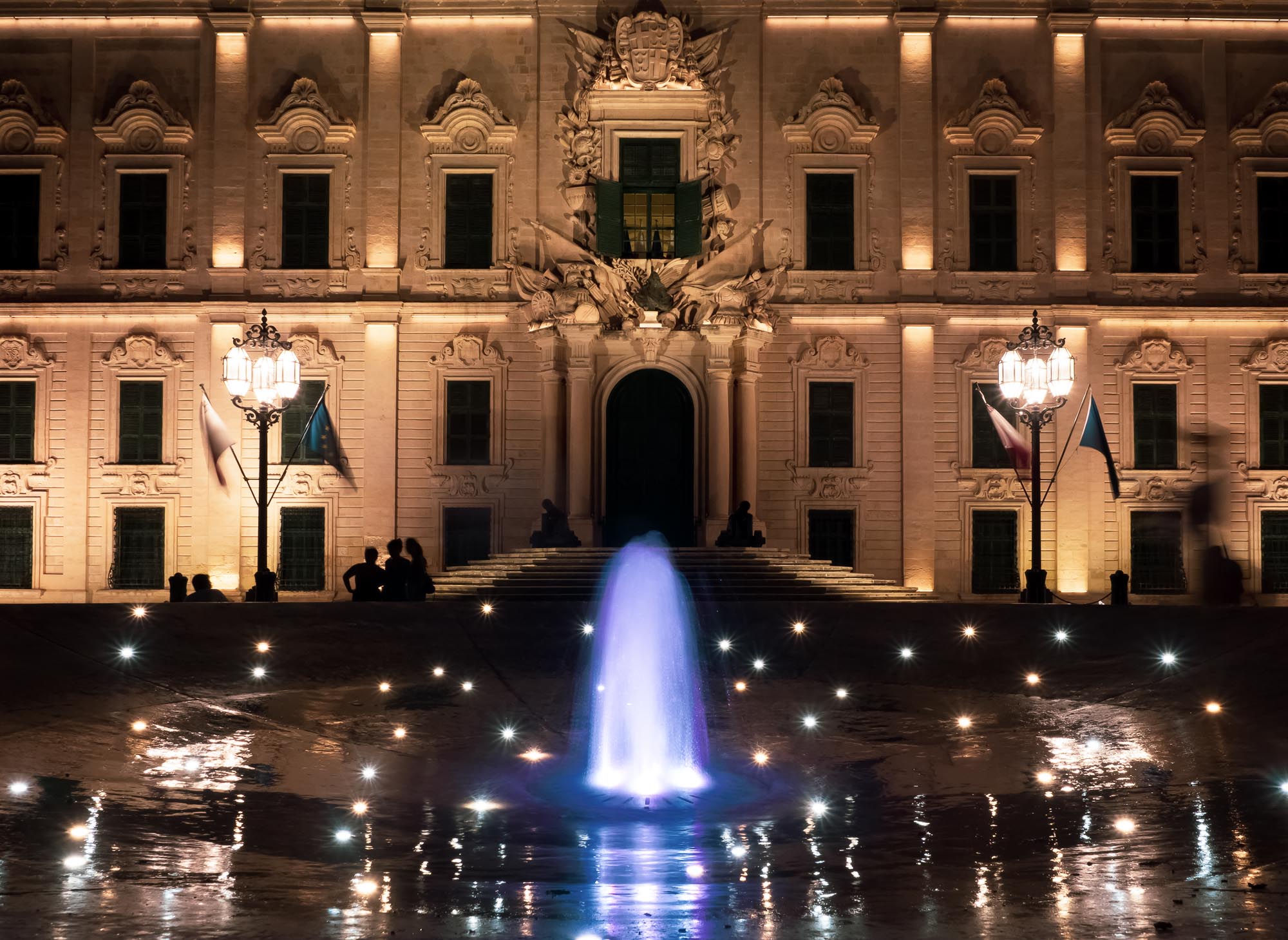
Auberge de Castille
The prime ministers office..
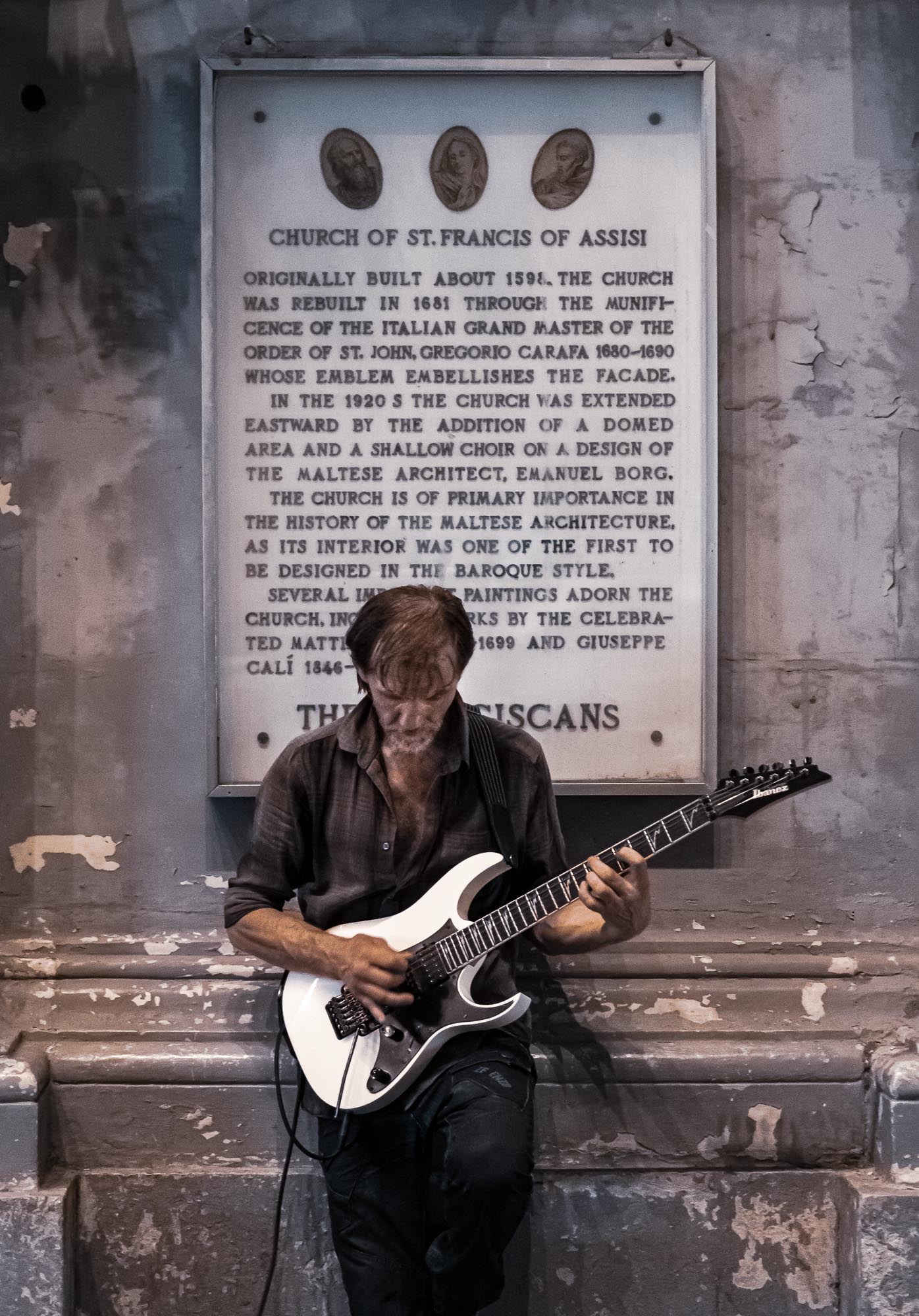
Singers
Amazing guitarist in the streets of Valletta.
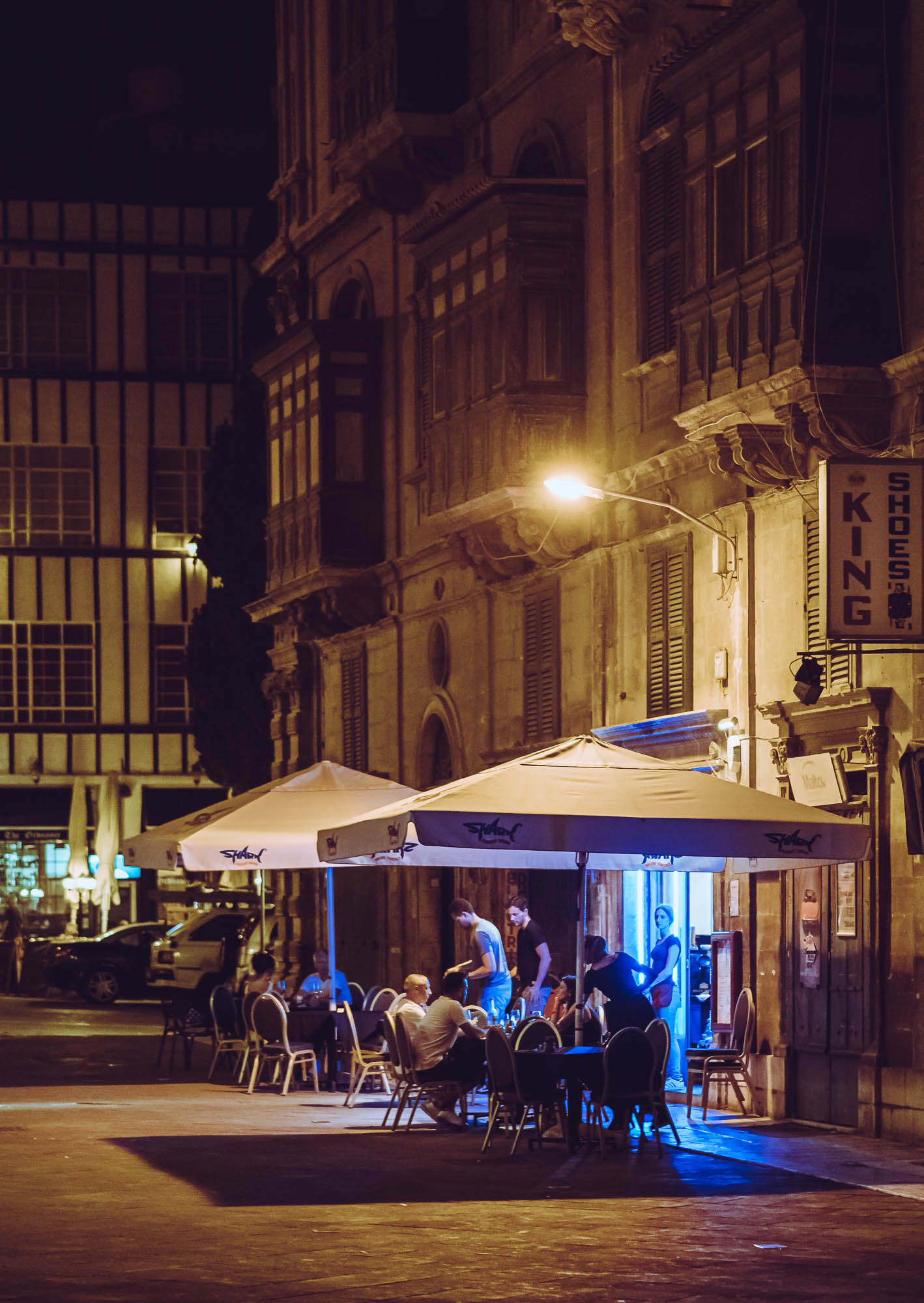
Nightlife
While Malta's entertainment district is elsewhere, Valletta's streets were still busy in the evenings.
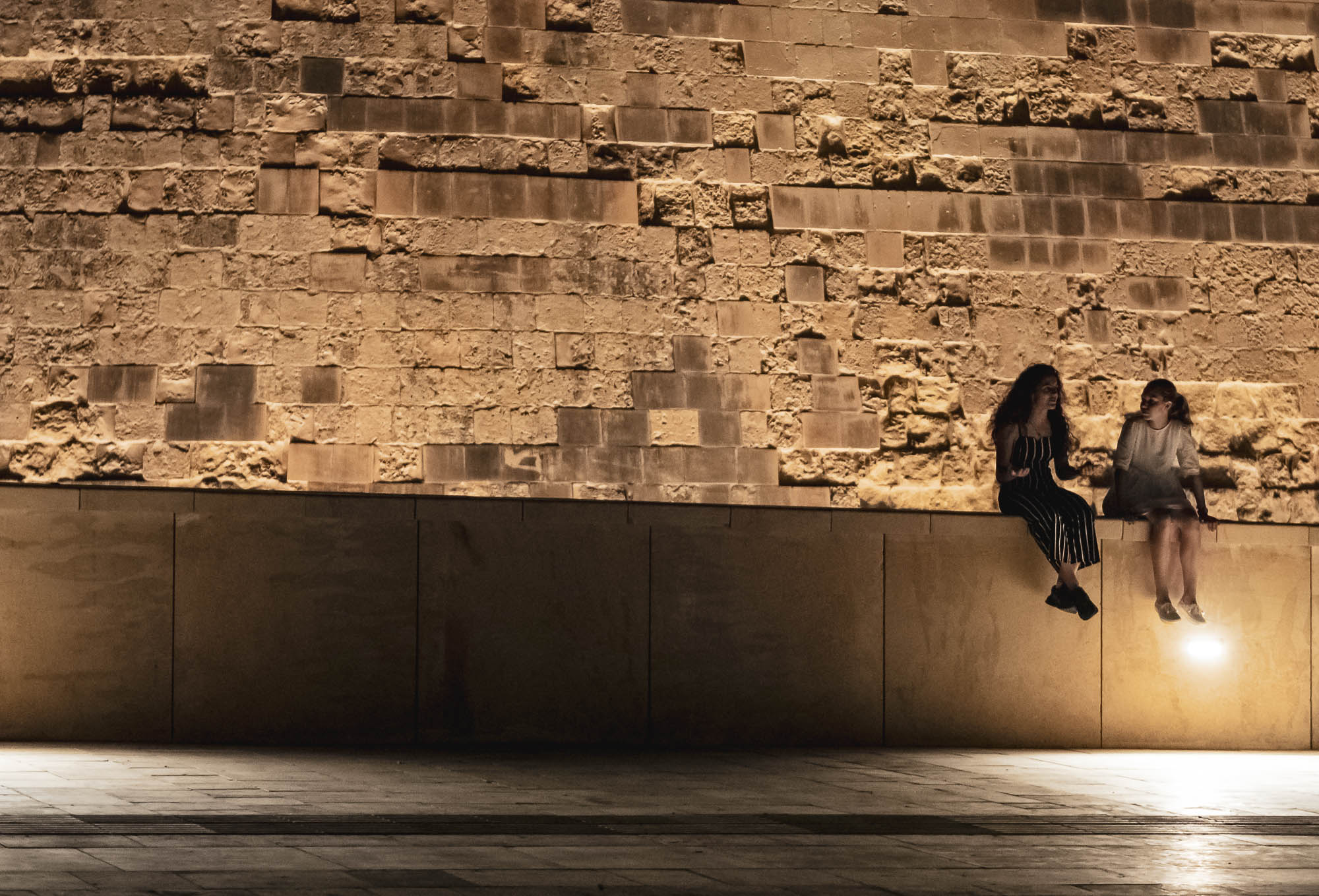
Chatting
Two girls discussing life's ideosyncracies on the city walls.
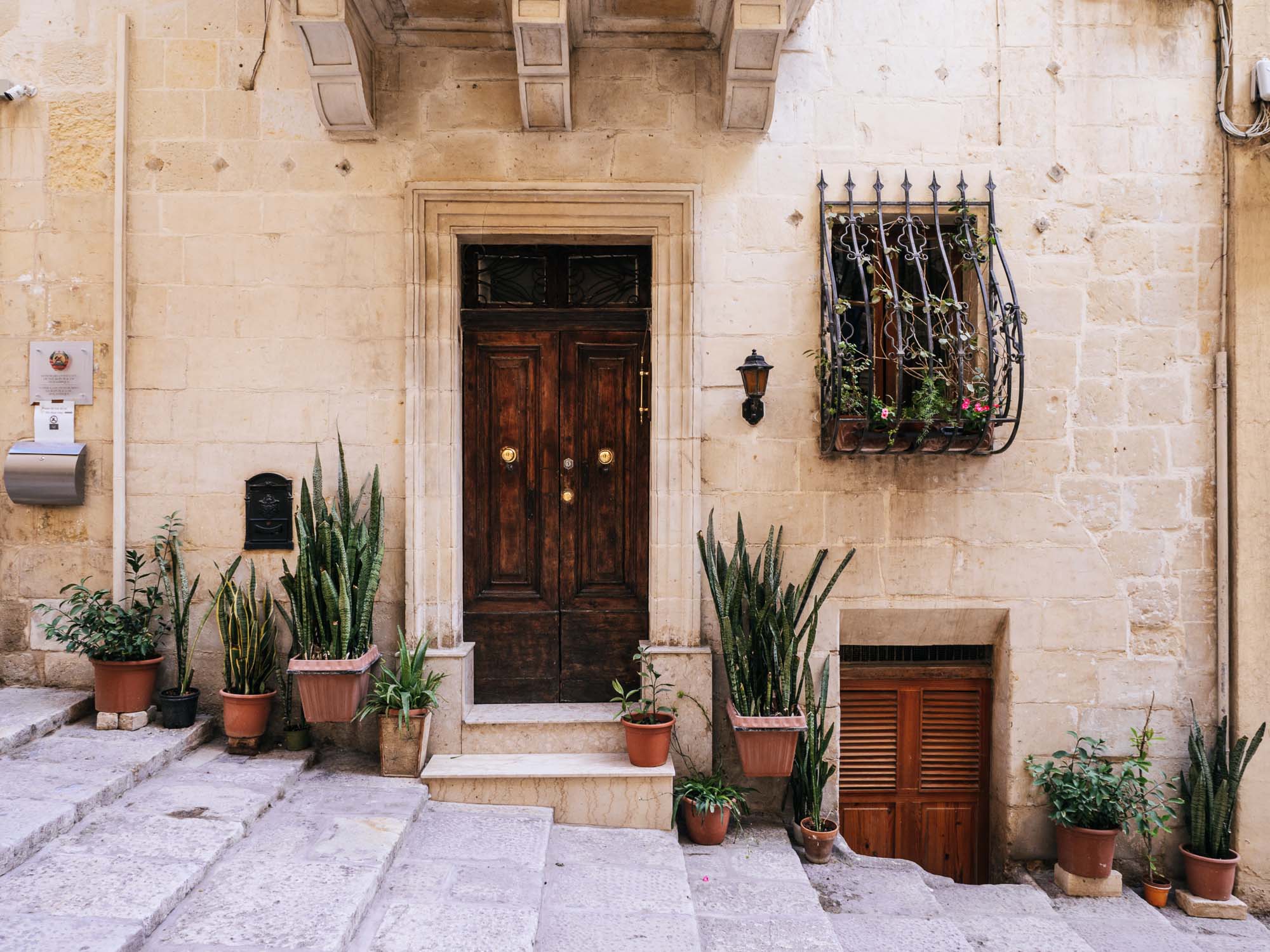
Entrance
As with many mediterranean cities, people like to keep plants outside the doors, windows and balconies.
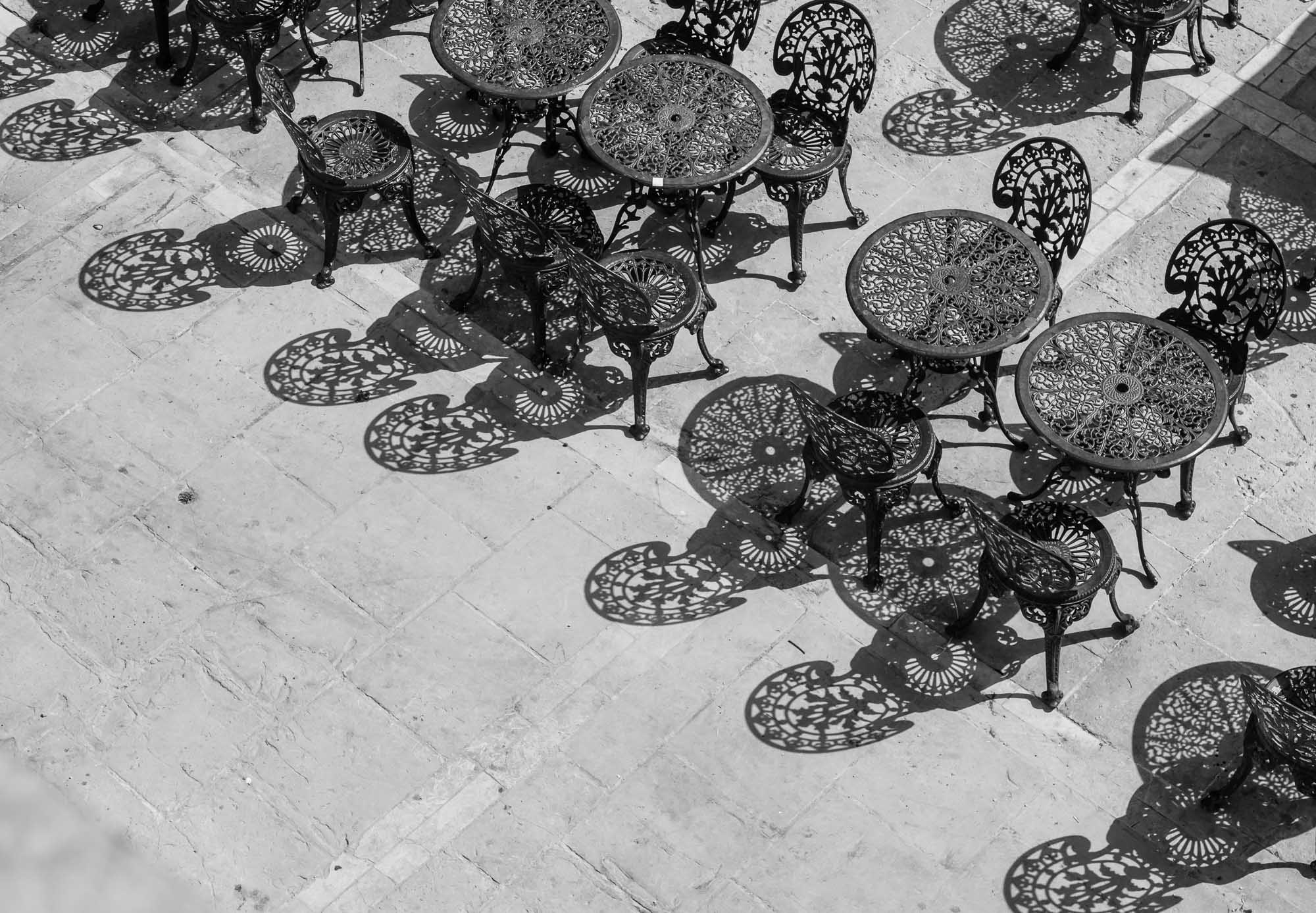
Patterns
A cafe near the Upper Barrakka Gardens.
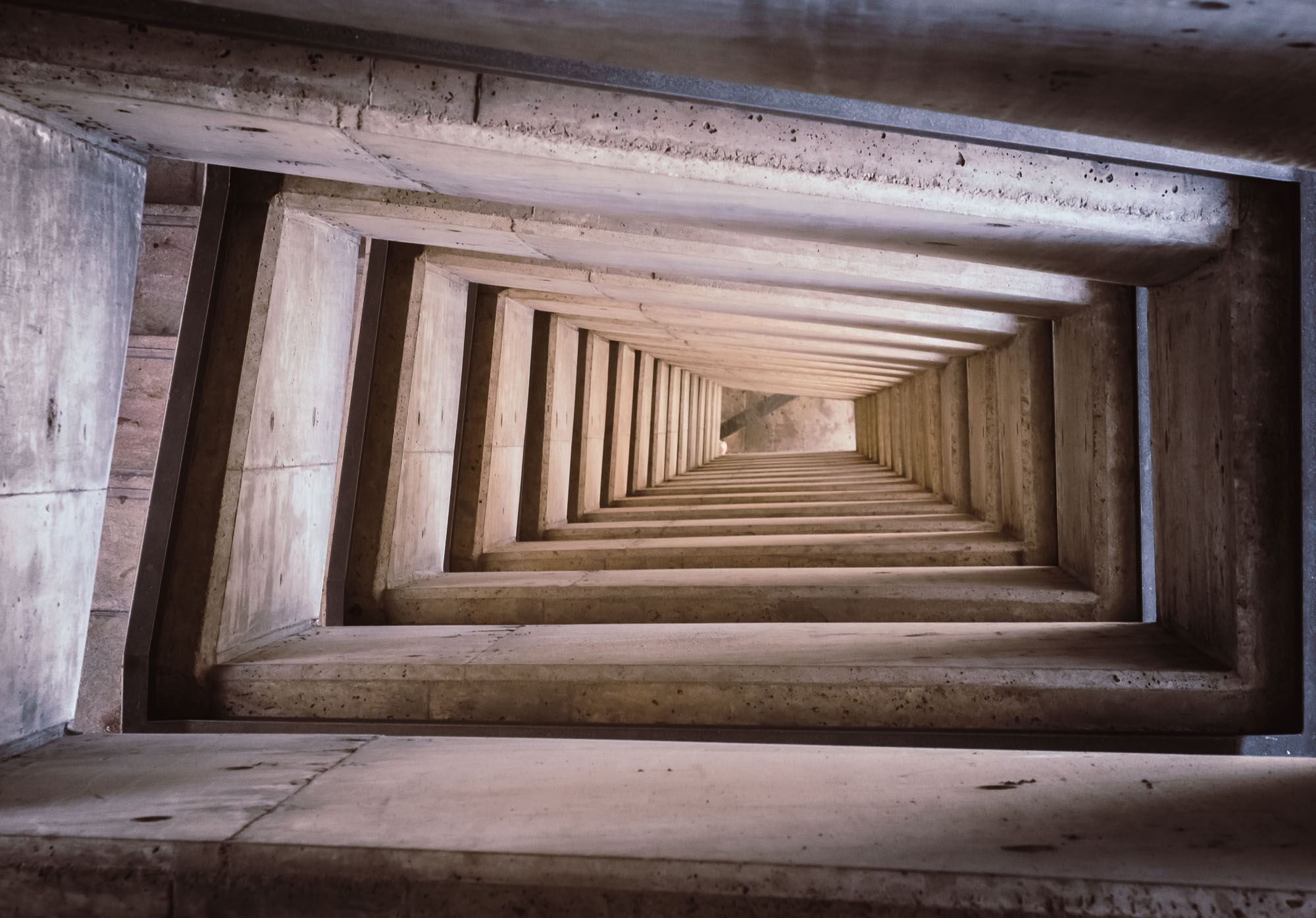
Stairs
Looking down the stairs of the Barrakka lift, connecing the waterfront with the streets of Valletta.
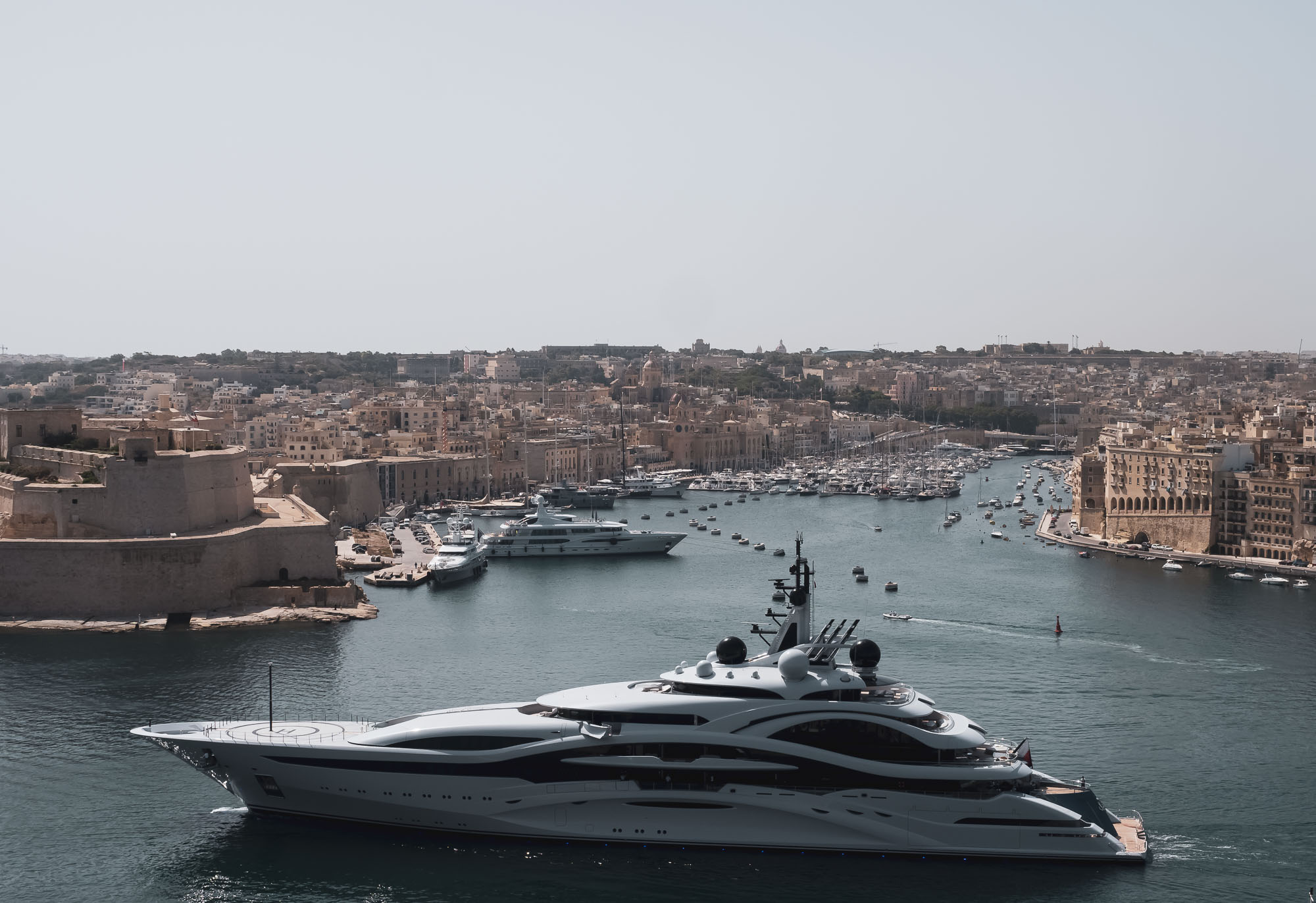
Yacht
A large yacht passing Senglea and Birgu, two of the cities opposite Valletta.
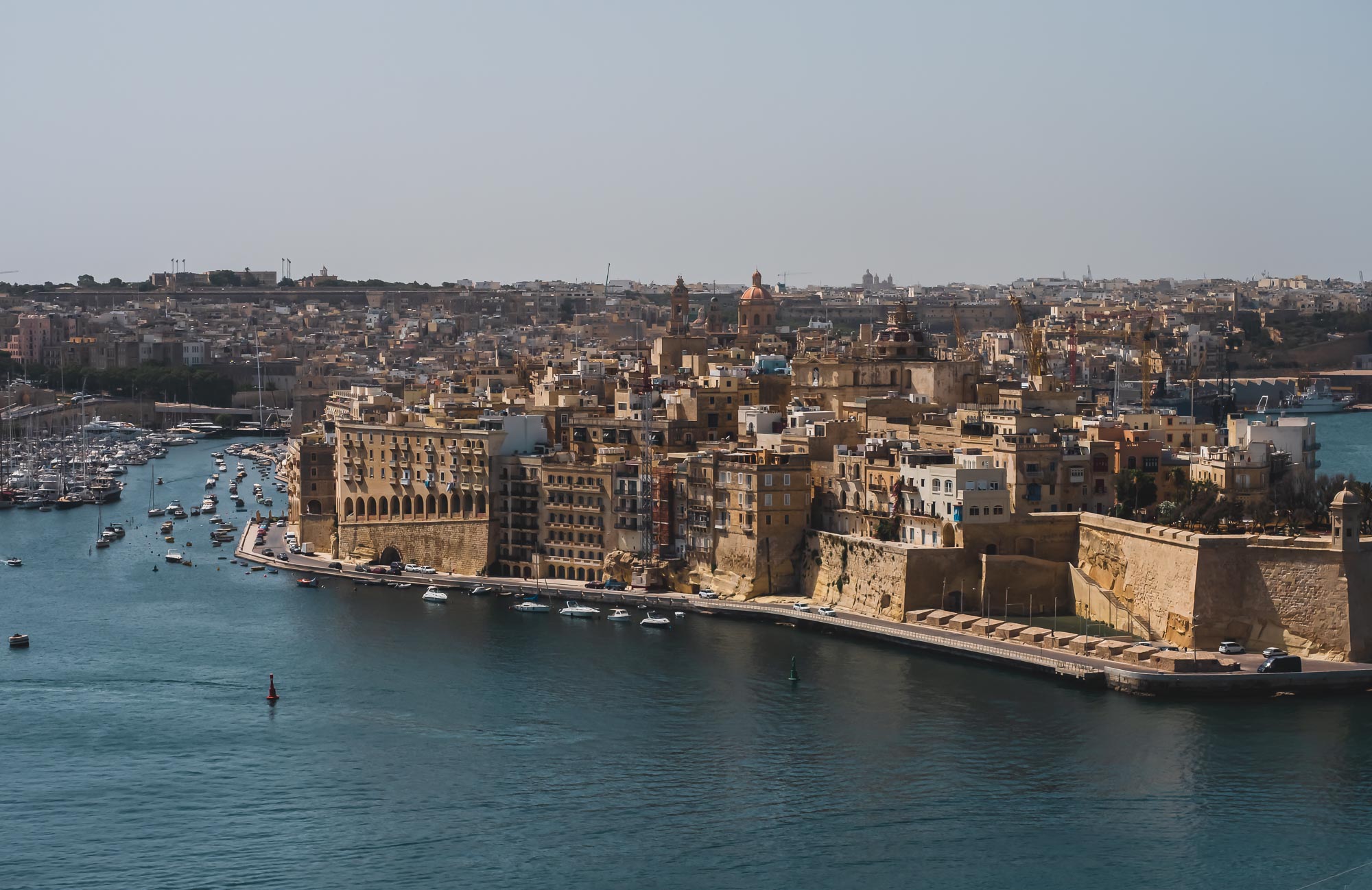
Senglea
One of the "three cities" on the other side of the harbour, largely unknown, yet equally interesting as Valletta.
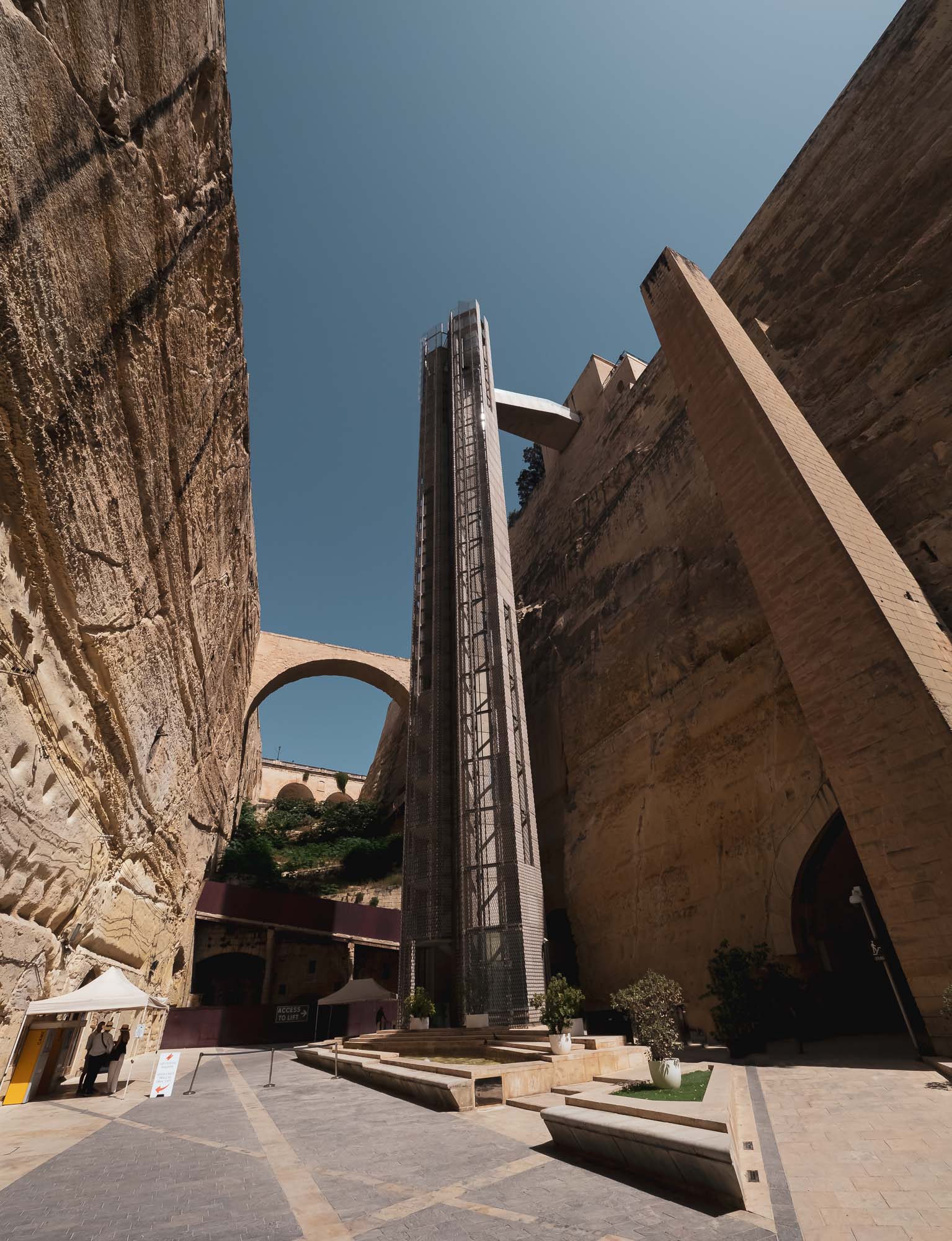
Barraka Lift
The aforementioned lift and its stairs, seen from the bottom.
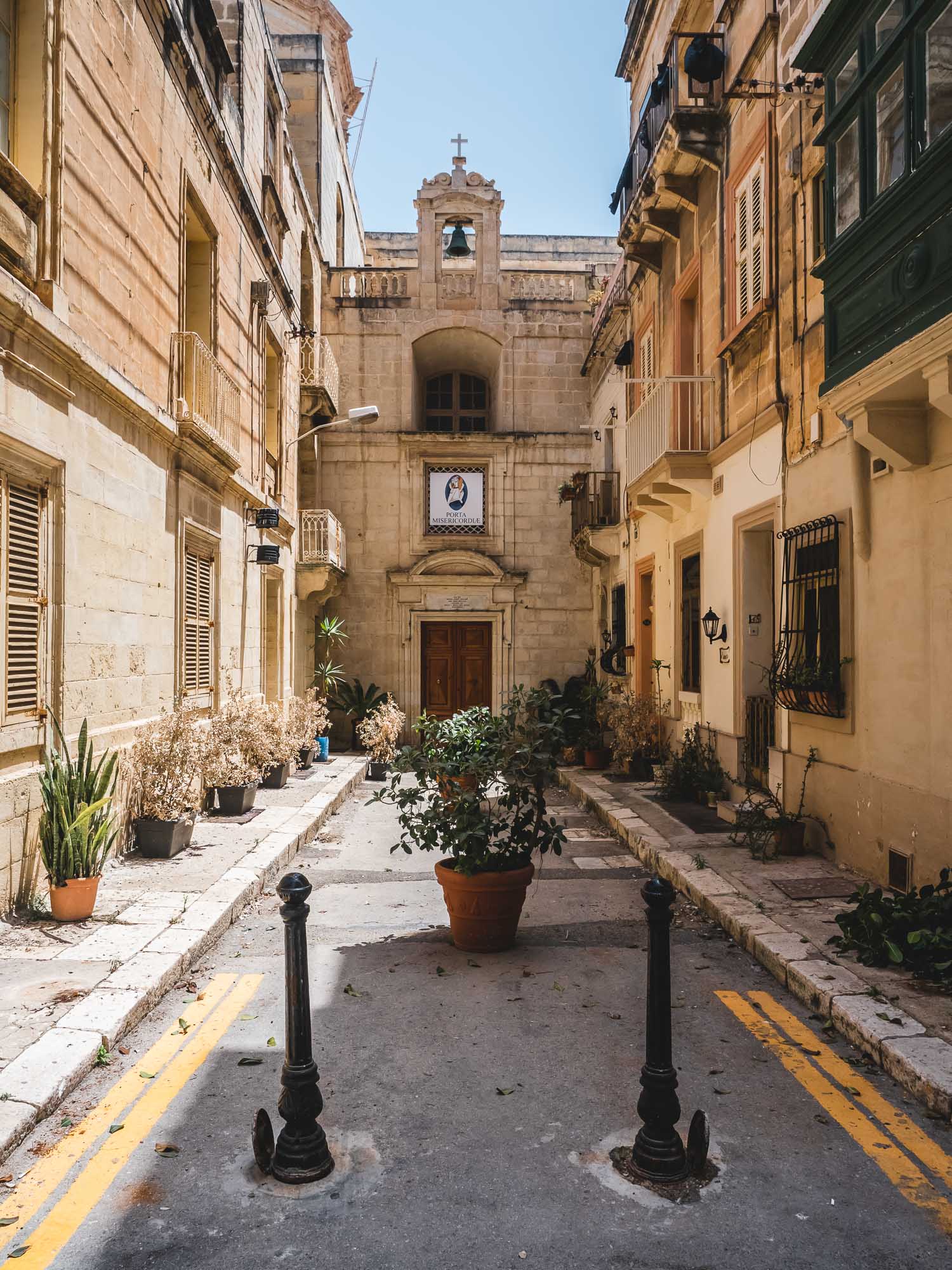
Cul de Sac
A small side street in Senglea.
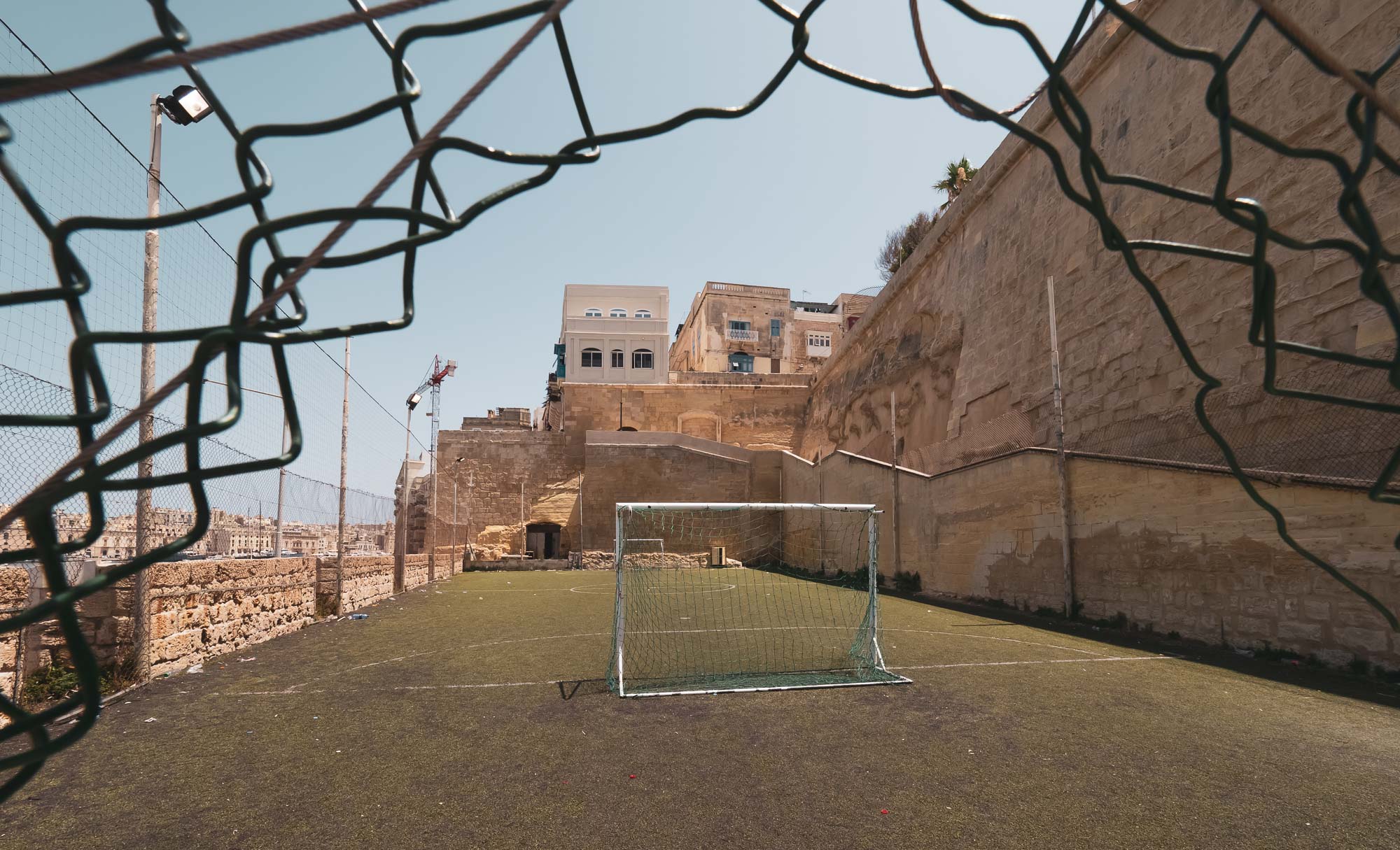
Game On
Although this football field had a peculiar trapez like shape, it's location on the waterfront is unbeatable.
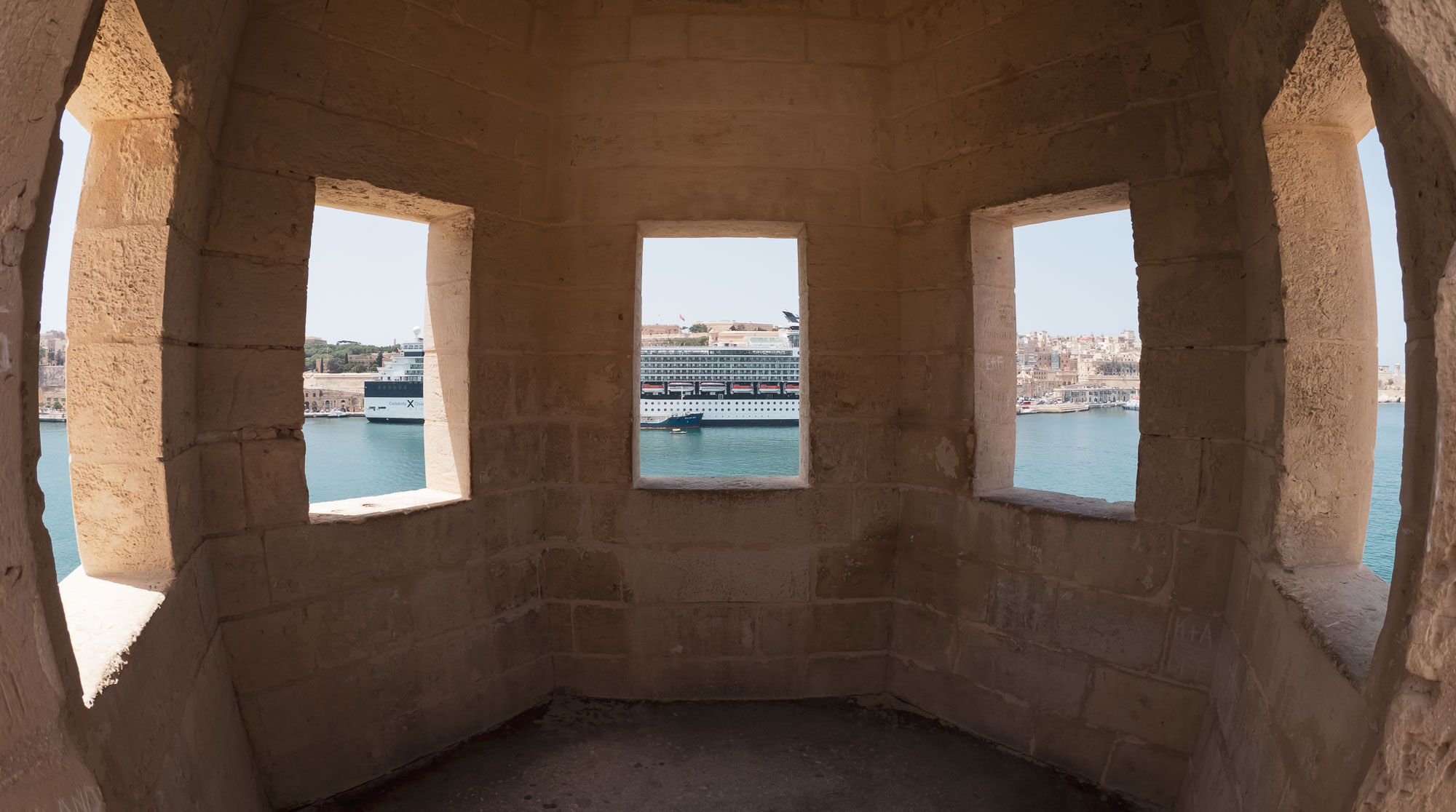
Lookout
The little tower in Gardjola Gardens provides good views of Valletta - and usually some large cruise liners.
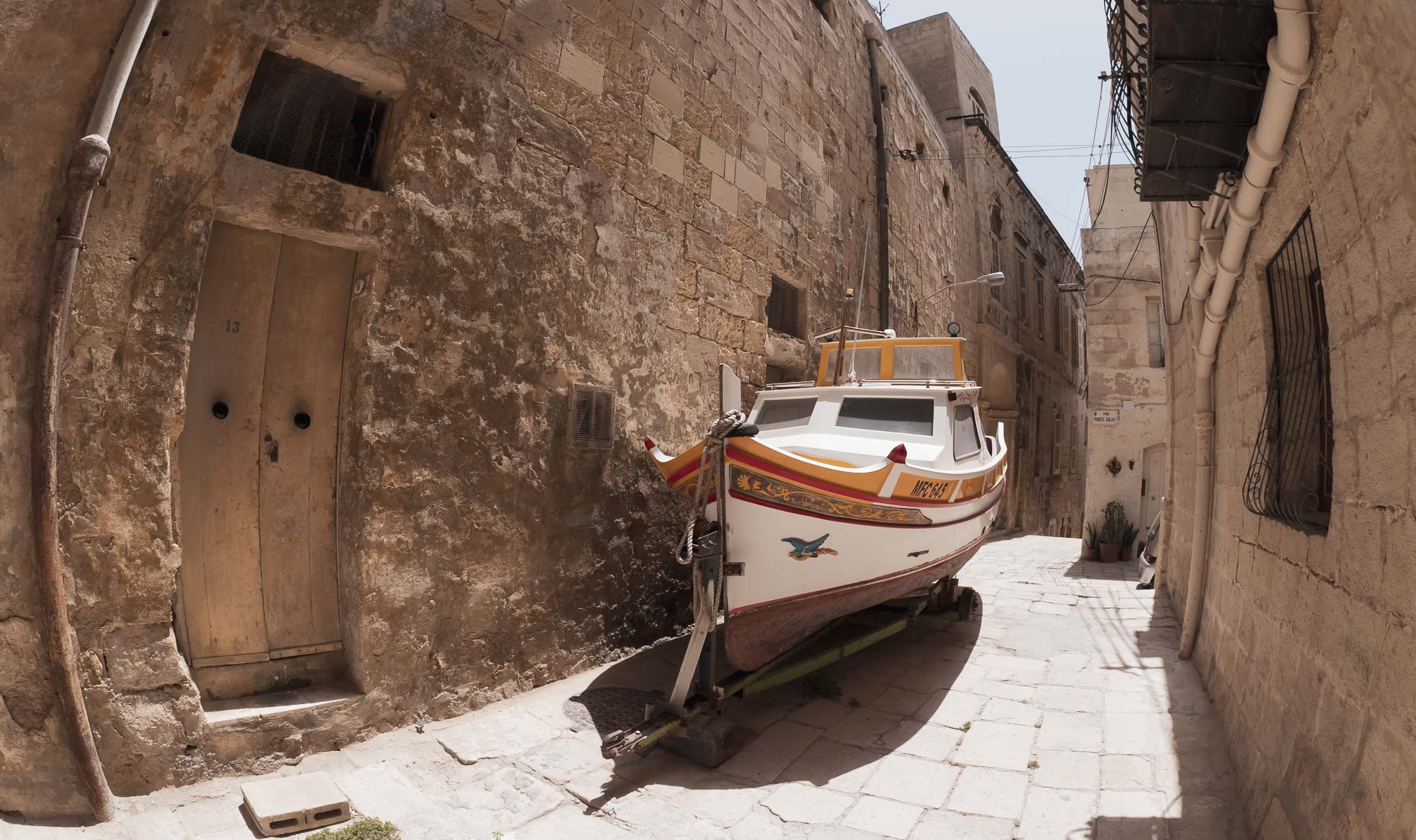
Navigation
This boat is parked high up in the city, with narrow twisting roads - I do wonder how it got up here.
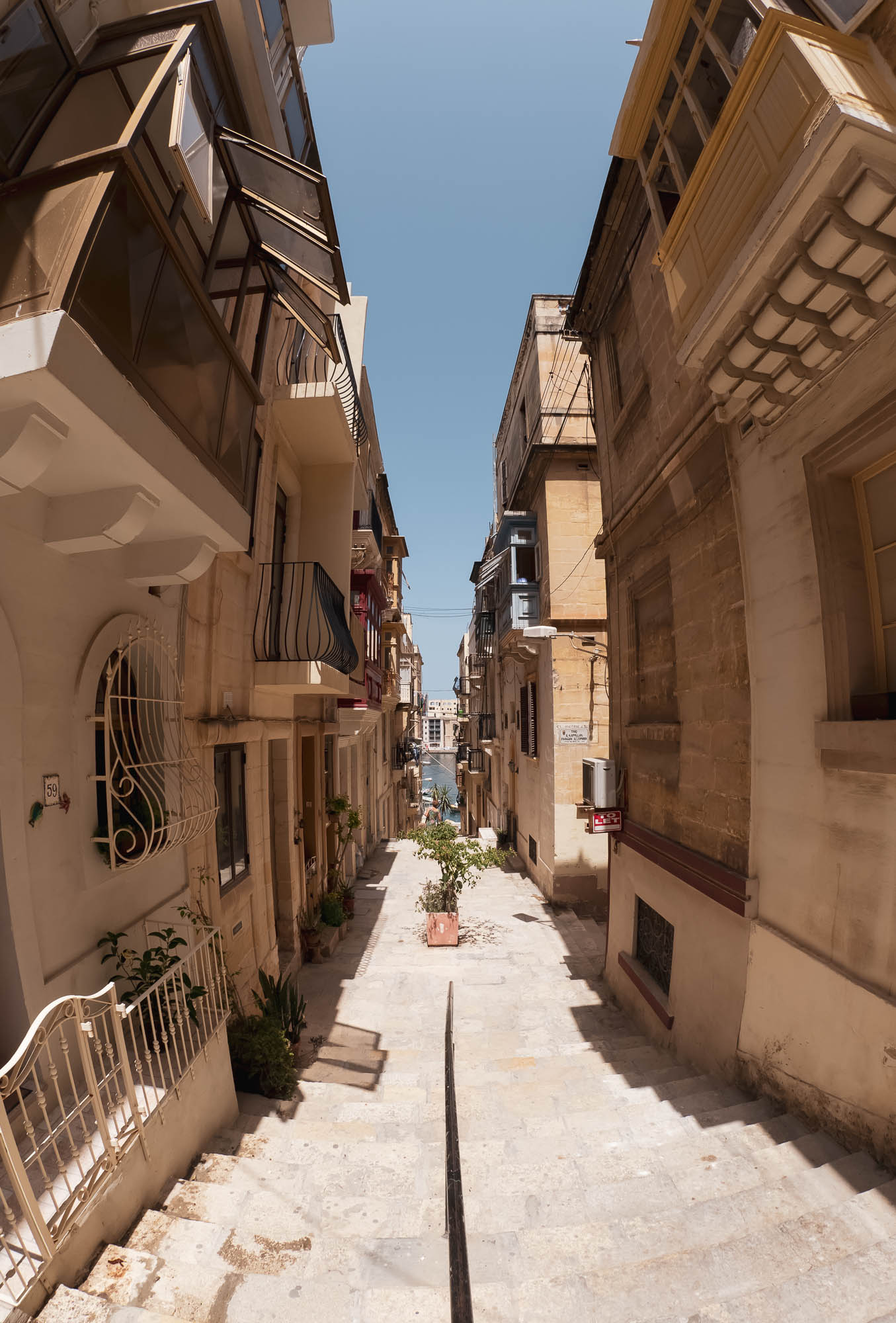
Downwards
Looking from Senglea to the Birgu waterfront.
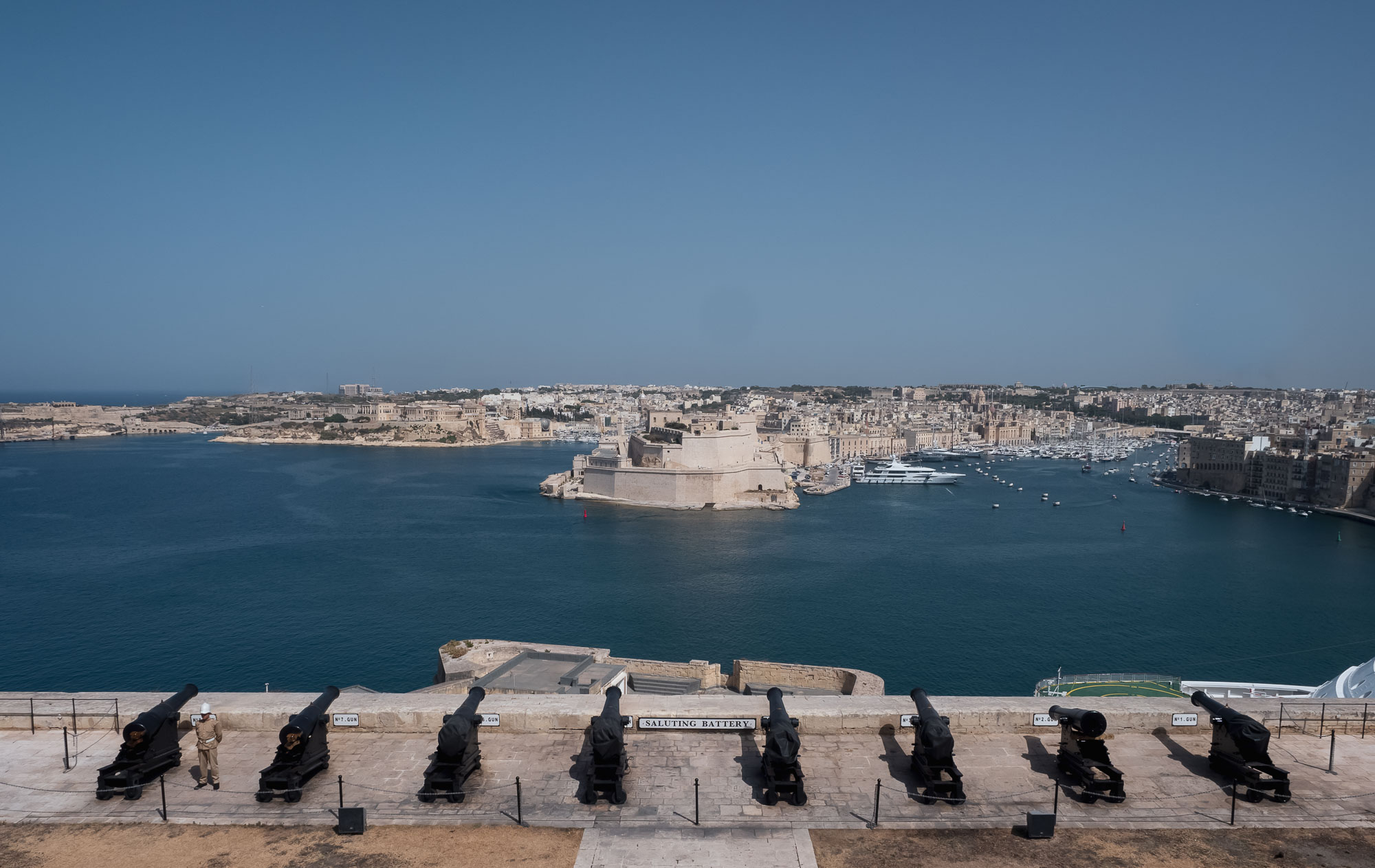
The Saluting Battery
Up in the Barrakka Gardens.

Fire
At 12 noon and 4pm, one of the cannons is fired daily out of tradition. Having said that, I have a feeling the Maltese like their historic guns and batteries, I did hear regular shots all around. Sidenote: Loving 60 fps high speed mode on the Olympus OMD-EM-1.
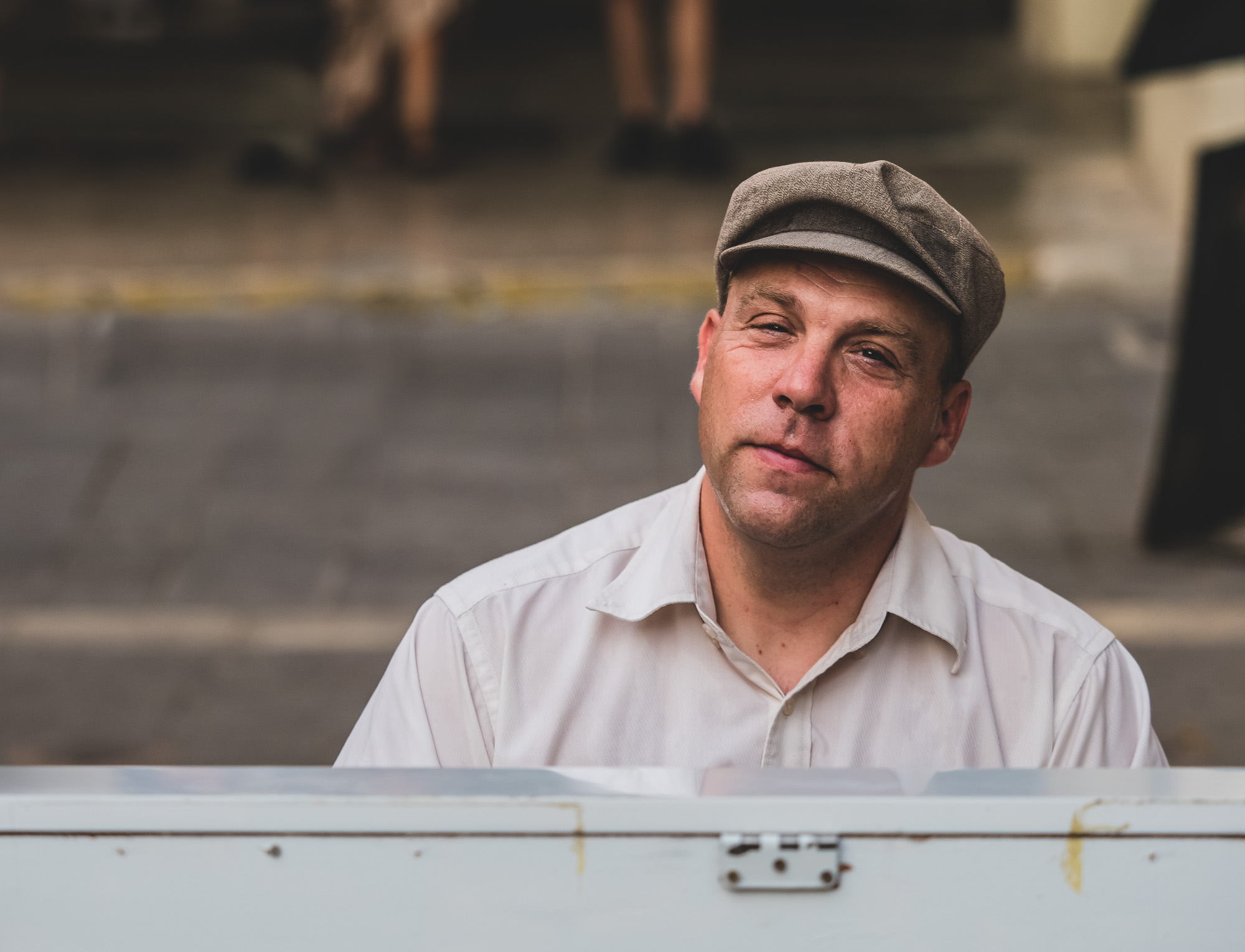
Piano
Another great musician playing in the Valletta streets.
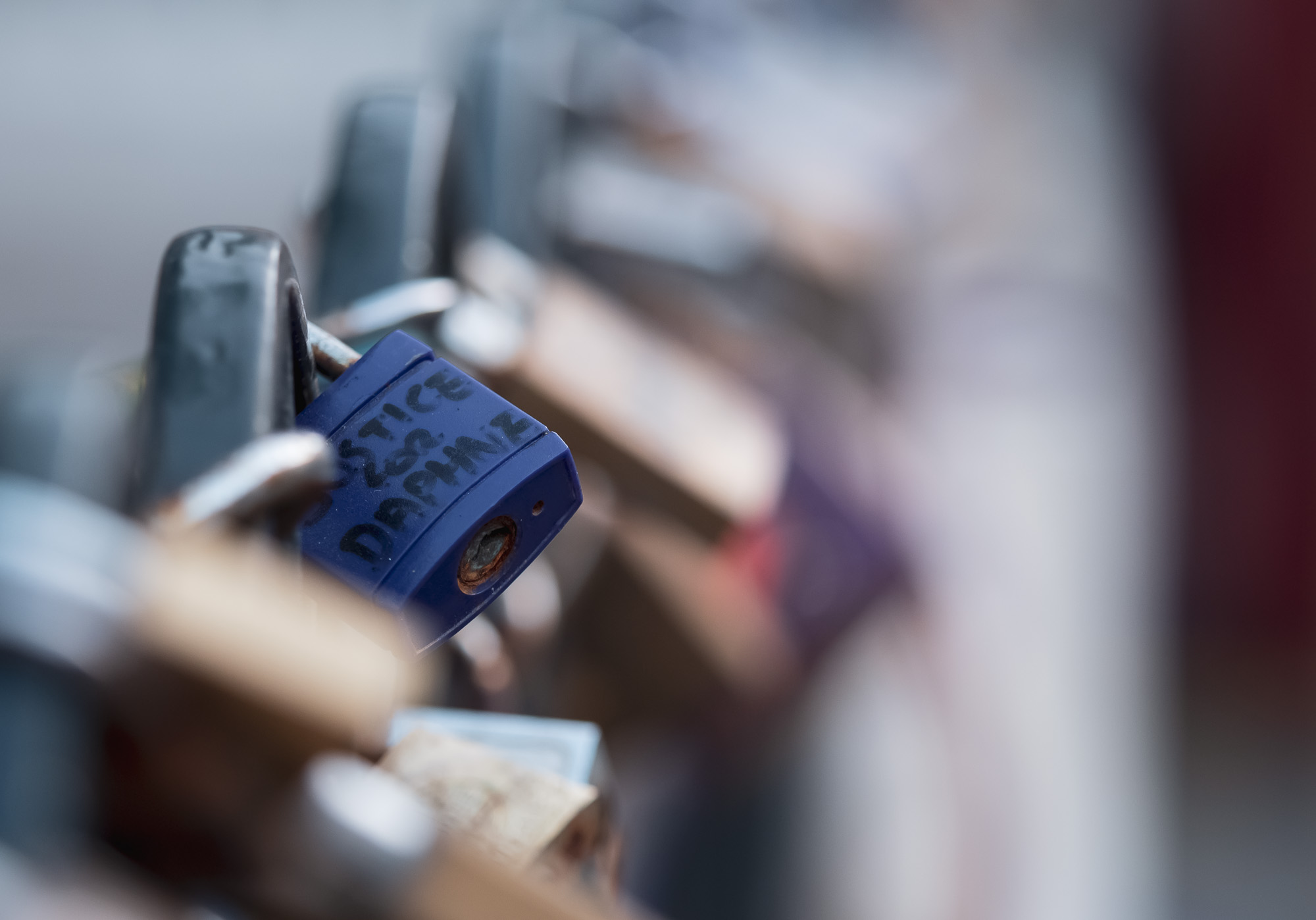
Justice
Unfortunately these are not love locks, but a cry for justice for the murder of Daphne Caruana Galizia, one of Malta's leading investigative journalists, assassinated in 2017.
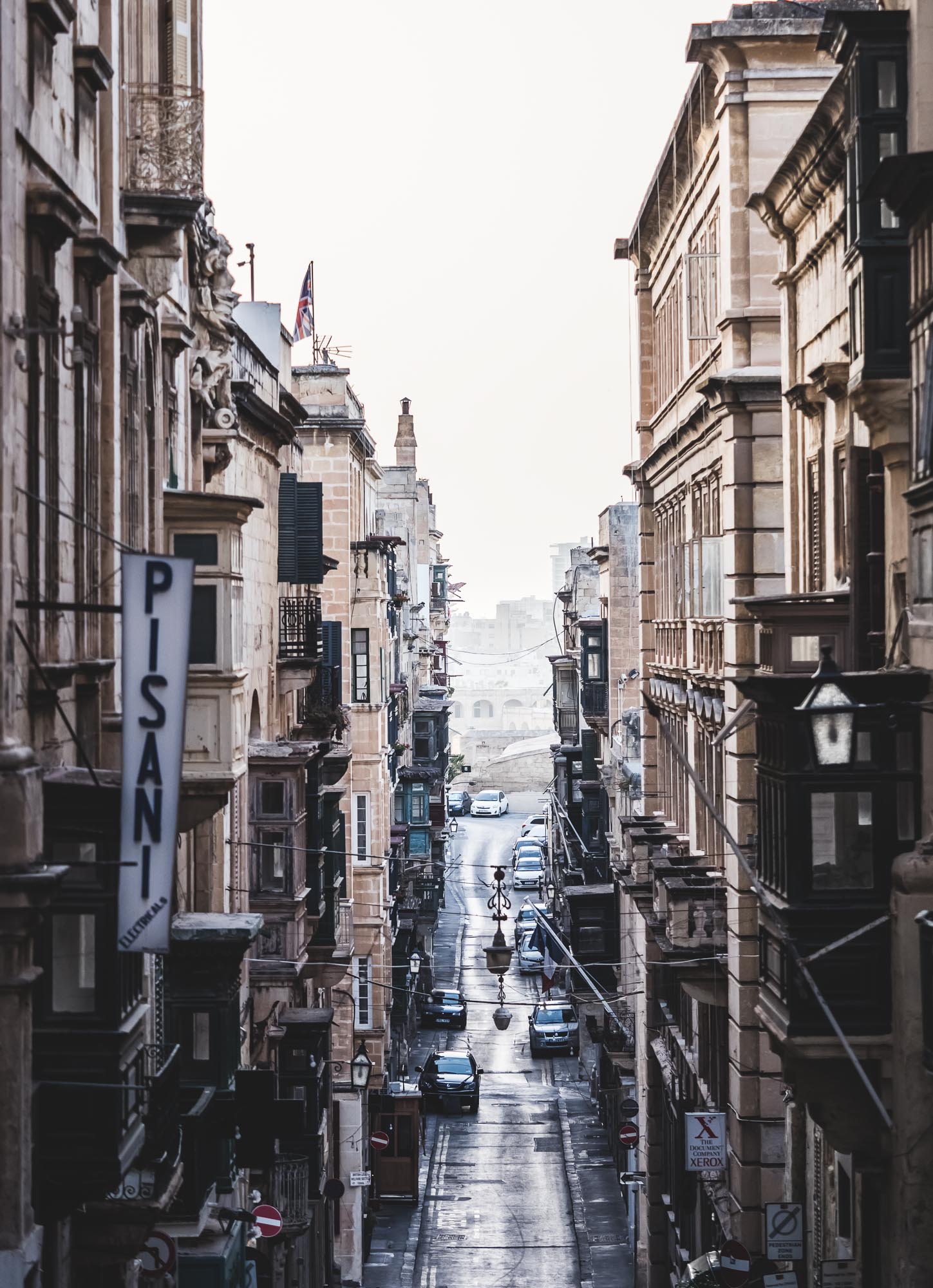
Narrow
While cities built before the 1900s were not made for cars, people adapt - it's rare to see large SUVs in places like Malta.
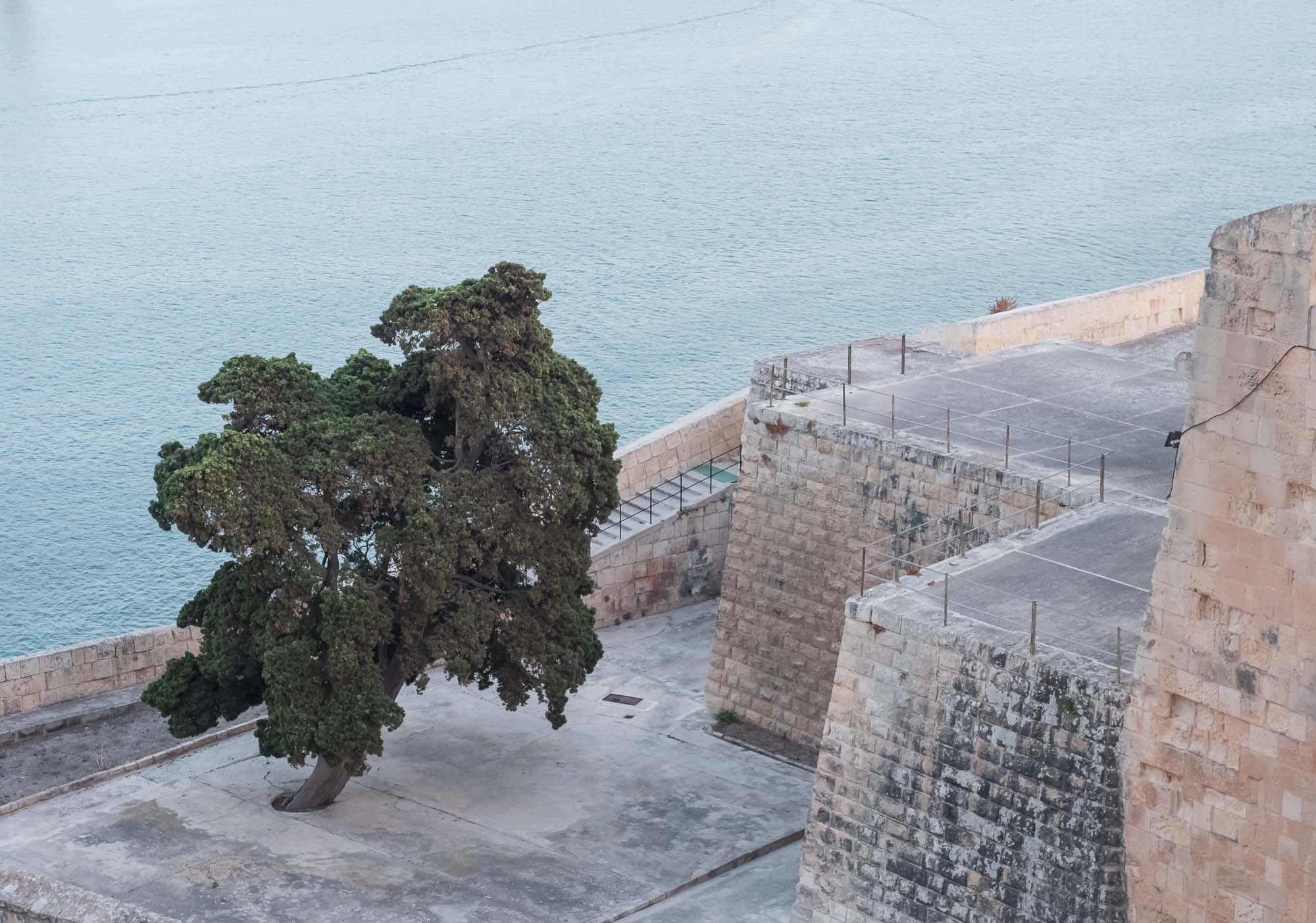
Finding a Way
A tree growing through a concrete hole in the ground.
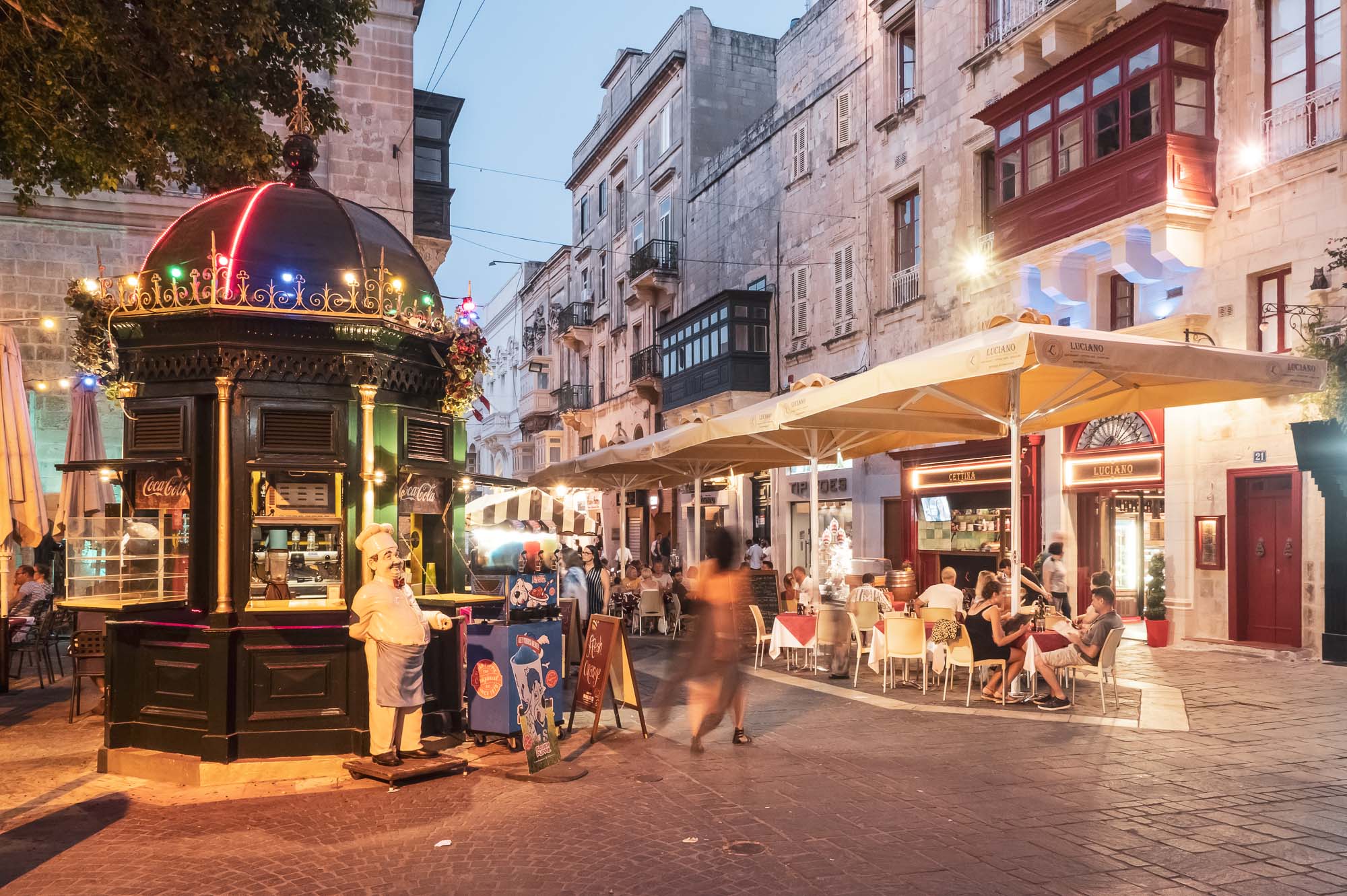
Dusk
The bustling city life in the evening.
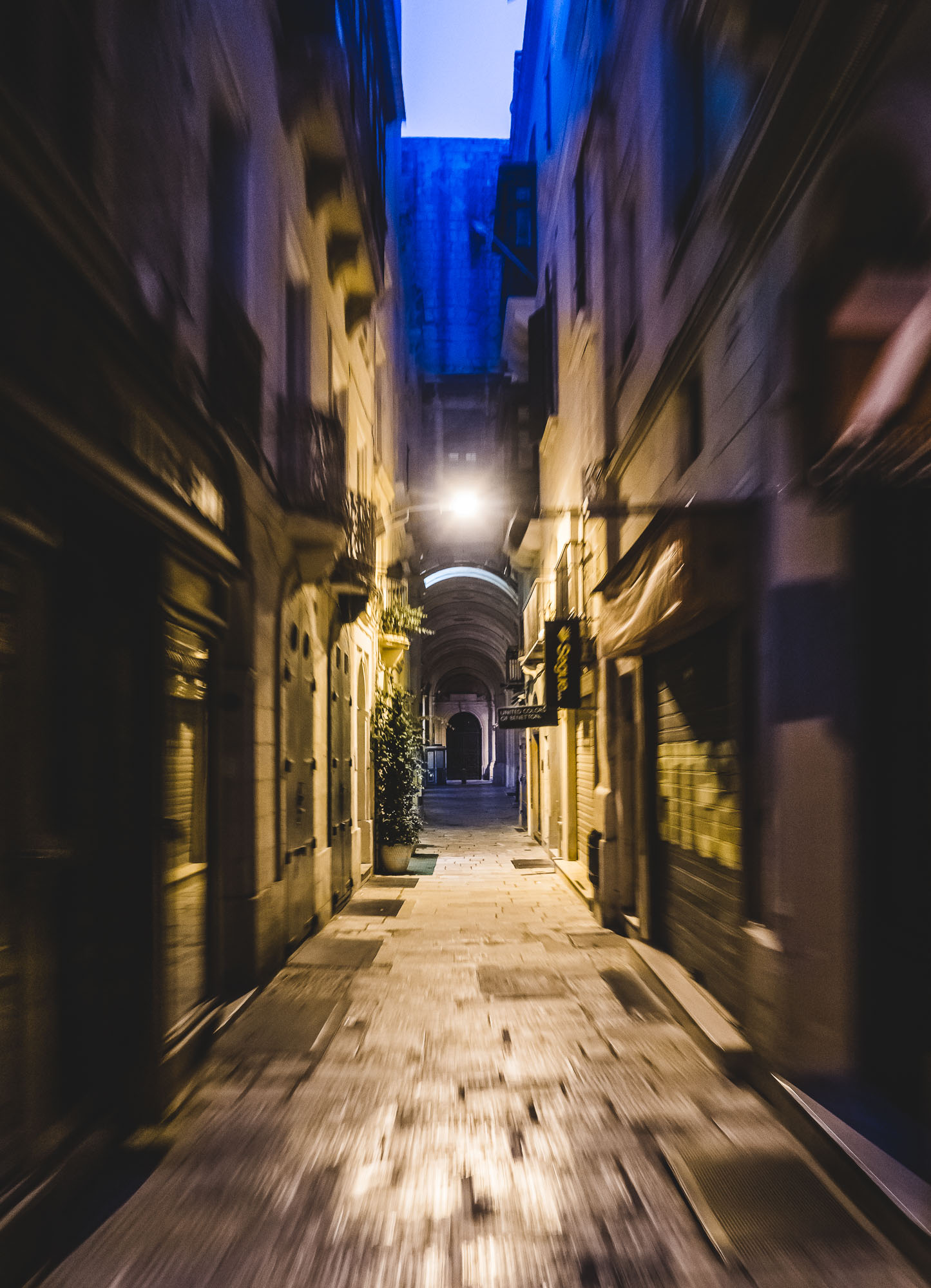
Vertigo
Roaming around empty side streets in the blue hour.
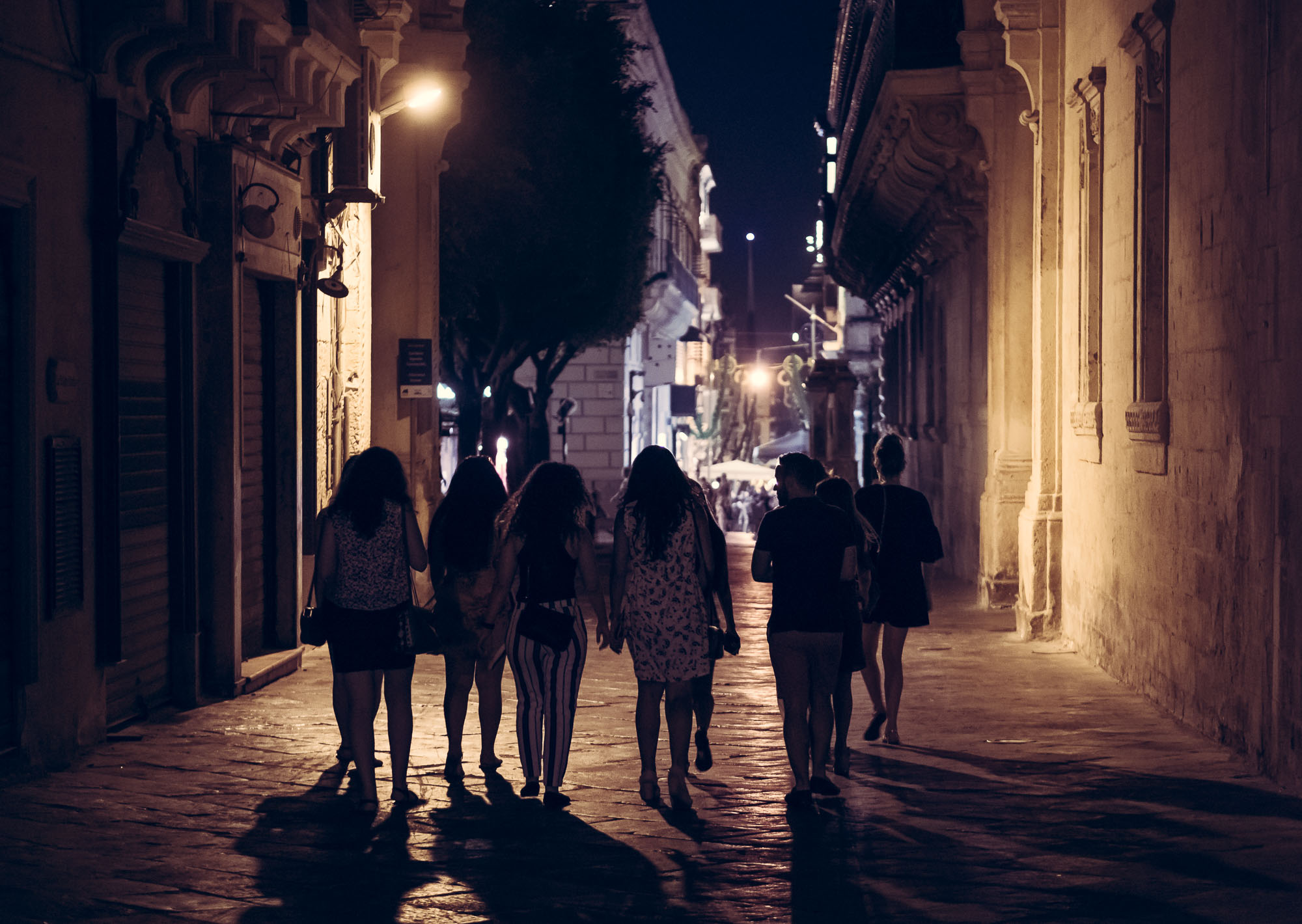
Exploring
A group of young people discovering the city.

The only light
This taxi took me out to the coast on the south western side of the island, on my hunt for the Milky Way.

Milky Way
Shot about 40min drive outside Valetta at Miġra l-Ferħa.
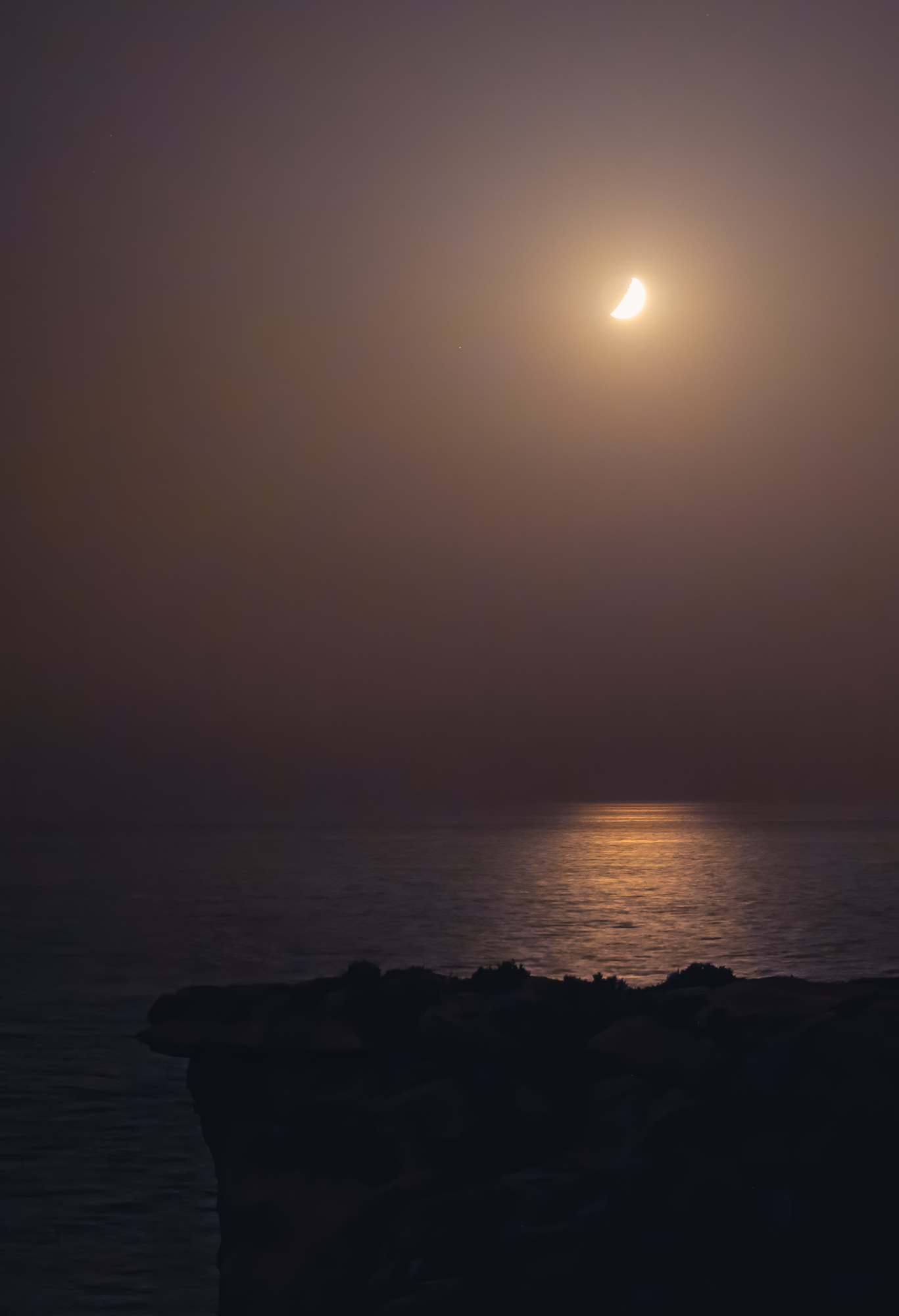
Moonset
Yes - this is the moon setting, not the sun.
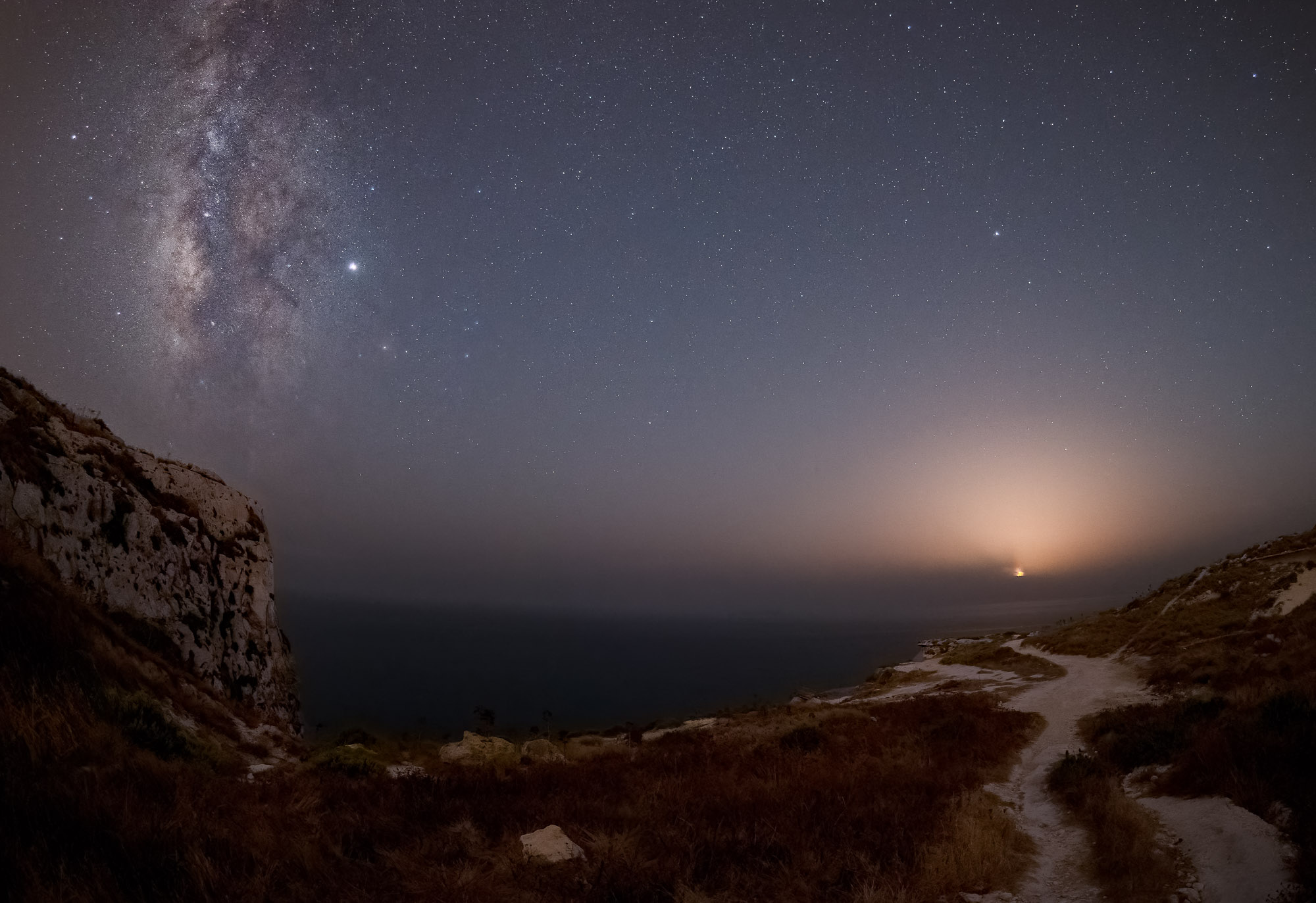
Nightscapes
Probably my favourite shot of the trip, with the moon just disappearing on the horizon, casting a faint light over the landscape, while not overpowering the Milky Way.
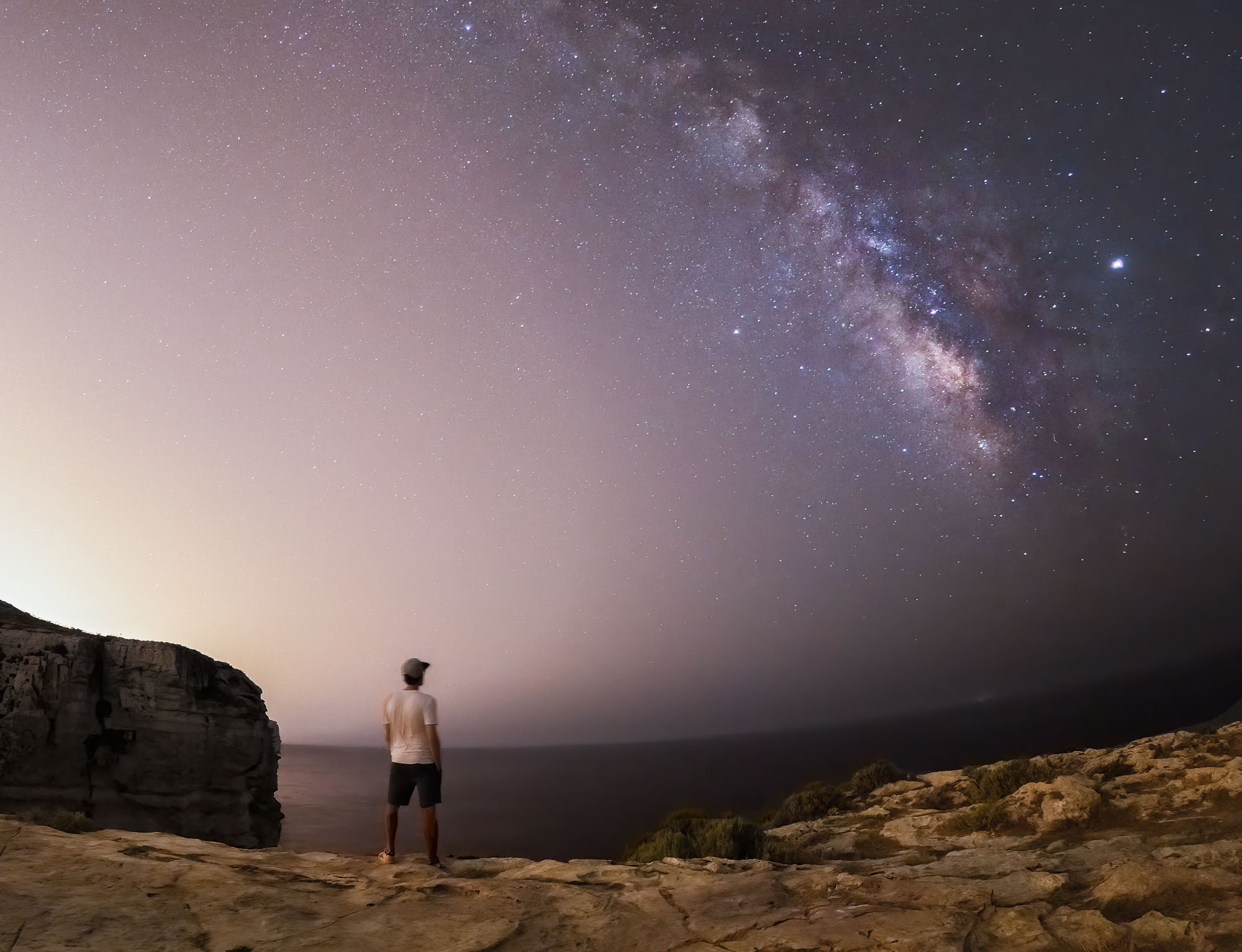
Watching the Cosmos
Couldn't quite keep myself still enough on the windy (and steep and tall) coastline. The glow from the left is the airport I believe.
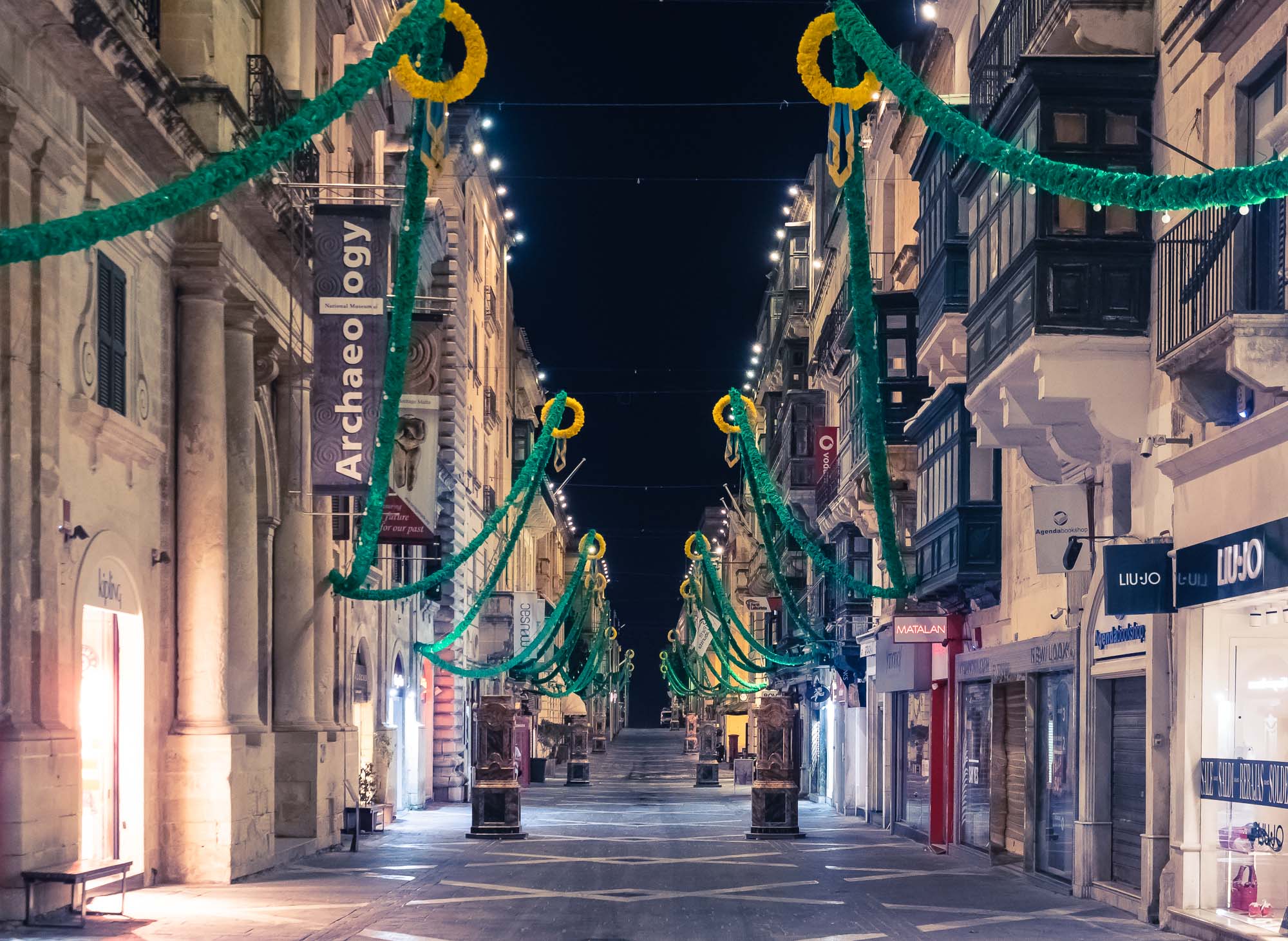
Nighttime
Not so bustling anymore at 2am.
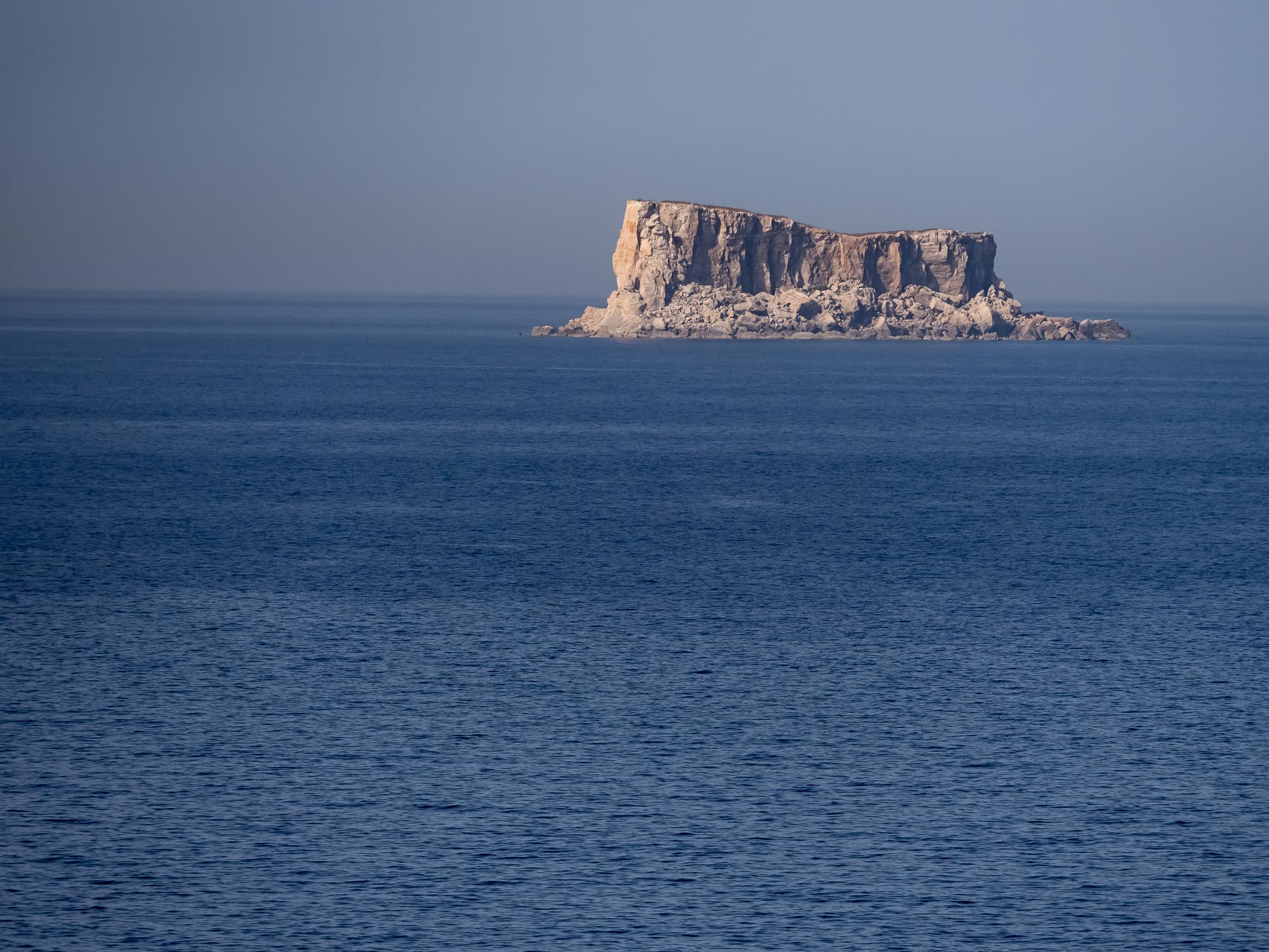
Filfla
The island of Fifla is the southern most point of Malta.
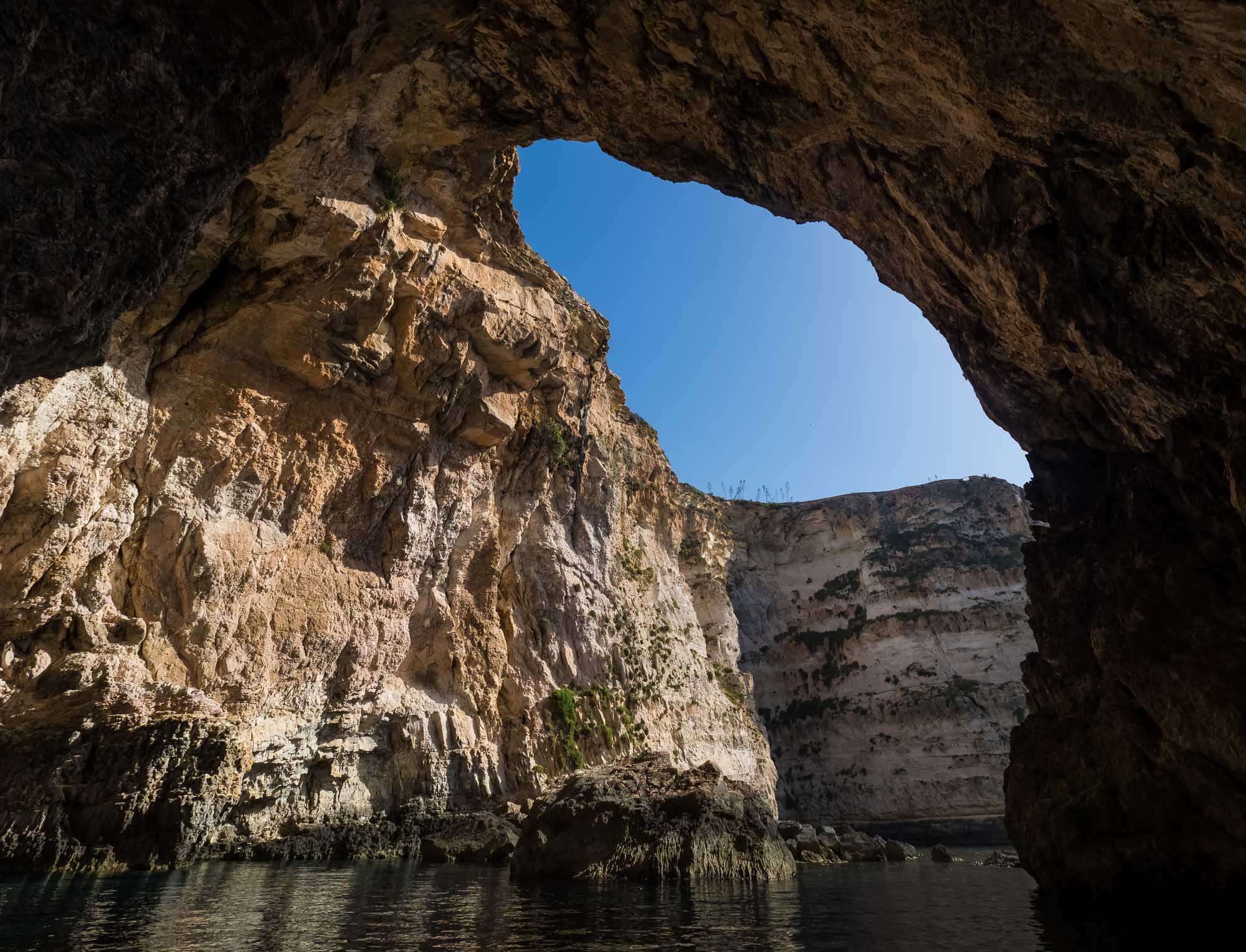
Blue Grotto
One of the most famous attractions in Malta, this is actually a combination of multiple sea caves where water, light and rocks create colourful patterns.
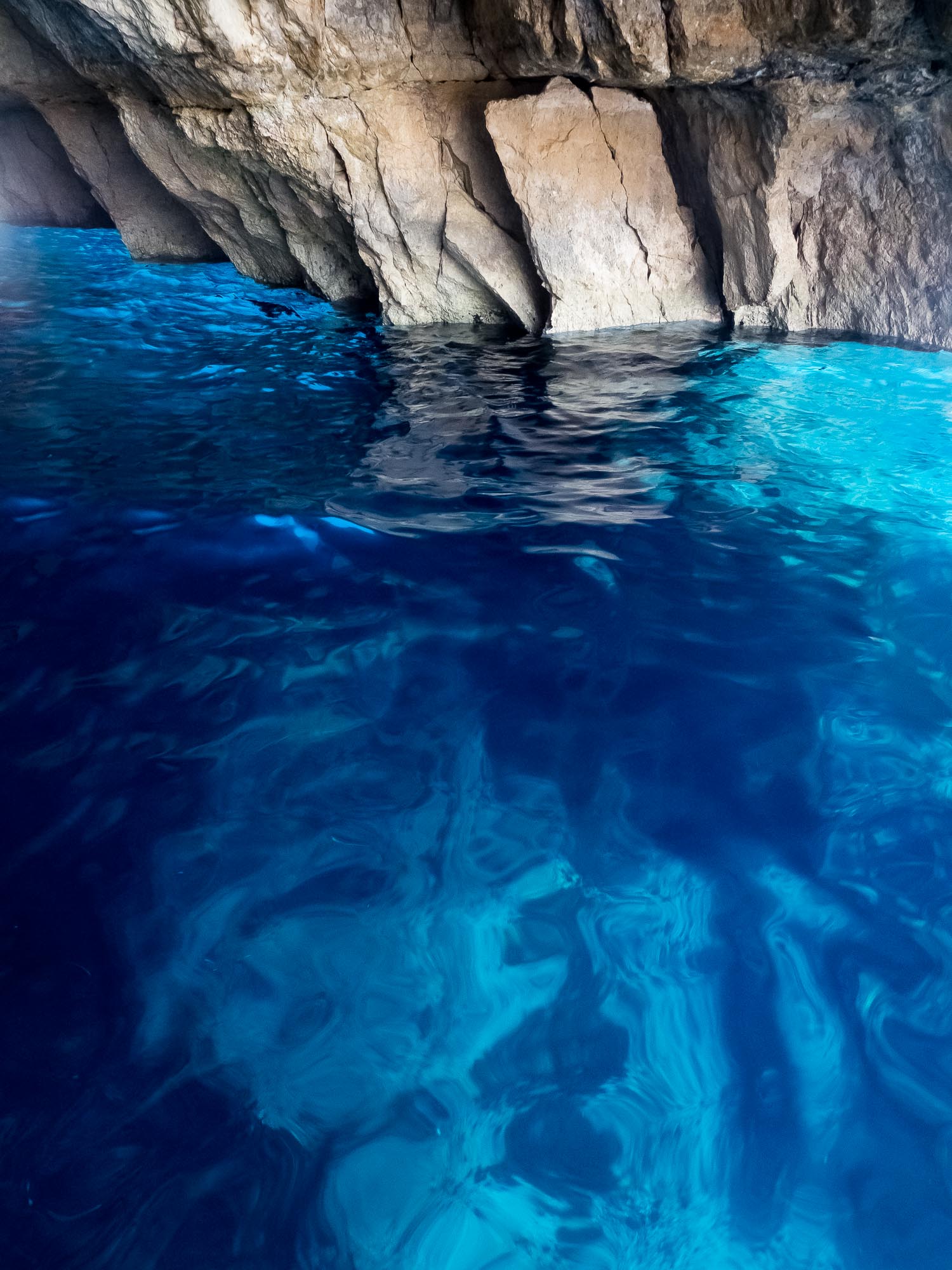
Light & Water.
One such pattern.
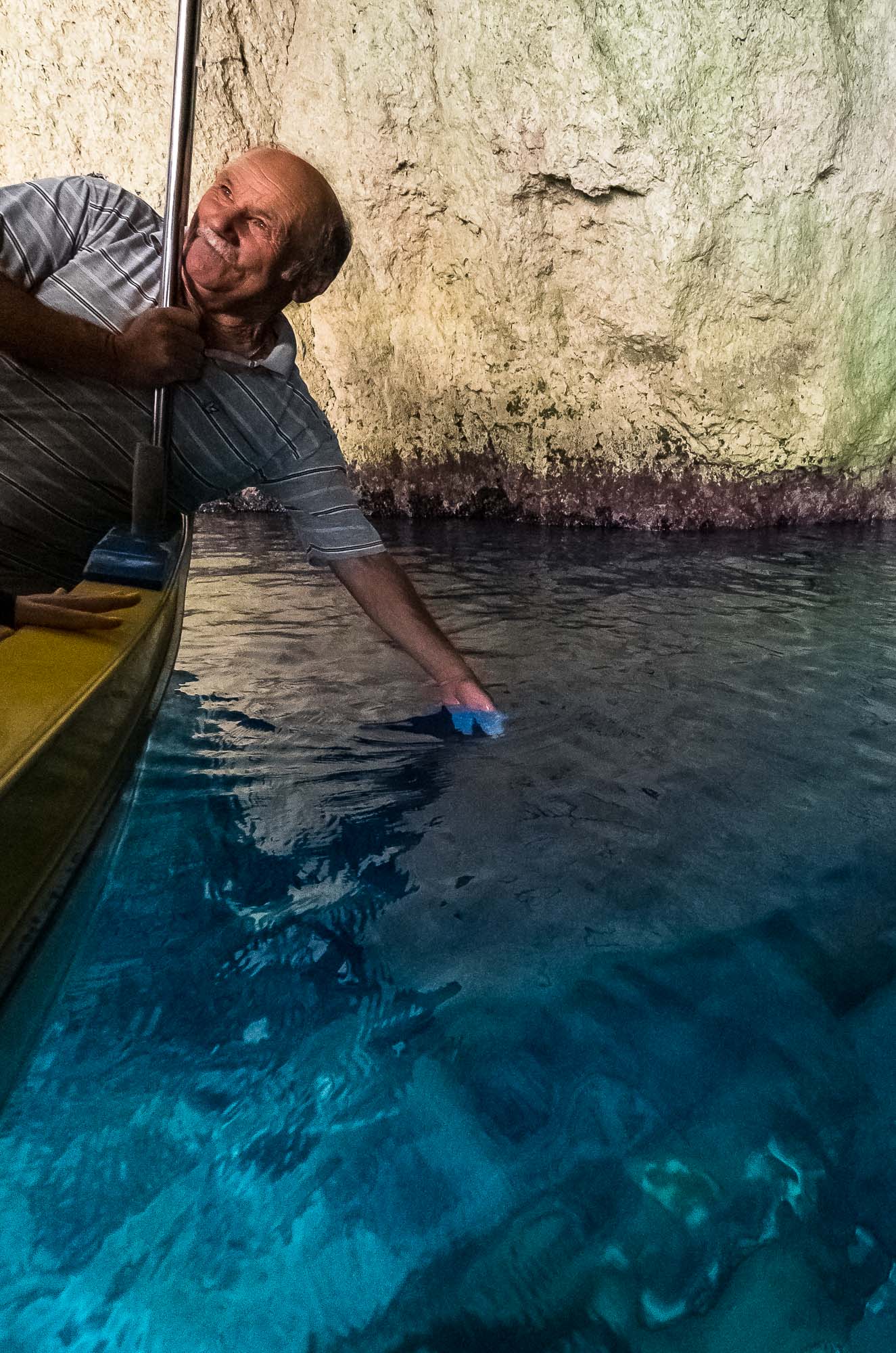
Blue Hand
Our boat captain showing us why this cave is said to turn divers blue.
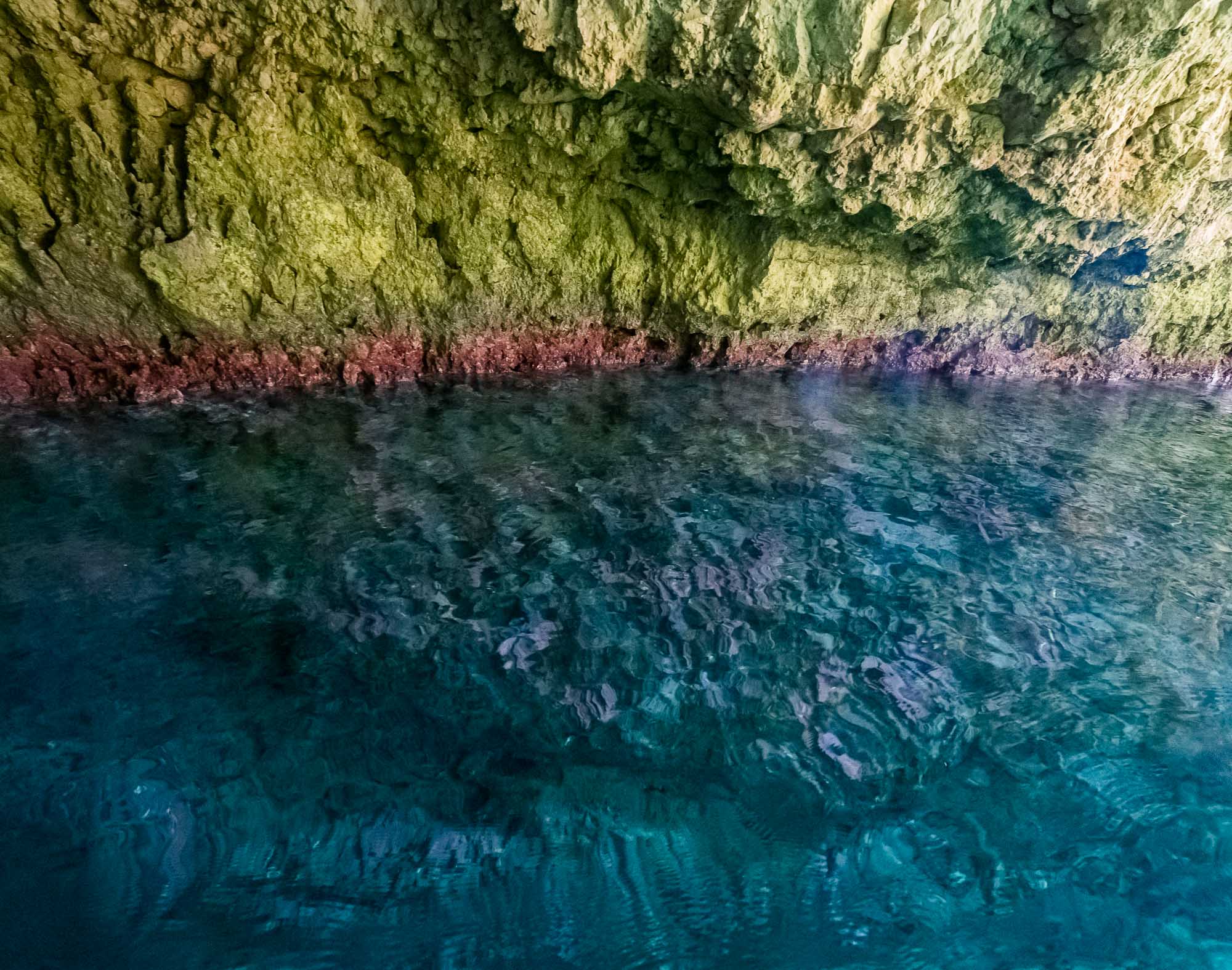
Colours
The spectrum of shades you can spot here is amazing.

Cave Swim
It's possible to swim and dive in the caves.
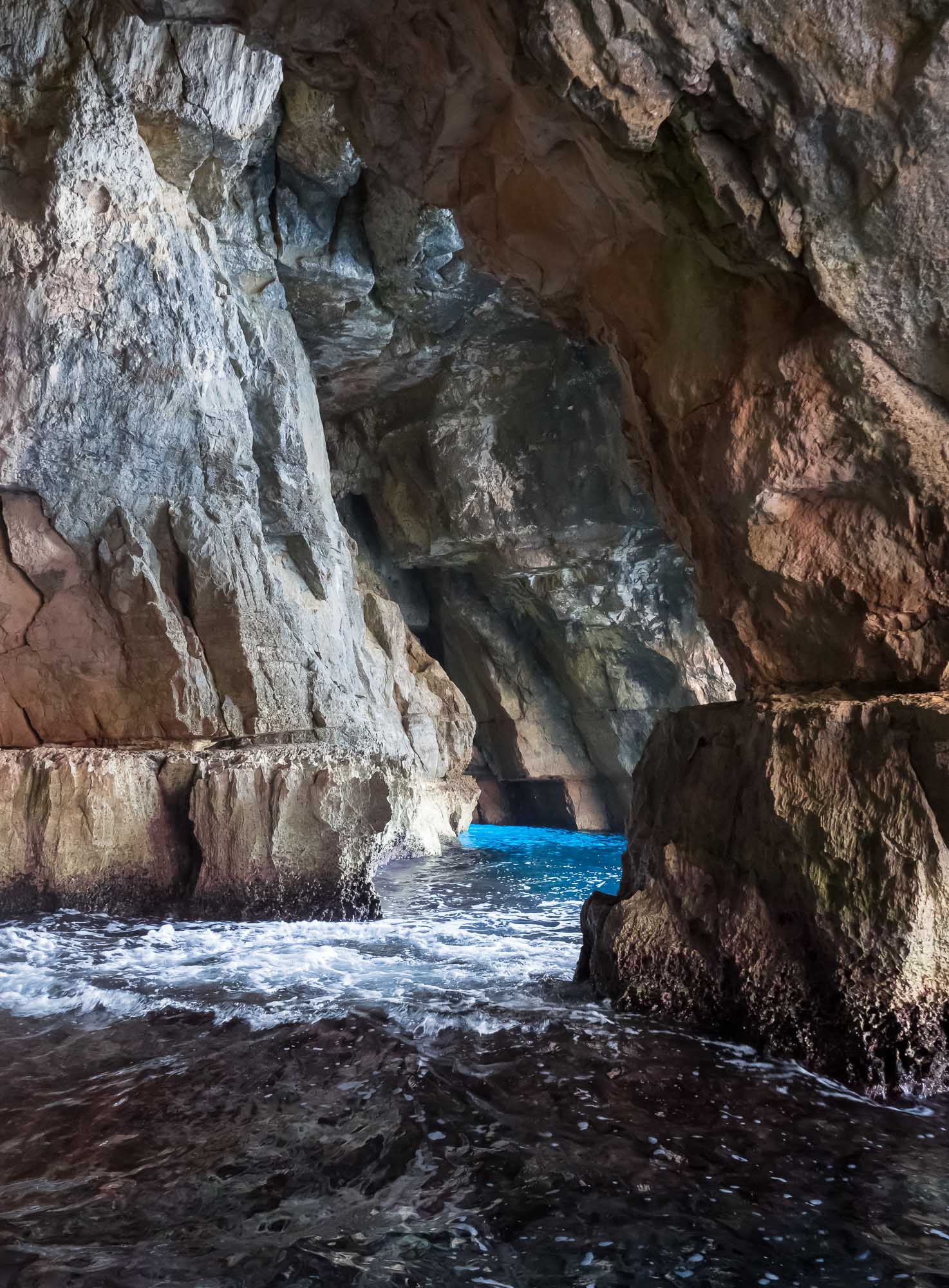
Radiating
Probably the most intense blue I've seen in the sea.
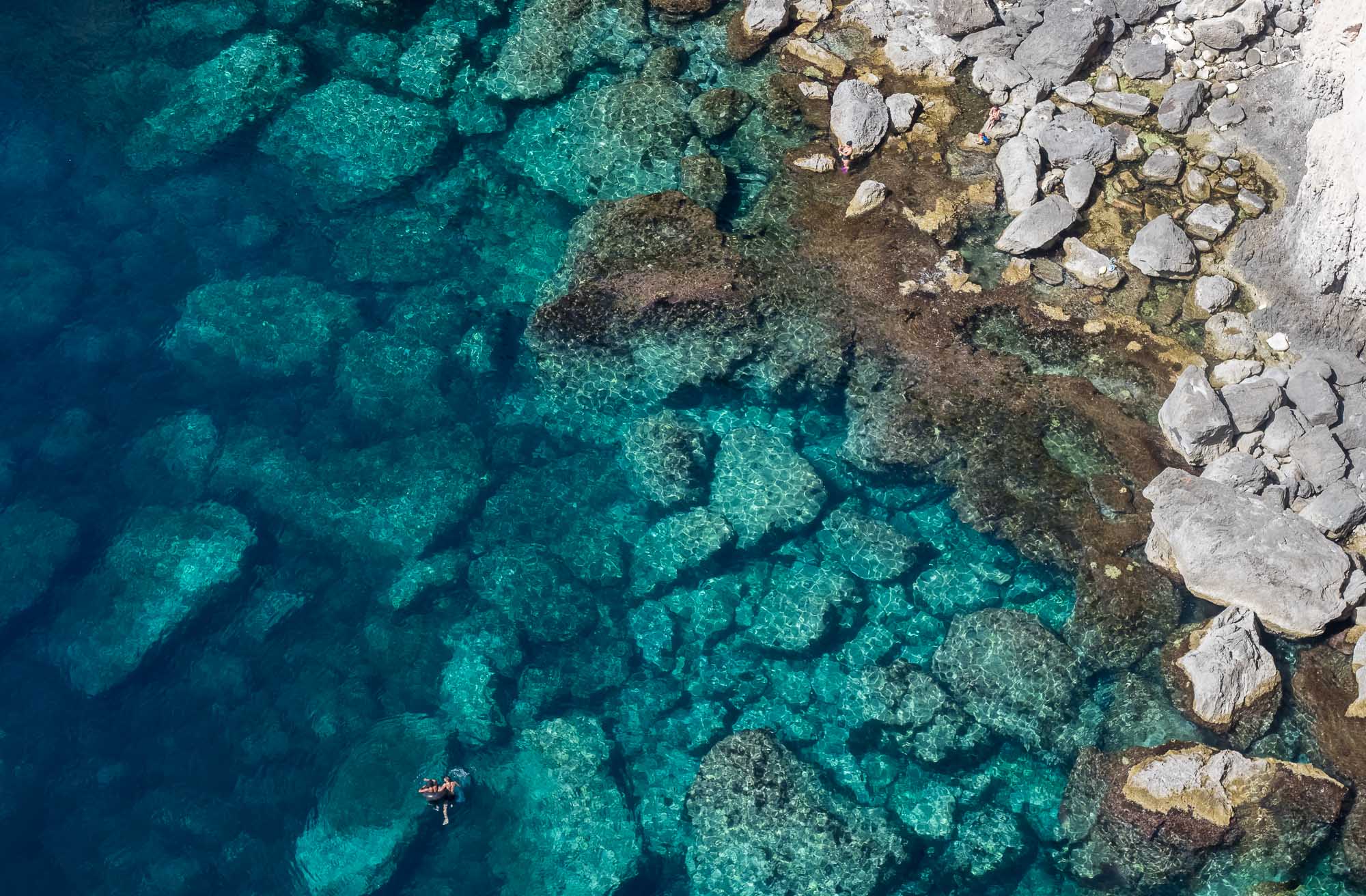
Downwards
There's a great viewpoint on the road leading towards the small harbour used for the excursions to the Blue Grotto.
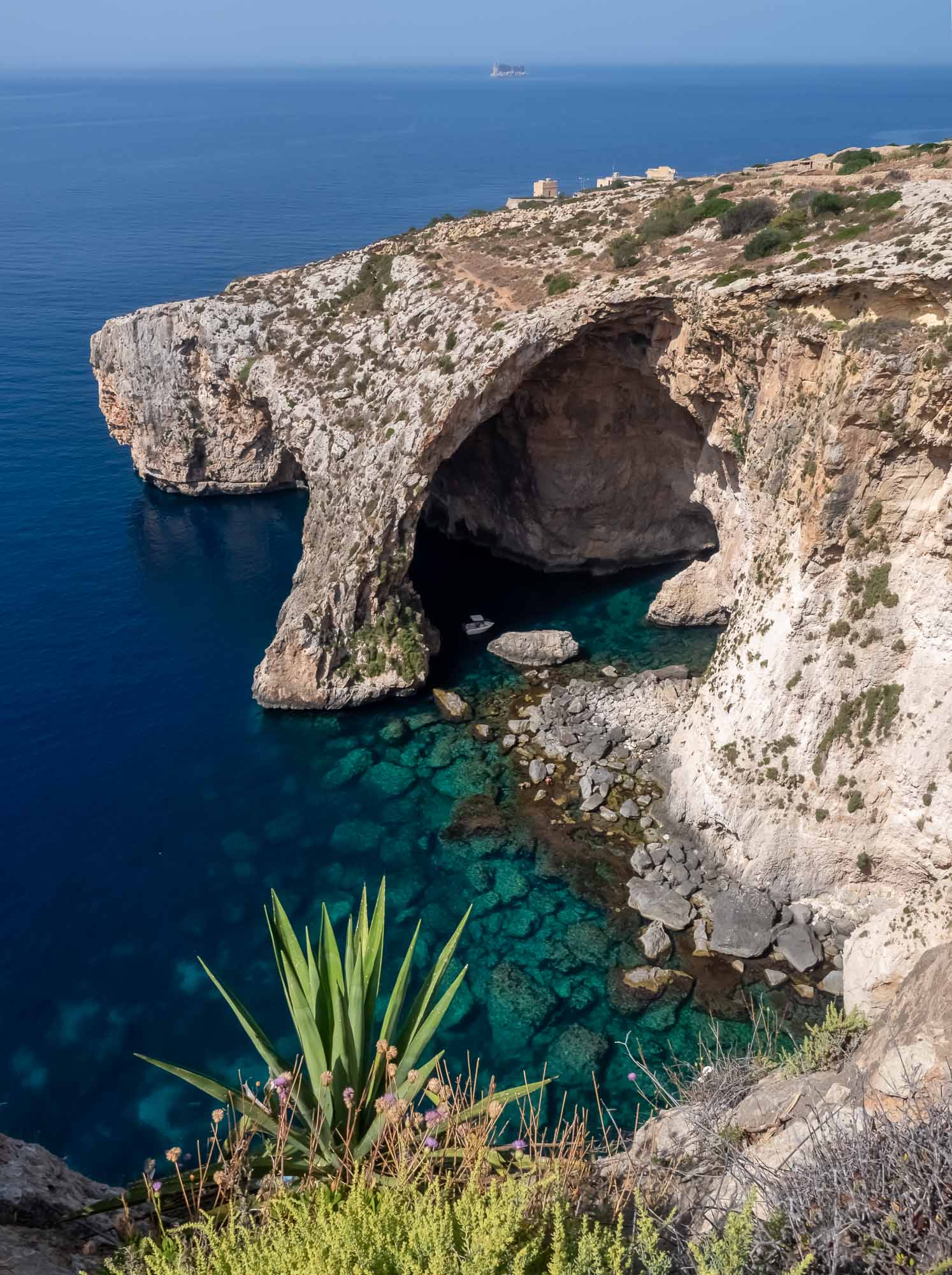
Blue Wall
The so called blue wall is one of the most spectacular features of the Maltese coastline.

Framed
Filfla seen through two trees.
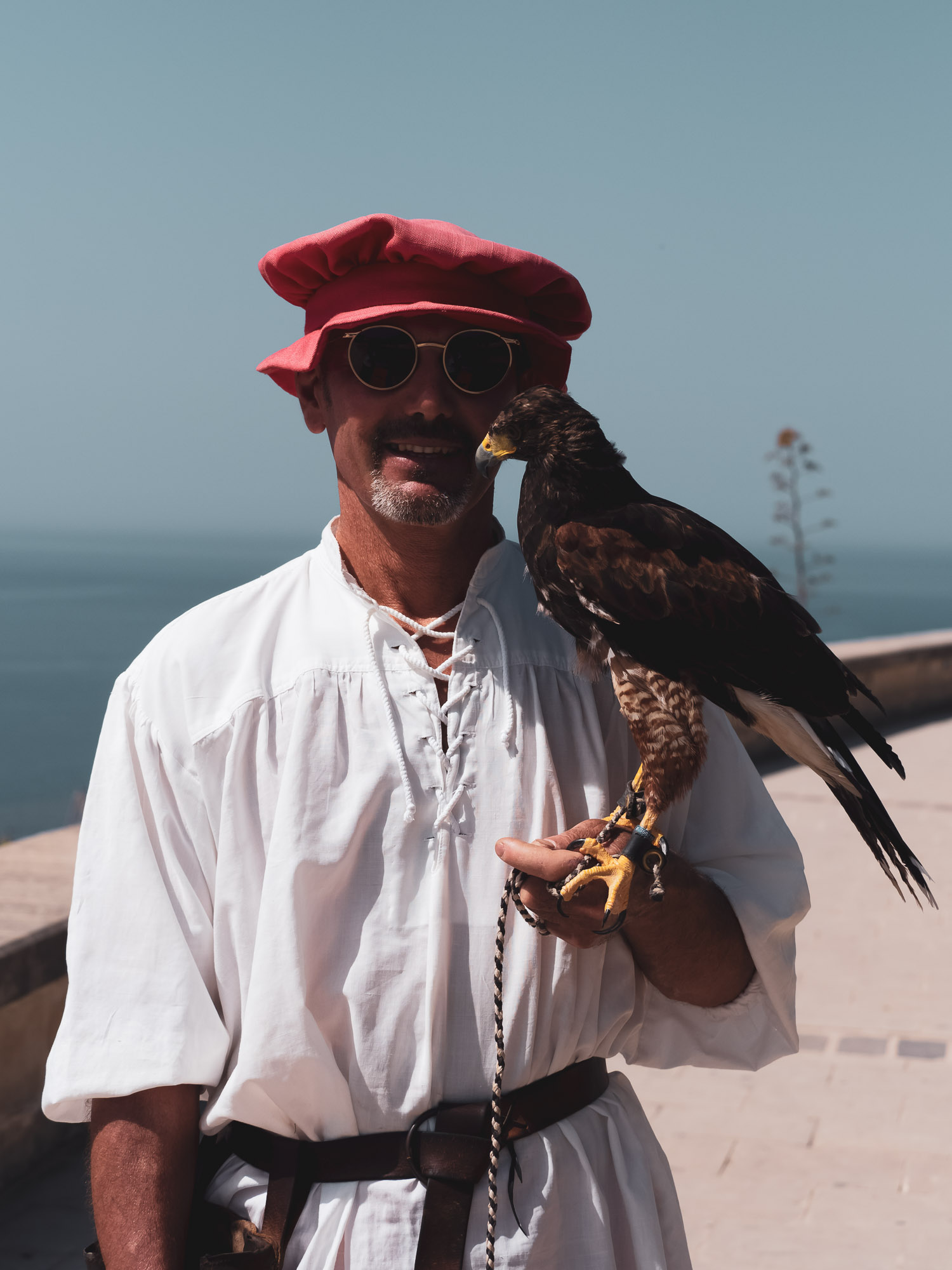
Falconry
Surprisingly, Malta has a falconry centre - although this is an Eagle I believe.

Prehistoric
Ħaġar Qim and Mnajdra are among the most ancient religious sites on Earth and over 5000 years old. Protective tents were built over them a few years ago to minise impact of sun, wind and rains.
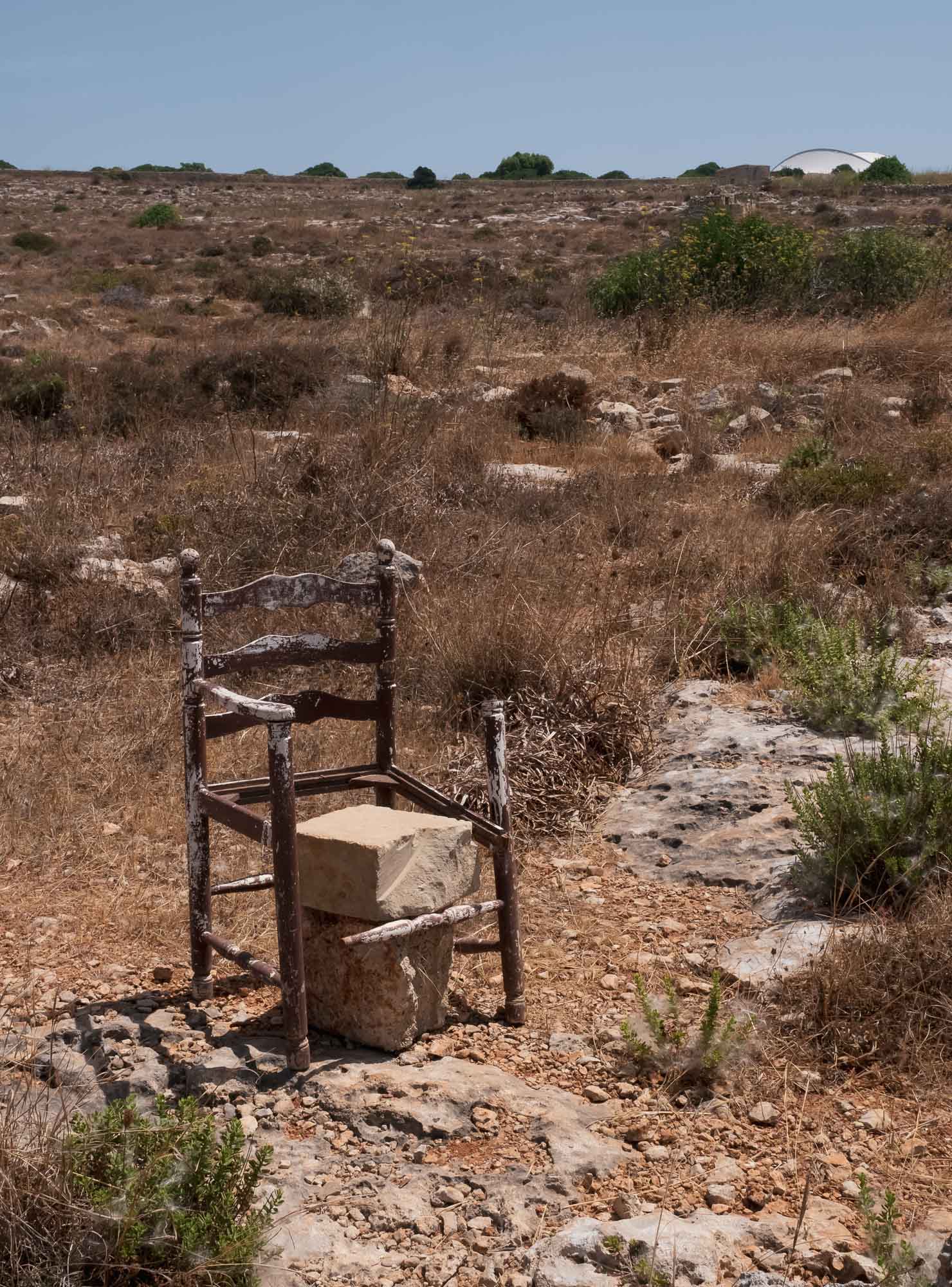
Chair
I doubt anyone has sat here for a while. The tent over Ħaġar Qim in the background.
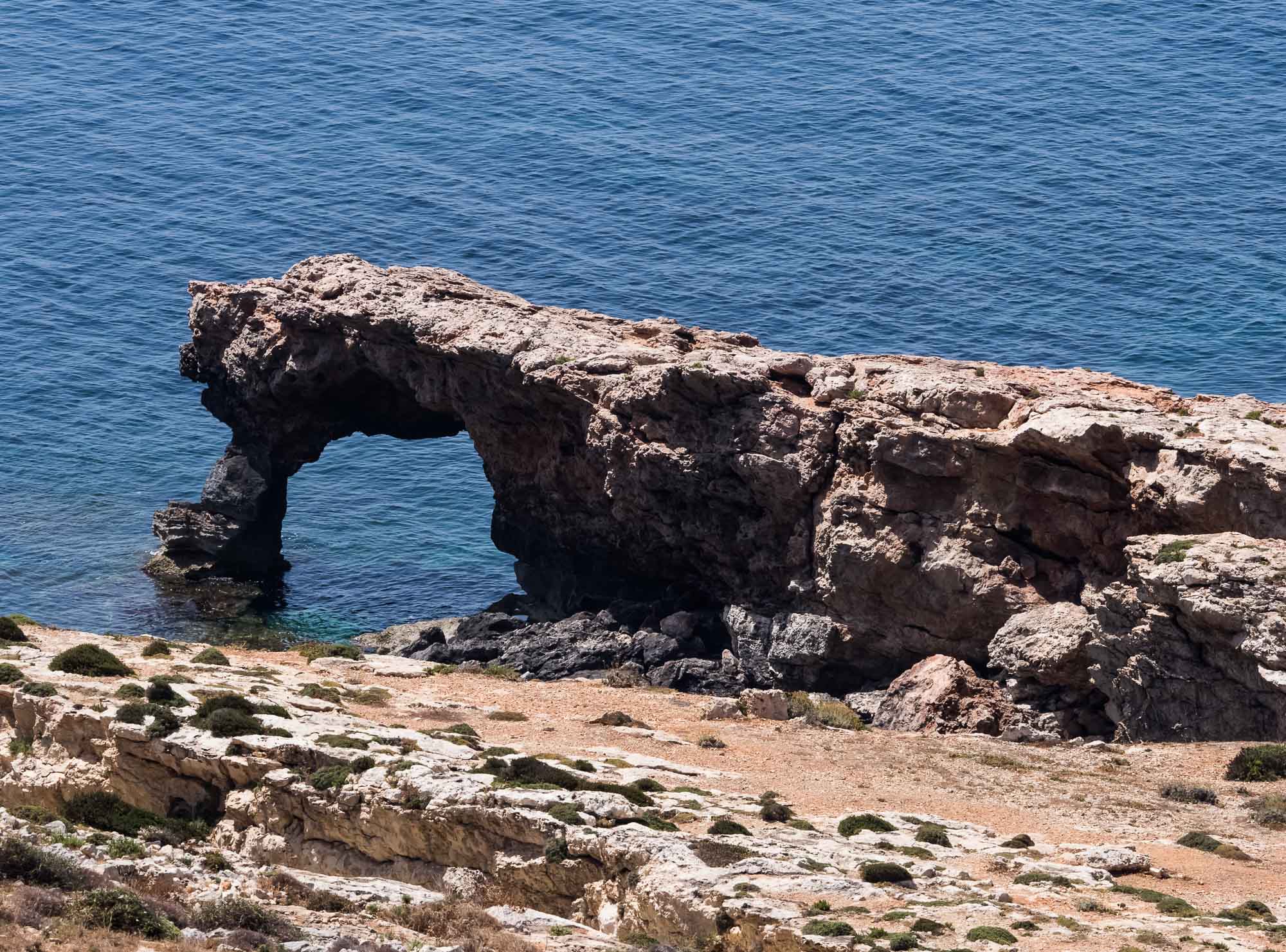
Coastal Features
Another beautiful arch on the Maltese coast, not far from the ancient sites.
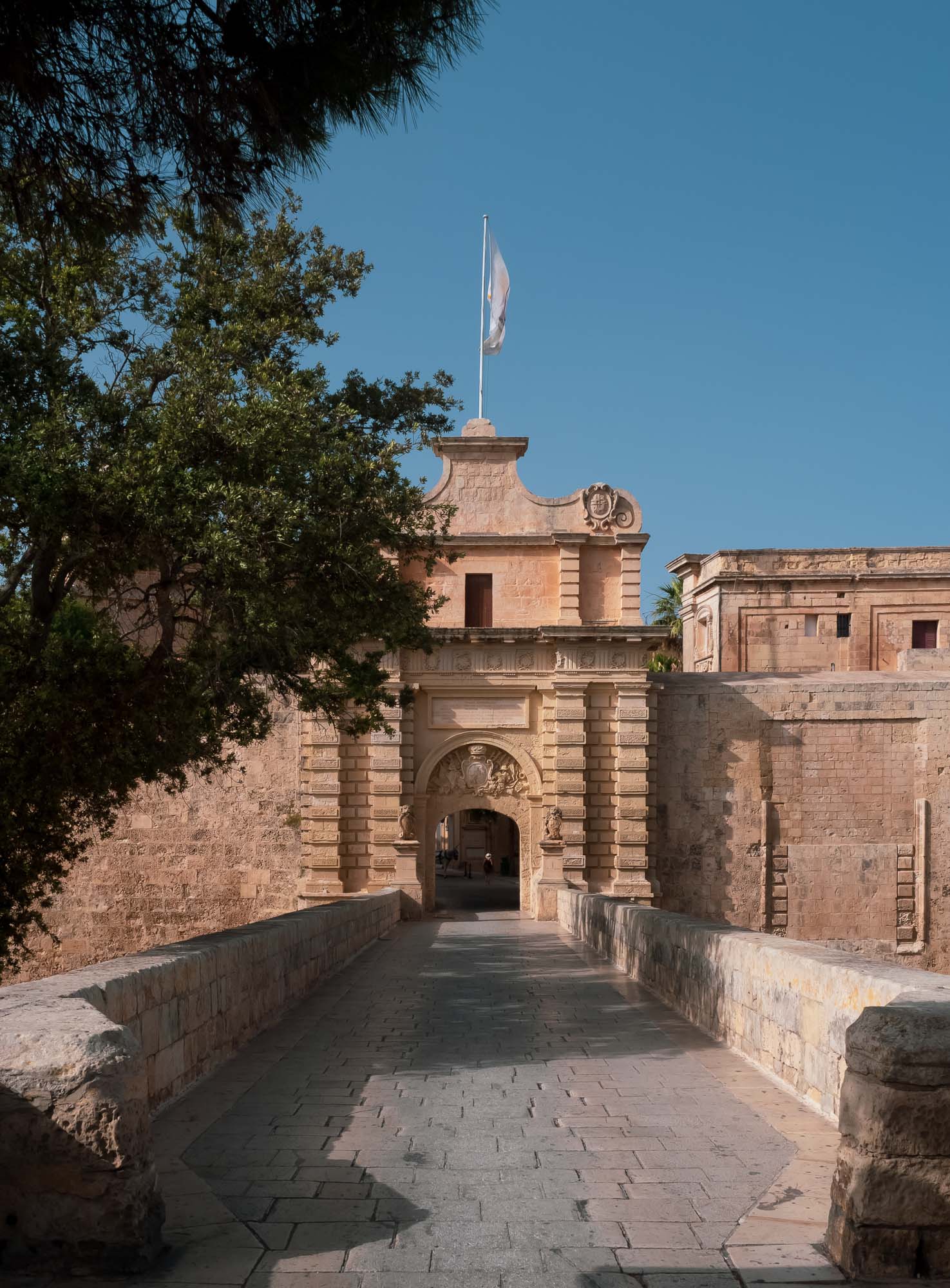
Mdina
One of my highlights of the visit was Mdina, the former capital, almost 3000 years old.
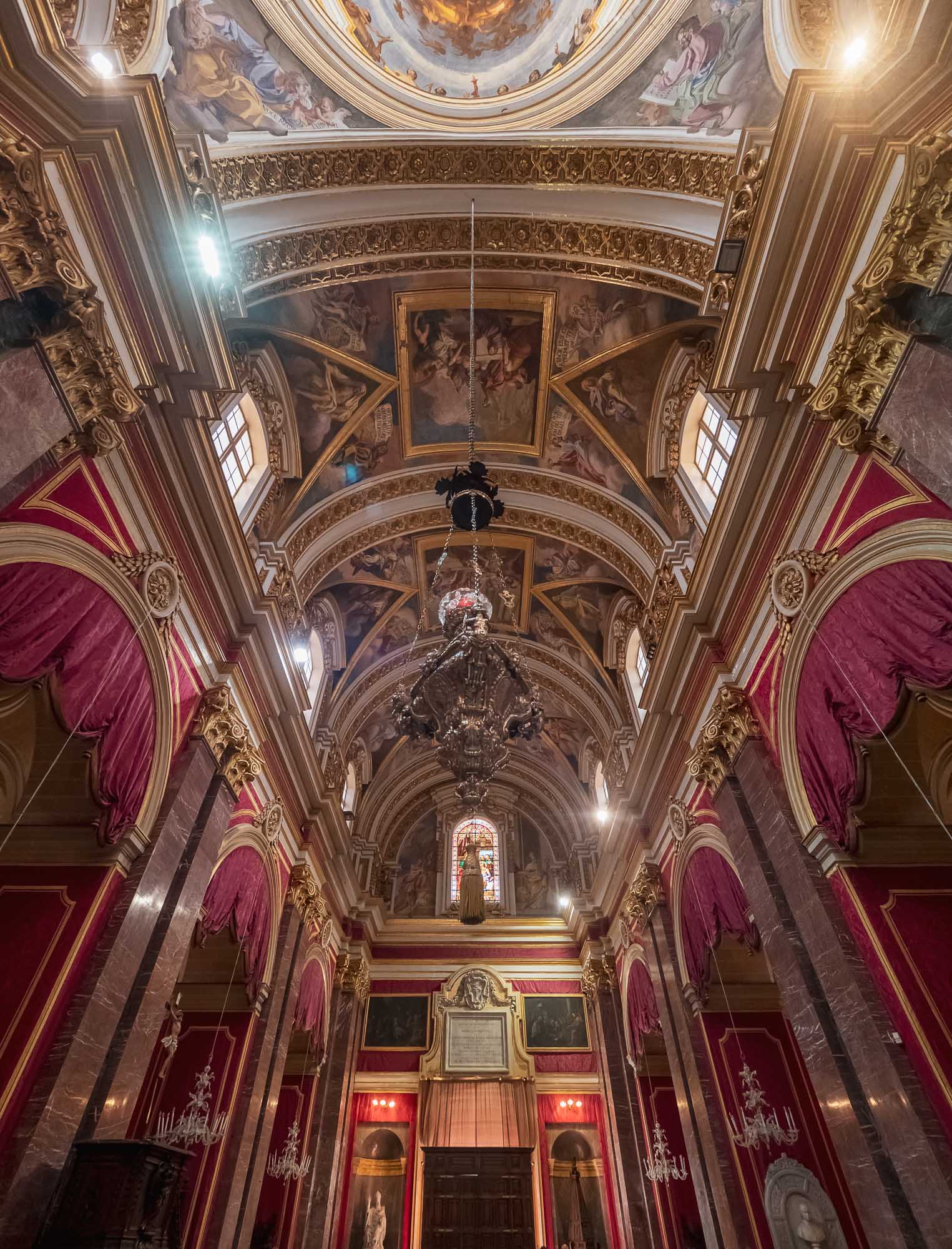
St. Paul's Cathedral Mdina
The frescoed interior was covered by red clothes - unsure of this is permanet or for a special occasion.
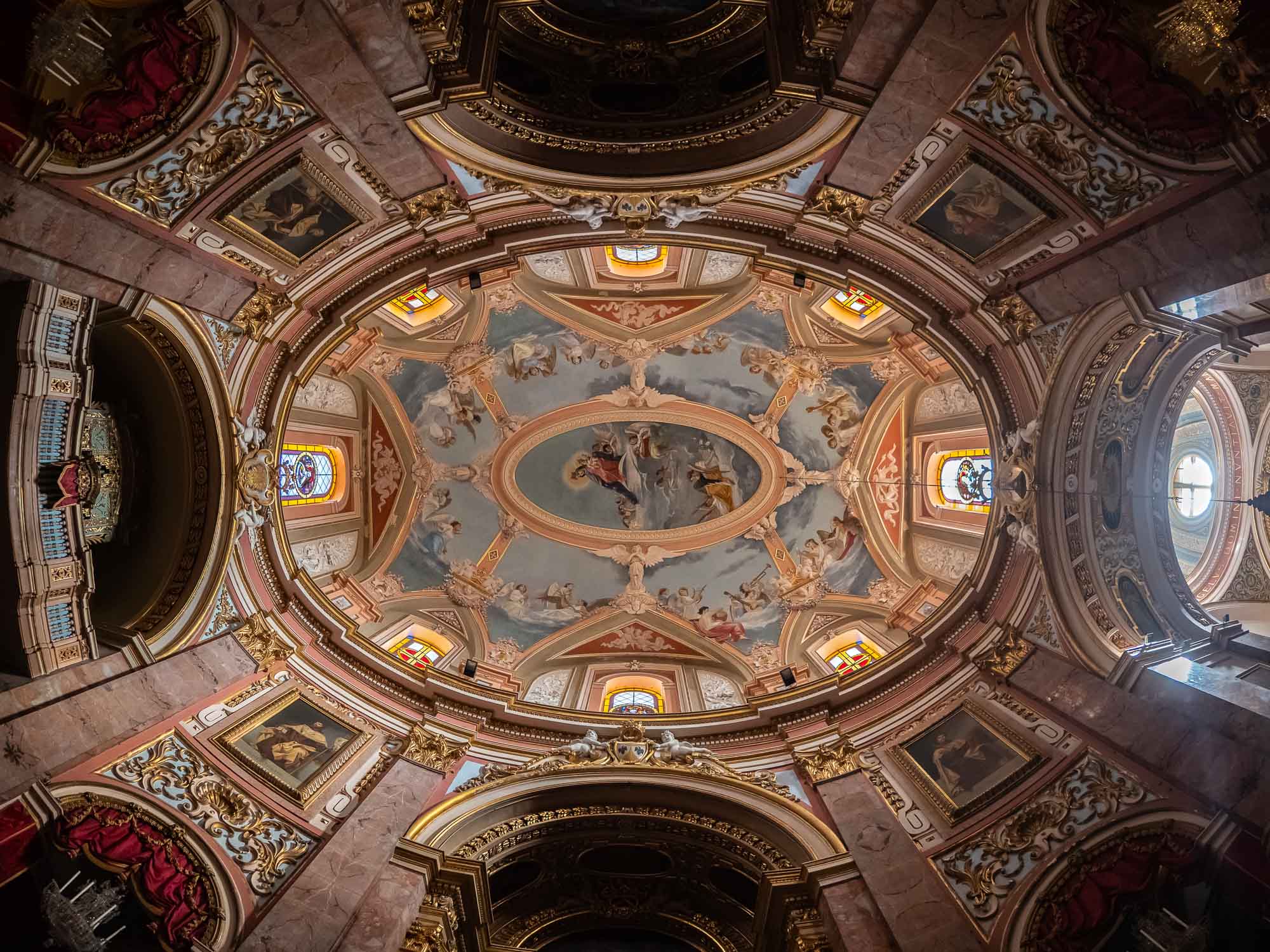
Church of the Annunciation of Our Lady
The dome of the second major church in Mdina.
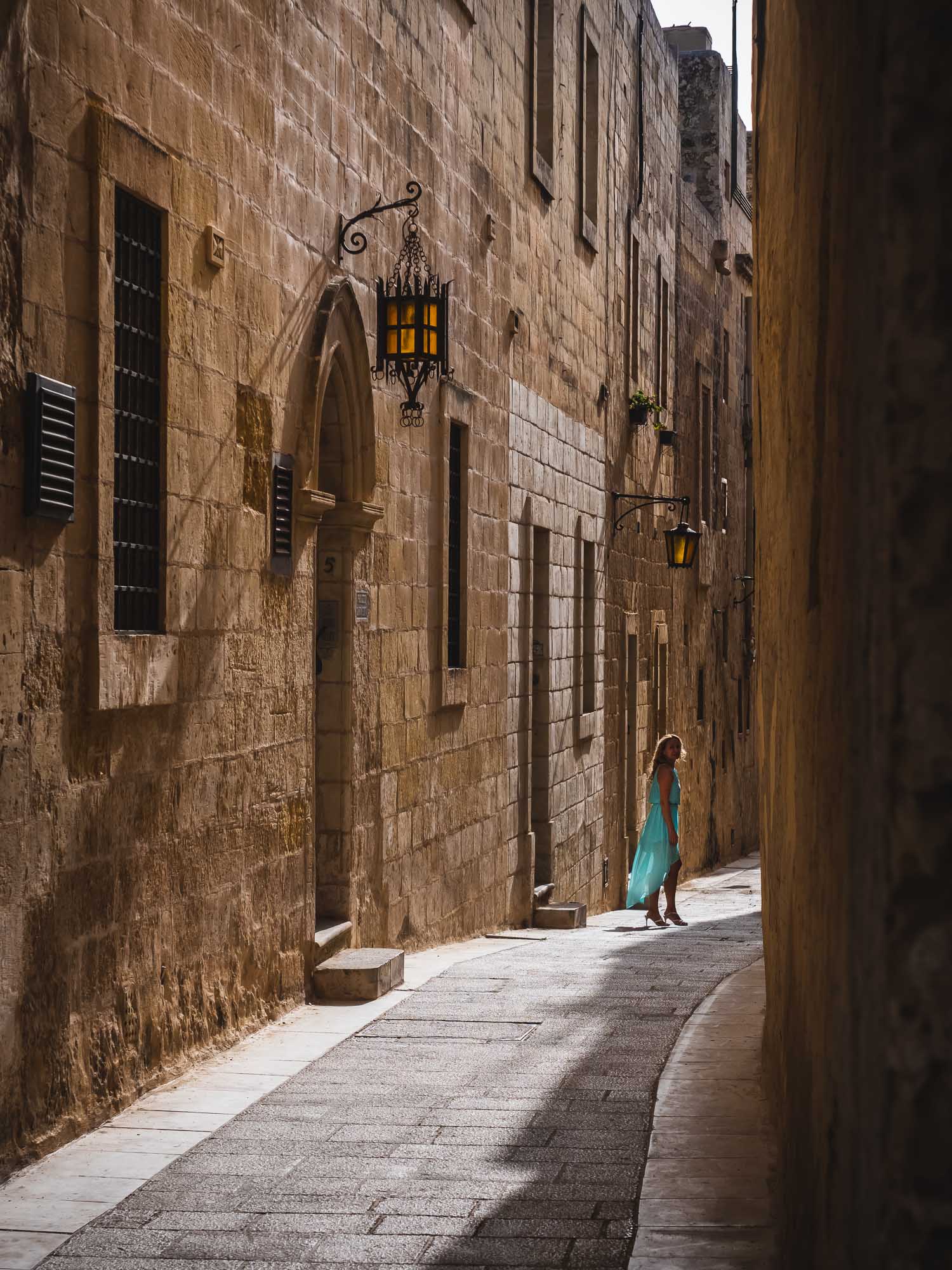
The Lady in Blue
The streets of Mdina leant themselves for some Instagram snaps...

Domvs Romana
The ruins of this 1st century BCE Roman theatre with the background of Mdina.
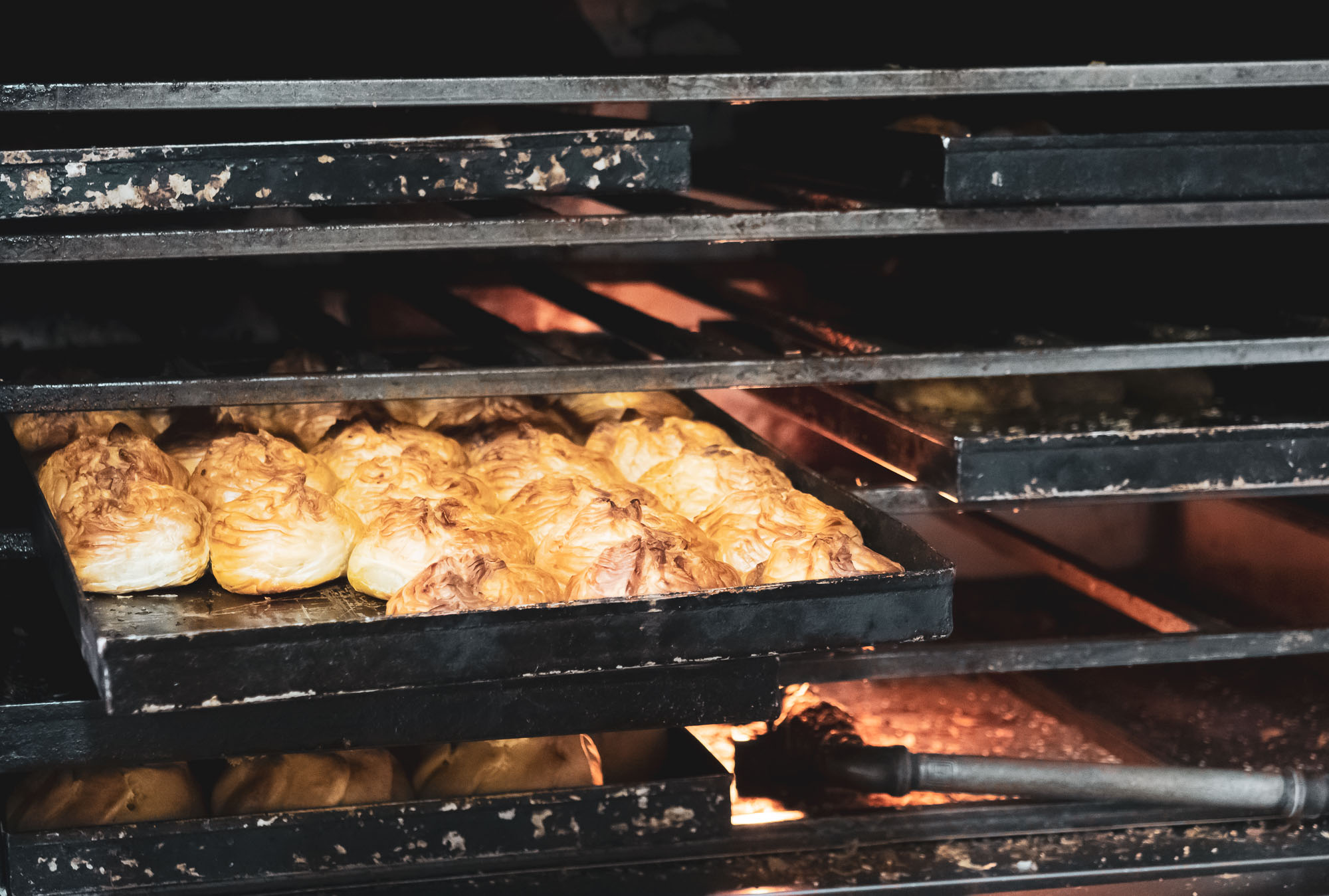
Pastizzi
One of the most famous Maltese specialties - indeed, it's delicious.
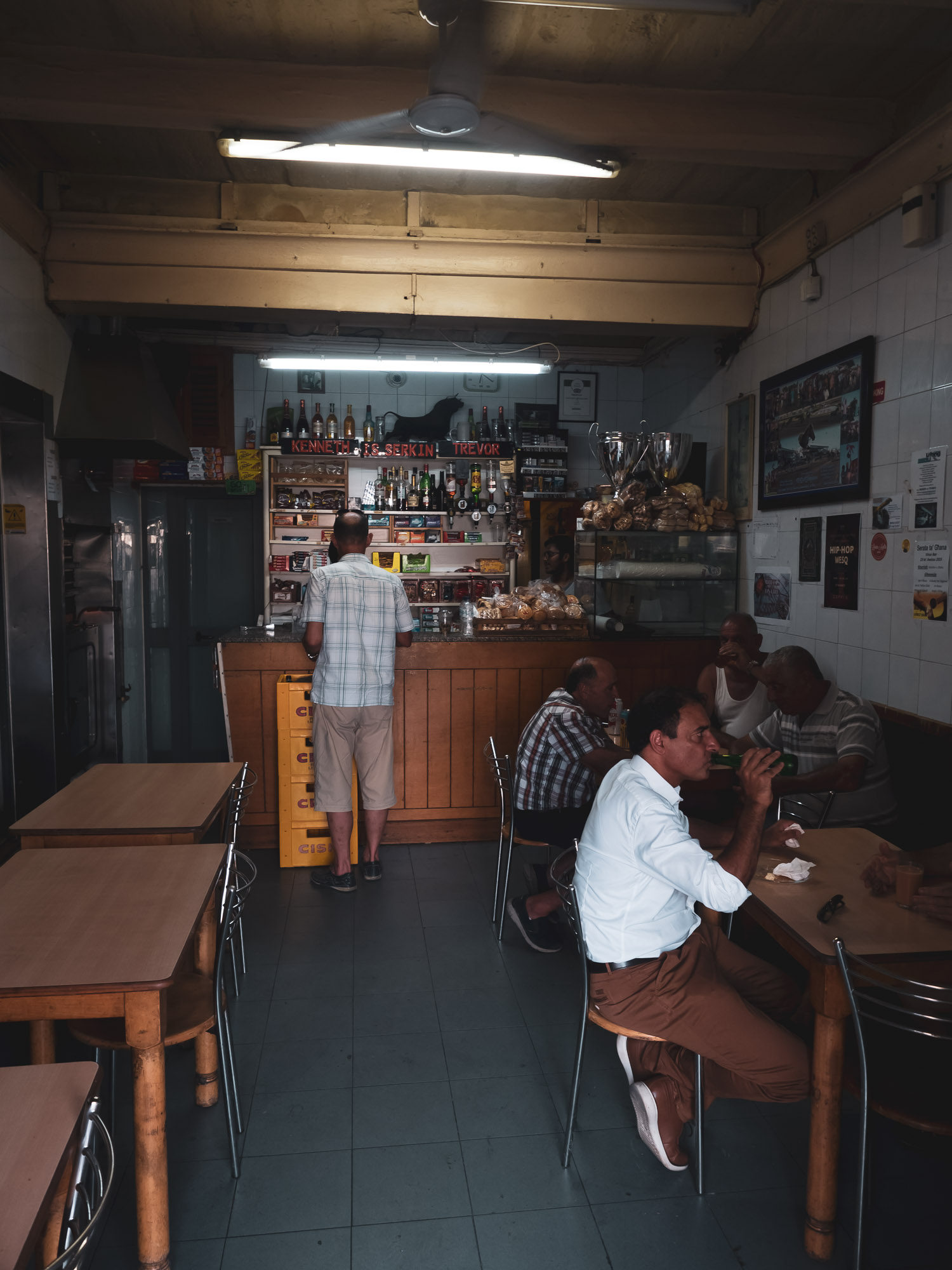
Inconspicious
Local man enjoying an evening drink in a place serving what is said to be the best Pastizzi in Malta, and doing so 24/7, located in Rabat just outside Mdina.
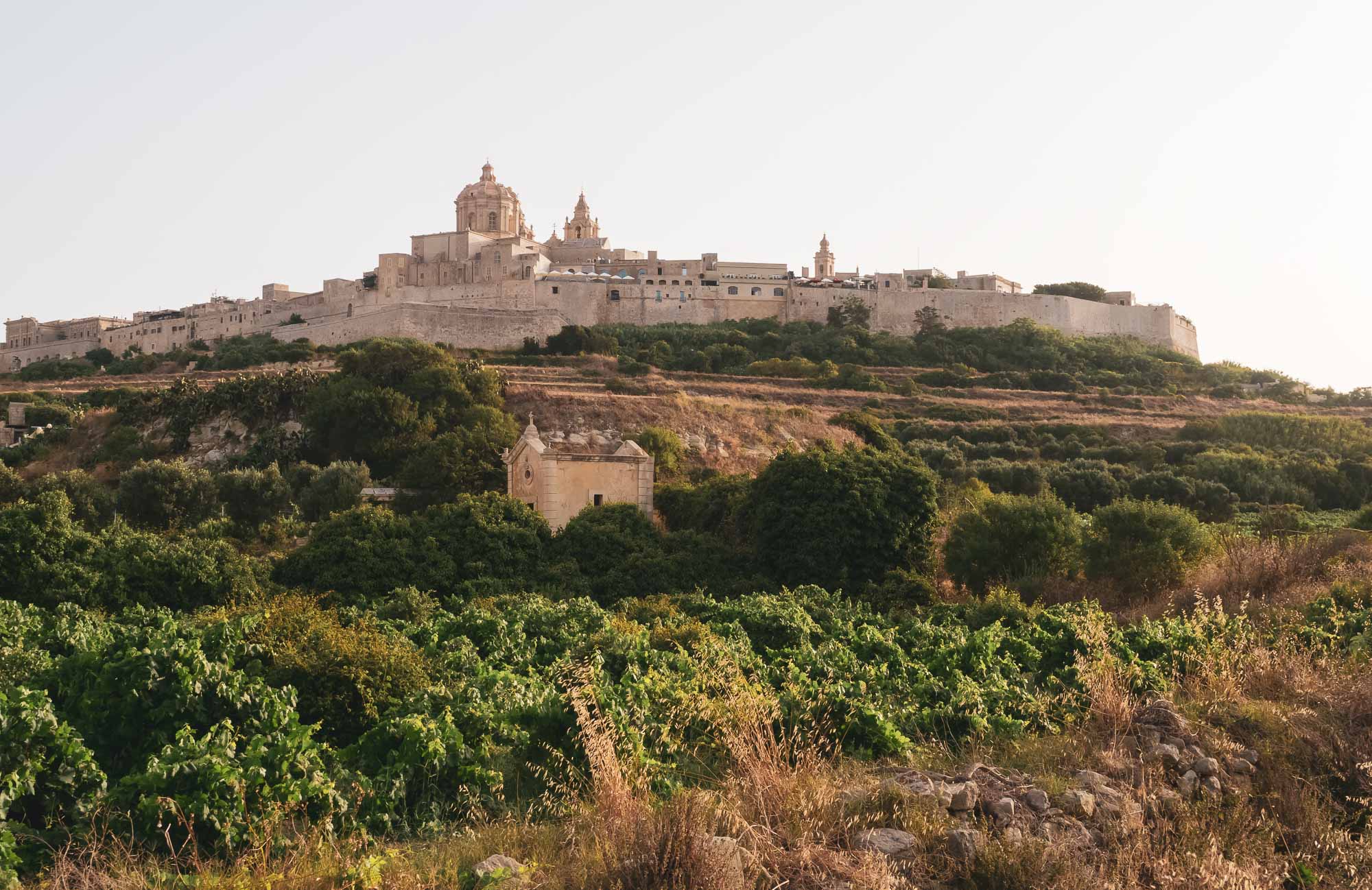
Mdina
Mdina seen from a distance shows its elevated position.
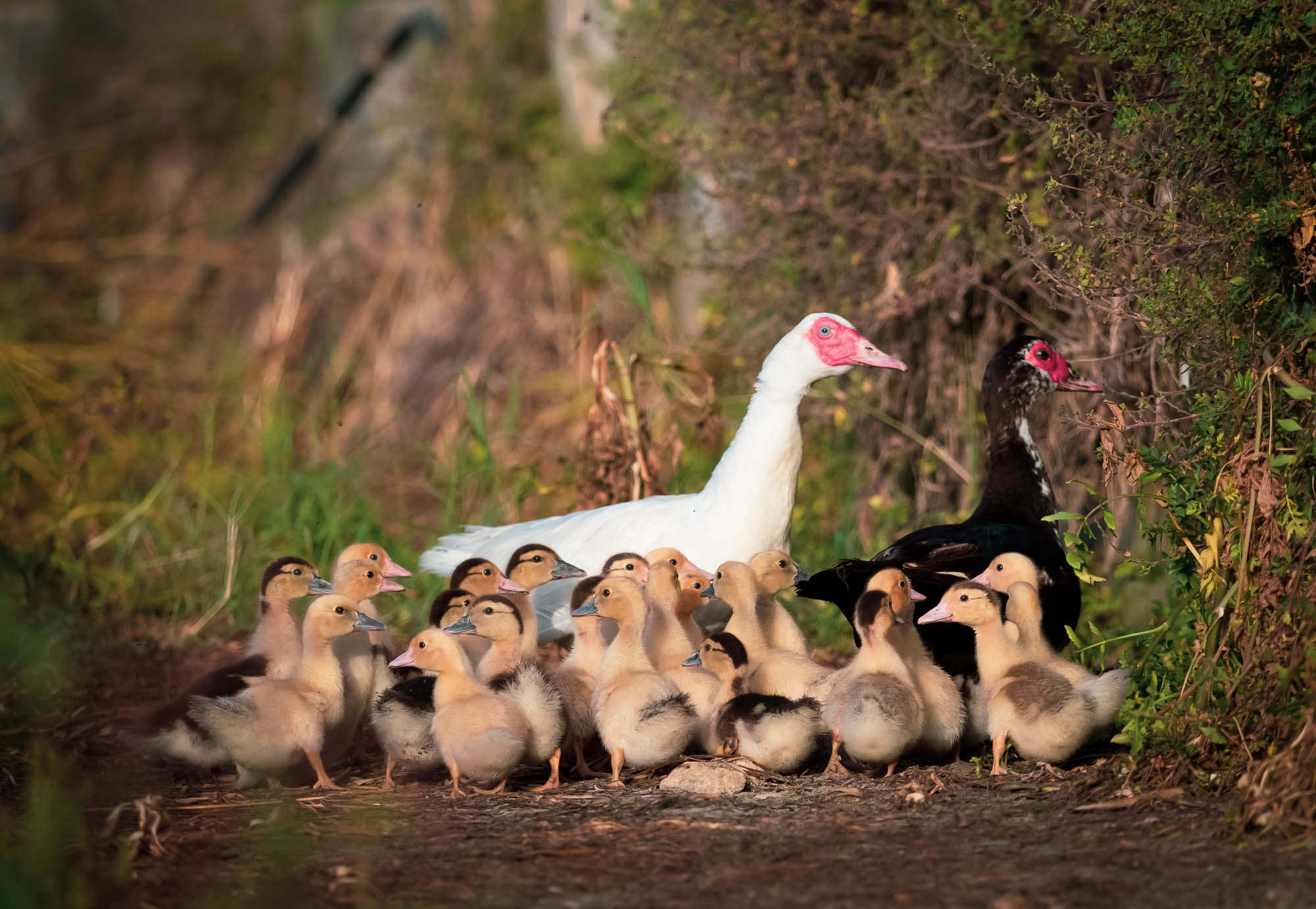
Family Happiness
Or dinner?

Parade
Officers practicing on St George's square.

Restauration
Stumbled into this little workshop. restoring figures and other parts of the nearby Our Lady of Mount Carmel church.
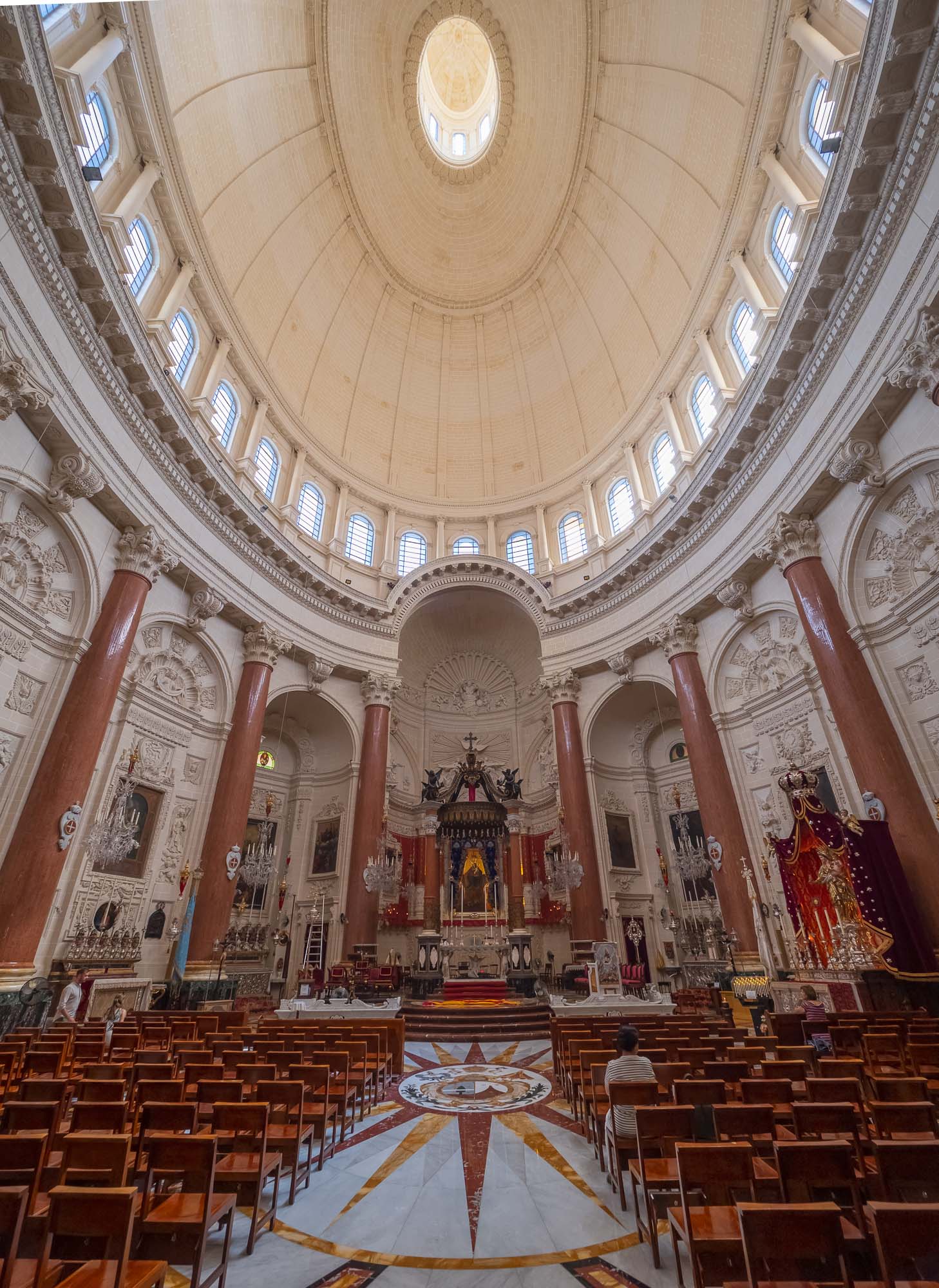
Our Lady of Mount Carmel church
The interior of the aforementioned church.
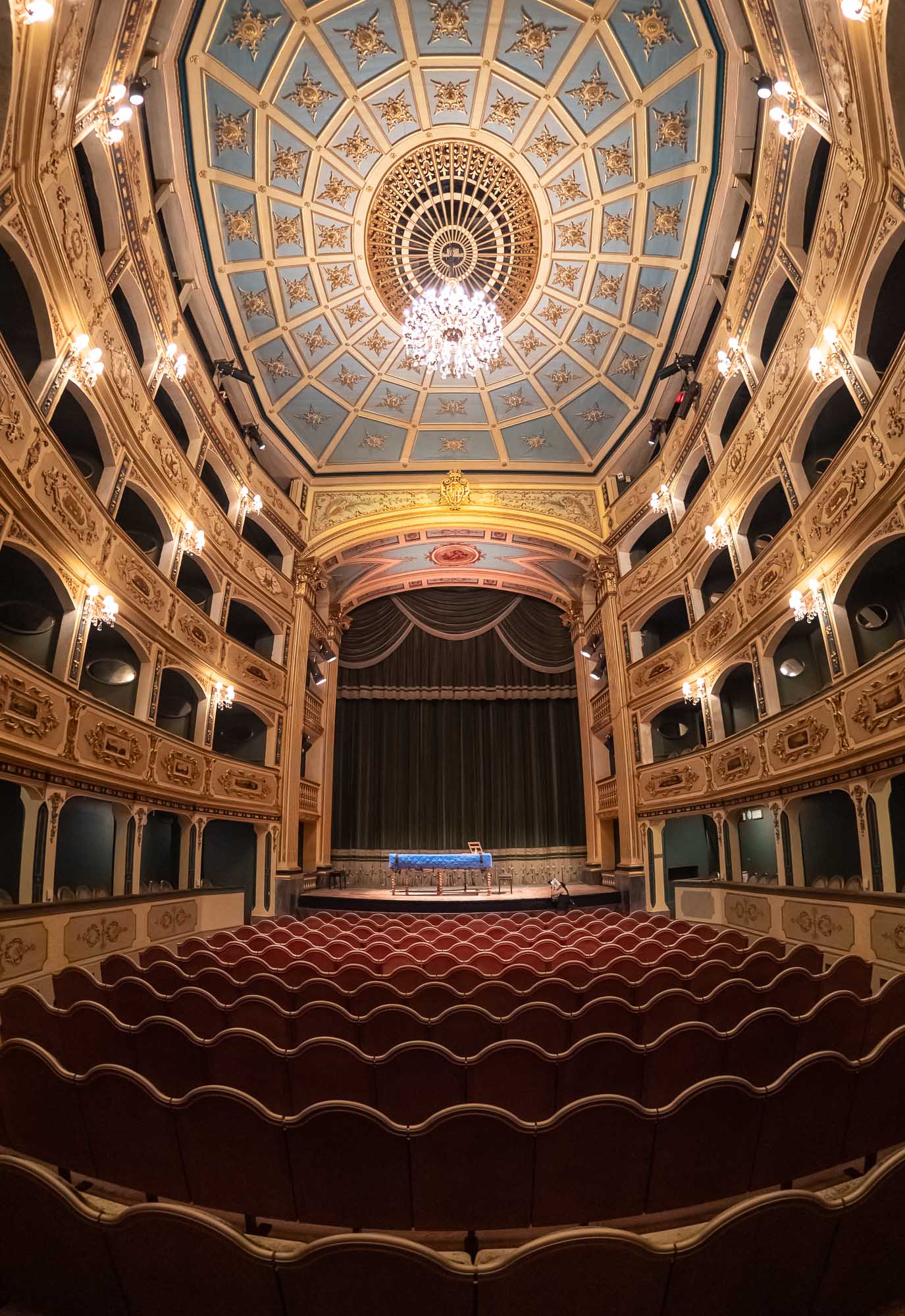
Hidden Spot
On my last morning, I discovered this gem - the Teatru Manoel.
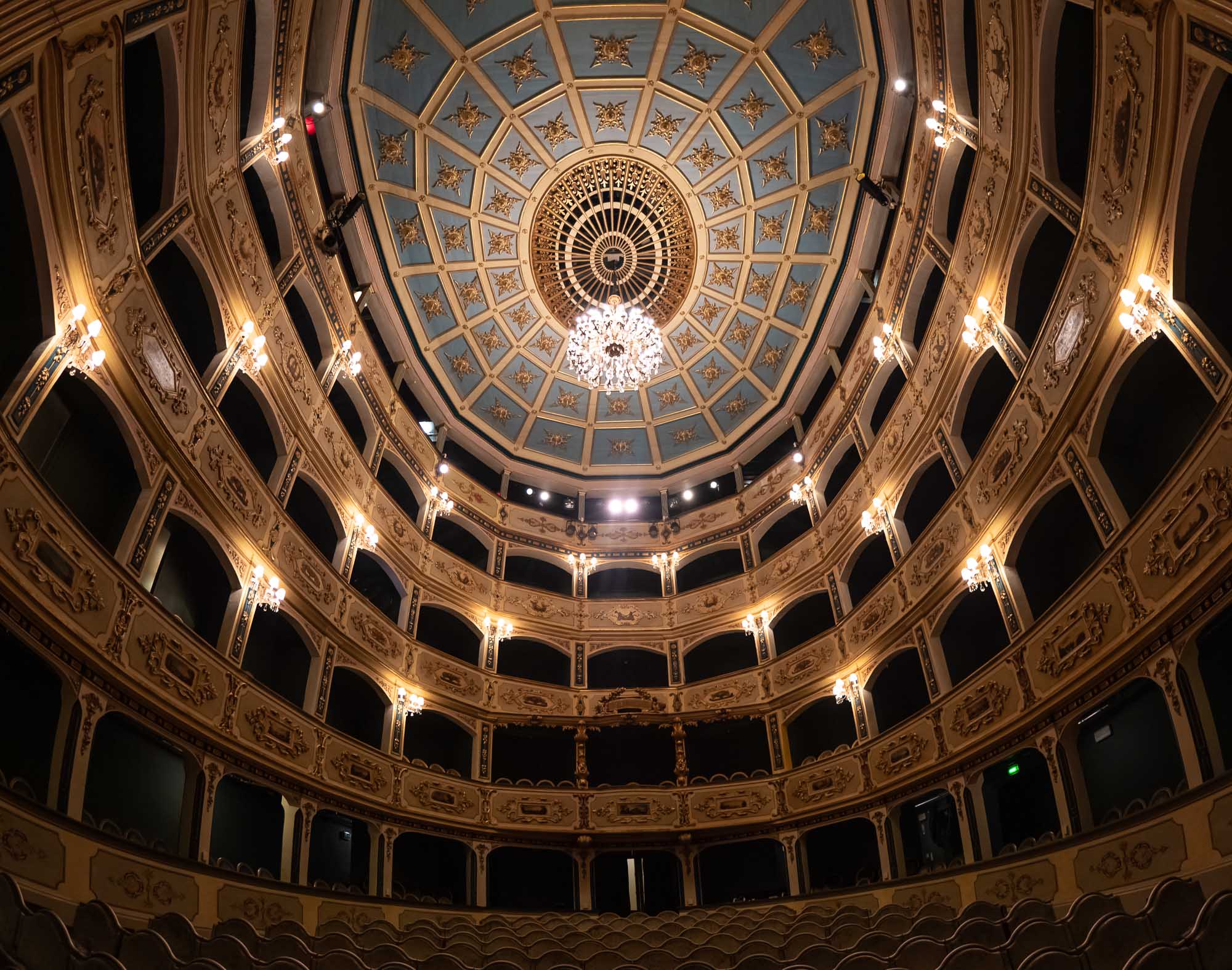
Manoel Theatre
Said ot be Europe's third-oldest working theatre, it isn’t as big as it looks here, with only 623 seats.

Work in Progress
This view gives away that the theatre is actually quite small. Note the woman on the bottom right, doing restoration on one of the decorative paintings on the wall.
Minneapolis & "The Quietest Place on Earth"
The yearly trip to HITEC - the world’s largest hospitality technology show - this year brought me to Minneapolis, MN, in the United States.
Since I’m always up for exploring a new place, I couldn’t resist to stay an extra day to make the 26h trip from Dubai a little more worthwhile - and it definitely was!

The yearly trip to HITEC - the world’s largest hospitality technology show - this year brought me to Minneapolis, MN, in the United States.
Since I’m always up for exploring a new place, I couldn’t resist to stay an extra day to make the 26h trip from Dubai a little more worthwhile - and it definitely was!
Minneapolis has a rich history as the milling capital of the US, owing to the Mississippi River running through the city, and is home to a few interesting sights.
As I only had a few hours, I didn’t take my camera along, so all the photos here are shot on iPhone XS.

Bob Dylan
One of Minnesota’s most famous sons has his own mural in Minneapolis. It was commissioned by the buildings owner, and cost $50,000.

Blue Skies
Minneapolis has very cold winters - luckily, June is more pleasant.

River
The city owes a lot of its development to the Mississippi river.

Mill City Museum
The museum pays homage to the milling history of the city, which was a major driver for its economic development.

Damage
In 1878, a spark ignited airborne flour dust within the mill, creating a huge explosion that demolished a big part of the building and killed 18 workers instantly.

Frederick R. Weisman Art Museum
The Frank Gehry-designed building is located just on the river cliffs in the University district.

Crossing the River
Walking over the Stone Arch bridge, which originally opened in 1883.

Leftovers
The mill was rebuilt in 1880 as the largest in the world at the time, and ran until the 1960s. A fire gutted it in 1991, after which it was turned into a museum.

Water Power
Minneapolis developed around Saint Anthony Falls, the highest waterfall on the Mississippi River and a source of power for its early industry.

Revived
A view over the newly rebuilt mill district on the banks of the river, still showing the tunnels leading the water to the underground hydrpower generators.

Westminster Presbyterian Church
The 1897 church is one of many in the city.

Up
Minneapolis is home to a few interesting skyscrapers.

Orfied Laboratories
The studio is located outside the city in an inconspicious building.

Lobby Relicts
The entrance features copies of the recordings that were created in the studio, and even a poster of the movie "A Quiet Place", as the Anechoic Chamber was used to promote the release.

Directional Microphone
An impressive demo of the lab's directional microphone that allows to pinpoint the source and frequency of sound generated in the room.

Research
The lab provides all types of acoustic services, from product design and testing to building material selection and more.

Studio B
Tracks like Funky Town were recorded in this studio. Prince and Bob Dylan made records here as well.

Reverb Rooms
One of the lab's reverb rooms, with the metal plates acting as diffusors.

The Quietest Place on Earth
Until 2015, the Anechoic Chamber in the lab held the guiness world record for the quietest place on earth. I was able to spend 20min in side in total darkness and silence, and it's a humbling experience.

Man of Wisdom
Mike is one of the labs consultants and has worked there for 20 years, accummulating incredible knowledge.
A place that leaves a taste for more - 24 hours in Shiraz, Iran
A short flight from Sharjah took us to beautiful Iran for 24 hours, where we visited the city of Shiraz and the Persepolis. Iran is full of history and culture and its unique rich atmosphere definitely made us keen to come back for more.

A short flight from Sharjah took us to beautiful Iran for 24 hours, where we visited the city of Shiraz and the Persepolis. Iran is full of history and culture and its unique rich atmosphere definitely made us keen to come back.
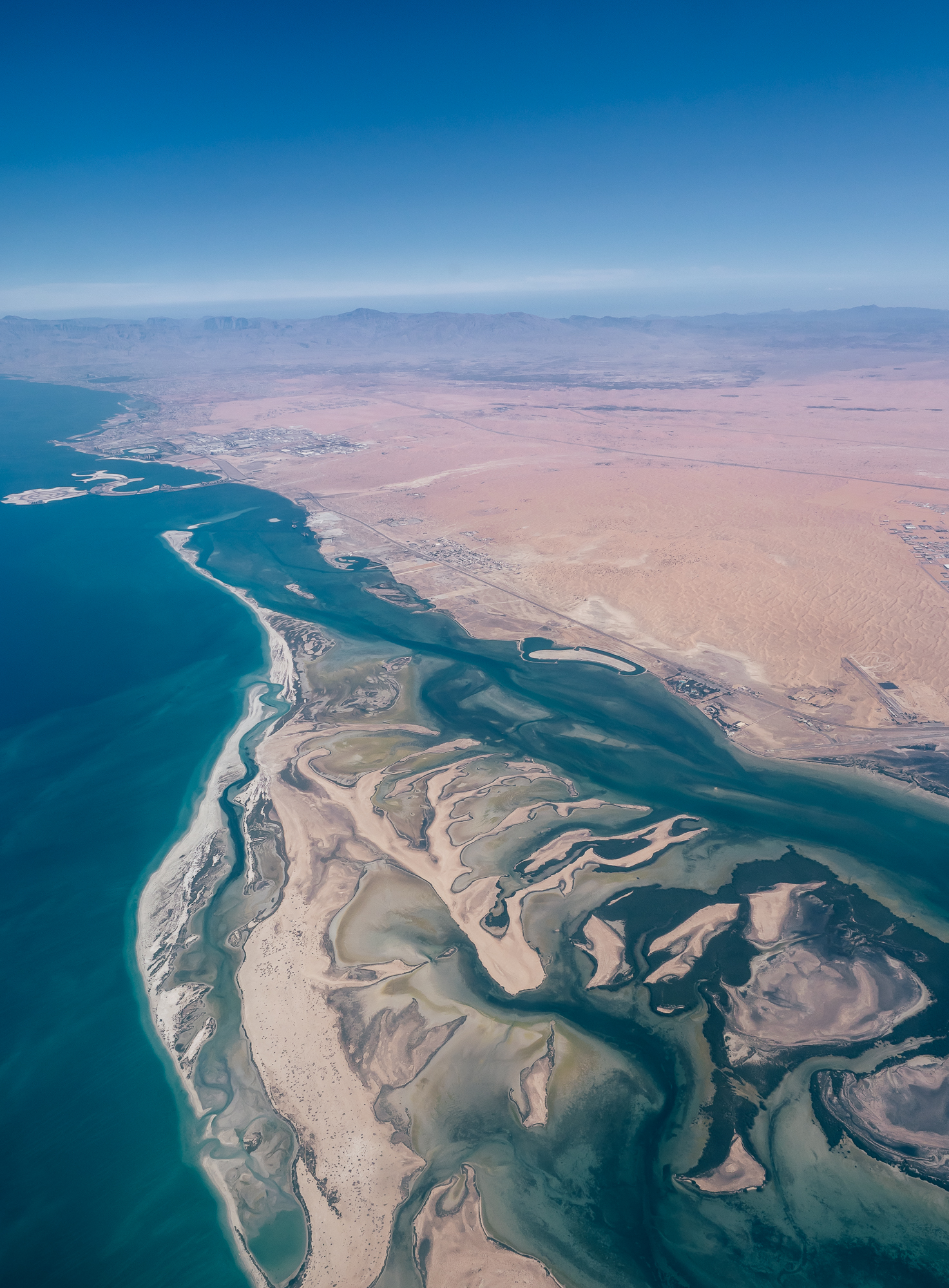
Umm Al Quwain
The wetlands in the smallest UAE emirate, seen from the plane flying out of Sharjah.
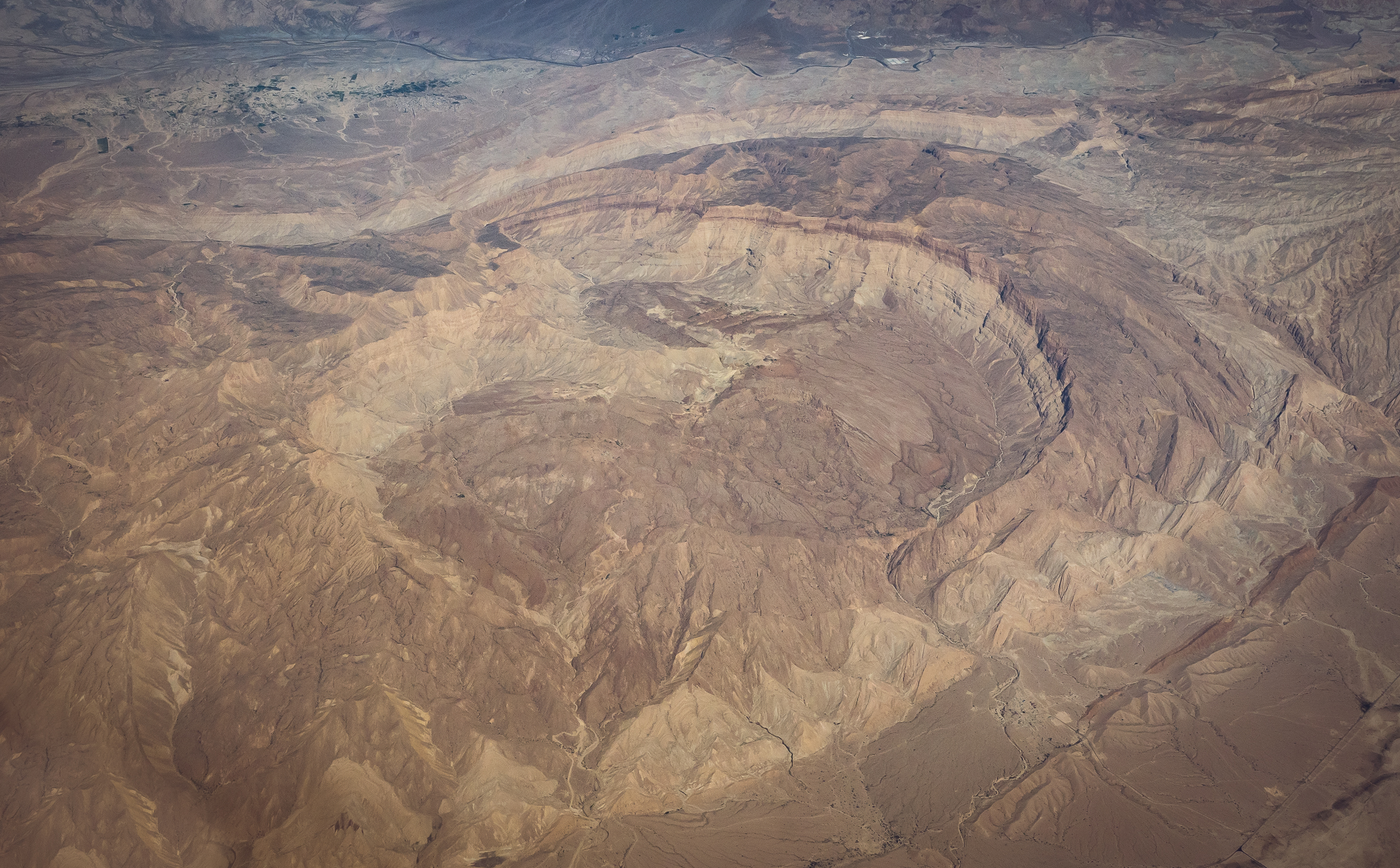
Iran
The rugged mountain area of southern Iran.
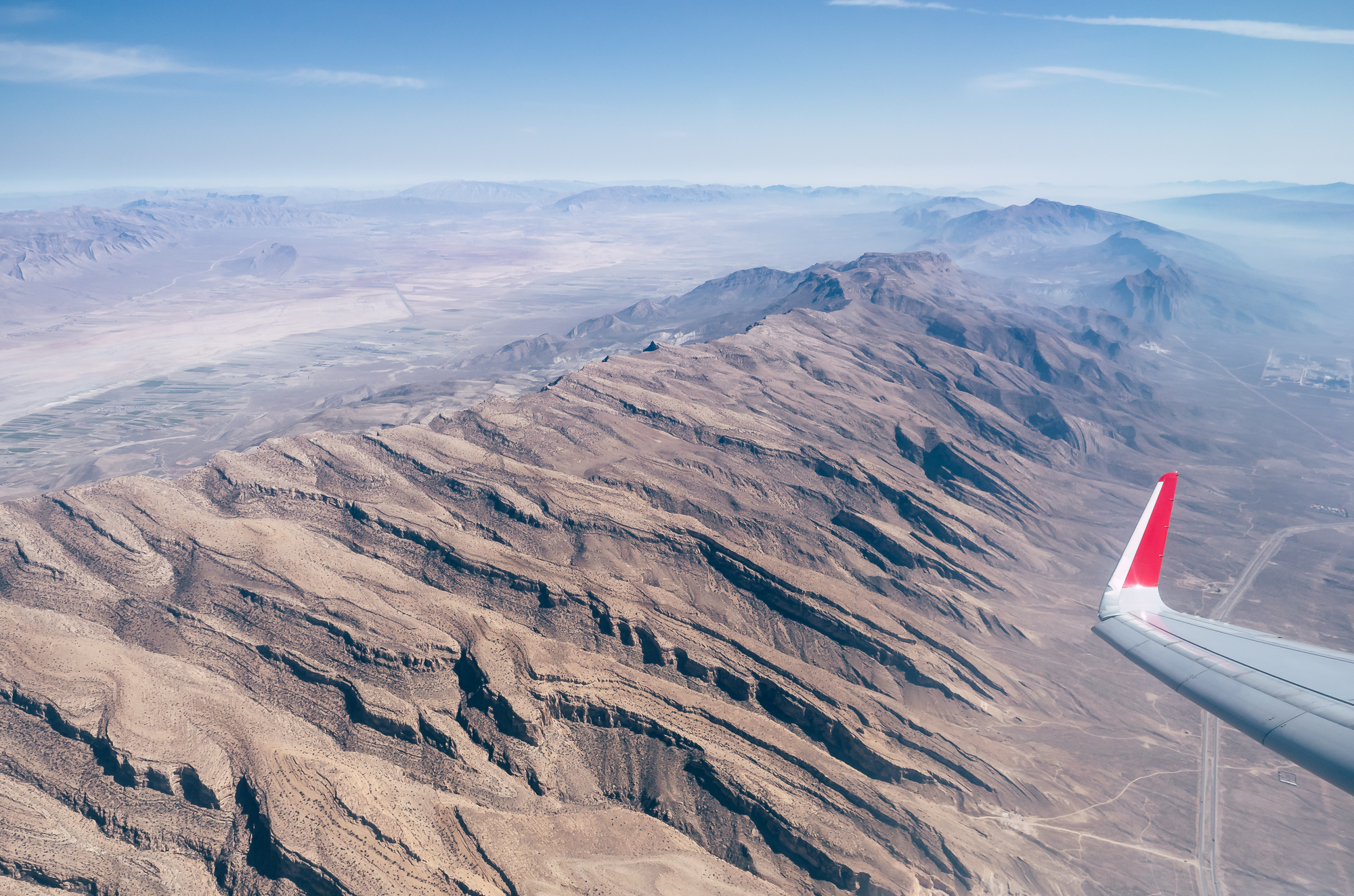
Approach
Landing approach in Shiraz.
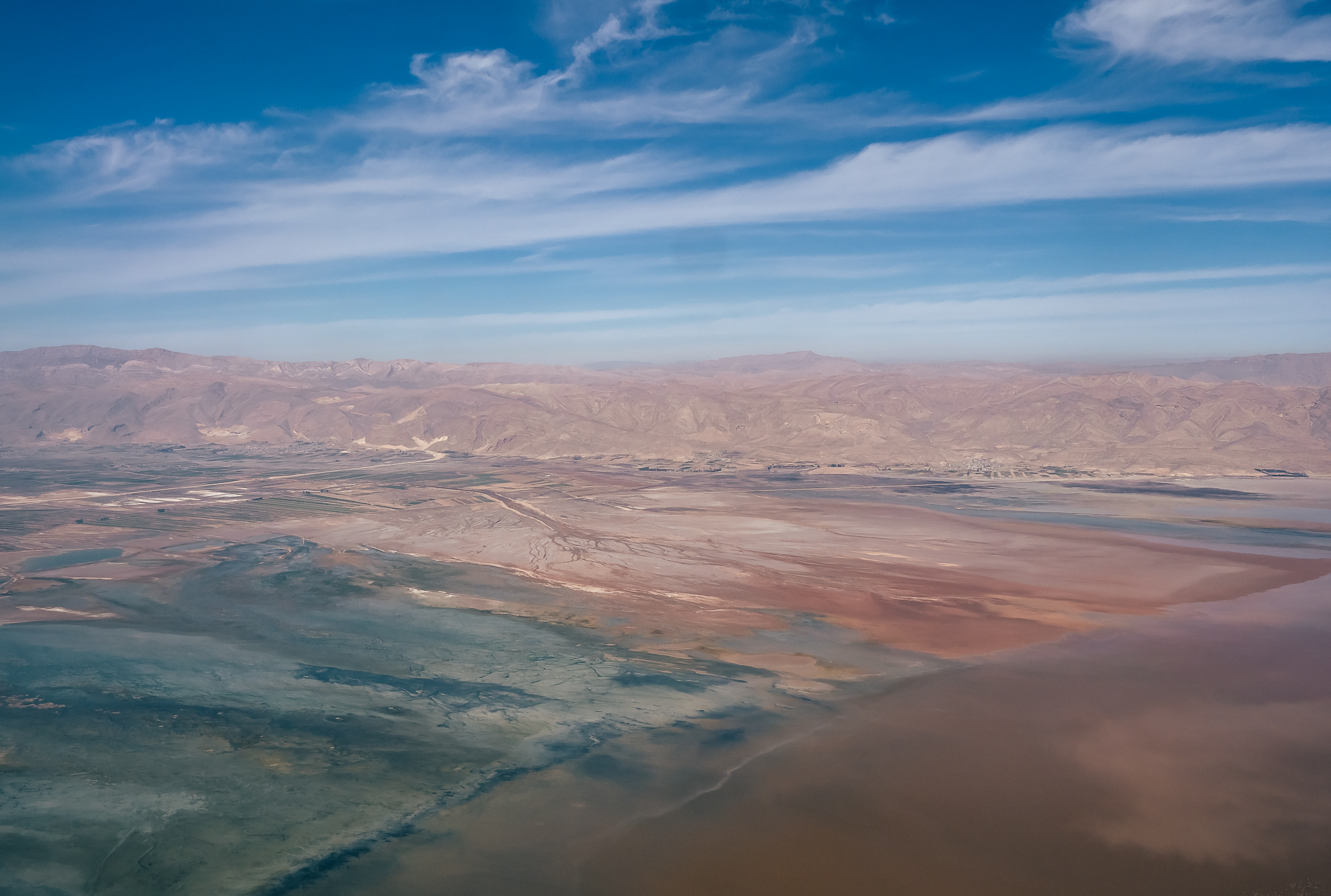
Maharlu Lake
The seasonal salt lake is famous for turning pink in the summer months due to the red tide algae blooms.
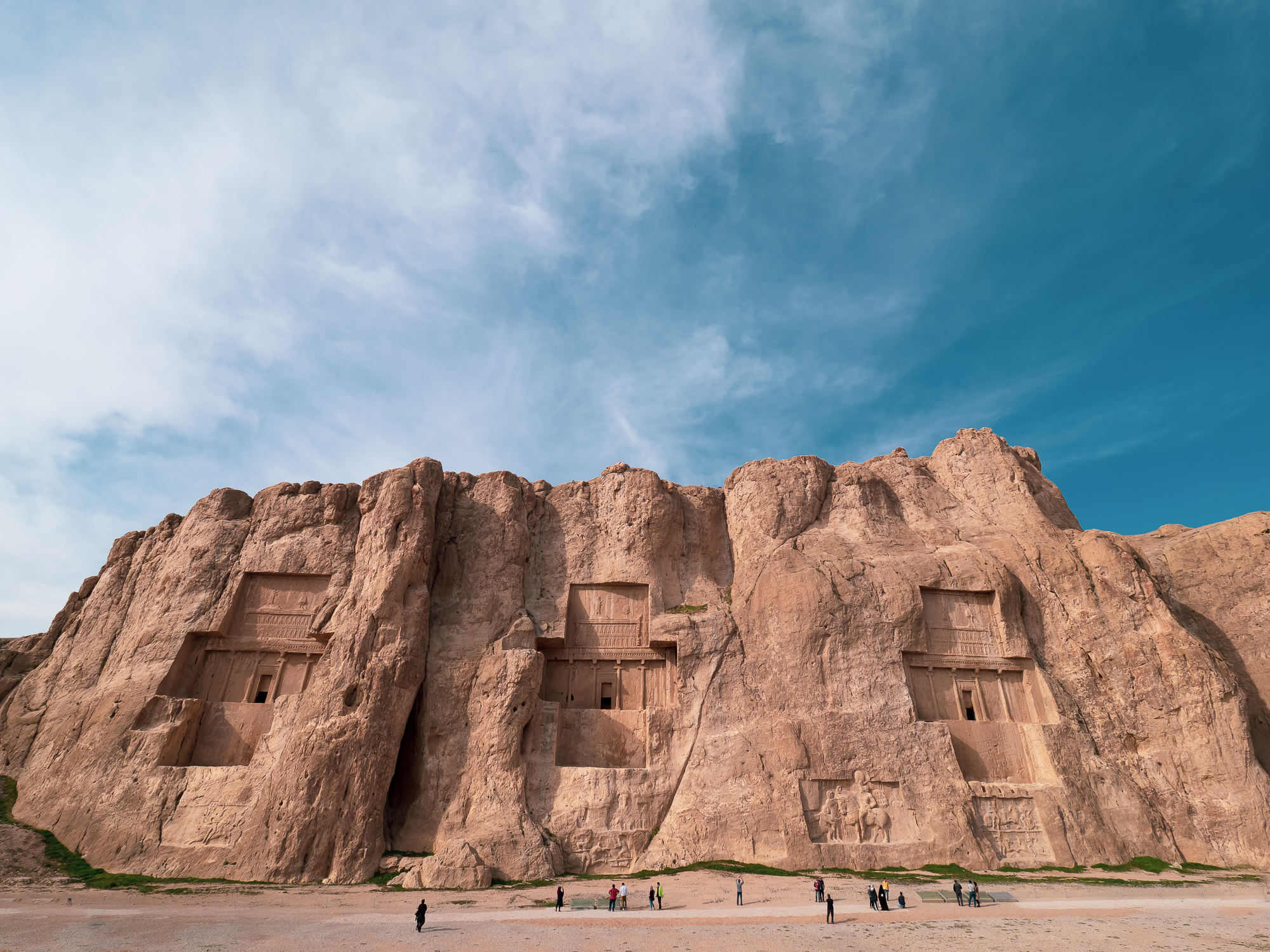
Naqsh-e Rustam
The rock reliefs the Achaemenid and Sassanid periods, part of which date back 1000 B.C, are just a few kilometres from the Persepolis.
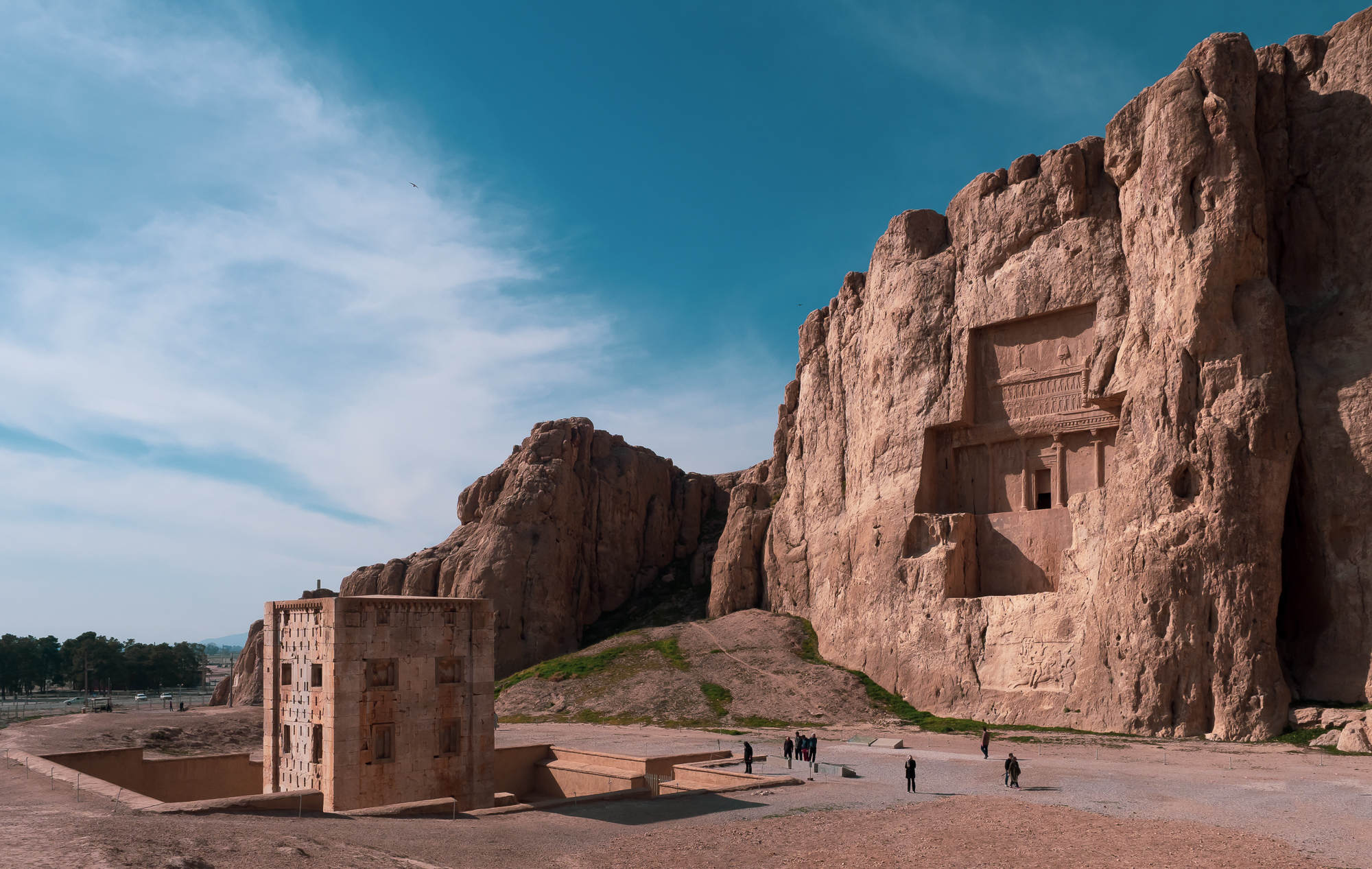
Ka'ba-ye Zartosht
The cube of Zoroaster in front of the tombs at the necropolis of Naqsh-e Rustam.
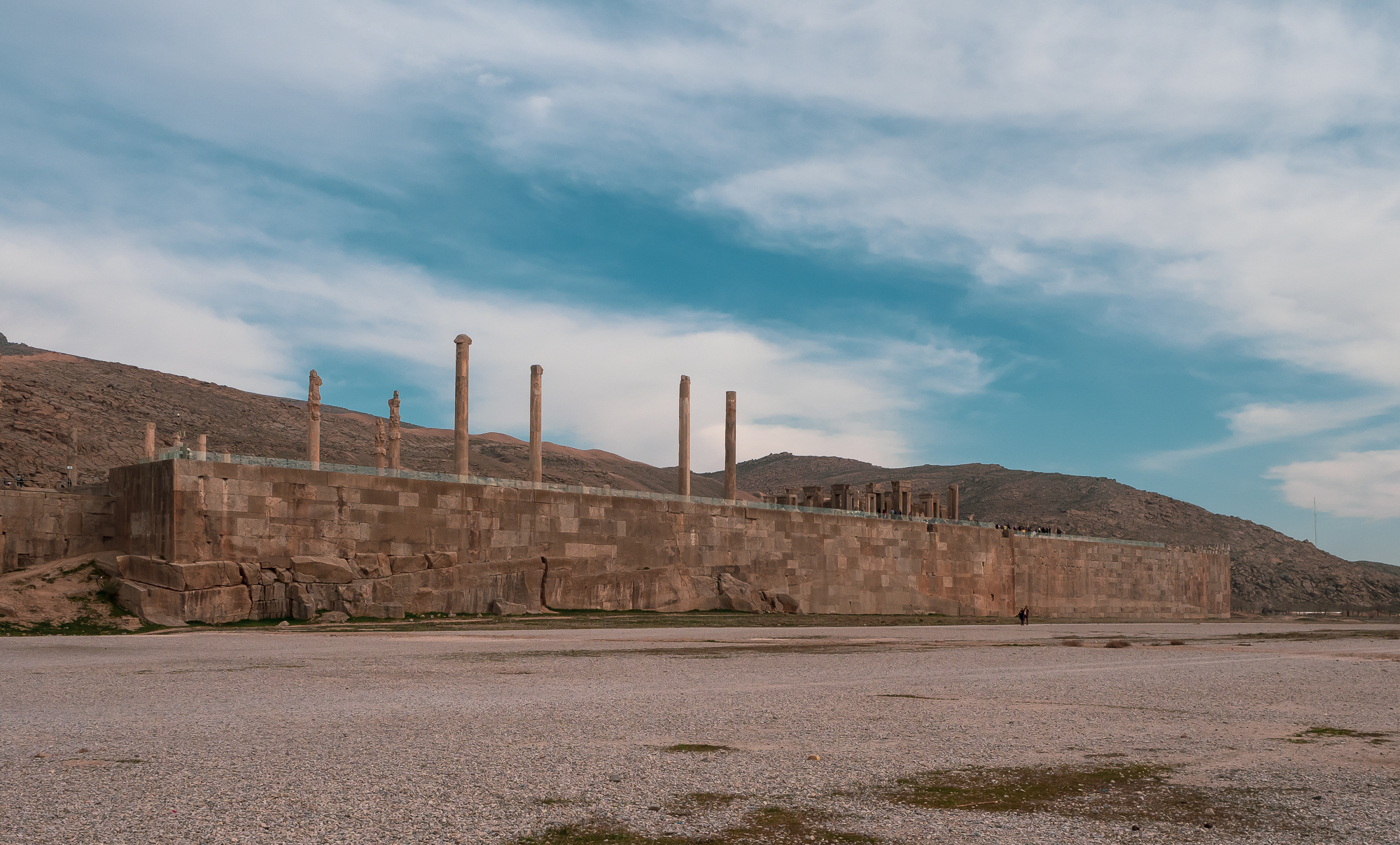
Persepolis
The western walls of the Persepolis. Notice the huge single pieces of stone used to construct the perimeter, with the humans for scale...
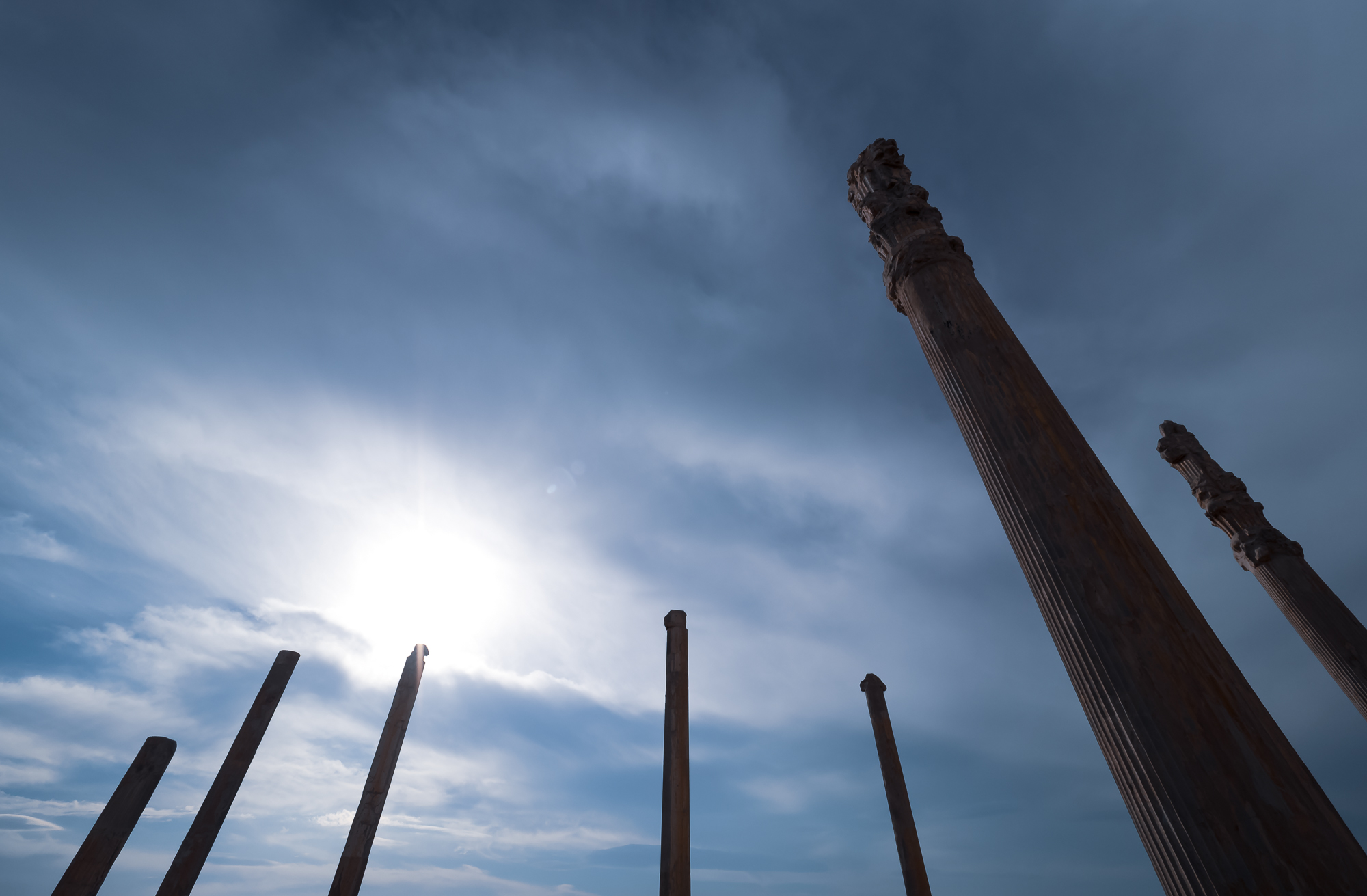
The Capital of the Achaemenid Empire
The earliest remains are from 500 BCE.
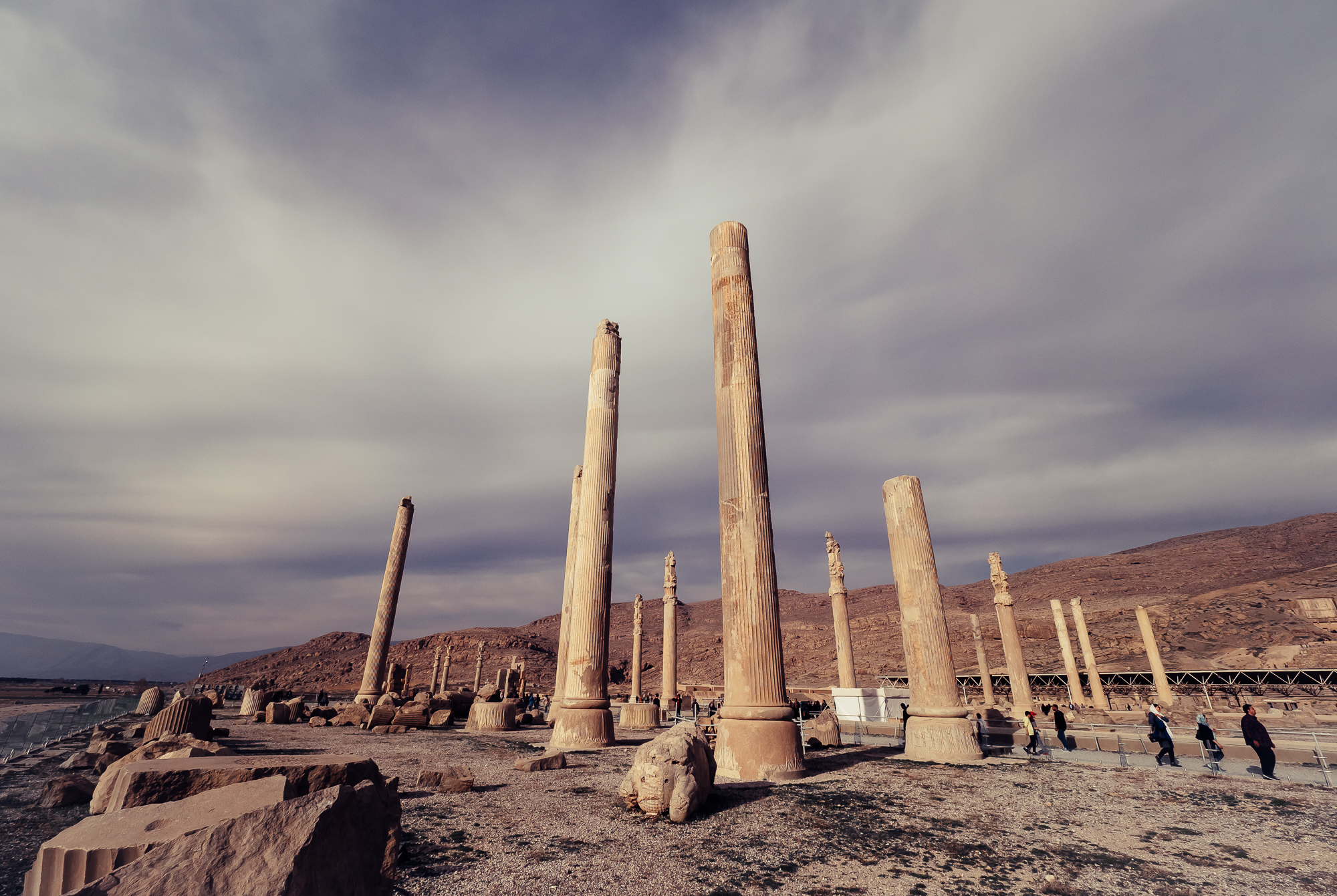
Ruins of the Apadana
One of the oldest buildings in the Persepolis.
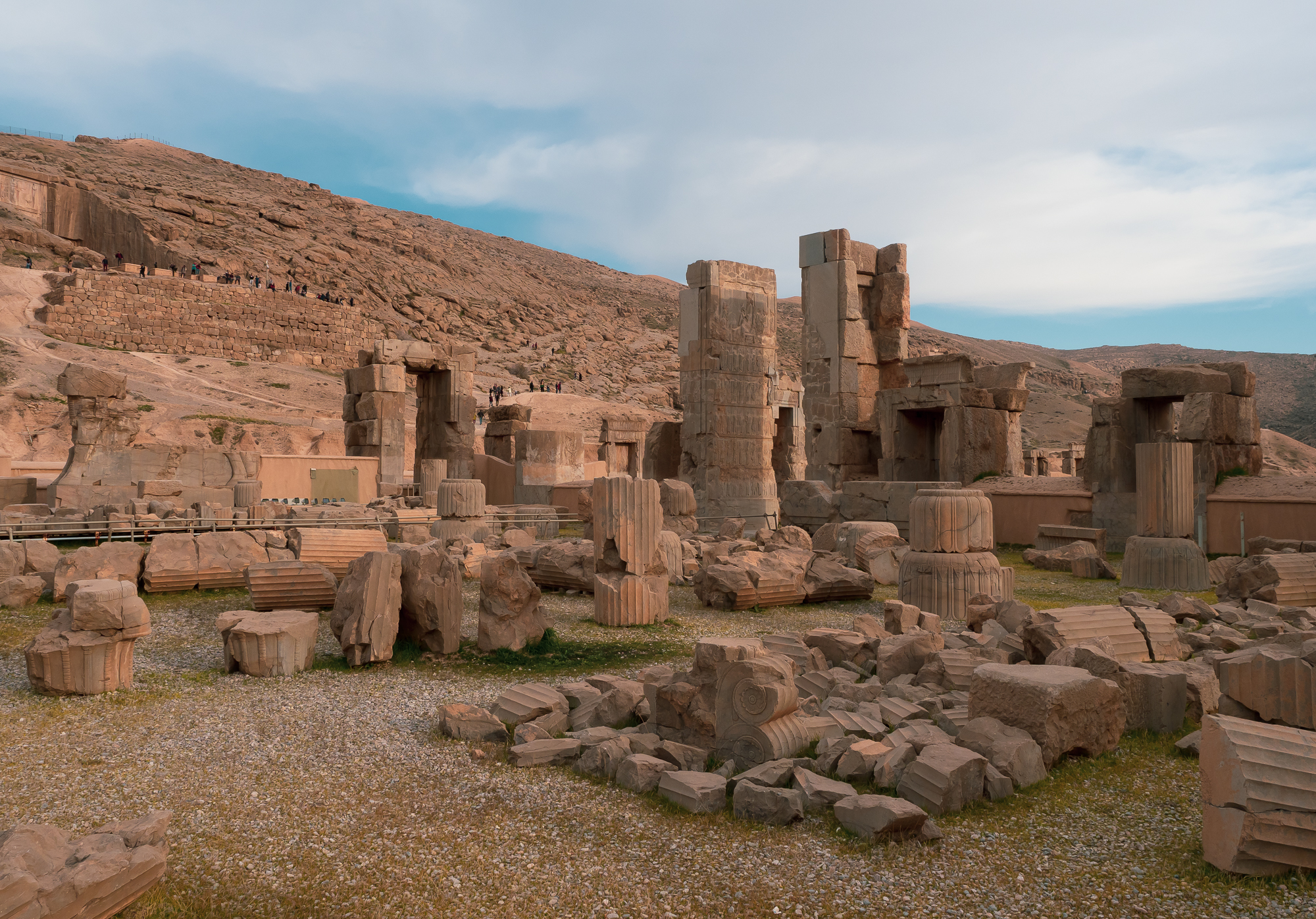
The End
Alexander the Great is said to have destroyed the Persepolis in revenge for the Persian's attacks on Athens.
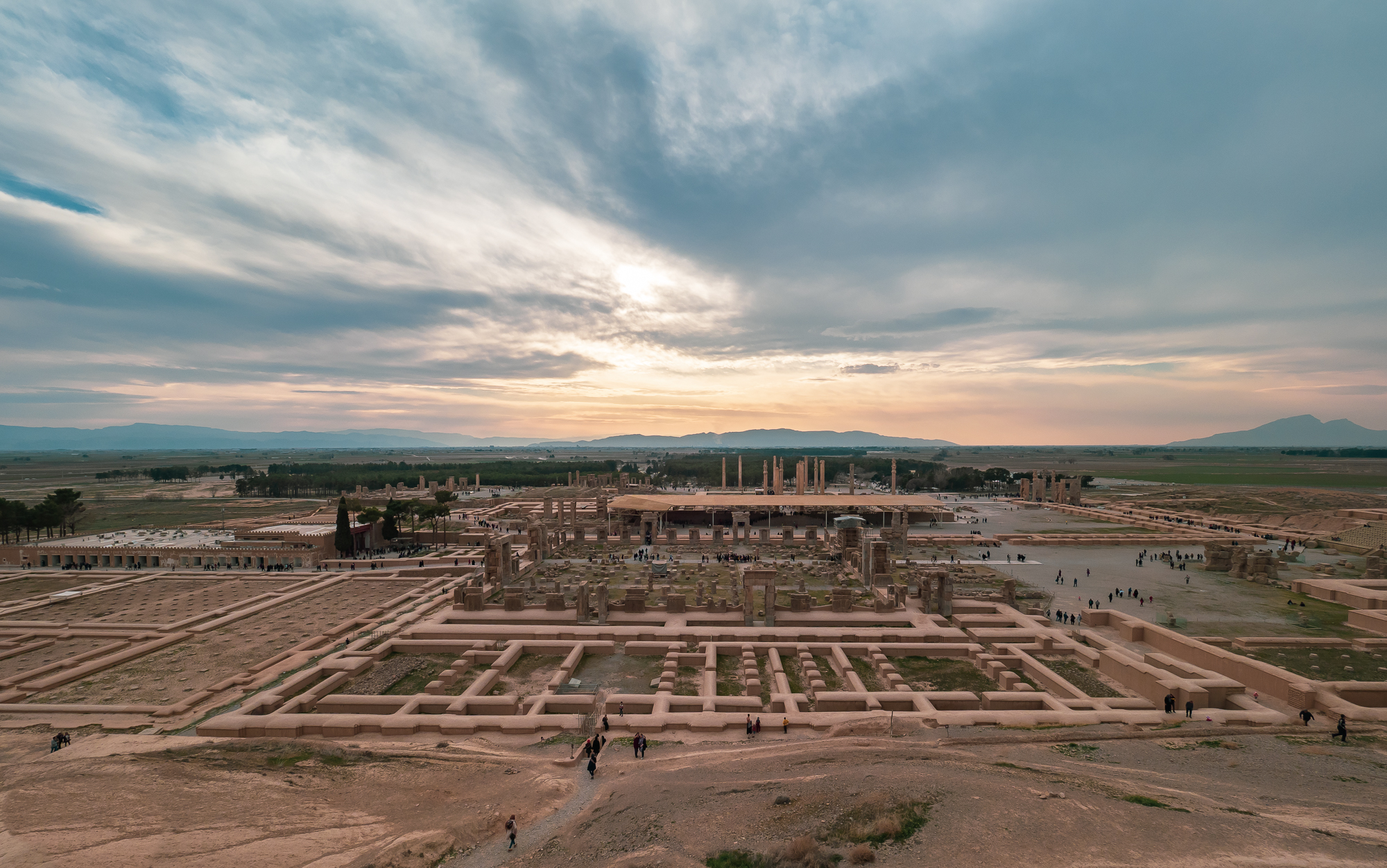
Overview
An aerial view of the site.
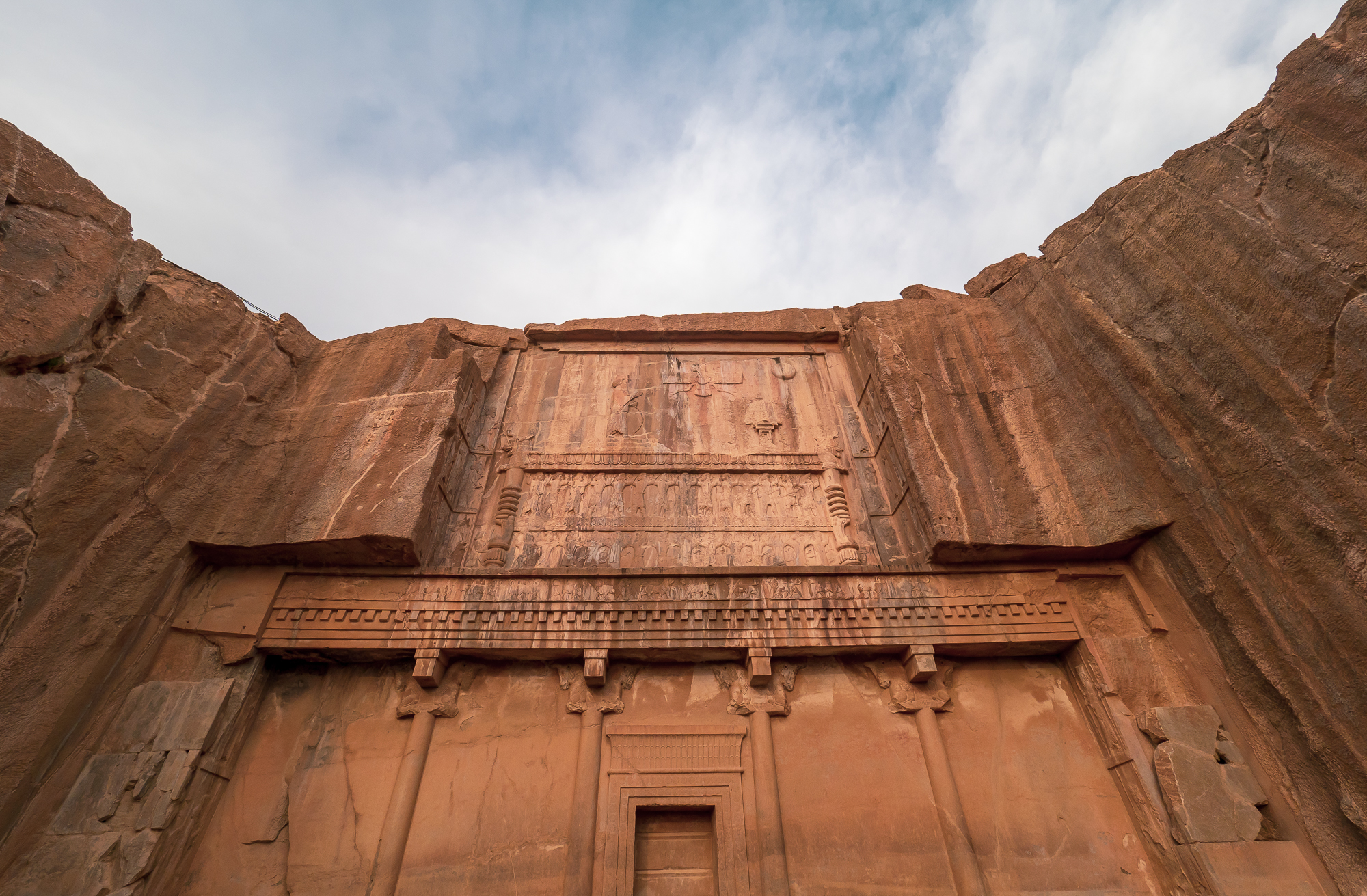
Tomb of Artaxerxes II
King of Persia from 404 BC until his death in 358 BC
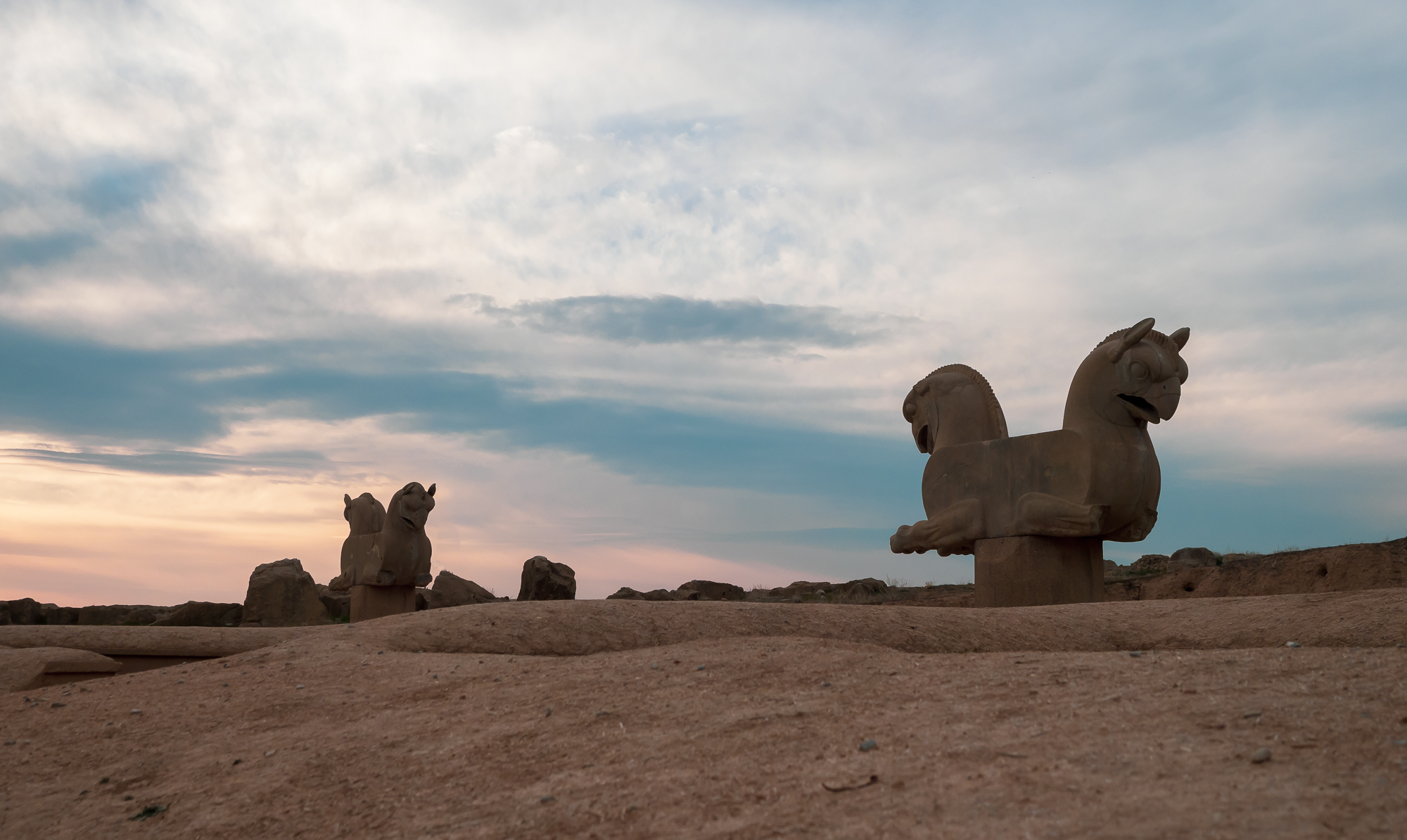
Grounded
Some griffin capitals which fell from their columns are kept on the ground now.
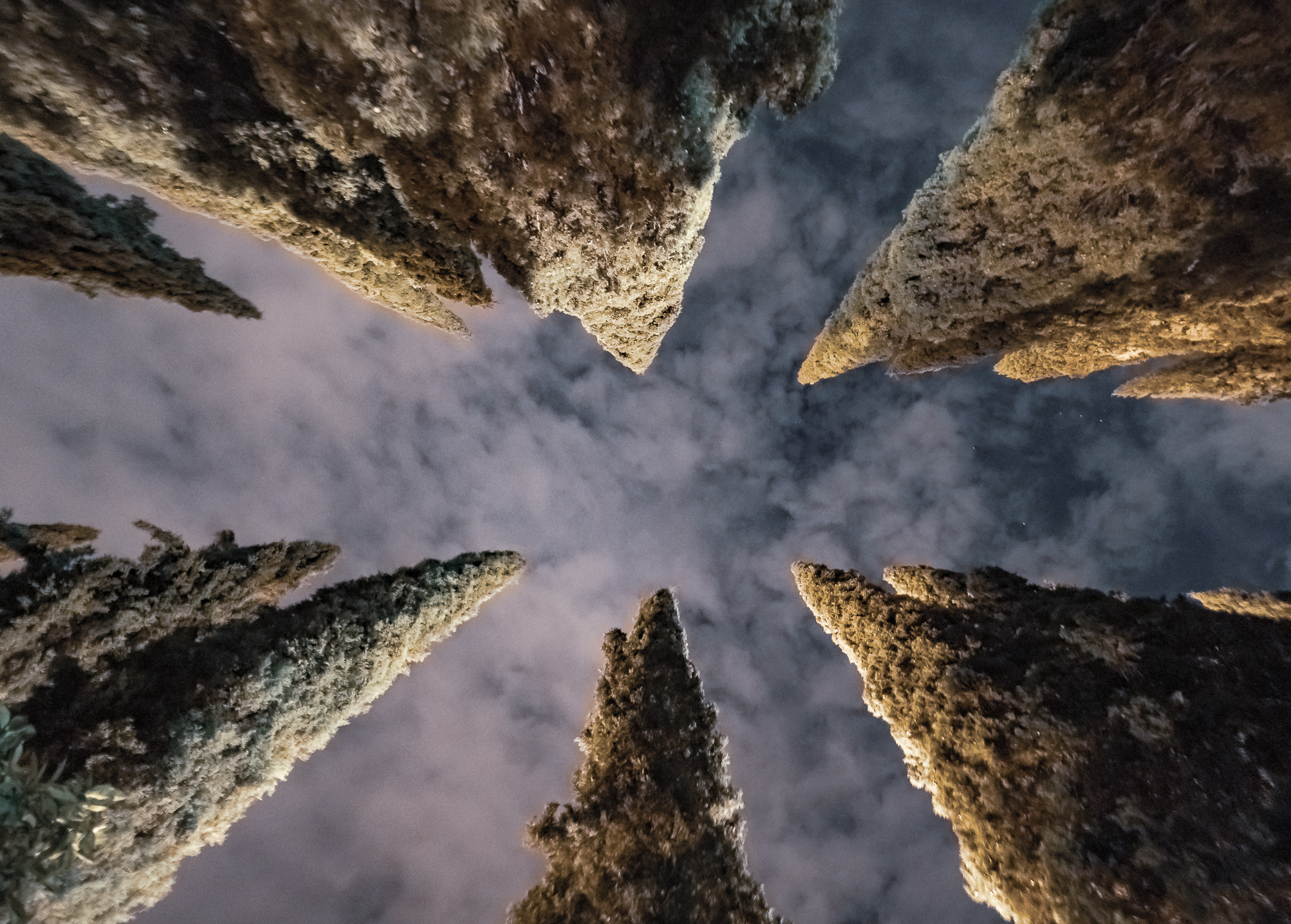
Cypress Trees
The 18th-century gardens features beautiful tall cypress trees. The garden is a Unesco World Heriate site.
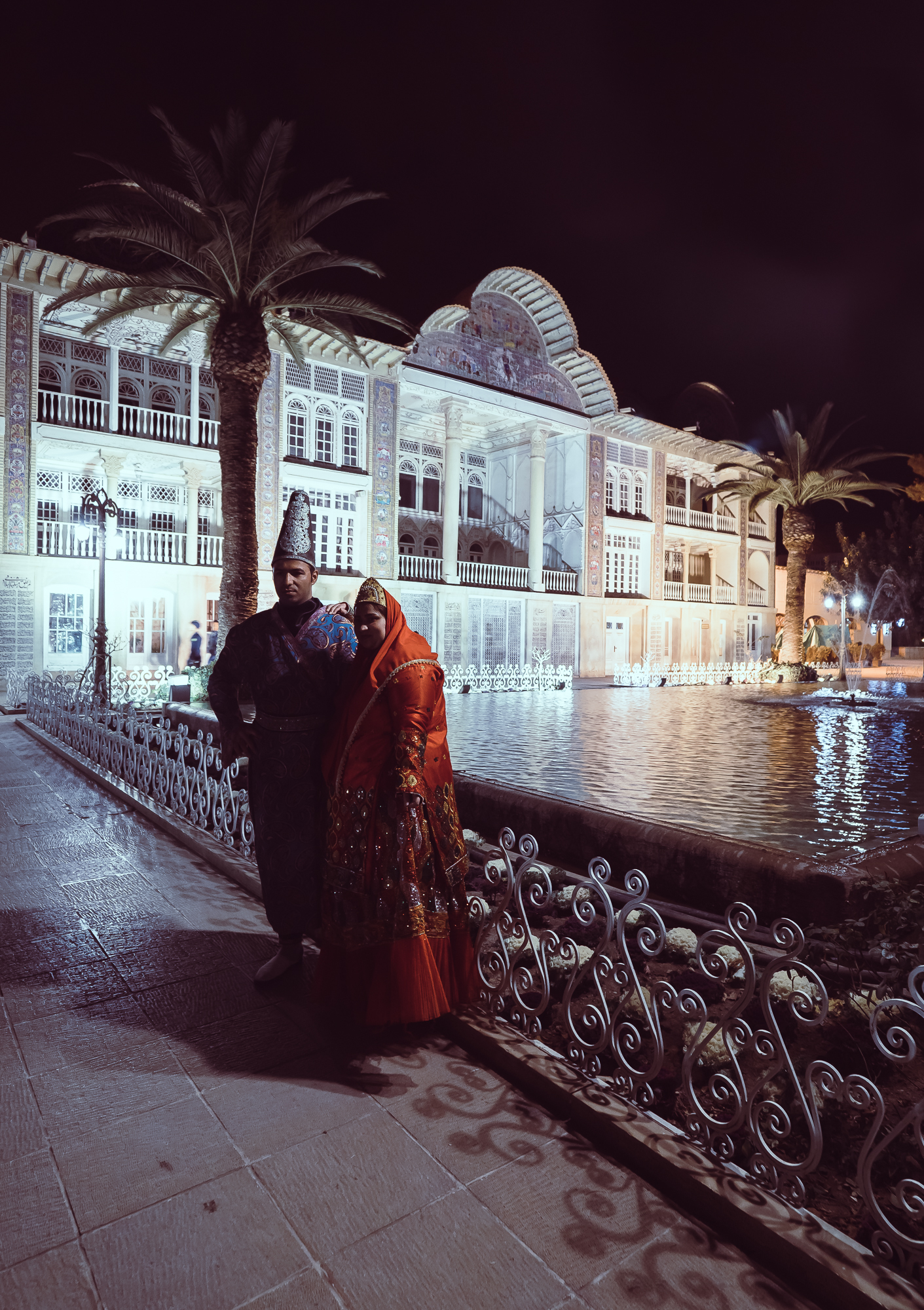
Eram Garden
A couple posing in front of Qavam House, built almost 150 years ago.
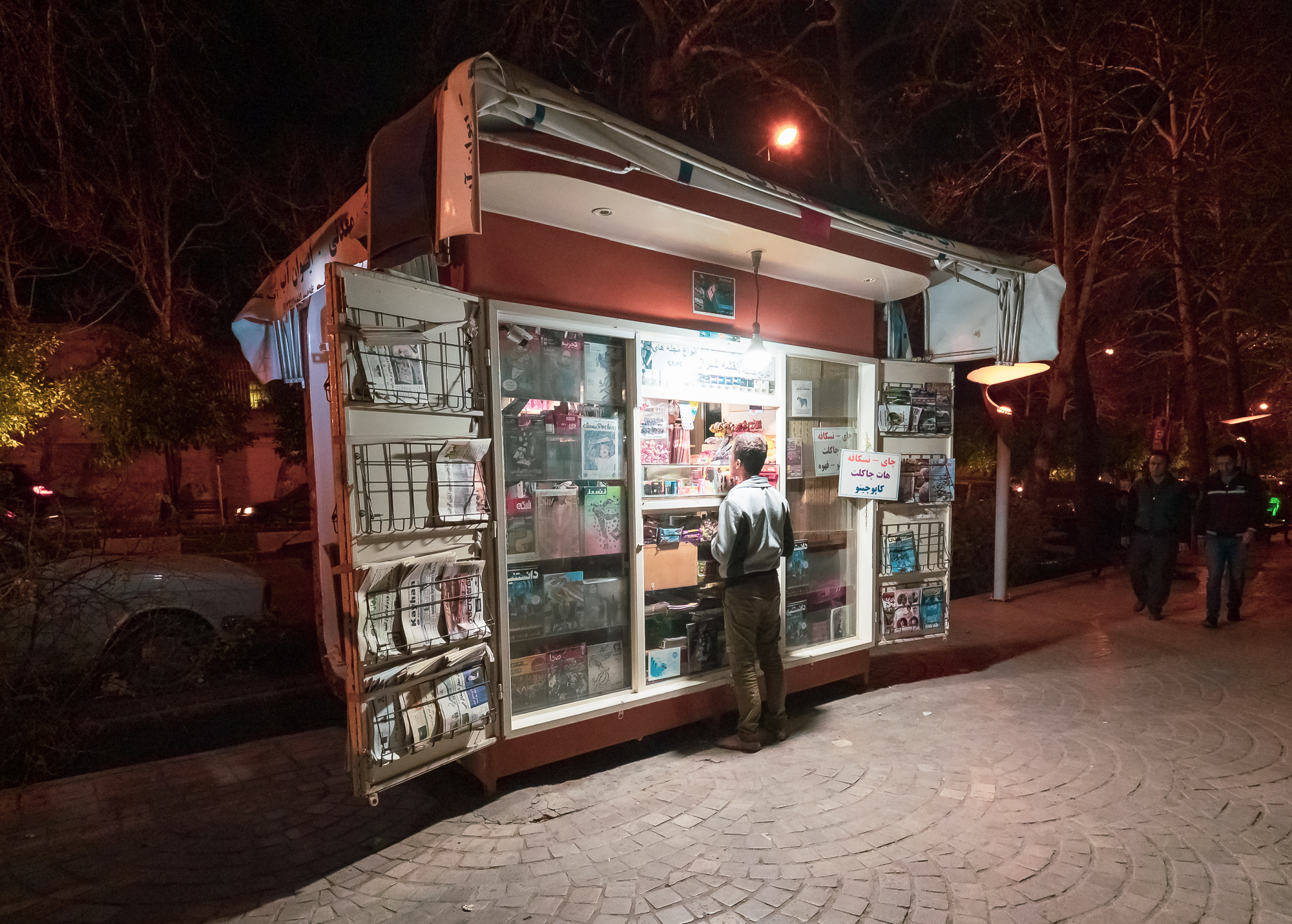
Shopping
A stall outside the Eram Garden.
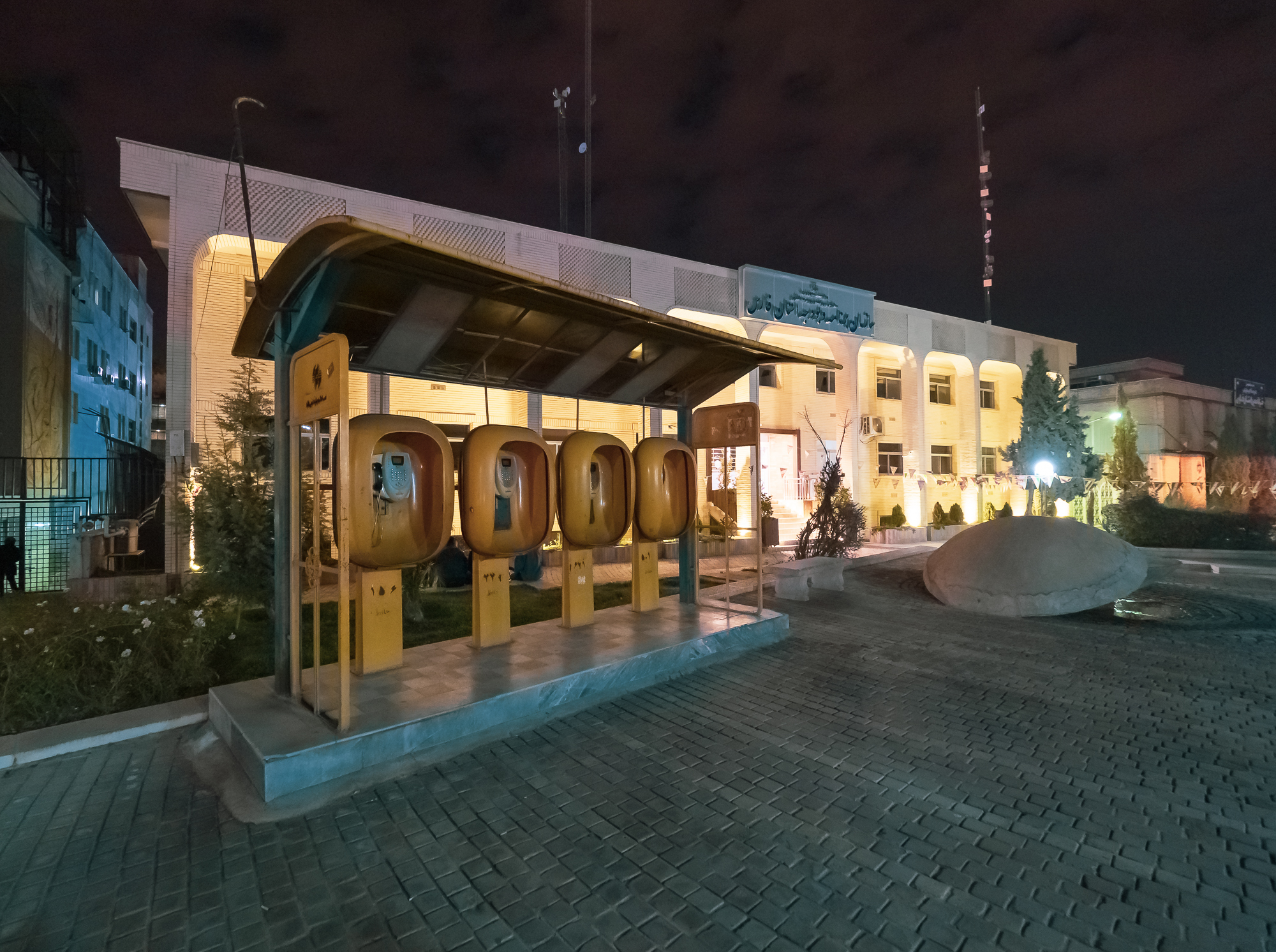
Old School
Seems there was a time where people made a lot of calls.
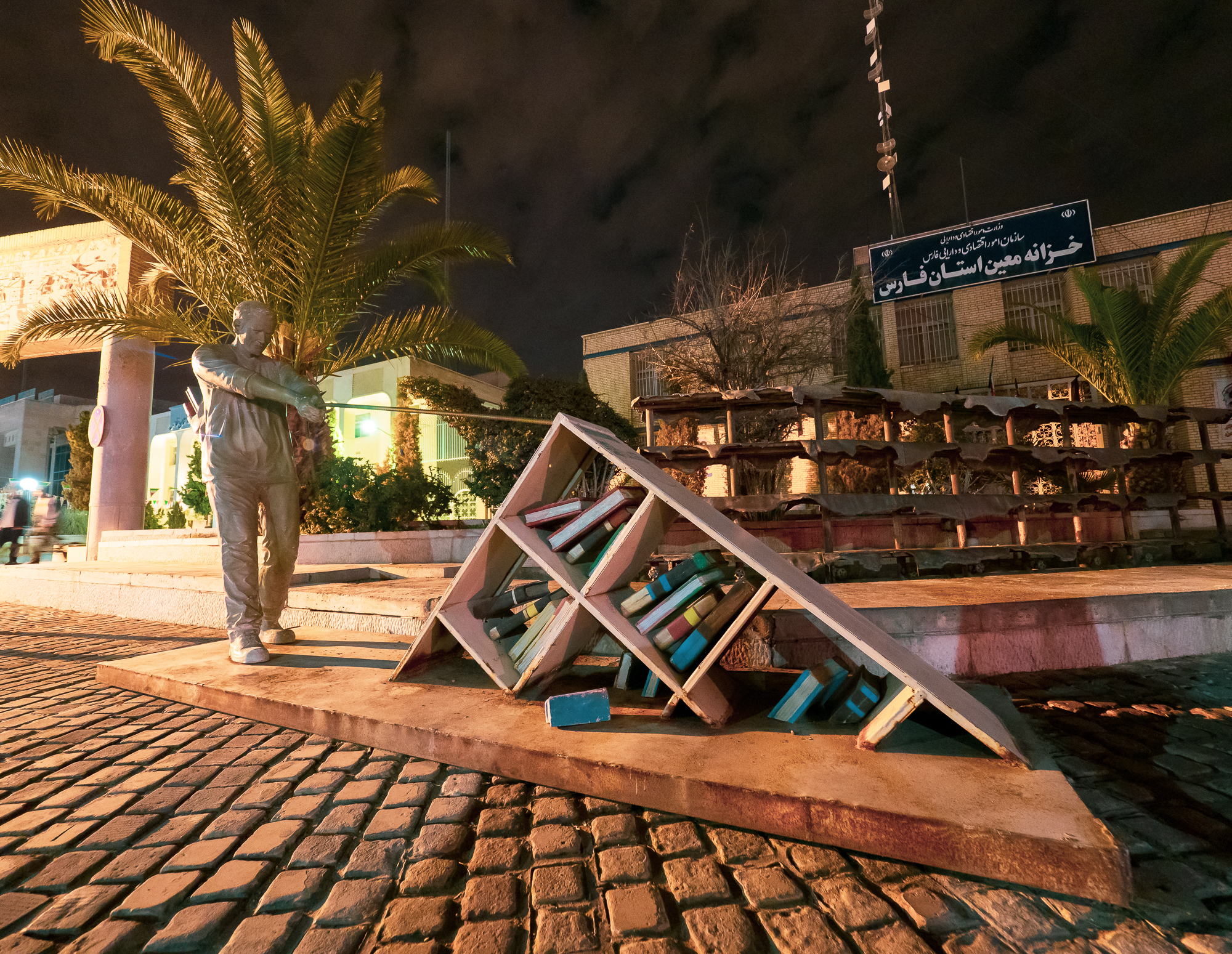
The Pull for Knowledge
A statue close to the Tomb of Hafez.
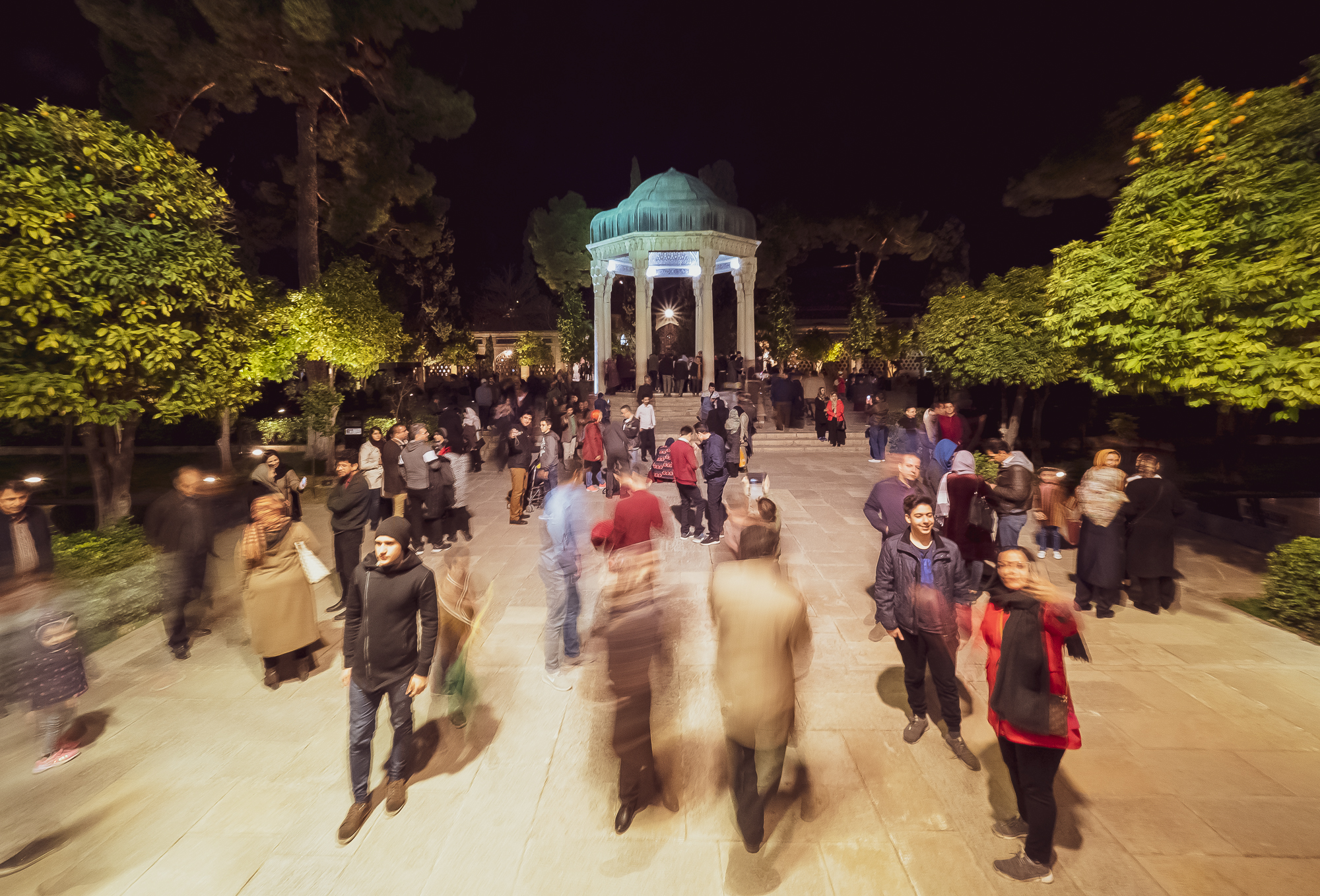
Tomb of Hafez
The memorial site for Shiraz's and probably Persia's most well known poet.
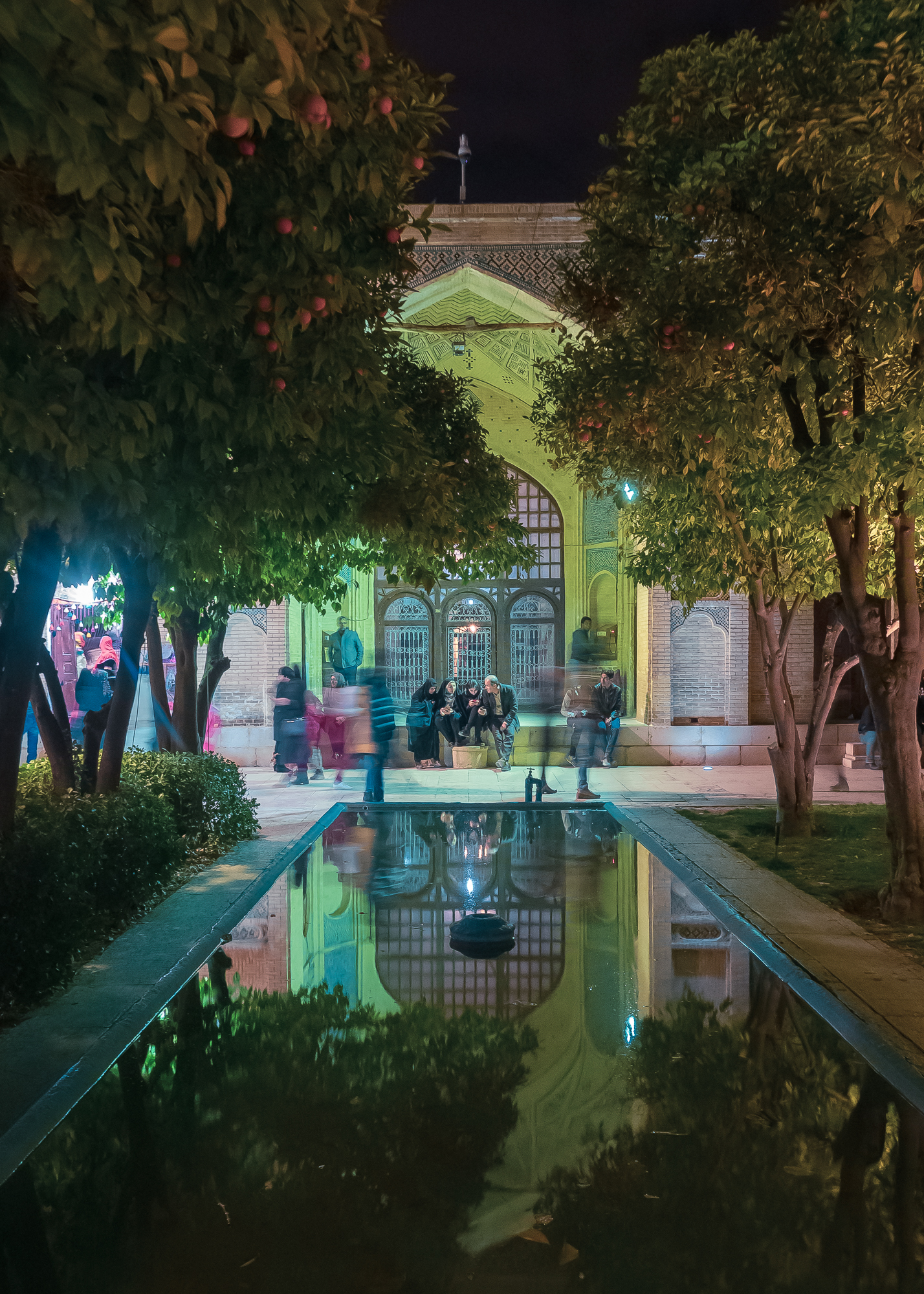
Gardens
The tomb has been expanded with gardens and fountains lined with orange trees in recent years.
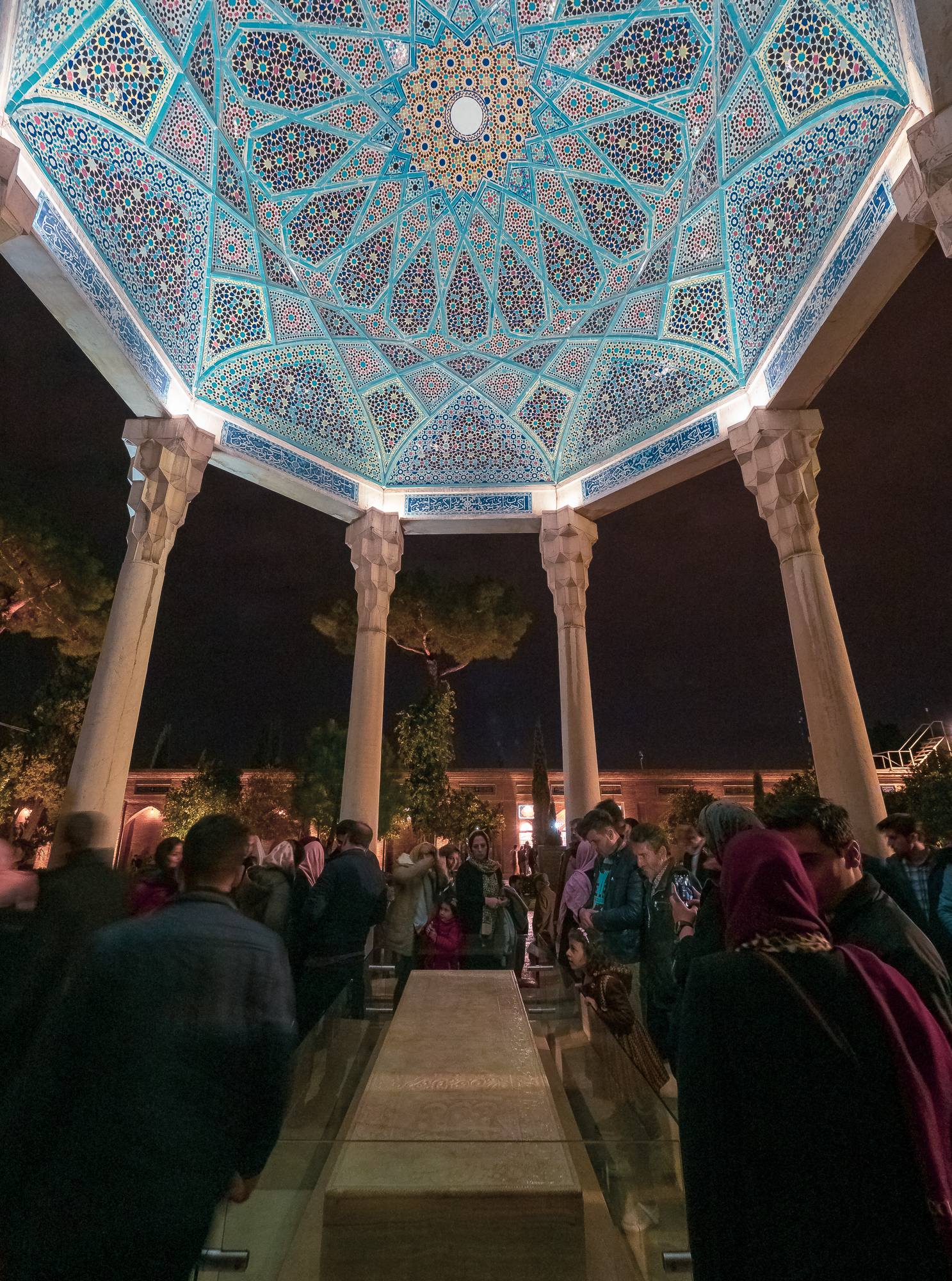
The Tomb
It was a busy public holiday weekend and the tomb attracts a lot of local visitors, reading the poet's work at the monument.

Shop
The place to buy the poet's works - crowded! Might be worth a read...

Joining the Master
Several tombs of other artists and poets have been added in surrounding buildings.
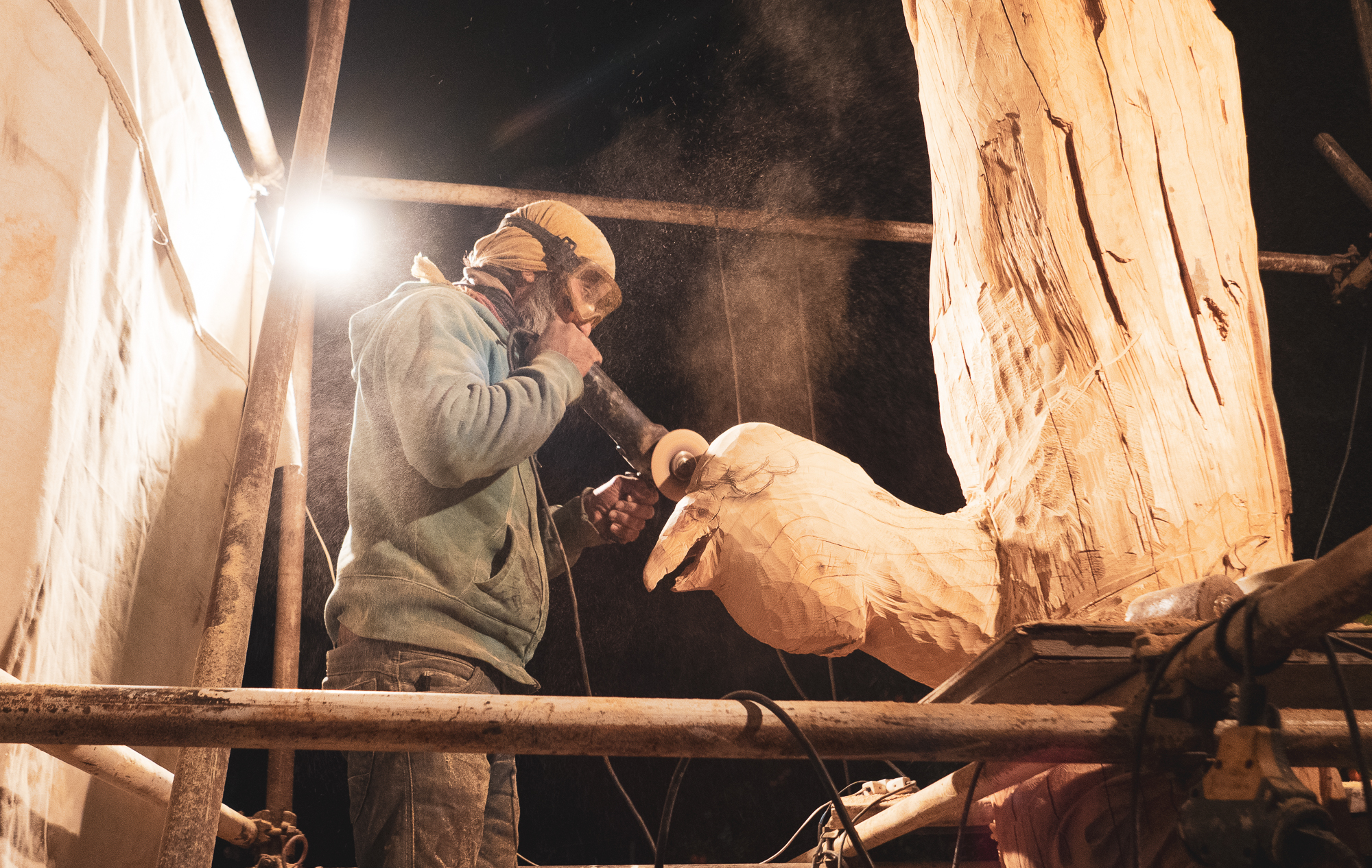
Arts and Crafts
Shiraz is a vibrant cultural and artsy city - Jahan Nama Garden is currenty being enhanced with wooden pillars featuring bird sculptures.
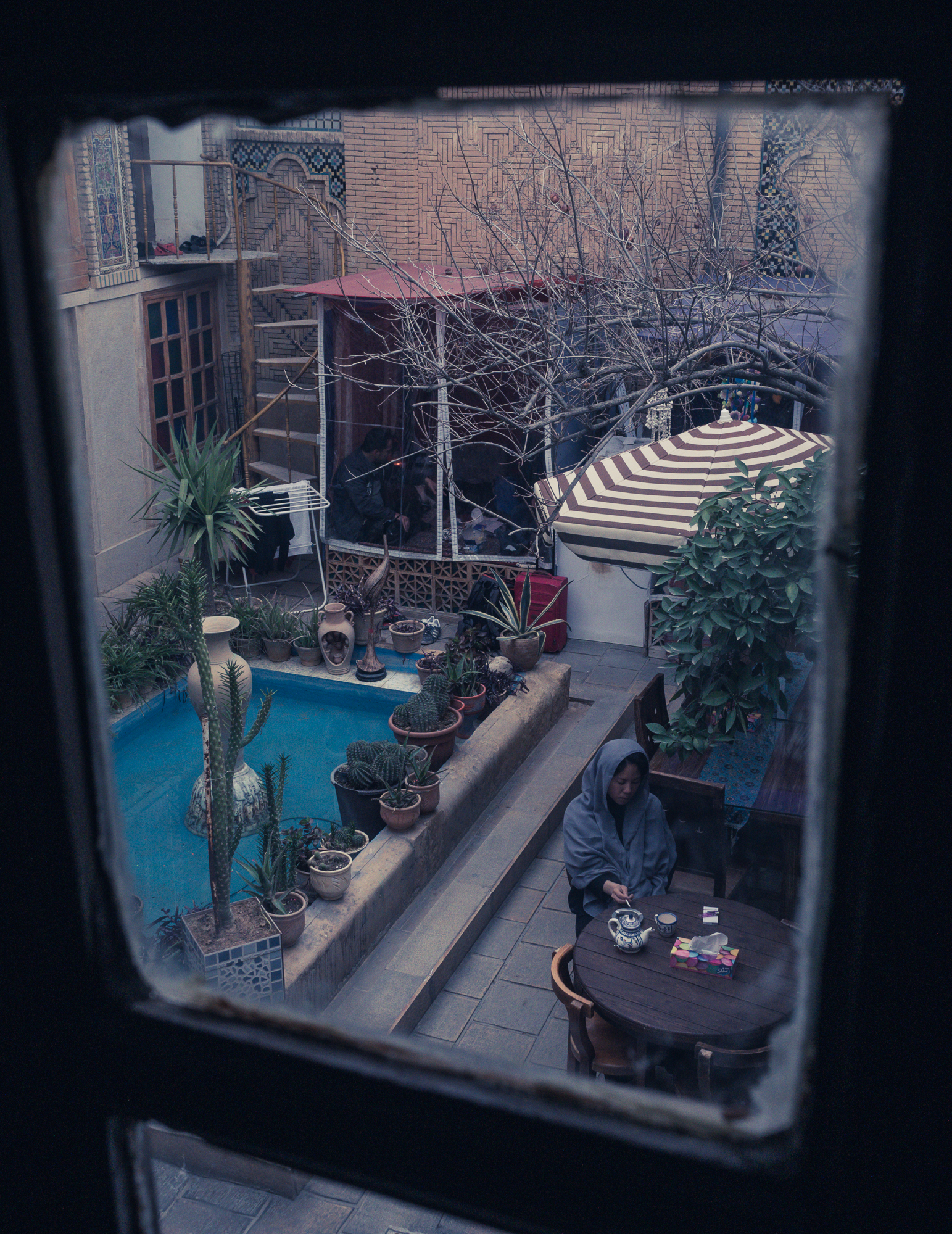
Morning Views
Looking out the window into the courtyard in the morning.
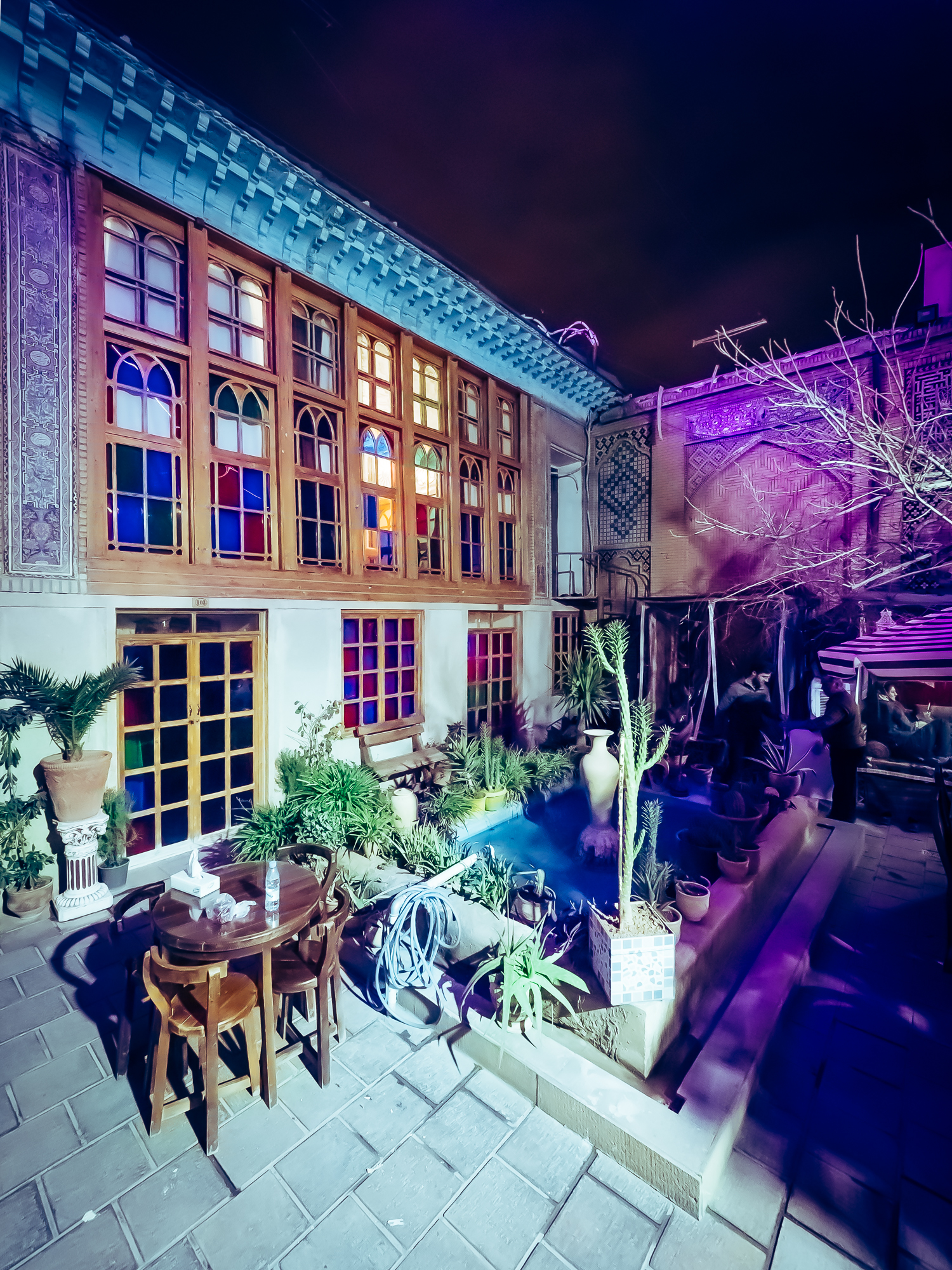
Iranian Hospitality
Taha Traditional Hotel in the old city was a good place to stay.
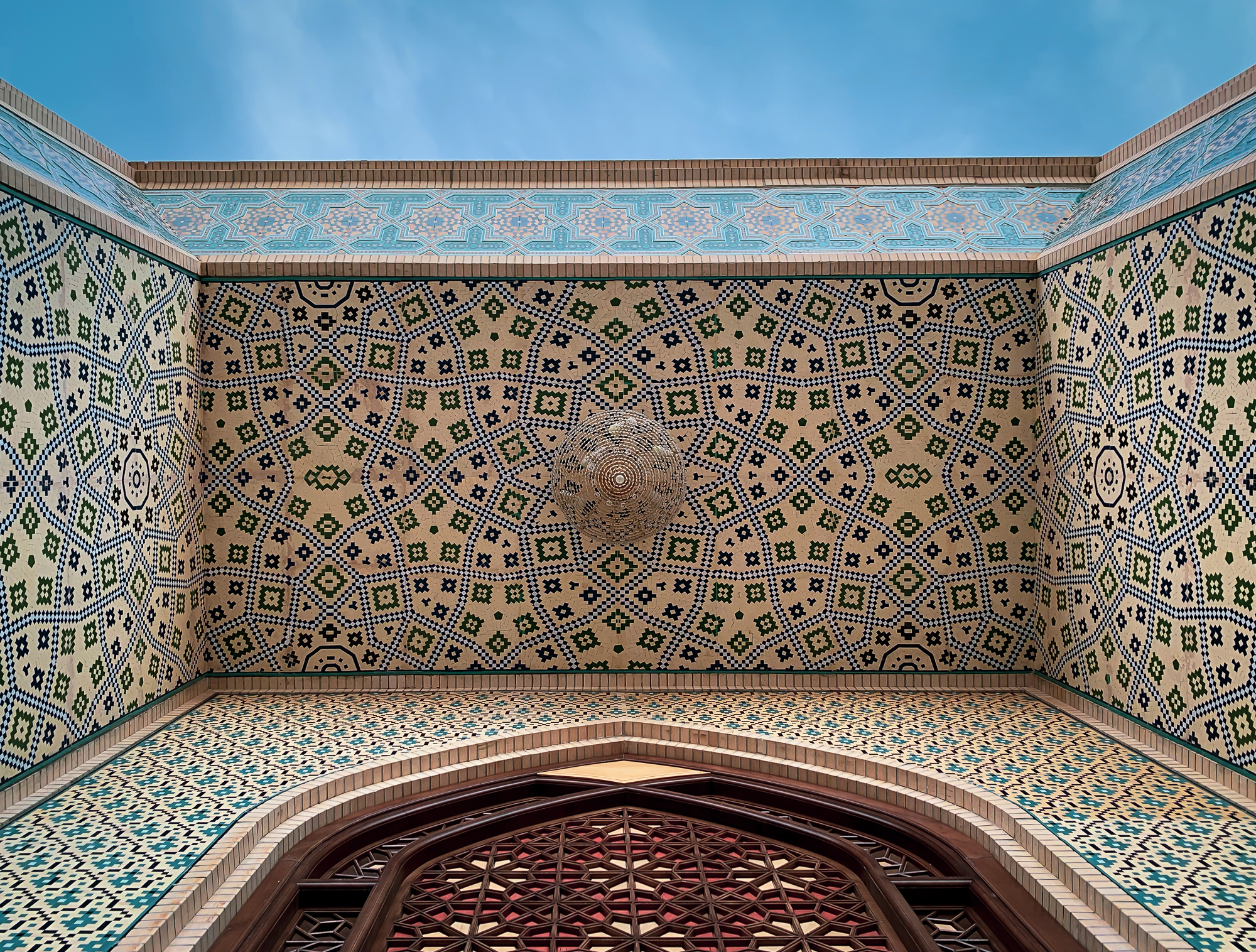
Entrance
The northerly entrance to Shāh-é-Chérāgh Mosque complex, with its beautiful tiles that Iran is famous for.

Devotion
A man kissing the entrance door to the complex.

Facade
The facade has intricate tile and paint work.
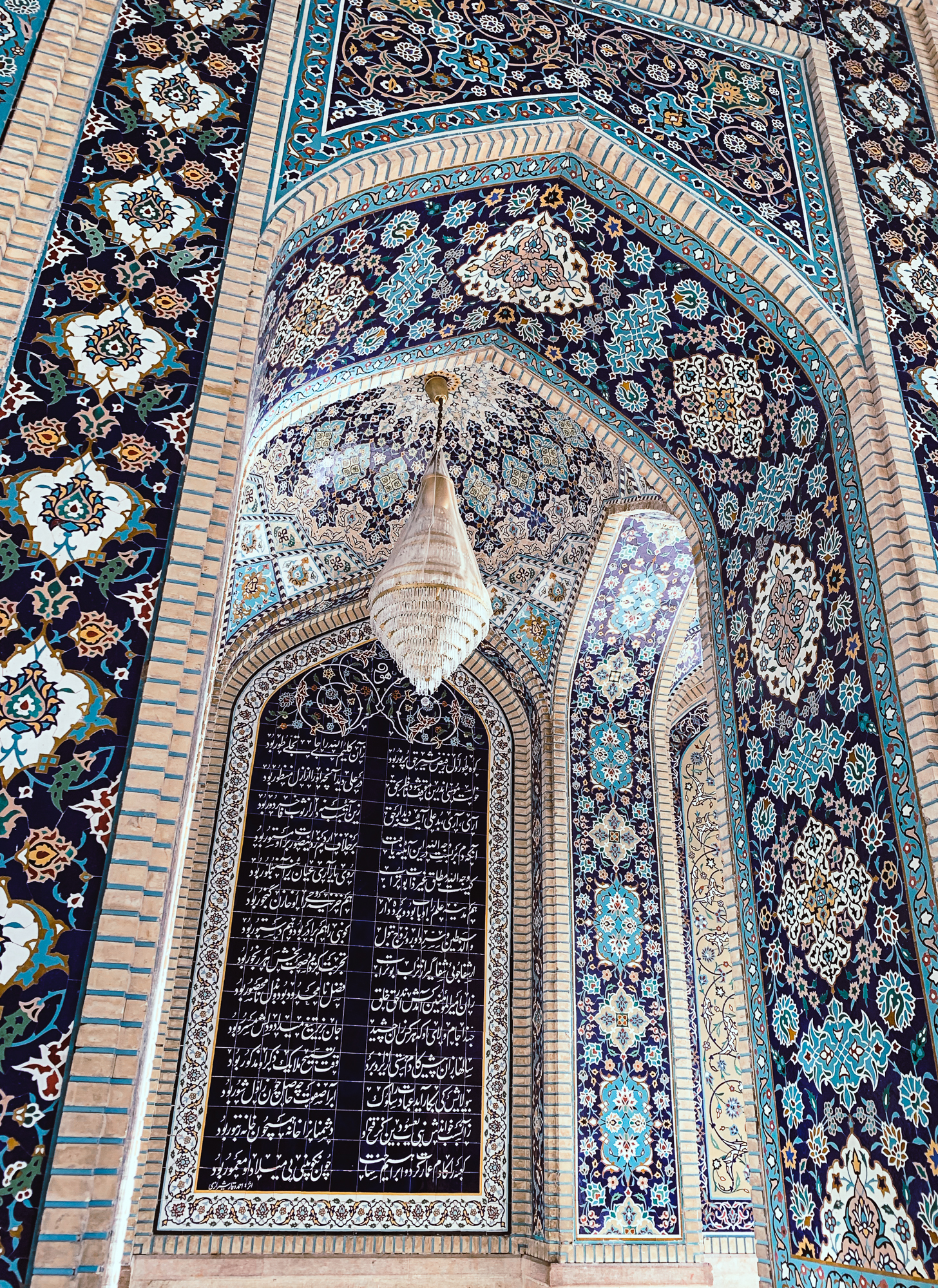
Tile glory
The site is full of beautiful tile walls and ceilings.
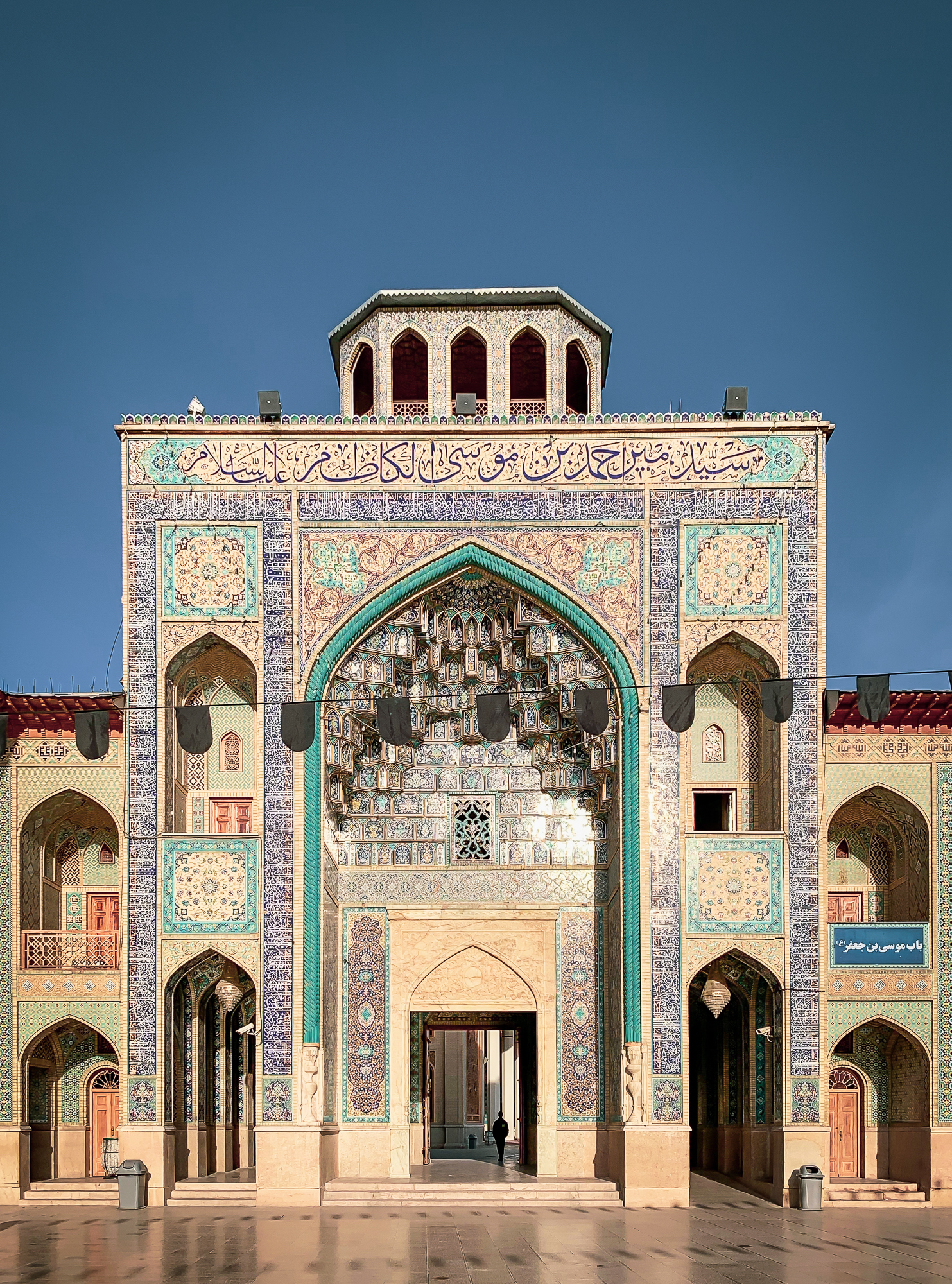
Passage
The passage way next to the Holy Shrine.

Shahecheragh Holy Shrine
The Shia Muslim mosque was built in the 12th century, although the dome has been re-constructed several times.

Watching
A man sits on the entrance wall of one of the shrines.
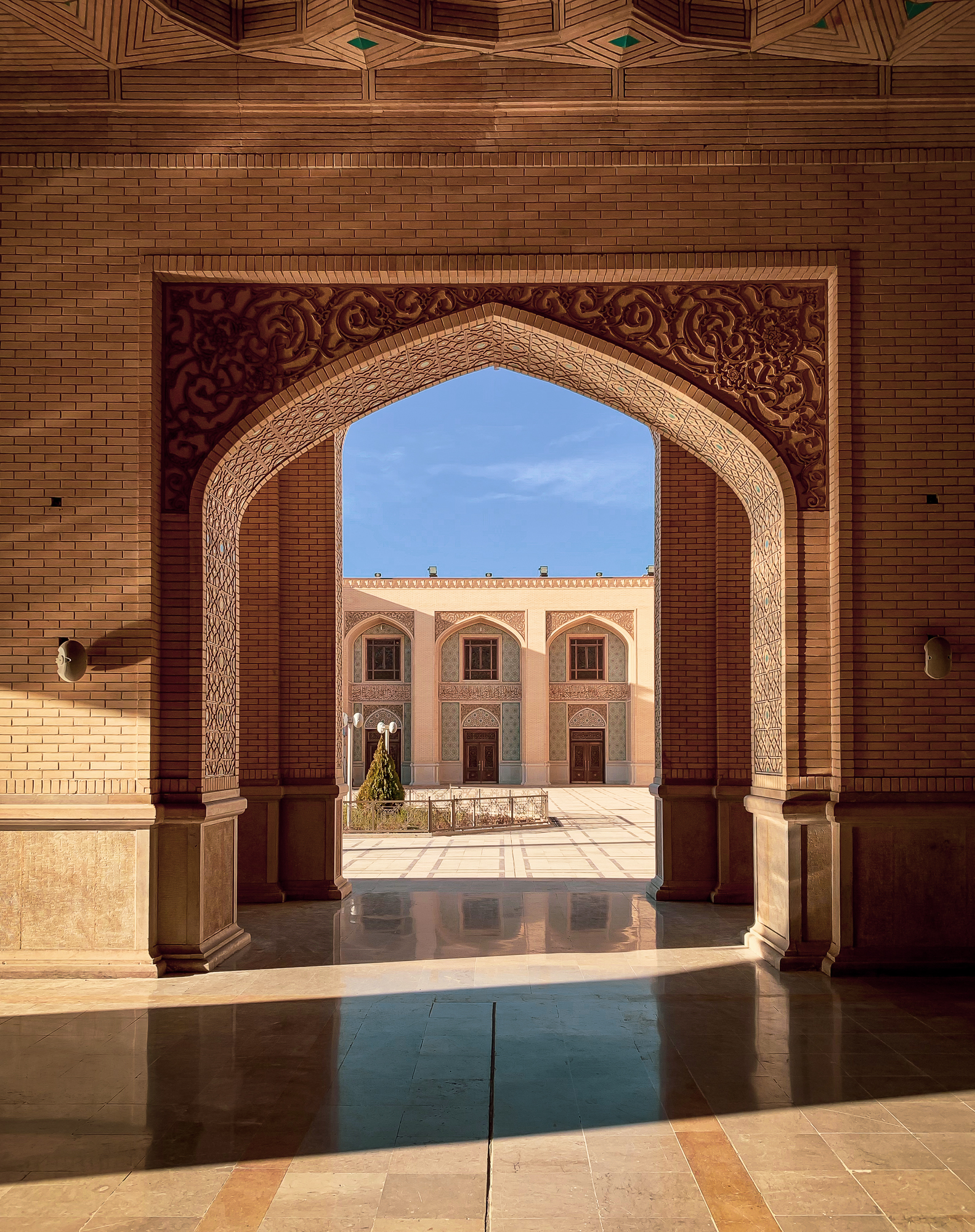
Persian Architecture
Beautiful spots all around.
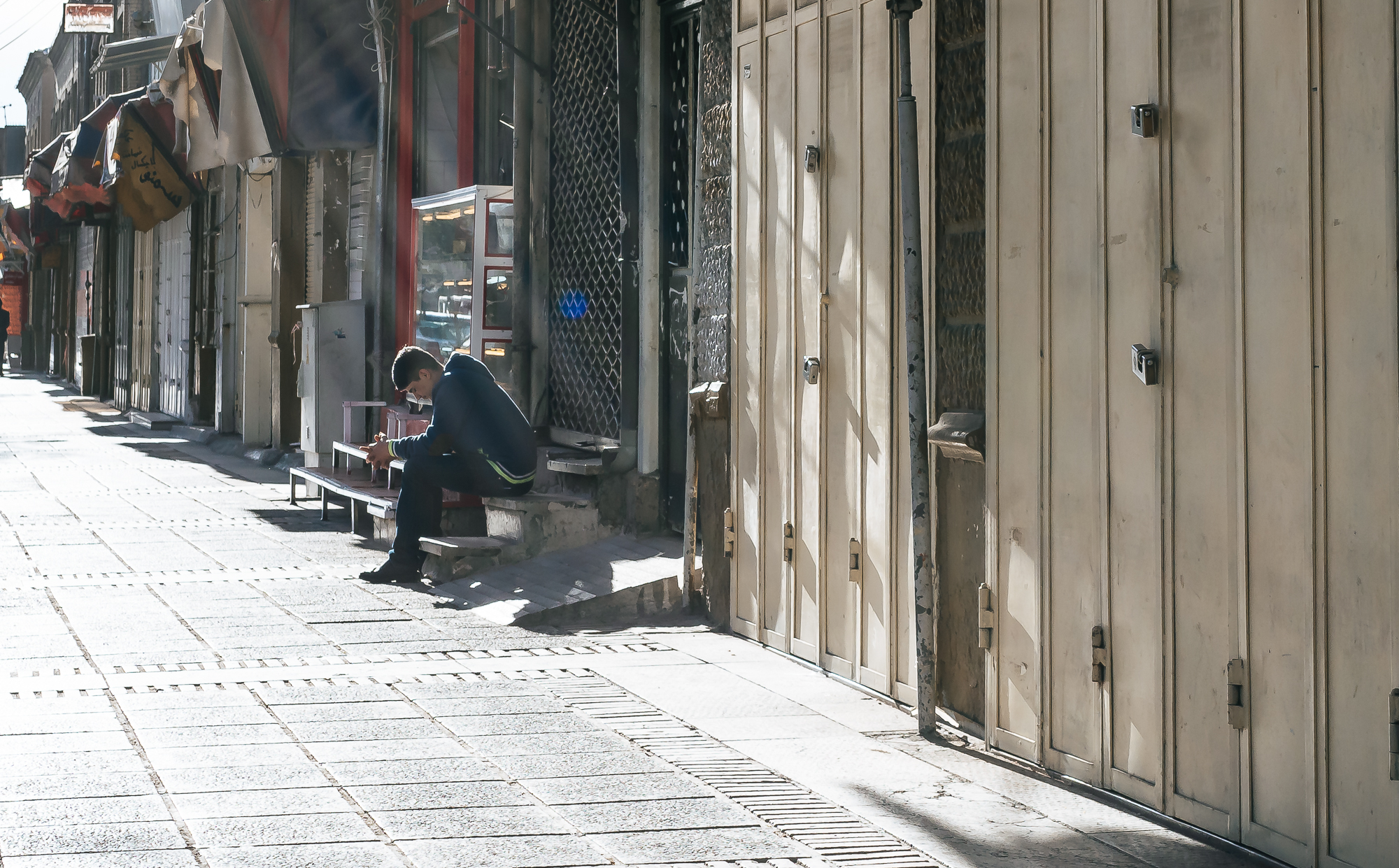
Quiet
It was a public holiday and many shops were closed and streets less busy than usual.
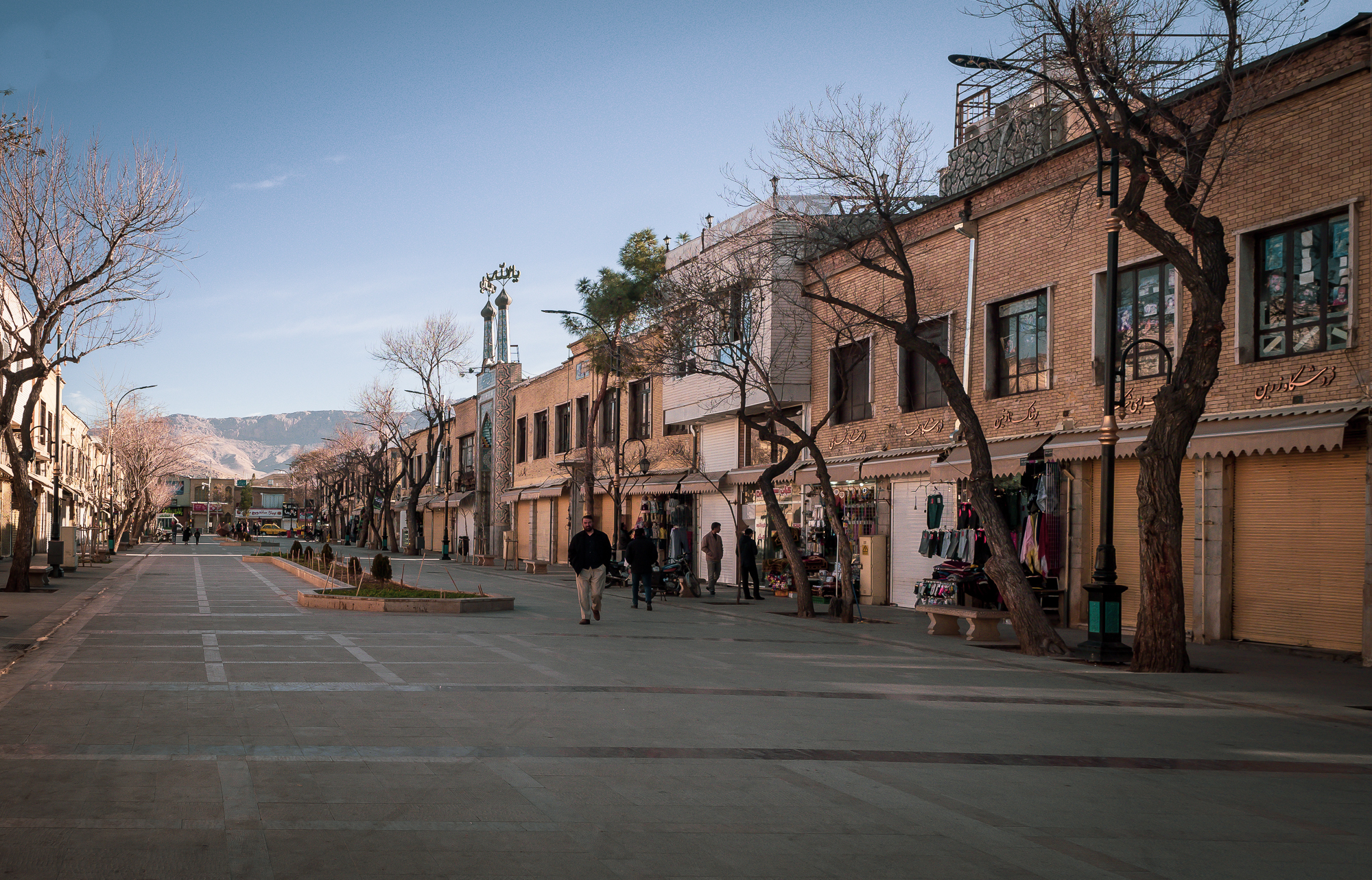
Pedestrian Area
Shiraz features beautiful public places.
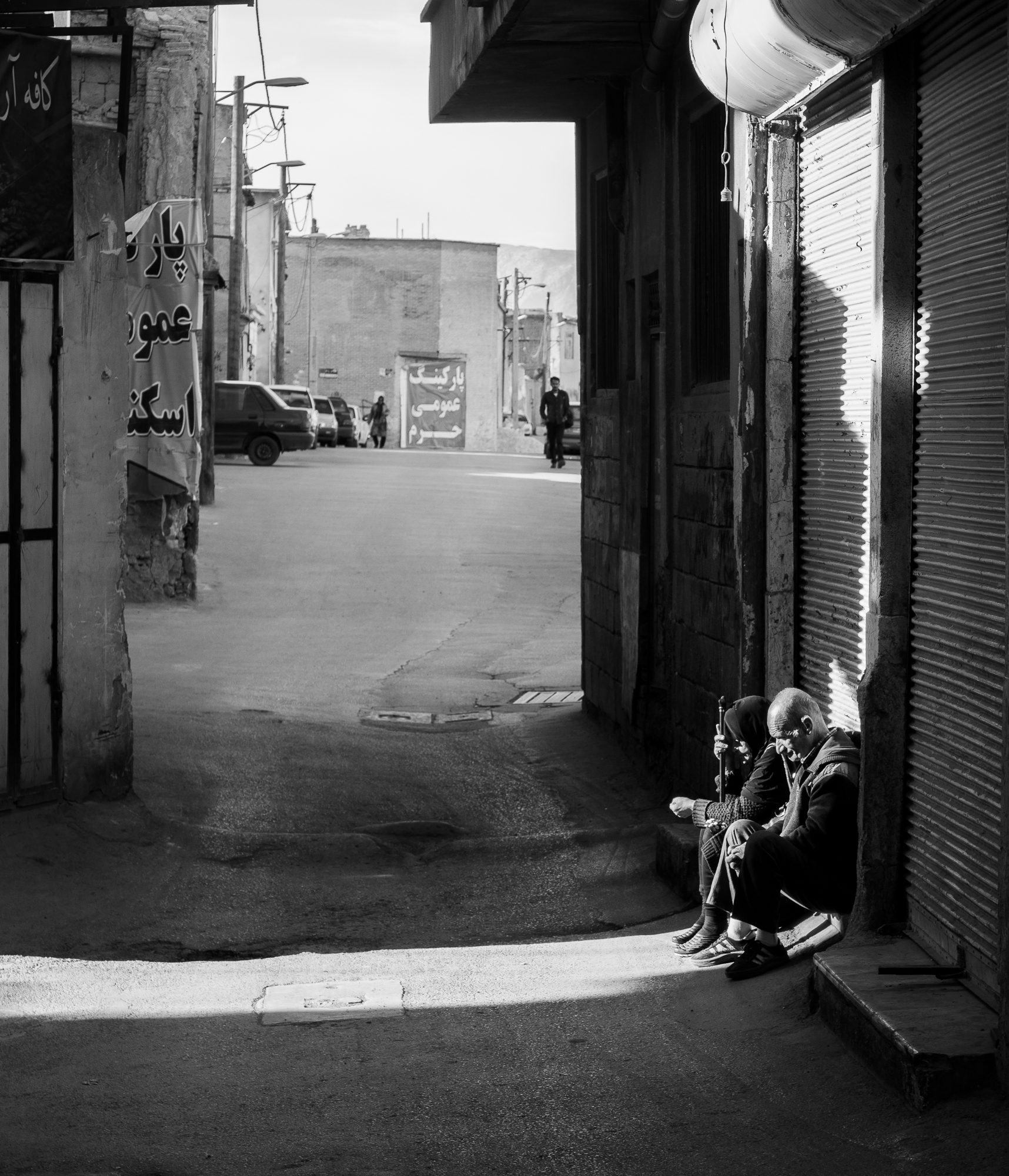
In the Sunshine
A couple enjoying the winter sun rays.
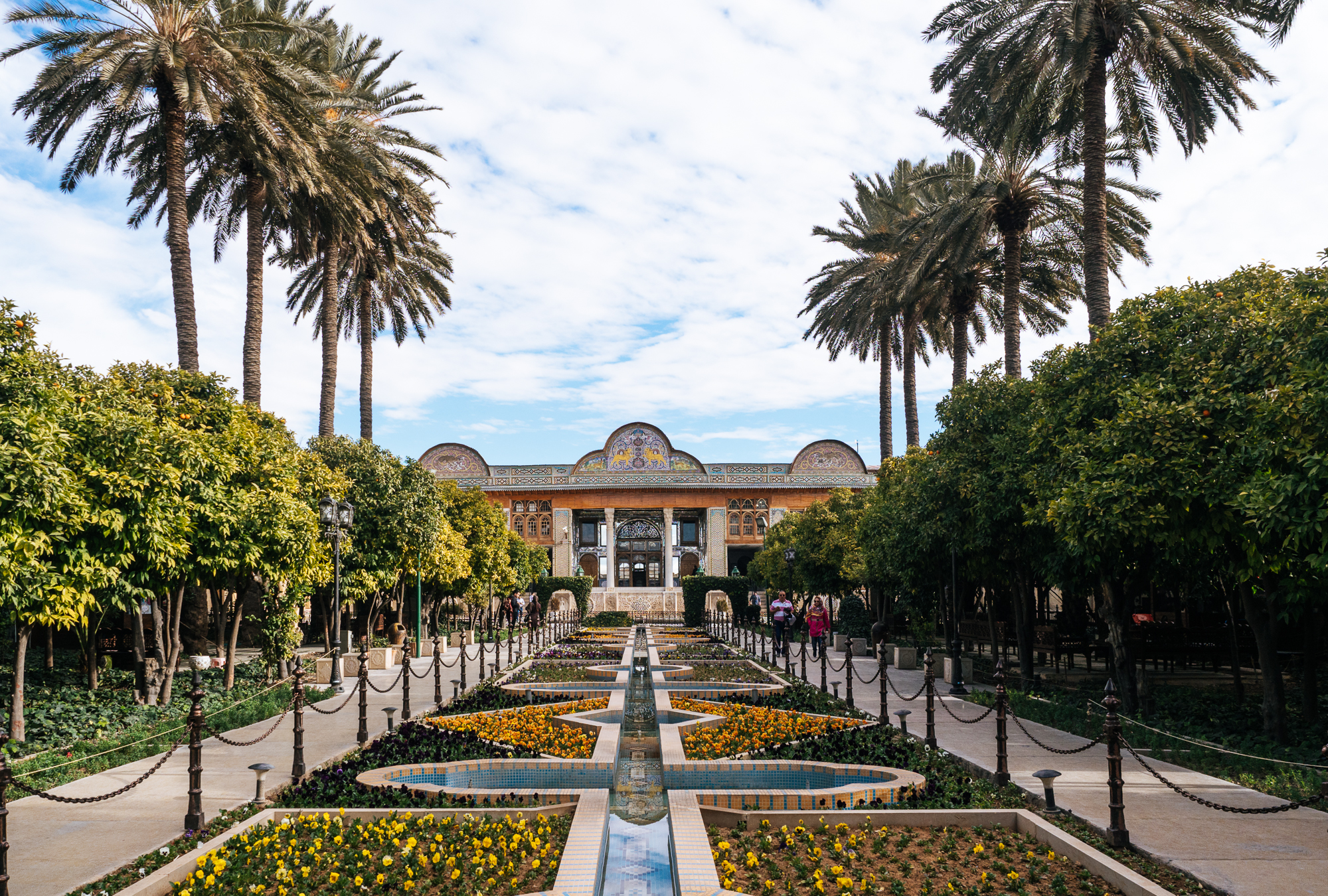
Naranjestan Qavam
A 19th century building with its lush gardens, now housing a museum with archaeological artifacts.
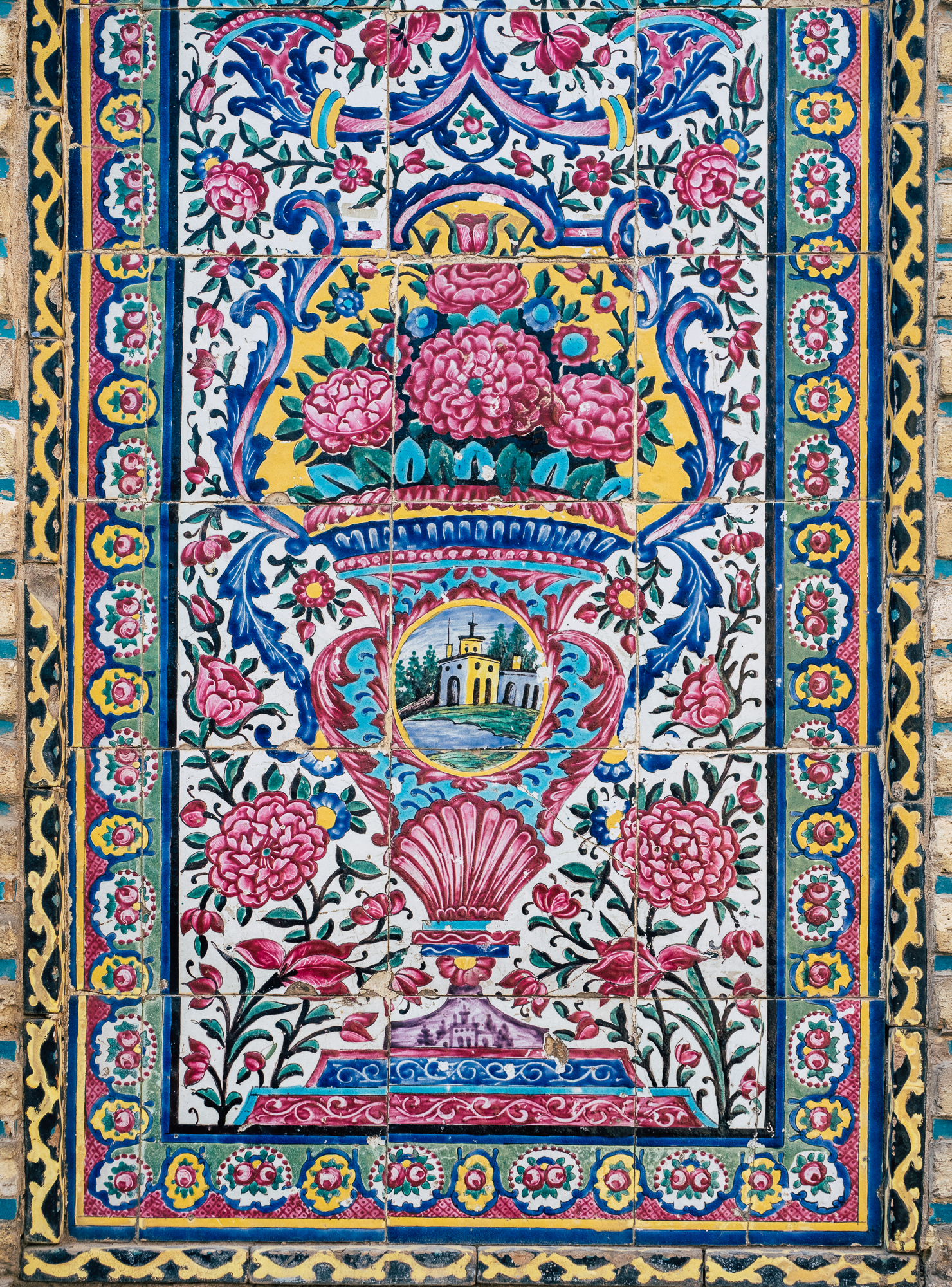
Influences
Many paint and tile works feature European features, such as this church like building.
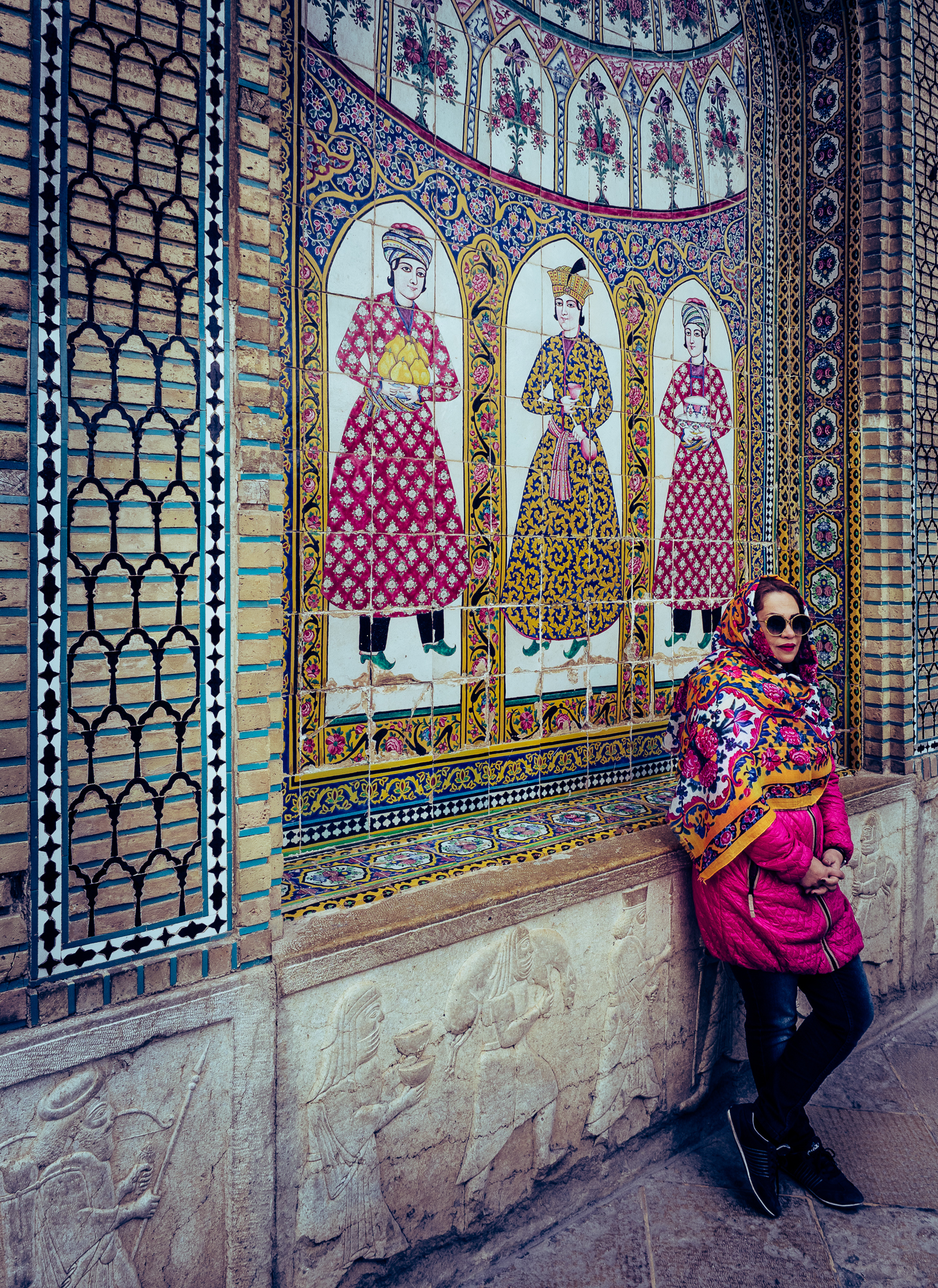
Colour matching
A woman poses in front of the tile walls of the building.
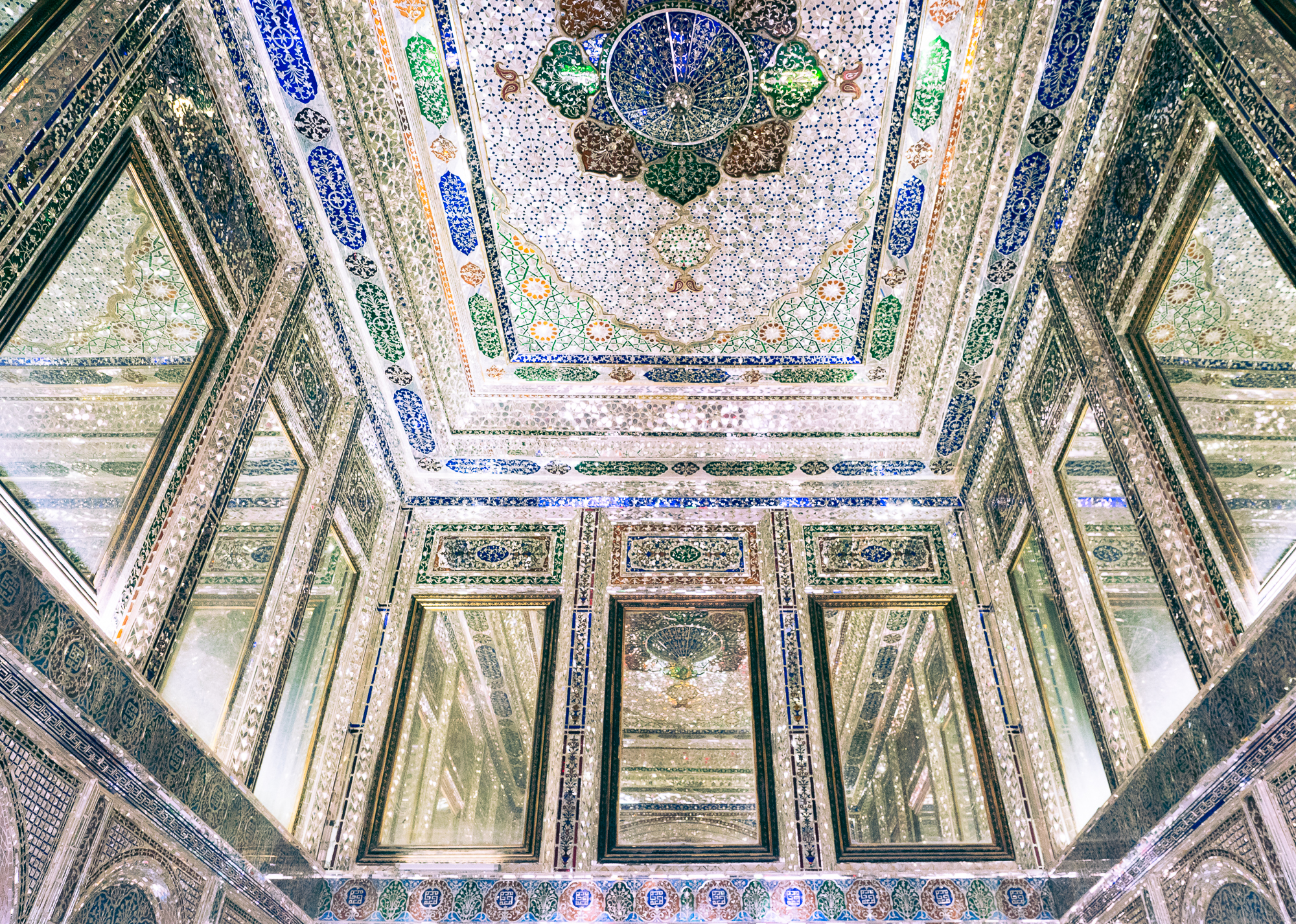
Interiors
The crystal and mirror features of the porch.
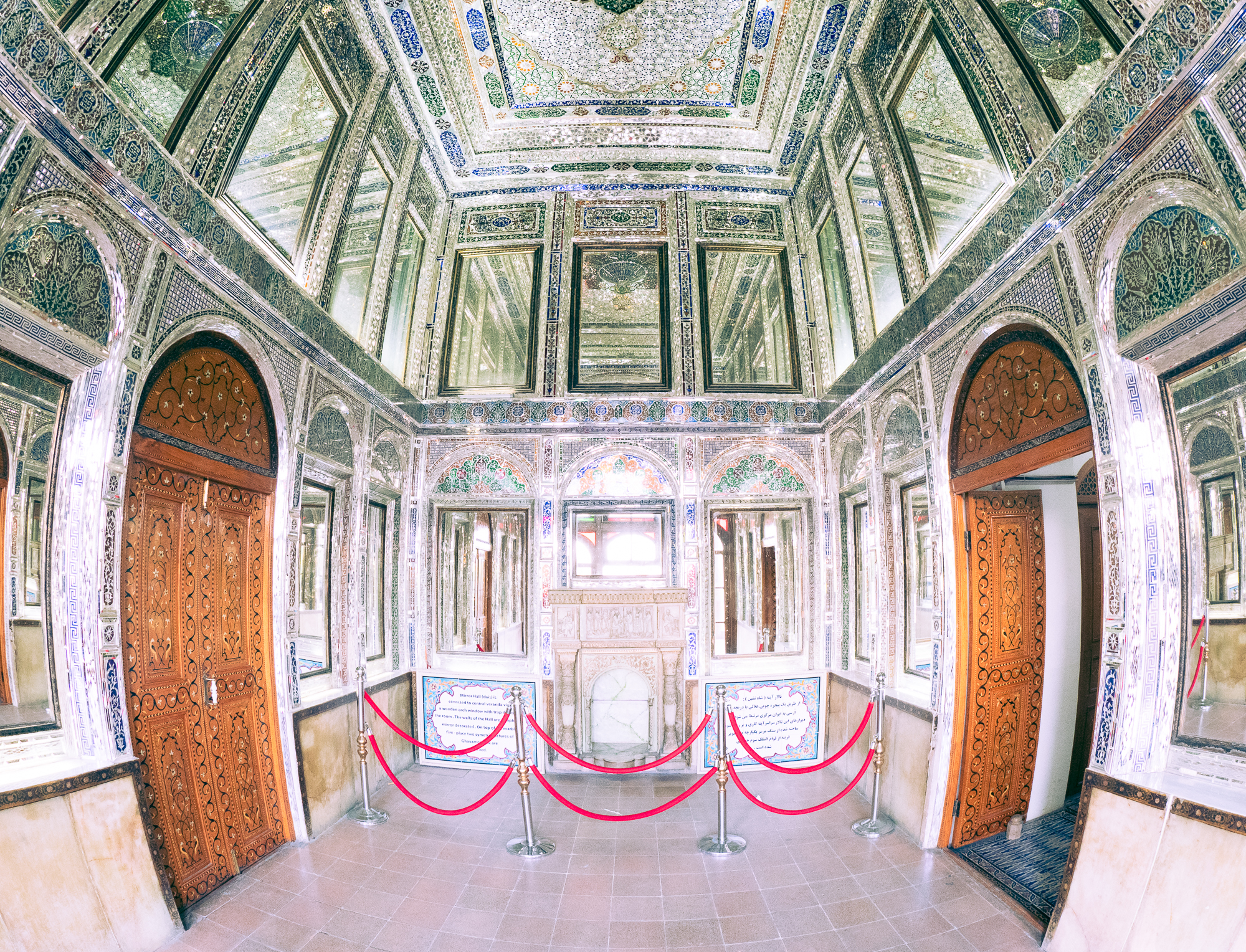
Focal Point
One of the main features of the house.
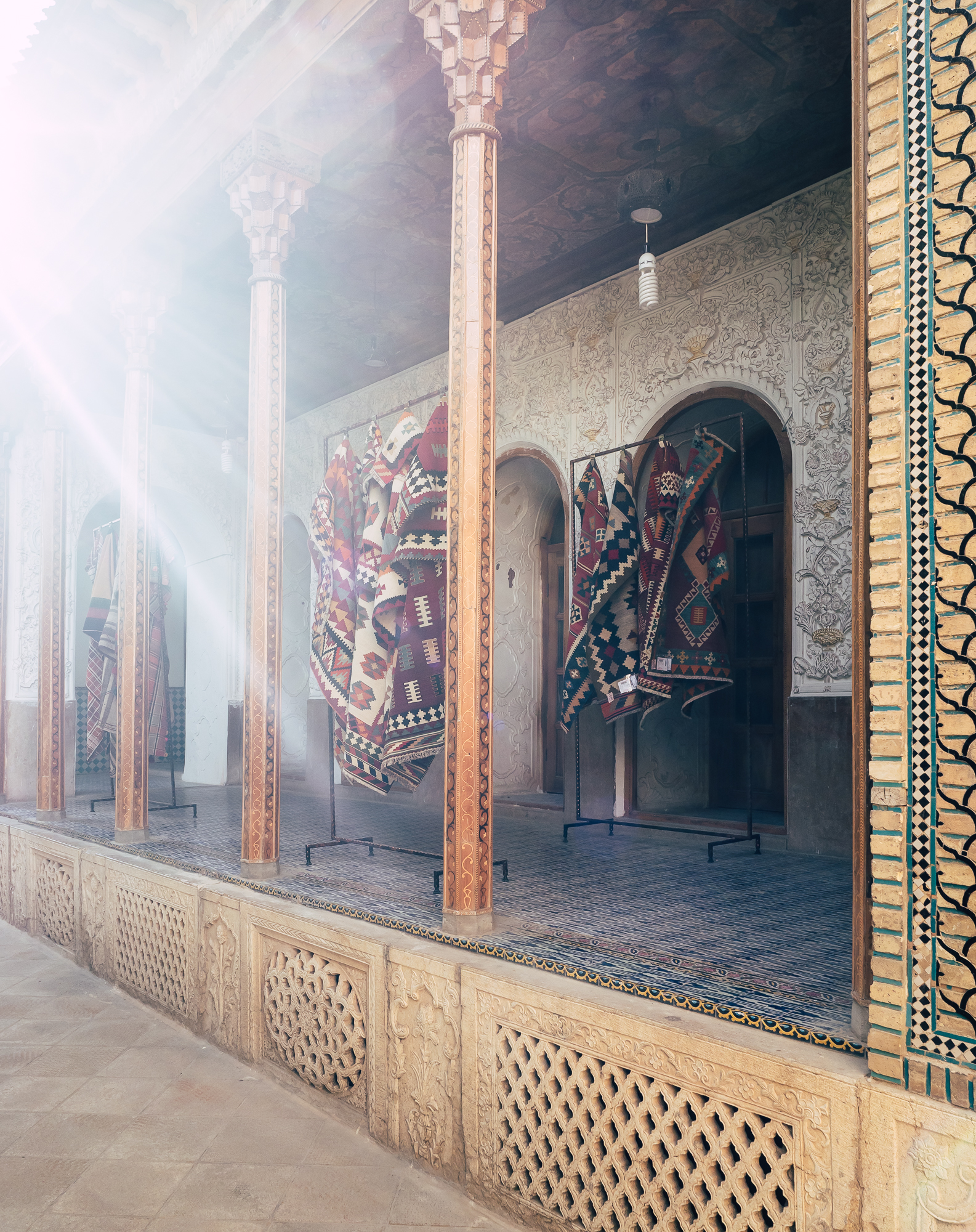
Carpets
Persian carpets for sale.
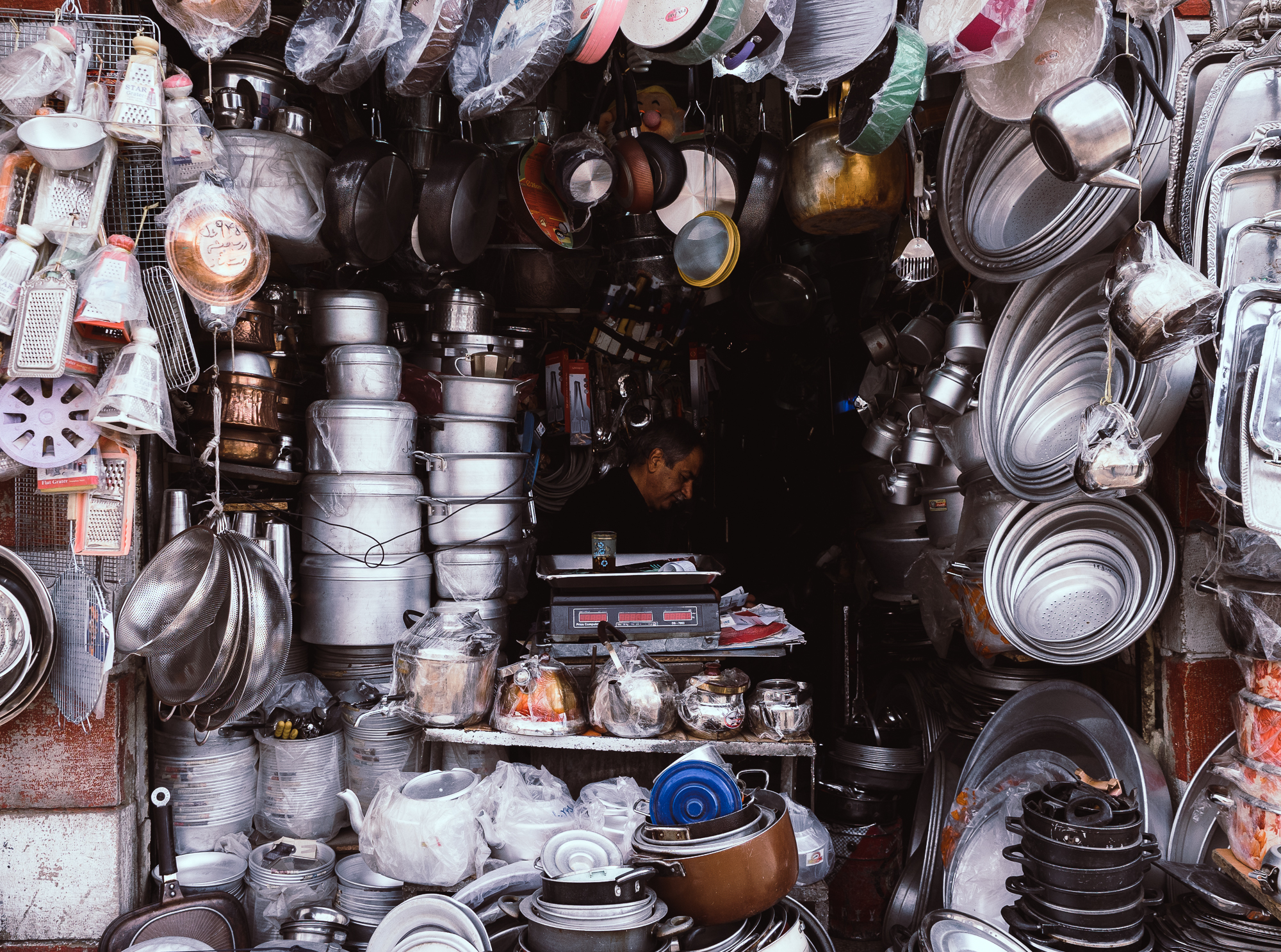
Pots
For all your cooking needs.
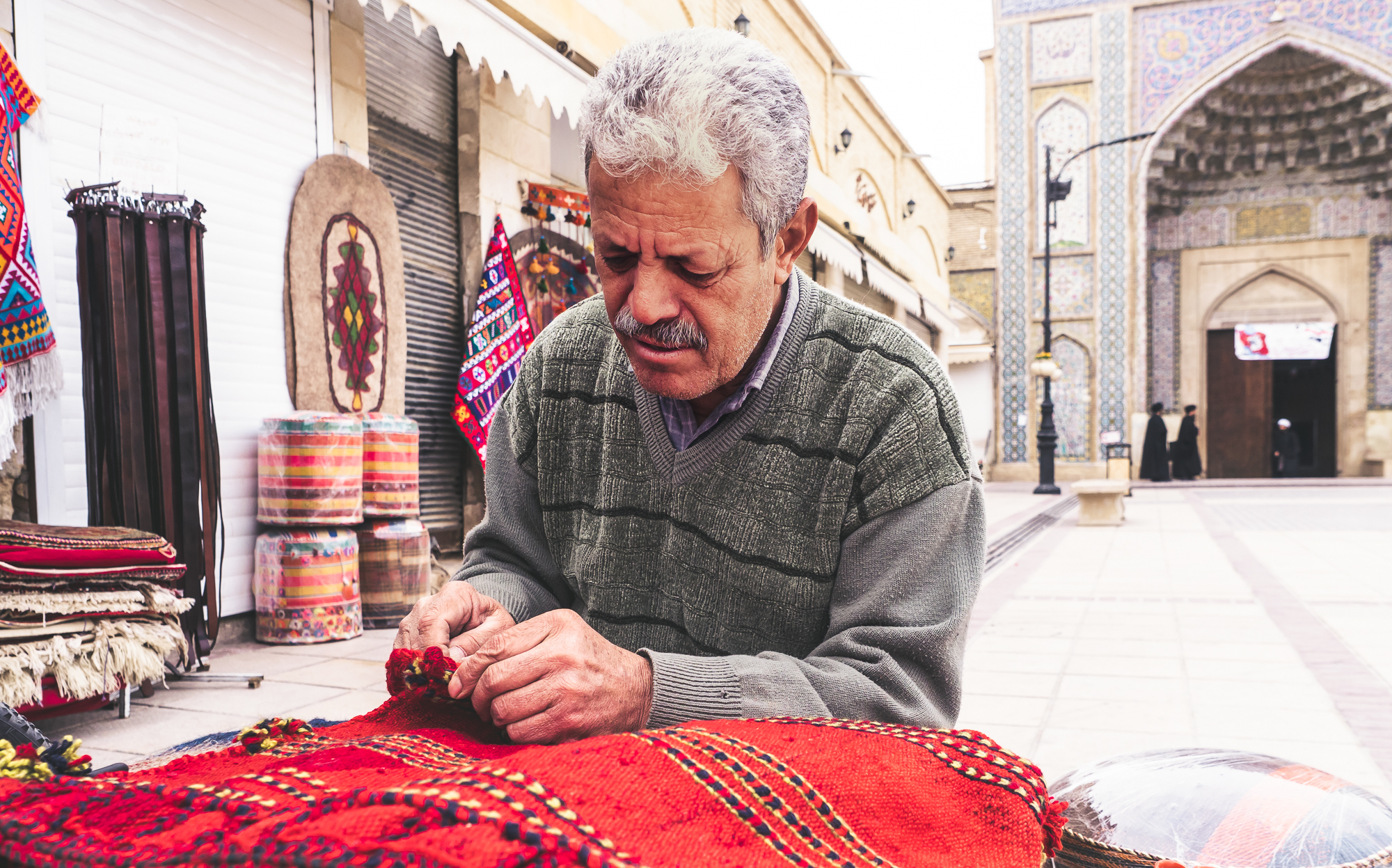
Delicate Work
Carpet weaving is an essential part of Persian culture and Iranian art.
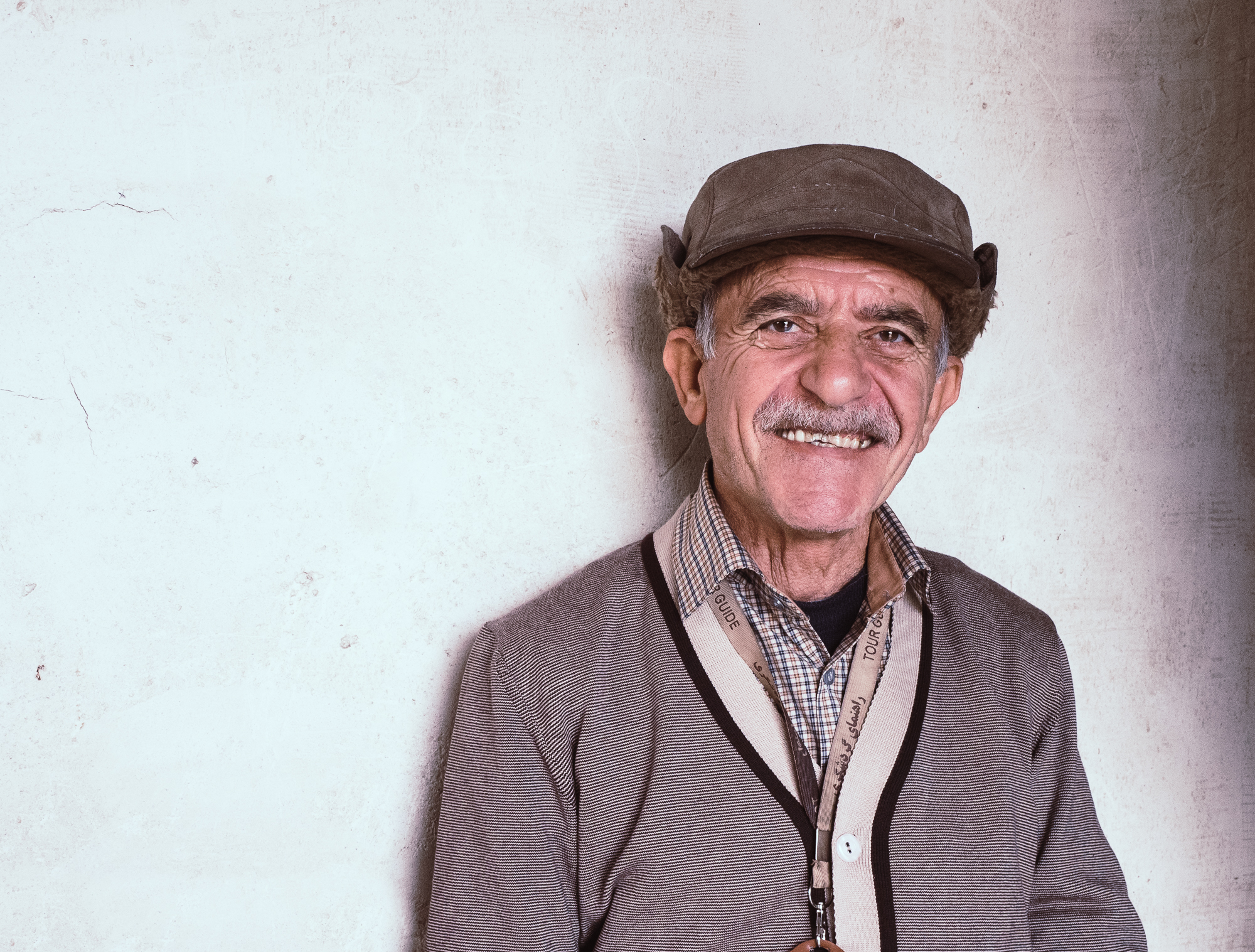
Smiles
Locals were friendly and welcoming.
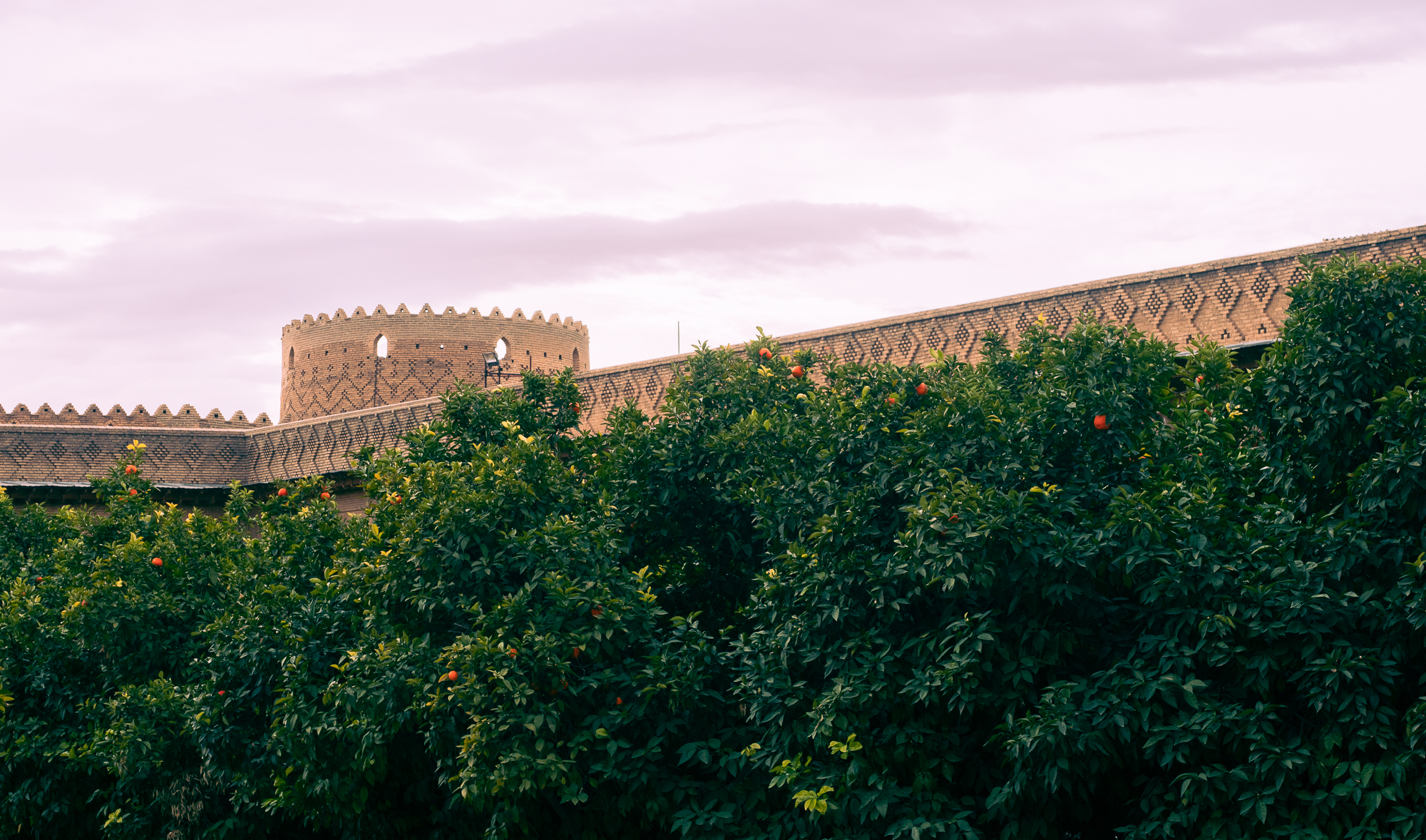
Citadel of Kareem Khan
The interior courtyard of the citadel is now lined with orange trees.
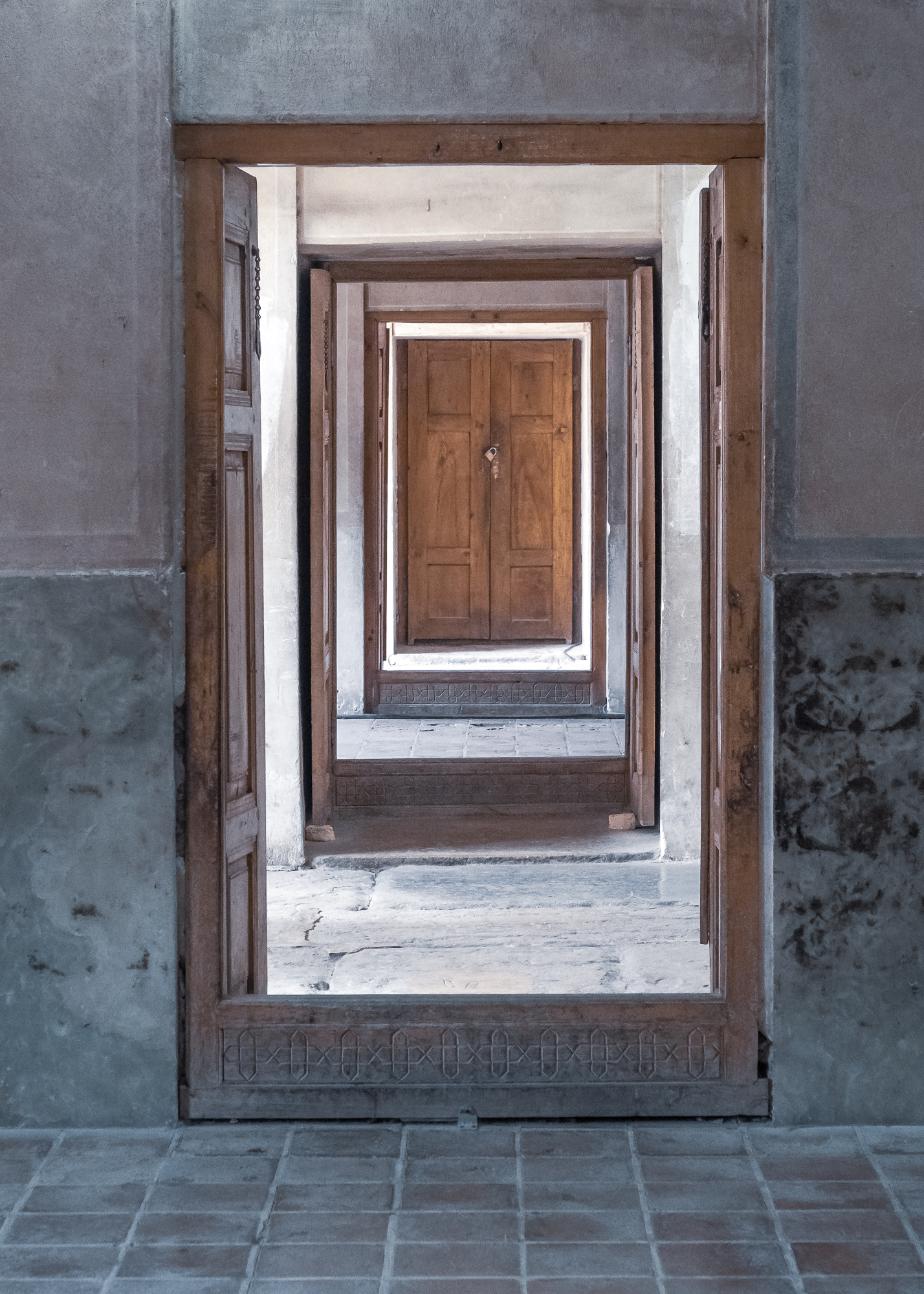
Doors
The main building features several rooms connected by wooden doors.
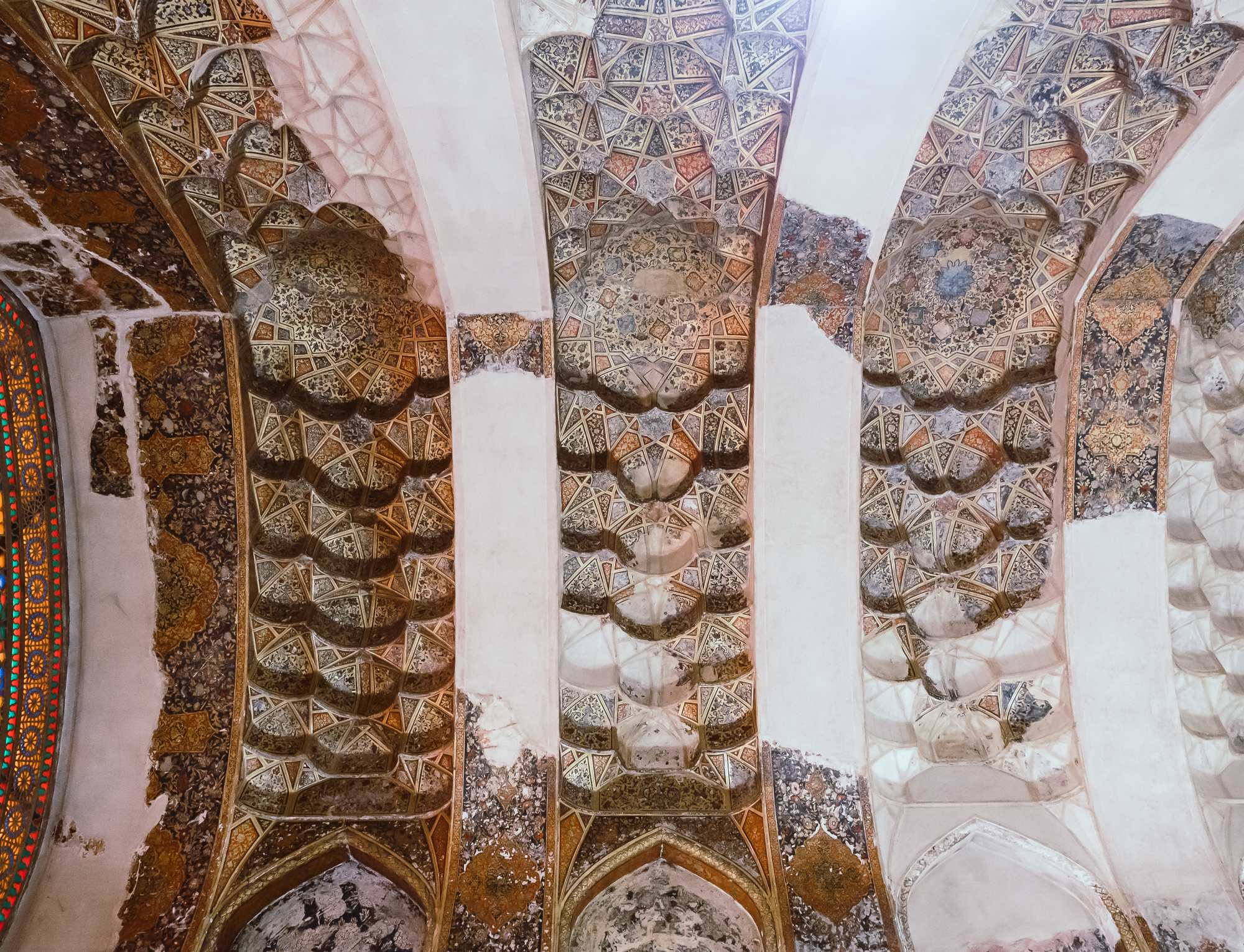
Flexible
The citadel has been a government building, prison, living quarters and museum since it was built 250 years ago.
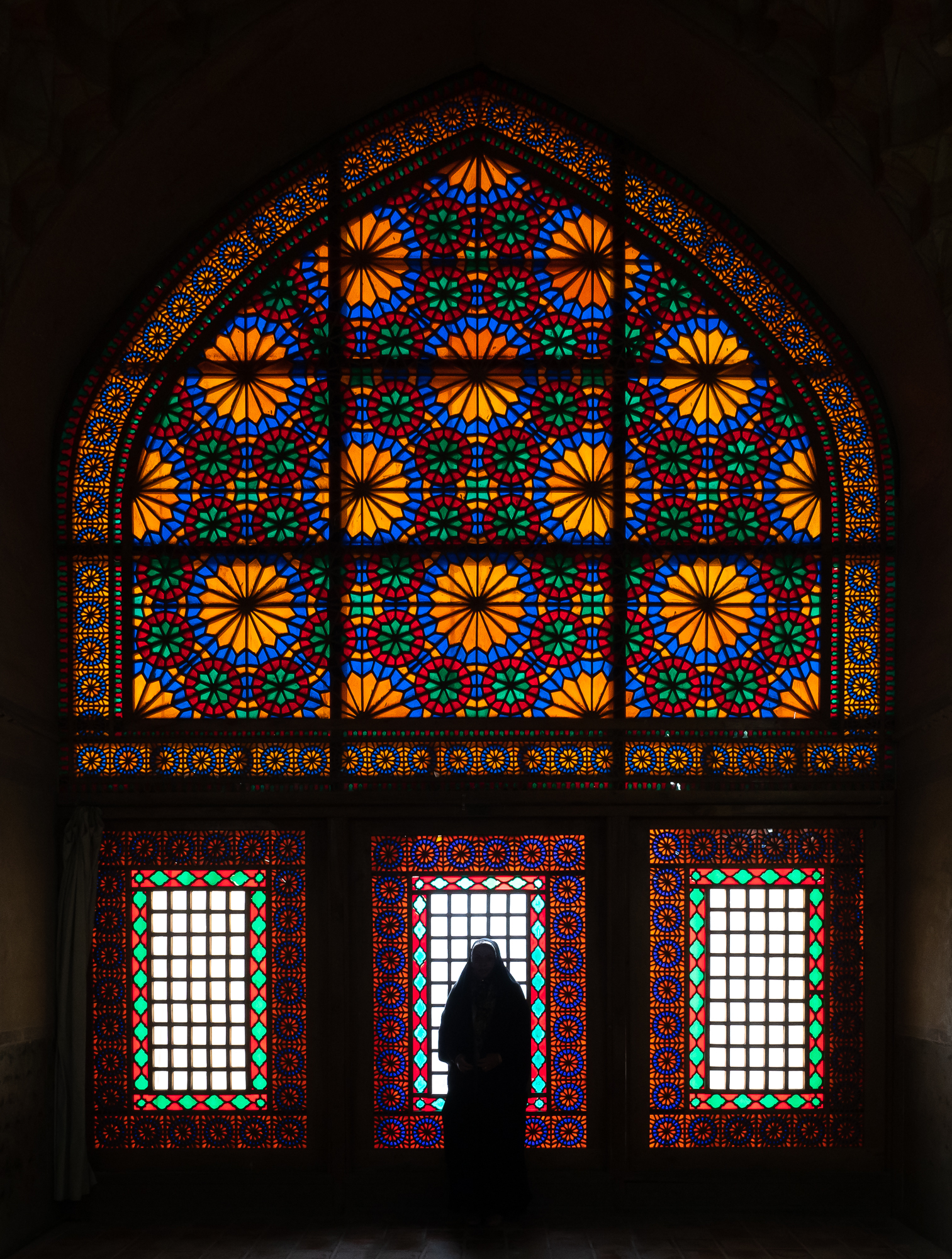
Glassworks
Some rooms featuring beautiful coloured glass windows.

Baths
Decorated walls lead through the various bathing areas.
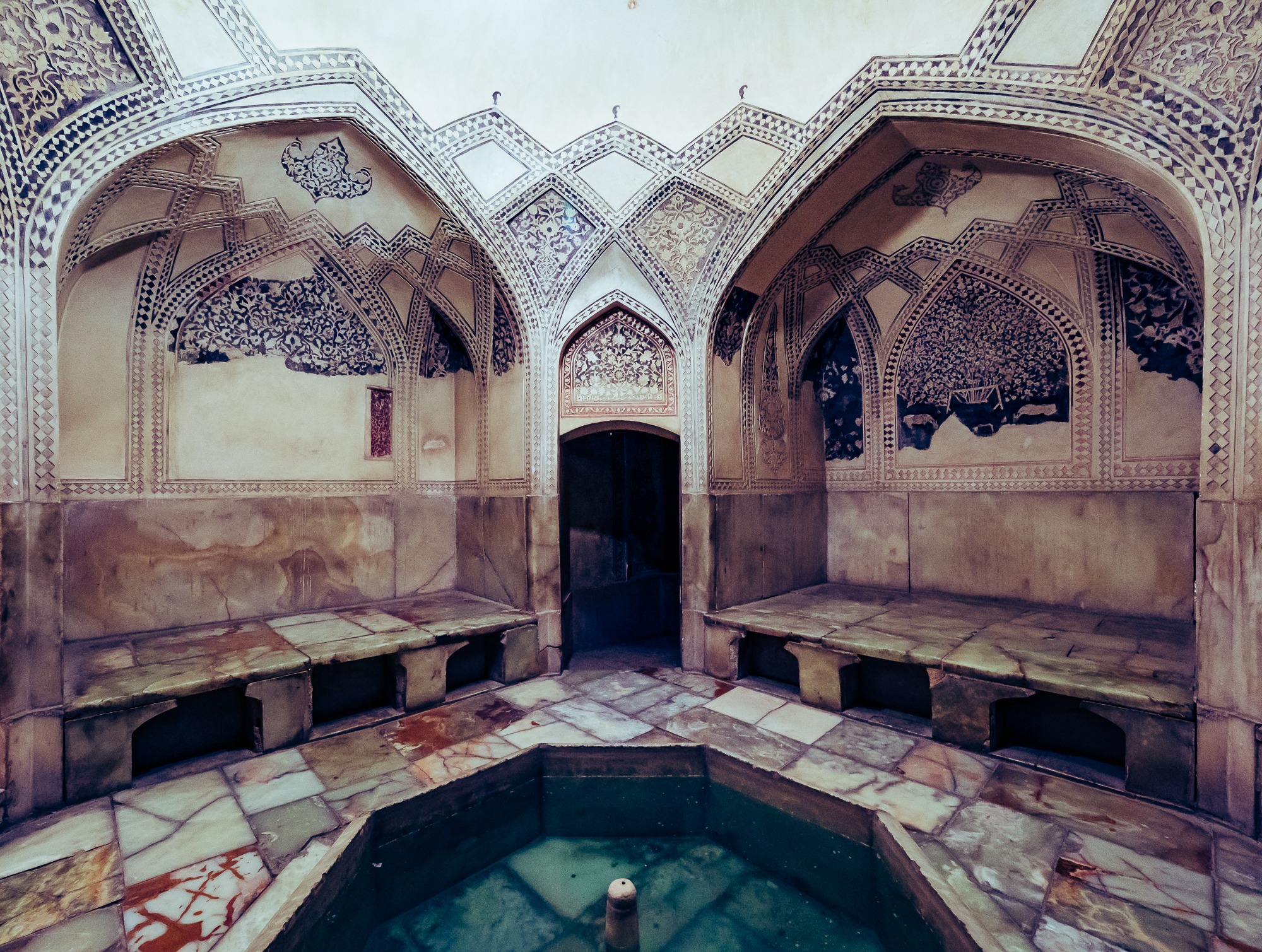
Marble & Tiles
The main ḥammām of the citadel.
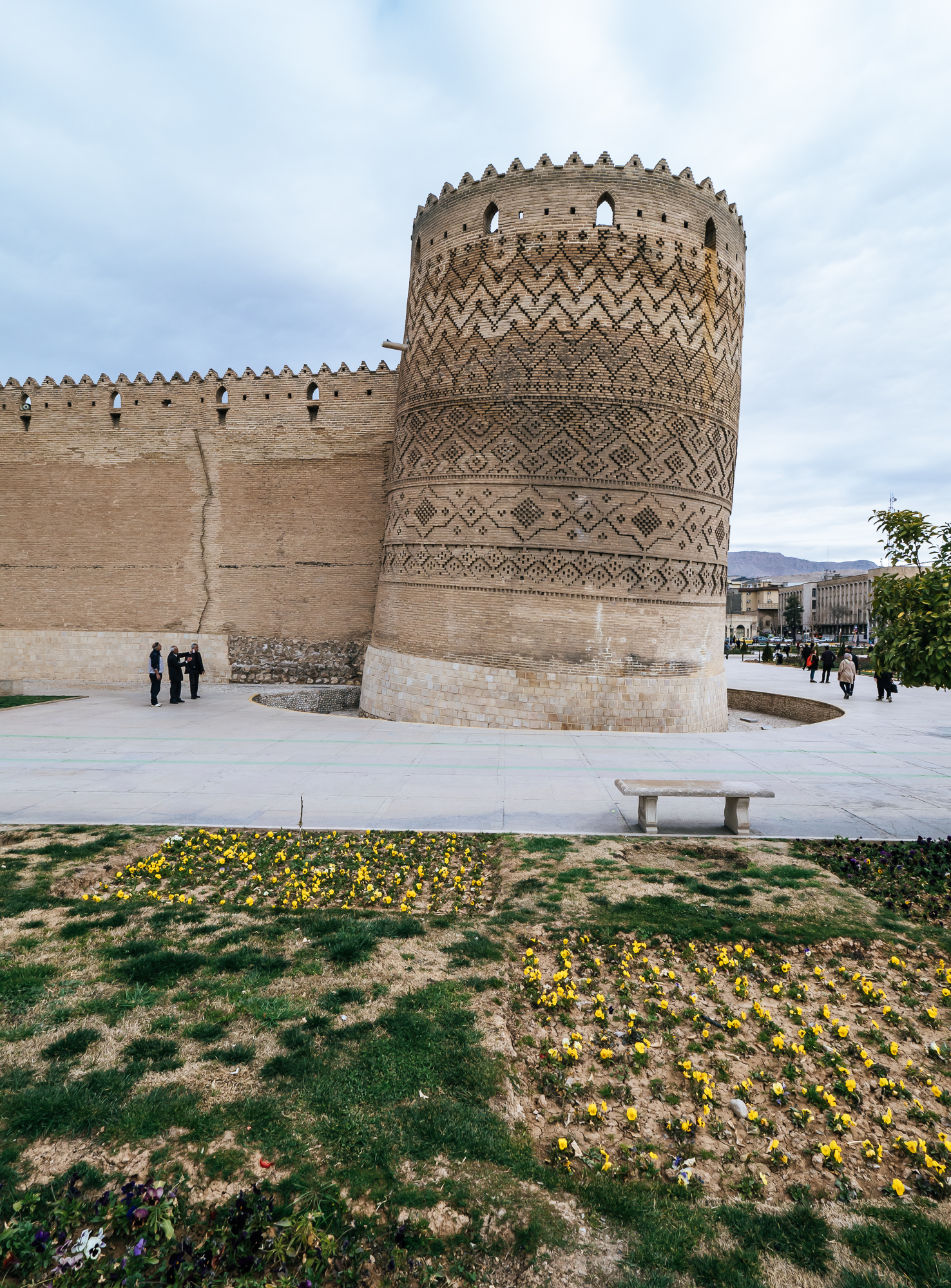
Leaning Tower
One of the four 14m towers connecting the citadel's walls isn't quite upright anymore.
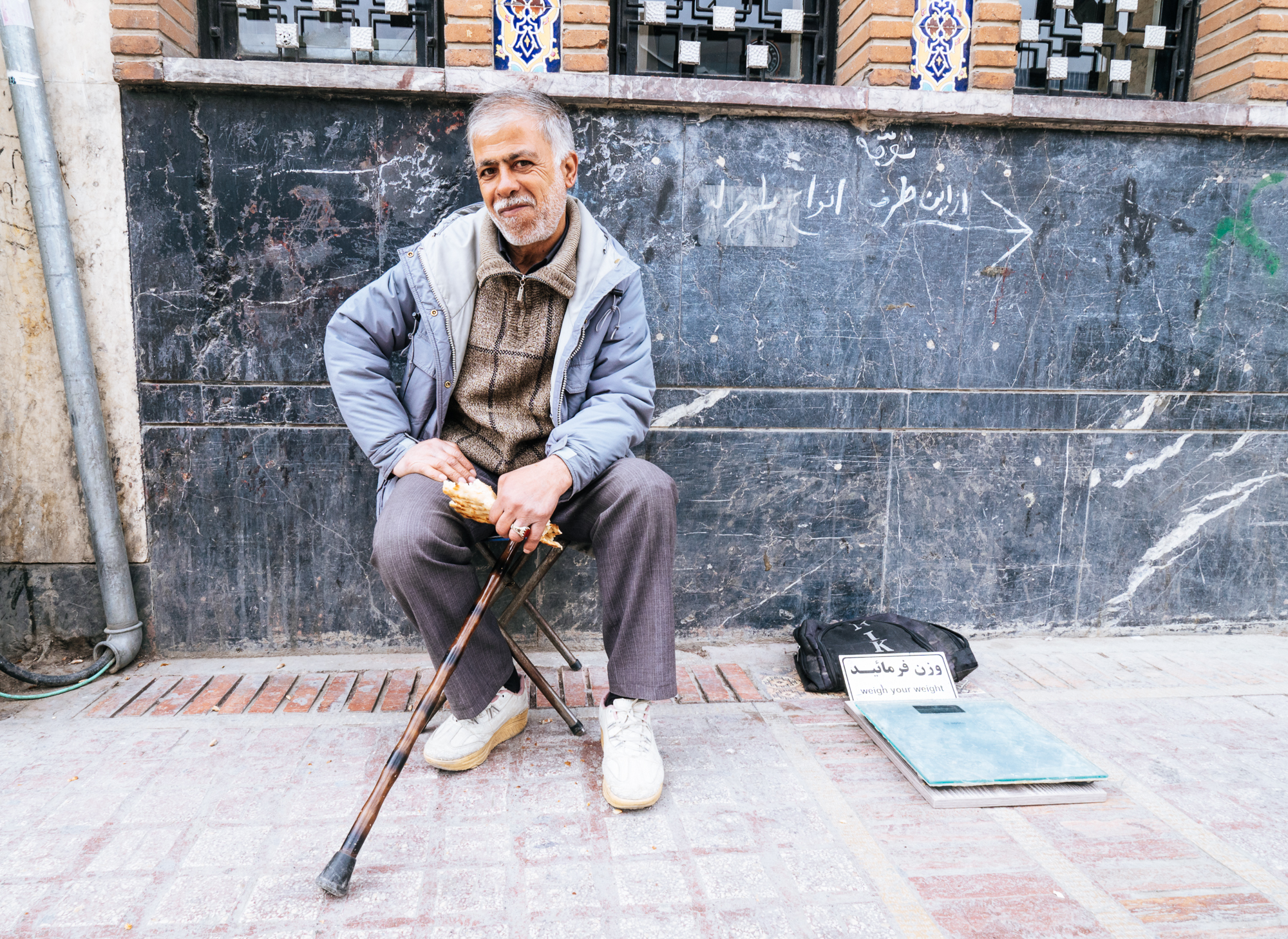
Weighing as a Service
Warning: Iranian food is amazing.
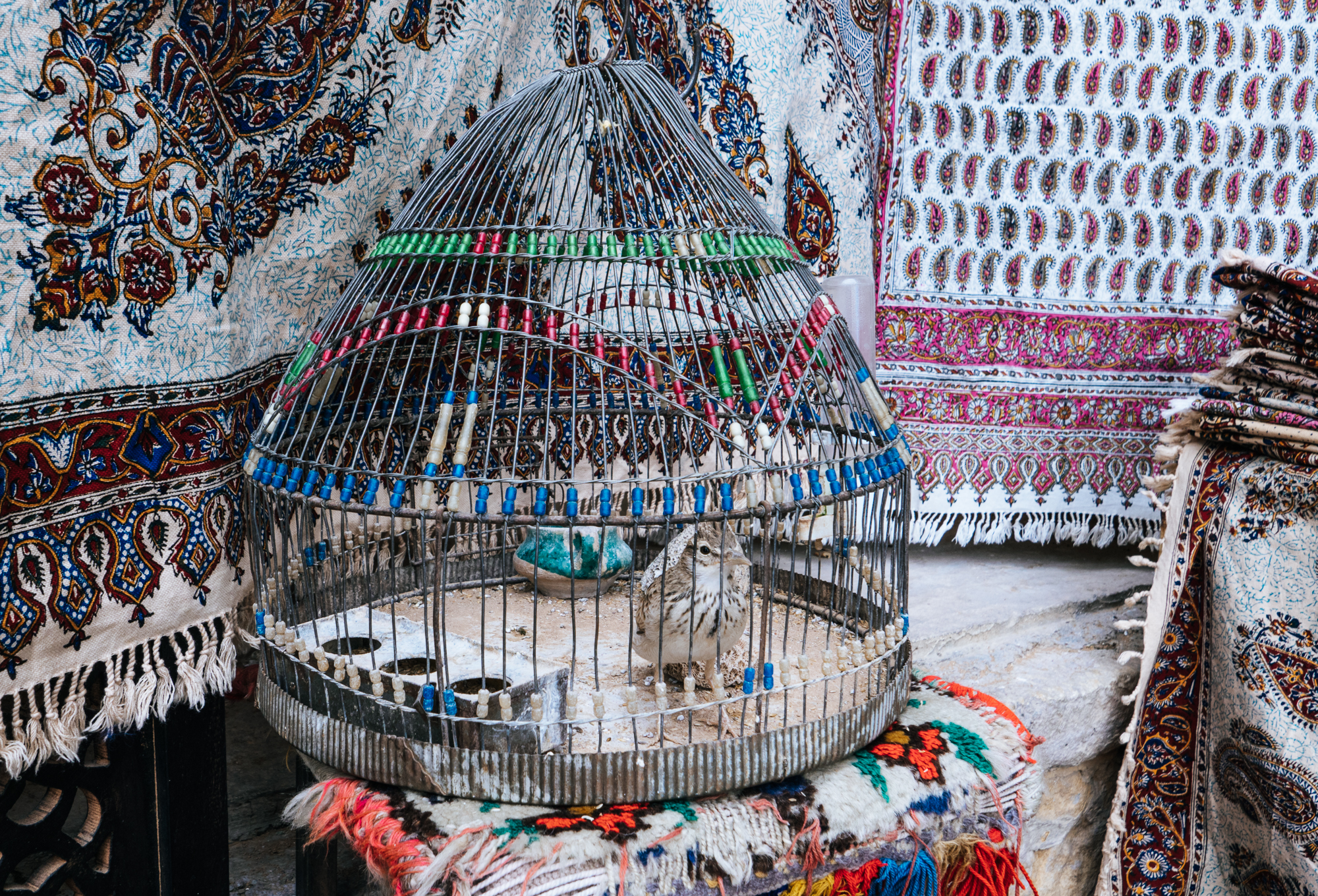
Birds
Many shops keep birds, which are said to attract luck.

Gatekeeper
Who kindly let me into the building's courtyard.
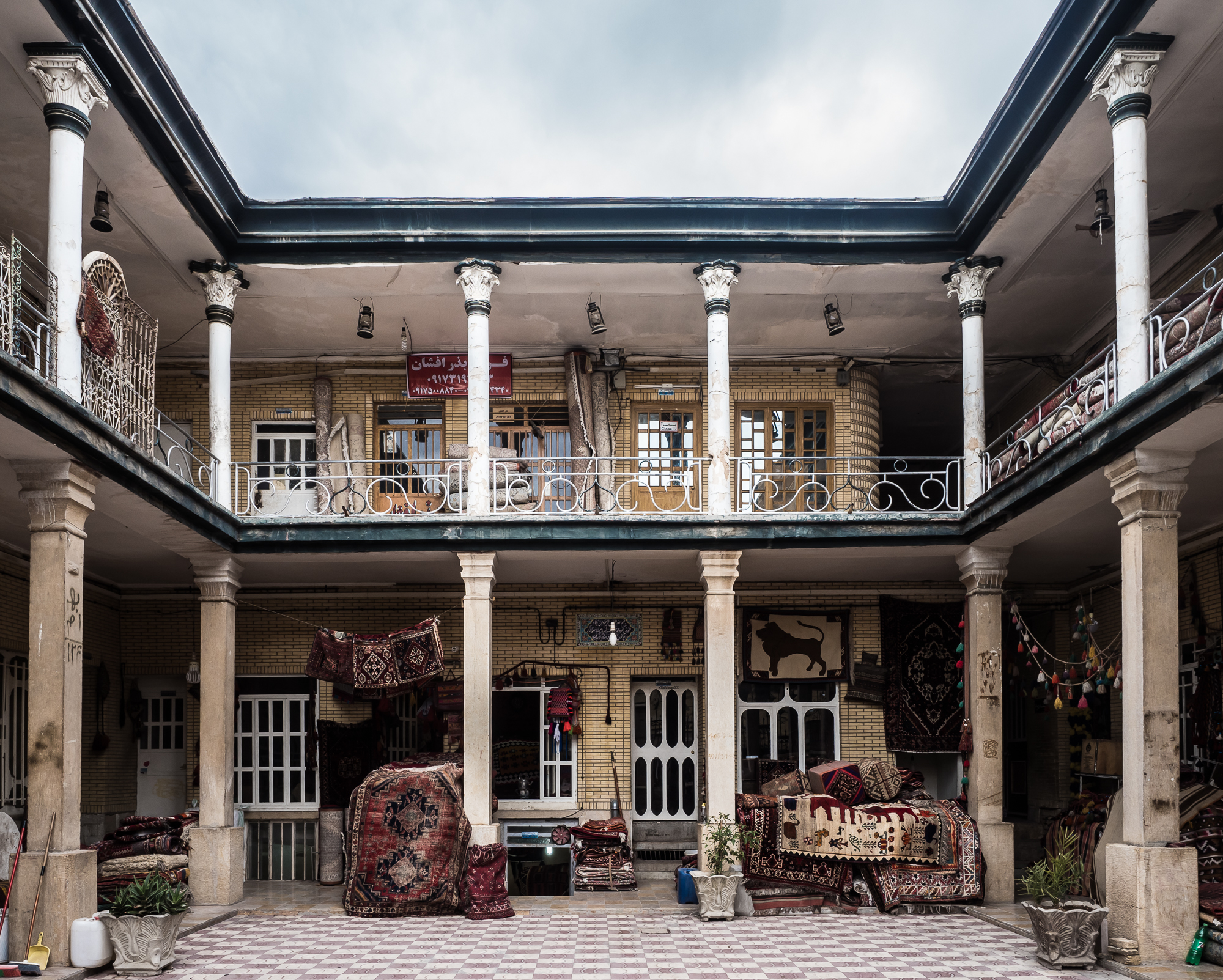
Gallery House
A building with art and craft galleries in the ancient centre of Shiraz.
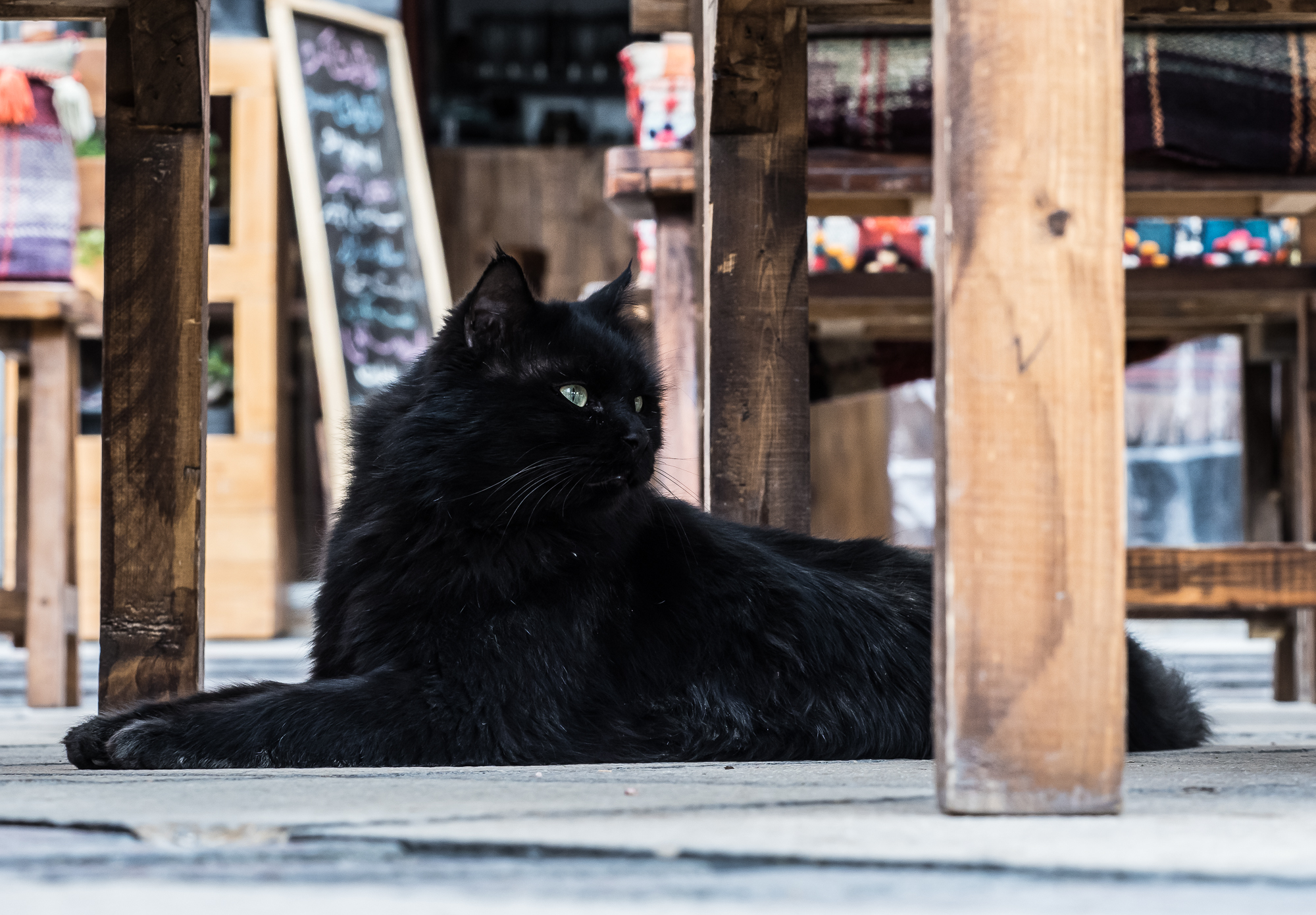
Black
Can never miss out on a cat shot.
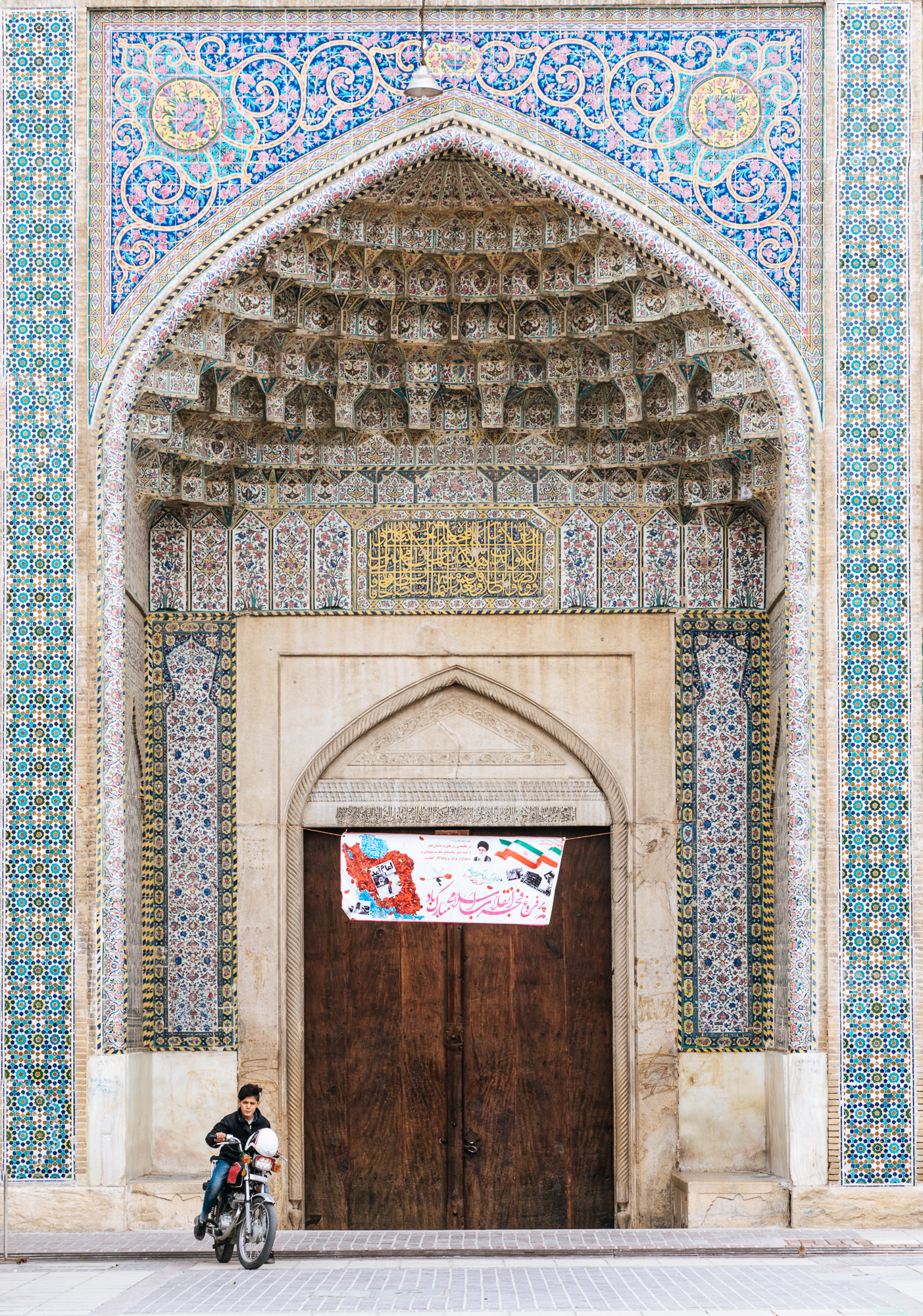
Vakil Mosque
The entrance to another 18th century mosque, near a beautiful public square.
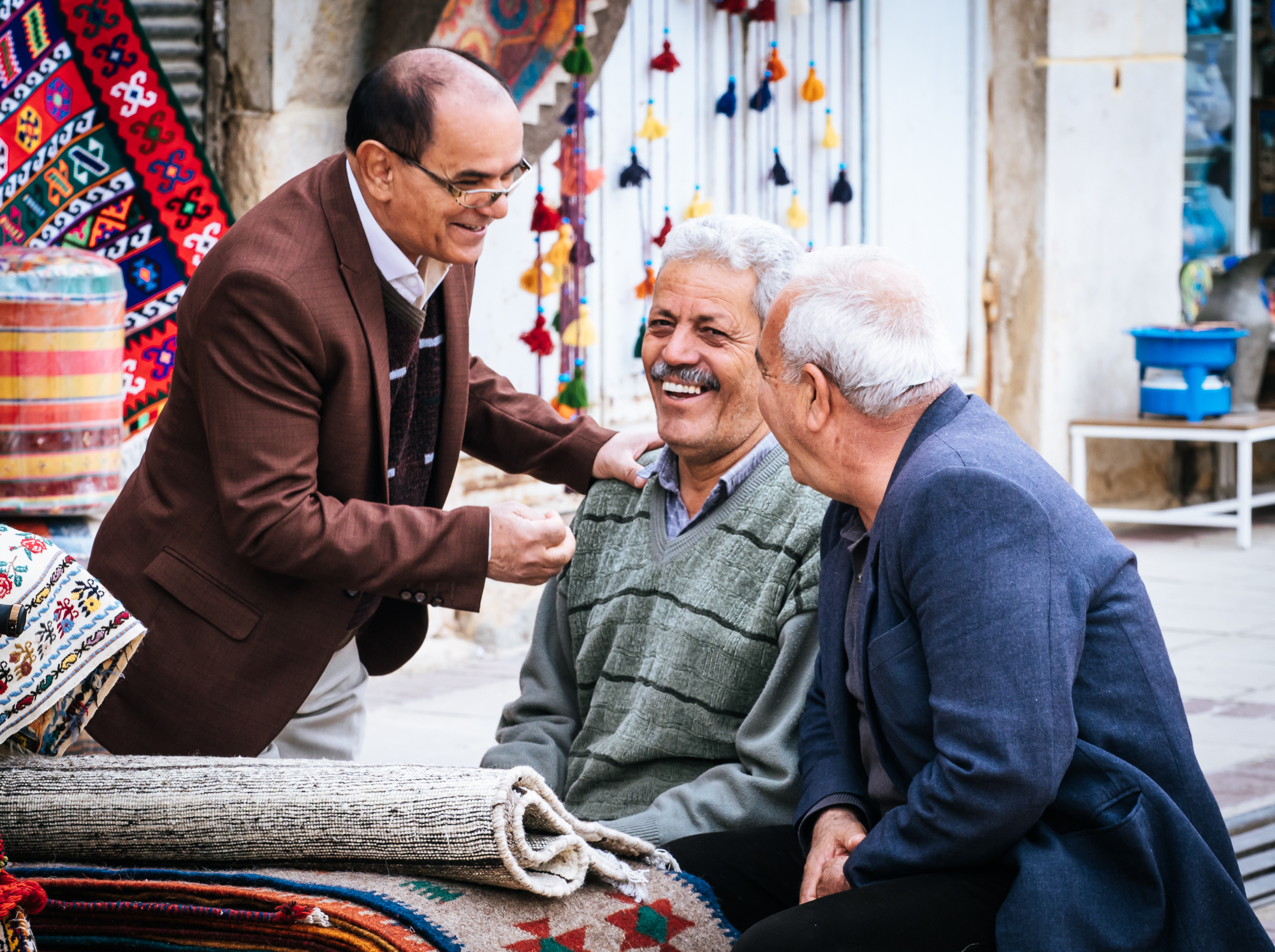
Laughter
The people of Shiraz are said to work to live, rather than the other way round.
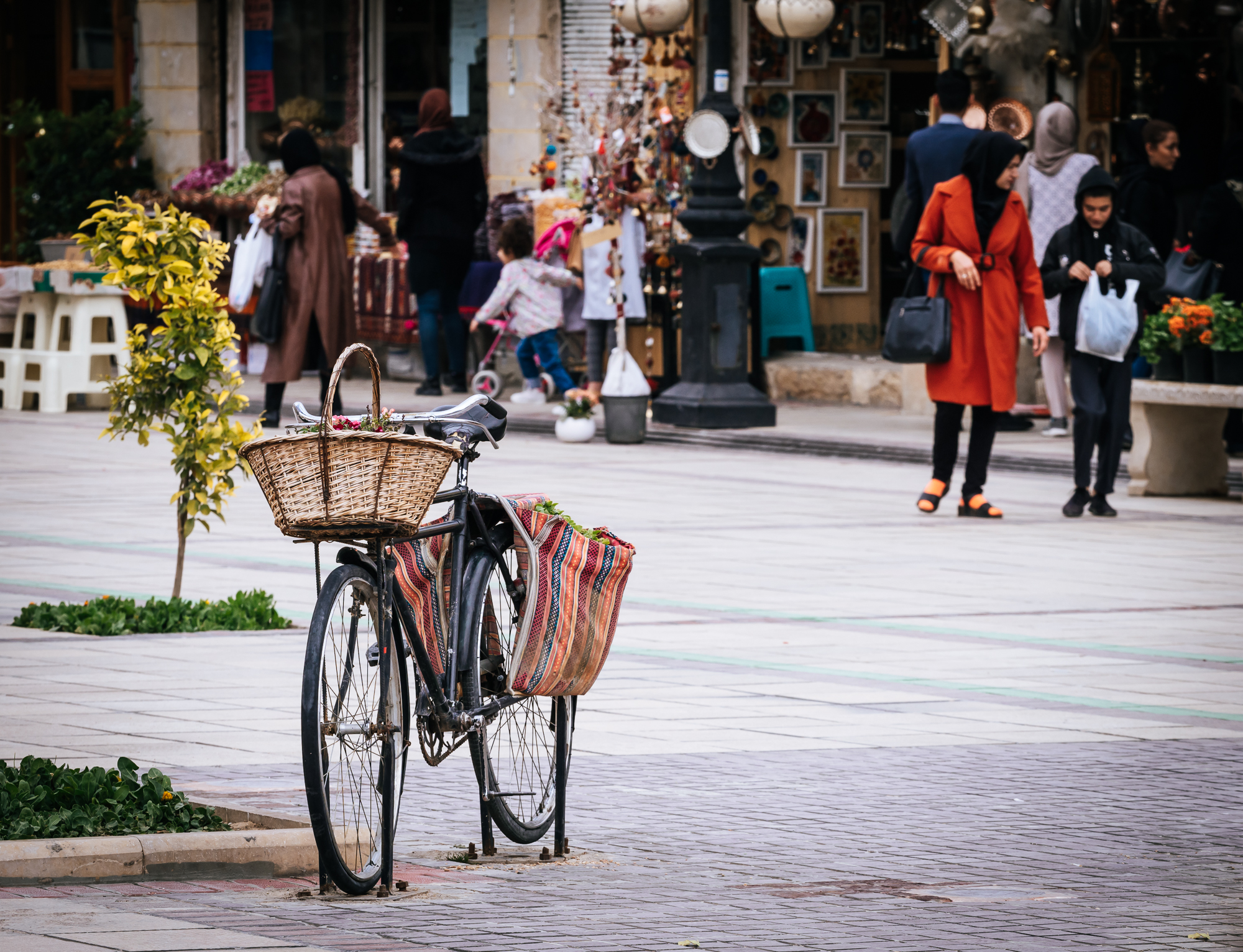
Creative
The city is full of small art installations.
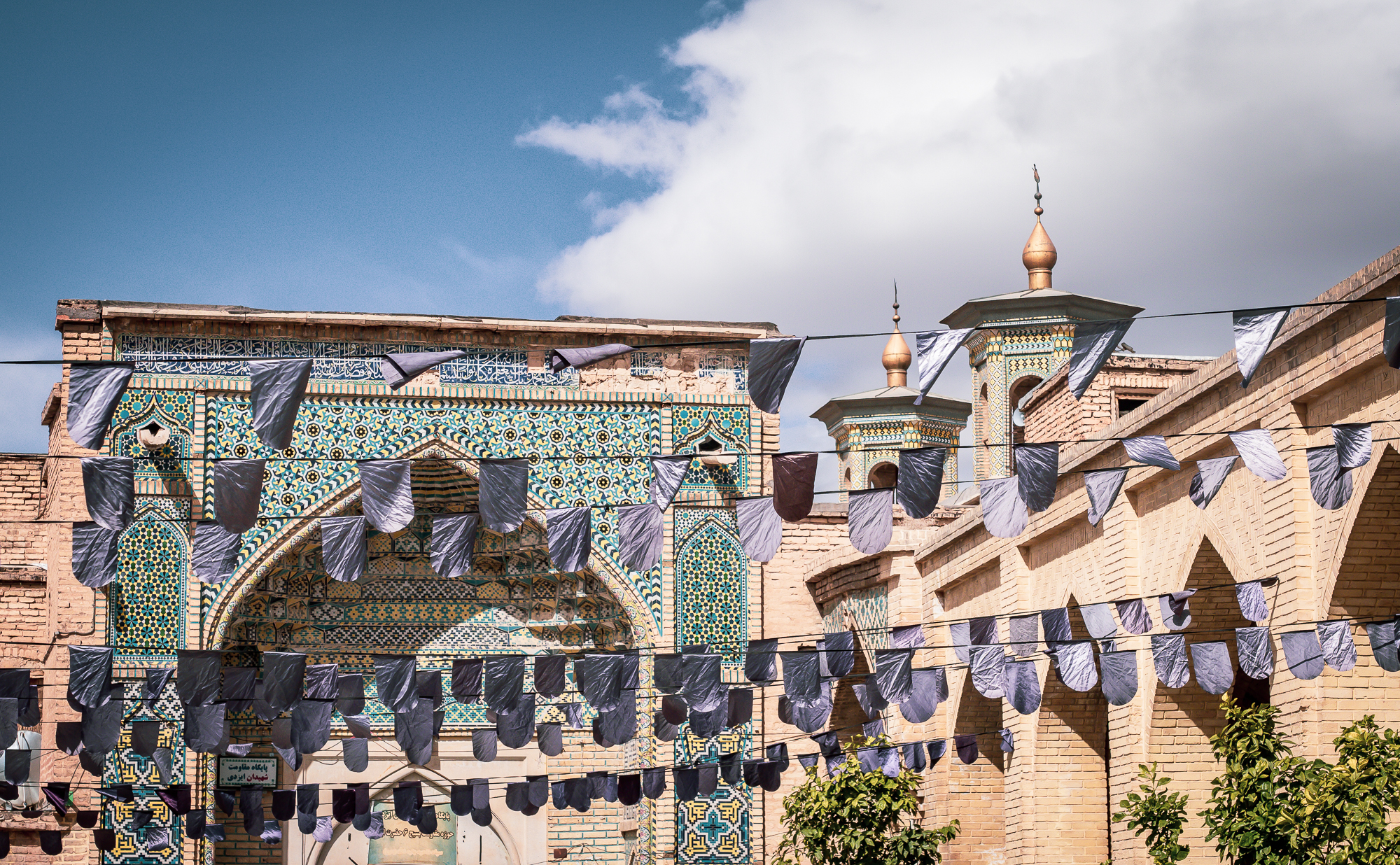
Tiles & Minarets
Another mosque near our hotel.
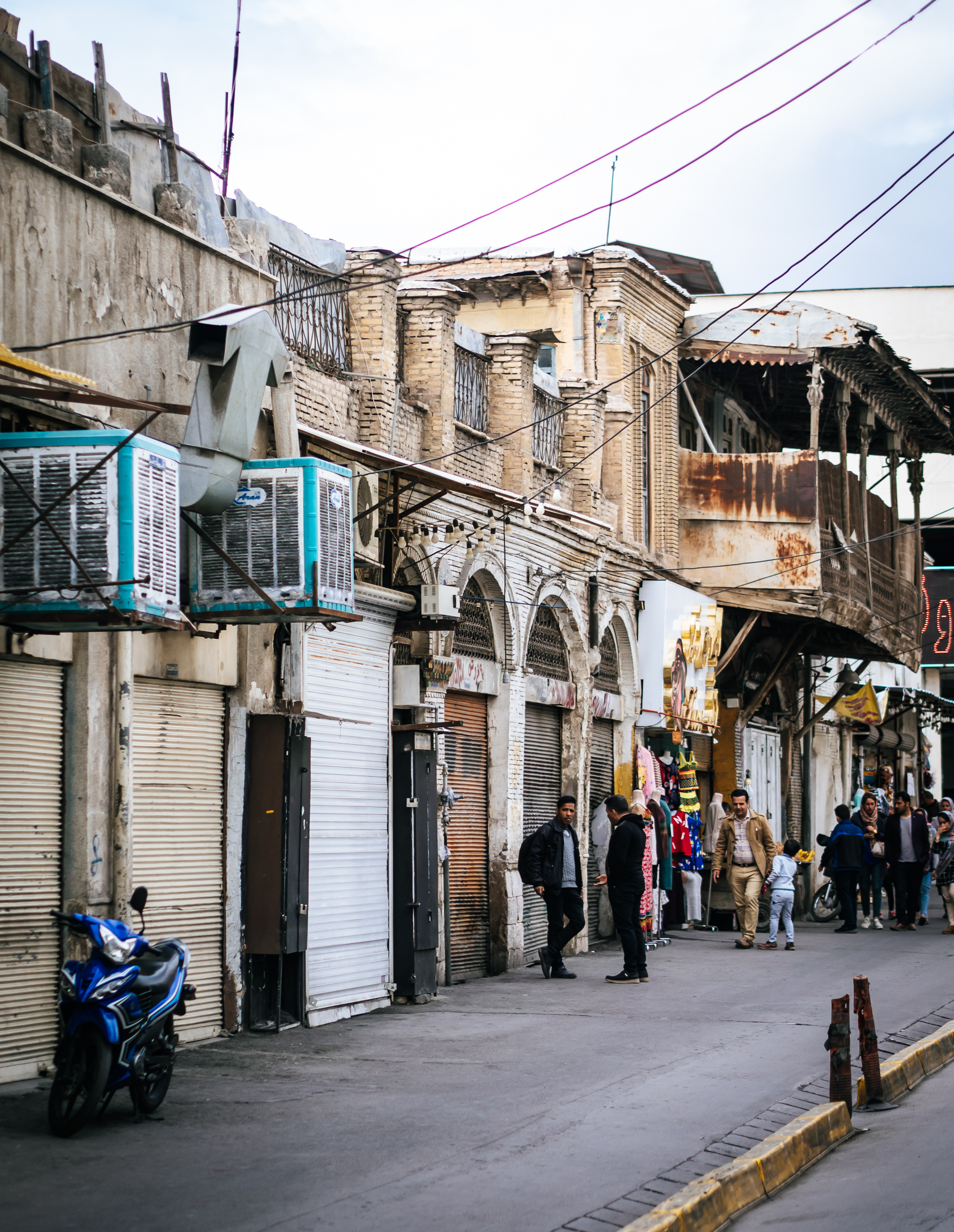
Alleys
A street in the historical centre.
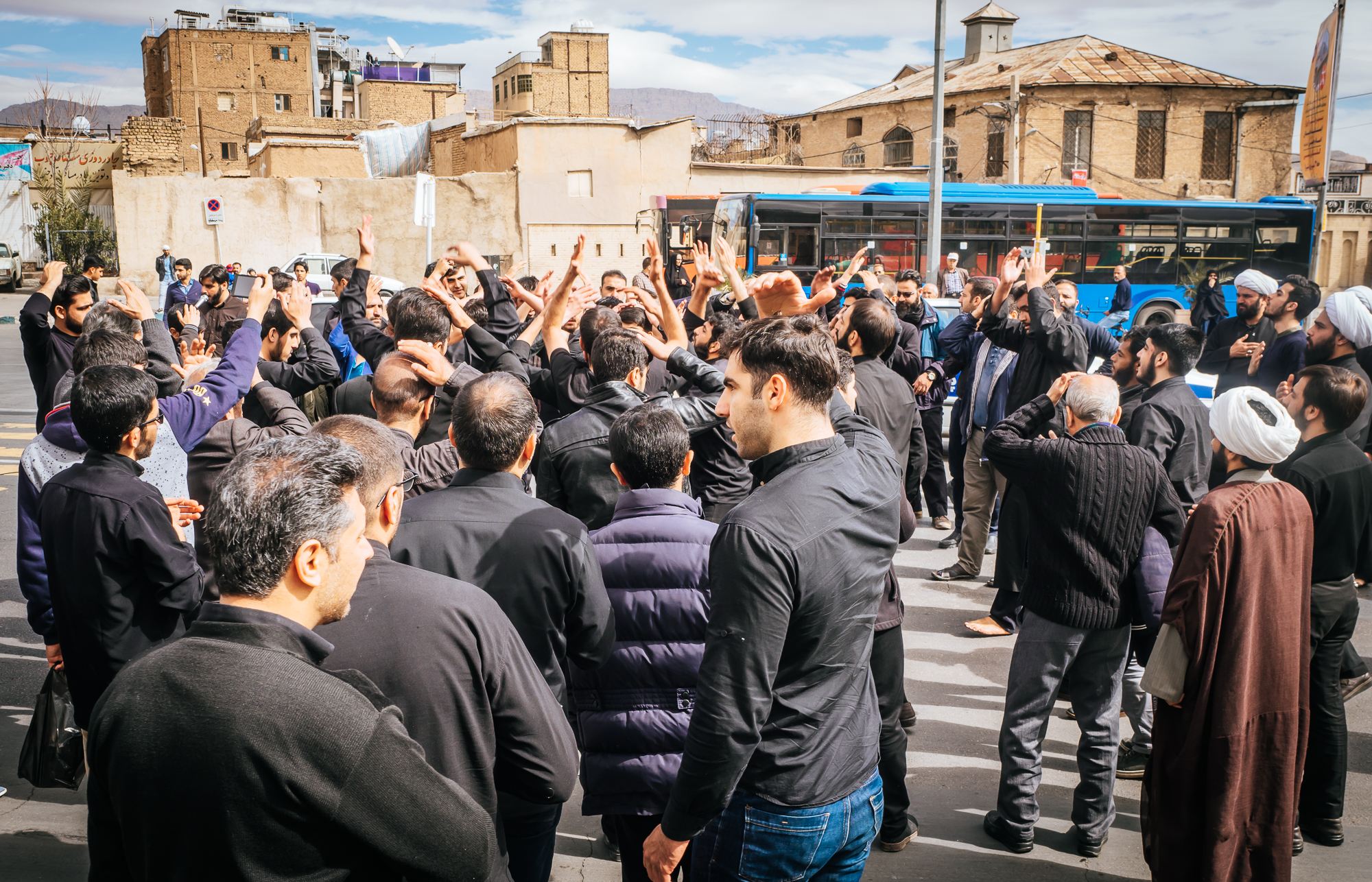
Martyrdom of Fatima
Fatimah bin Muhammad was the youngest daughter of prophet Muhammad. Her death is commemorated during a public holiday in Iran, following Shia Islam.
Sir Bani Yas Island - Greening the Desert
Bani Yas Island has always been on my UAE To Do List. The island is about a 3,5 hour drive and 30min boat ride from Dubai and lies off the coast of Abu Dhabi in the western region. It’s the largest natural island in the UAE. Its rich history, incredible flora and fauna and the story of how it evolved into a major conservation project truly makes it a globally unique destination.

Bani Yas Island has always been on my UAE To Do List. The island is about a 3,5 hour drive and 30min boat ride from Dubai and lies off the coast of Abu Dhabi in the western region. It’s the largest natural island in the UAE. Its rich history, incredible flora and fauna and the story of how it evolved into a major conservation project truly makes it a globally unique destination.
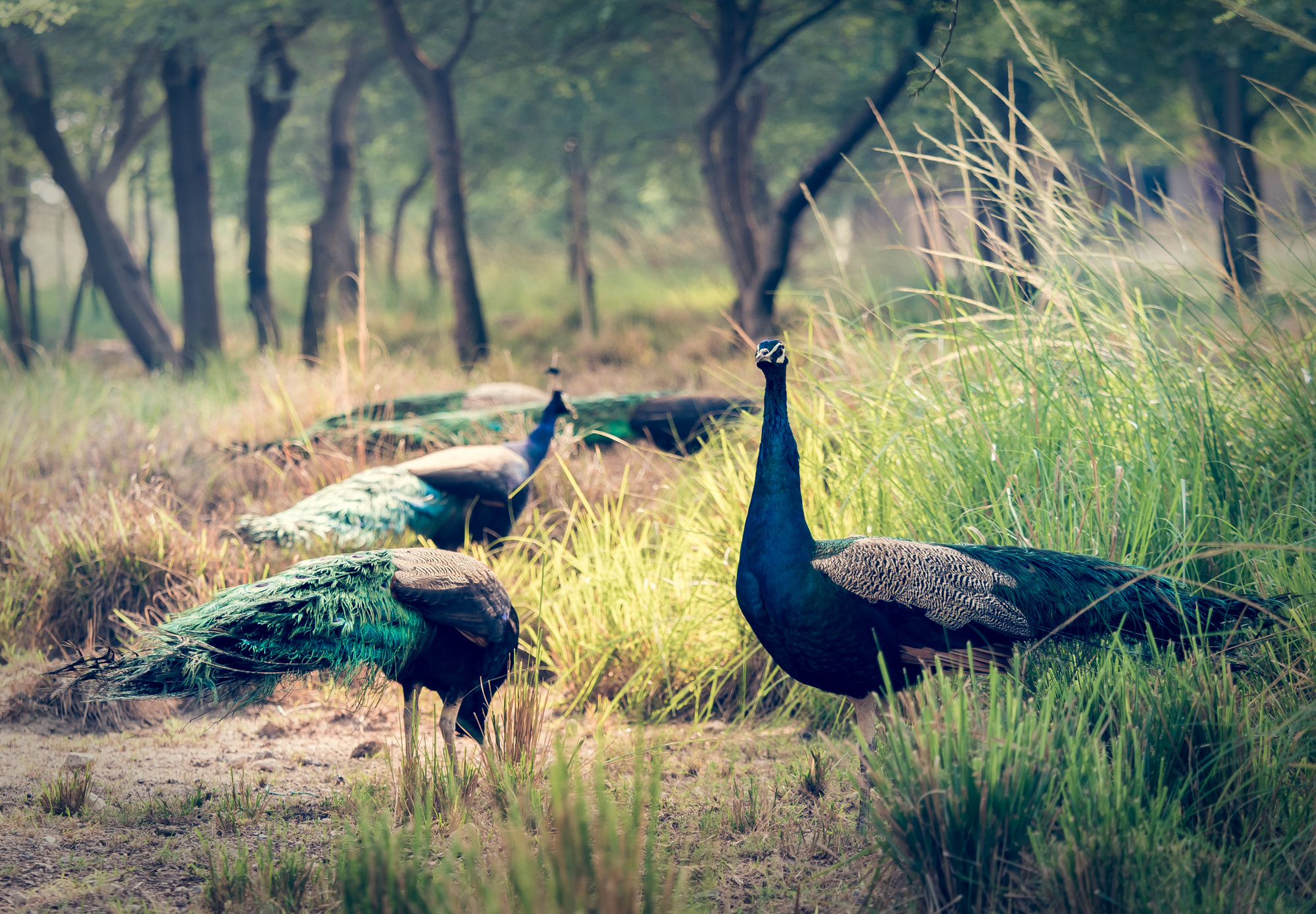
Peacock Central
One of the more common animals on the island are peacocks - in fact, a ranger told us they are considering to introduce some desert foxes to control the population, as culling is not allowed by law.
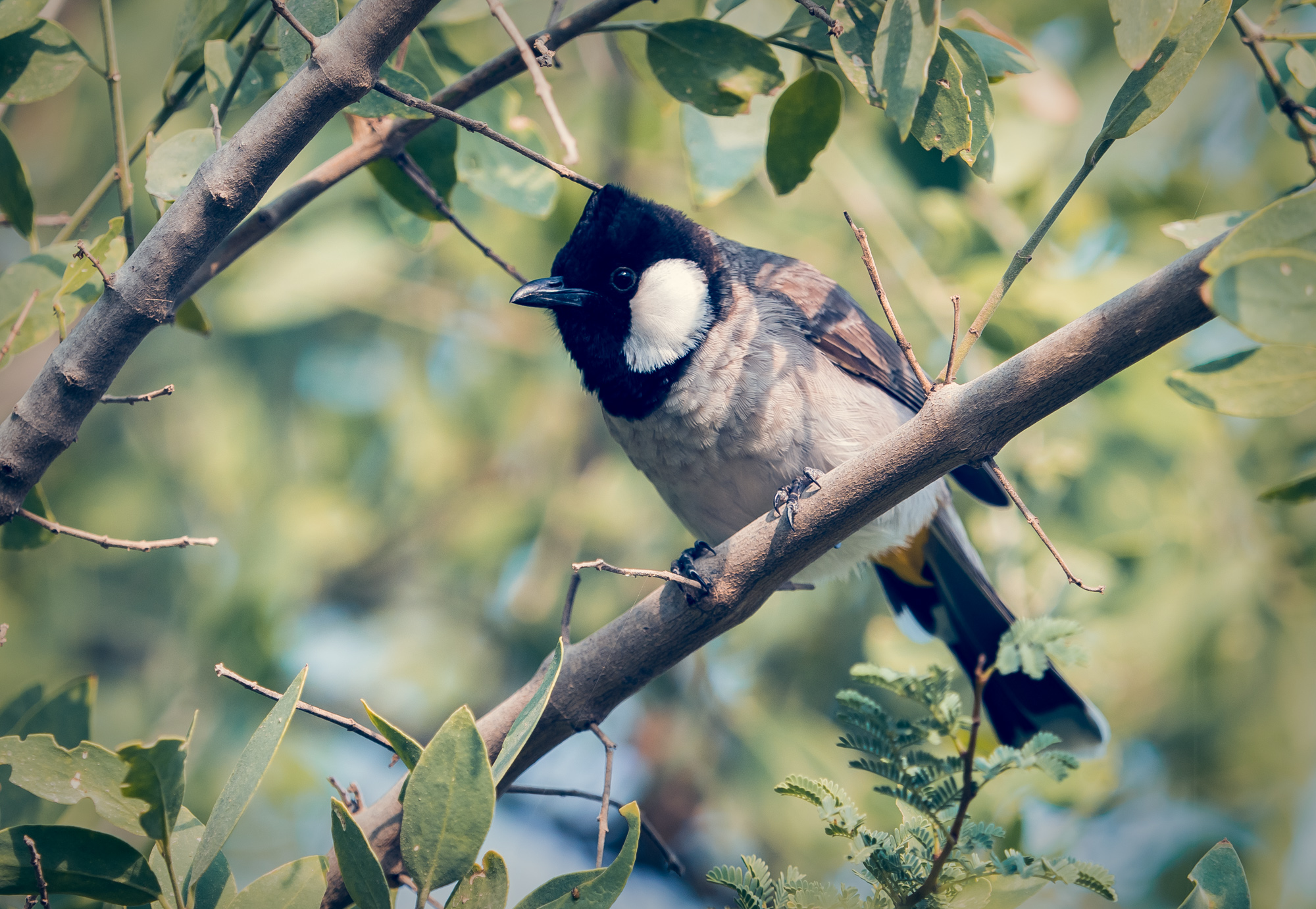
Bird Life
Some might say this one could be straight out of Angry Birds.

Gazelle
Probably the second most common animal on the island, after the Peacocks.
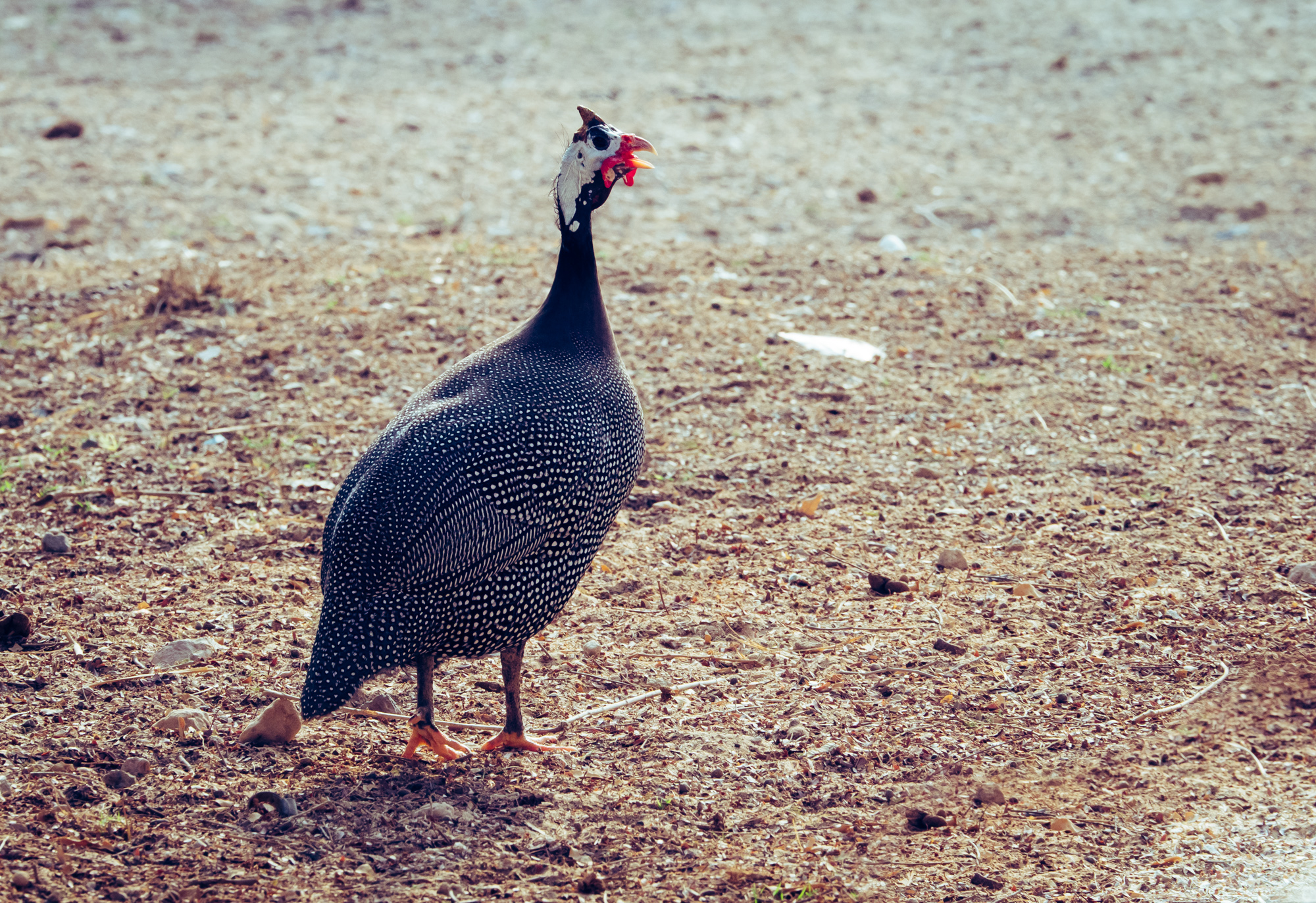
Turkey
I guess this is a female turkey, who didn't end up on a Christmas plate.
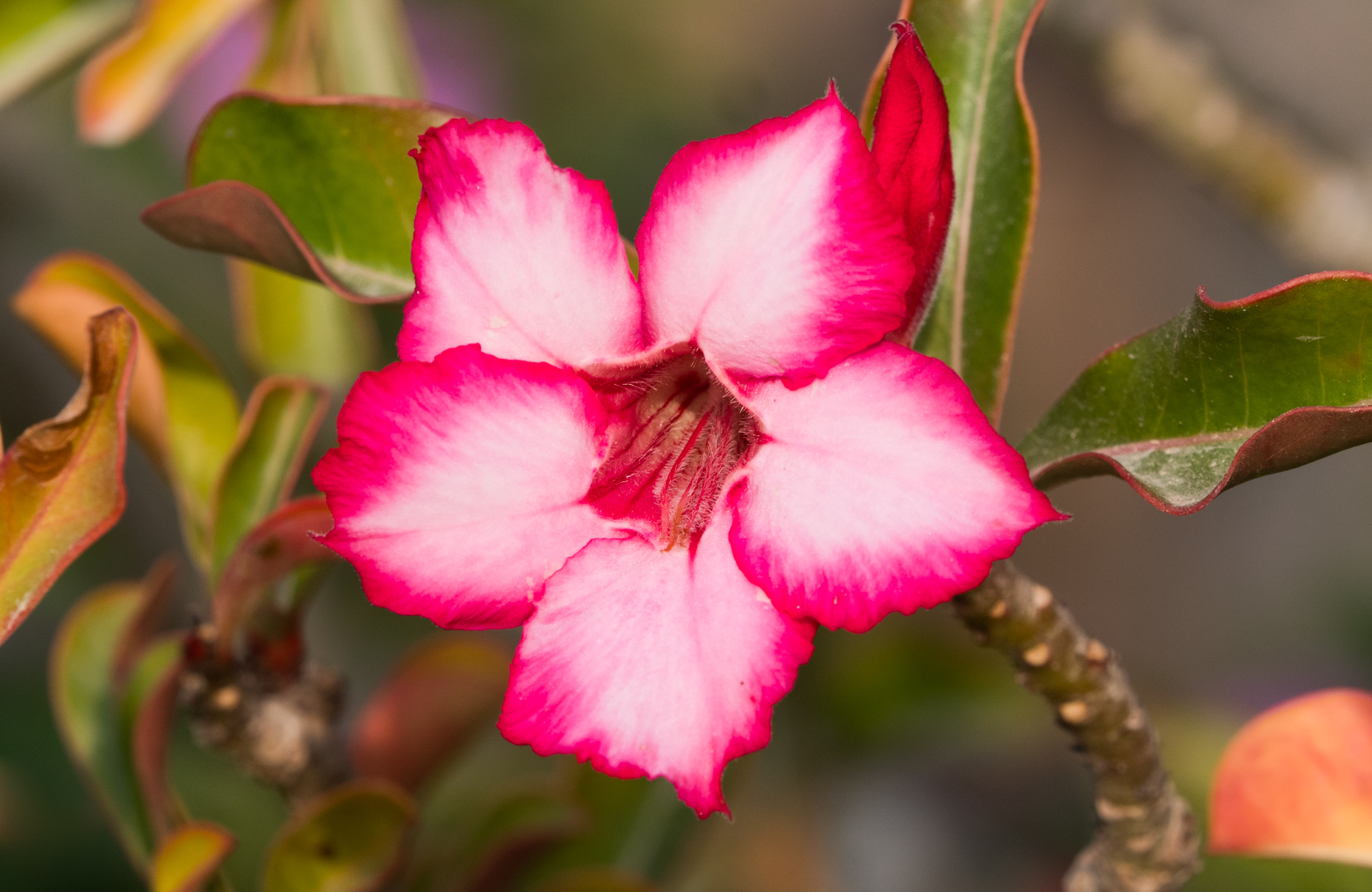
Desert Rose
With only a few days of rainfall per year, a huge irrigation system taking desalinated water from the shore was implemented over the last decades.
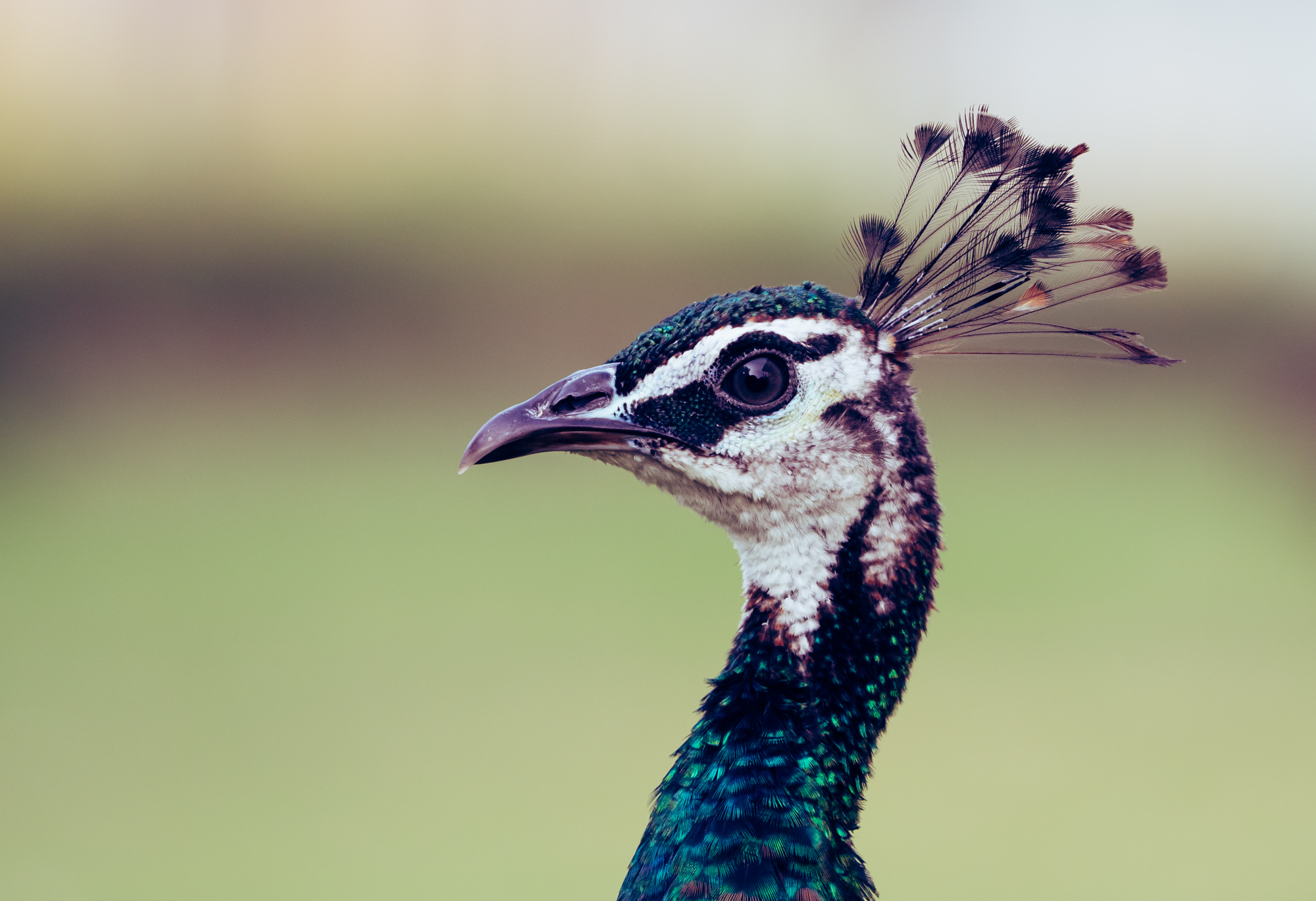
Peacock
Both green and blue types can be found.

Hyraxes
Believe it or not, these animals are closely related to Elephants.

Horns
Of an Arabian Oryx, if I recall correctly. Having seen them in the wild in the desert, these have become some of my favourite animals.
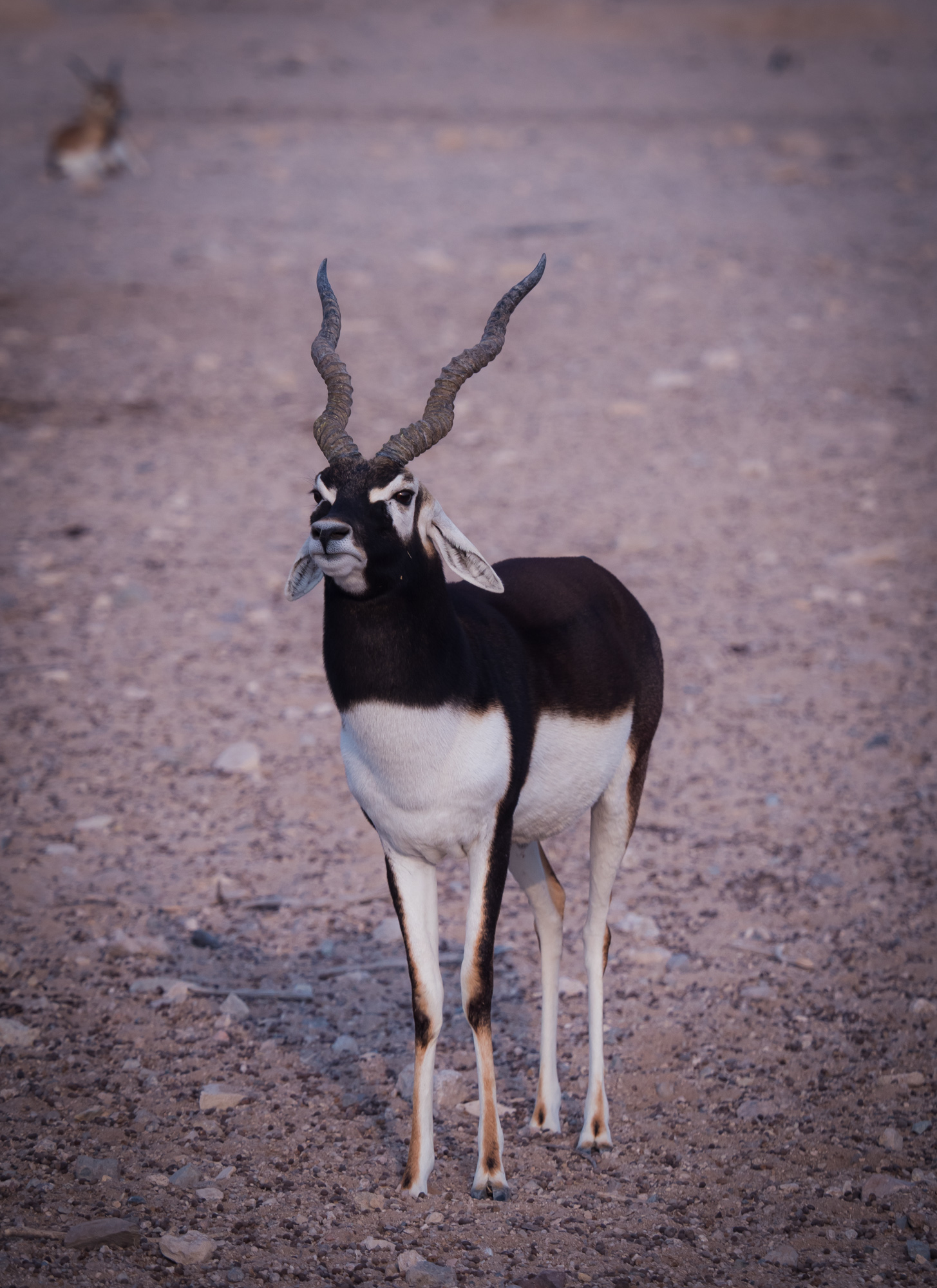
Show Off
Proud of its horns.

Ostrich
A male ostrich, with its pink legs signalling the mating season.
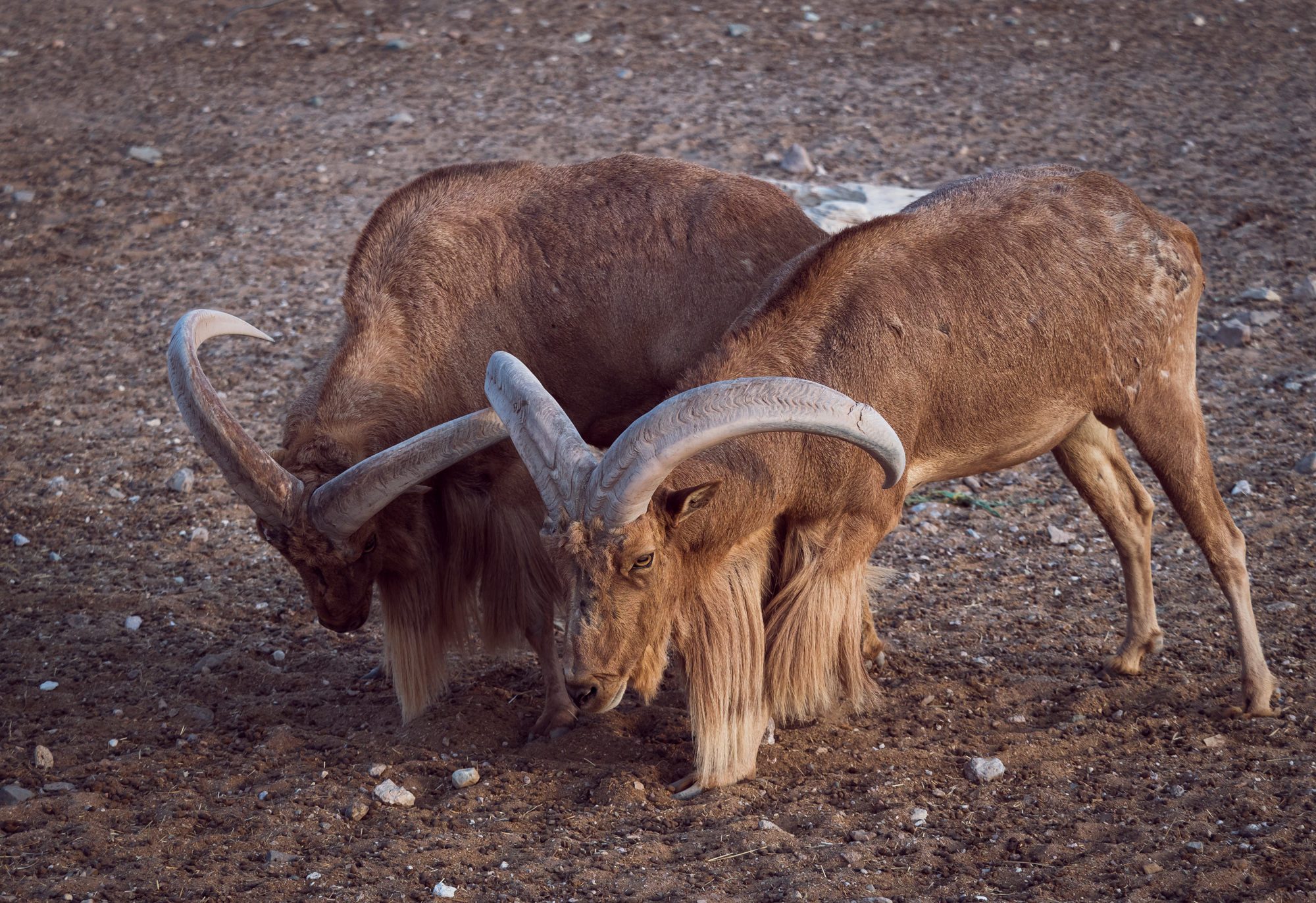
Battles
Two Barbary Sheep (if I am not wrong) measuring their strength.
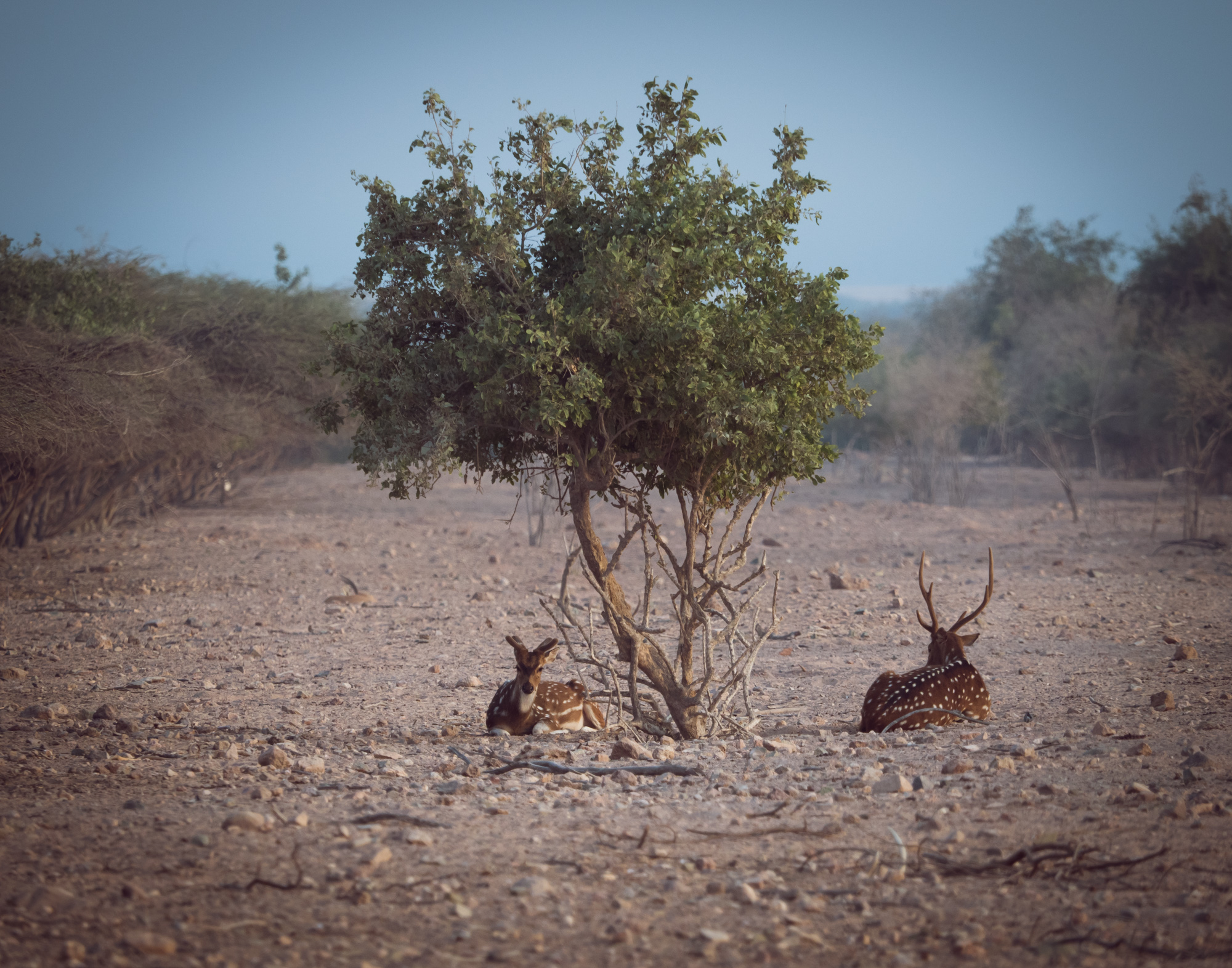
Resting Deer
Several kind of deer can also be spotted on the island, although we heard they are Cheetah favourites...
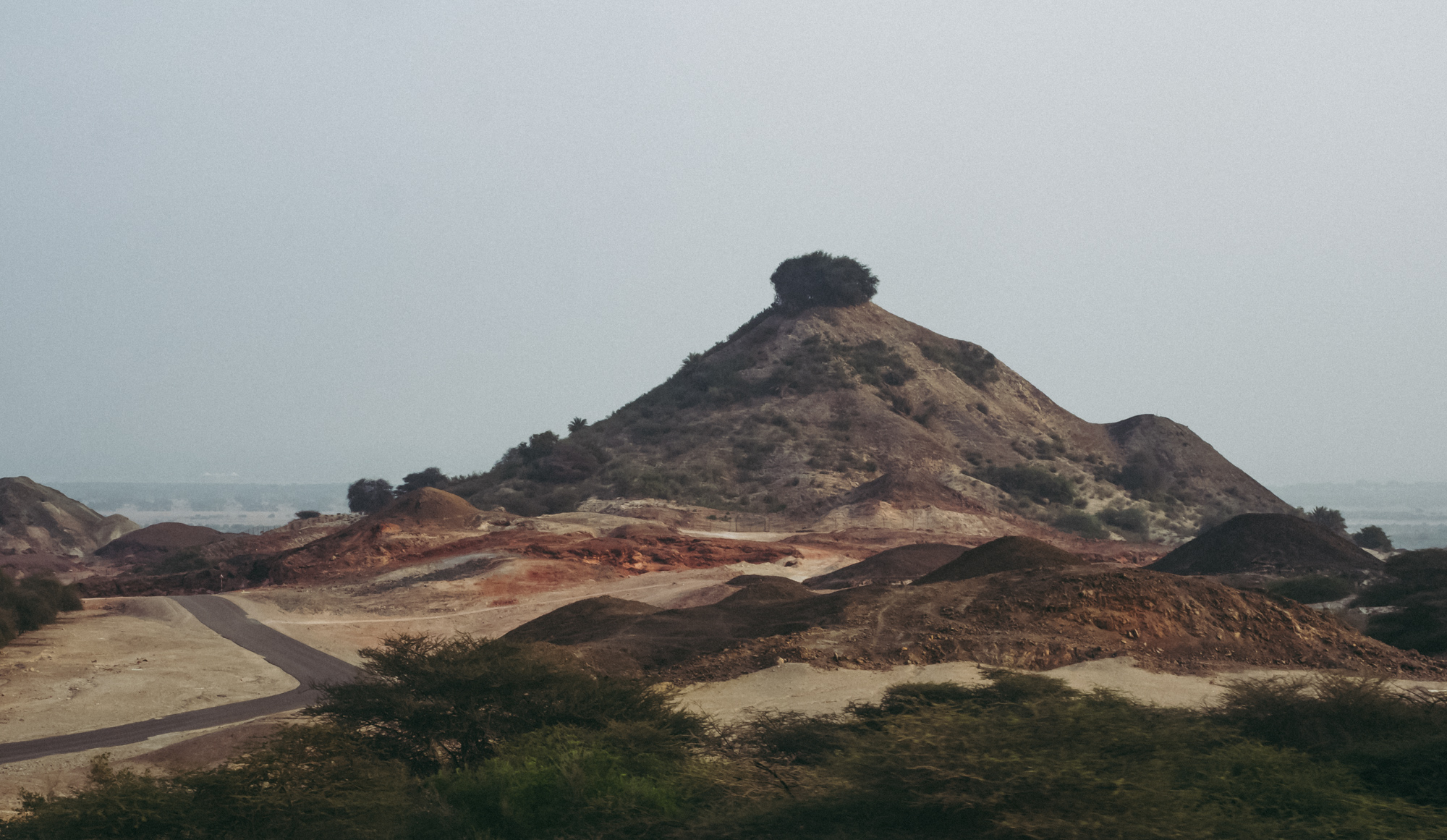
Tribute
Workers are said to have planted the UAE's national tree, the Ghaf tree, on top of the mountain in honor of Sheikh Zayed bin Sultan Al Nahyan who started the initiative on the island in 1977.
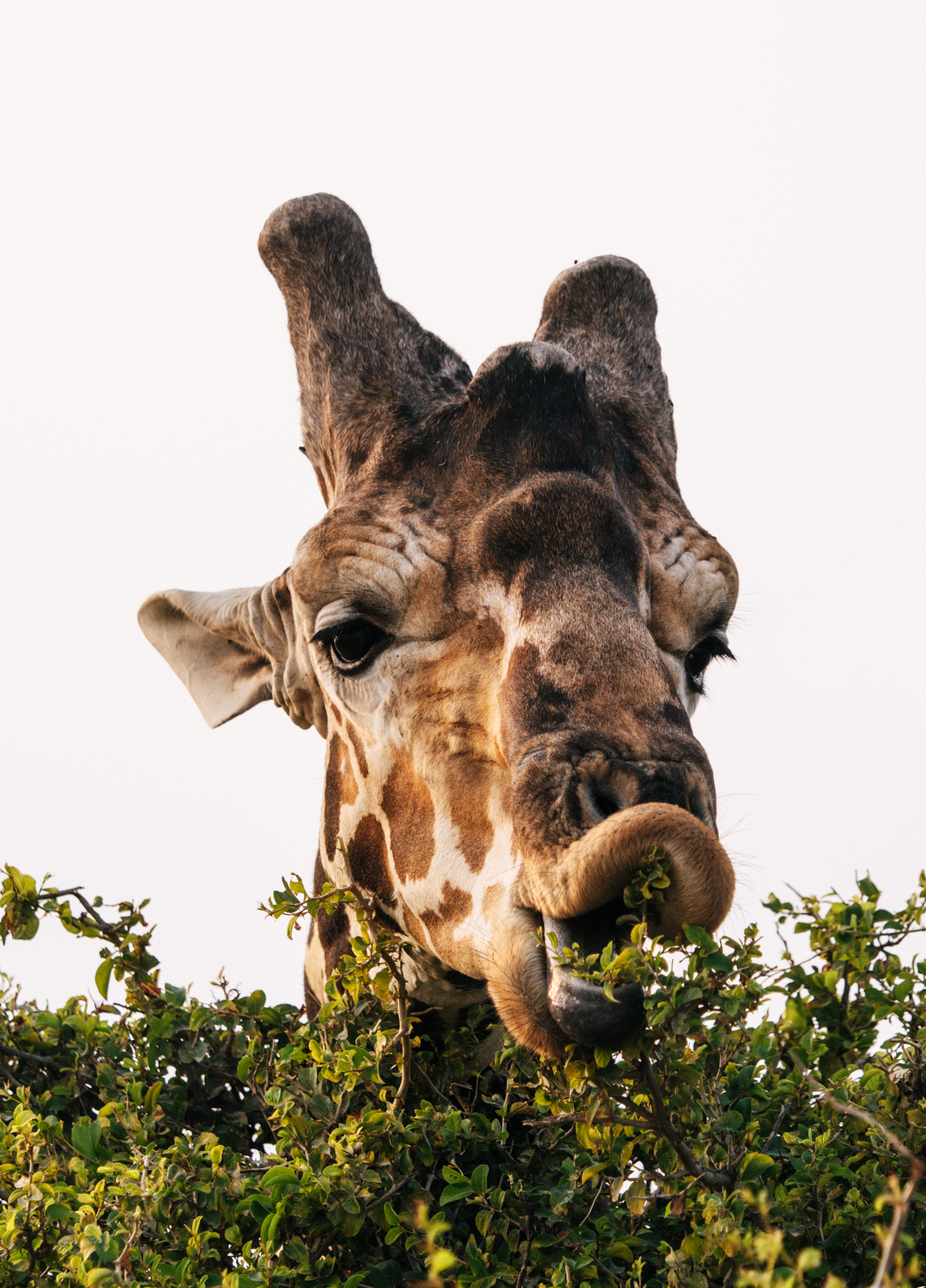
Hungry
There are only 8500 of the Somali Giraffe in the wild. The island is home to about 30.
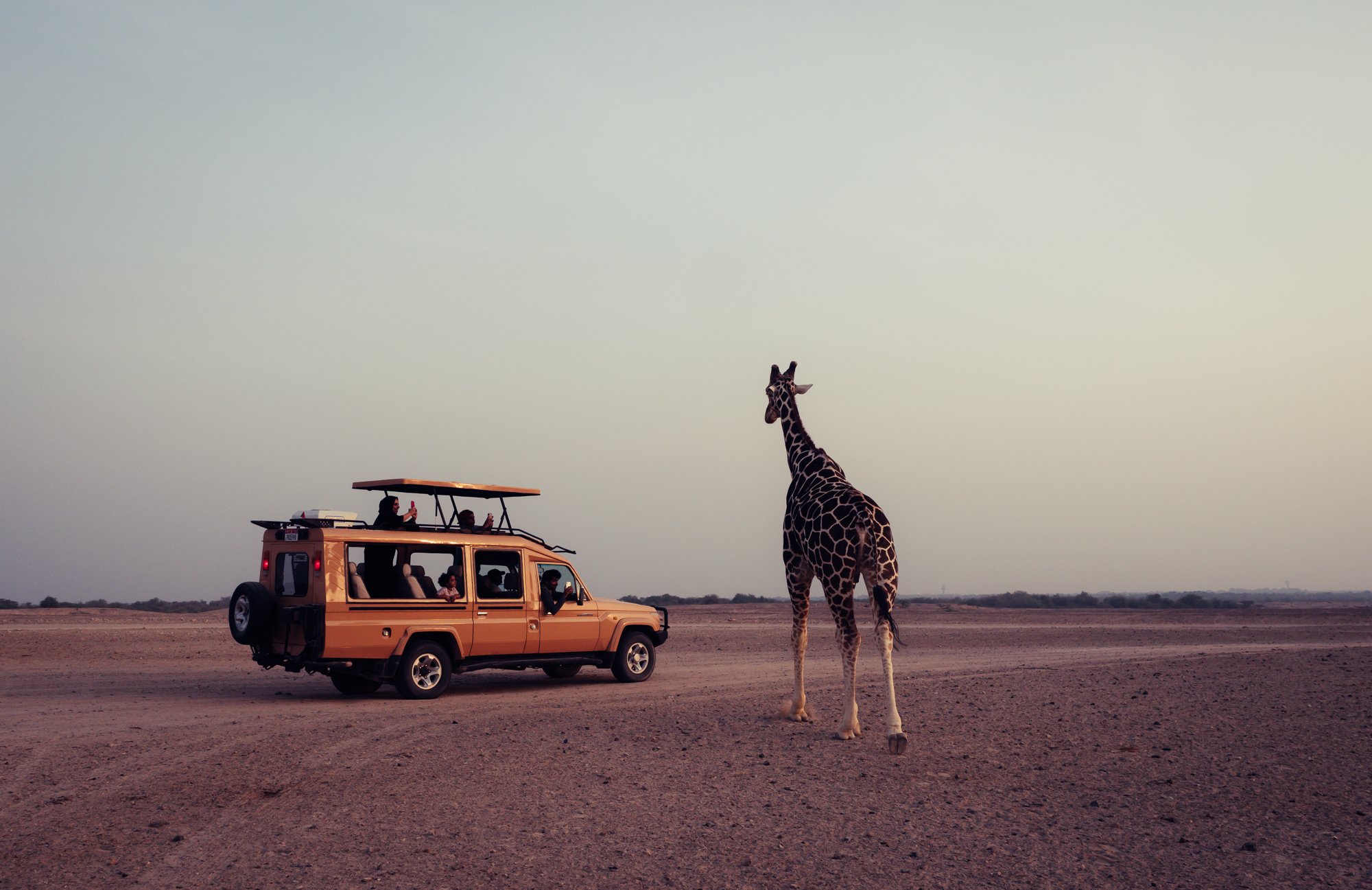
Encounters
They are free roaming in the reserve.
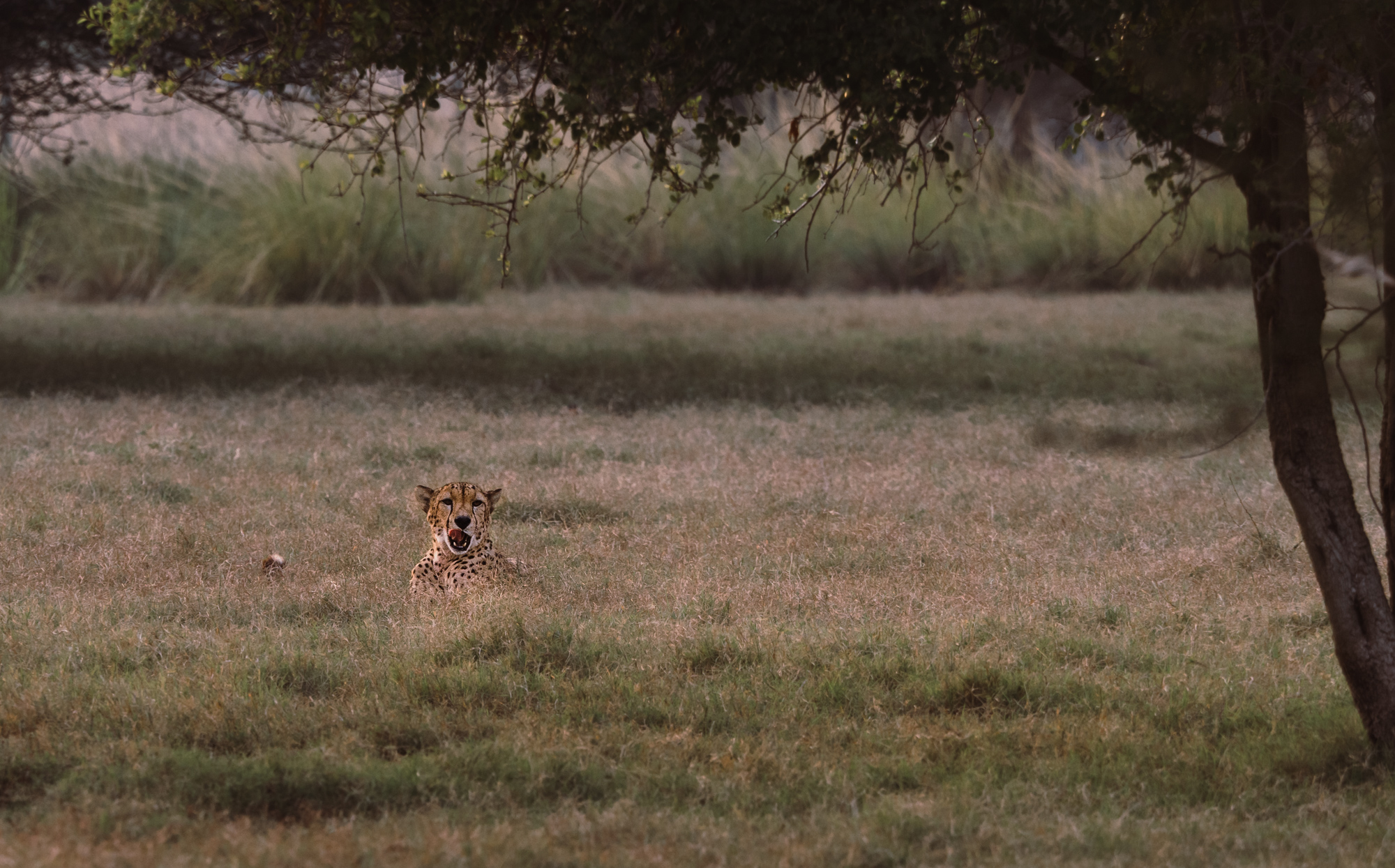
Nom Nom
The cheetah had just made a kill before we spotted them.
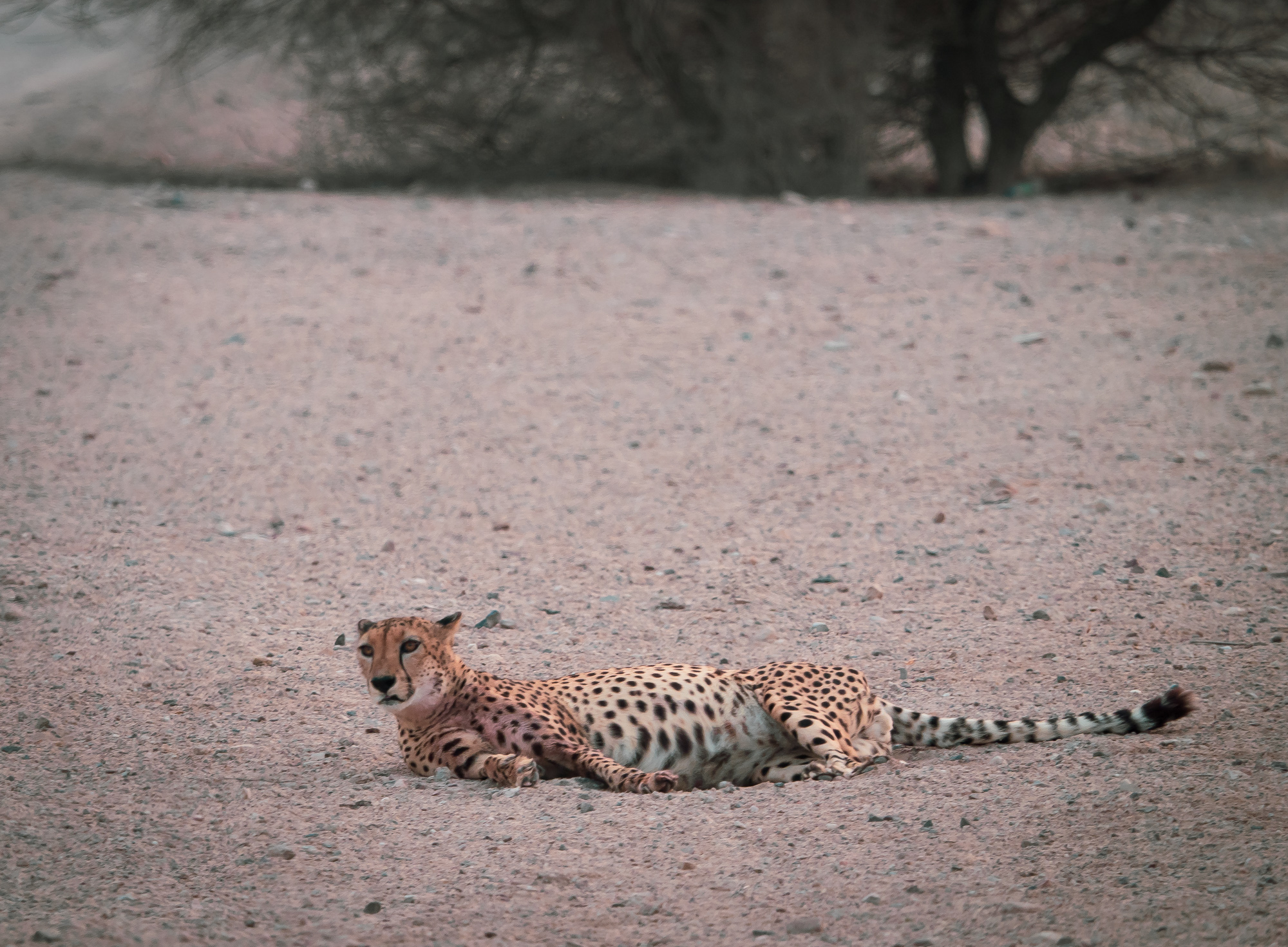
Rest time
So of course it was time to rest after the meal.

Leftovers
This was what was left of the Gazelle after they were done.
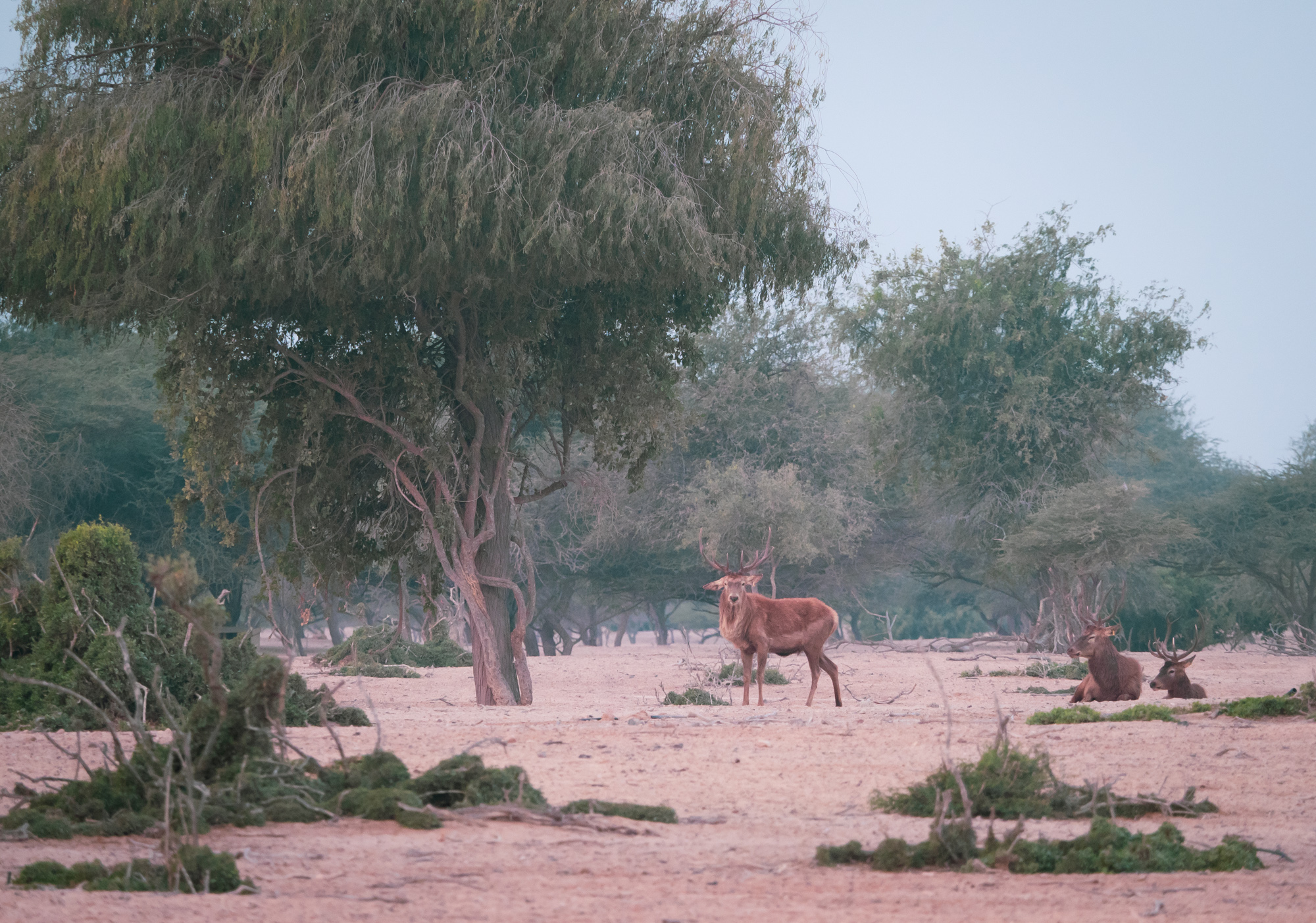
Morning Walk
A guided walking tour through the nature park is the best way to truly get a feeling for the animals.
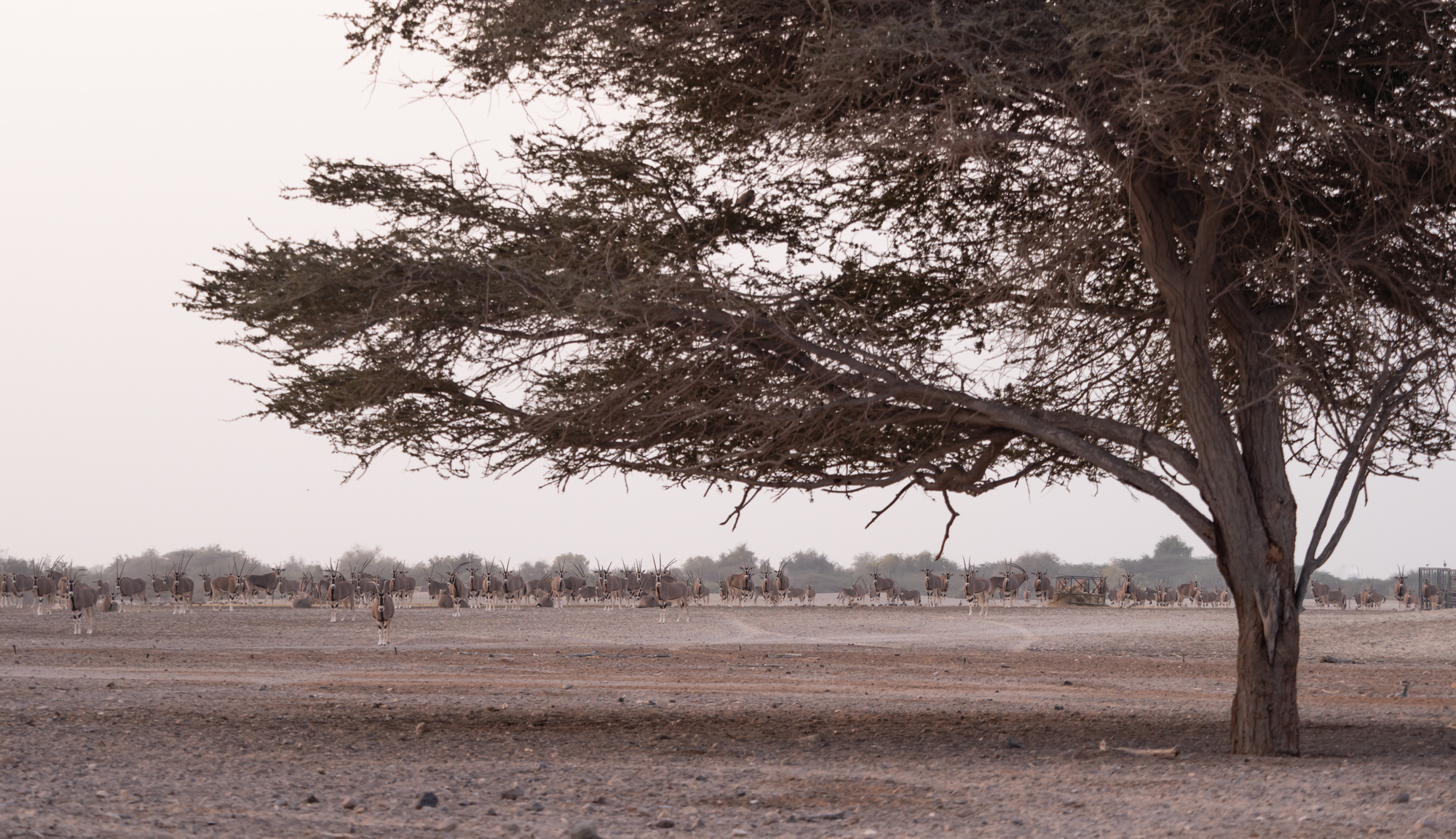
Conservation
The island is home to many critically endangered or vulnerable species, such as Barbary sheep, and Arabian tahr.
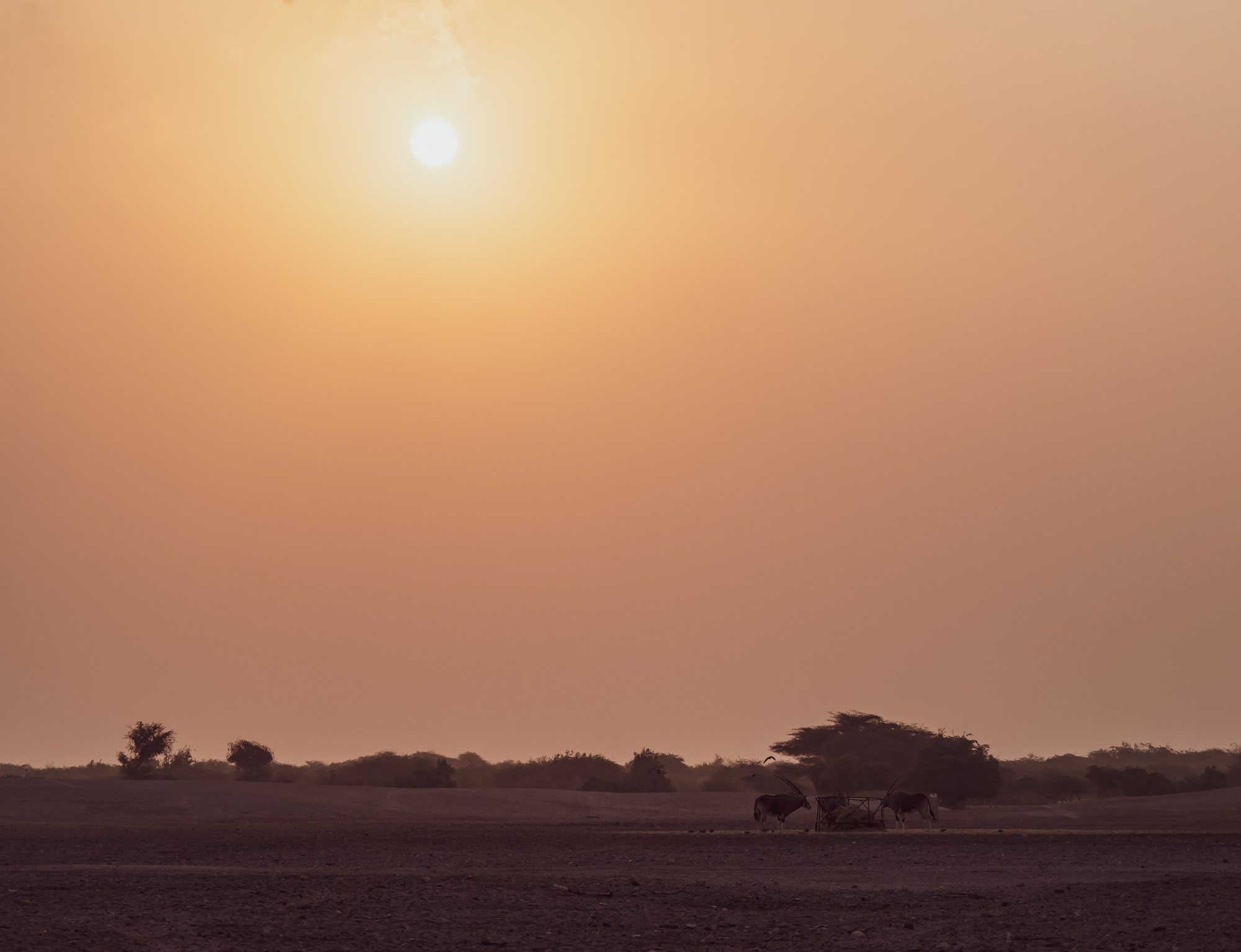
Sunrise Views
Many thousands of animals have been released back into the wild to help local and international conservation efforts.
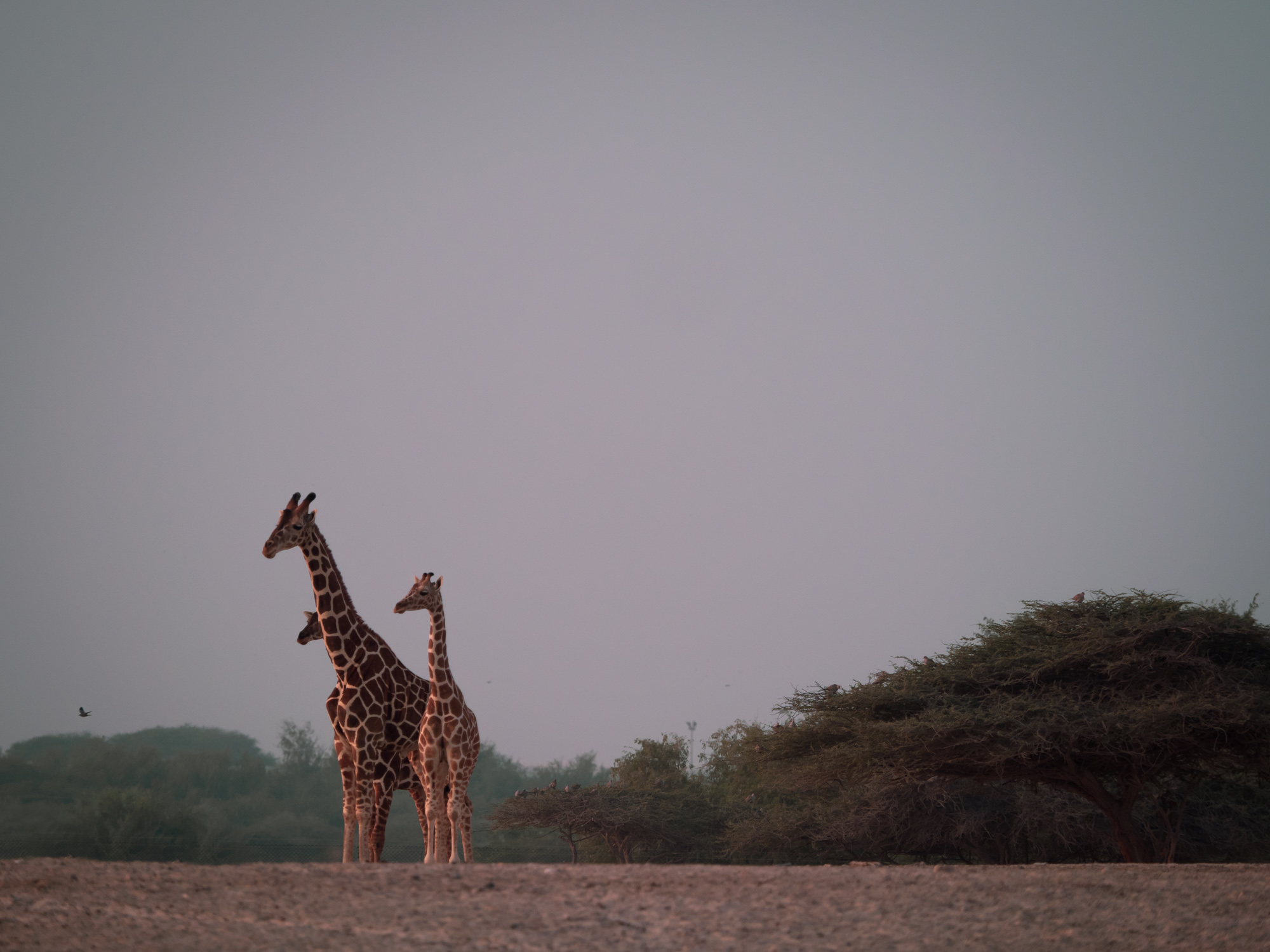
Giraffe Family
After the last young has been born, male and female giraffes have been seperated on the island to avoid further population growth, as giraffes eat a lot...

Wildlife
More than half the island is made up of the Arabian Wildlife Park, which is home to more than 10,000 free roaming animals.
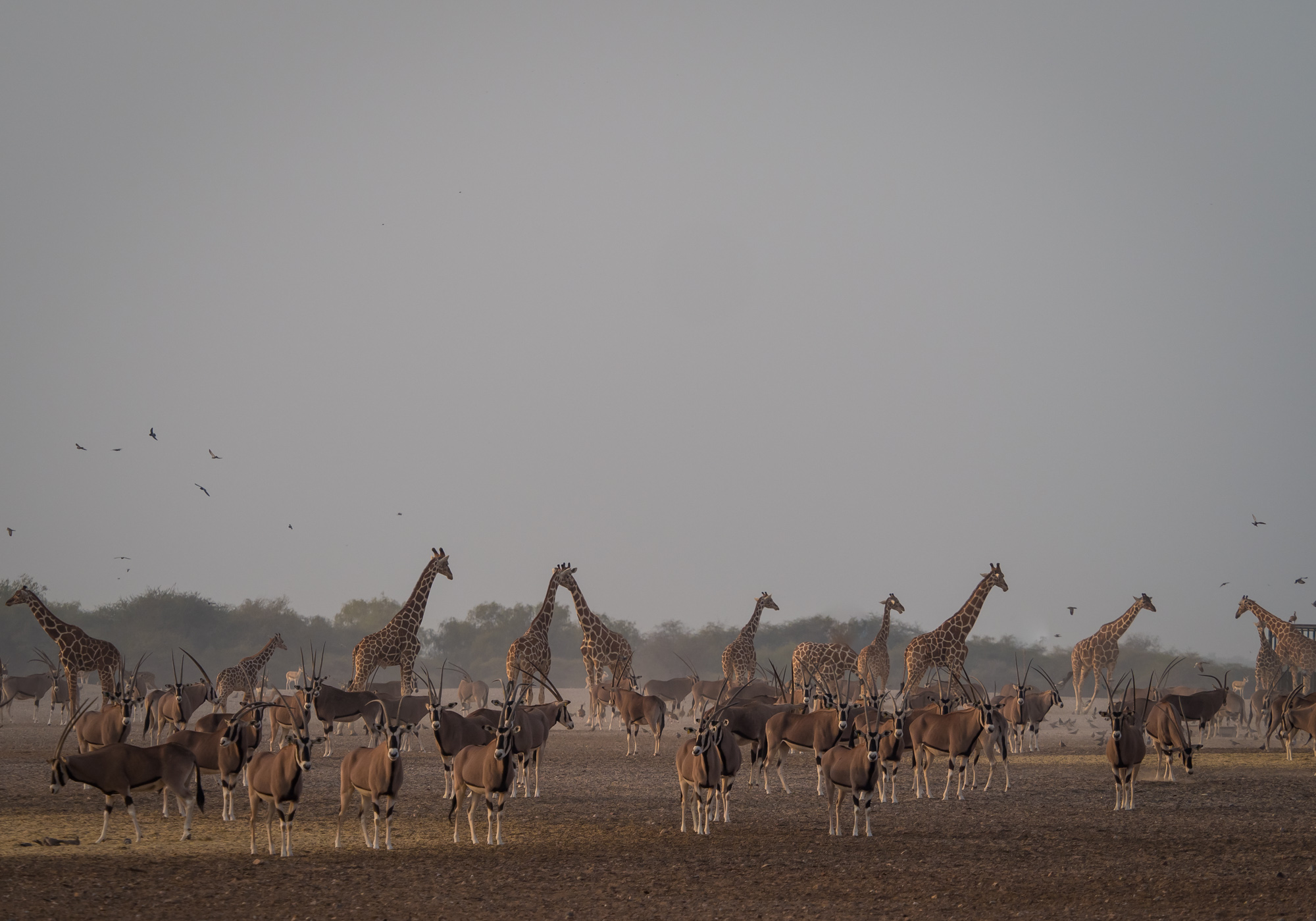
Under Observation
As we came closer during the walking tour, we were monitored quite intensely...
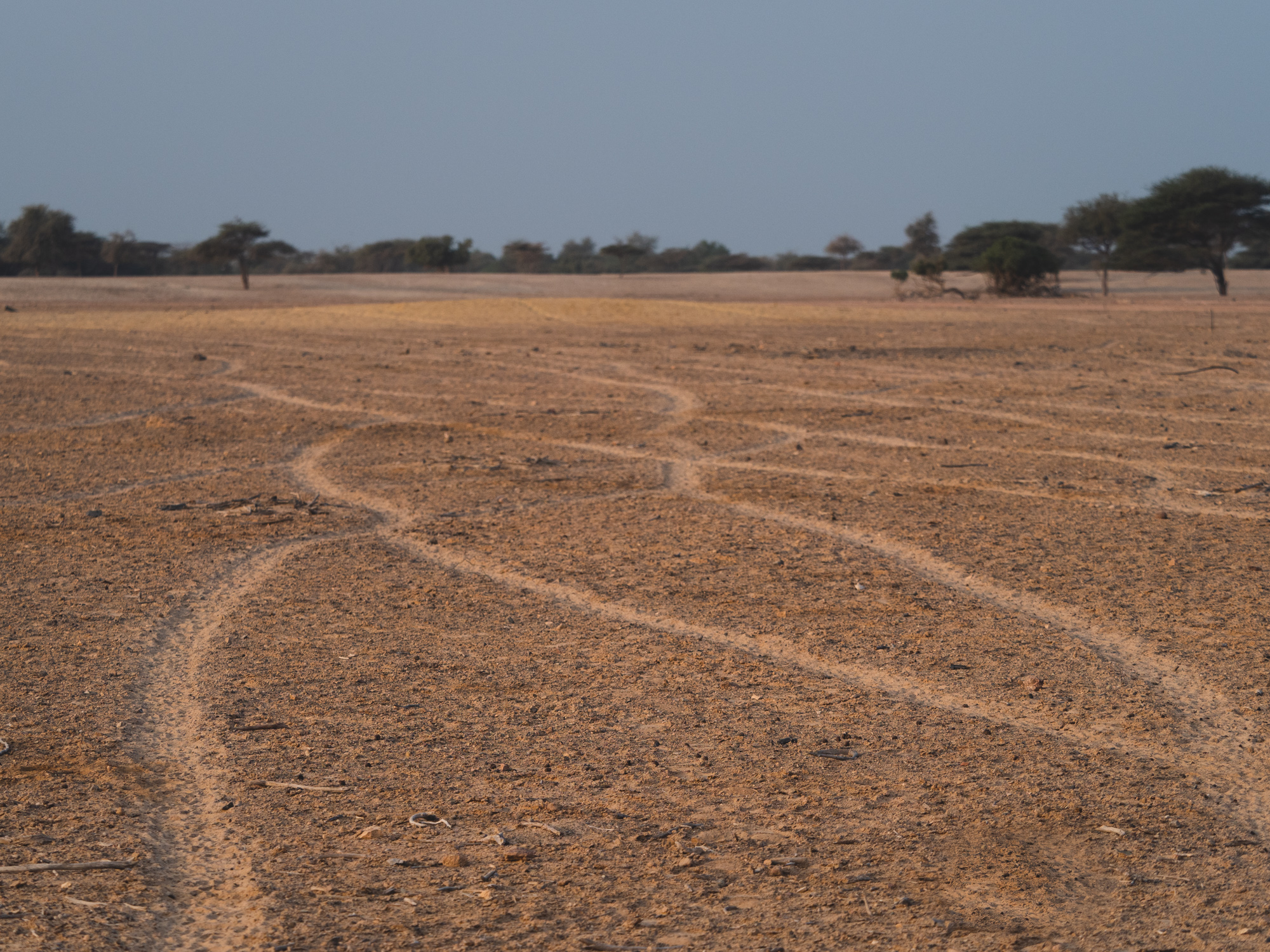
Car Tracks?
Actually - these are tracks from gazelles walking towards one of the feeding stations, they like to keep in line...
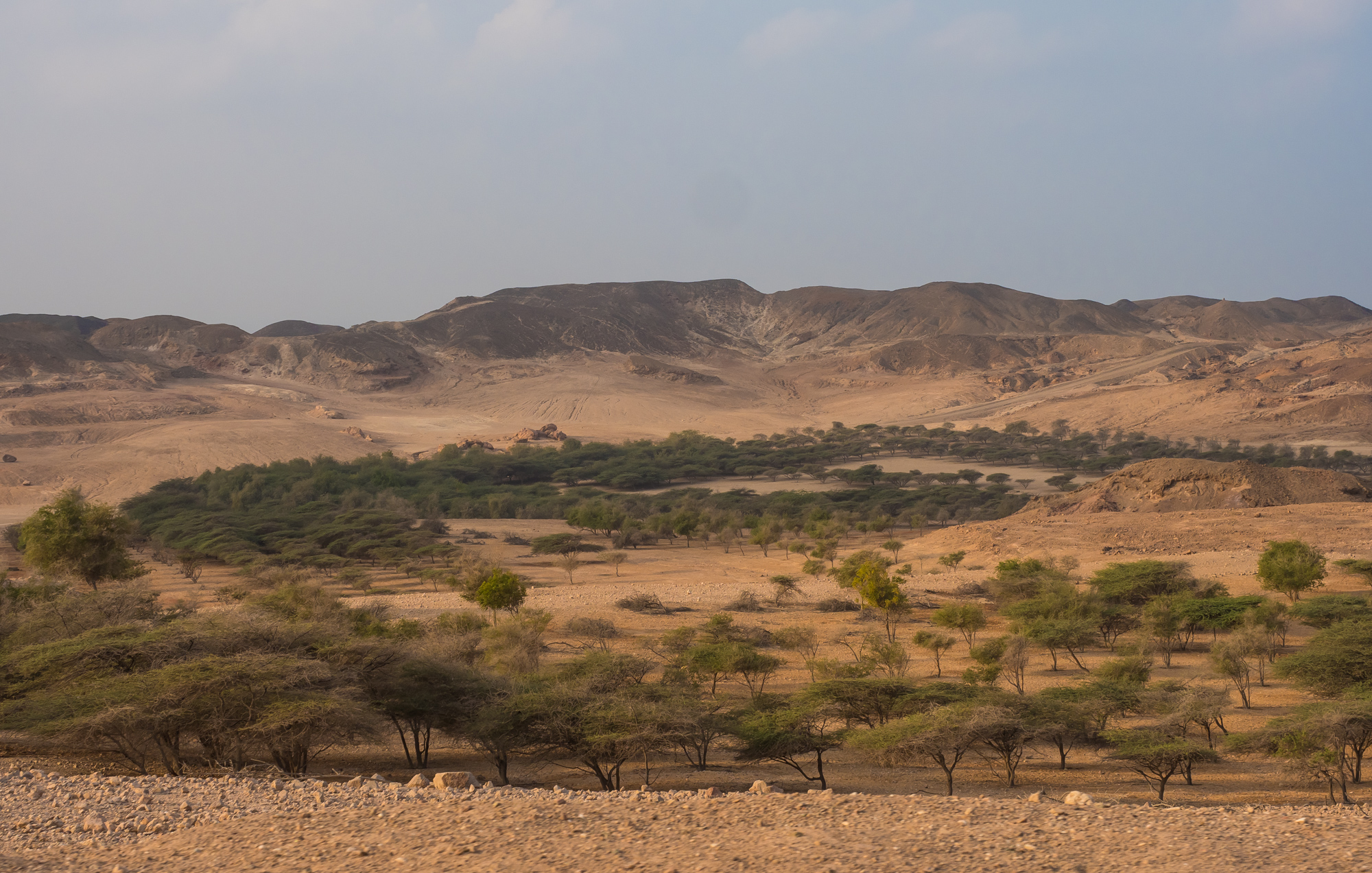
Greenery
Over 3 million trees have been planted on the island over the last 40 years.

Full Moon
Staying during full moon meant nights were bright.
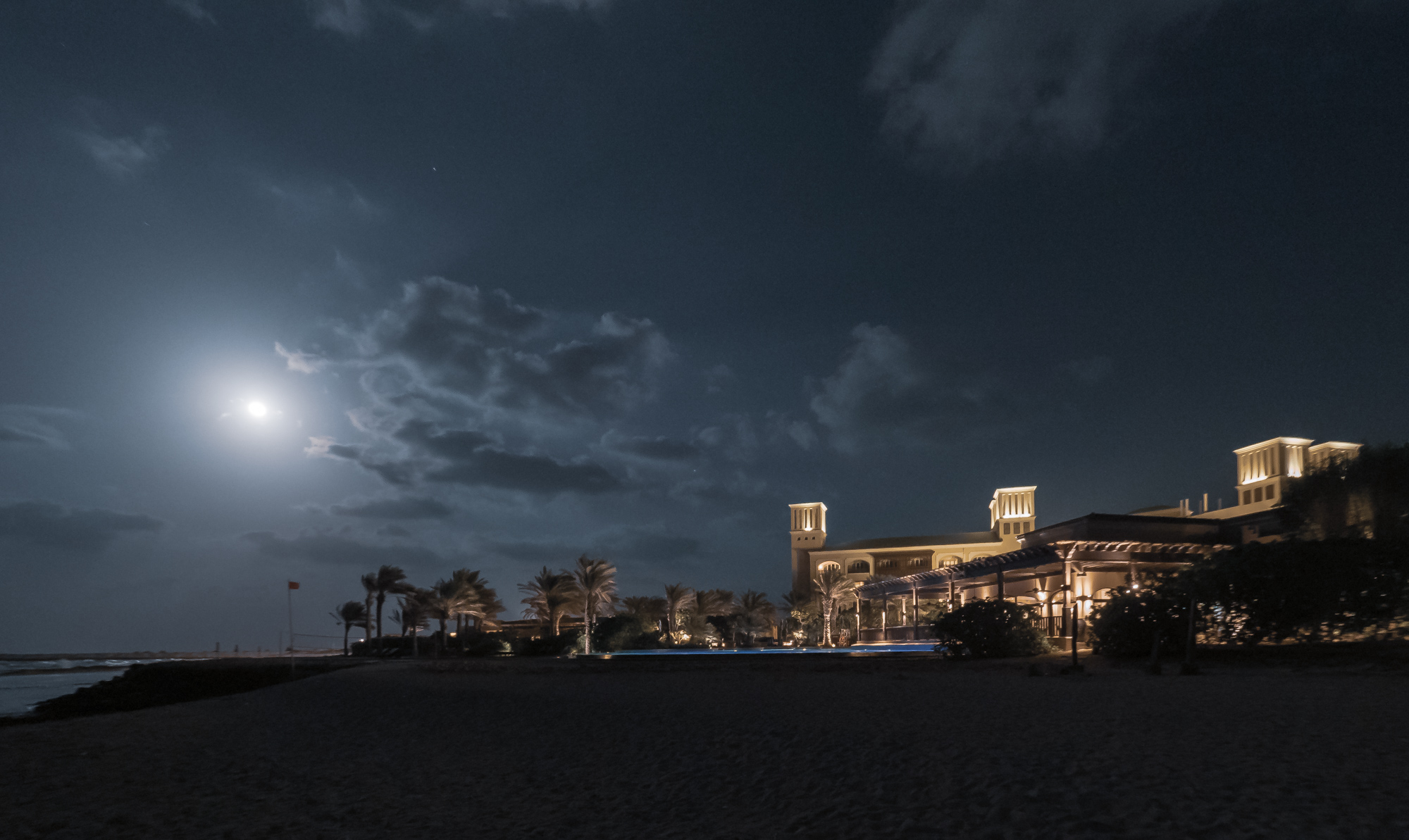
Desert Islands Hotel
The first hotel on the island opened in 2008 and used to be Sheikh Zayed's guest house.
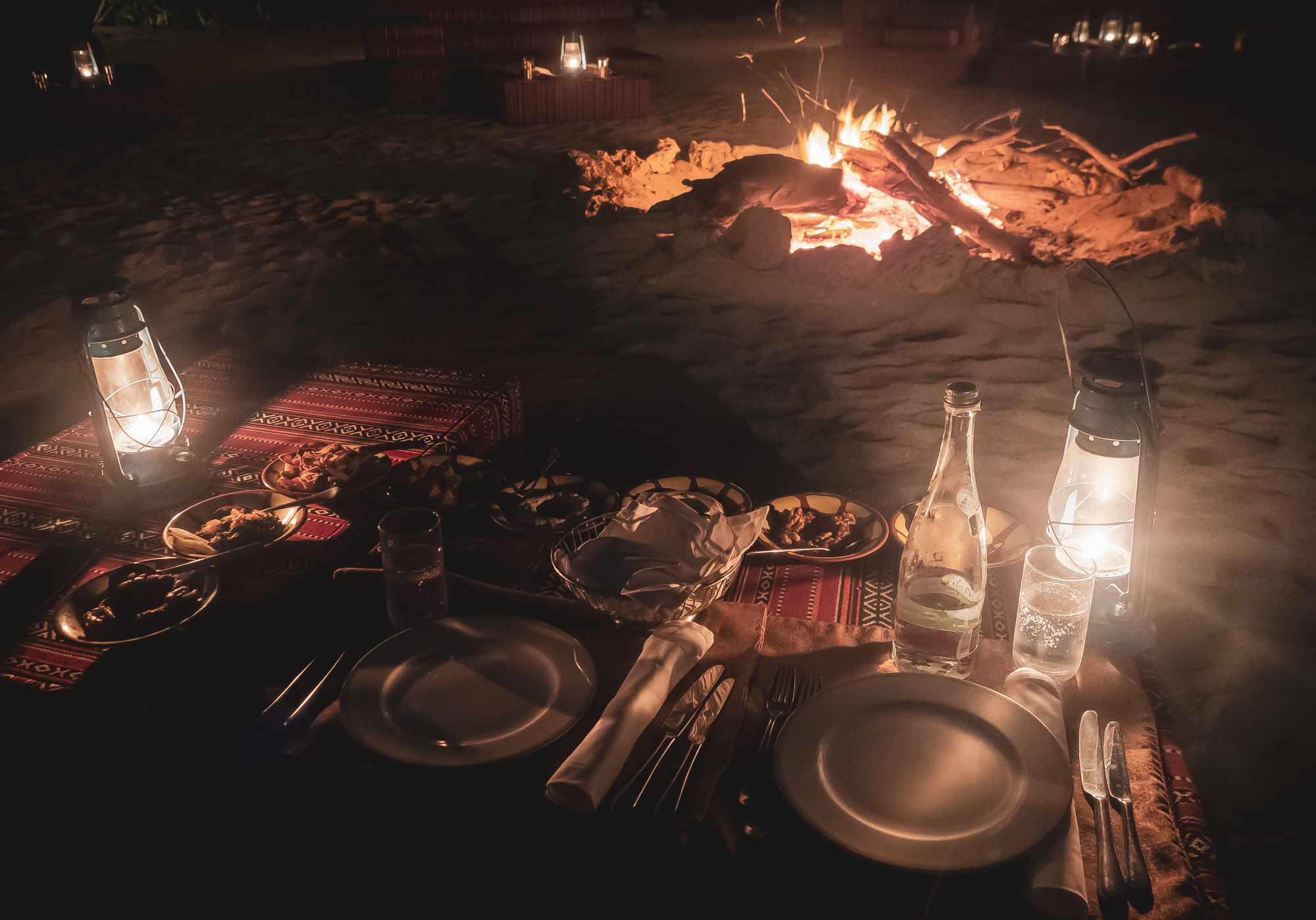
Dinner Time
It's getting cold in the Winter out in the sea, but a fire on the beach and some arabic food makes it more than bearable.

Wadi
The rugged mountain area features some beautiful Wadis which fill with water during (rare) rainy times.
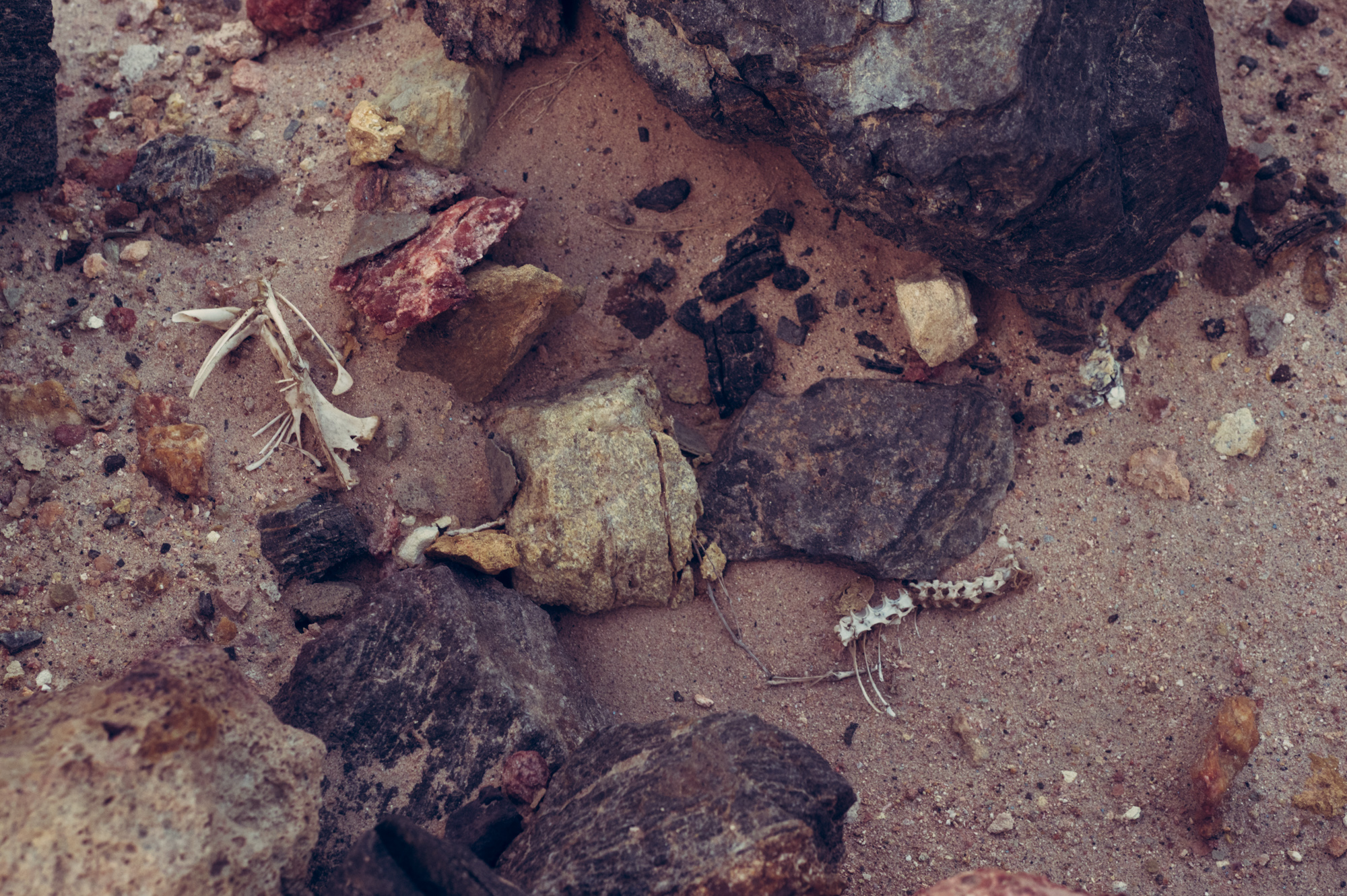
Cemetary
Many animals are said to come here for their last hours.

Oxidized Iron
Haematite I believe?

Colourful
Gypsum mixed with iron turn into brown and red colour shades across the rocks.
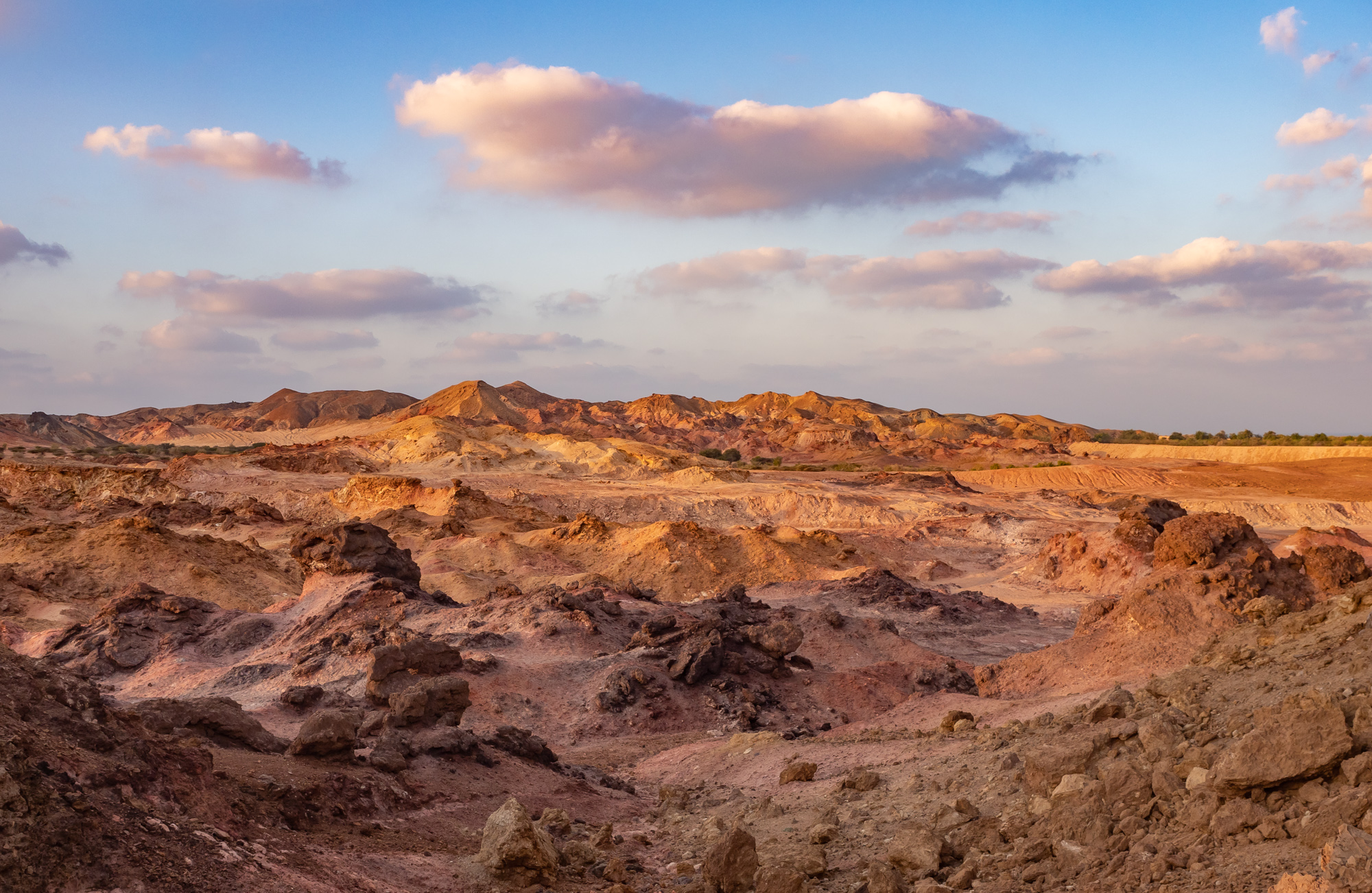
Barren
The central part of the island has not been planted much, and shows the barren yet beautiful mountainous landscapes.
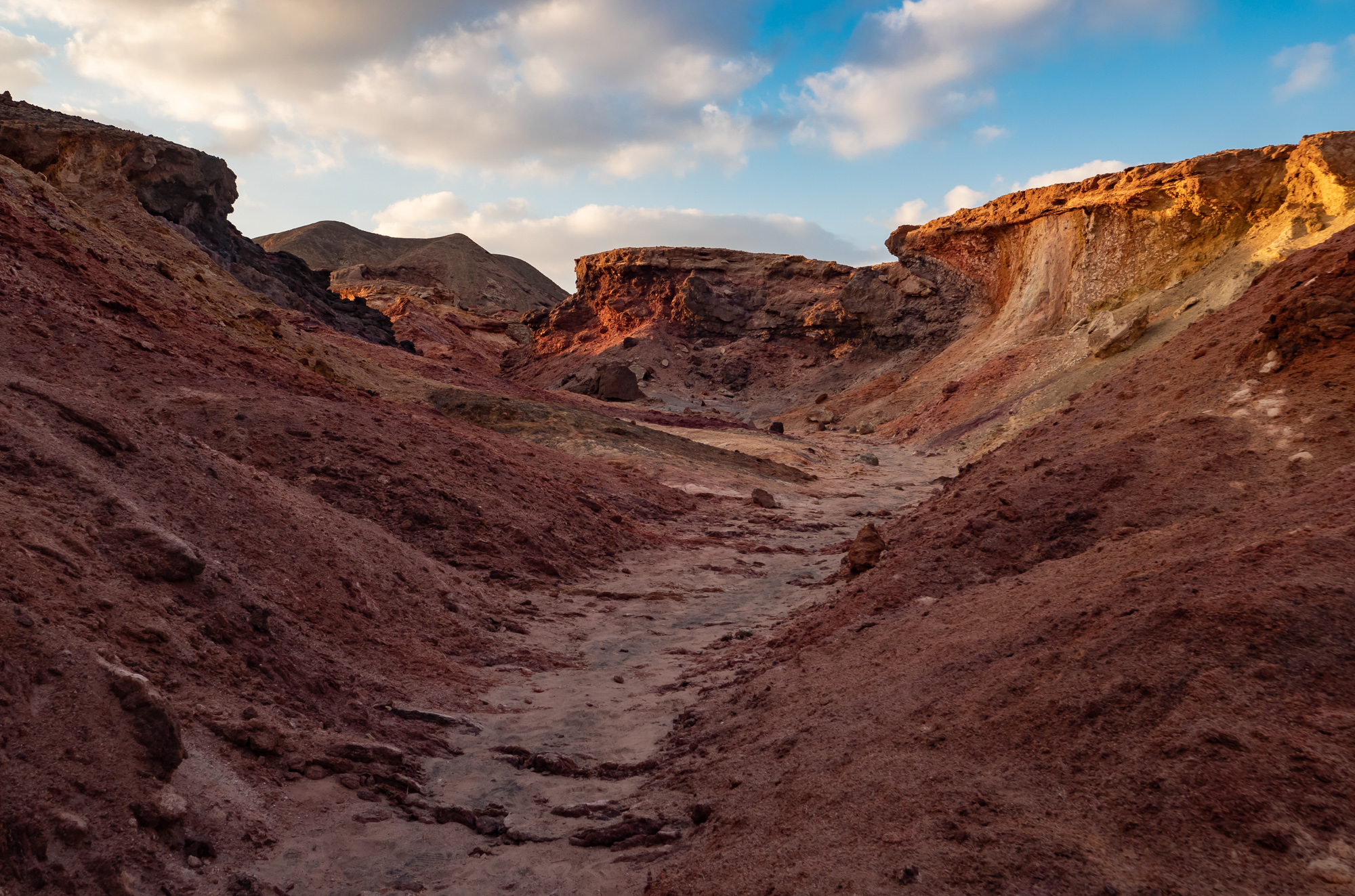
Nature & Culture
Aside from beautiful nature, the island is also home to the UAE's only discovered Christian monastery from around 600 AD - it is currently being renovated and can't be visited though.

The First Rays
Salt and sediments squeezed their way to the surface, creating the patterns in the rock.

Shadow Selfie
Sunrise always makes for the best light.

Green Dot.
Even in this landscape, some plants survive, although very few are naturally occuring.
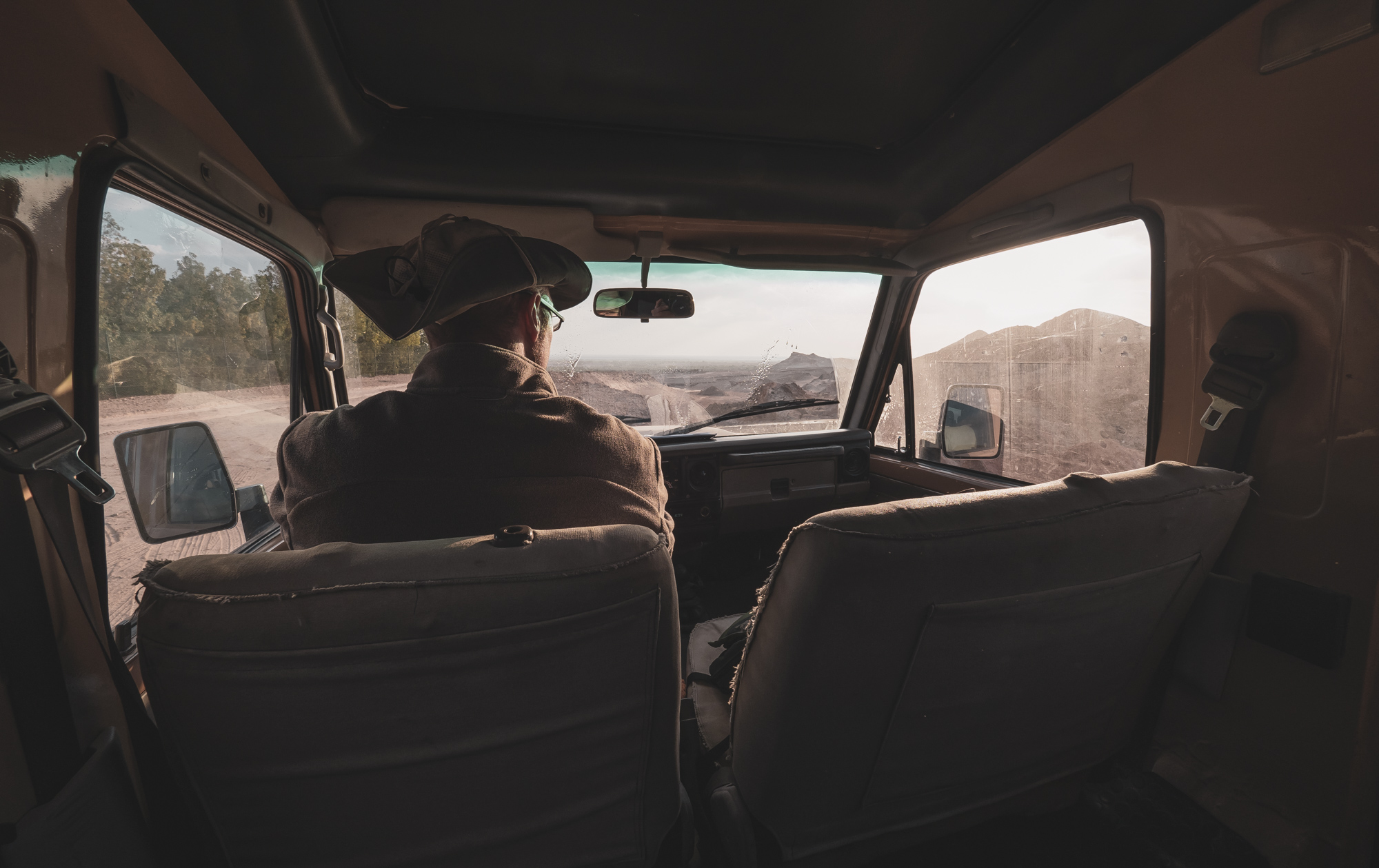
Exploring
You can explore the island with a 4x4 or also by foot - although at 87sqm it was a lot bigger than I had thought.
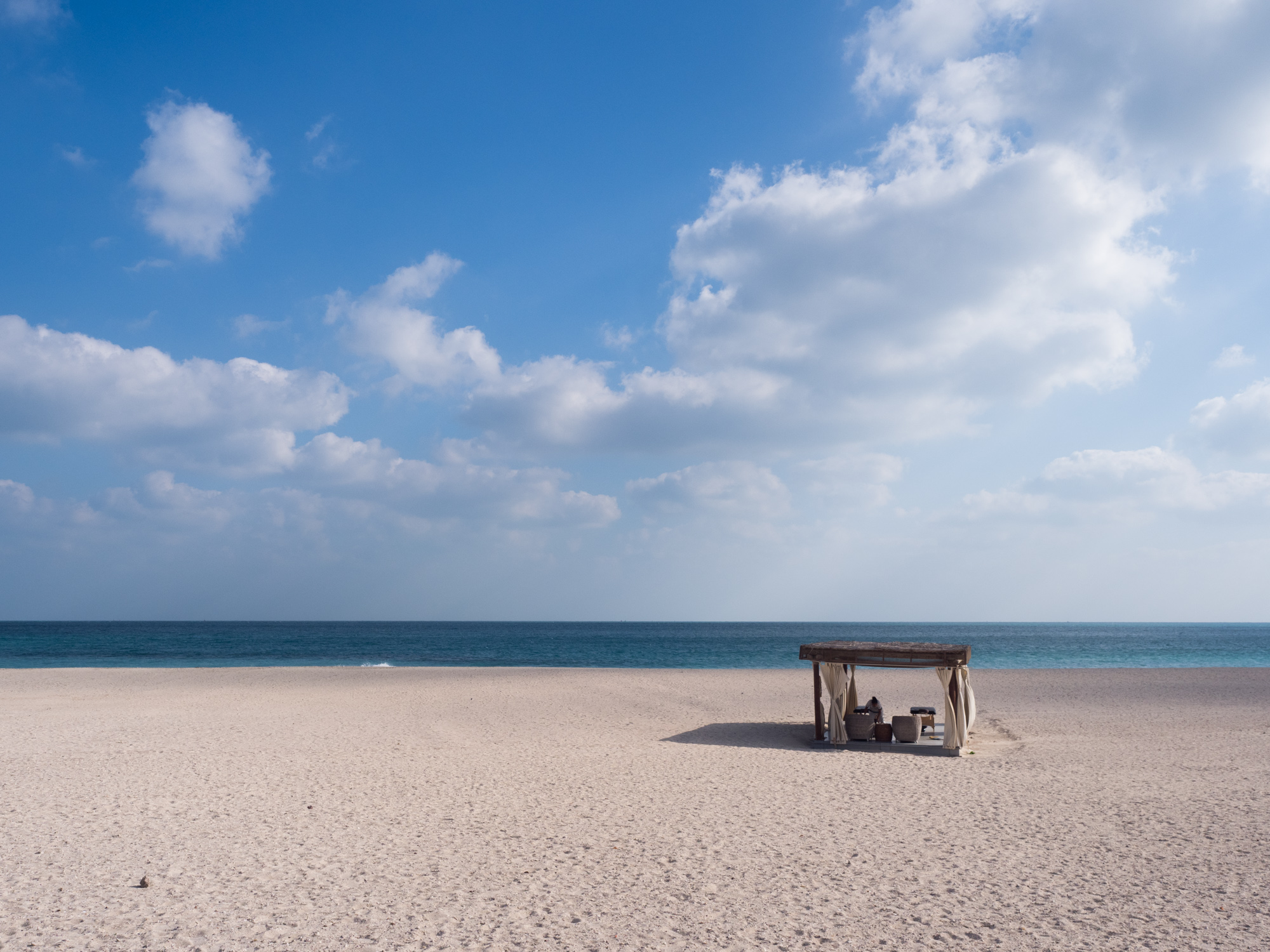
Beach Life
The natural variety of the island is amazing.
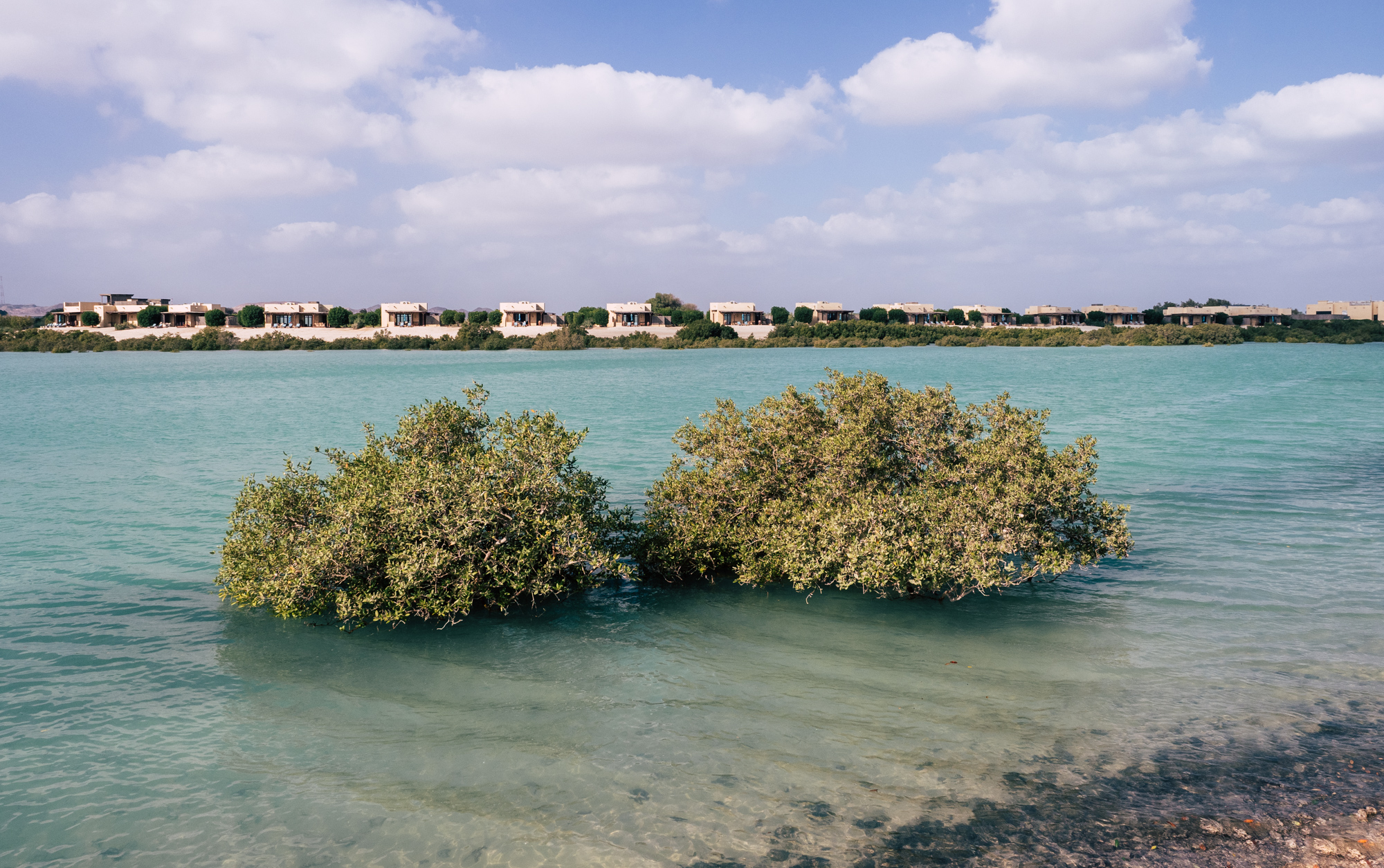
Hotel Views
The island now has three hotels run by Anantara, with a total of less than 150 rooms. Al Yamm is located on the eastern shores in the mangrove area.

Fattie
Unsure of what kind.
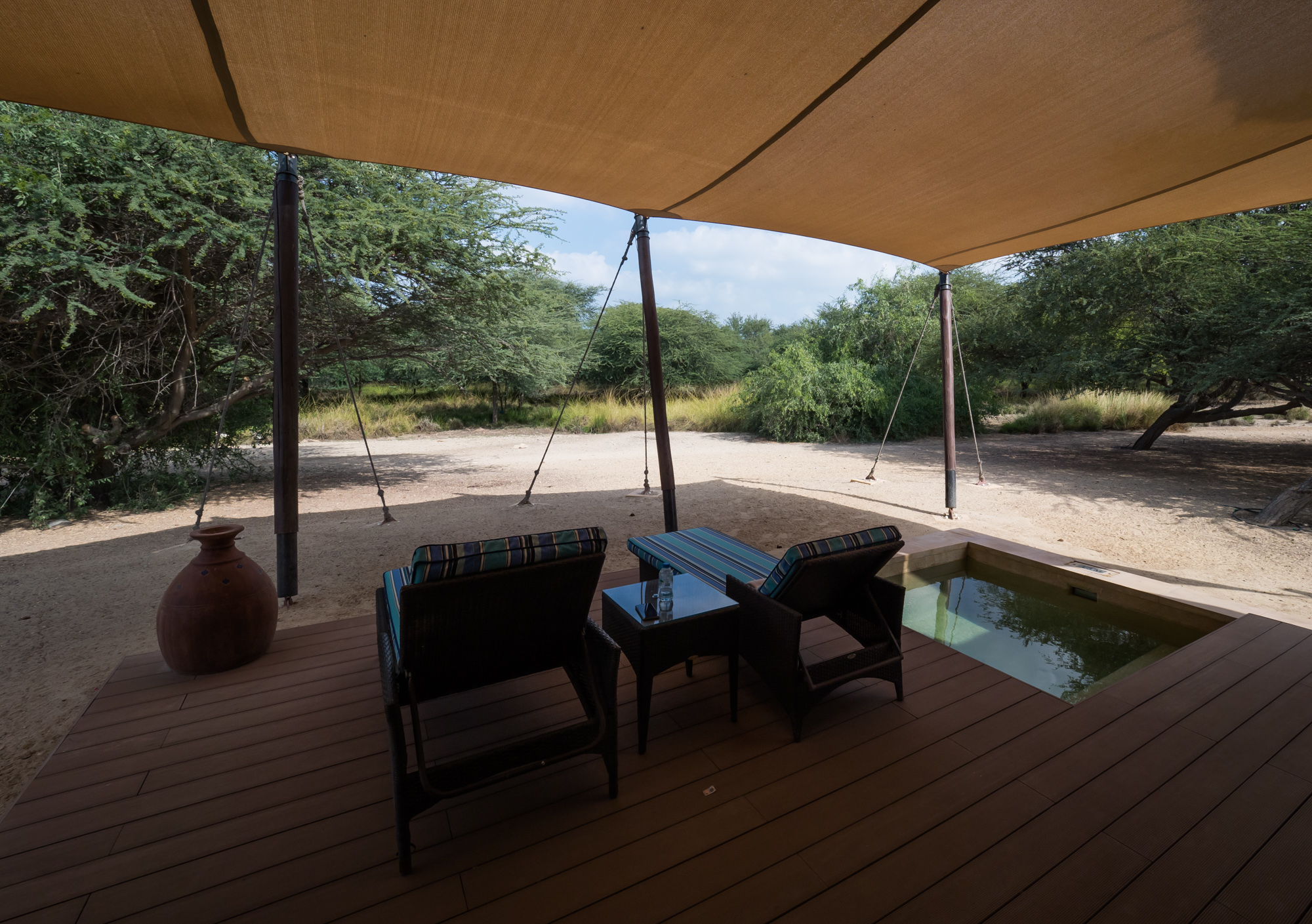
Terrace Viewpoints
The Al Sahel hotel is located towards the centre of the island surrounded by greenery, with gazelles and other animals regularly passing by.
Seychelles - Island Beauty
After my first visit to the Seychelles in 2010, it was time go back for another trip to the Indian Ocean archipelago, this time staying on Praslin island and visiting La Digue, after having seen Mahe and the capital Victoria during my last visit.

After my first visit to the Seychelles in 2010, it was time go back for another trip to the Indian Ocean archipelago, this time staying on Praslin island and visiting La Digue, after having seen Mahe and the capital Victoria during my last visit.
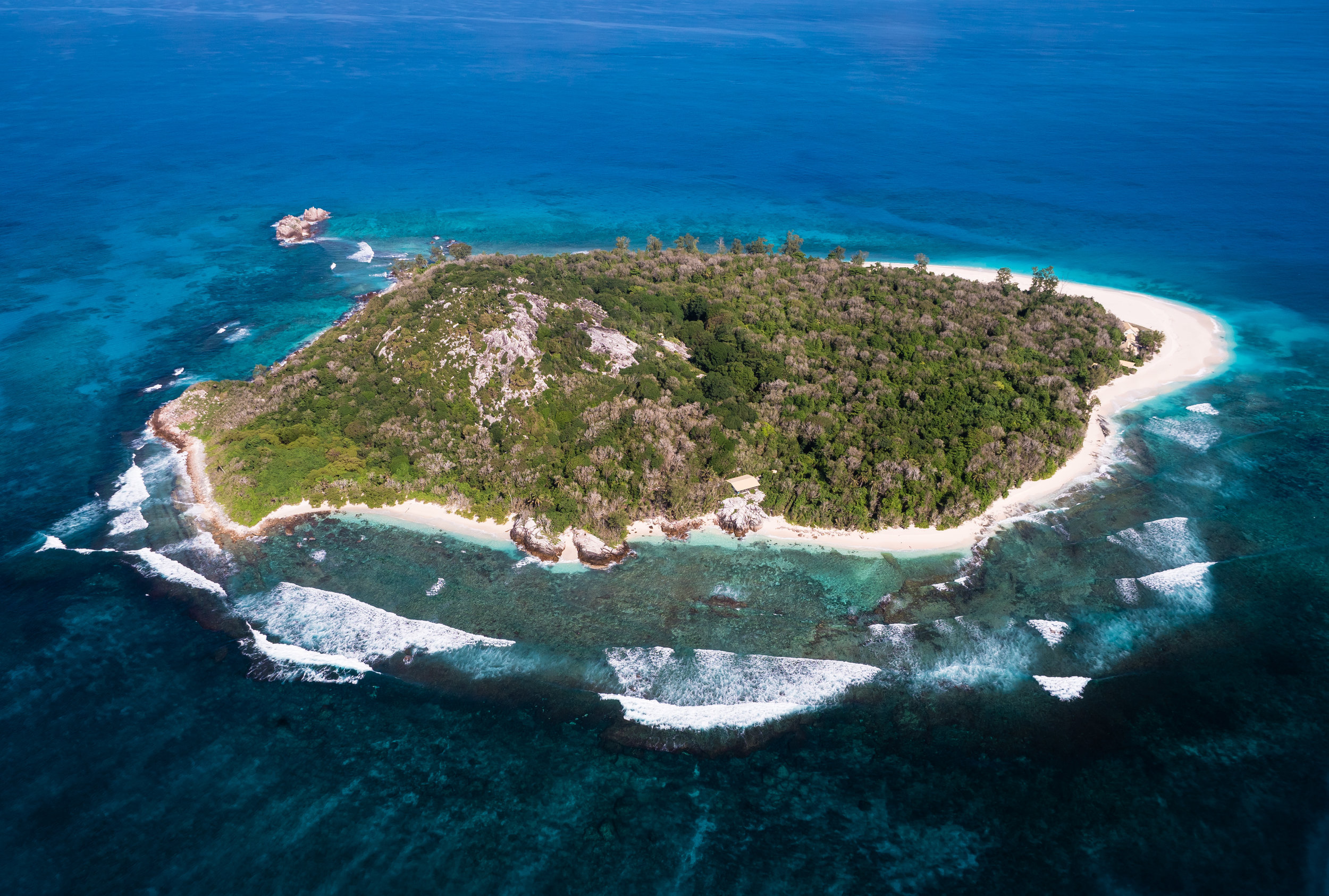
Island Paradise
The Seychelles probably represent some of the most stereotypical island beauty features there are.

Island Transport
The best way to get around! We took the trip from Mahe's airport straight to the hotel.

Praslin Island
We stayed on Praslin, the second biggest island of the Seychelles. Its most famous beach - Anse Lazio - in the foreground, seemingly voted one of the Top 5 beaches in the world.
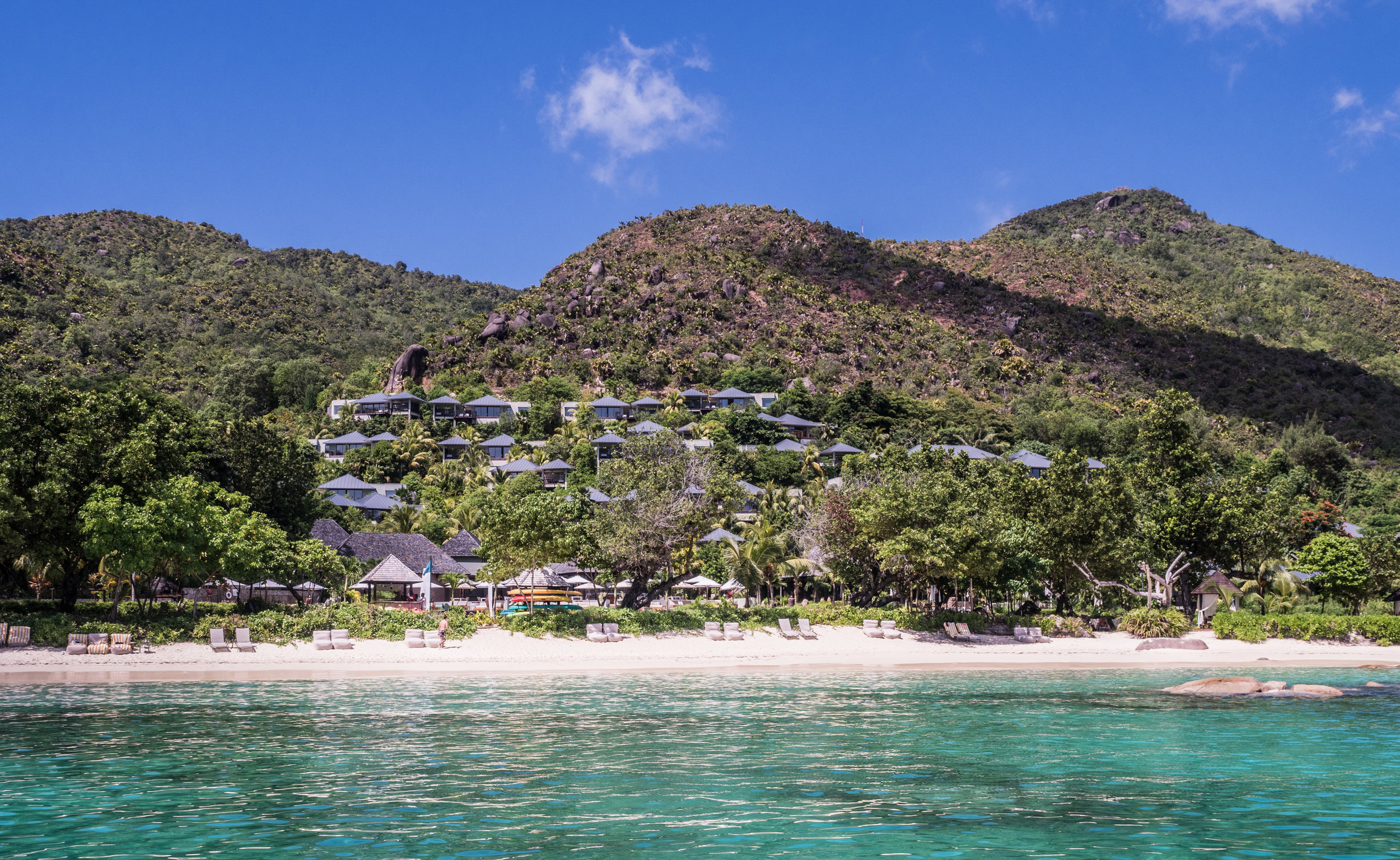
The Raffles
The hotel is located on the north eastern side of Praslin, with its close to 100 villas nestled along the hillside.
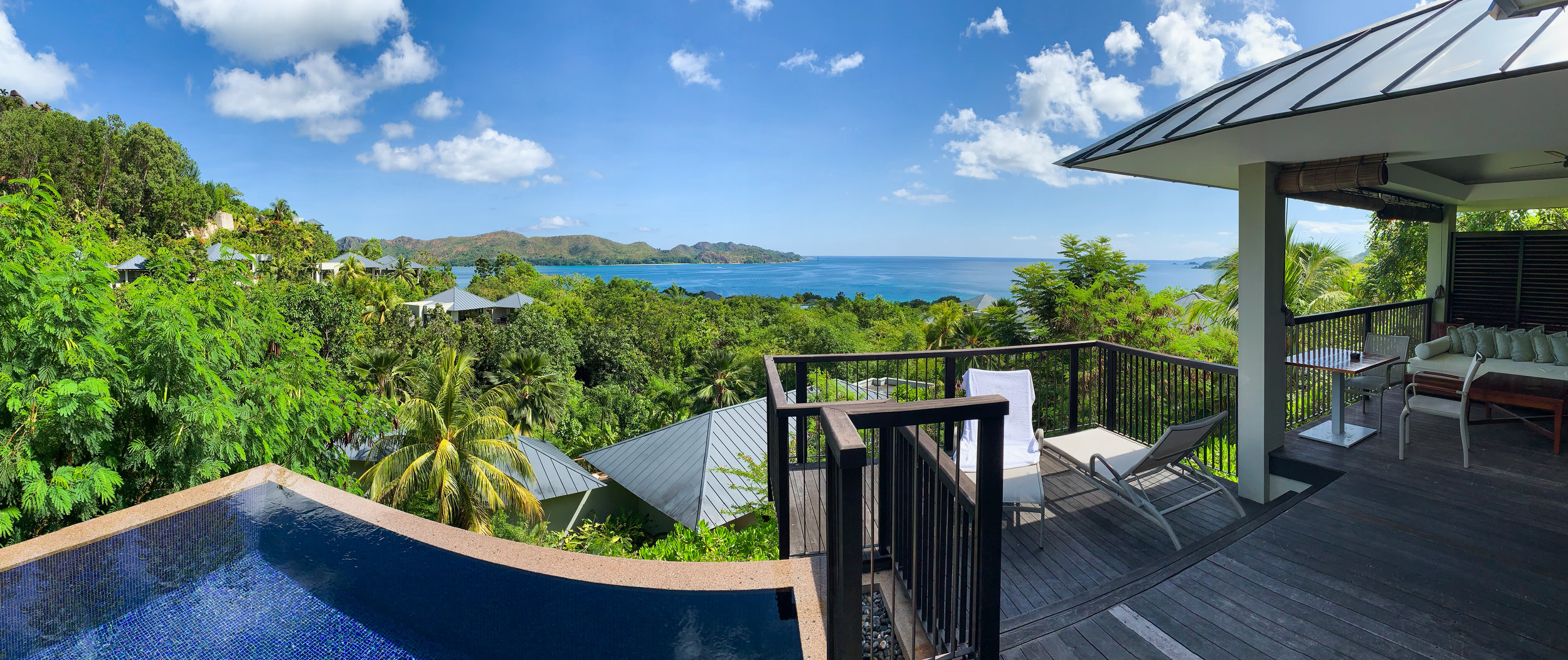
Room Views
The Raffles has some gorgeous ocean view villas.
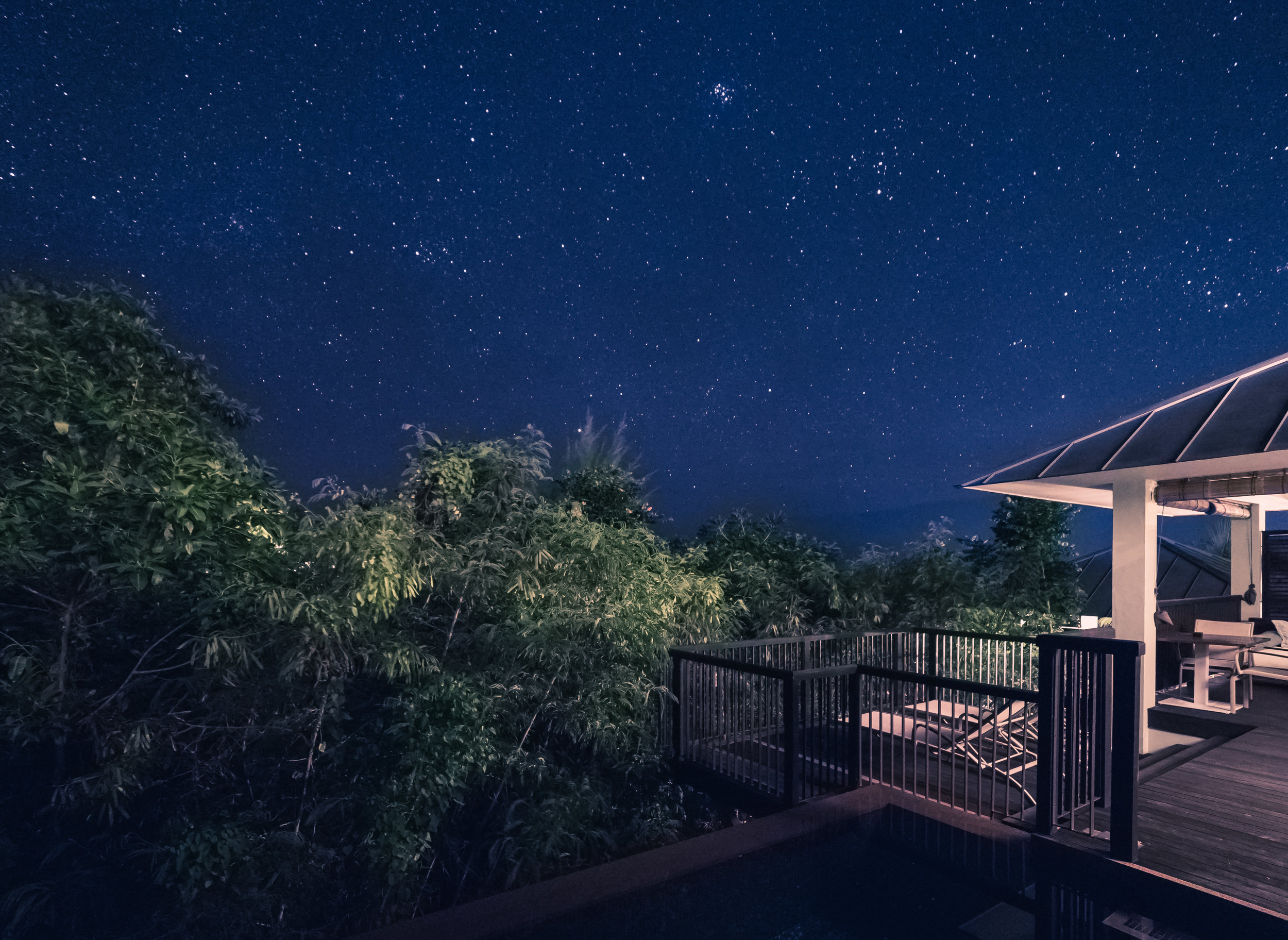
Night Views
The clear skies and lack of light pollution make for good stargazing, but no Milky Way this time of the year.

Tastes Good
Someone must have spilled something here...
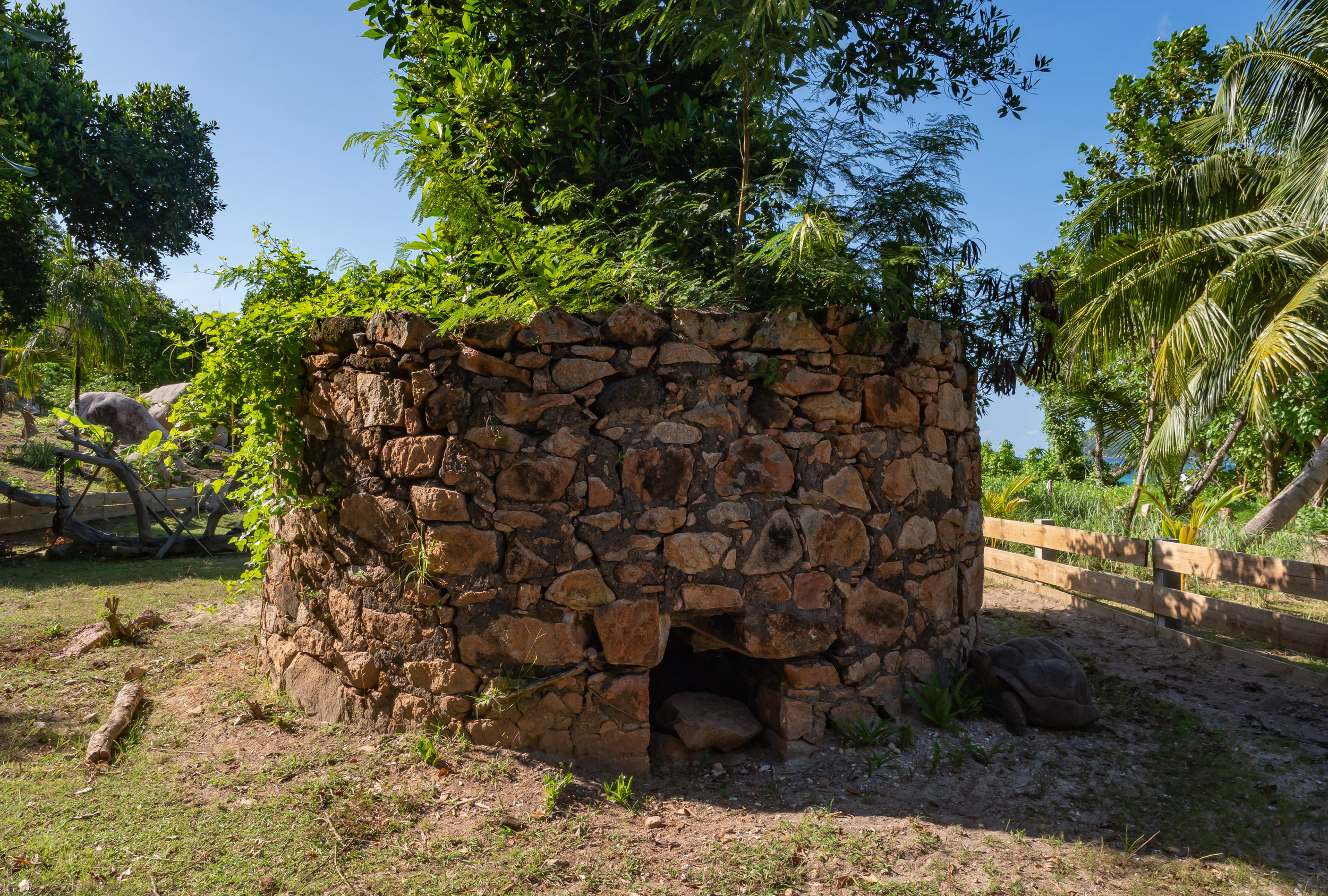
Kiln
An old furnace from the early 1900s, now serving as Tortoise home at Raffles hotel.
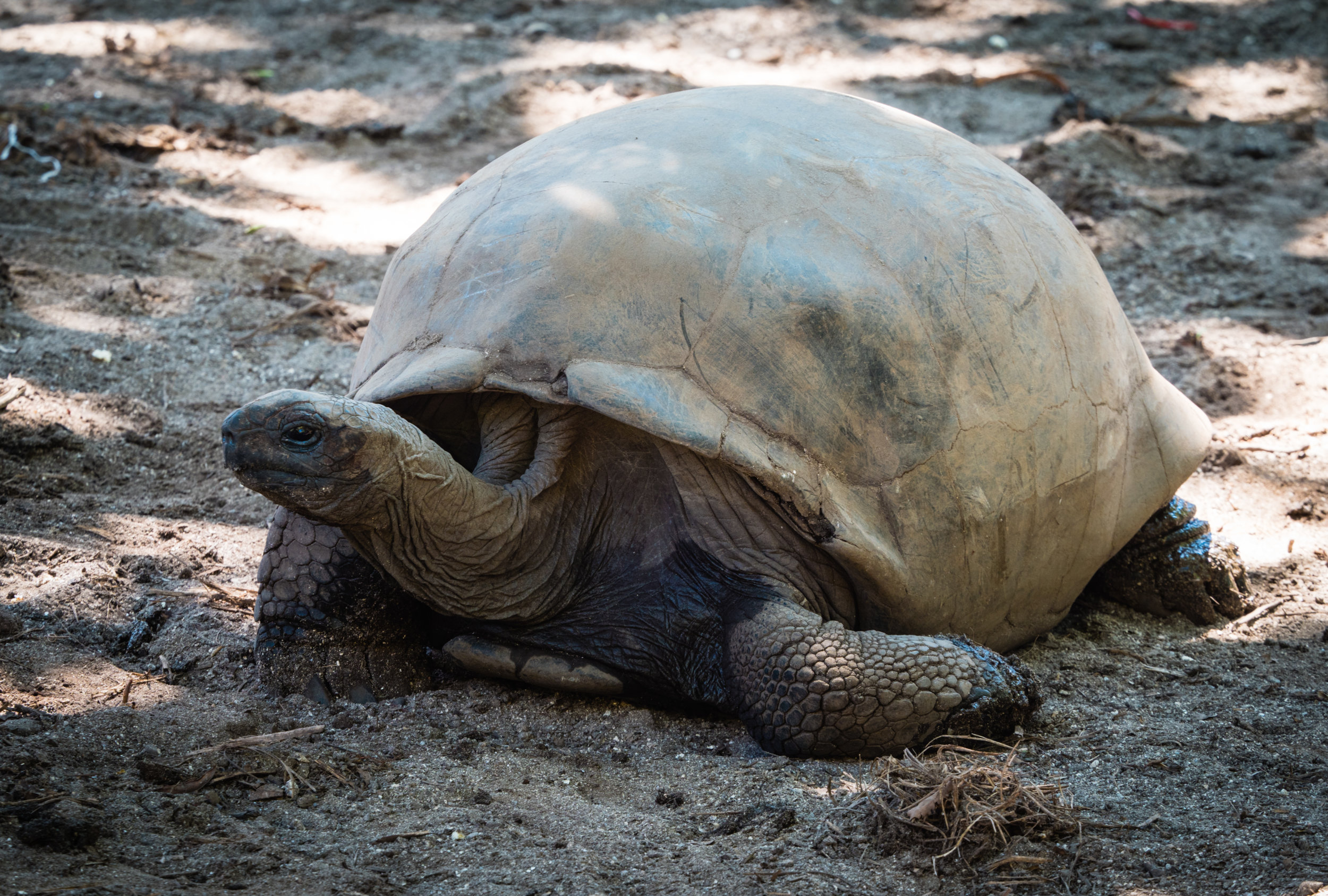
Giant Tortoise
The Seychelles giant tortoise is clost to extinct in the wild; there is only one large population of more than 100000 in the Aldabra Atoll.
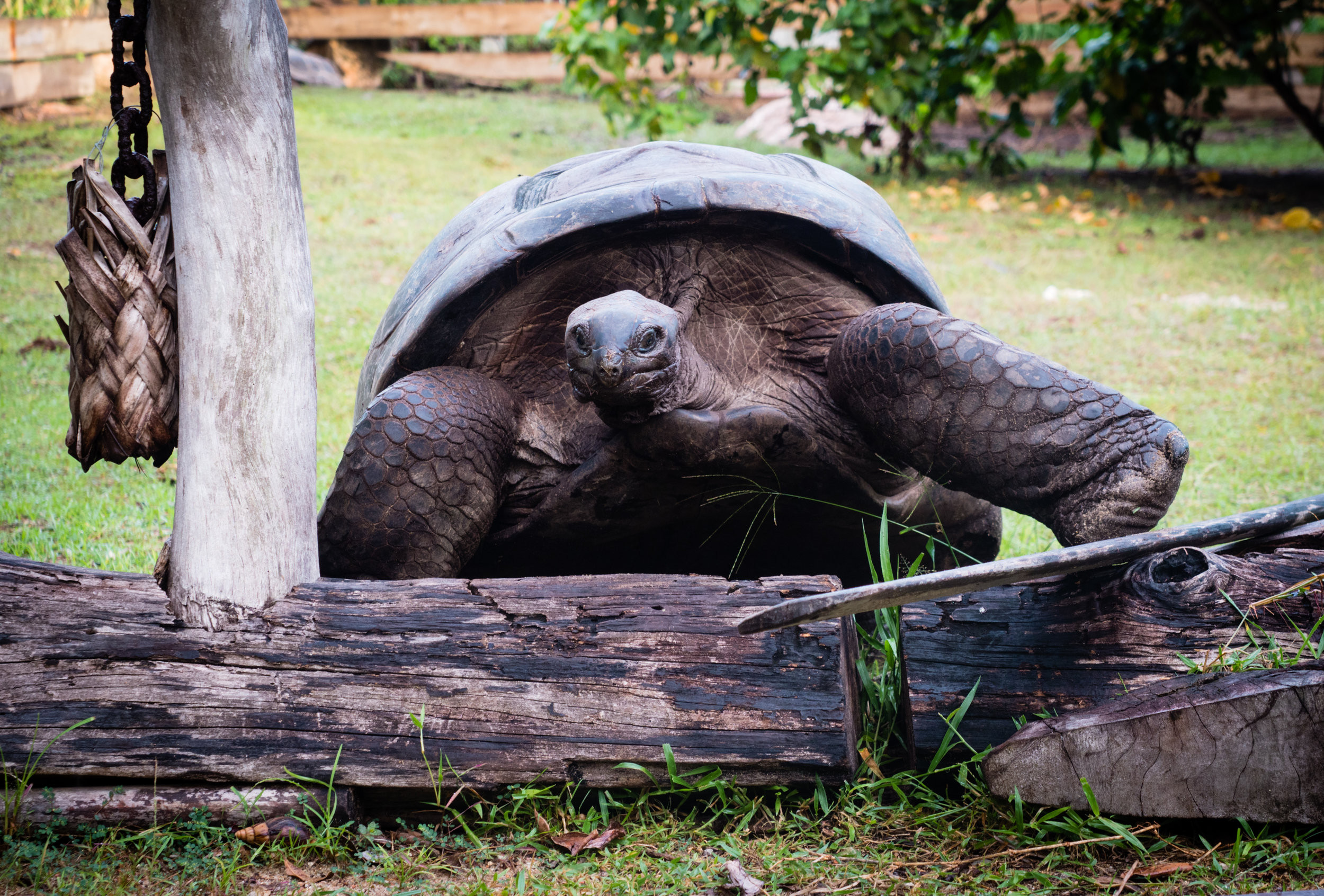
Climbing
Giant tortoises are not made for climbing obstacles, but they can find their way around.

Orientation Issues
Can't say I observed any effort by this misguided tortoise's colleagues to correct the situation.
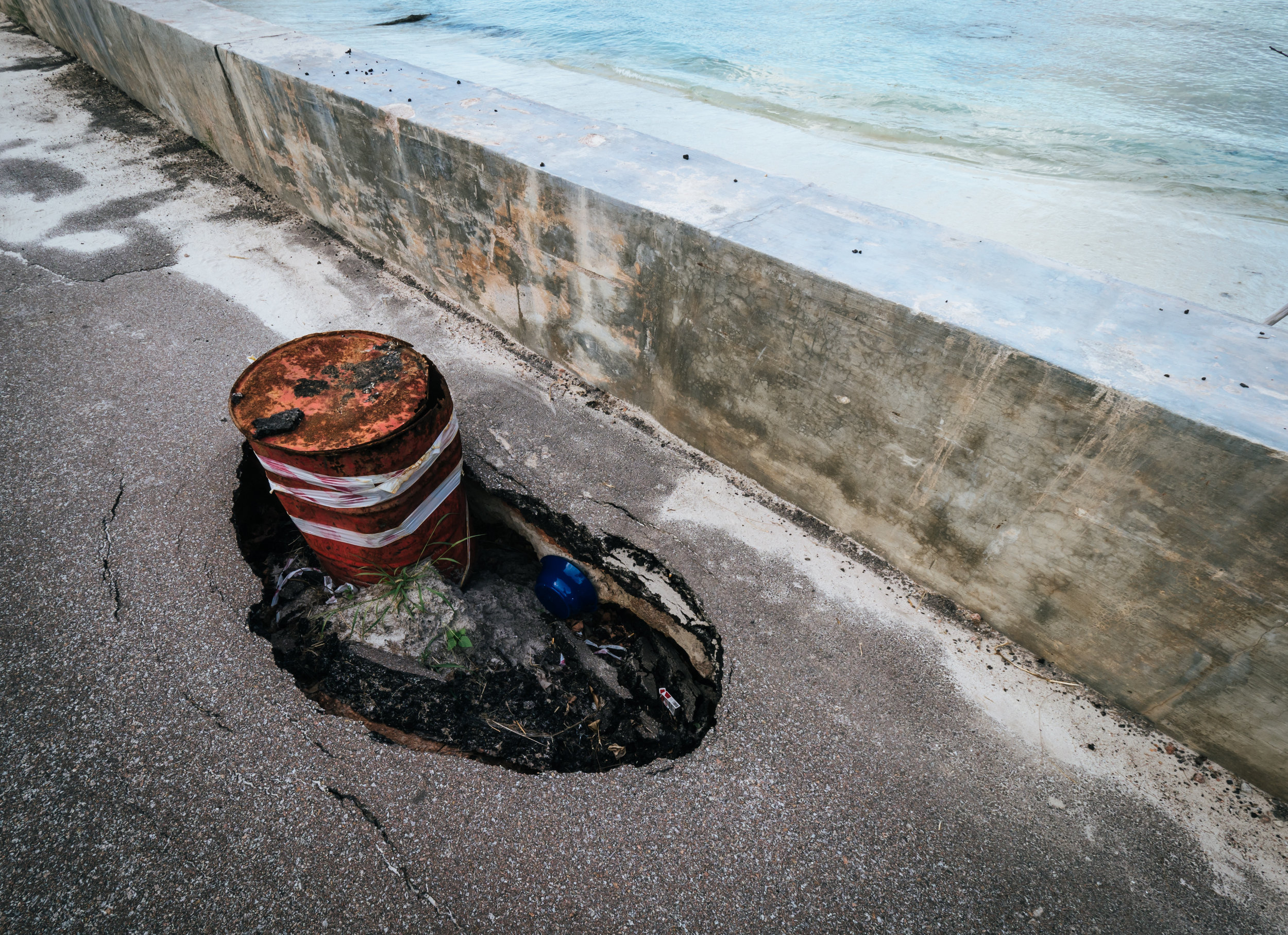
Warning
The roads aren't in the best condition, but at least there are attempts to make drivers aware.
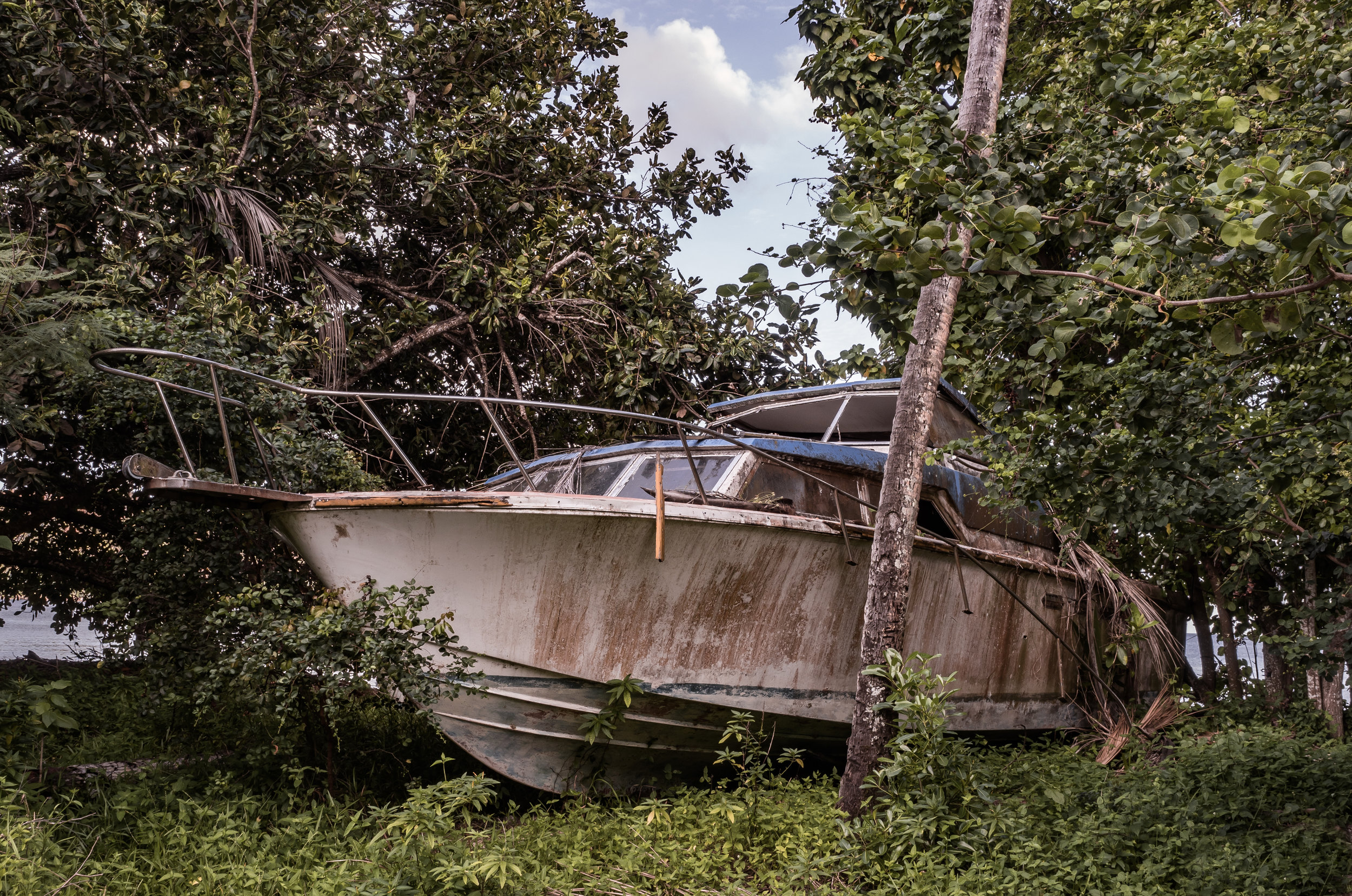
Out of Order
Temporarily or permanently?
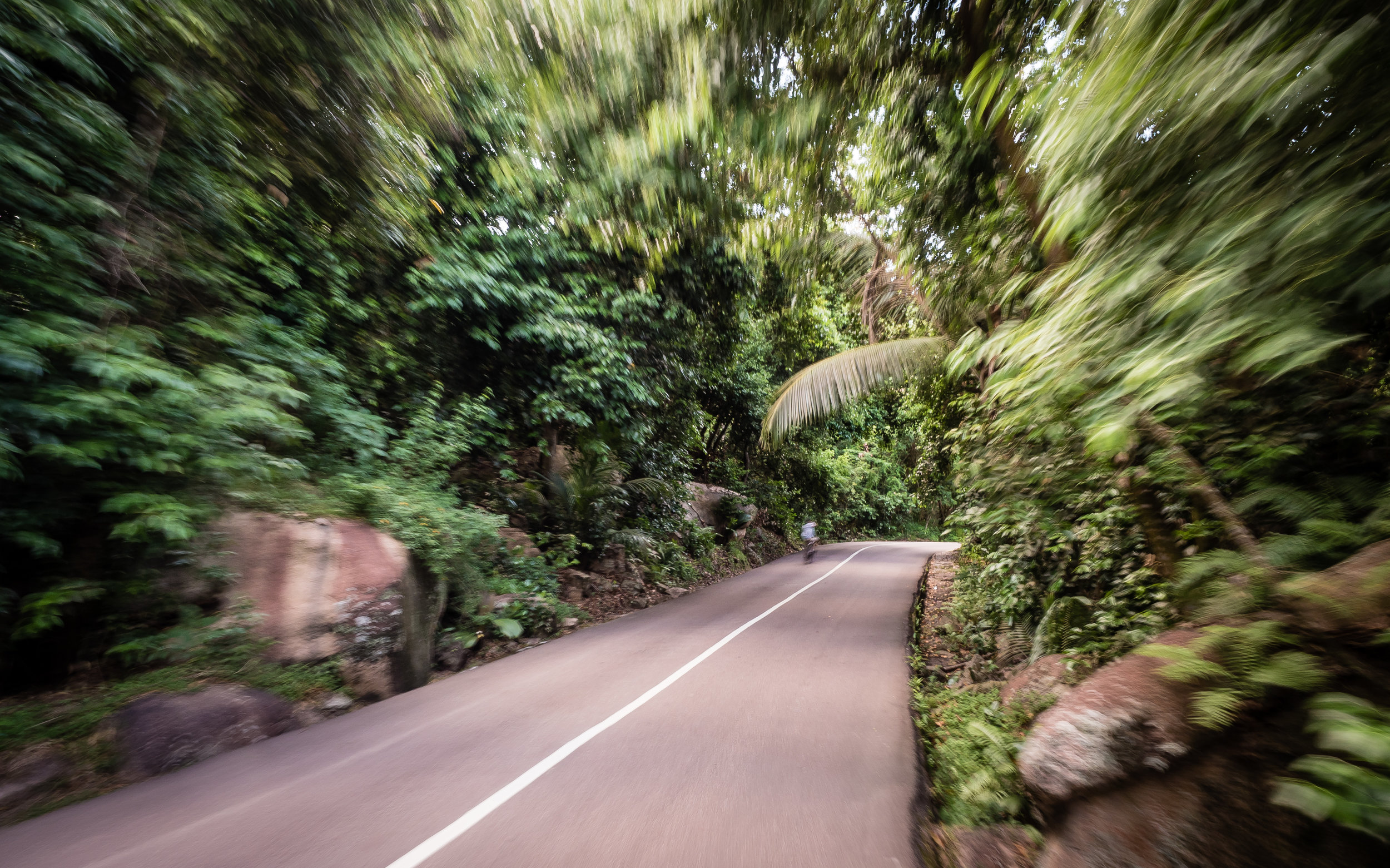
Green Roads
The Seychelles are full of greenery - and not so full of proper roads like this one.
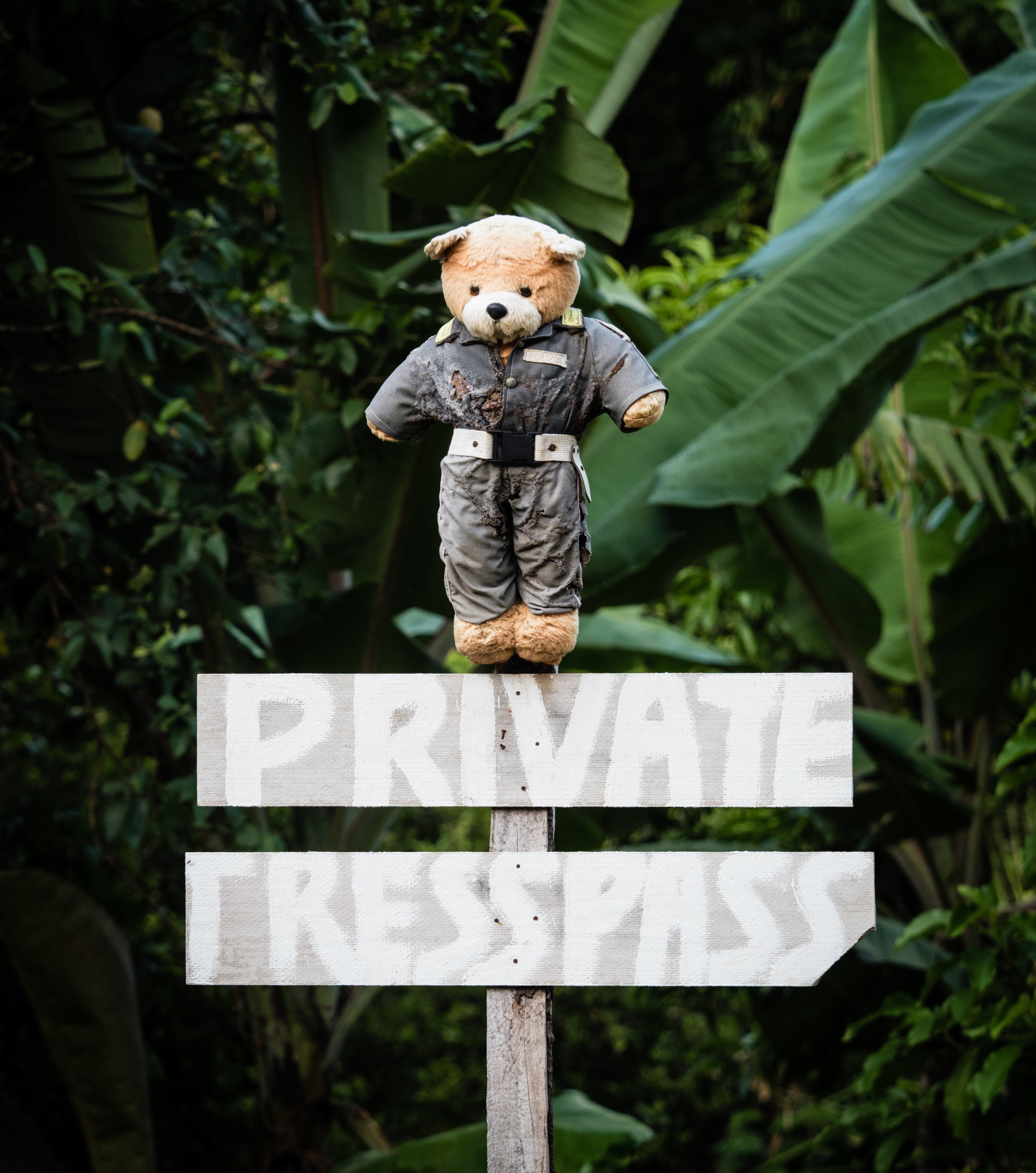
Private
Not sure what the Teddy on top of this sign is meant to represent.
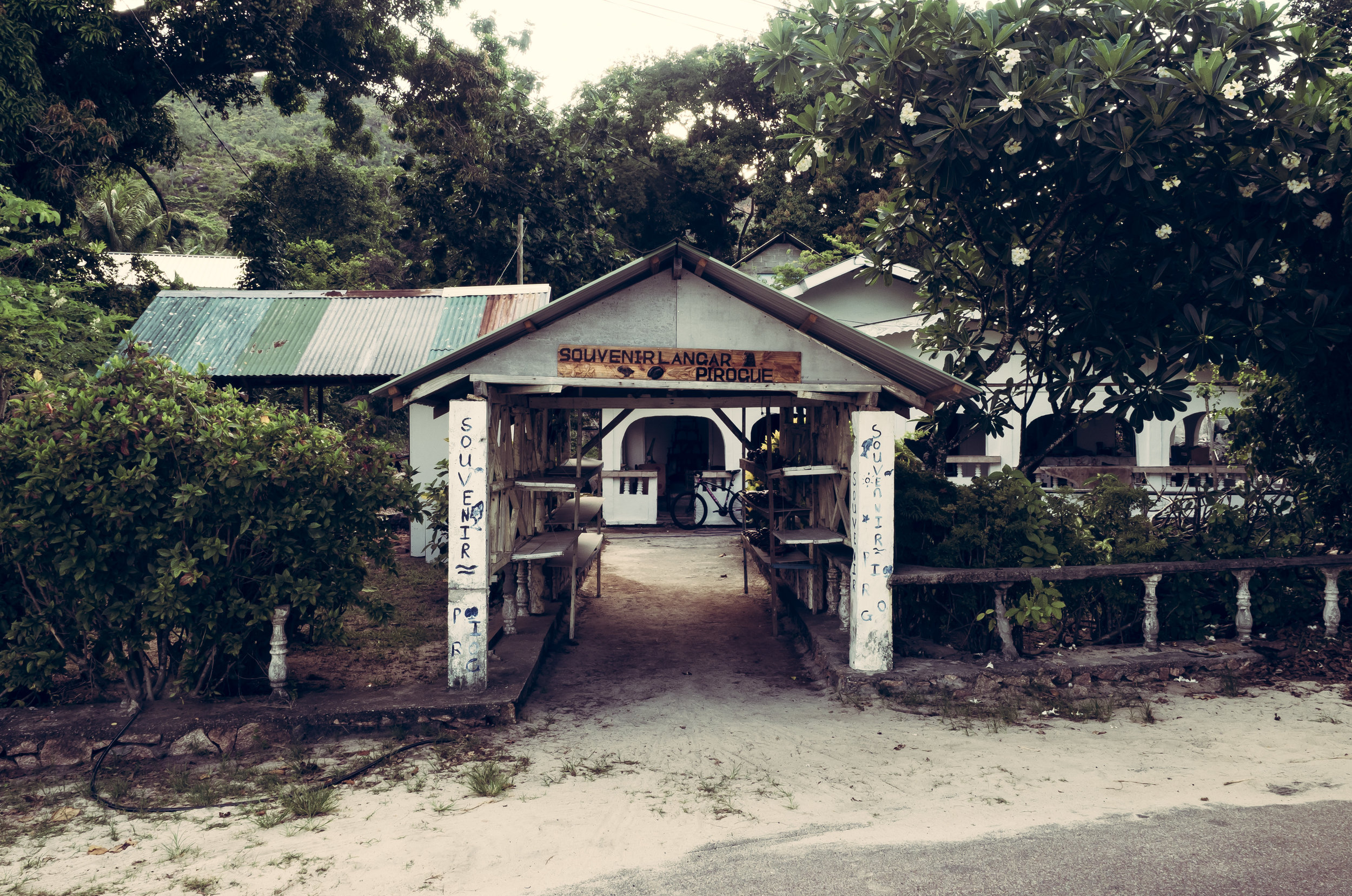
Souvenirs
Didn't manage to visit this souvenir shop.
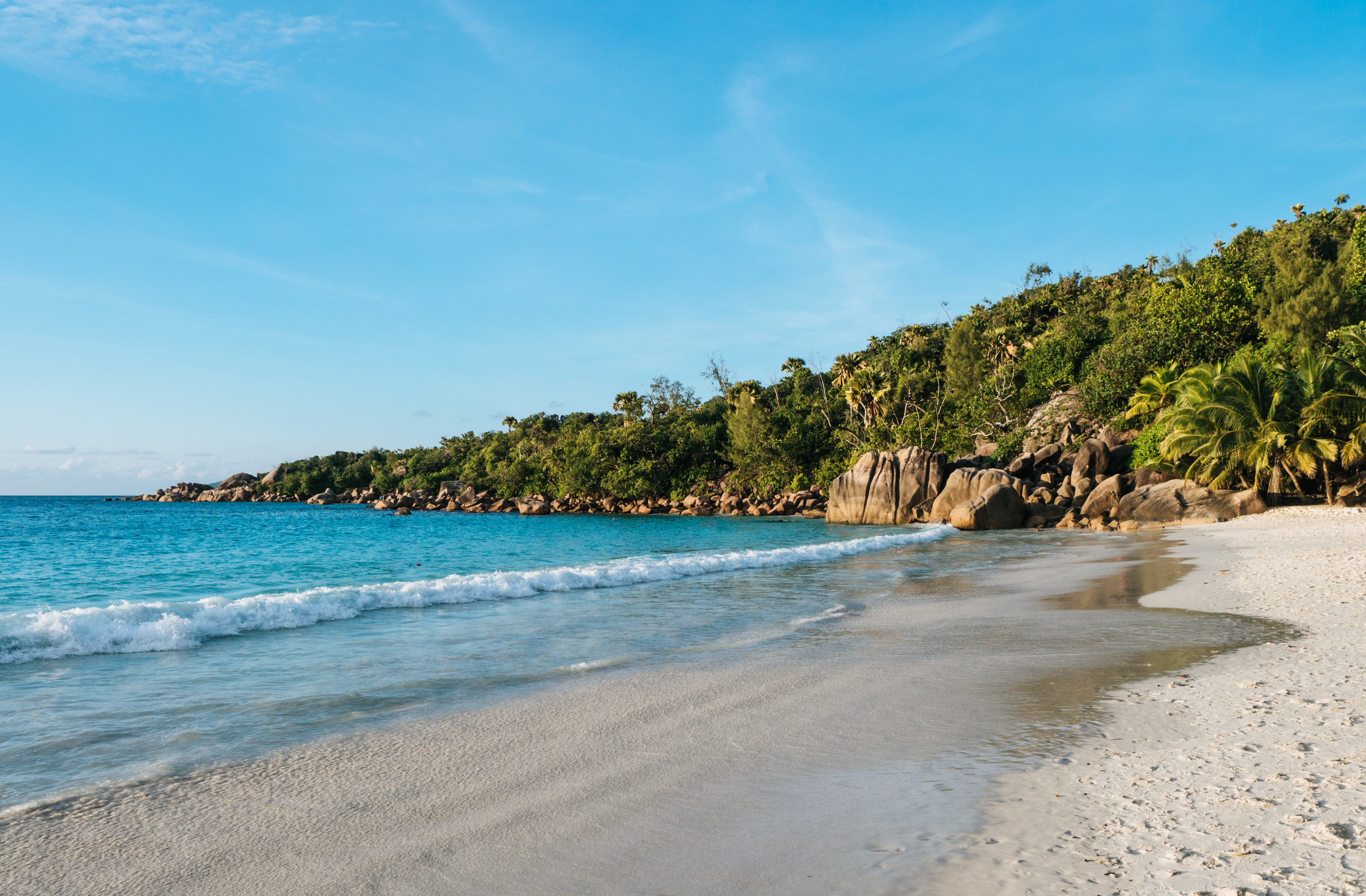
Anse Lazio
Referred to as one of the Top 5 beaches in the world (don't ask me for sources), I took the 30min walk from the hotel. Worth it? Yes. Top 5? Maybe...
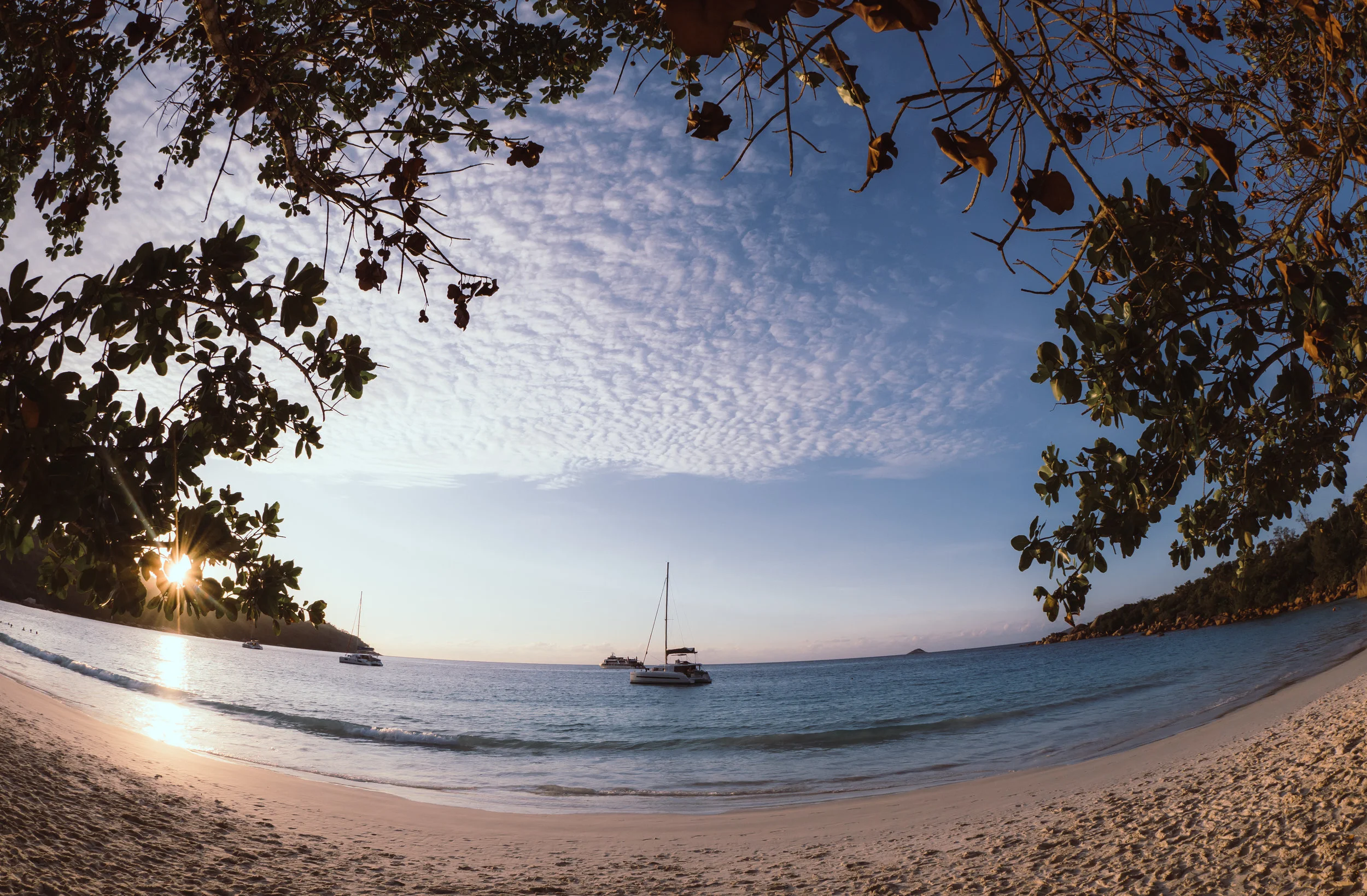
Sunset
The beach doesn't get to see the actual sunset as the sun disappears behind the peninsula to the west, but the view is nice enough.
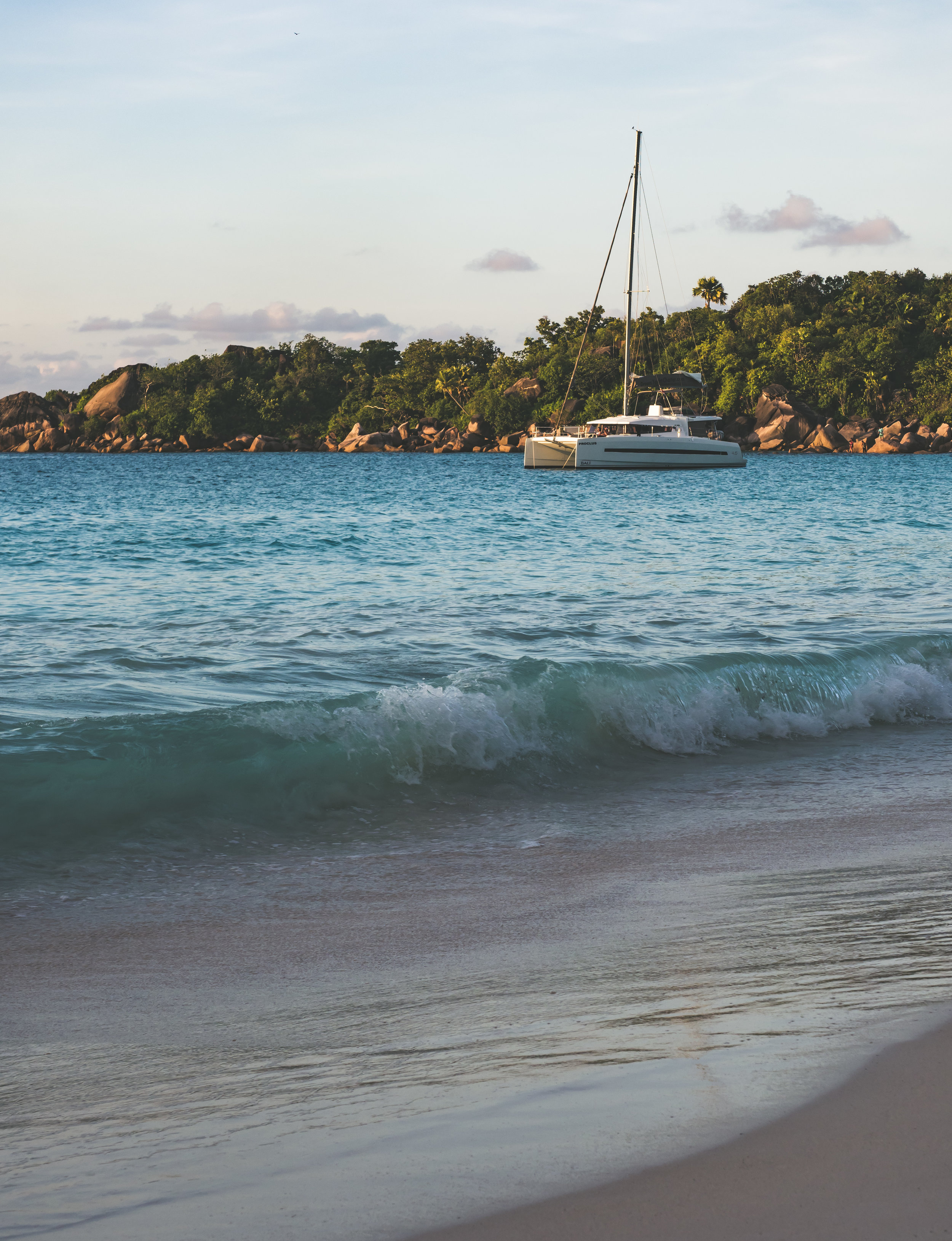
Fame
Owing to its Top 5 fame, there are always a few boats in the bay and a few dozen people on Anze Lazio.
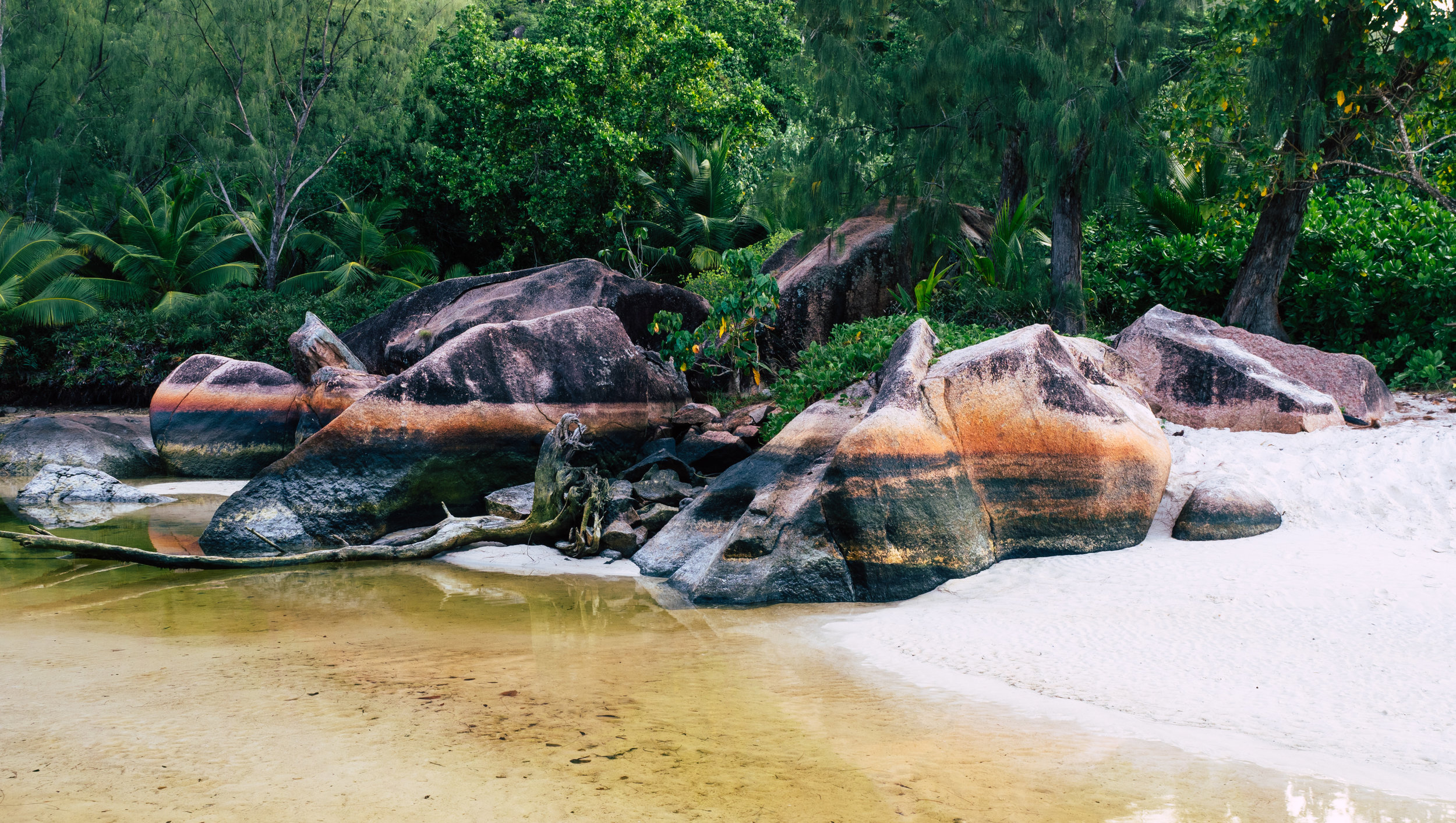
Inlet
Like many beaches on the island, some water inlets run into the forests from the beach - tides and waves generate some beautiful colours in the process.
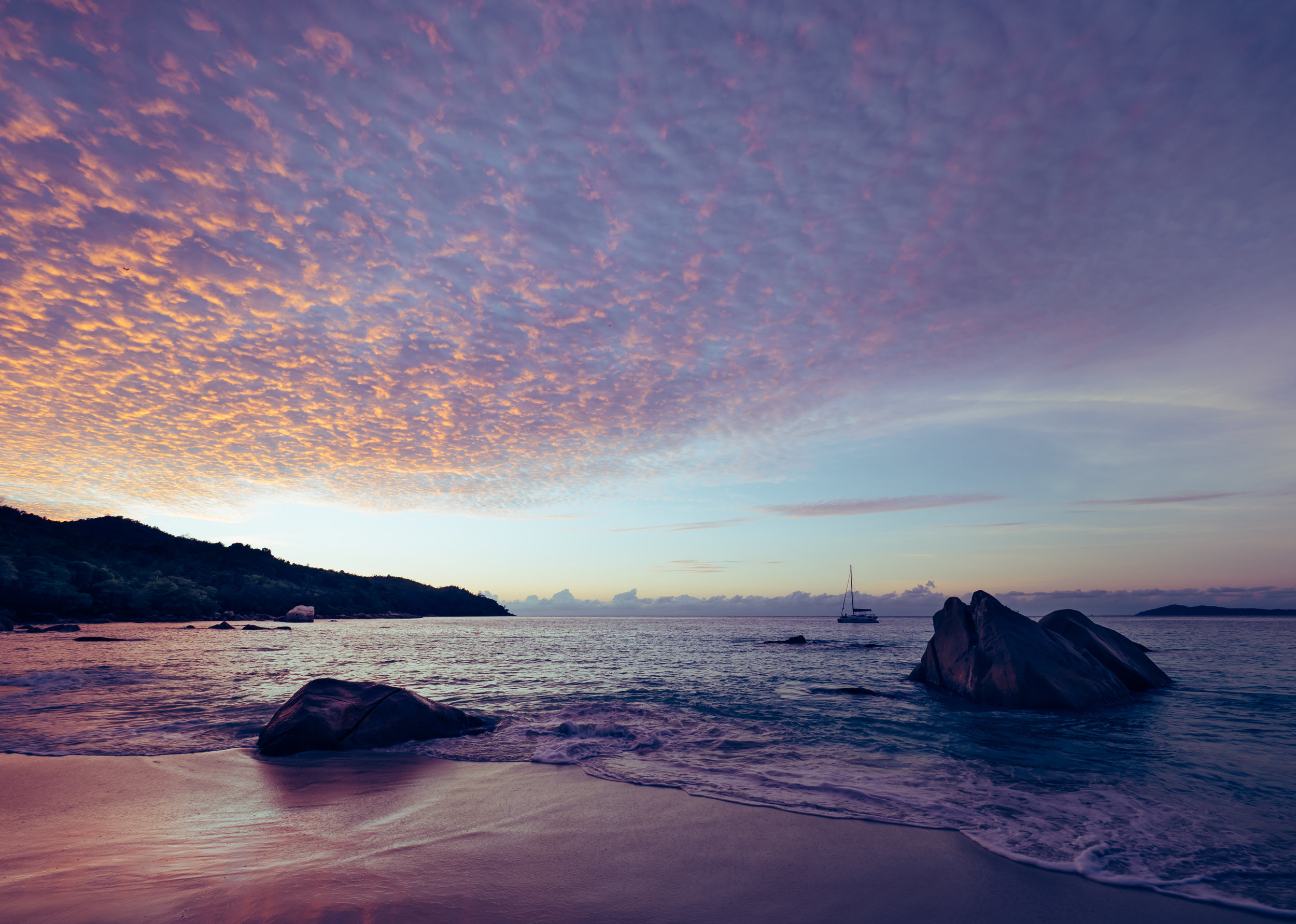
Sunset Colors
The typical granite stones in the water make for beautiful scenery on Anse Lazio.
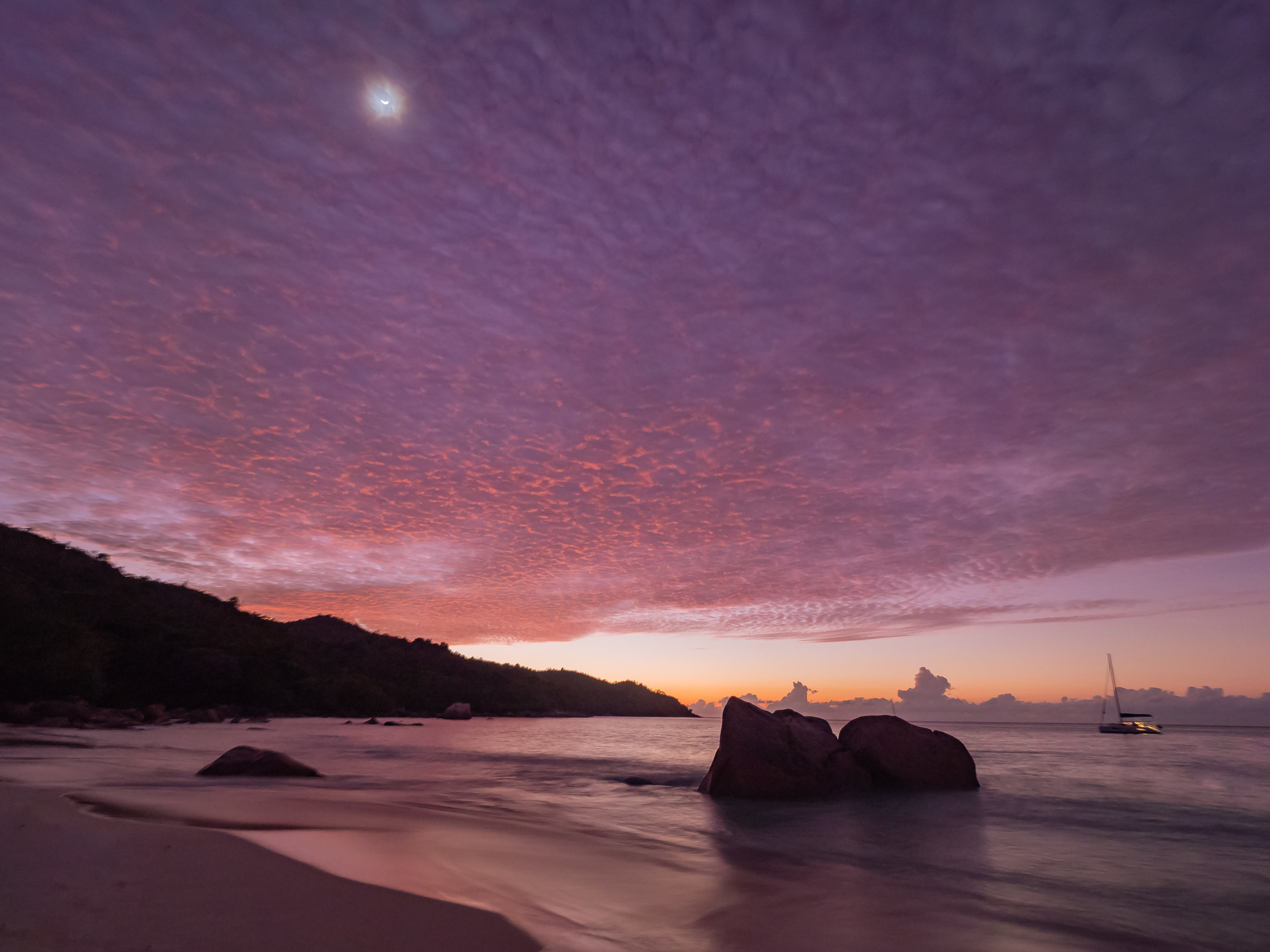
Moon
I was lucky to see the moon rising as the sun was setting, just peaking through the red and purple clouds.
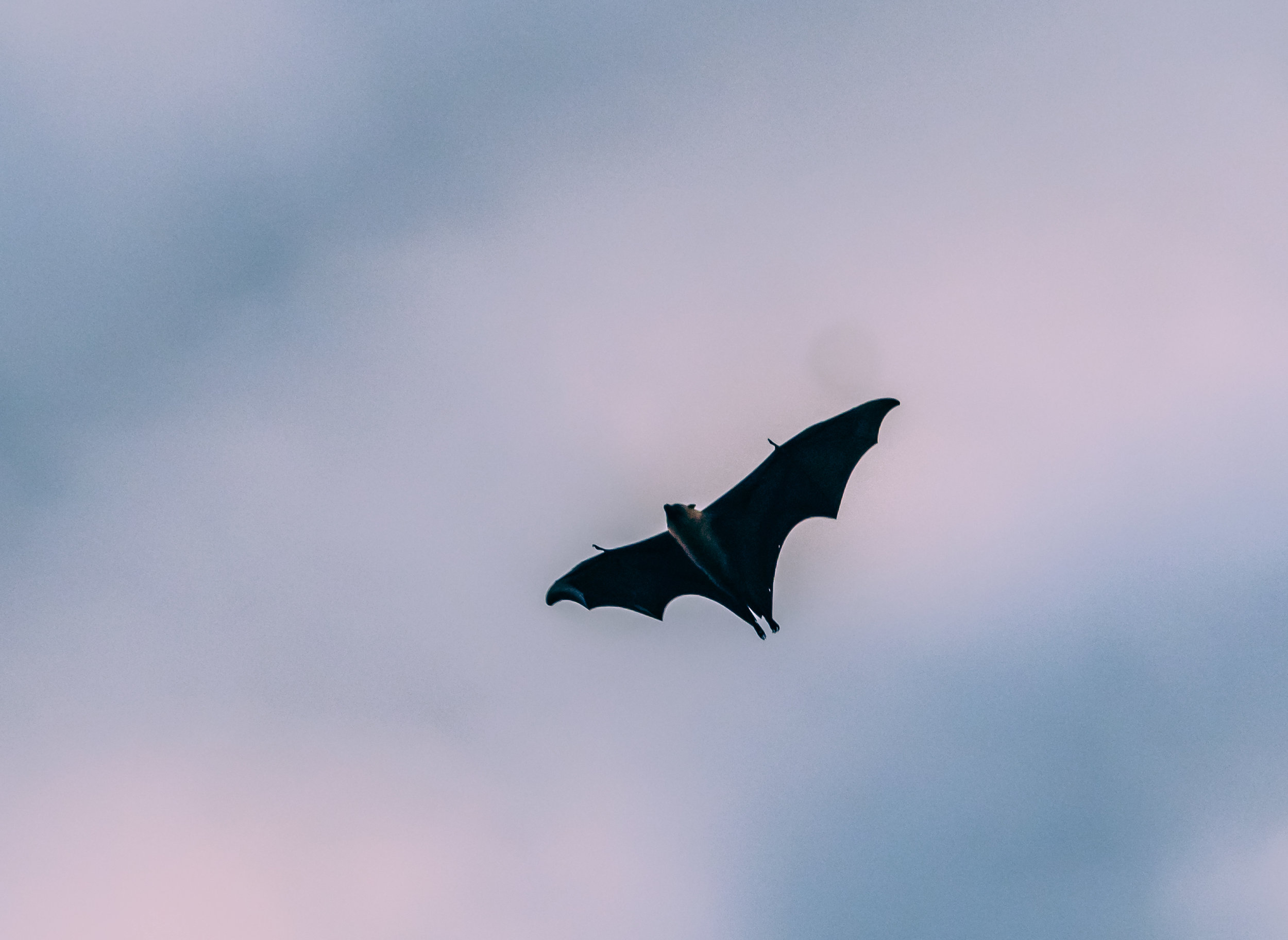
Bat Attack
As sunset approaches, you start to see the large Seychelles fruit bat in the sky - at least half a metre in width.

MS Europa
This cruise ship anchored between Praslin and Curieuse islands for a day.
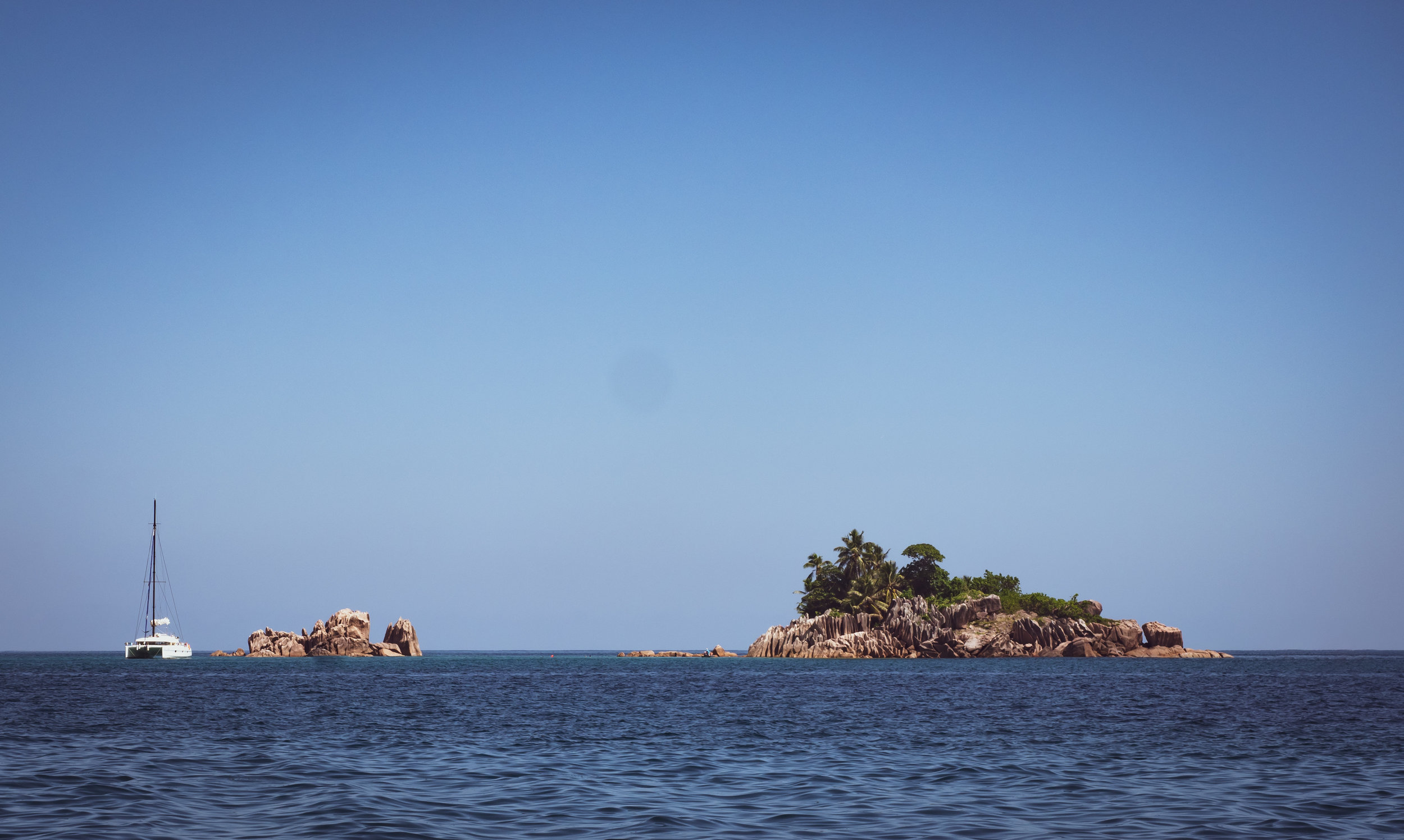
Islands and Islands
The Seychelles consist of around 115 islands, 45 of which are the typical granite islands the country is known for.
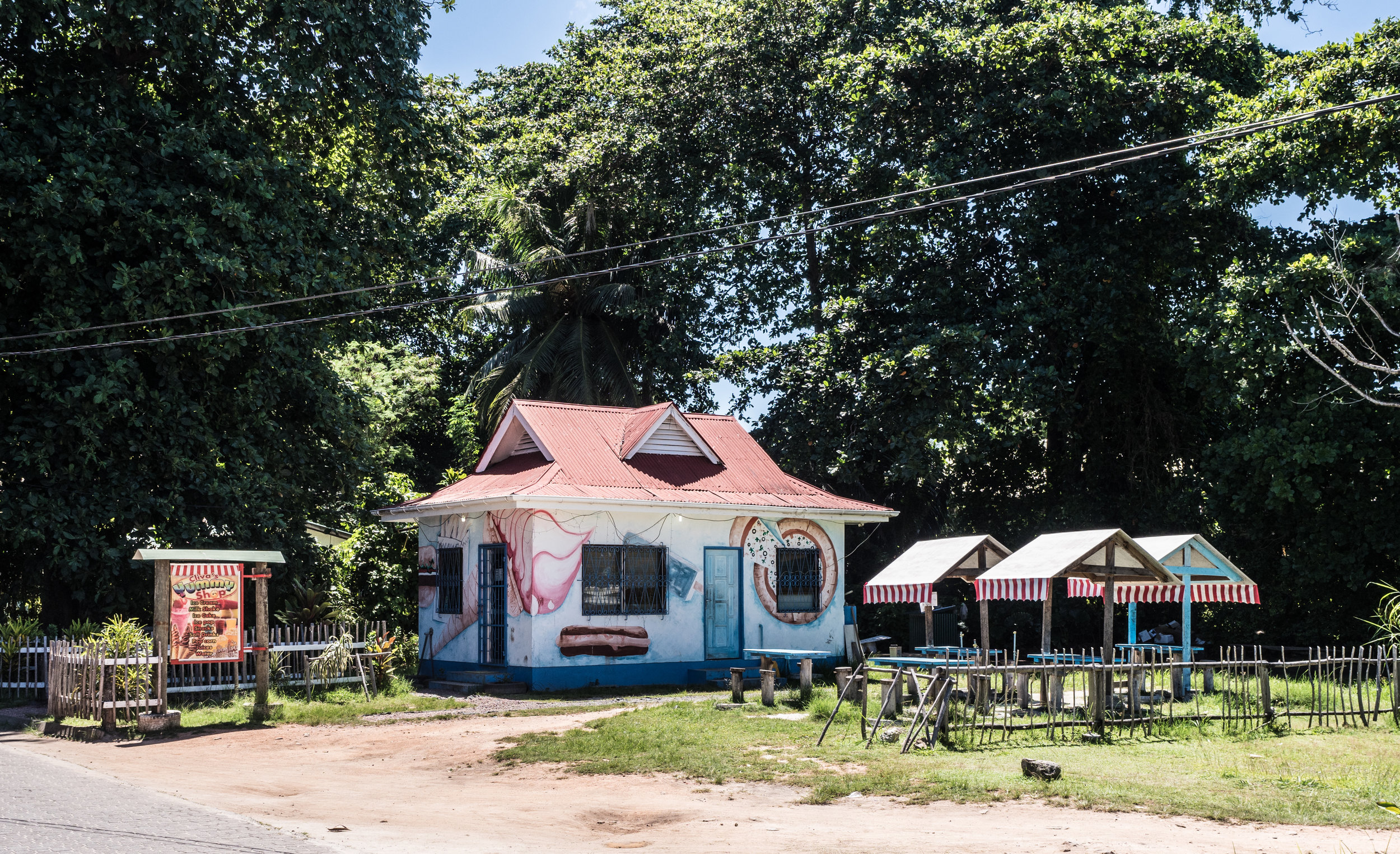
Le Digue Island
We visited Le Digue, which is the third largest of the country's islands with a population of just over 3000. This is the local pizza and burger joint.
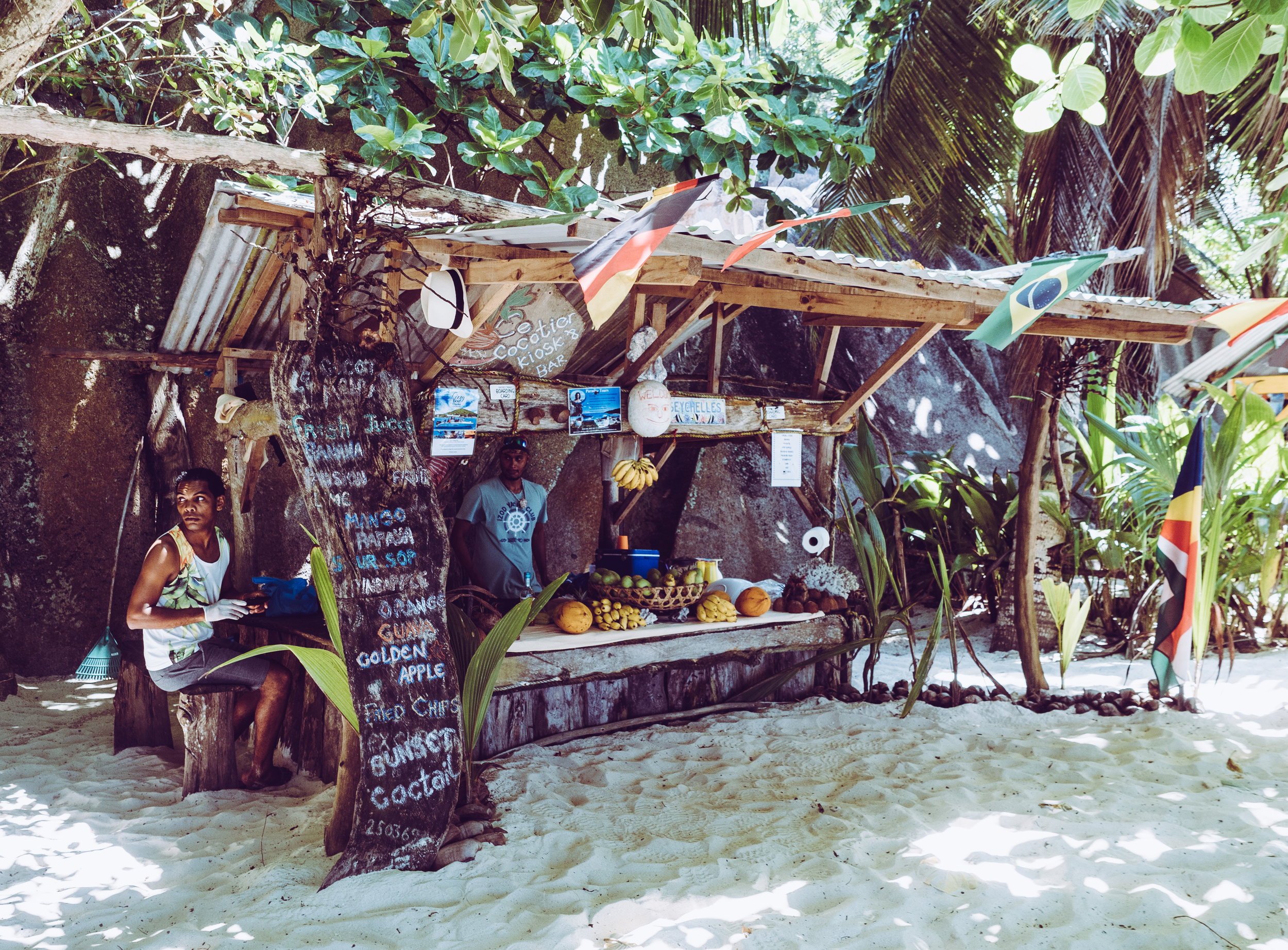
Beach Bar
The famous beaches are frequented by quite a number of tourists, and the locals surely have found ways to monetize their presence.
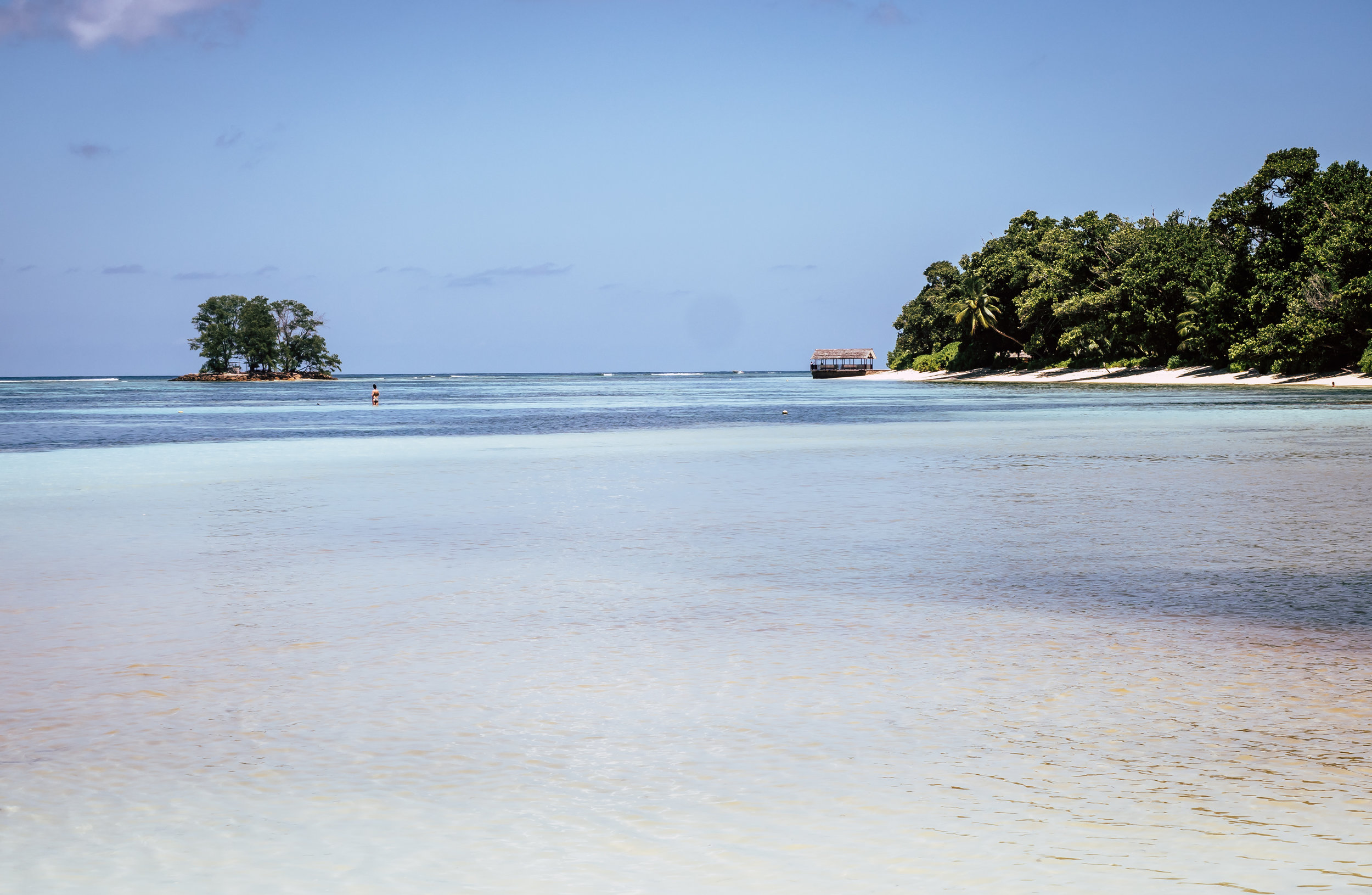
Beach Bliss
Postcard material around every corner.

More Beach Bliss
Did I already meniton the postcard material?

Greenery
The hot and humid climate classifies the island nation as tropical rain forest.
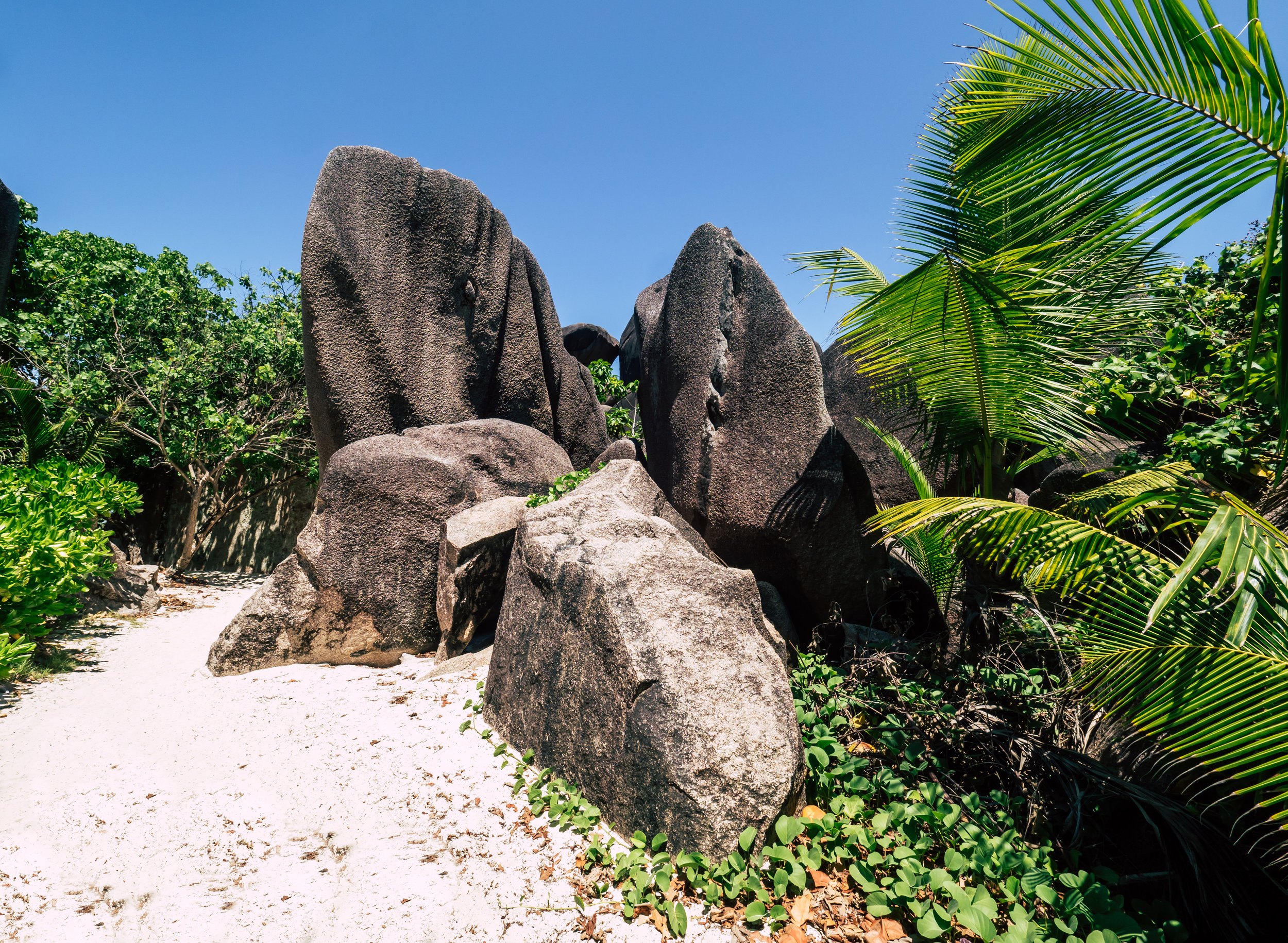
Granite
The country is famous for its granite rocks sprinkled around the beaches, but less than half of its islands actually feature them, the others are coral islands.

Old Cemetary
The old cemetary is an eerie location with the dying tree in the back. Watch for the new (and more colourful) version a few photos down...

Origins
The group of Granitic Seychelles are fragments of the ancient supercontinent Gondwana.
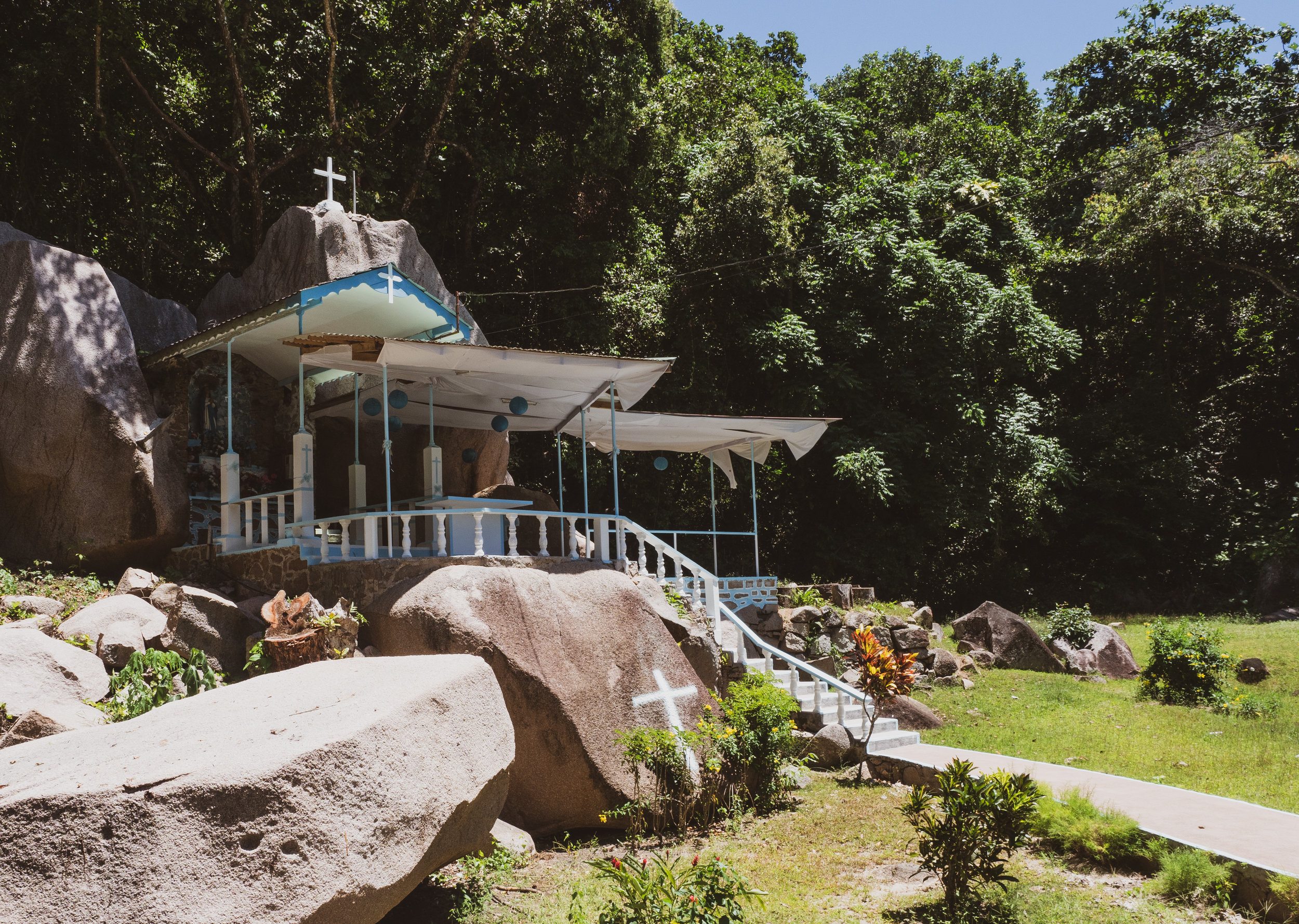
Rocky Religion
90% of the population are Christian, the majority of which roman-catholic.

The Elusive Flycatcher
Sadly, less than 300 are still in existence in the wild, and the island of Le Digue houses most of them, except a few pairs which were moved to another island to preserve the species. It took half an hour of wandering in the nature reserve to spot this male.
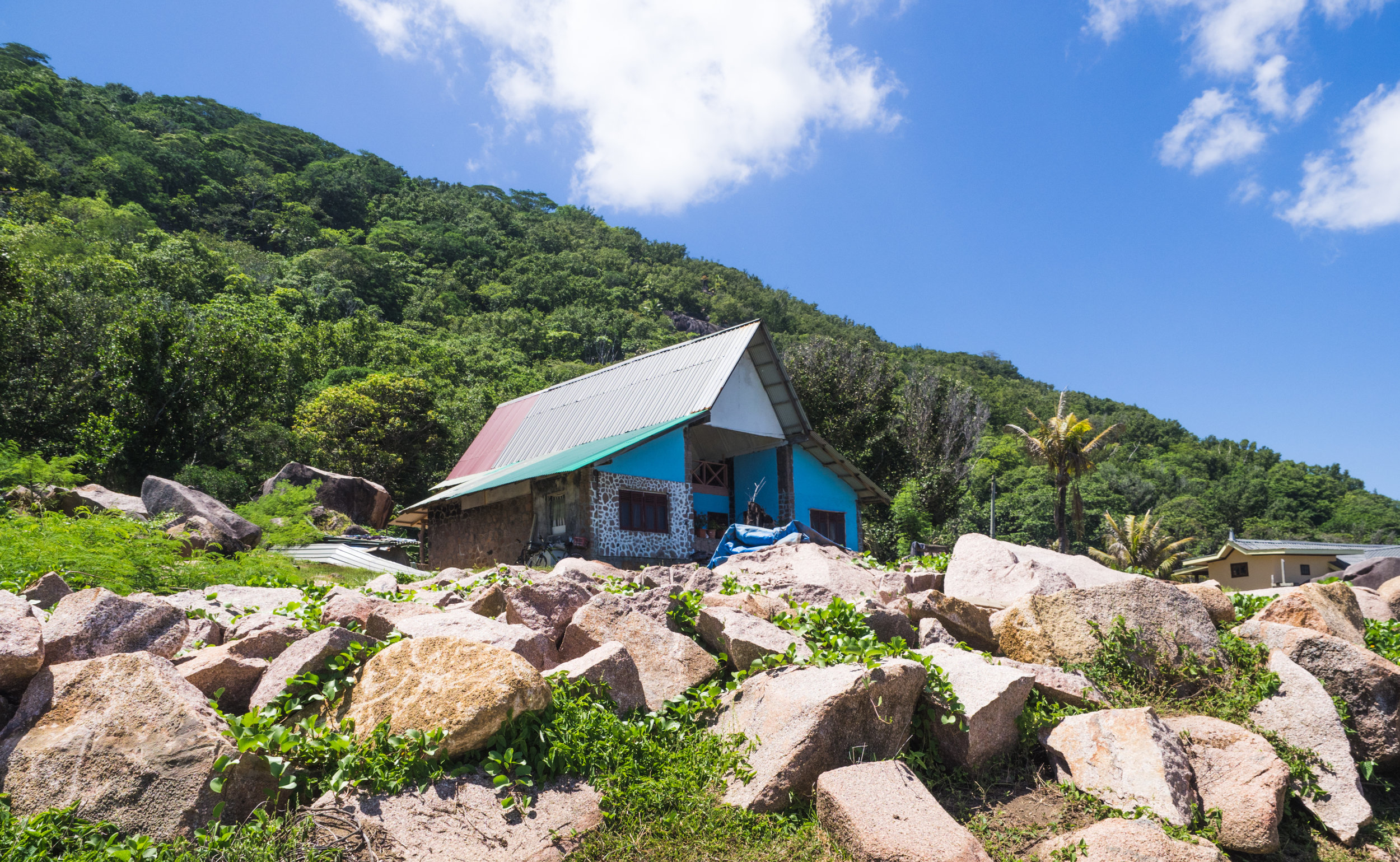
Houses
The island features some beautiful houses of different styles.

Phone Booth
Showing off the lack of football taste that is or was once present on the island...
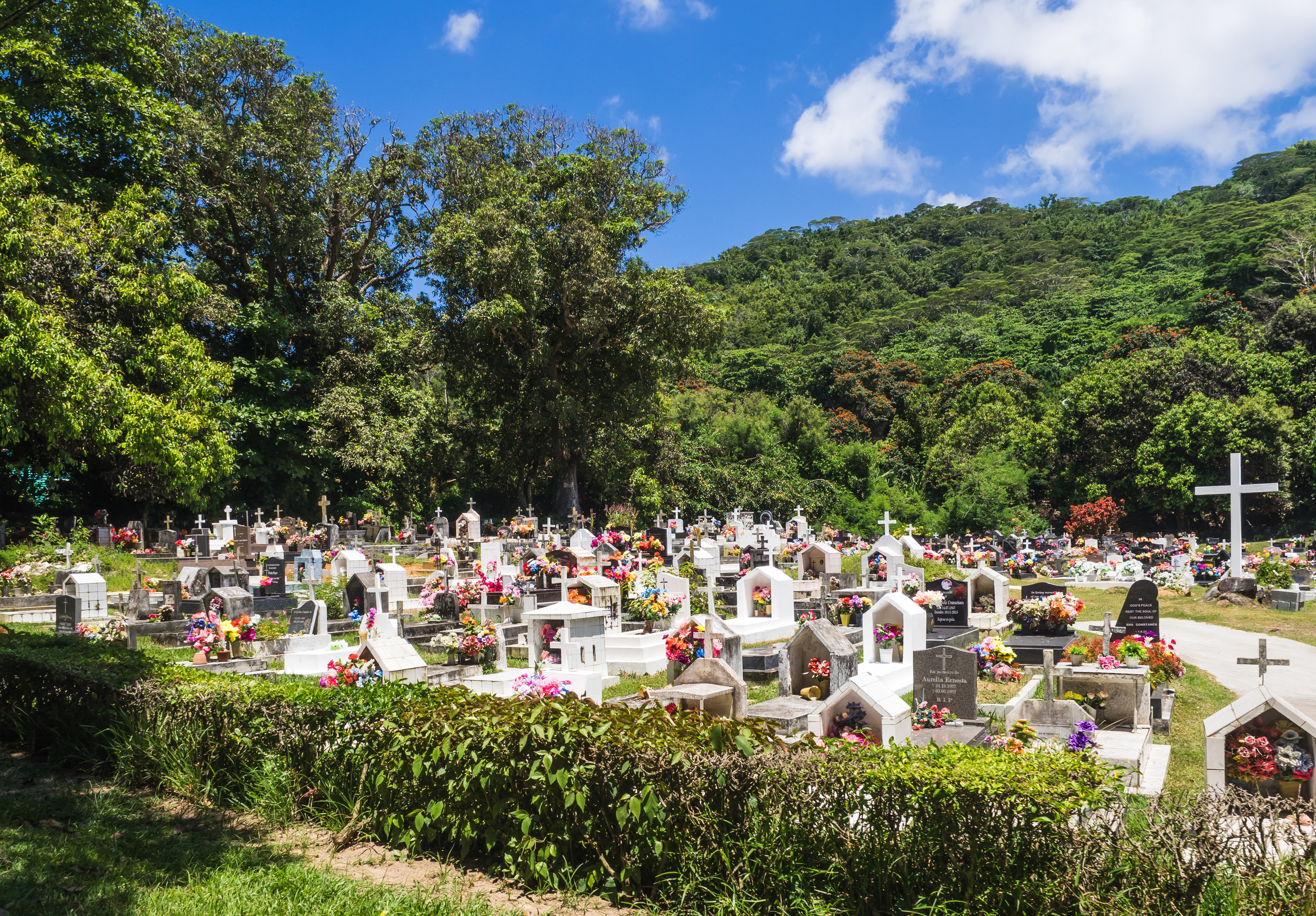
New Cemetary
More colorful for sure, although its worth mentioning these flowers aren't real.
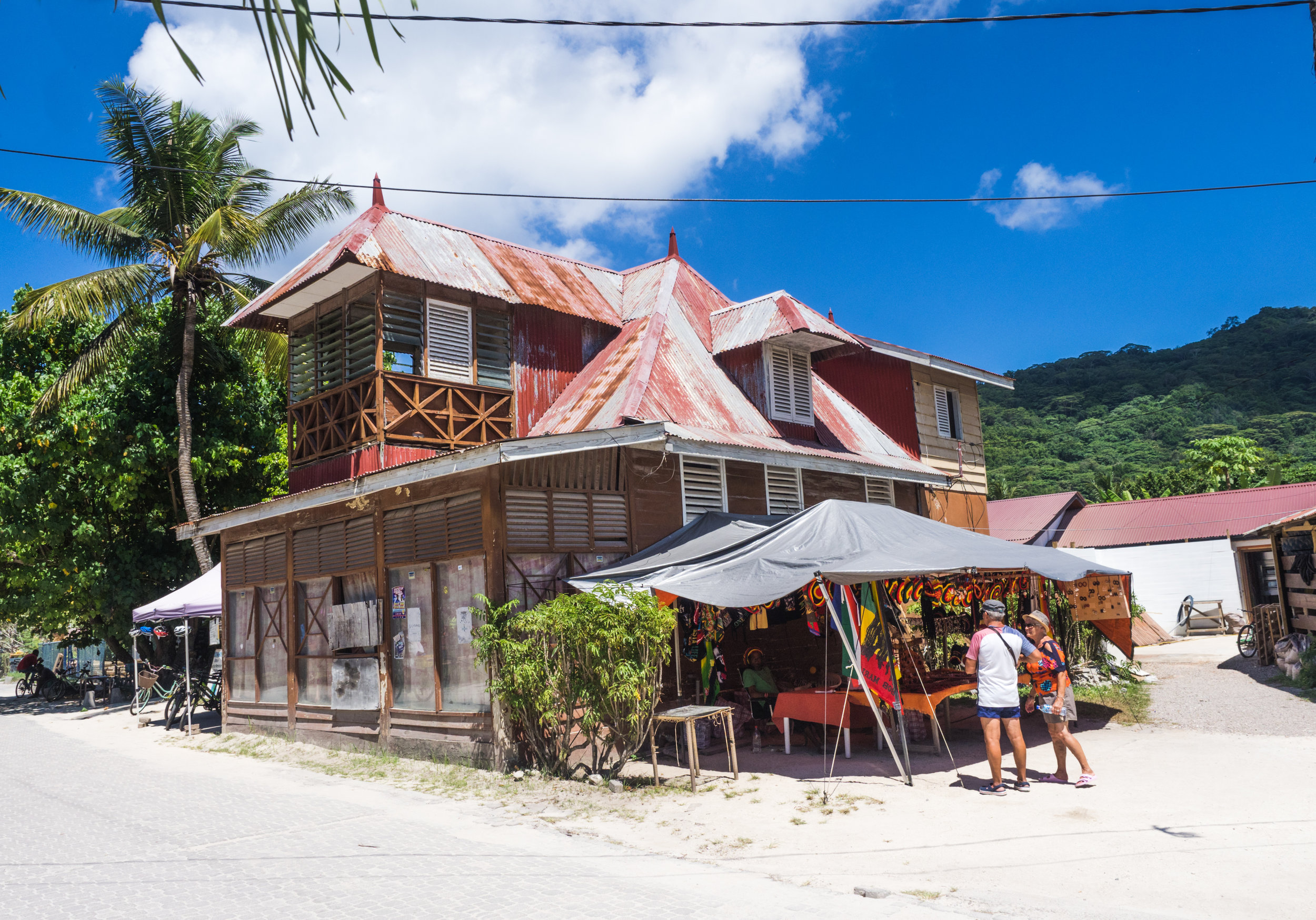
Houses
More of the local architecture.
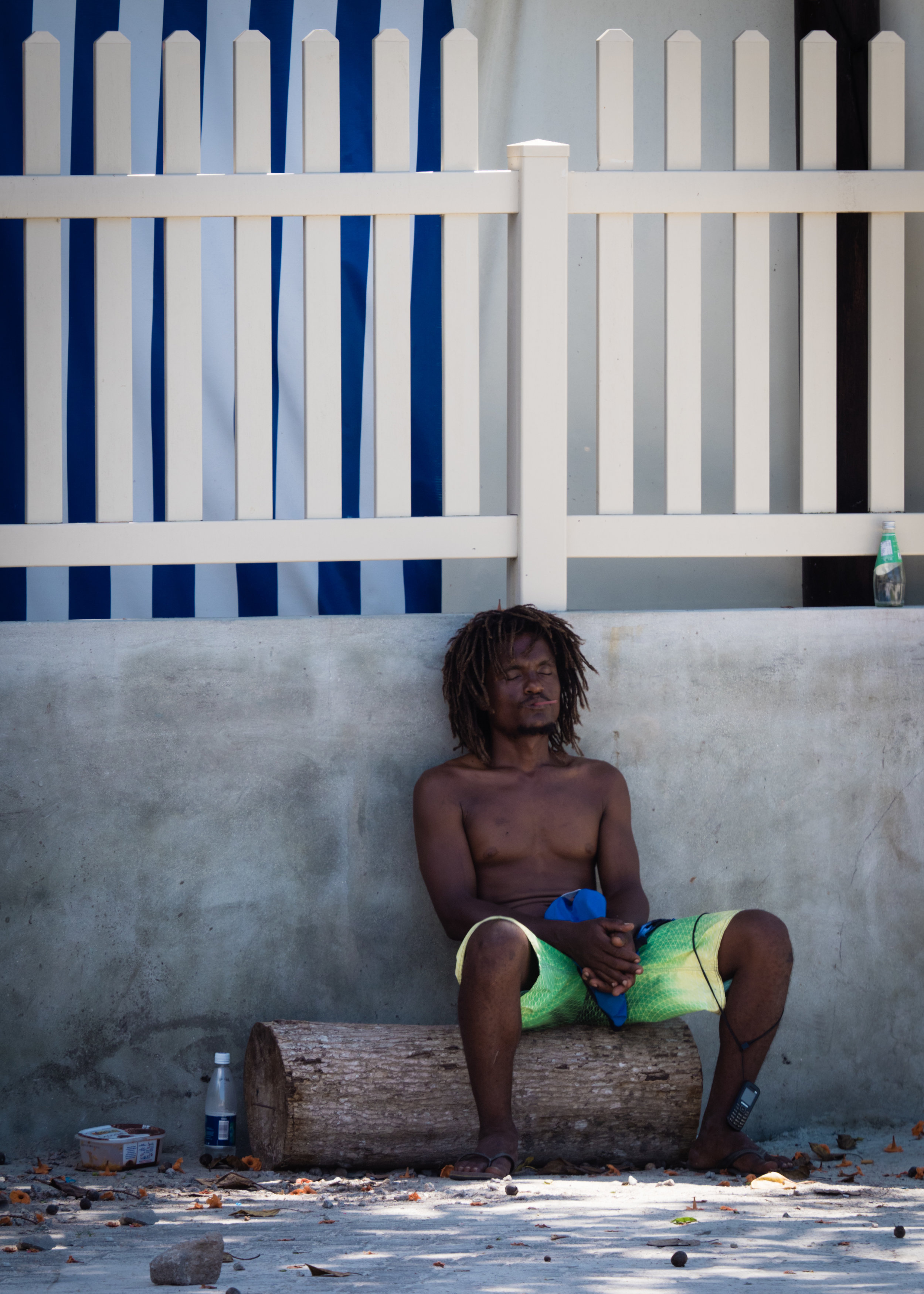
Island Lifestyle
Stress didn't seem too common.

Fishing Circle
Marine life is abundant and fishing is the largest export of the country.
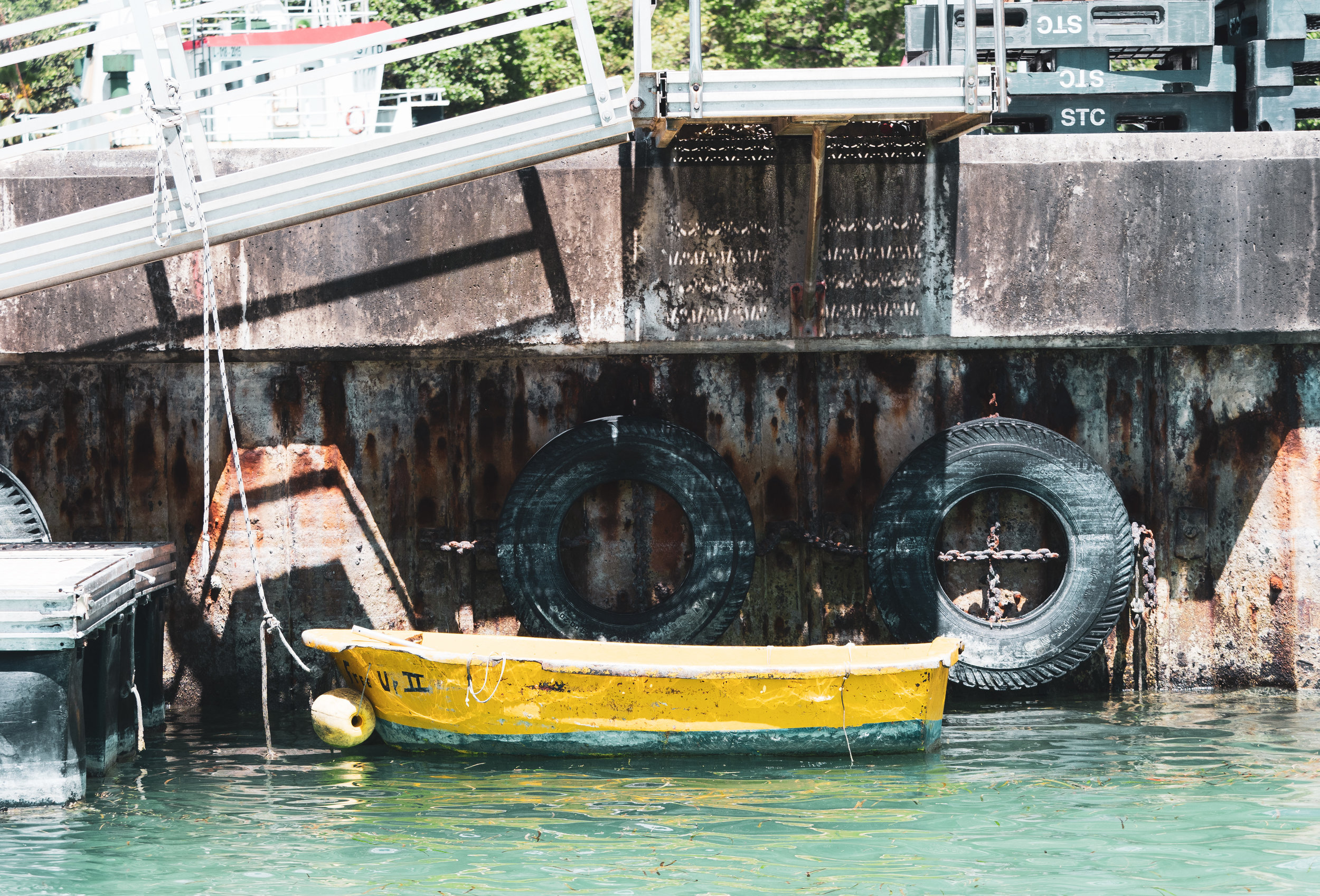
Transport
Given that I have just completed my up to 12m skipper license, I thought it would be a good idea to bring the new boat along.

Yacht
Just kidding, this is mine.
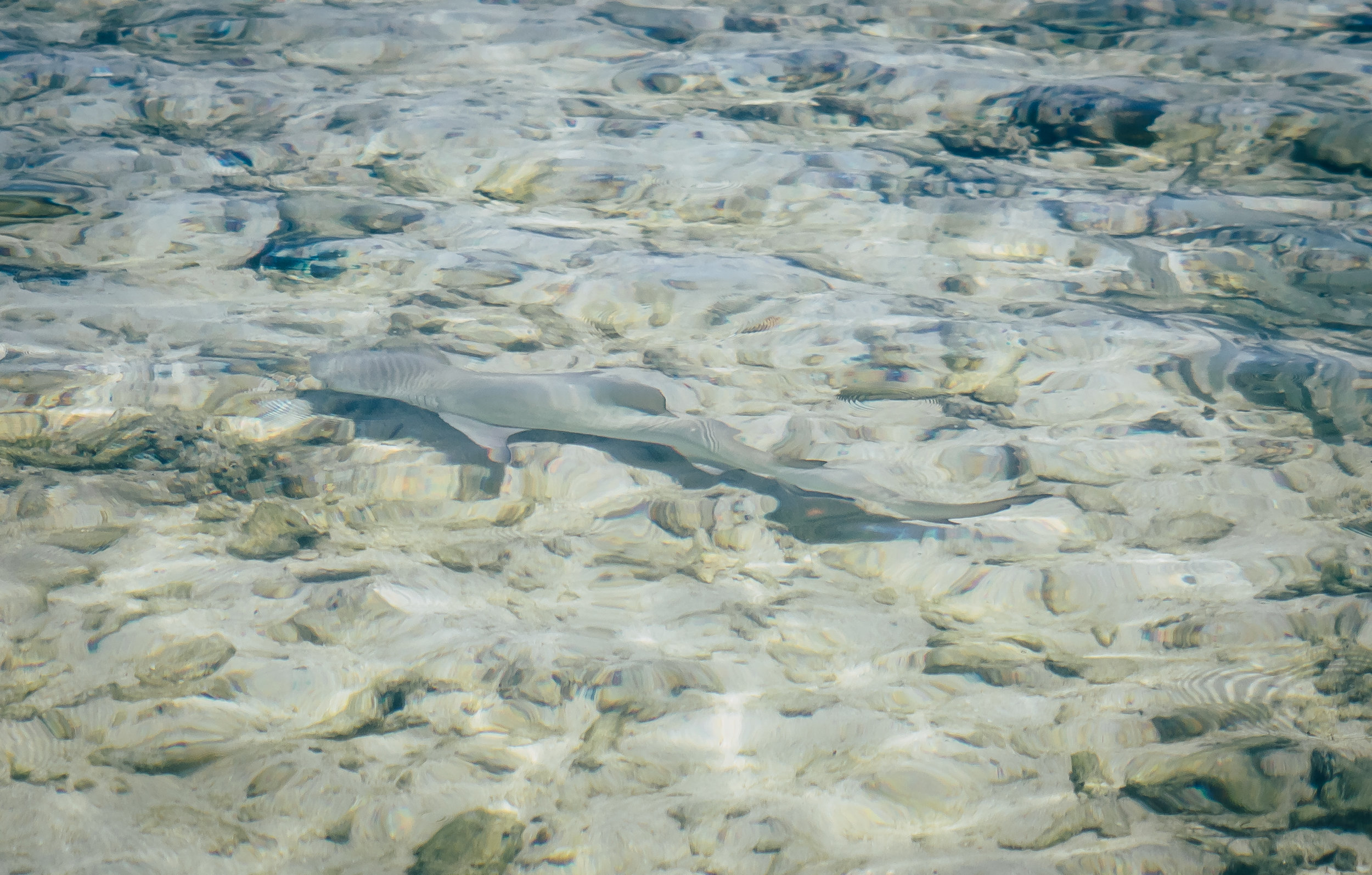
Baby Shark
Small reef sharks live around the rocks until they grow into adults.

Ray
And occasionally, smaller rays also pass by.
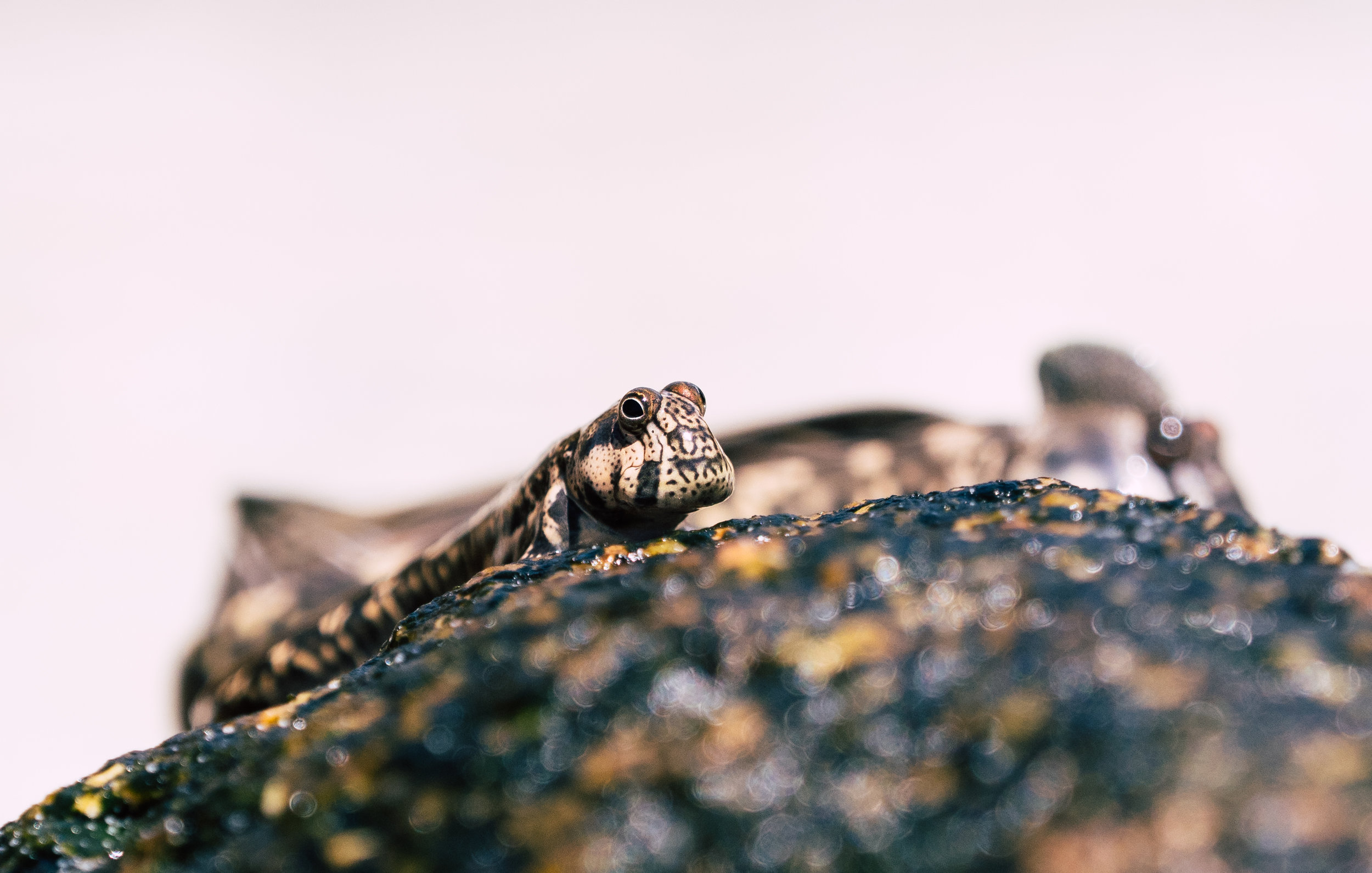
Leaping Blenny
Funny little creatures that live on the rocks perching out from the water, walking and jumping with help of their fins if danger approaches. They are able to breath outside of water.

Leaping Blenny - Large version
It's bigger cousin, captured under water with an iPhone XS (as are the few other underwater photographs).

Coral
Some snorkeling around the beach was enough to spot a few beautiful corals.

Coral World
A variety of stony coral colonies.
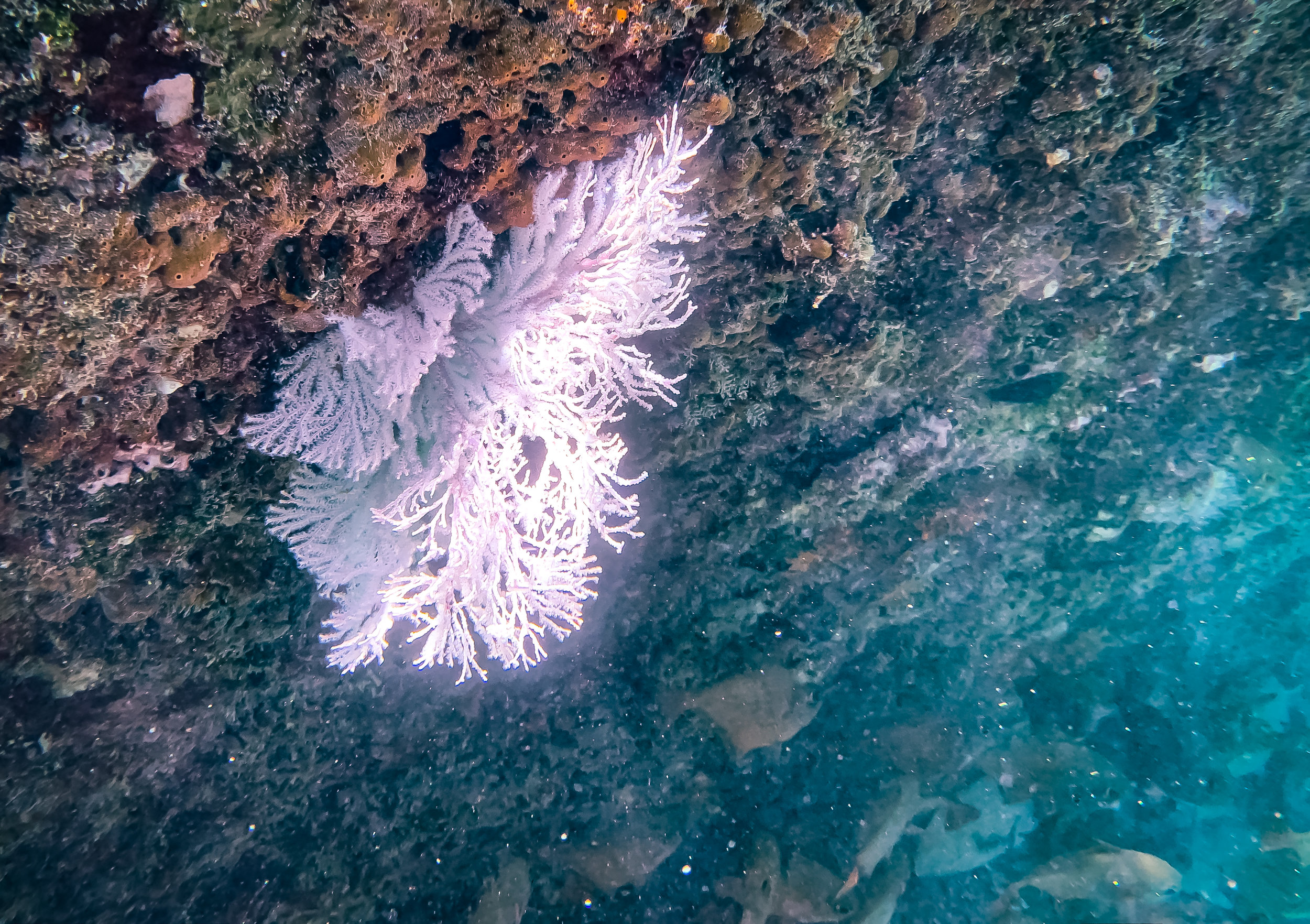
Marine Flora
I think this is some type of Gorgonian or Sea Fan.

Smile
The most common fish roaming the shallow waters on the beach.

Unknown Fish
Anyone knows the species?
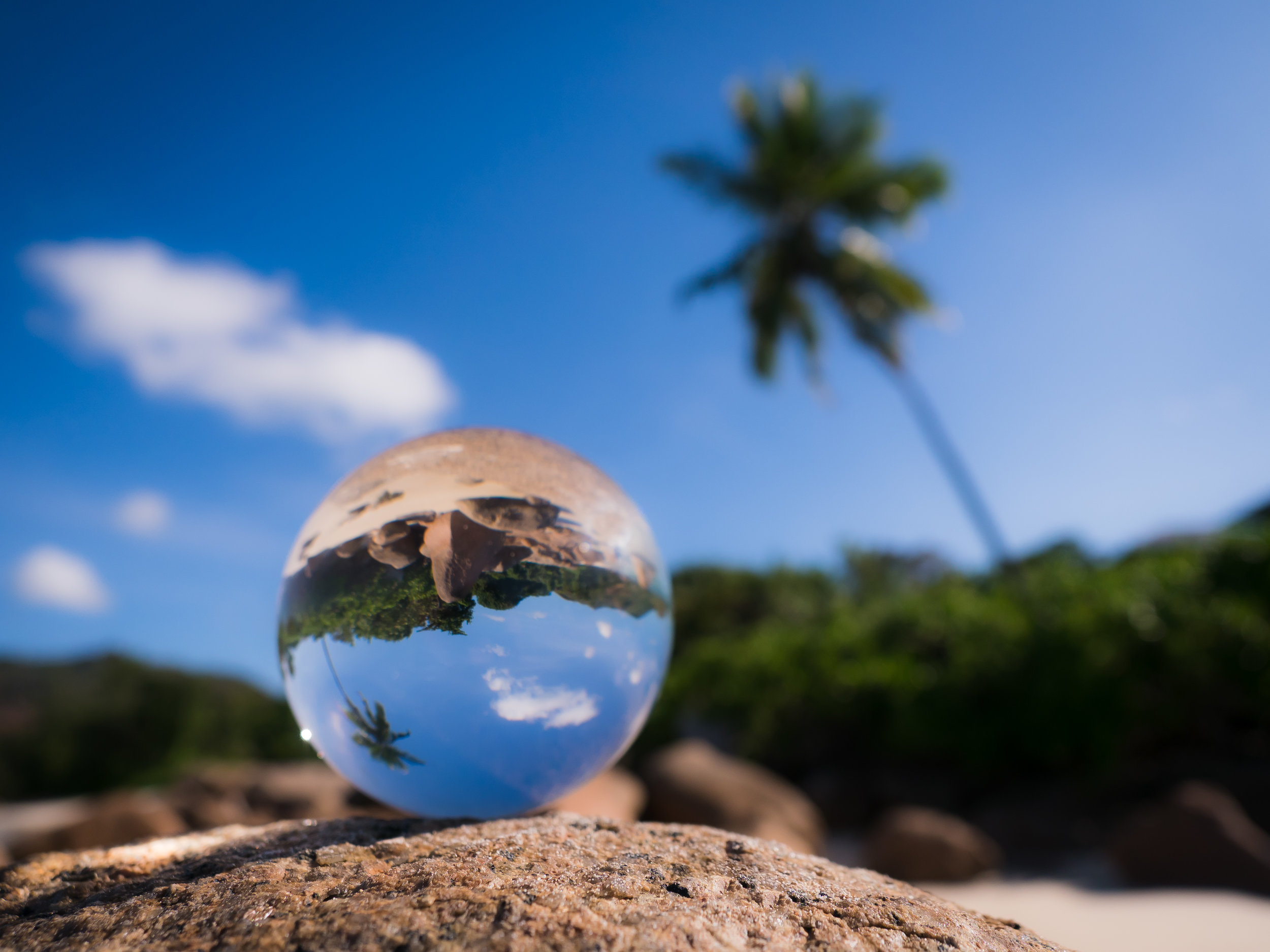
A point of view.
A crystal ball can't always predict the future, but it can give you a different perspective of the present.
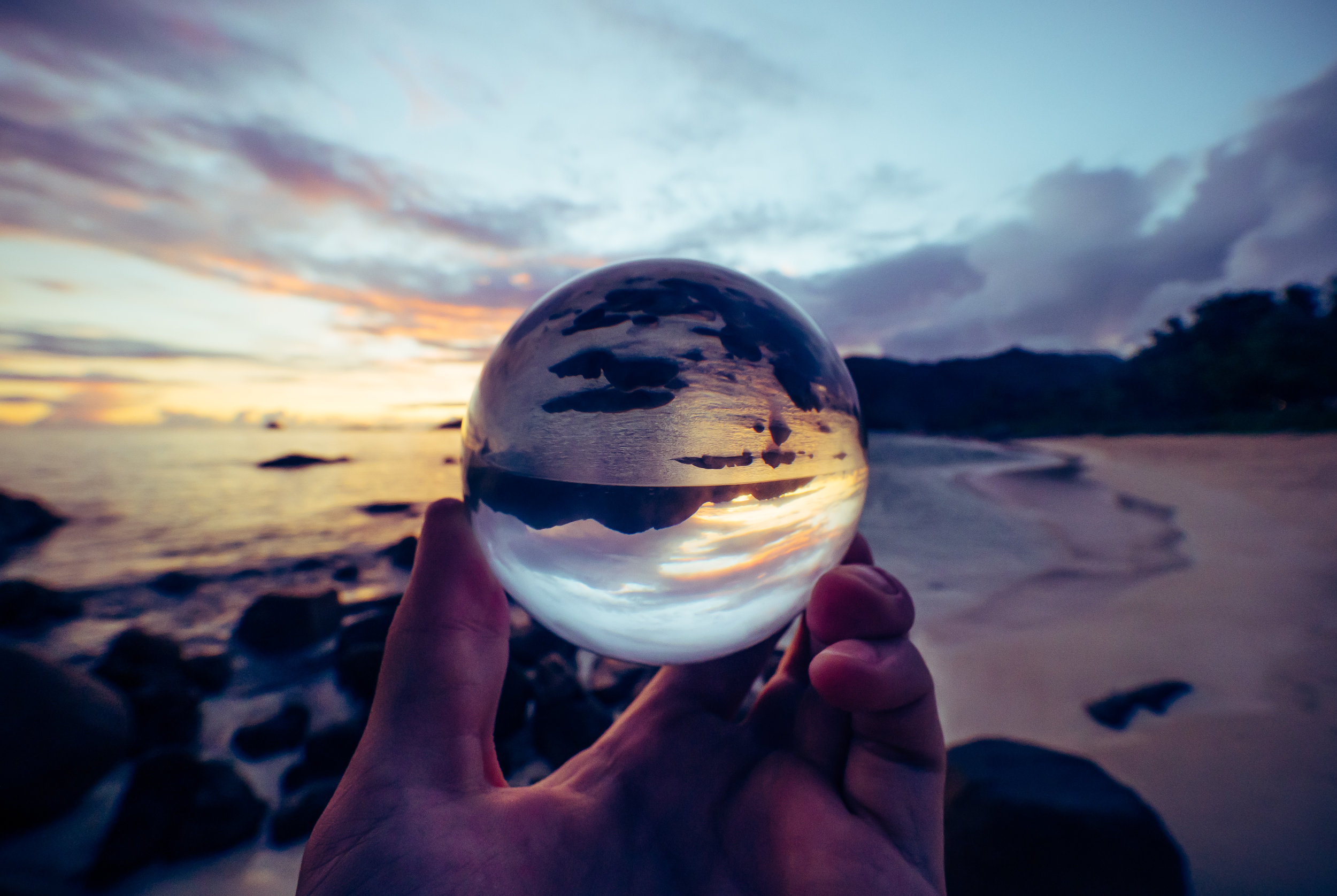
Toys
Glass balls are an interesting tool for photography... if you don't overuse them.
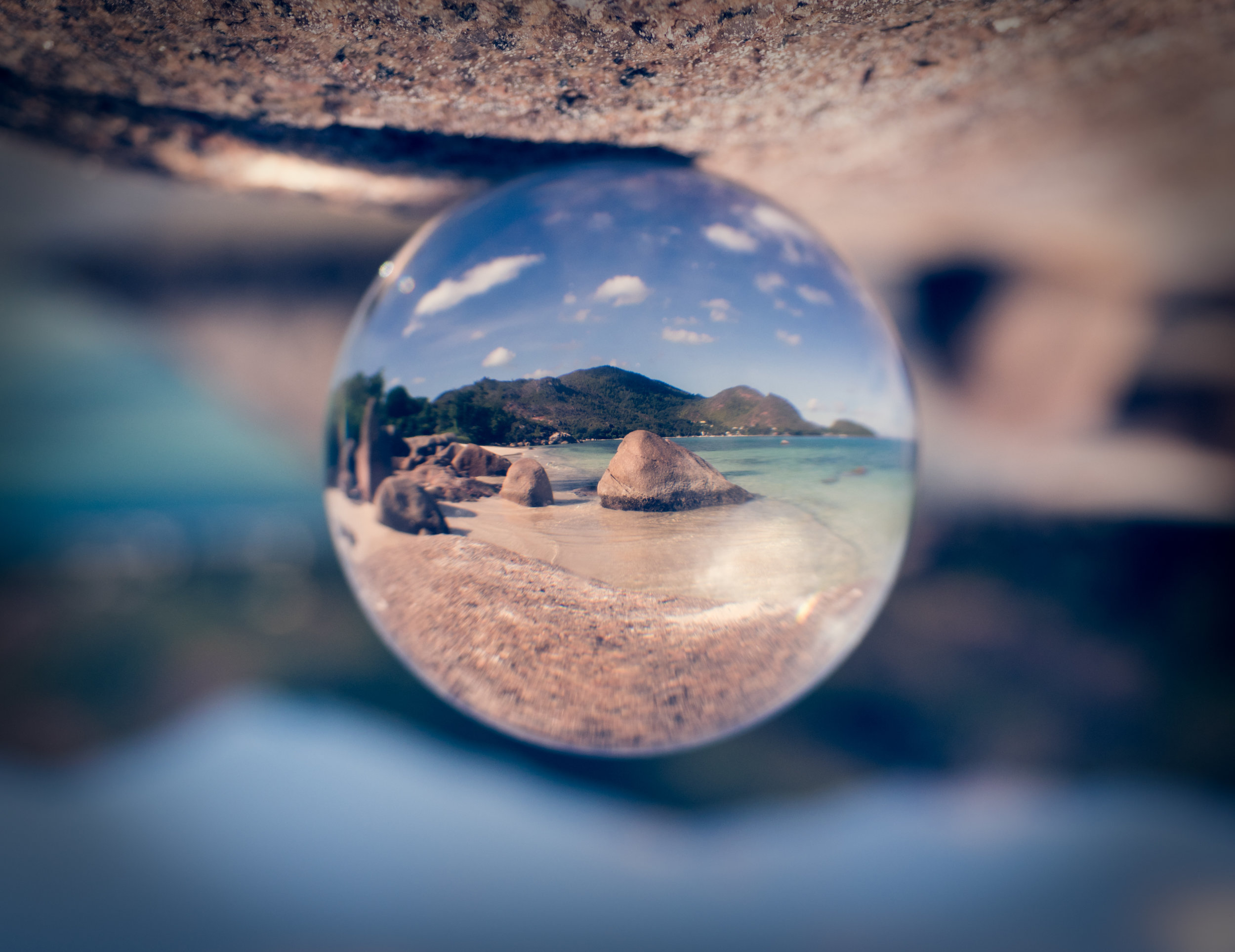
Physics
One point to note - be very careful when using a crystal ball in direct strong sunlight, the refraction can immeditely burn whatever you put the ball on, including your hand...

Home in a Hole
A crab village.
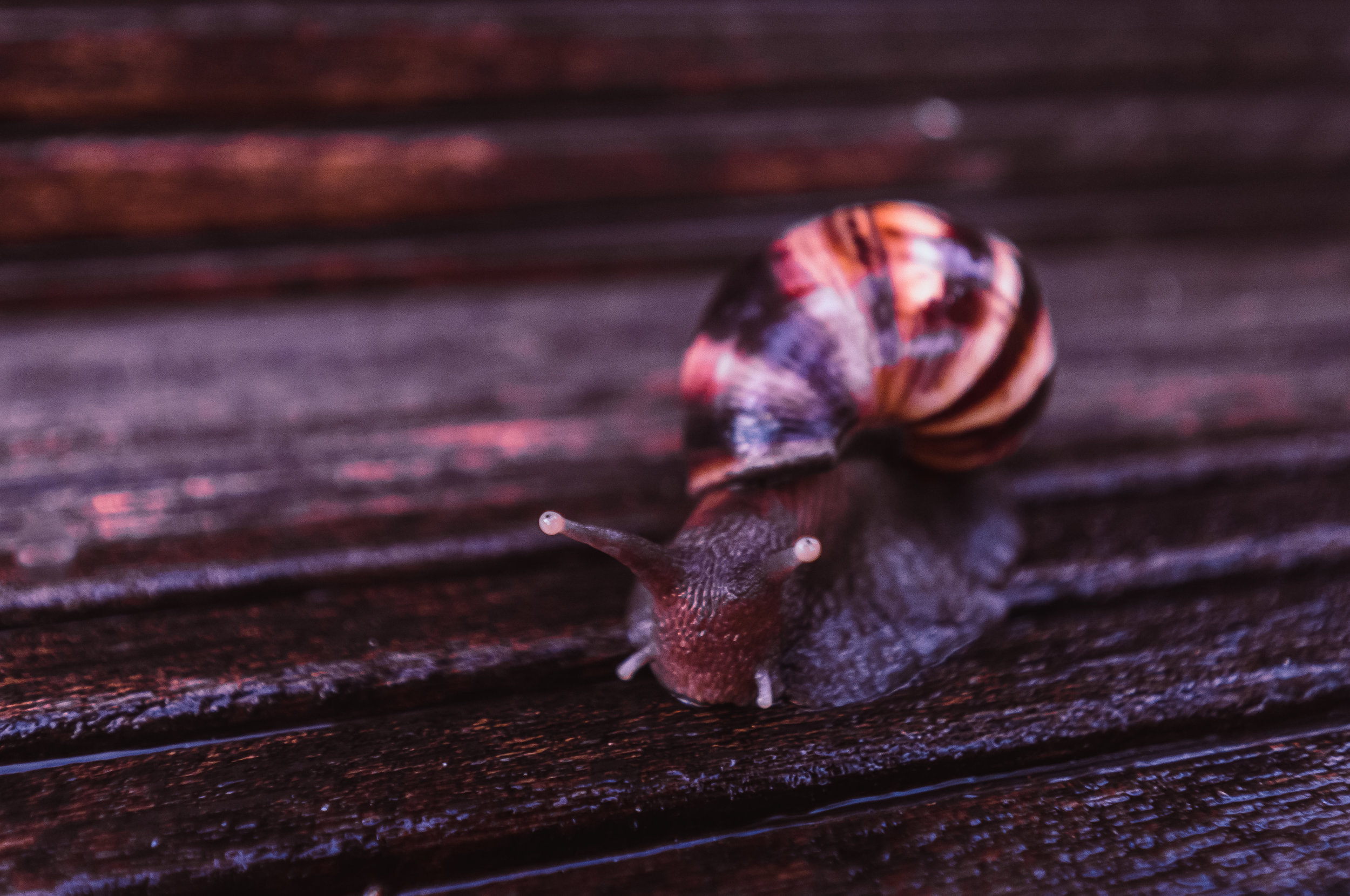
Snails
An early morning rain triggered this guy to come out from hiding.
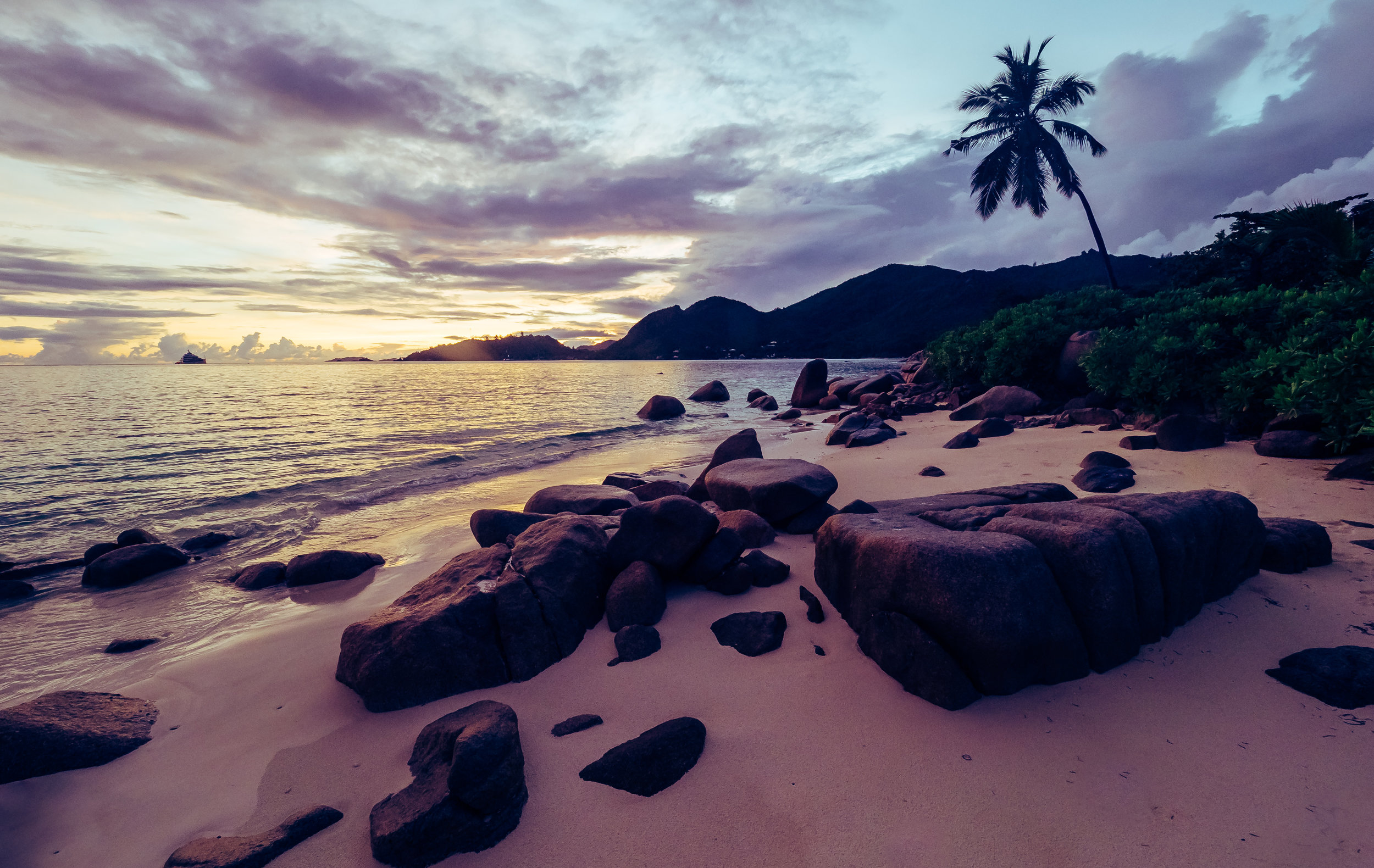
Sunrise
Worth getting up for at 5am.
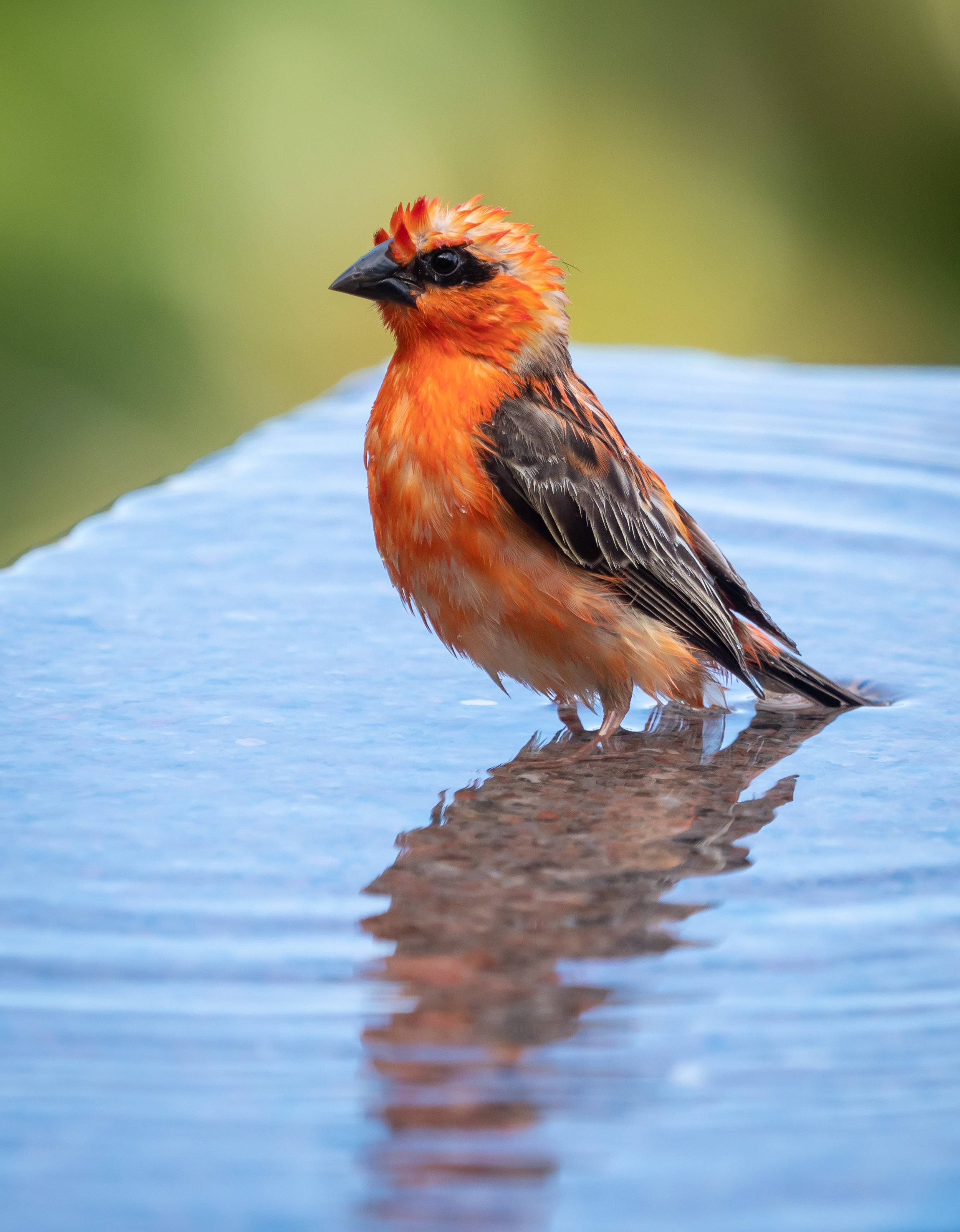
The Red Fody
A common bird in the Indian Ocean, this one took a bath in the pool.
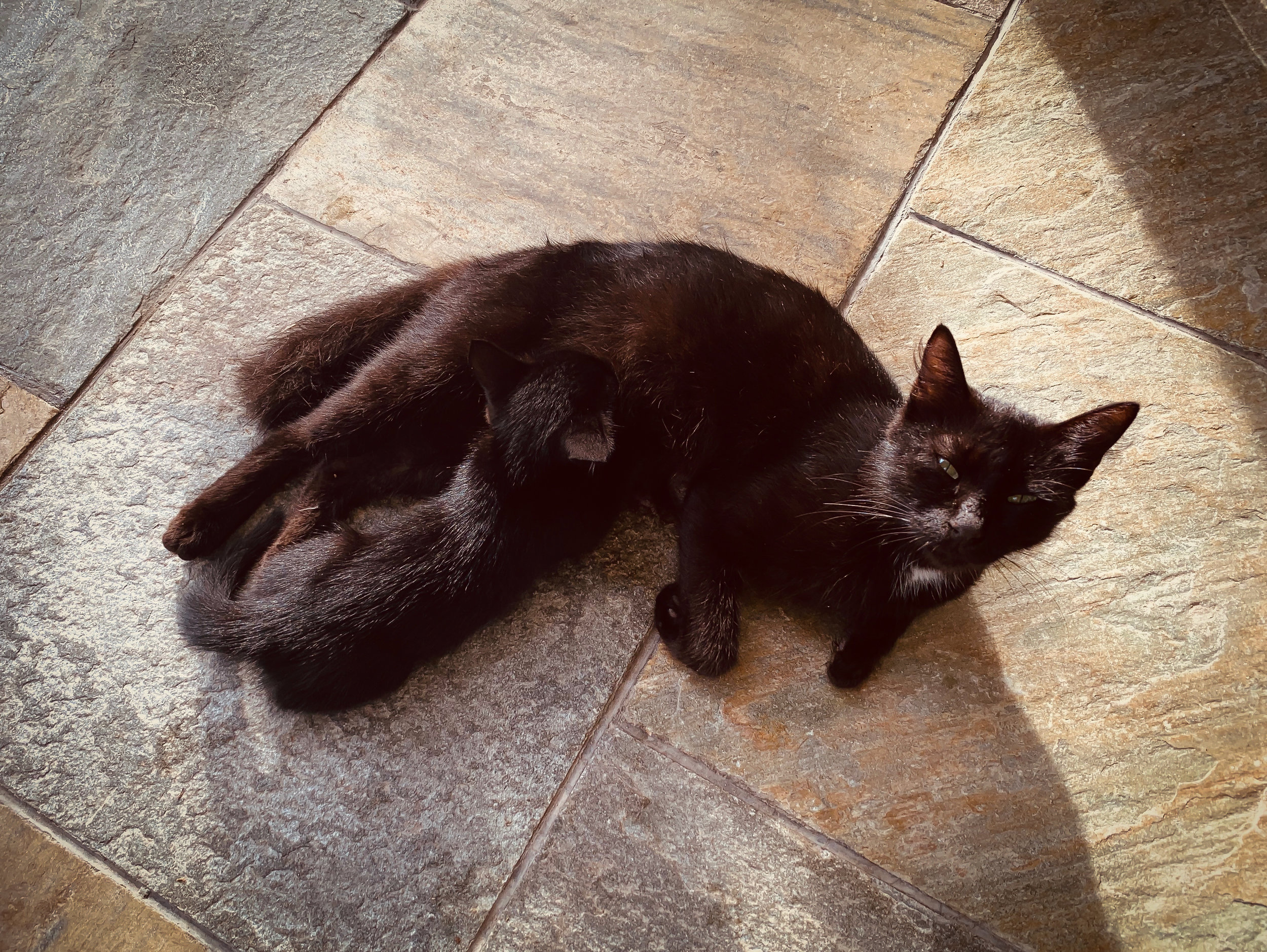
Feline Friends
Cat photo can't be missing. This mum was hanging out in the hotel grounds with her two kitten.
The Alpine Route, Liechtenstein, Lake Como, Genoa, the French Riviera and back!
In August 2018 I finally took a trip I had on my mind for a few years, following the route below. The drive took us through parts of the famous German Alpine Route, past castle Neuschwanstein, along Lake Constance, through Liechtenstein with its tiny capital Vaduz, for a stop at Lake Como and onwards to Genoa, and finally the coastal beauty of the French Riviera with Monaco, Nice, Antibes, Cannes and St Tropez.


In August 2018 I finally took a trip I had on my mind for a few years, following the route on the map above. The drive took us through parts of the famous German Alpine Route, past castle Neuschwanstein, along Lake Constance, through Liechtenstein with its tiny capital Vaduz, into the Swiss Alps, for a stop at Lake Como and onwards to Genoa, and finally the coastal beauty of the French Riviera with Monaco, Nice, Antibes, Cannes and St Tropez. Aside from driving a lot, we also walked and hiked quite a bit as my trusty Pedometer app showed.
It was all worth it though and I can definitely recommend the trip. Below is a selection of photos taken along the route.
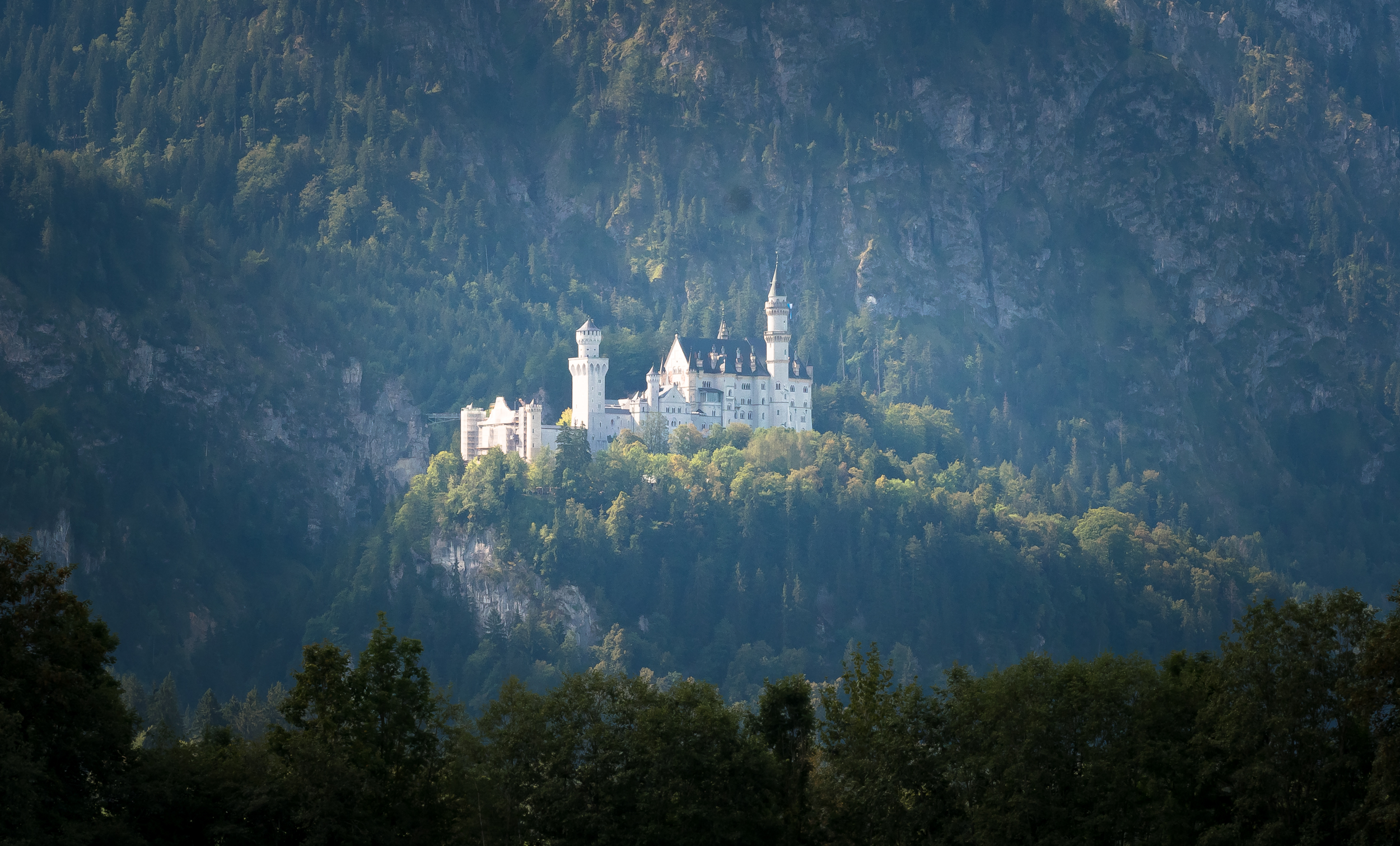
Neuschwanstein
One of the most famous sights in Germany, the palace was built by Ludwig II of Bavaria as a retreat - unfortunately it was never fully finished, but nevertheless attracts over a million visitors a year.
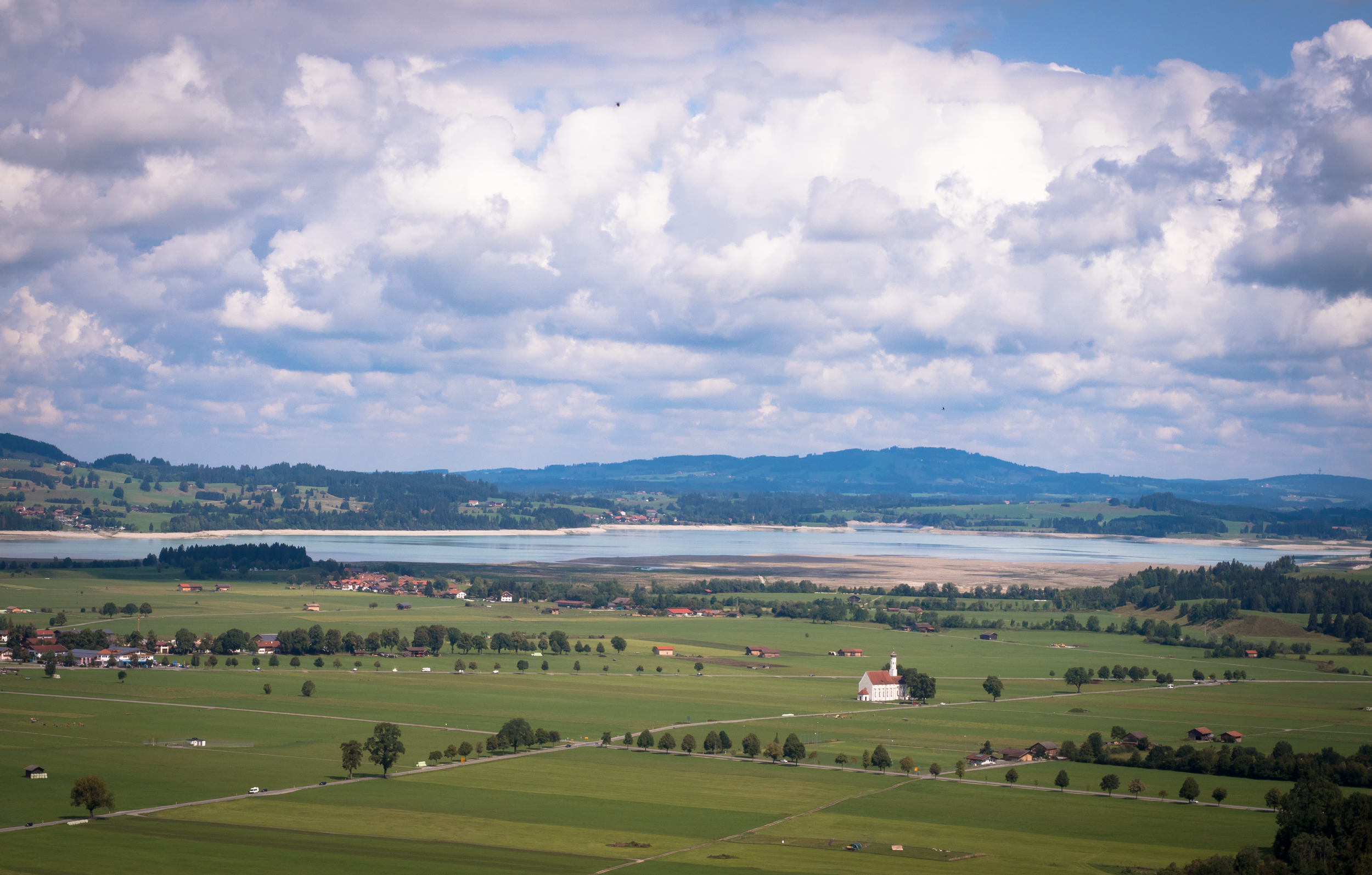
Landscapes
Neuschwanstein overlooks two lakes, the Alpsee and Schwansee. After a very hot and dry summer, you can clearly see how little water the lake had in late August.
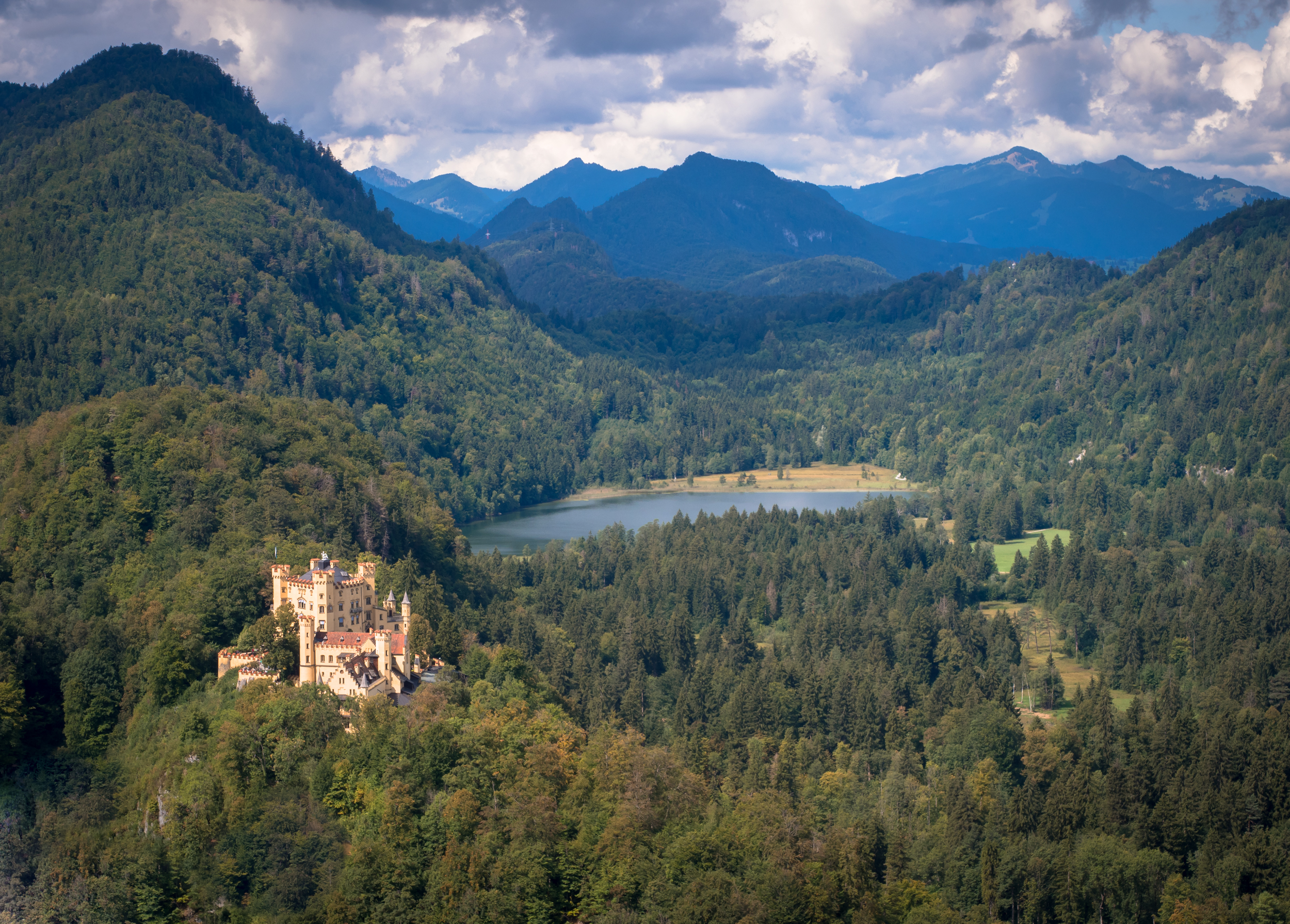
Hohenschwangau Castle
A second and less famous castle is located just a few hundred meters away. Hohenschwangau Castle was built by Ludwig's father and served as the family's summer residence.
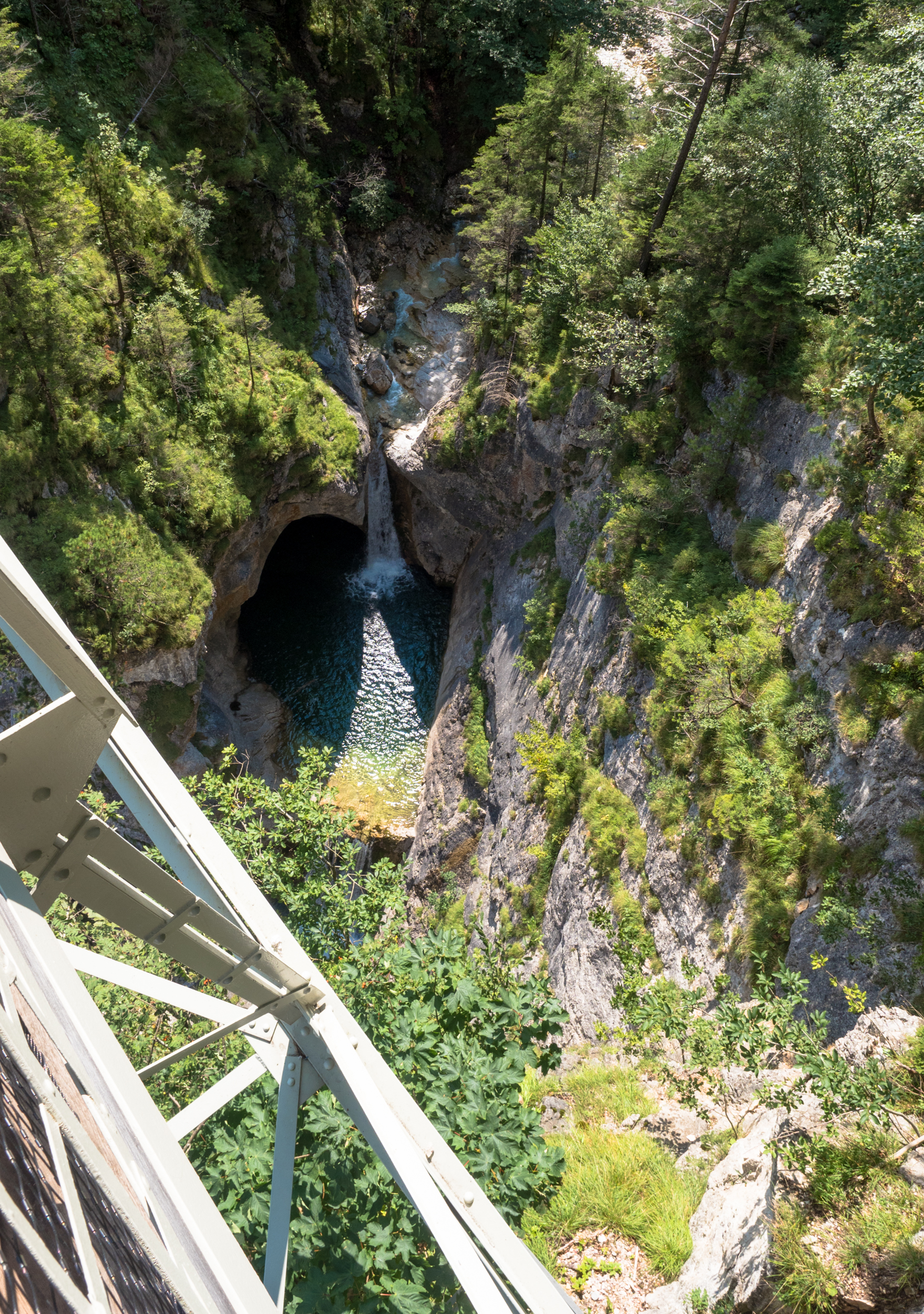
Marienbrücke
Lookign down into the gorge from the Marienbrücke, arguably providing the best view of the castle.
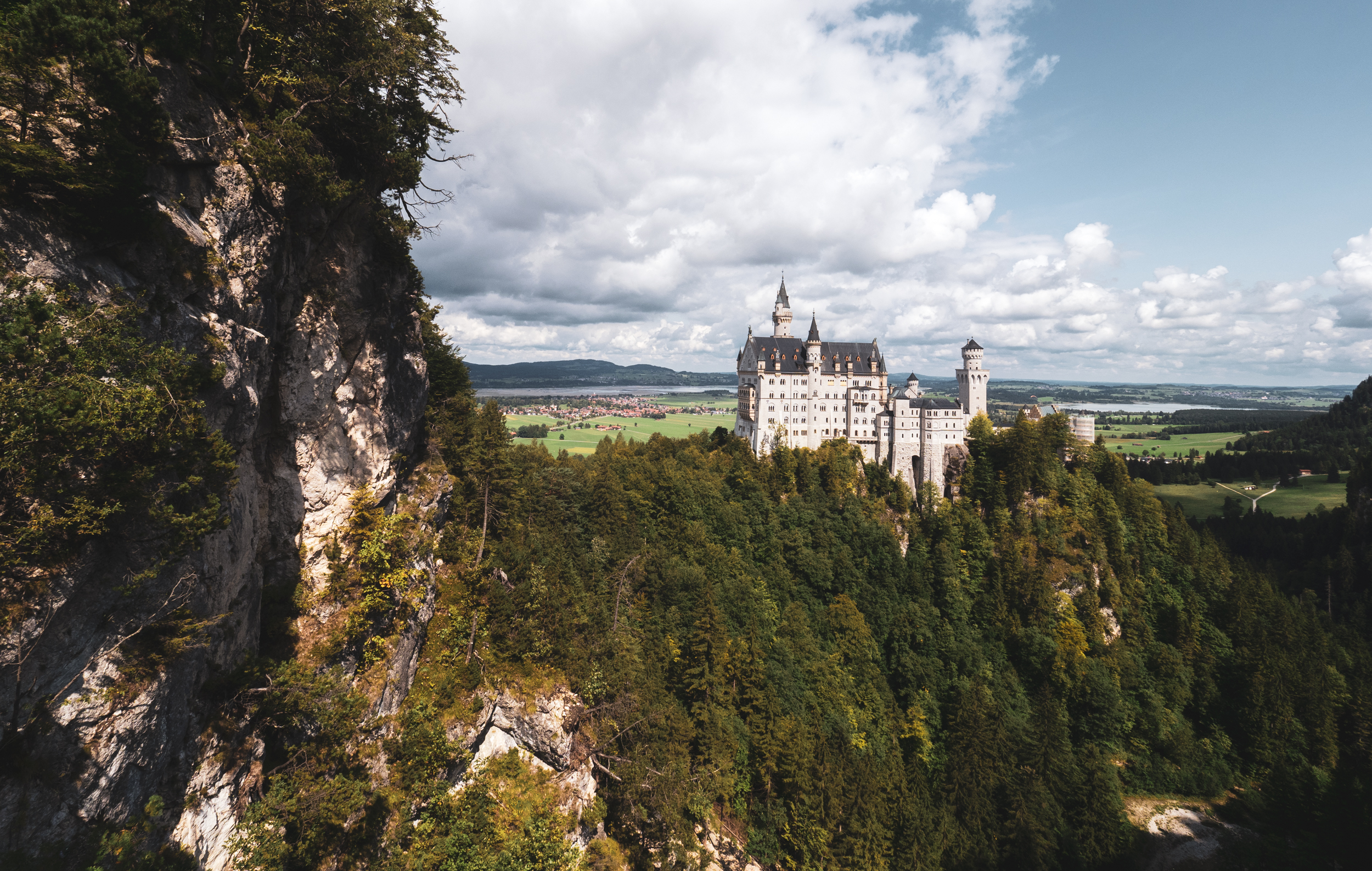
Fairy Tales
It's been confirmed that the castle served as Walt Disney's inspiration for his famous Disney castle, inspiring countless childhood dreams. The king himself viewed the building as representative of a romantic interpretation of the Middle Ages, as well as the musical mythology of his friend Richard Wagner.
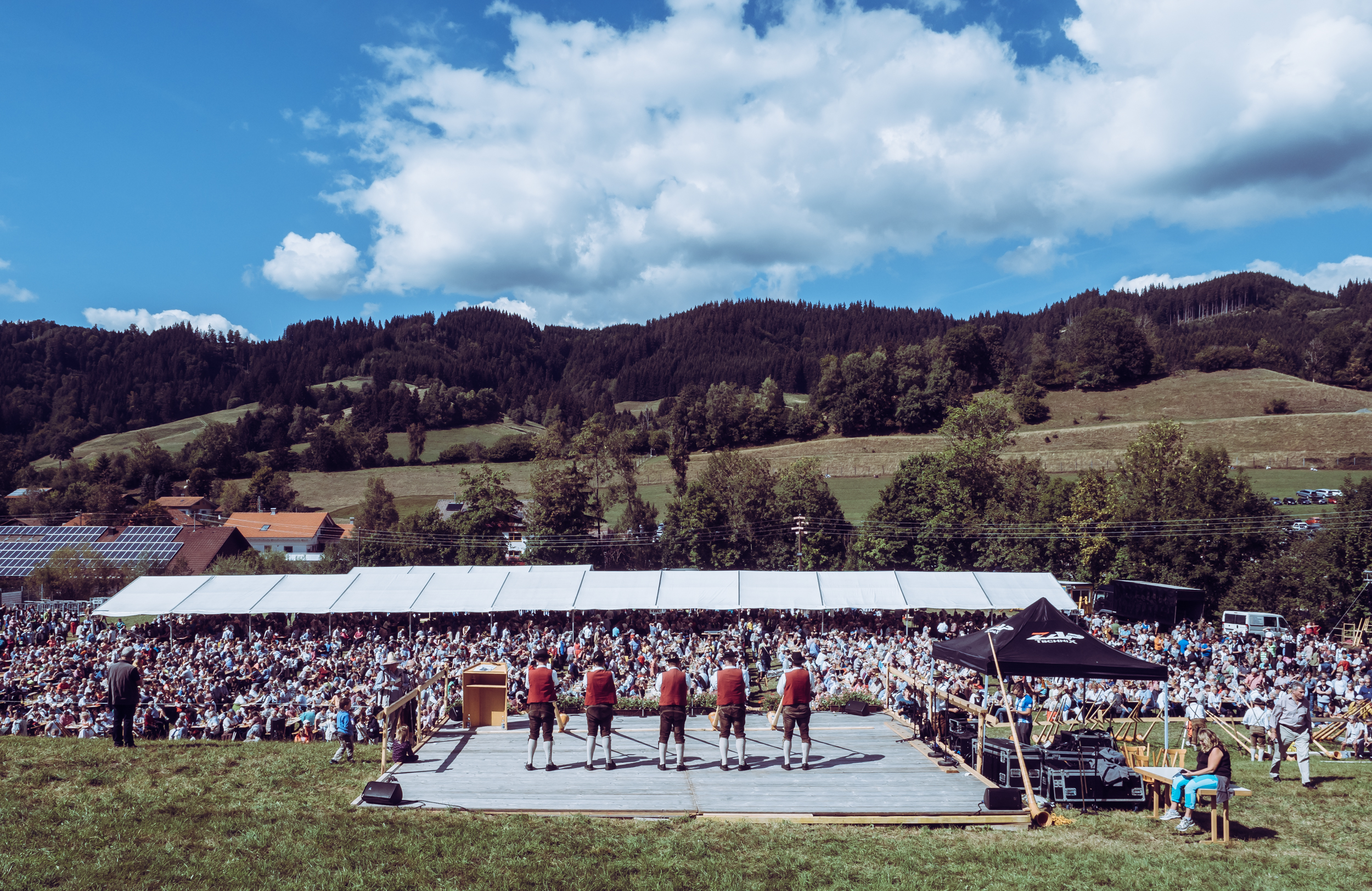
Alphorn Concert
Sheer luck meant we were able to attend the annual meeting of the regional alphornists (yes, that's how you call them) in Wengen.
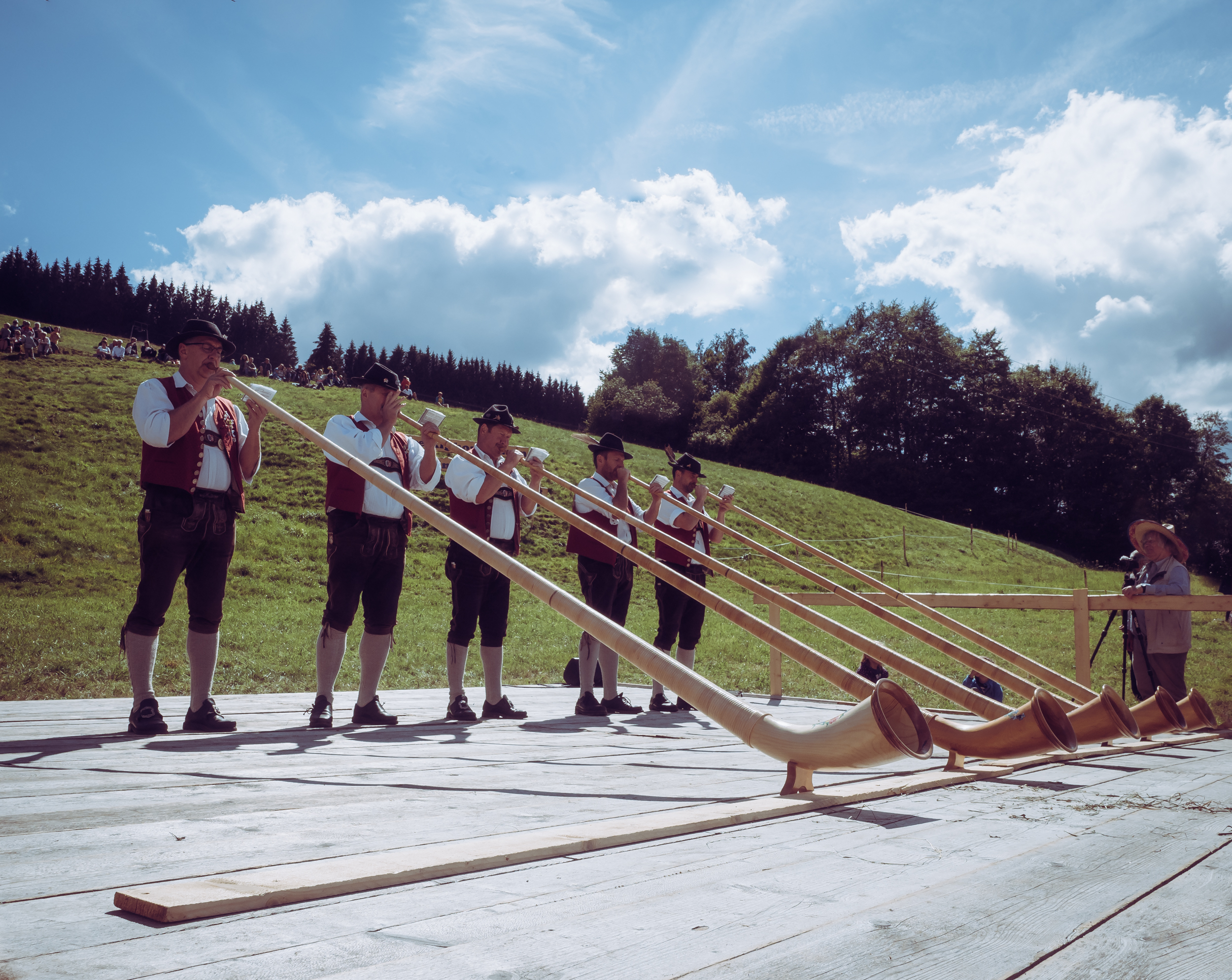
Alphorns
The Alpine Horn used to be a method of communication in the Alps - nowadays it's a musical instrument.

Up the Hill
The musicians getting ready for the grand finale...
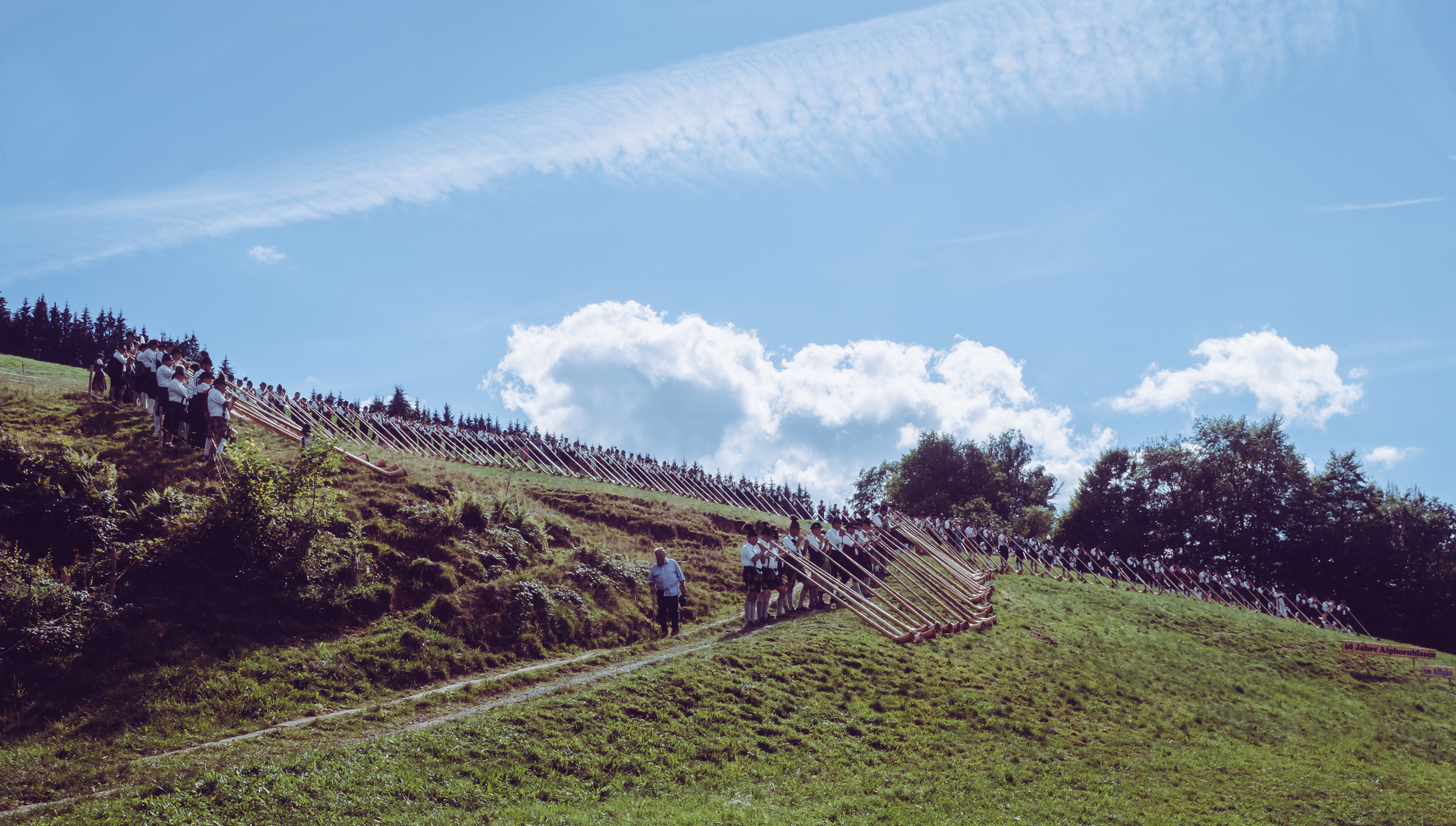
The Finale
... which consisted of 300 Alphornists playing at the same time. Impressive sight and sound.
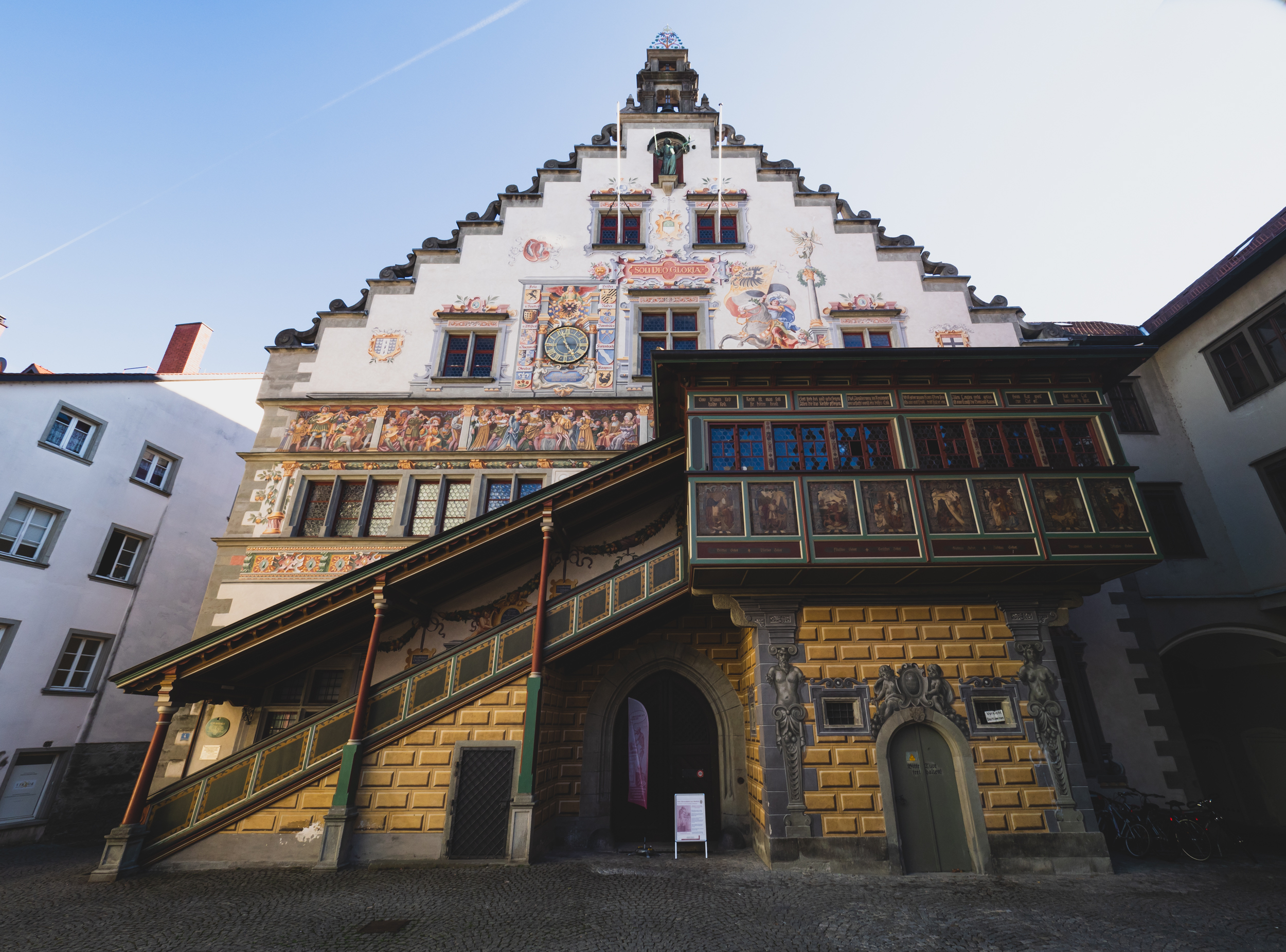
City Hall
Onwards to Lake Constance, this is the Lindau City Hall.
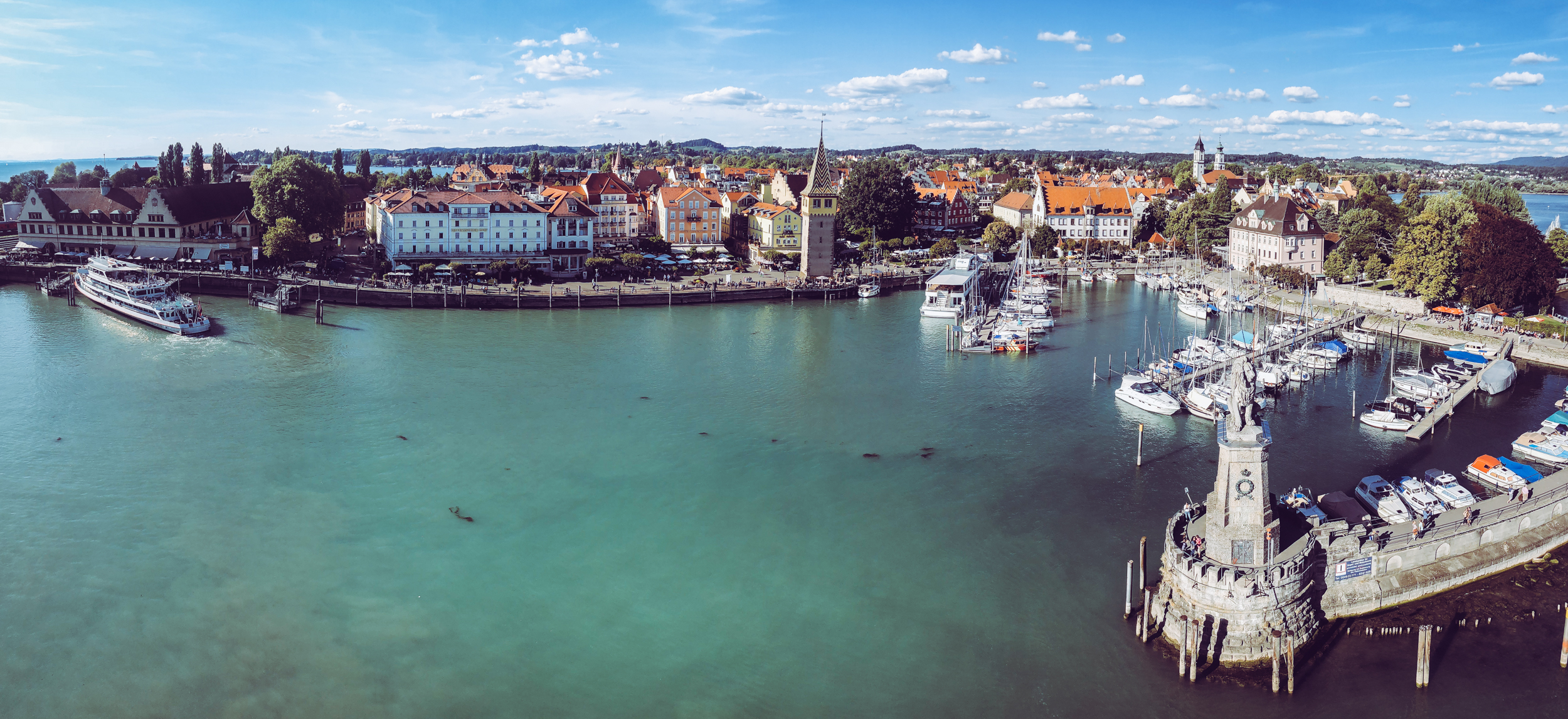
Lindau Island
The view over the island of Lindau, part of the city on the Bavarian side of the lake (the shores of which cover Germany, Austria and Switzerland). Taken from the lighthouse.
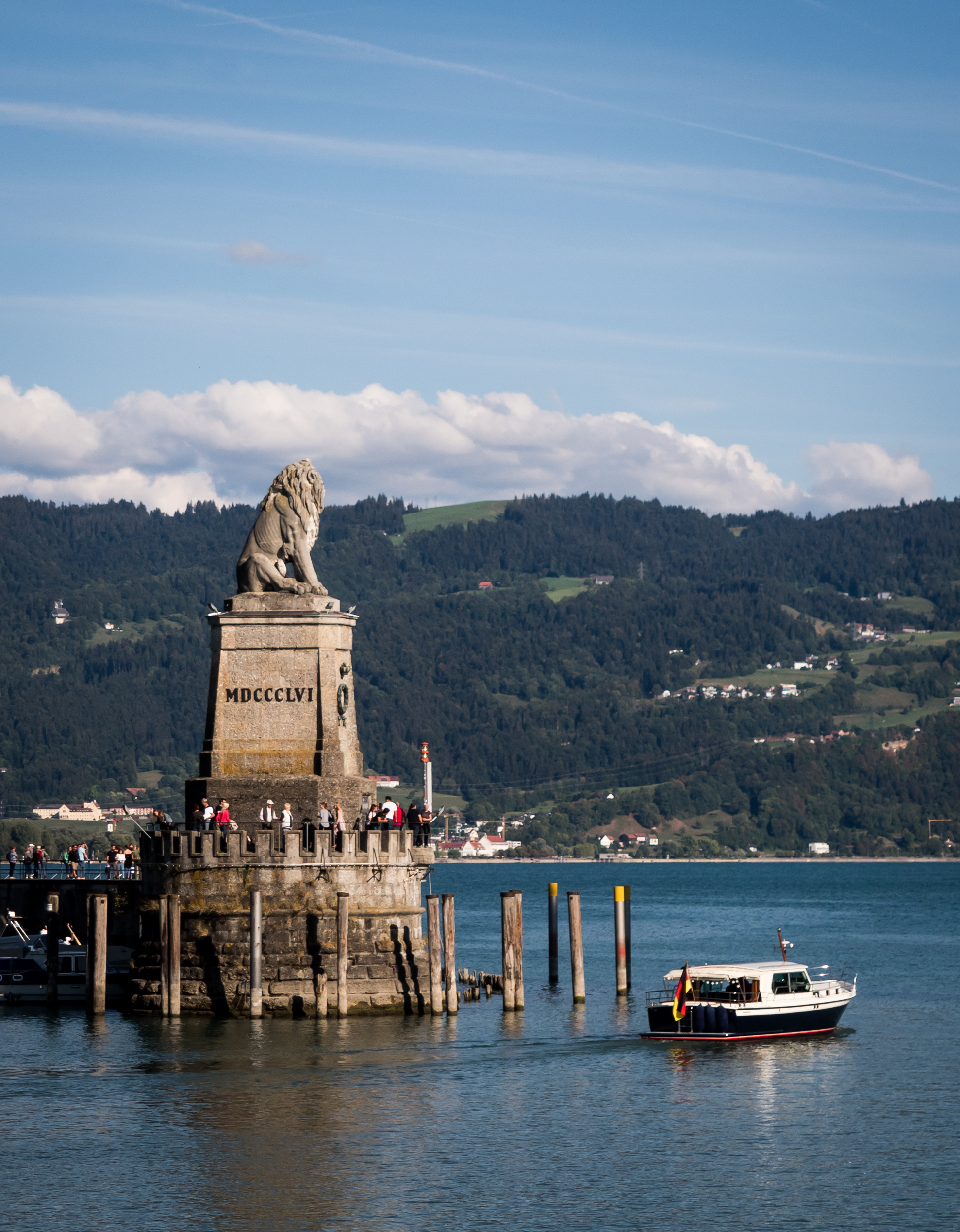
Bavarian Lion
The statue on the entrance of the Lindau harbour.
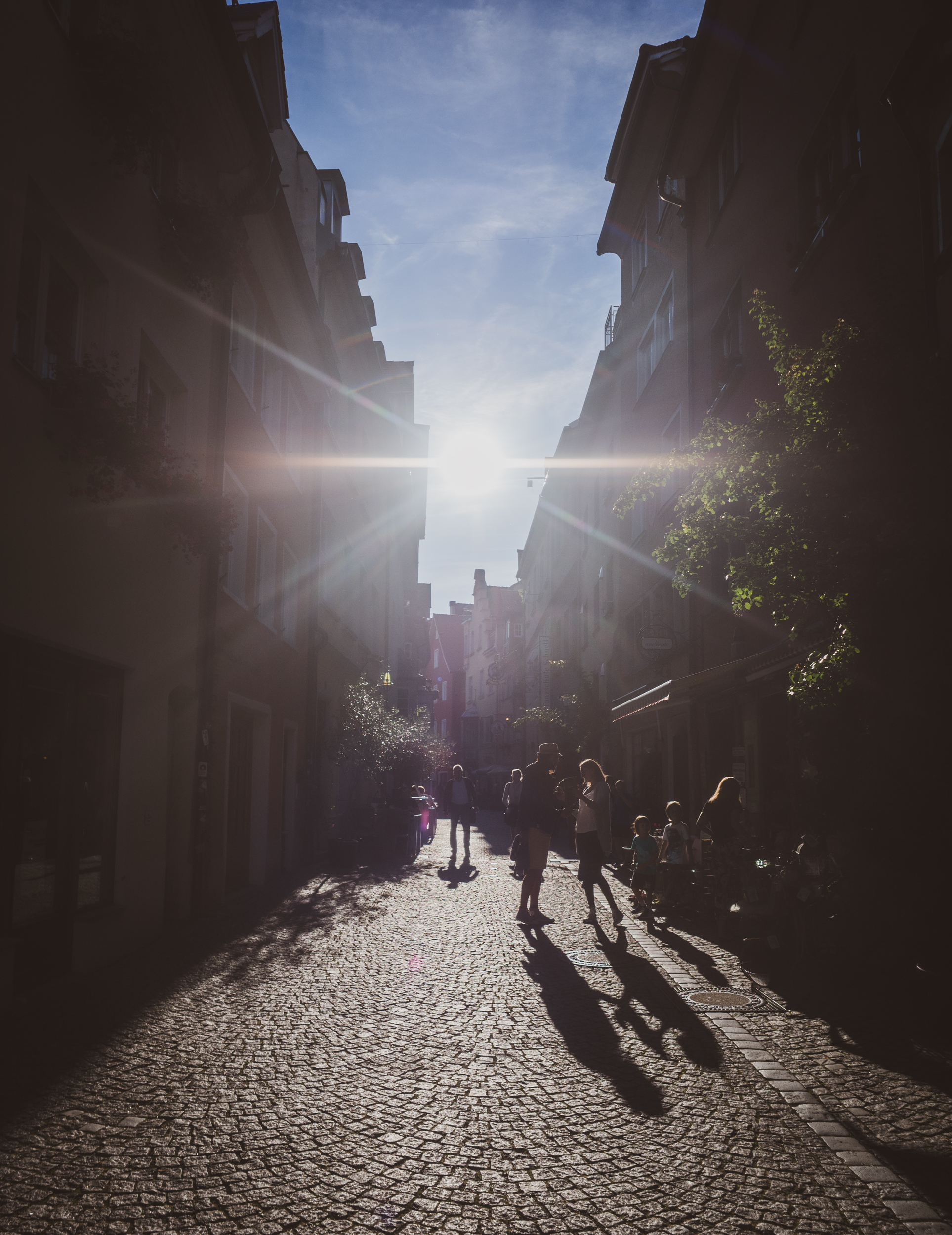
Lindau Centre
The town centre of Lindau island with its typical south German atmosphere.
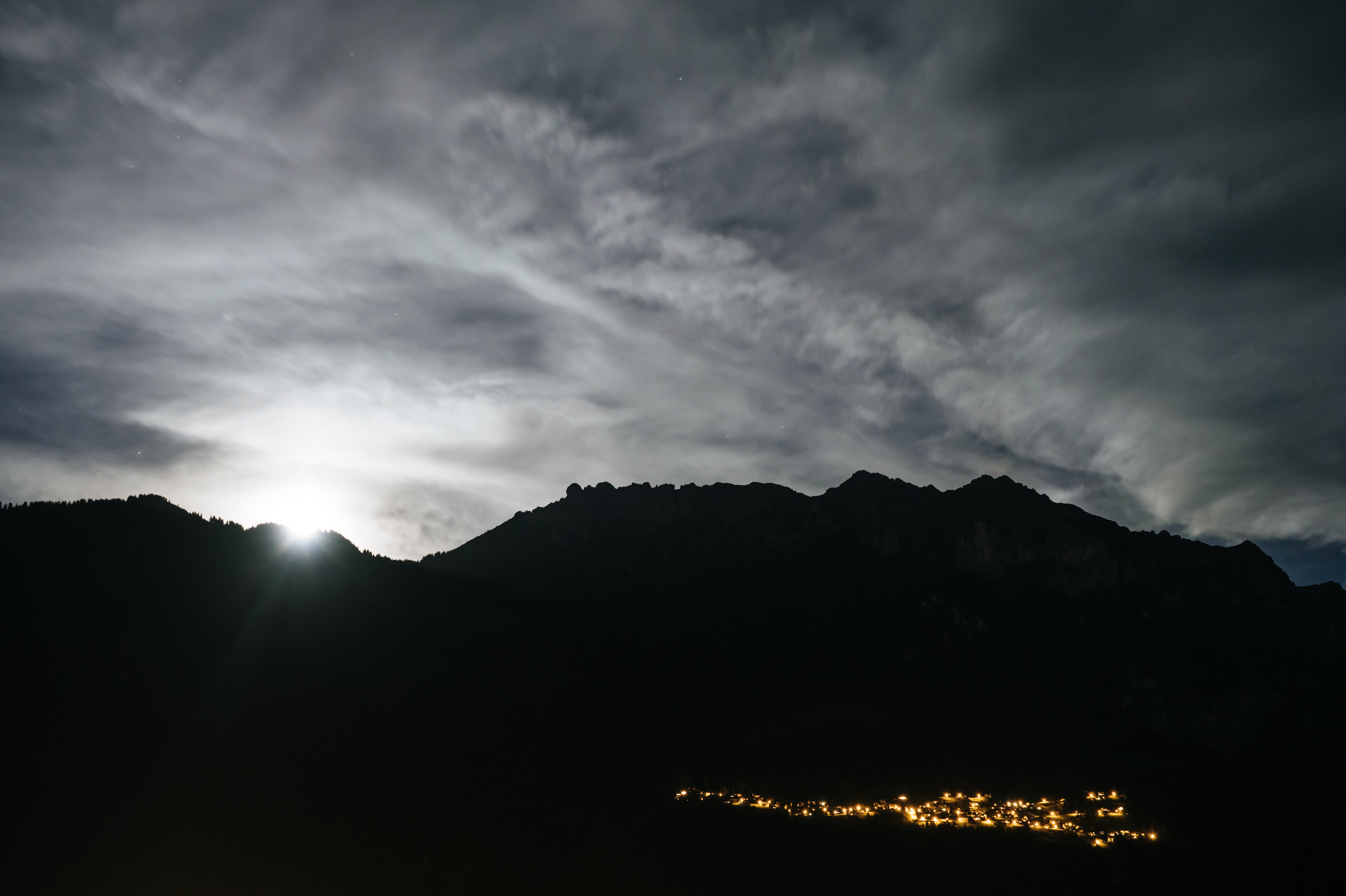
Moonrise
We arrived in Liechtenstein in the evening, just before the moon rose looking westwards over the Alps.

Full Moon
A clear night and the full moon made this shot possible.
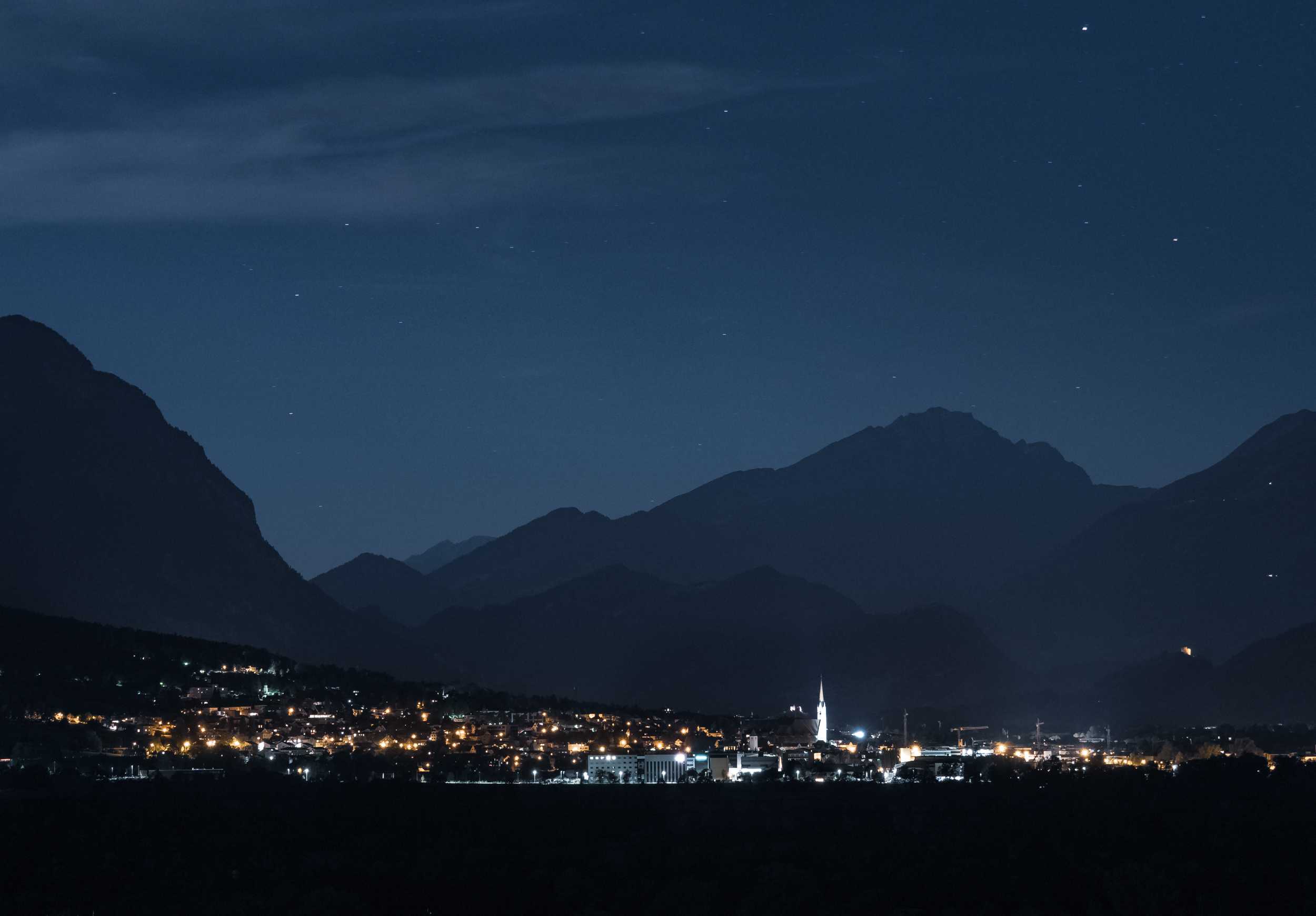
The Alps at Night
A view over the Rhine towards Switzerland.
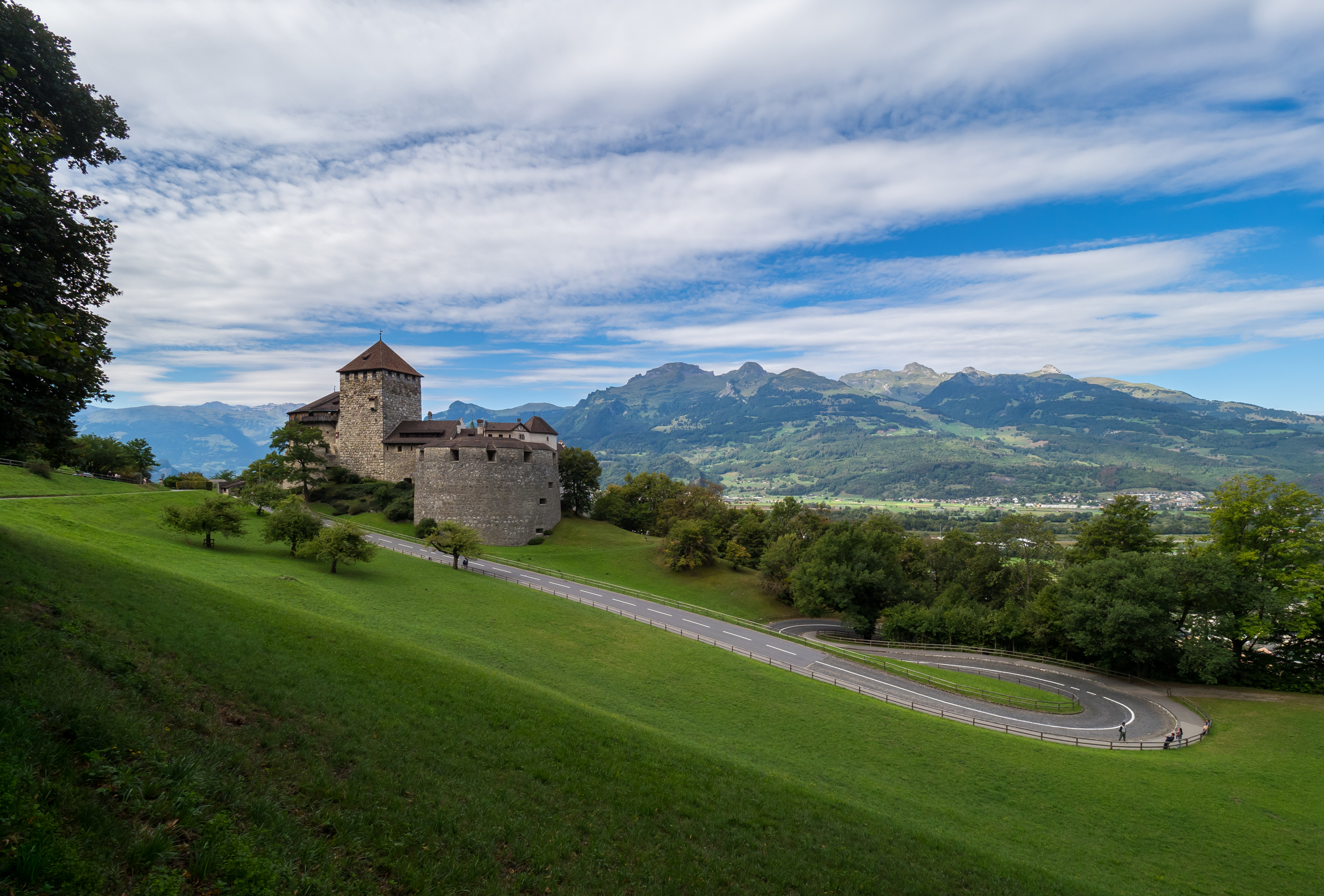
Vaduz Castle
While parts of it date back to the 12th century, the Liechtenstein princely family still lives in the castle. Today it is one of the few countries in the world that maintain no military.
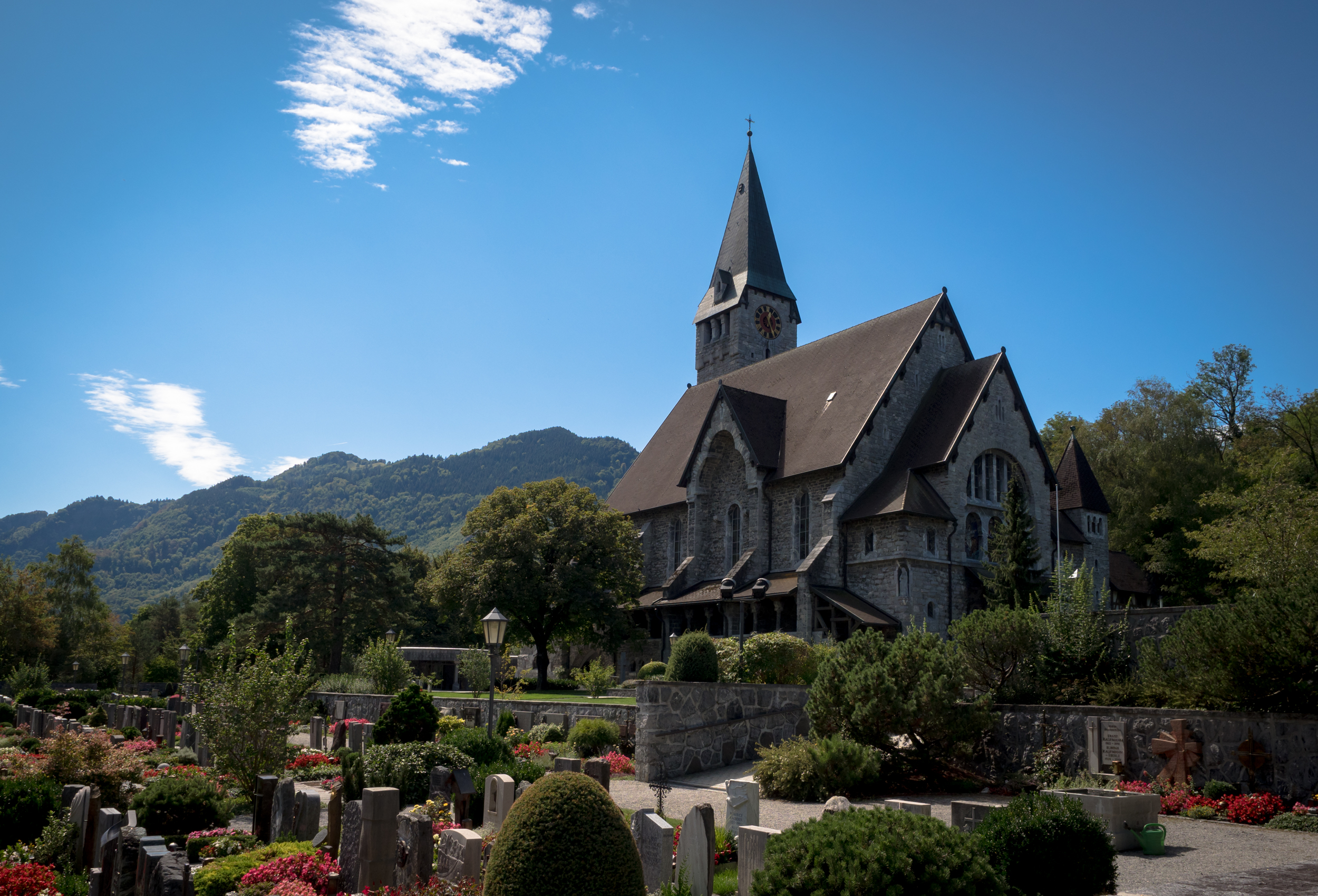
Church of Balzers
The church in the city of Balzers, sitting on the foot of the Gutenberg castle hill.
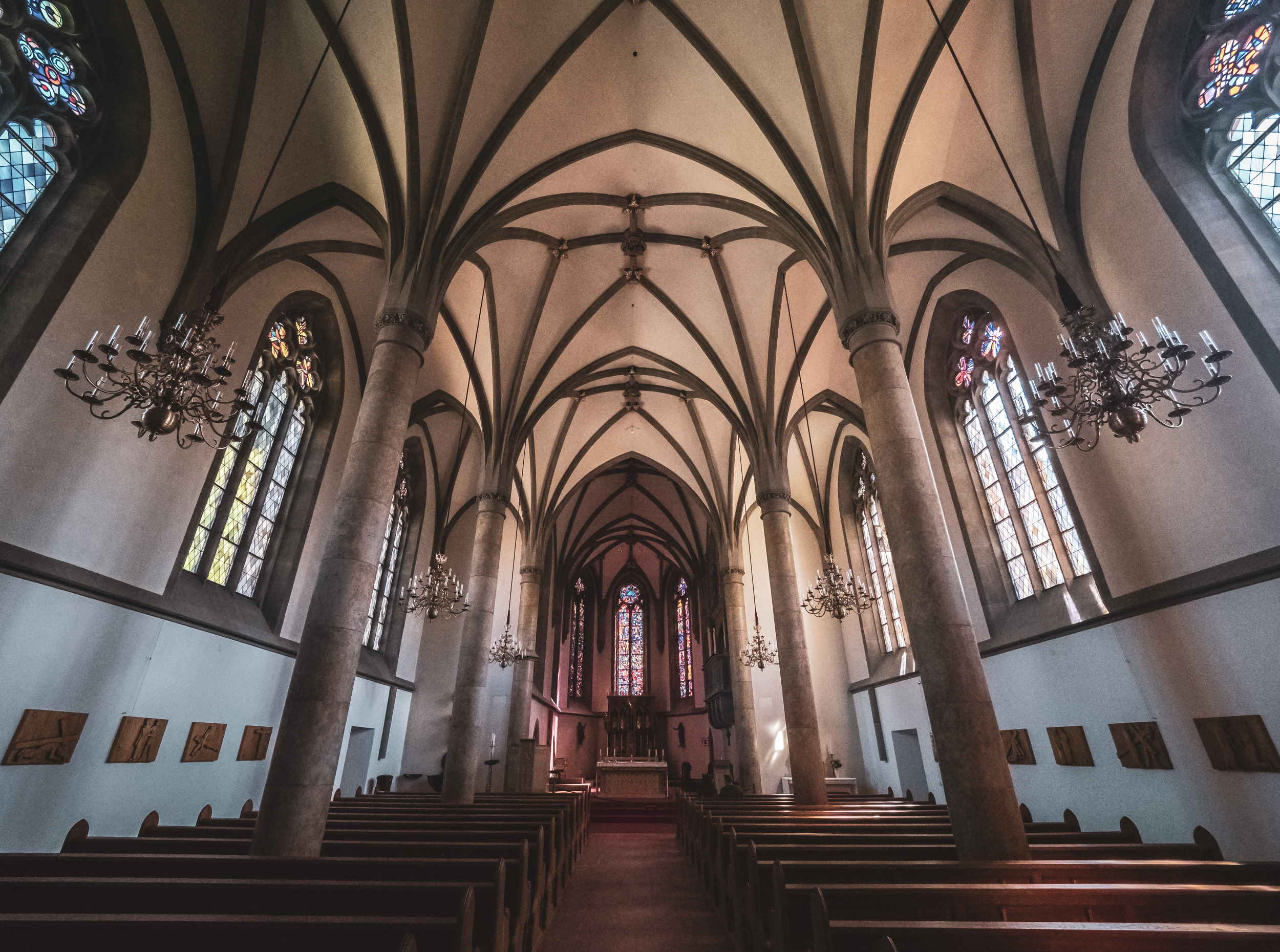
Empty
The church was completely empty when we entered - except for the organist practising, which was both eerie and amazing at the same time.

Pigs
Found these two when we stopped in a small mountain village in the Swiss Alps.
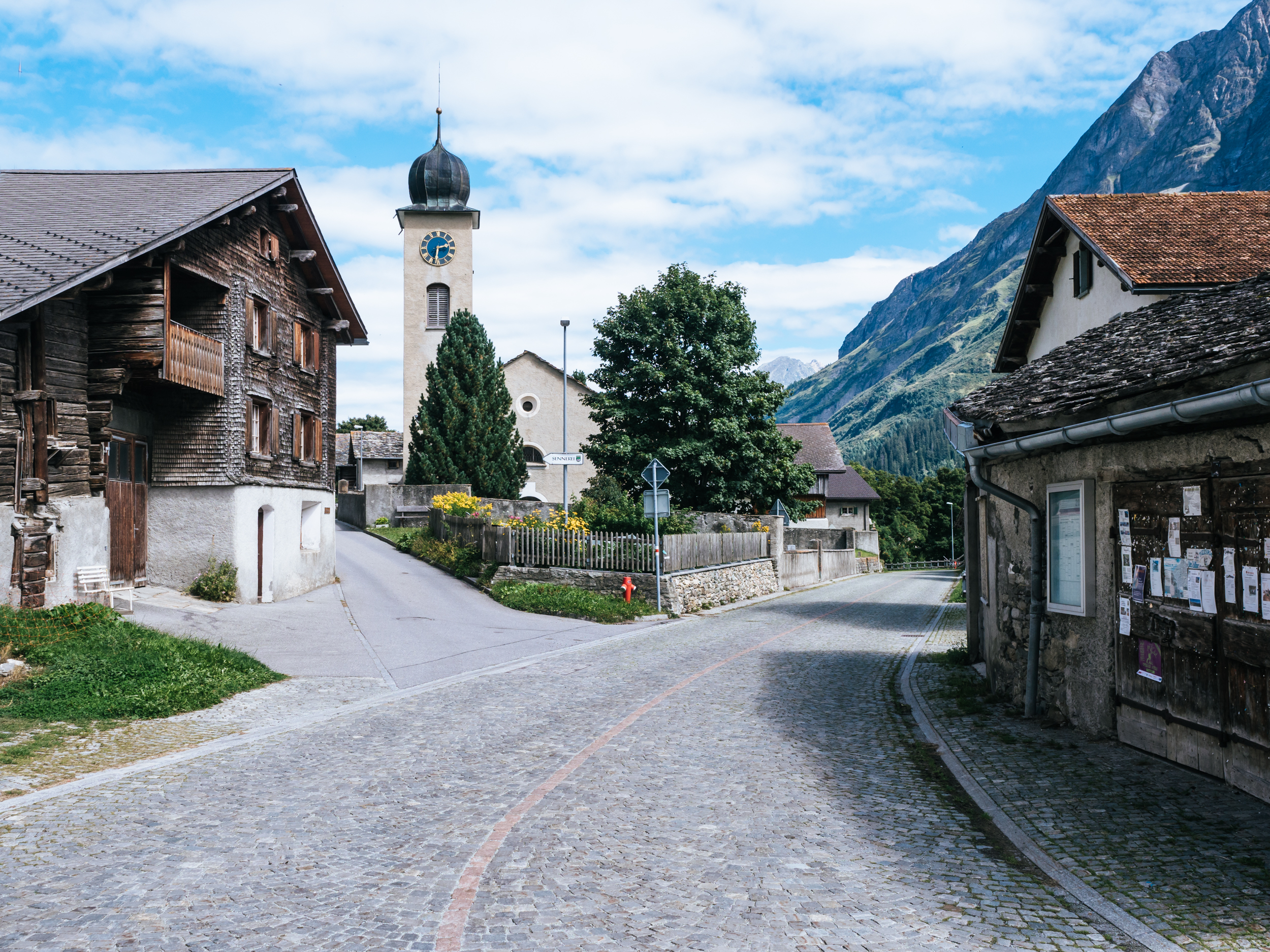
Nufenen
The small town of Nufenen, where we stopped briefly on our way to Lake Como. Population: 150. Unemployment: 0%.
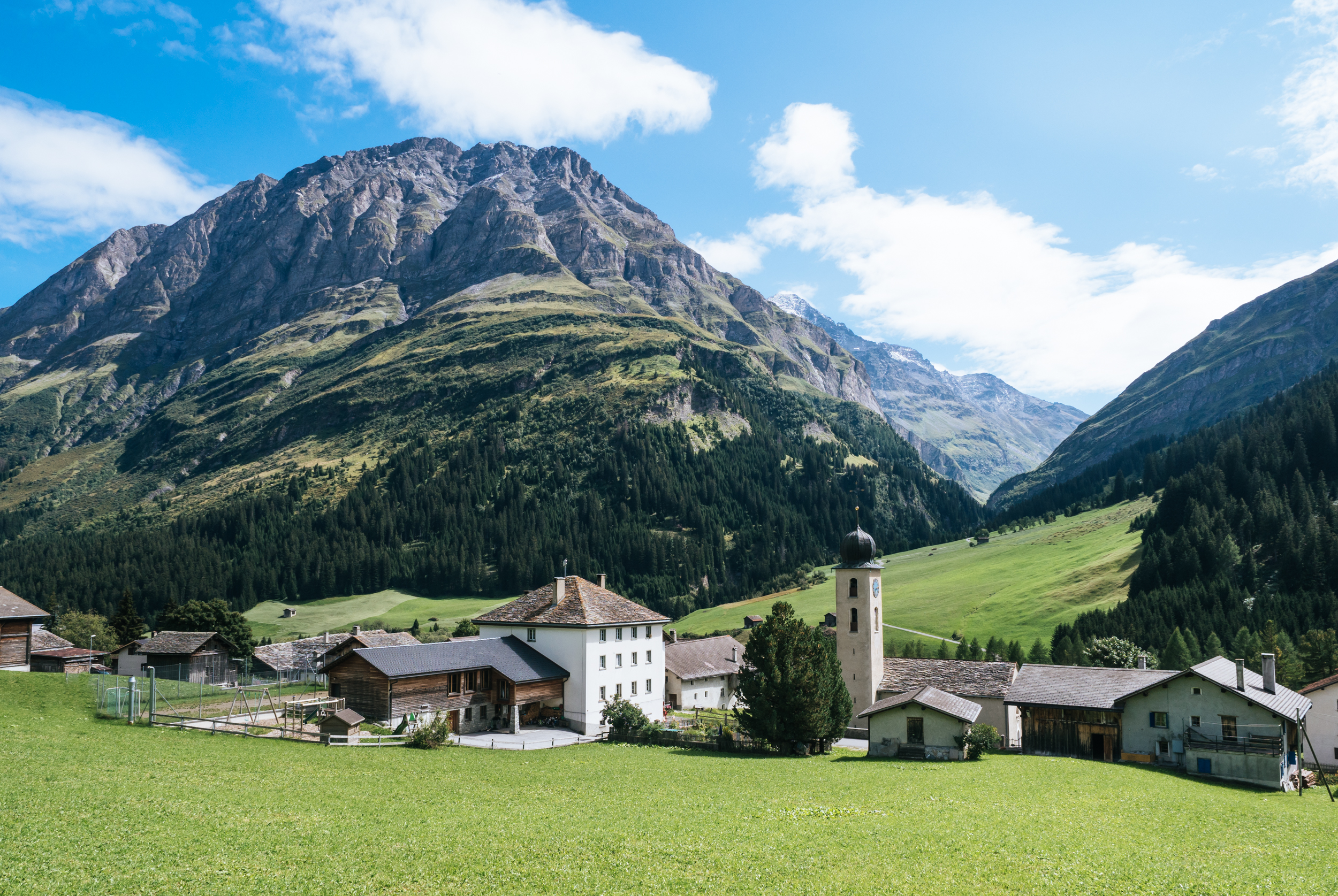
Alp Views
The village is located in the Swiss canton of Graubünden.
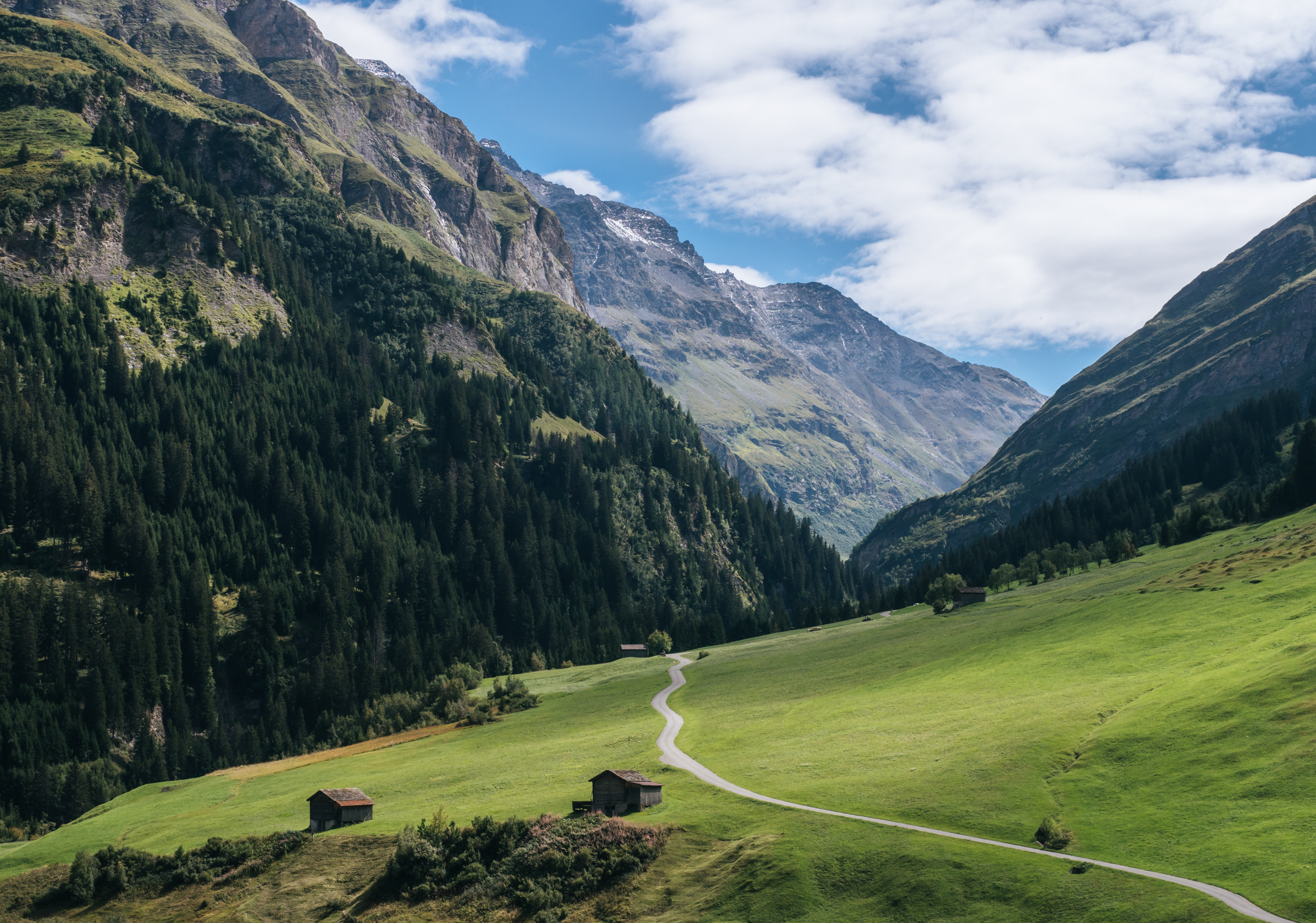
Views
The view into the valley towards the south.
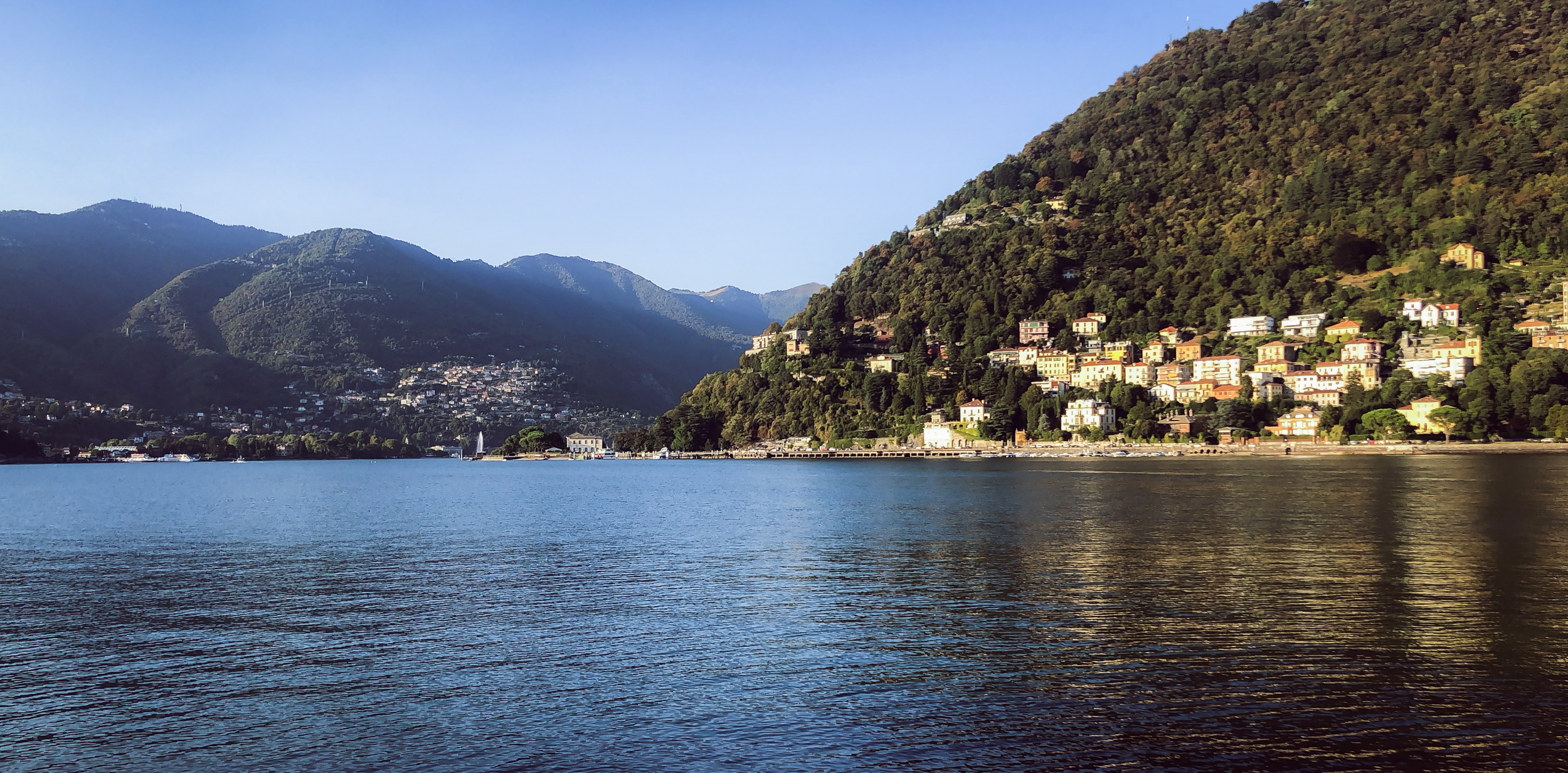
Lake Como
Our next destination was Lake Como, specifically the namesake city.
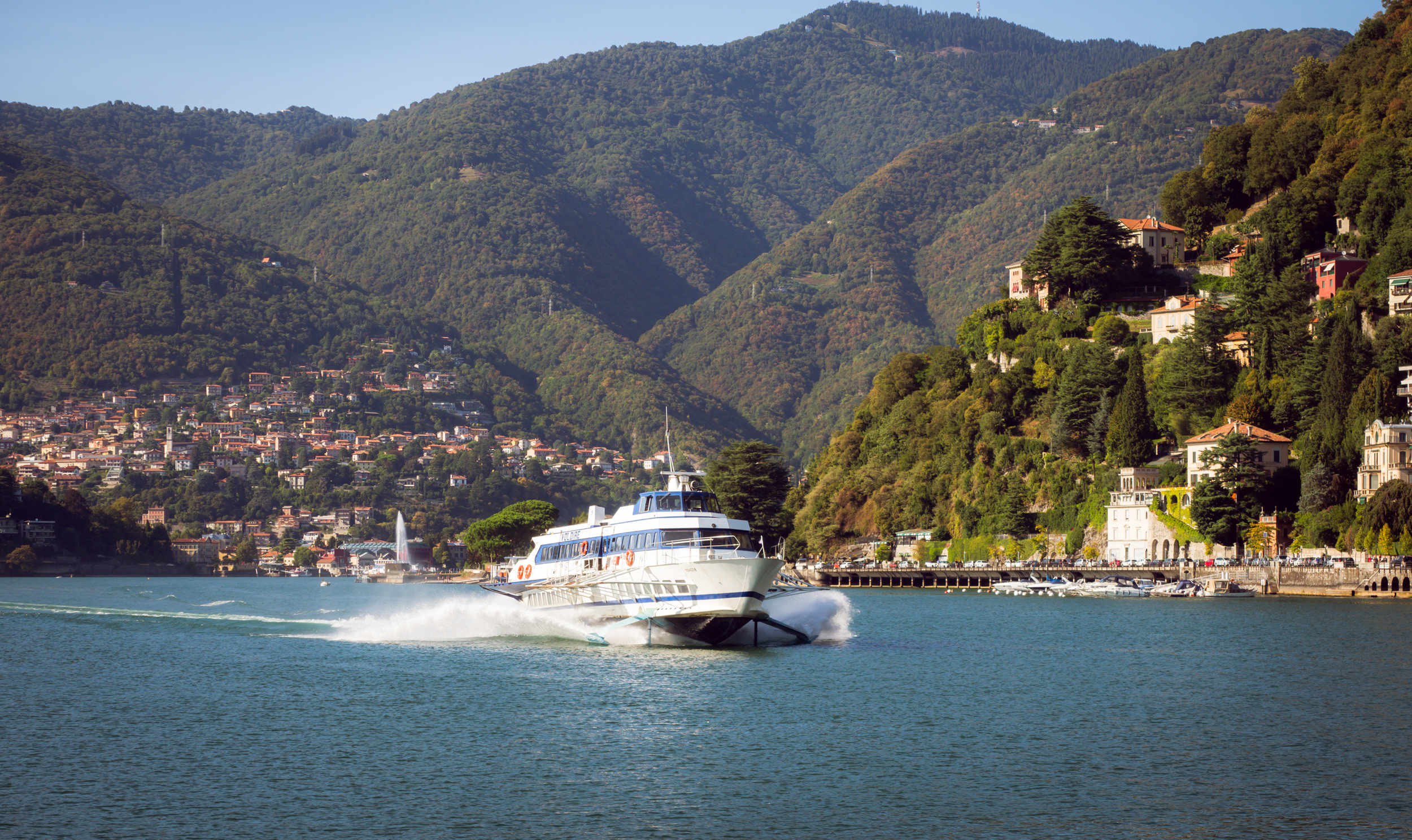
Transport
You can cross the lake with the "flying" ferry.
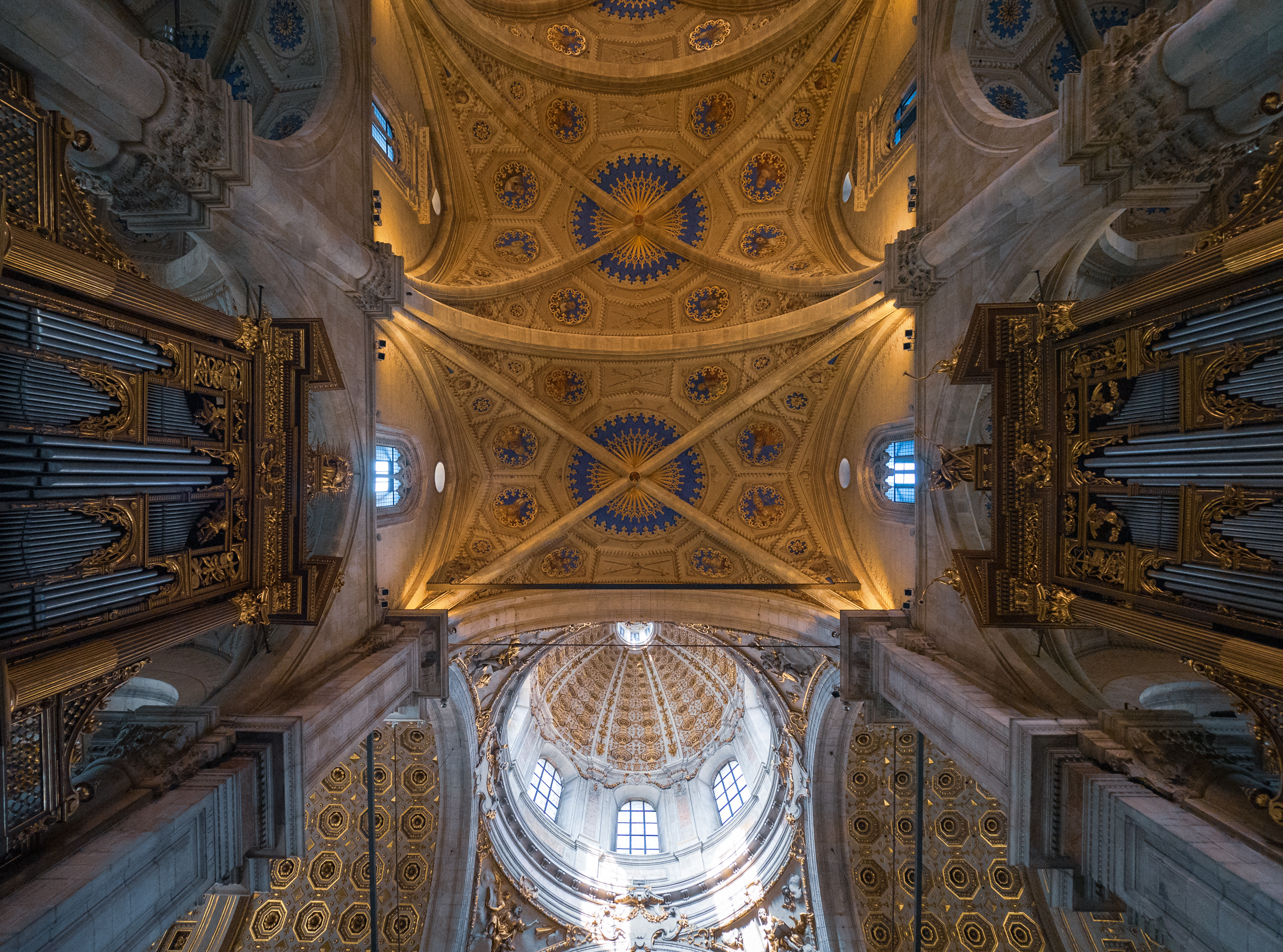
Como Cathedral Interior
The roof of the Como Cathedral, construction of which began in 1396 but didn't finish until 1770.
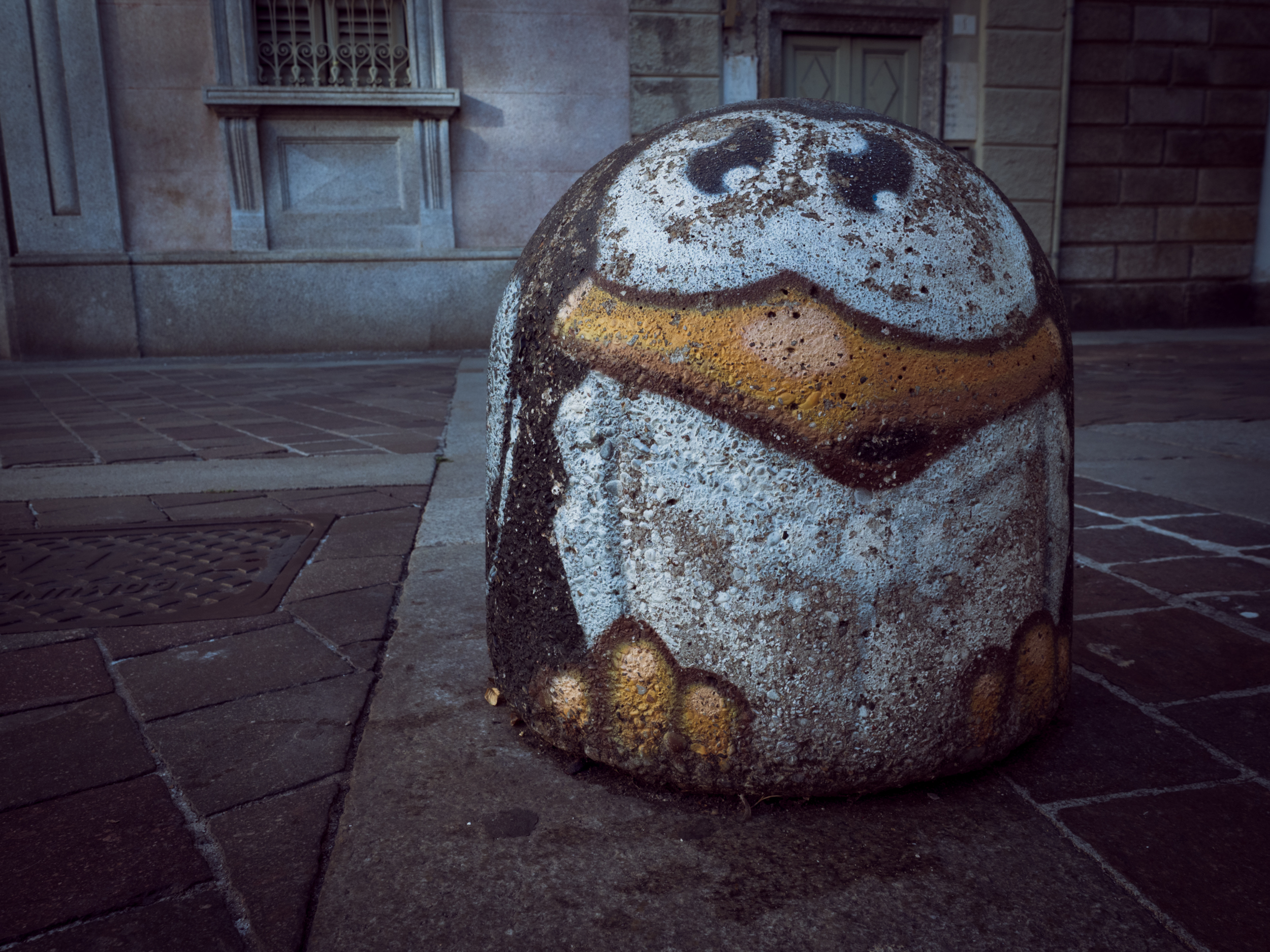
Penguin Style
Found this concrete post in the city centre.

The Como Gate Tower
The building was part of the former city walls, 40 meters high and built in 1192. Weirdly, the lower arch is off-axis from the 8 upper ones. The tower is empty on the inside, even the floors are no longer present.
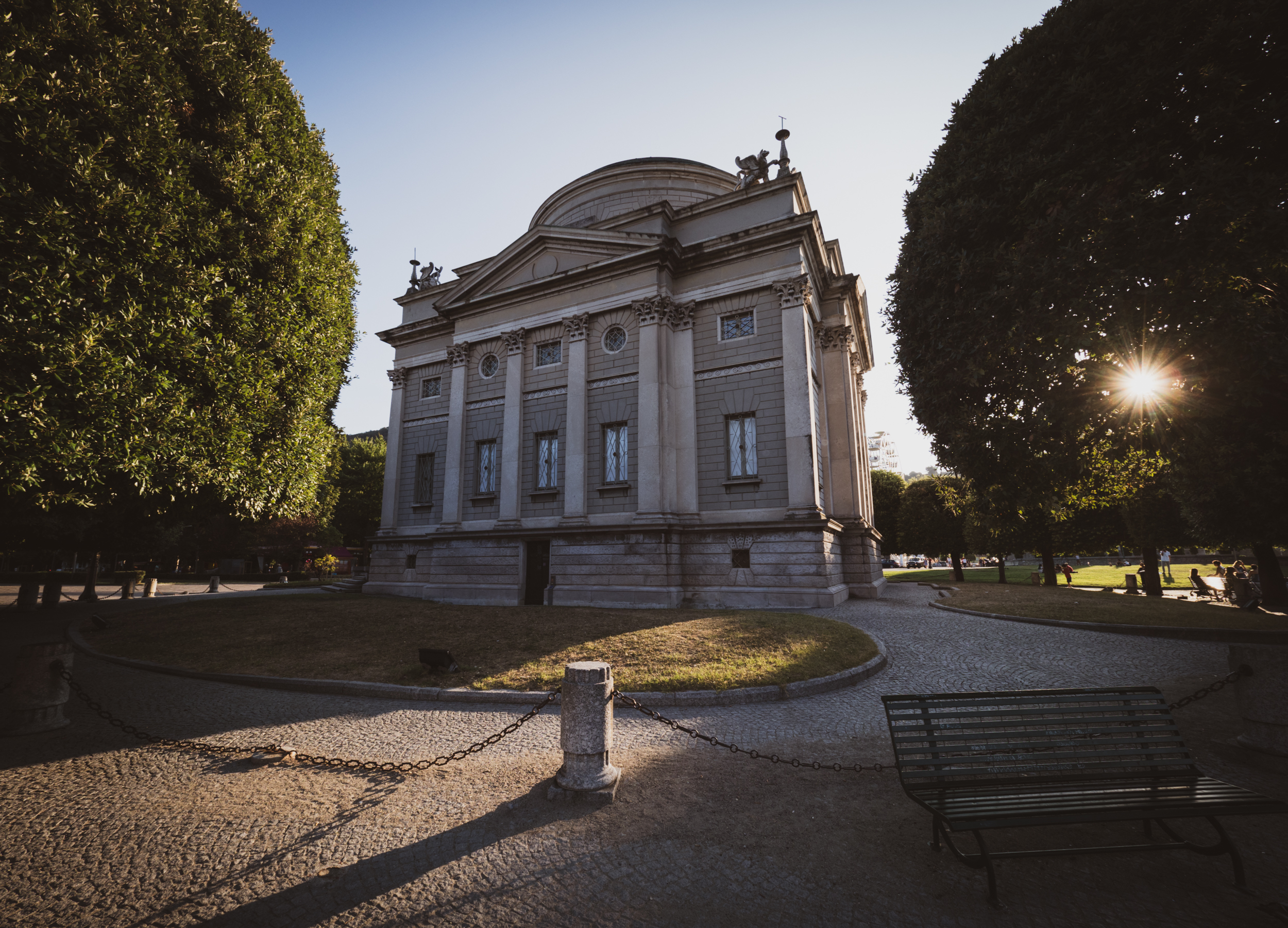
Tempio Voltiano
A museum on the shores of the lake dedicated to Alessandro Volta, the inventor of the electrical battery.
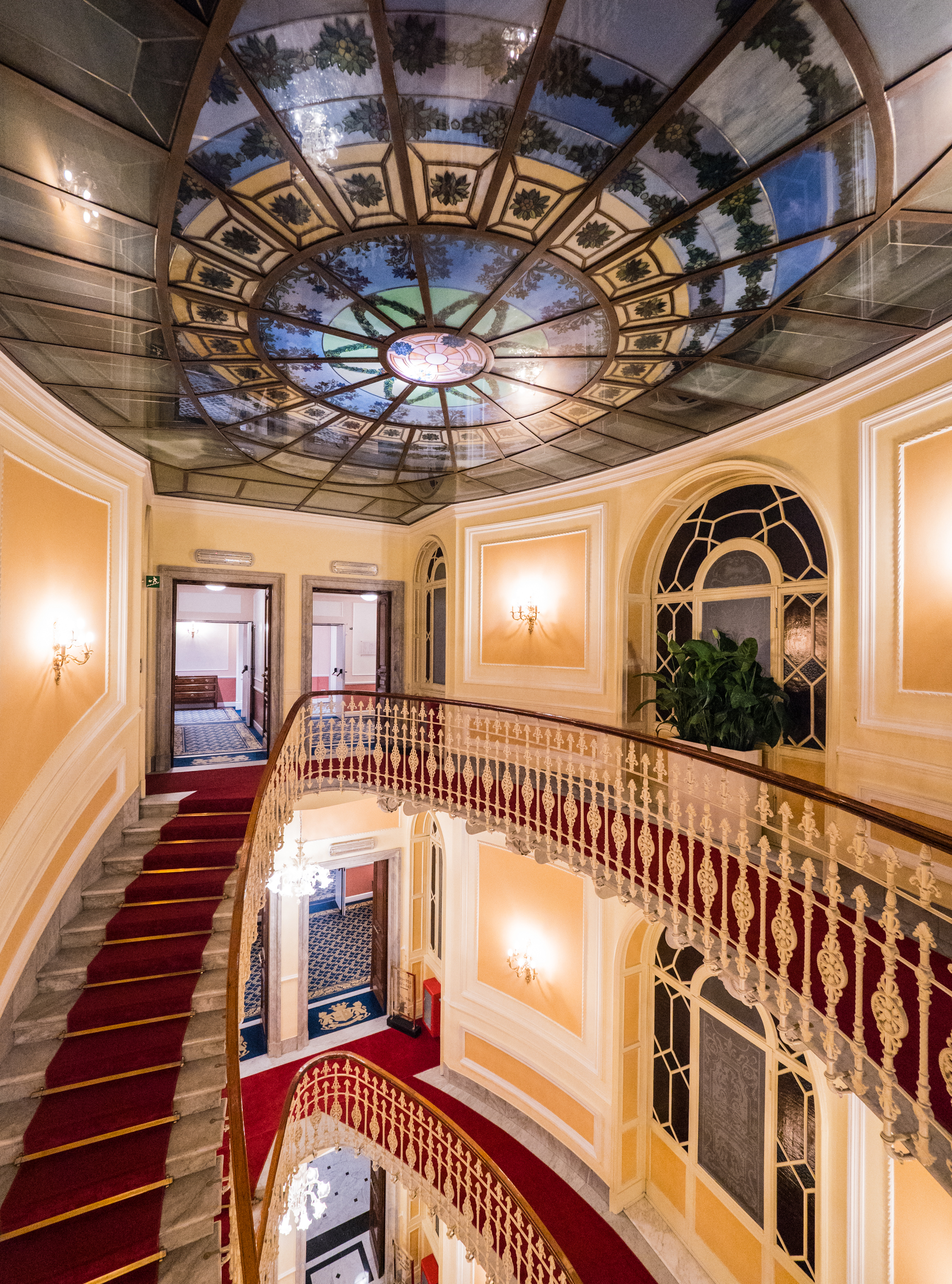
Hotel Bristol
Our hotel in Genoa occupies a building from 1905.
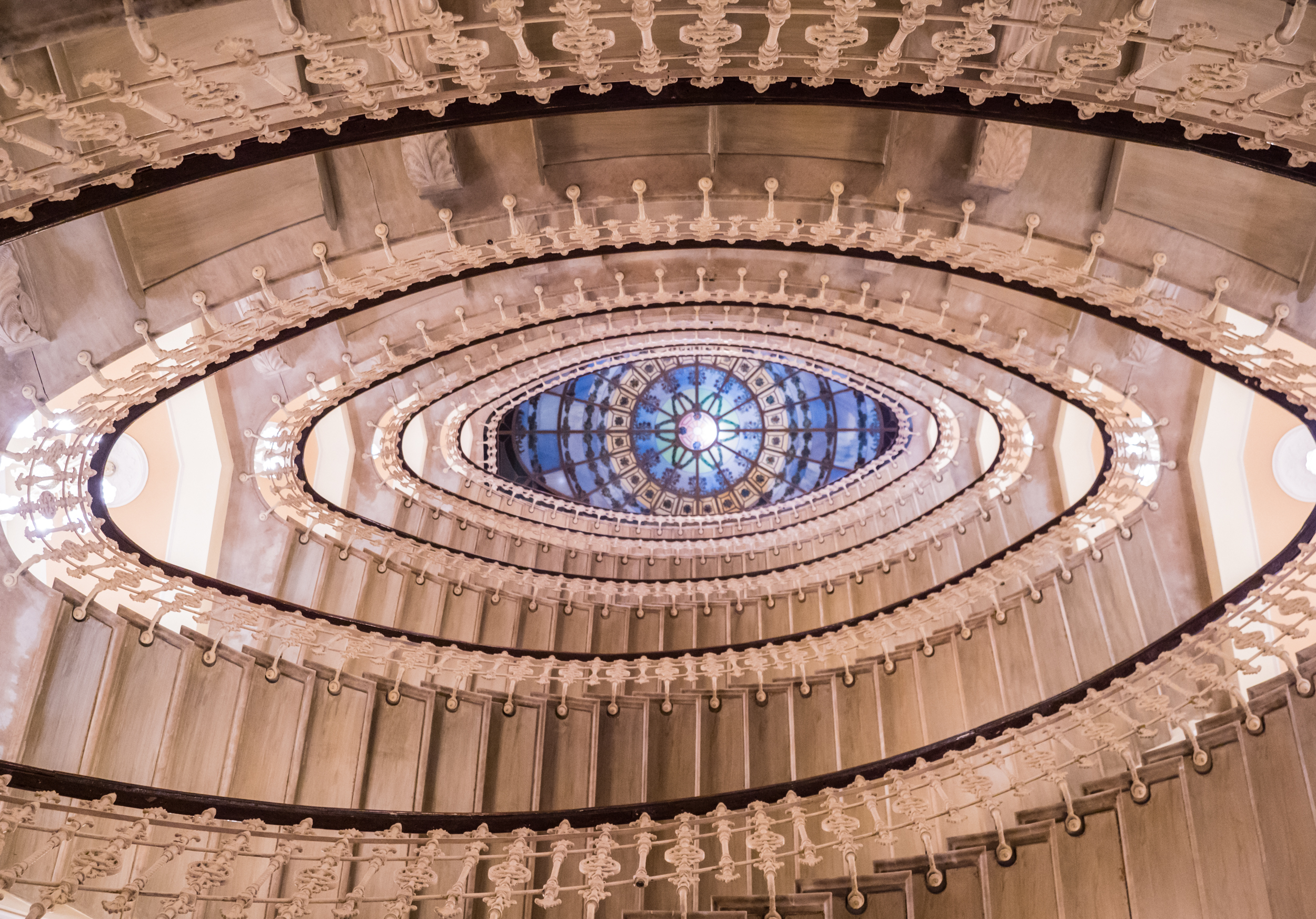
Staircase
It's main feature is the grand central staircase, looking upwards from the lobby in this photo.
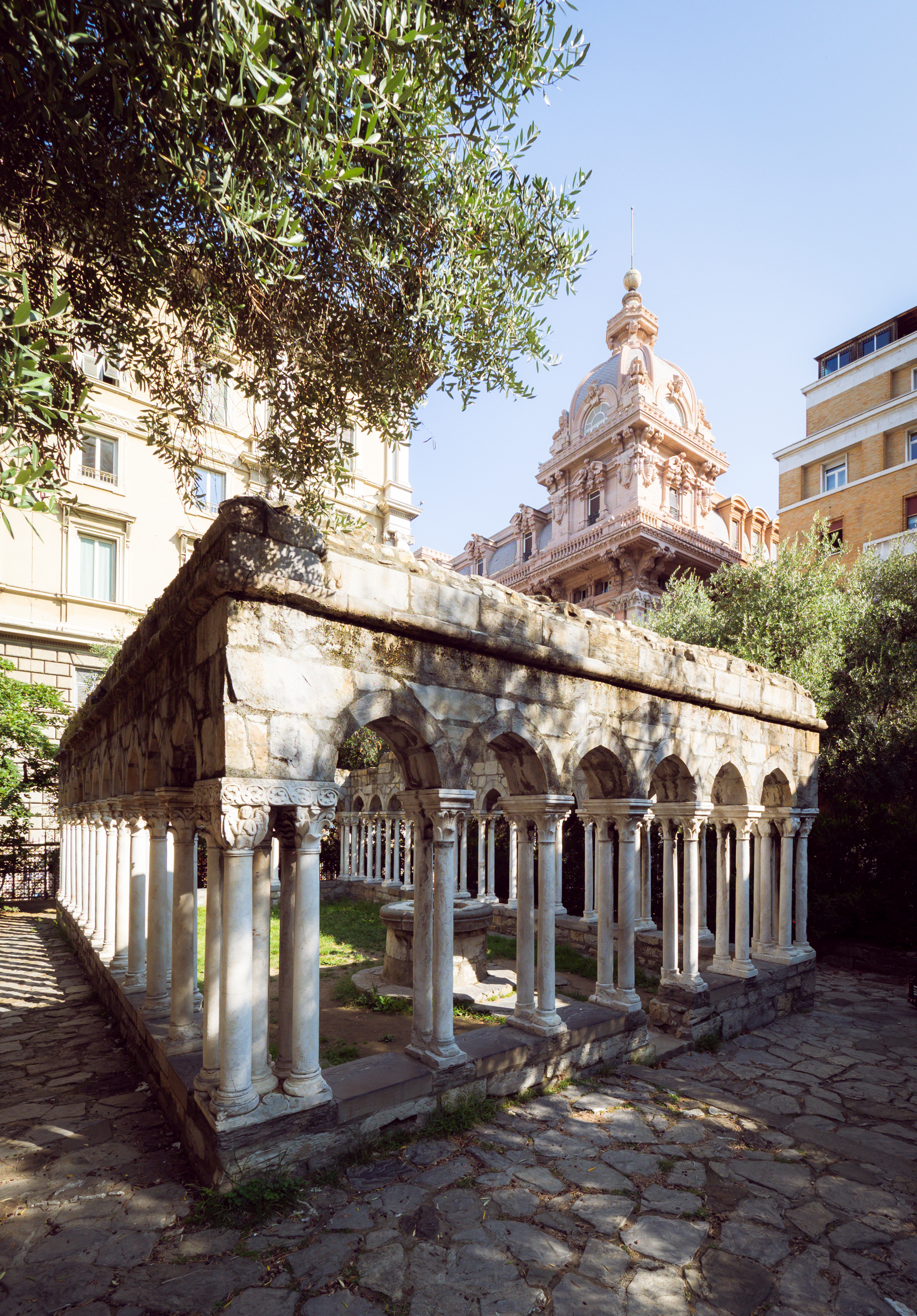
St Andrew Monastery
St. Andrew's Cloister are the remains of an ancient monastery from the 12th century in the middle of the city right next to the childhood home of Christopher Columbus.
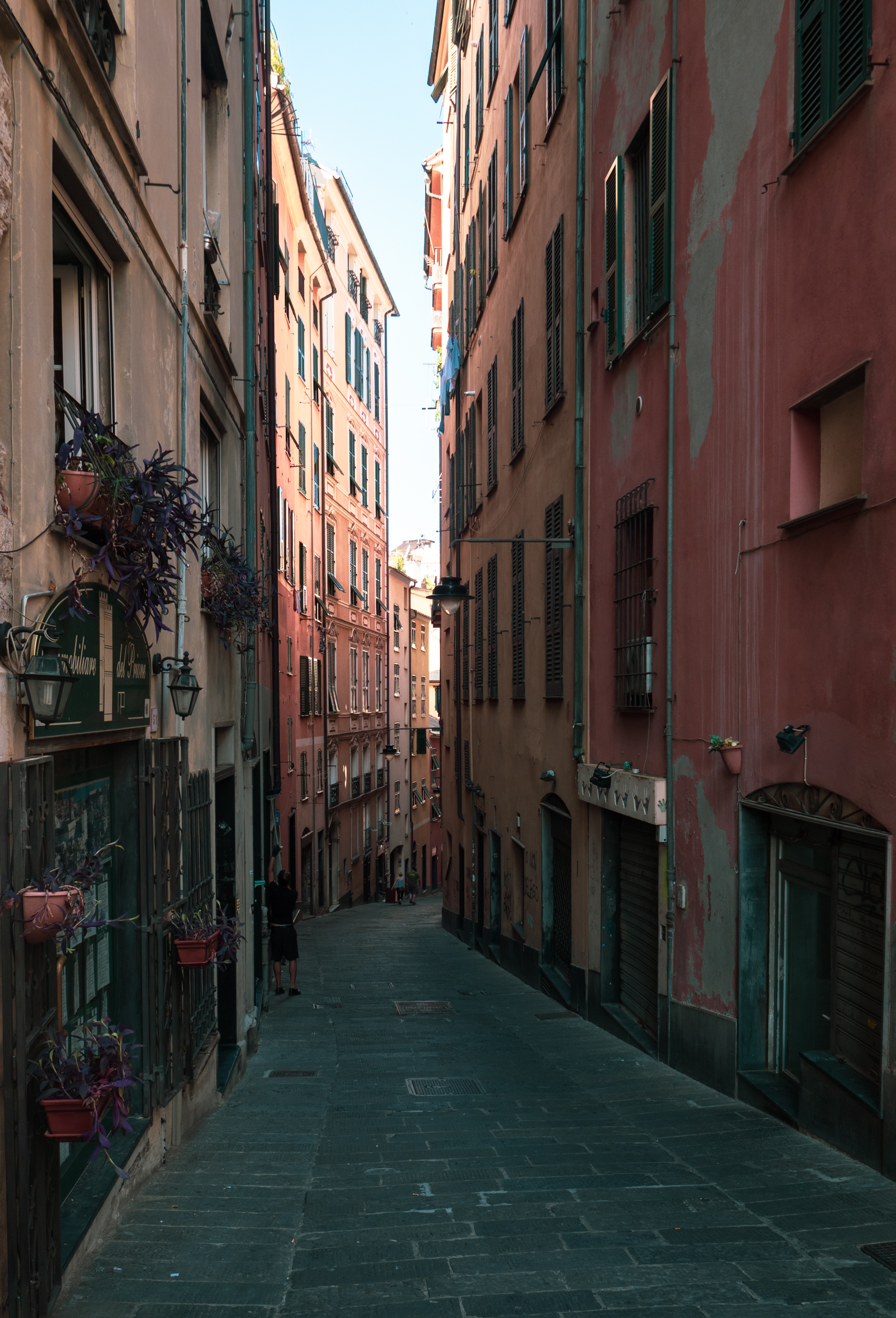
Old Town
While Genoa doesn't enjoy the same reputation as Milan or Rome, it does have beautiful spots in the town centre.
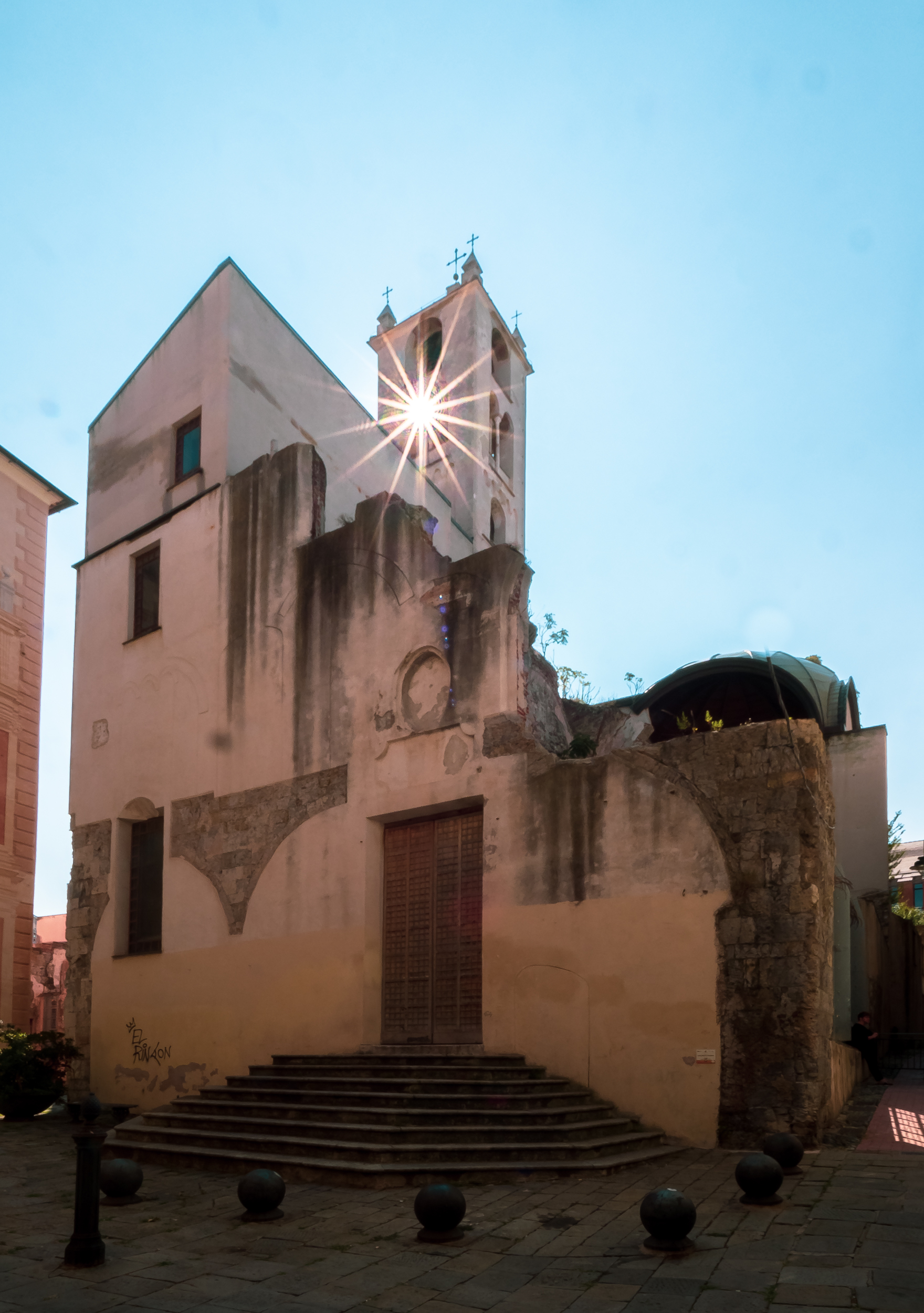
Church of Santa Maria in Passione
Destroyed during the second world war, some areas of the ruins are now closed off, while other parts of the complex have been re-built and are in use by various organisations today.

Santa Maria di Castello
In close proximity to the Santa Maria in Passione is this church, definitely in a better condition and full of frescos from the 16th and 19th century.
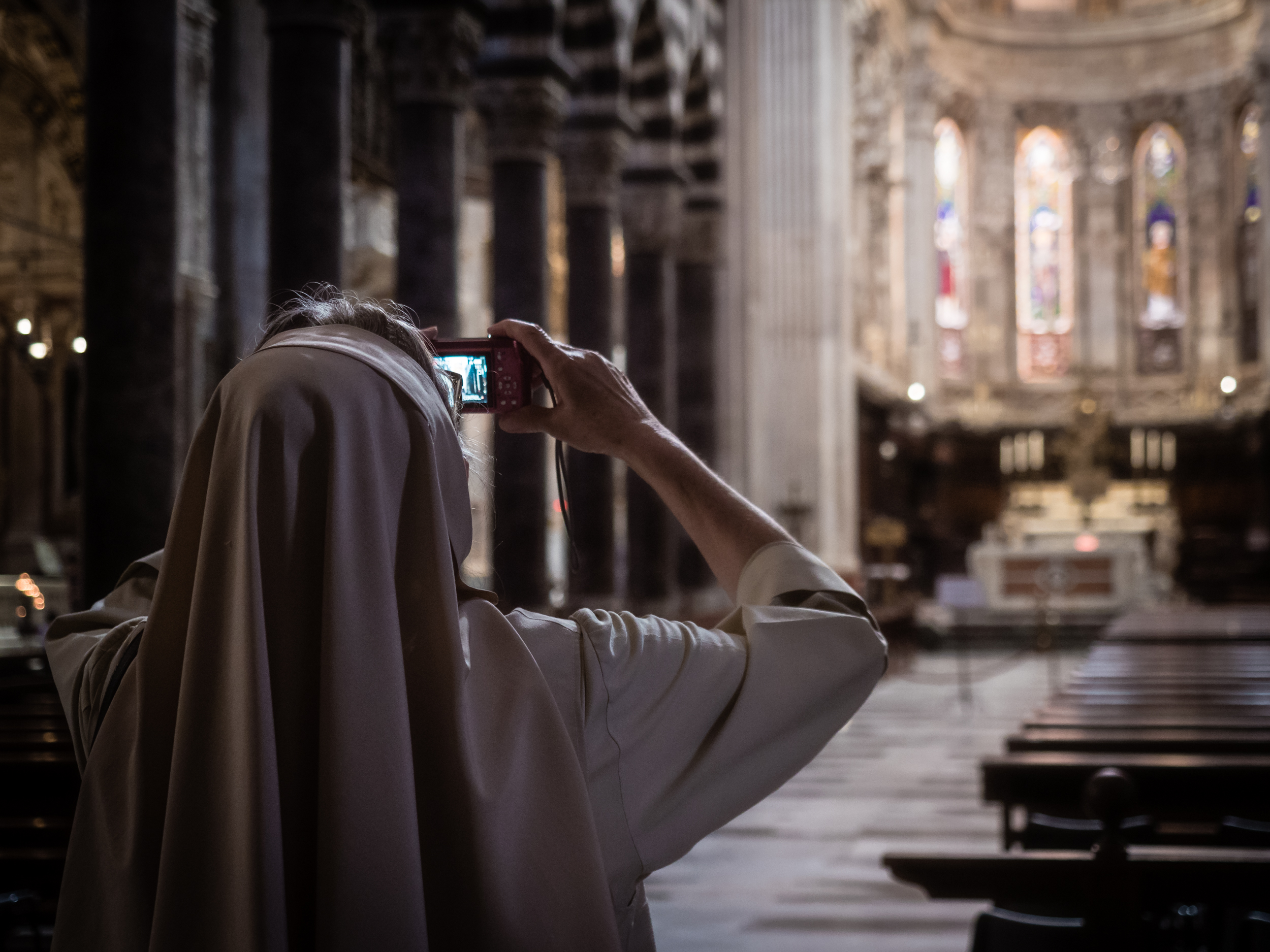
Popular
The church is probably the most famous in Genoa, located on the Castello hill of the city and flanked by the large Tower of the Embriaci.
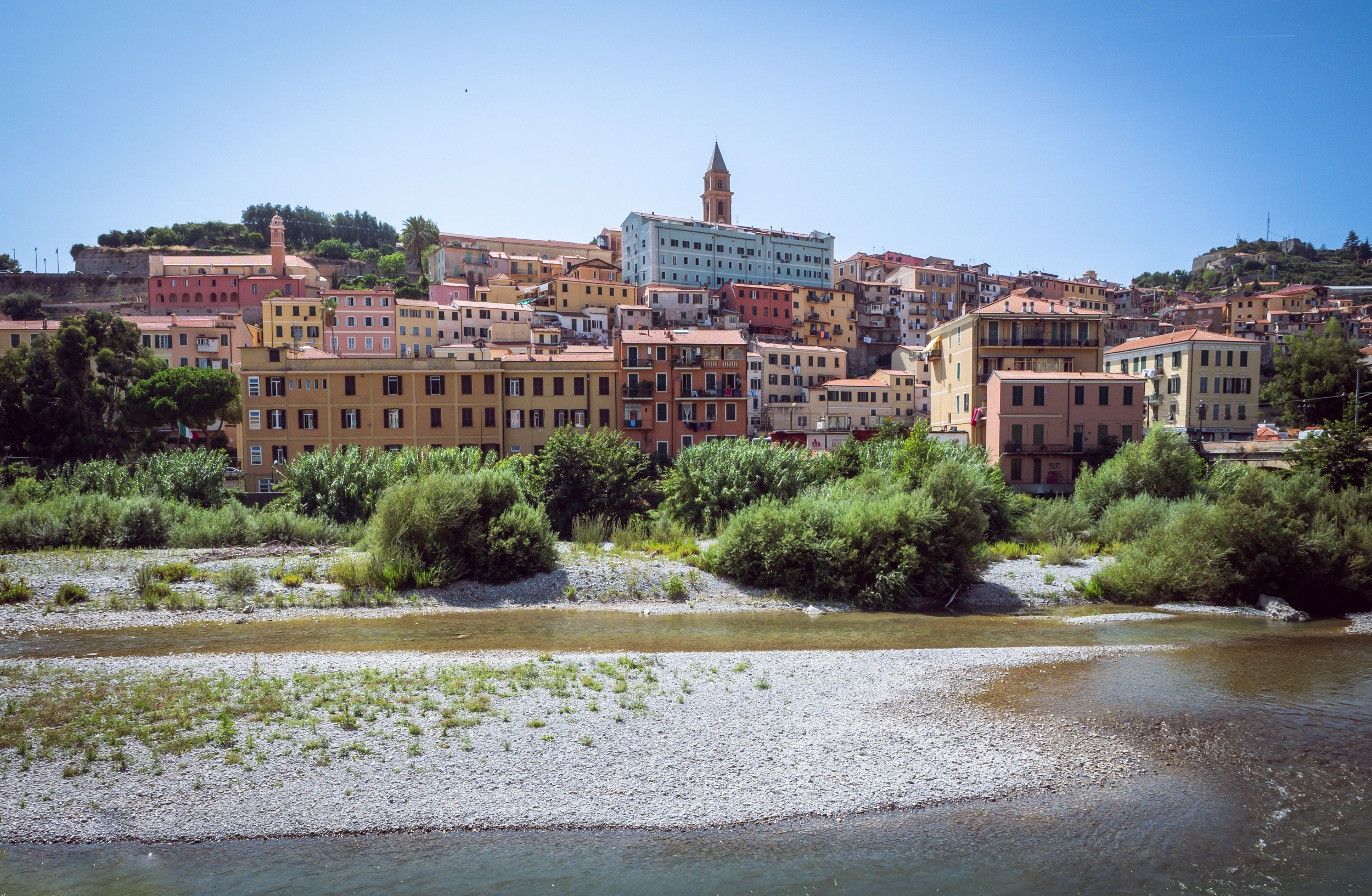
Ventimiglia
Our next stop on the way to Monaco was Ventimiglia, on the border to France.
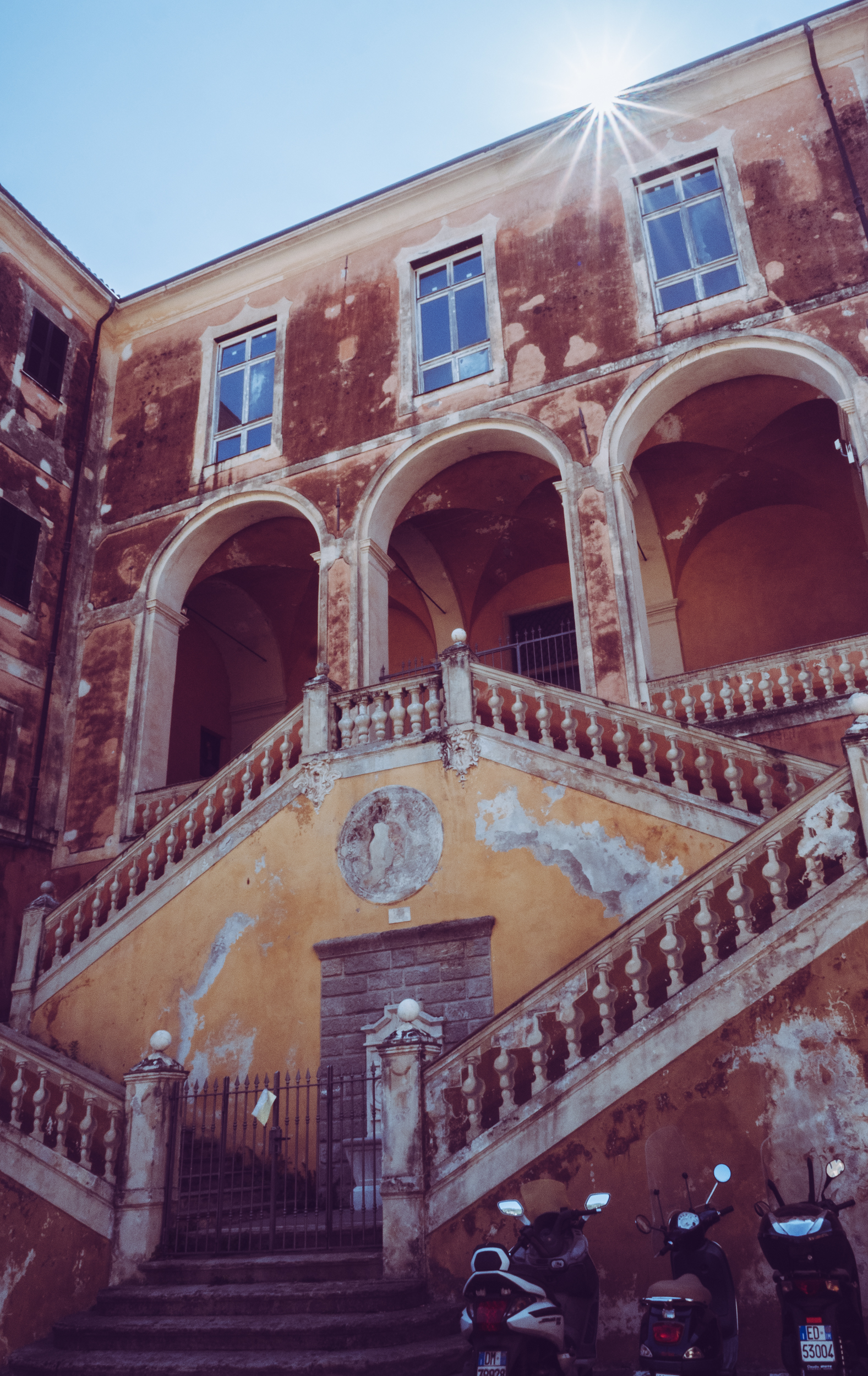
Old City Centre
One of the buildings in the ancient medieval city centre, perched on a hill overlooking the new town

Street Scenes
The typical Italian streets - Ventimiglia's old city is no different in this respect.

Cat Convent
Got to have a few in each album.

View
A few over the Monaco and Monte Carlo districts of the Principality of Monaco, seen from the Palace du Palais square.
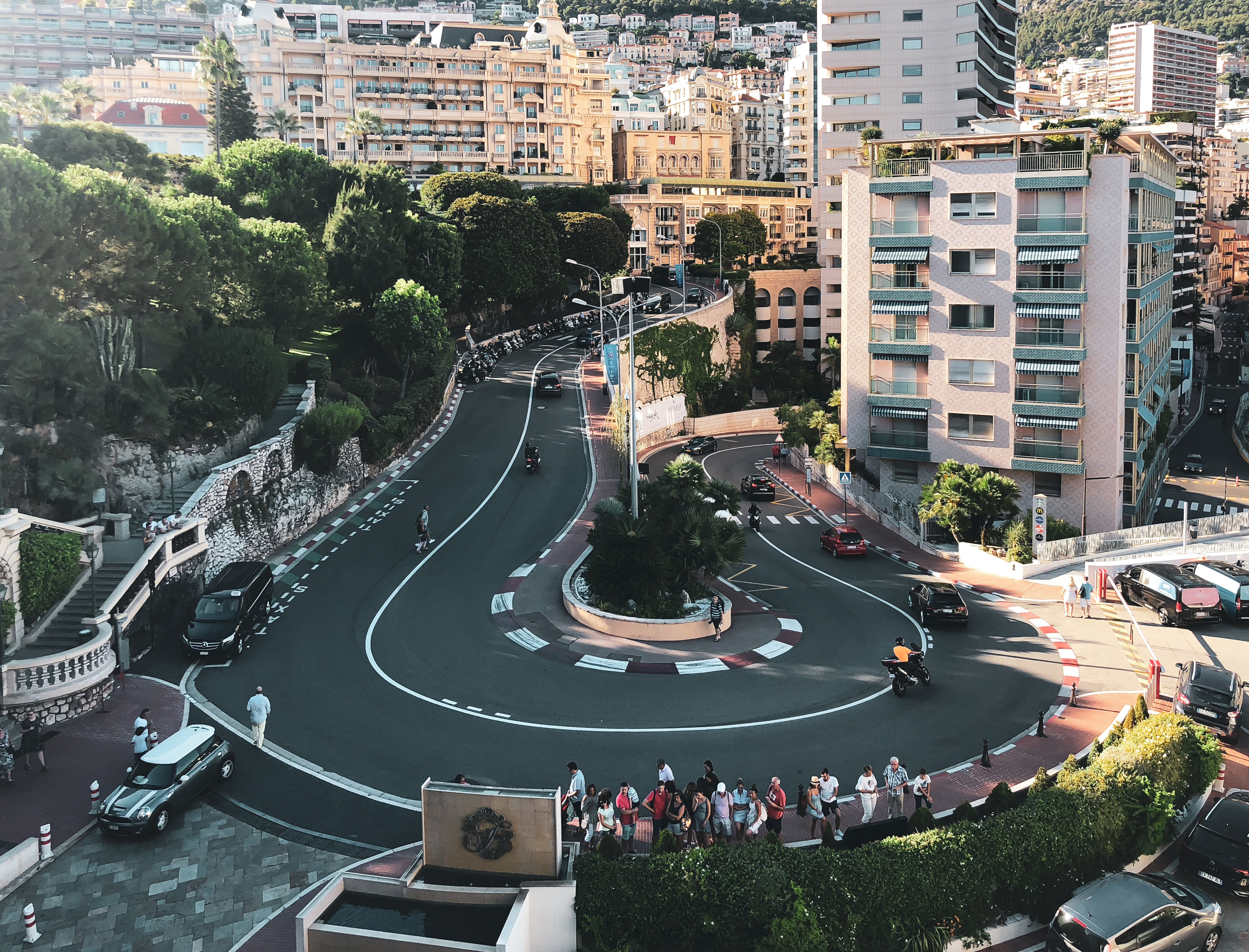
Hairpin
The infamous Formula 1 Hairpin curve just in front of the Fairmont Hotel.
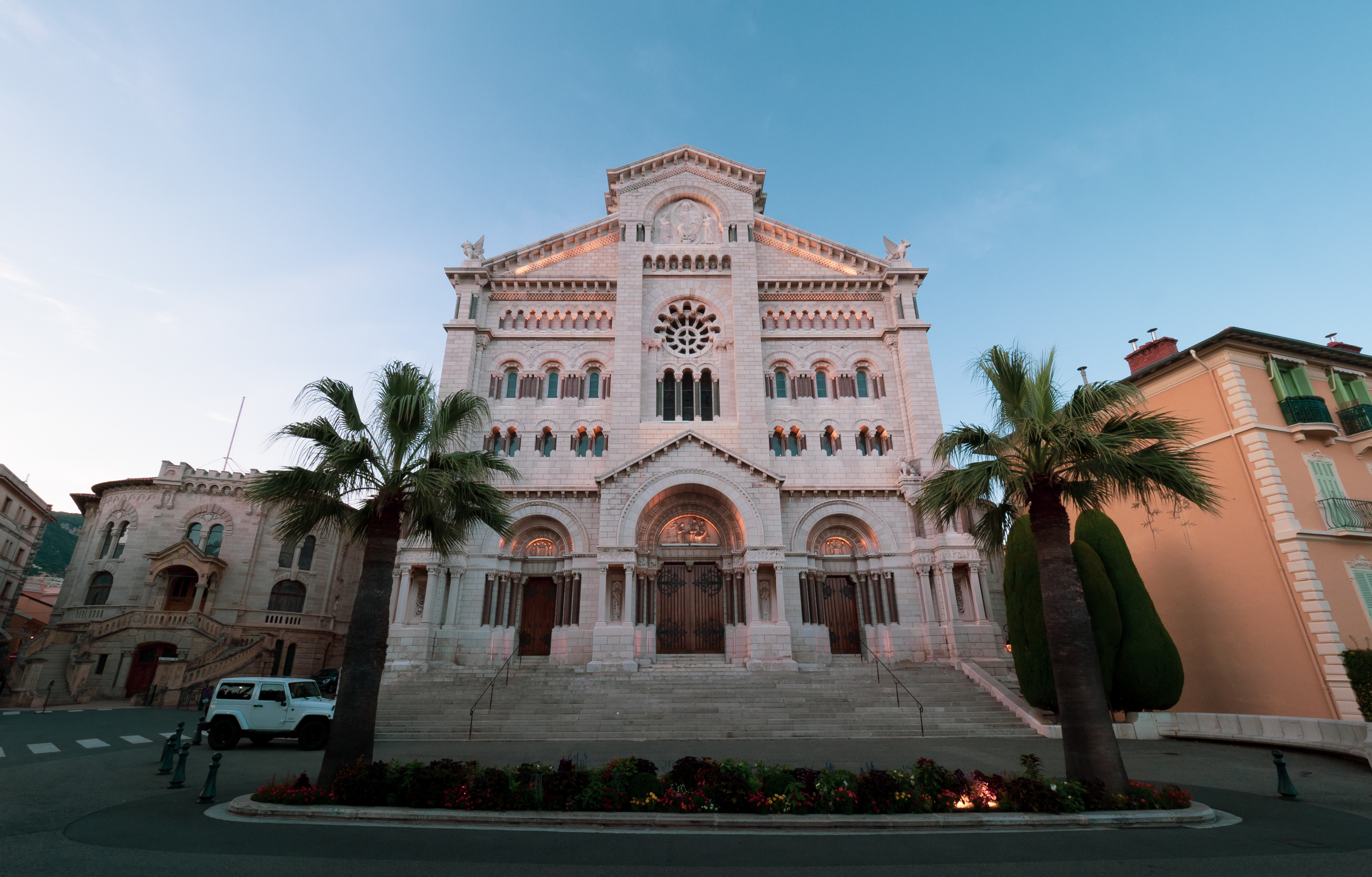
Saint Nicholas Cathedral
The romanesque Catholic cathedral dedicated to Saint Nicholas is the largest in Monaco. Unfortunately it was already closed when we got there.
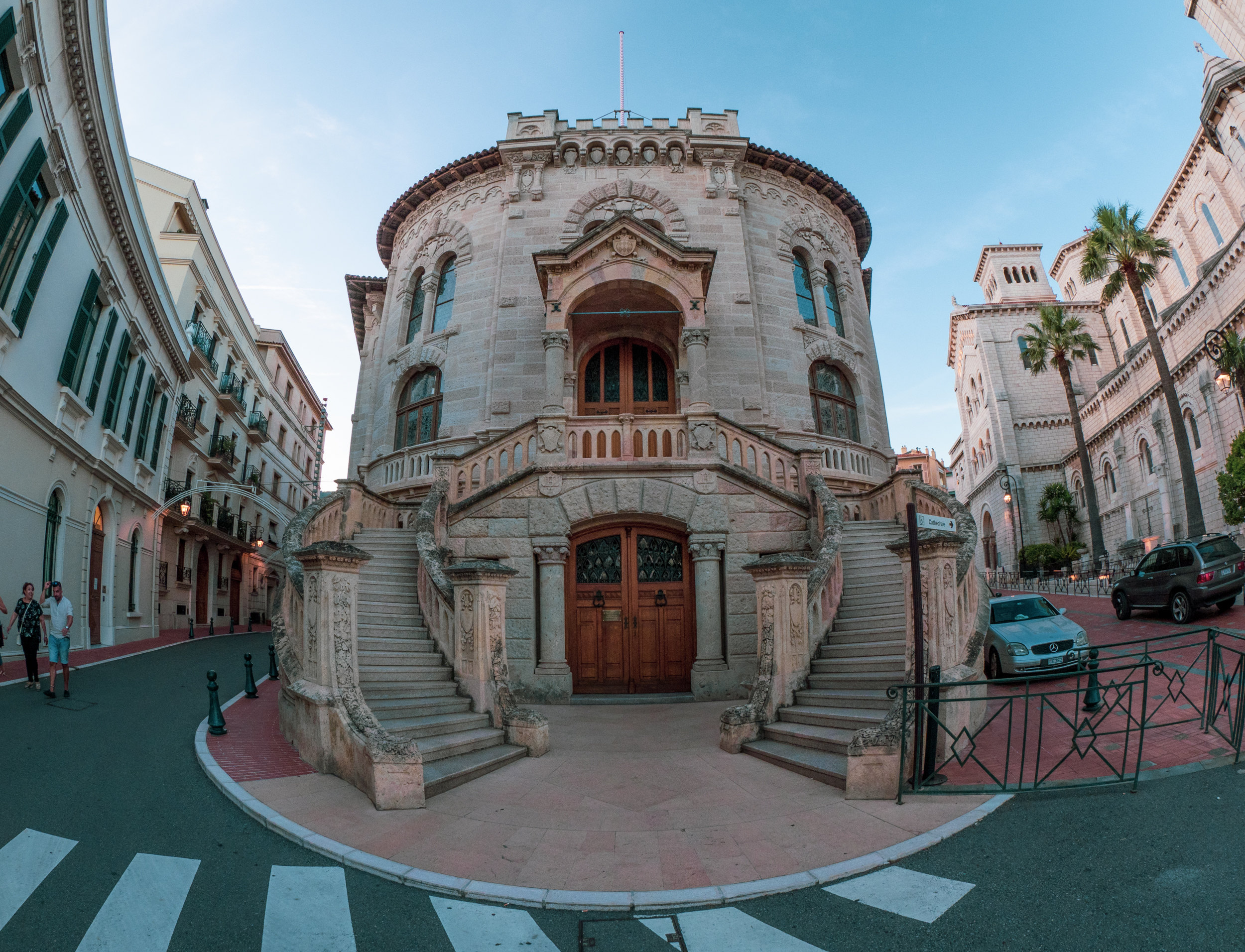
Palace of Justice
A fisheye shot of the building housing the Monaco Supreme Court.
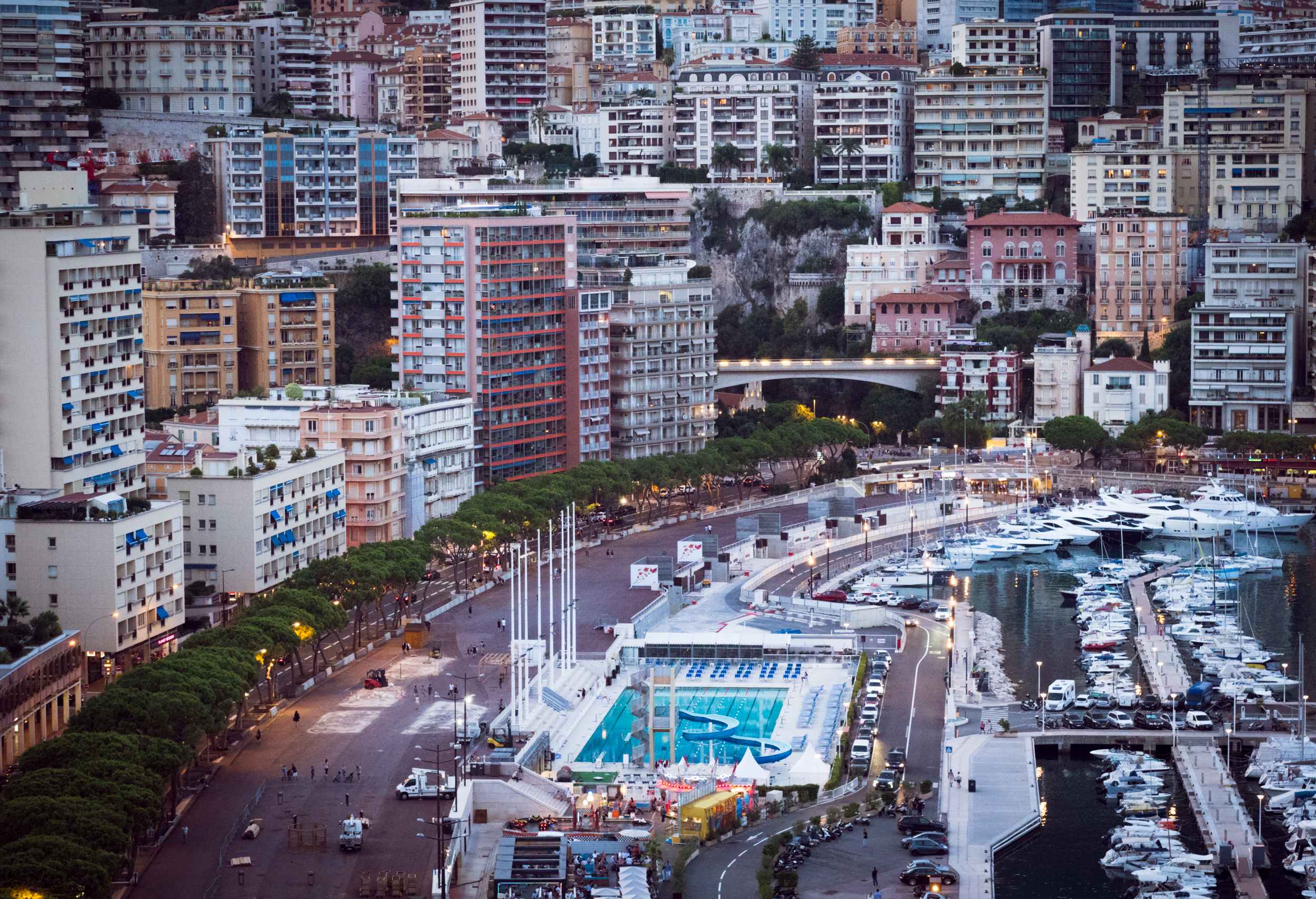
Swimming Pool
The construction of the Rainier III Nautical Stadium and its swimming pool forced the Formula 1 track to be adapted in the 1970s.

Rich
In 2014, it was noted about 30% of Monaco's population was made up of millionaires.
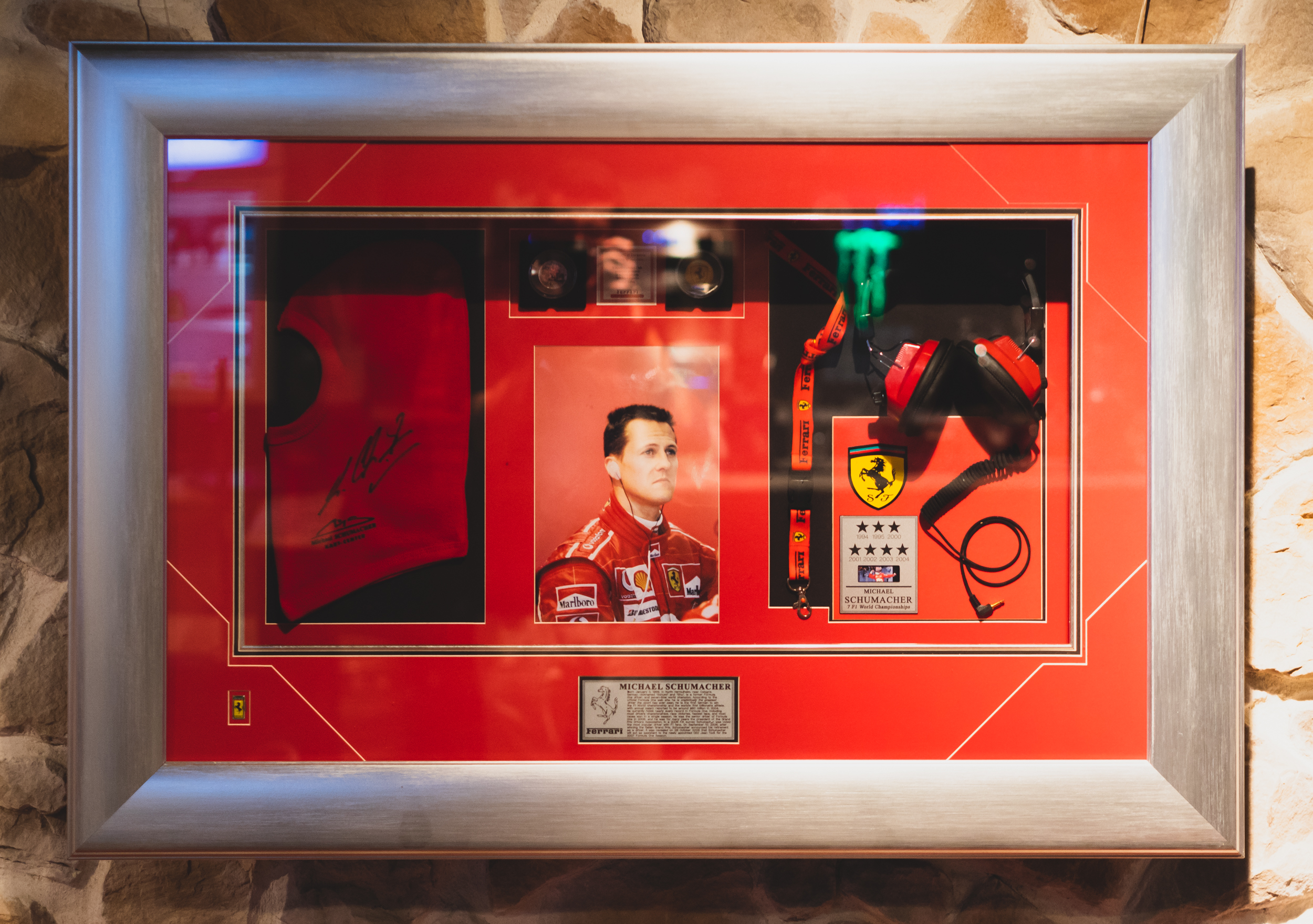
A City Circuit
Michael Schumacher once said before the 2012 Grand Prix that the additional risk is "justifiable once a year", as the circuit is not quite up to modern Formula 1 safety standards.
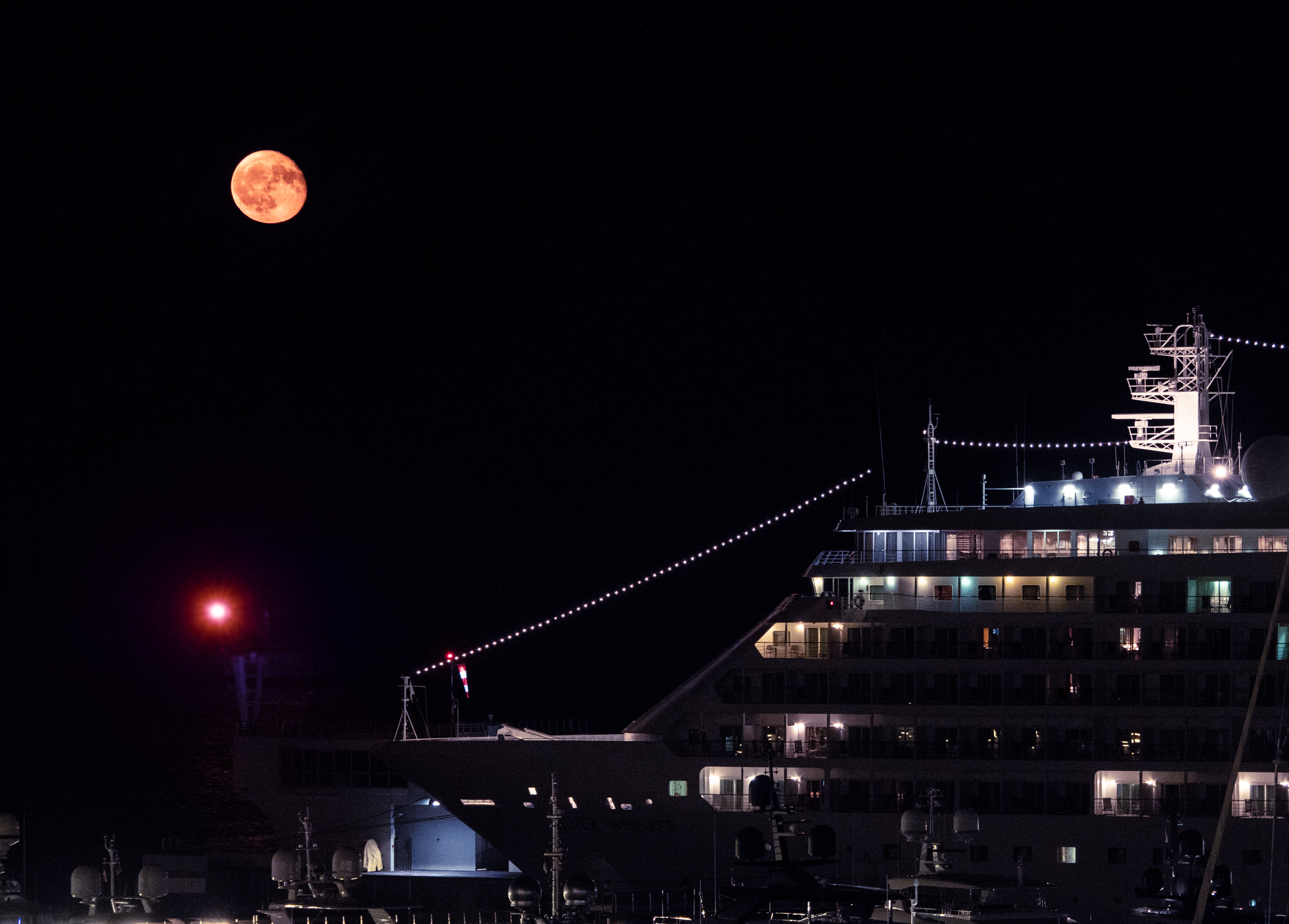
Moonrise
Another moon rise, this time seen from the Monaco harbour, looking over one of the ships anchored at its cruise terminals.
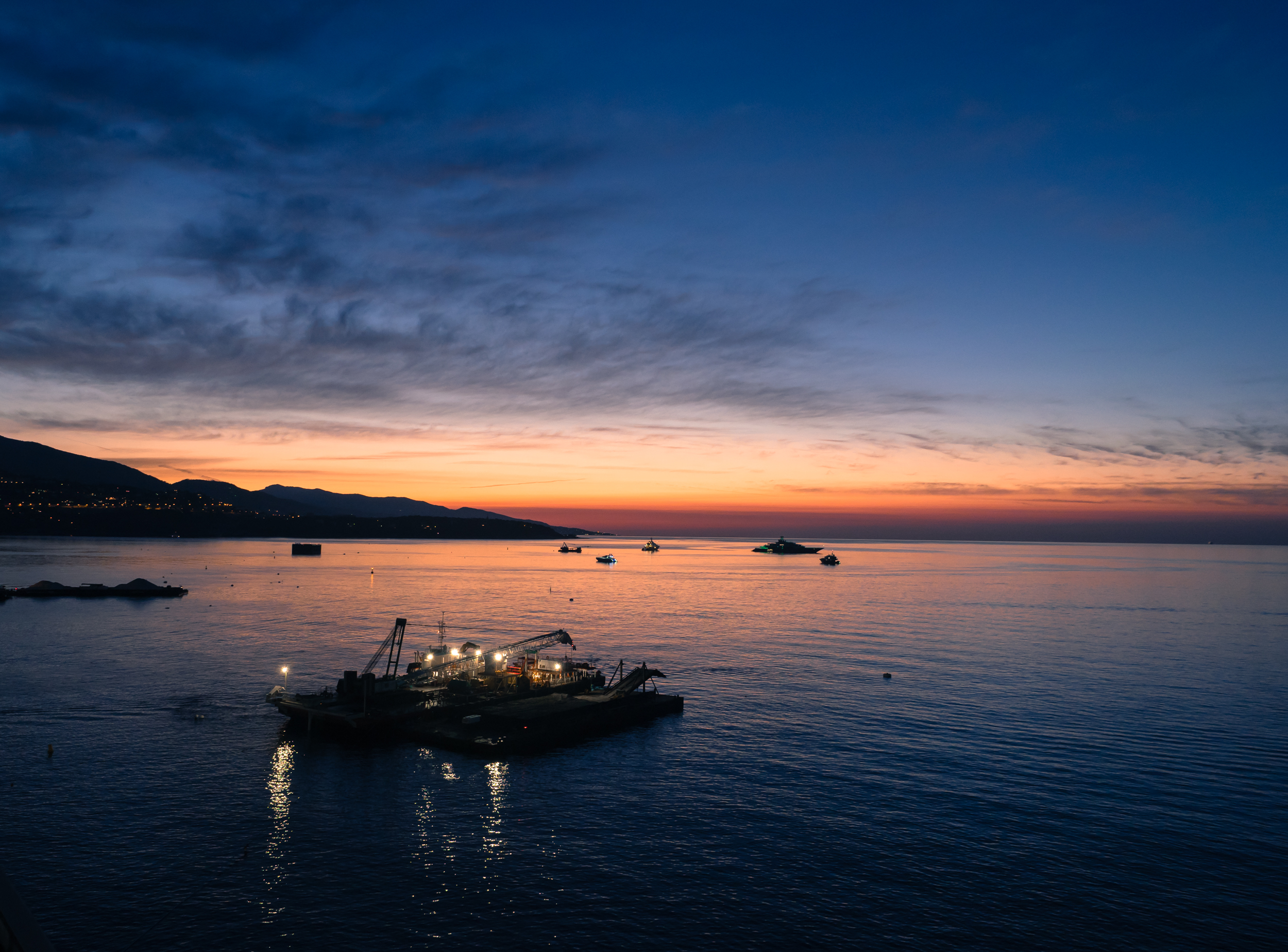
Sunrise
The sunrise seen from the Fairmont hotel, which sits just next to a €2 billion operation to reclaim six hectares of land to counter Monaco's notorious shortage of building space.
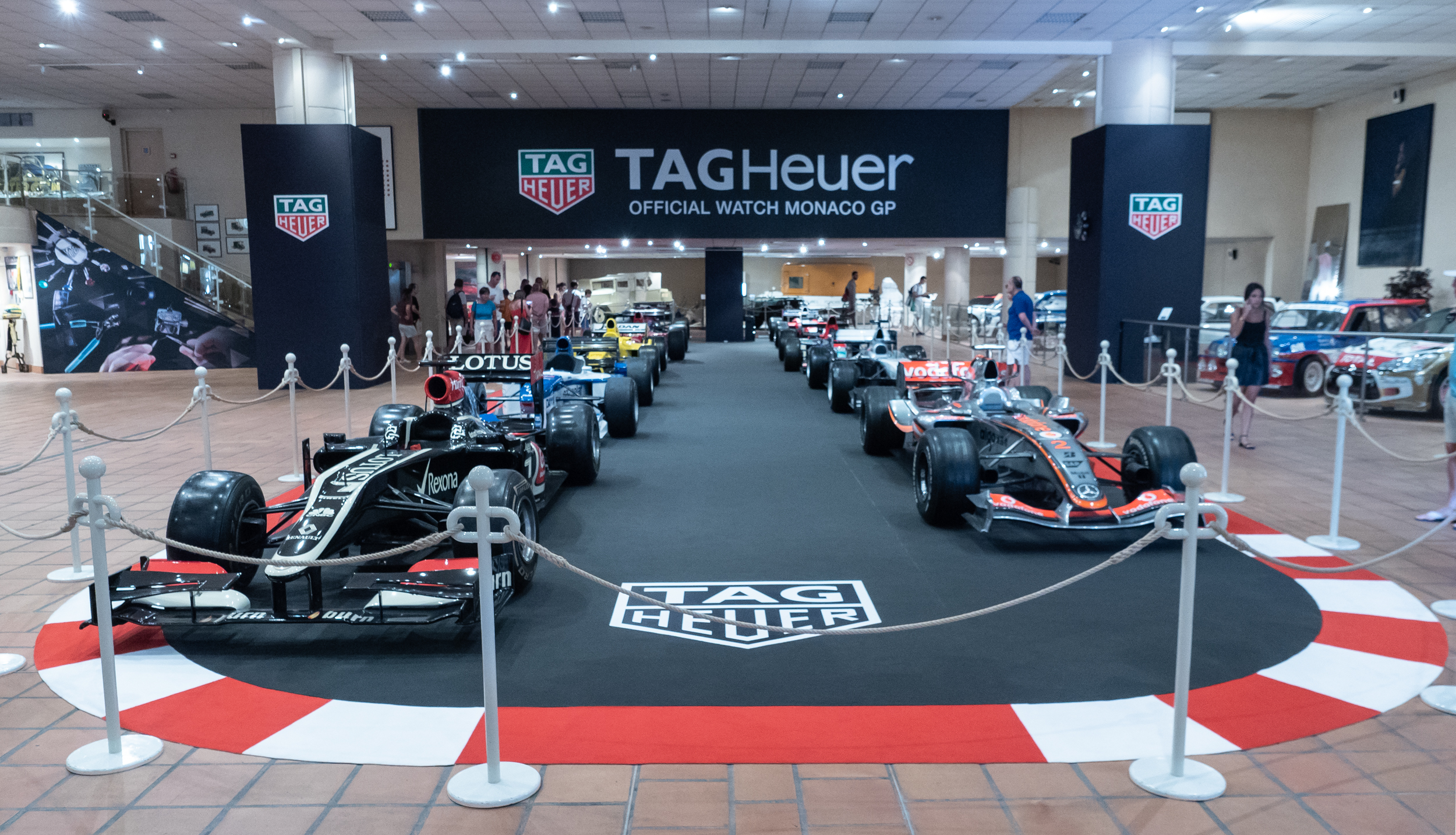
The Cars Collection of H.S.H. the Prince of Monaco
The collection houses several Formula 1 cars from throghout the history of the race.
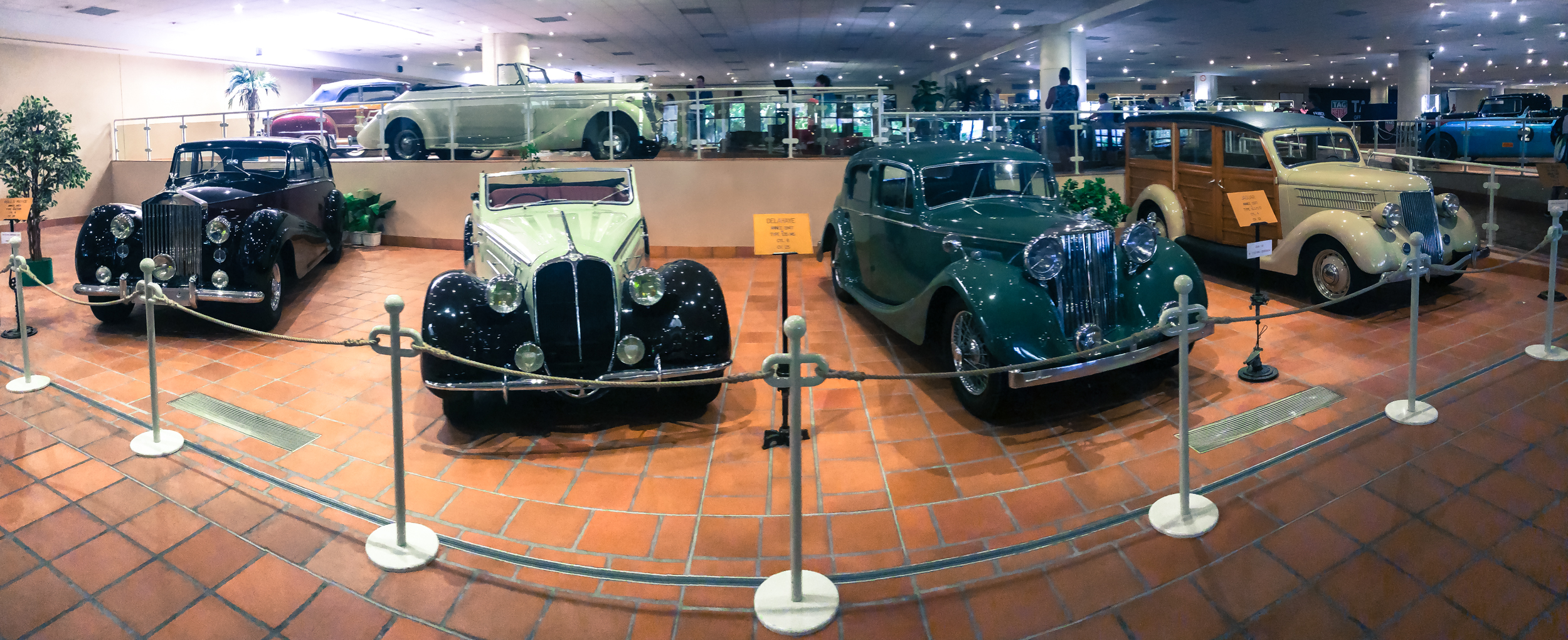
The Cars Collection of H.S.H. the Prince of Monaco
The museum includes the Bugatti Type 35 that won the inaugural Monaco Grand Prix in 1929.
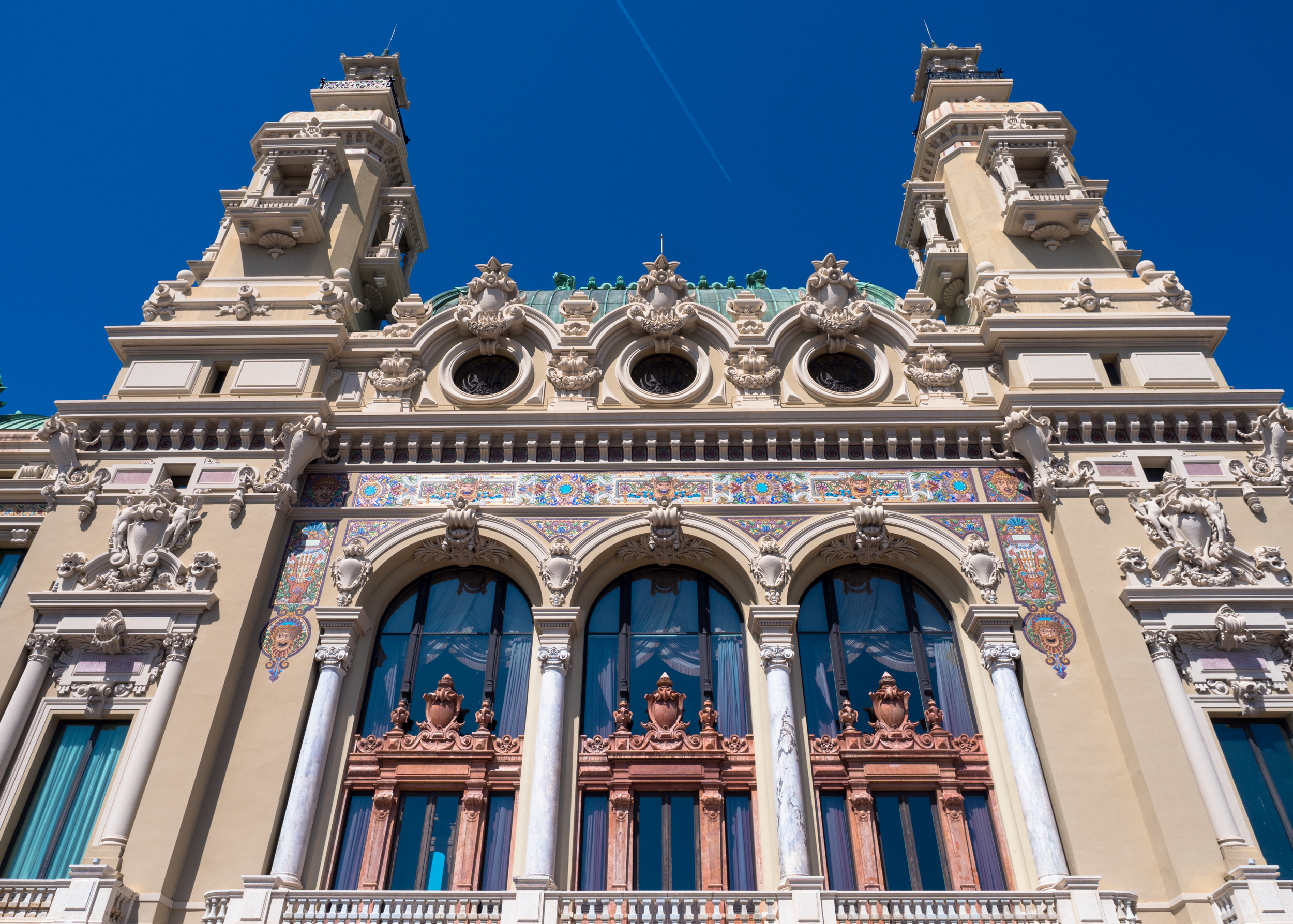
Casino de Monte Carlo
The most famous casino in Monte Carlo, owned largely by the ruling family, opened over 150 years ago.
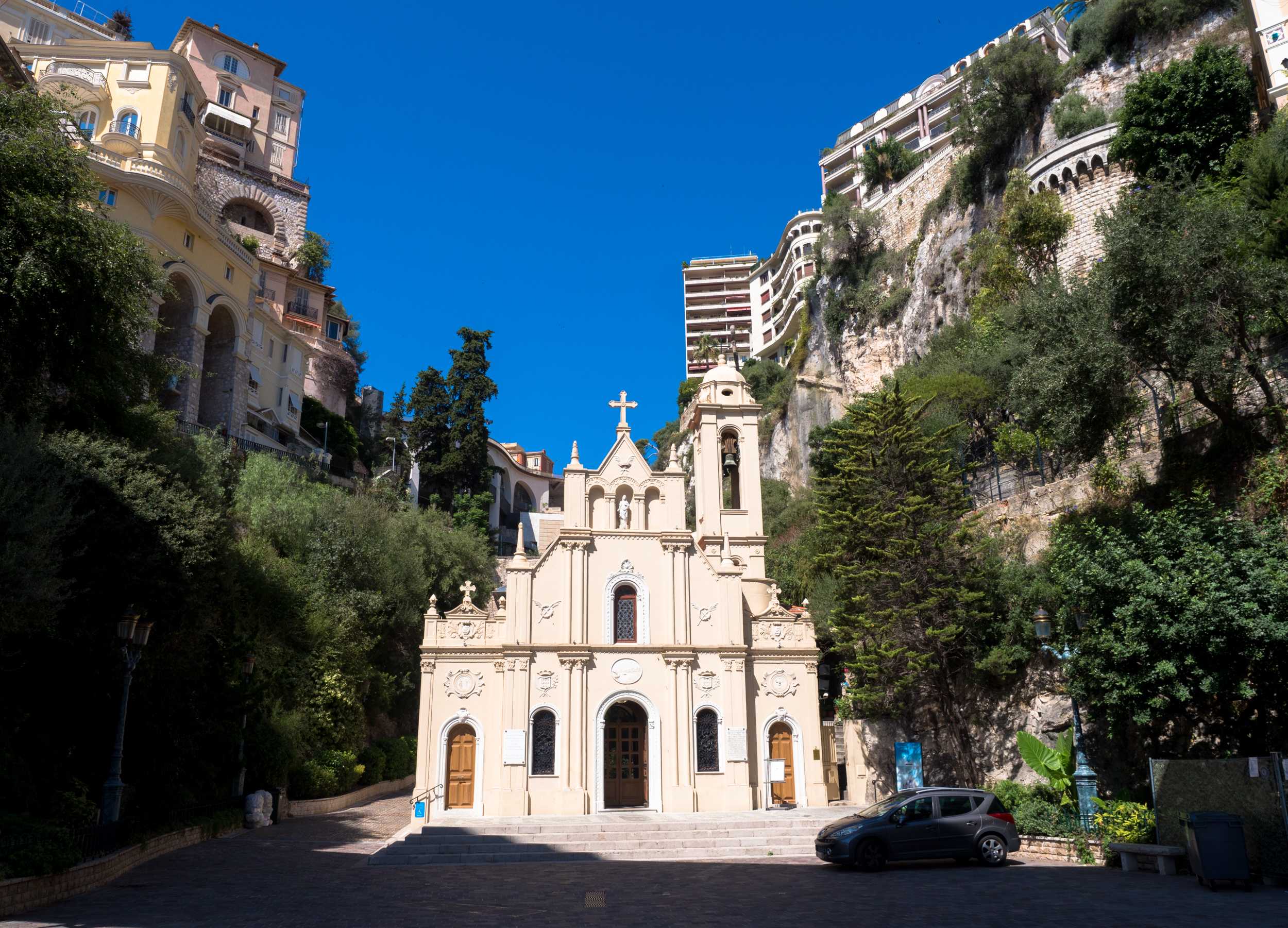
Sainte-Dévote Chapel
The name of the chapel is used to identify the first corner of the Monaco Grand Prix track.
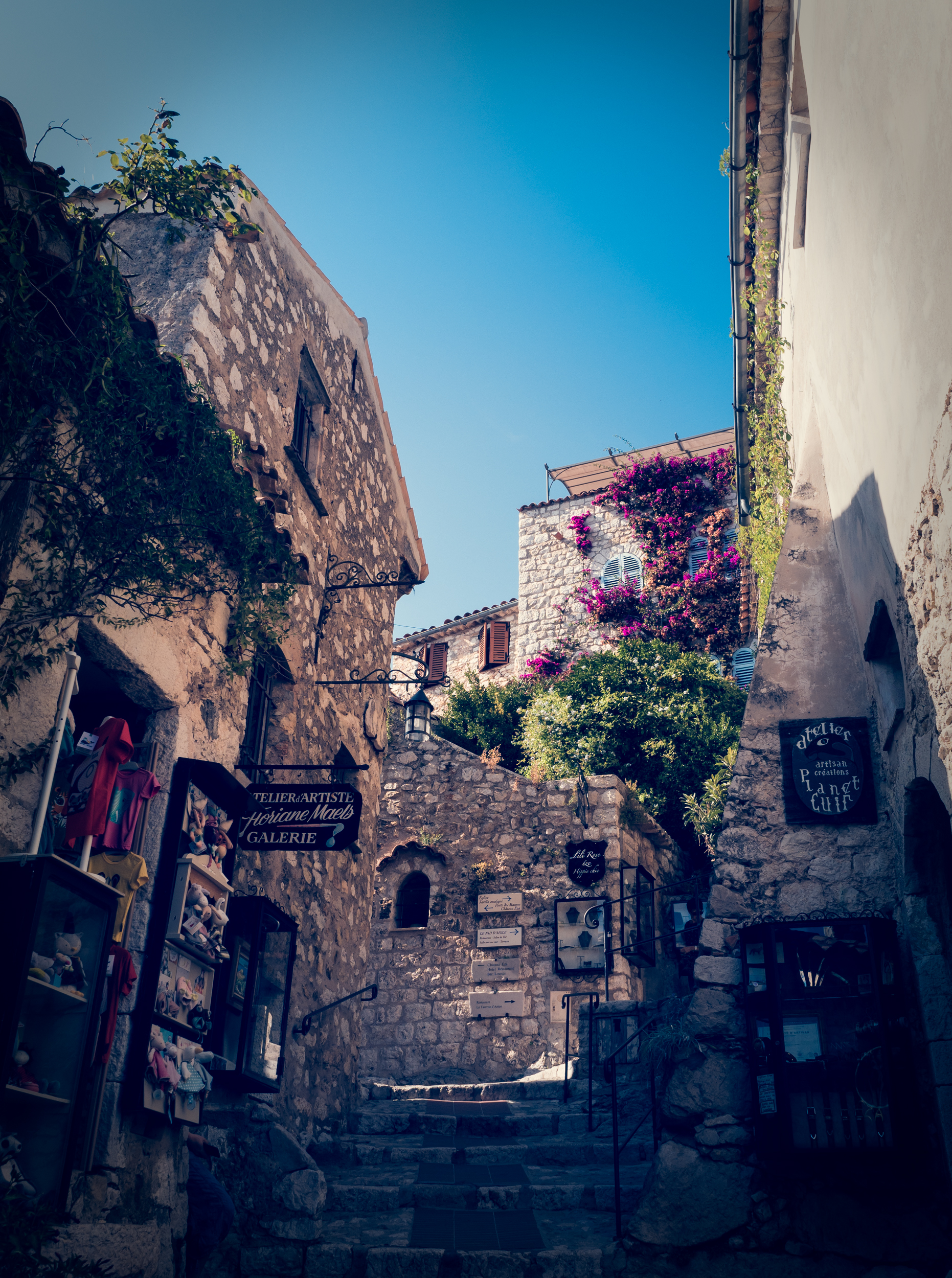
Eze's medieval town
While the location is beautiful and the city sports a beautiful botanical garden, the rest of the village feels very touristy.

View from the Top
Eze is famous for the view of the sea from its hill top. Walt Disney spent a significant amount of time here, and Nietzsche appearantly walked up the hill path daily from his residence on the coast.

Northerly View from Eze
With the coastal road and its bridge over the canyon.
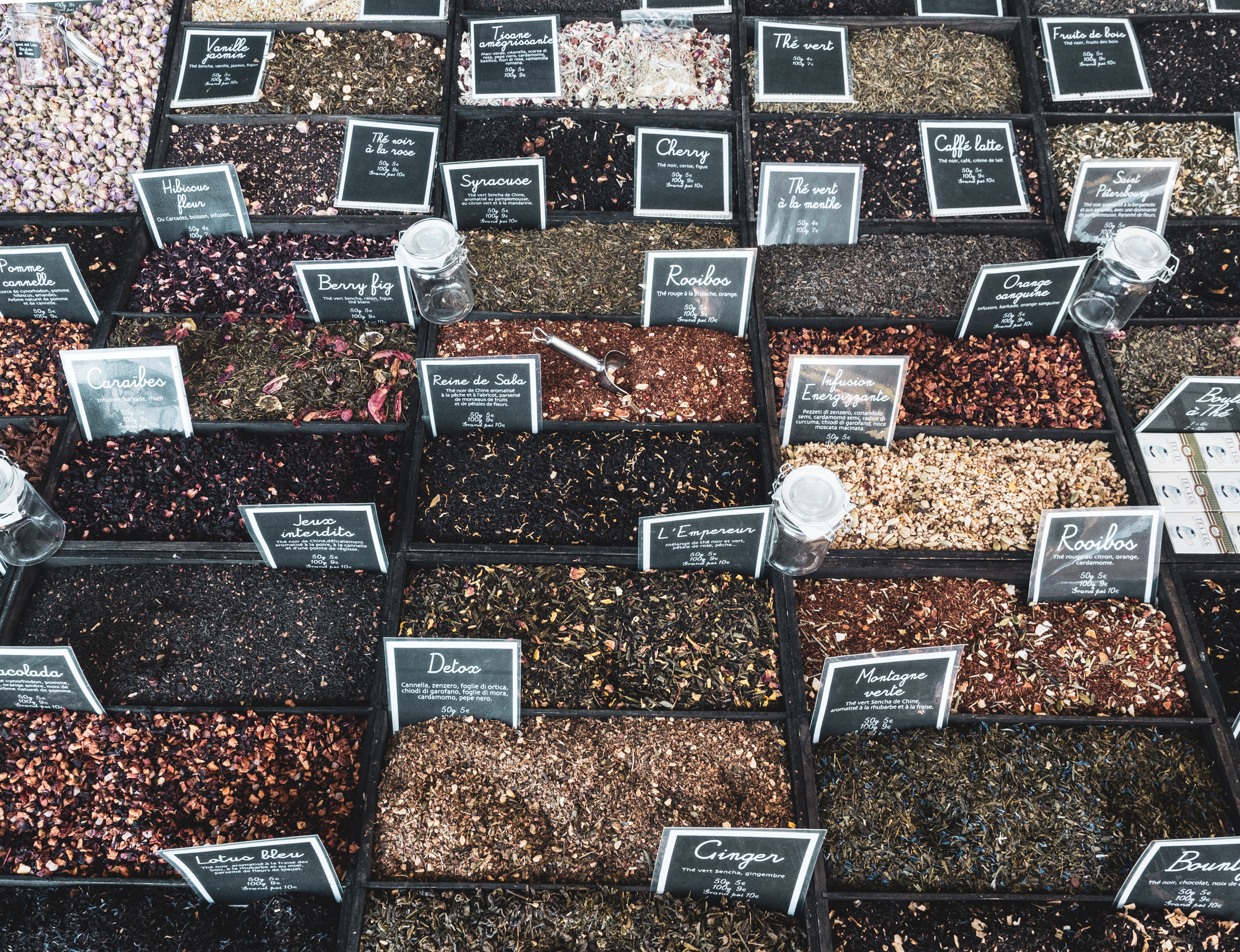
Local Spices
A spice shop in Eze with local spices from the Côte d'Azur.

Le Flore
The real reason for the trip.
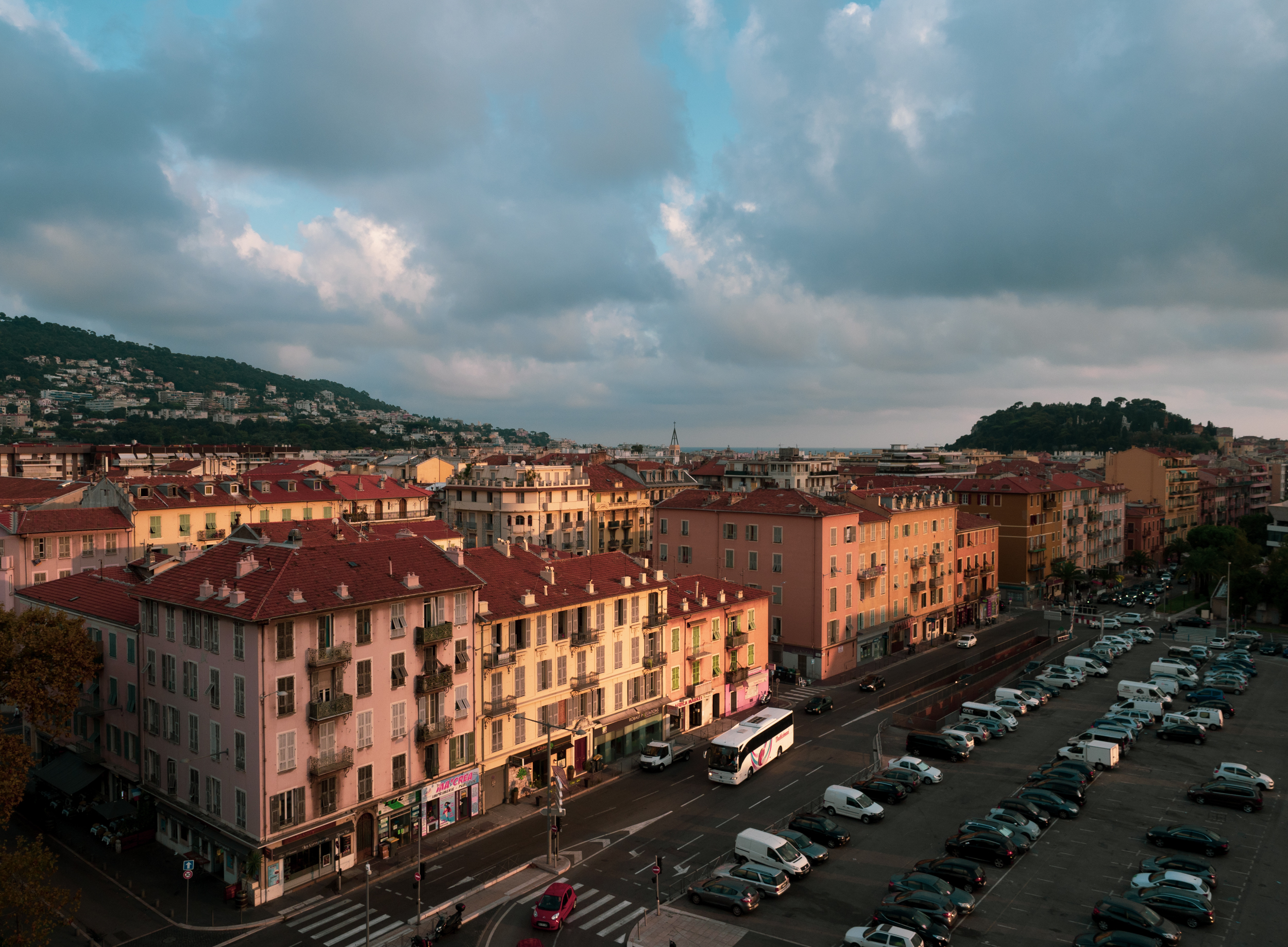
Nice
The view from the terrace of the NH hotel, looking along the Boulevard Risso.

The Square Head Building
A habitable sculpture, is 30 metres high, has 7 floors, and accommodates 40 administrative staff members of the administrative office of Bibliothèque Louis Nucéra.

Modern and Contemporary Art Museum
A view from the Traverse Garibaldi road looking upwards.
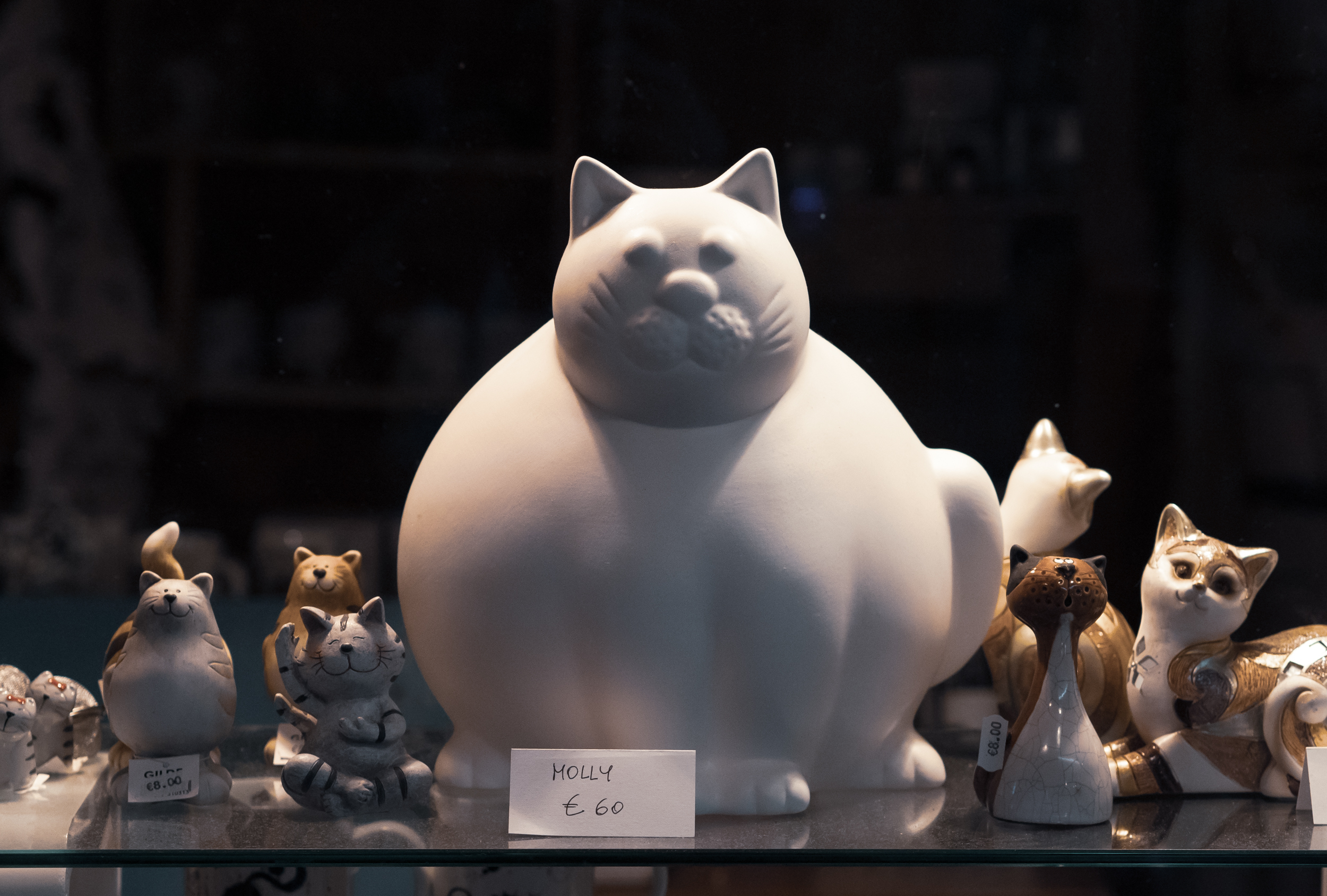
Cat Shop
Ran into this window display in Nice.
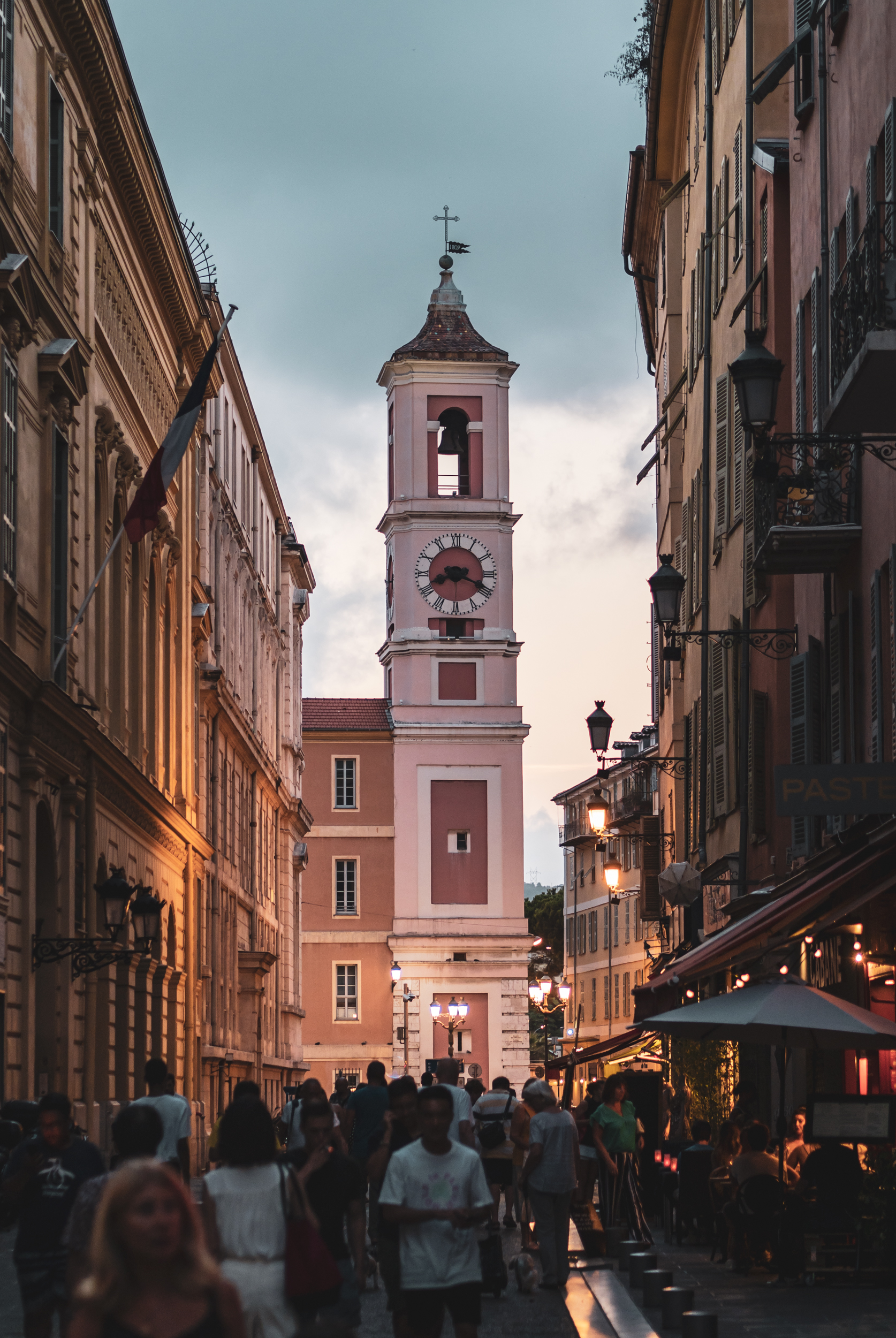
Tour de l'Horloge
Looking down one of the roads leading to the tower opposite the Palace of Justice.

Beachfront
The view towards the east with Nice's beautiful beachfront.

Selfie Time
Should have taken a few more in hindsight!
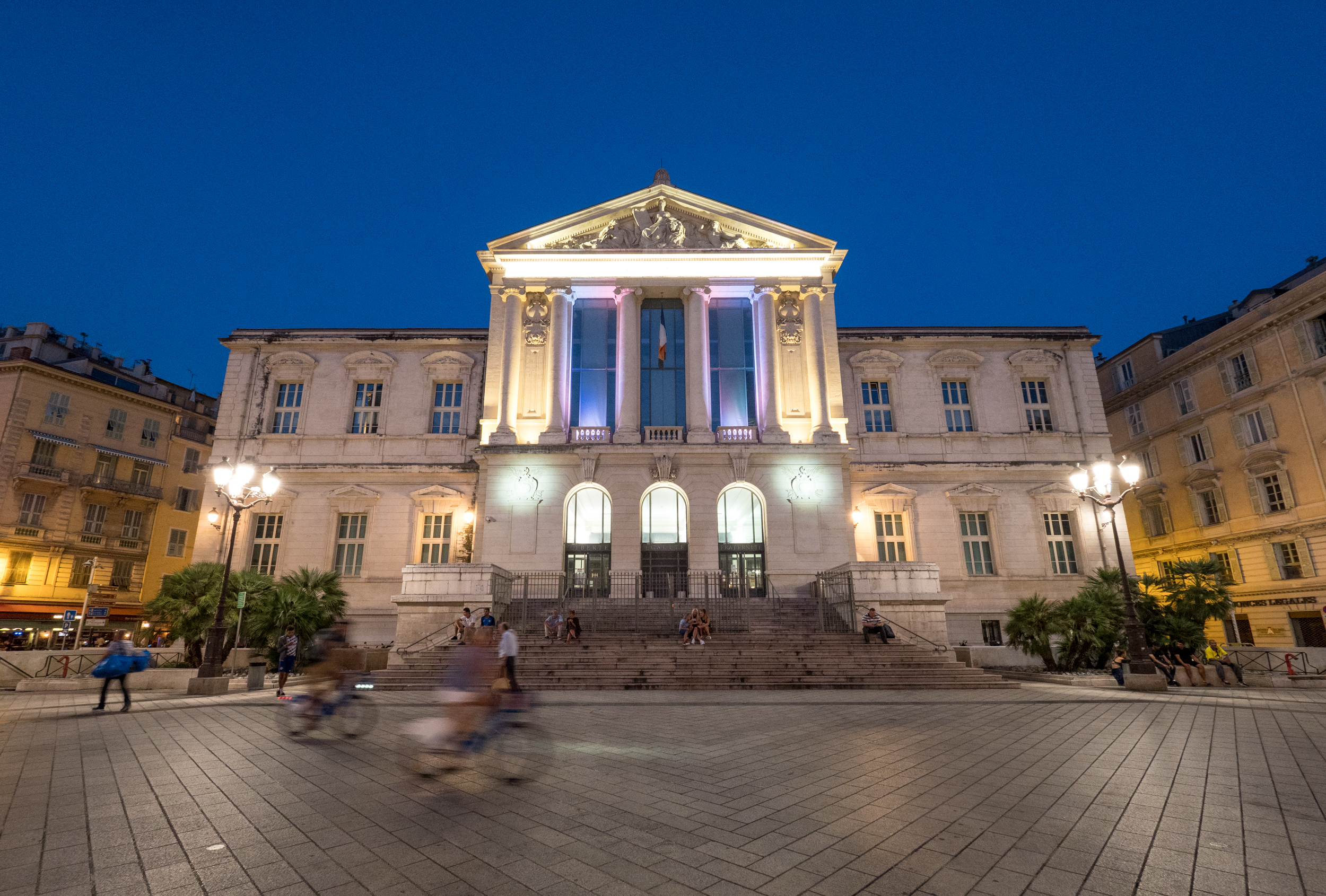
Palace of Justice
The aforementioned courthouse with its neoclassical architecture.
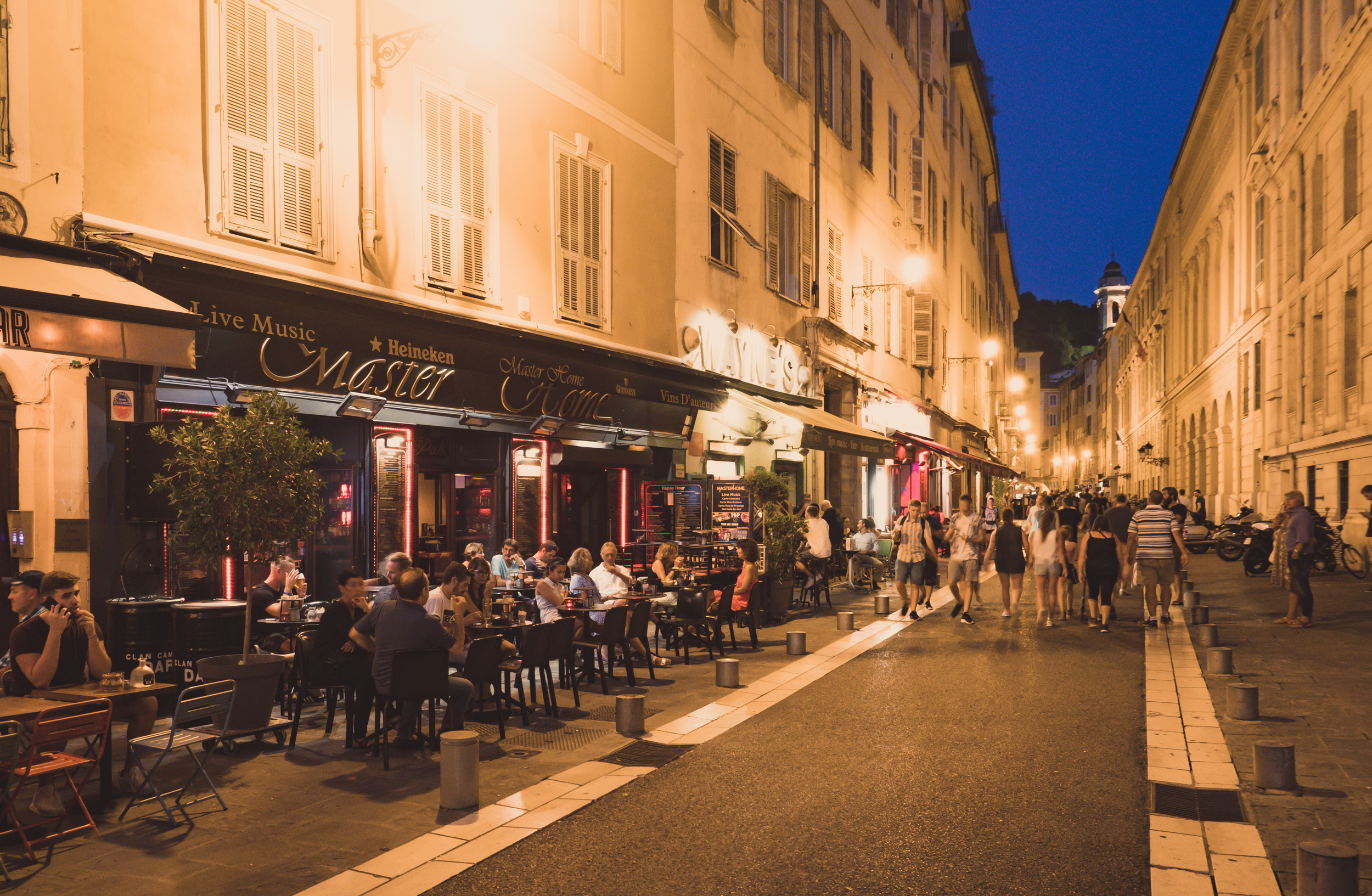
Nice Nightlife
The evening atmosphere in Nice was very lively, with lots of busy restaurants and streetlife without seeming too crowded or touristic.
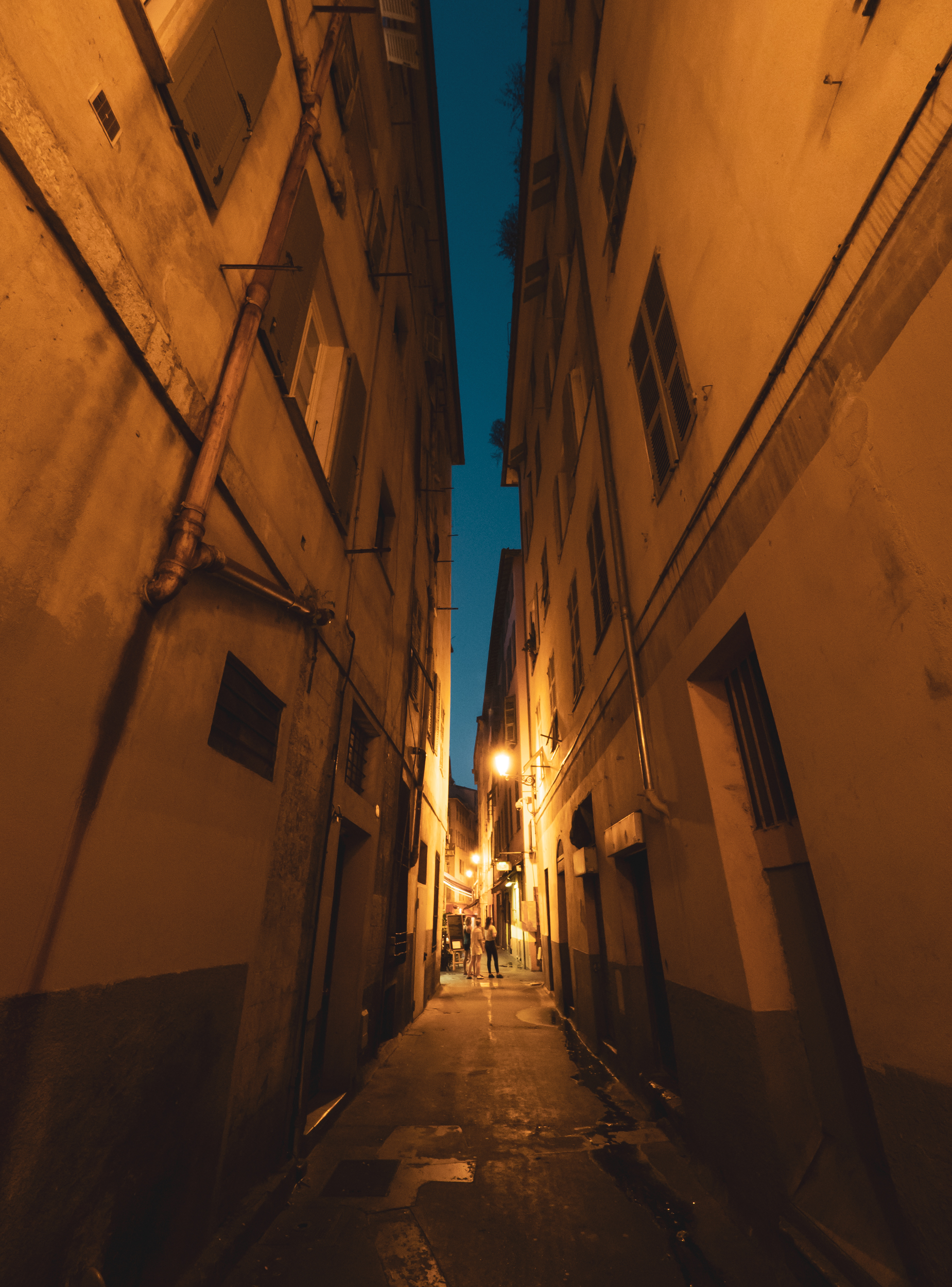
Hold your breath
One of the many narrow alleys in Nice.

A Cigarette on the Balcony
In pleasant late August temperatures.
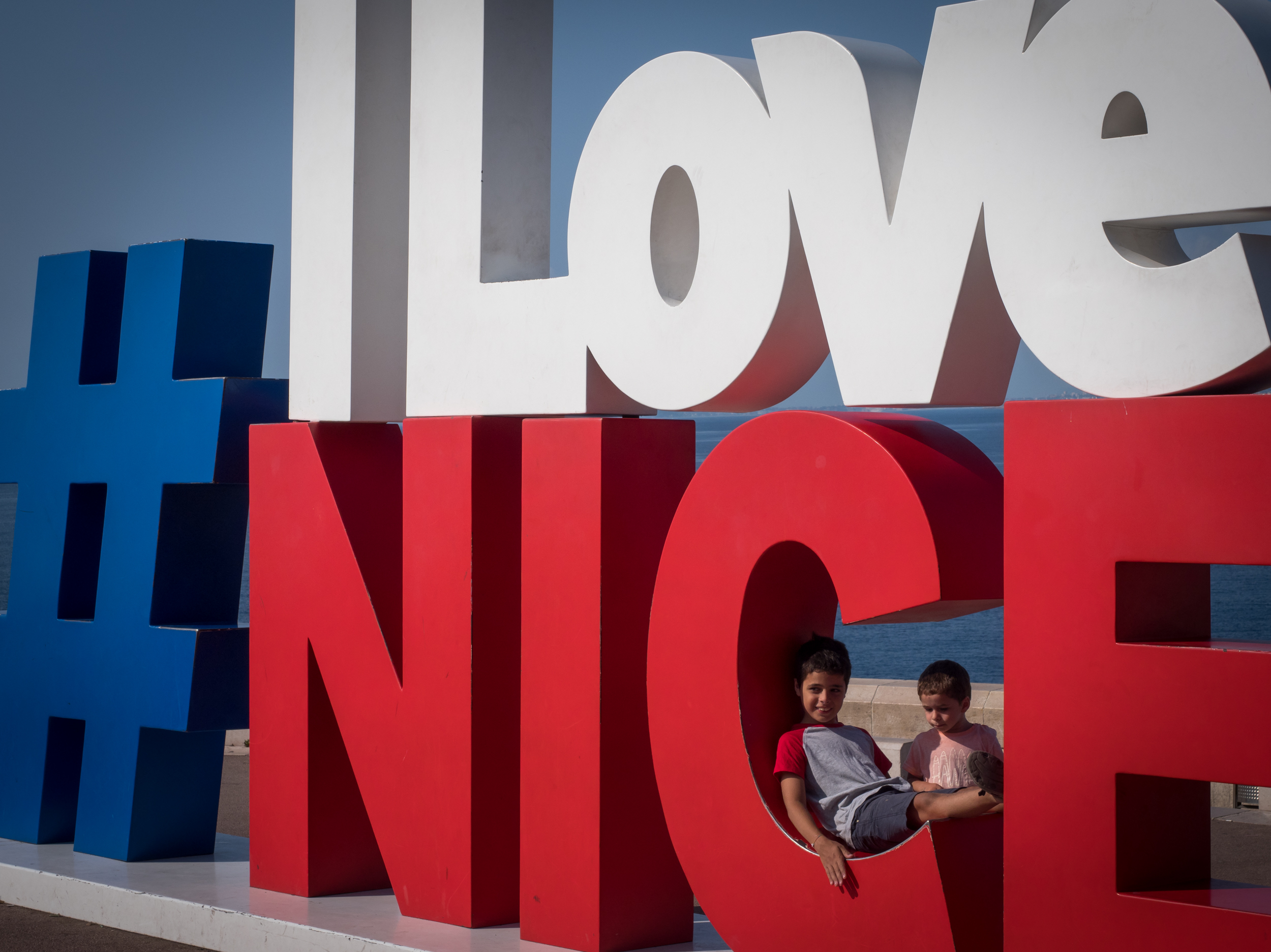
Indeed
I was positively surprised by the city, 1 day definitely wasn't enough.
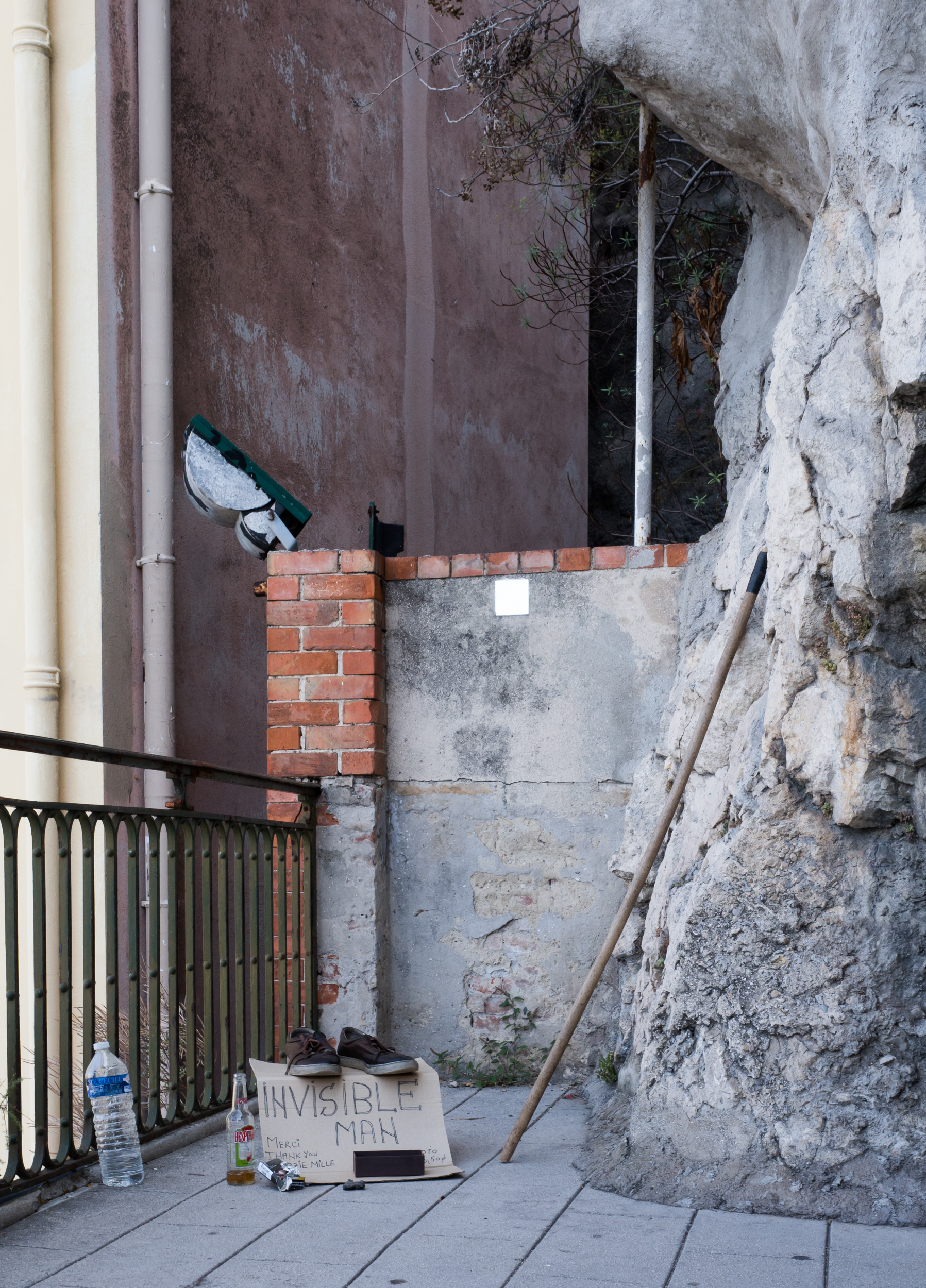
Invisibe Man
We even got a handshake!
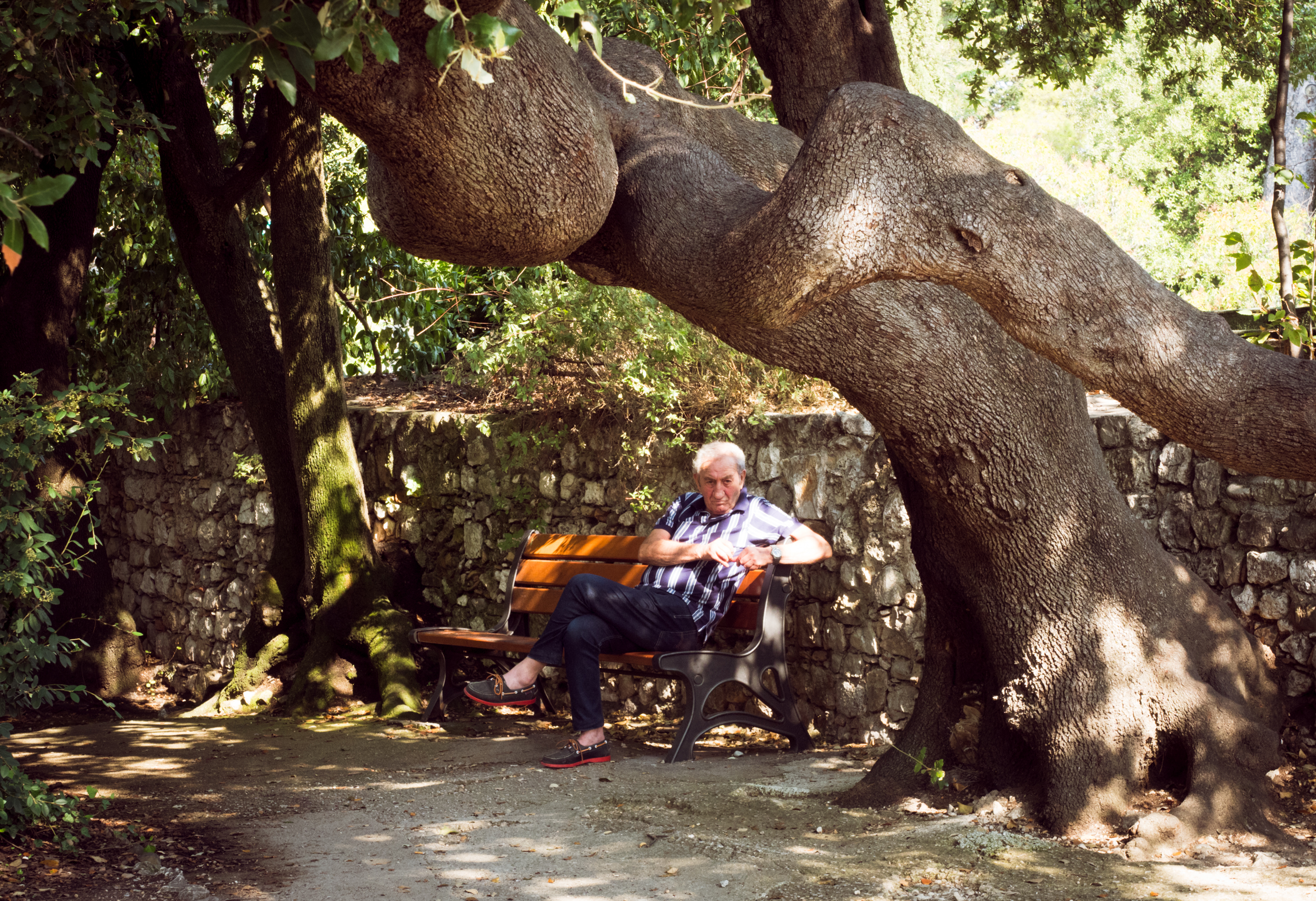
A morning in Hill Park
The castle used to stand on the hill from the 11th to the 18th century, but today just a few ruins remain.
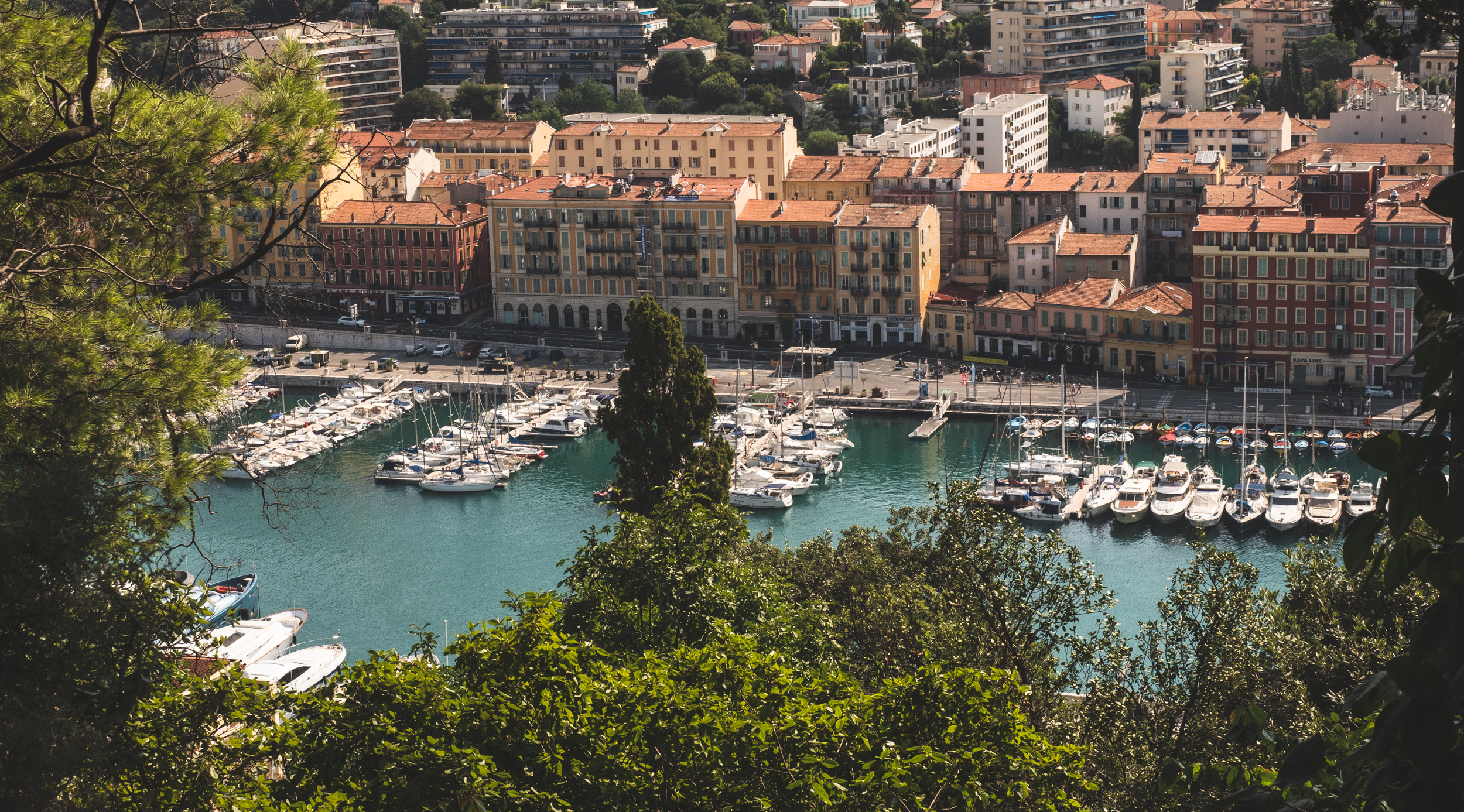
Port of Nice
The port of Nice from the Castle Hill.
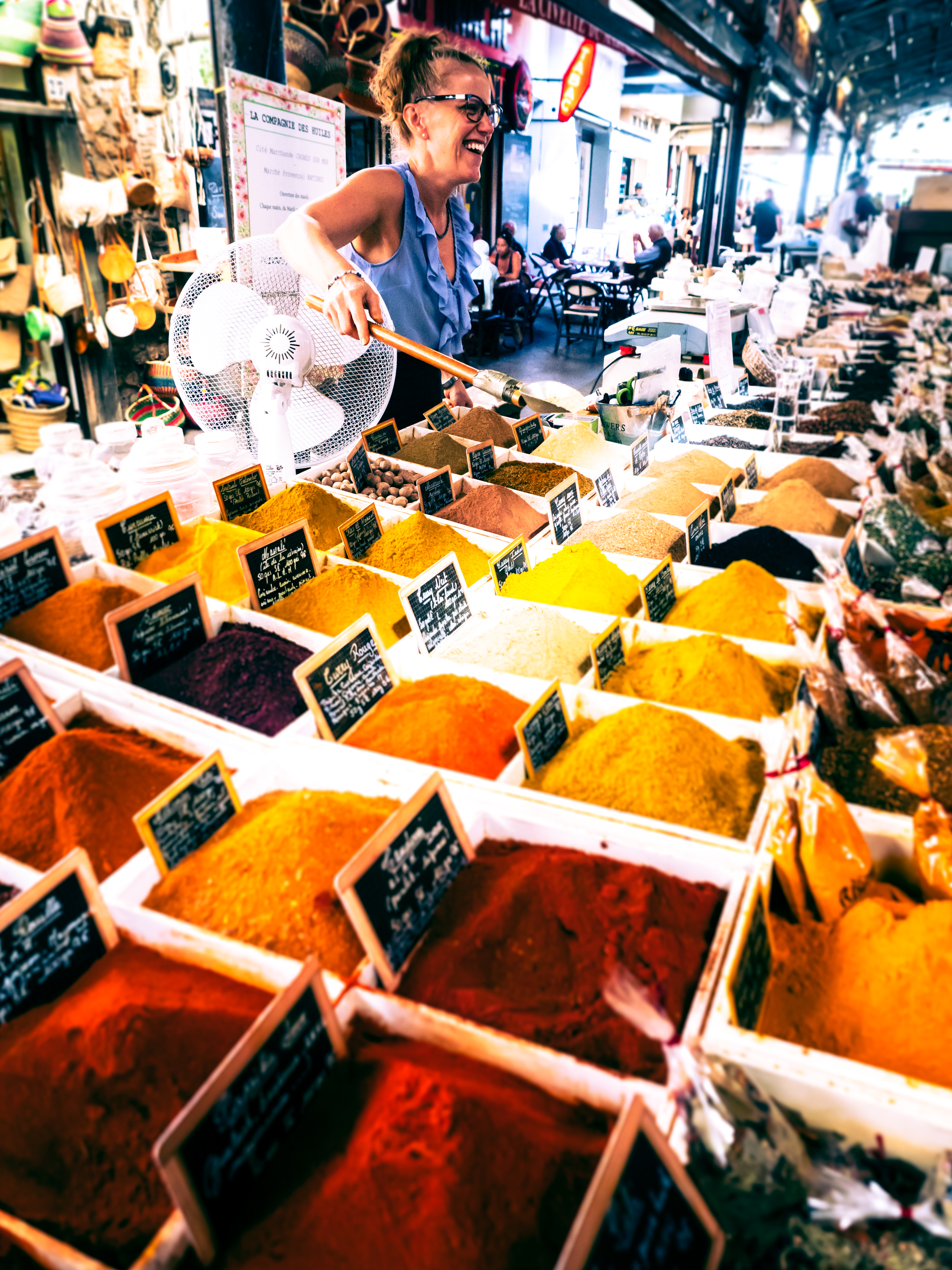
Antibes Market
Onwards to the west brought us to Antibes, with its markets.
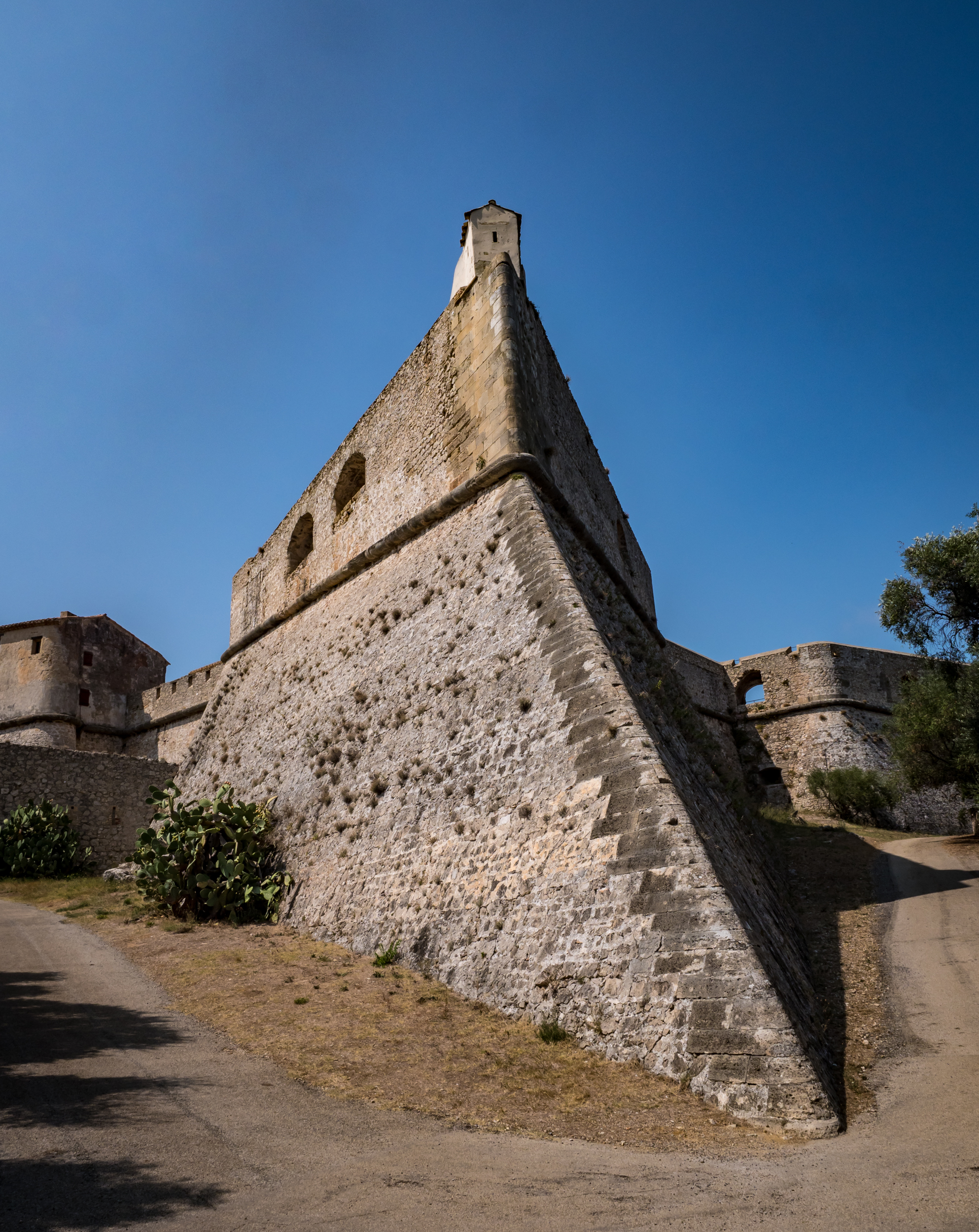
Fort Carre Antibes
With its unique star shape (check it on Google Maps)
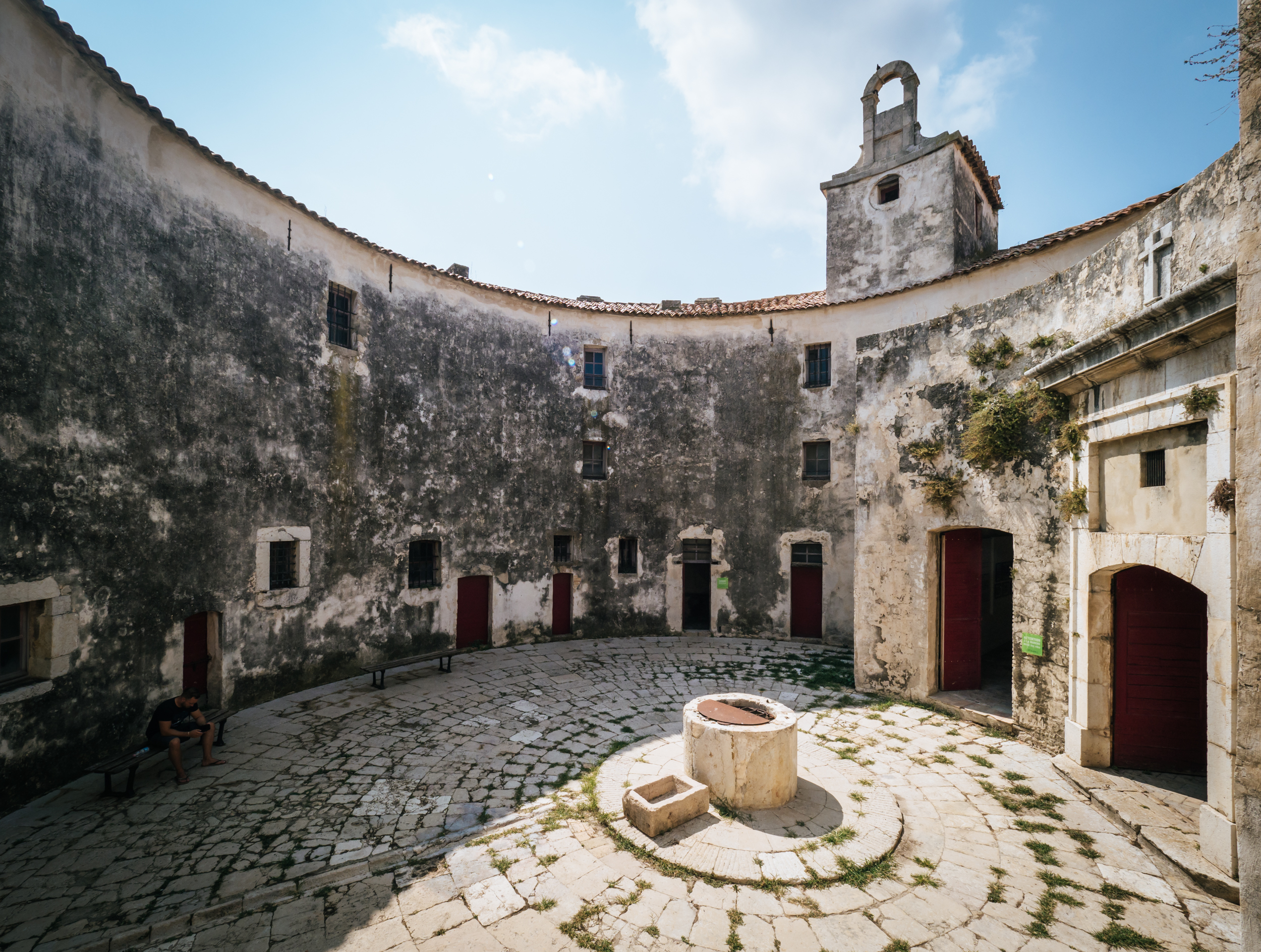
Fort Carre Antibes
While star shaped in the outside, the interior features a round open atrium.
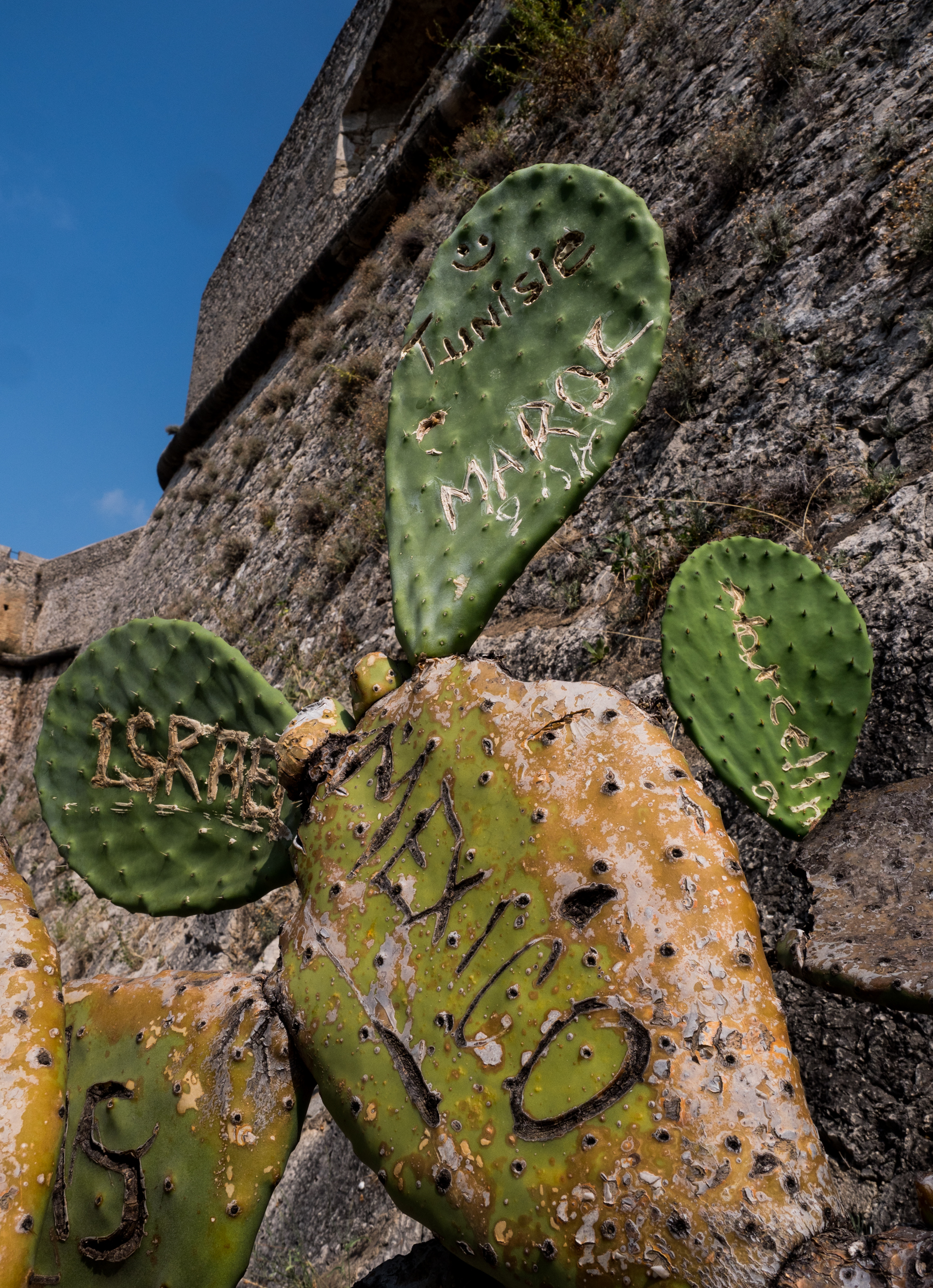
Fort Flora
The Antibes fort sports several large cacti, which tourists used to inscribe their various messages for future visitors.
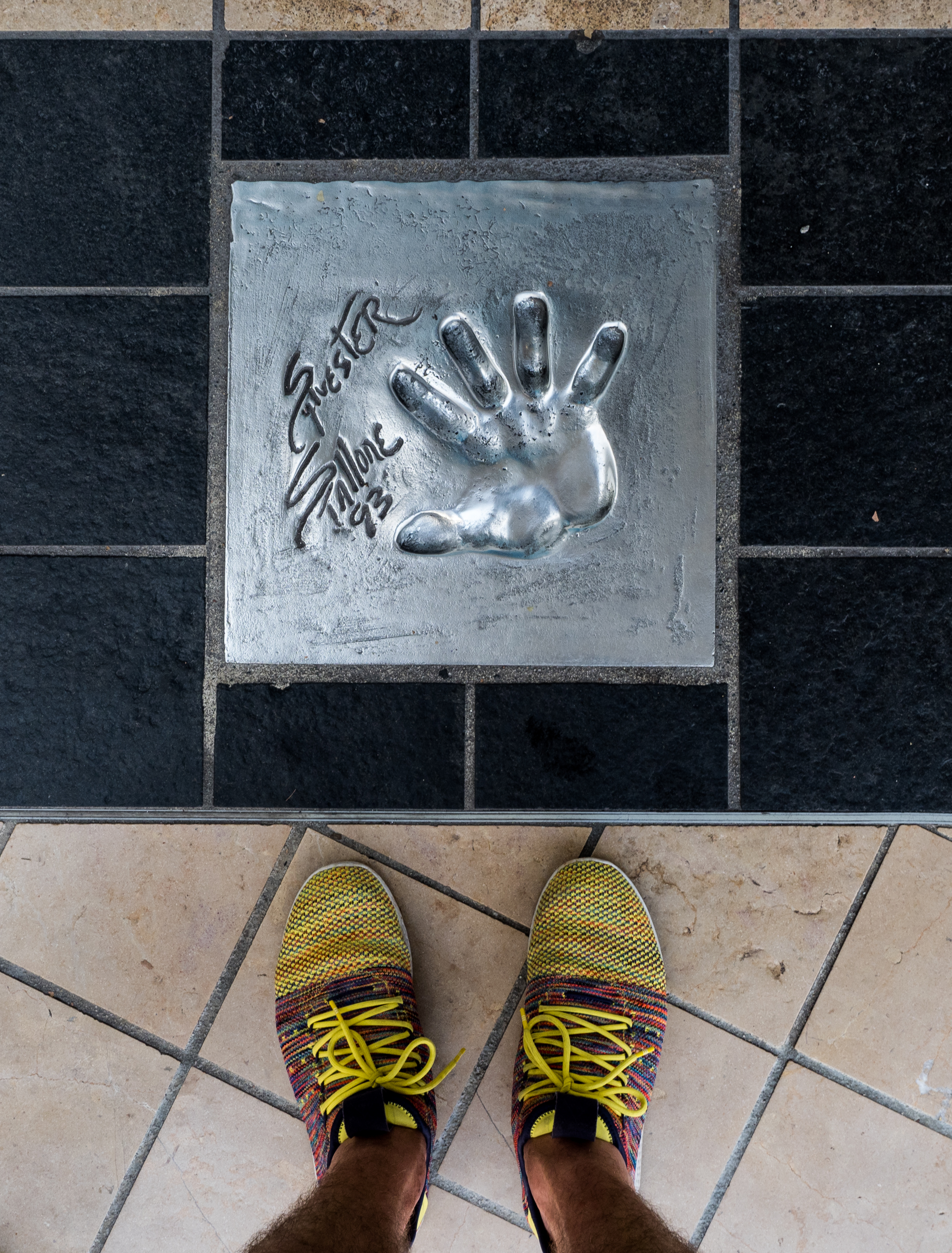
Cannes Hand Prints
The hand prints in Cannes in front of Palais des Festivals on Esplanade Pompidou, where famous film actors and directors leave their mark for posterity.

Cannes Old Town
Walking up the old parts of Cannes towards the Église Notre-Dame d'Espérance.
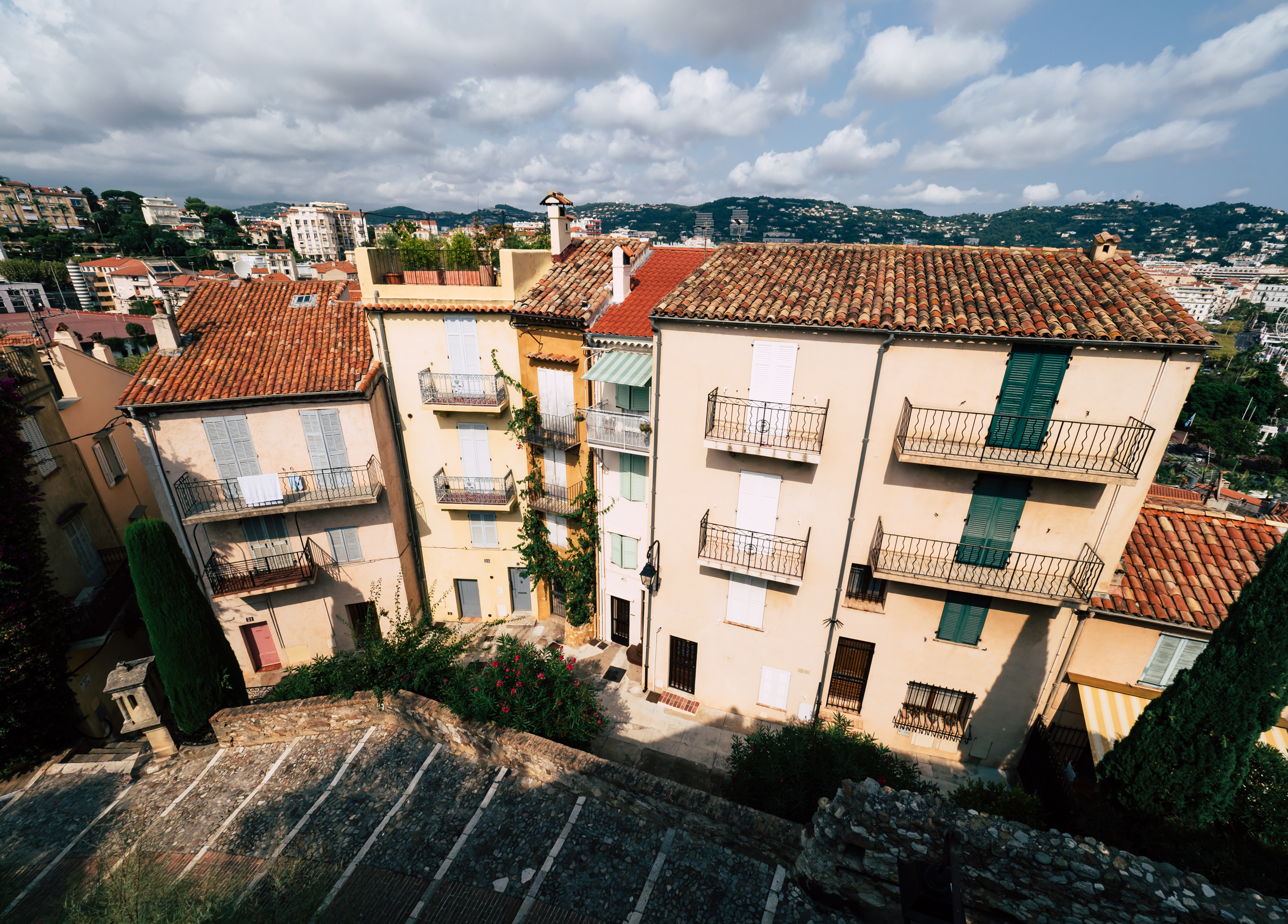
Slim Houses
The view from the top towards some of the horizontally challenged houses.
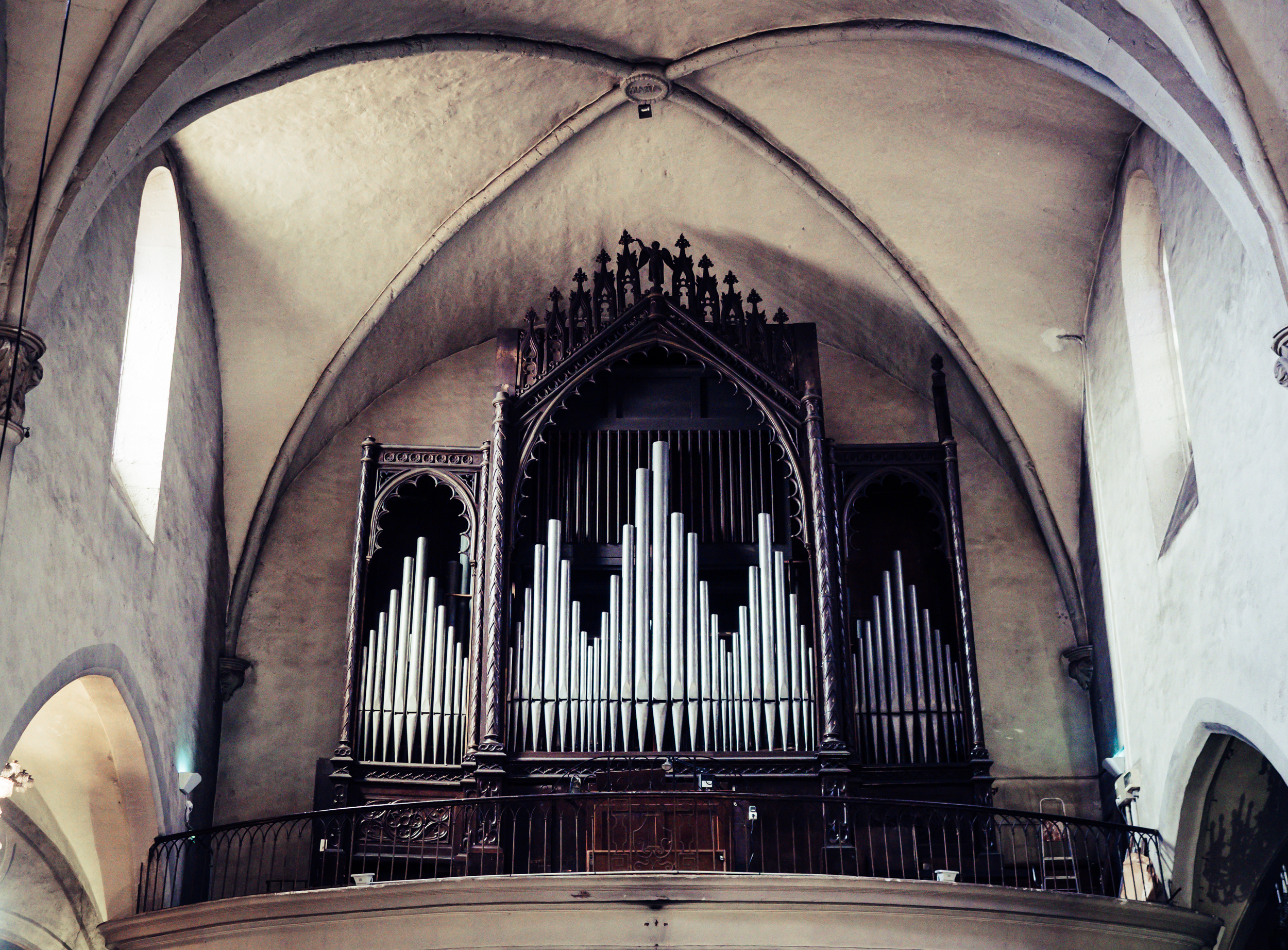
Organ
The pipes of the organs in the Église Notre-Dame d'Espérance.
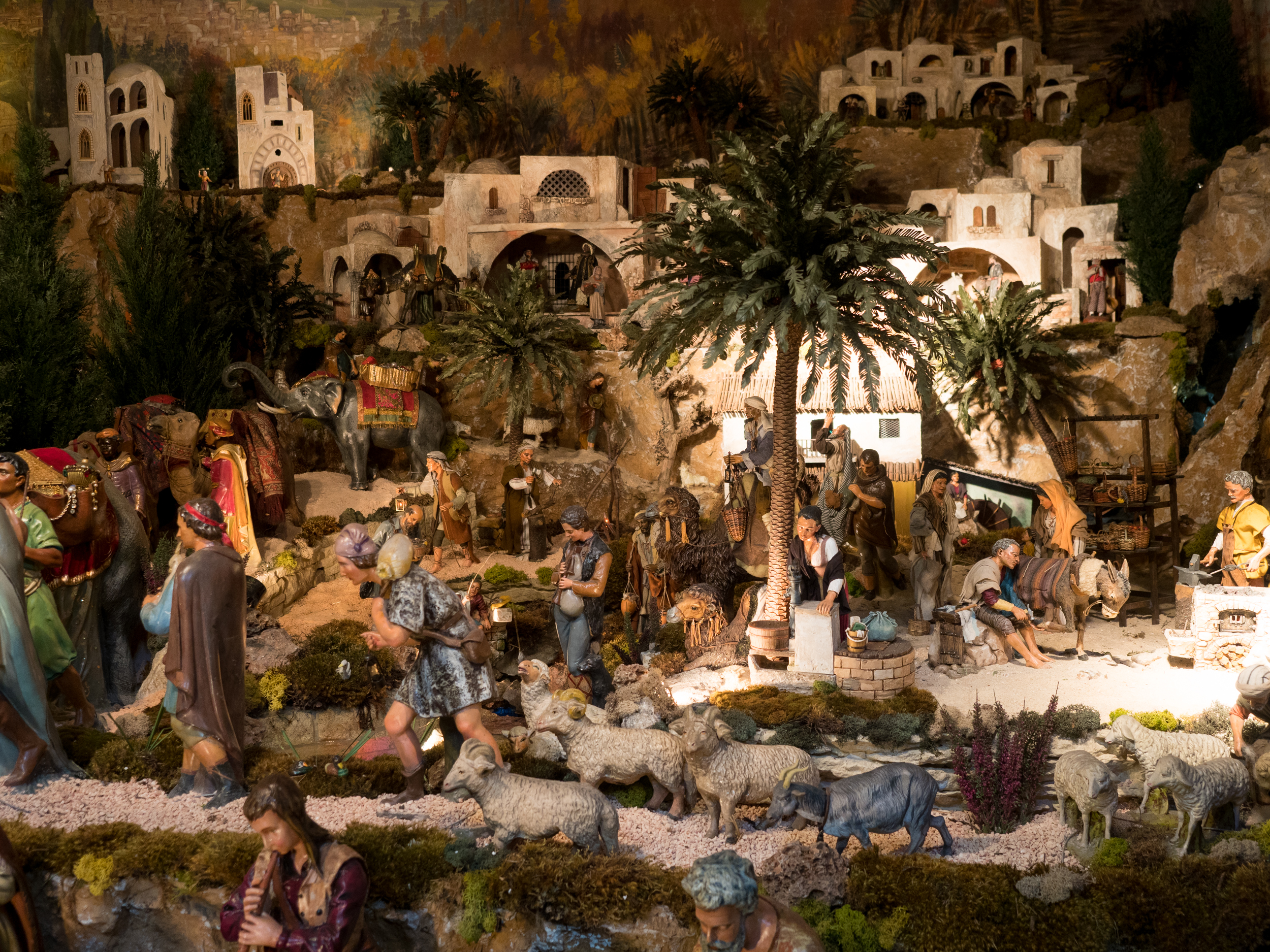
Scenes
The church features this display, including blinking lights and moving figures. Cheesy or not, I'll let you judge.

The Red Carpet
The famous red carpet of the Cannes film festival - everyone wants to bath in the glory.
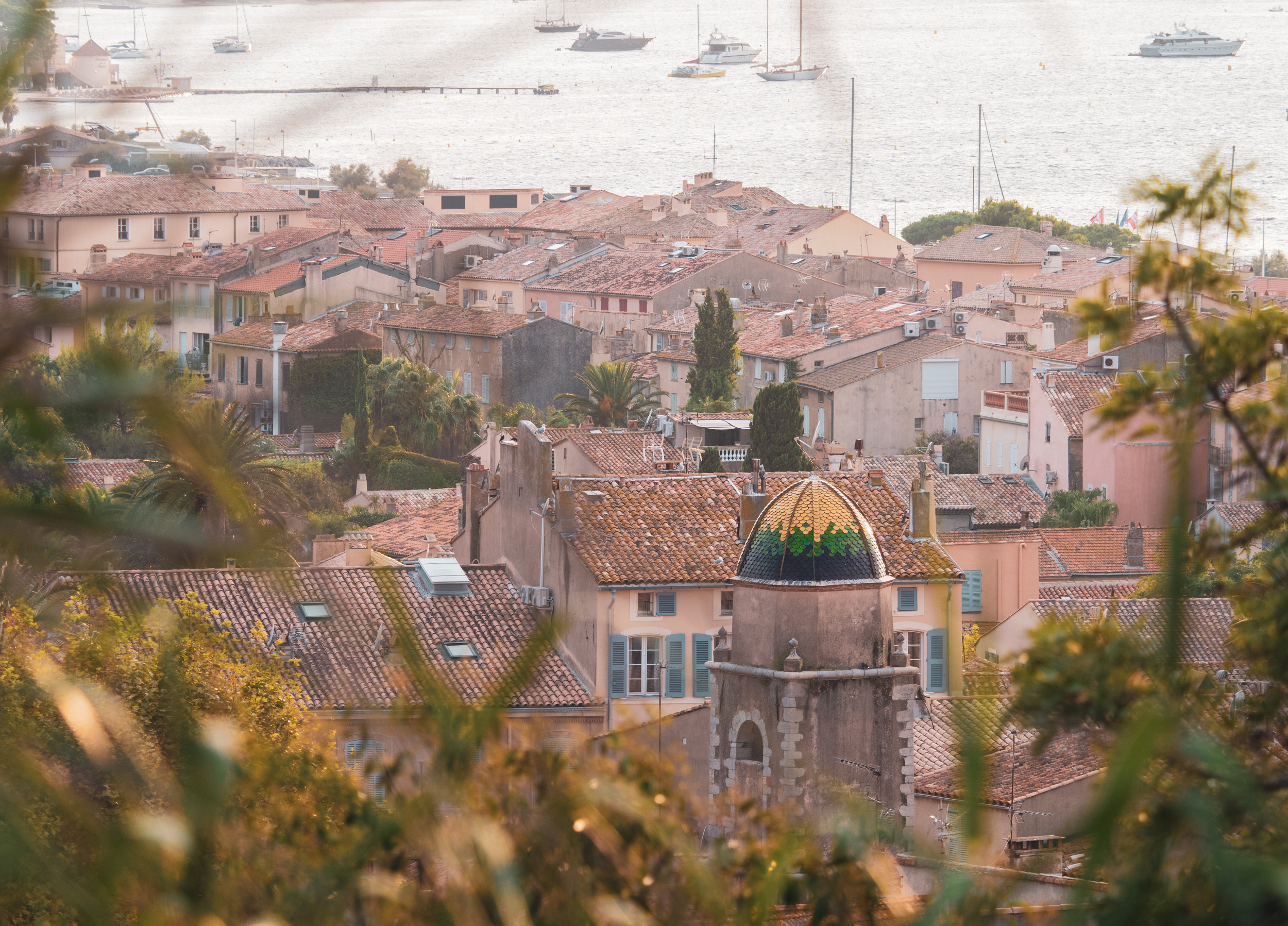
Rooftops
The view from the Citadel in our last destination - St Tropez - shows the colourful roof of the Chapelle de la Miséricorde.
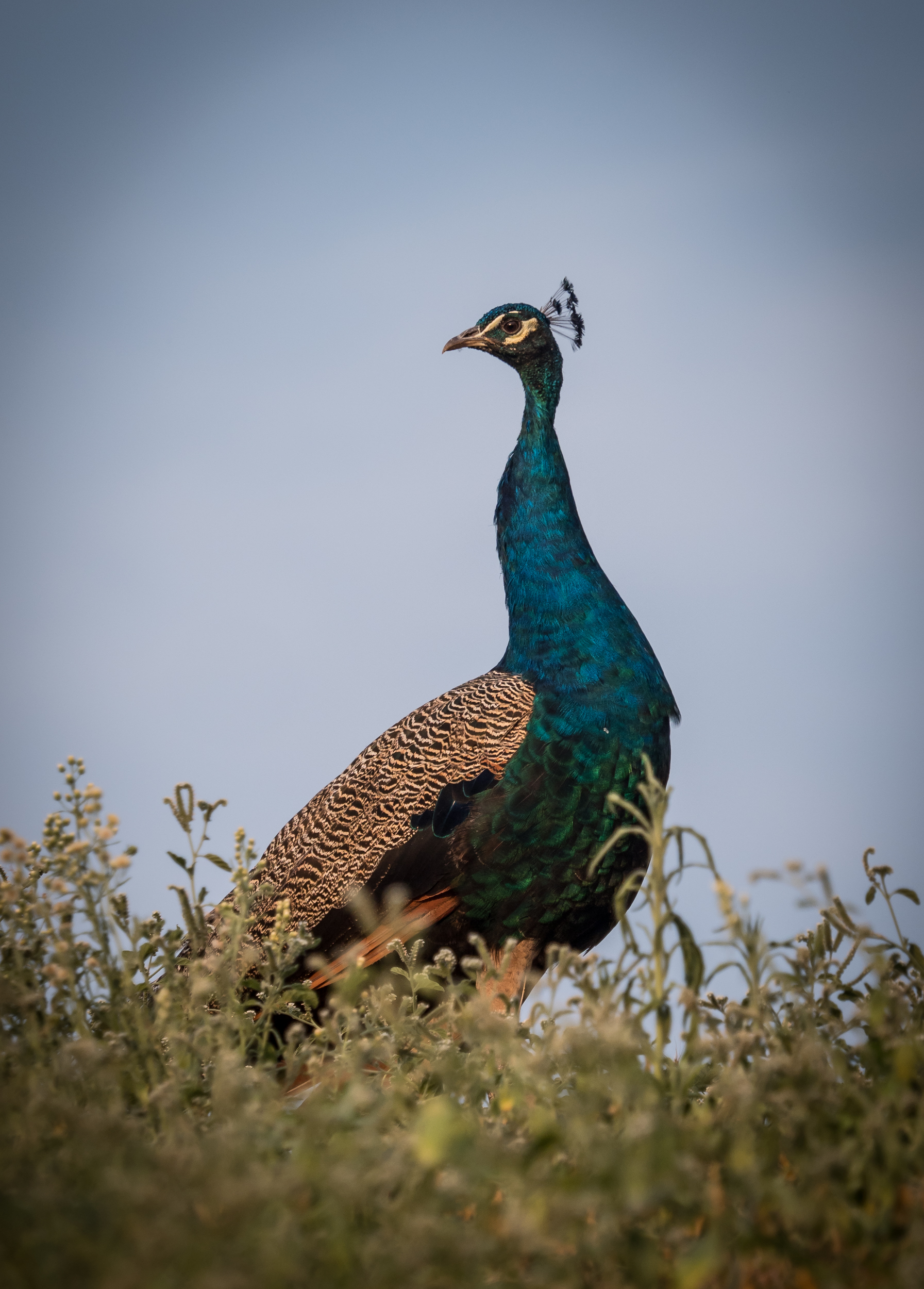
Citadel Occupants
The citadel has a few unexpected habitants, such as these peacocks.
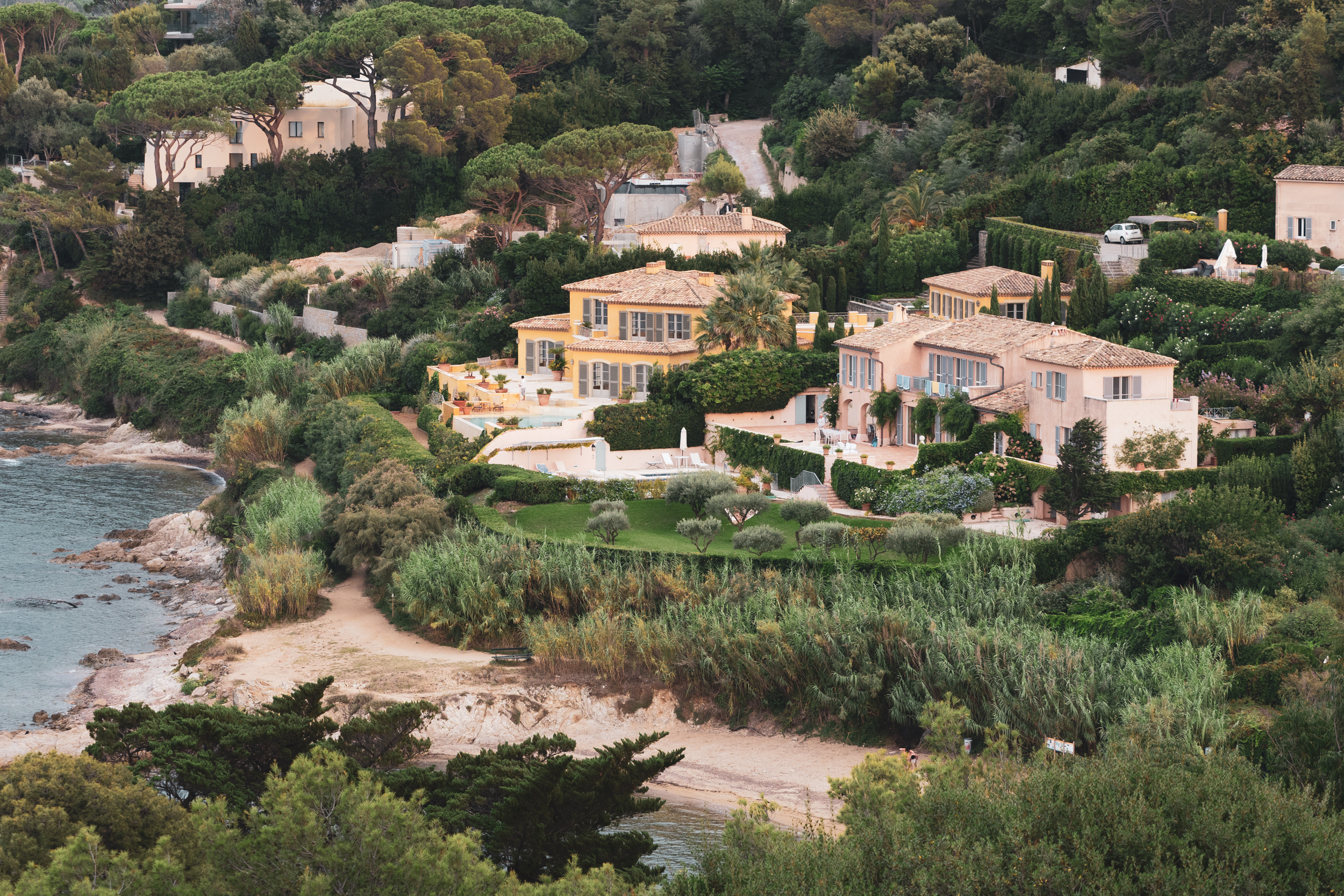
St Tropez Homes
Some of the large villas on the eastern side of the citadel.
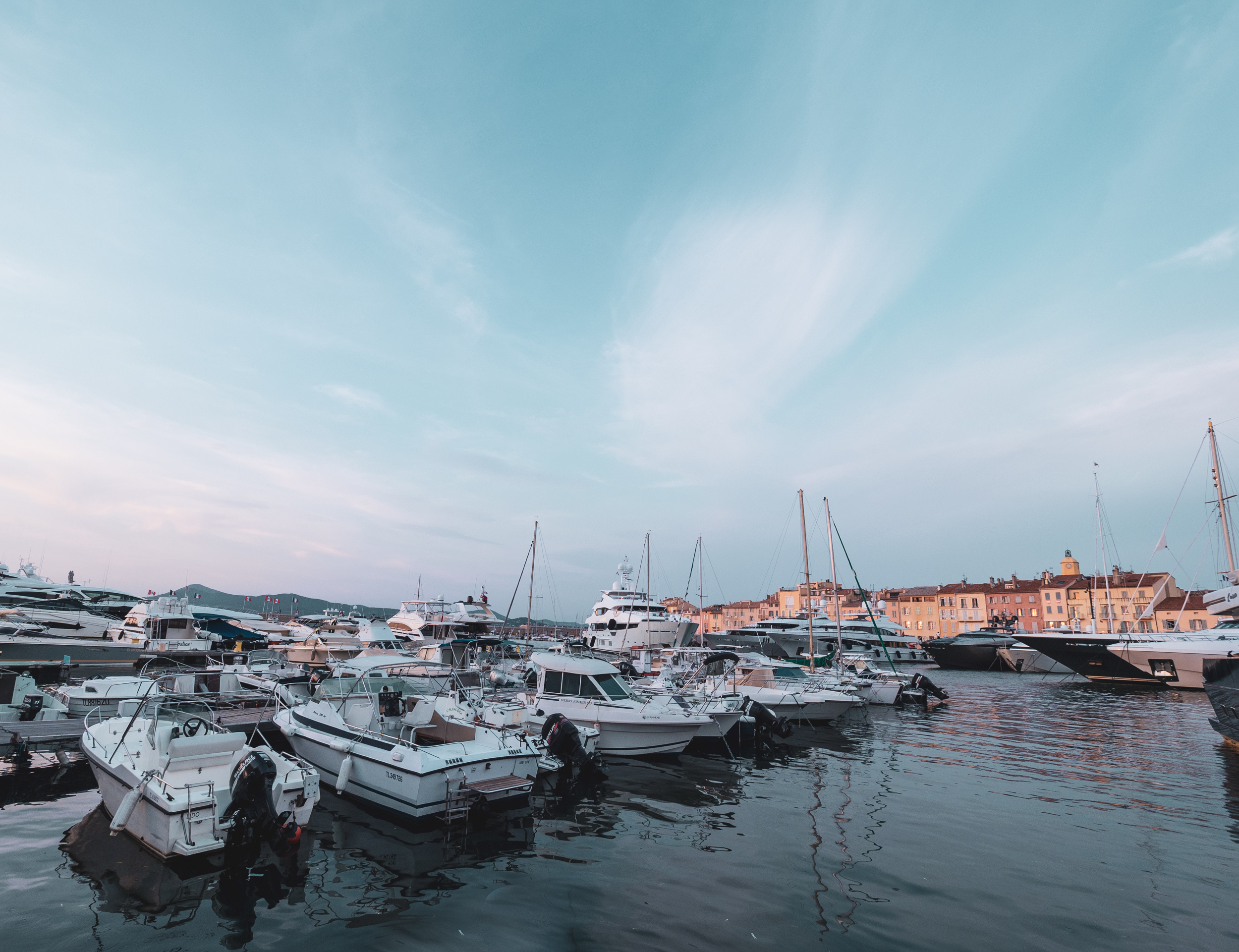
St Tropez Port
The port of St Tropez, with a few large yachts in the background.
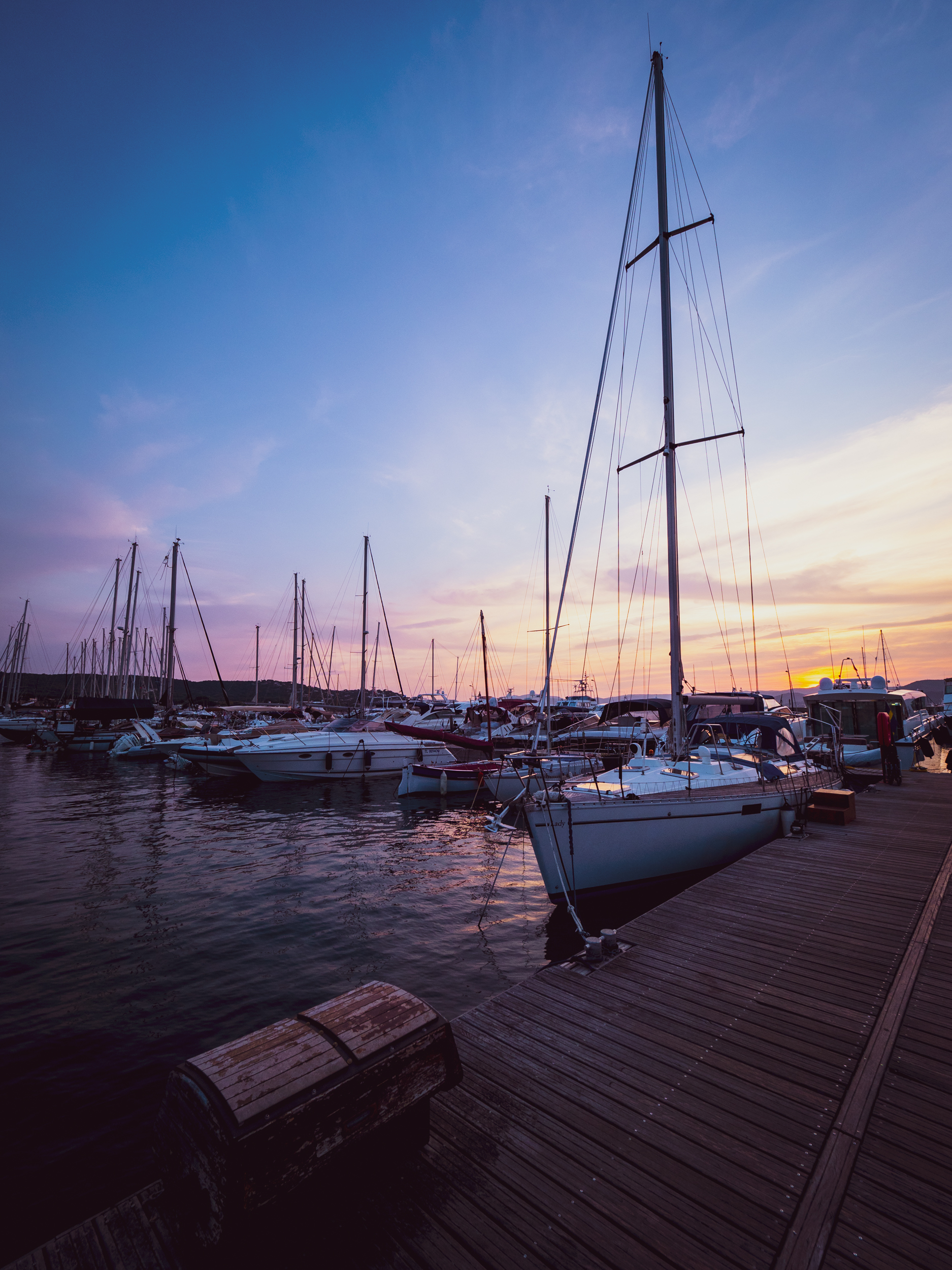
Sunset
Another view of the port, this time the northerly side with smaller sailing boats.

Sports in the Park
It seems a local sports club uses a sandy park in the city as their practice ground for this Bocce type sport - what's it called?

St Tropez Alleys
The alleys were not particularly busy anymore, the touristy season is coming to an end in late August.
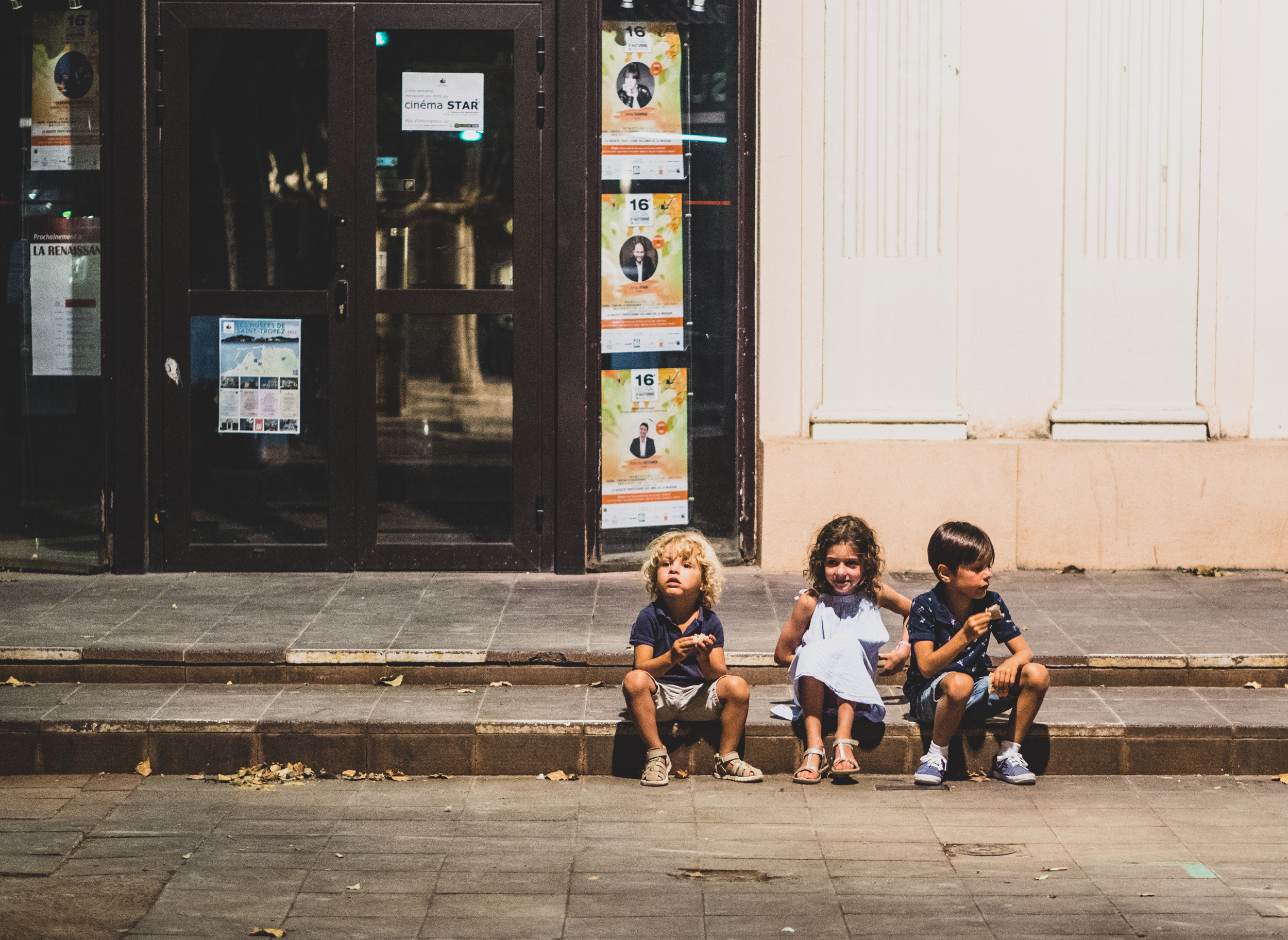
The Local Gang
Ruling the town.
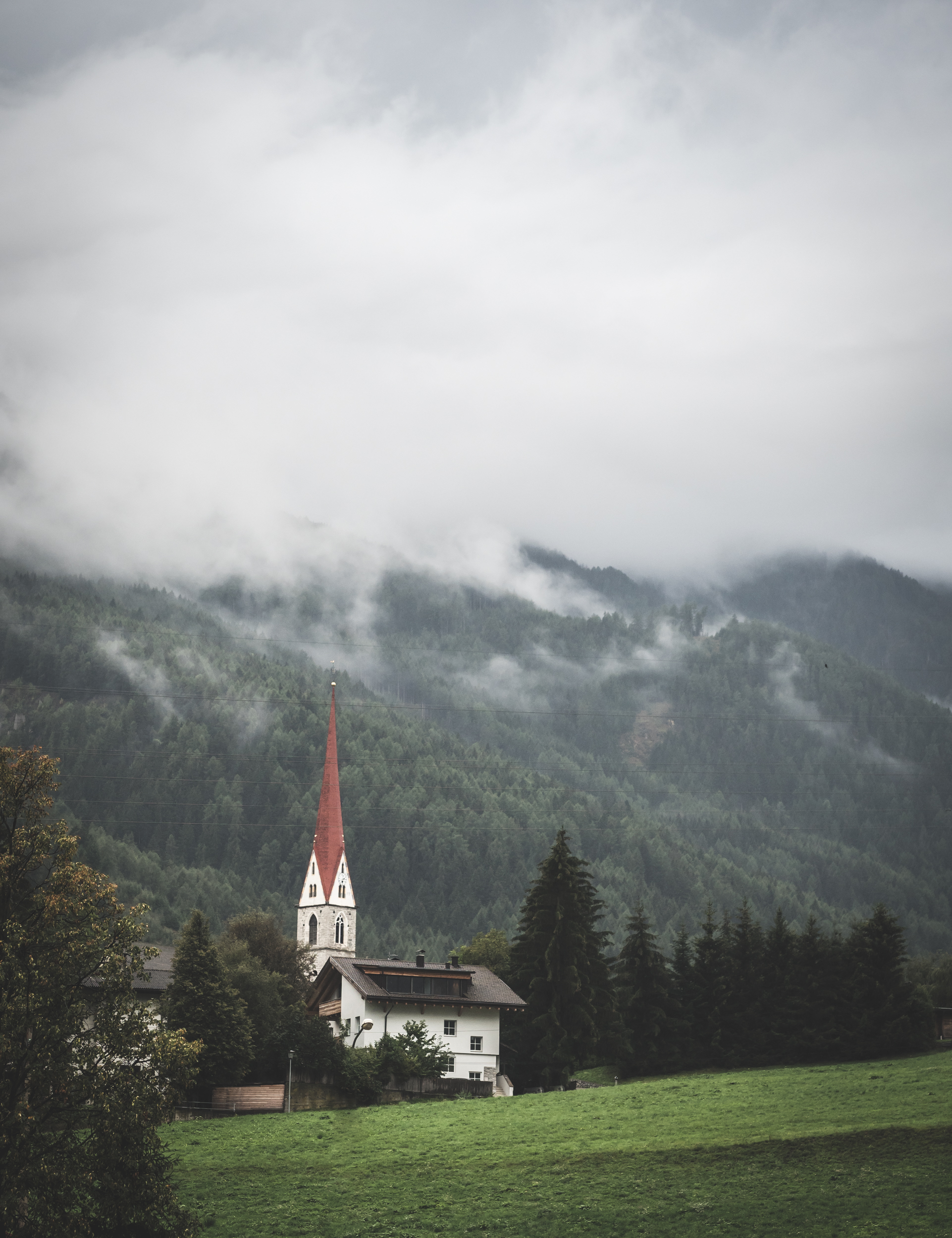
In the Clouds
A church near the Brennerpass over the Alps into Austria on our way back.
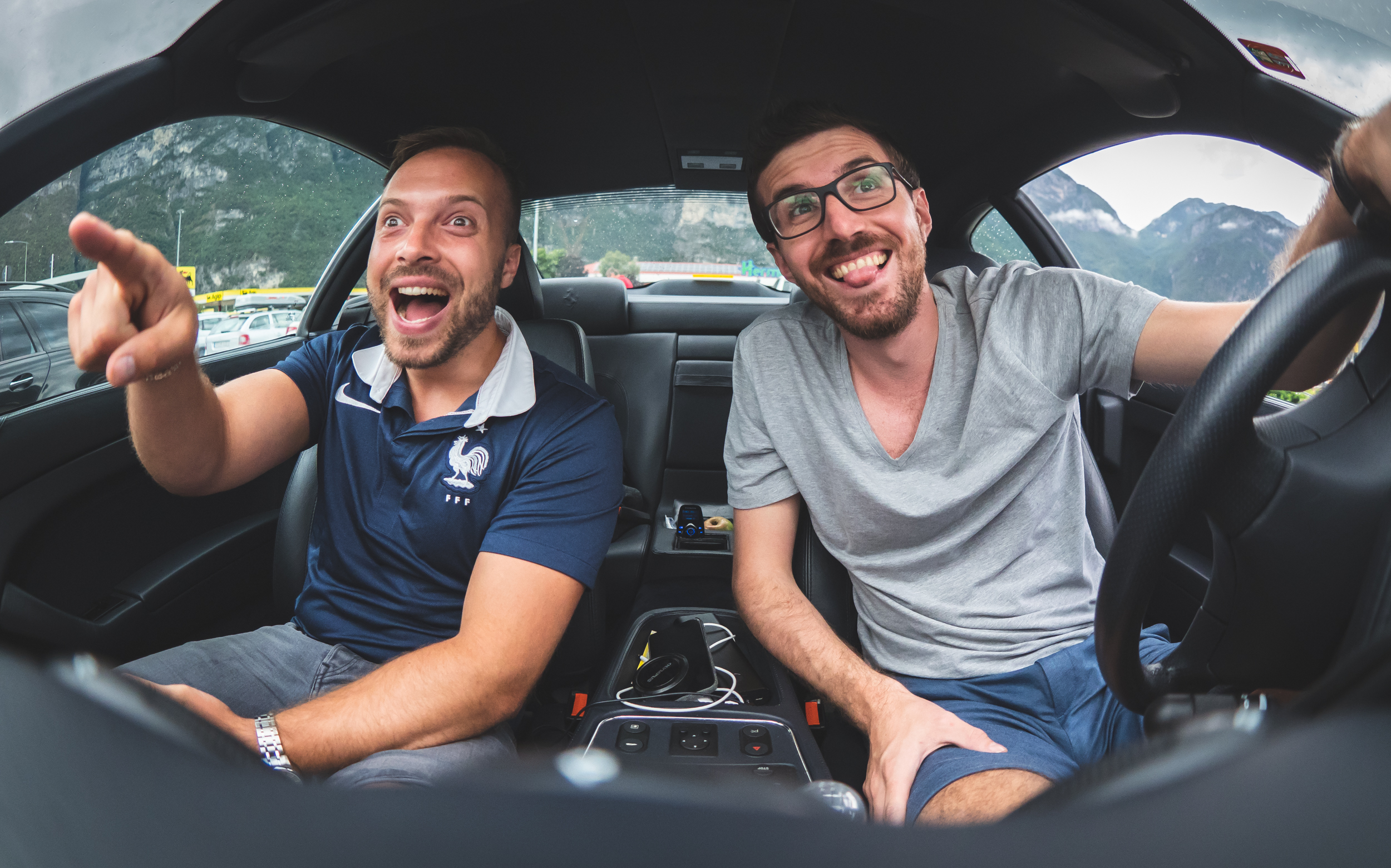
Roadtrip
Over 2000km later, we were not in the best state of mind anymore.
Macau - The Las Vegas of Asia, but not only
When you're in Hong Kong, it's hard not to consider a trip over to the Macau, the other "Special Administrative Region of the People's Republic of China" just across the South China sea, about 1h by ferry. While often seen as the new gambling capital of the world, the city actually has a little more to offer with its unique Portuguese influences that can at times make you feel like in Europe. Worth the trip and 2 days well spent (including winning at Roulette, as always).

When you're in Hong Kong, it's hard not to consider a trip over to the Macau, the other "Special Administrative Region of the People's Republic of China" just across the South China sea, about 1h by ferry. While often seen as the new gambling capital of the world, the city actually has a little more to offer with its unique Portuguese influences that can at times make you feel like in Europe. Worth the trip and 2 days well spent (including winning at Roulette, as always).

Macau Views
As seen from the Sofitel Hotel at Pointe 16 in the old city parts. The architectural atrocity that is Lisboa Palace Casino in the background.

Sign Factory
In case you decide to open a McDonald's tomorrow.

St Anthony's Church
Owing to the Portugese history, there are several Christian churches in the city. Macau only fully transfered its souvereignty from Portugal in 1999.
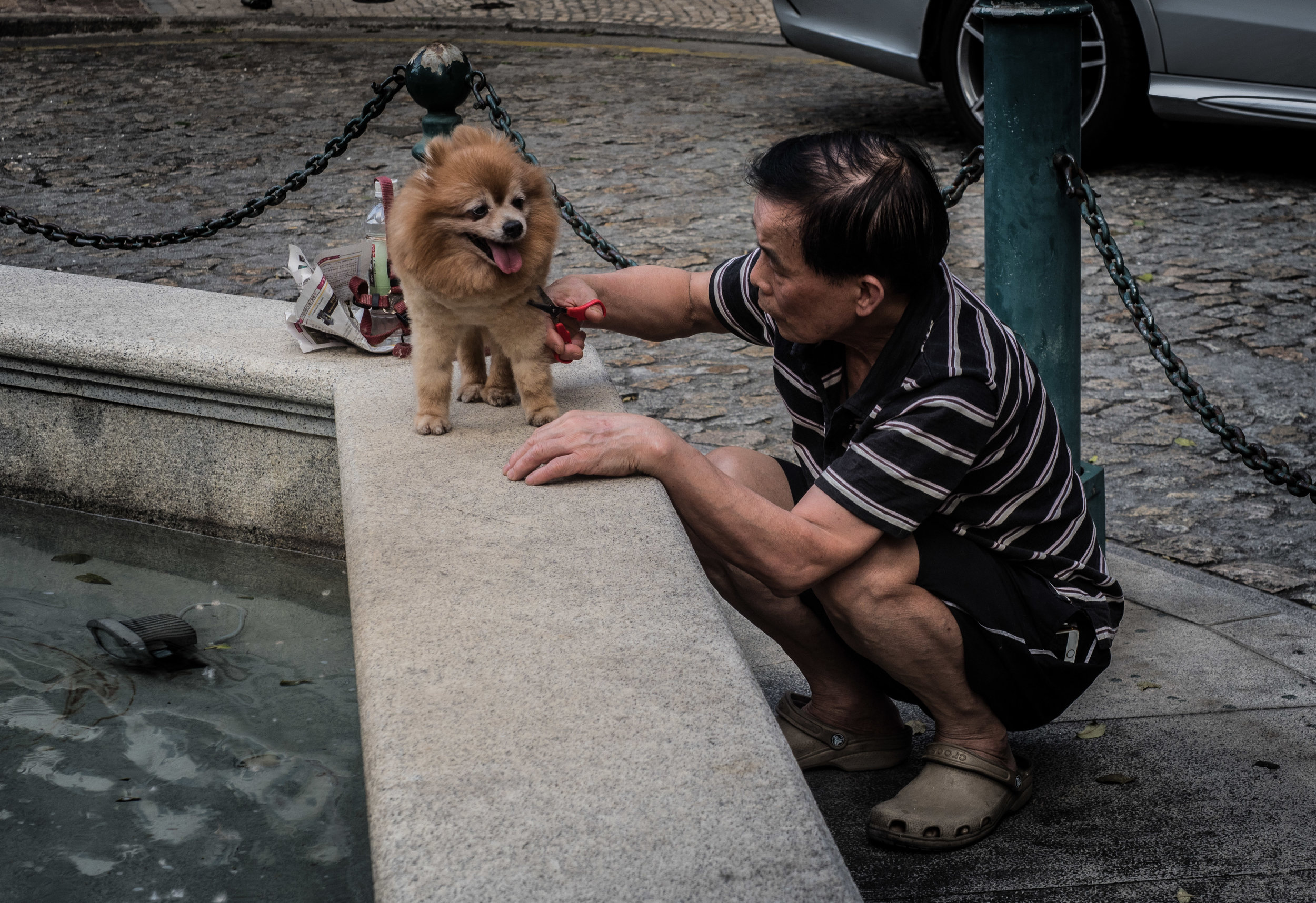
Got to Look Good
For the big casino night!
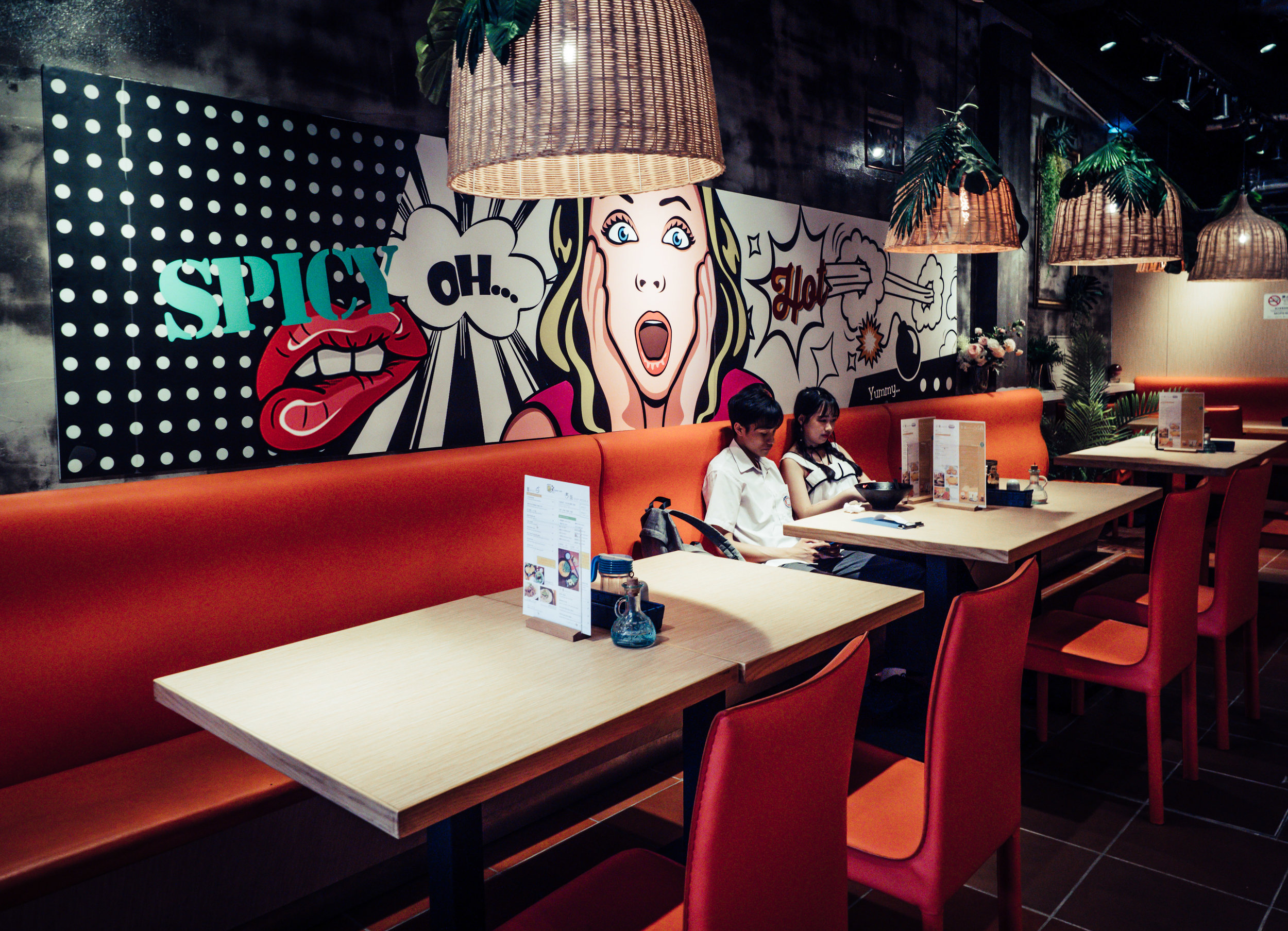
Lunch Time
A stylish restaurant in a somewhat unexpected location.

Templo de Na Tcha
A small shrine near the ruins of St Paul's.
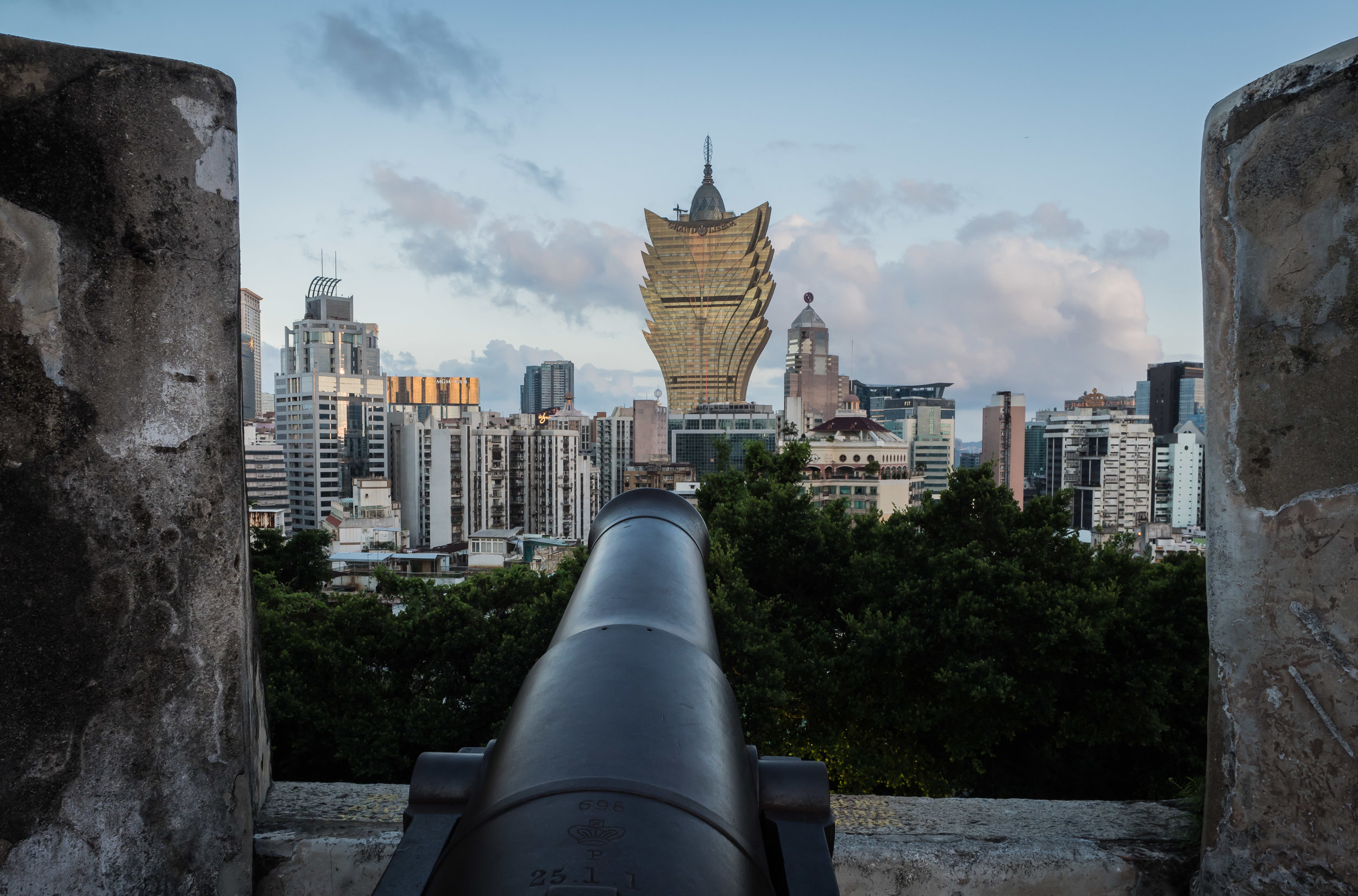
Just the Right Angle
Taken from the hillside fort, which was built by the Jesuits in the early 17th century.
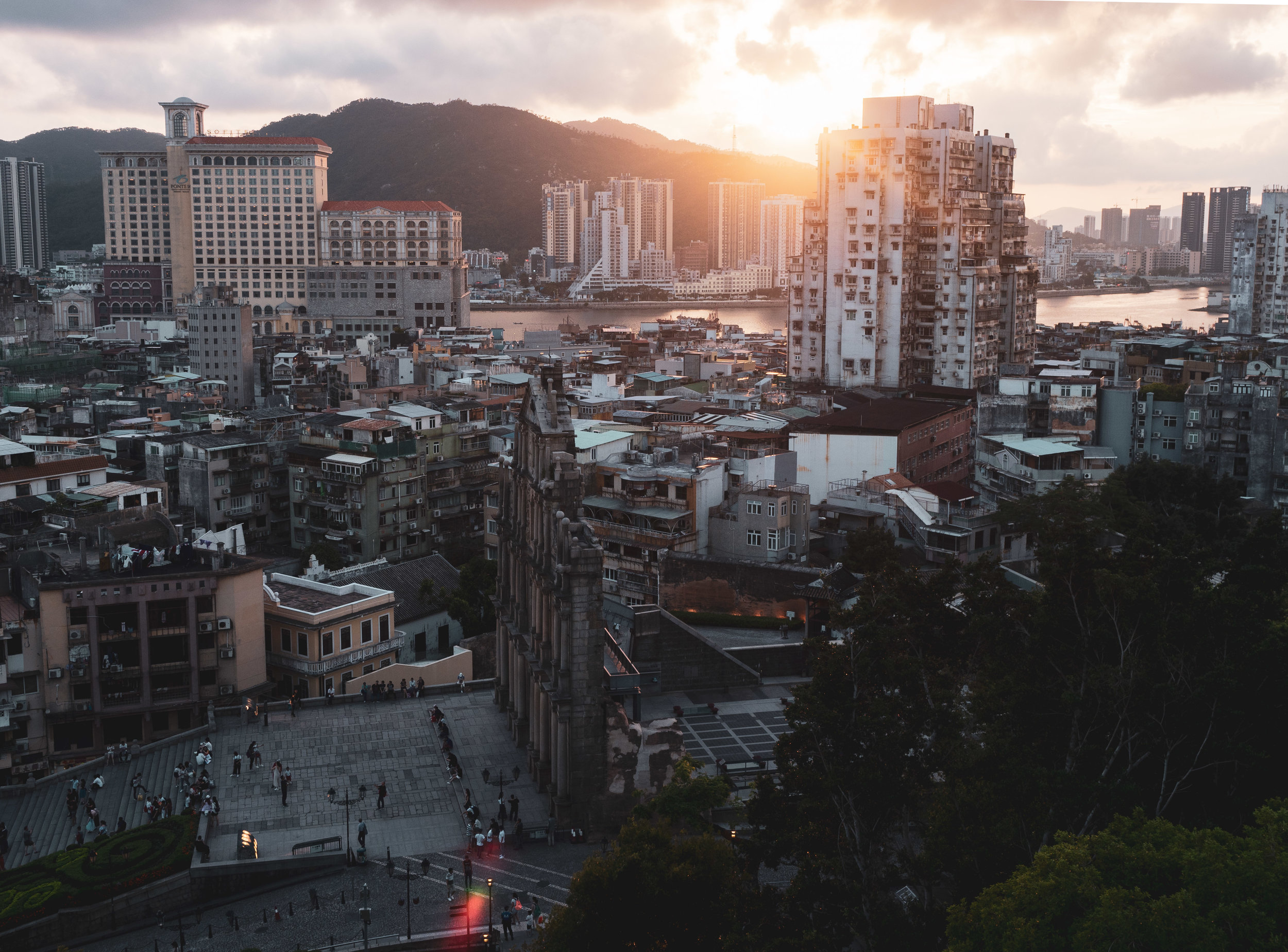
Above the Ruins
The sunset view from the fort over the ruins of the St. Paul's church.

Sunset Views
Macau lies on the peninsula formed by the Zhu Jiang and the Xi Jiang rivers.

St Paul's Church Ruins
The 17th century complex is part of the Unesco World Heritage site of the Historic Centre of Macau.
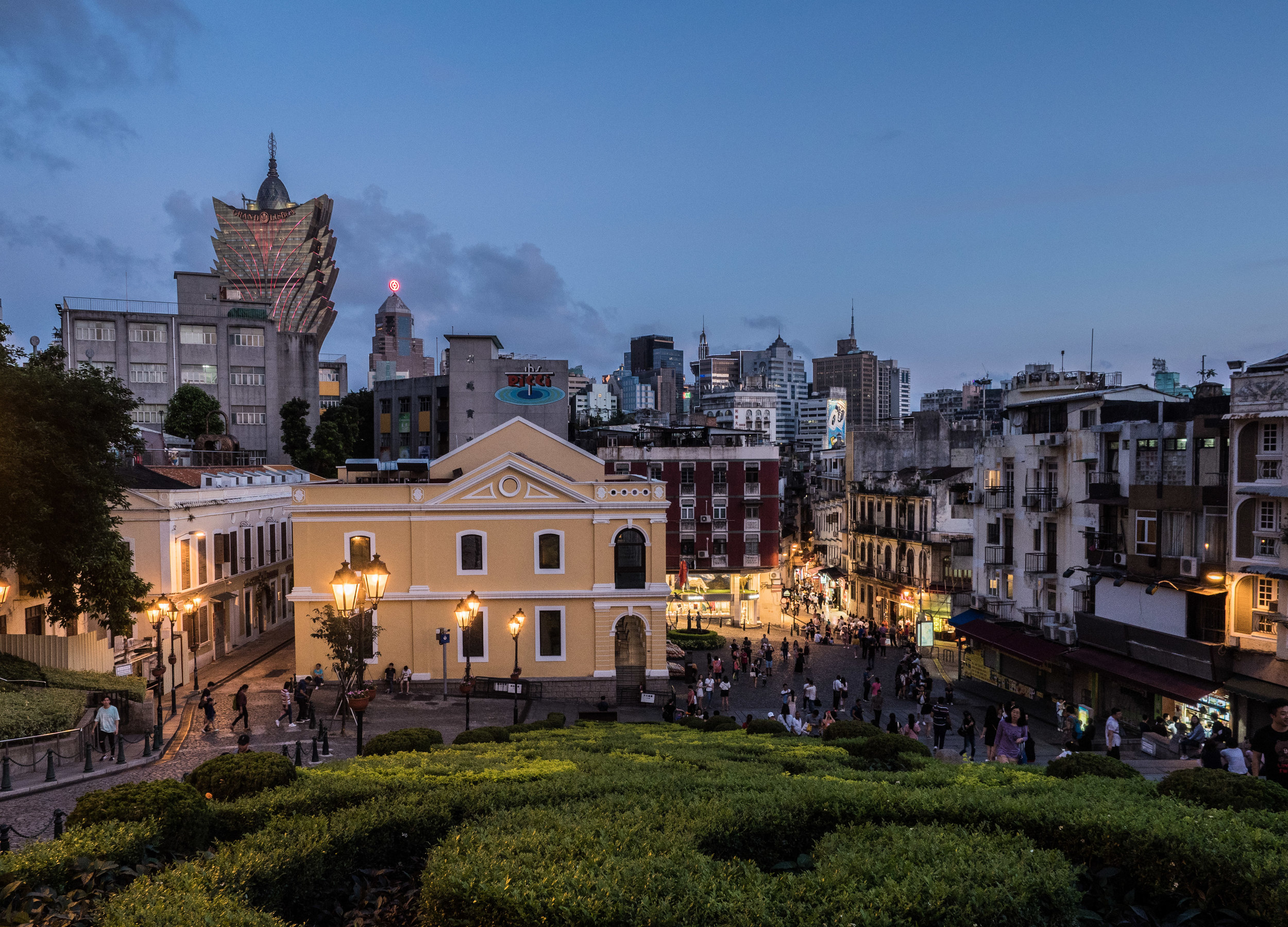
Sensory Confusion
Cobblestone pavements with southern European architecture and narrow alleys give the city a surprisingly medittaranean feel at times - if you choose to ignore the large Casinos.
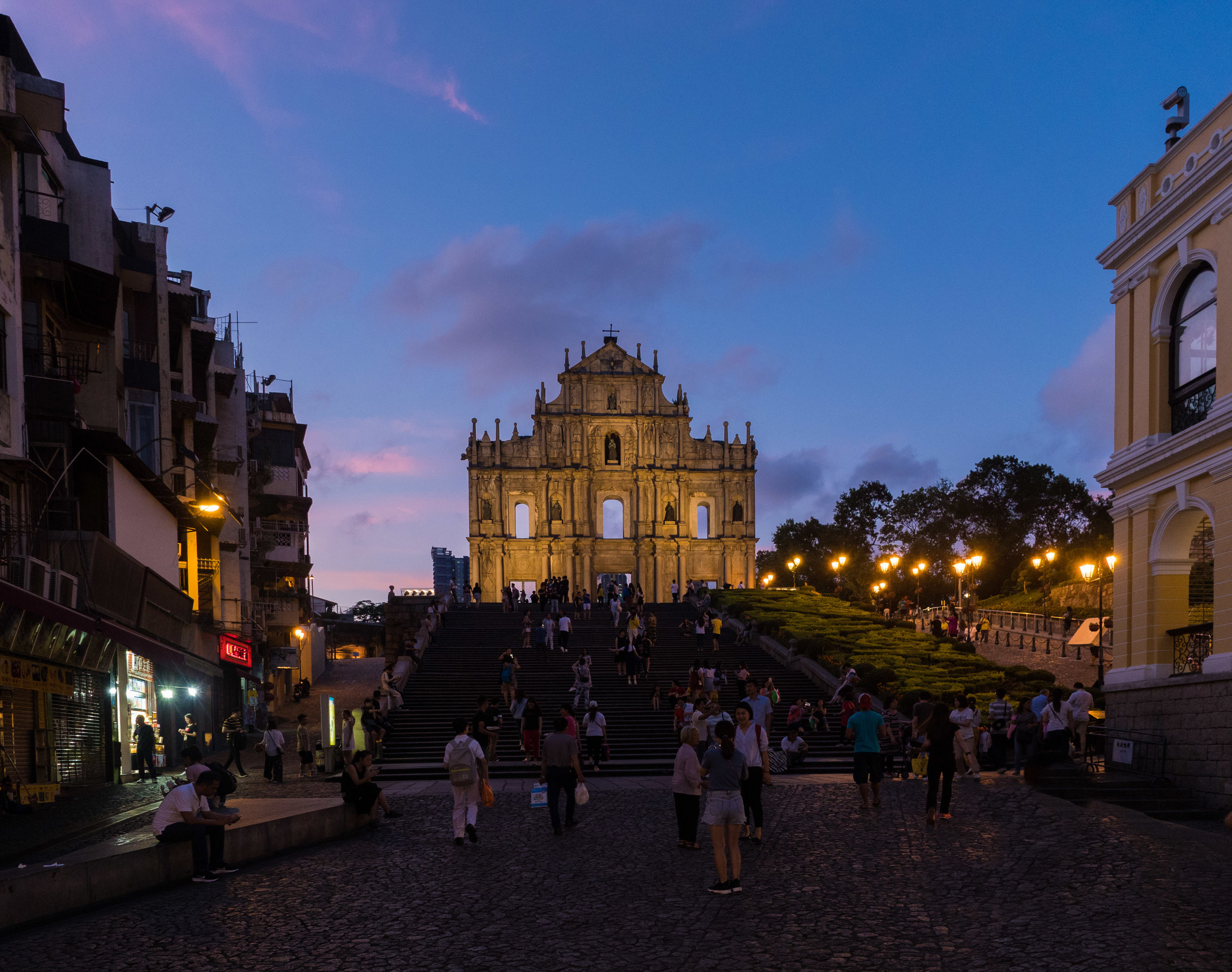
Ruins on the Hill
While maybe by itself not one of the most significant historical artifacts, the utter unexpectedness of seeing this in Macau made an impression on me.
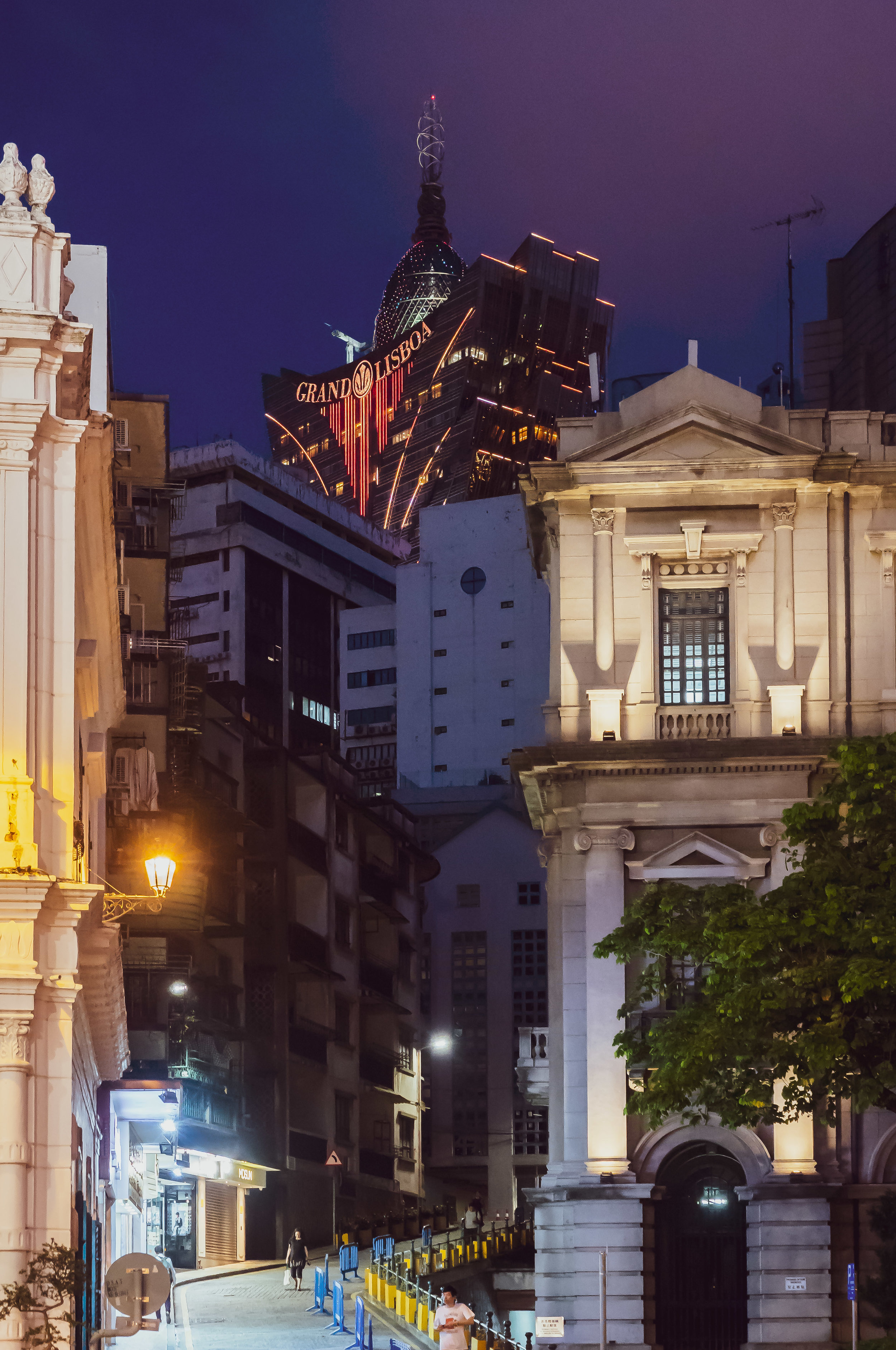
The Mix
Macau is a city of unusual combinations, with its Portugese heriate, the modern Casino buildings, the typical Chinese crowded city atmosphere, all topped with quiet temples on the city's hillsides.
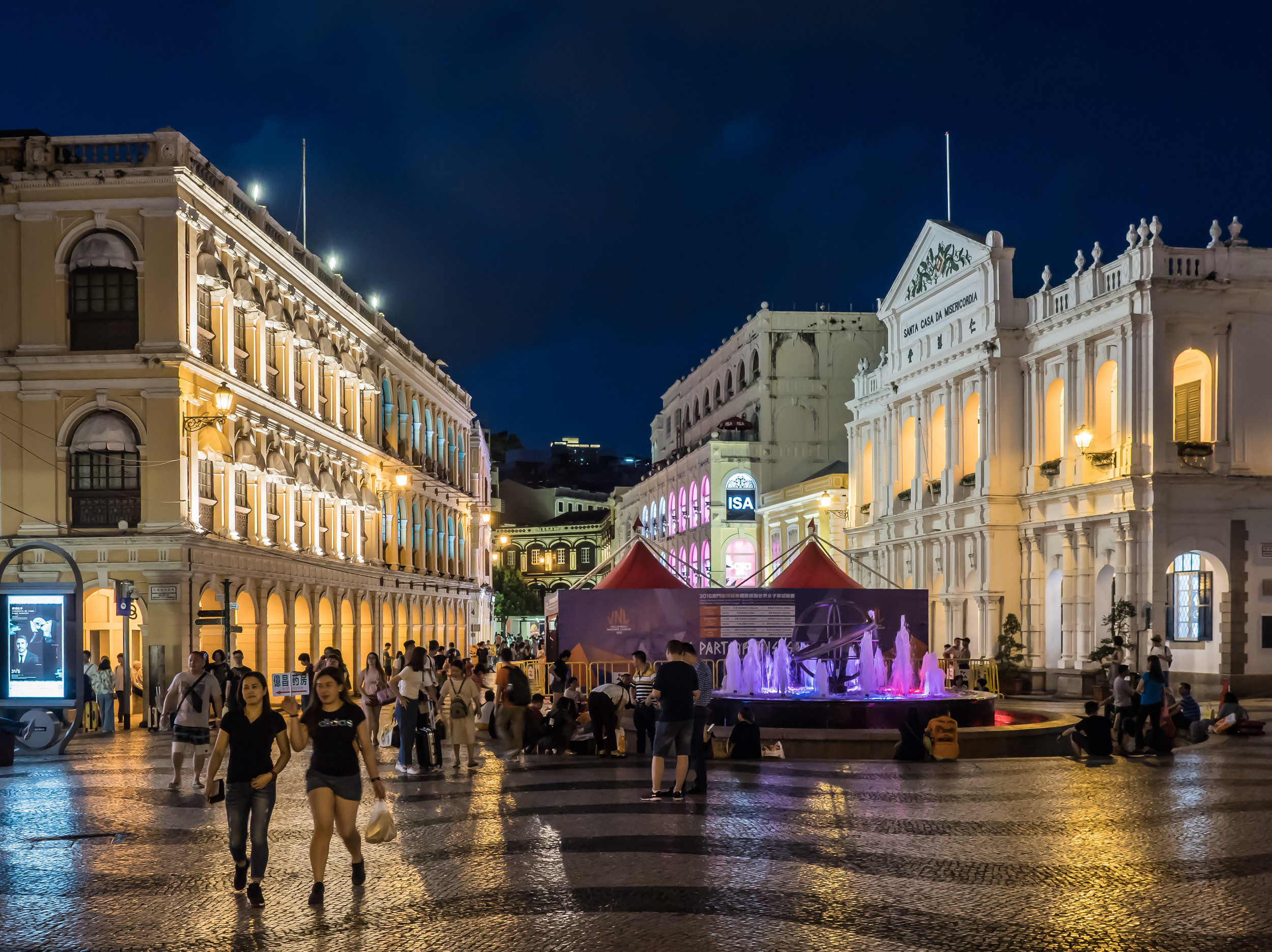
Flair
What looks like it could be in the Venetian with its fake blue sky is actually the Largo Do Senado square, the main pedestrian area of Macau.
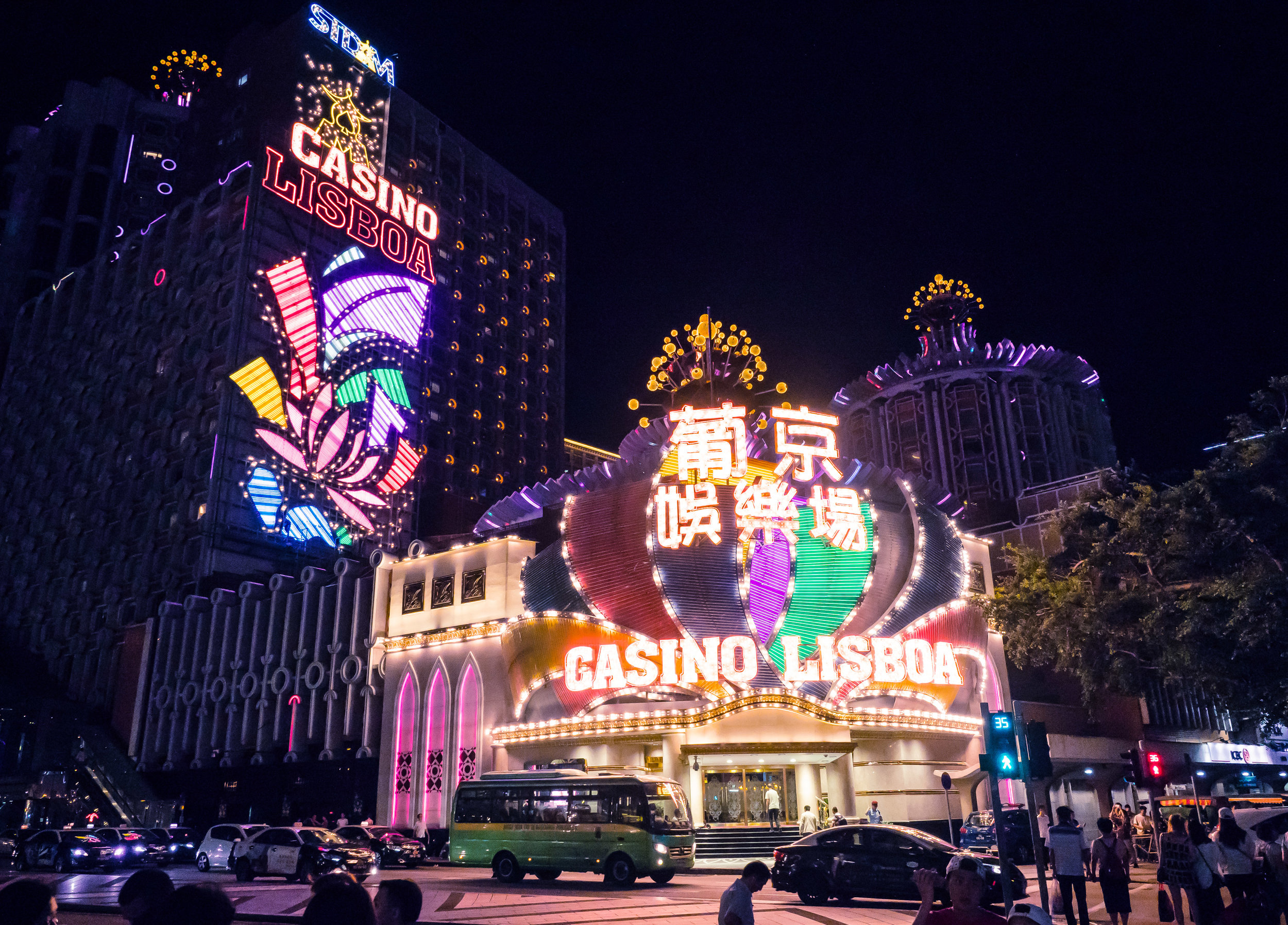
Casinos
The city is now often referred to as the gambling capital of the world.
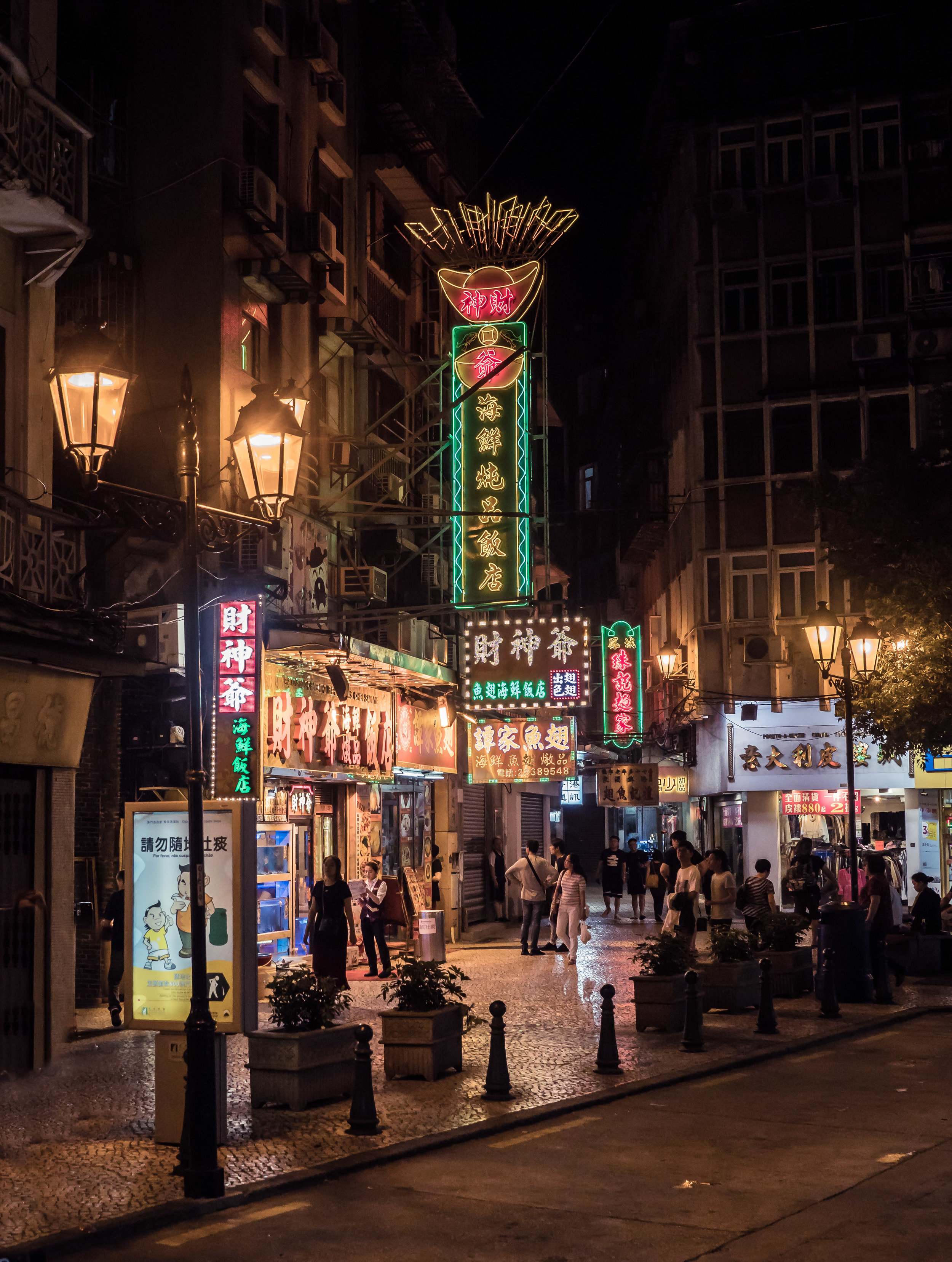
Nightlights
The traditional European street lights created a unique flair when walking Macau's old city roads at night.

Black Swan
Spotted in the Giant Panda Pavllion park area.
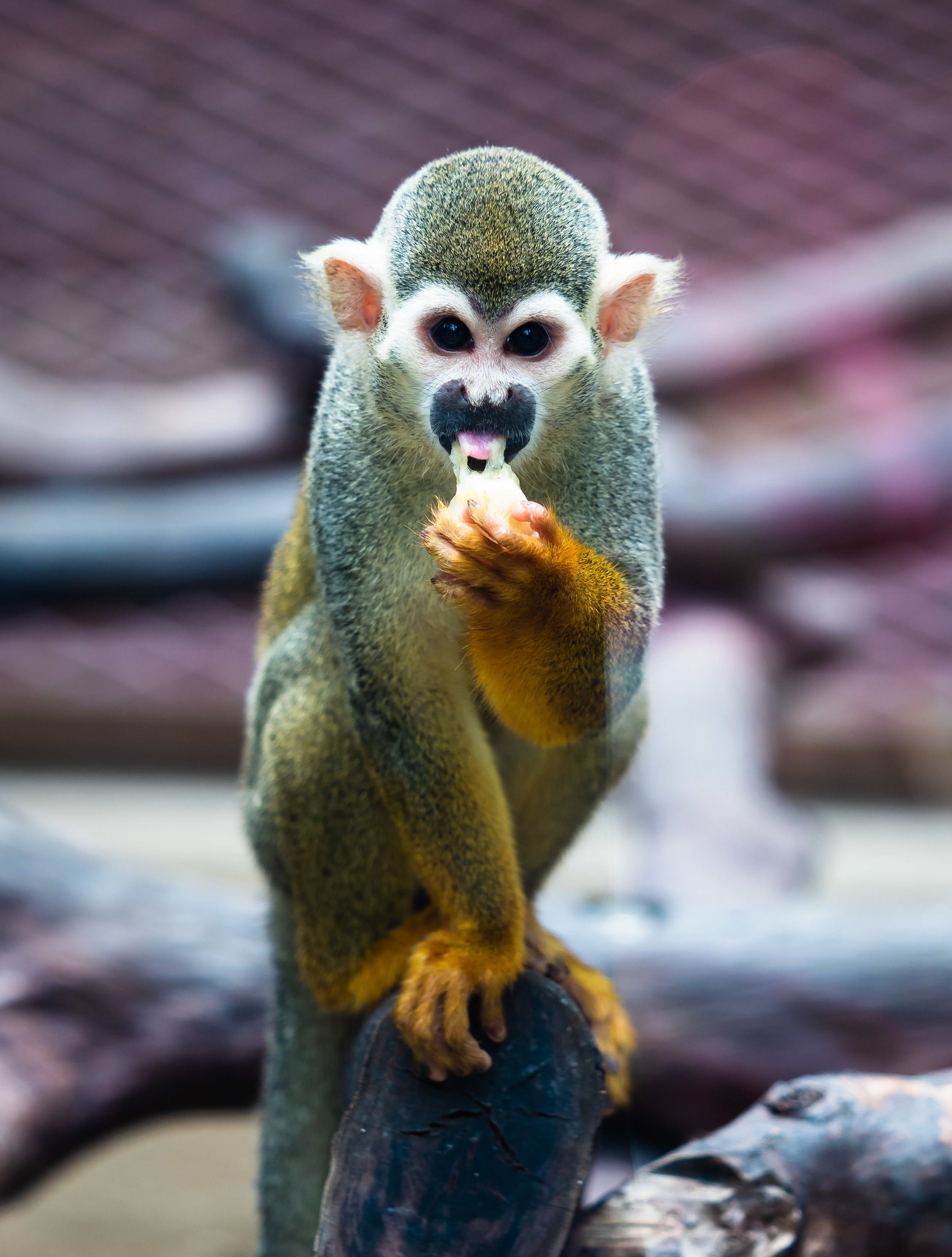
Monkey Business
Part of the Giant Panda park are also a few other animal enclosures, which can be seen free of charge.

The Giant Panda
Macau's Giant Panda Pavillion, home to four of these amazing bears, costs just over 1$ to visit.

Meal Time
Since the Pandas were in siesta mode when we came to the Pavillion the first time, we decided to go back after their lunch was served. Unsurprisingly they were way more active then, munching on part of their 20kg per day bamboo intake.
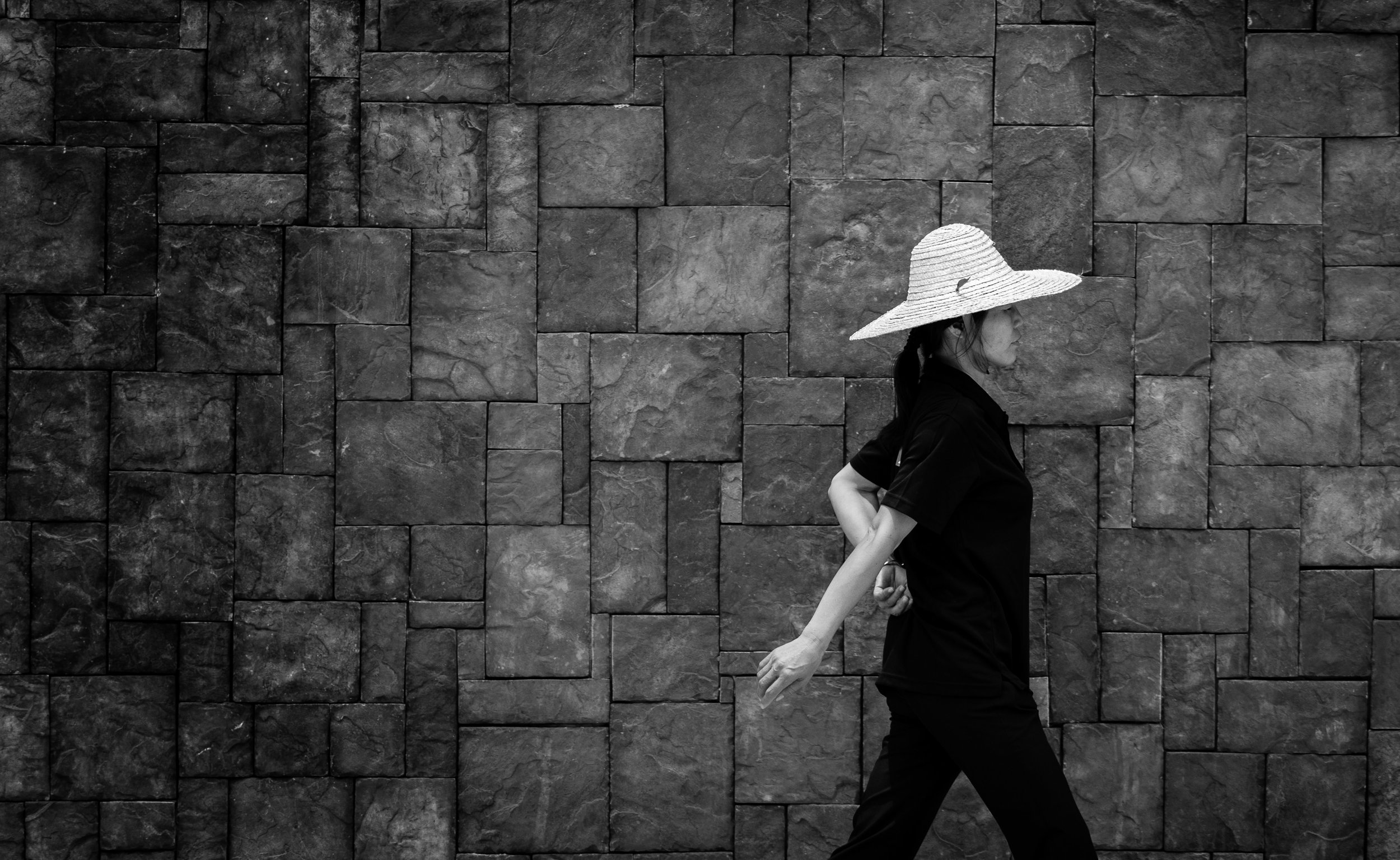
Shade
Many Asians wear sunhats to prevent their skin from getting tanned. While this may be because it is more in line with the traditional perception of beauty in China or Korea for example, it also reduces the risk of skin cancer, which is far less common in Asia compared to Western countries.
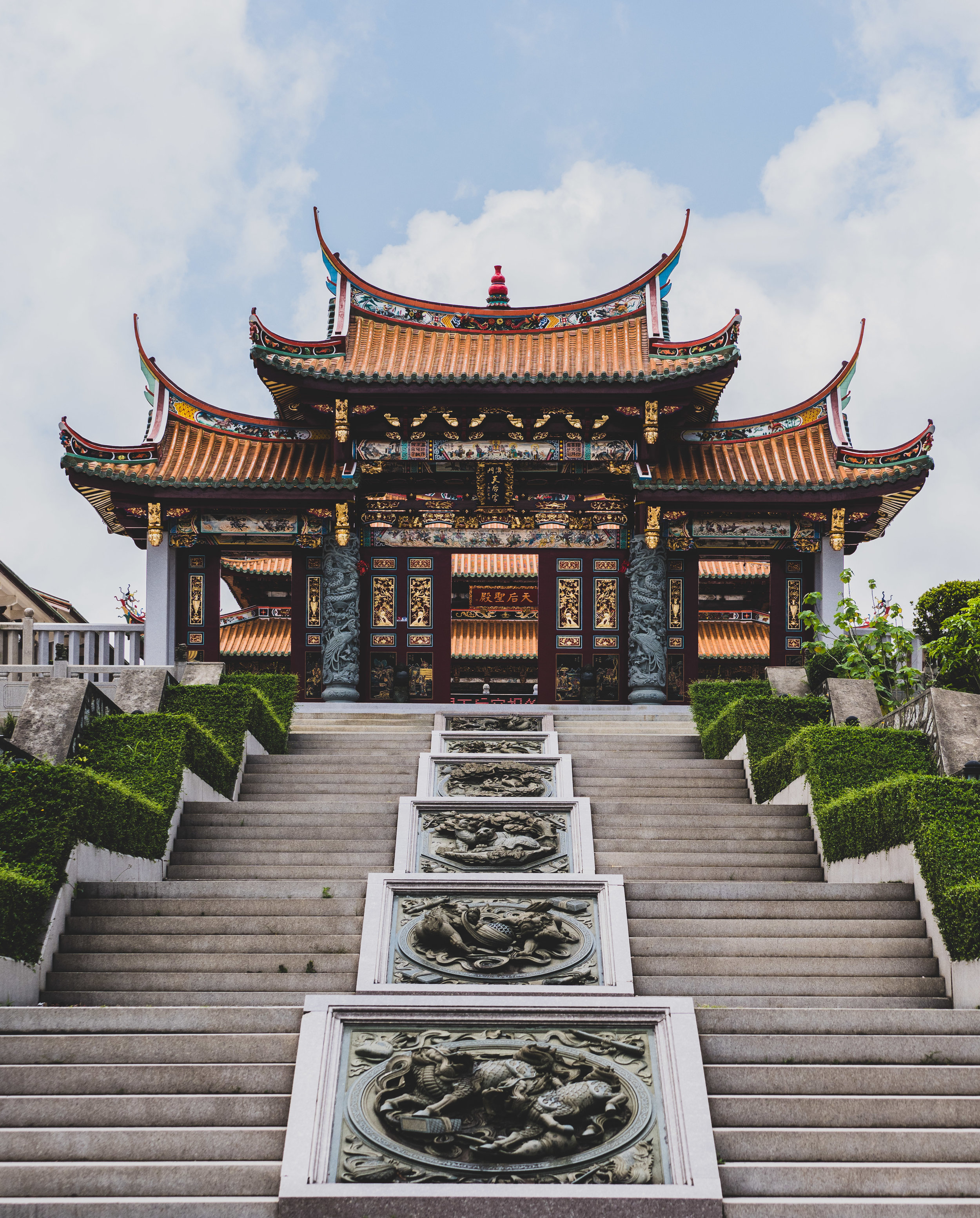
A-Ma Cultural Village
A short ride up the hill from the Panda Pavillion lies the beautiful temple of Tin Hau.
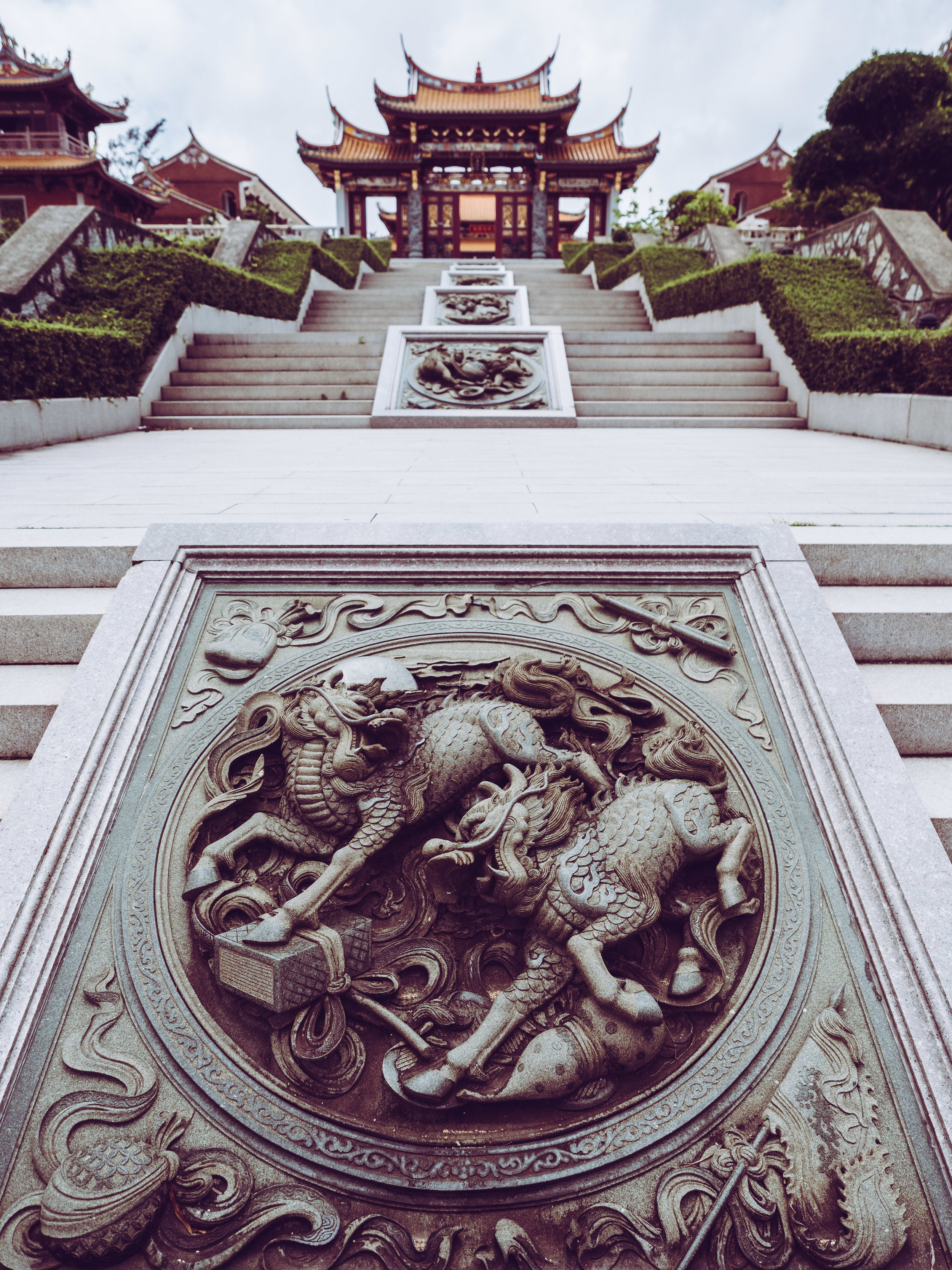
Stone Works
I a saw a similar photo in the breakfast room of the Sofitel, which was reason enough to go and explore the temple. Worth it for sure.
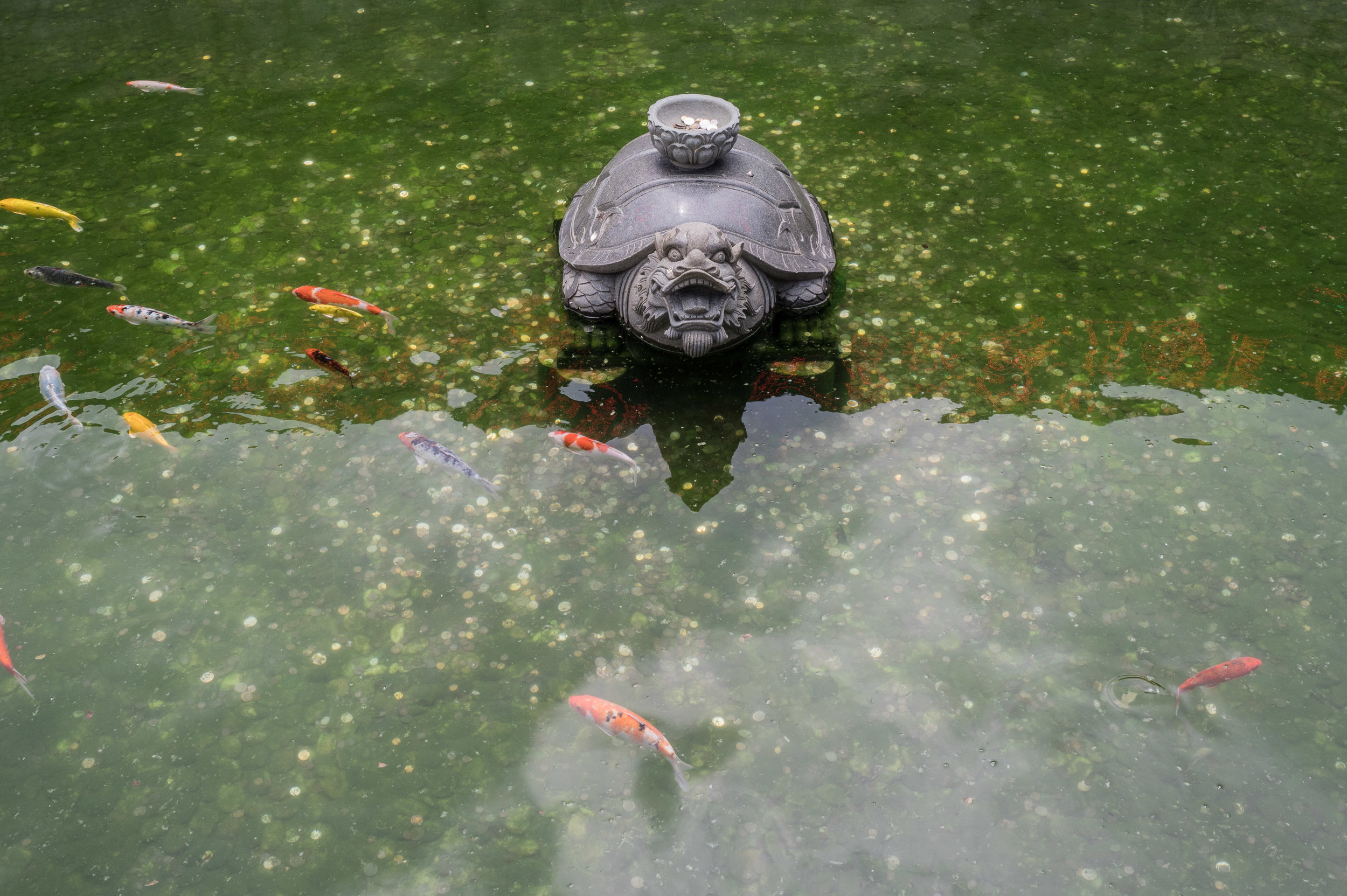
Lucky Dragon Turtle
Throw a coin into the bowl of the shell of this strange animal for good luck. Or hit a goldfish.
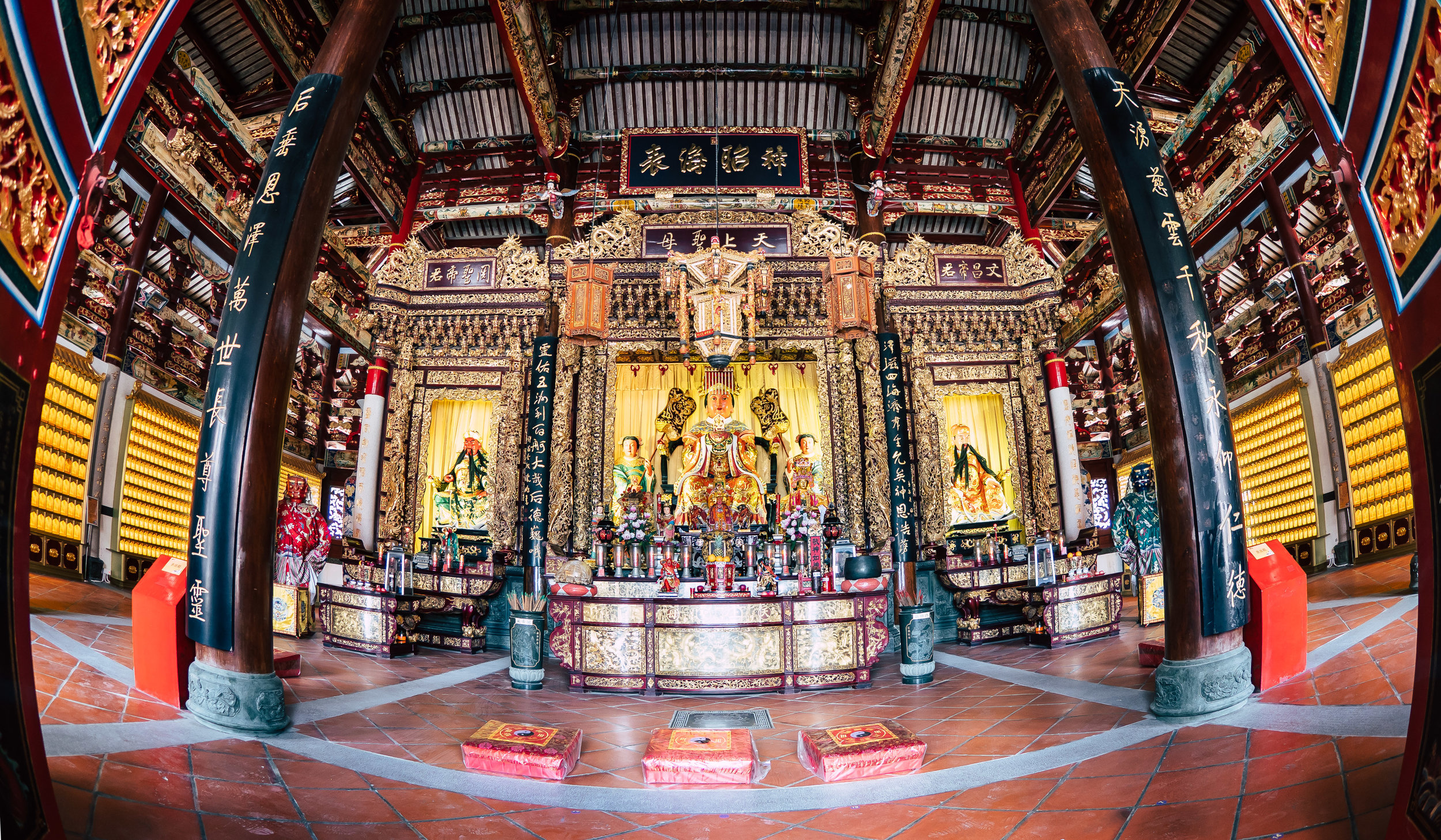
Temple Hall
The interior of the main temple with its Buddha collection on the walls
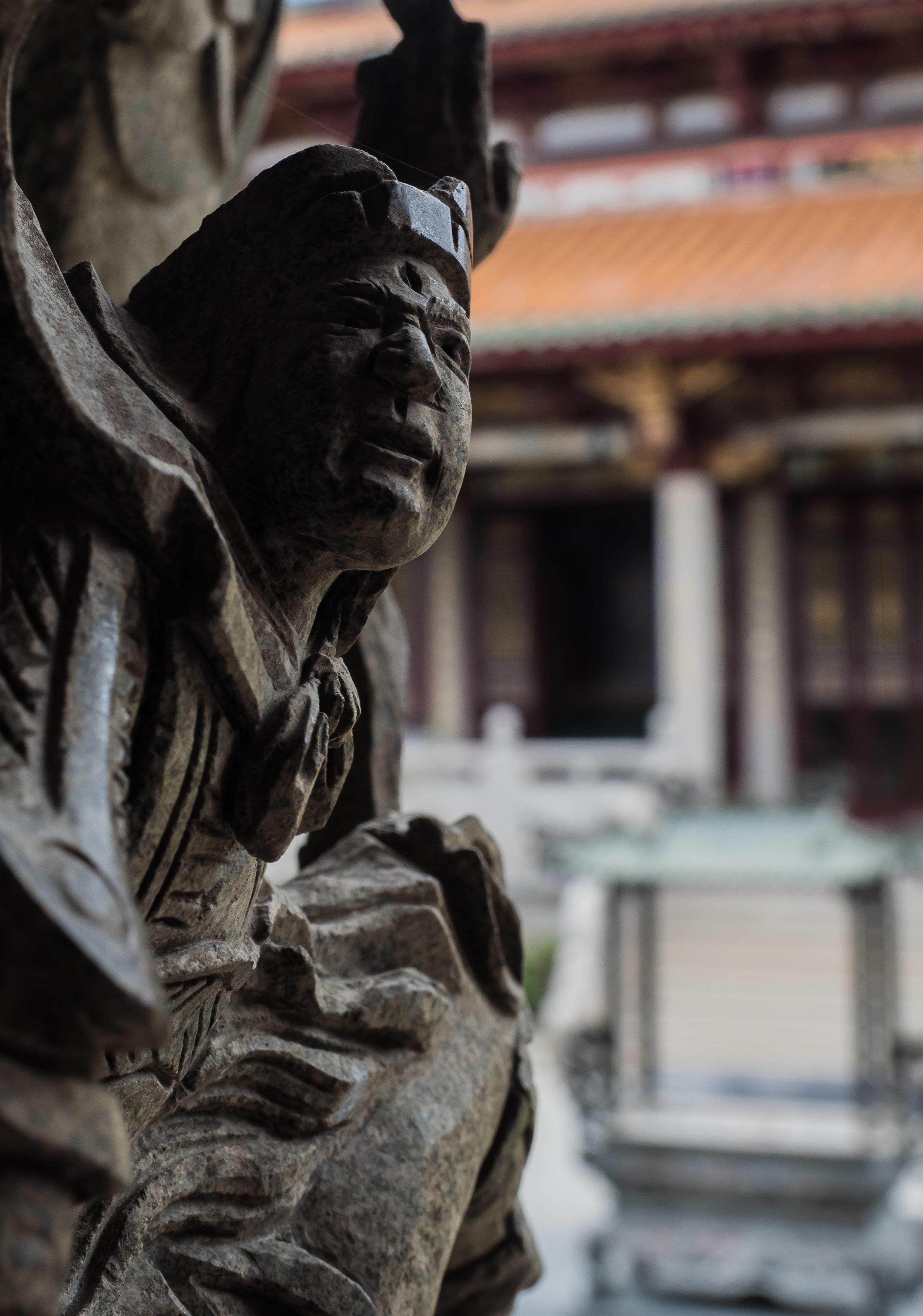
Stone Carvings
Impressive figures carved into the supporting pillars of the temple.

Chips
While the main currency of the region is the Macanese pataca (or short: MOP), you will find this type of money in a lot places as well...
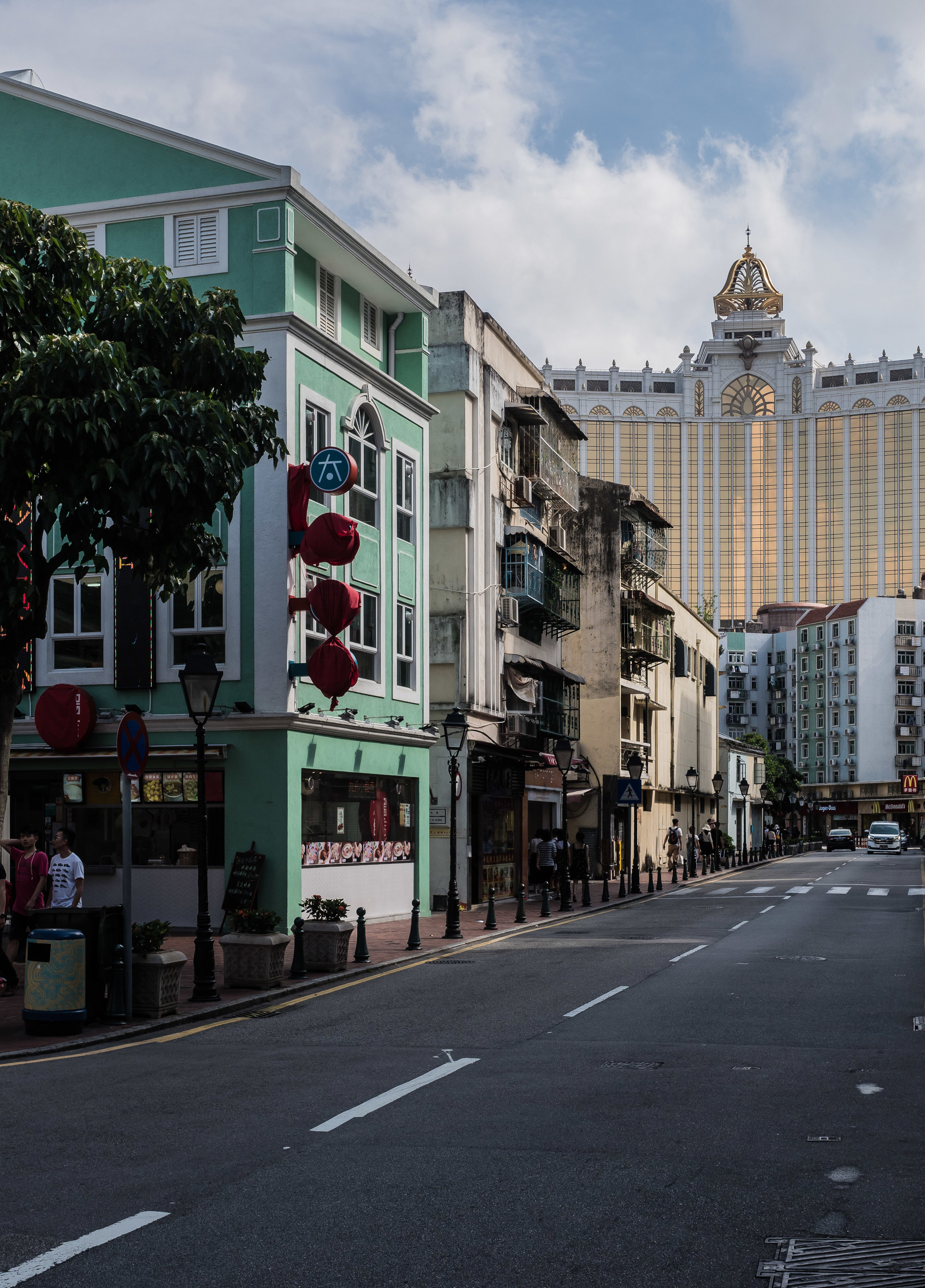
Streets of Taipa
A street of the historical town of Taipa with the Galaxy Macau in the background.

Platform
The view over Cotai - the main casino district - from a nearby viewing platform reachable by almost vertical elevator-style escalator cabins - which are free!

Cotai and Taipa
A panorama over Cotai and the village of Taipa to the right.
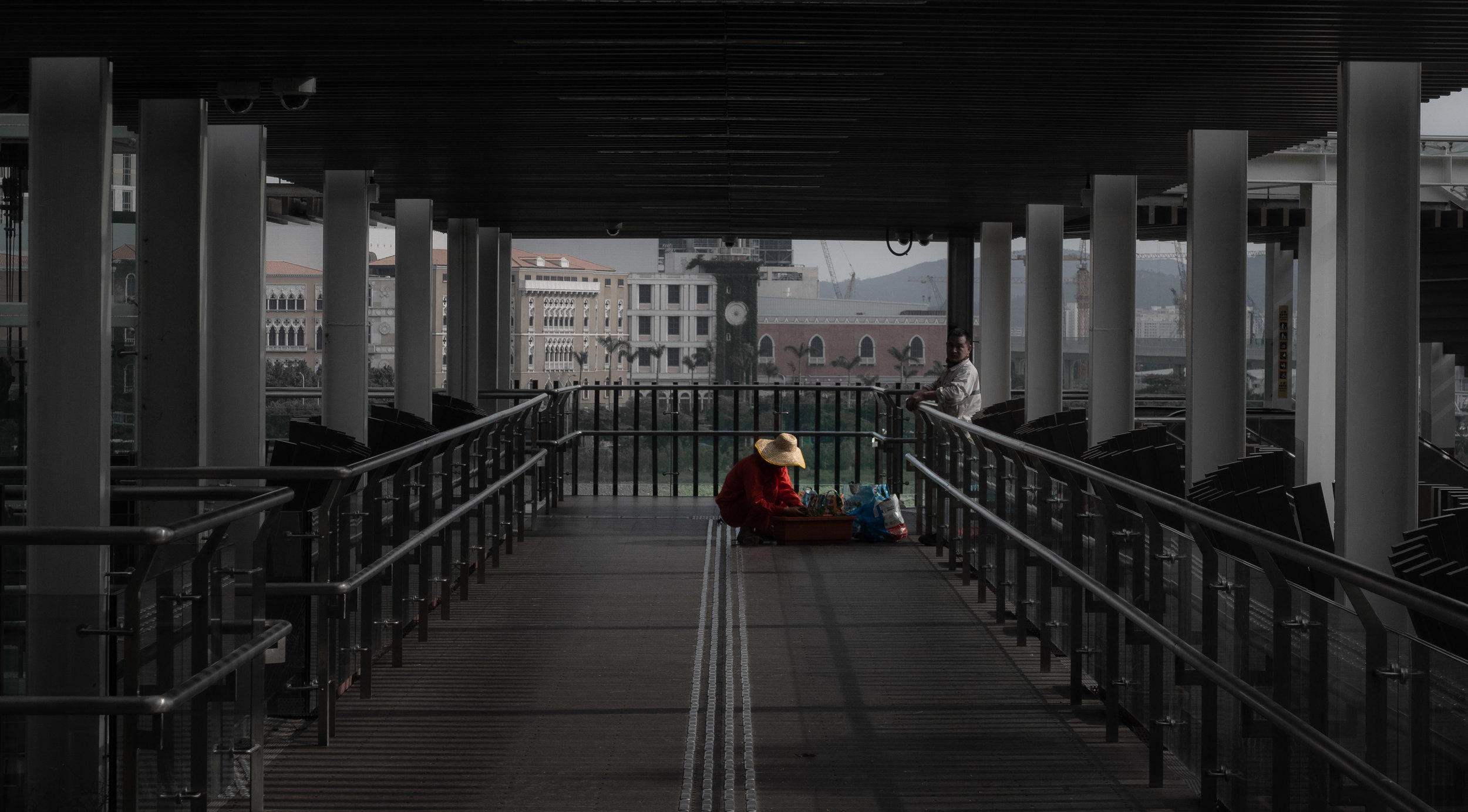
Repair works
Being carried out on this overpass. Macau seemed well maintained.

River Views
Anyone know the function of these red ships?
Hong Kong - China, but not really
It was finally time to visit more of Asia, which I still haven't explored enough. Hong Kong seemed like a good starting point as any, with the former British territory now officially being a Special Administrative Region of the People's Republic of China. The city didn't disappoint, with its unique urban character and plenty of opportunities for photography.

It was finally time to visit more of Asia, which I still haven't explored enough. Hong Kong seemed like a good starting point as any, with the former British territory now officially being a Special Administrative Region of the People's Republic of China. The city didn't disappoint, with its unique urban character and plenty of opportunities for photography.
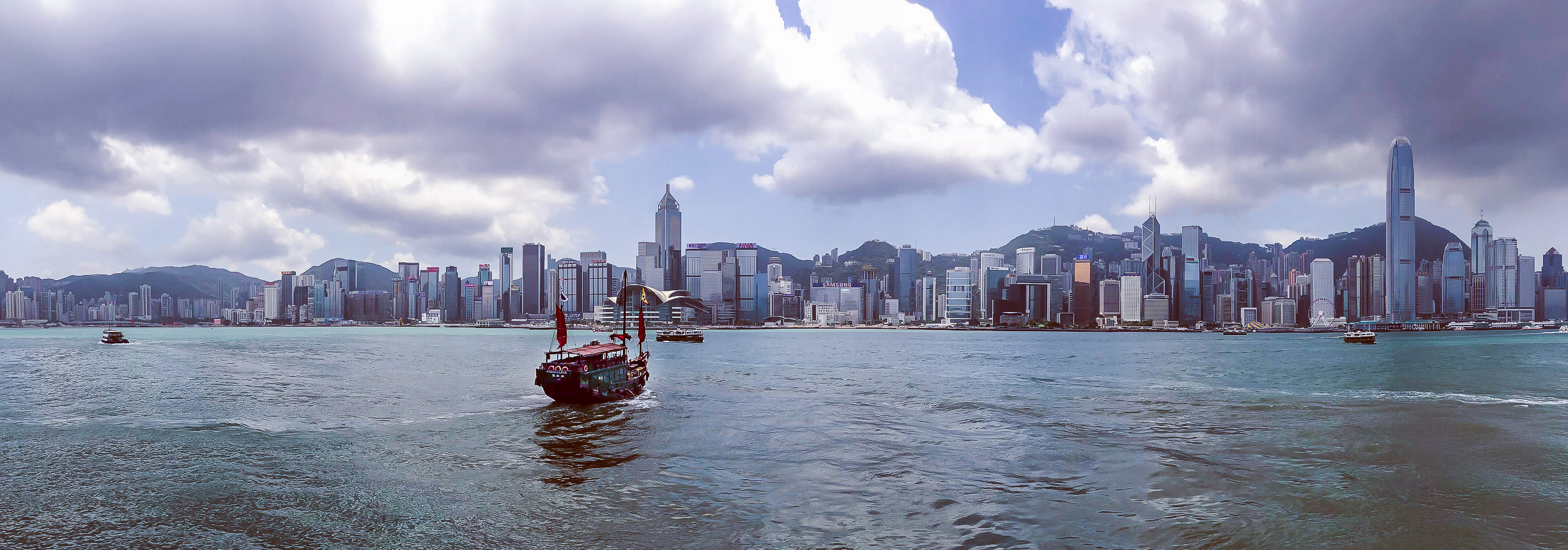
Hong Kong Island
Being a bit of skyscraper geek, the skyline was definitely my favourite part of the city, with its unique blend of sea, highrises and hillsides.
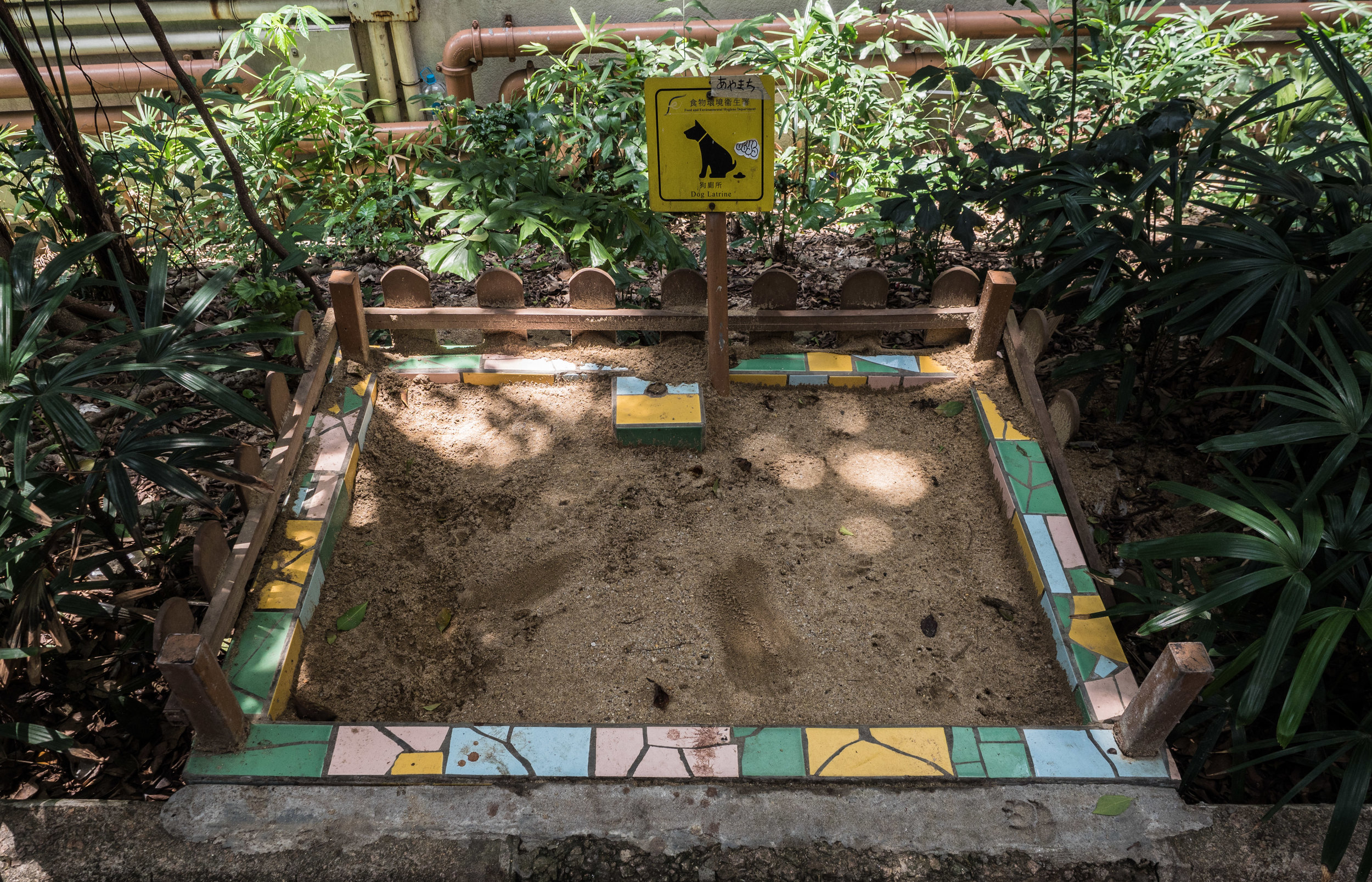
Dog Toilet
A very common sight in Hong Kong in an effort to keep the city clean.
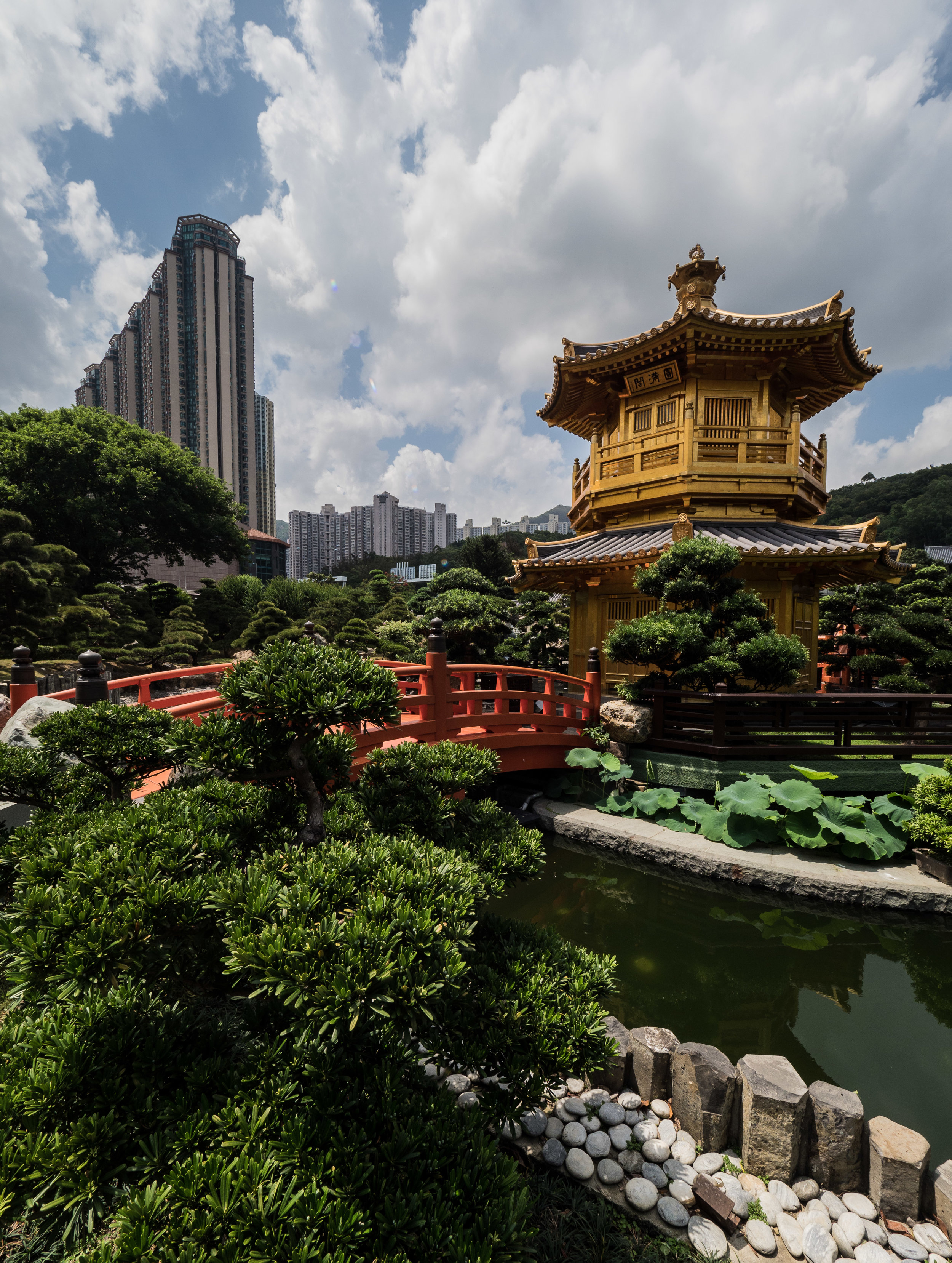
Nan Lian Garden
The city has a few nice gardens, the most beautiful one I got to see is the Nan Lian Garden, just next to the Chi Lin Nunnery.
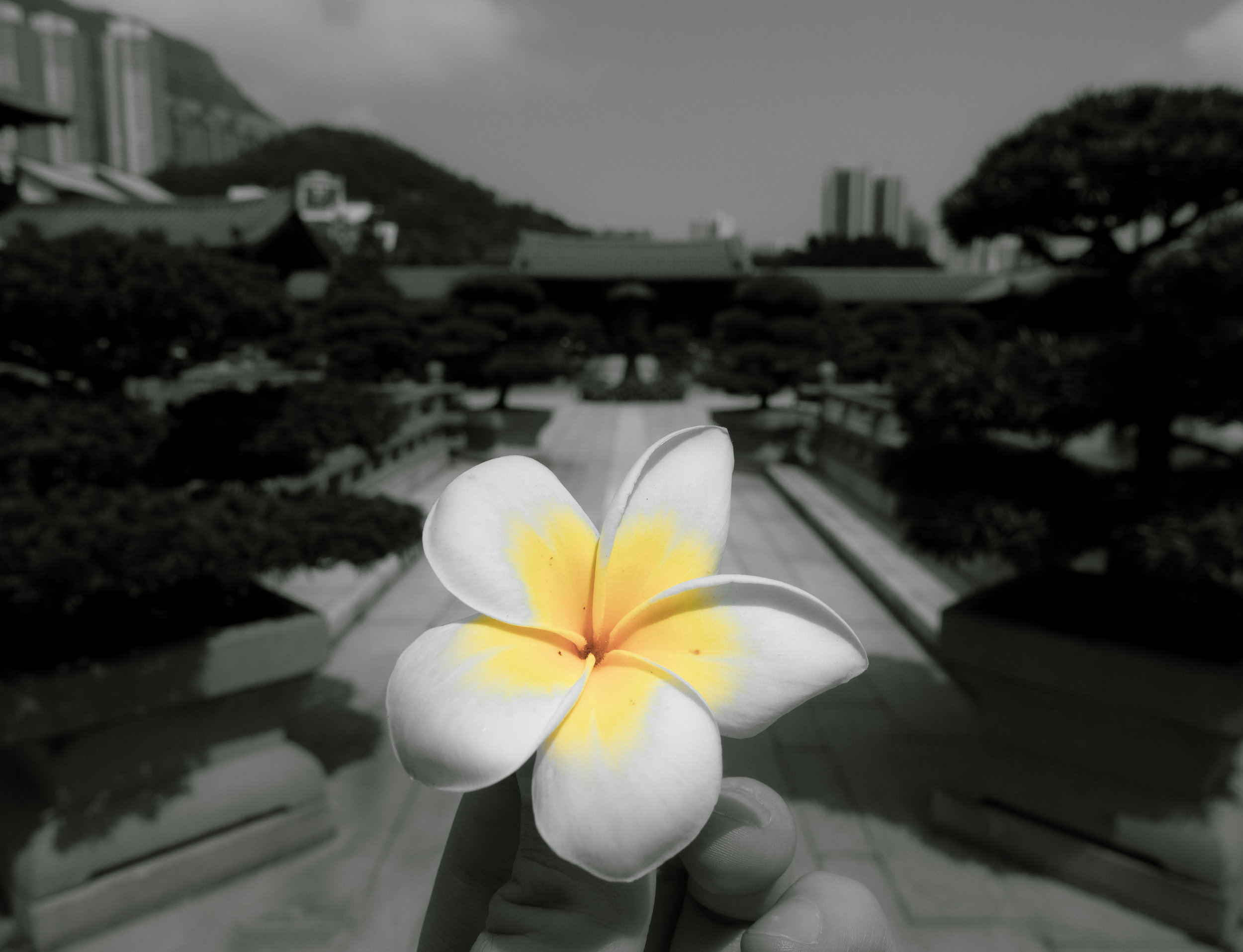
Chi Lin Nunnery
The Tang dynasty architecture style temple with its flower gardens is worth a visit.
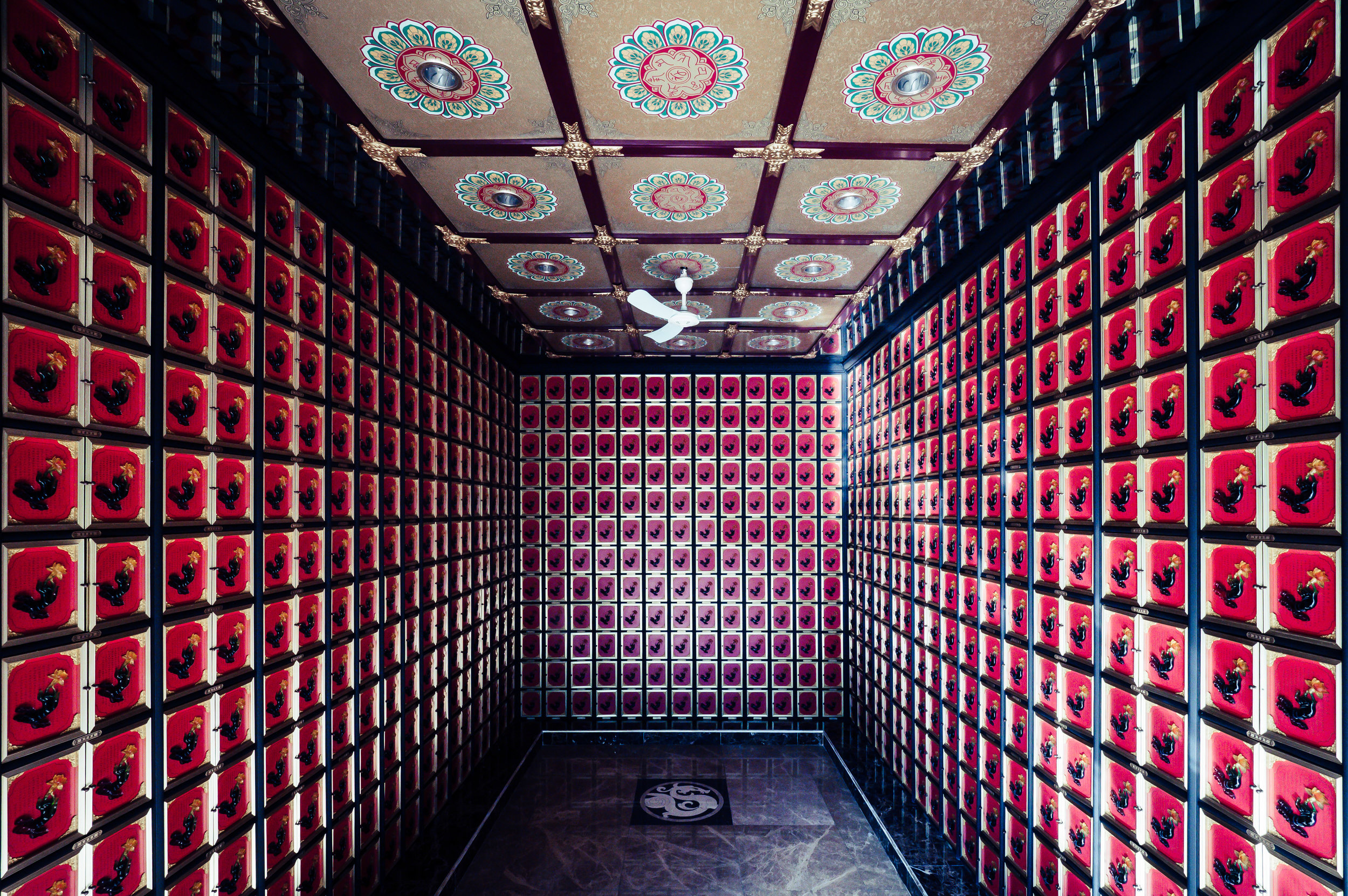
Ten Thousand Buddhas Temple
The actual number is a bit higher, or so they say.
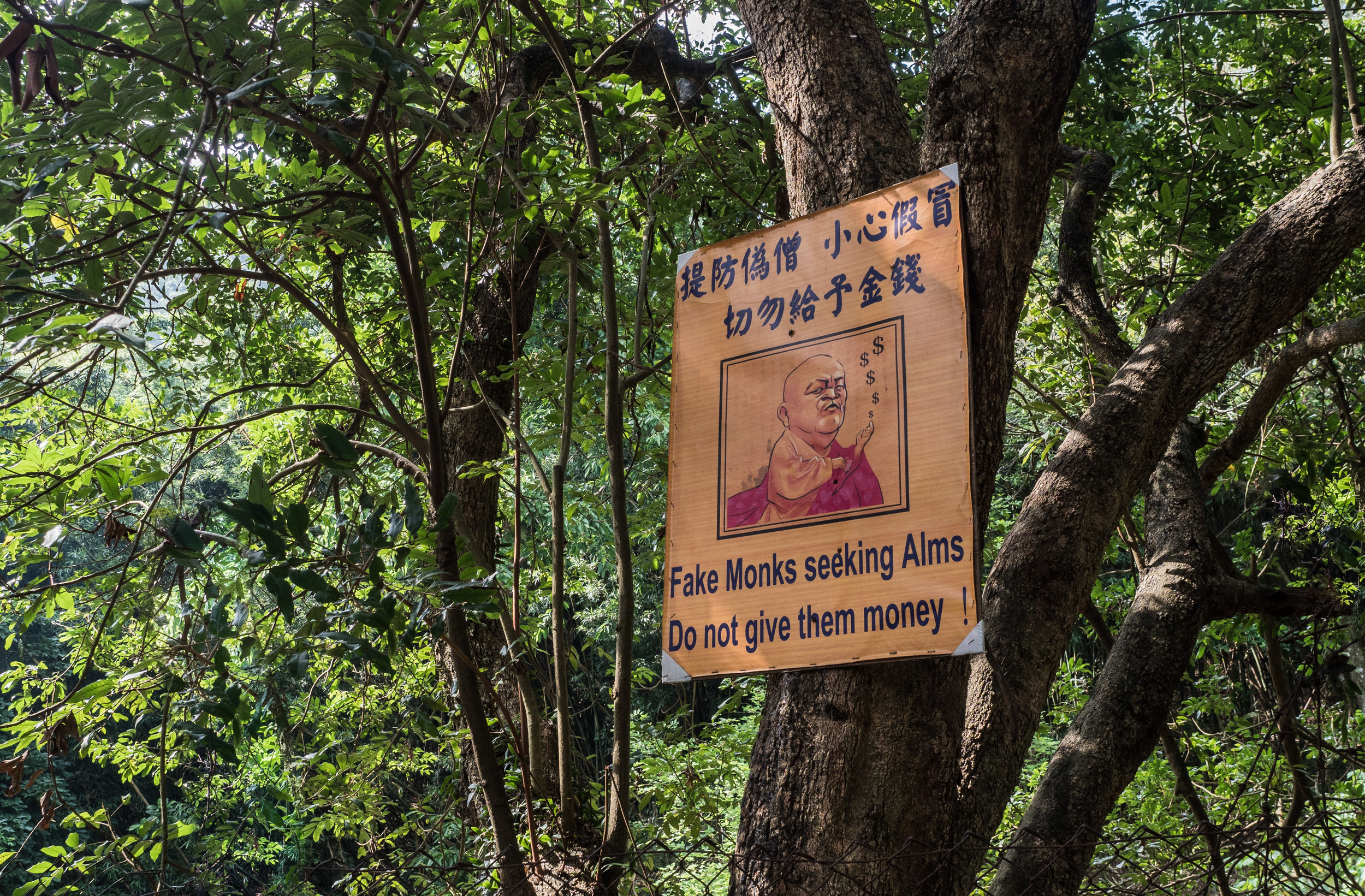
Guess...
.. who gave them money?
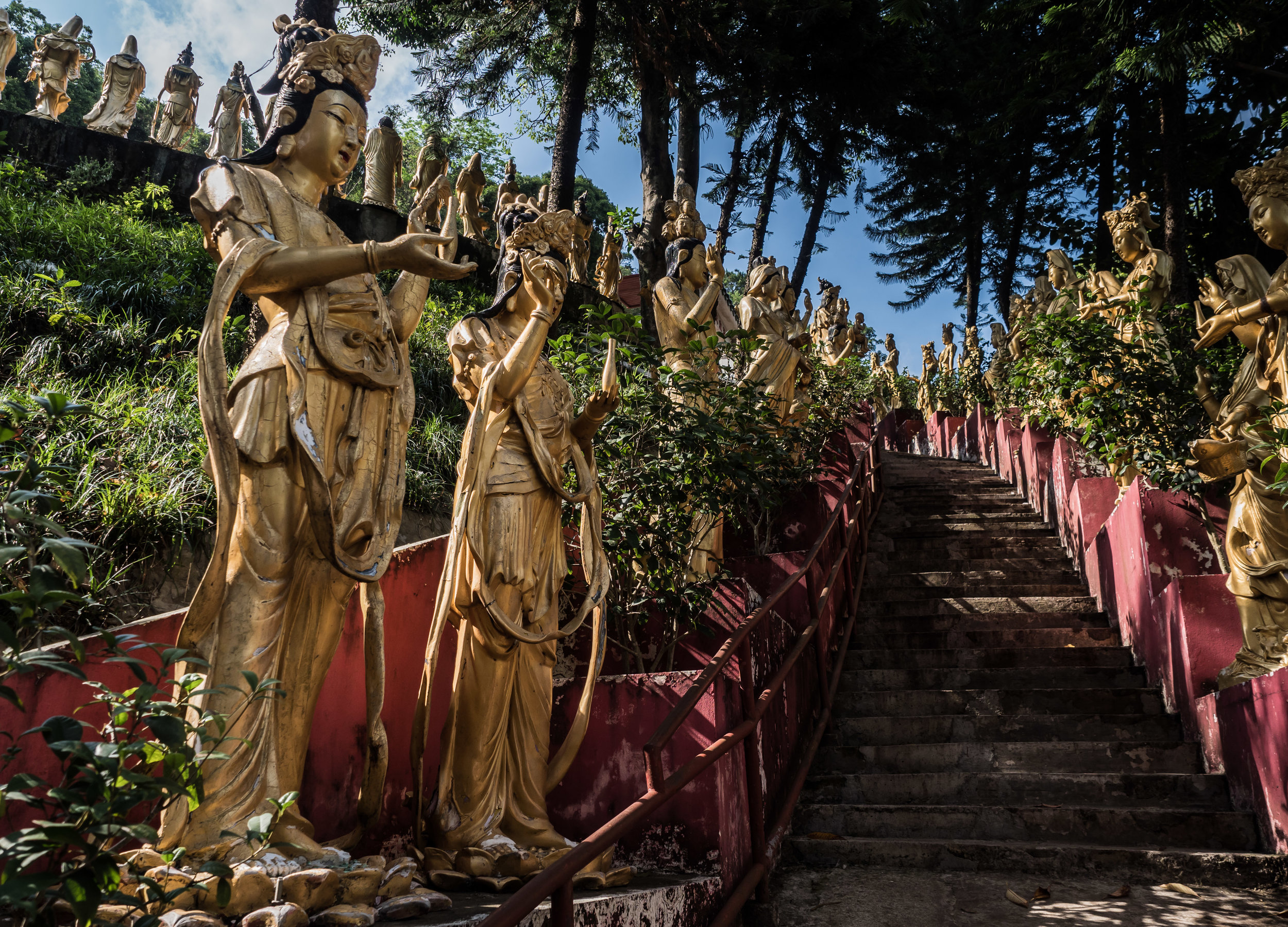
The Arhats
The status on the stairs up to the monastery.
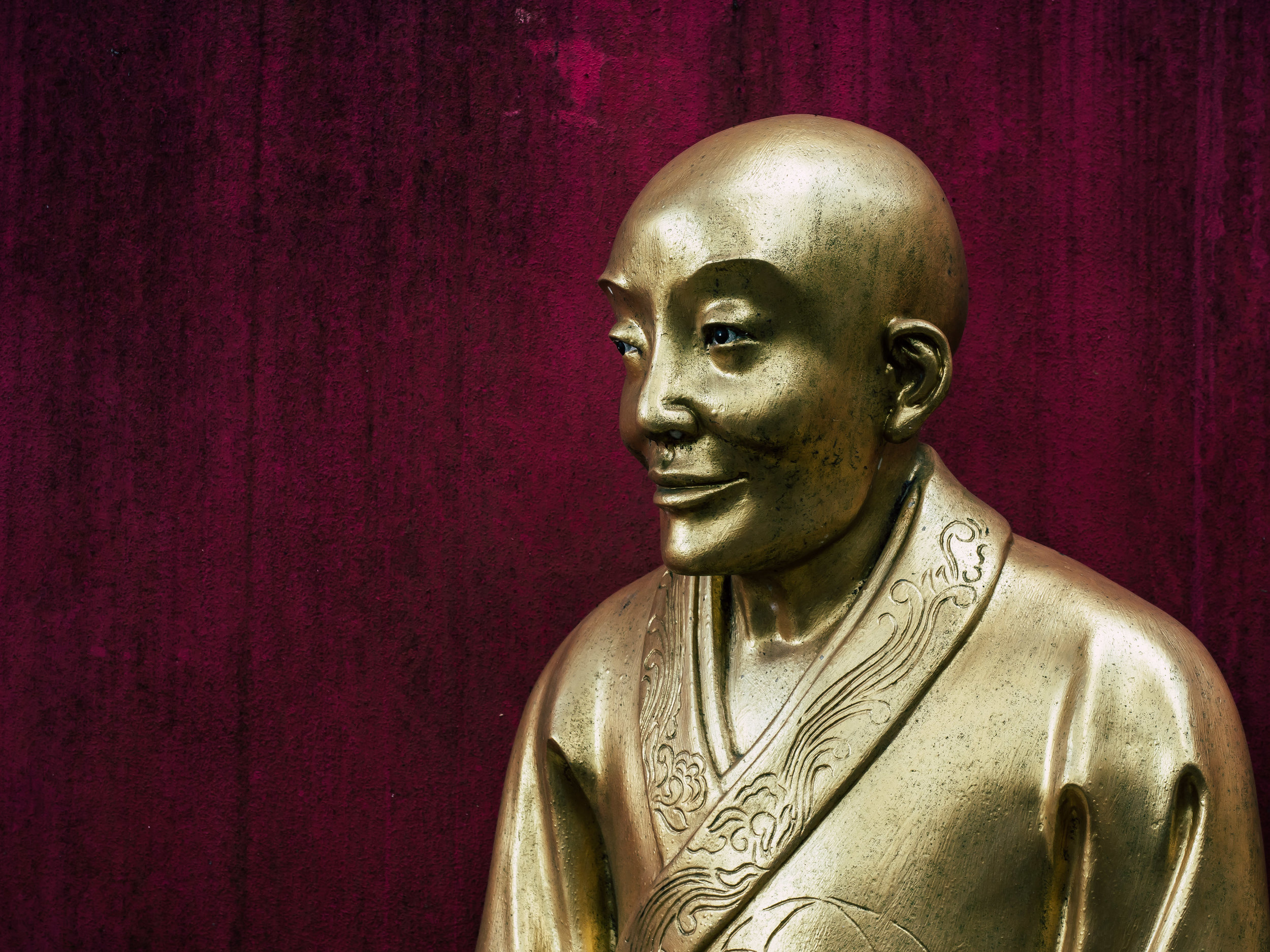
Faces
Each statue has different features with unique facial expressions.
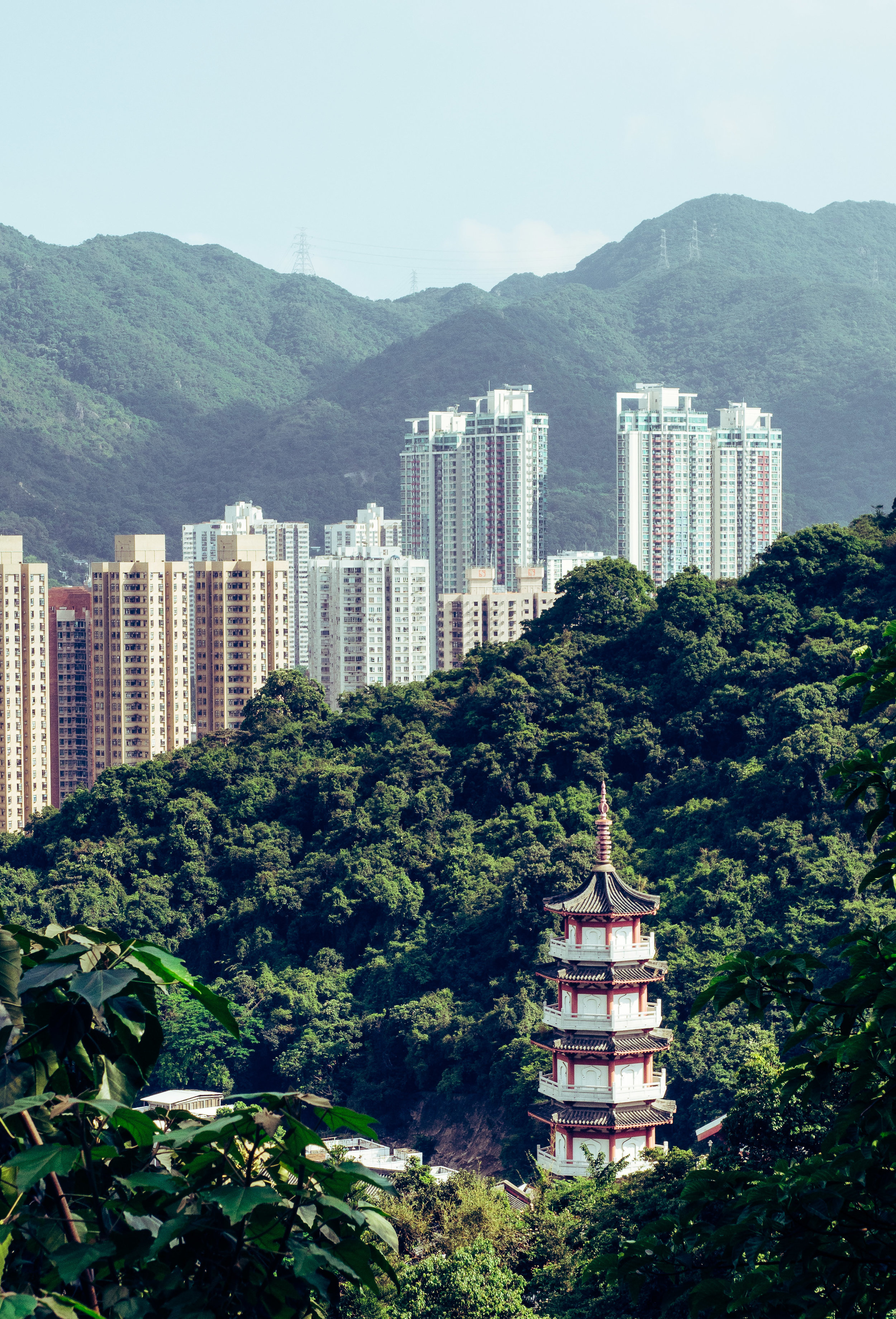
Mountain Views
The temple is located north of Lion Rock, with a view over the mountains.

Contrasts
The greenery and hilly landscape makes the skyline's density extra special.
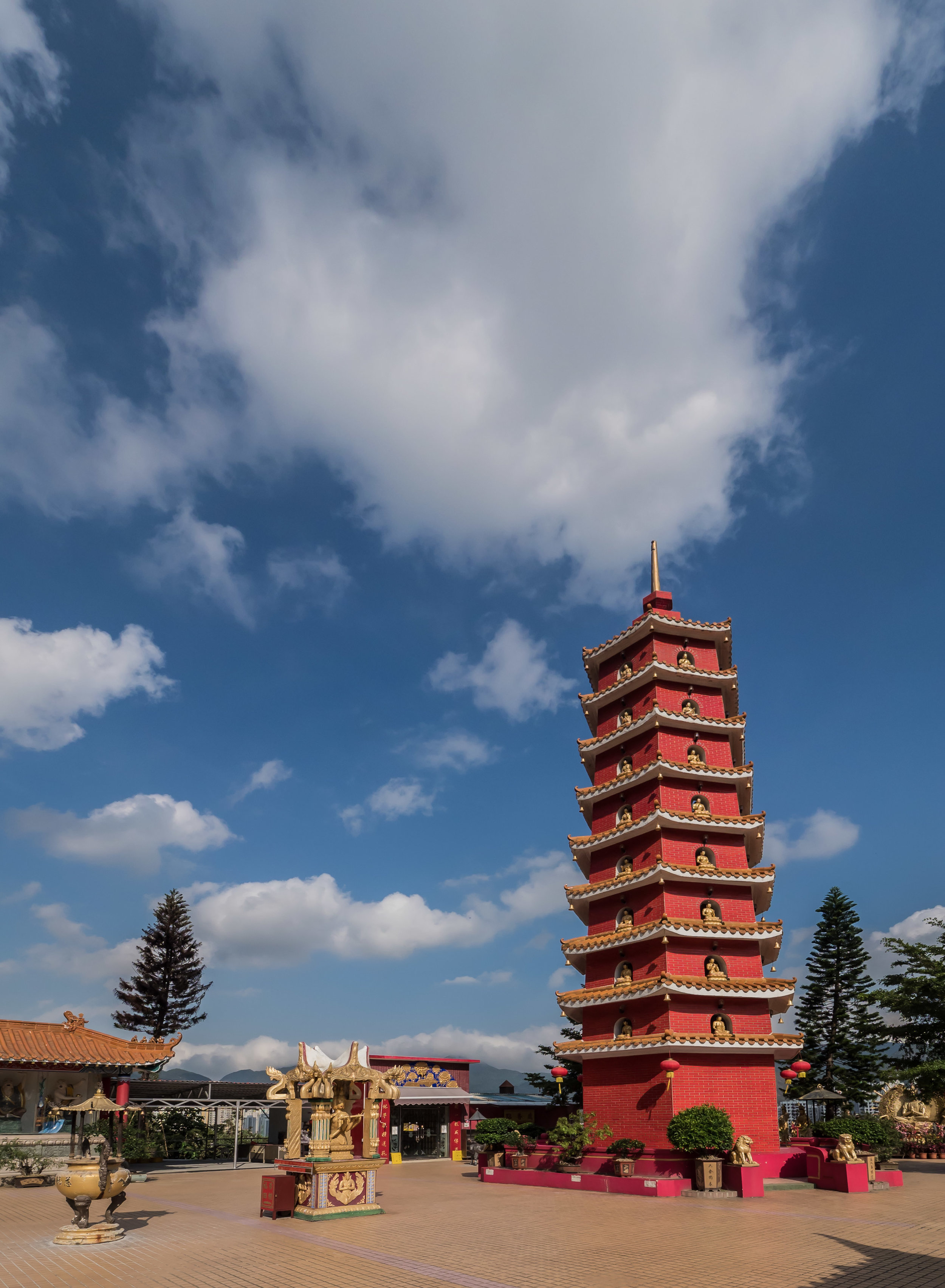
The Pagoda
The monastery - which doesn't actually house monks - opened in 1957.
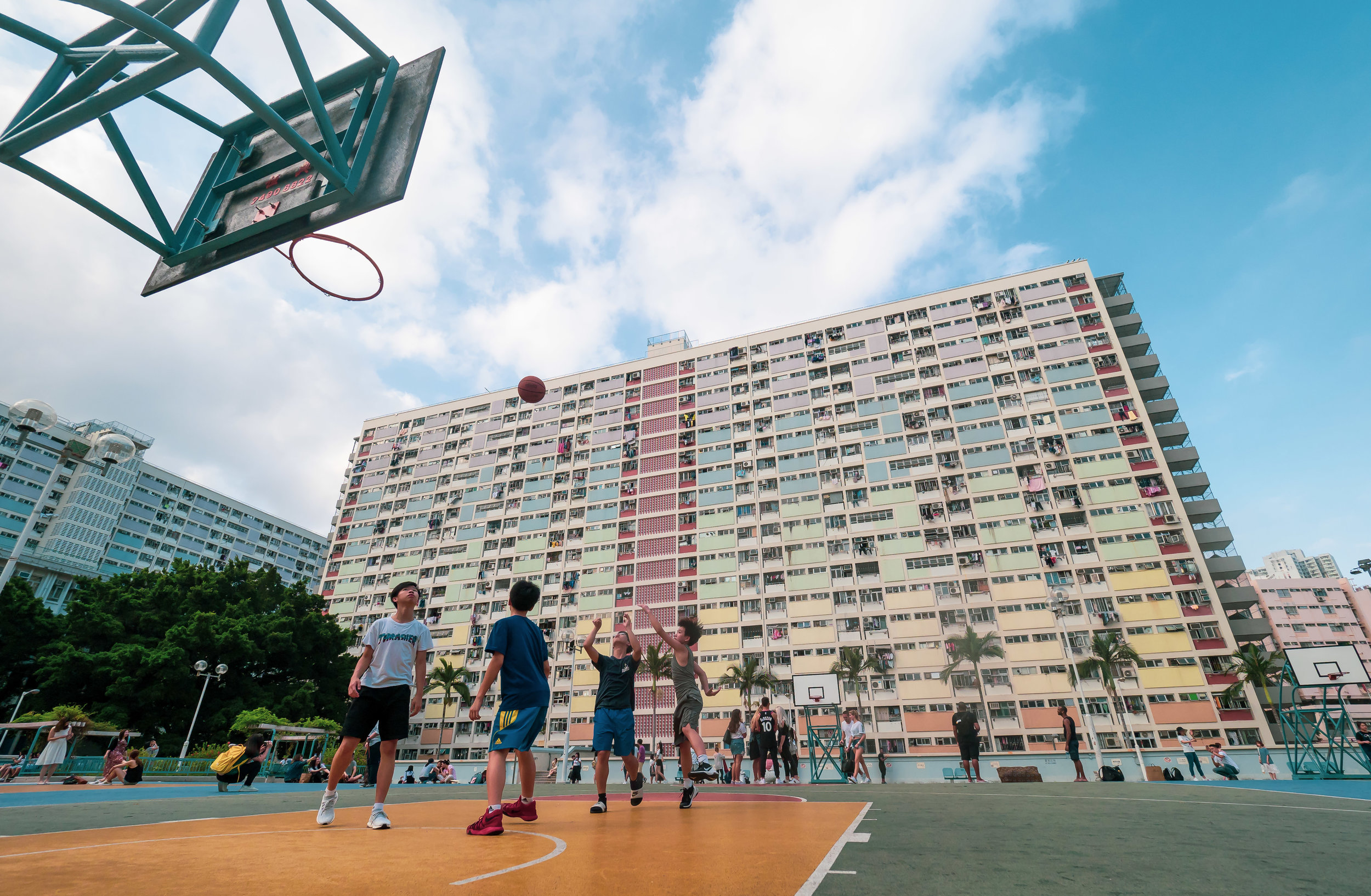
Choi Hung Estate
The basketball court in front of the coloured building facade is one of Hong Kong's most famous Instagram locations - and it shows with dozens of tourists up there on this weekend day. I chose to go with a slightly different shot, capturing the residents, but you can see the selfie action in the background.
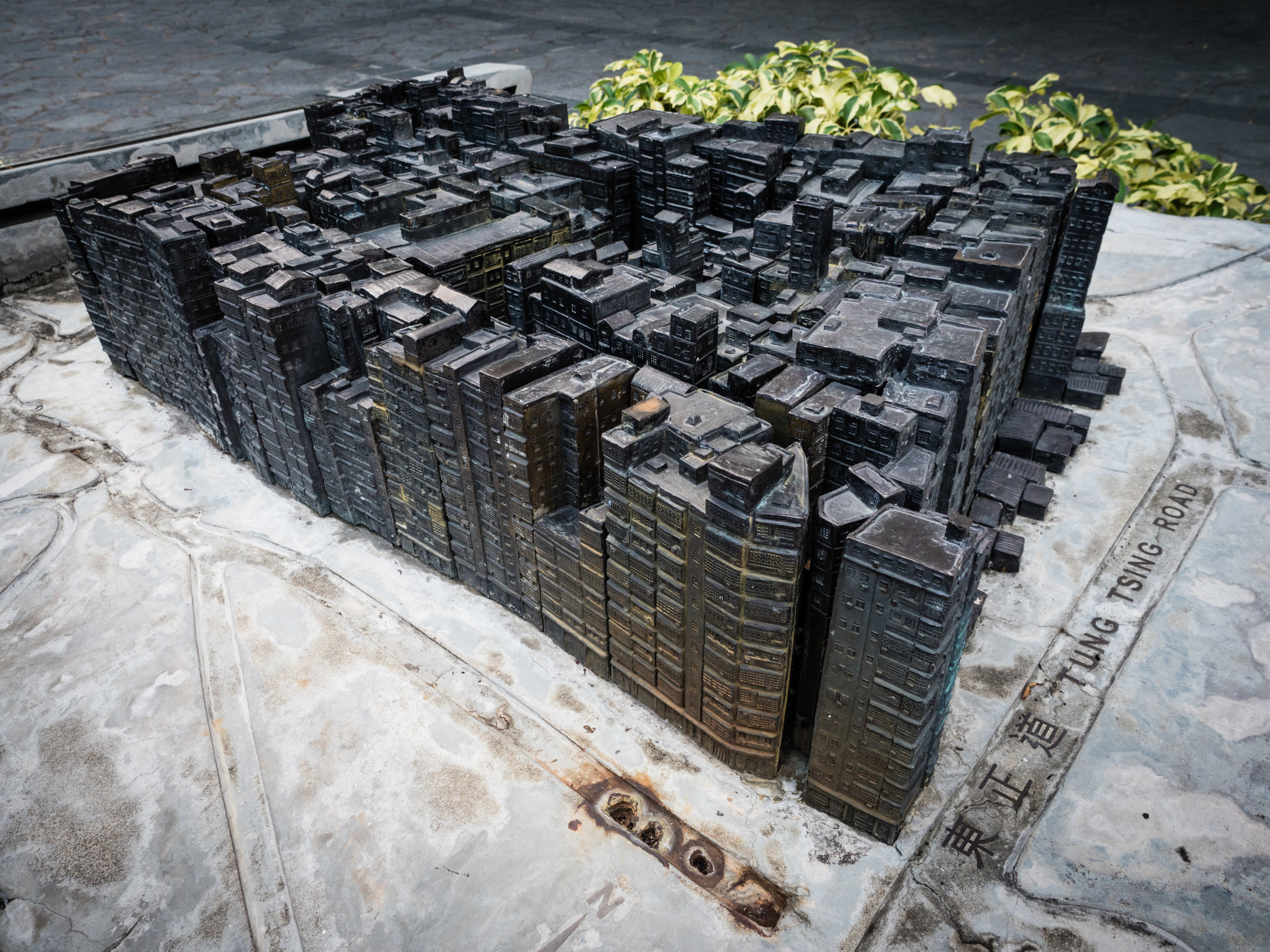
Kowloon Walled City
One of the lesser known stories of Hong Kong. This part of the city became a largey ungoverend enclave in the late 1800s, with the population (and the buildings) rising to 50000 by the 1990s. With a lack of municipal control and high crime rates, the district basically governed itself through organised syndicates.
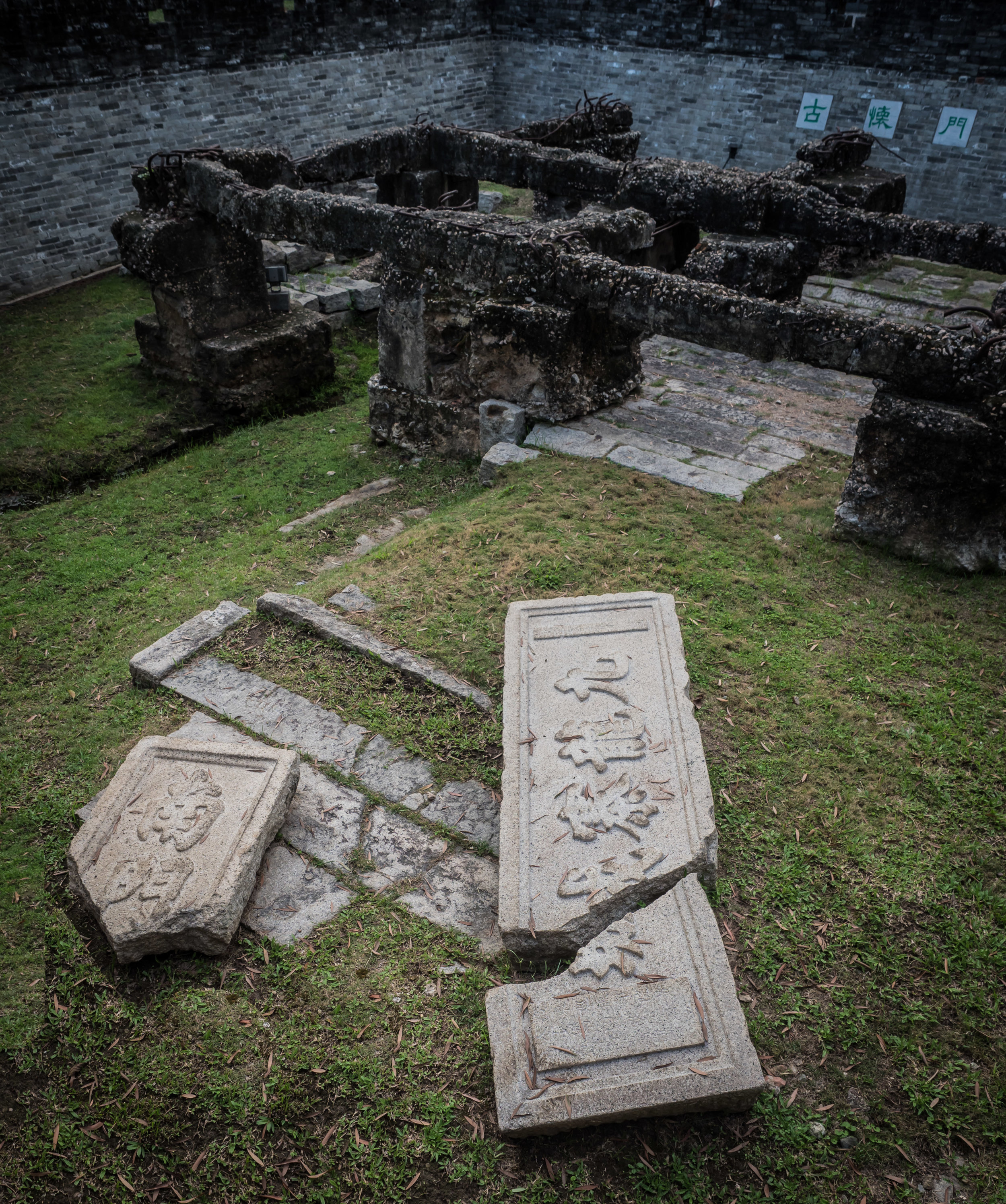
Remnants
Not much is left today - the area has been converted into a park after the city was demolished in the early 1990s, with only a few monuments reminding visitors of what once stood here.
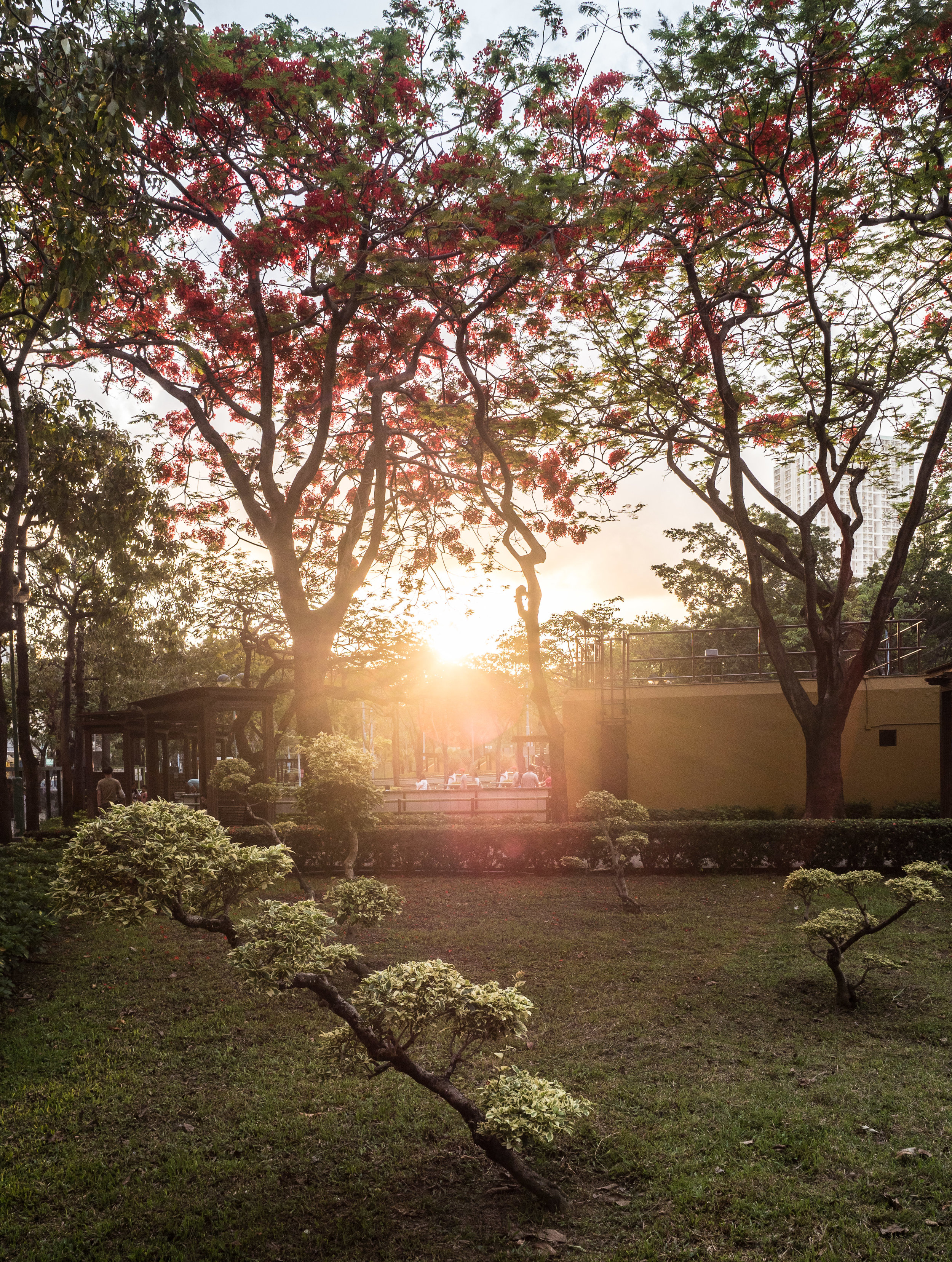
Greener Pastures
The Walled City park is now filled with greenery.
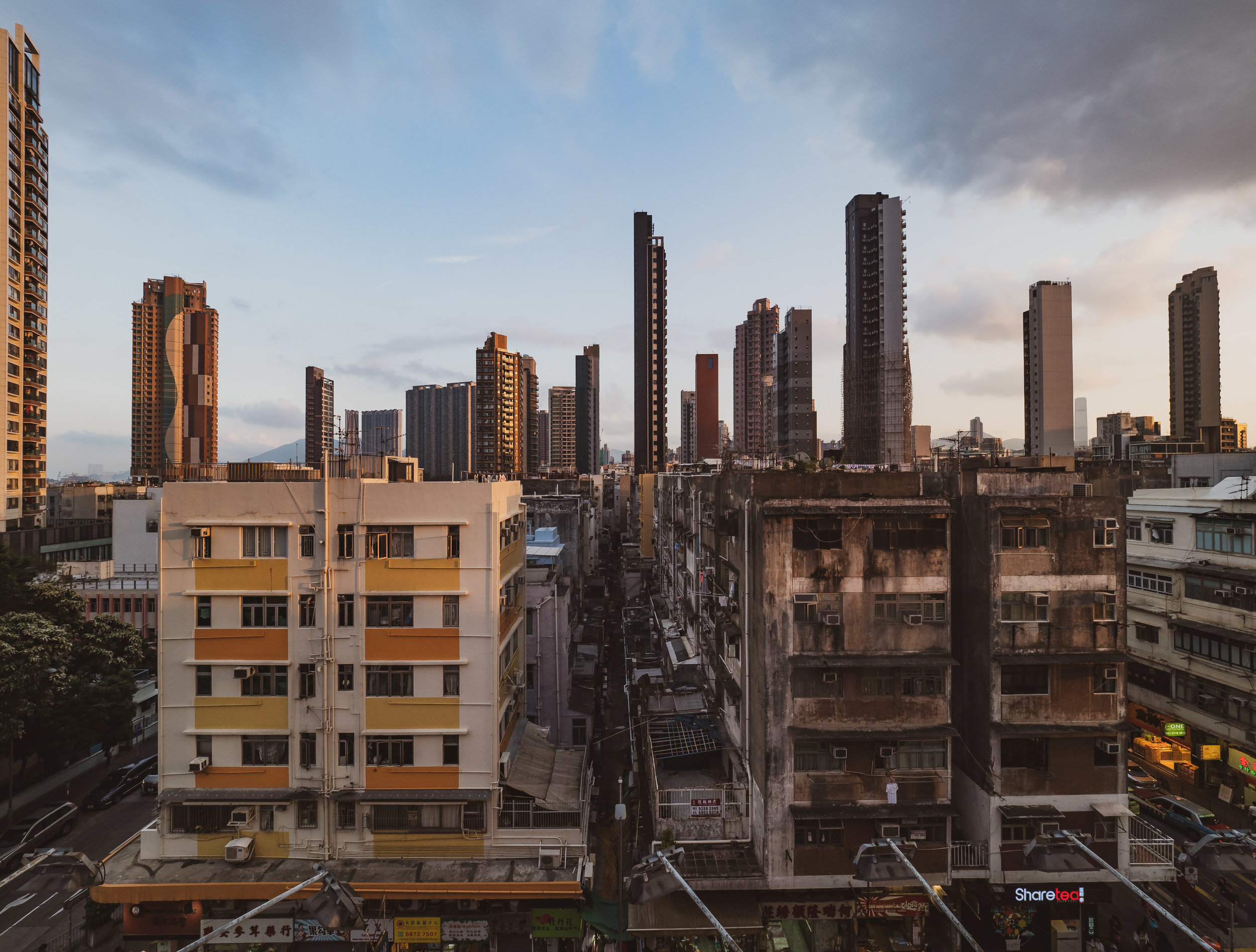
City Views
The residential high rise architecture style of Kowloon is characterised by slim buildings optimised to house as many units as possible.
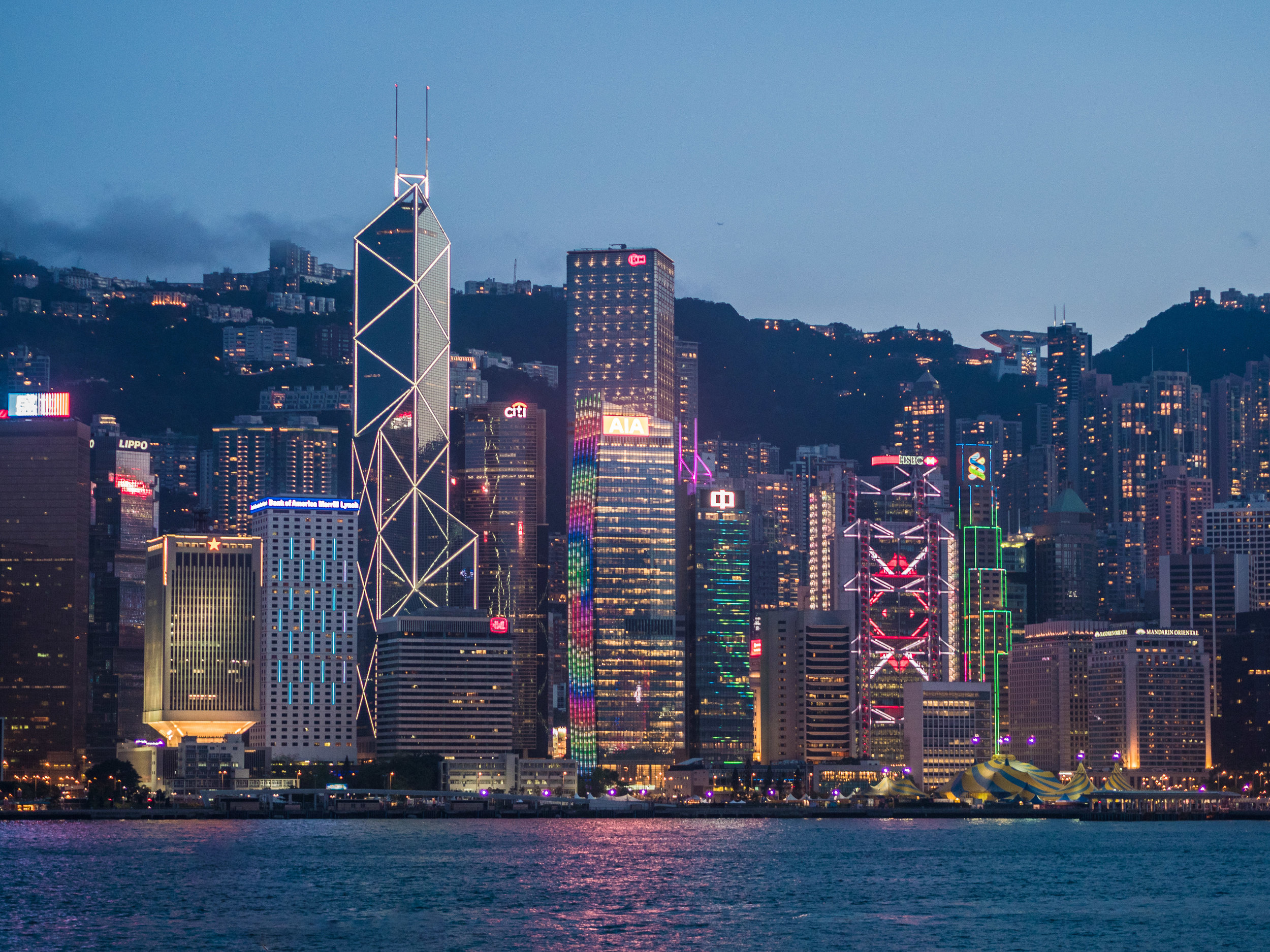
Lights
On the other side, the Central district of Hong Kong island with largely hotel and commercial towers presents a colourful architectural diversity.
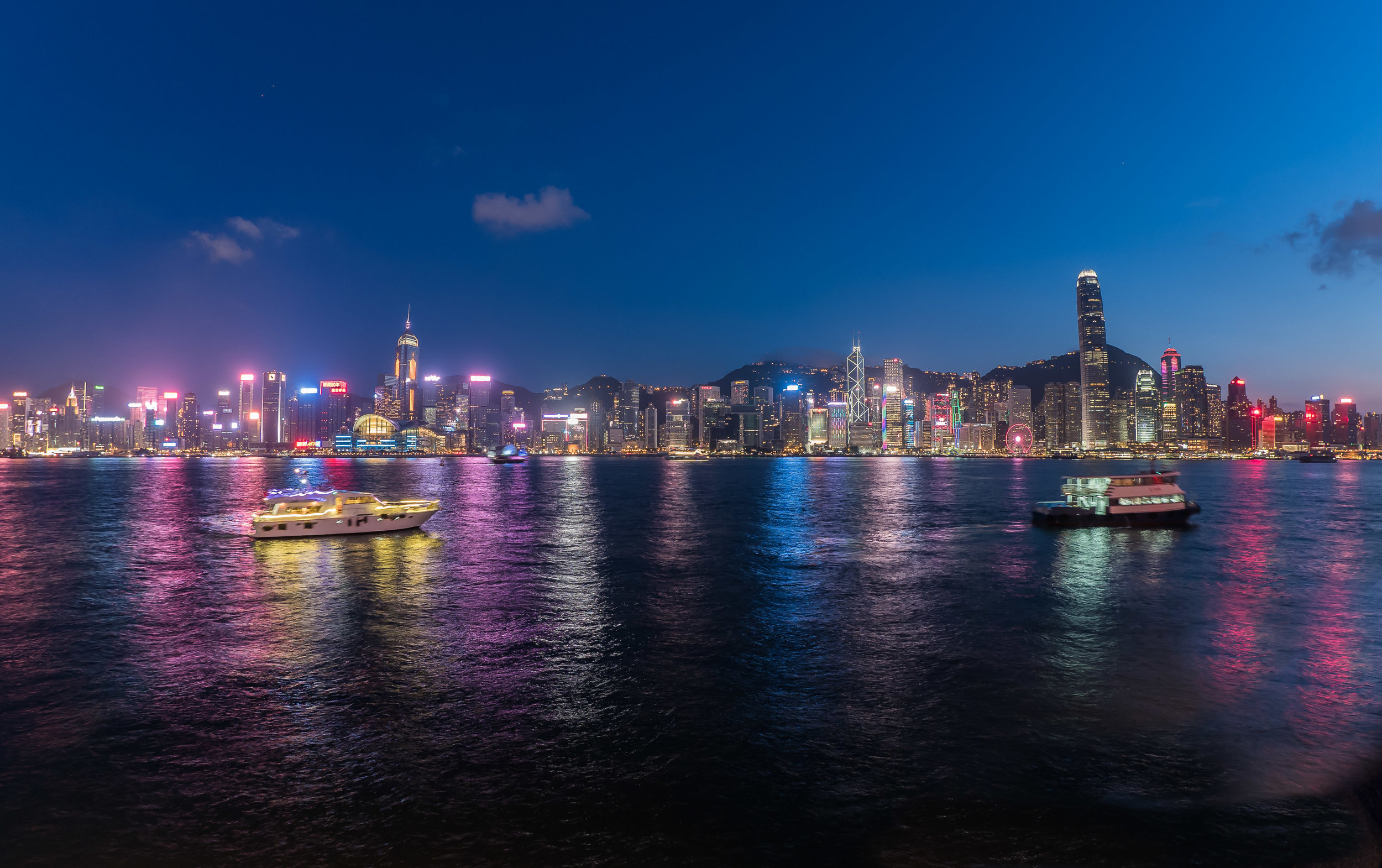
Central and Wan Chai
The skyline in its full dusk glory.
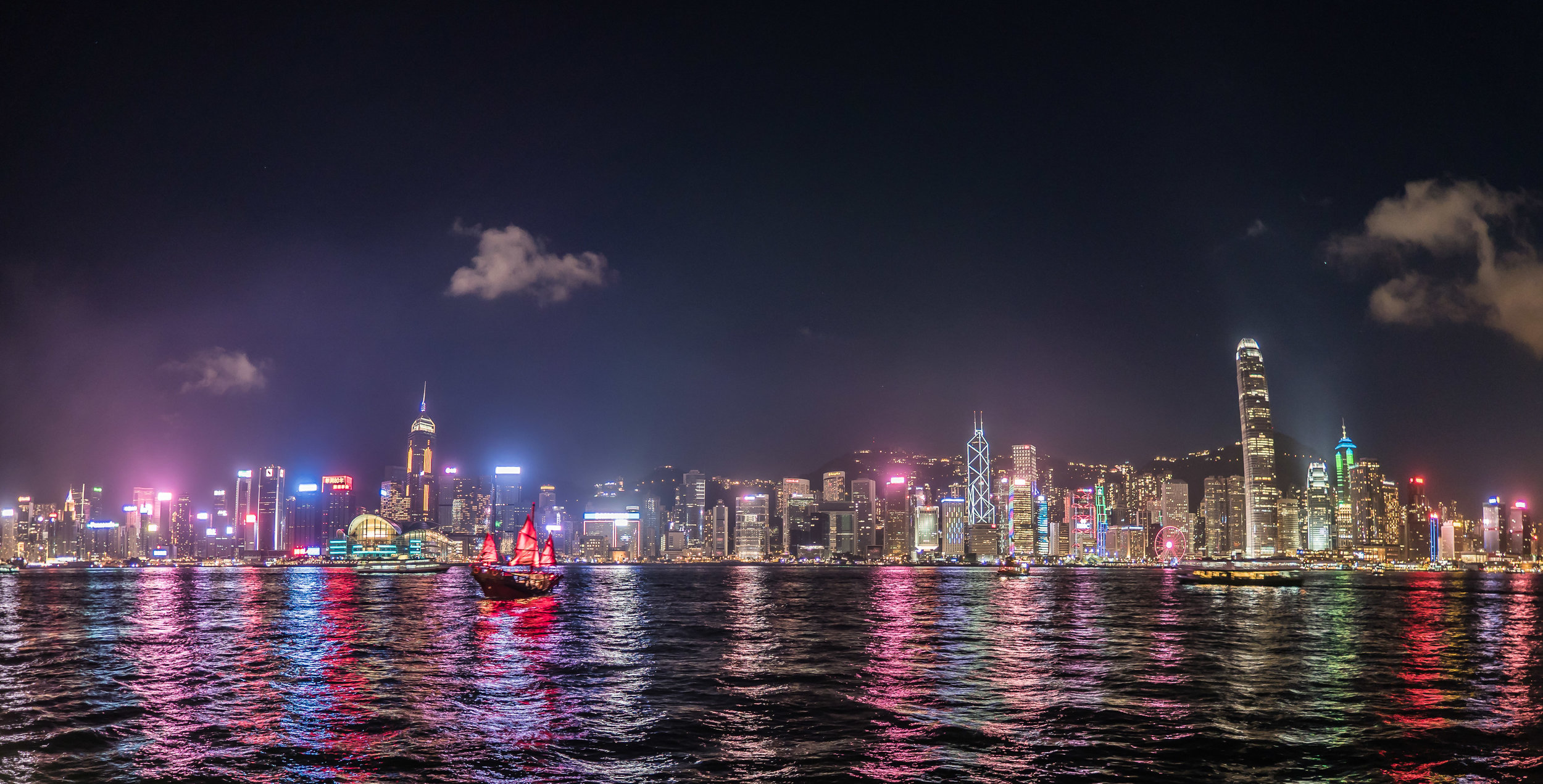
Nighttime
And an hour later, with the red sailed tourist junk (ancient Chinese sailing ship) crossing the bay.
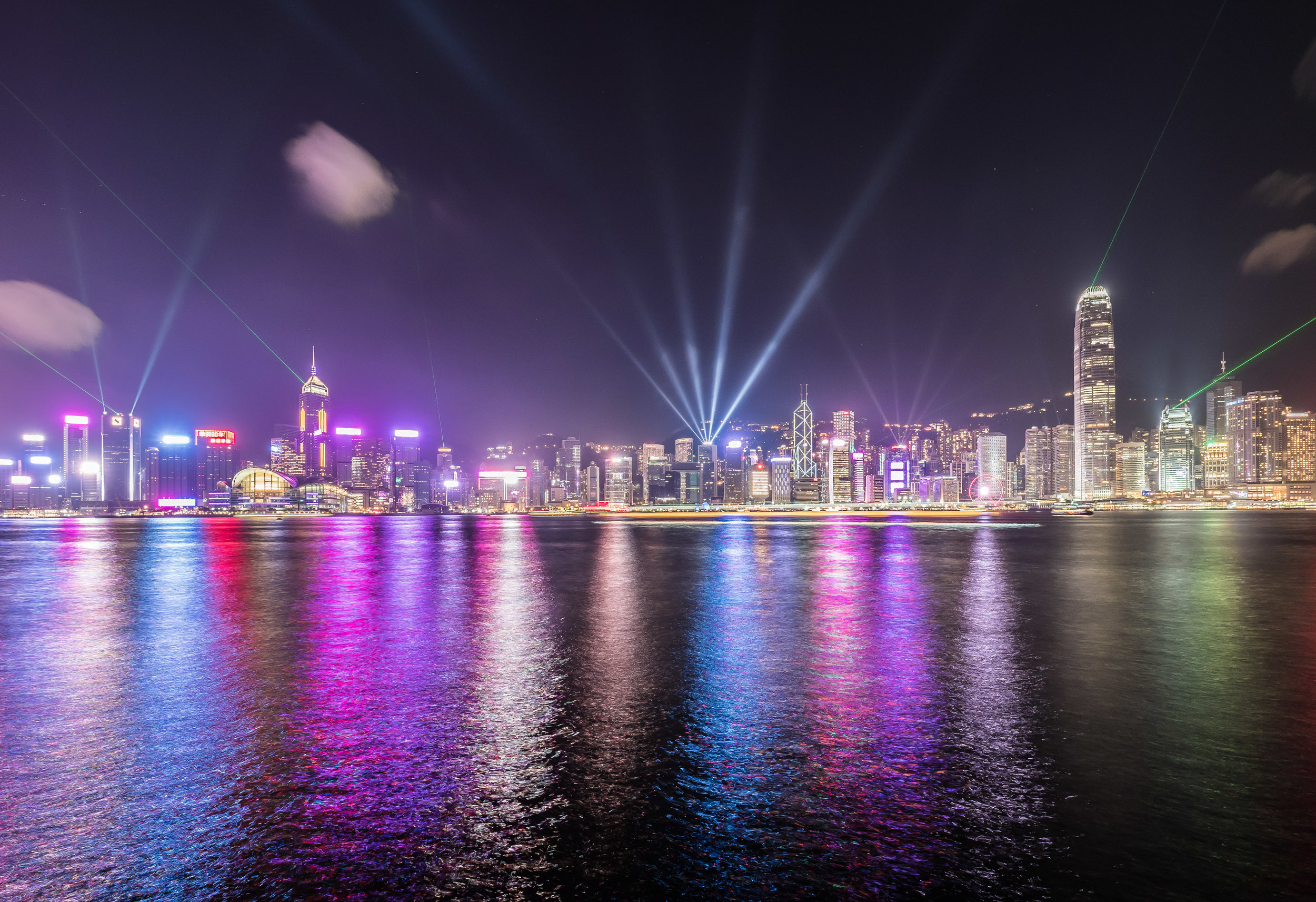
Light Show
The daily 8pm light show is best viewed from the Tsim Sha Tsui pier, although admittedly it is not particularly impressive.
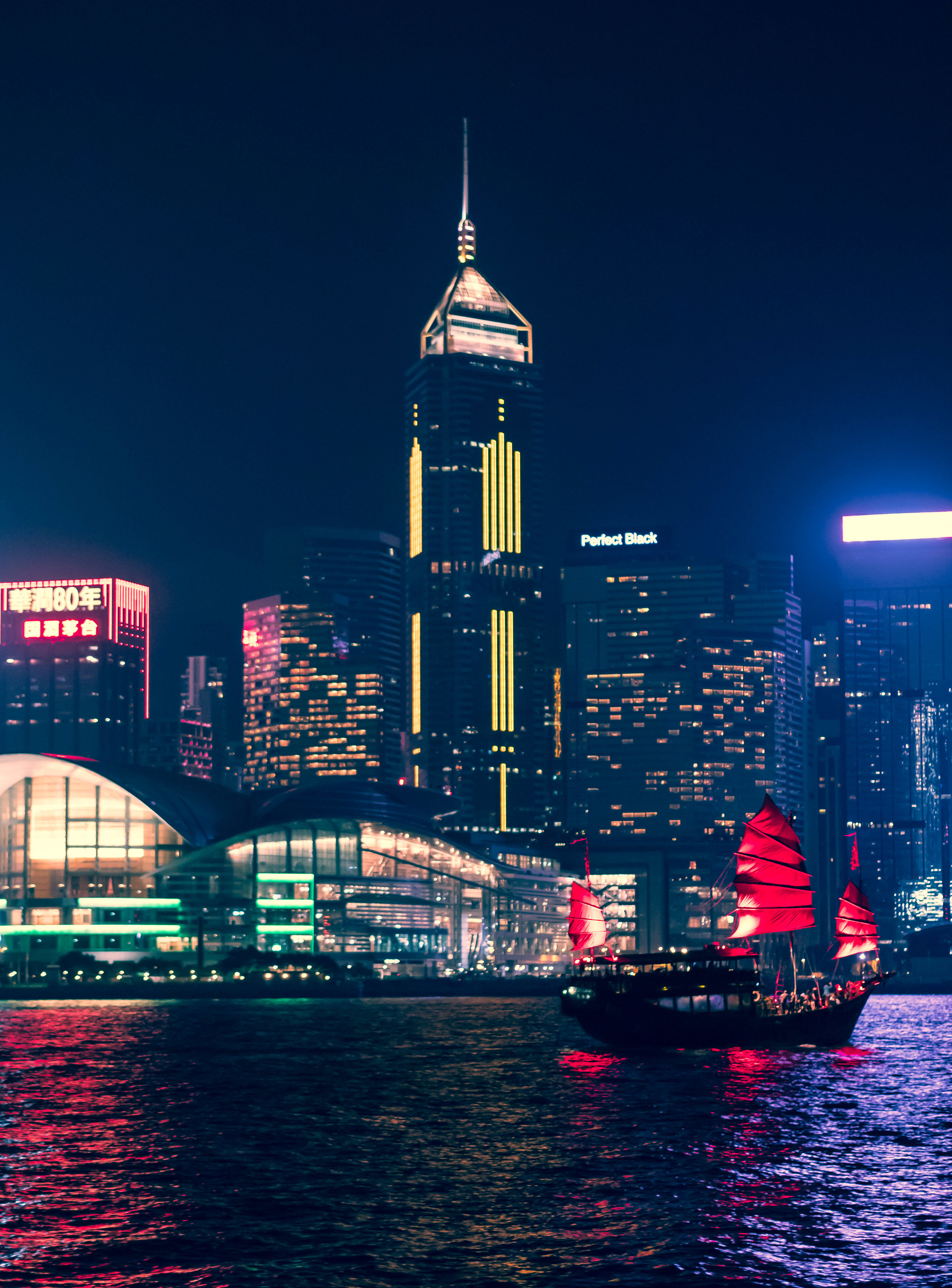
Chinese Junks
The famous boats with the red sails today act as restaurants and entertainment ships.
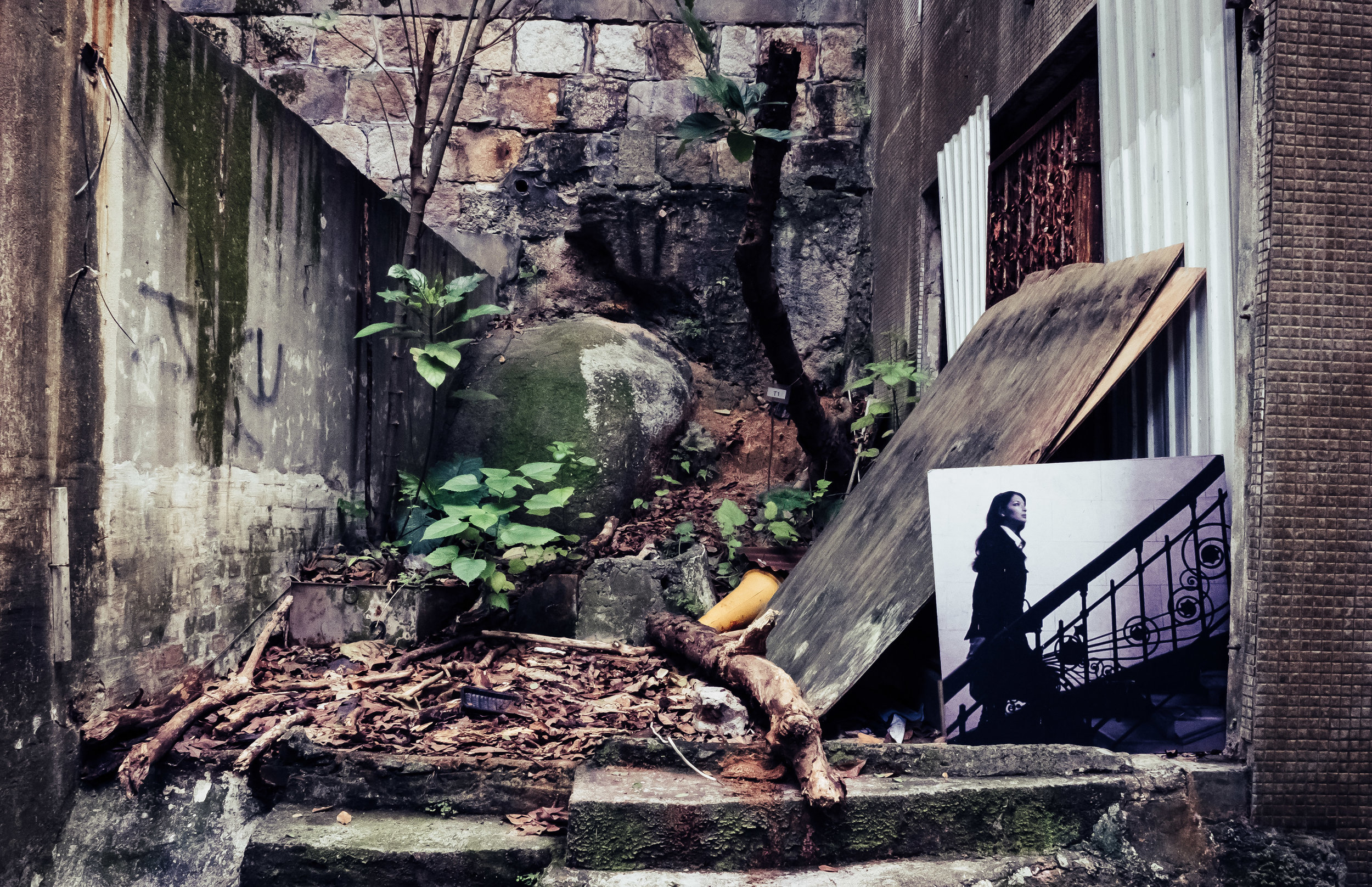
Strange Sights
There is something unusual on every corner, such as this abandoned painting in the upper parts of Central.
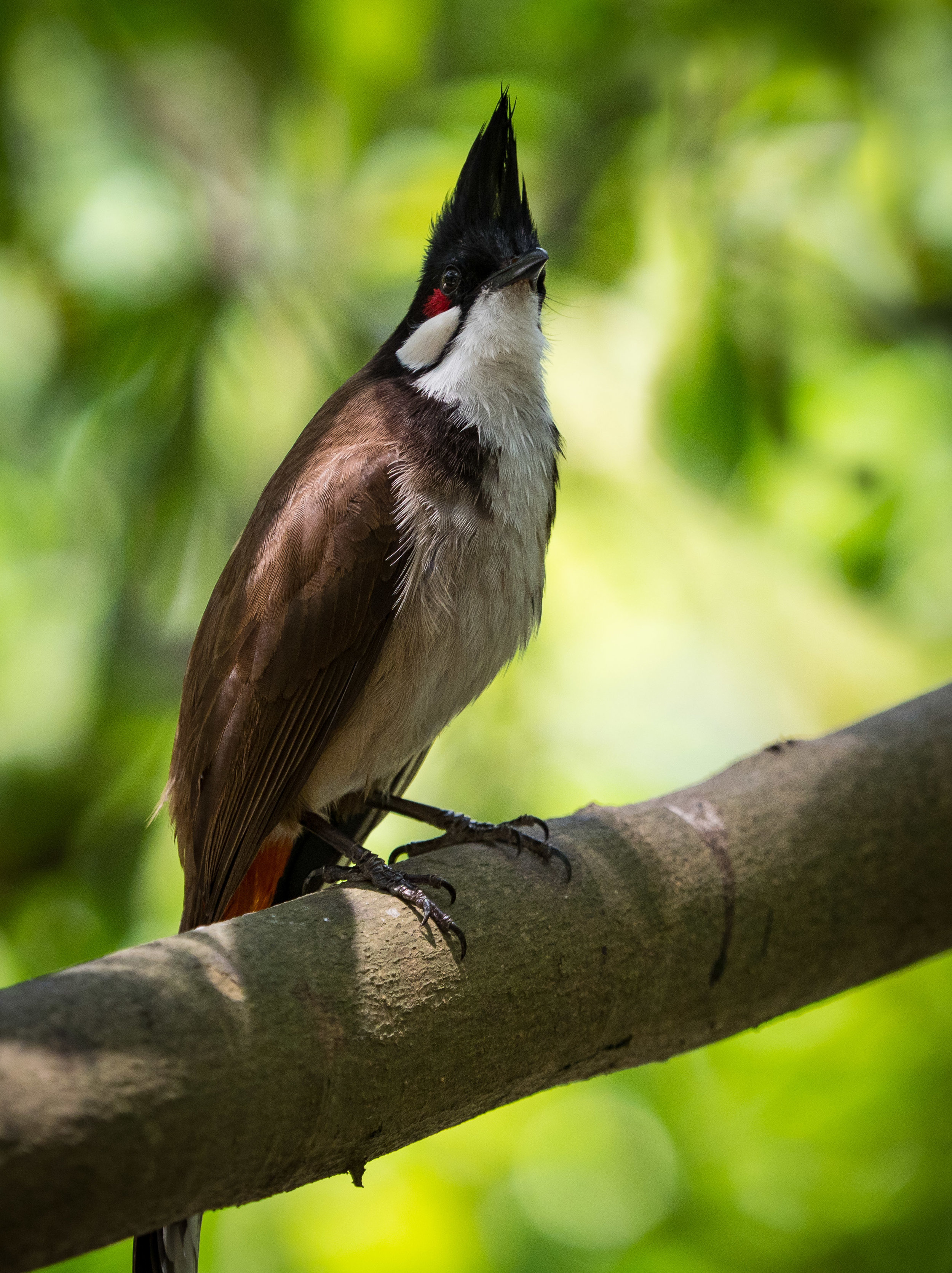
Wildlife
Who knows the name of this species?
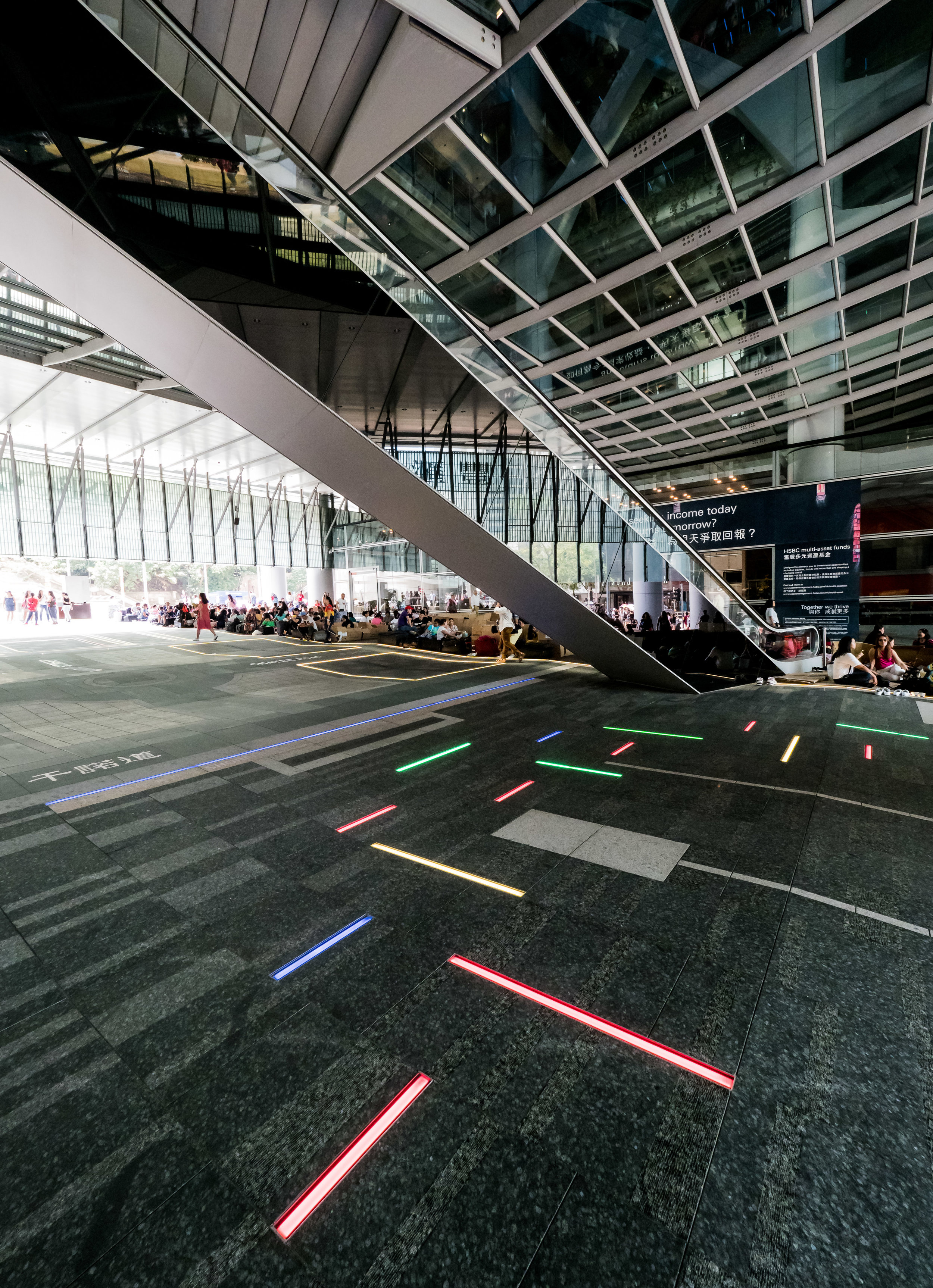
HSBC Tower
The lobby under the HSBC tower (and in general half of Hong Kong island) was filled with Filipinas setting up little personal spaces out of boxes on this particular day - we never found out why.
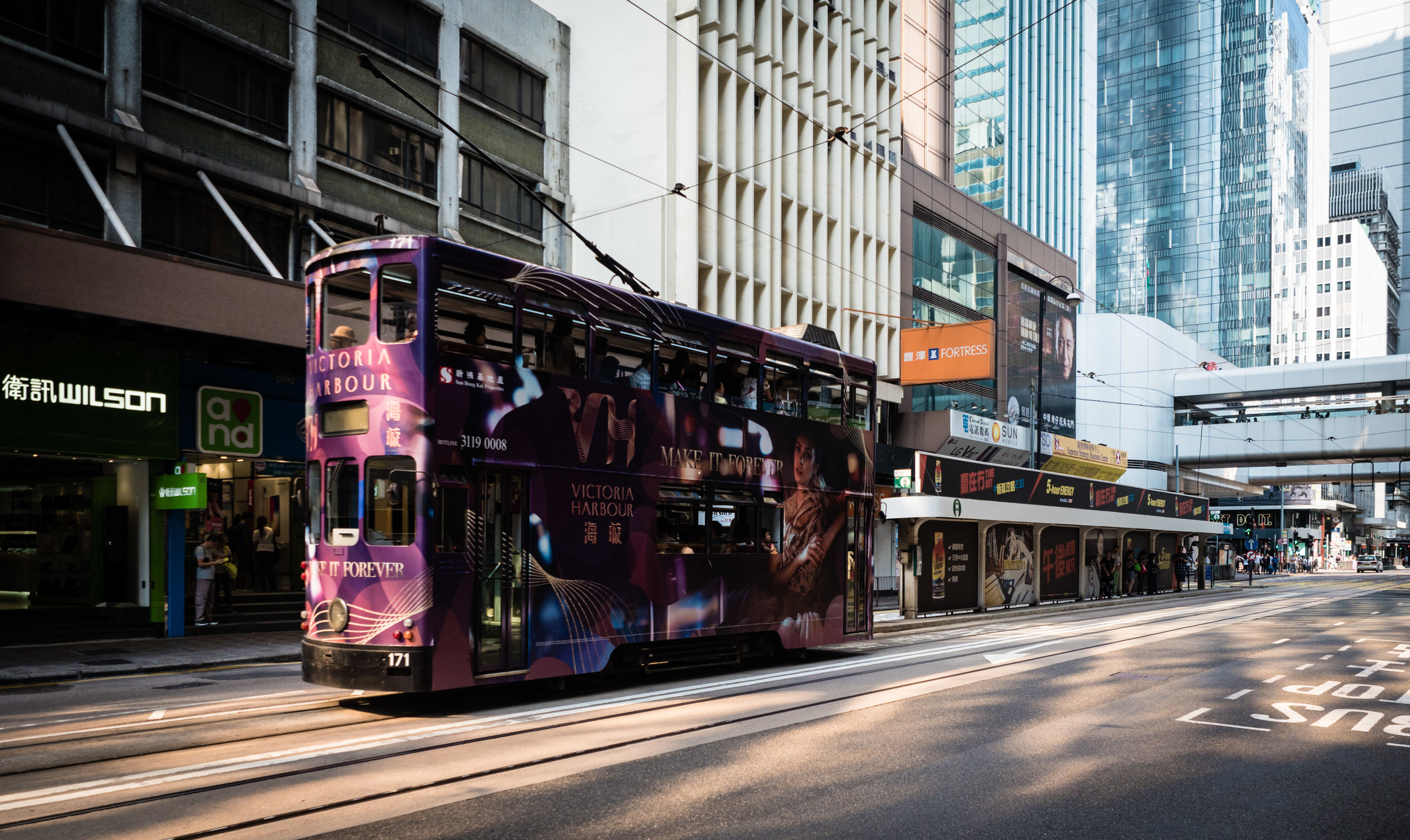
Trams
The outside view of one of the many double decker trams on Hong Kong island, which started operating in 1904.
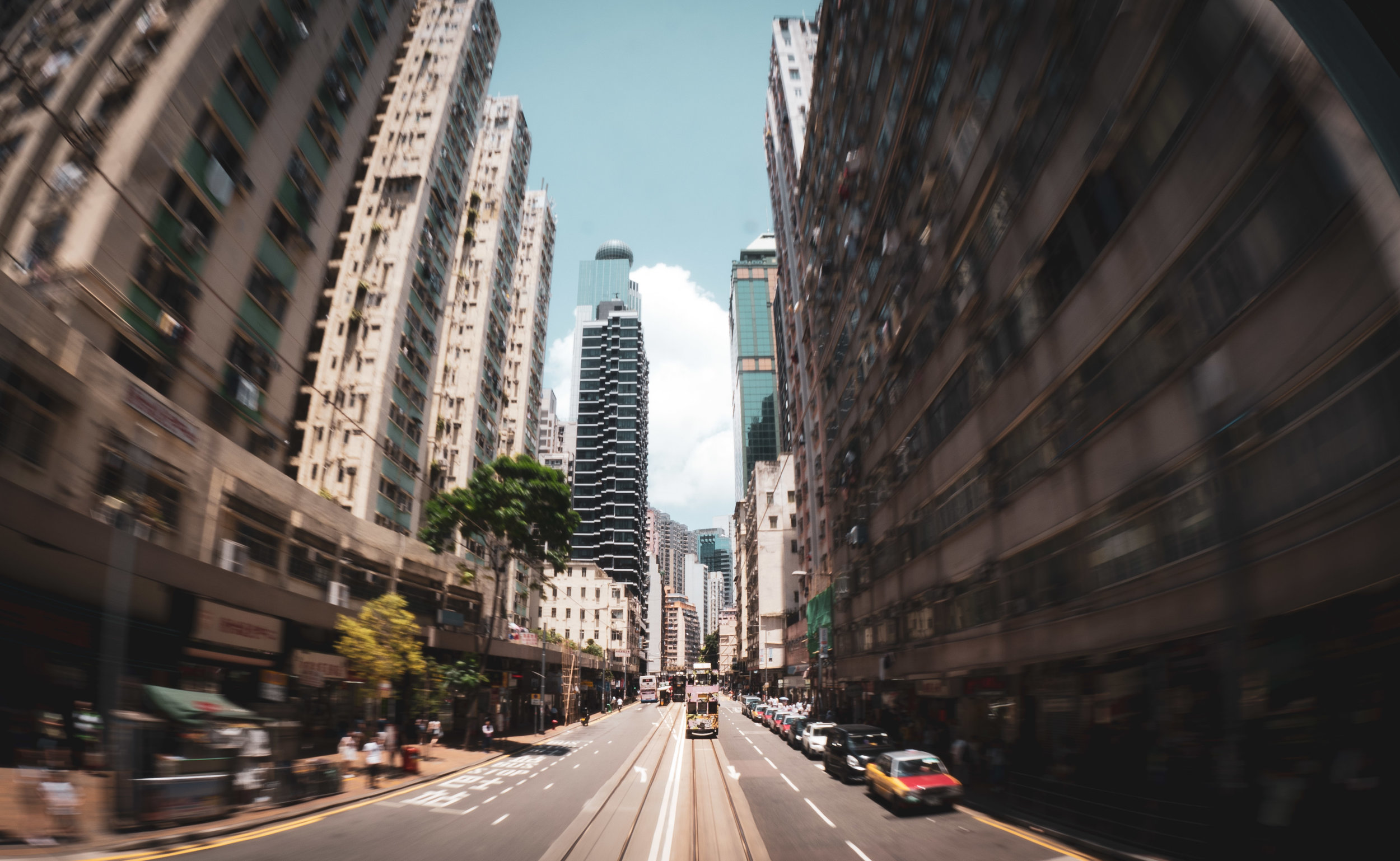
Double Decker Tram
Taken from the upper deck of the famous tram line running alongside the coast of Hong Kong island.
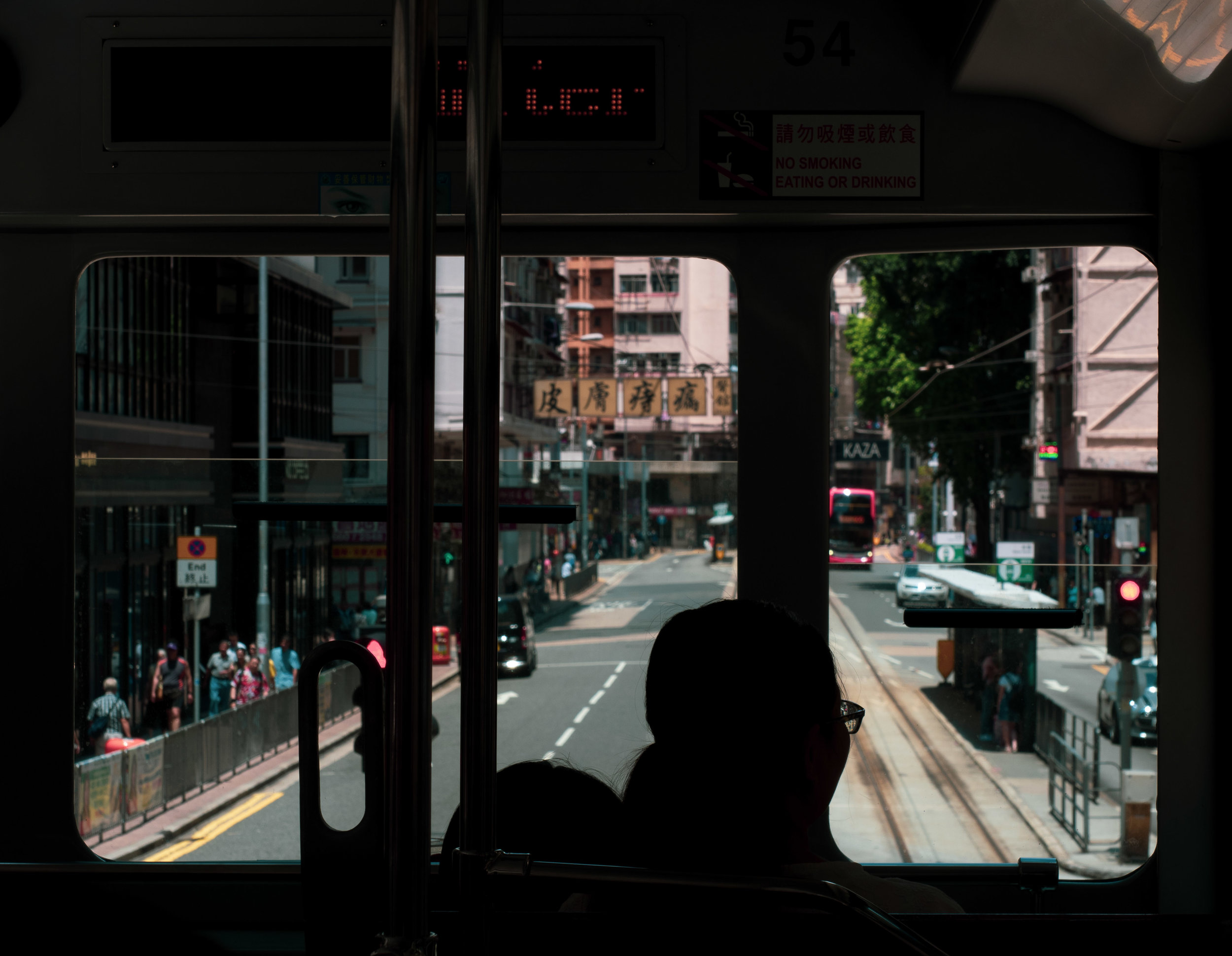
Views
A great and affordable way to explore the streets.
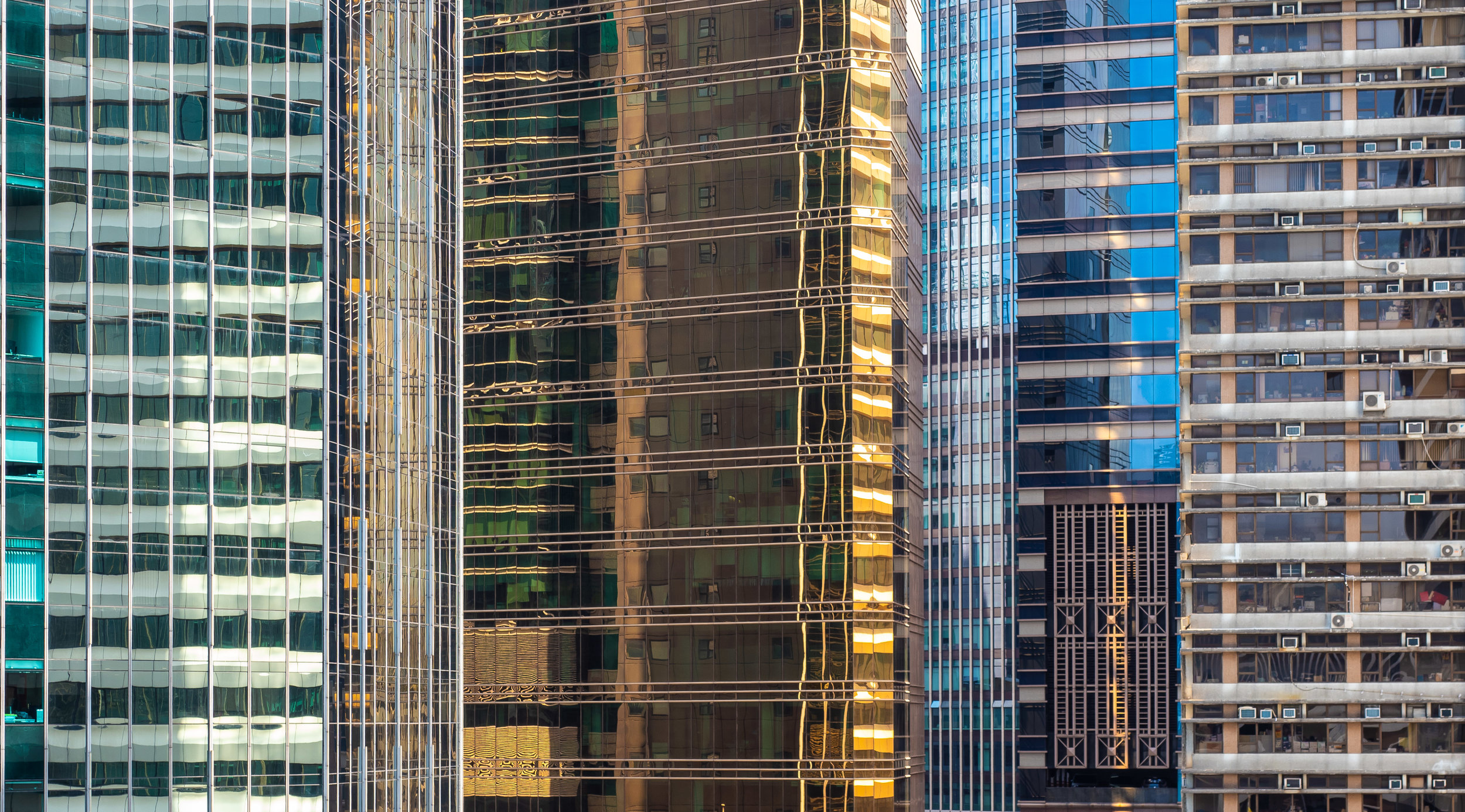
Urban Colours
Hong Kong's skyscrapers provide endless patterns.
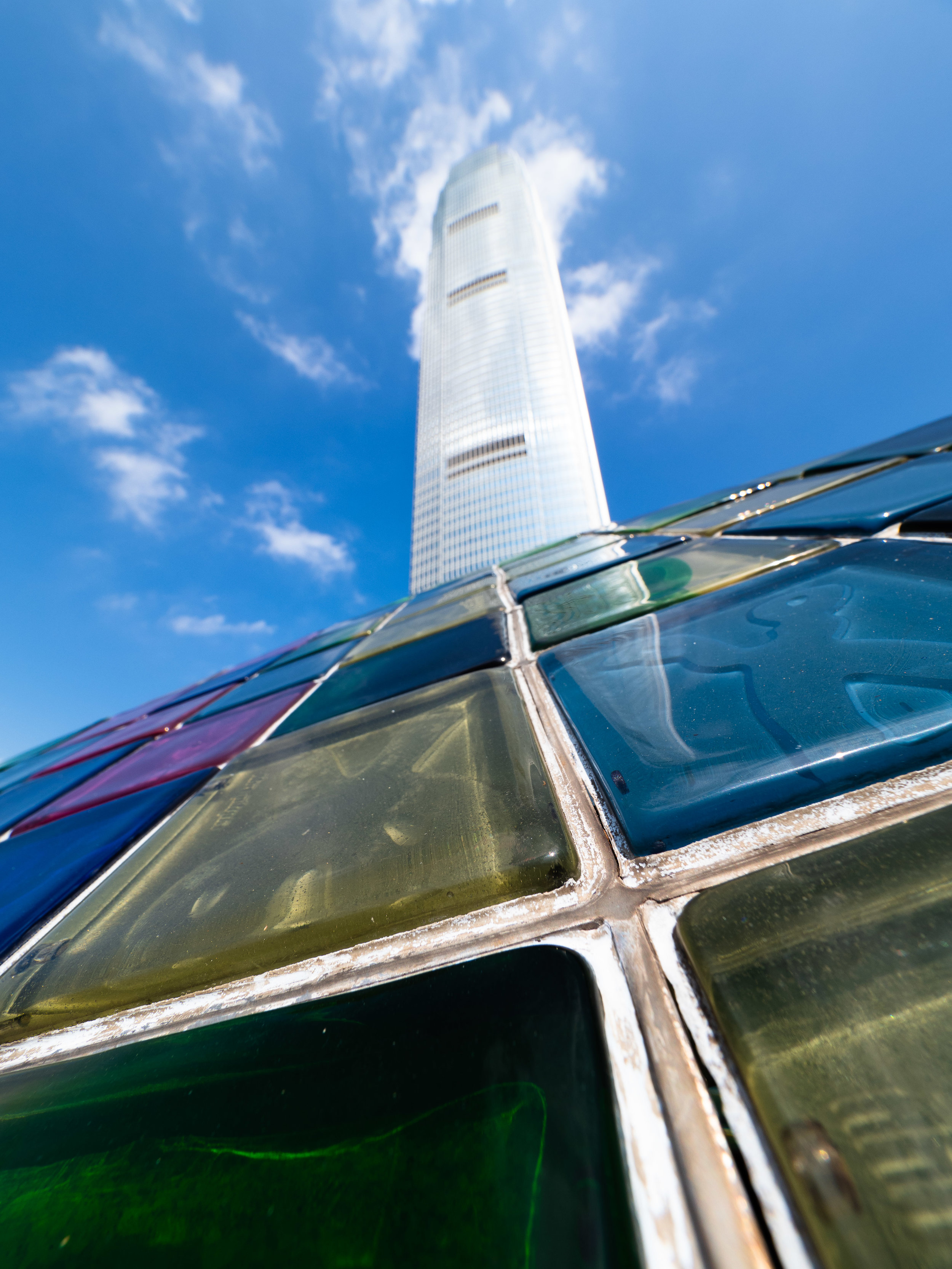
IFC ||
The IFC II Tower from the roof gardens of the IFC Mall.
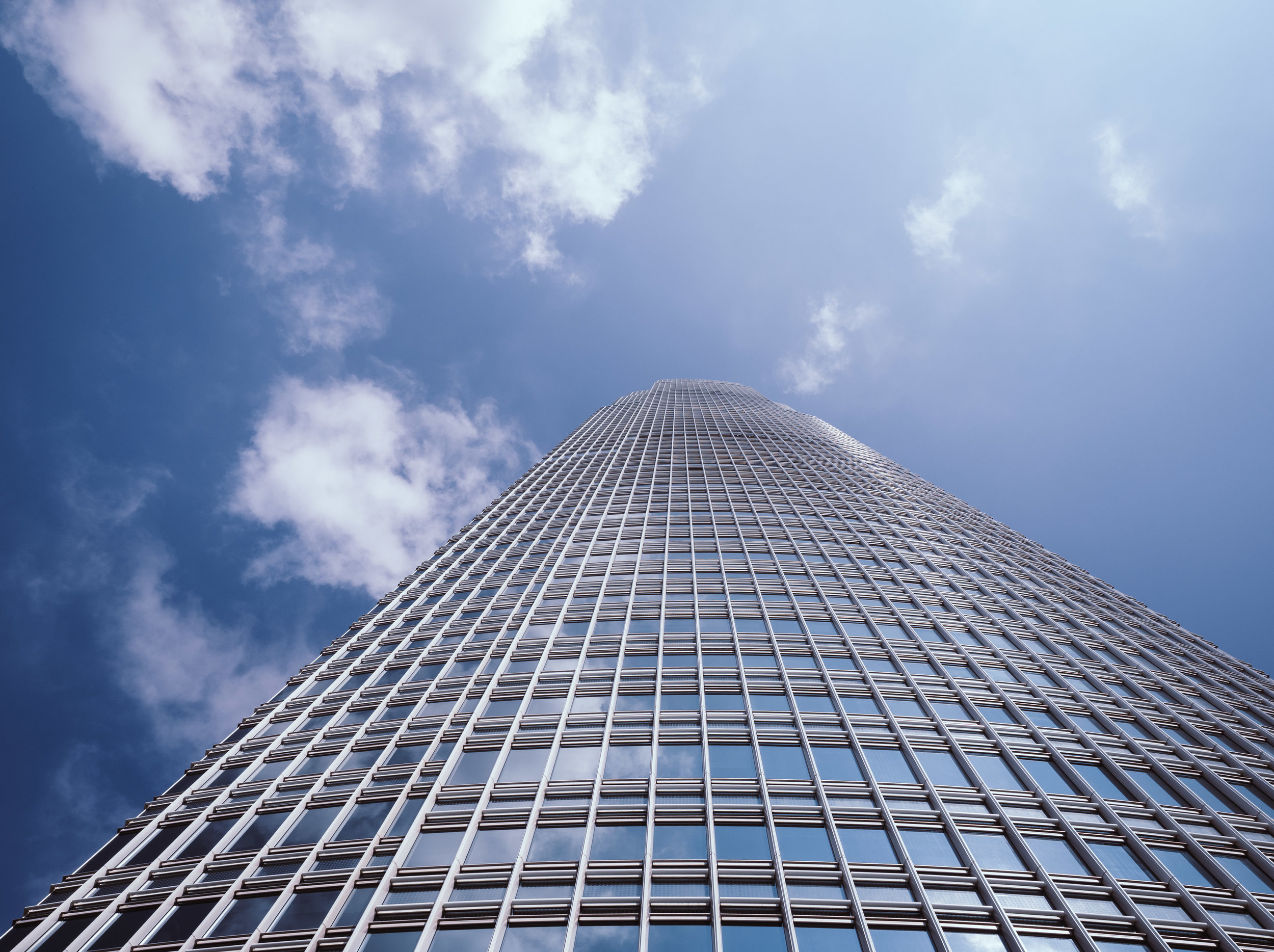
Soaring
While architecturally not as quirky as the Bank of China nor as sleek as the ICC, the IFC II tower remains the tallest building on Hong Kong island.
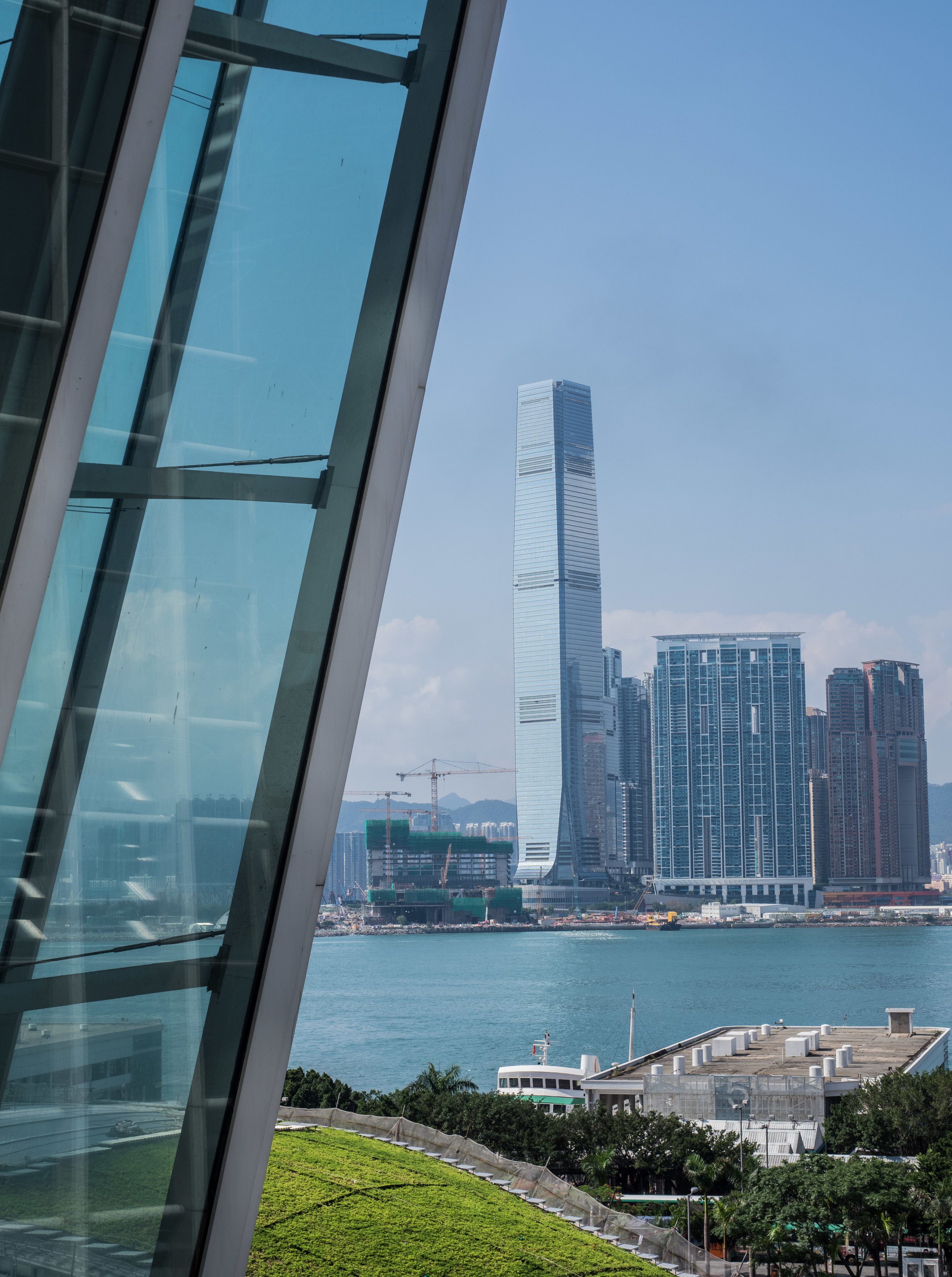
Big Brother
It's only outshone by it's neighbour across the bay, the ICC at 484m, now the 11th tallest building in the world.
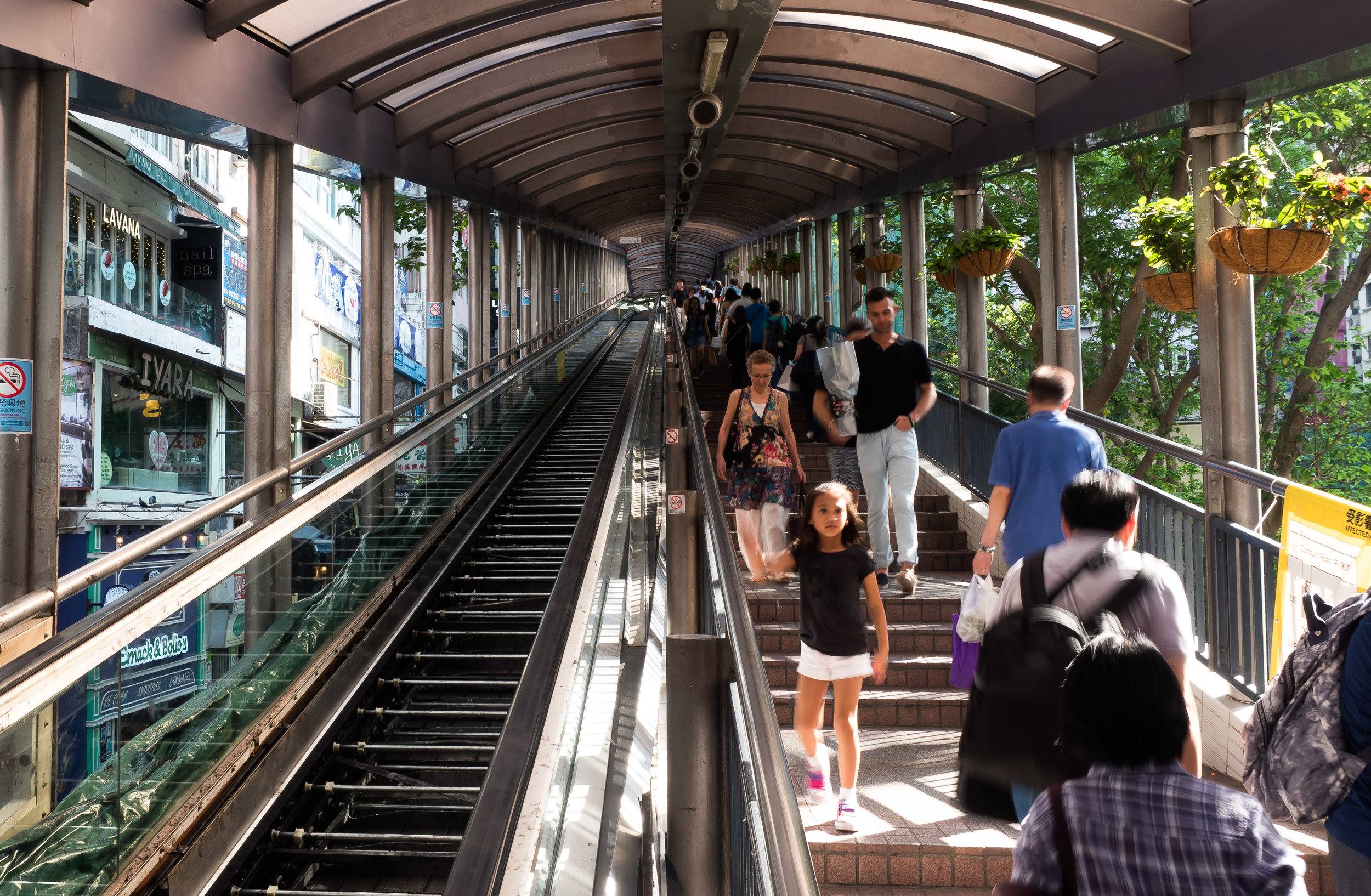
Central Escalator
The longest outdoor covered escalator system in the world takes you up slopes of Central - although a few parts are under renovation now, which will be ongoing until 2021.
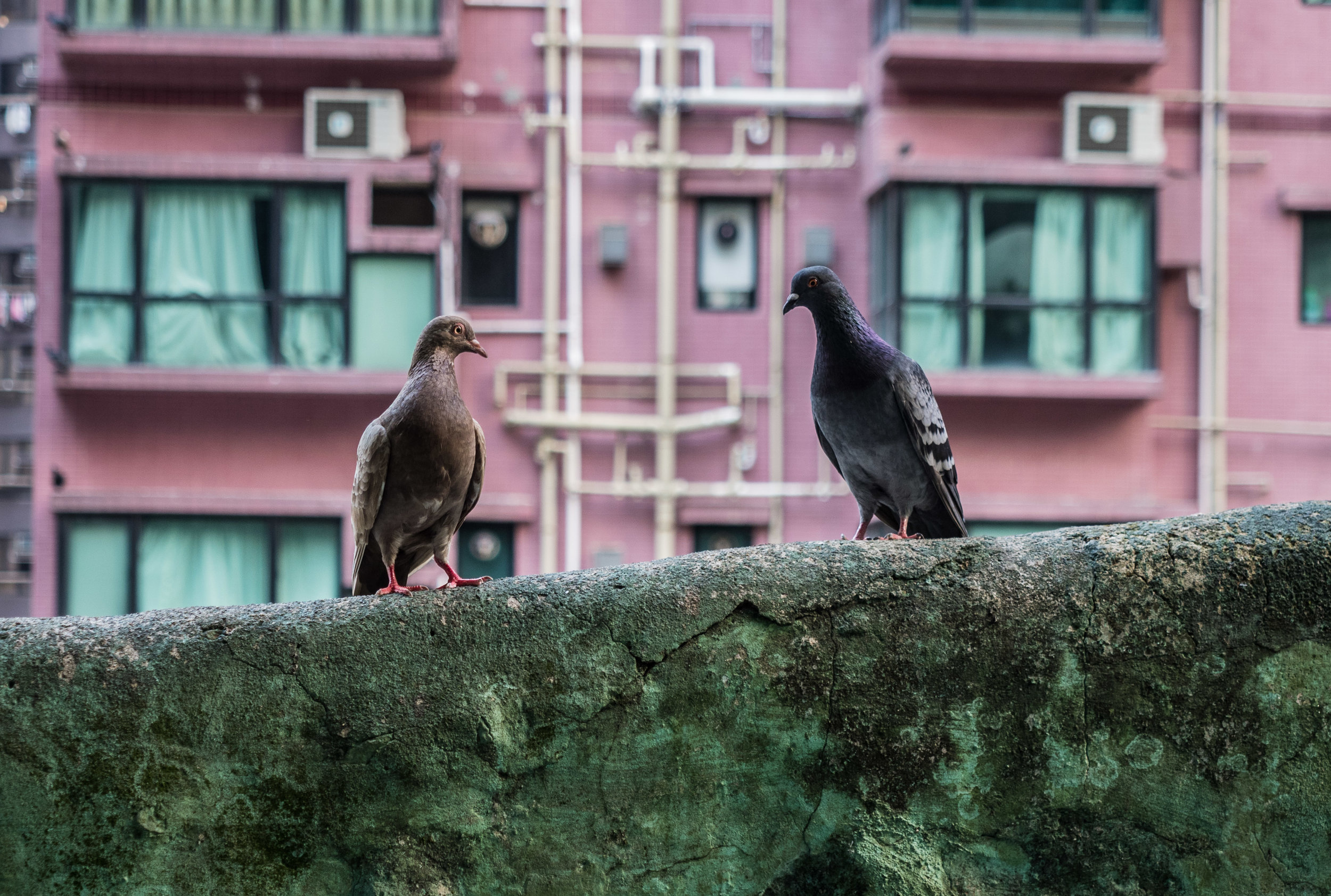
Couple
Spotted on the path up towards the Jamia Mosque.

Jamia Mosque
The mosque sits surrounded by high rises in muted tones, complemeting its soft green colours.
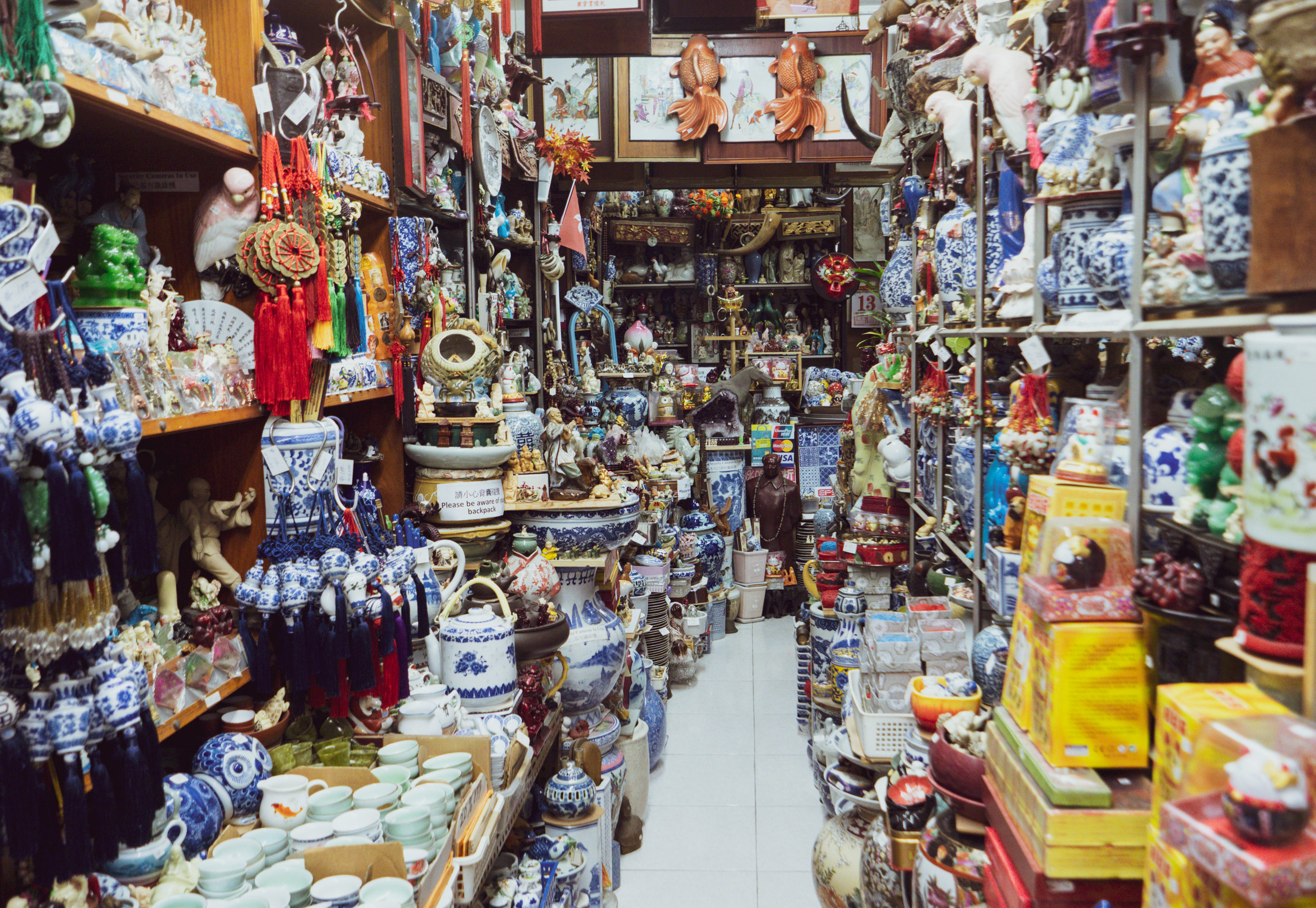
Porcellain
One of China's main historic exports.
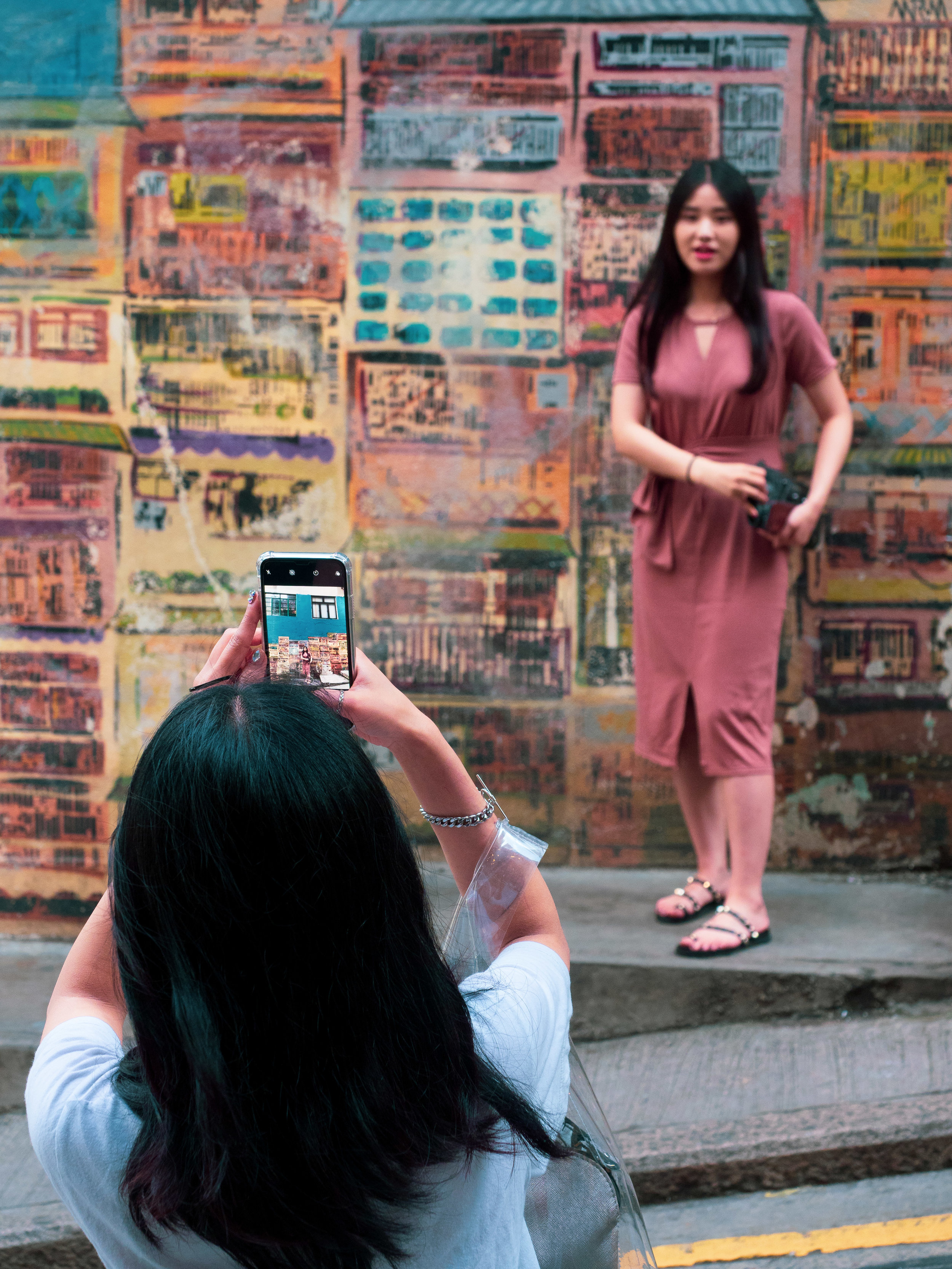
Instagram Hotspot
Another popular Instagram photo is the murals on Graham street - at any given time there'll be 5 or so people posing.
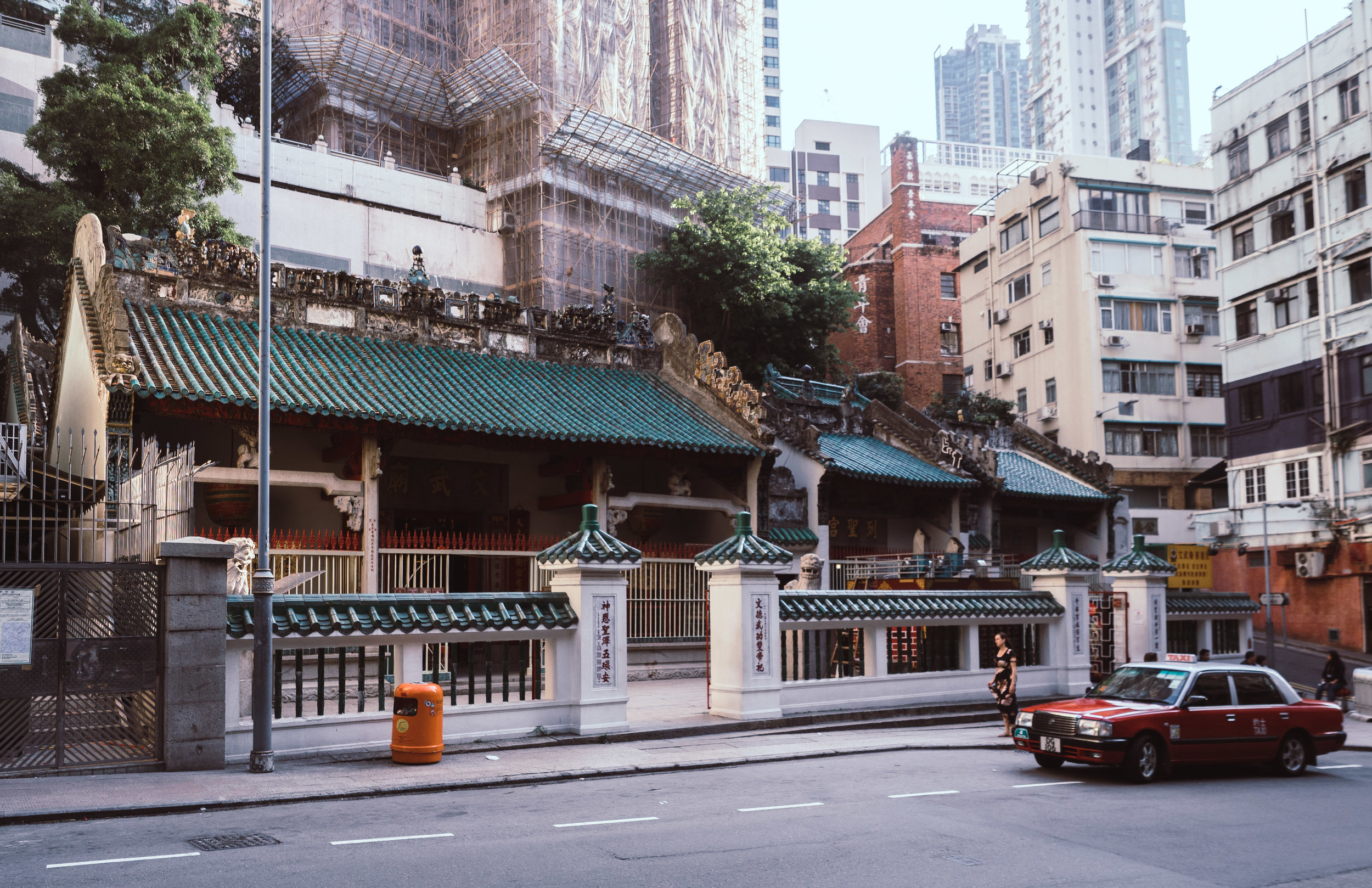
Man Mo Temple
One of the most beautiful temples in Hong Kong.
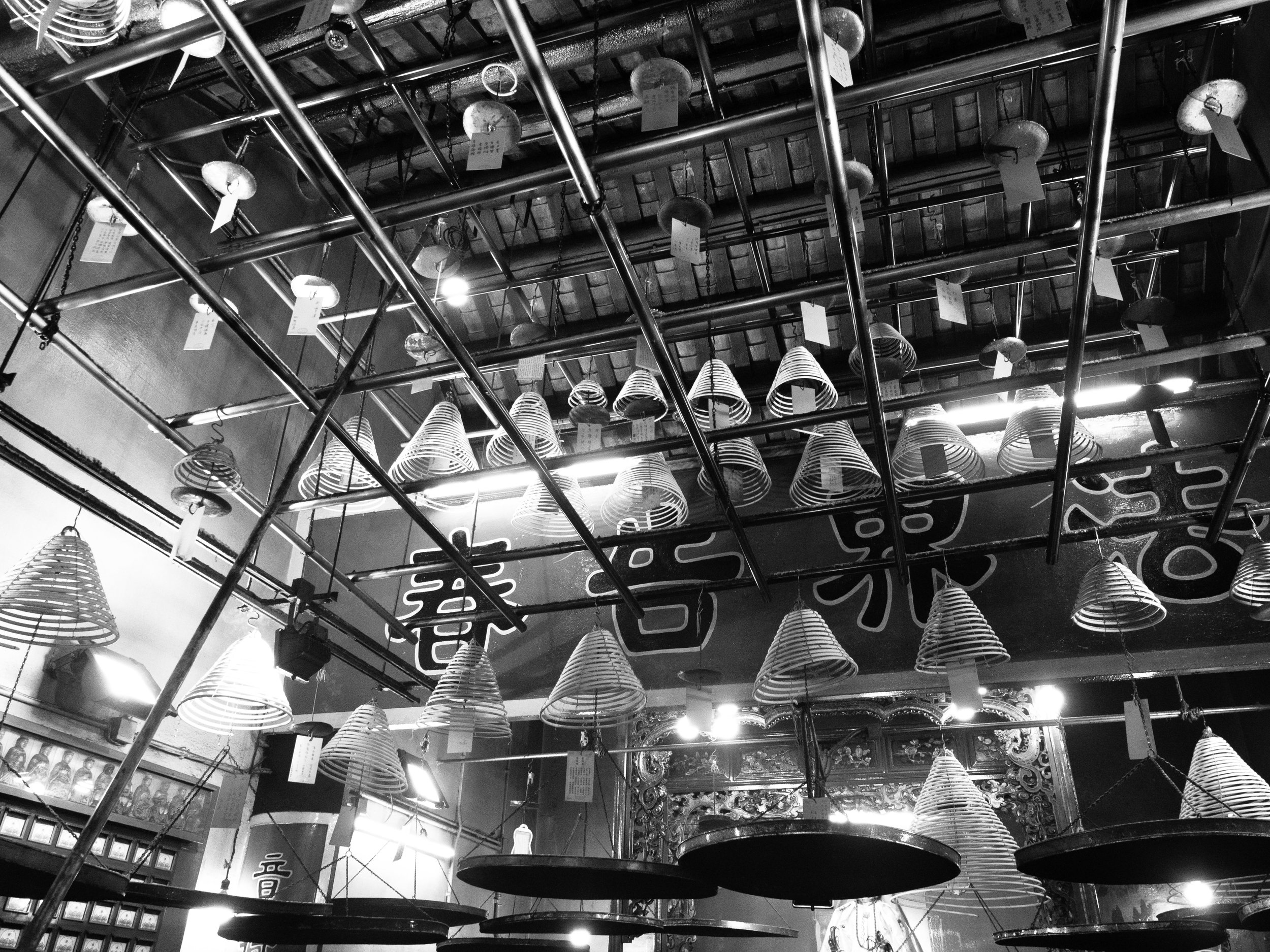
Closing Time
Unfortunately I only made it there shortly before it closed, so the members were busy cleaning up for the day and removed many of the incense spirals.
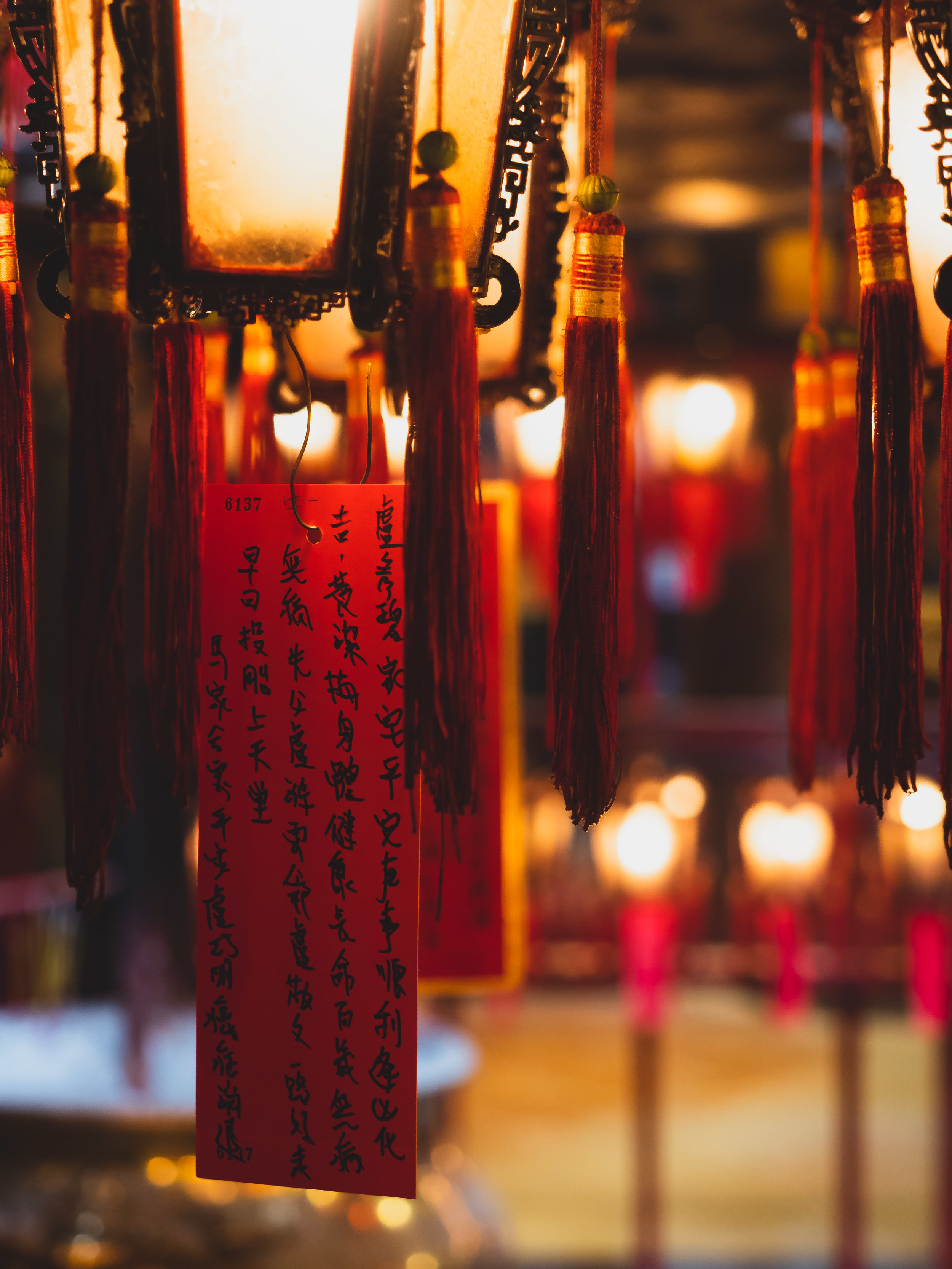
Who can translate?
And what are these for?
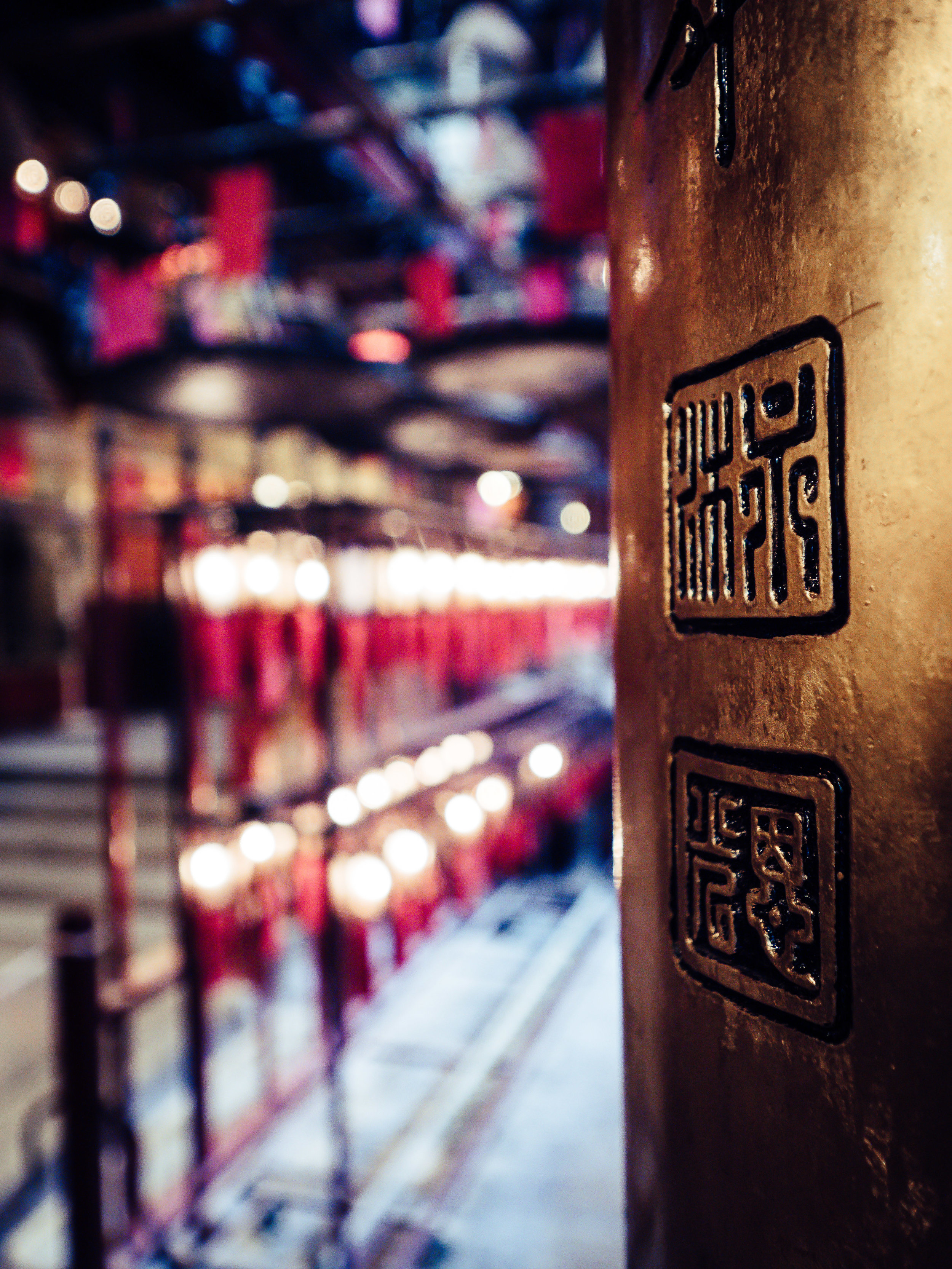
Detail
The temple origins from the 1800s.
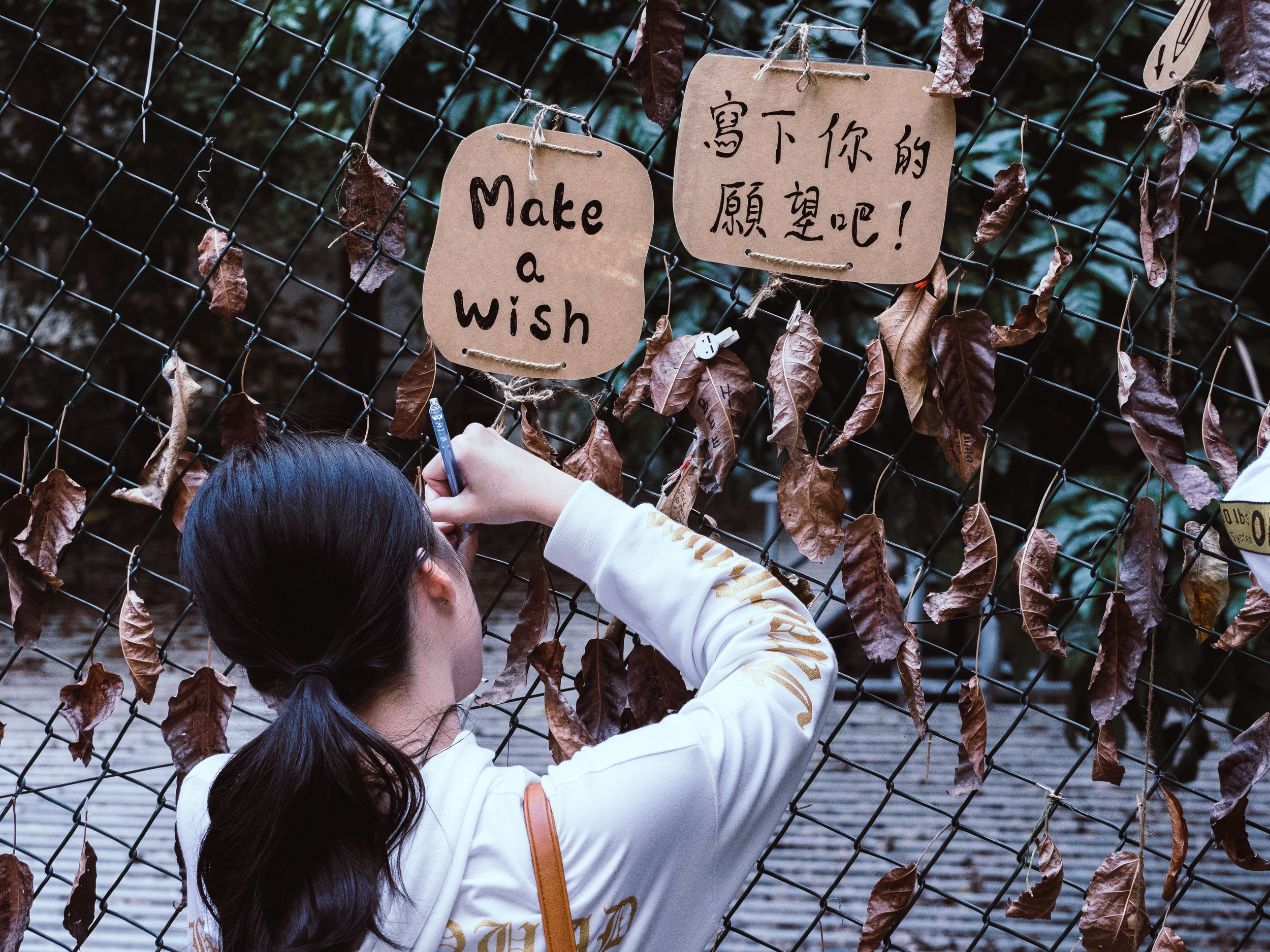
Wishful
Didn't take the chance to try this though.
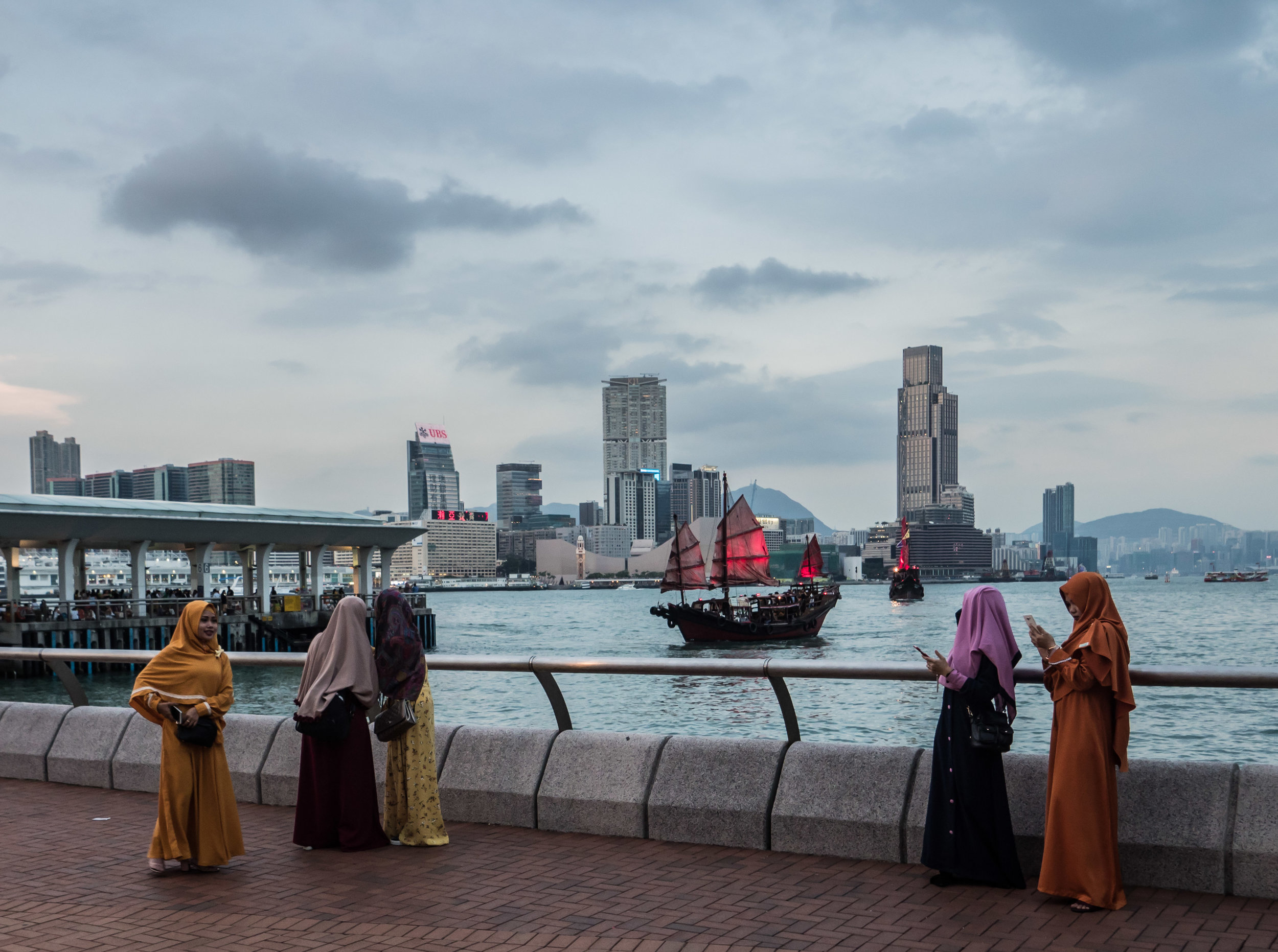
Diversity
While over 90% of the population are classified as ethnic Chinese, Hong Kong does feel diverse with global tourists and a large expat community,

The Hong Kong Wheel
At just over 60m it isn't particularly high, but does come with a good view over the bay.
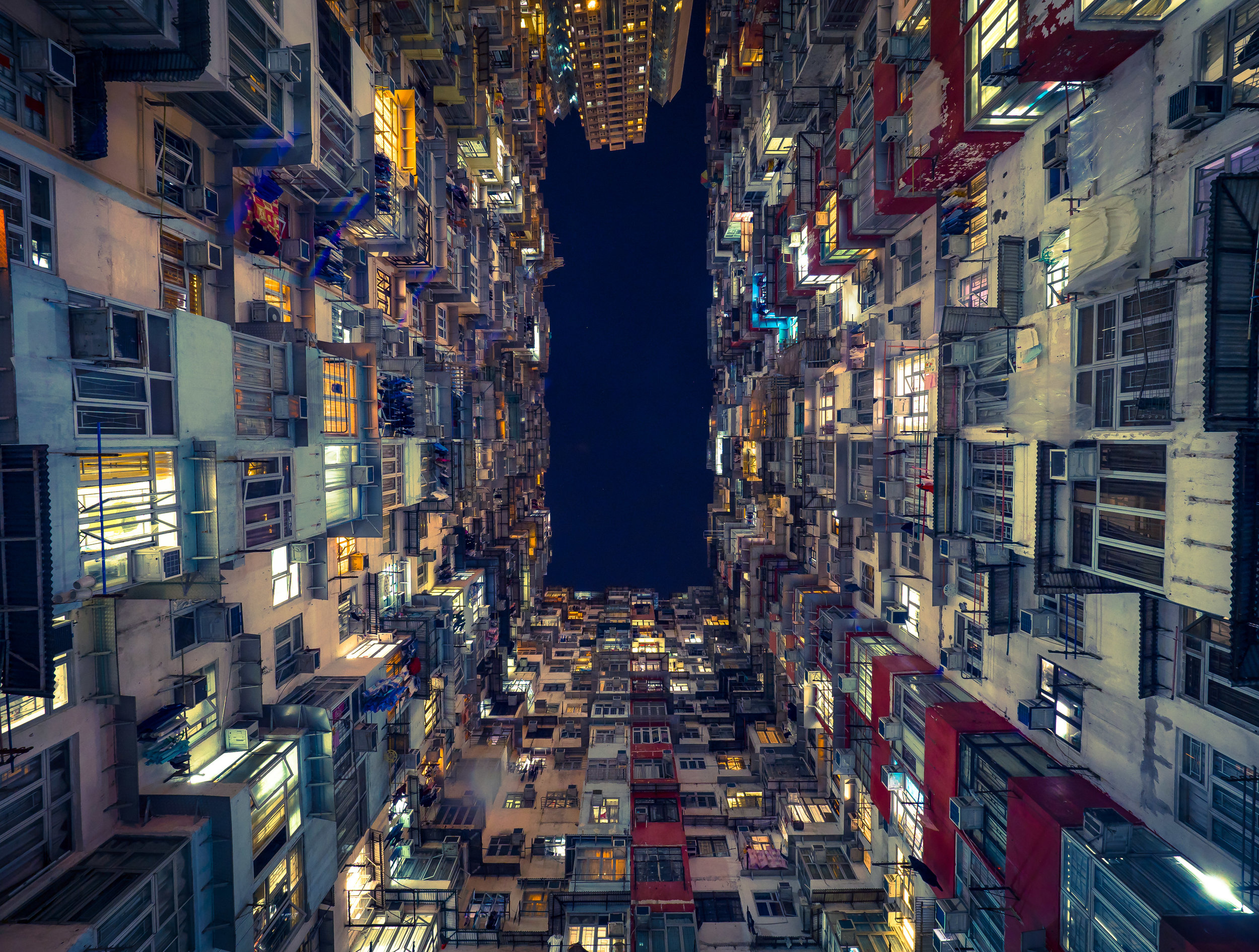
Walls
Another photography hotspot is the Fok Cheong building in Quarry Bay - it's easy to see why.
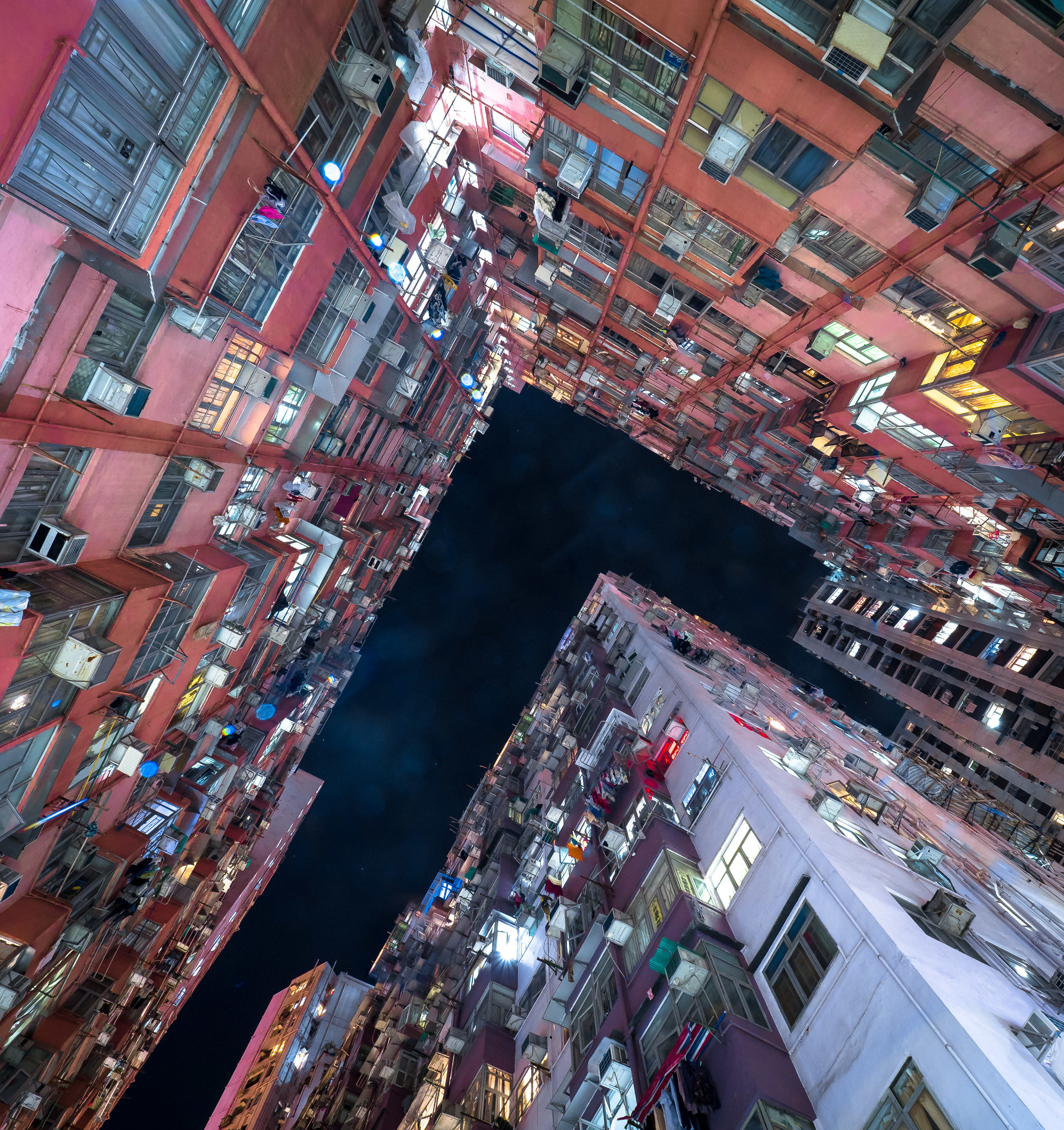
Pink Walls
Another opportunity for a shot that exemplifies Hong Kong's urbanity is the nearby Tak Lee building.
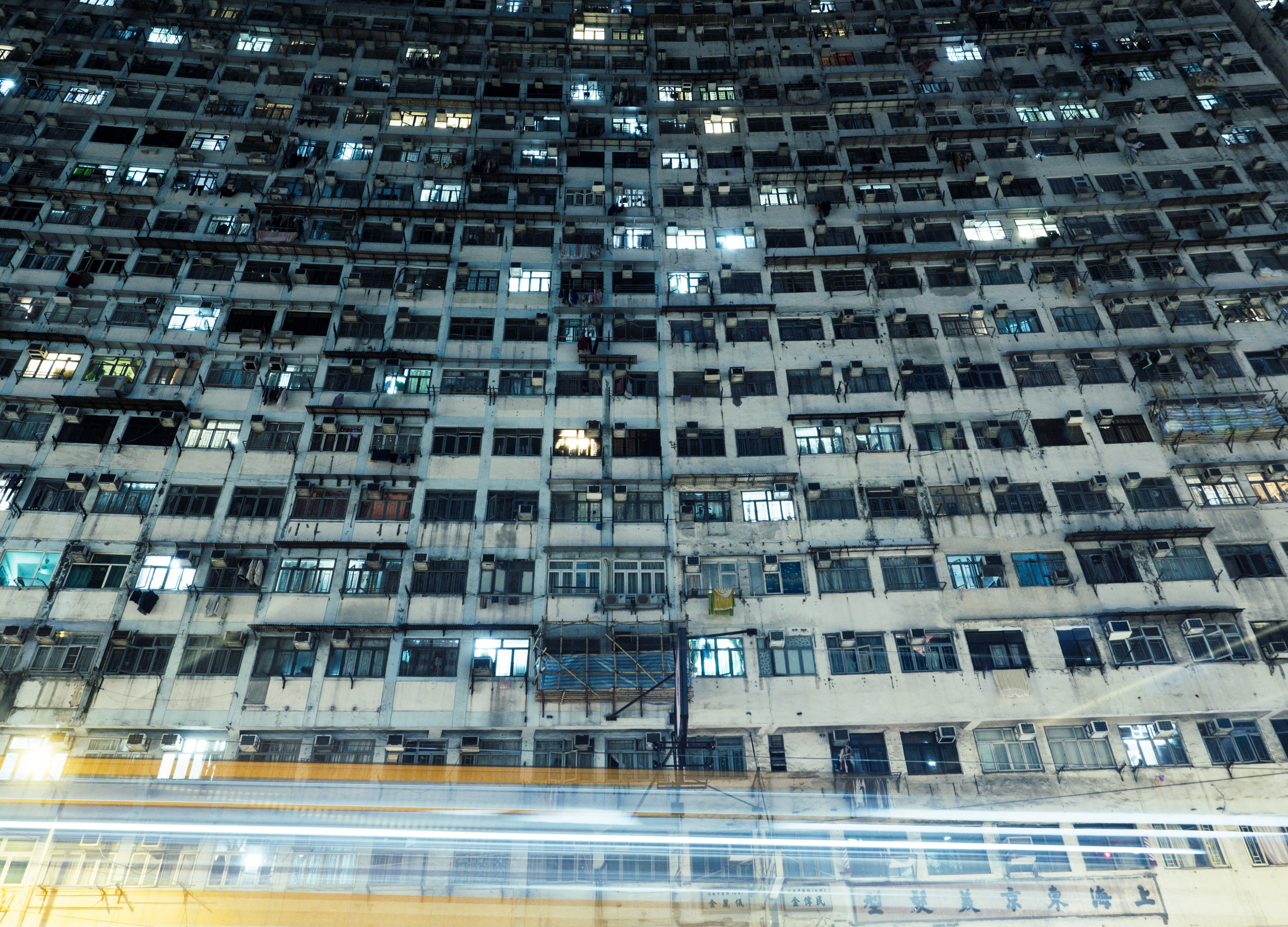
Wall of Windows
The scarcity of land and the need for residential units has resulted in densely built mass housing projects, such as this one.
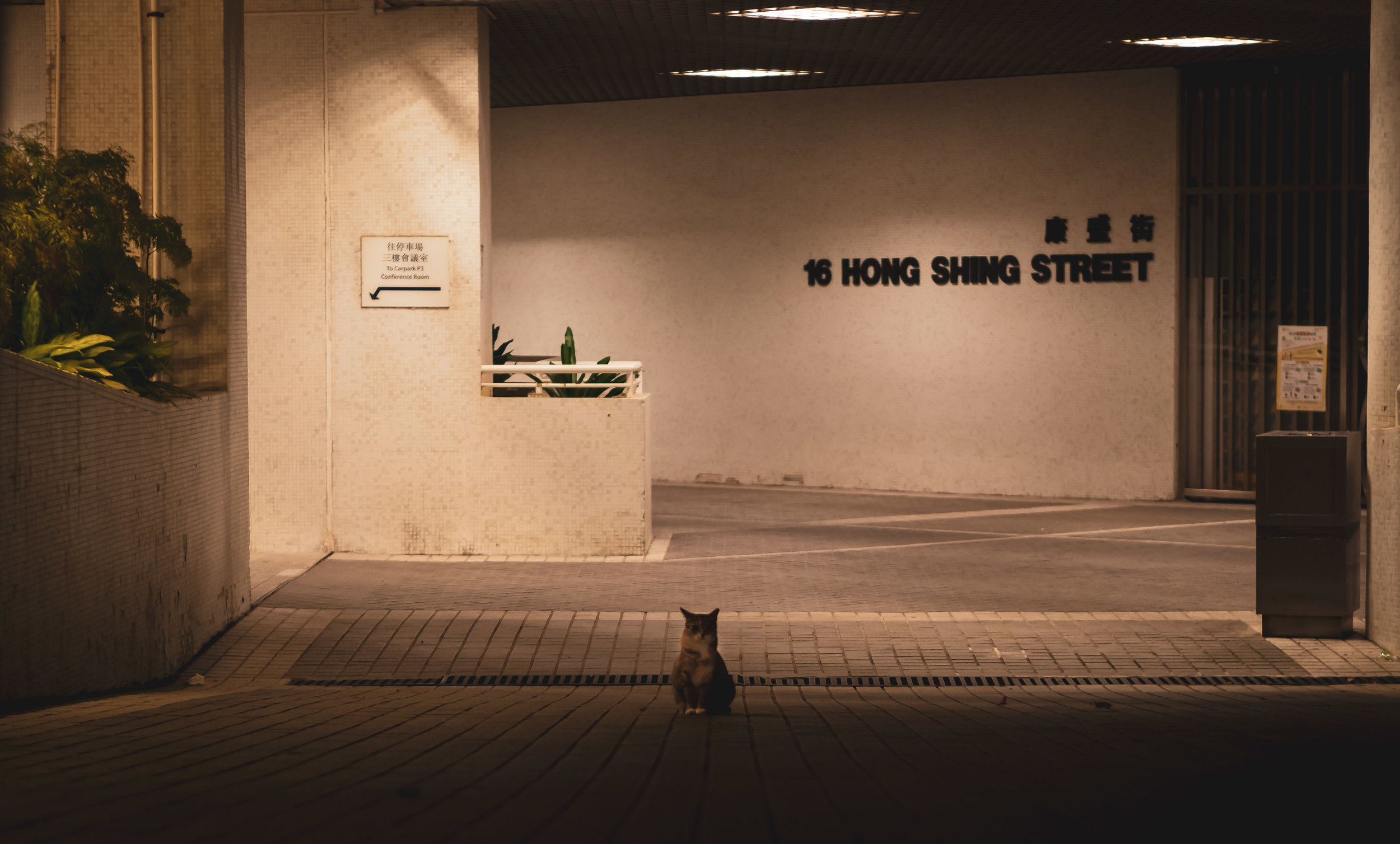
The True Ruler
Of 16 Hong Shing Street.
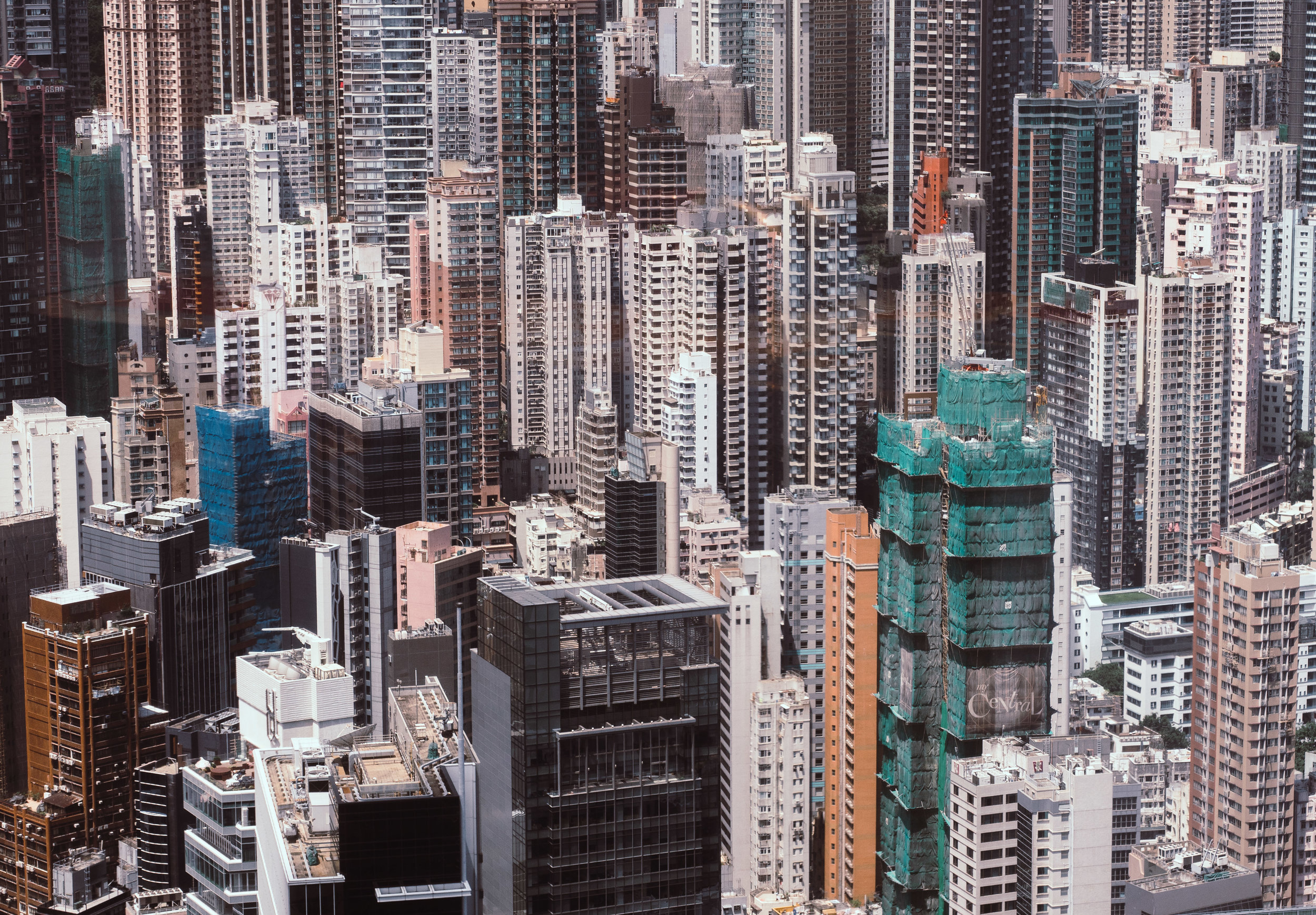
Density
Taken from the Hong Kong Monetary Authority educational floor in the IFC, which offers some good (and free) views, albeit with a lot of window reflections.
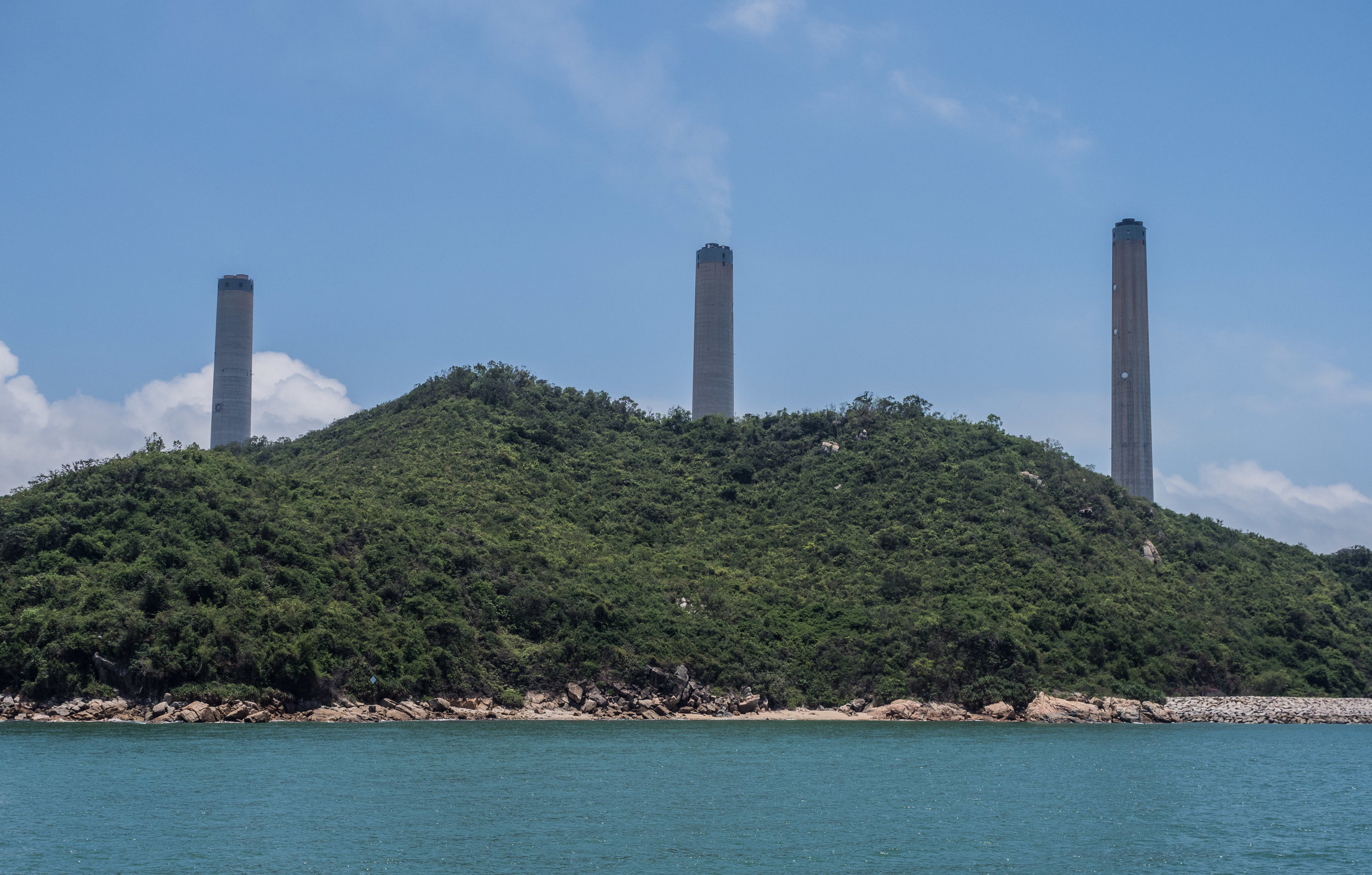
Lamma Island
... greets you with the view of the three chimneys of one of the largest power plants in Hong Kong.
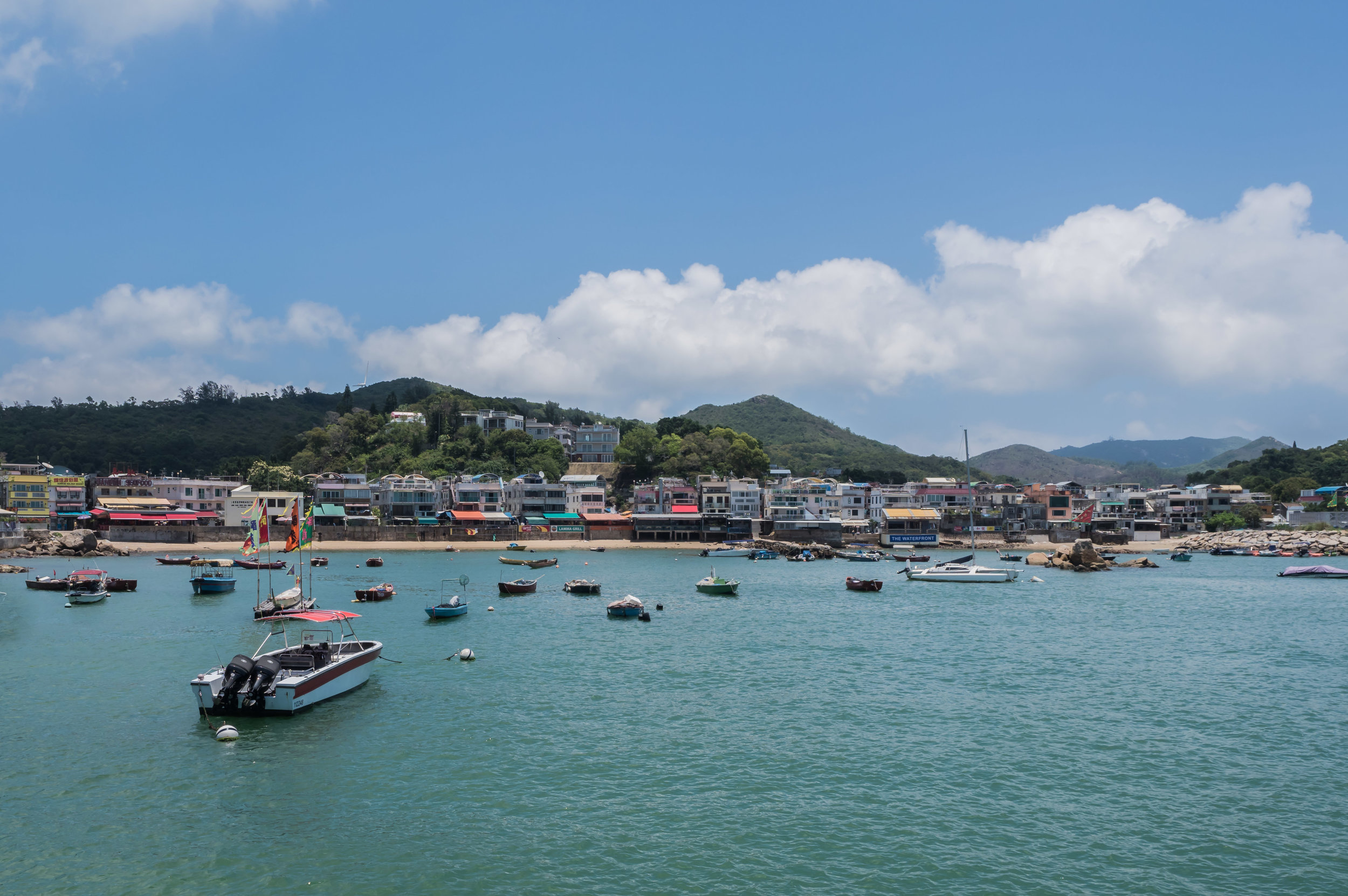
Harbour
Looking past that though, the island offers a few nice beaches and quiet villages with restaurants offering fresh sea food, just 20min from Hong Kong island.

Car Free
There are no cars on the island, resulting in a bike centered mode of transport.
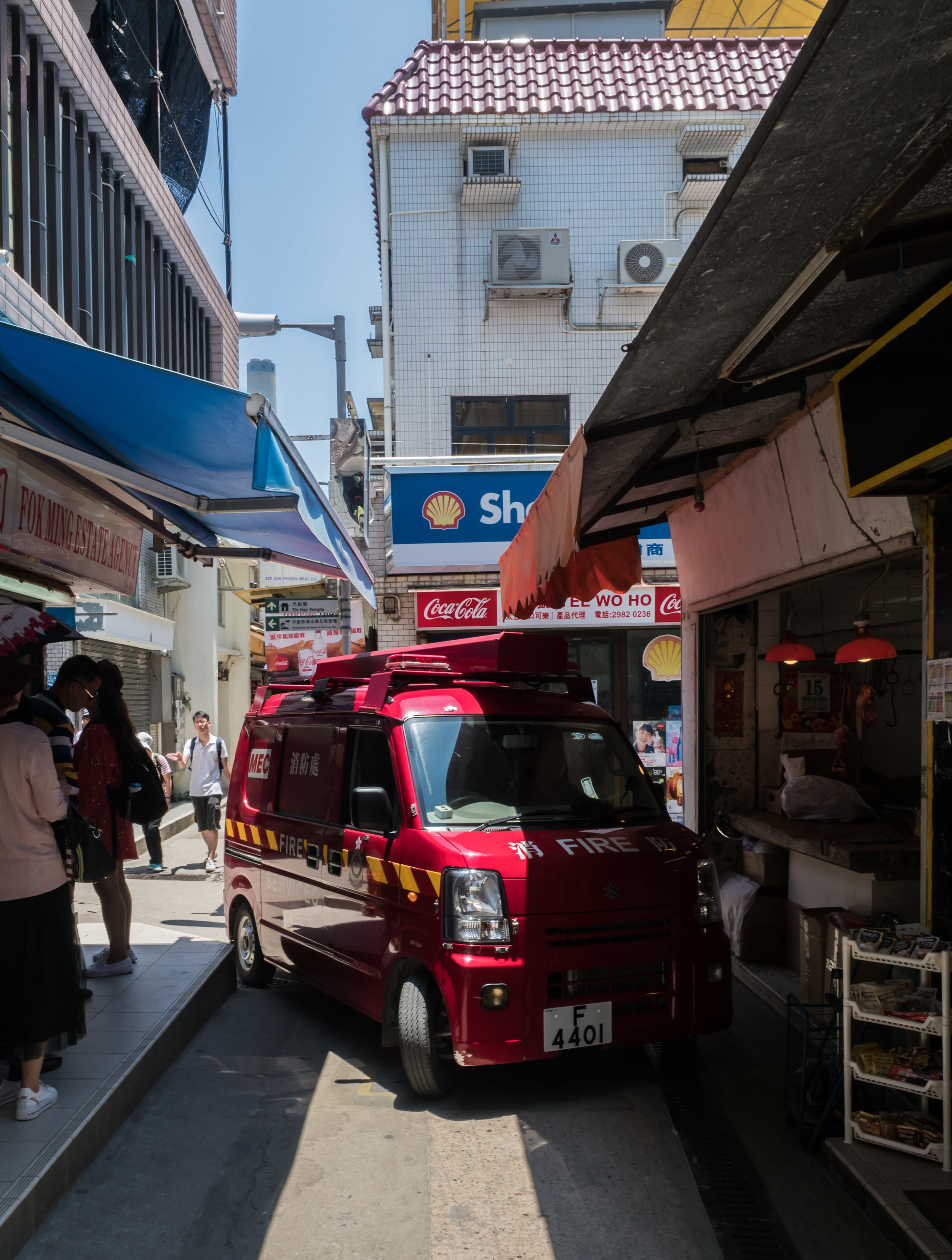
Wait!
Did I say car free? They do have some type of cars.
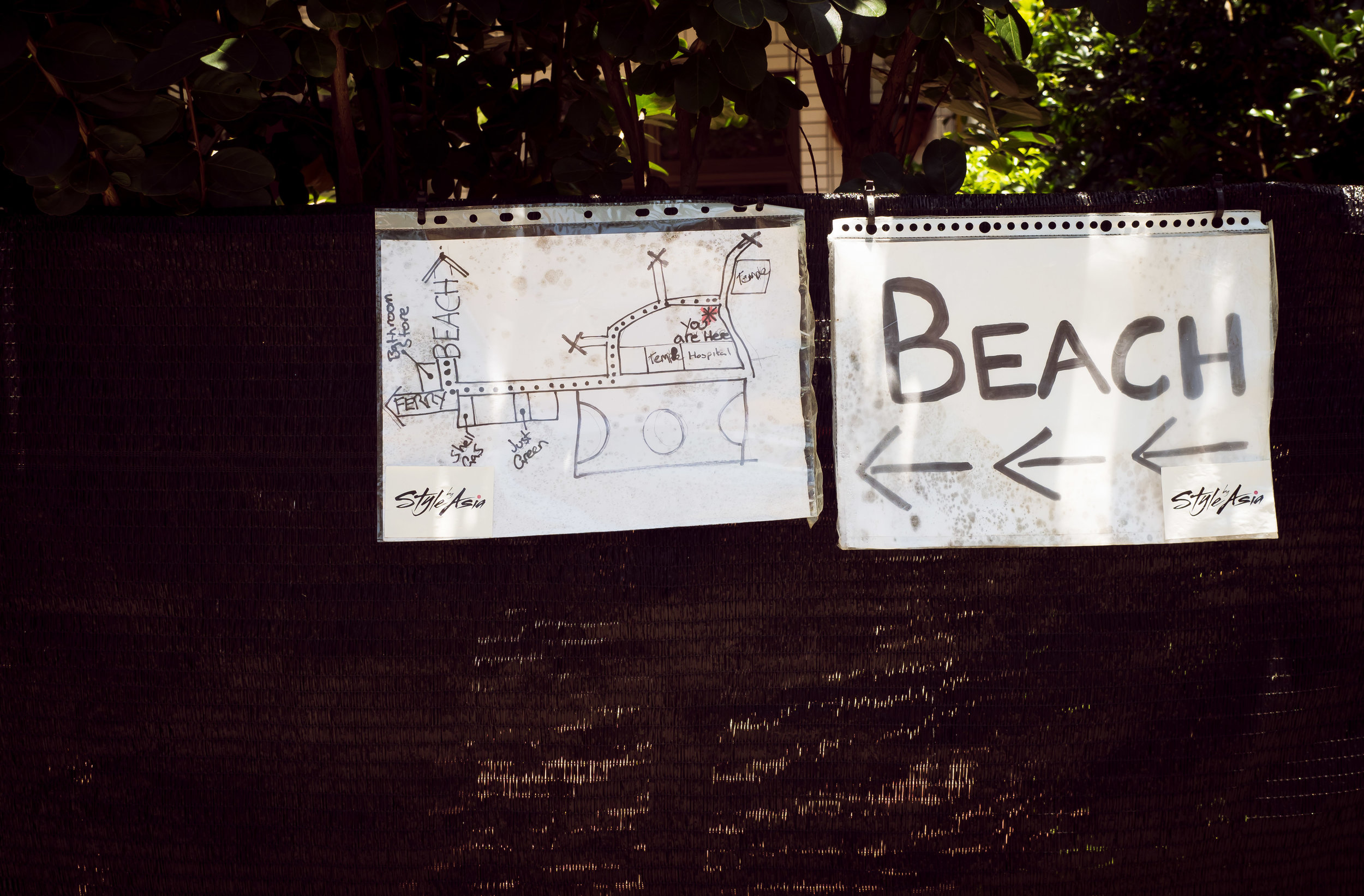
Signage
Simple and personal.
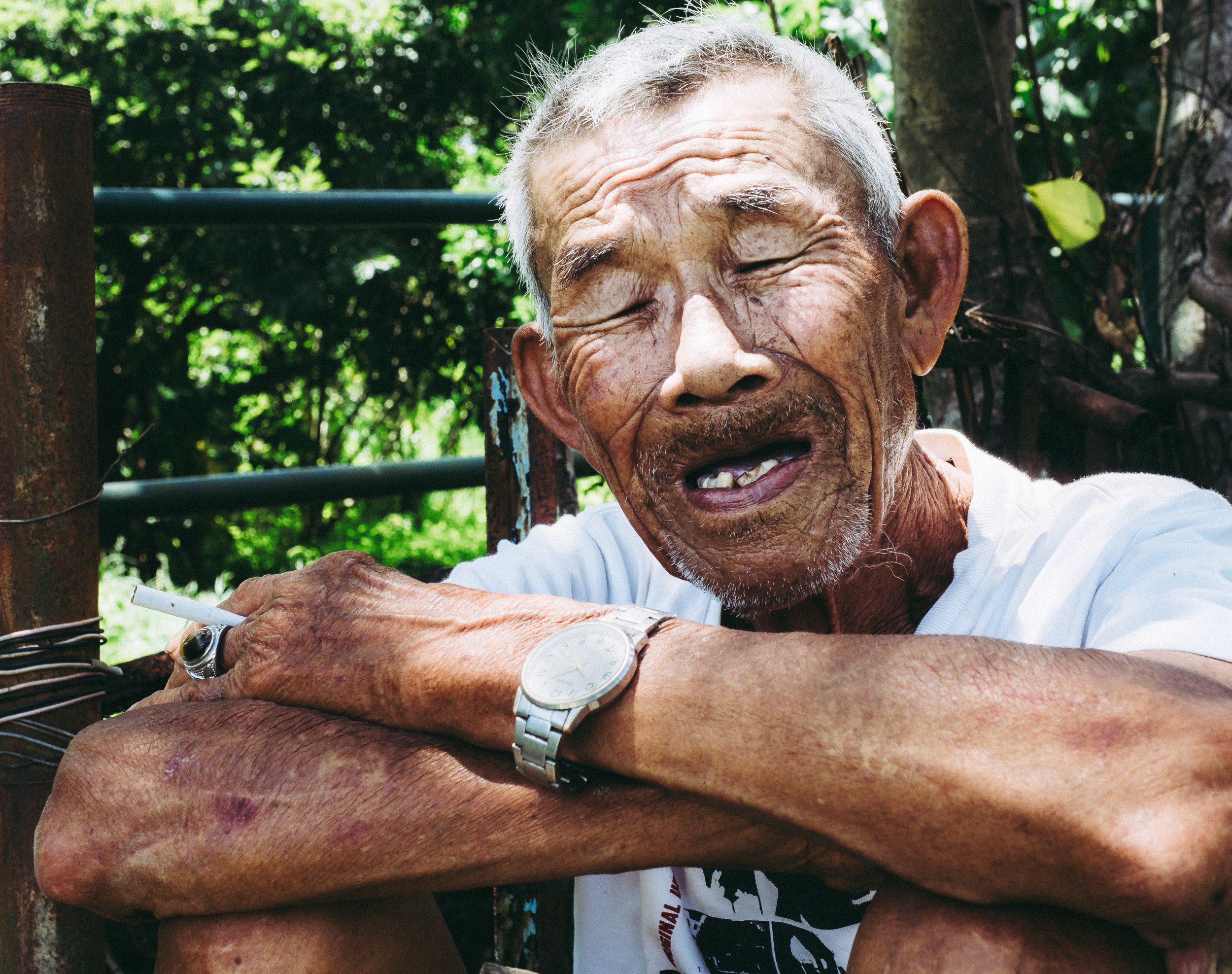
People
And so are the people - this farmer had a lot to tell, although I didn't understand a word.
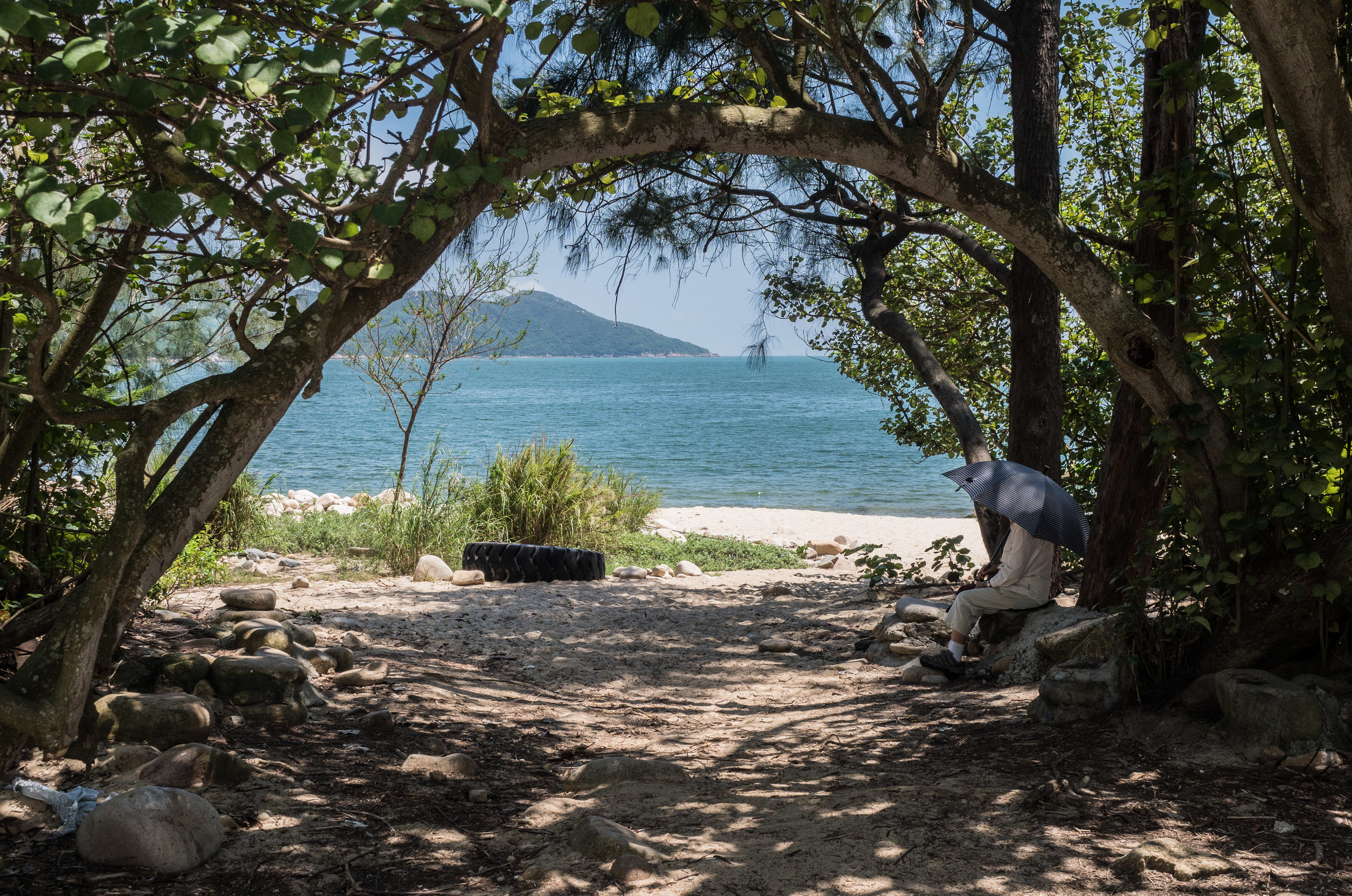
Views
A tourist enjoying the shaded views of the beaches at Lamma island.
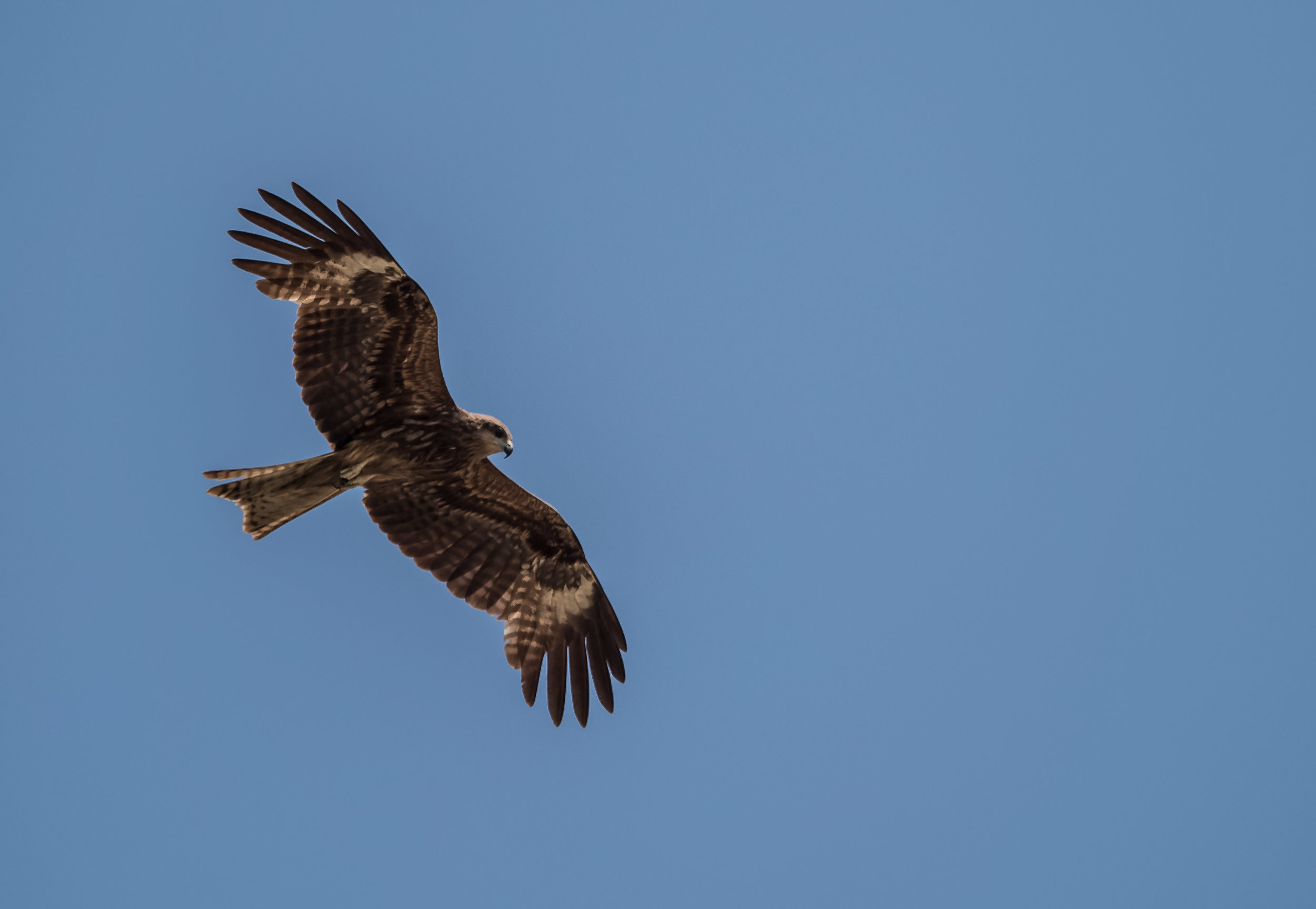
Flying
Ornithology certainly isn't one of my specialities - what kind of bird is this?

There is indeed!
Favourite animal.
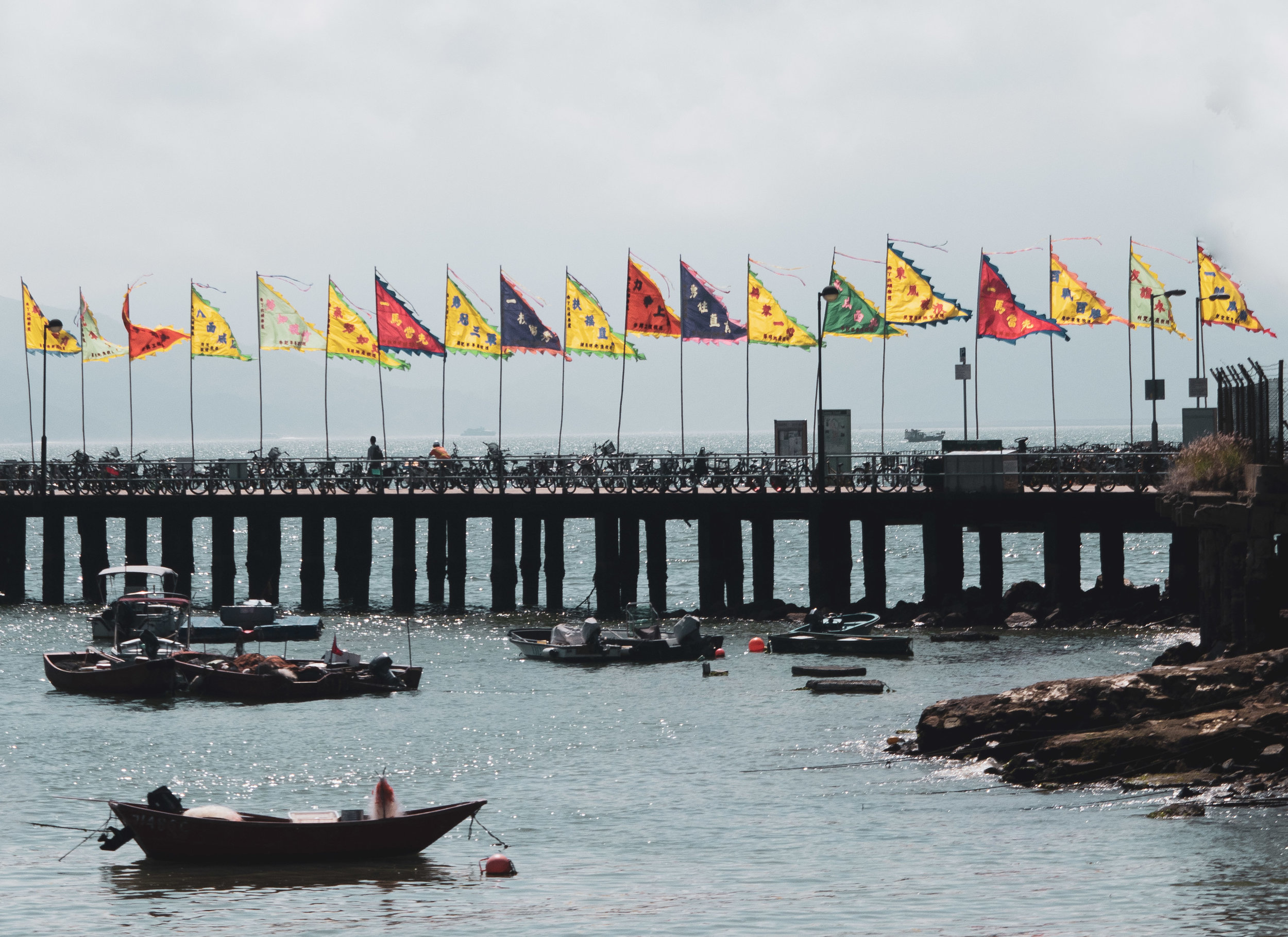
Dragon Boat Festival
The flags were put up for the Dragon Boat festival, which took place at Lamma just a day before our visit.
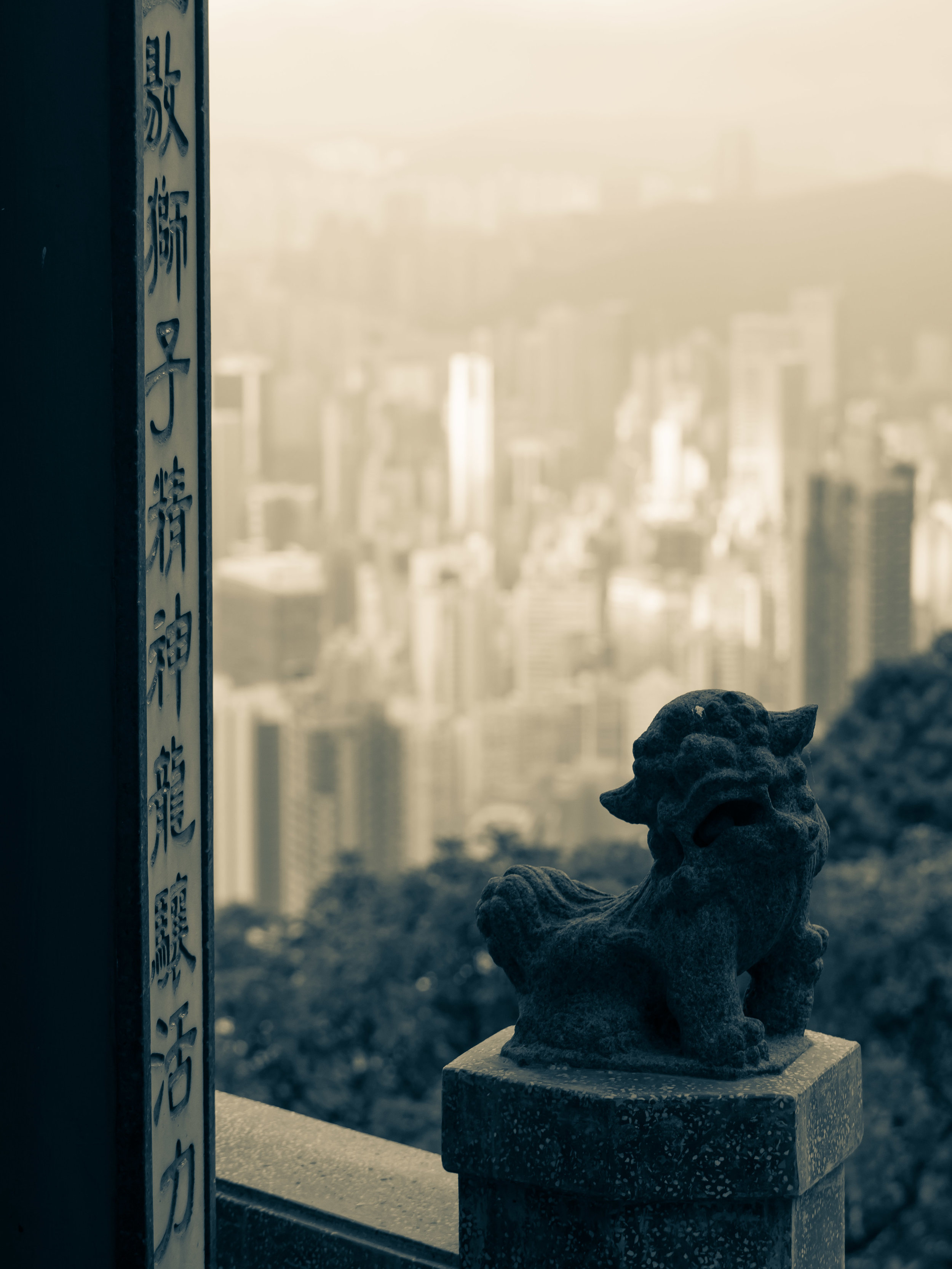
The Lion Pavillion
One of the lookouts on Victoria Peak.
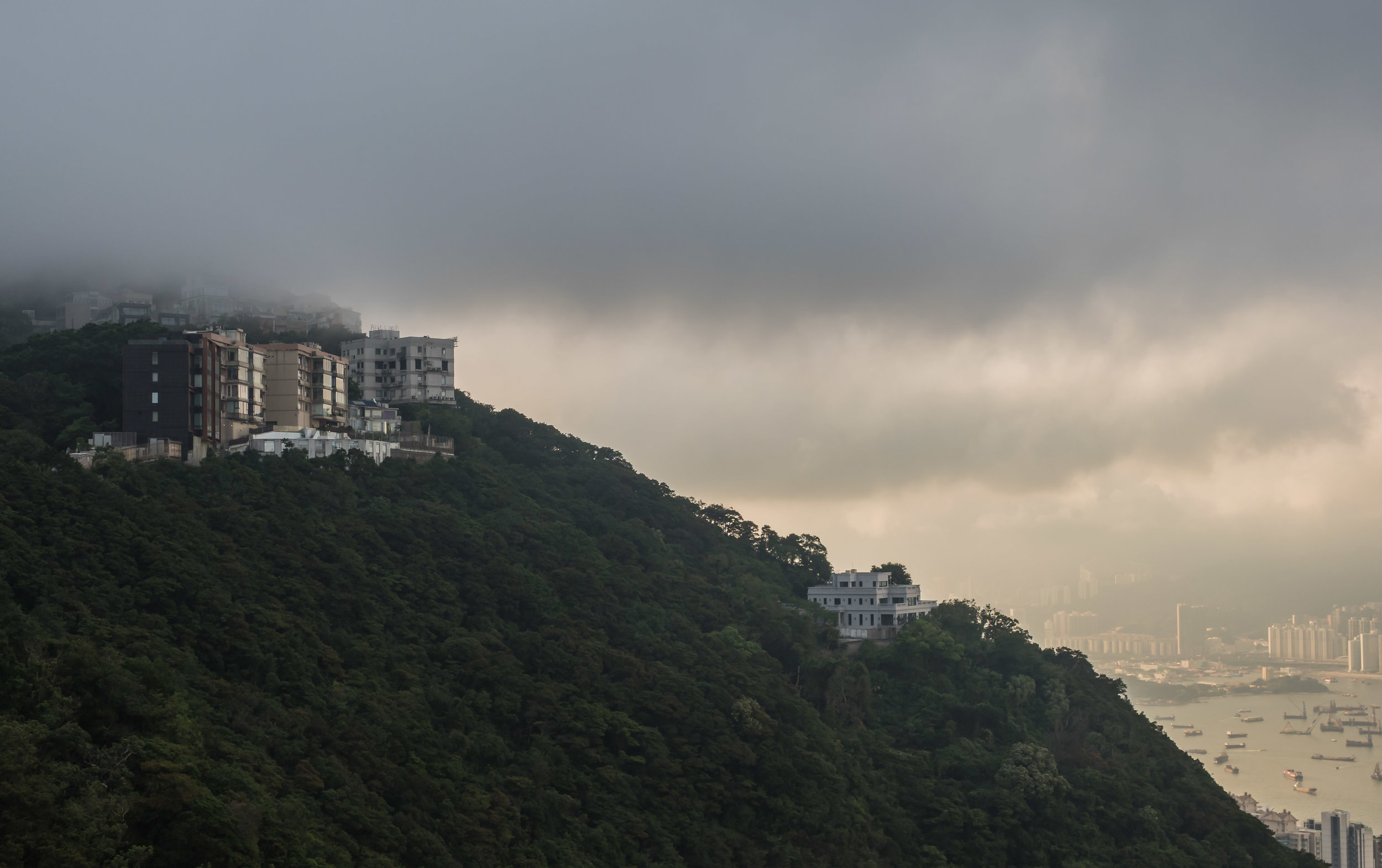
Victoria Peak
Often covered by scattered clouds rolling over the hills, this is the highest point on Hong Kong island.
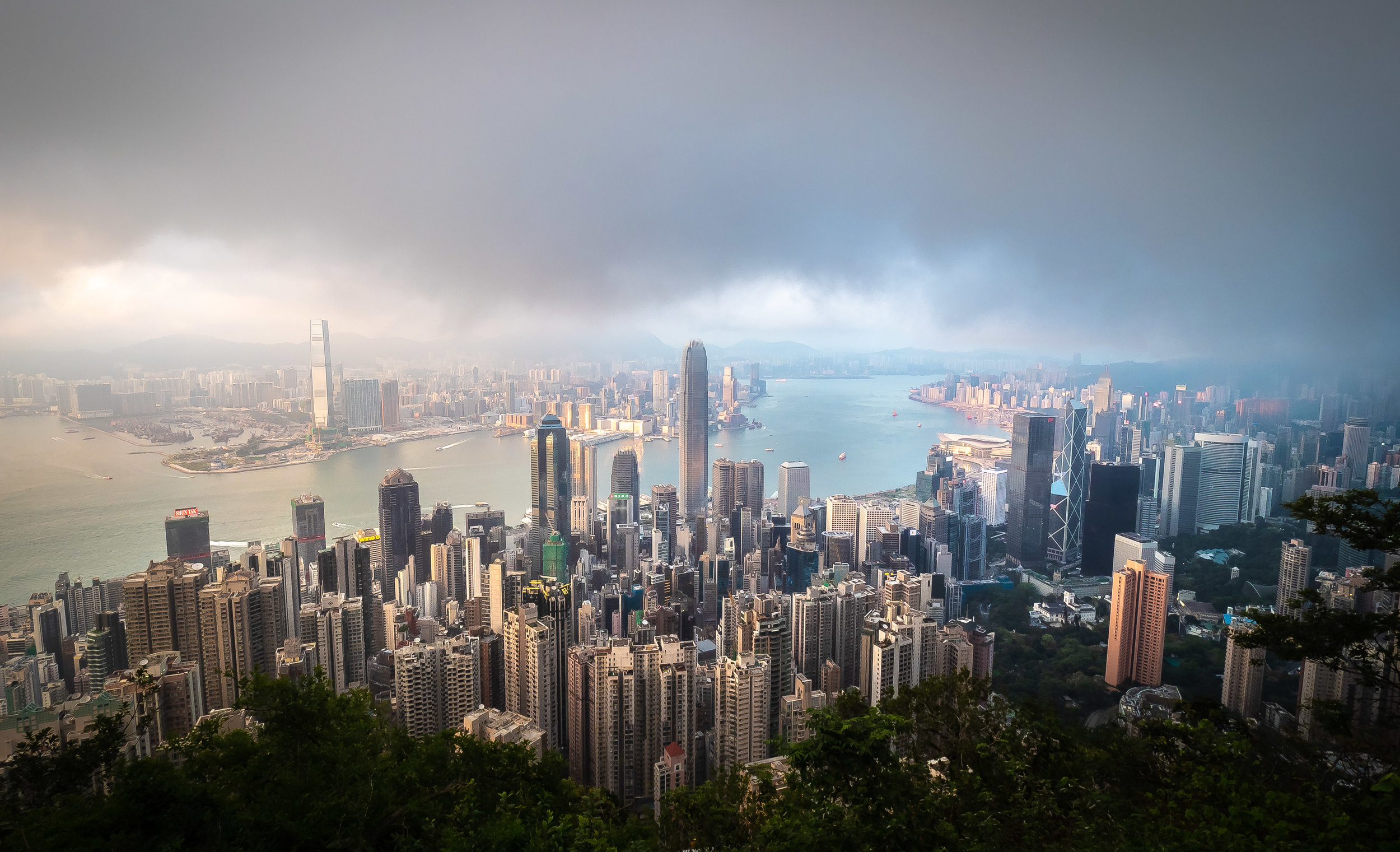
Views
And consequently offers what is arguably the best view over the city, with Central in the foreground and Kowloon on the other side of the bay.
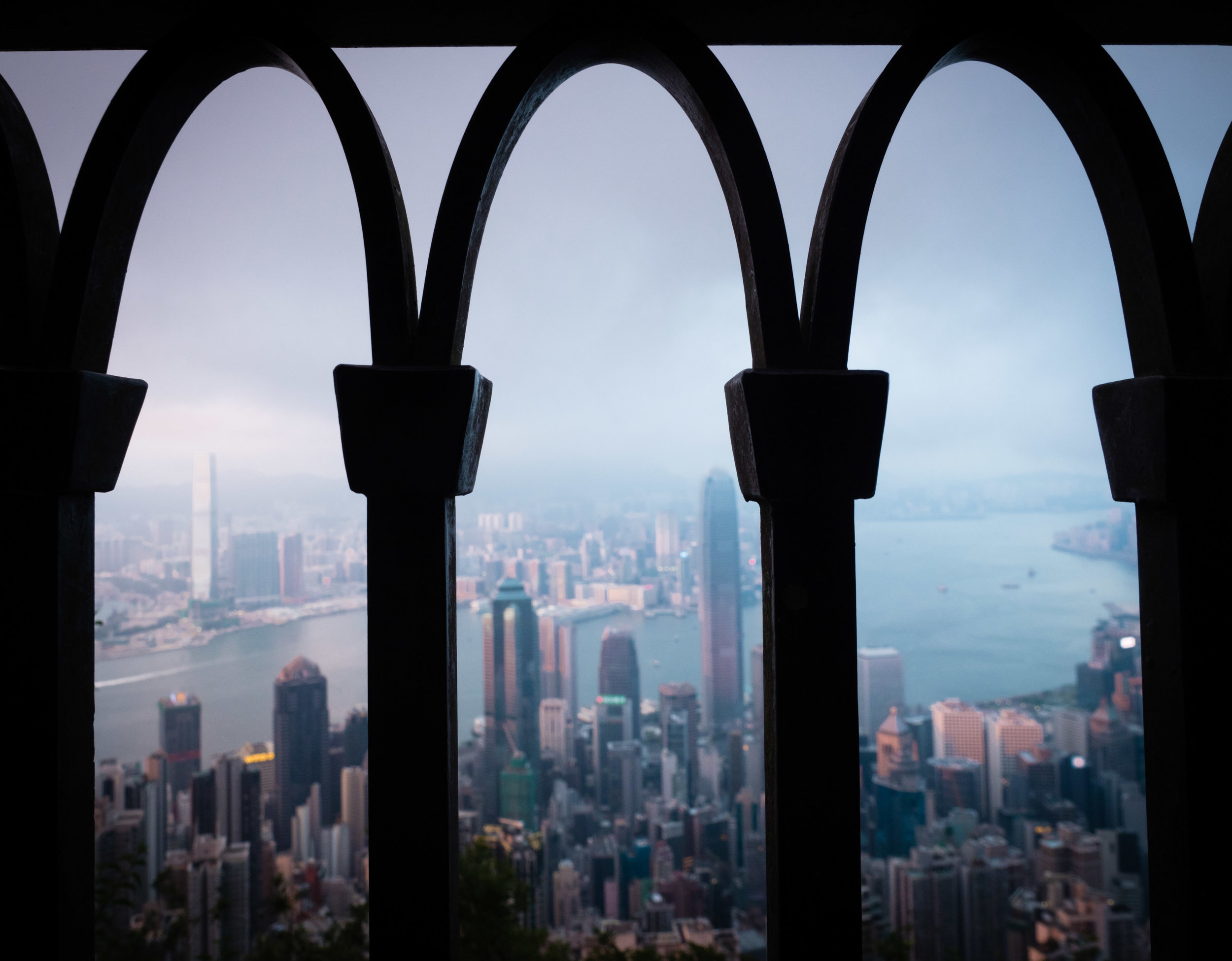
Lookout
The best position - with the fewest crowds - is at Lugard Road lookout, just 15min walk from the Peak tram station.
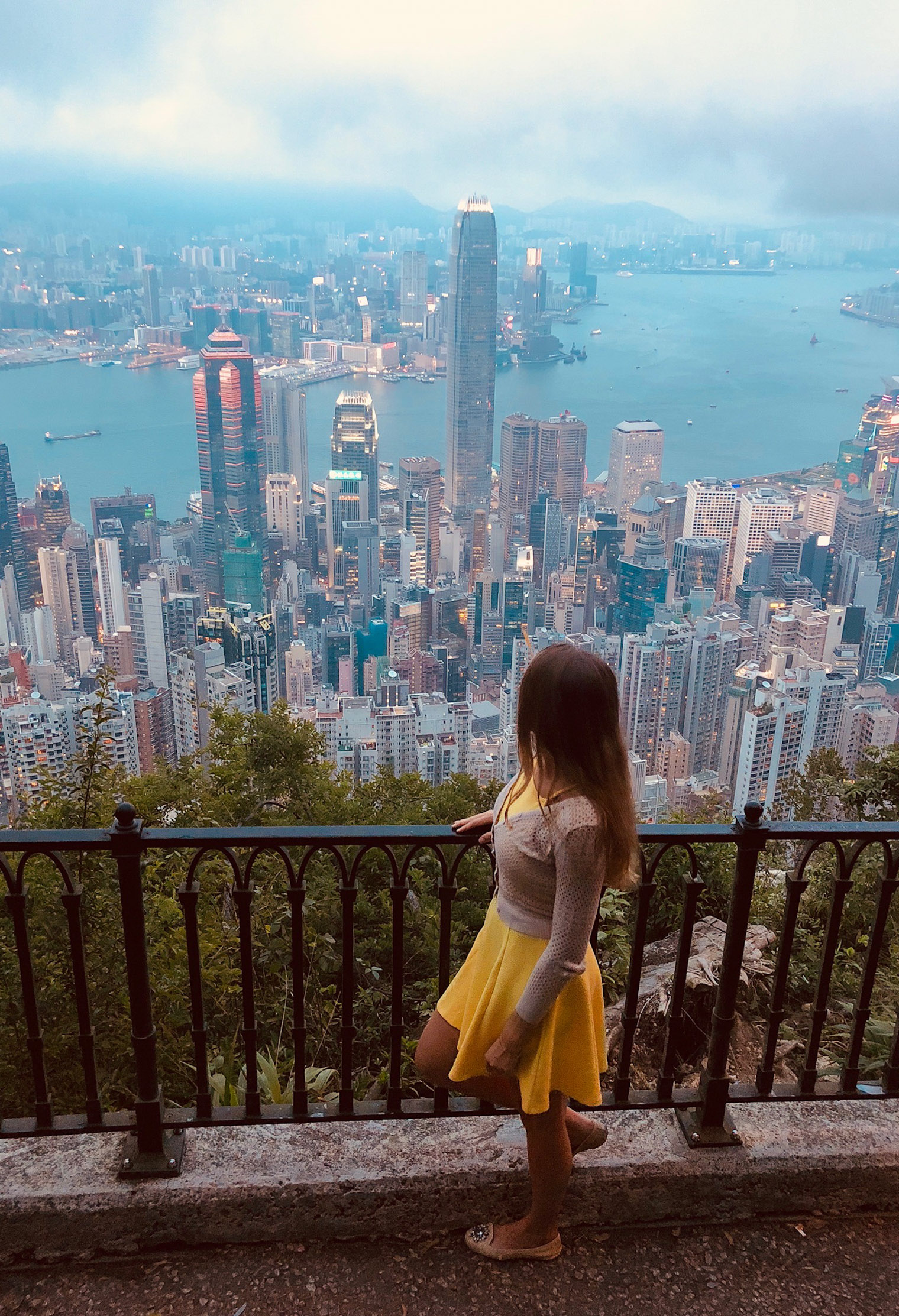
Soaking it in
The view from the Lugard street lookout.
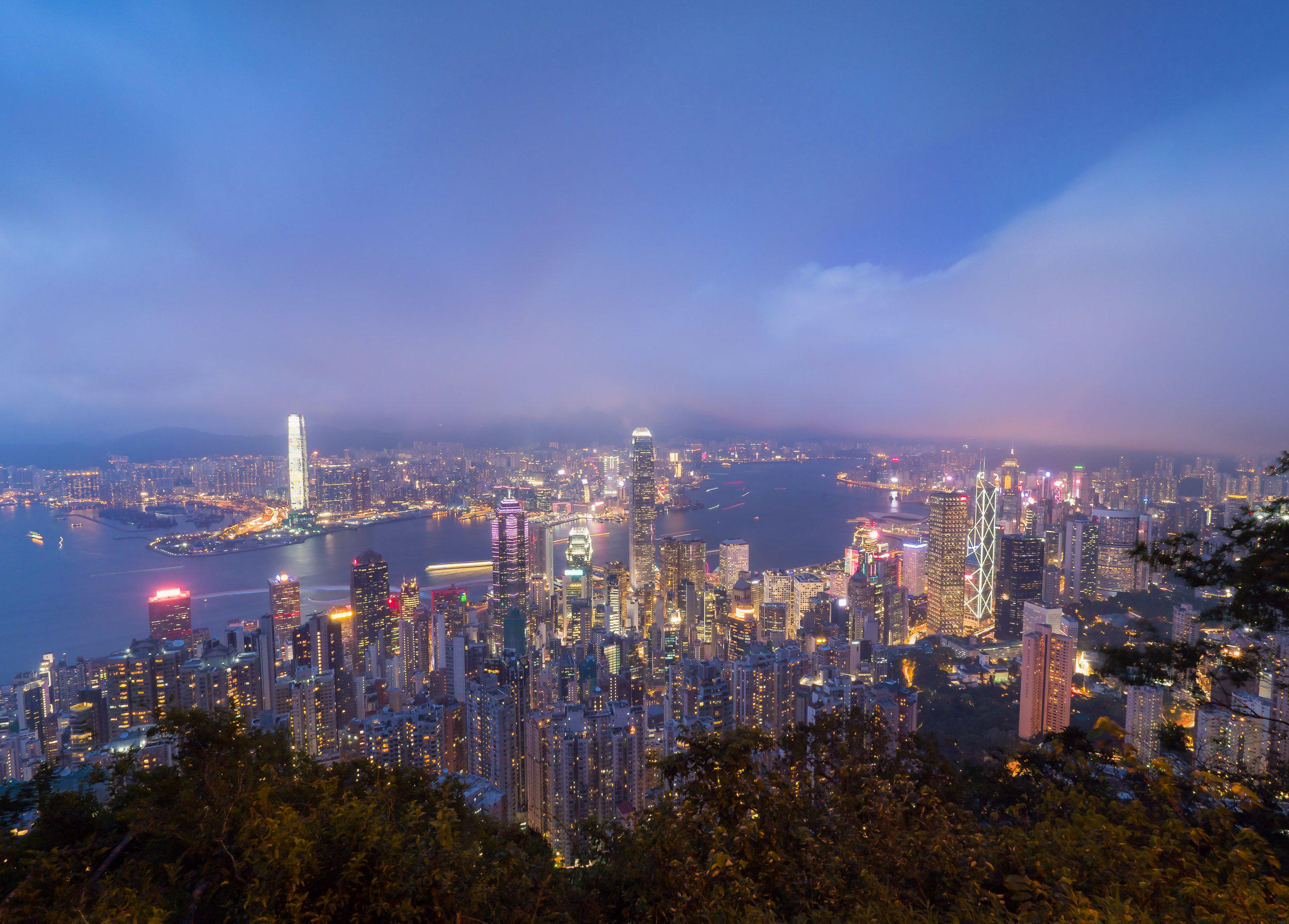
Dusk
When the sun has set, and the lights come on, Hong Kong shows its magic.
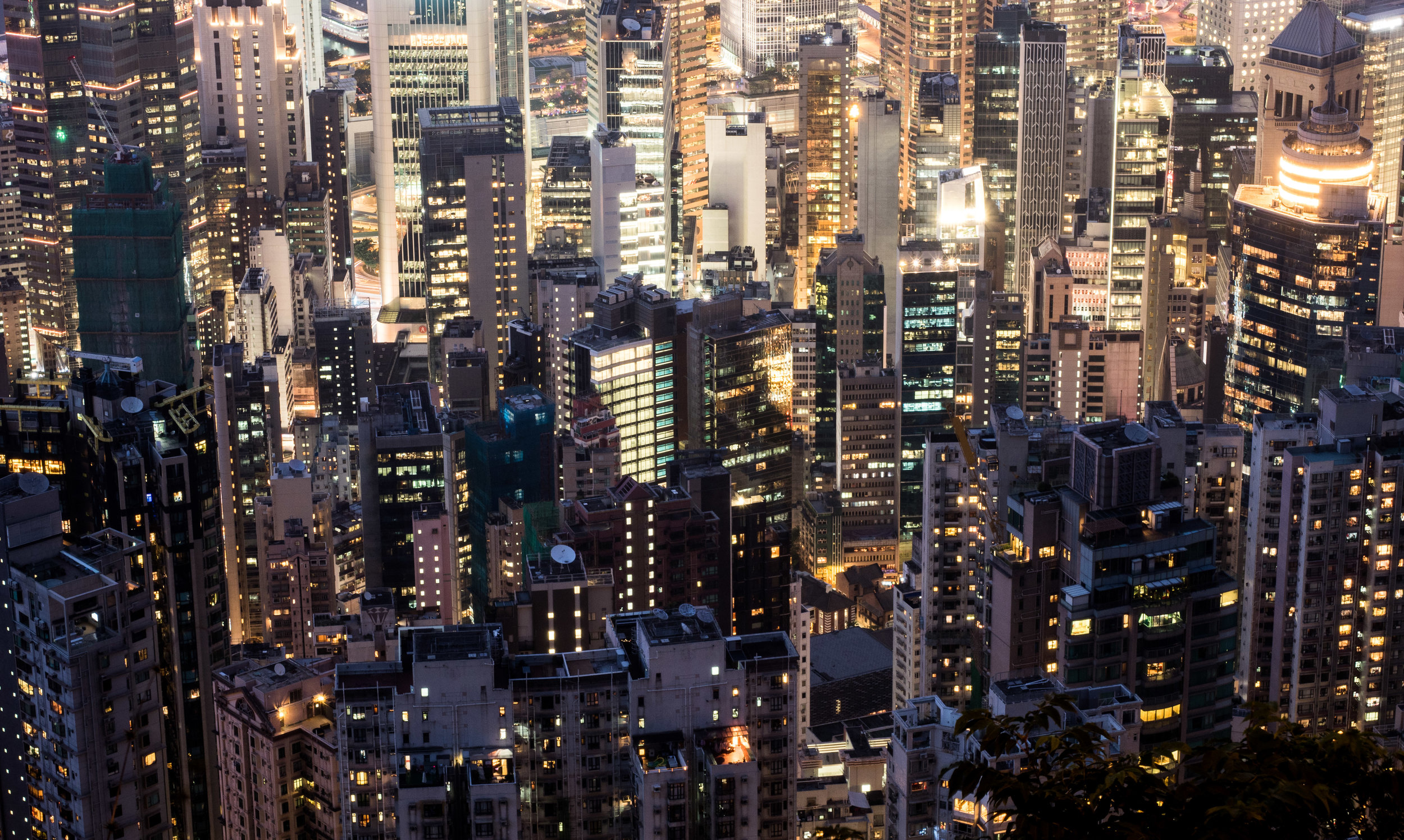
Skyscrapers
Hong Kong is home to over 2700 buildings taller than 100m - the largest number in the world.
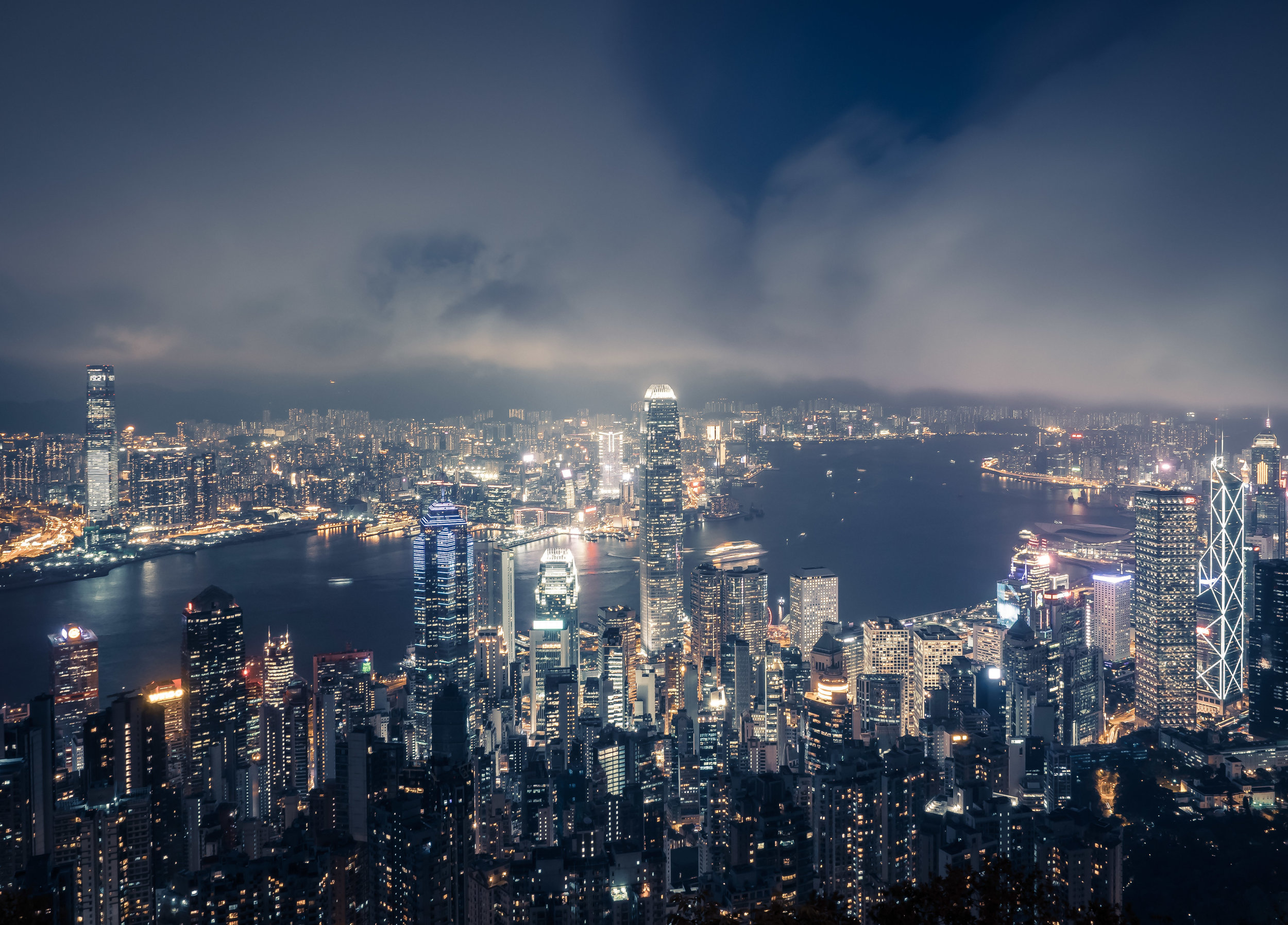
Night
The last step in the amazing transition from daylight to nighttime seen from the Peak.
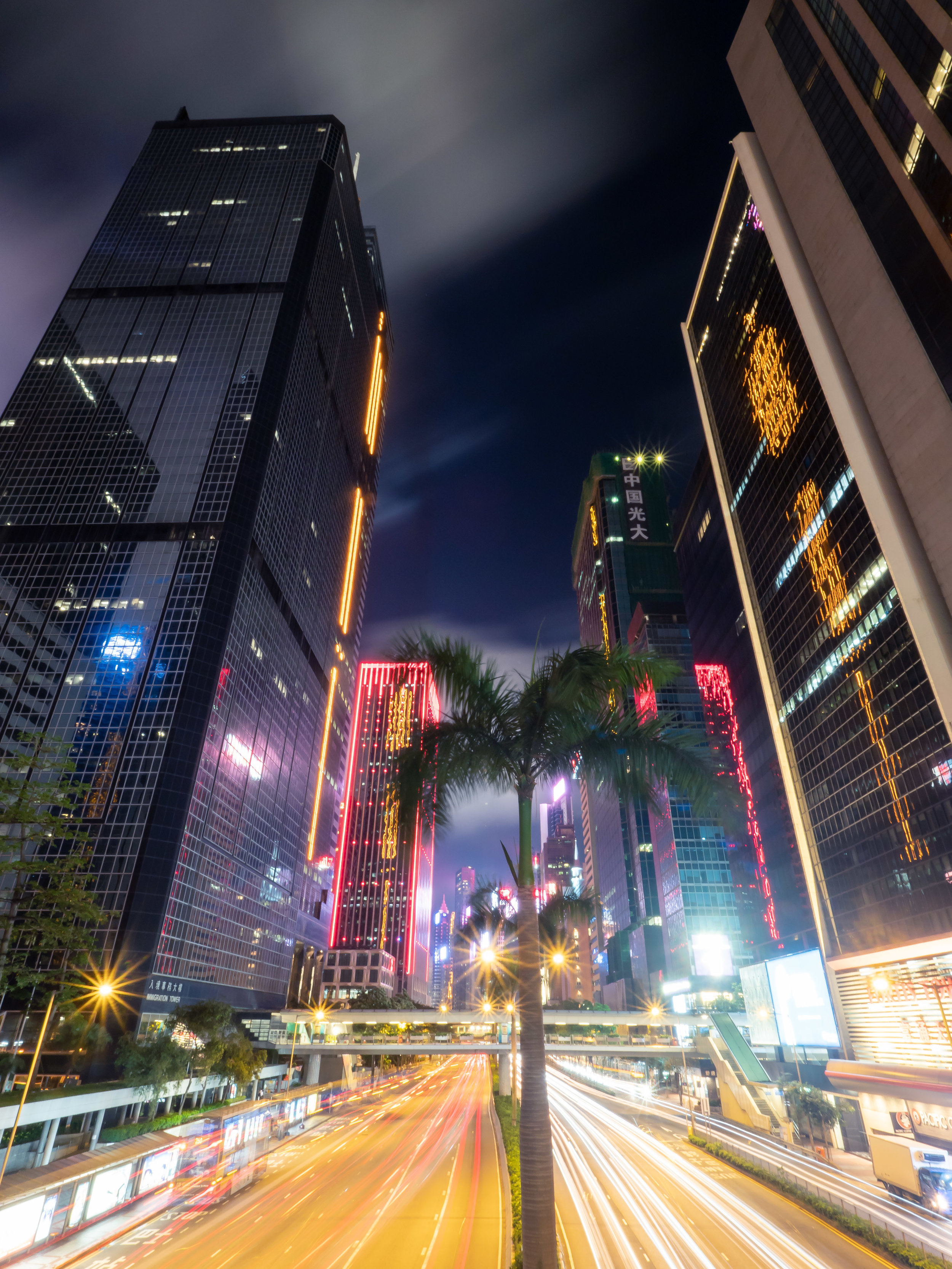
Footbridges
I really enjoyed the large number of footbridges in the city and the general effort to make it pedestrian (and photographer) friendly.
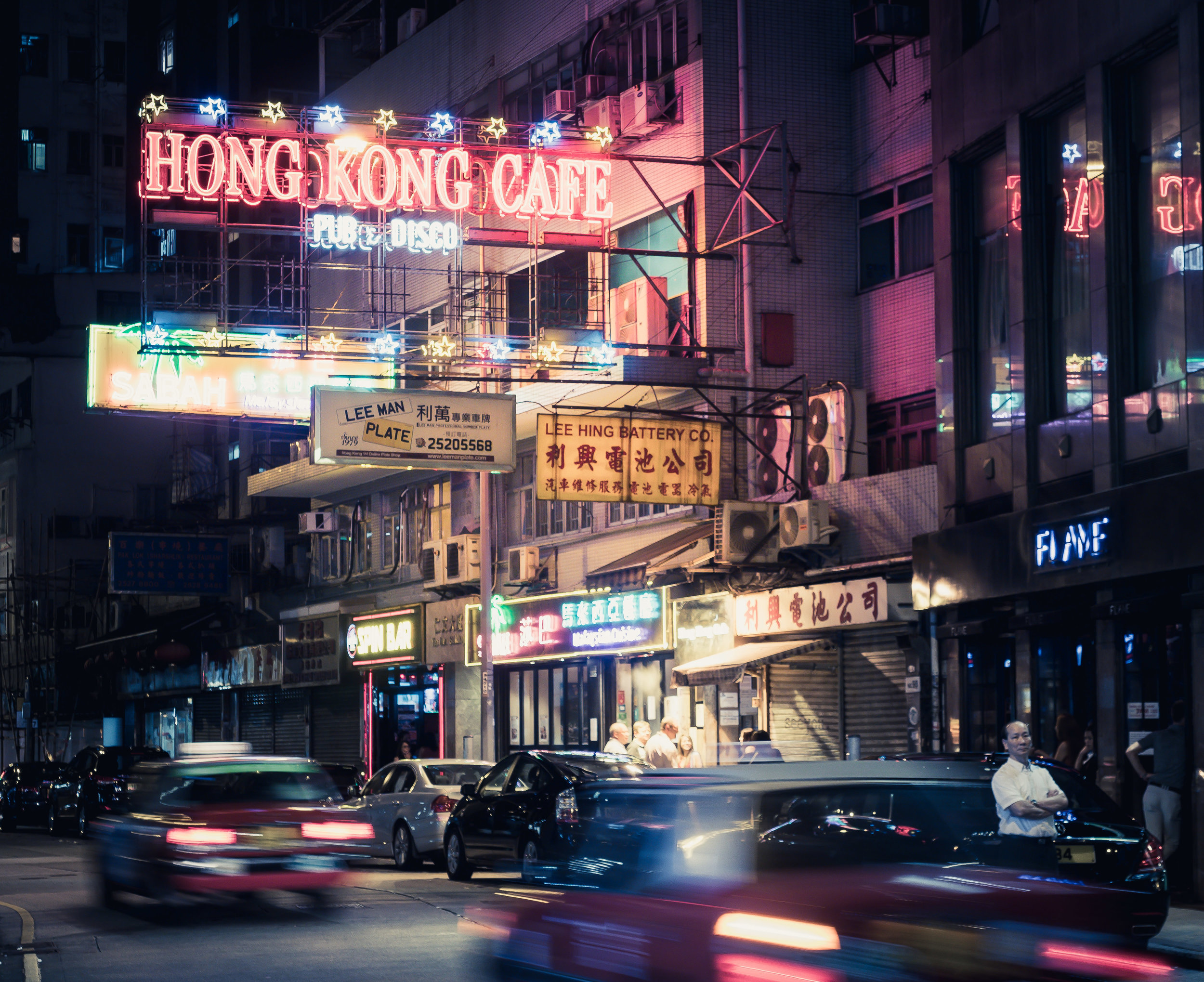
Neon Signs
There isn't a street without them.
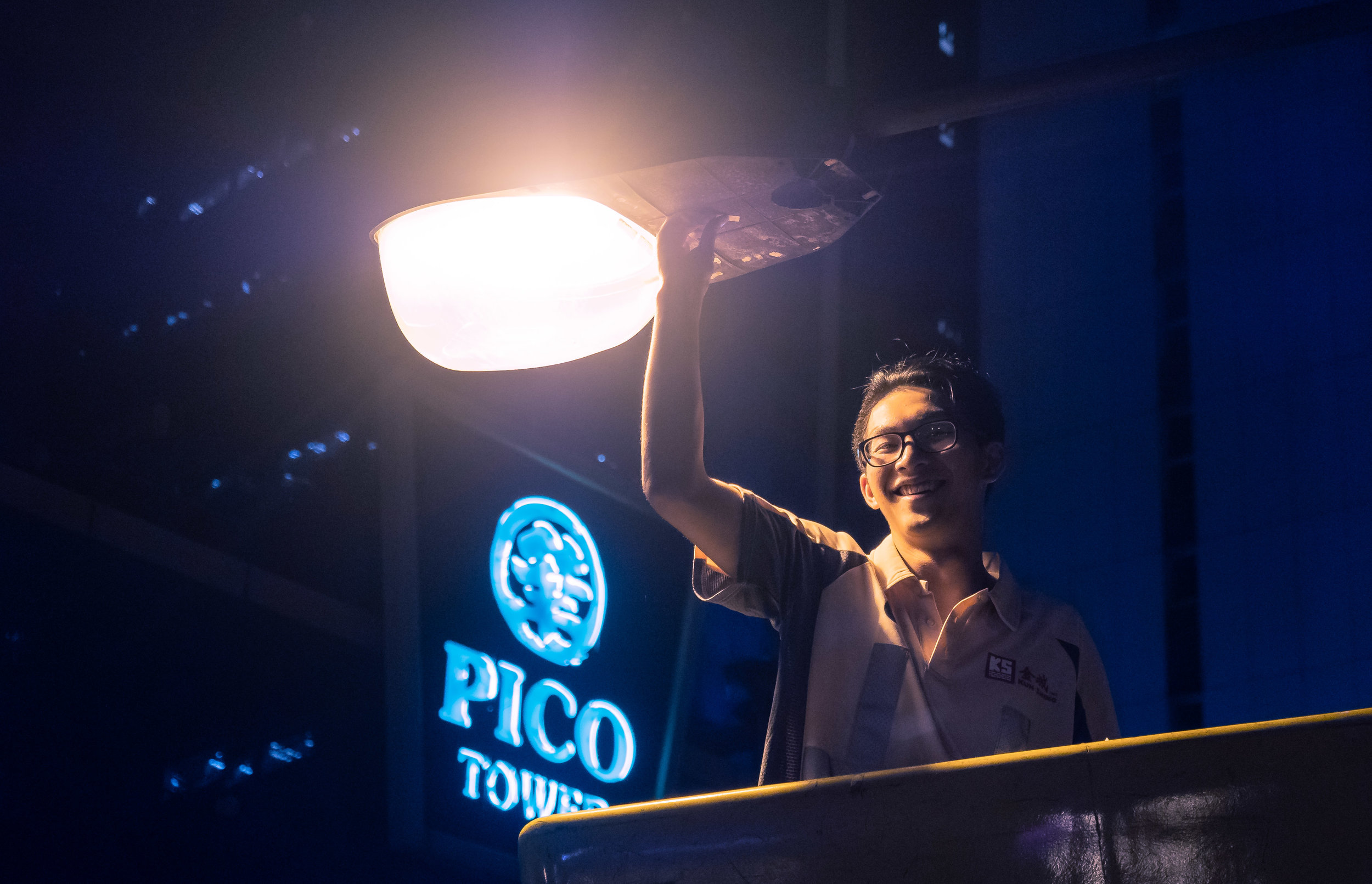
Maintenance
And many of these lights need frequent repairs, carried out by guys like him.
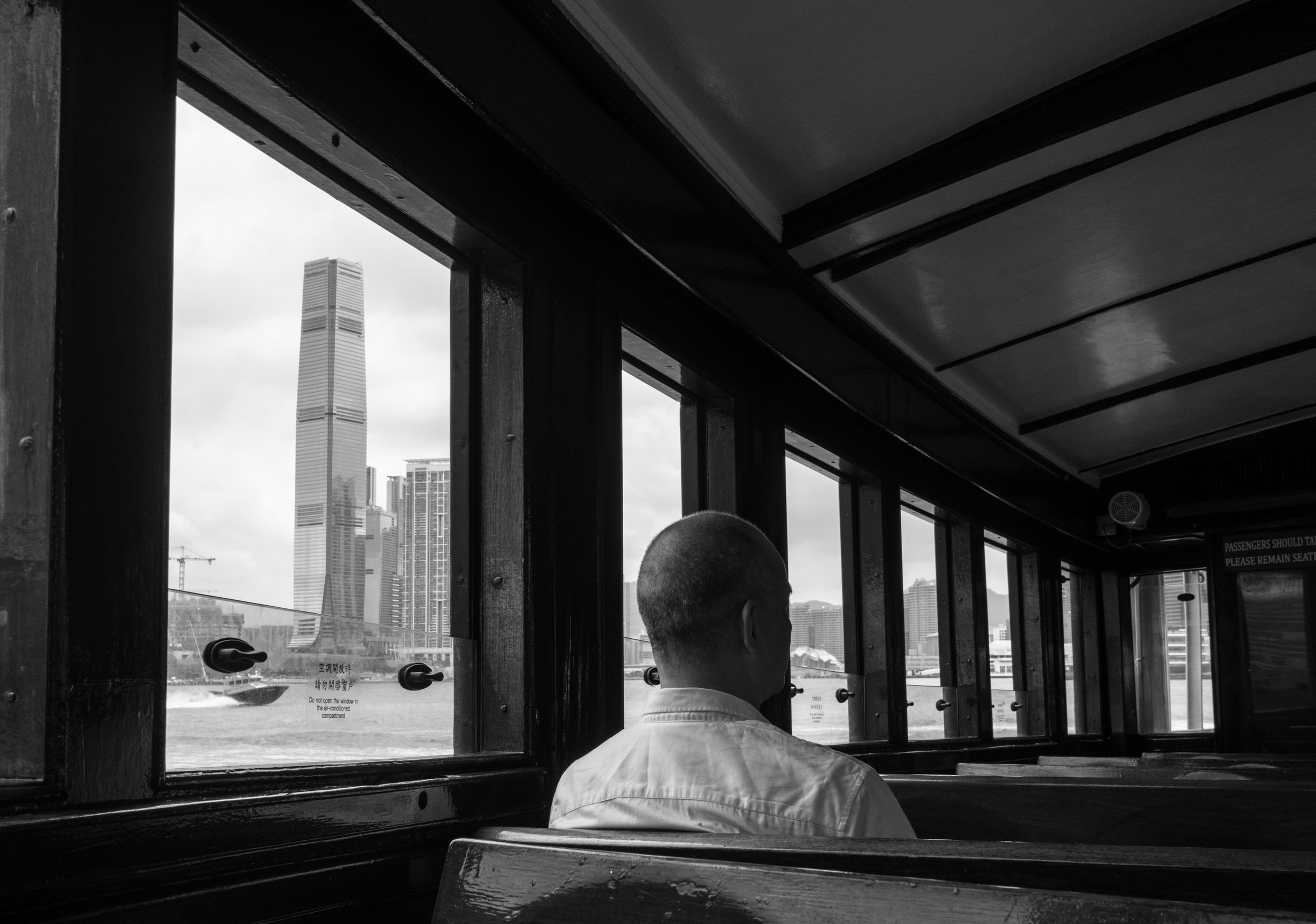
Ferry Rides
Crossing the bay with the Star Ferry always makes for nice perspectives.
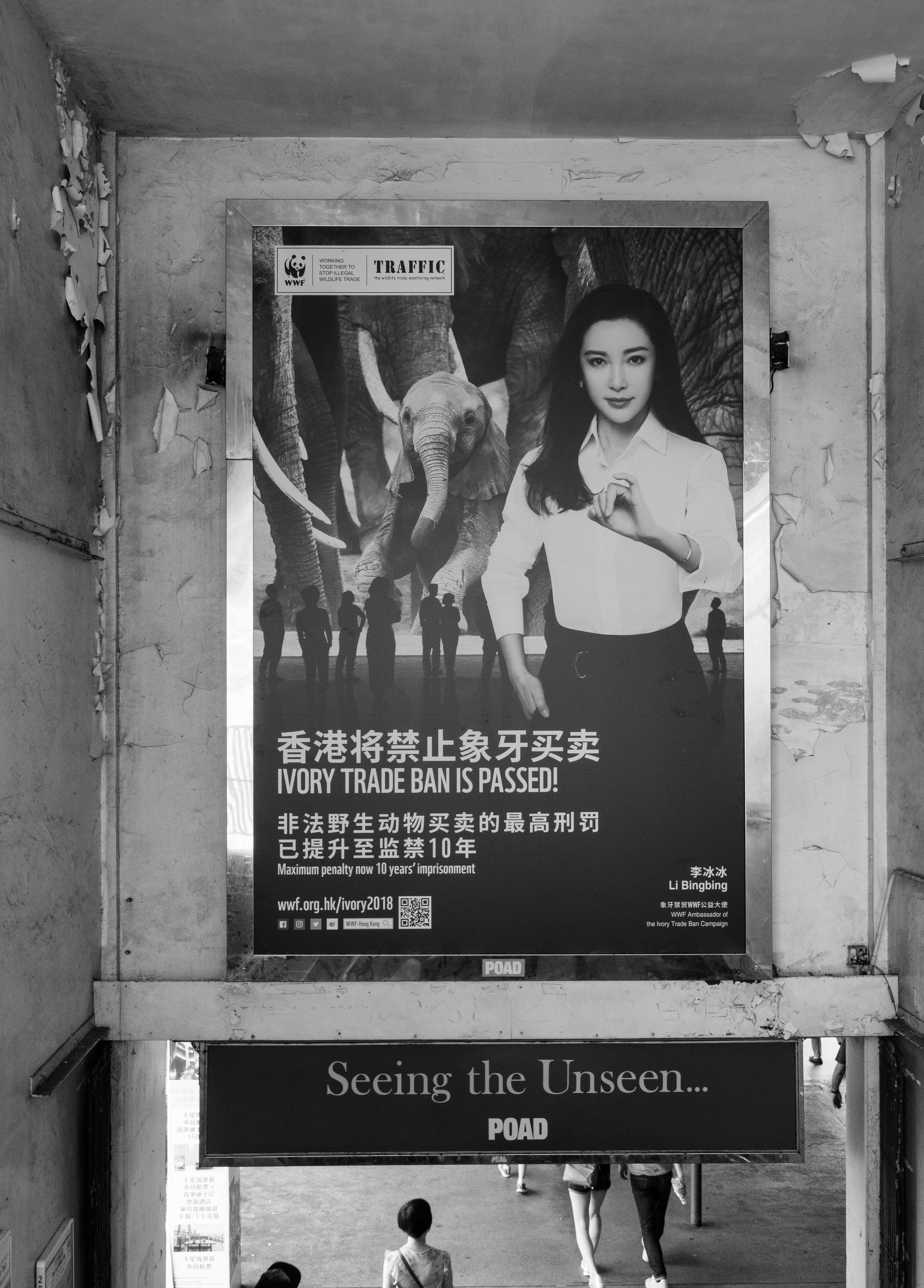
A Step Forward
With this new law for Hong Kong.
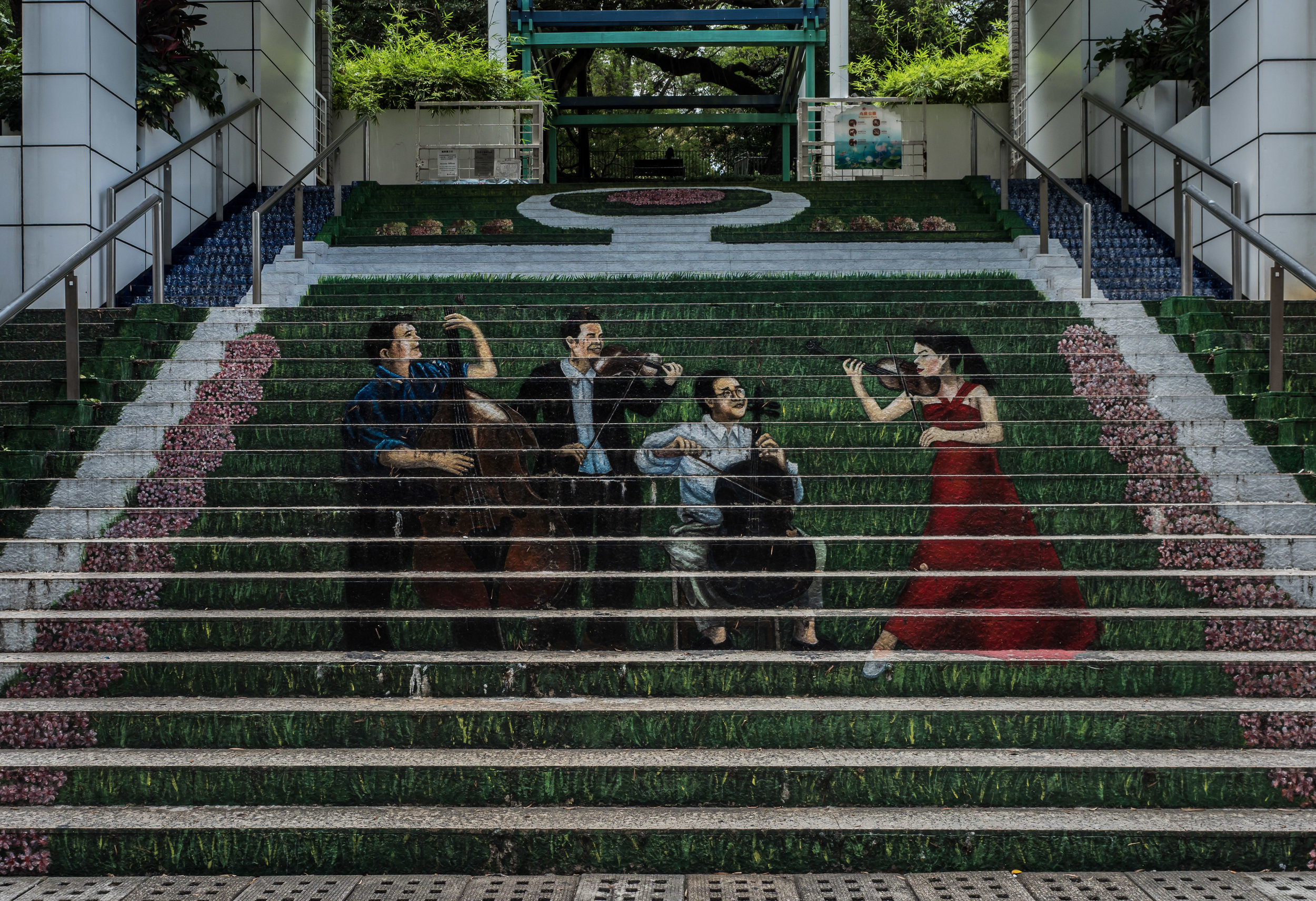
Concert
A creative city.
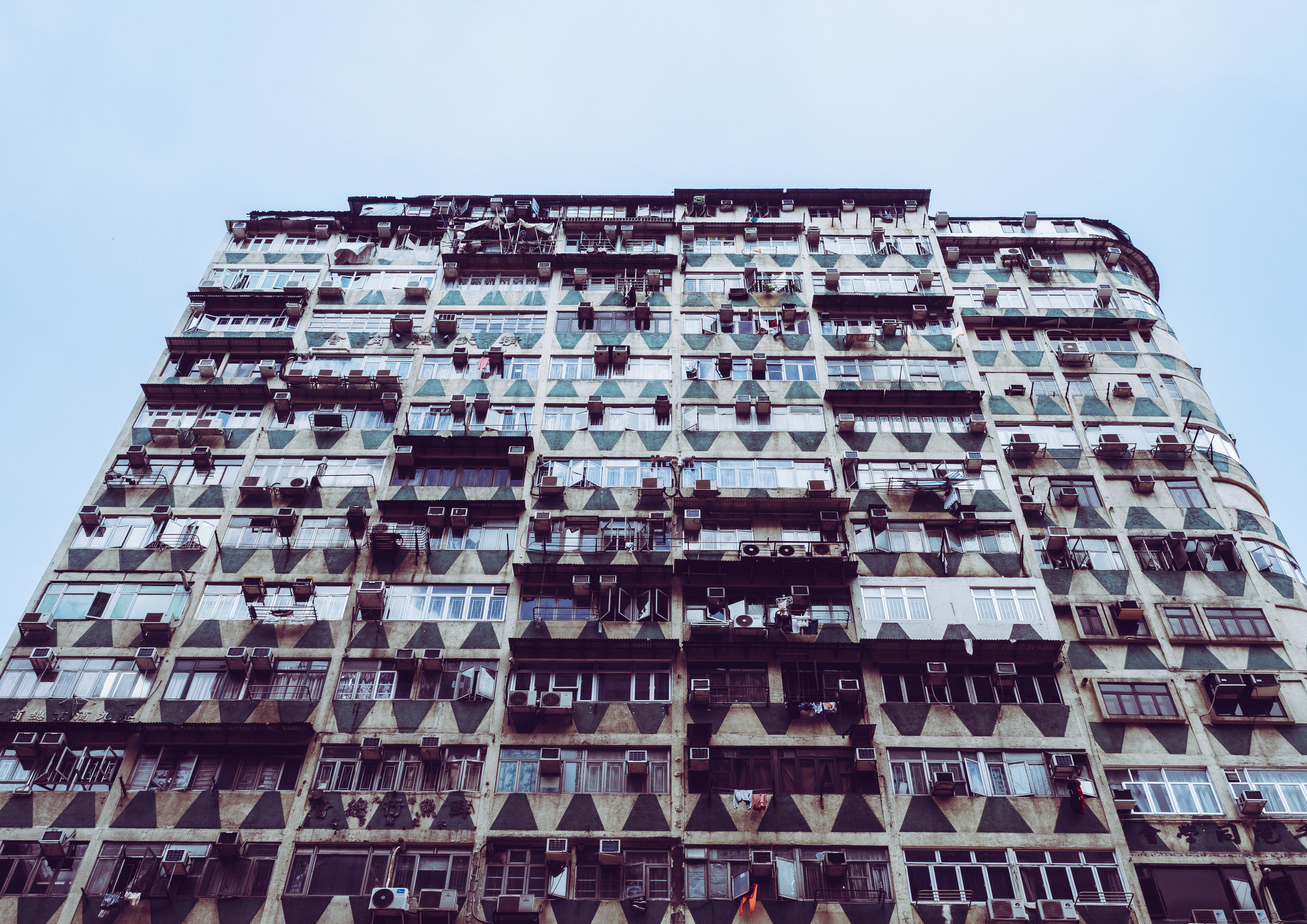
Decorations
While the omnipresent (and omnidripping) AC units don't make a for a pleasant facade, a surprising effort is placed on making exteriors look presentable, usually with muted colours and simple shapes.

Street Yoga
Caugt this woman engaging in some morning routine.

Contrasts
The high rises stand in sharp contrast with many of the simple low rise sheds still present in some parts of the city, such as the fruit and vegetable market seen here.
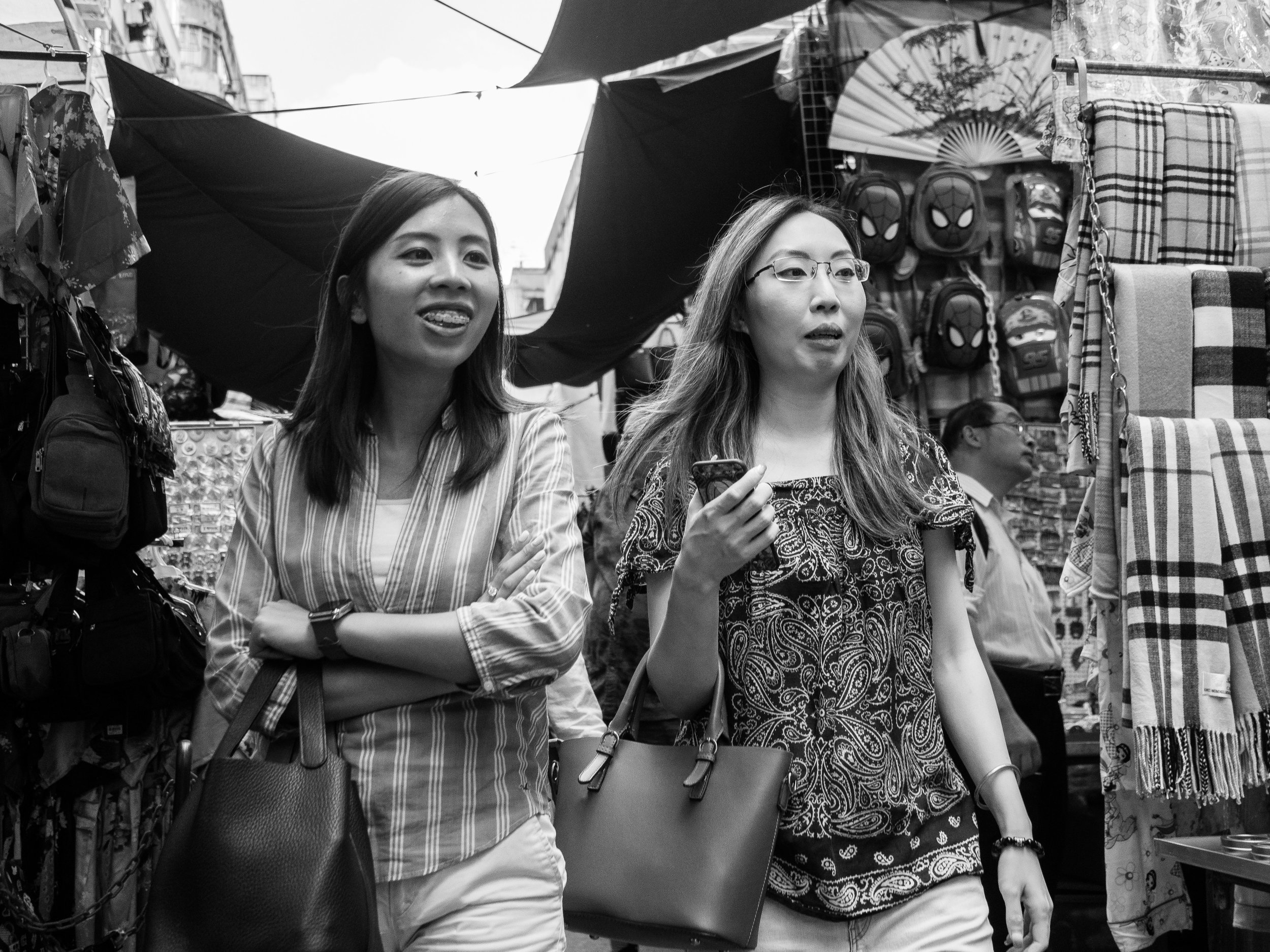
Shopping
Hong Kong is a primary shopping destination for many Chinese mainland tourists. Good or bad? Depends who you ask.
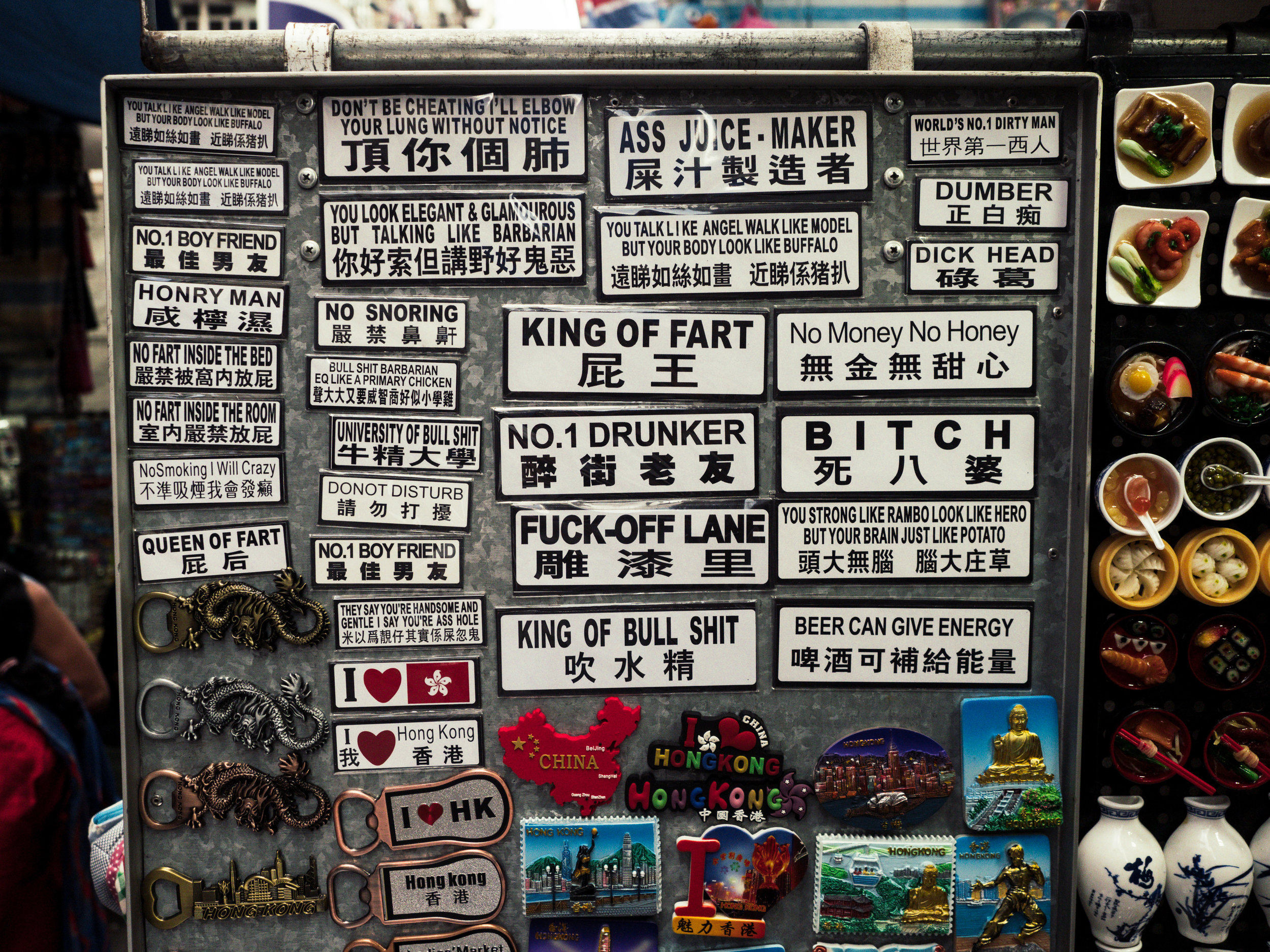
Chinese Proverbs
Or something like that.
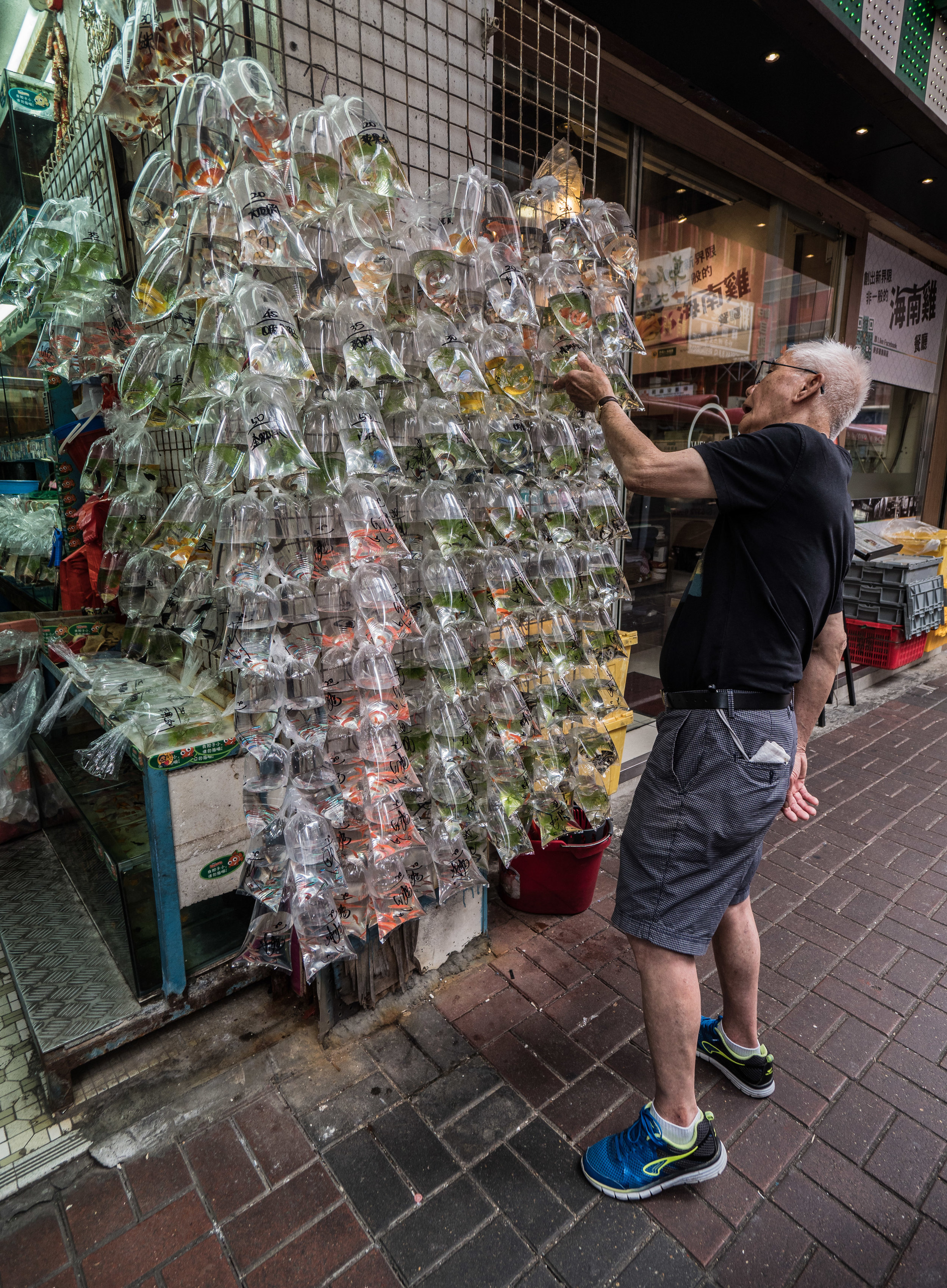
Need a Goldfish?
The goldfish market in Mong Kok offers all sorts of acquatic and other life in very questionable packaging.
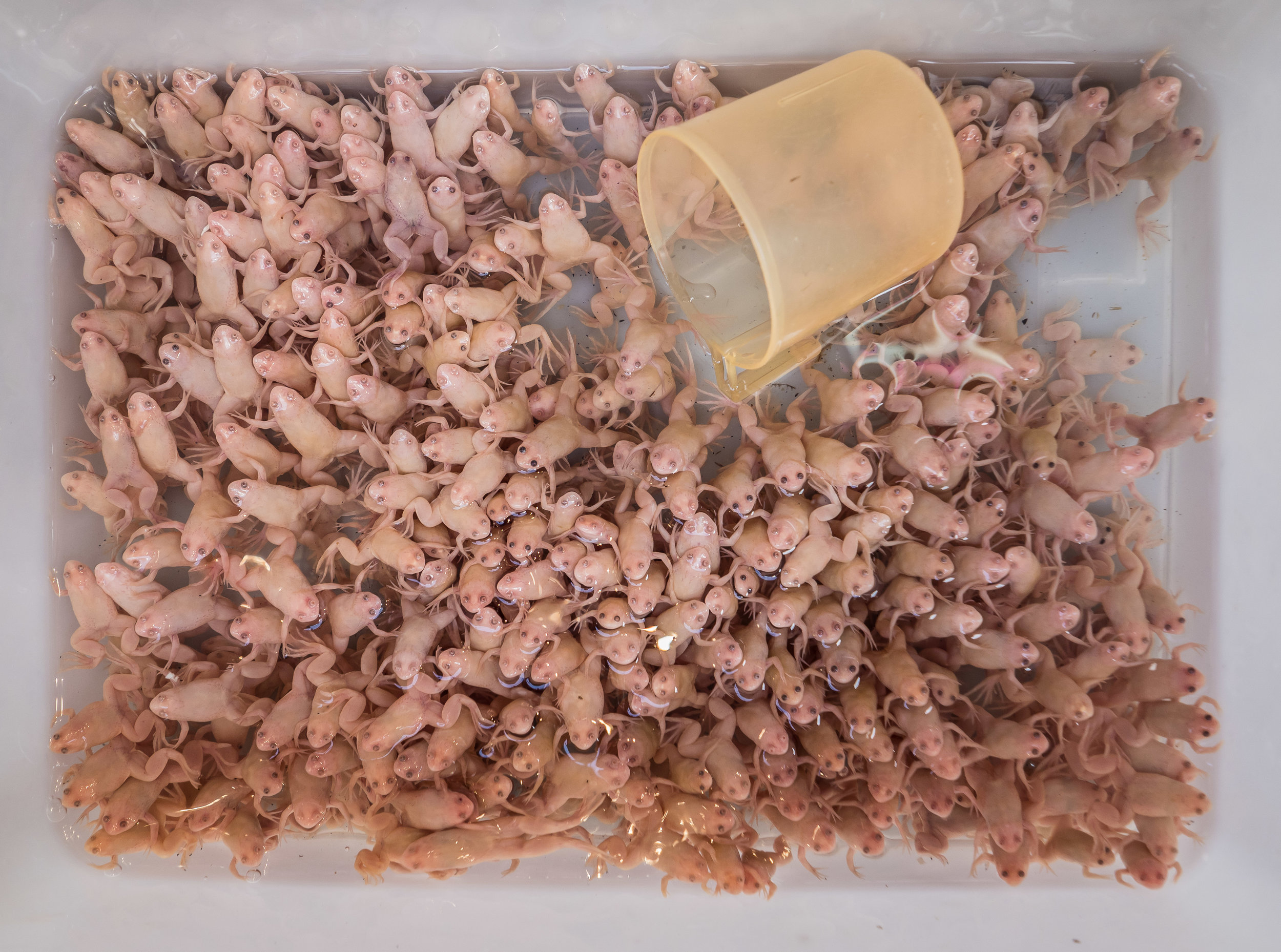
Reptile Food
Or so it seems.
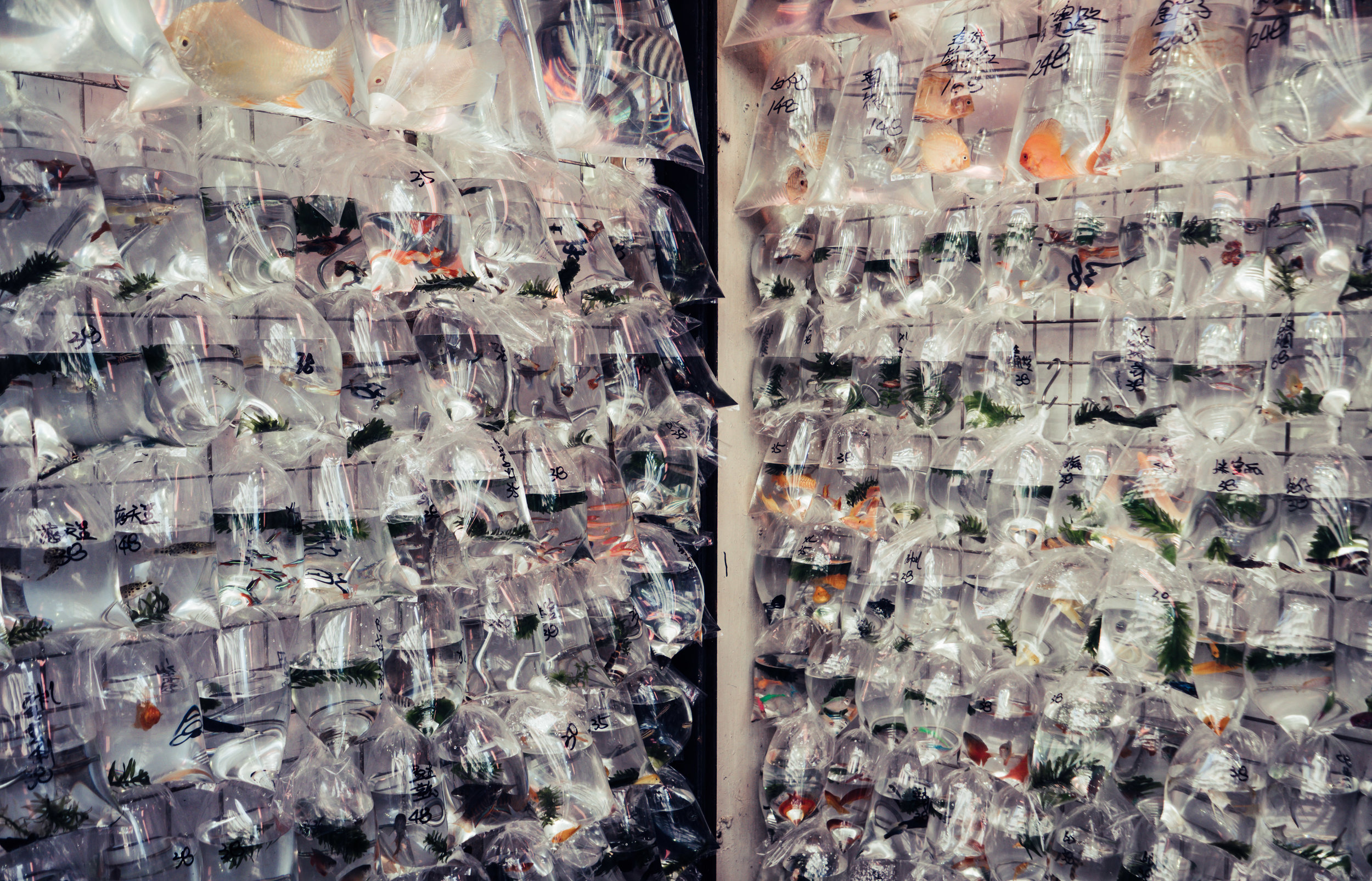
Fish in a Bag
The primary way to sell fresh water fish on the market.
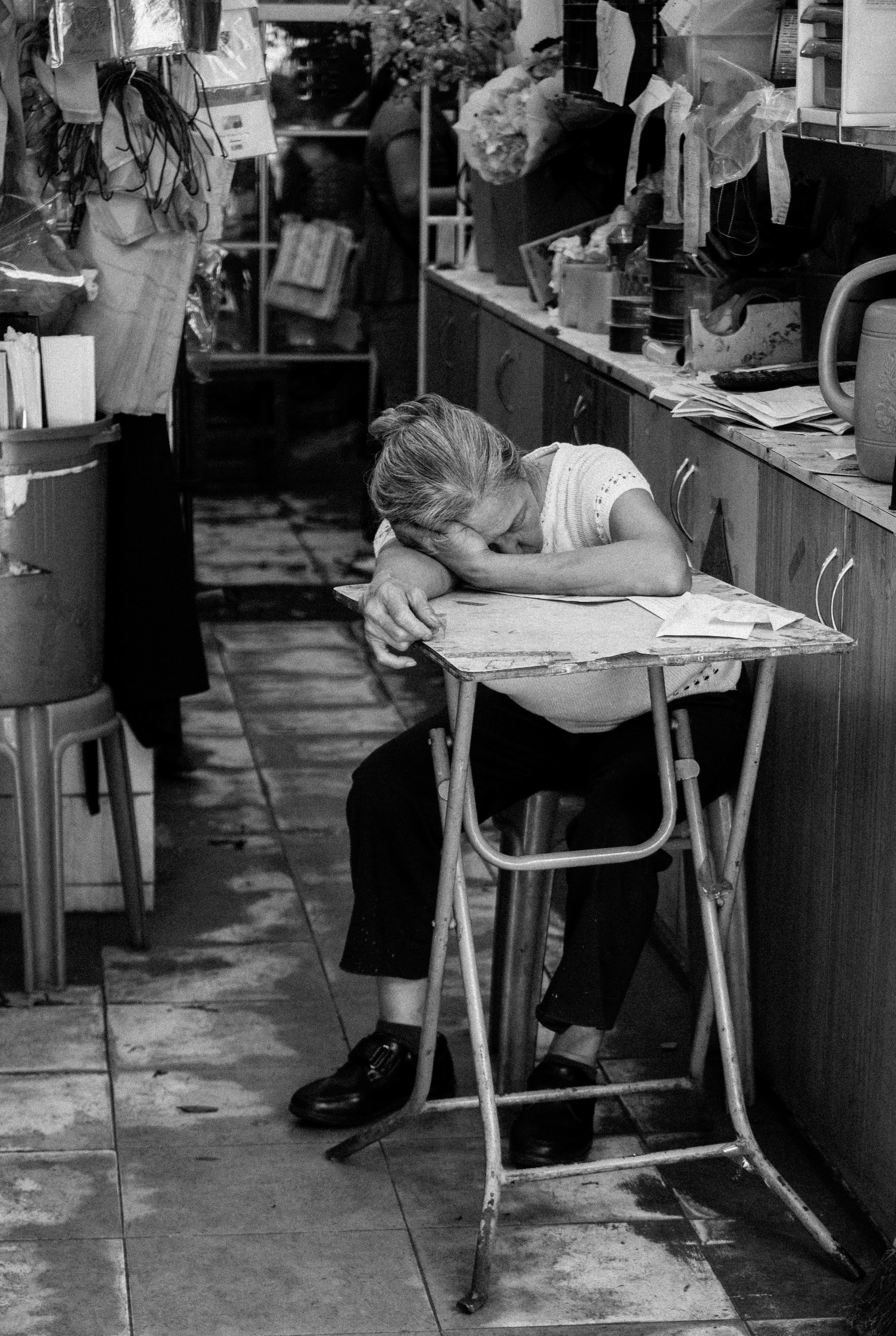
Tough Days
A long day selling on the flower market is what made this woman use her table as a napping spot.
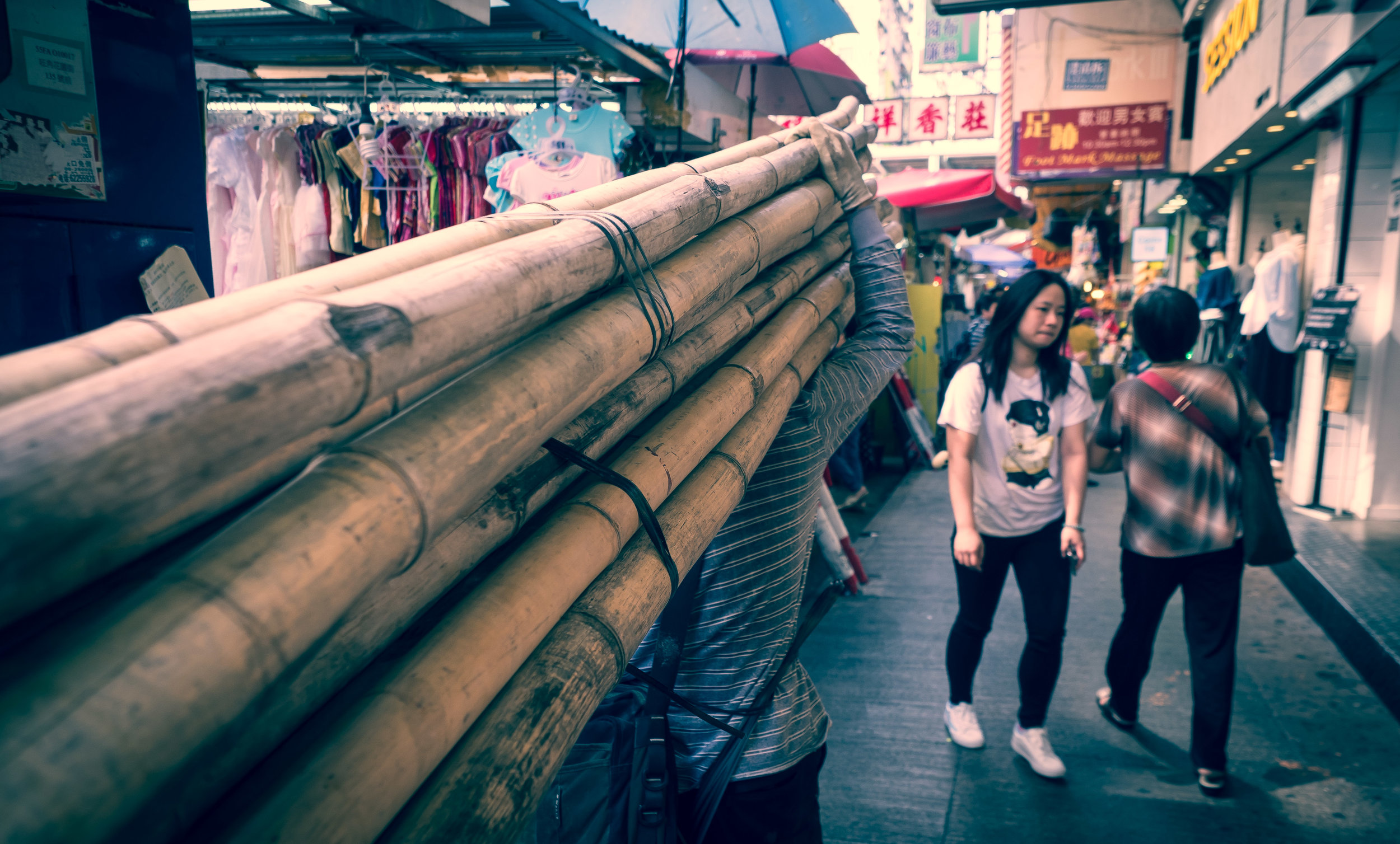
Bamboo Transport
In many places in Asia, bamboo replaces steel or aluminum when building support structures for construction - see some of the later photos for evidence.
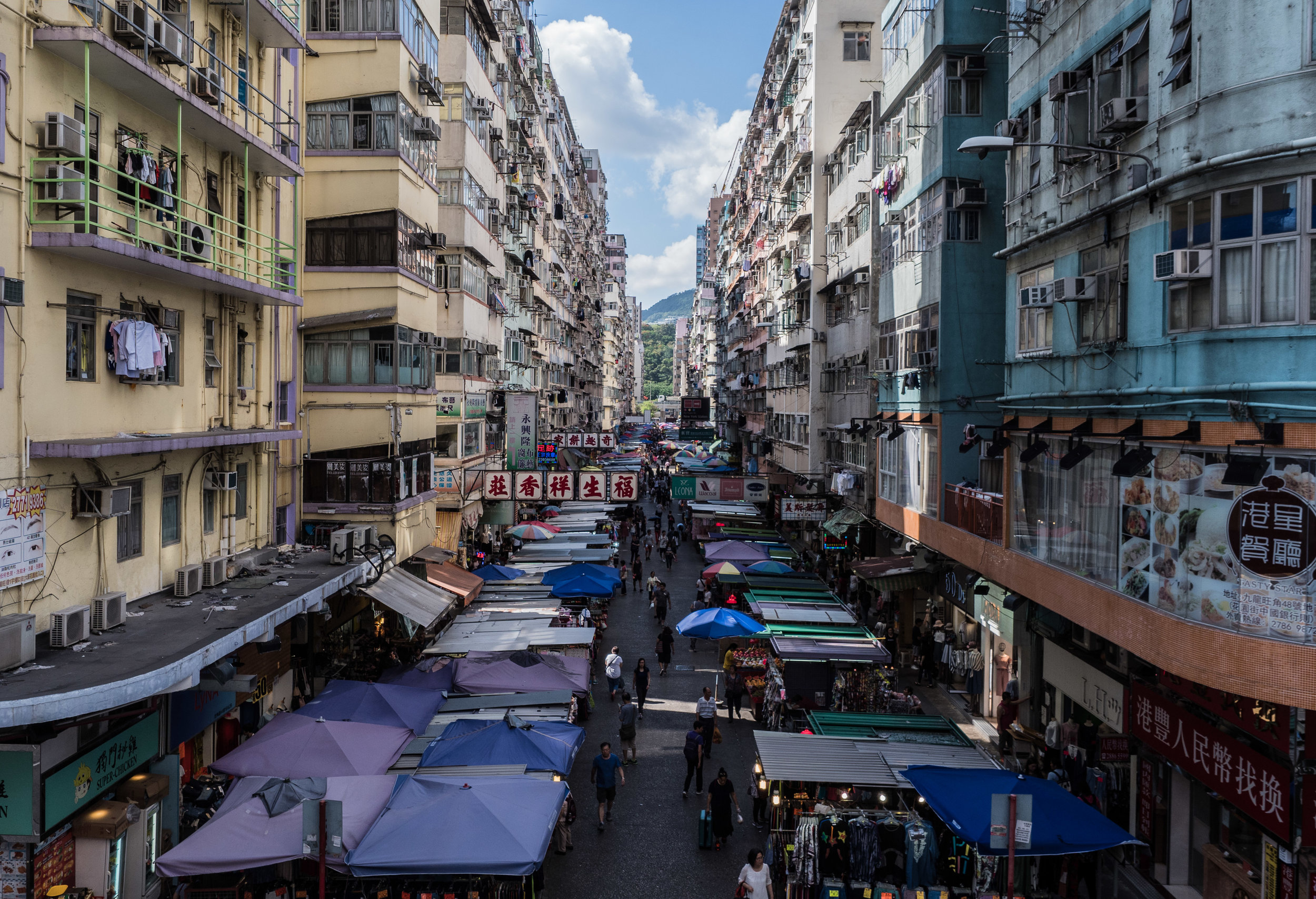
Markets
The Mong Kok area is where you'll find many of Hong Kong's busy markets.

Seafood
Including the fish market.
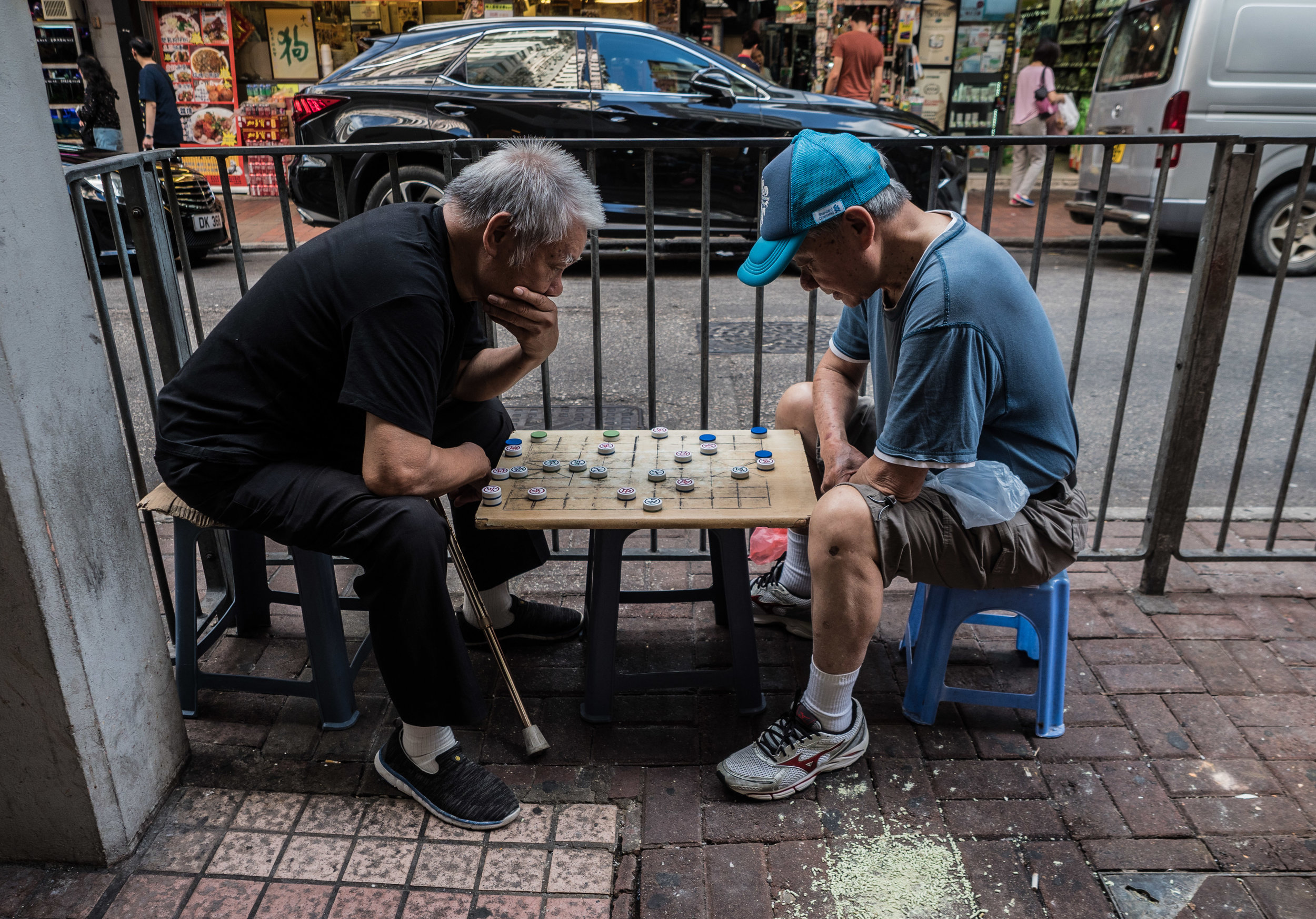
Games
Anyone know the name of this game?
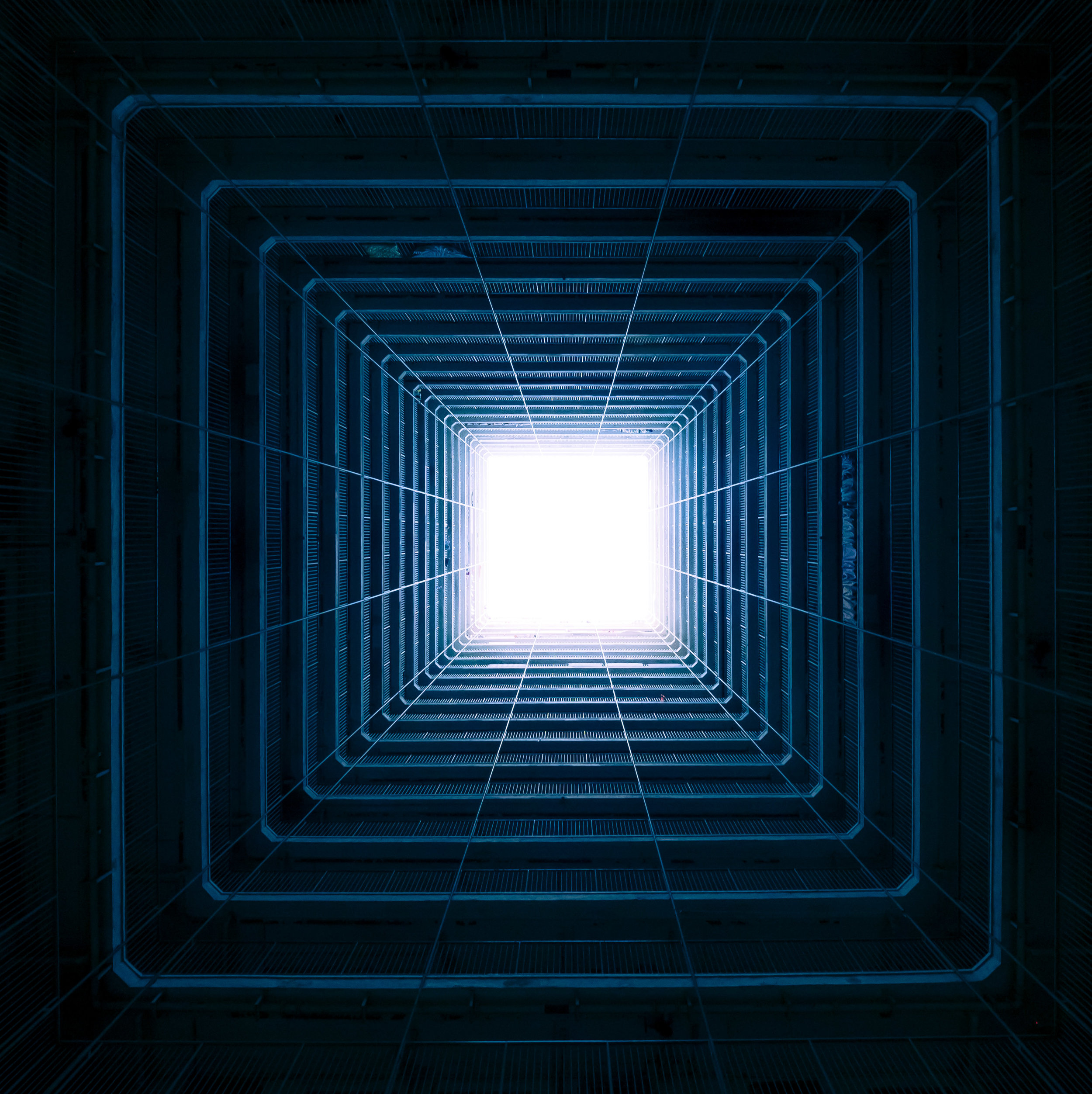
Symmetry
Another one of the photographic highlights of Hong Kong is the Oi Man Estate.
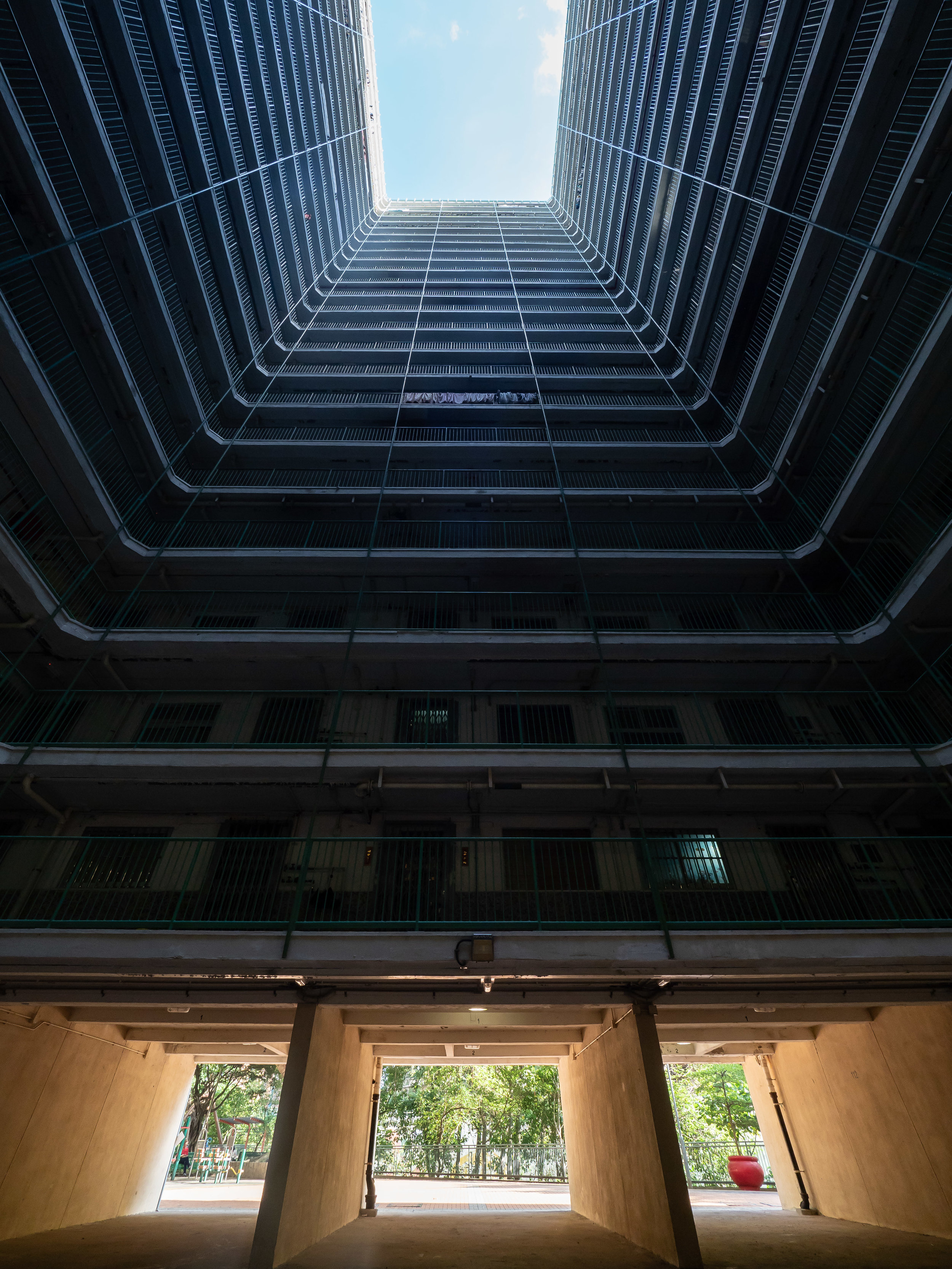
Upwards
A view of the building to provide some perspective, shot with my widest angle lens. Only the odd laundry hanging from the corridor breaks the pattern.
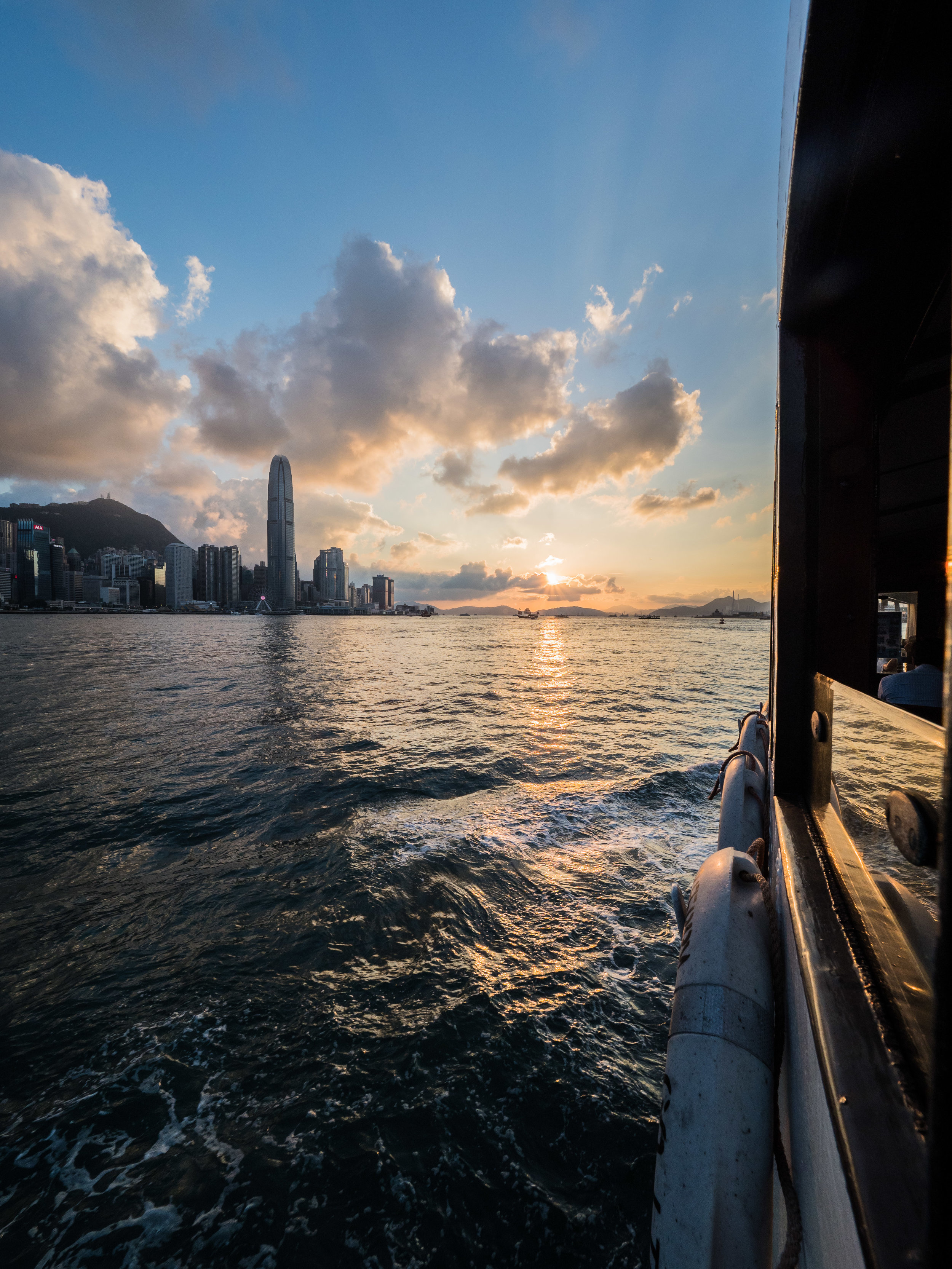
Sunset
From the Star Frerry, with the IFC II in the background.
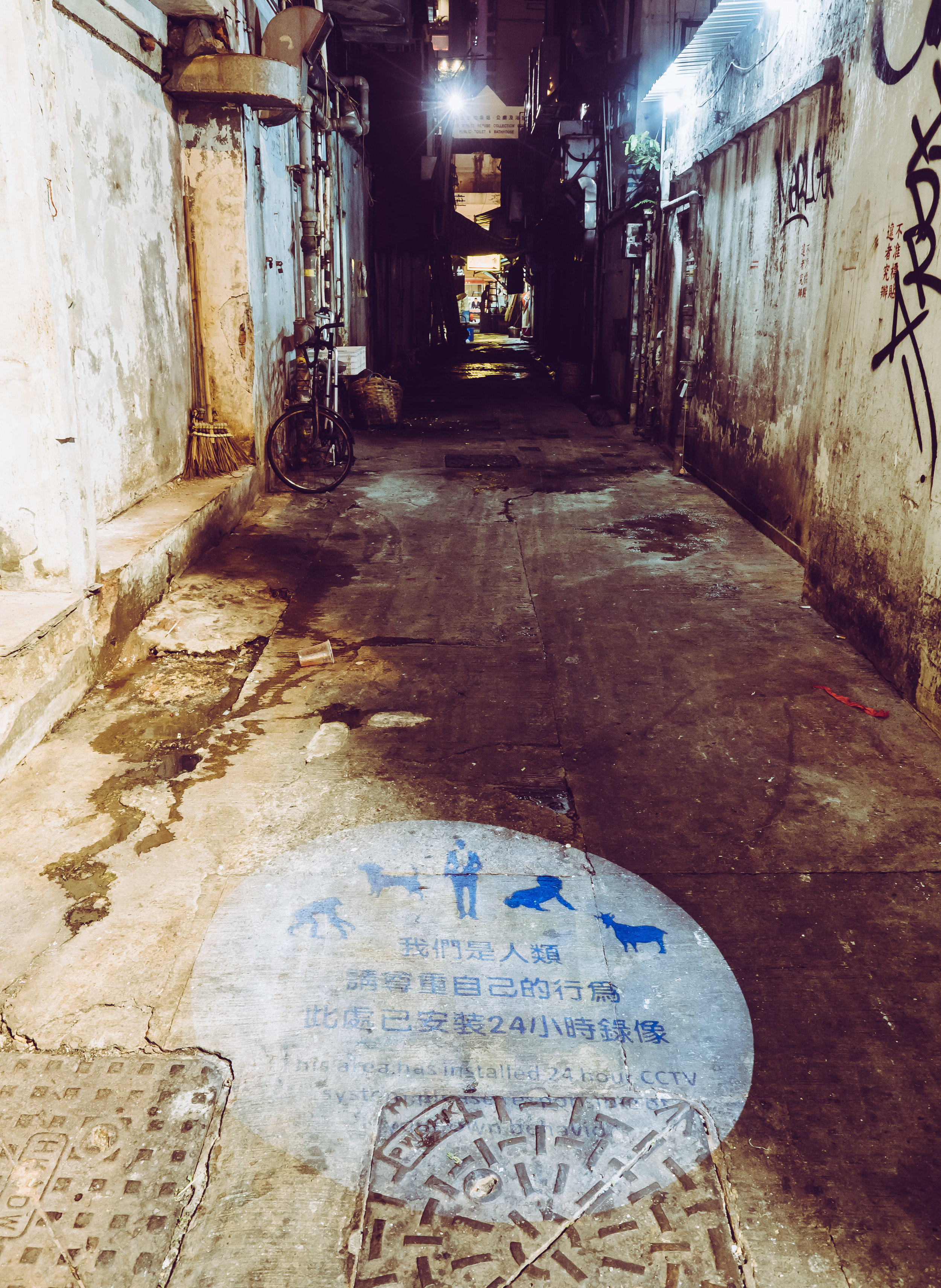
Back Alley CCTV
Many areas of Hong Kong are fully covered by CCTV, highlighted here by a projection at the entrance of this alley.

Park Gate
The entrance to a small park near the Temple Street night market.

Market Stalls
As seen from a nearby parking building (which is always a good place to get elevated views).
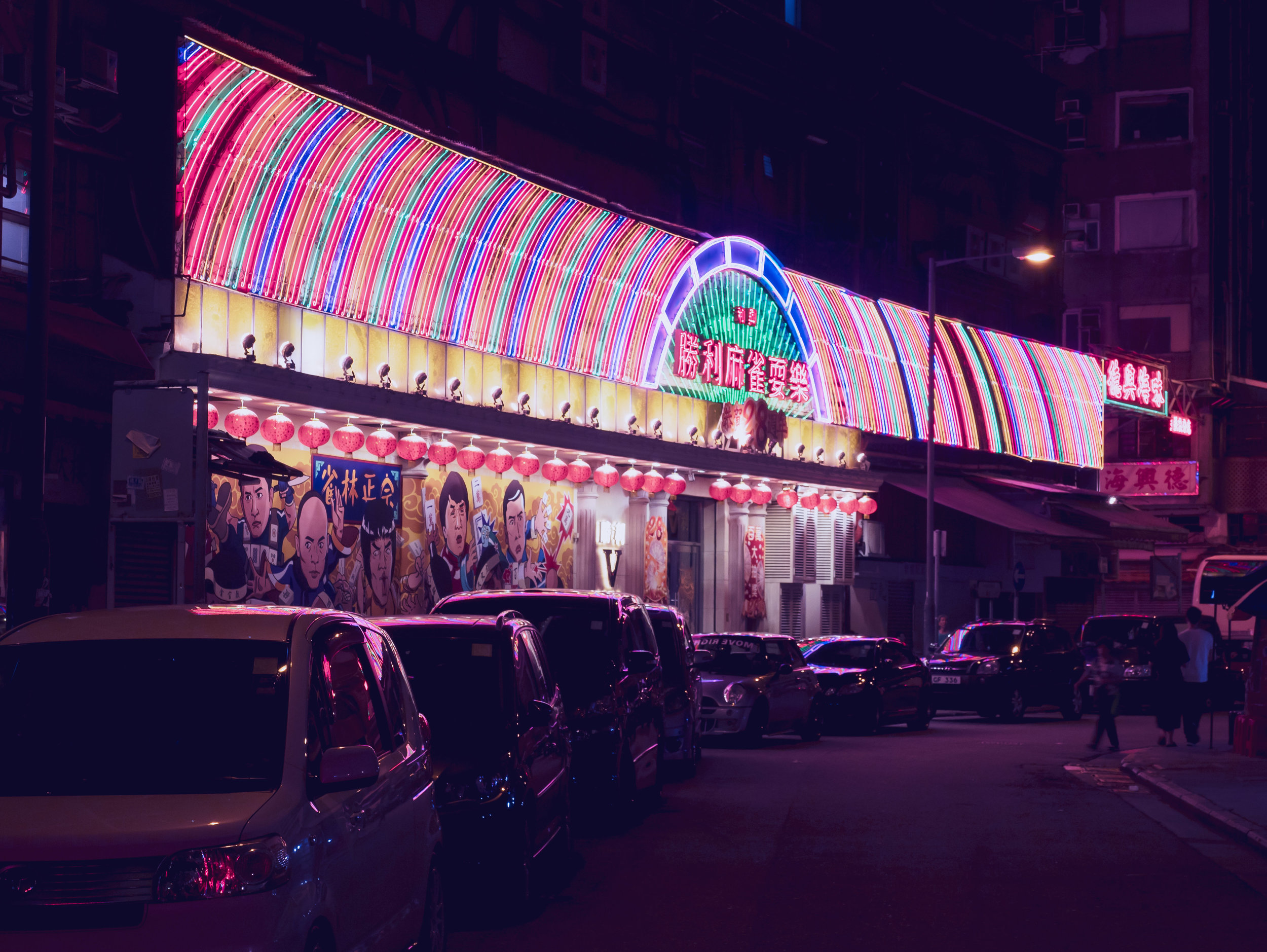
Neon World
A big neon sign just off the night market, tinting the area in pink and purple hues.
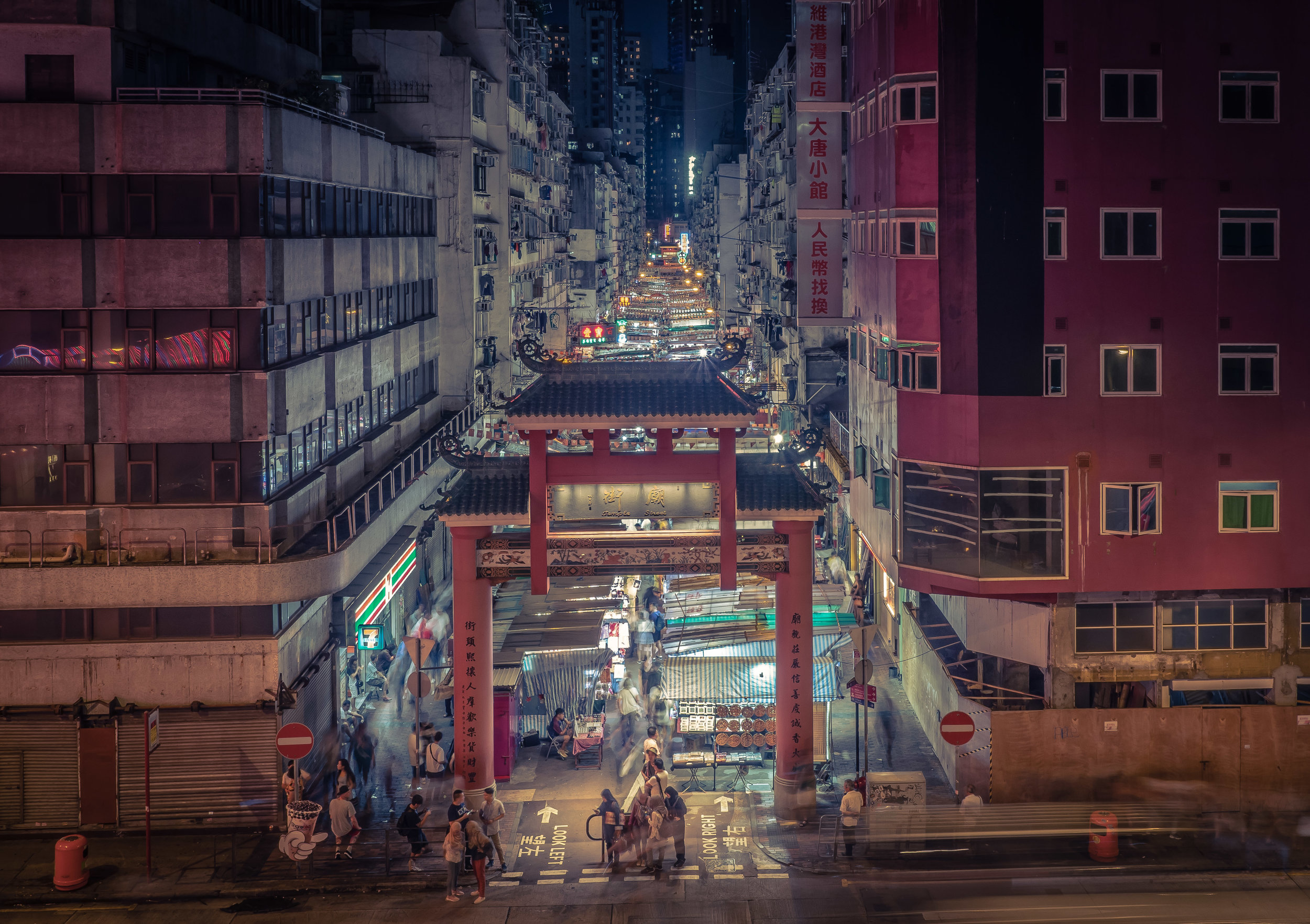
Temple Street Night Market
The entrance of the night market, stretching down several blocks.

Organized Chaos
One of the sidestreets in Mong Kok seen from the elevated walk way at Mong Kok road.
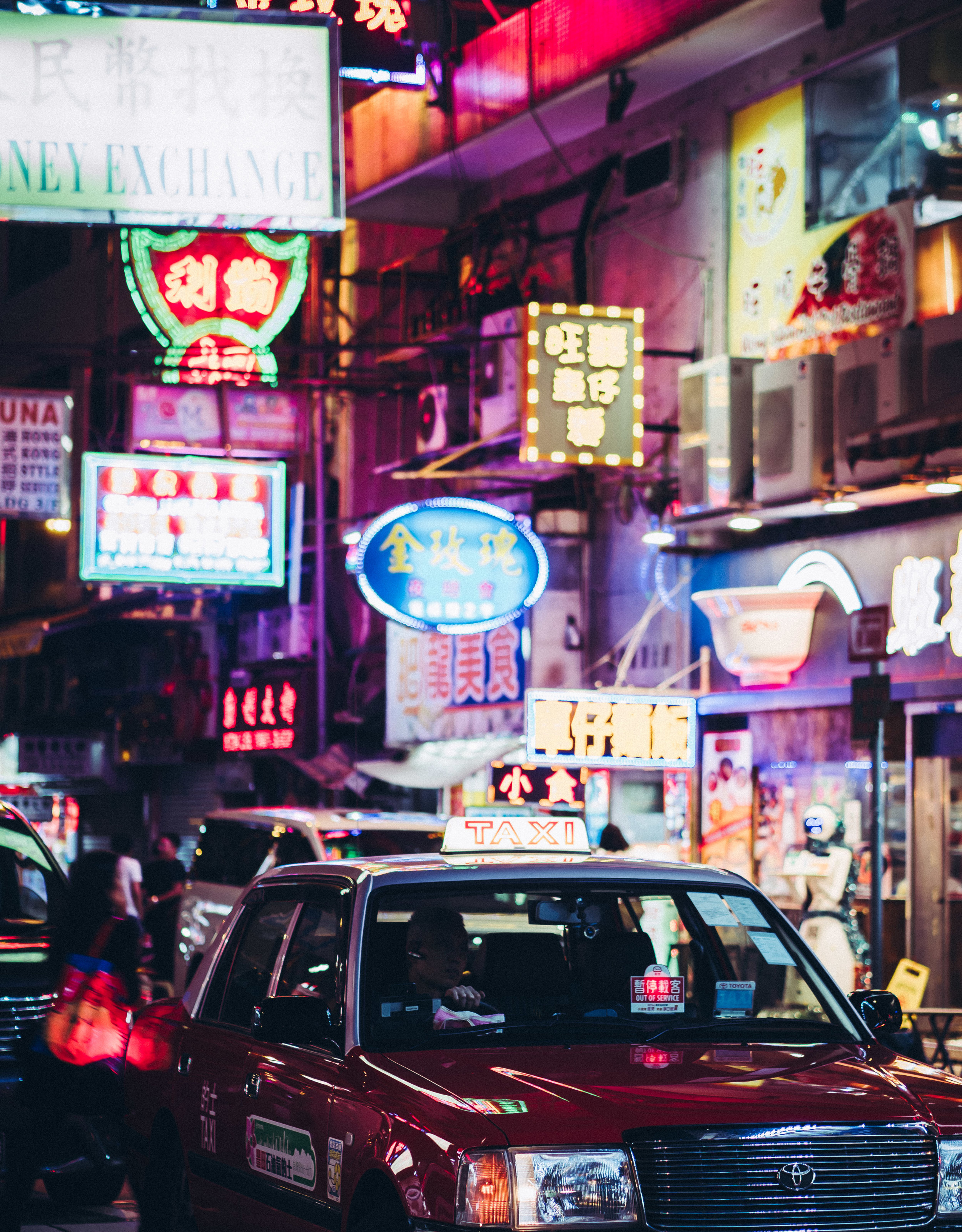
Colours
Nights are colorful in the city.
Six Senses Zighy Bay - A Musandam Refuge
The Six Senses Zighy Bay on the Musandam Peninsula, named after the small fishing town right next to it, just off the UAE boarder at Dibba, has always been on my list of must see places. This April I was lucky enough to spend a few days at the resort.

The Six Senses Zighy Bay on the Musandam Peninsula, named after the small fishing town right next to it, just off the UAE boarder at Dibba, has always been on my list of must see places. This April I was lucky enough to spend a few days at the resort.
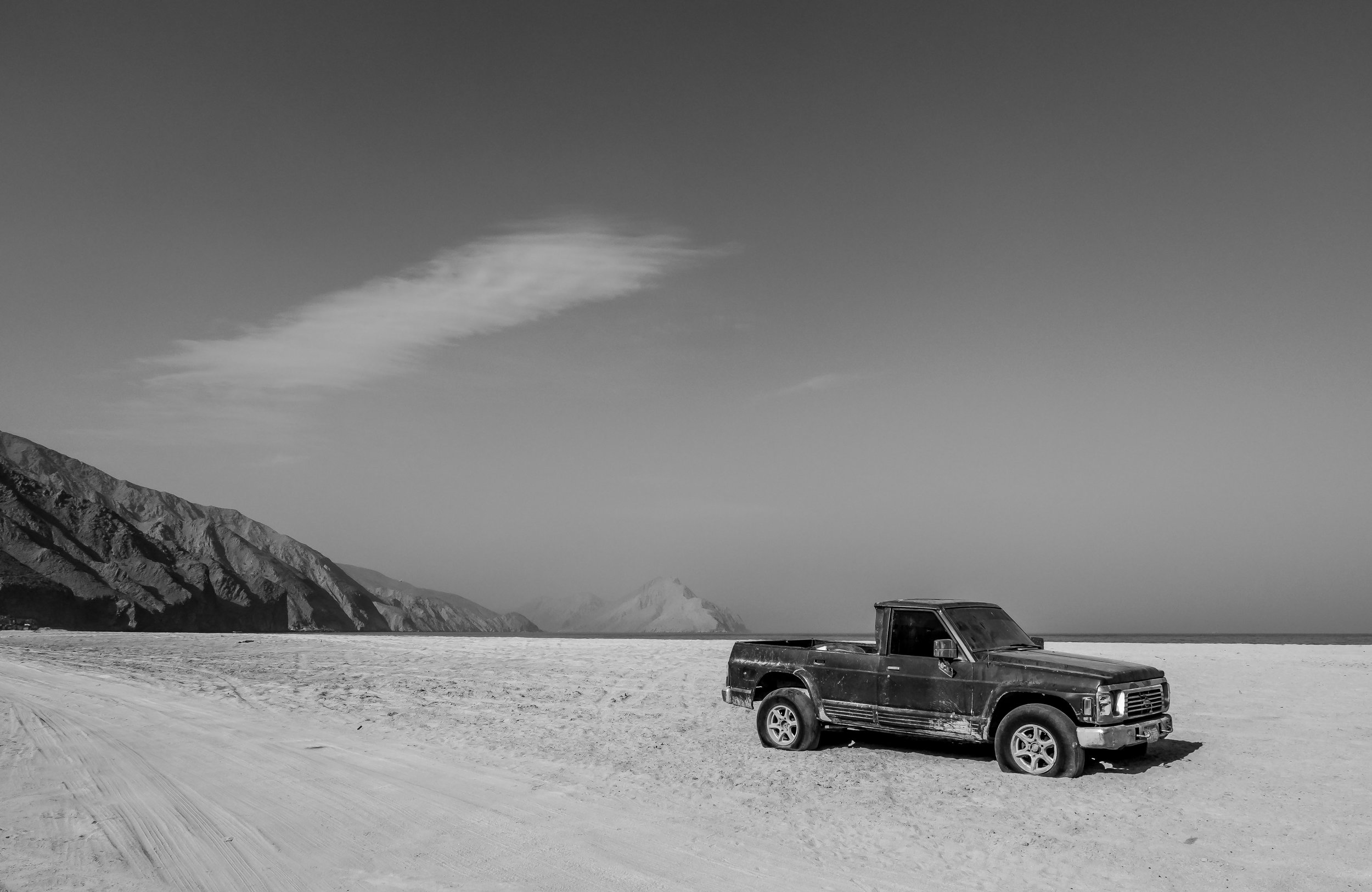
Stuck
Some parts of Zighy Bay and Musandam feel stuck in the past, sometimes willingly, sometimes less so.
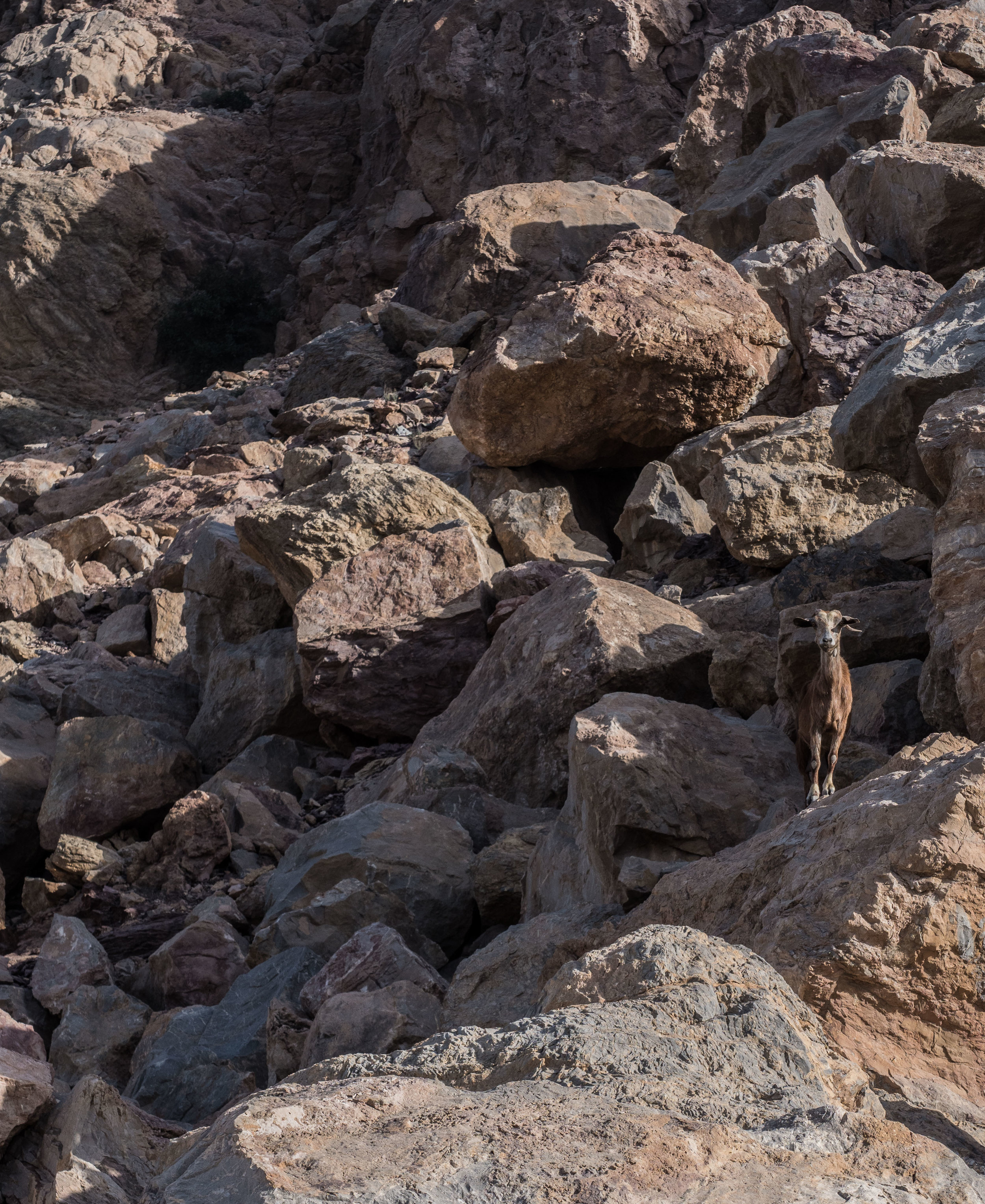
The True Rulers
Rumour has it there are more goats than humans in Musandam. Can neither confirm nor deny that.

Bay Views
The north easterly view of the Zighy Bay

Graveyard
The same mountain contains an old village, the remnants of its graveyard are still visible.

Hiking
I joined a group of people on a hike up the mountain - rock climbing is the more appropriate description.
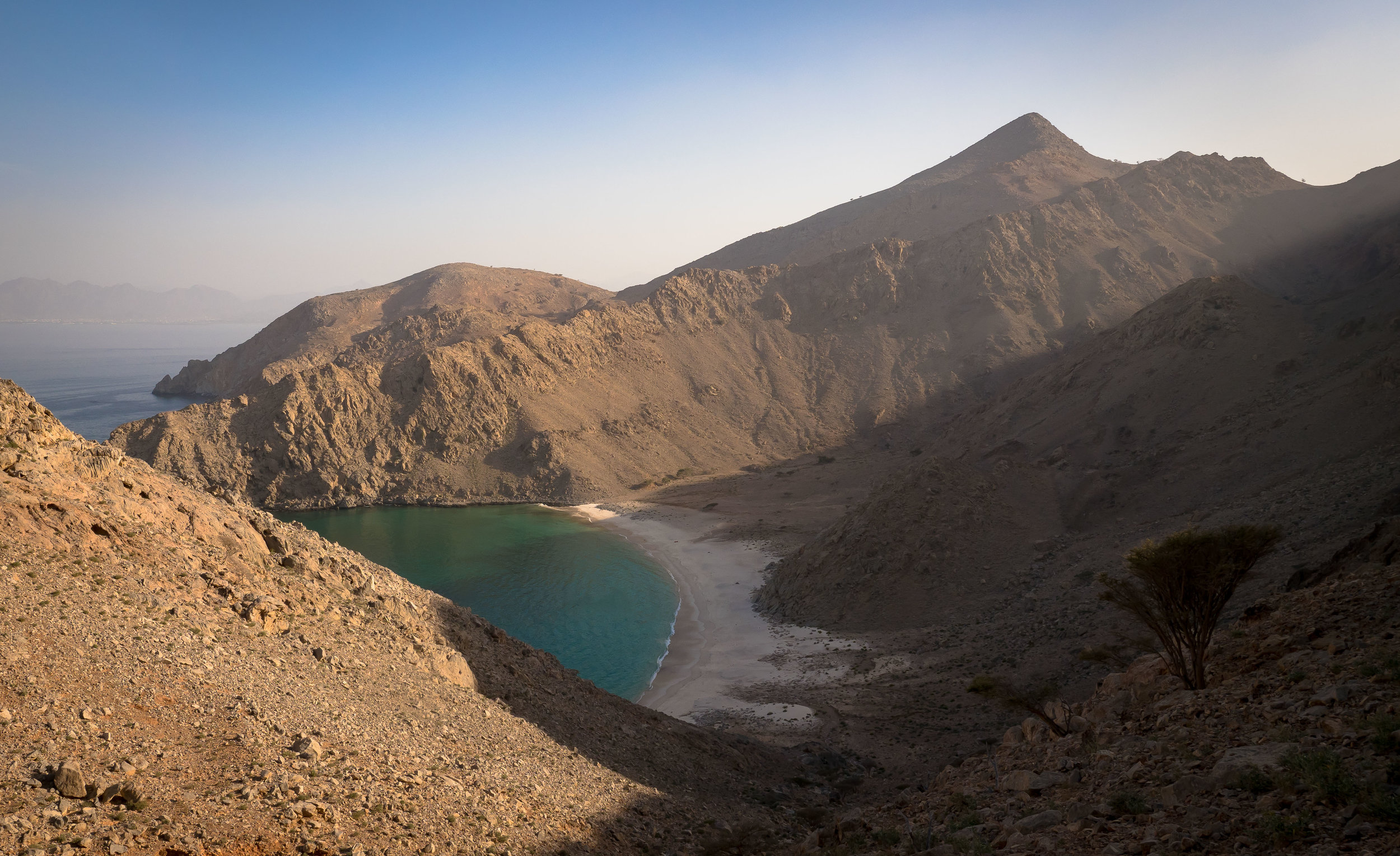
Hidden Bay
The southern view revealed this beautiful empty beach, appearantly owned by a local private person.
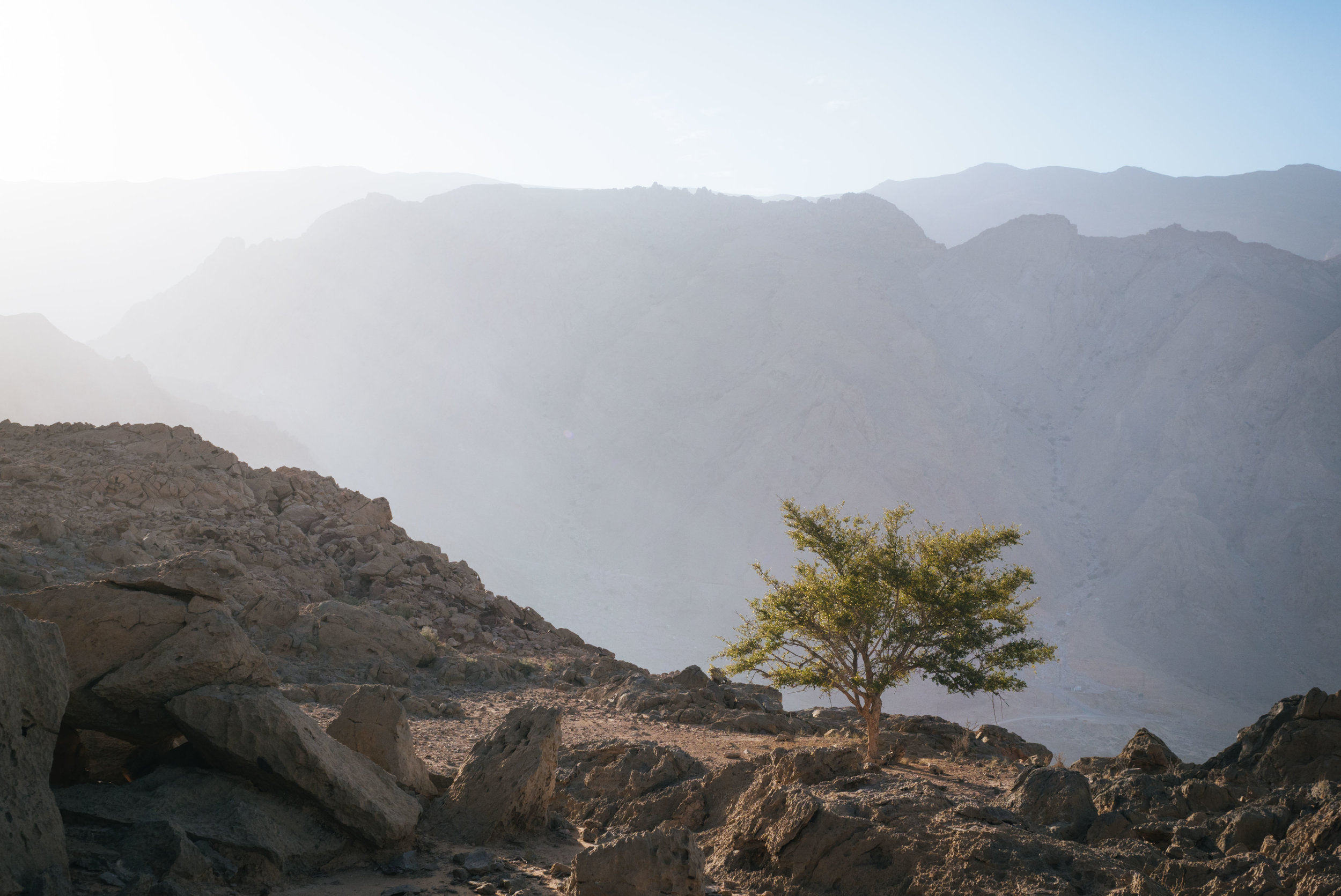
Lonely
It's amazing how some of the trees can grow on this soil, with almost no water.
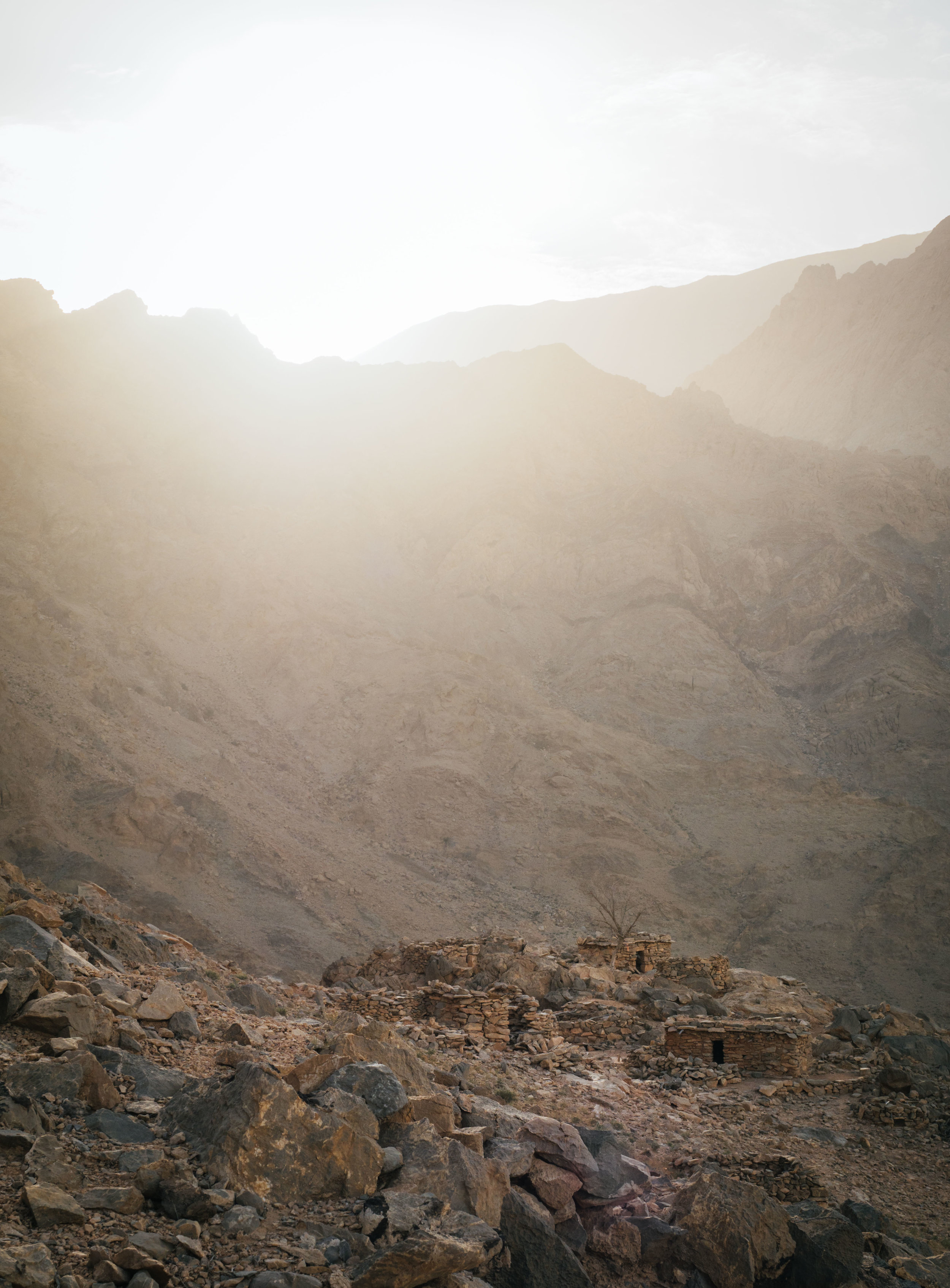
Stone Villages
The ruins of these kind of houses are common in the Hajar mountains - some are still occupied, usually in a slightly more modern form though.

Ruins
The scenery is amazing around every corner. In the past, many of the locals used to live in the mountains on the bay to be able to spot pirates from far away.
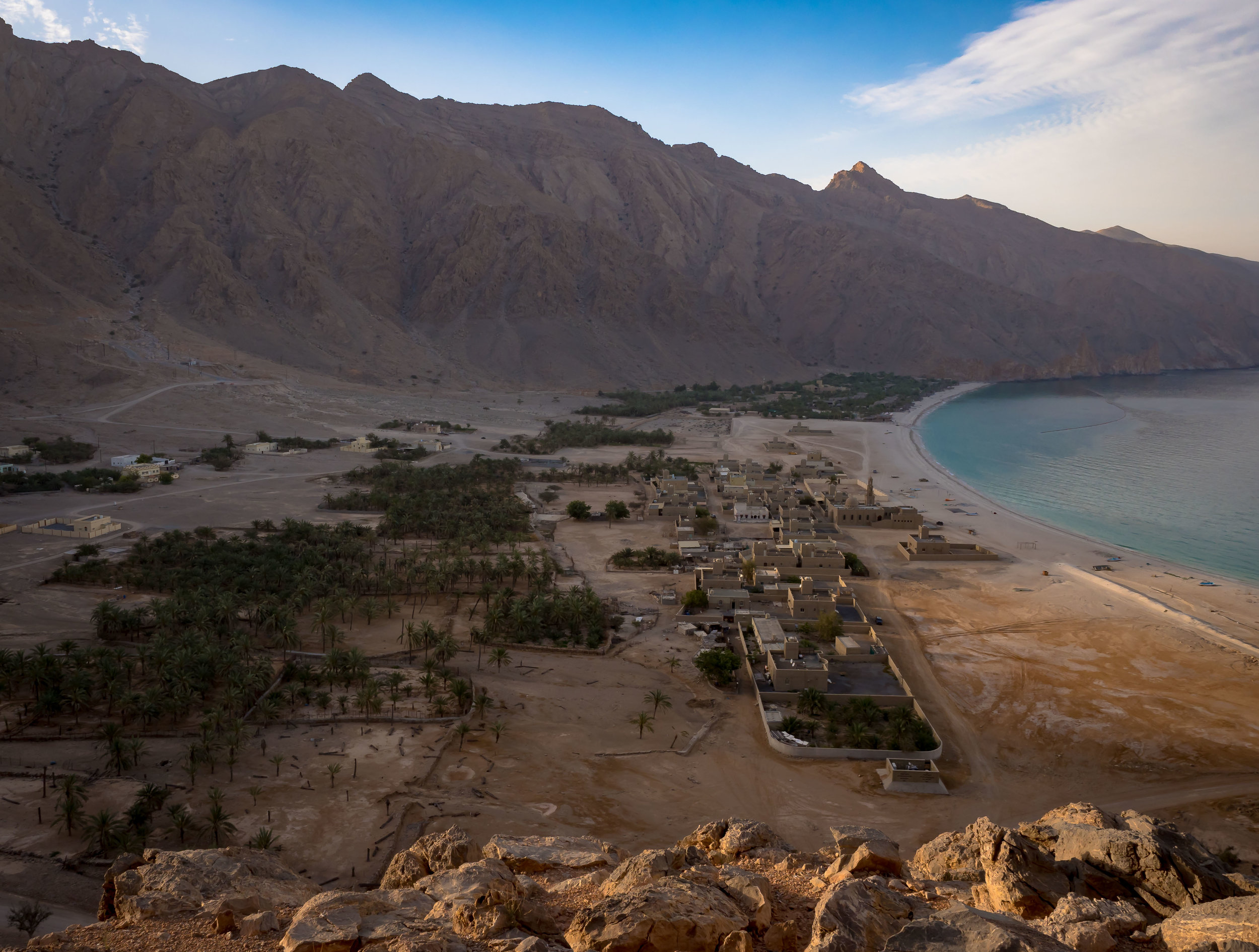
Zighy Bay
A view of the bay with the Six Senses in the background, and the houses that were built for the local fishermen alongside the resort, replacing some of the previous stone houses.
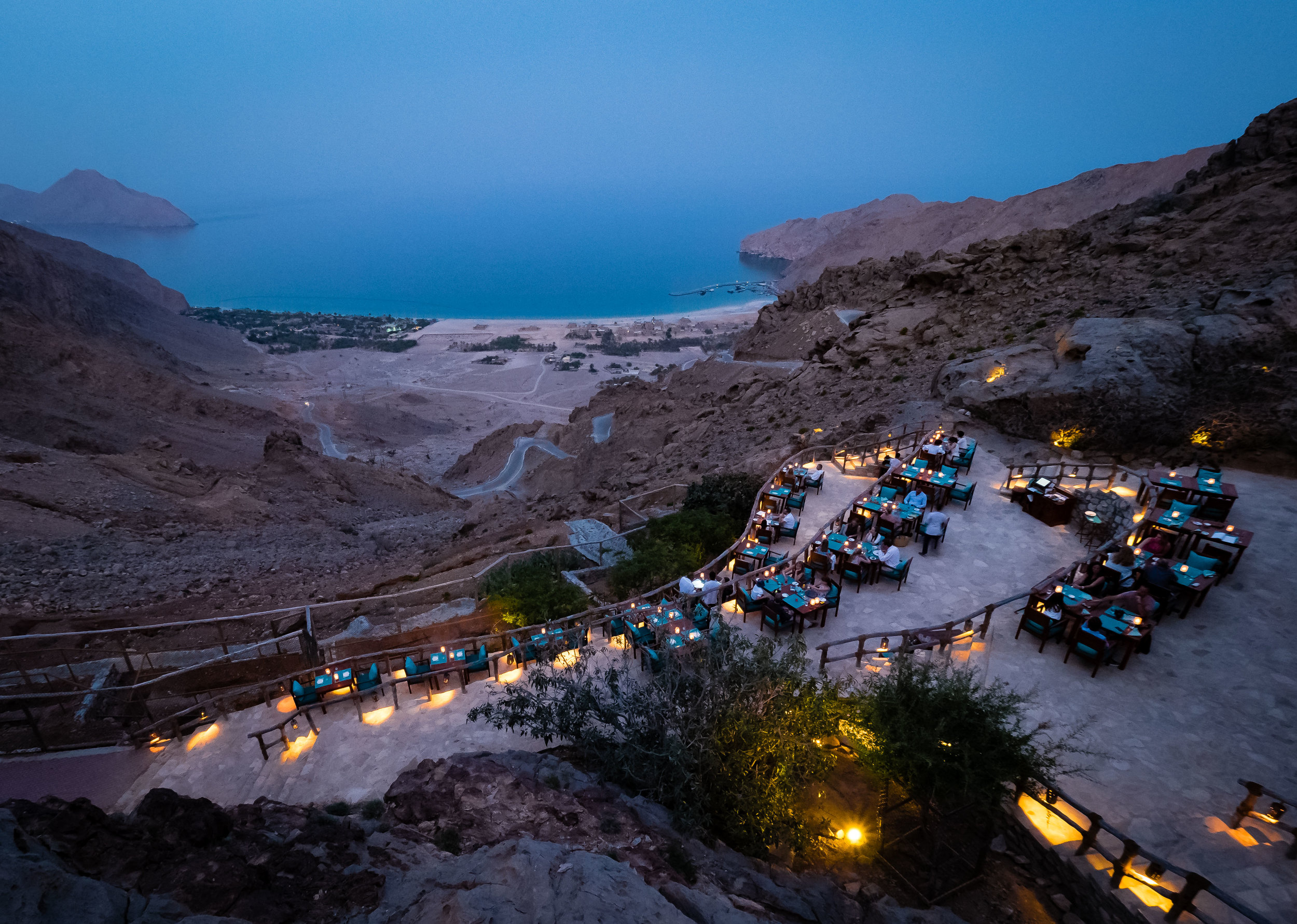
Dining On The Edge
One of the restaurants of the hotel is located right on the cliff next to the road crossing the mountain.
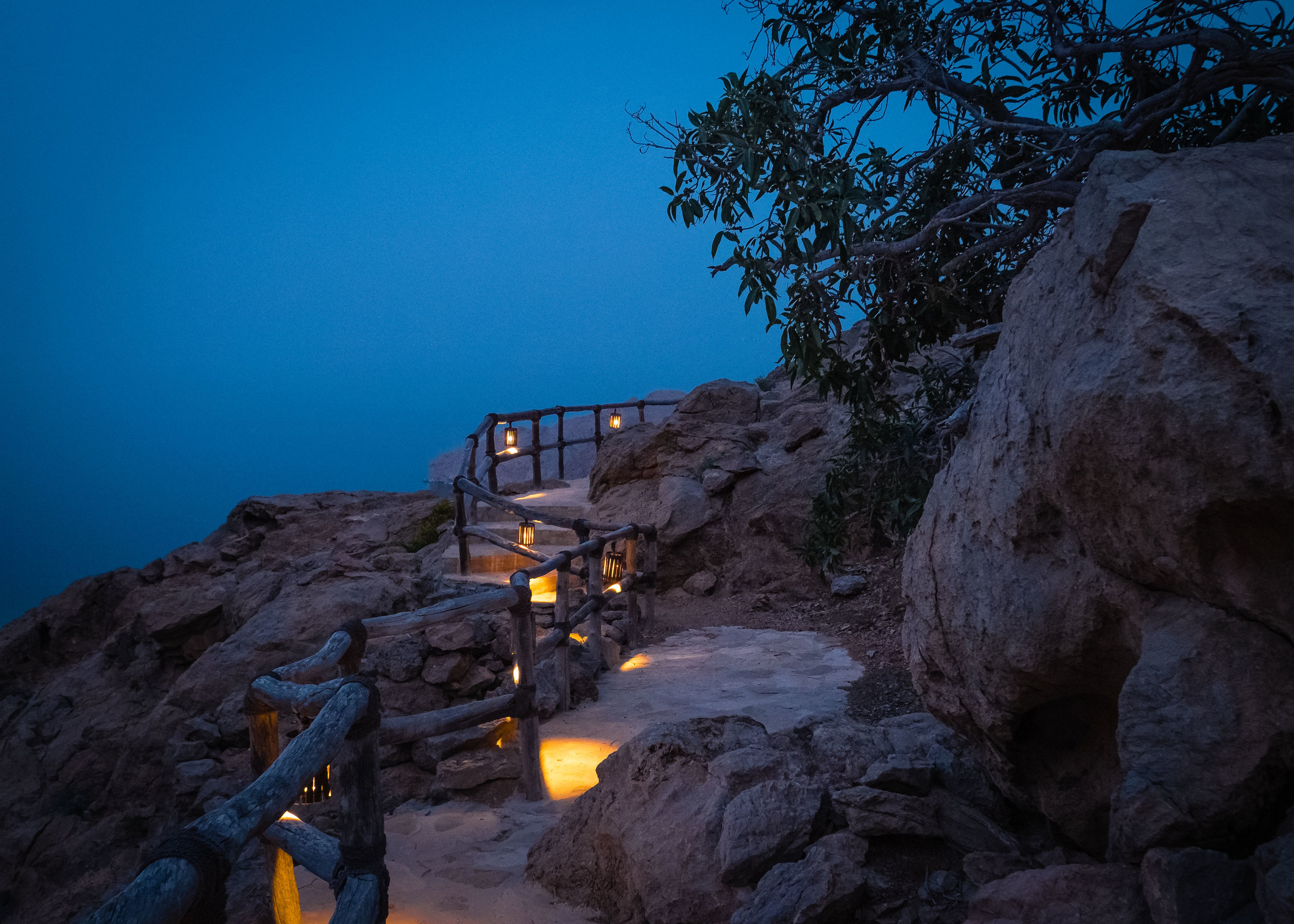
Pathways
This path runs to the top of the mountain, for a private dining spot and a great view.

Into the Mountains
We took a drive into the Hajar mountains, with their narrow cliffs and gravel roads.
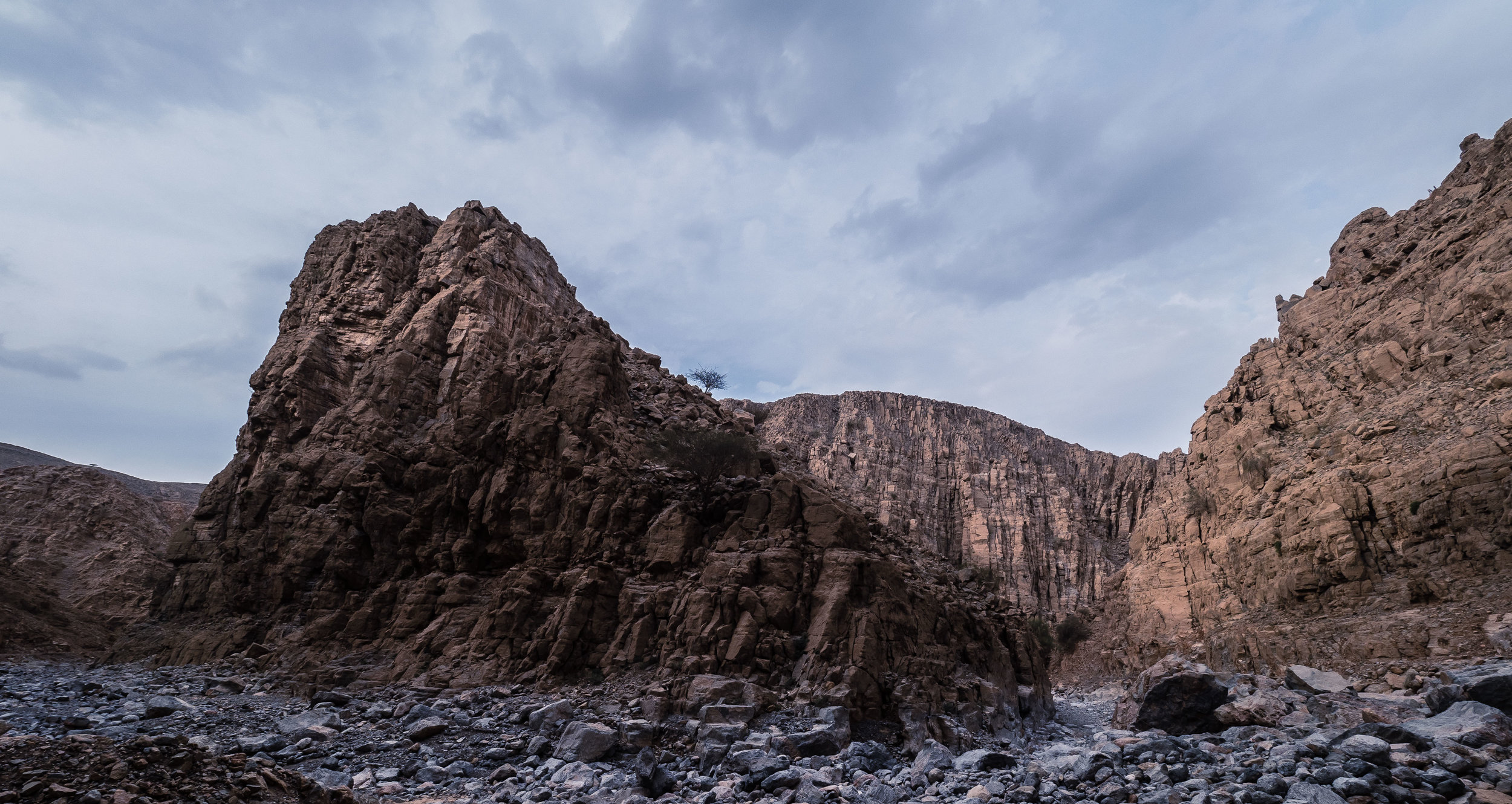
Riverbed
The colour of the stones reveals the riverbed, filled with water when it rains - which isn't often.

Upwards
The path leading upwards was built by an old local, who still lives on top of the mountains, carrying water and food with a donkey. The small hut is a storage area he built.
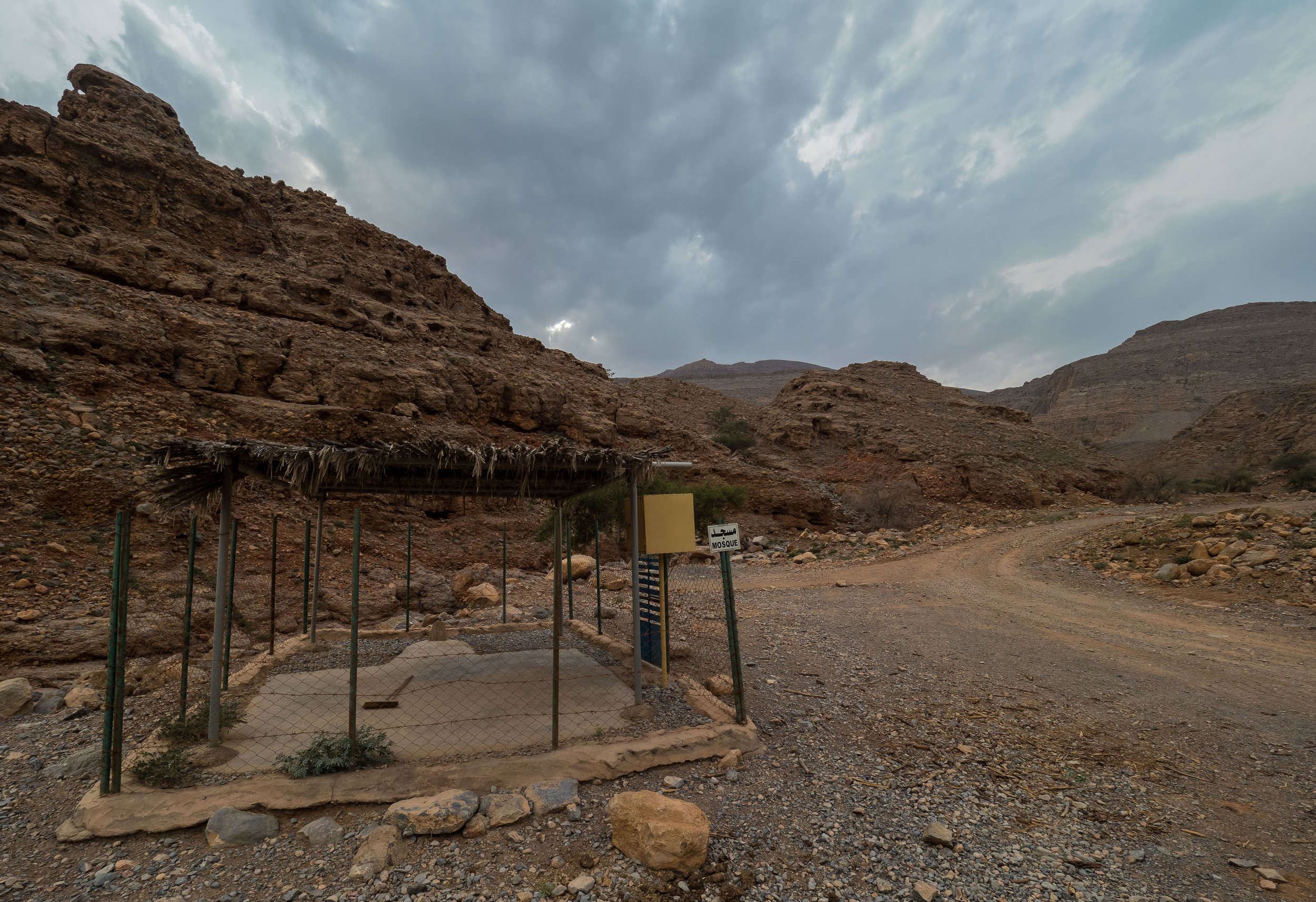
Mosque
And the award for the most minimalistic mosque goes to...

Houses & Goats
The few signs of life in the mountains. We did spot two small foxes as well.
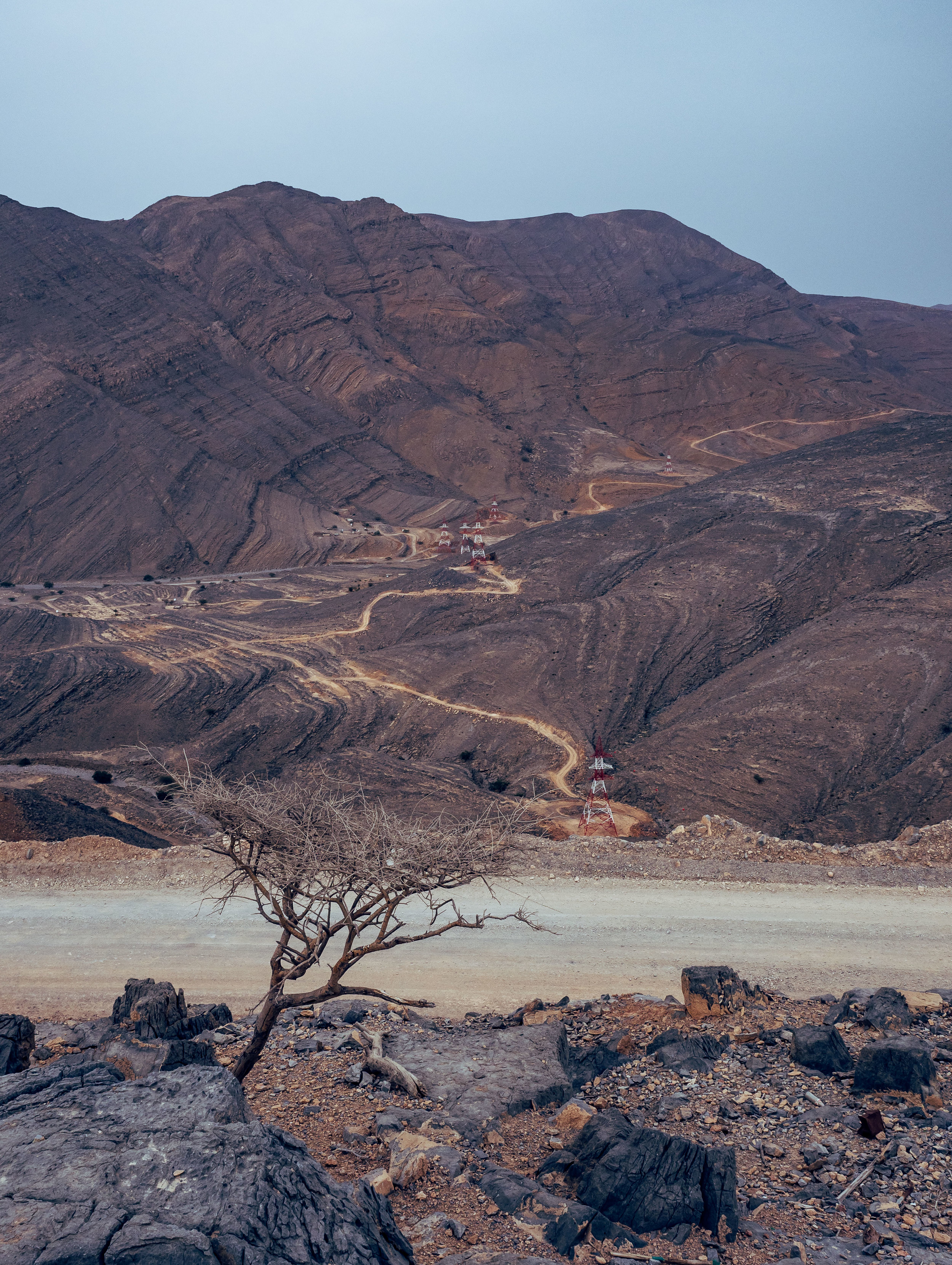
Power
A new power line is being built in the north from Khasab to Dibba, to serve most of the Musandam peninsula.
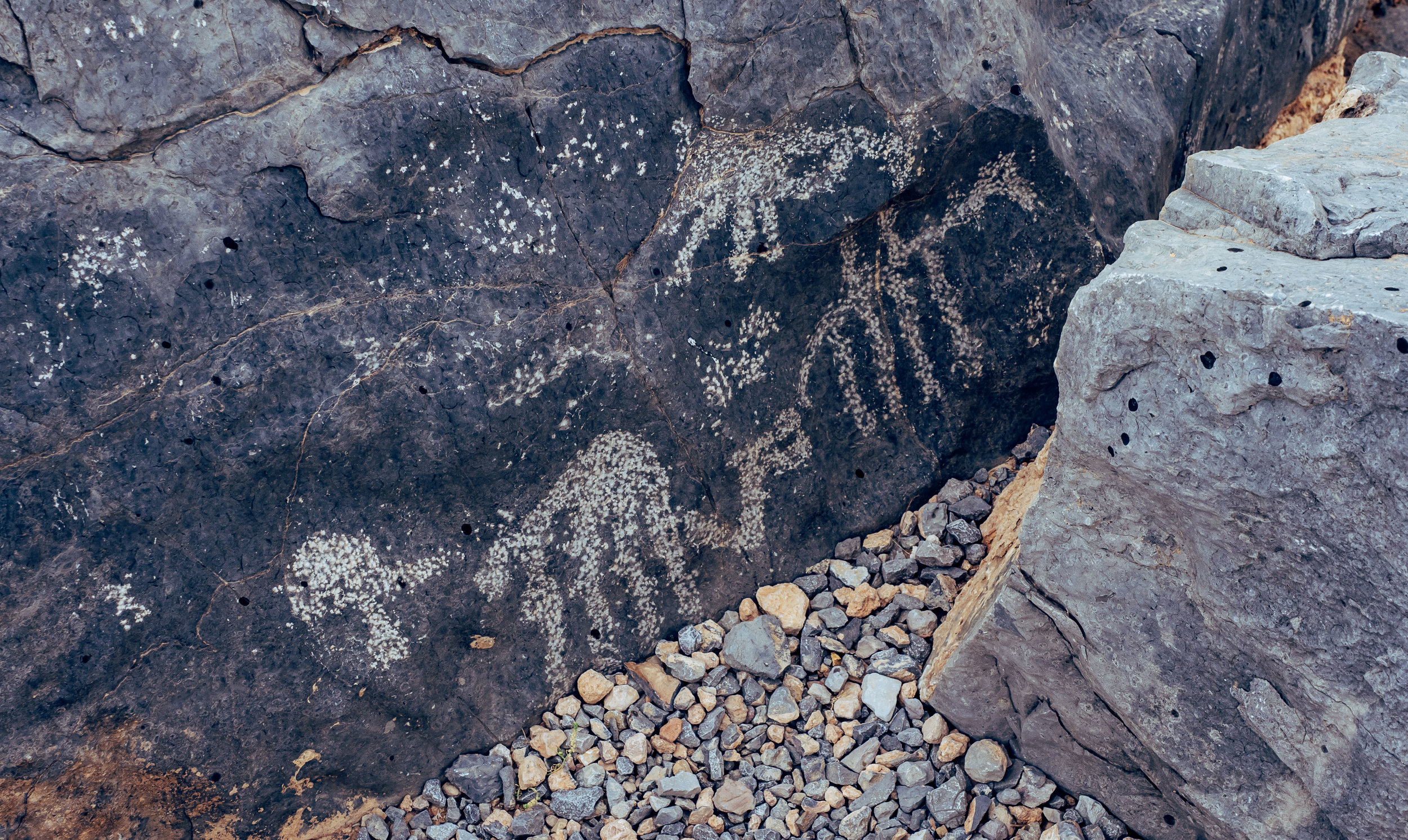
Signs Of Early Civilisation
I am not convinced whether these are genuine - we've been told they're a few hundred years old.
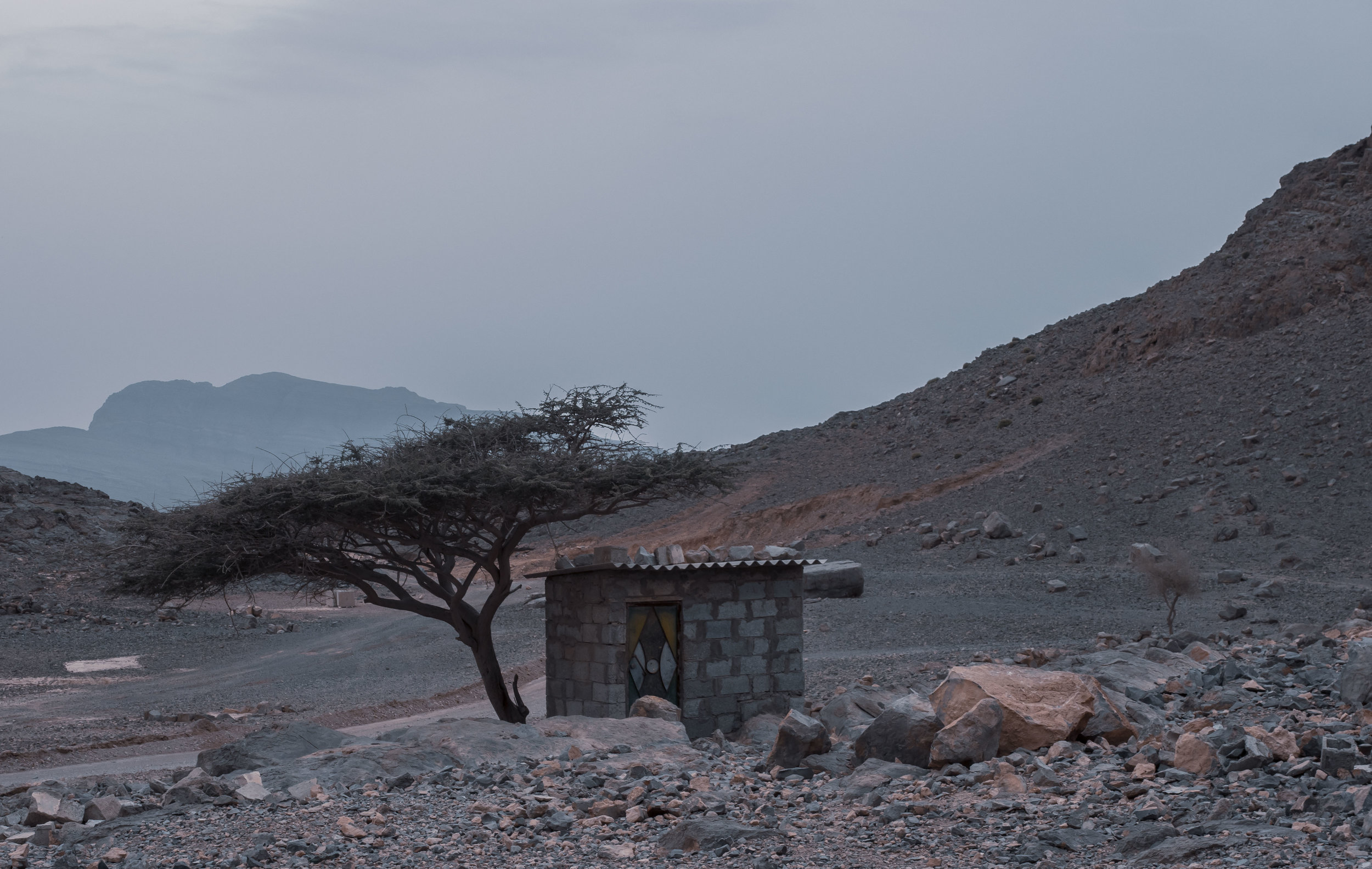
Barren Land
One of he houses still in use in a small village on top of this mountain - most likely for storage.

Signs
Fierce wars were fought decades ago in this area. The remnants are still visible.

Flora & Fauna
Signs of life are sparse.
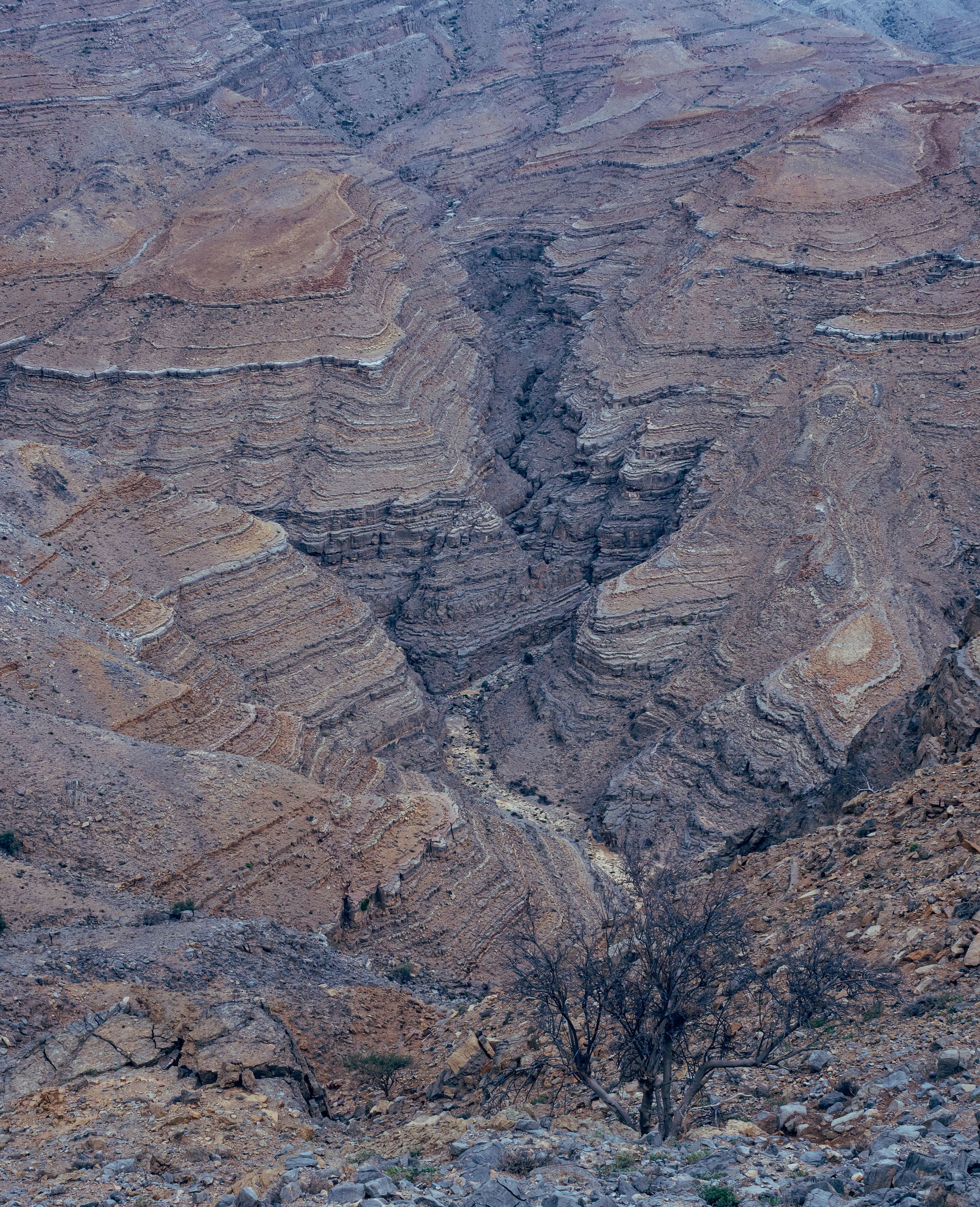
Scenery
The view and rock shapes and patterns are amazing, this is up at about 1200m, half way to Khasab from Zighy Bay. The photo doesn't do the size of this canyon justice.
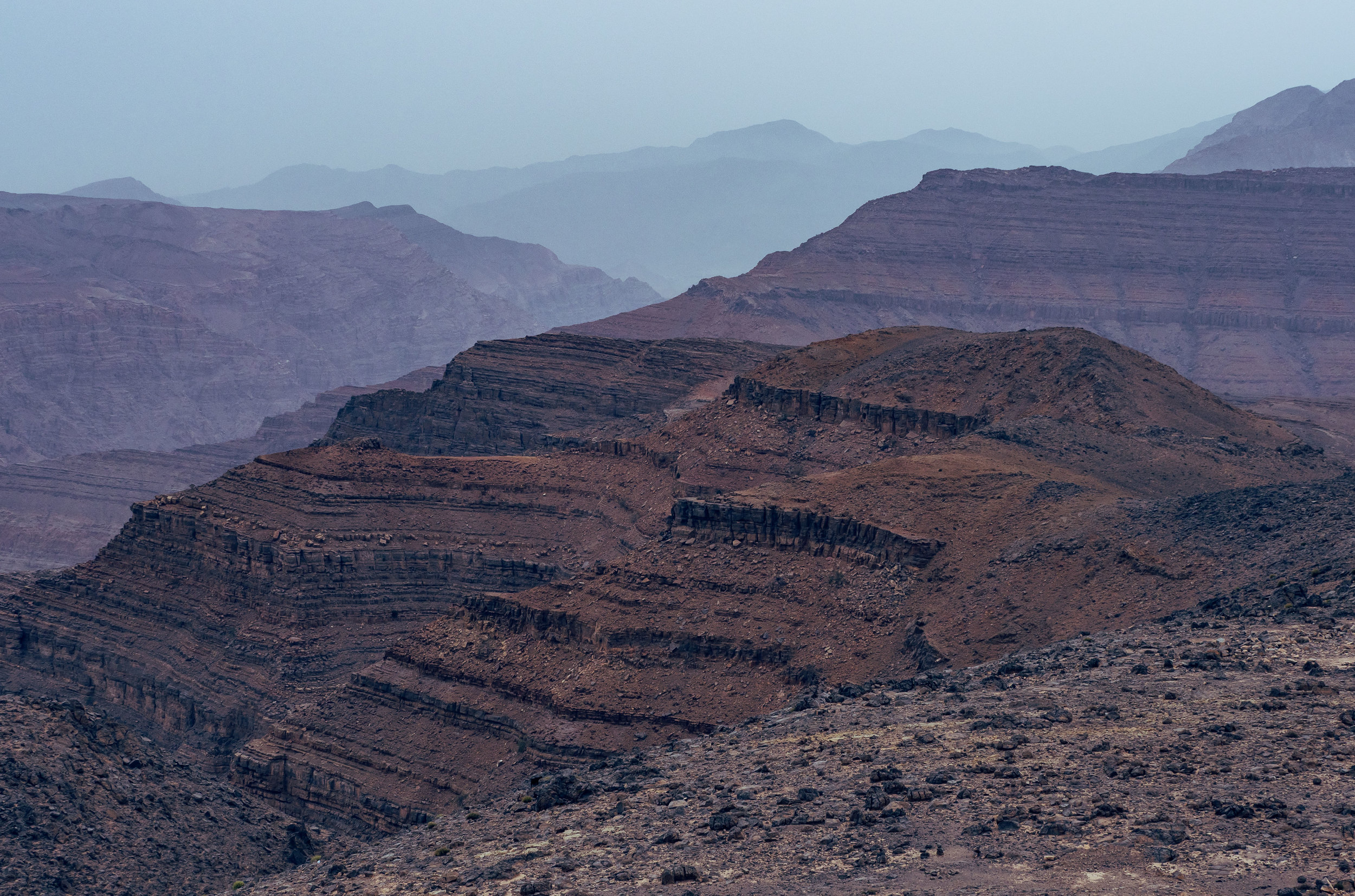
Mountain Terraces
Goat territory!

Soaking Up The Views...
.. and trying to find answers.
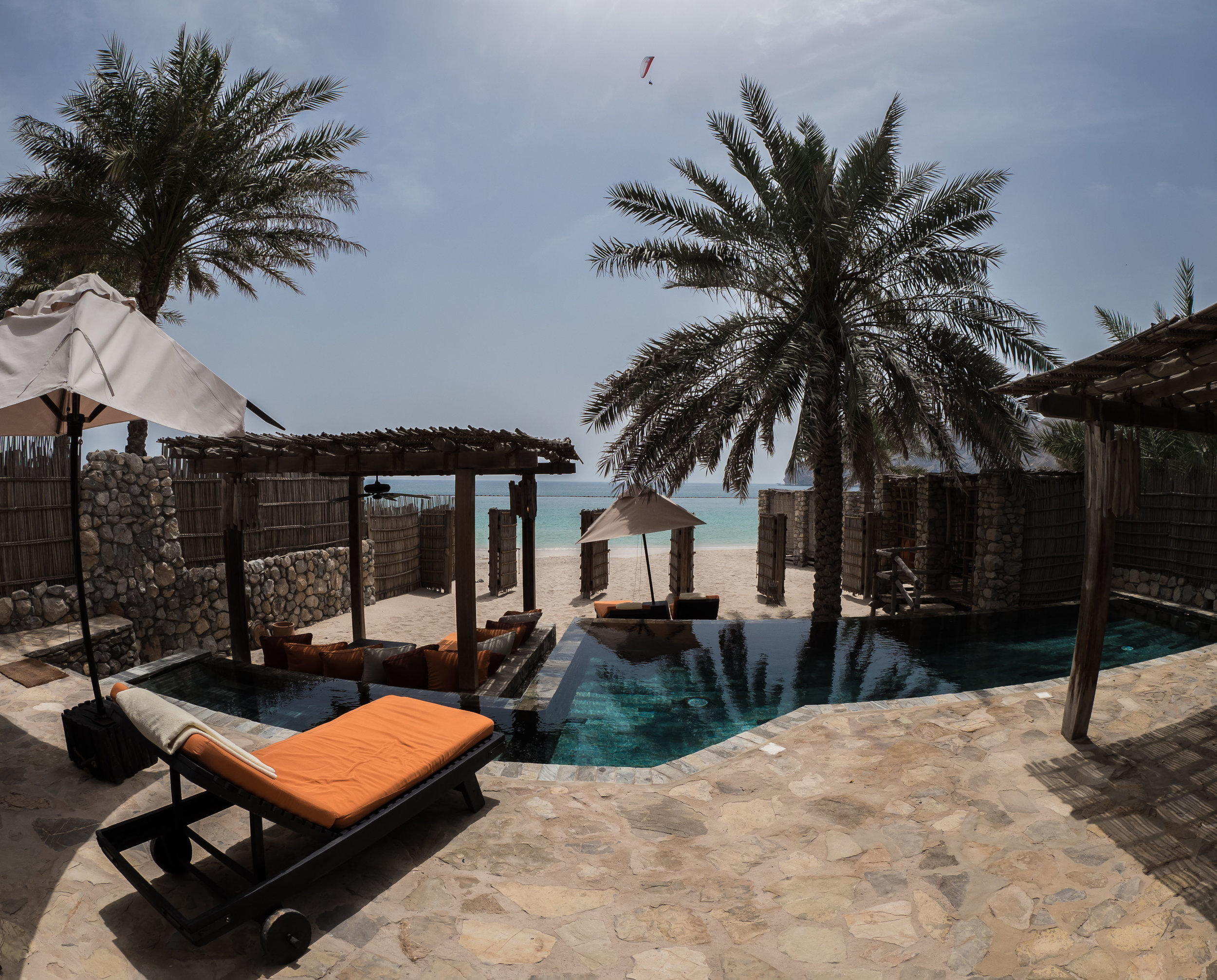
Not A Bad Spot
The beautiful Zighy Bay beach front villas.
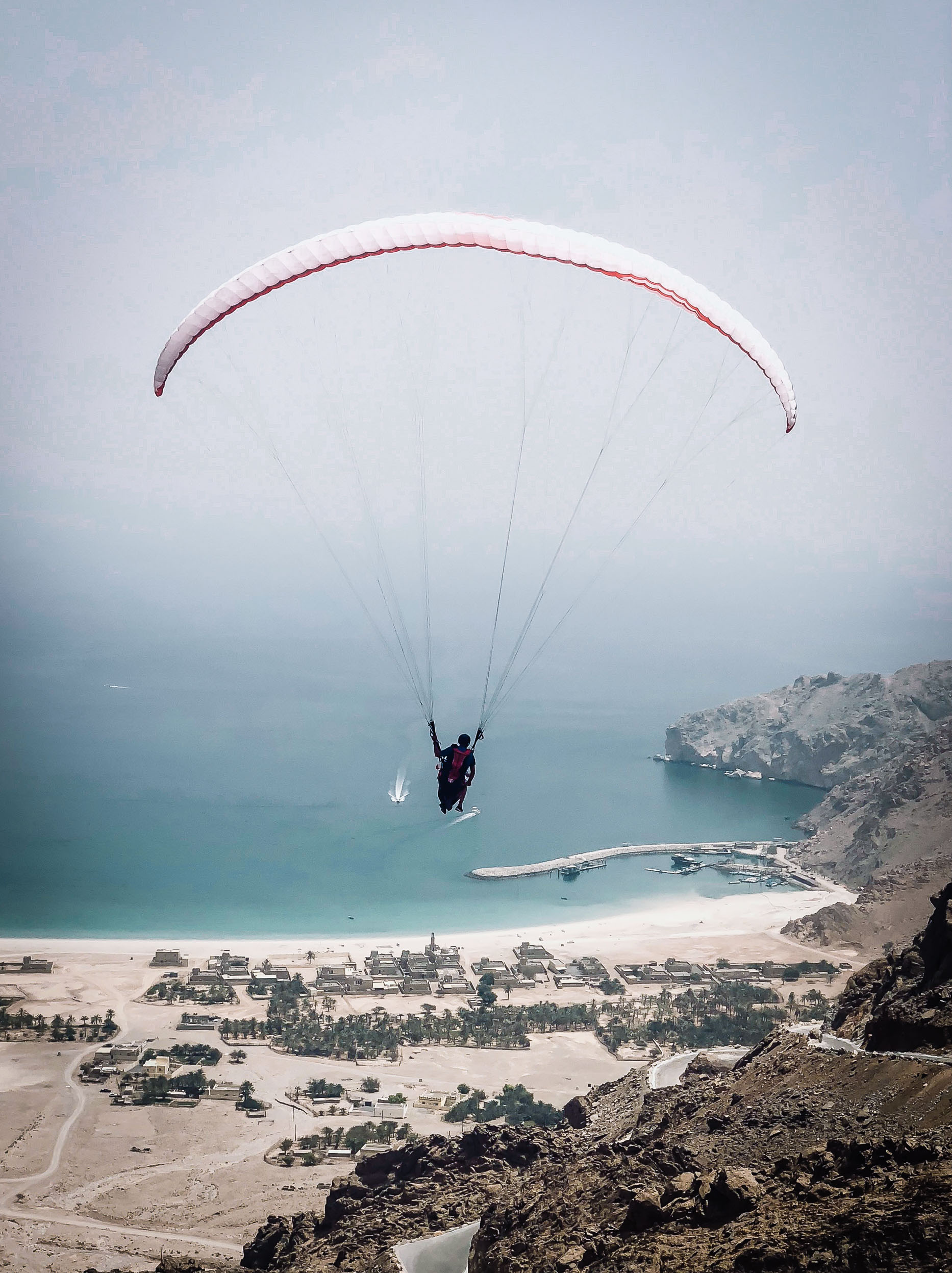
Paragliding
One of the many activities at Zighy Bay - aside from arriving by boat or over the mountain, you can also paraglide to your check in. I was already checked in, but didn't want to miss the opportunity.

Flying
It was my first time, and it was defintely a great experience - unexpectedly we caught a lot of thermal winds, which meant at some point we were higher than when we took off.

Goat Parade
Not sure where they were heading, but they did so in an orderly fashion.
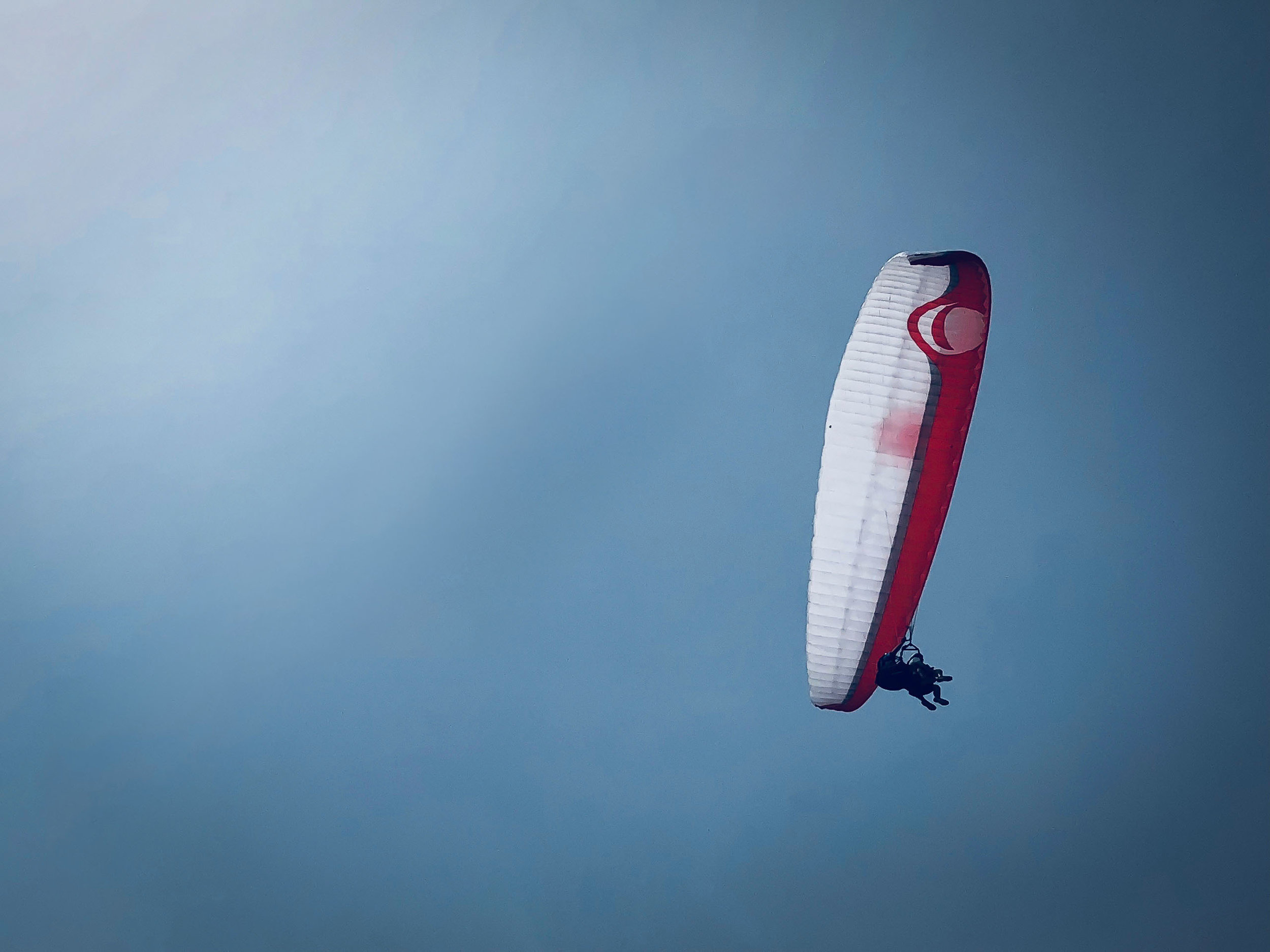
In The Air
While the flight was calm, my pilot decided the descent should be a bit more action packed, with fast circles and a few moments of weightlessness.
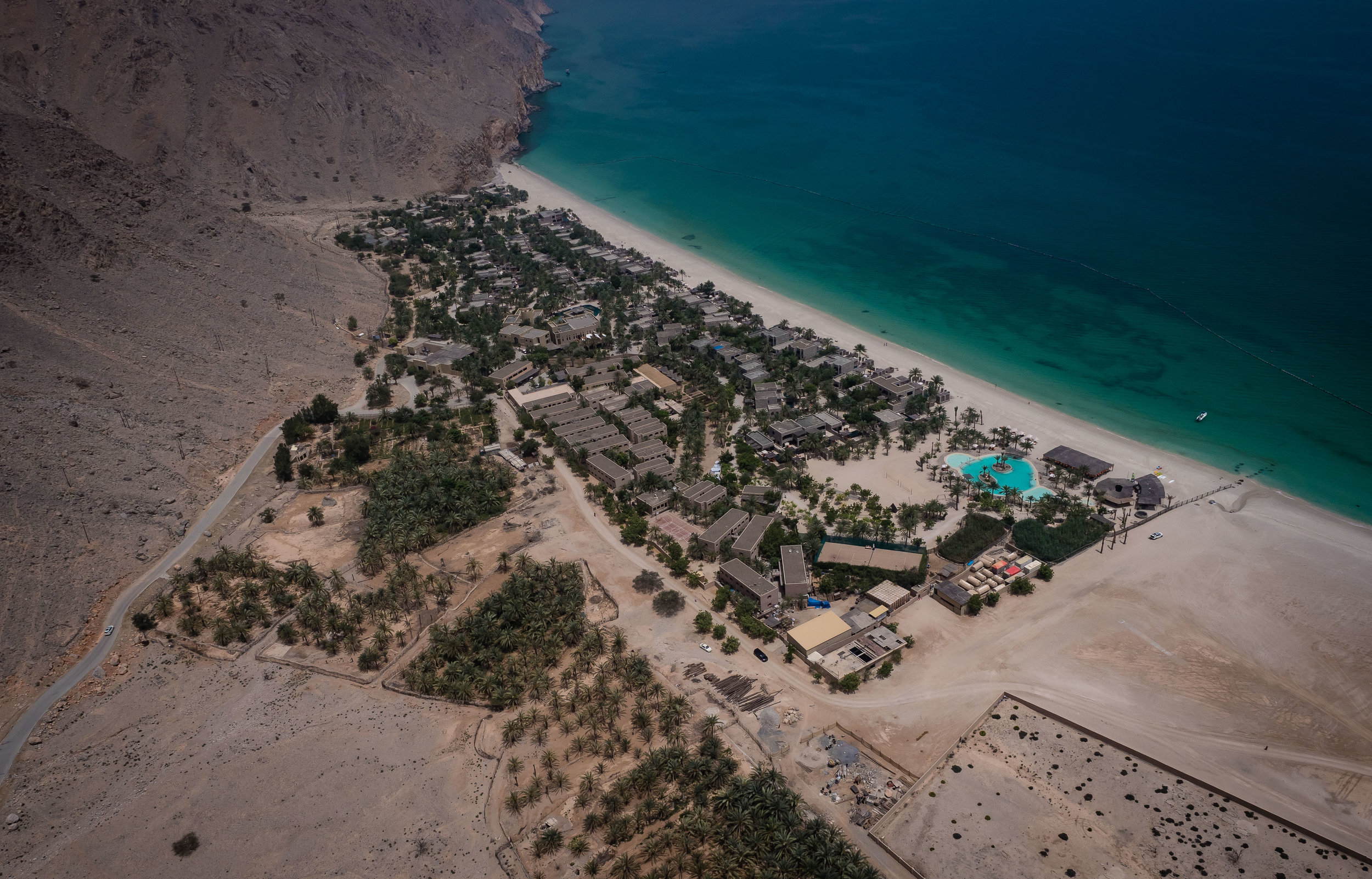
Six Senses Zighy Bay
A view of the resort taken from the air. It's a stunning location.

Another Option
If you don't like paragliding, this motorised option also exists.
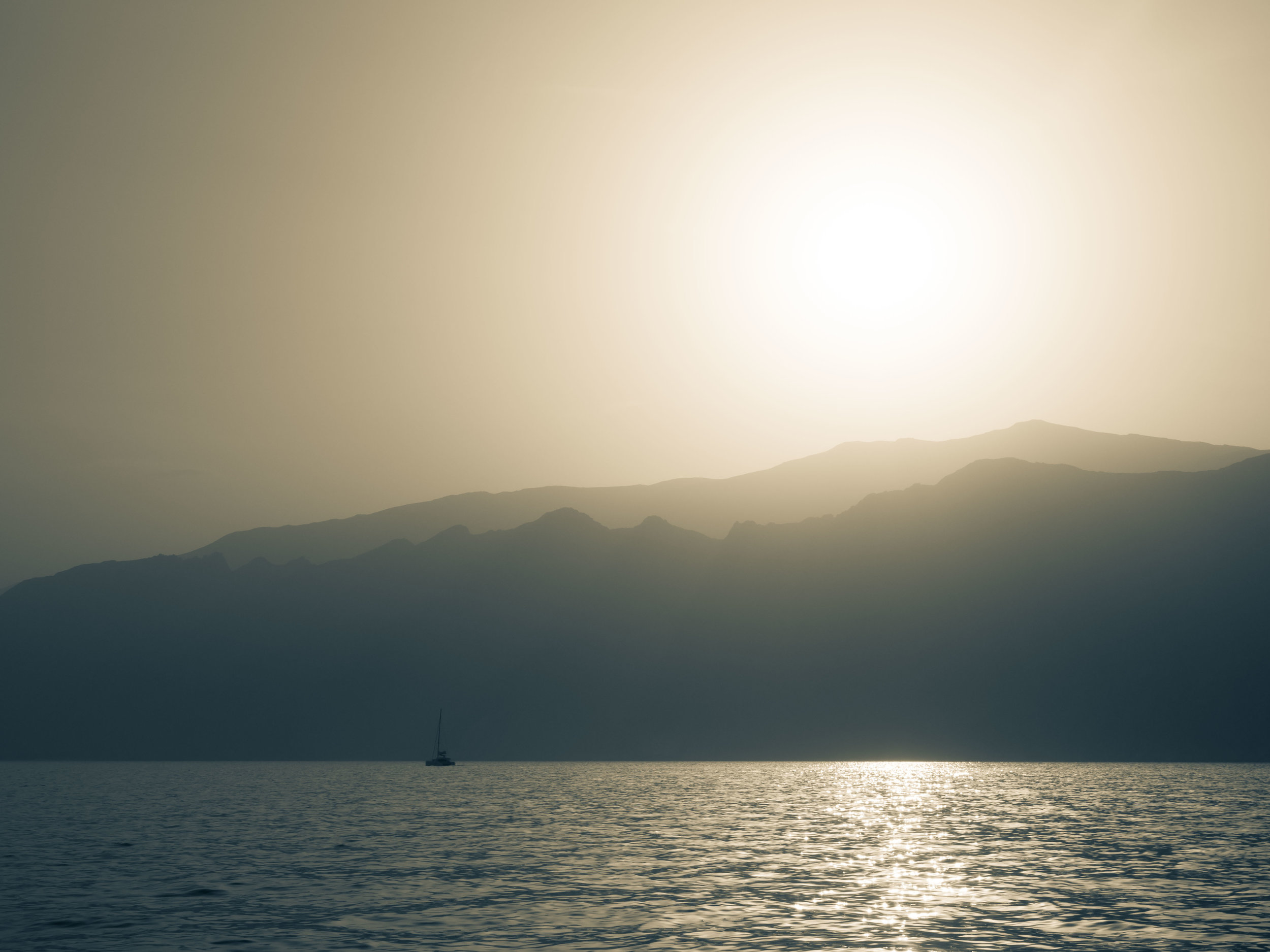
Mountain Views
The views of the mountains from the sea are stunning.
The iPhone X and the Maldives Underwater World
A week of relaxing in the Maldives with some snorkeling and the iPhone X resulted in the shots below - took the phone under water without a case, around 1-2m deep.

A week of relaxing in the Maldives with some snorkeling and the iPhone X resulted in the shots below - took the phone under water without a case, around 1-2m deep. These photos were taken at Jumeirah Vittaveli.
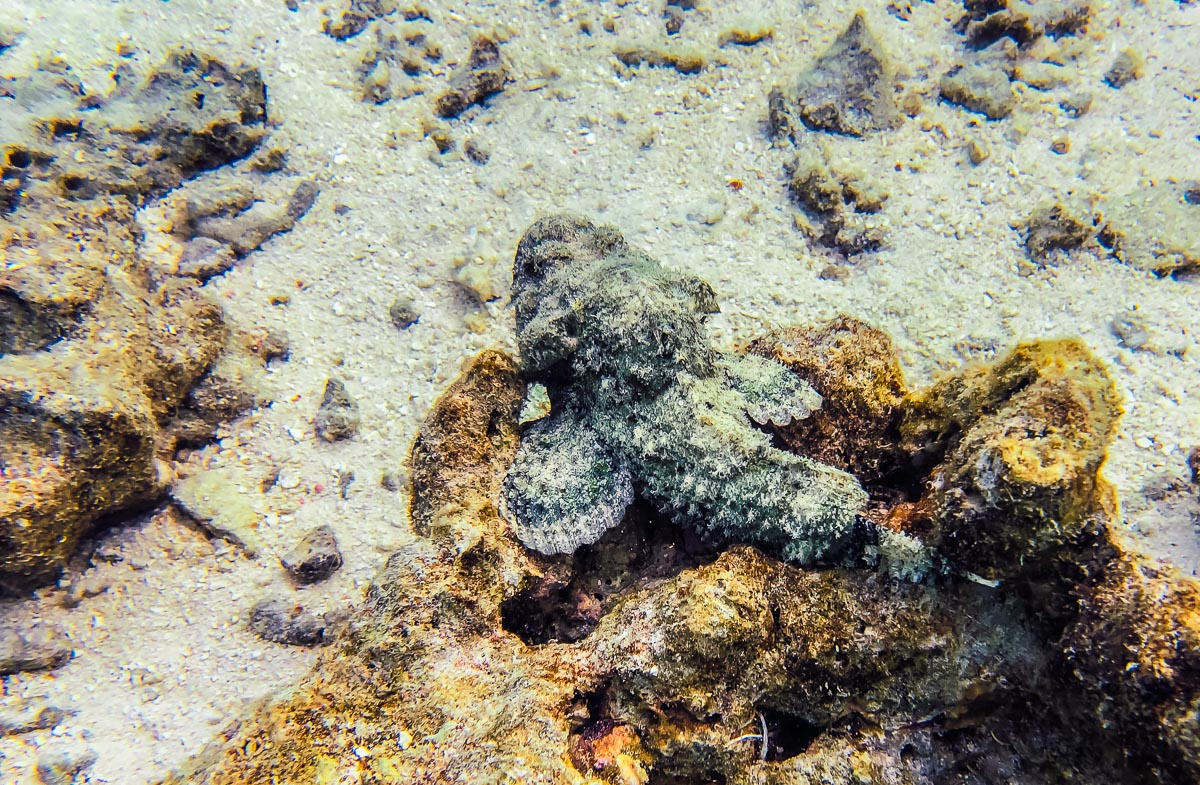
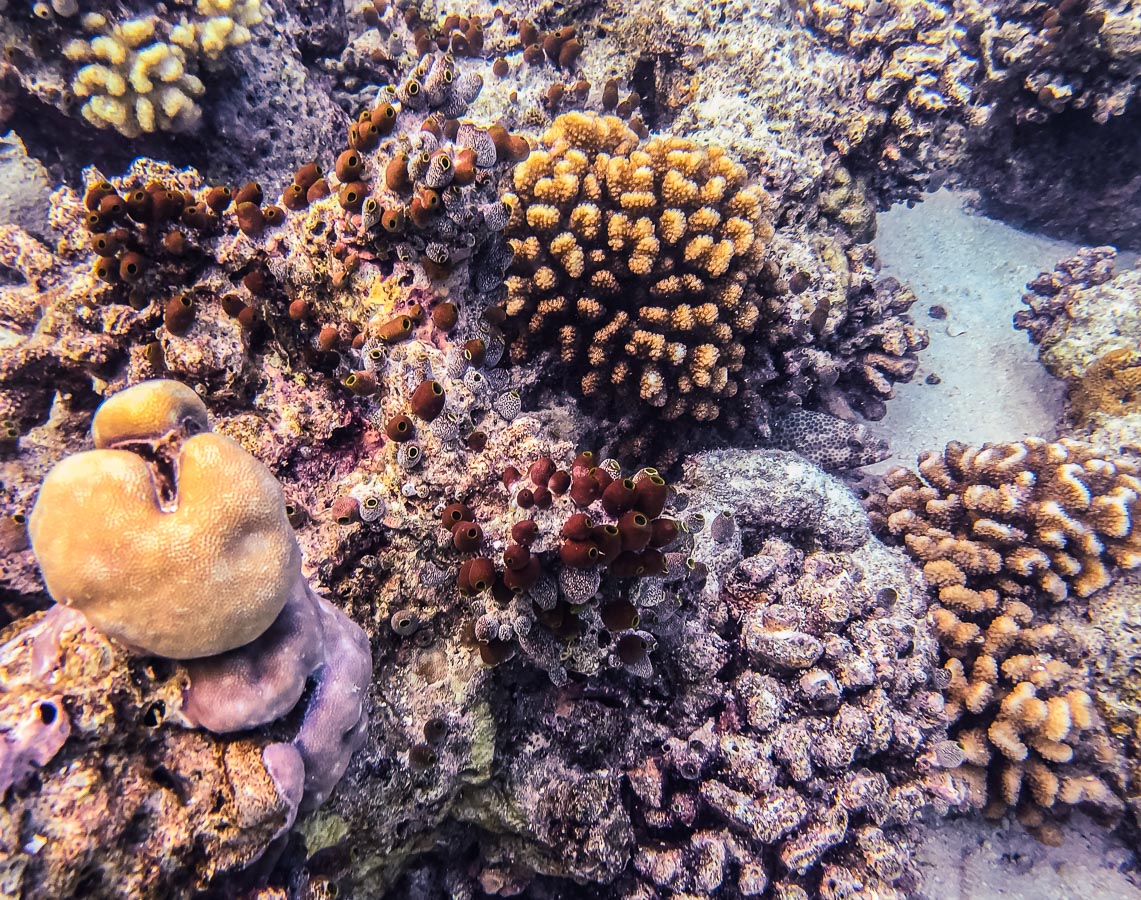



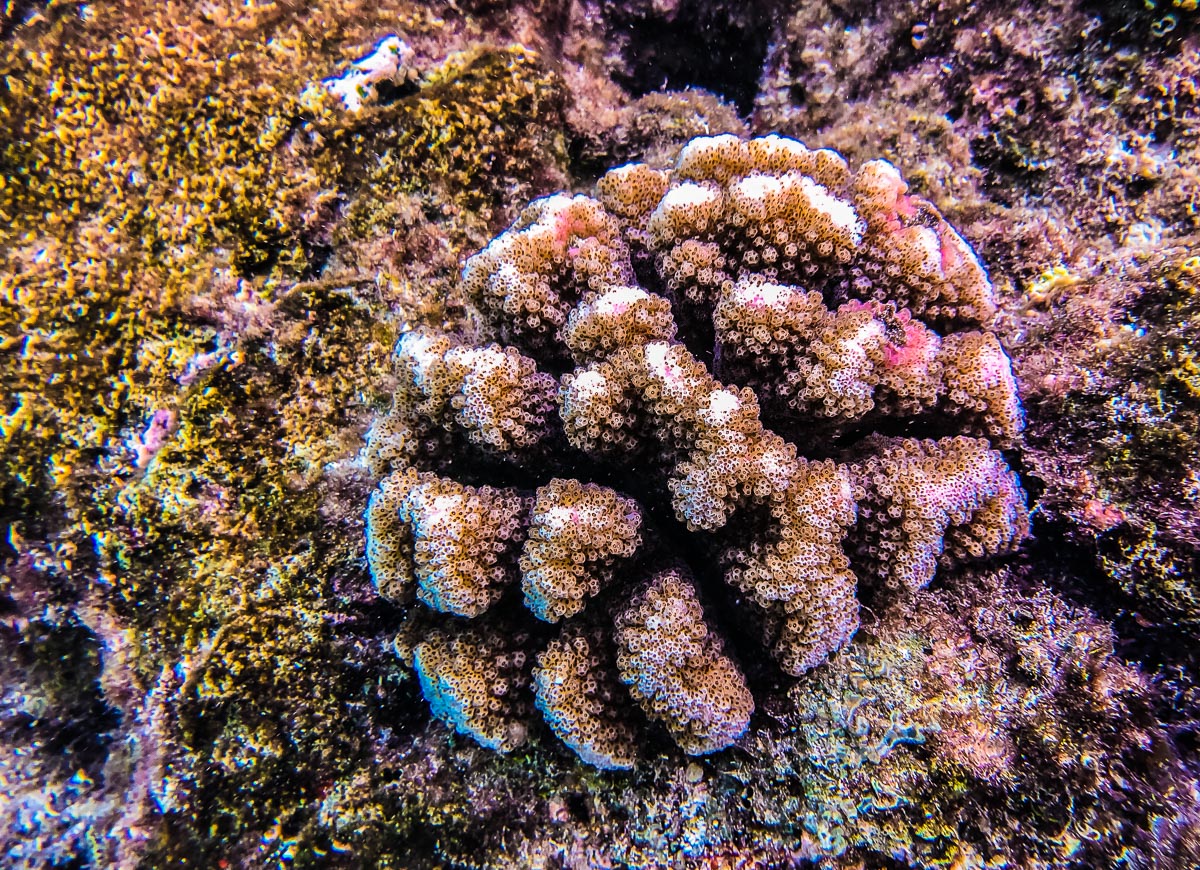
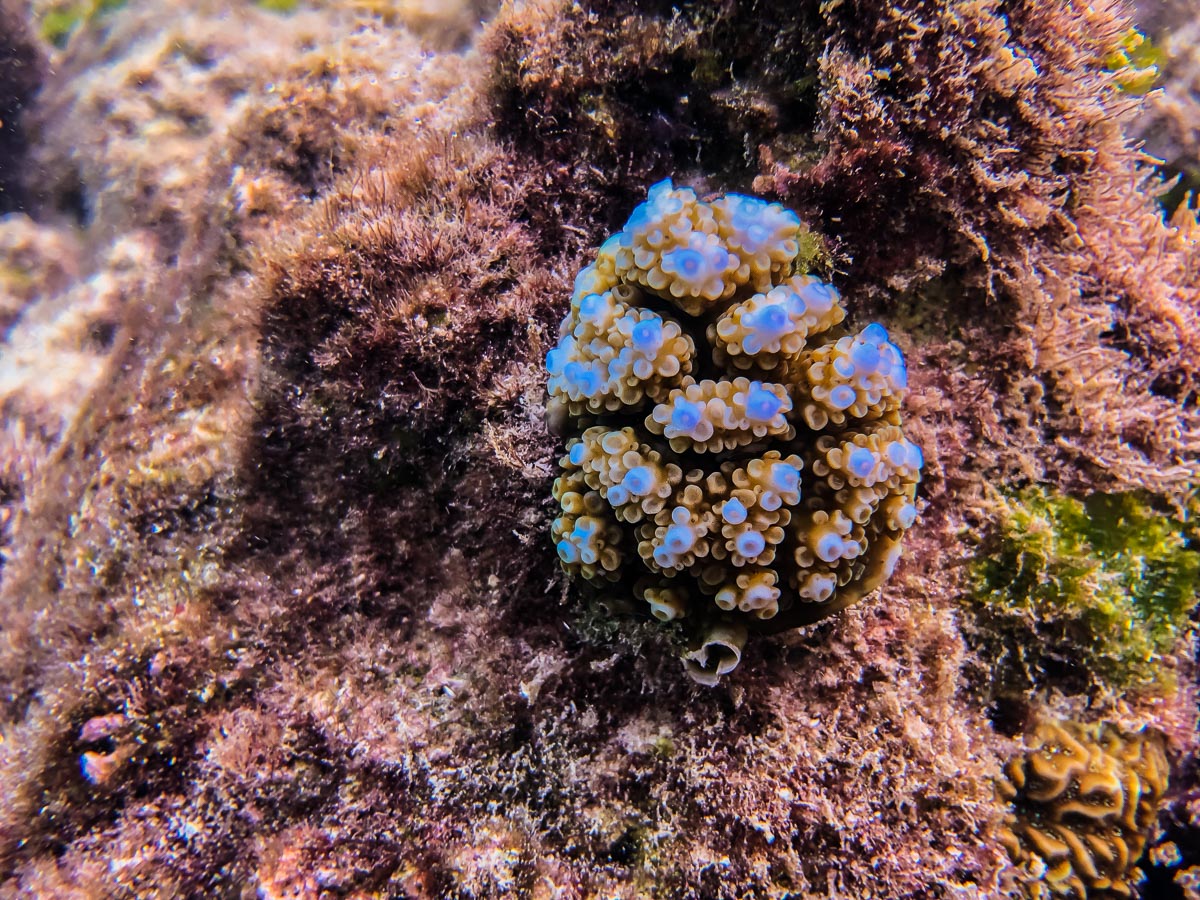
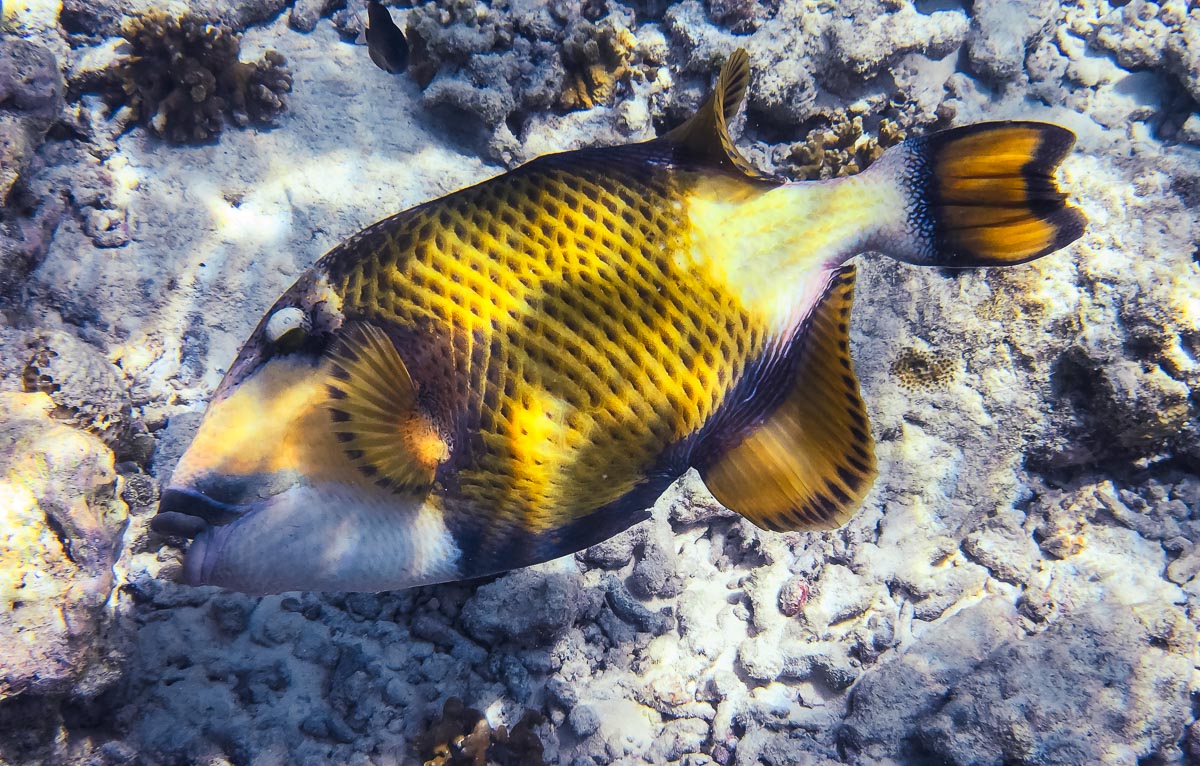

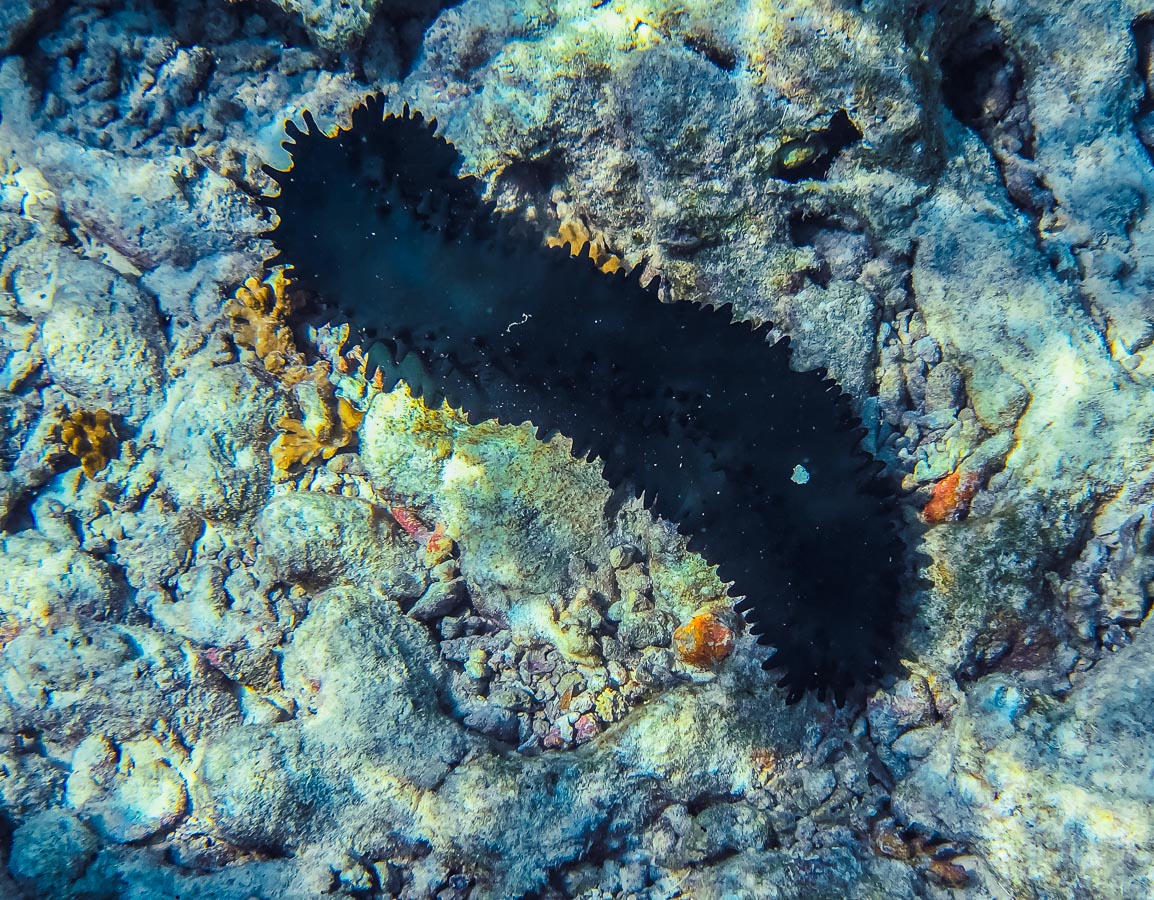
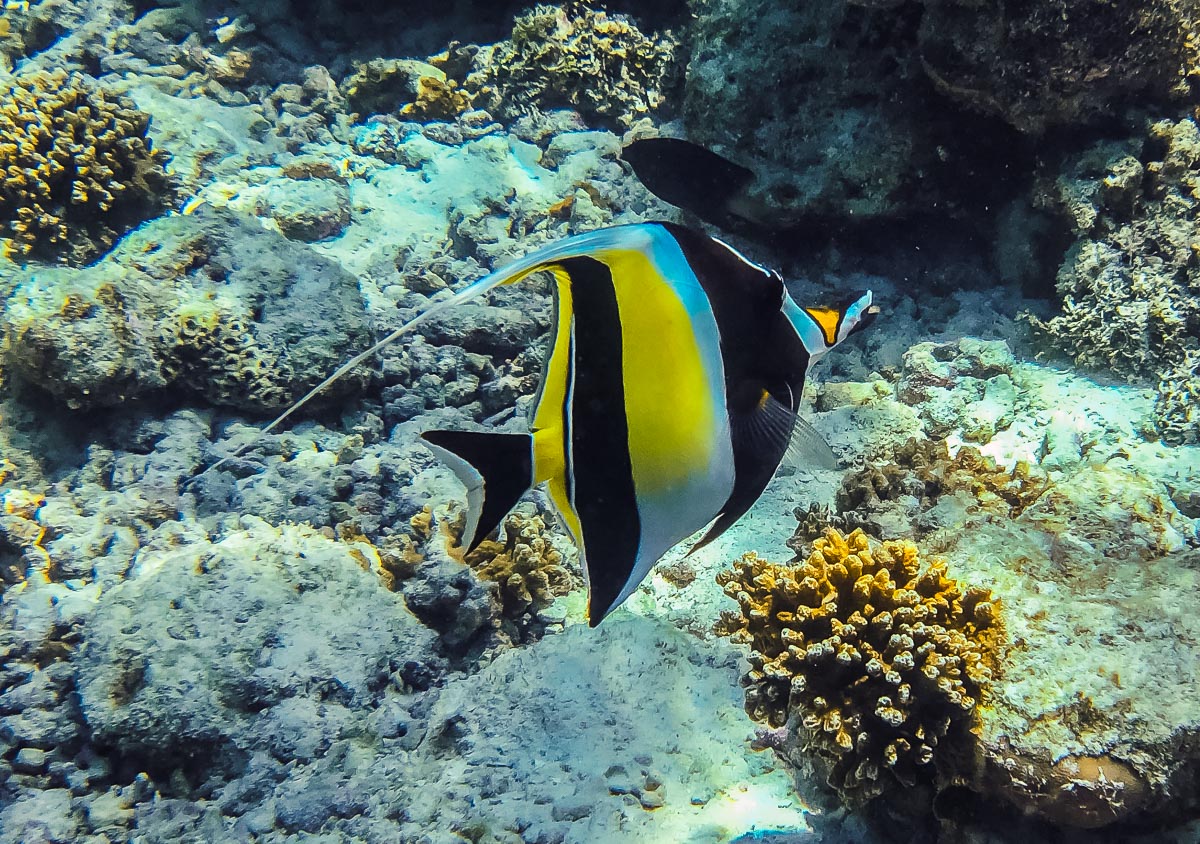

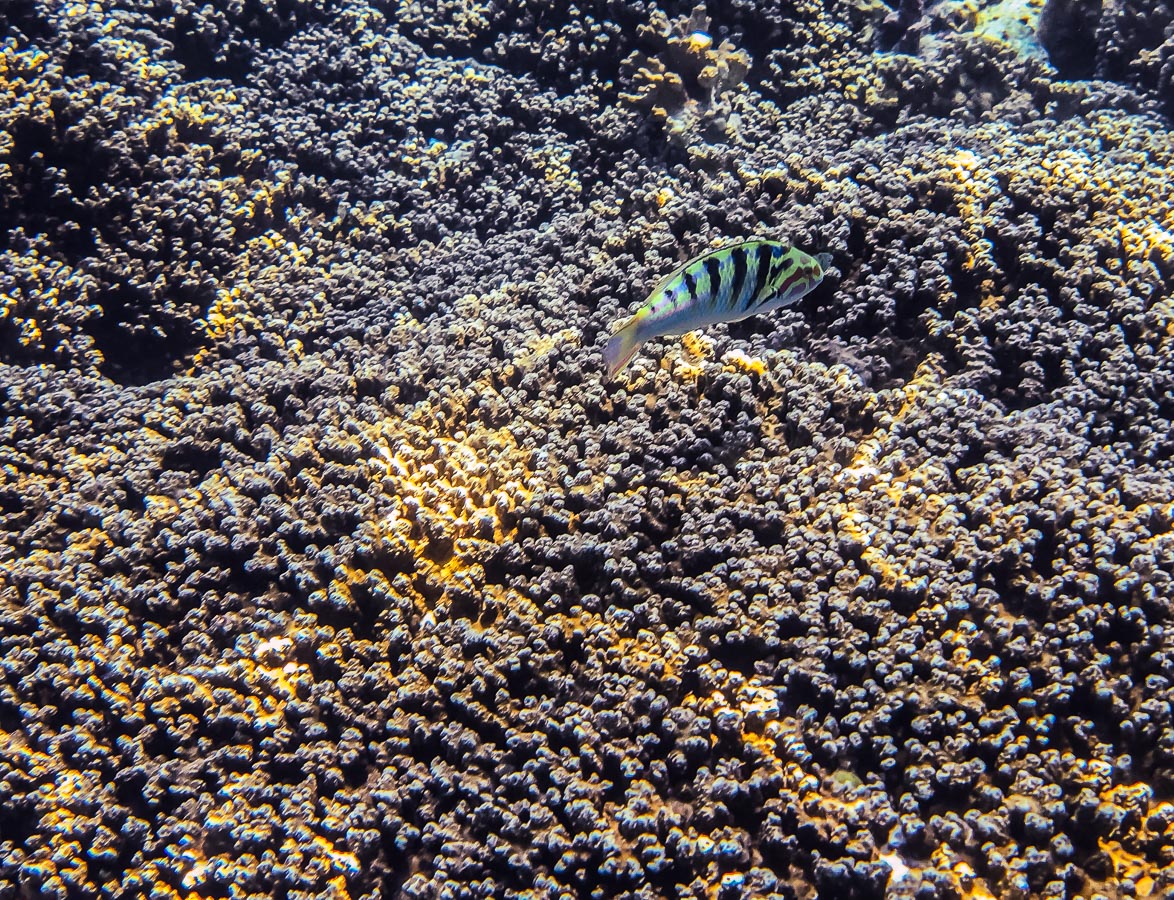

Fujairah - The other side of the UAE
Took a day trip to Fujairah, passing Masafi Town, Dibba, Khor Fakkan and Fujairah City on the way and stopping at Wadi Shawka on the drive back. Time well spent for sure.

Took a day trip to Fujairah, passing Masafi Town, Dibba, Khor Fakkan and Fujairah City on the way and stopping at Wadi Shawka on the drive back. Time well spent for sure.
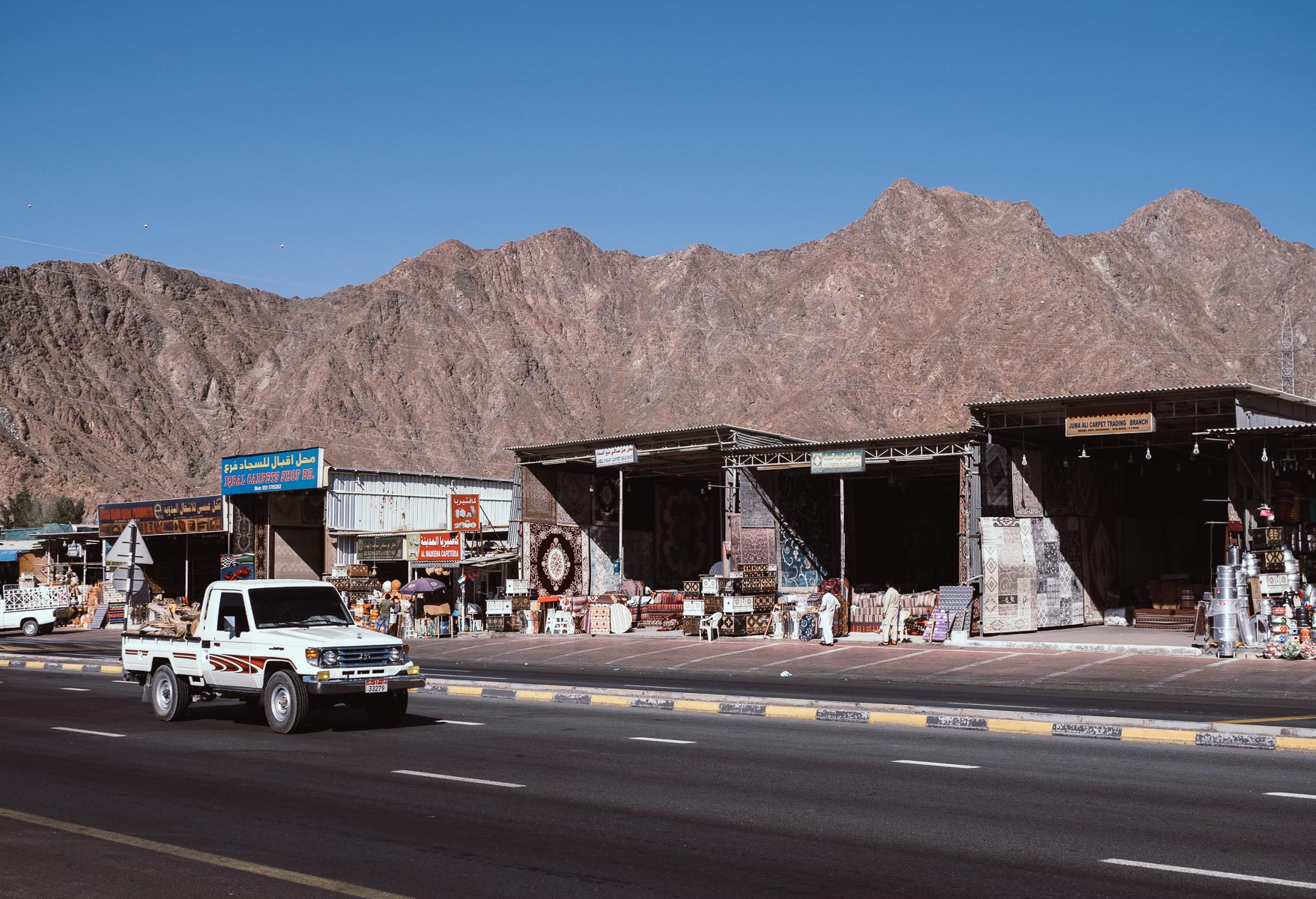
The Friday Market
On the way to Masafi town, coming from the Sharjah / Dubai side.
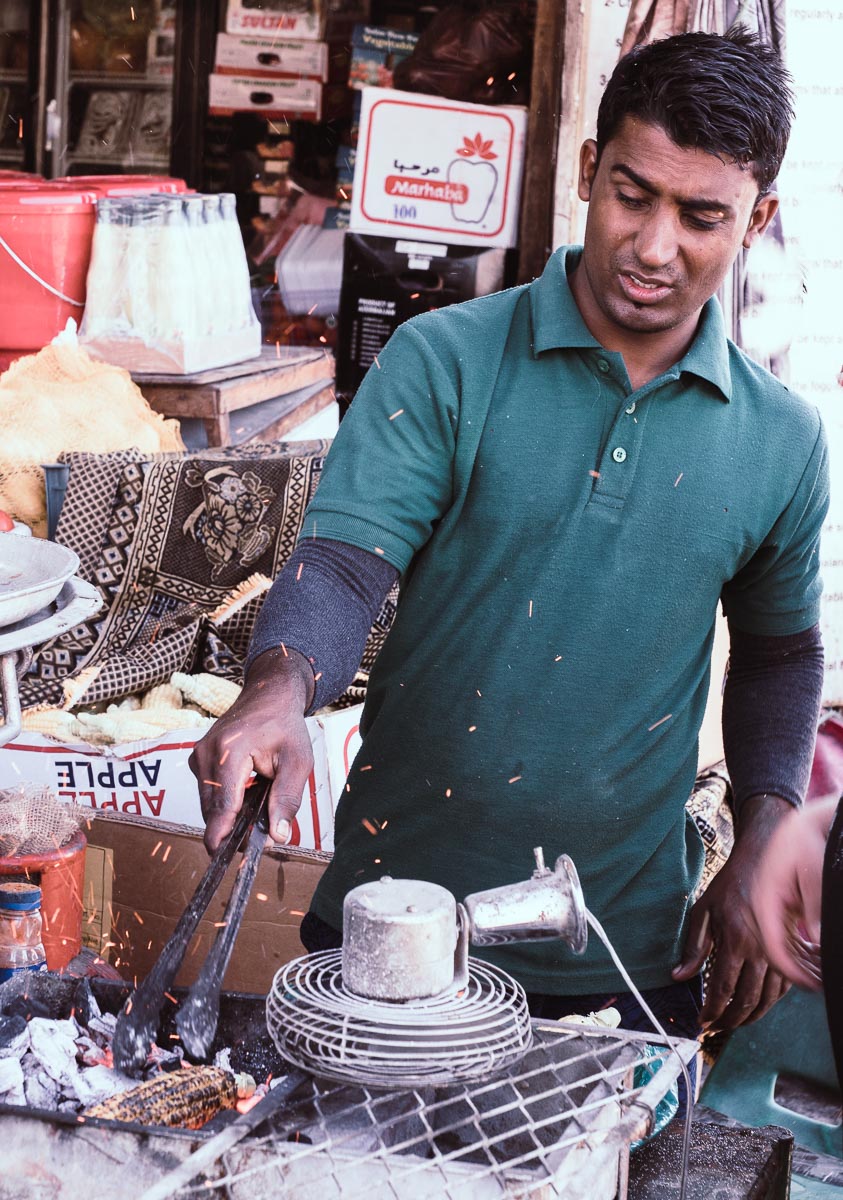
Roasted Corn
Note the sophisticated wind machine.
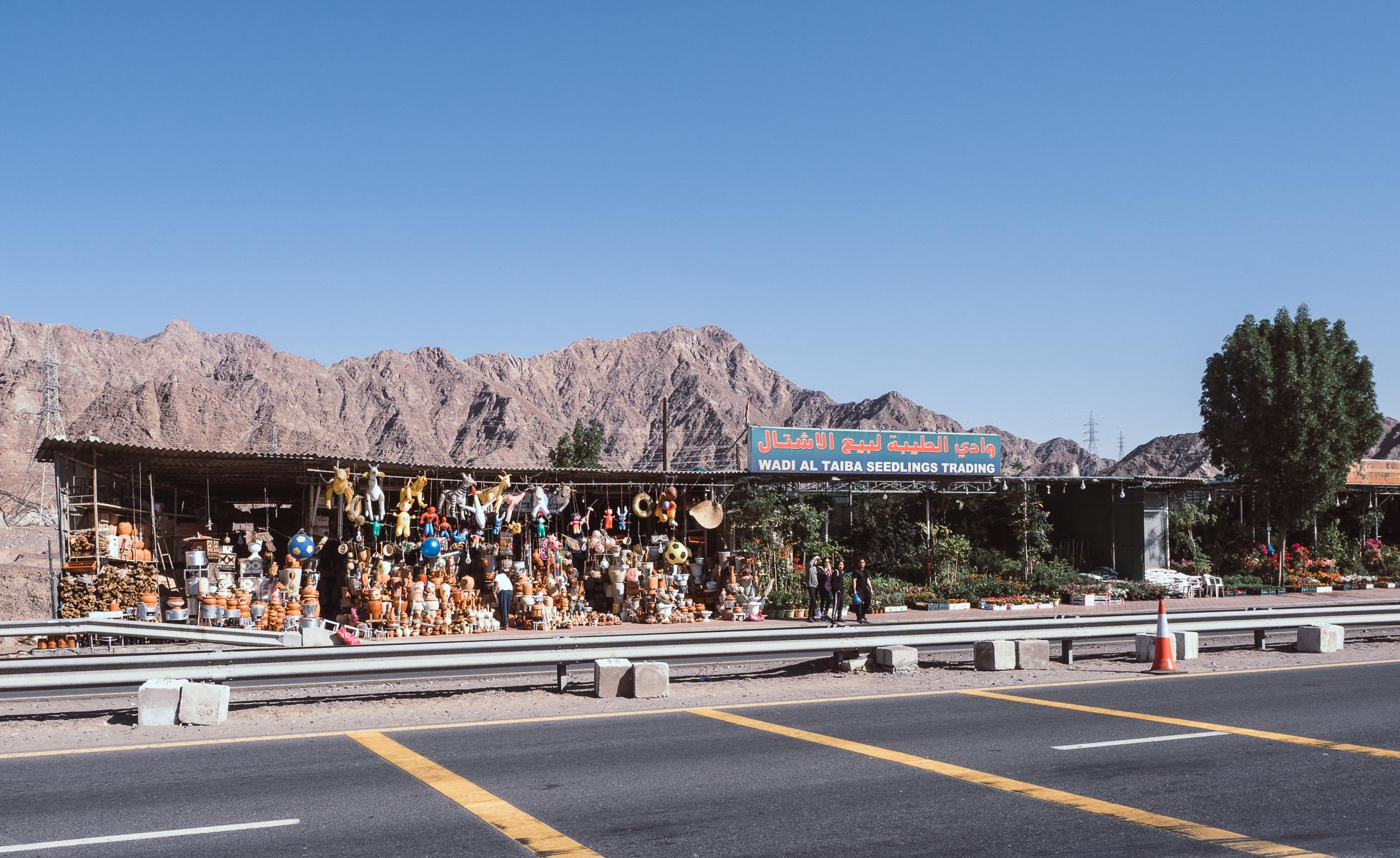
Variety
Pots and plants!
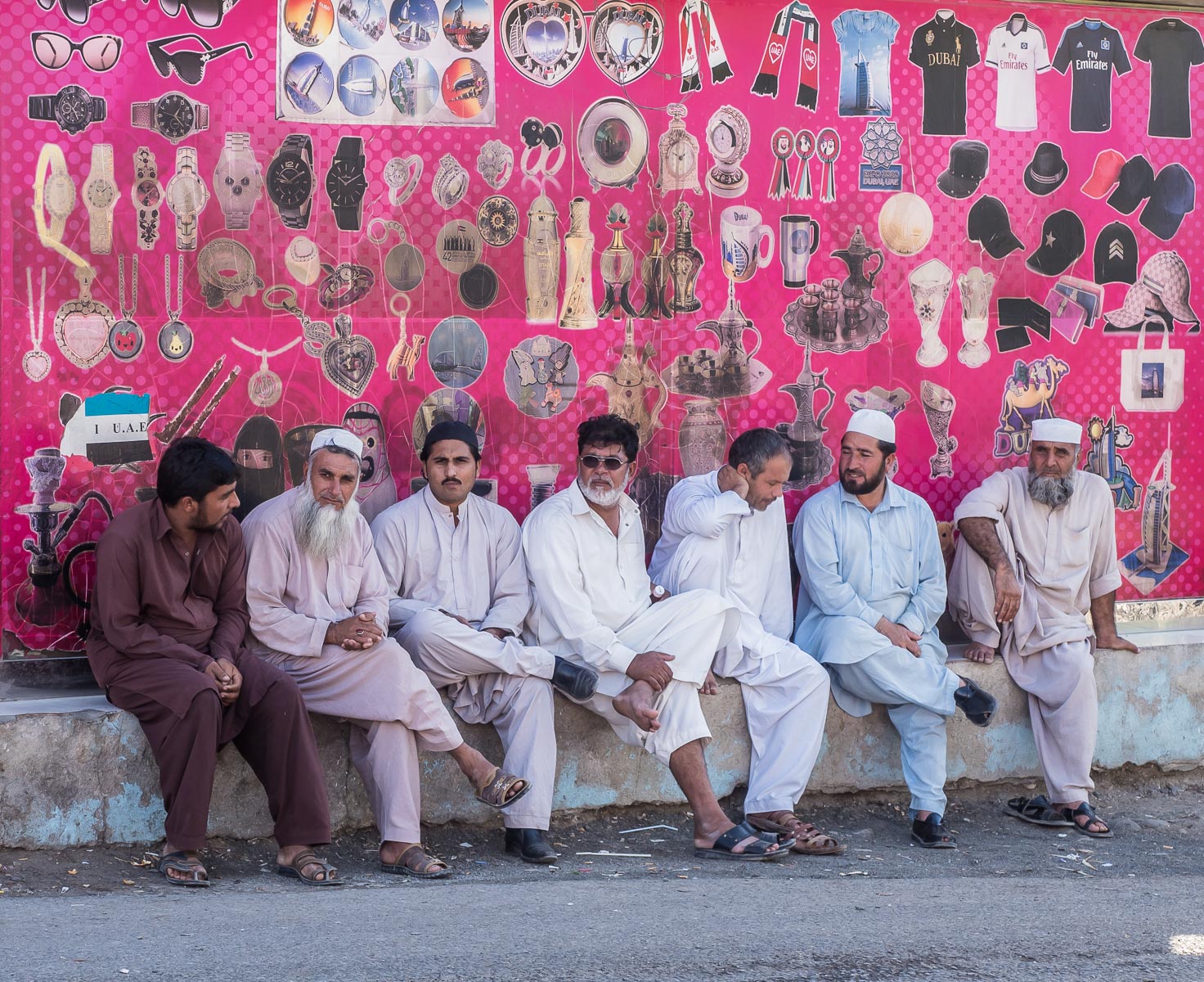
The Wise Men
Discussing topics of importance.
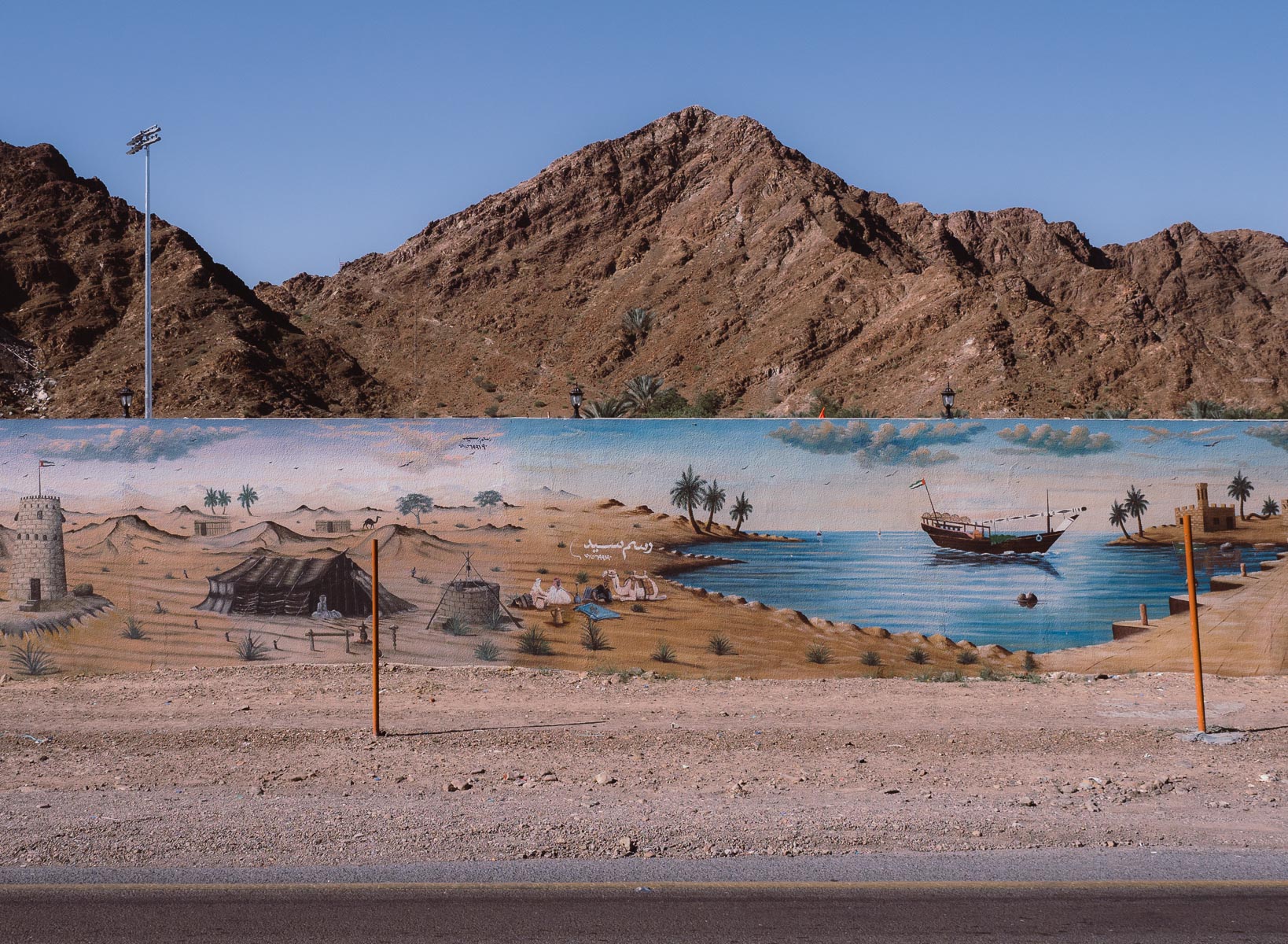
Graffiti - Masafi Style
Spotted on the road from Masafi to Dibba

Towns
A small town outside Masafi.

Dibba Harbour
The National Day weekend meant the UAE flag was a common sight.

On the Shores
The Dibba beach.
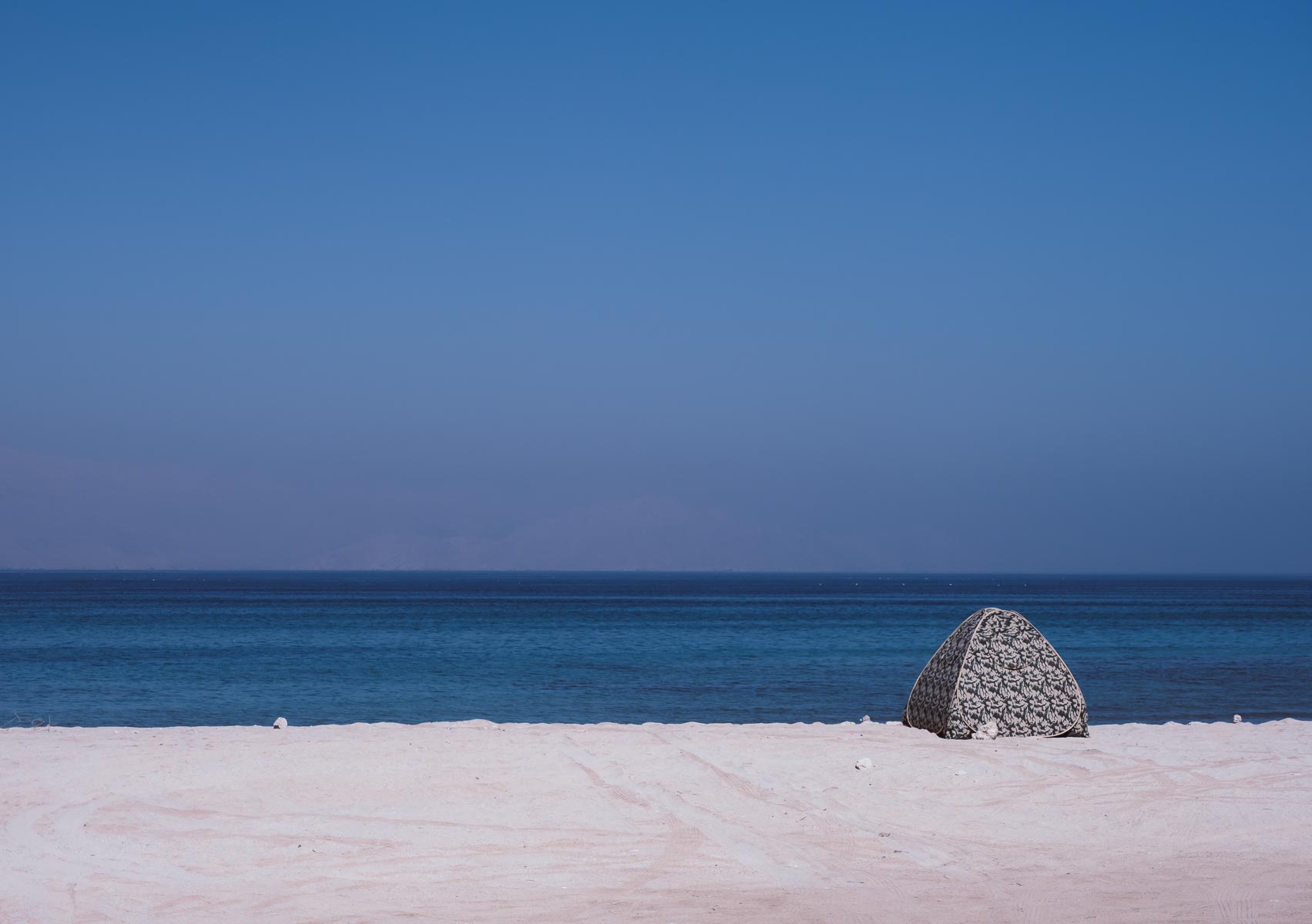
Camping
Is a common activity in the Eastern Region. Tent designs vary.

Hidden Gems
There's a few beautiful spots on the coast.
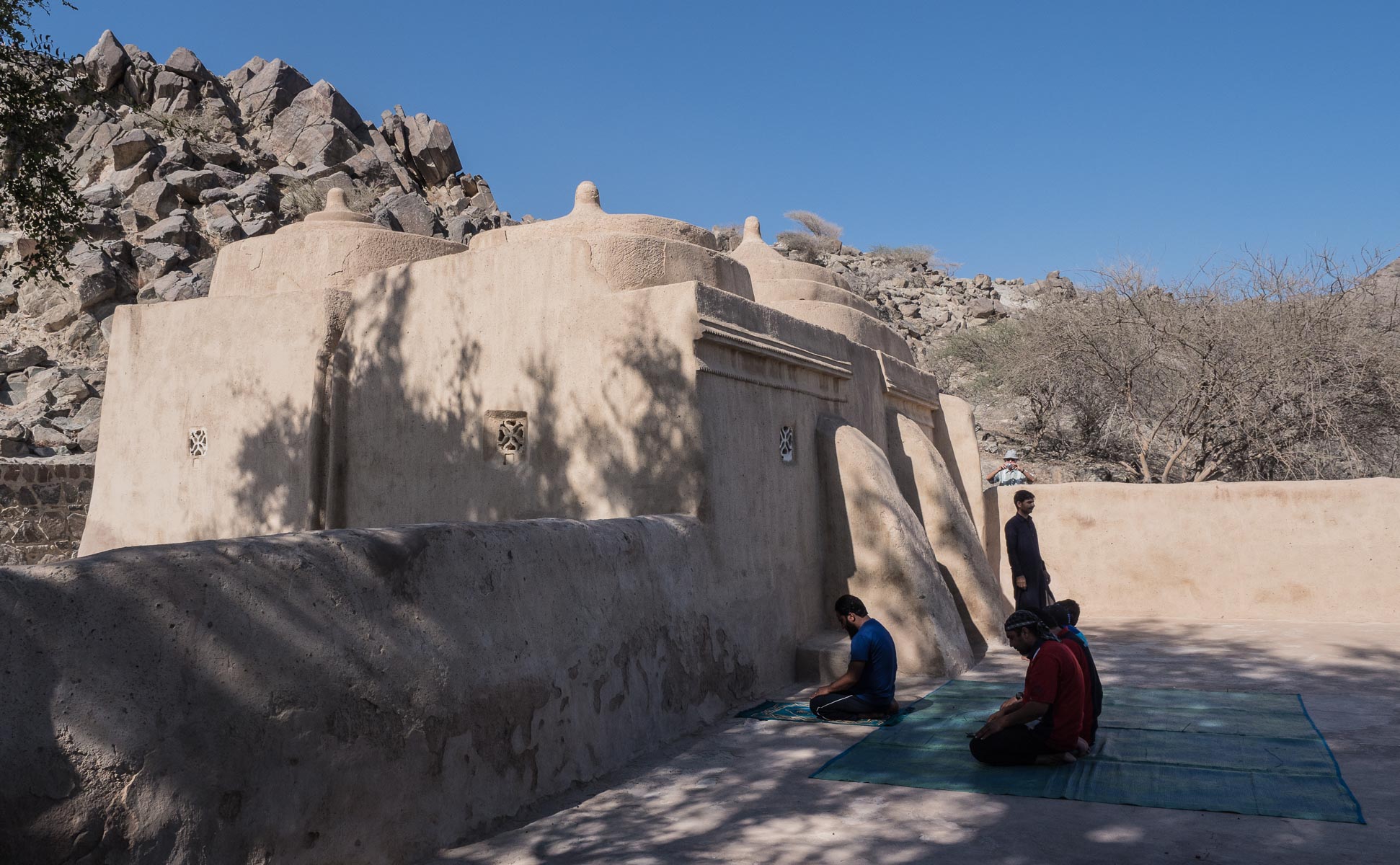
Al Badiyah Mosque
Said to be from the 15h century, a few km north of Fujairah City.
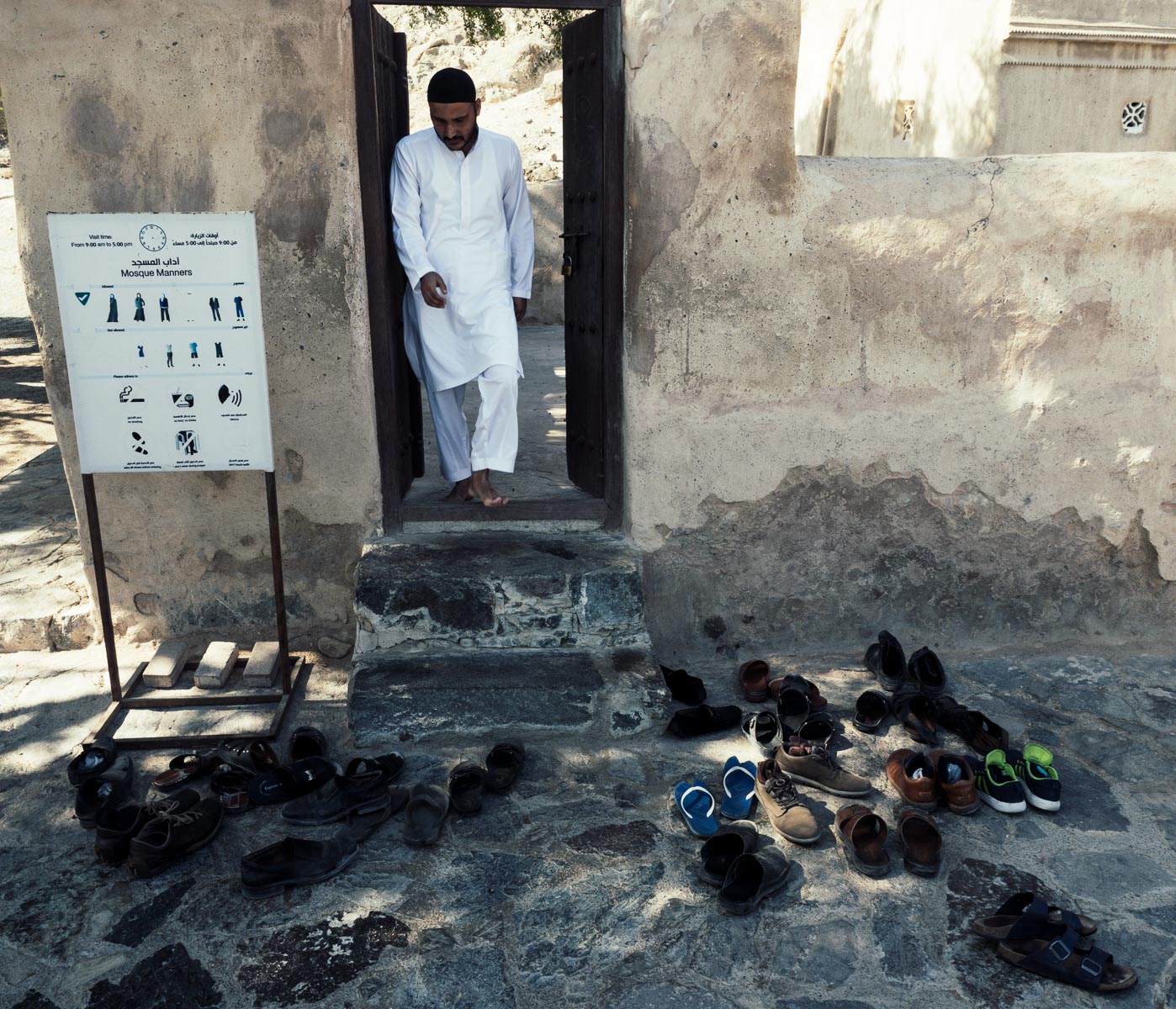
Mosque Manners
Shoes off!
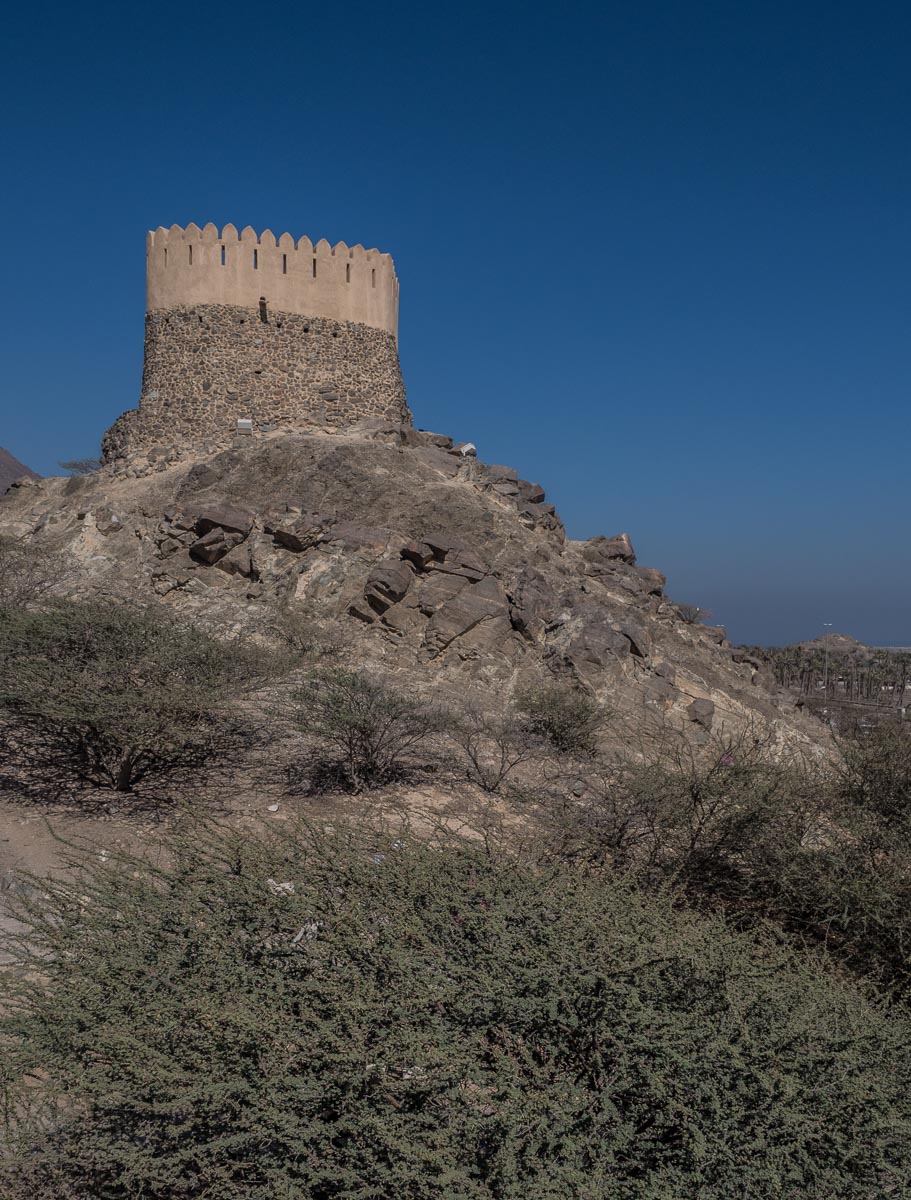
Watch Tower
One of the two watch towers overlooking the mosque.

Views
Looking inland from the tower.
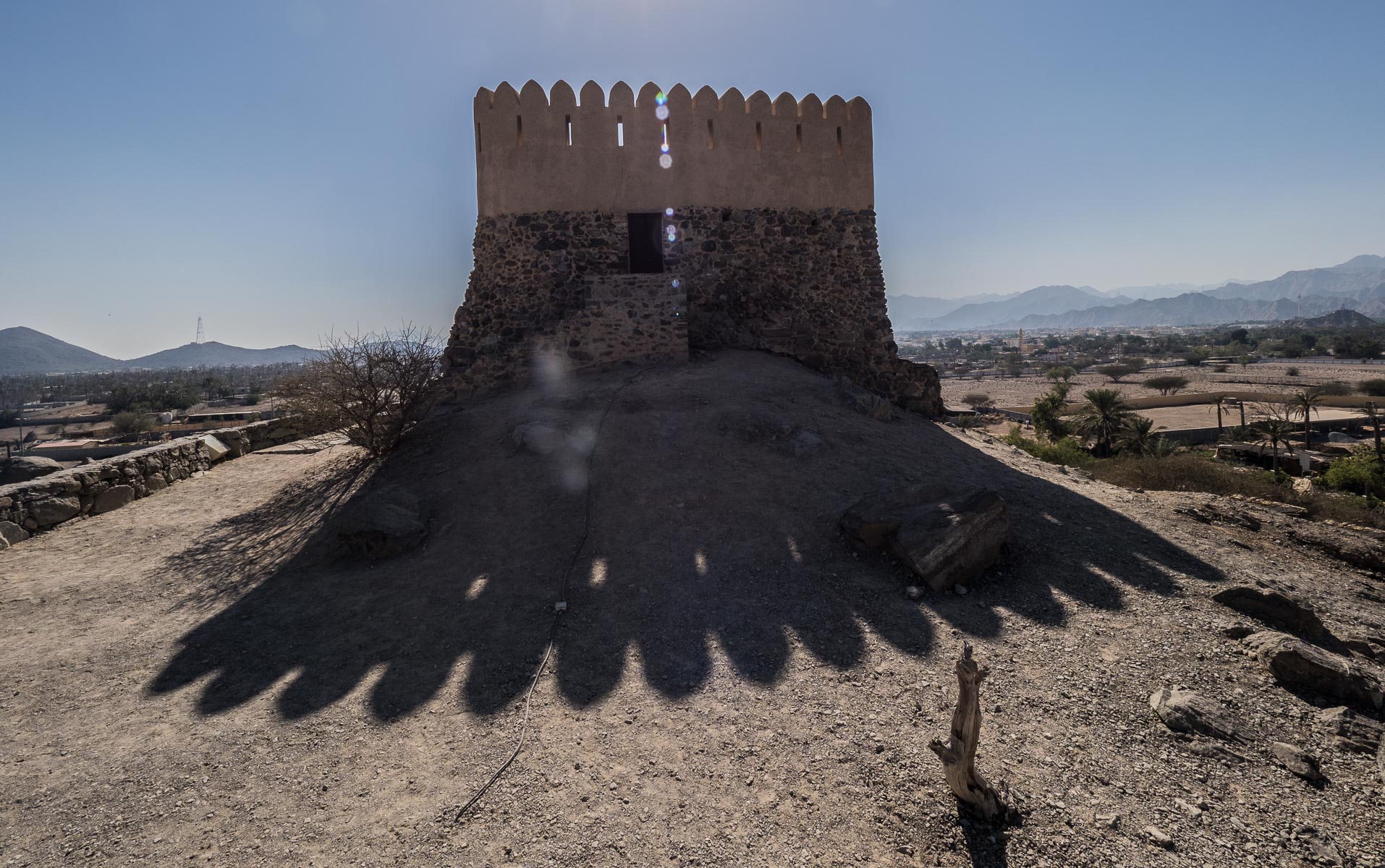
Age
Since neither the mosque or the tower used wood, radiocarbon dating was not an option, but in the late 1990s researchers concluded it was more than 500 years old.

Reality Check
Photos can be deceiving. It was the National Day weekend after all, so the ocassional bus load of tourists arrived.
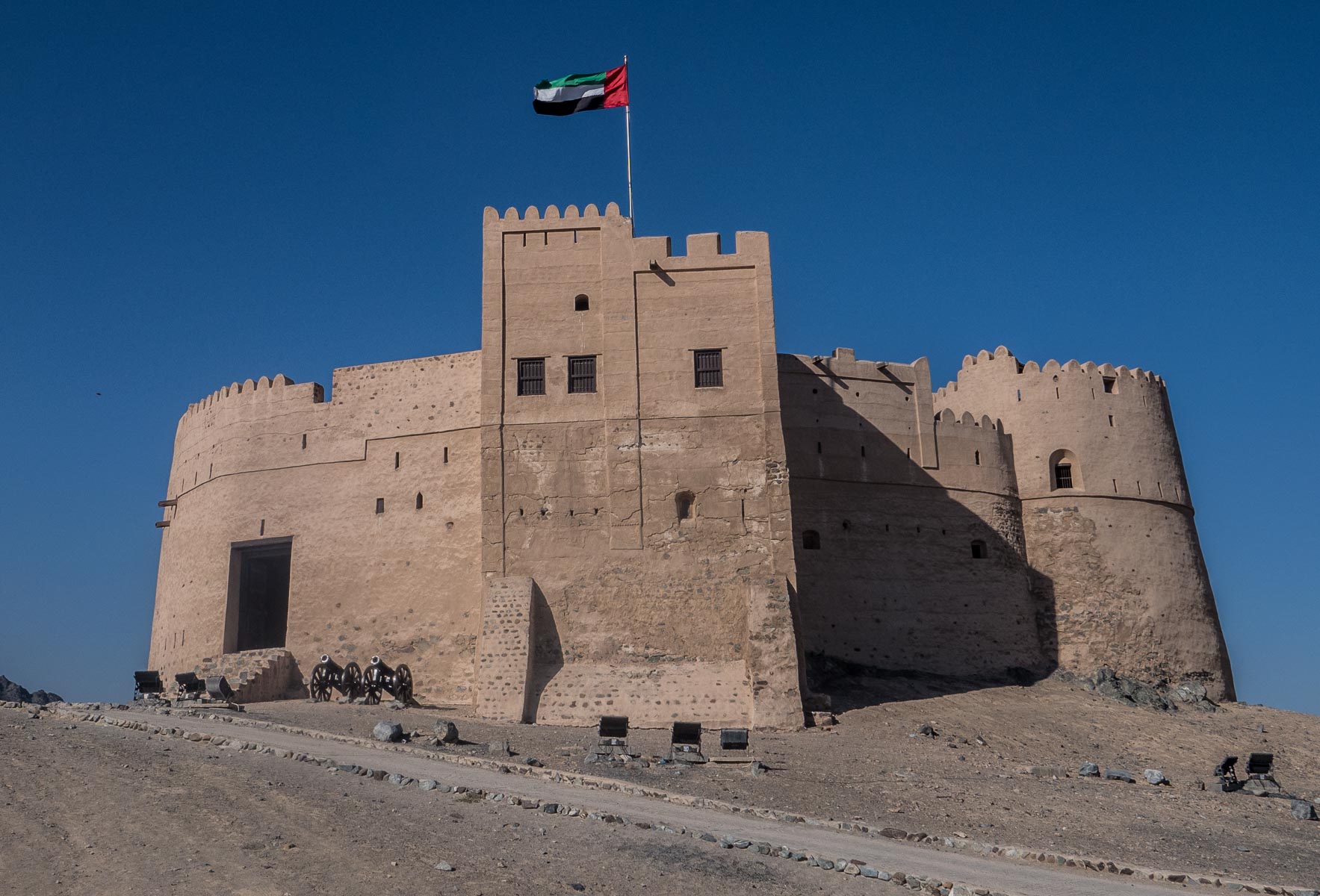
Fujairah Fort
Again the exact time it was built isn't clear, but probably ranges between the 16th and 18th century.
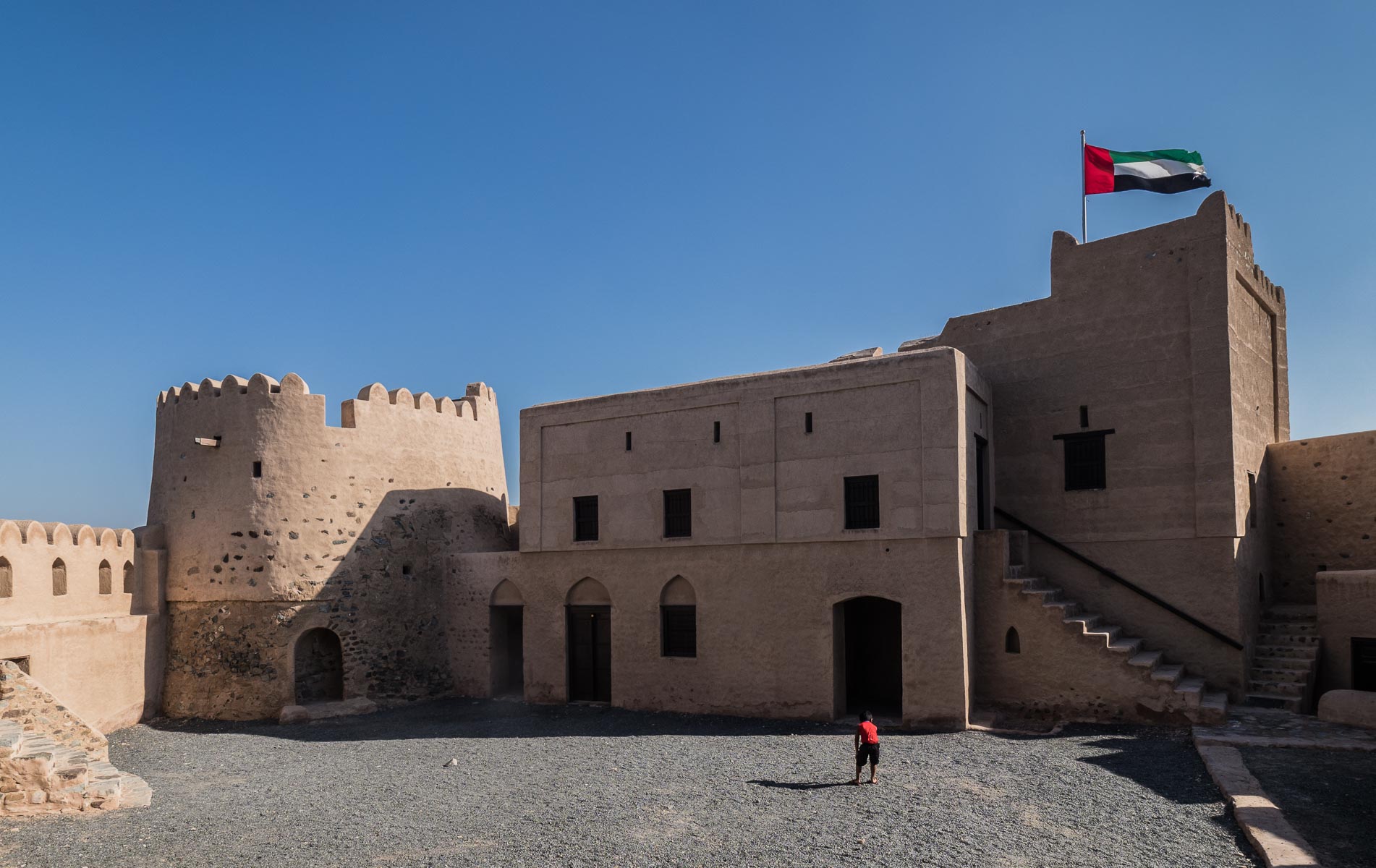
Inside
The fort only opened to the public in 2010.

Views
The fort is a on small hill and you can walk up one of the watch towers to get this view.

Stairs
Not made for modern sized humans.
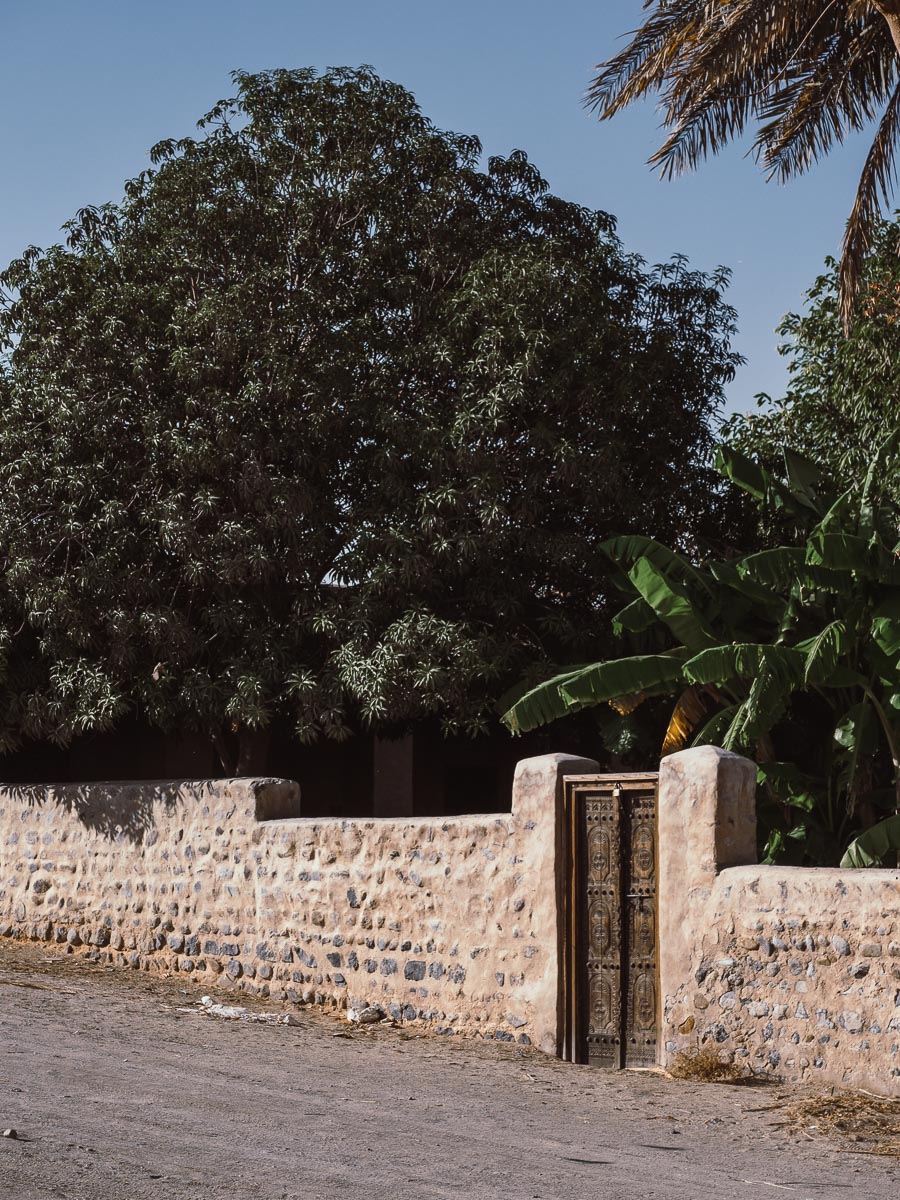
Doors
Surrounding the fort are remains of a few old mudbrick houses.
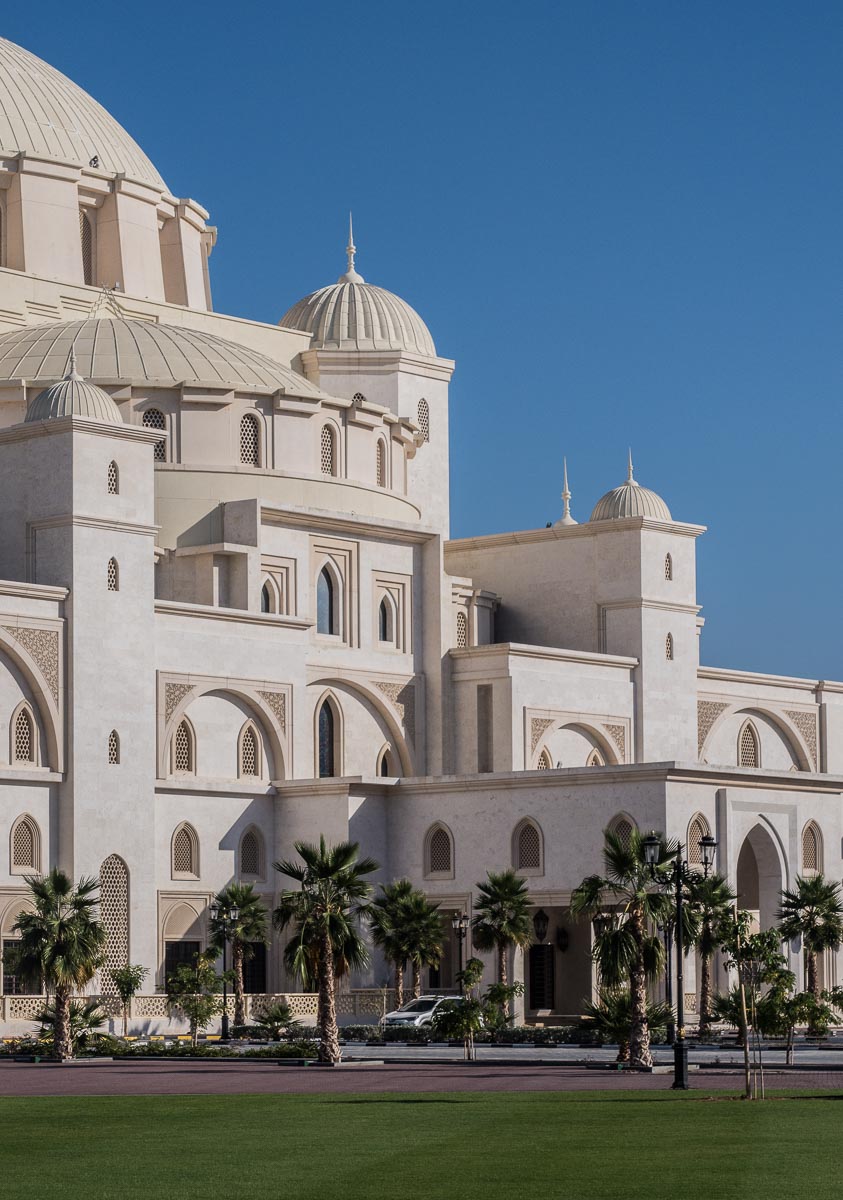
Sheikh Zayed Mosque
The second largest mosque in the UAE, after its cousin in Abu Dhabi named after the same person.
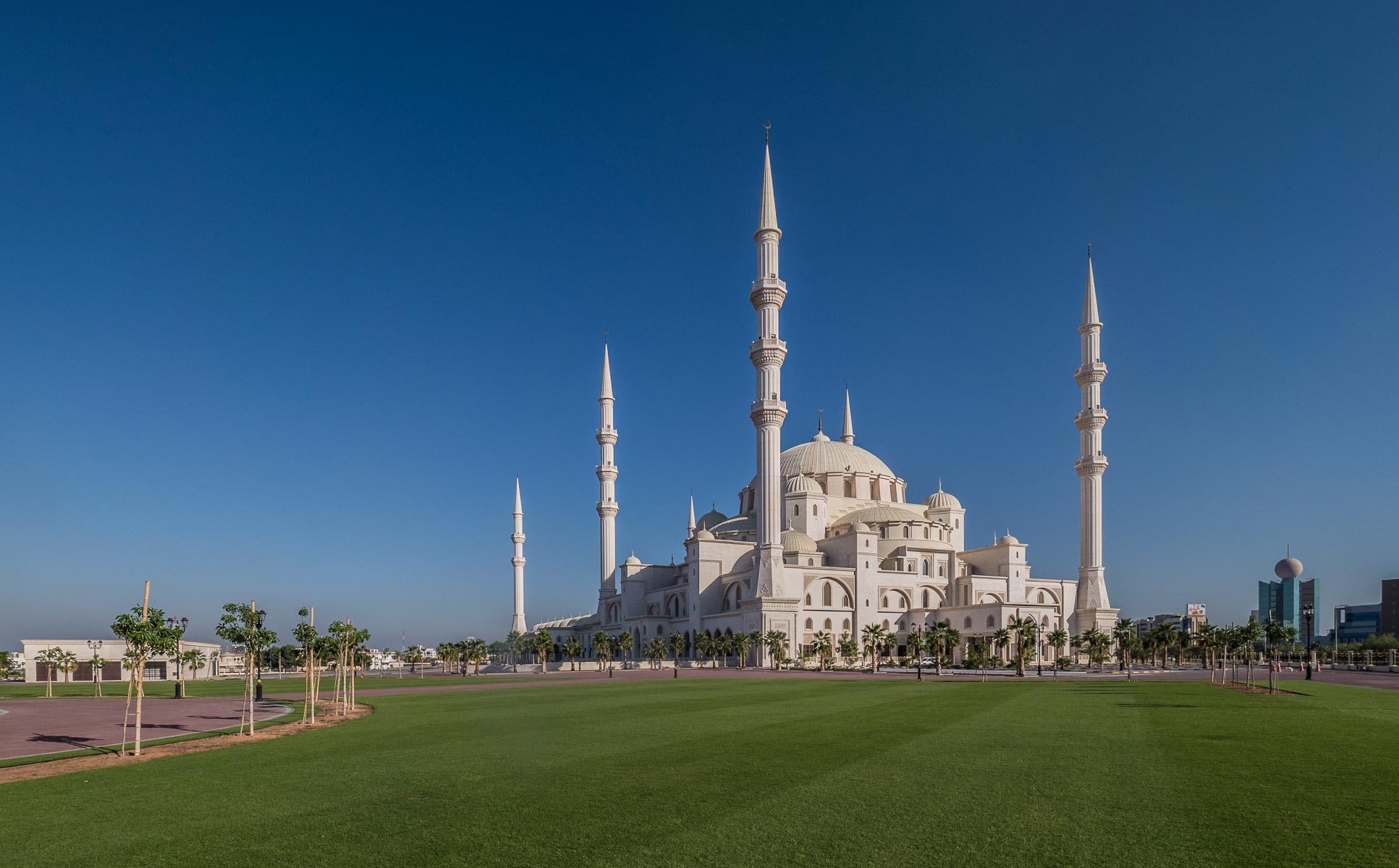
Architecture
65 domes and six minarets, each between 80 and 100 metres tall.

Casual
Cleaning of the largest dome was in progress.
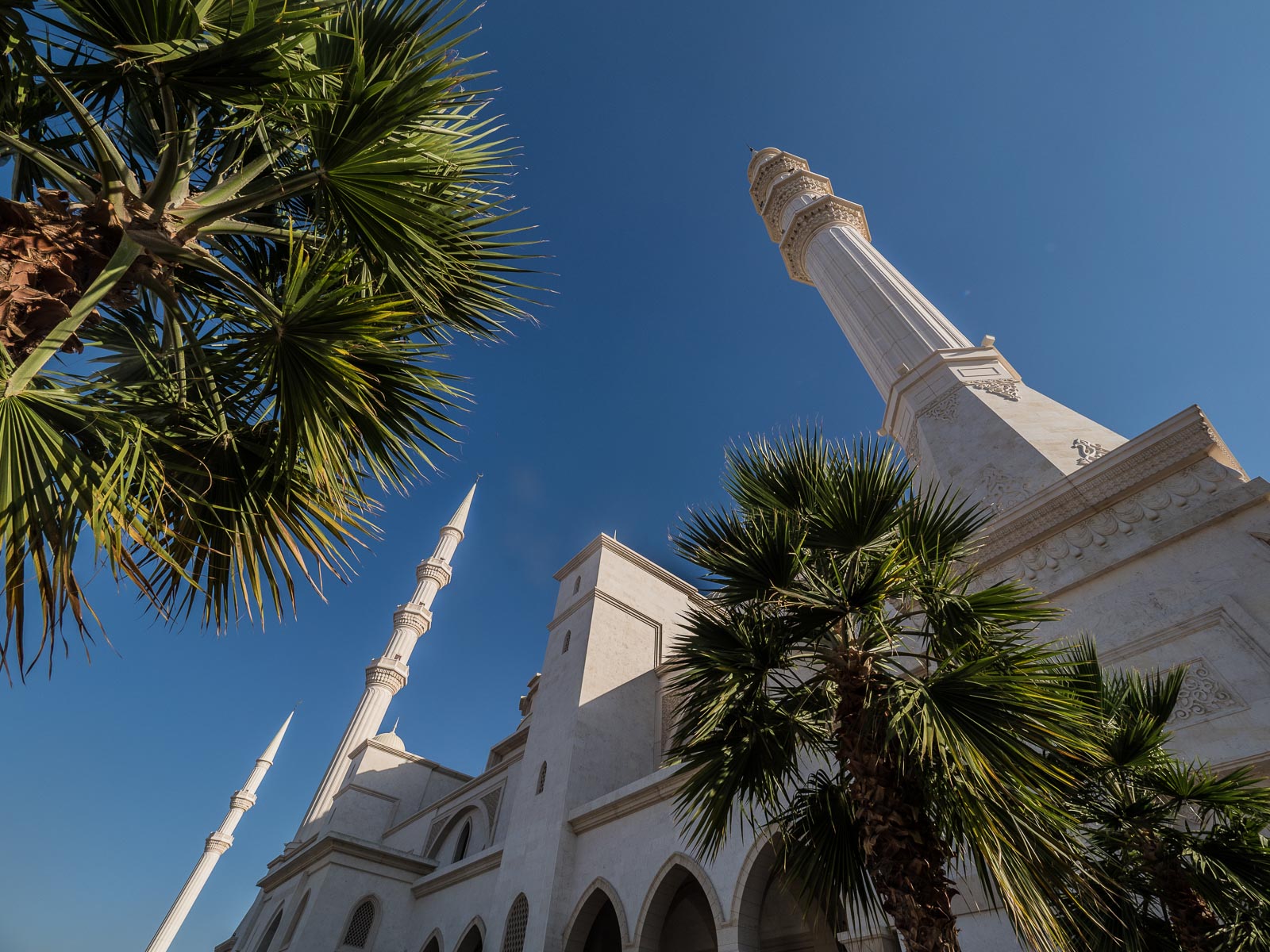
New
The mosque opened in 2015.
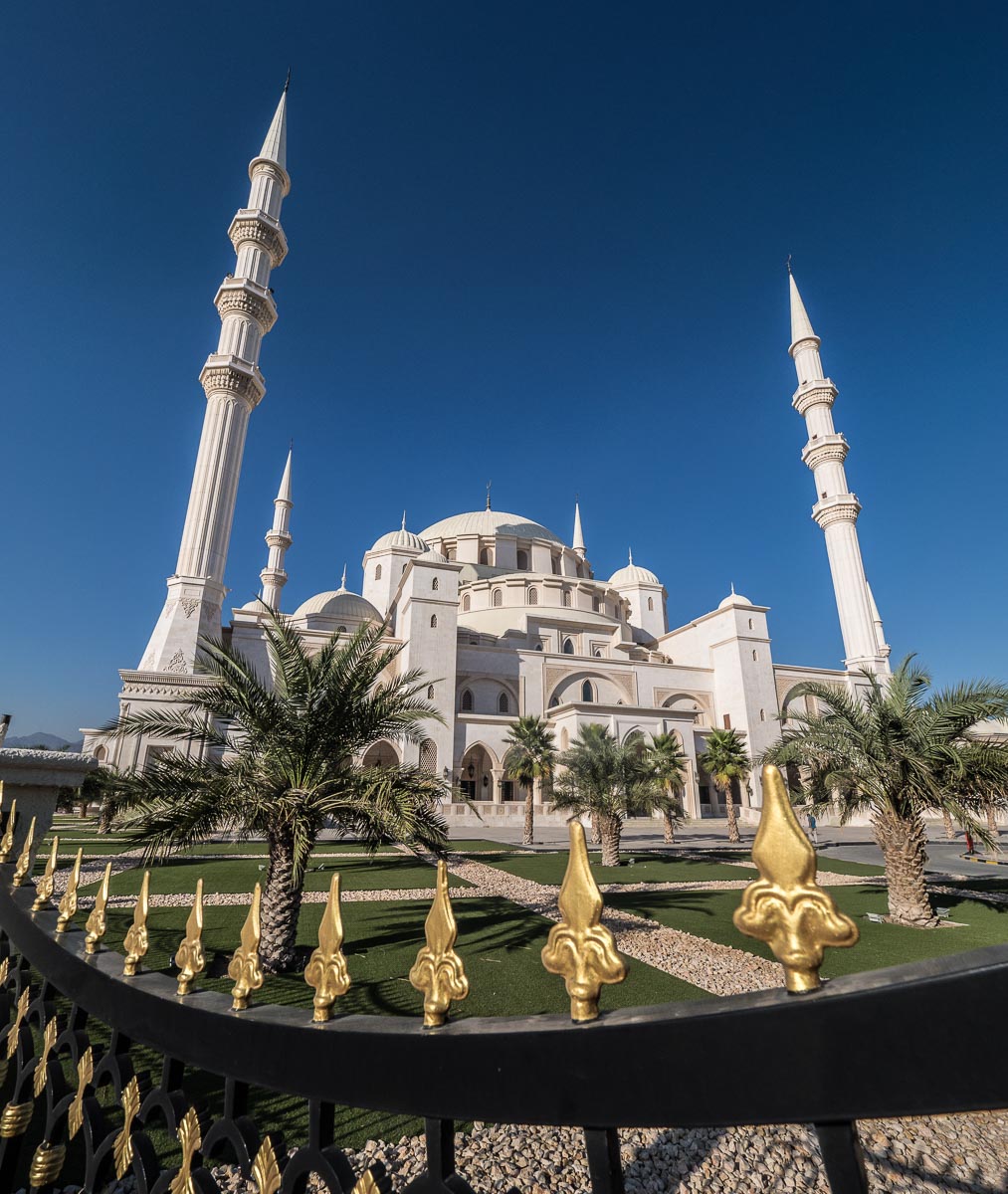
Size
It can accommodate 28,000 people.
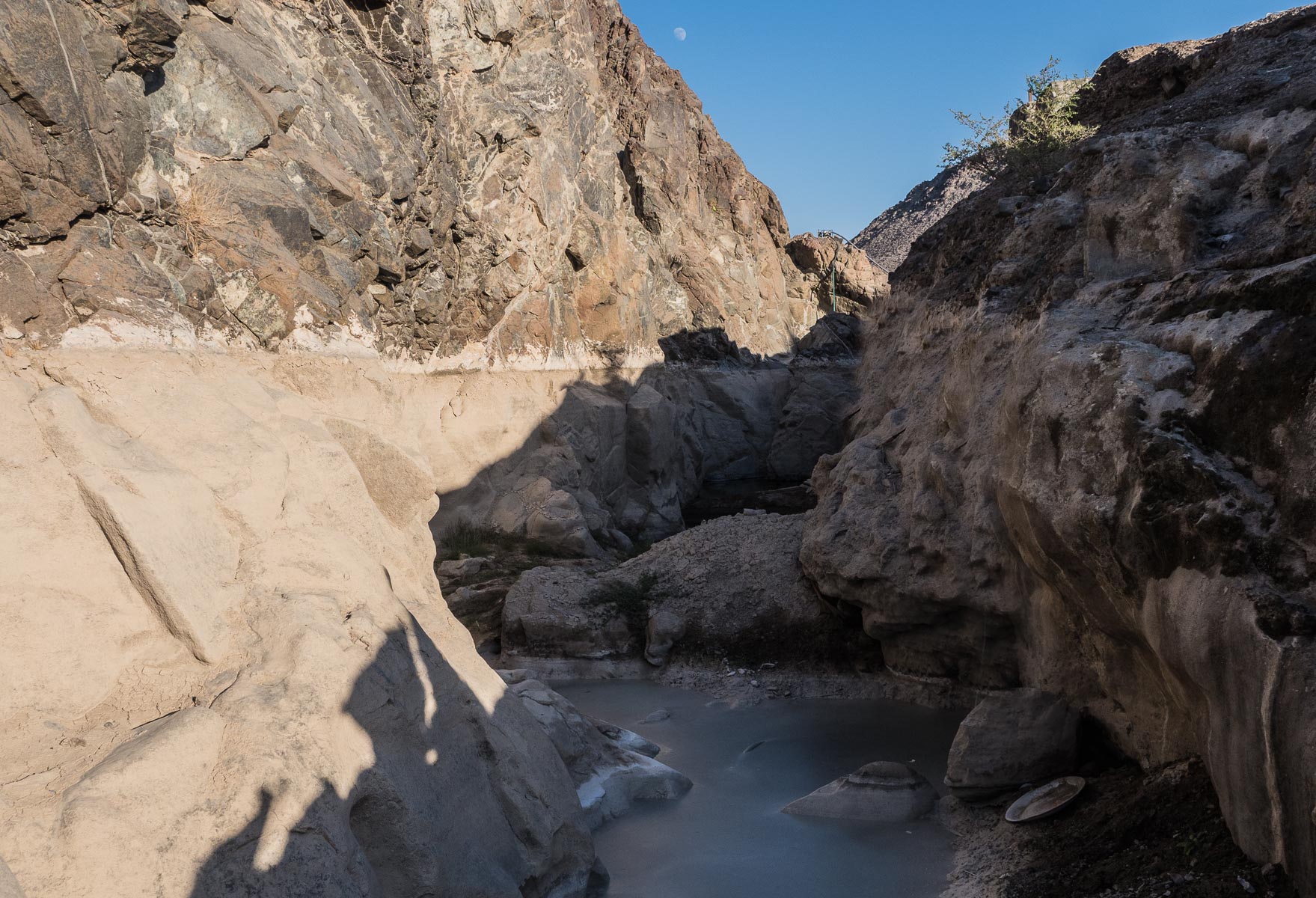
Shawka Pools
With very little water this time of the year.

Wadi Shawka
Just off the E84 from Fujairah to Sharjah.
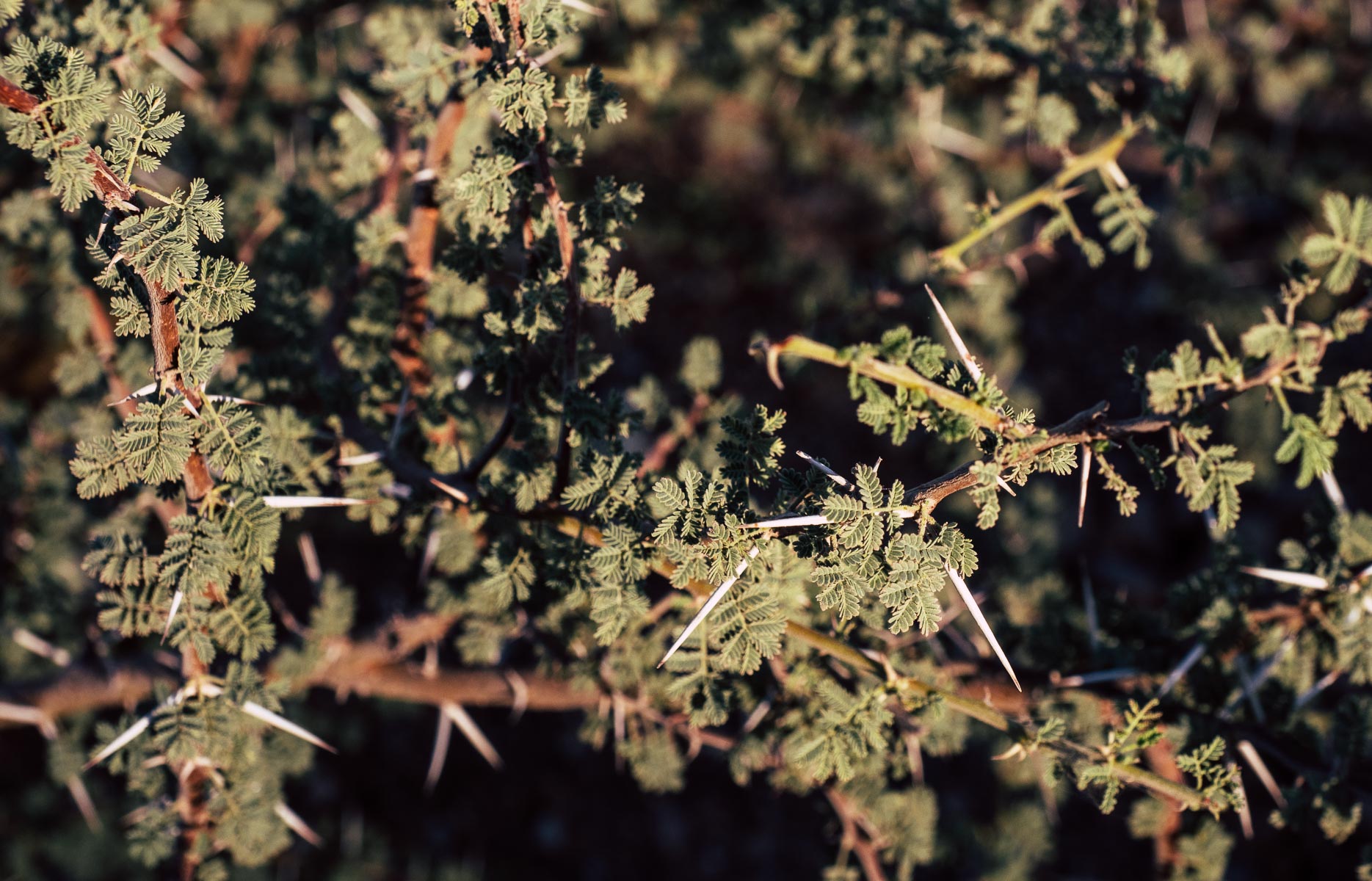
Spiky
Typical vegetation in the Hajar mountains
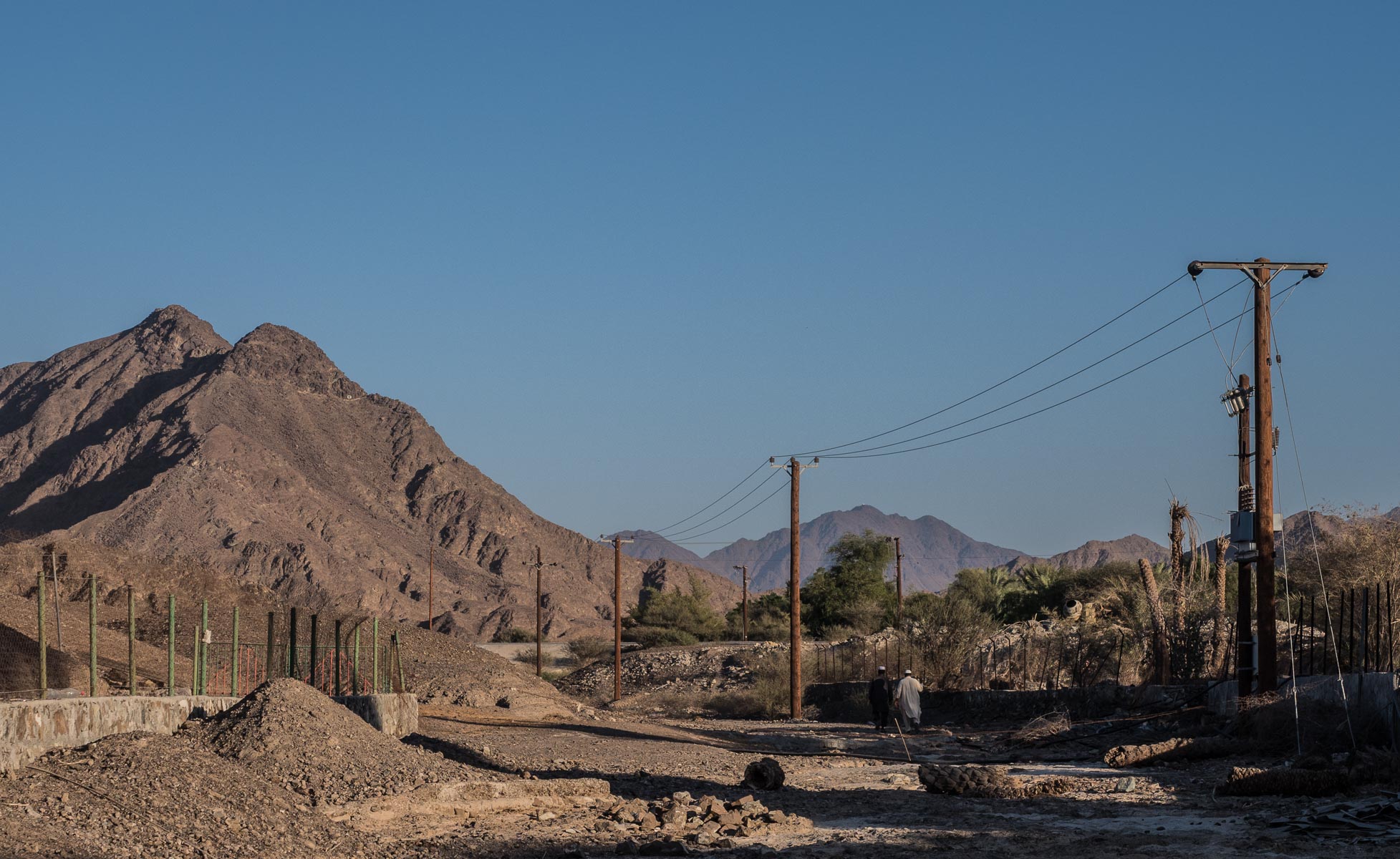
Seasons
In the rainy season, this area will be flowded

Shawka Dam
This area is full of water when it rains - right now, you can use it as a Cricket field.
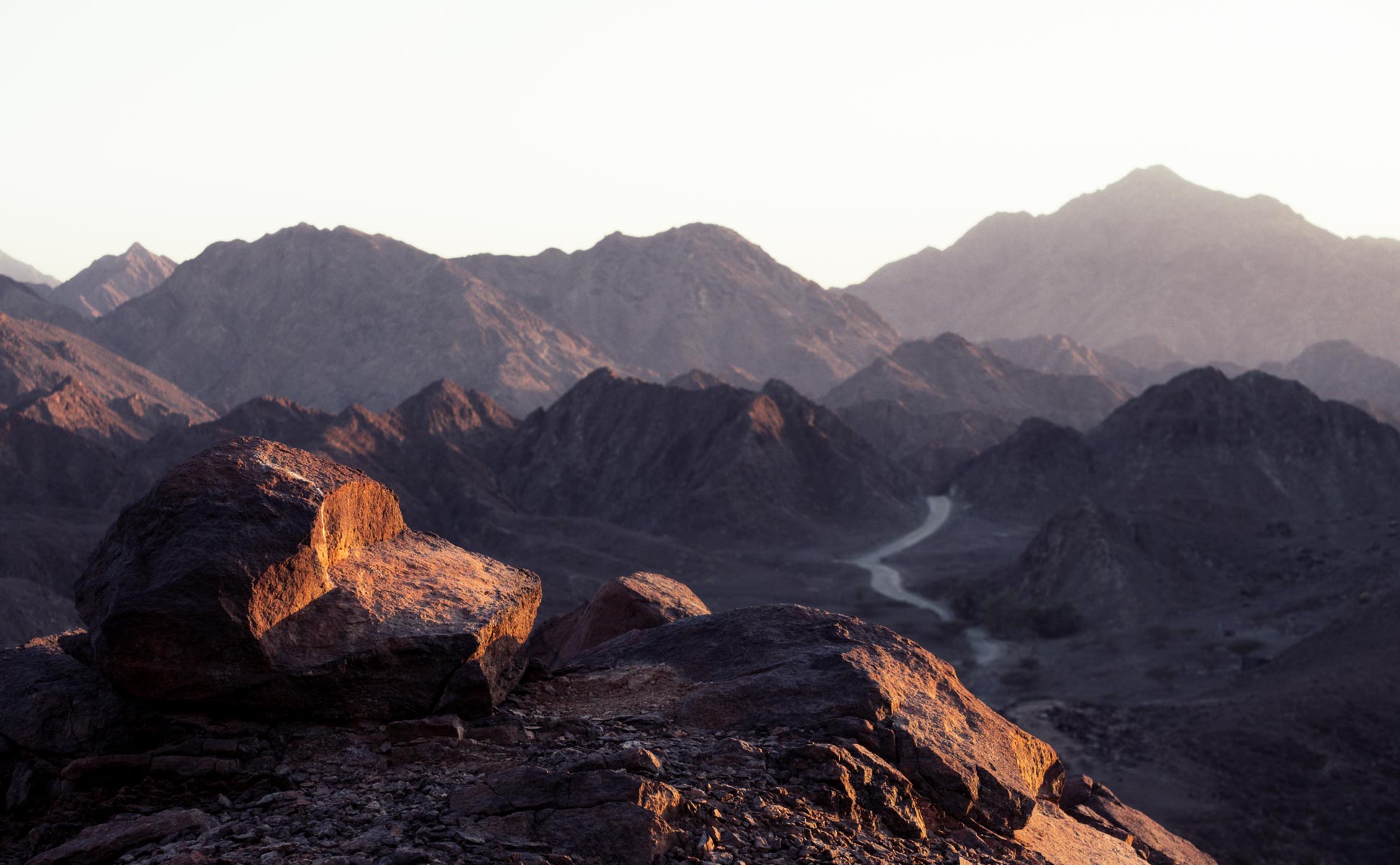
Hajar Mountains
The beauitful mountain ranges of the UAE.
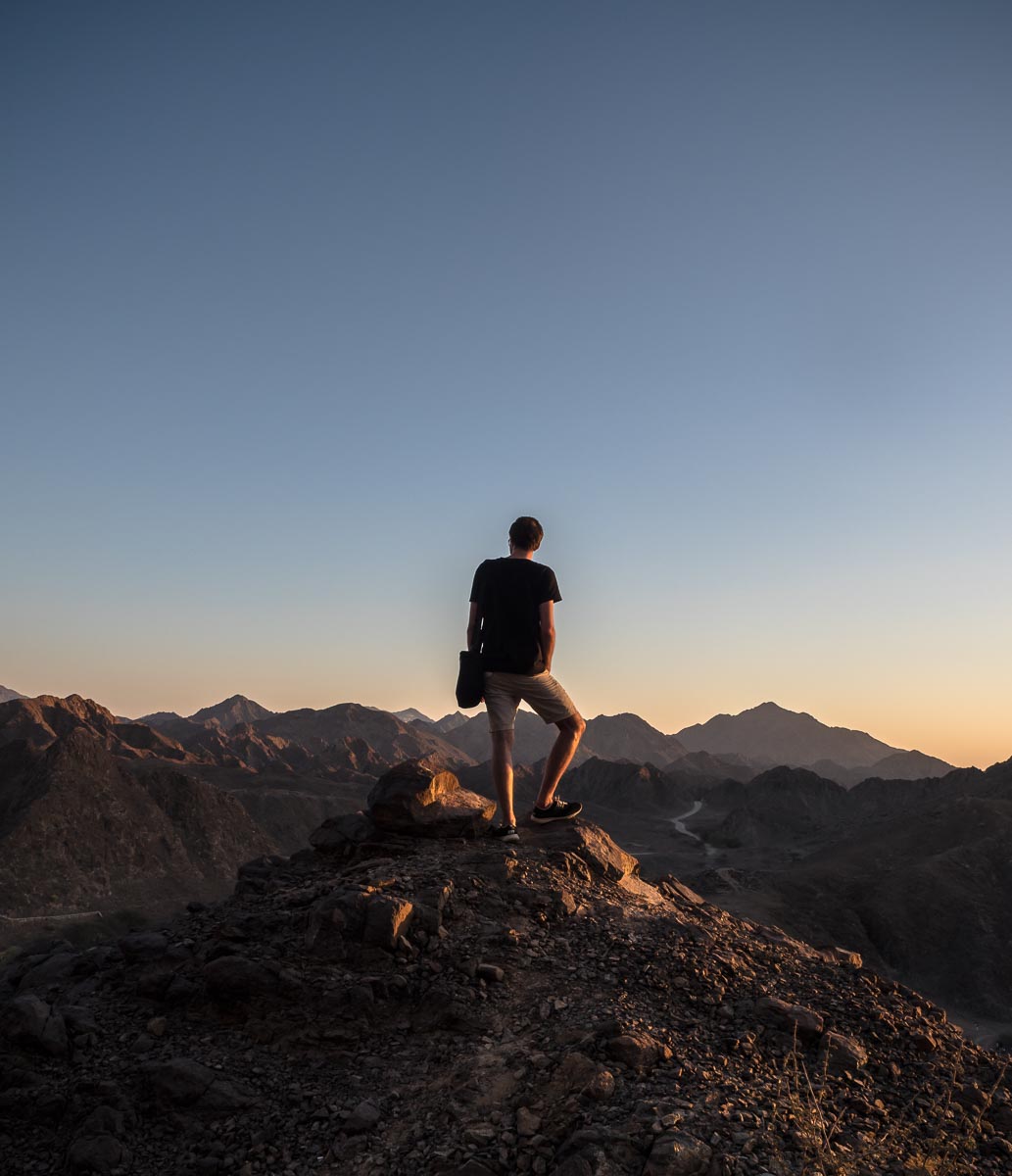
Worth a Visit
Especially during sunset.
Sofia - "Grows, but does not age"
Visited another new city this November - the capital of Bulgaria: Sofia. Commonly listed as one of the oldest cities in Europe, it indeed sports some impressive historical sites dotted around in the city, while there is a clear trend towards modernity. The Soviet legacy is slowly becoming a distant past, although it has certainly not yet disappeared from the cityscape. Also had the chance to visit Rila monastery, about 120km into the mountains - a truly impressive sight.

Visited another new city this November - the capital of Bulgaria: Sofia. Commonly listed as one of the oldest cities in Europe, it indeed sports some impressive historical sites dotted around in the city, while there is a clear trend towards modernity. The Soviet legacy is slowly becoming a distant past, although it has certainly not yet disappeared from the cityscape. Also had the chance to visit Rila monastery, about 120km into the mountains - a truly impressive sight.
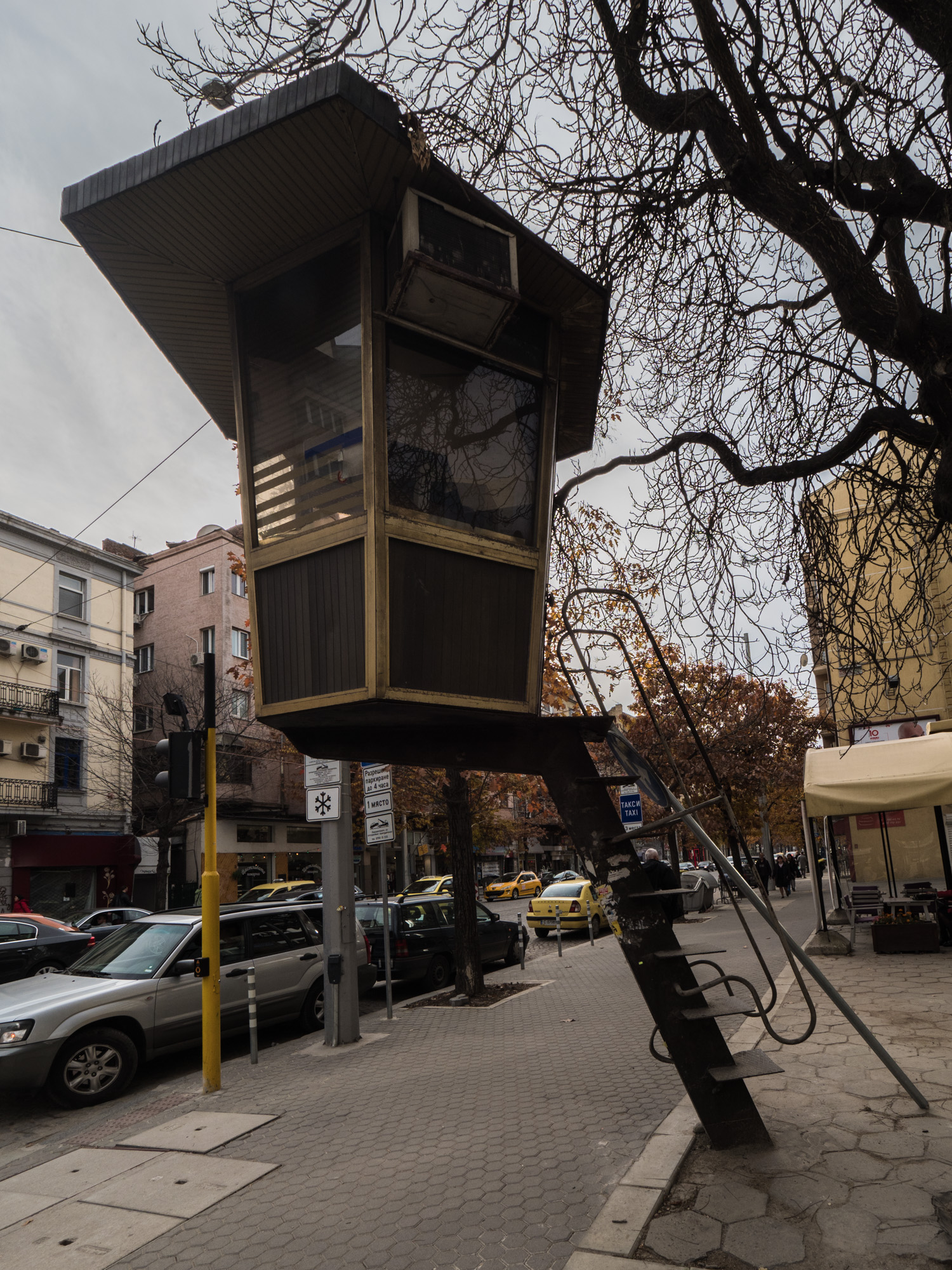
Observation
It seems these are used to monitor and contorl traffic, but I've never seen them occupied during my time in Sofia.

Churches and more churches...
I can't remember the name of this one. Anyone? P.S Anyone who mixes cold and warm white bulbs in the same room isn't an acceptable human.
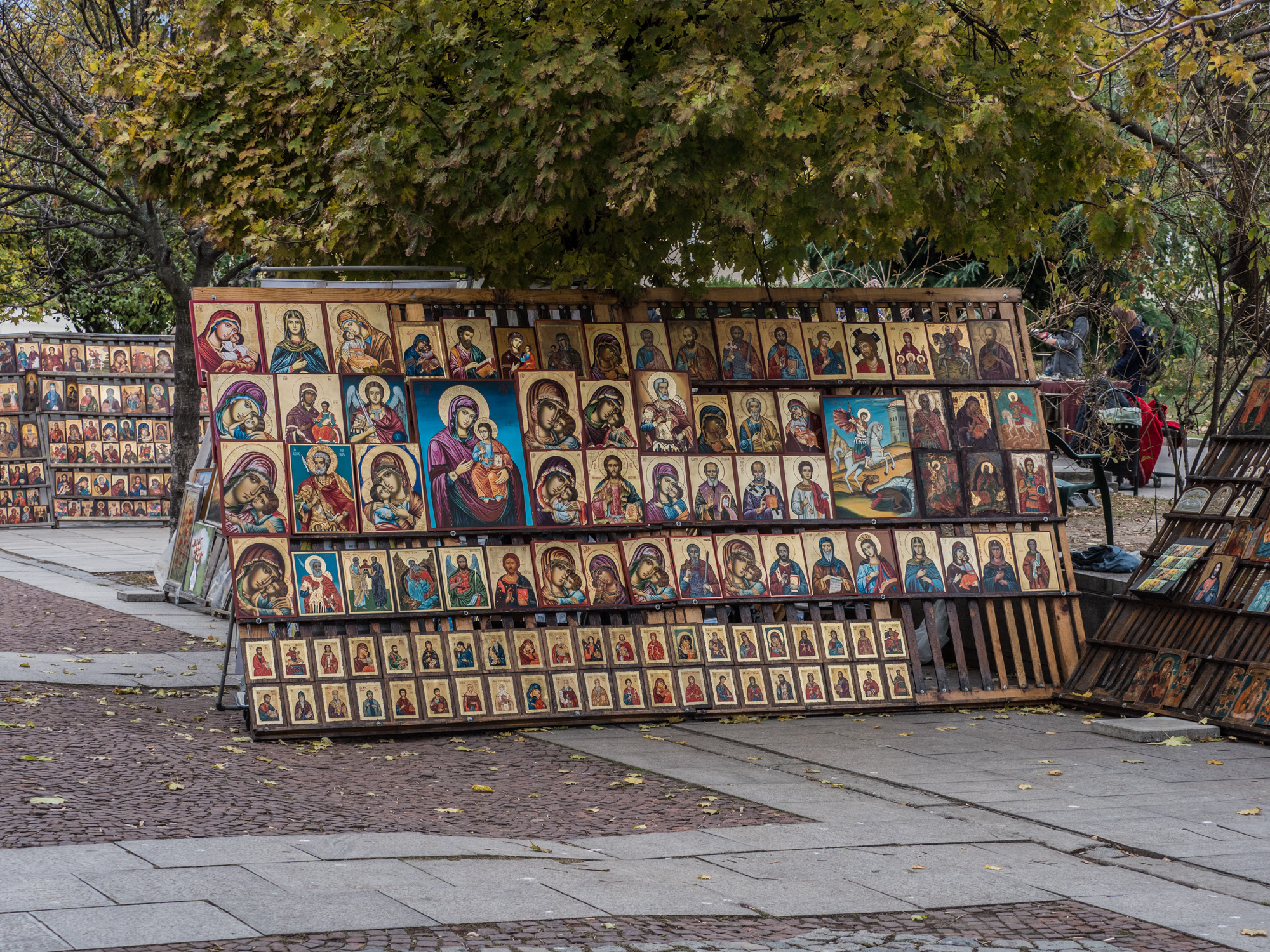
Souvenirs
Of a religous kind. Three quarters of the population follow the Orthodox belief.
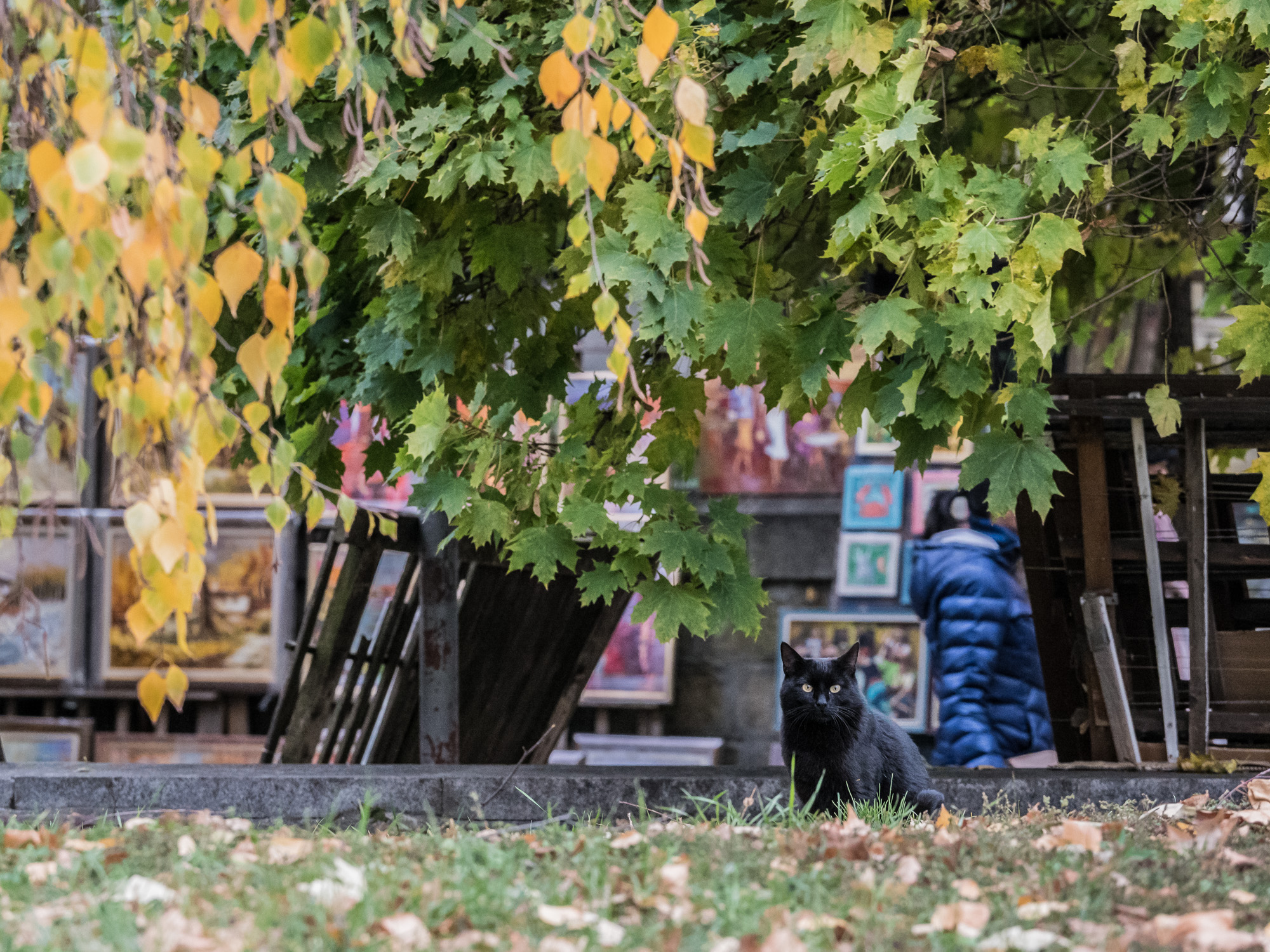
As always
No album without at least one cat.
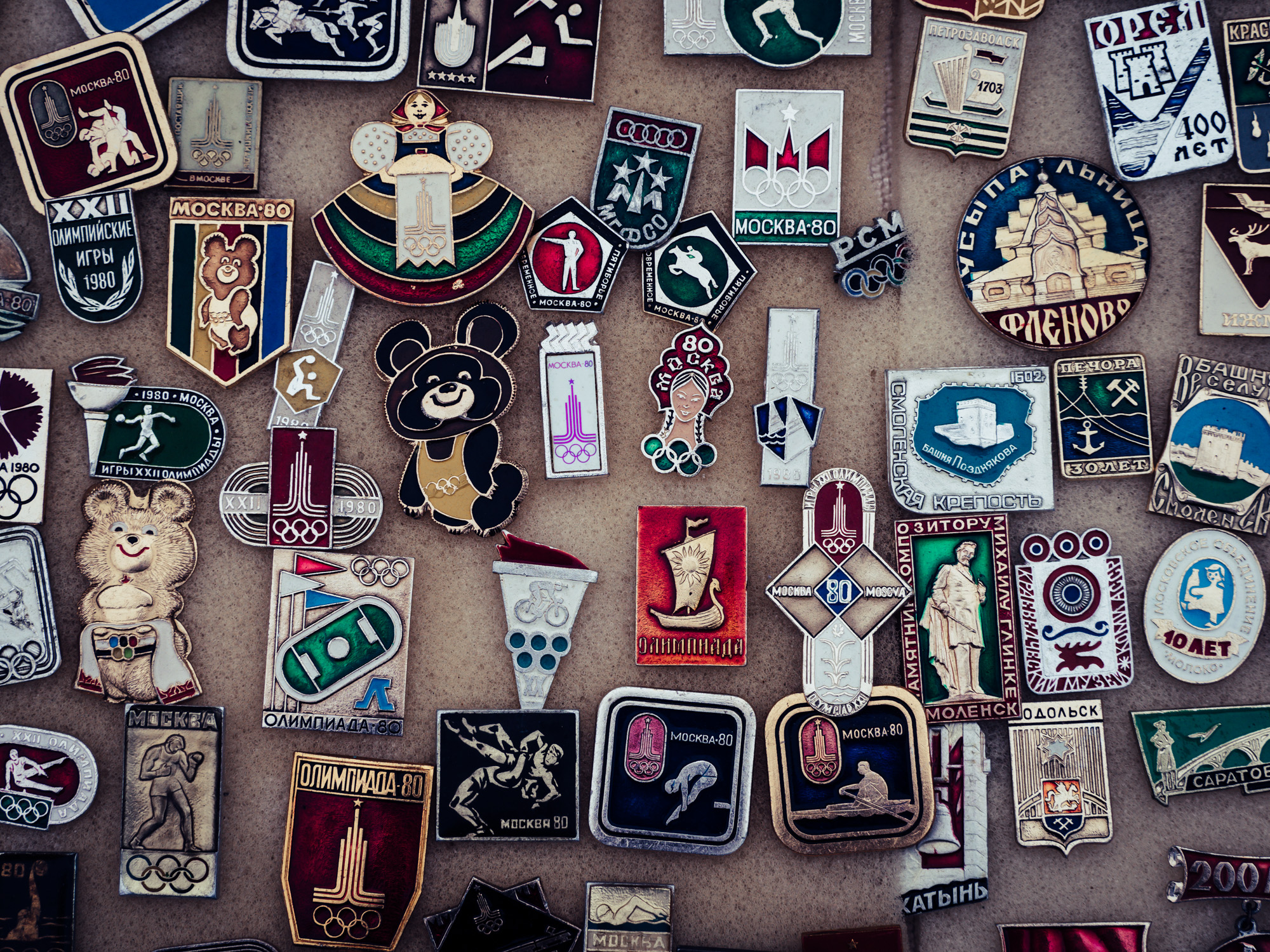
Soviet Remnants
Pins from forgotten times, some interesting football related gems here too.
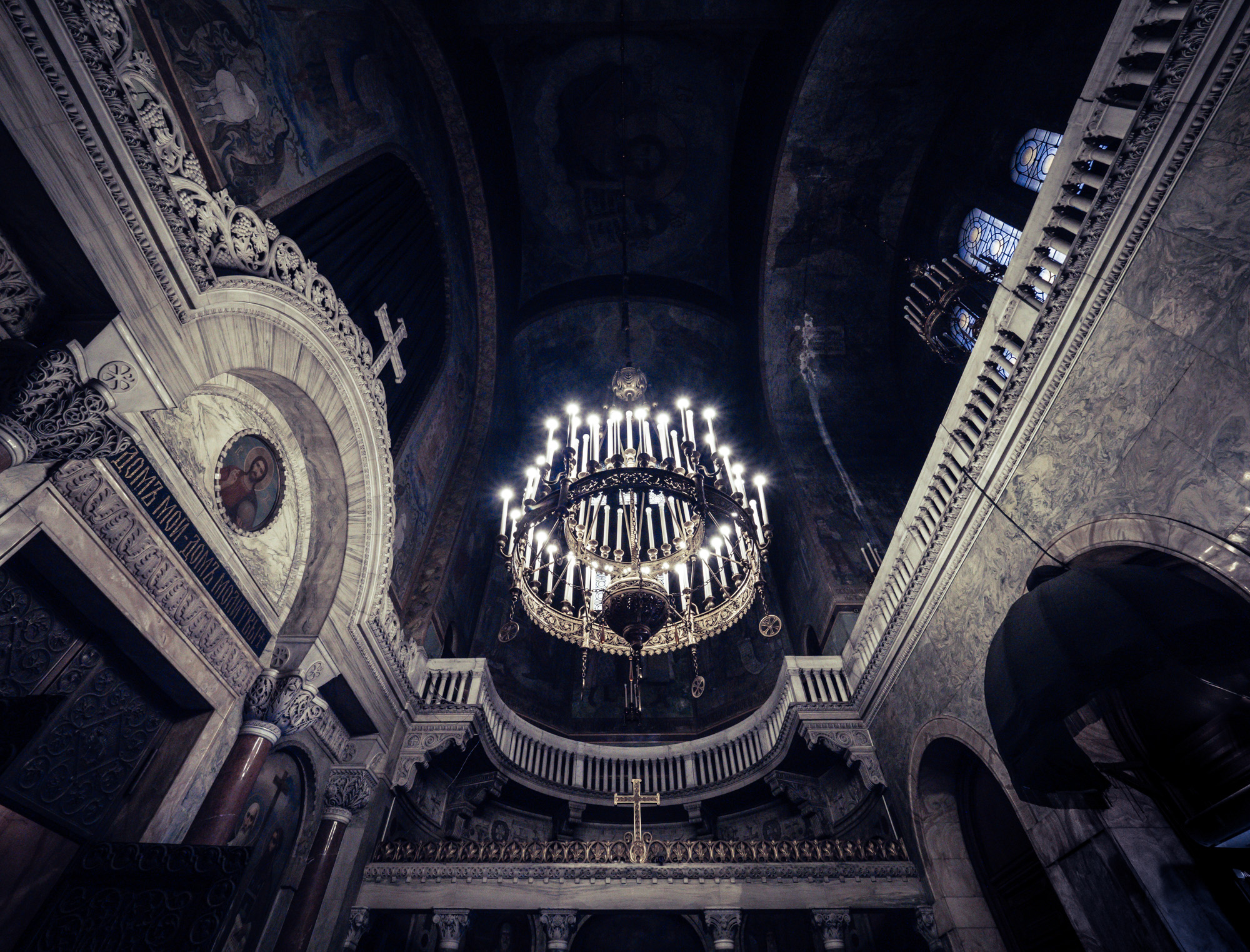
Alexander Nevsky Cathedral
The most famous church in Sofia from the inside.
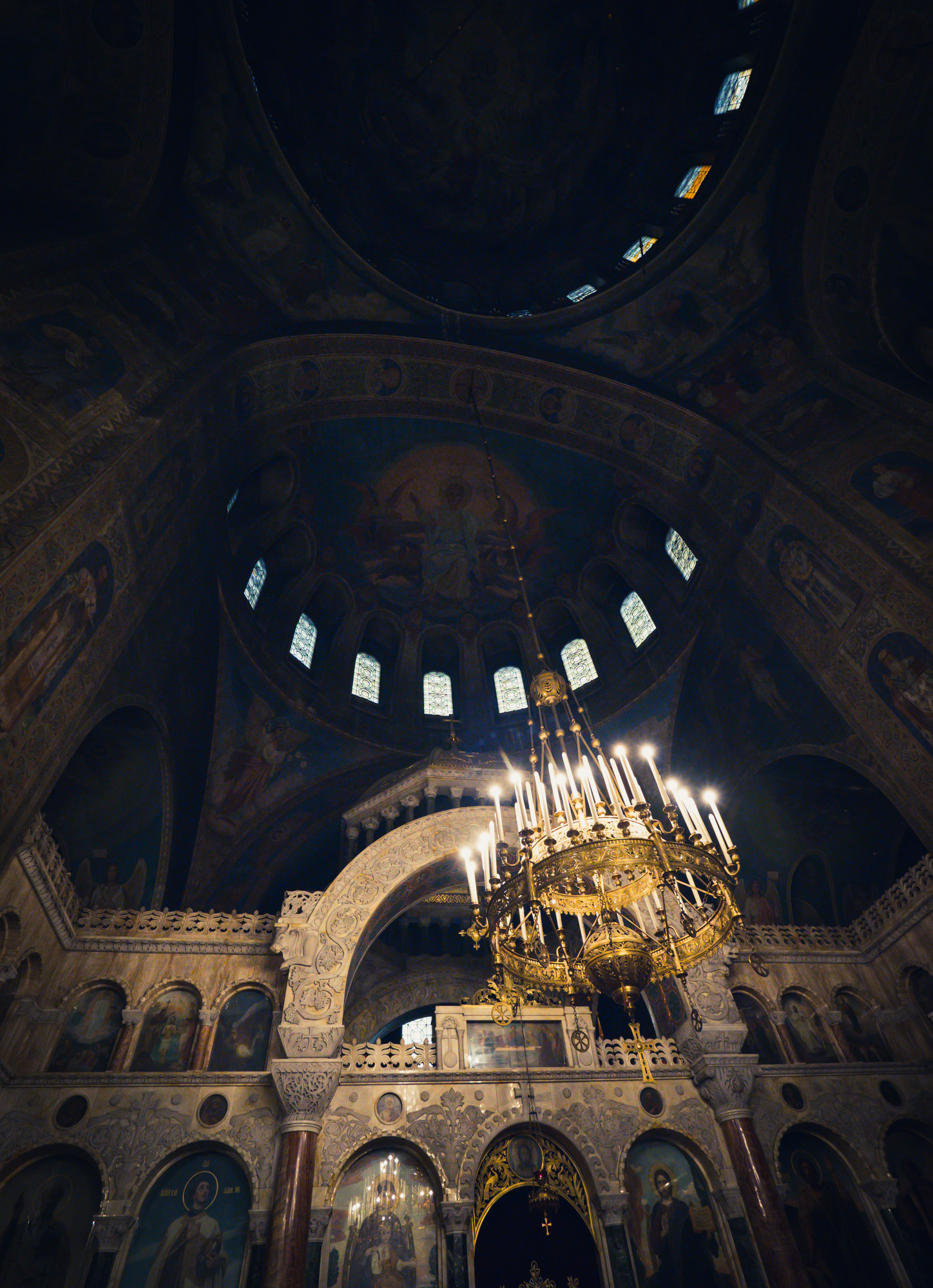
Interior
The marble parts and the lighting fixtures were created in Munich, the metal elements for the gates in Berlin, the gates in Vienna, and the mosaics were shipped from Venice.
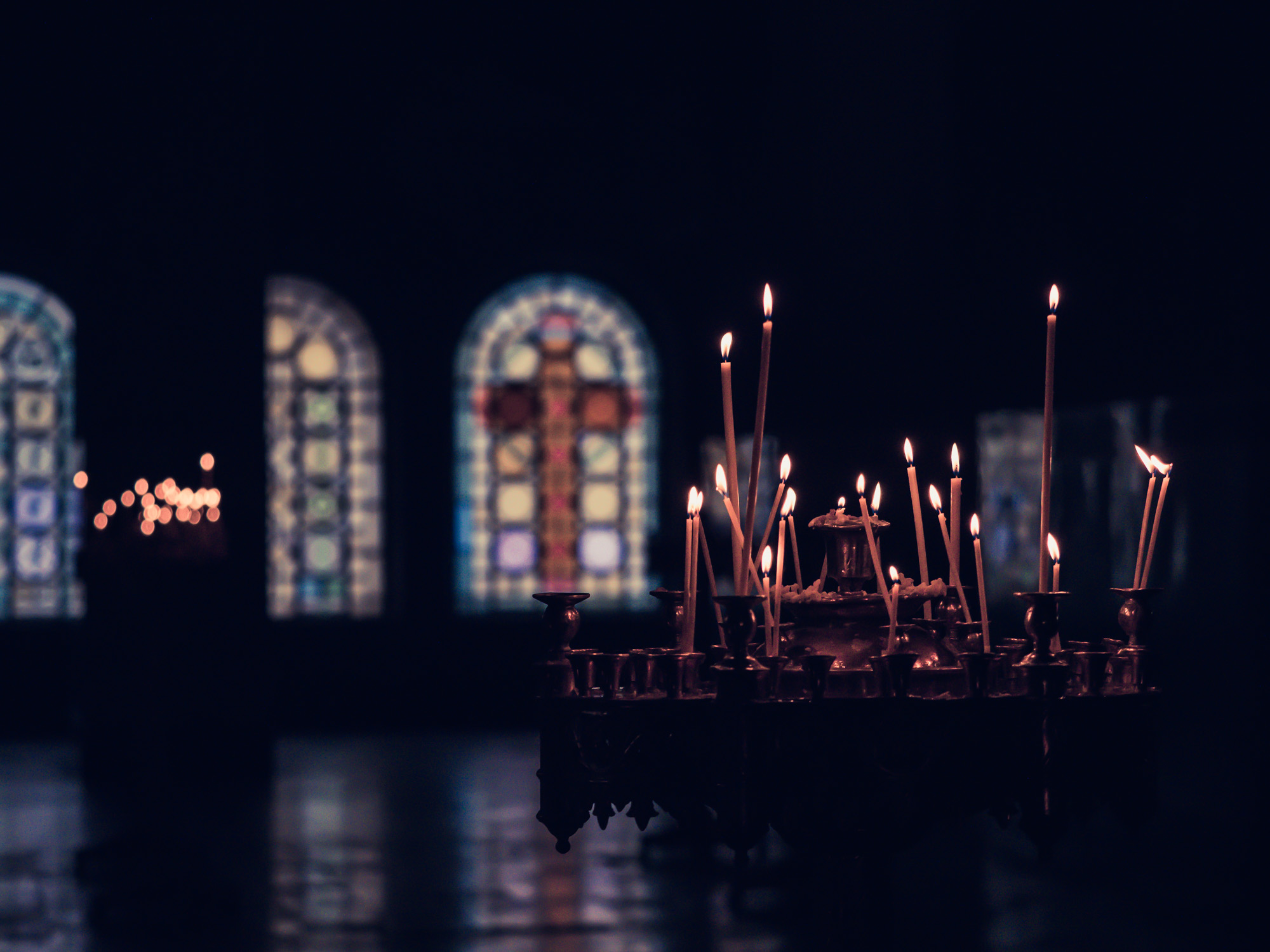
Details
The church was finished in 1912.
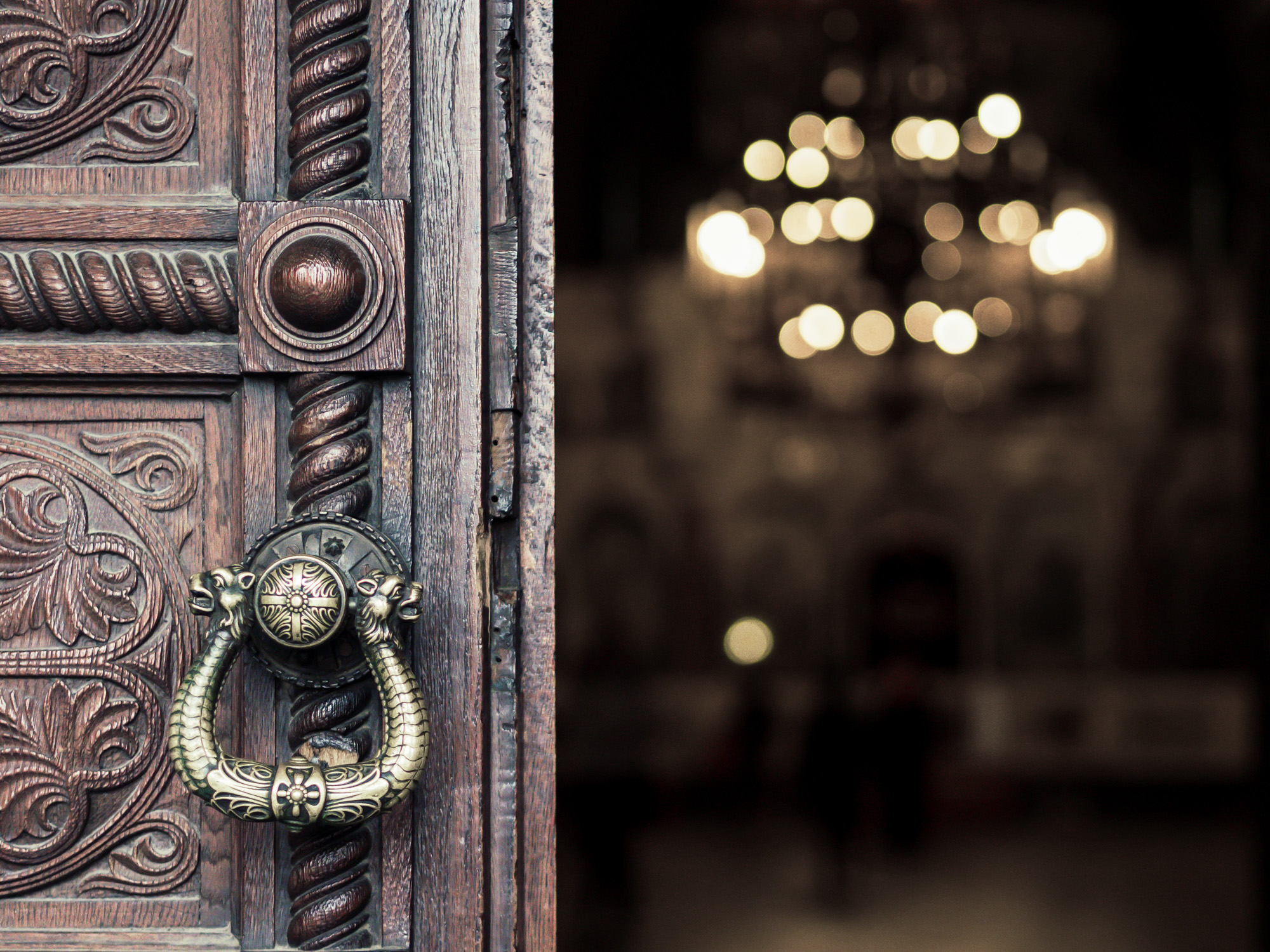
Entry
About 10000 people fit inside.
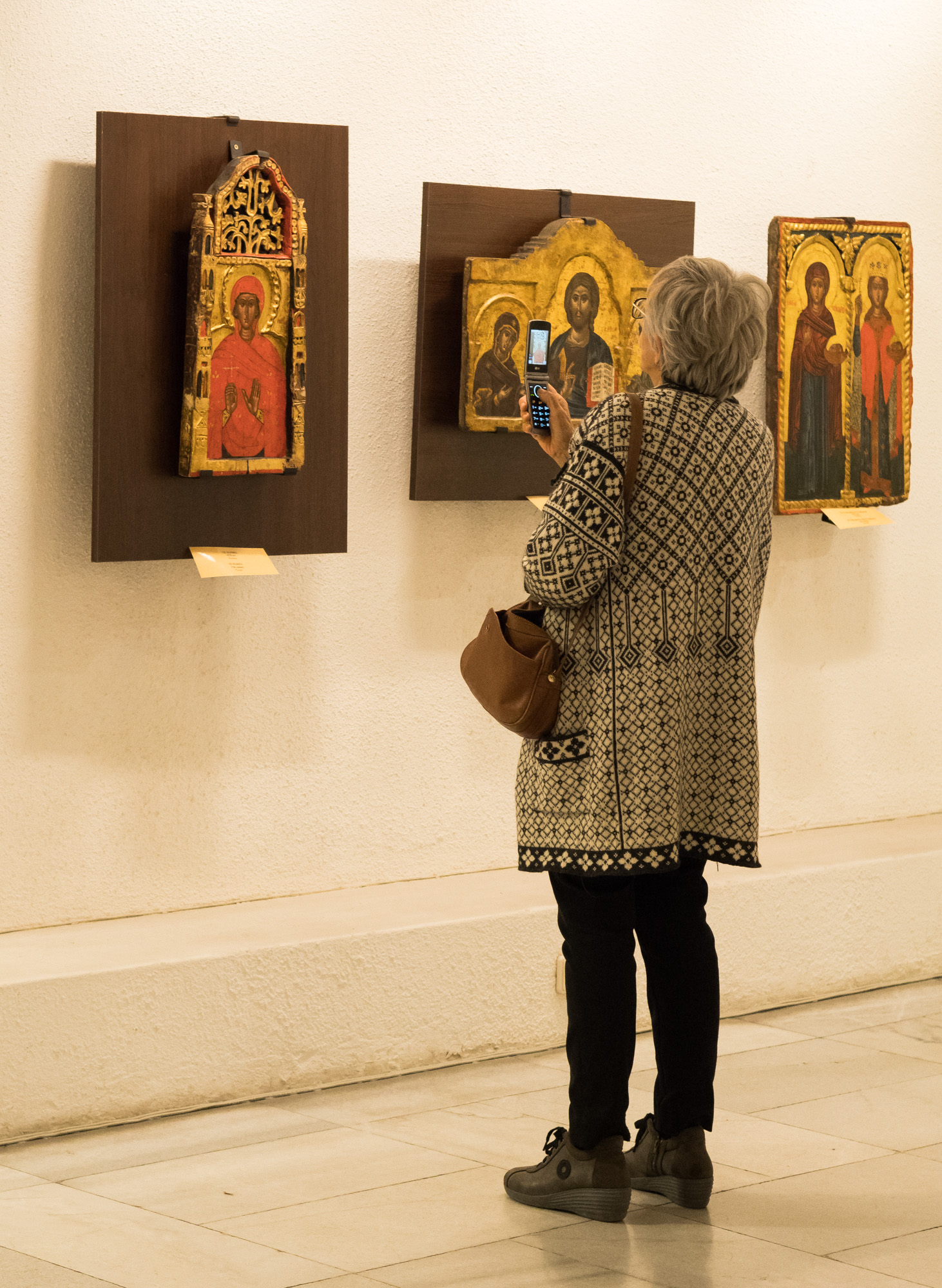
Contrasts
The museum inside the cathedral.

Holy Synod of the Bulgarian Orthodox Church
Just next to the cathedral.

Creepy
There are few weird things in the city...
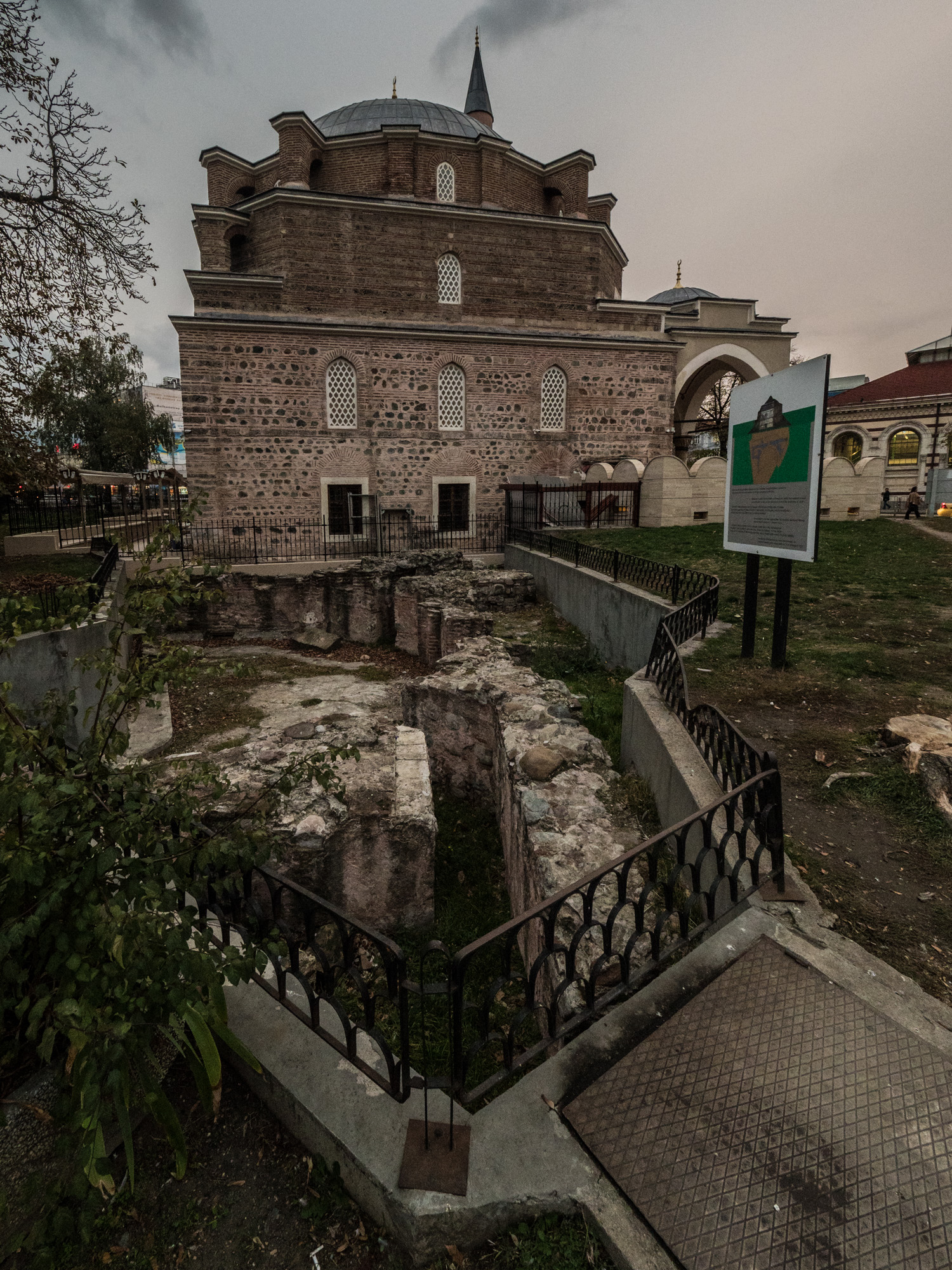
Sofia Central Mosque
From the 16th century, situated just next to a church and a synagoge.

Is it...
... a museum or a metro station?
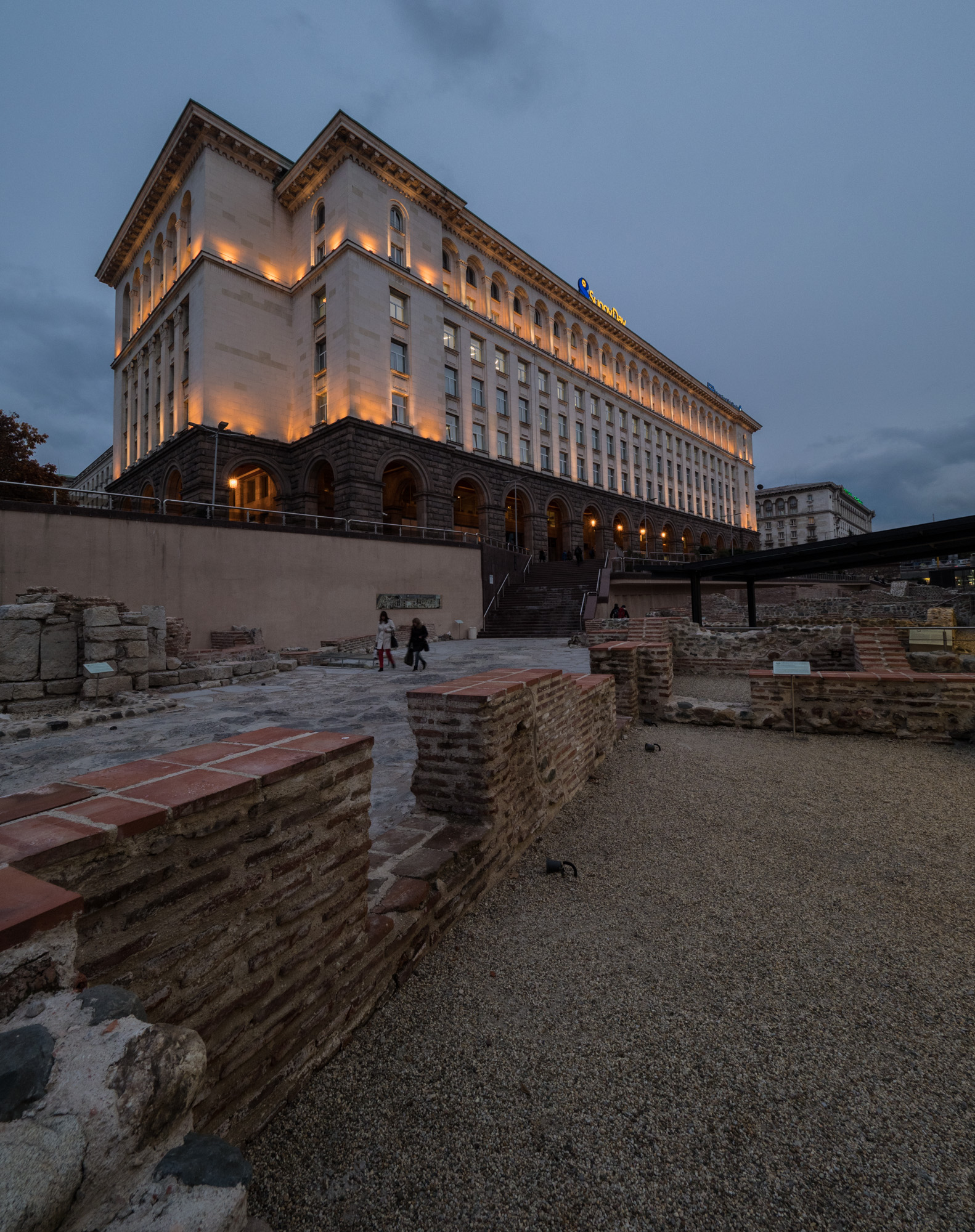
The Serdica
This was probably the most interesting area in Sofia. Ruins from Roman times going back almost 2000 years in the middle of the city.

Location
The Serdica area is just next to the Mosque and partly covered by the metro station.
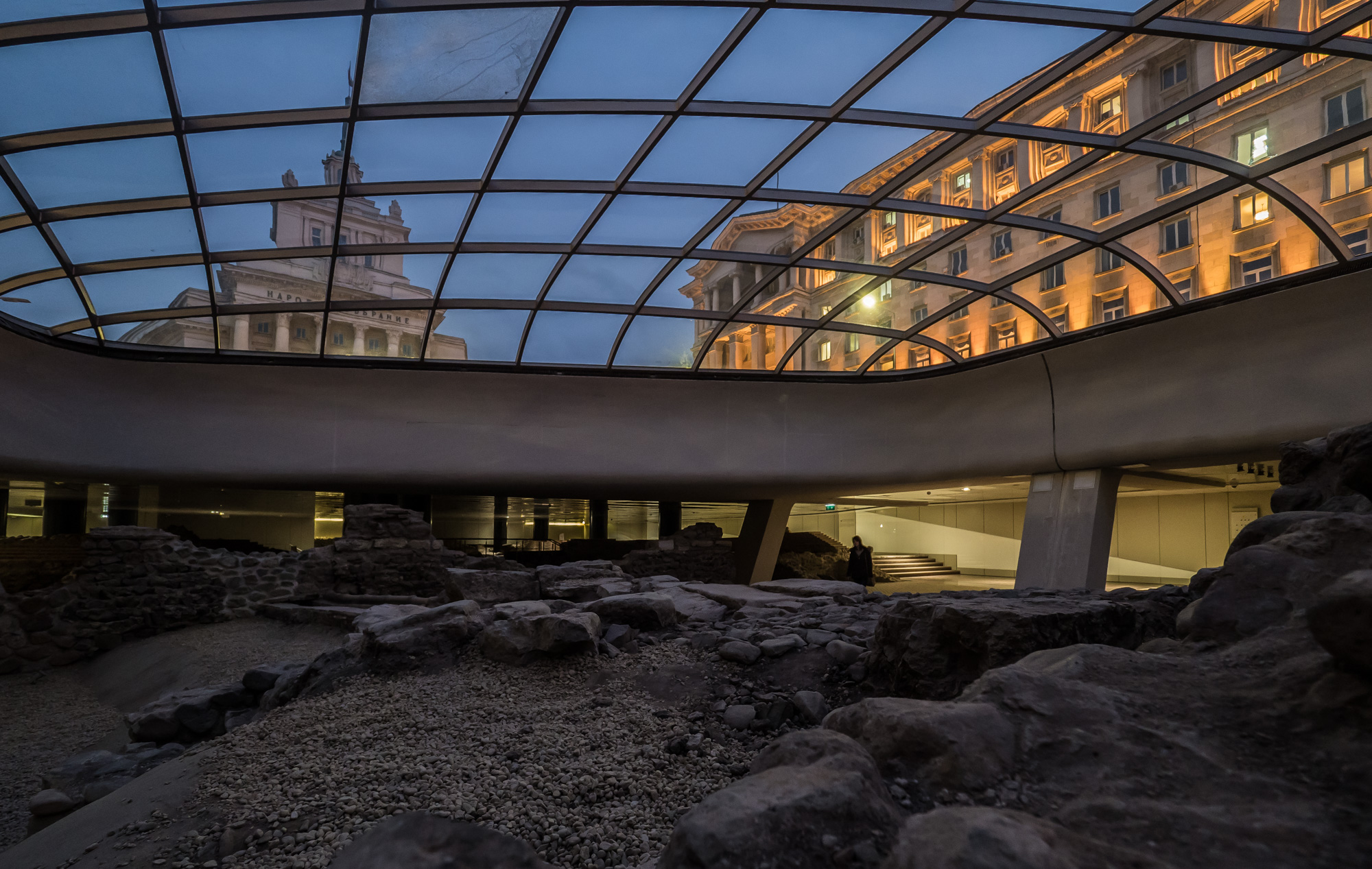
Serdica
Parts of it are underground covered by huge glass domes.
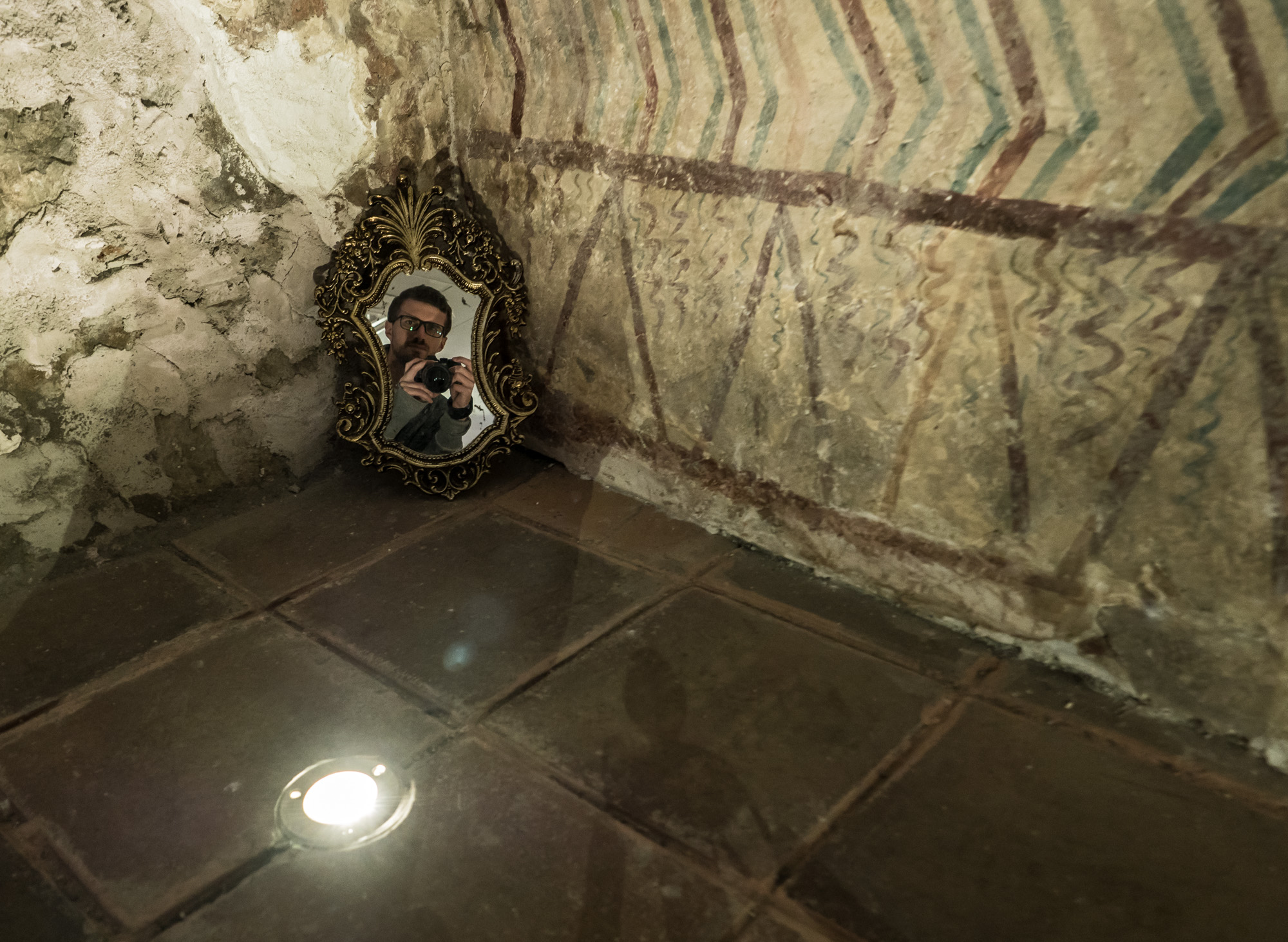
Selfie
With style.
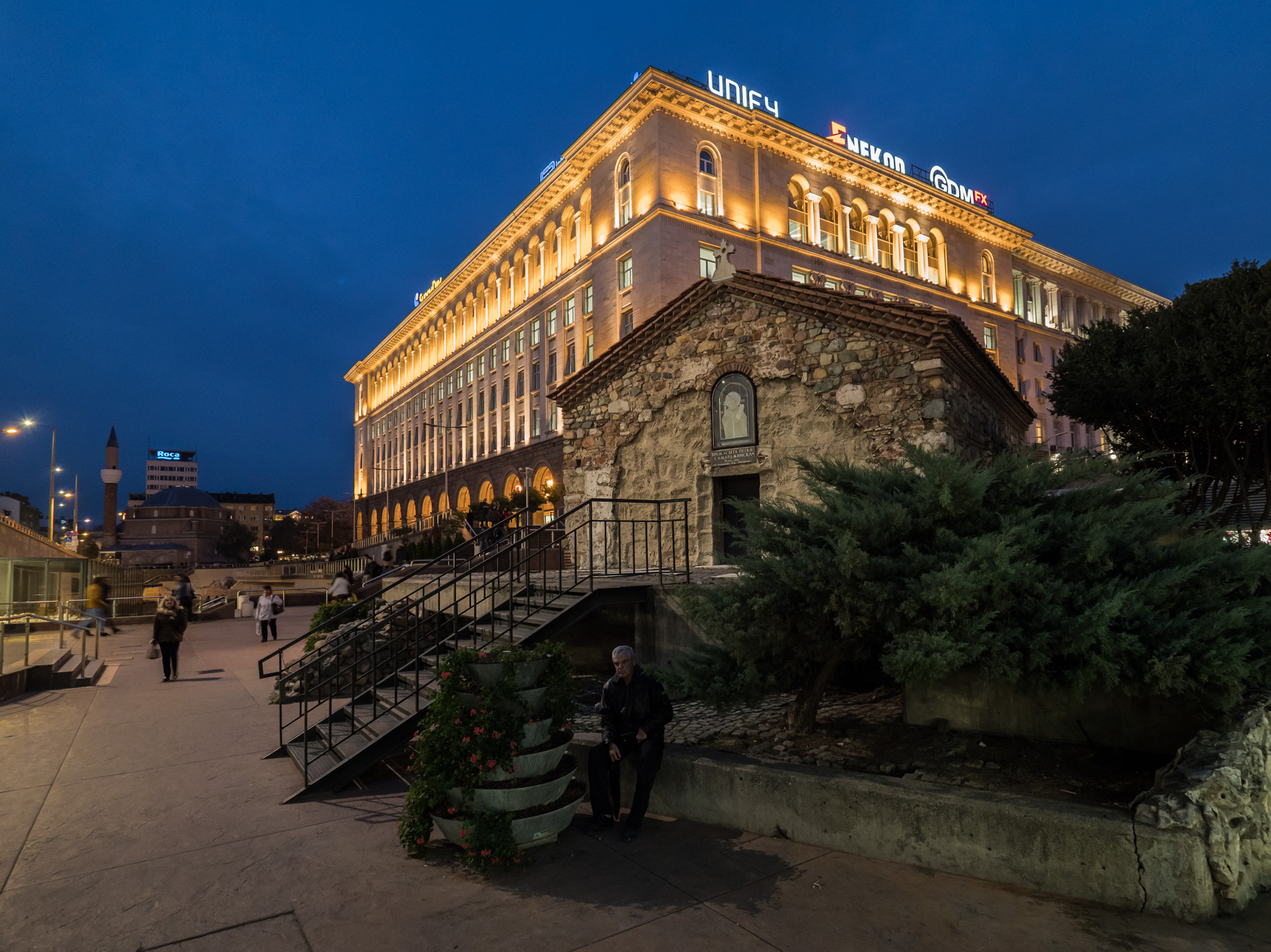
History & Modernity
The small 16th century Sveta Petka Church and the Tzum shopping mall behind.
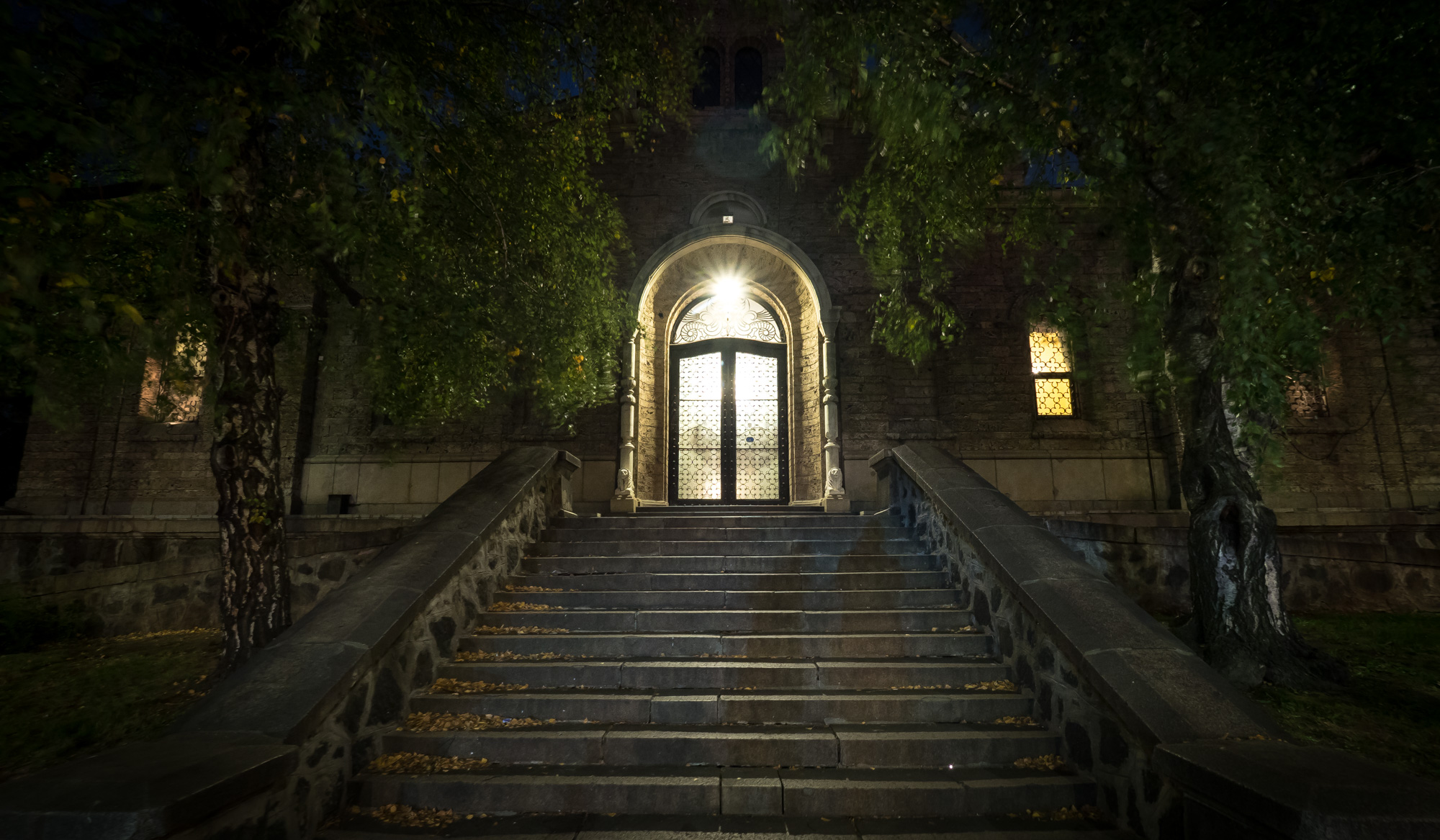
The light
The entry to the Cathedral Church Sveta Nedelya

Interior
And its inside.
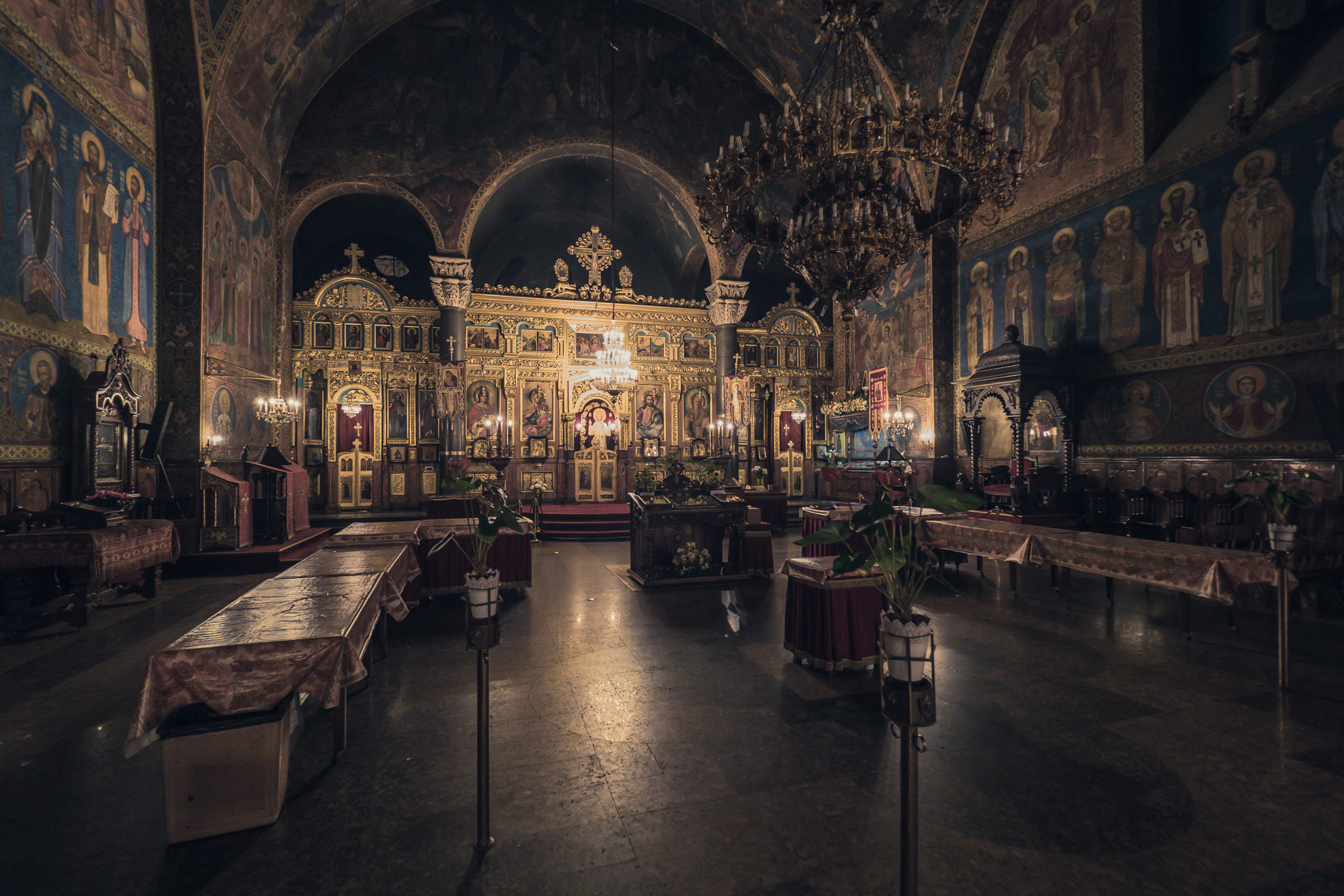
Interior
Another shot of the church which was - probably - built around the 10th century. It was rebuilt a few times.
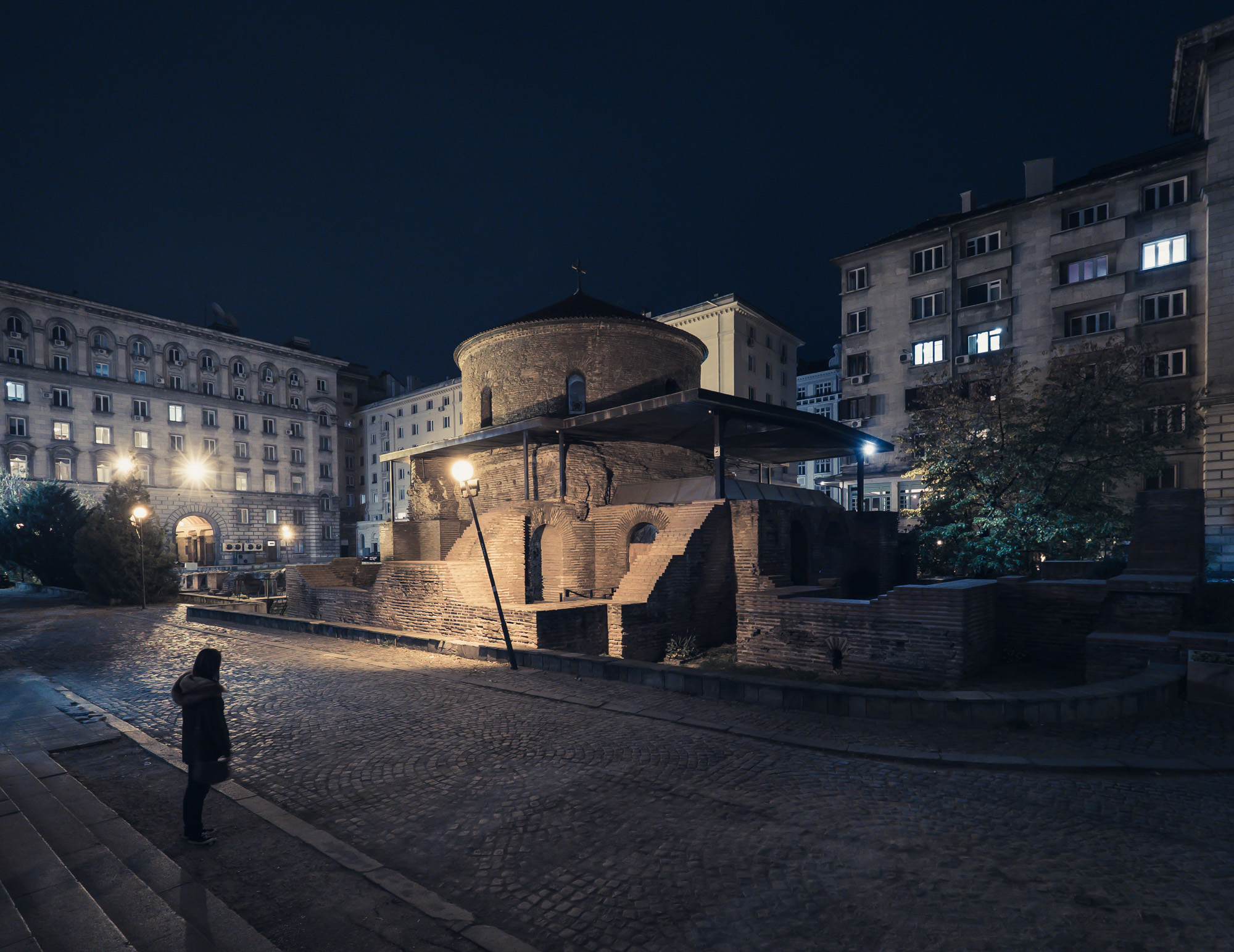
Church of St. George
Considered the oldest building in Sofia, from the 4th century.
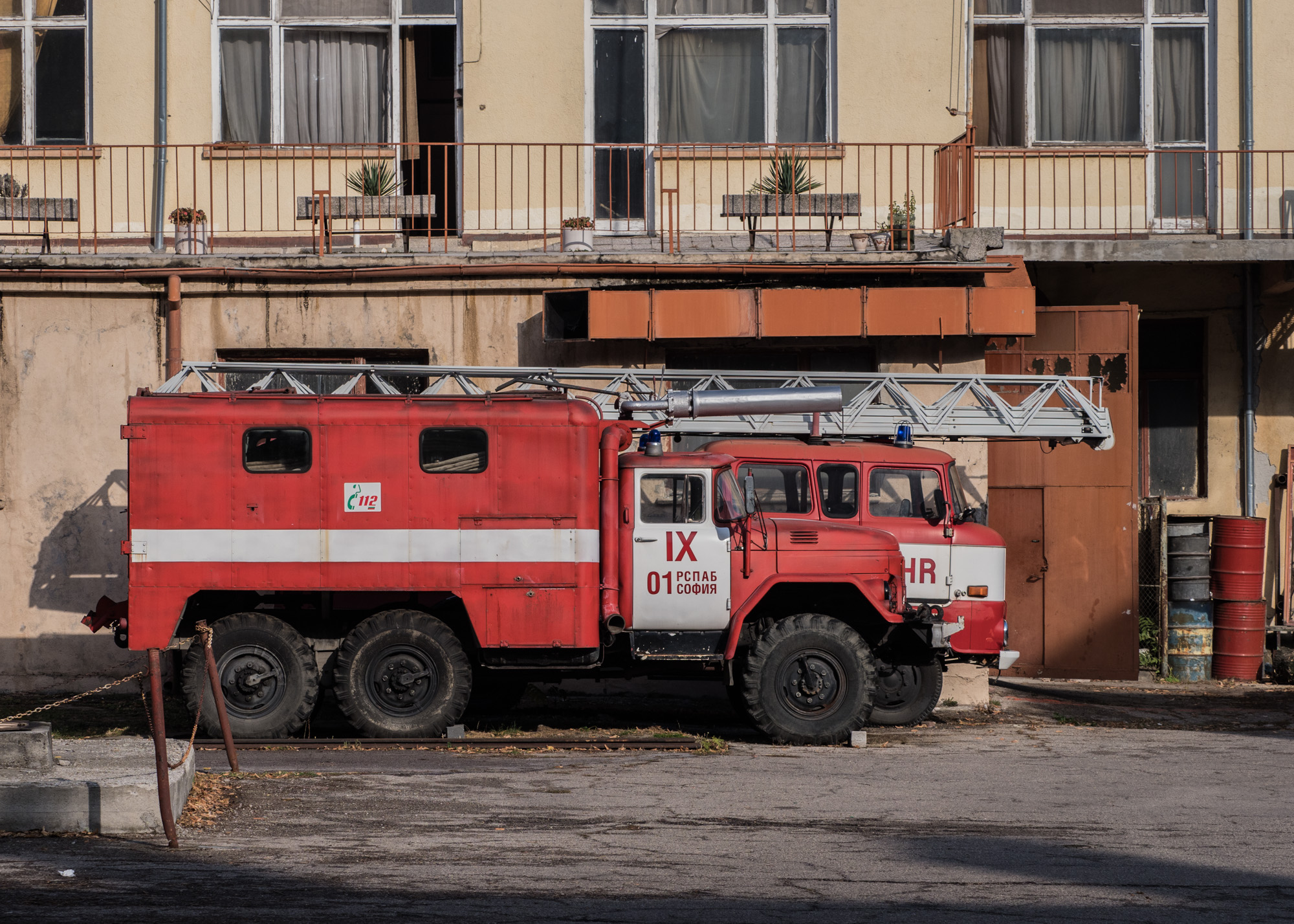
More Soviet Remnats
There are a few for sure.
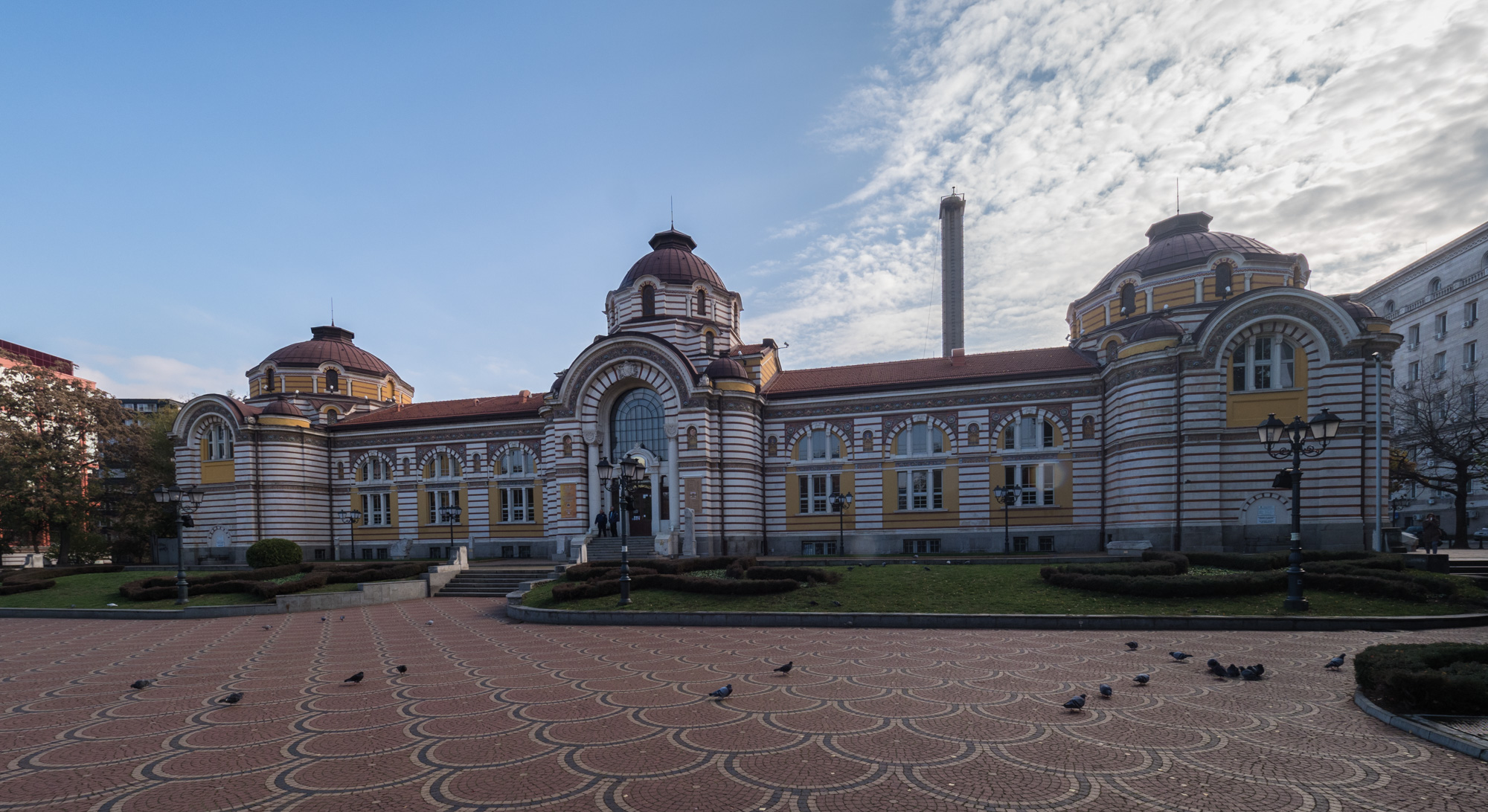
History of Sofia Museum
Unfortunately I have to say the outside is more interesting than the inside.
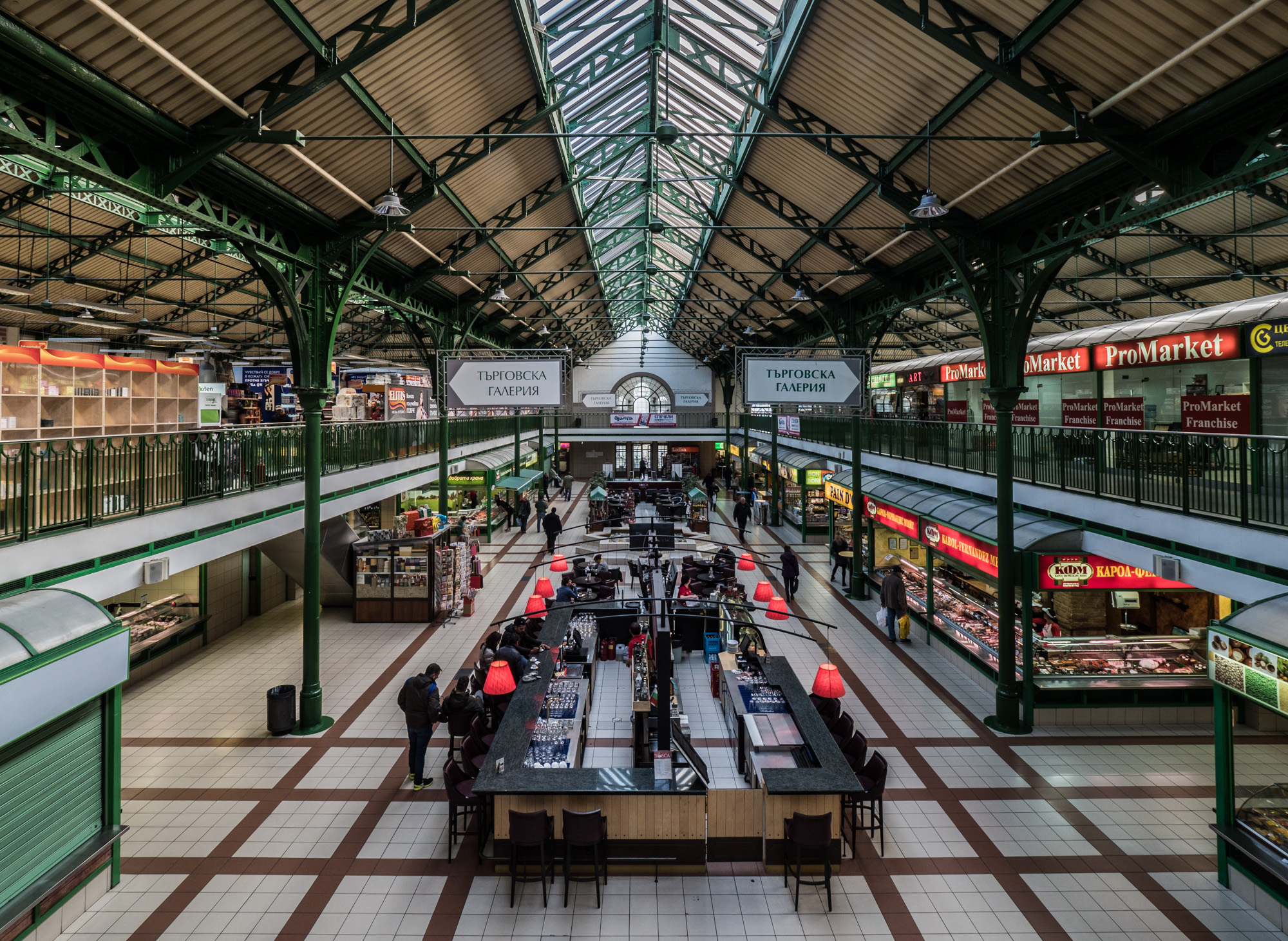
Market Hall
Seems to be very common style in eastern Europe, I've seen something similar in Budapest as well.

Facade
The mix of architectural styles is very pronounced in Sofia.
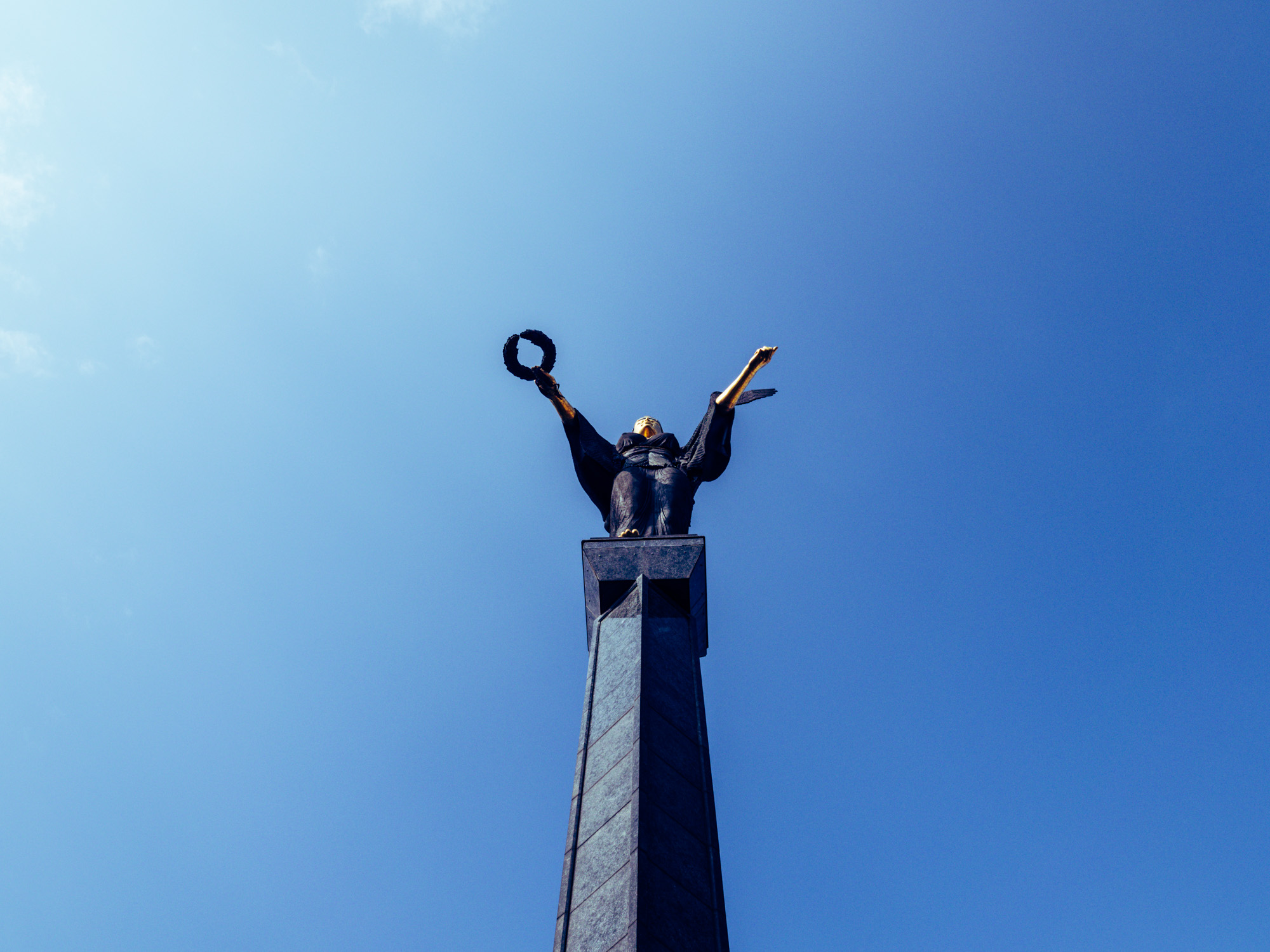
Saint Sofia Monument
Made of copper & brass.
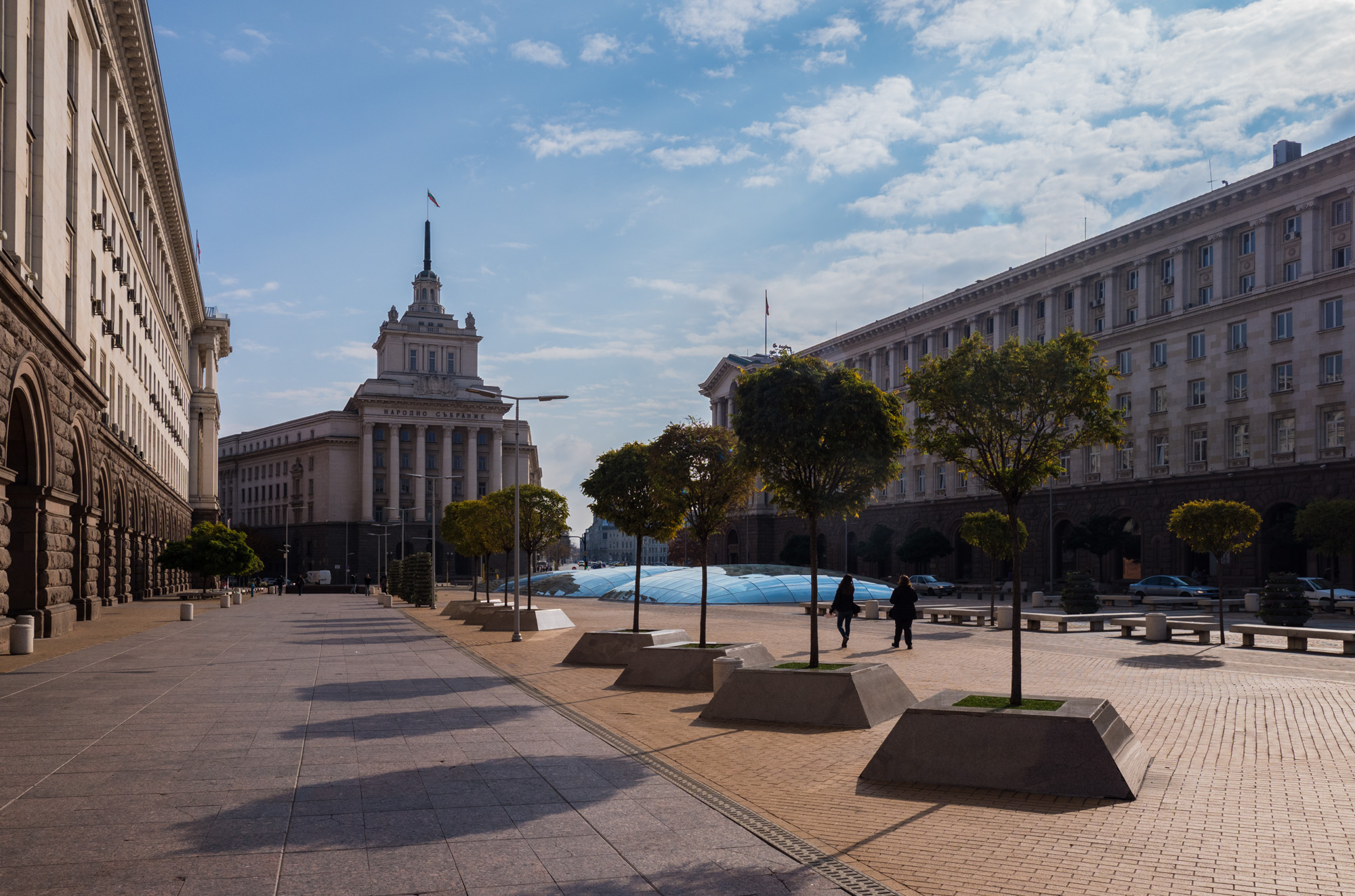
Nezavisimost Square
With the aforementioned glass domes.
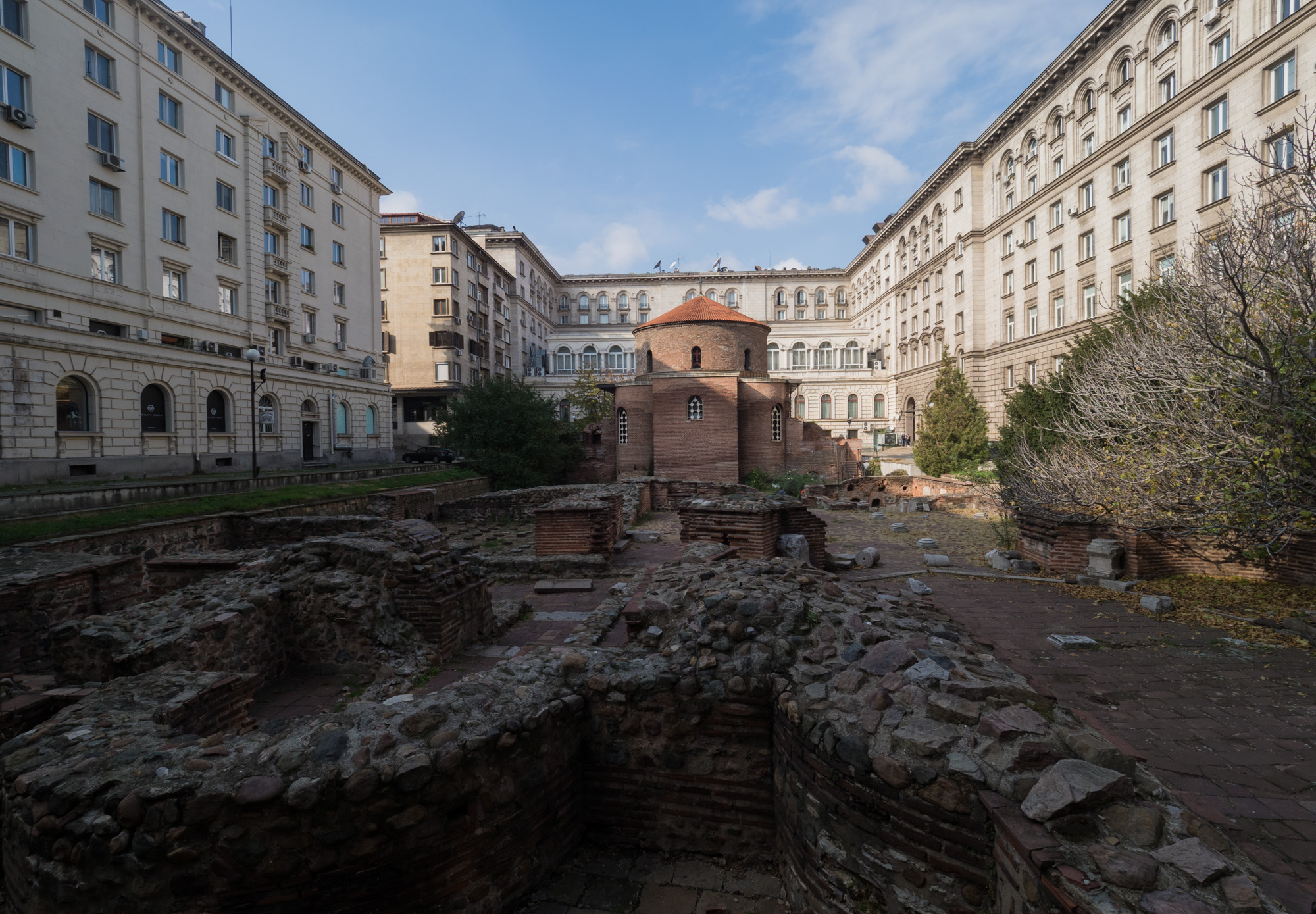
Church of St. George
A daylight view from the other side showing the unique location of the church.
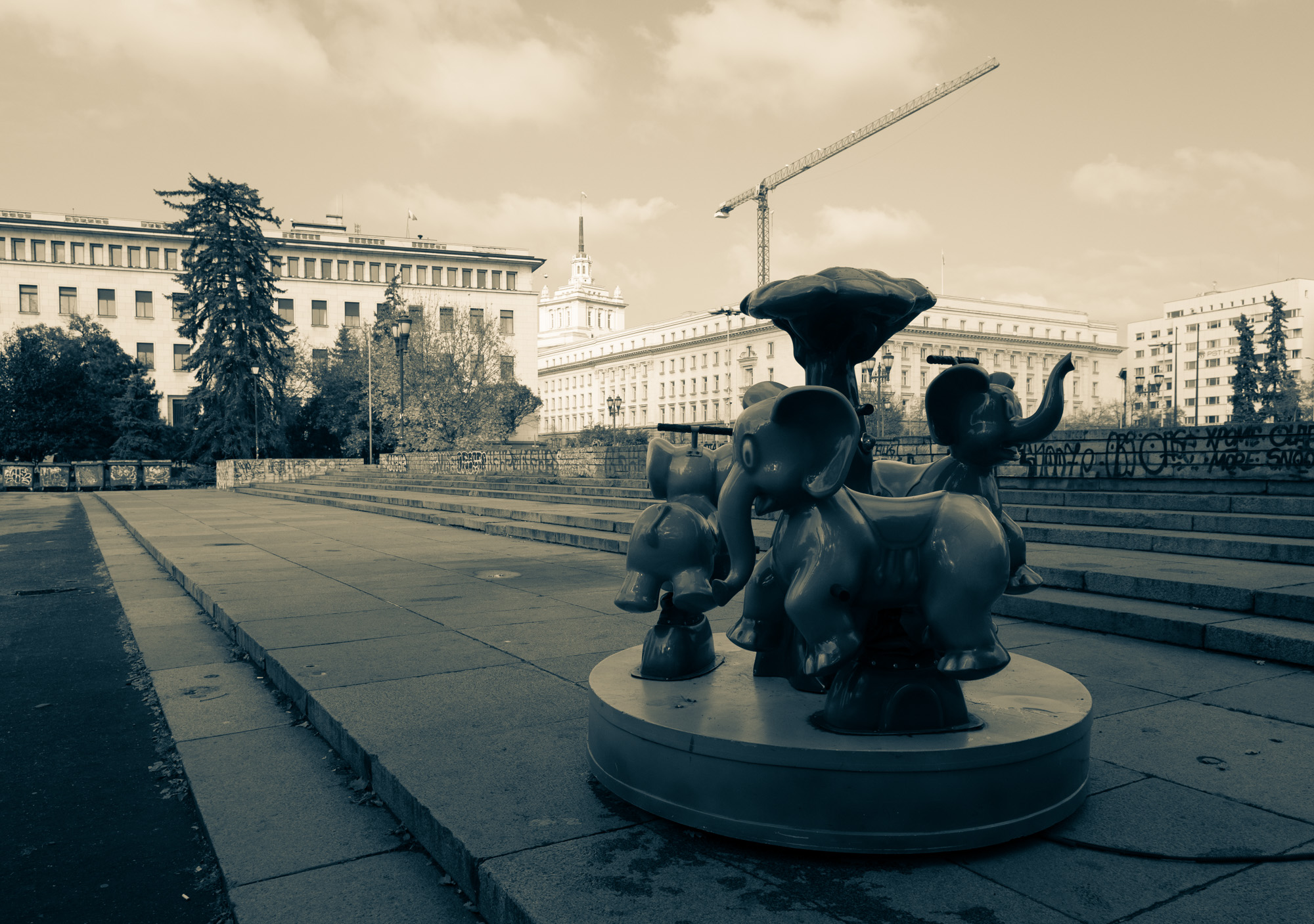
Theme Park
A small one at least.
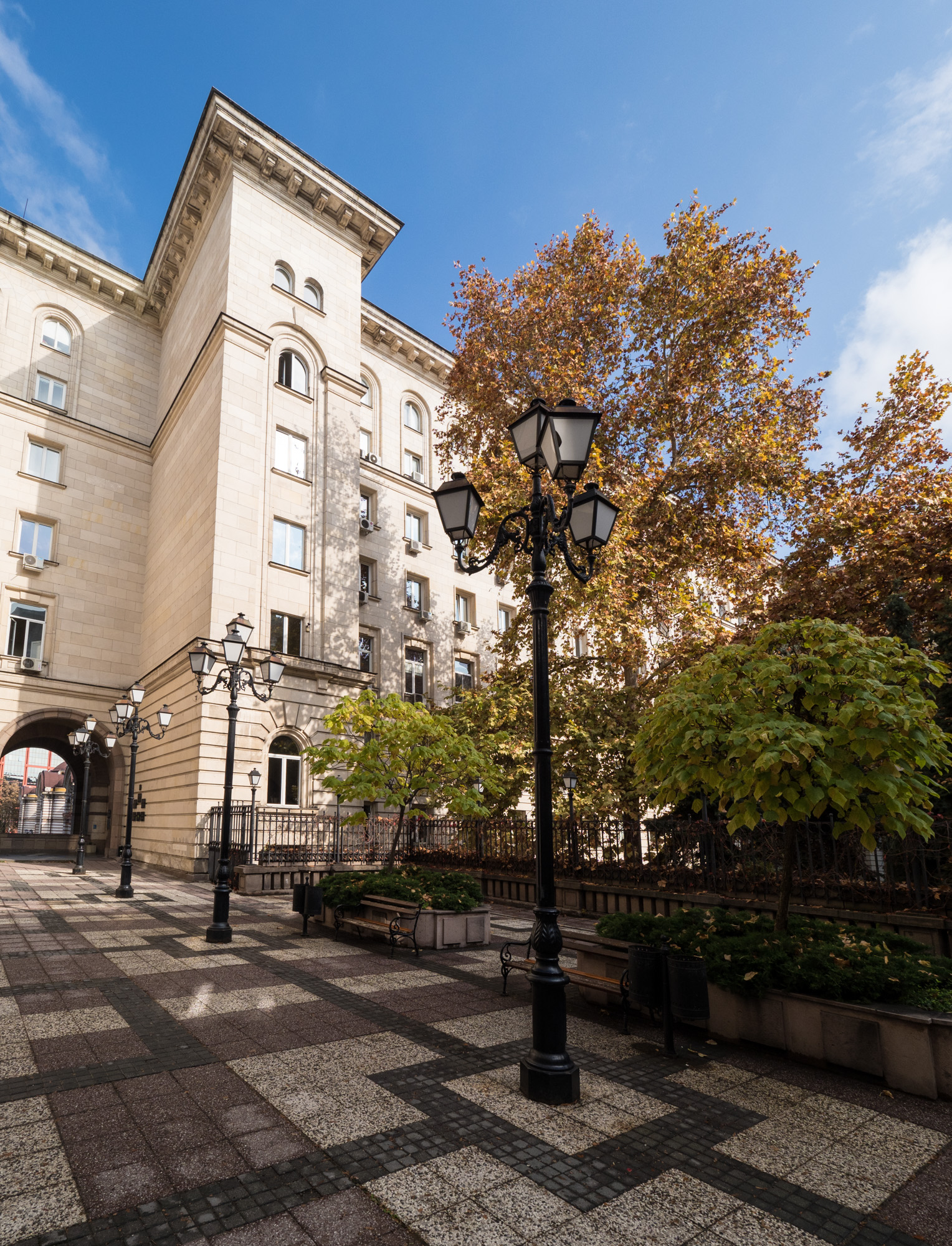
Autumn
One of the beautiful spots of Sofia inside the TZAN courtyard.
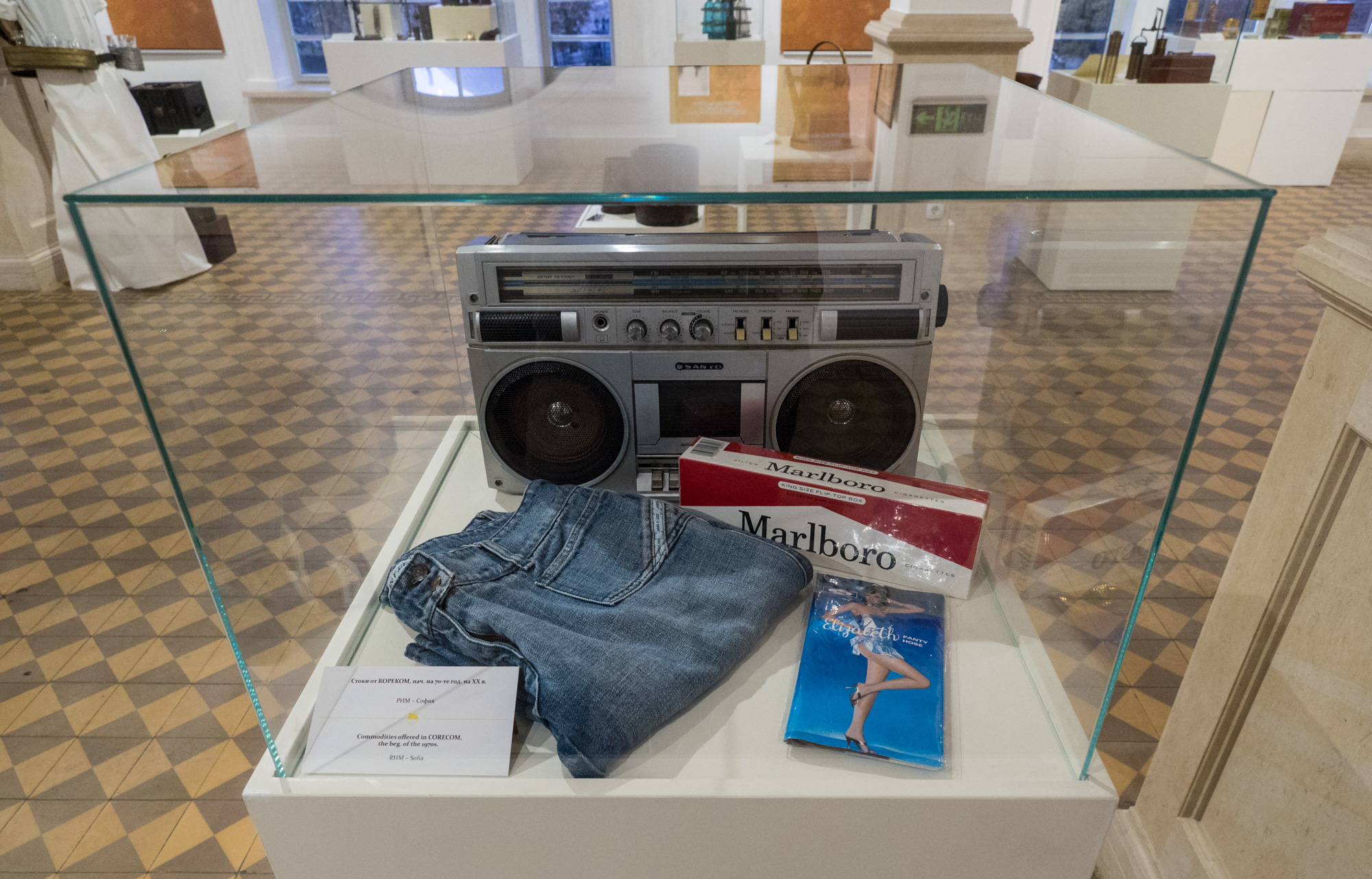
History of Sofia Museum
One of the exhibits. 70s starter pack?
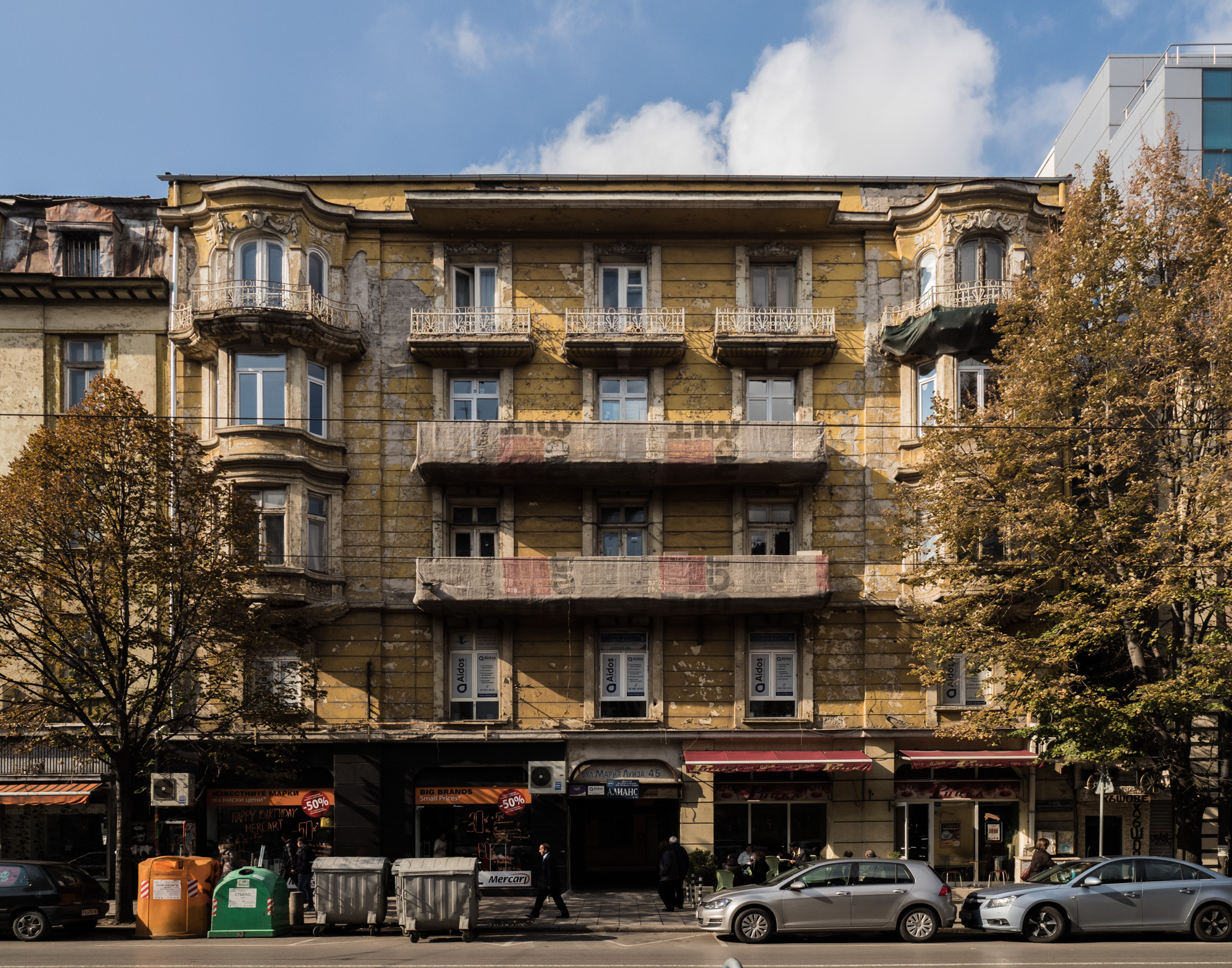
Street scenes
A somewhat tyical view.
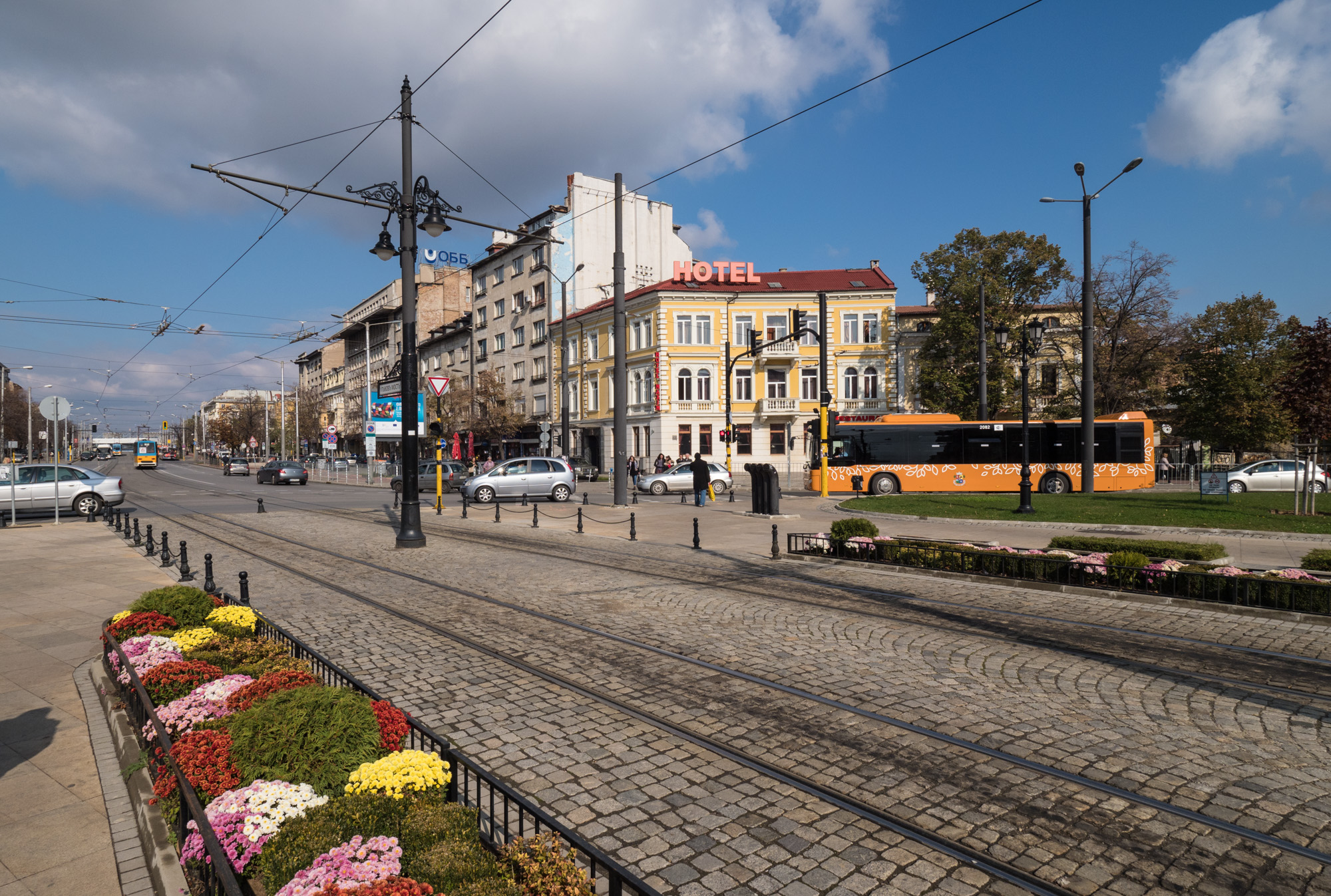
Cityscapes
A view of the streets around the Lion's bridge.

Jaguar
Visited the zoo as well - a sad visit I must add, it isn't in the best condition.
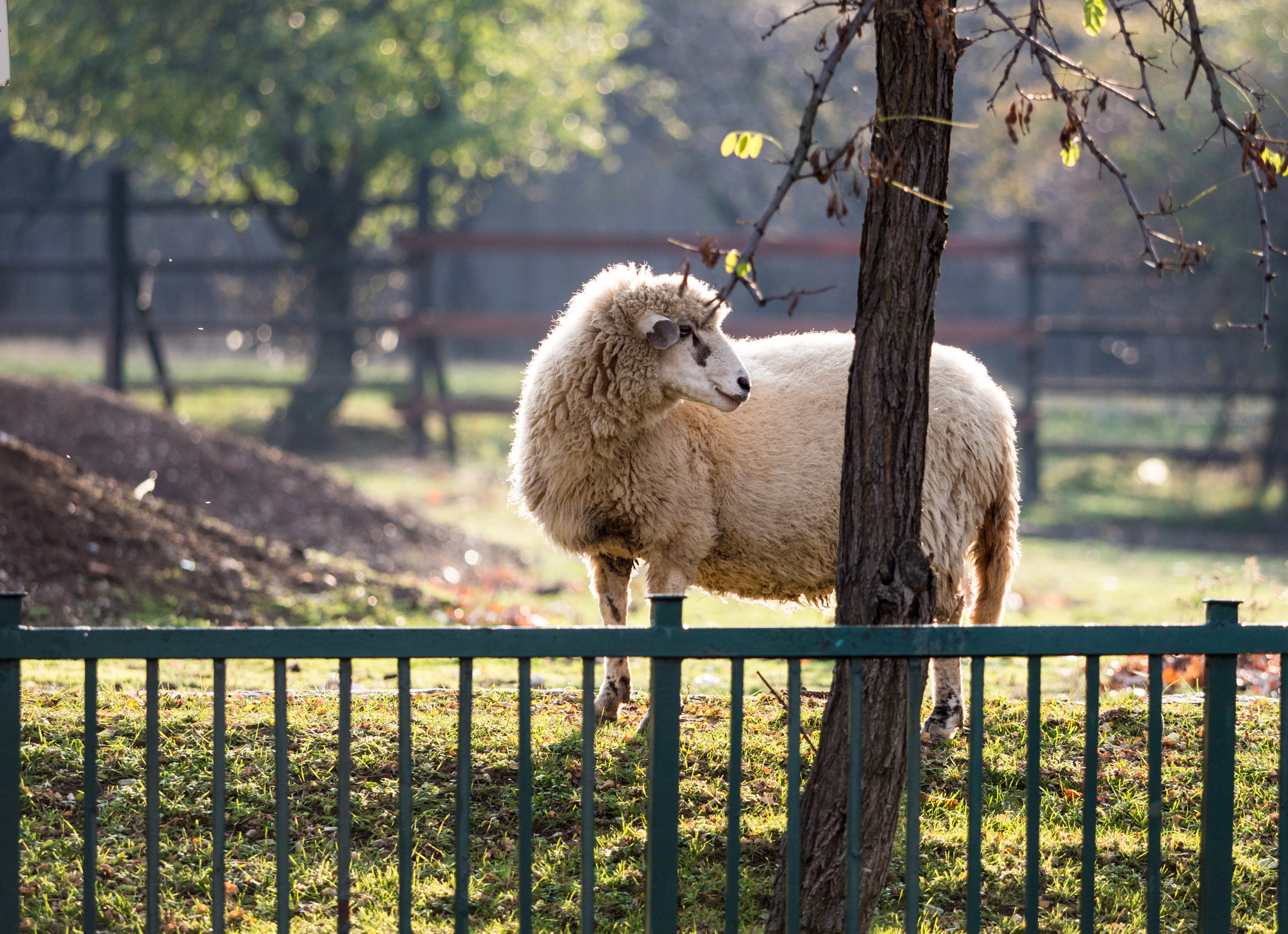
Lamb's Wool
Could have been useful, although it wasn't too cold yet.
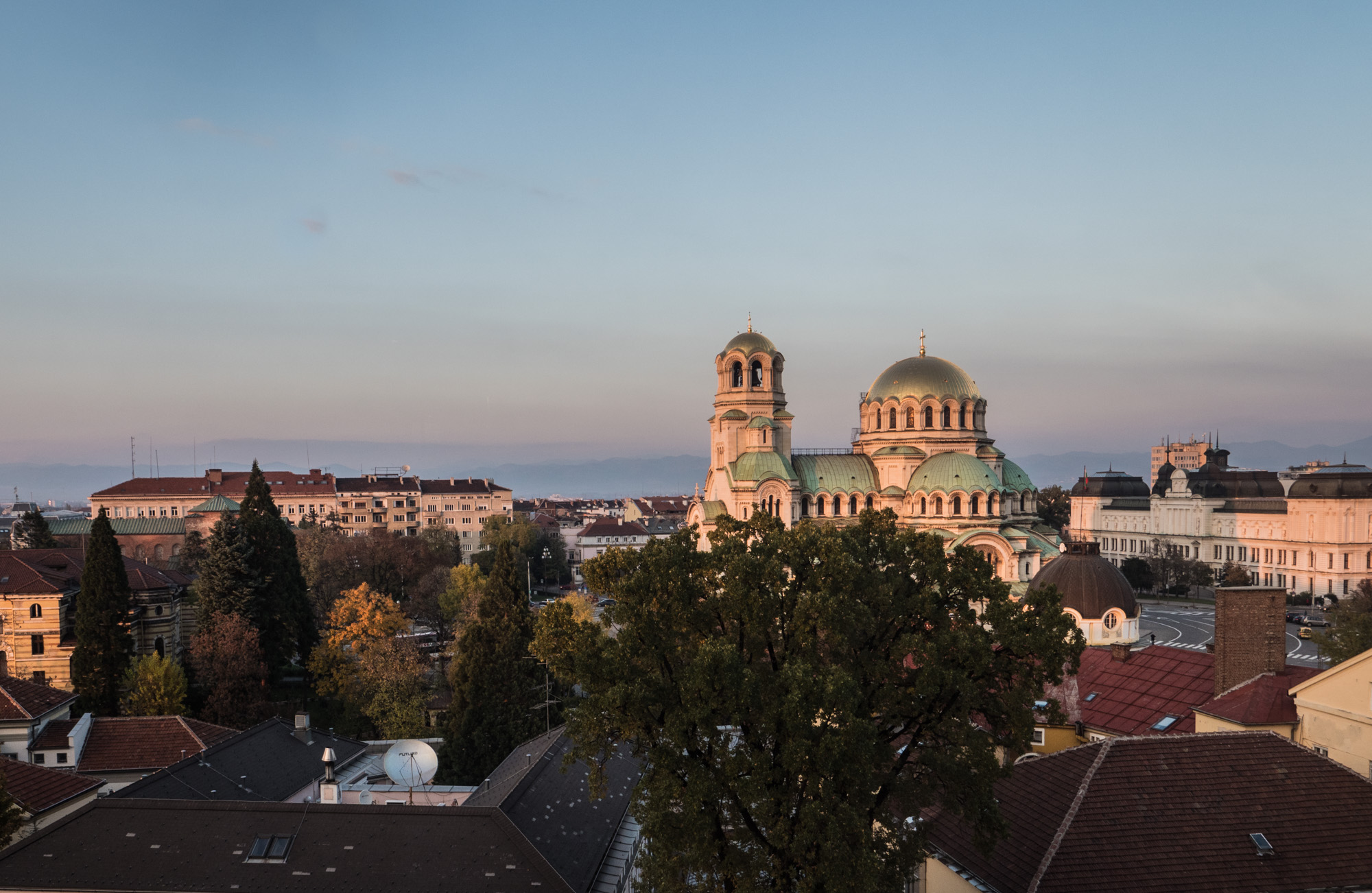
Skyline
The Alexander Nevsky Cathedral within the skyline of the city.
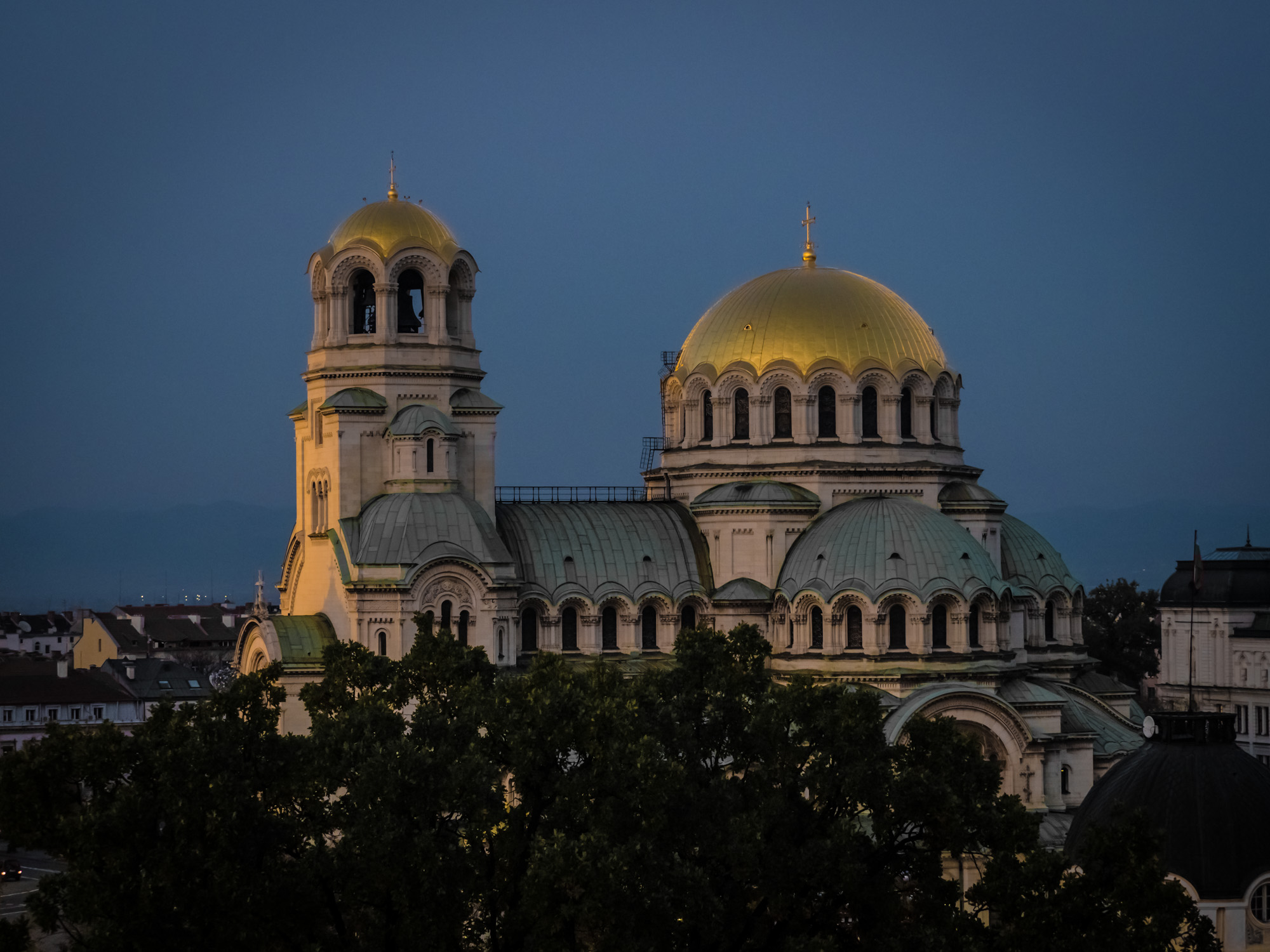
Domes
The tallest dome is 53m tall.

Mountain sunset
Sofia sits at the foot of Vitosha Mountain.
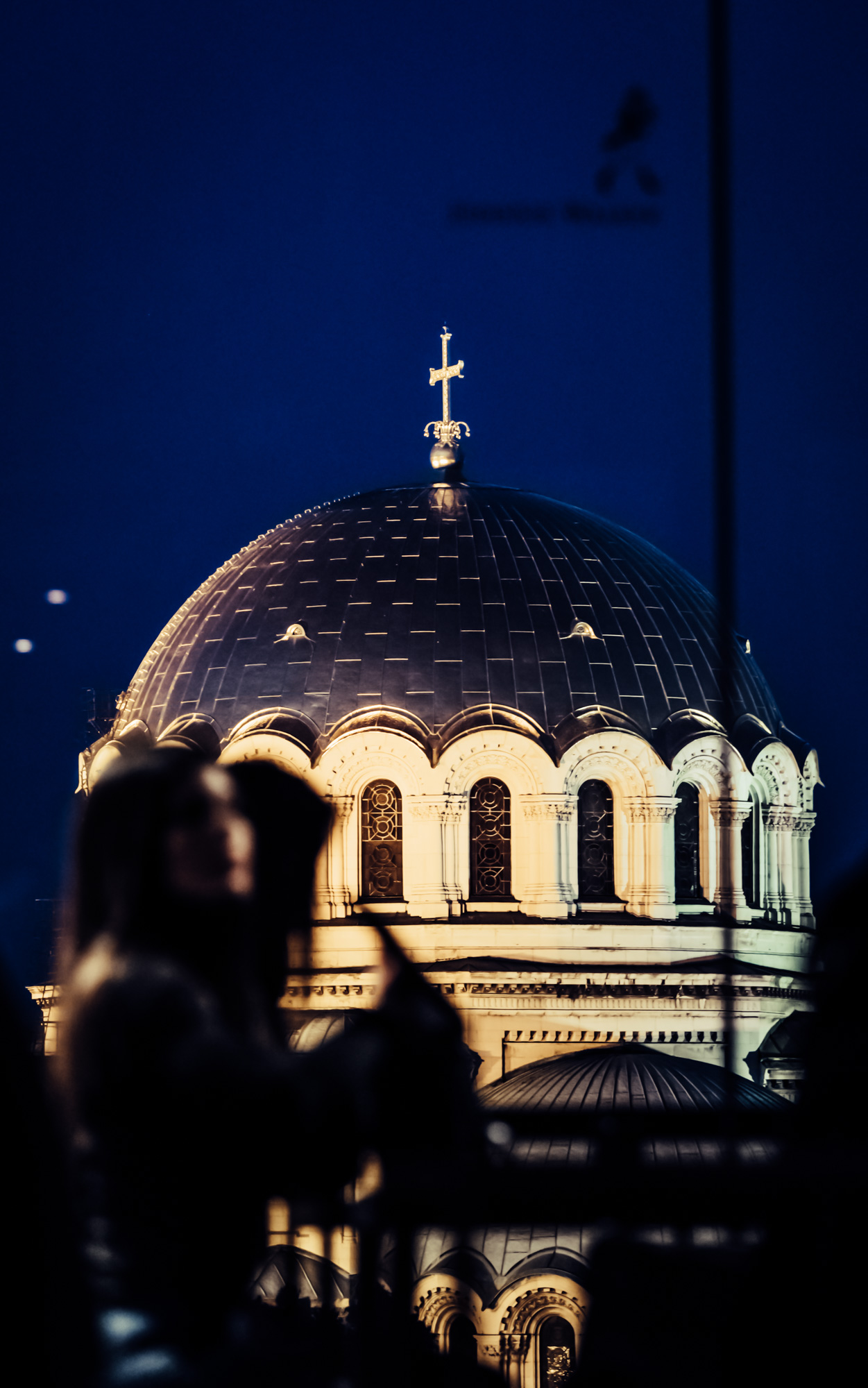
Views
View of the cathedral from the Hotel Sense Rooftop Bar, worth a visit.
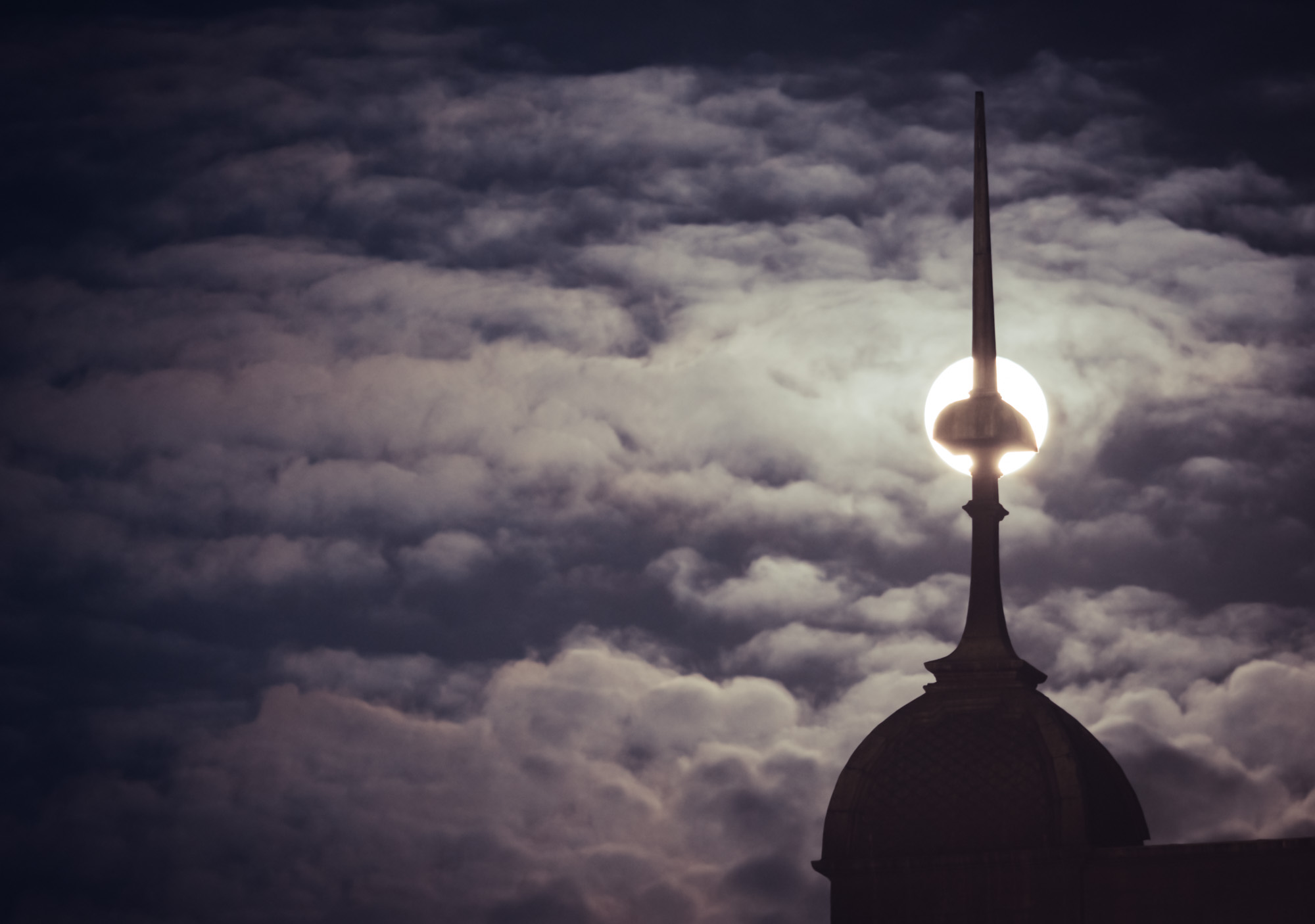
Full Moon
Sitting behind one of the spires of the art gallery roof.

Boyana Church
Medieval church known for an interior covered in frescos dating from the late 900s.
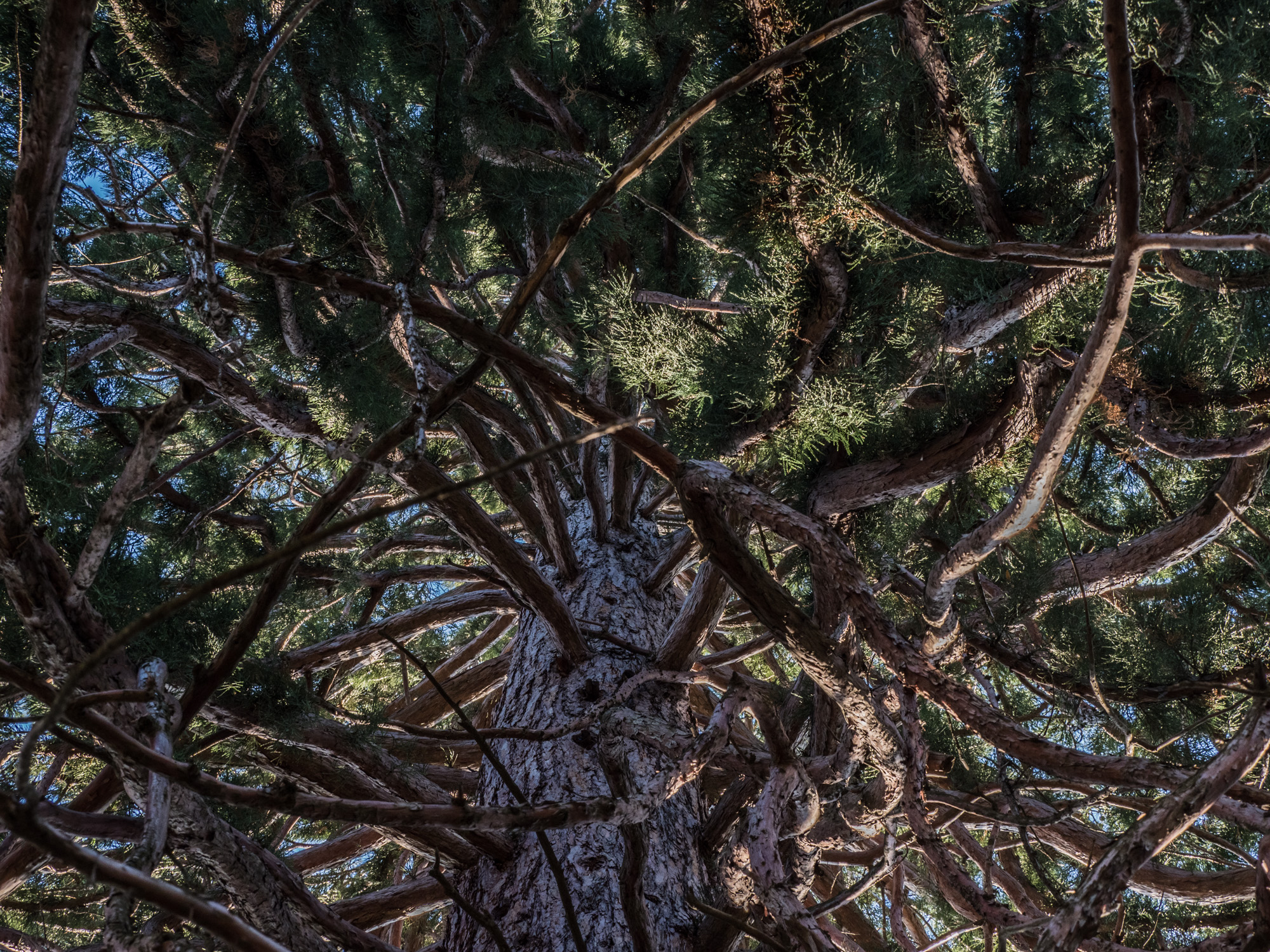
Trees
One of the giant sequoia trees on the grounds of the Boyana church.

On the lookout
... for food.
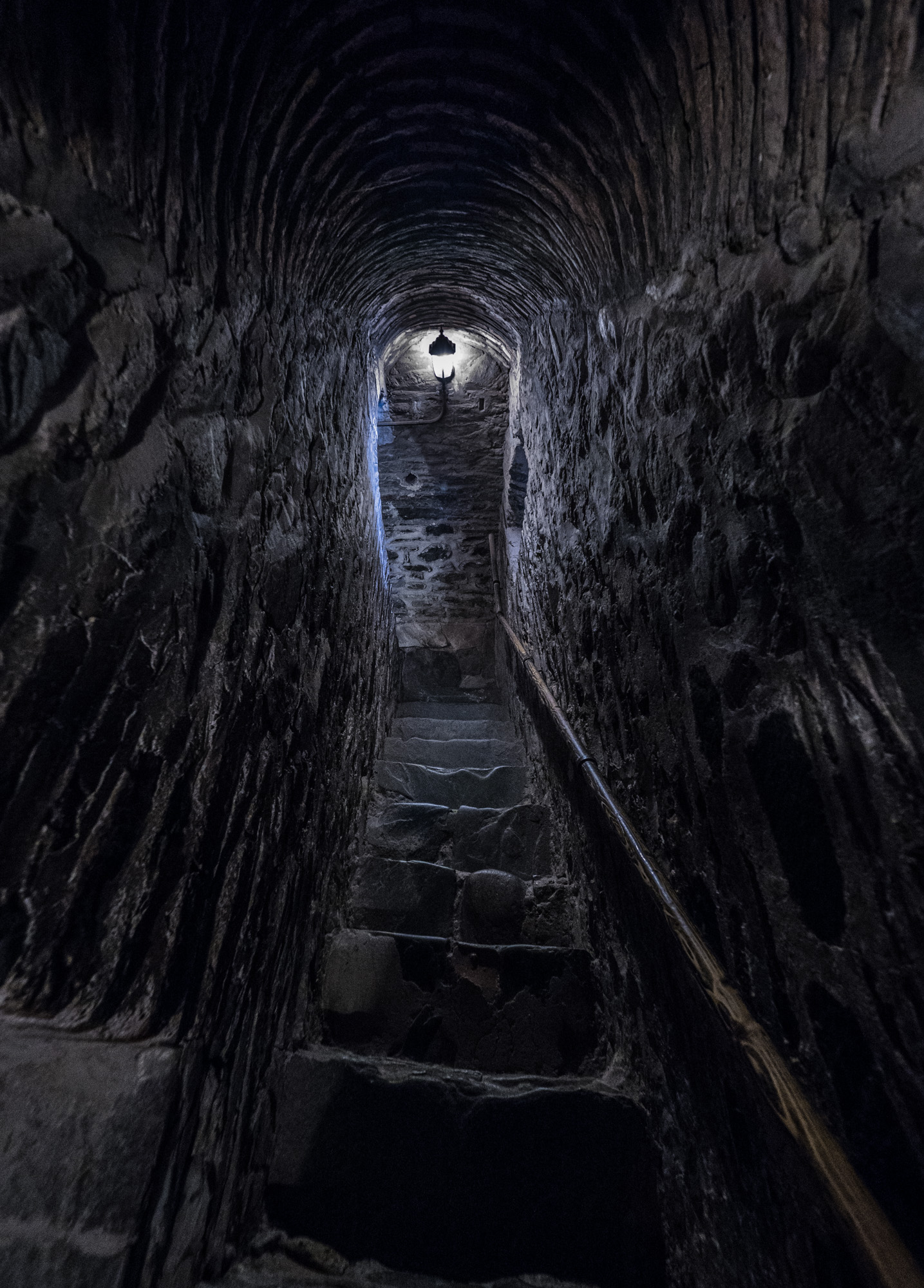
Staircases
Inside Rila monastery's Tower of Hrelja, which dates from 1335.
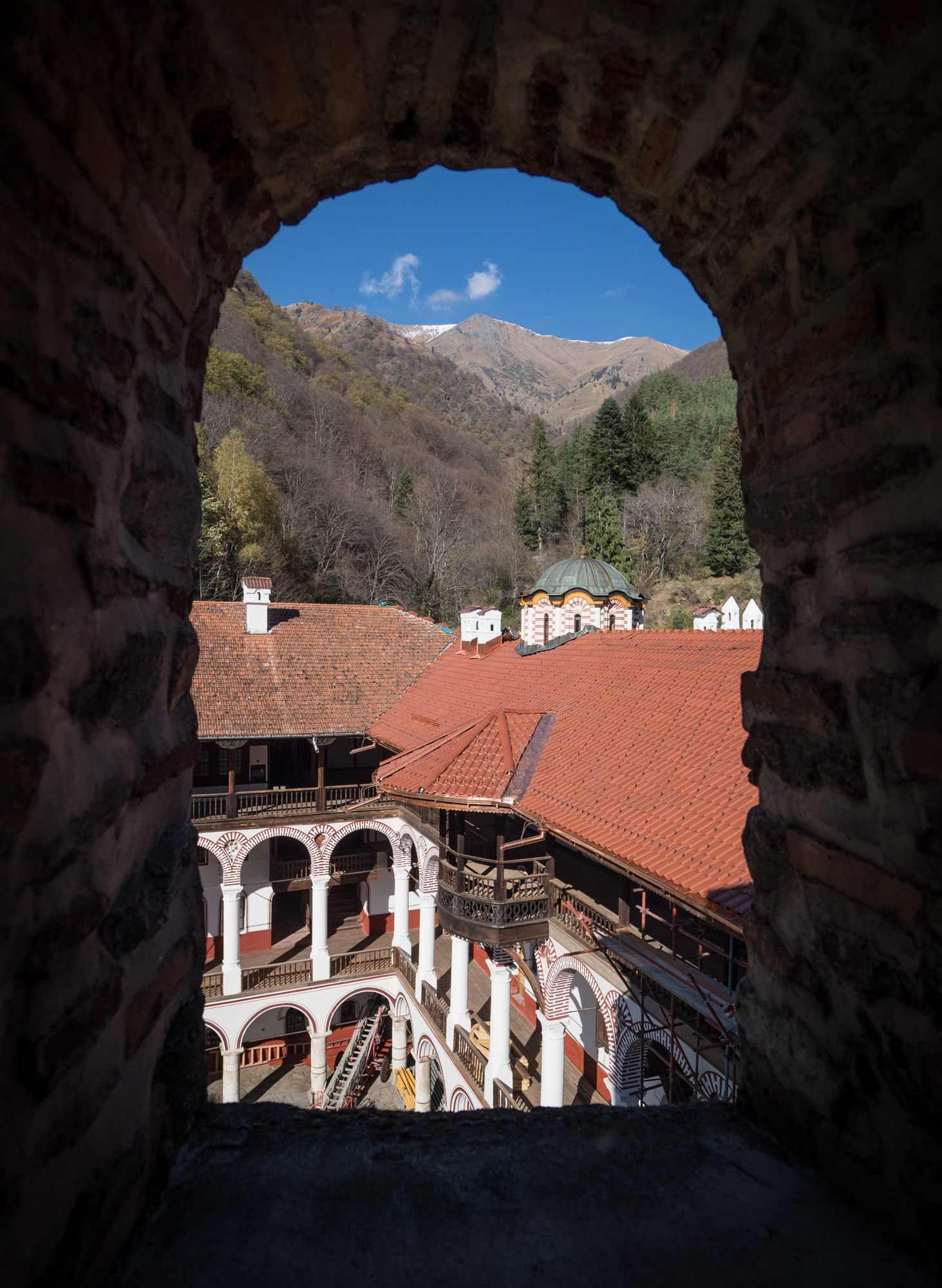
Lookout
Looking east through one of the tower's windows.
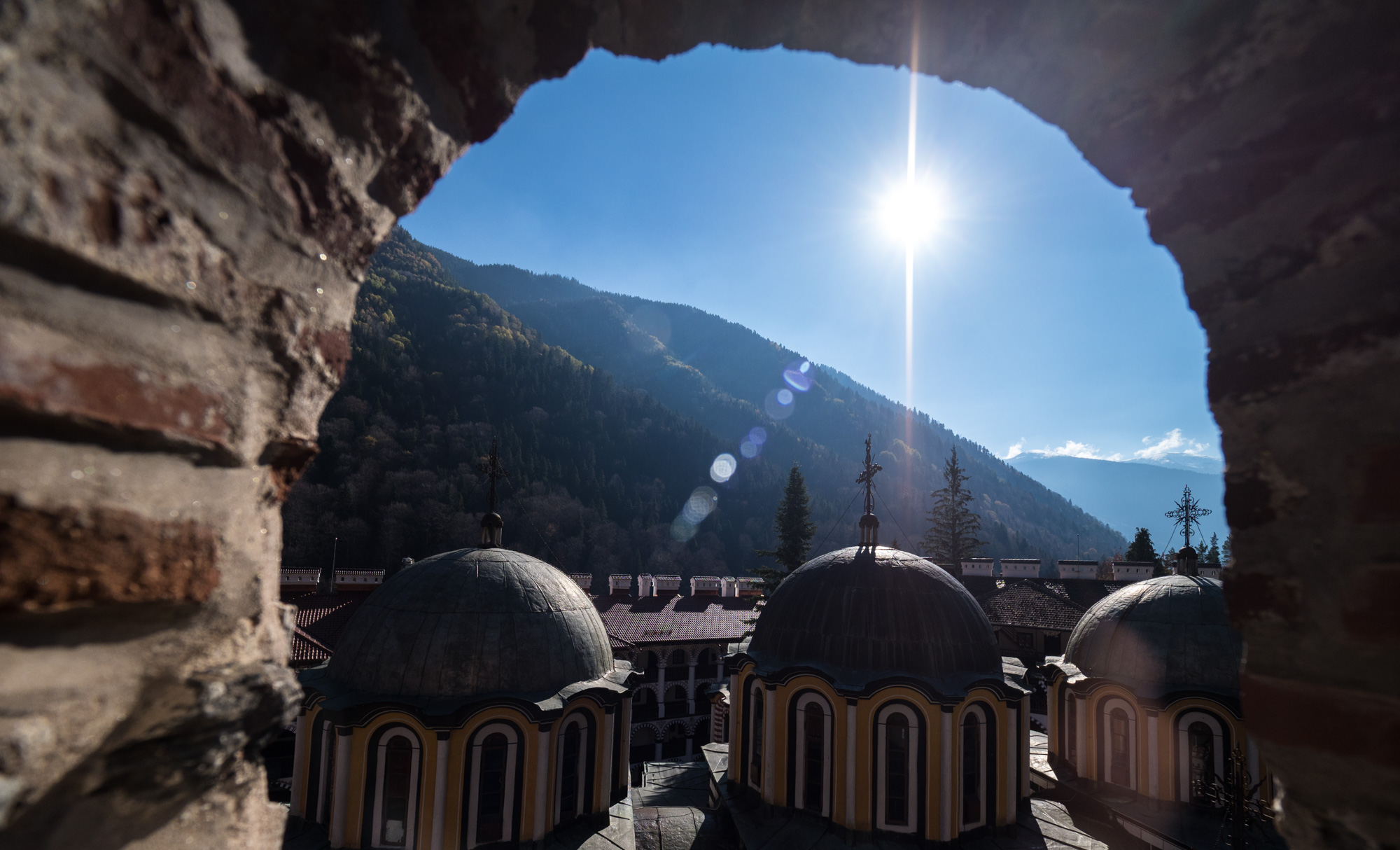
Worthwhile
Our tour guide told us it wasn't worth to go up the tower. View proves otherwise.

Monastery of Saint Ivan of Rila
The view in the courtyard, looking westwards.
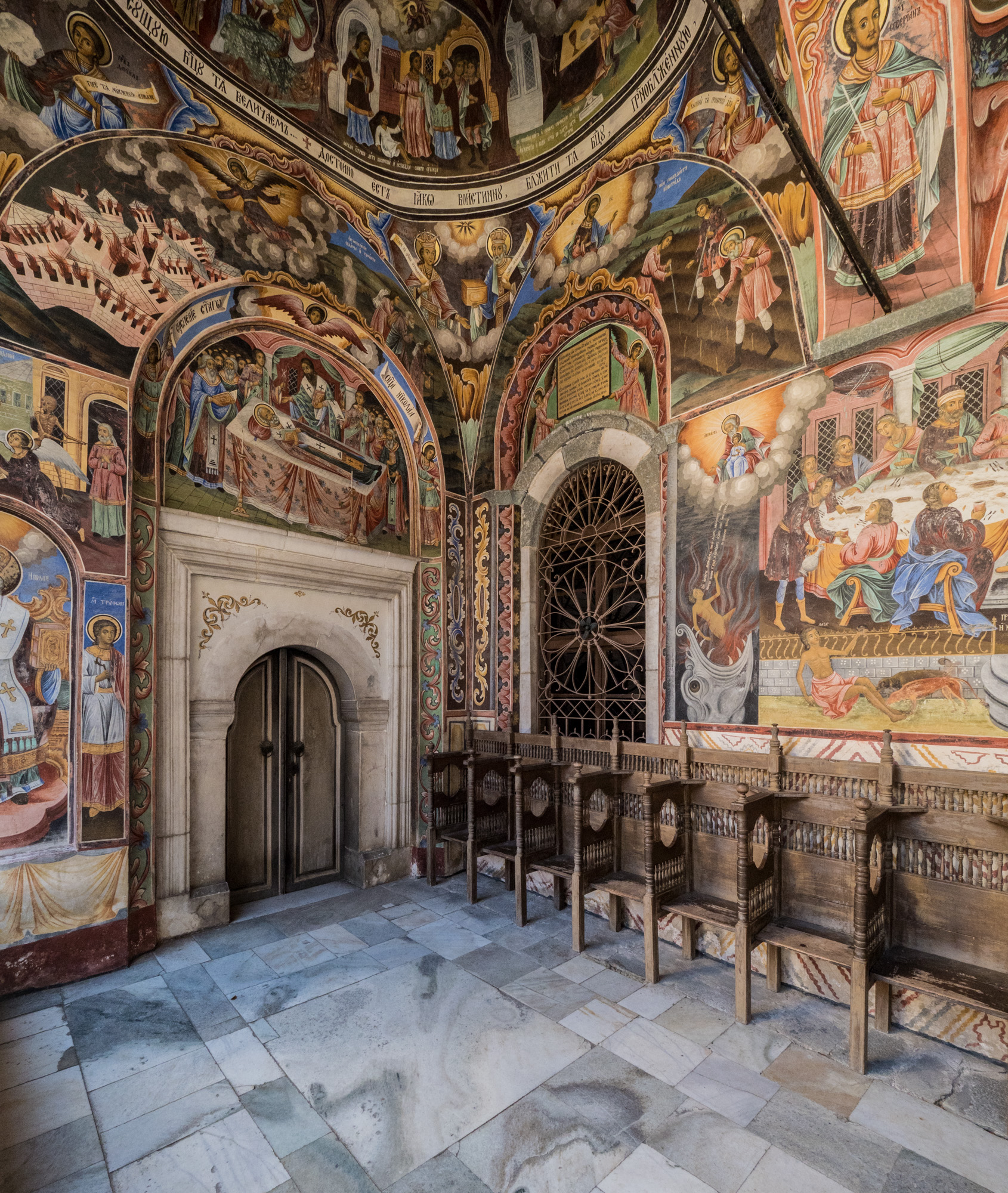
Exterior Frescoes
There's more on the inside, but unfortunately no photography allowed.

Around
The courtyard is surrounded by the 4 floor buildings of the monastery.
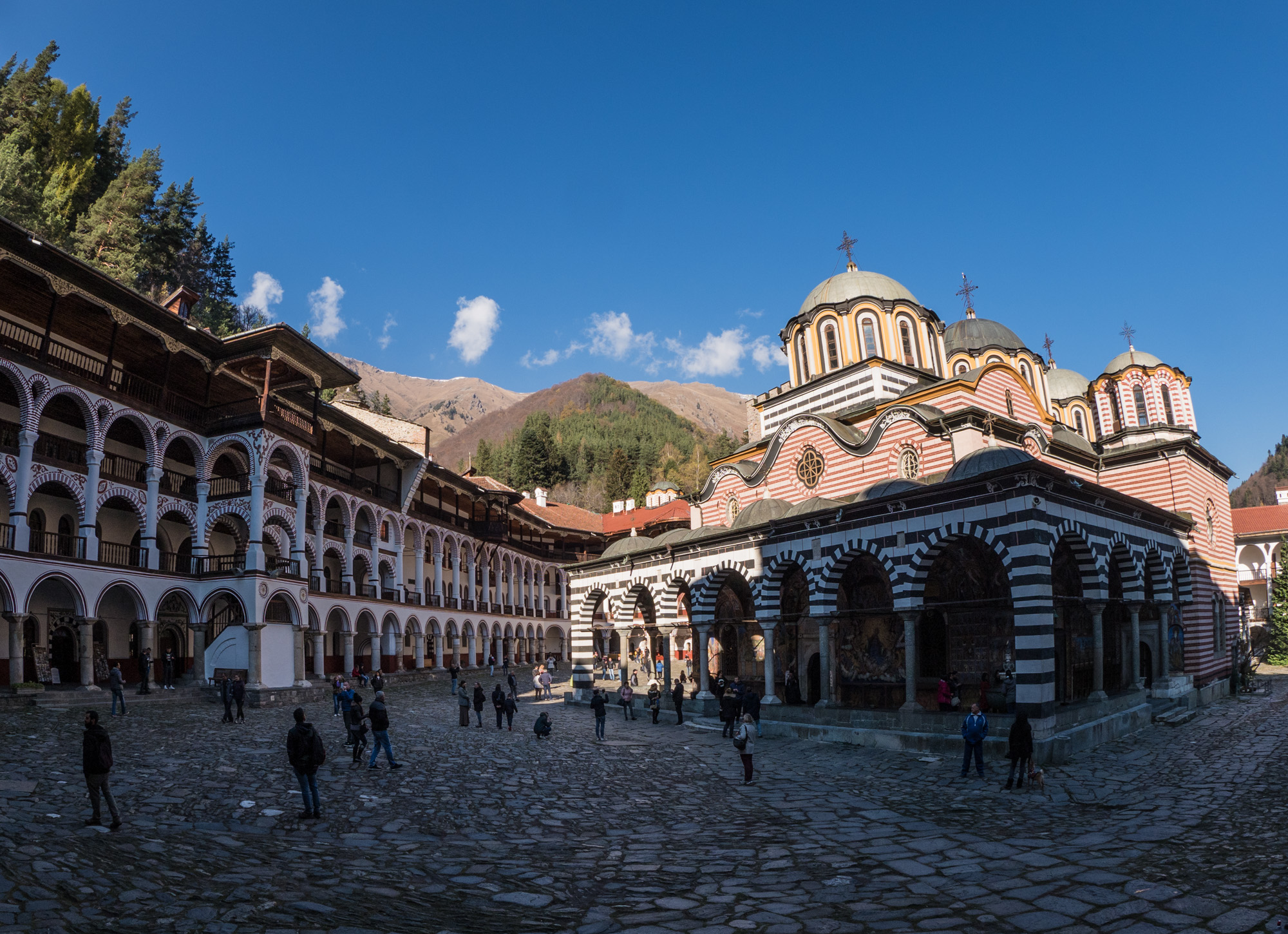
Monastery of Saint Ivan of Rila
And looking towards the eastern side.
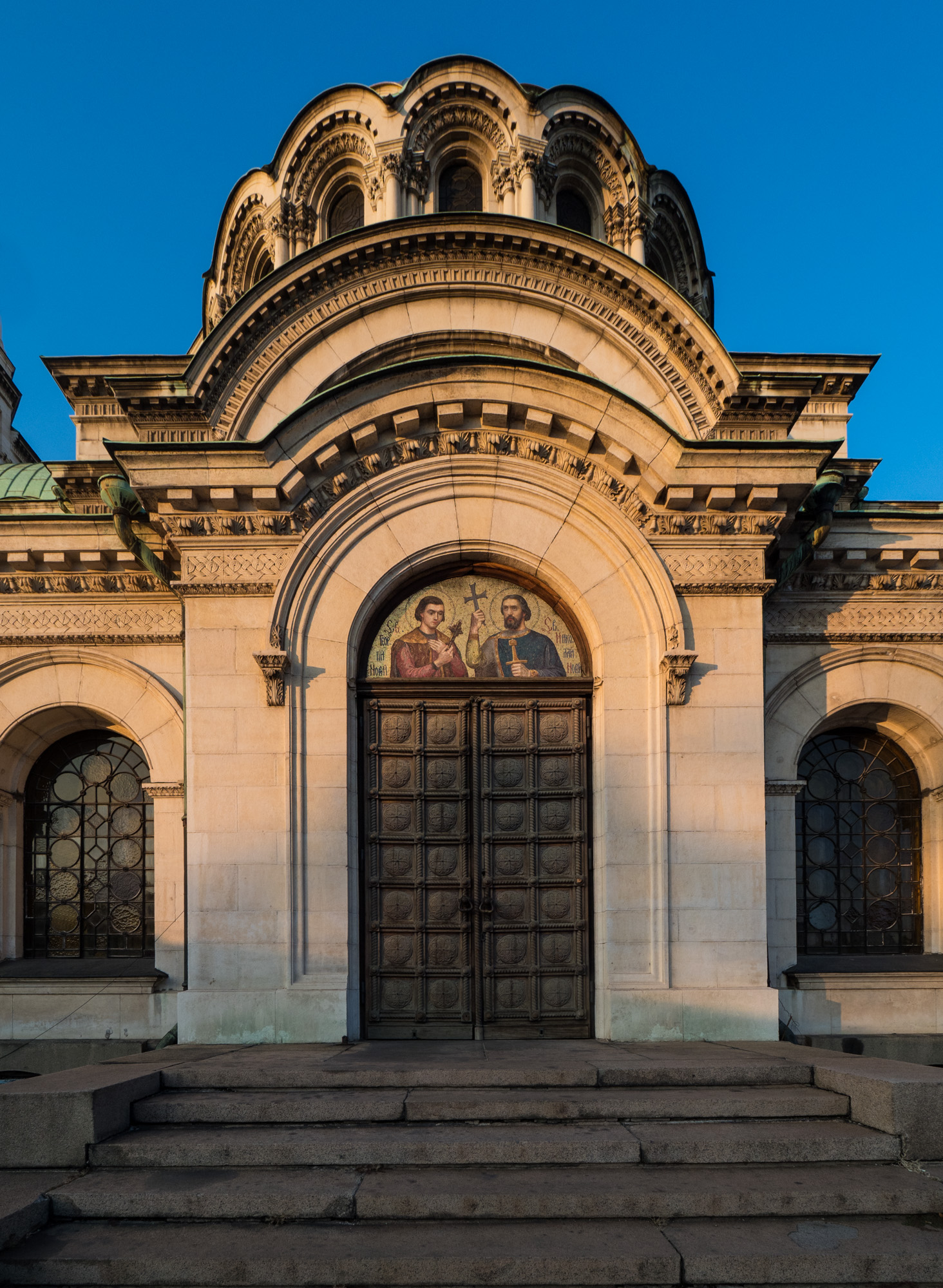
Doors
One of the doors of the Alexander Nevsky Cathedral.
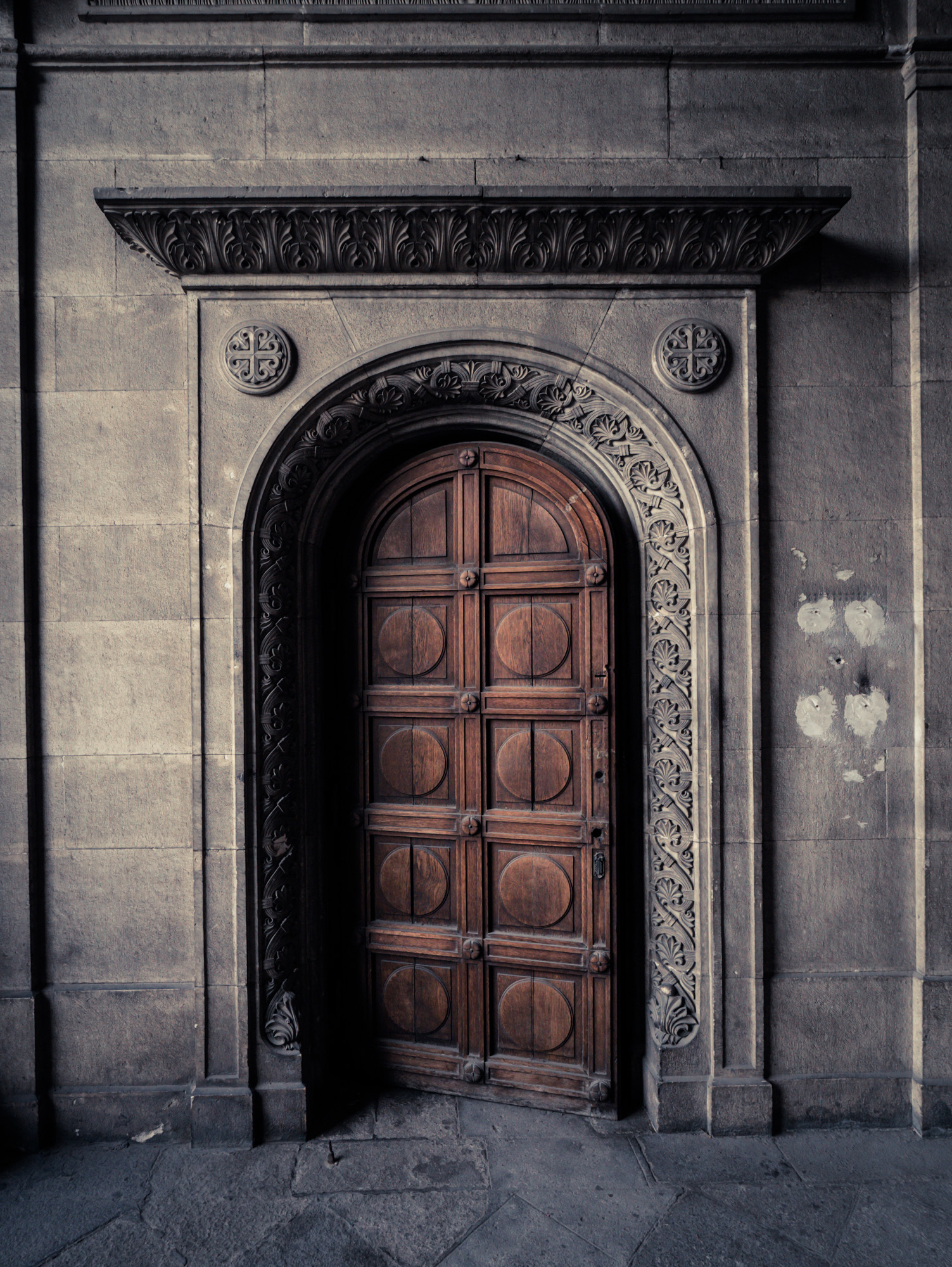
And another one...
Got to love a nice door.

Movie Scene
They were shooting an action scene with burning cars and all the jazz on this Sunday afternoon.
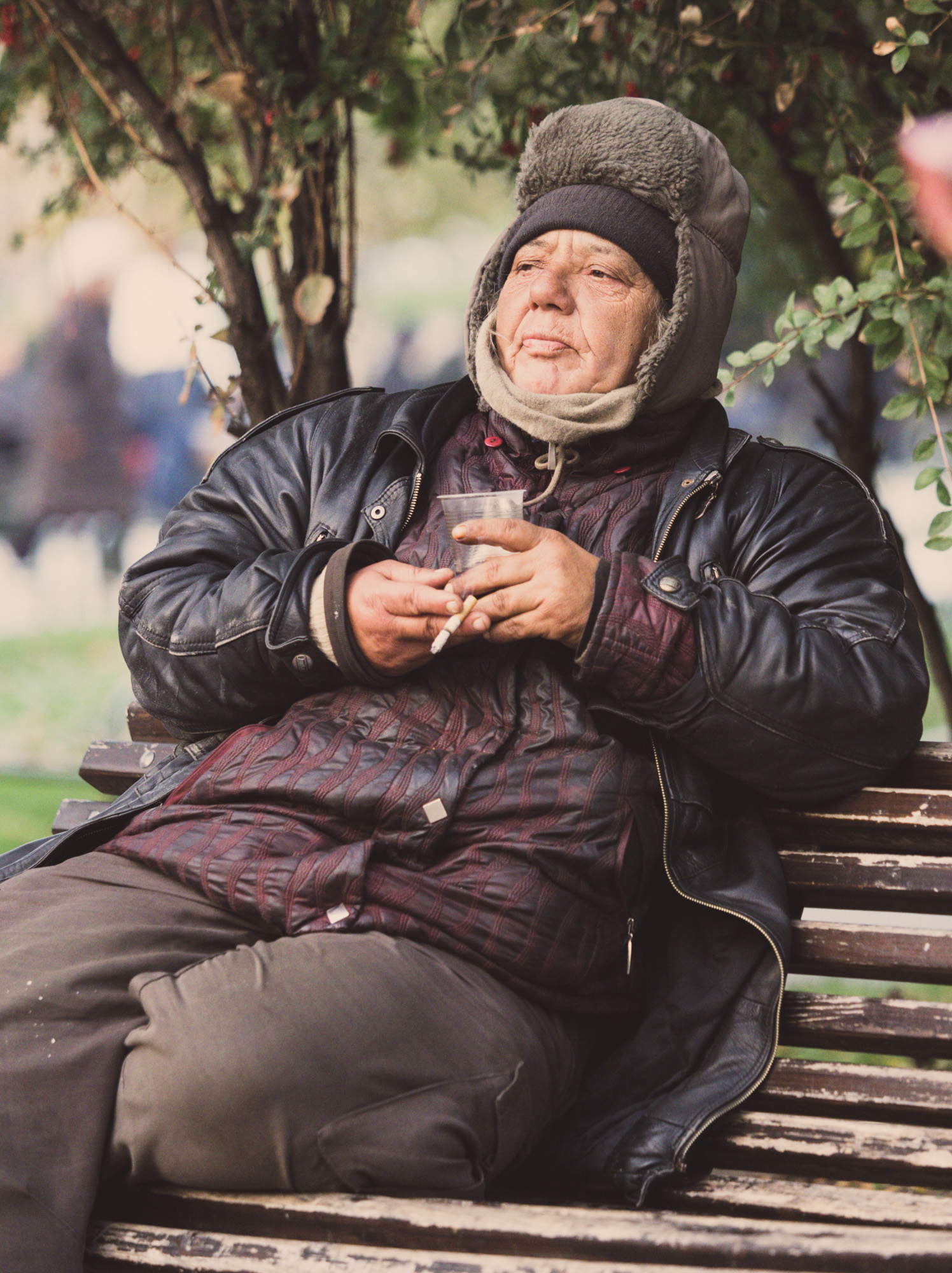
Just chilling
In the City Garden, a popular hangout spot in central Sofia.

Music
Always makes people smile.
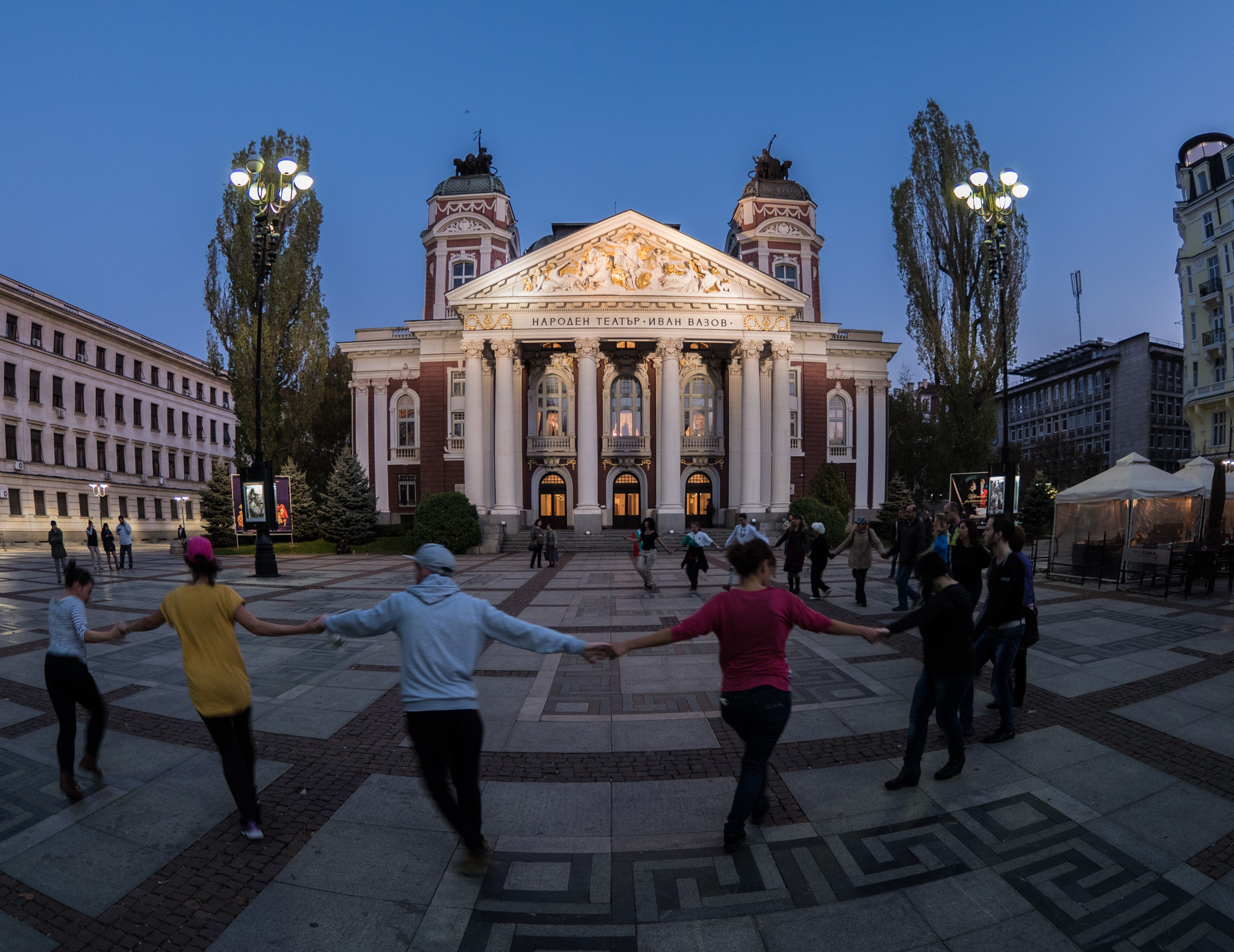
Dancing
People dancing to Bulgarian folklore in front of the neoclassical theater of Sofia.

Nightlife
The long pedestrian area towards the Palace of Culture is full of restaurants and bars.
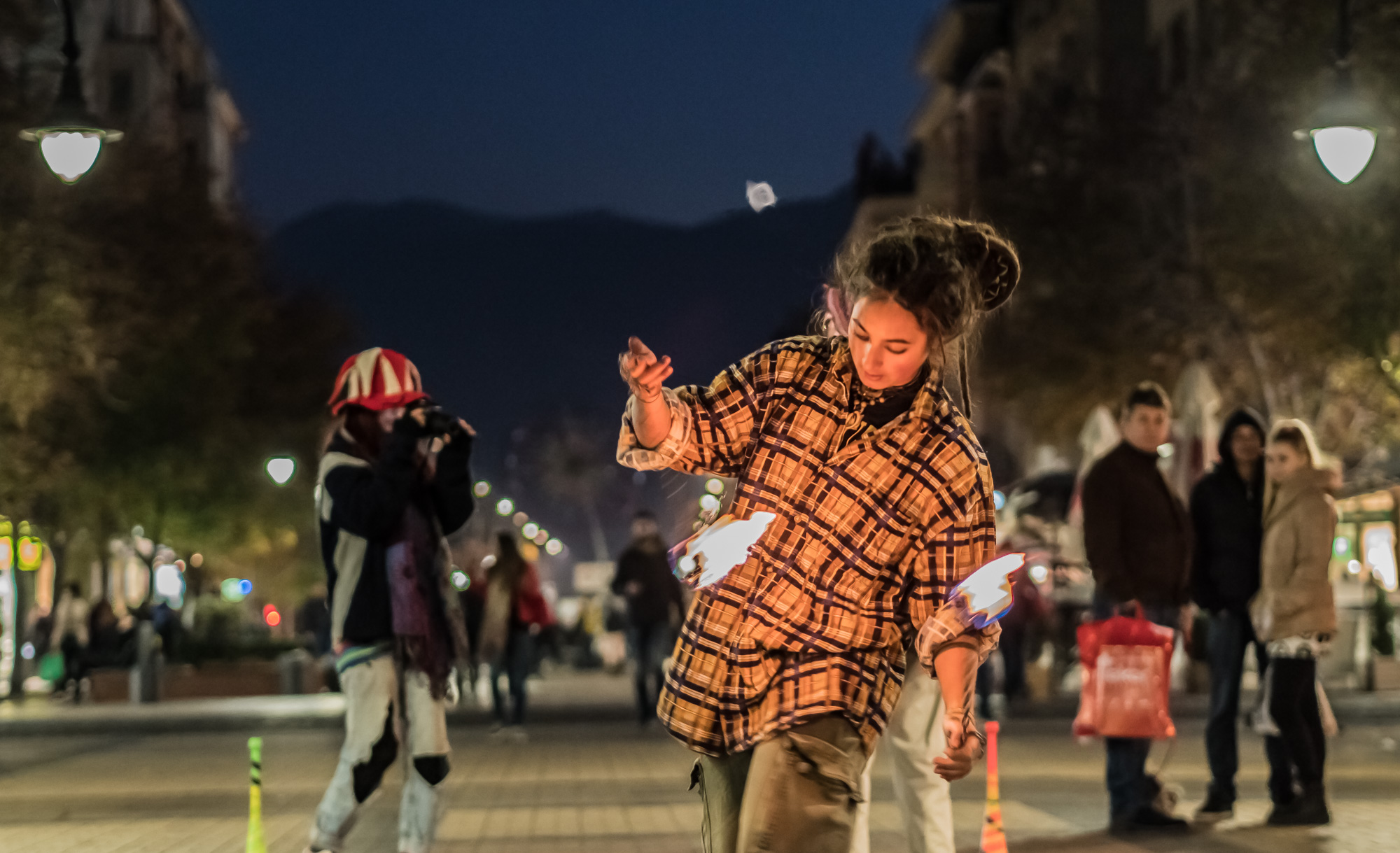
Playing with Fire
The city felt relatively quiet, but it seems people do come out at night...
Armenia - A weekend of history
Spent an amazing weekend in Armenia. Together with Georgia, these two countries present a very unique place on the gateway to Asia, with a rich history and a special atmosphere.

Spent an amazing long weekend in Armenia. As with Georgia, the country offers a very unique atmosphere on the gateway to Asia, with a rich history and amazing landscapes. Really enjoyed exploring it, perfect for a short trip from Dubai.

This is a hotel?
We were supposed to stay here, but - luckily one might say - they overbooked and didn't have our second room, so we moved.
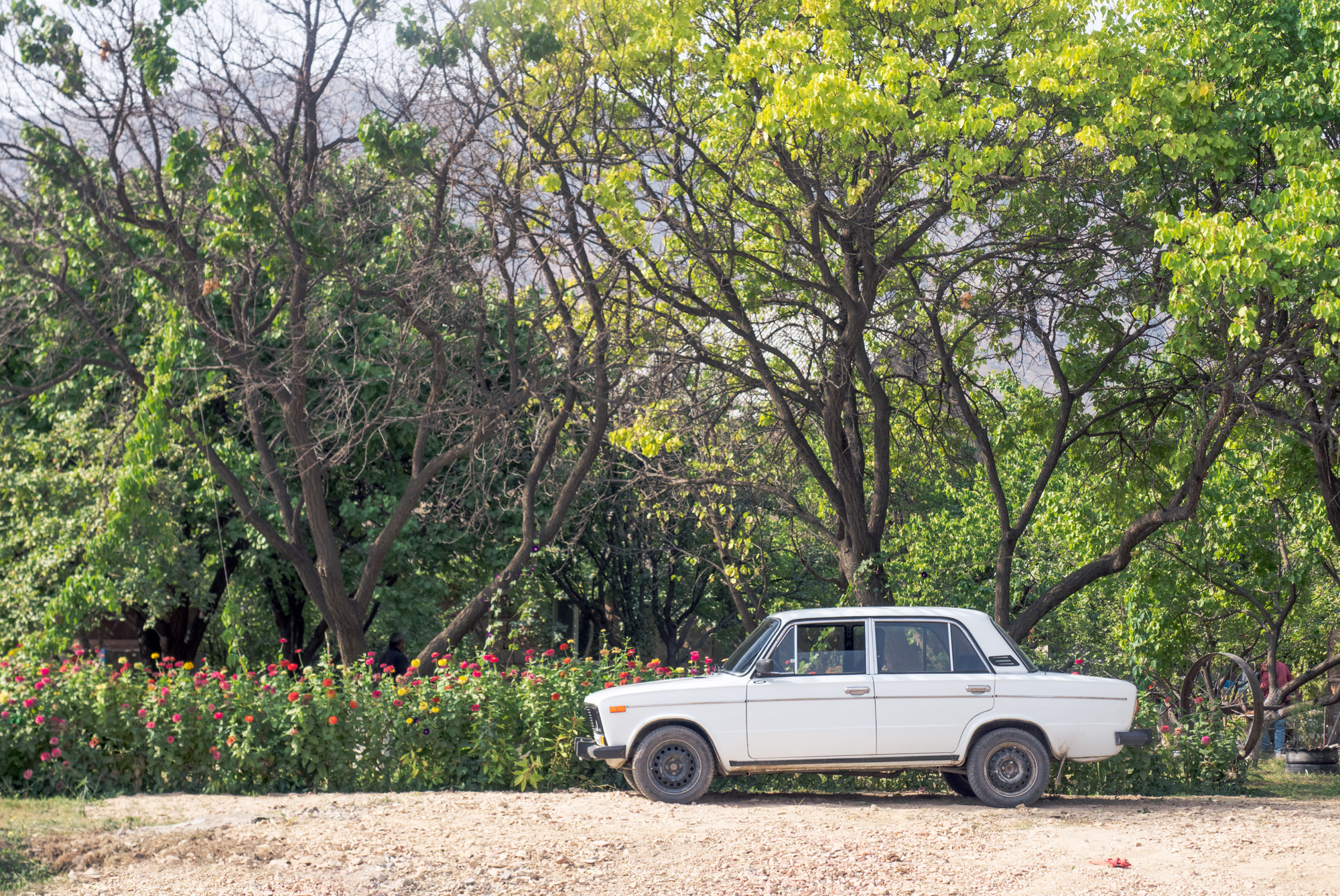
The Ride
Not what we rented - but a very typical type of car in Armenia
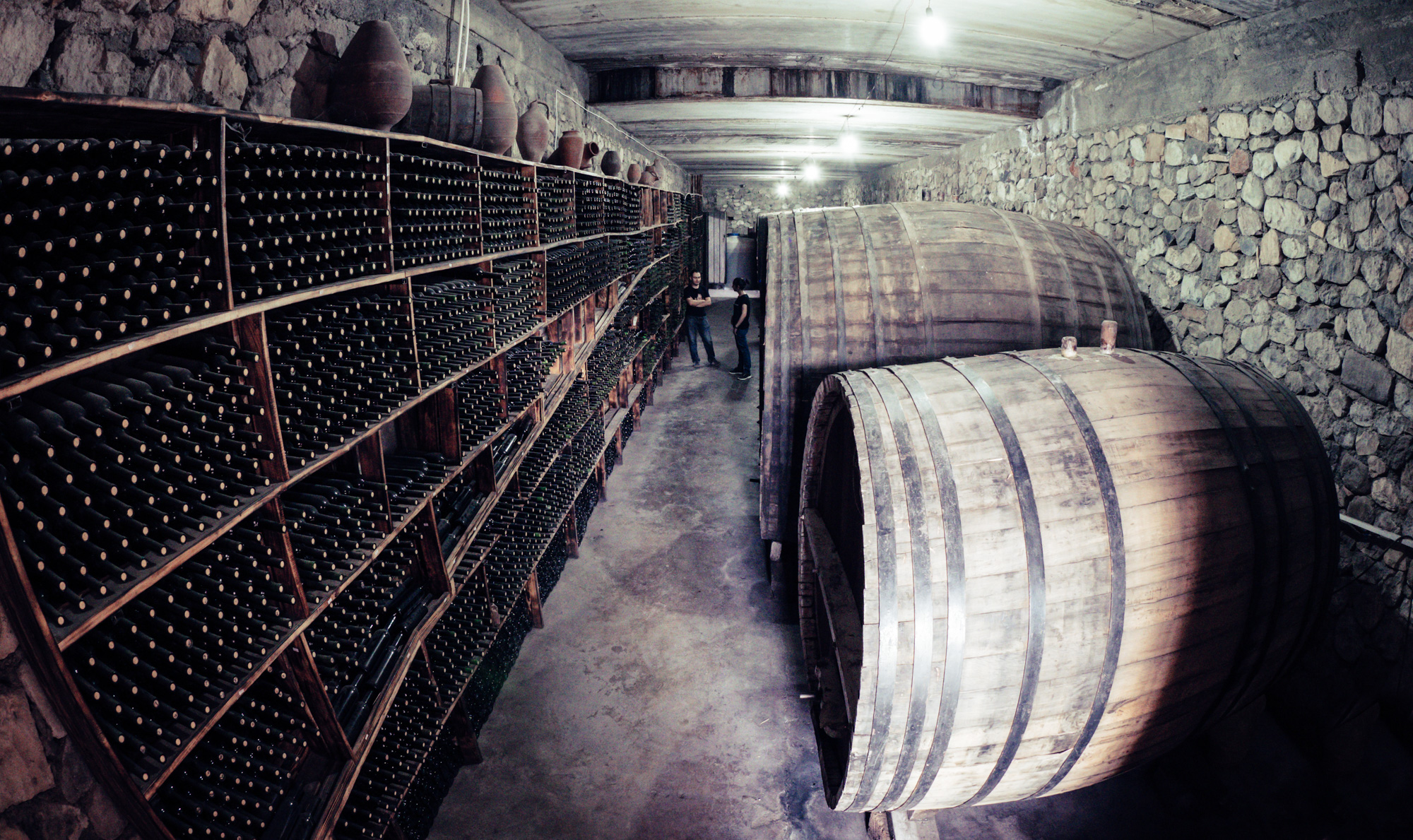
Wine, anyone?
These huge wine barrels were in the basement of the Areni winery.
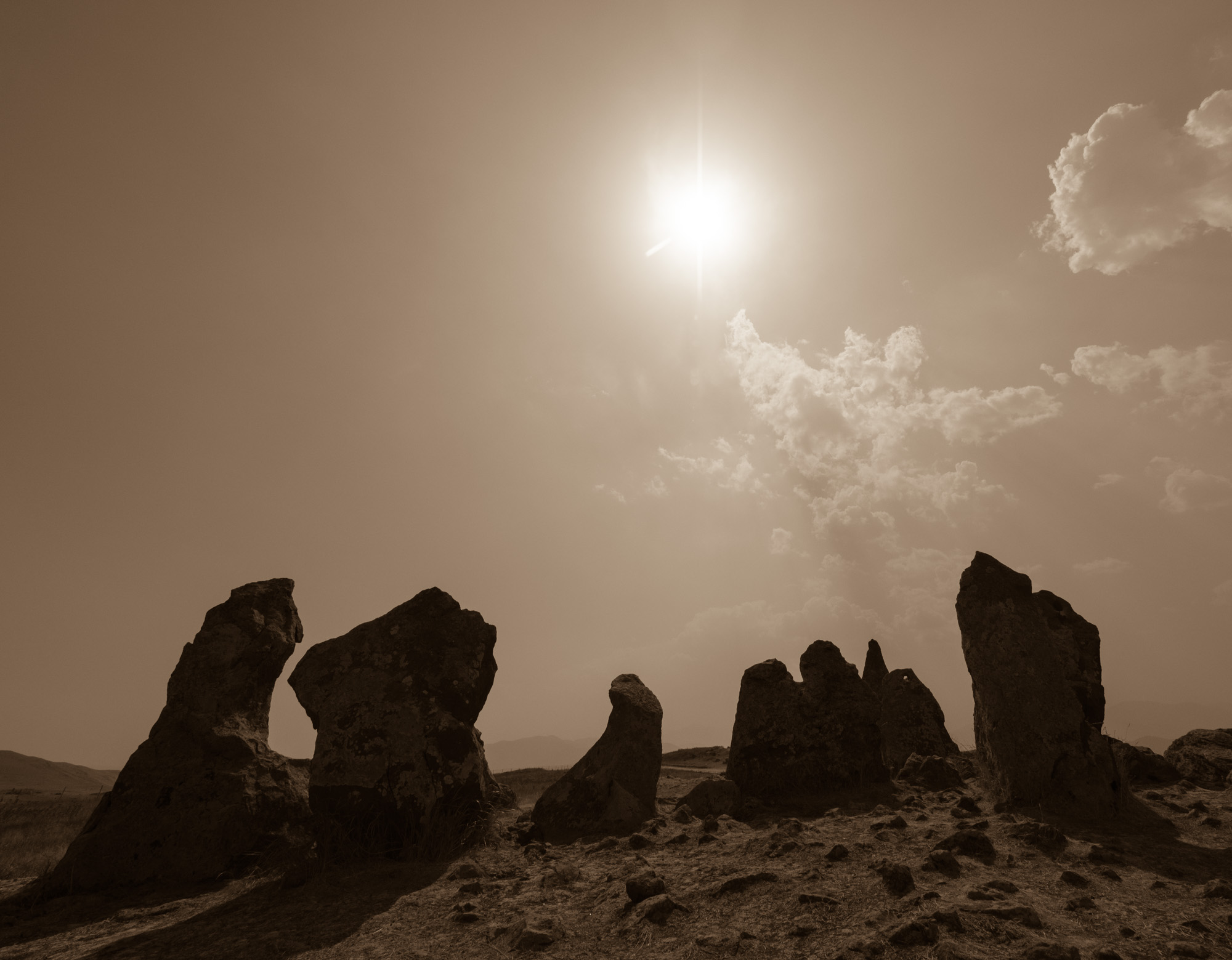
Stones
These weigh up to 10 tons. Some of them have holes which are said to make whistling sounds in the wind.
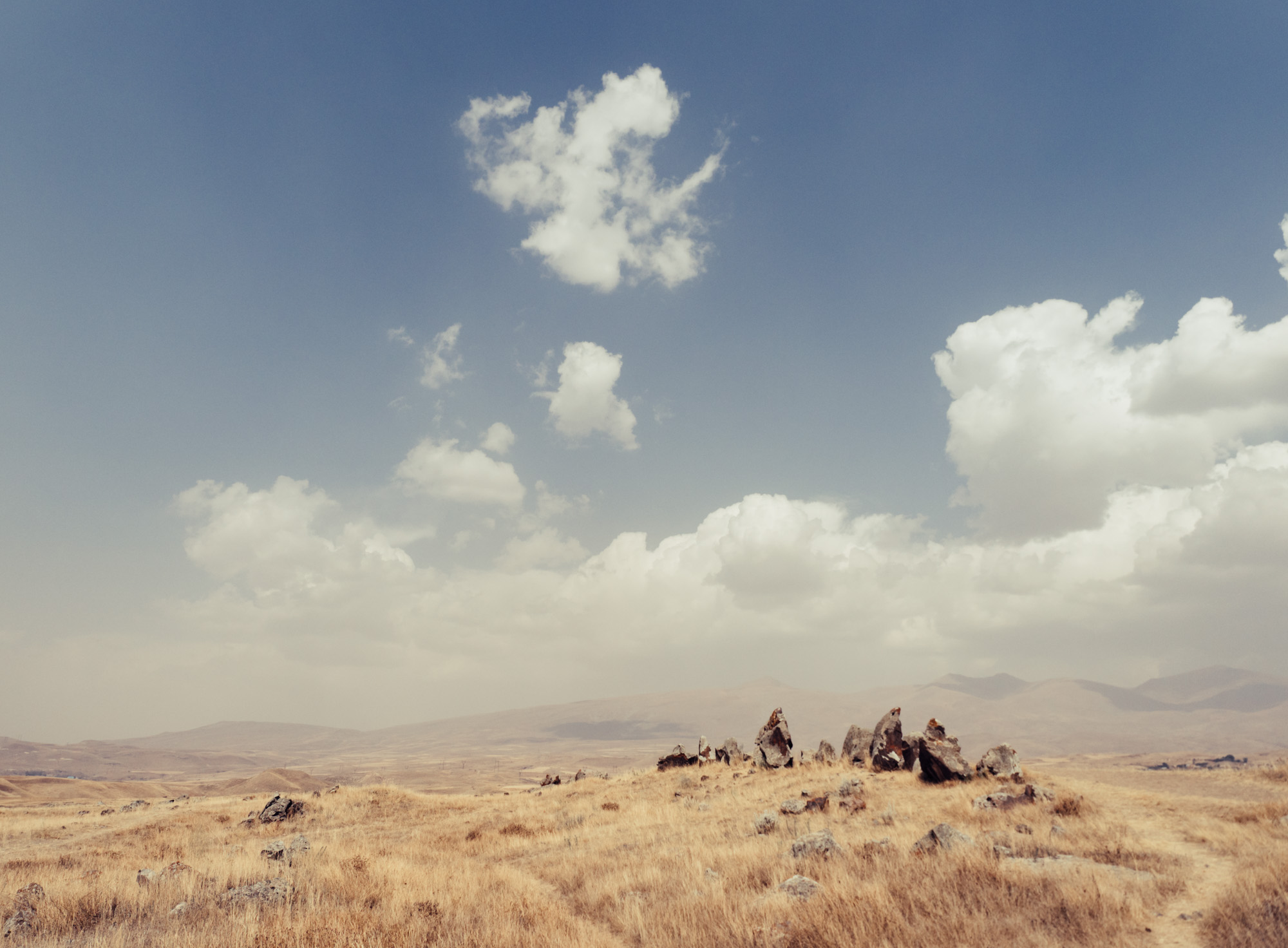
The Armenian Stonehenge
Or that's what the tourist lore says...
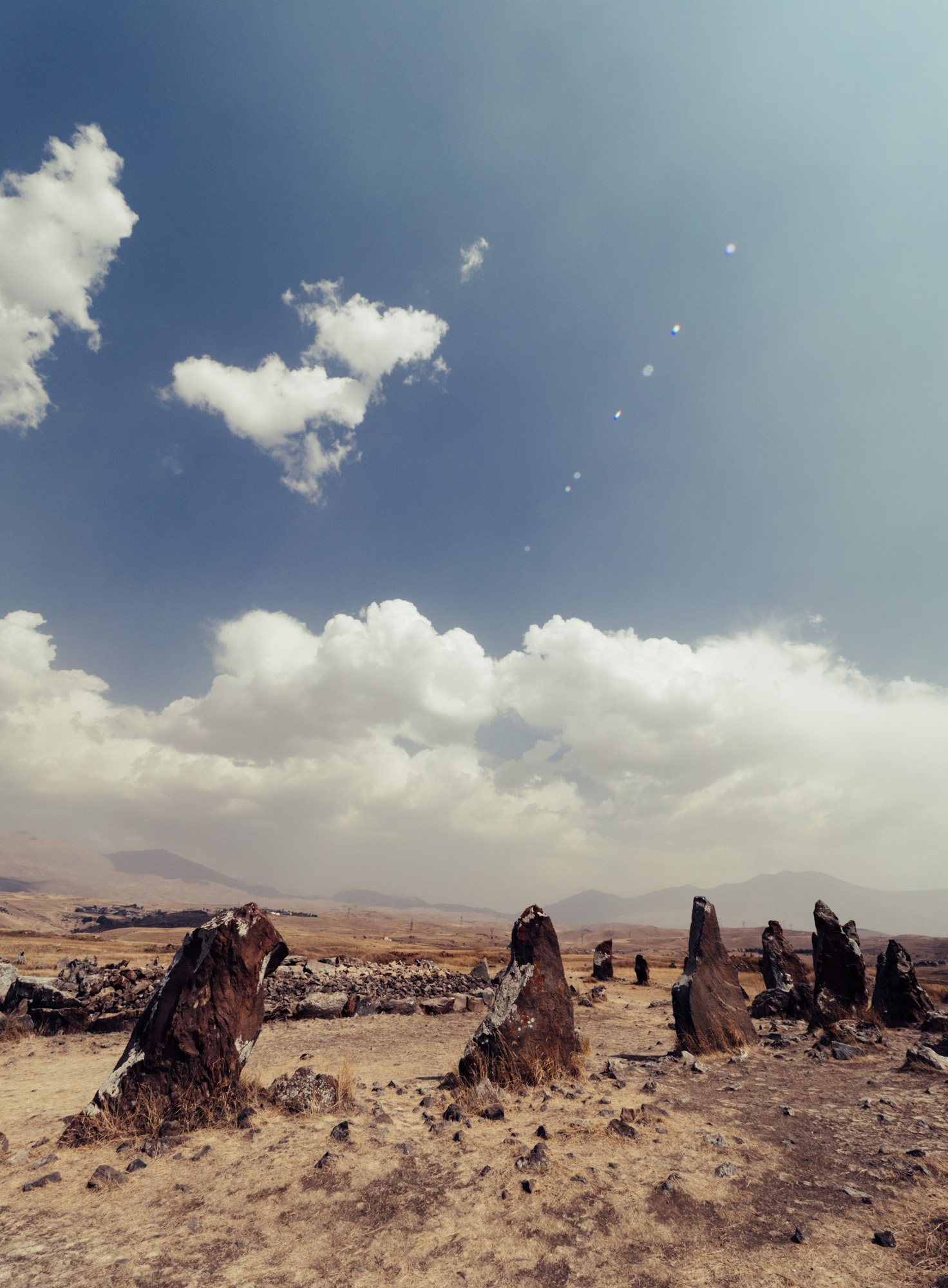
Carahunge
This is the real name of the area, which is said to have been a necropolis or observatory site more than 4000 years ago.

Tatev Monastery
The 9th century monastery, about 4h drive from Yerevan.

Candles
People were lighting candles in all the monasteries we visited.
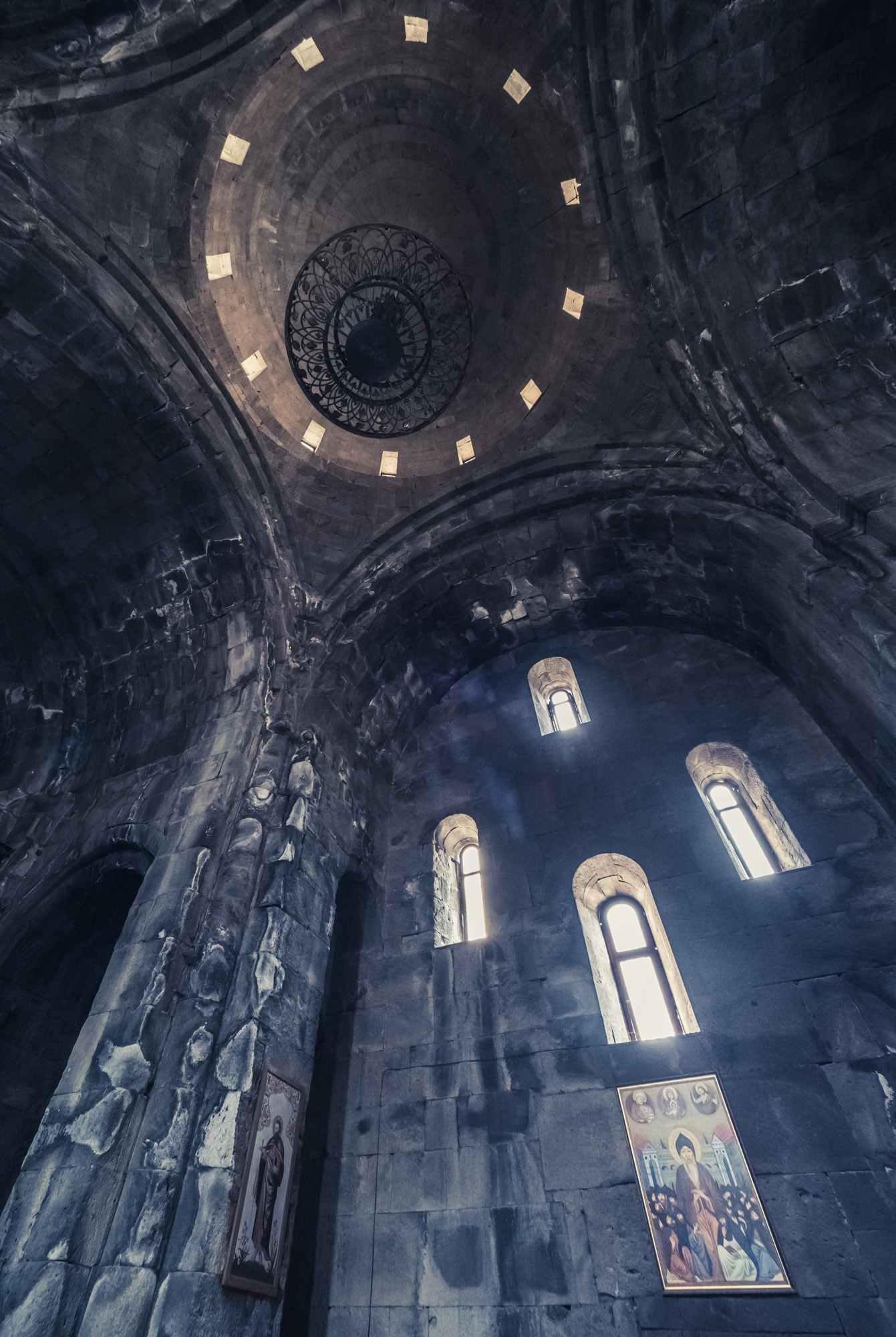
Interior
The inside looking towards the dome.
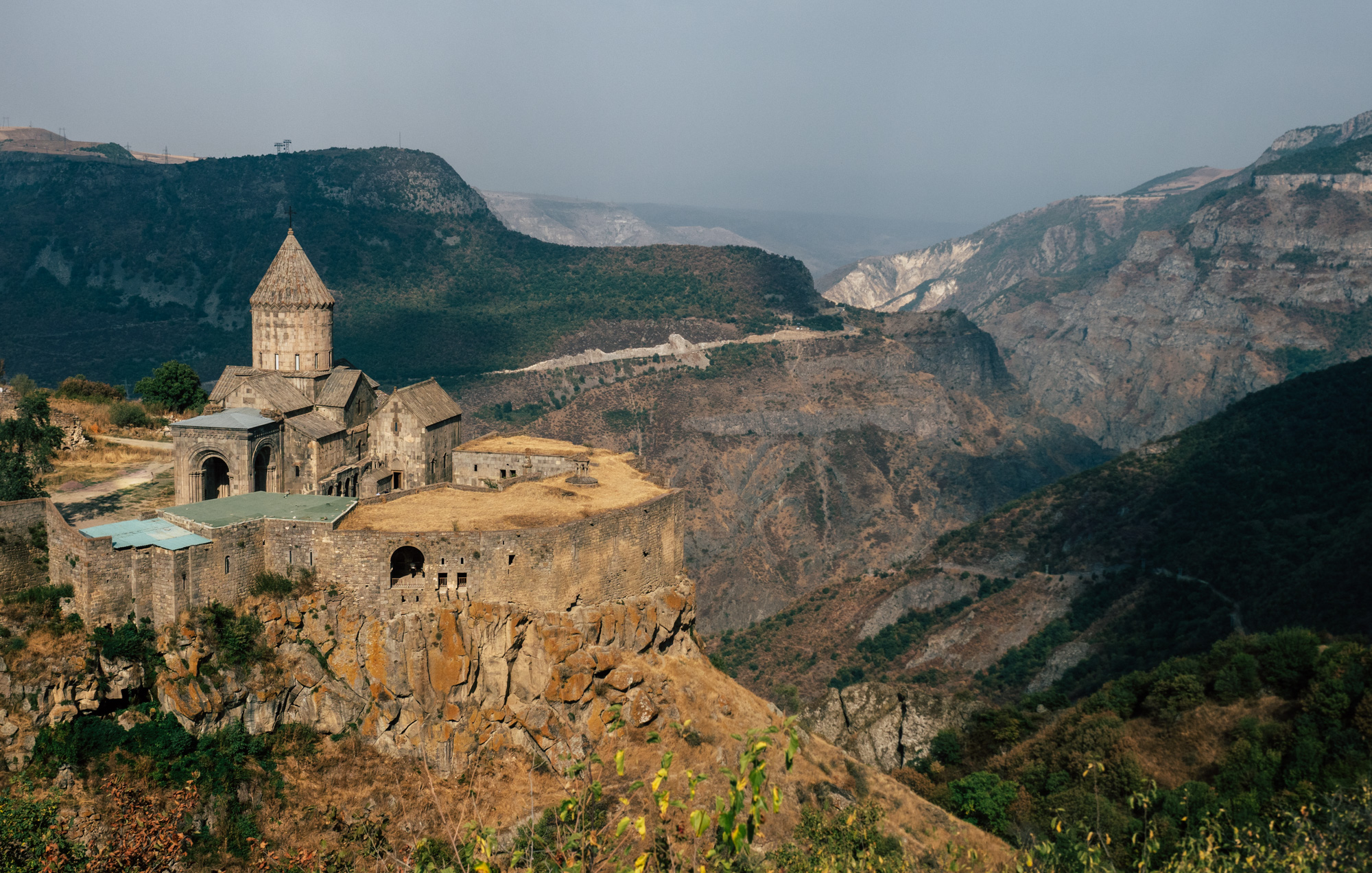
Location
The monastery can be reached by the world's longest reversing cable car, crossing all the way to the opposite mountains.
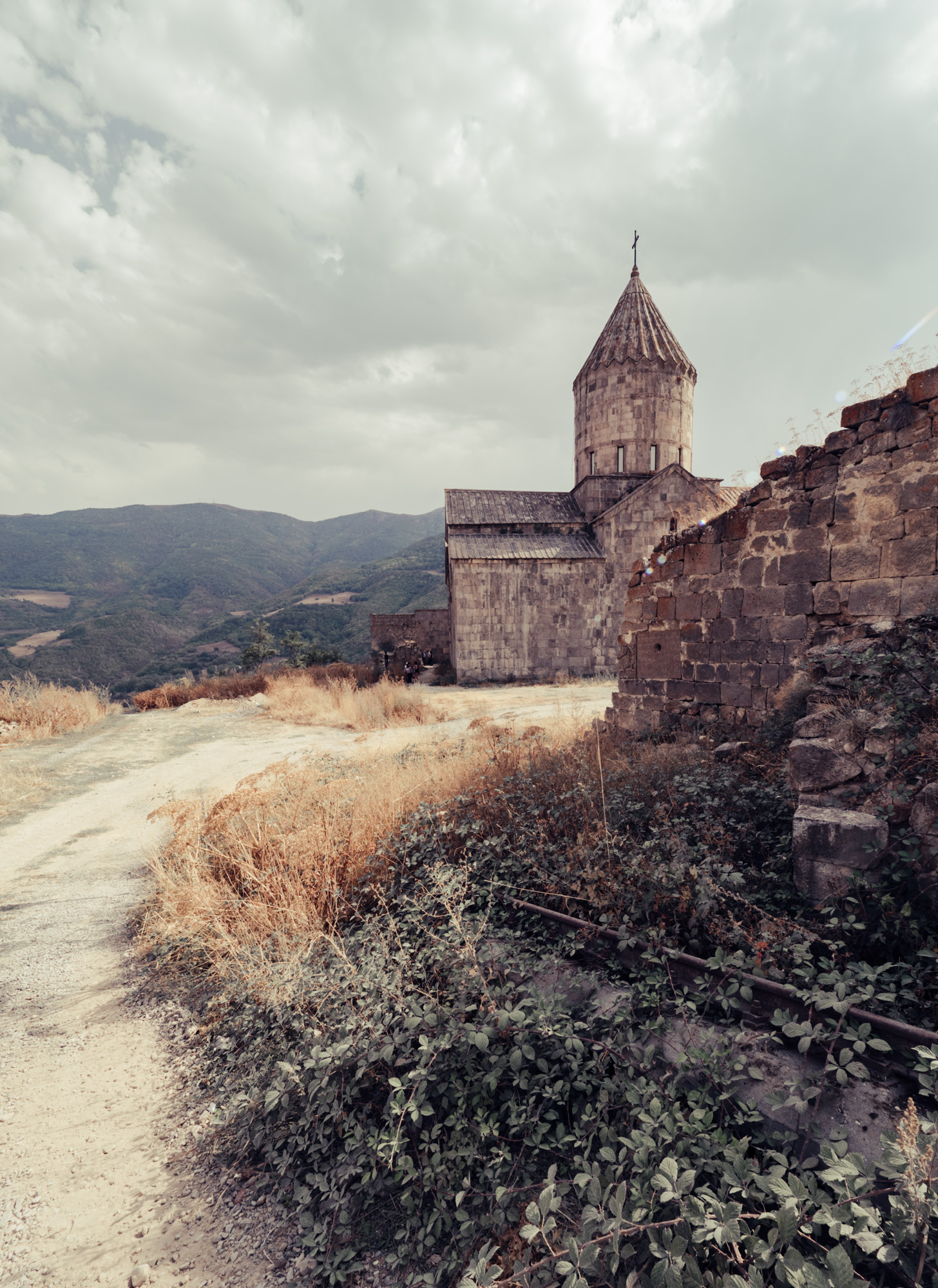
Side view
The location of the monastery and the view around it are truly breathtaking.
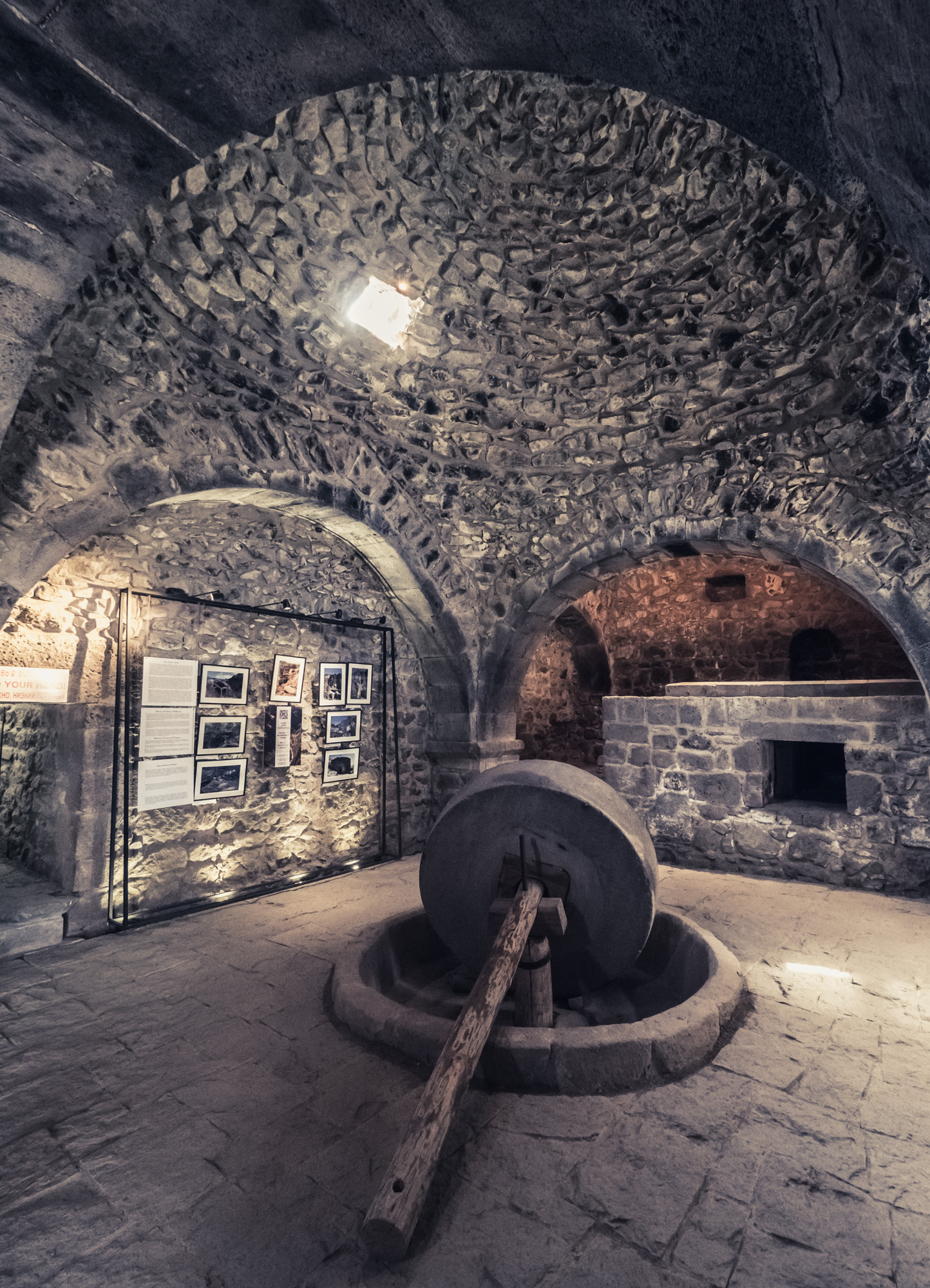
Olive Press
The restored olive press in the monastery and some of its artifacts.
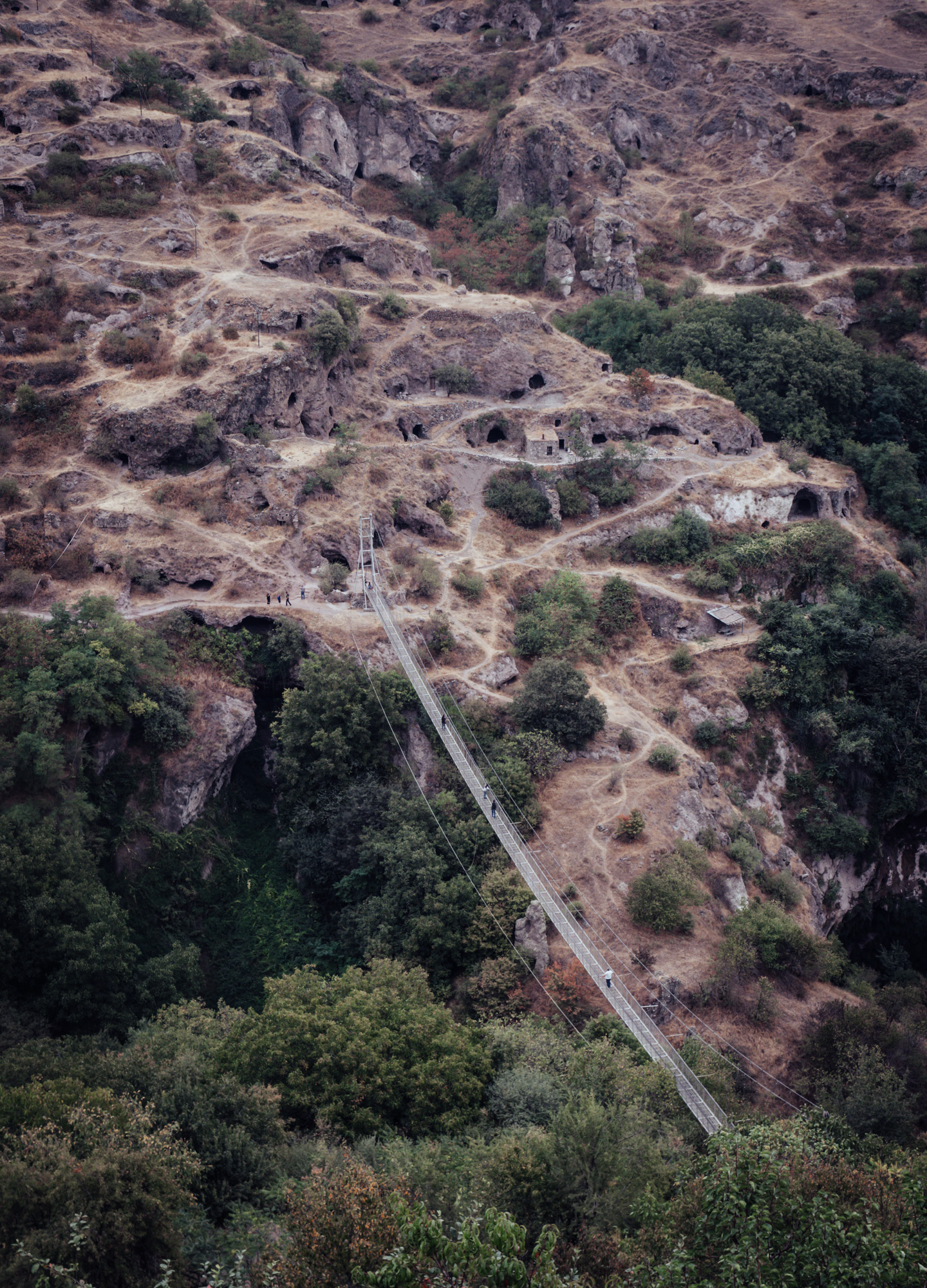
Khndzoresk
The stone city, with its artificial caves.

Crossing
This rope bridge crosses the canyon from the other side to the caves.

Renovations
The view is only spoilt by some ongoing renovations on the monastery buildings. Necessary evil, given their age.

View
Another view of the whole area.

Eerie
Old Khdzoresk Church in between the caves.
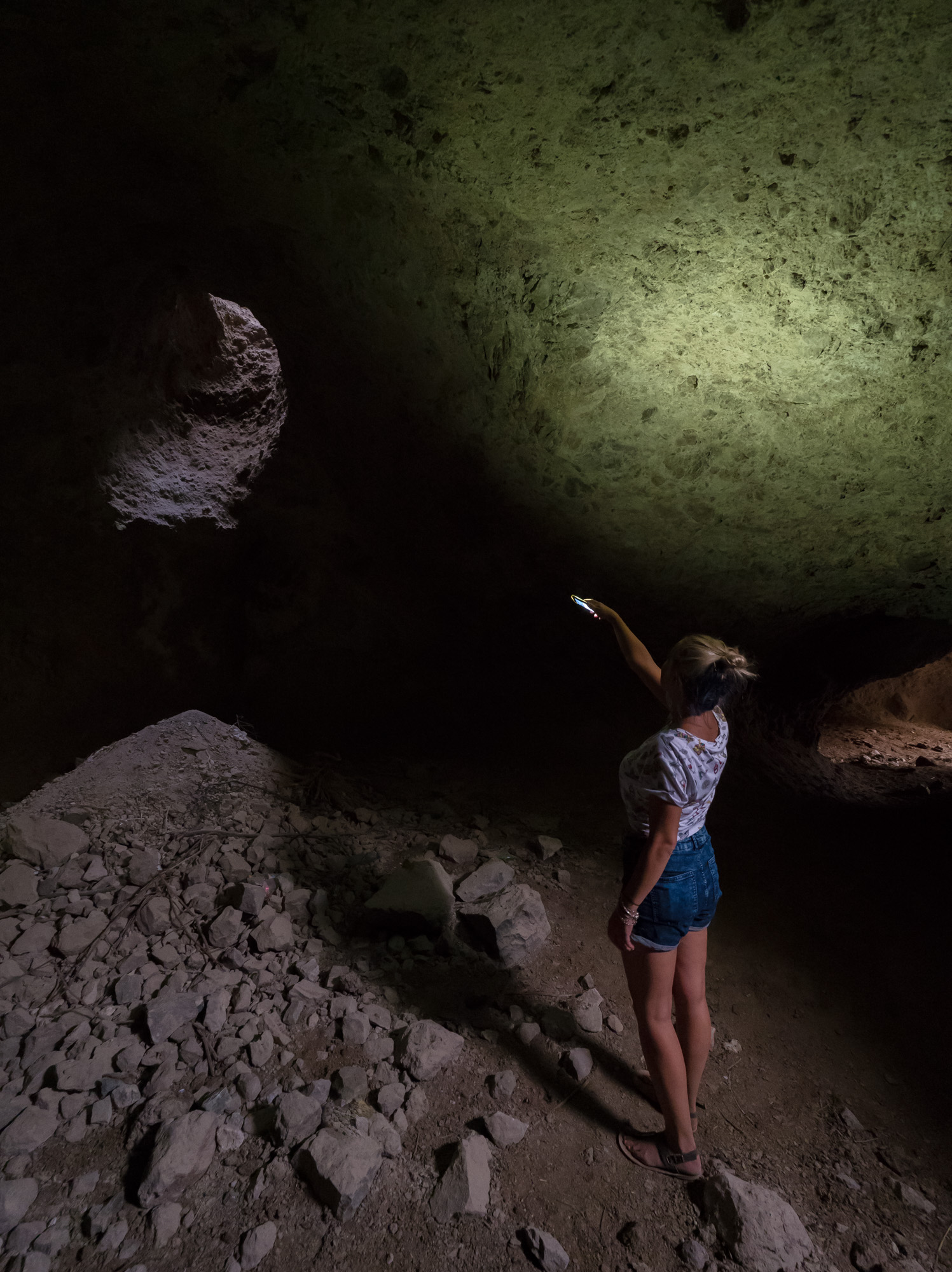
Caves
The caves were inhabited until the 1950s.

Baker Street
Entrance to a bar in Yerevan.
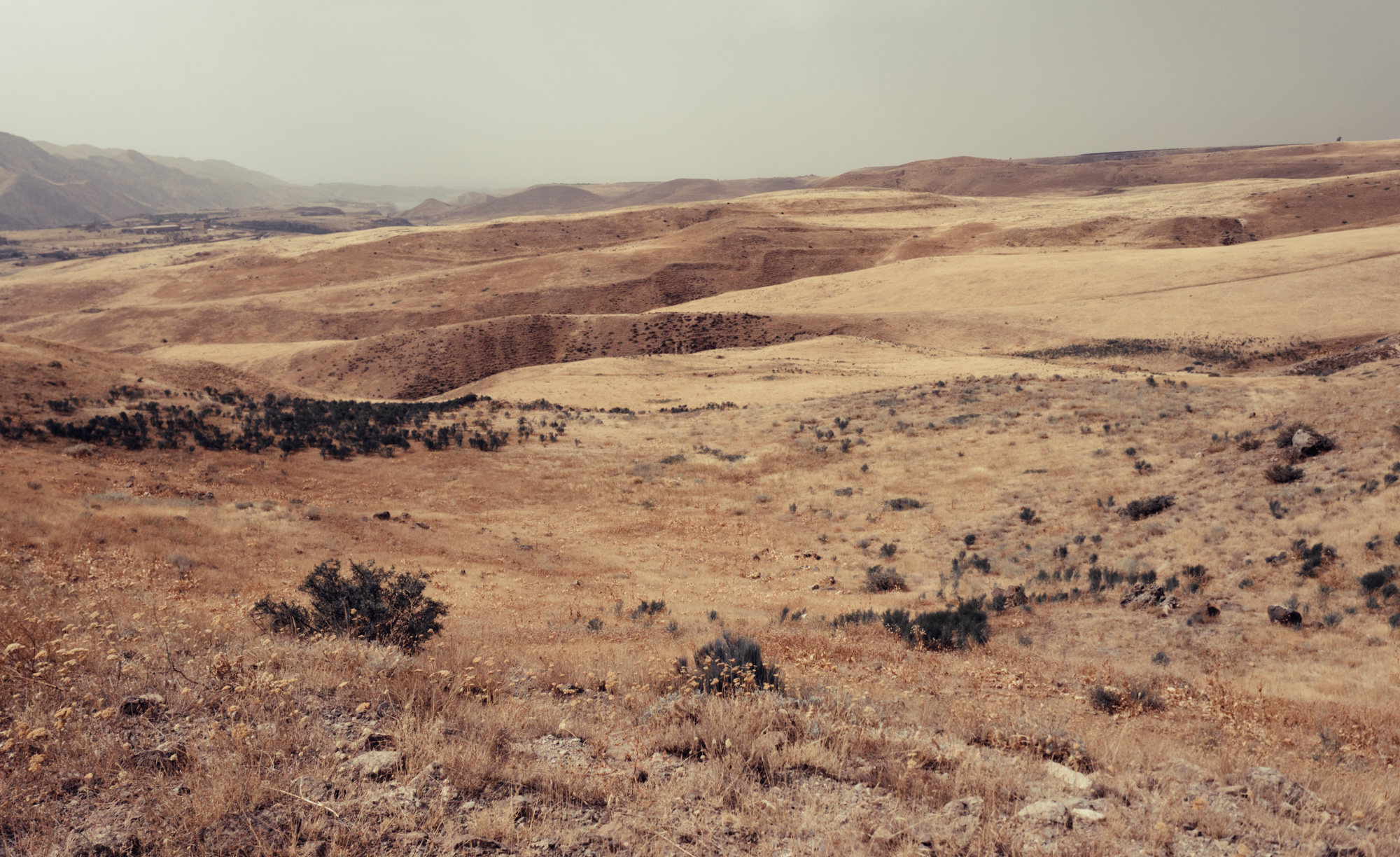
Landscapes
The barren brown autumn landscape had a very special atmosphere.
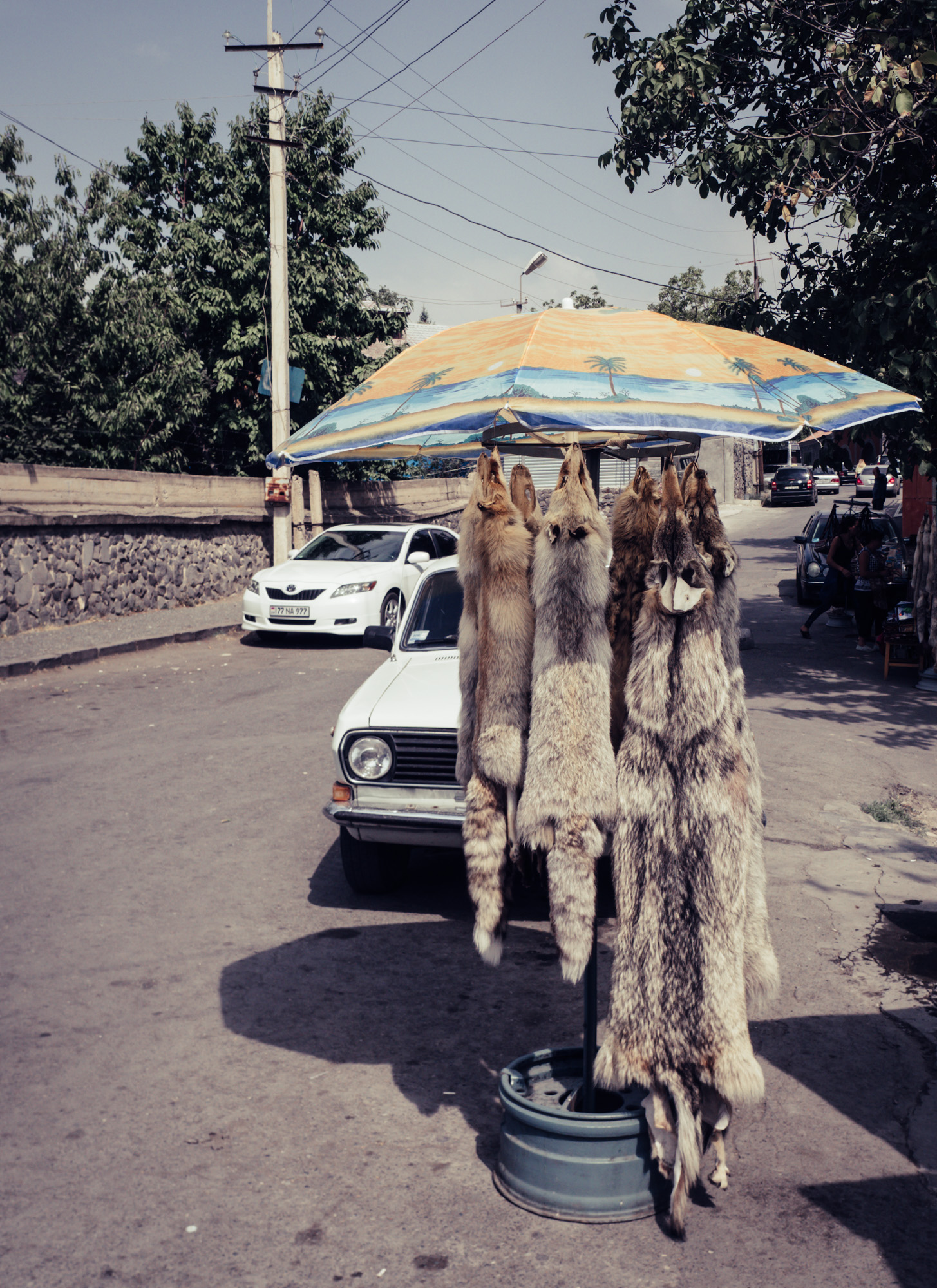
Sad sights
Not uncommon.
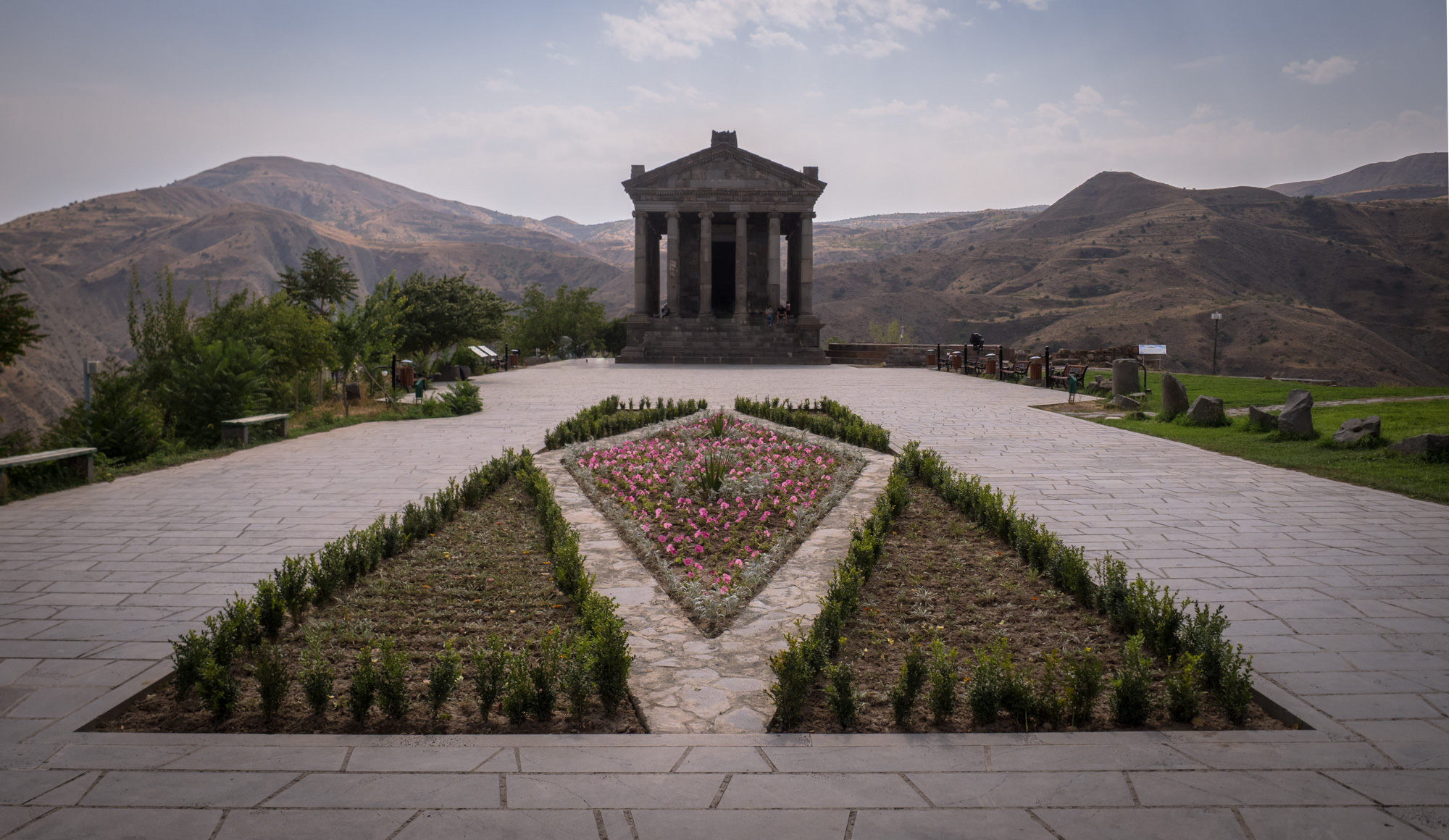
The Temple of Garni
The 2000 year old temple is the only standing Greco-Roman colonnaded building in Armenia
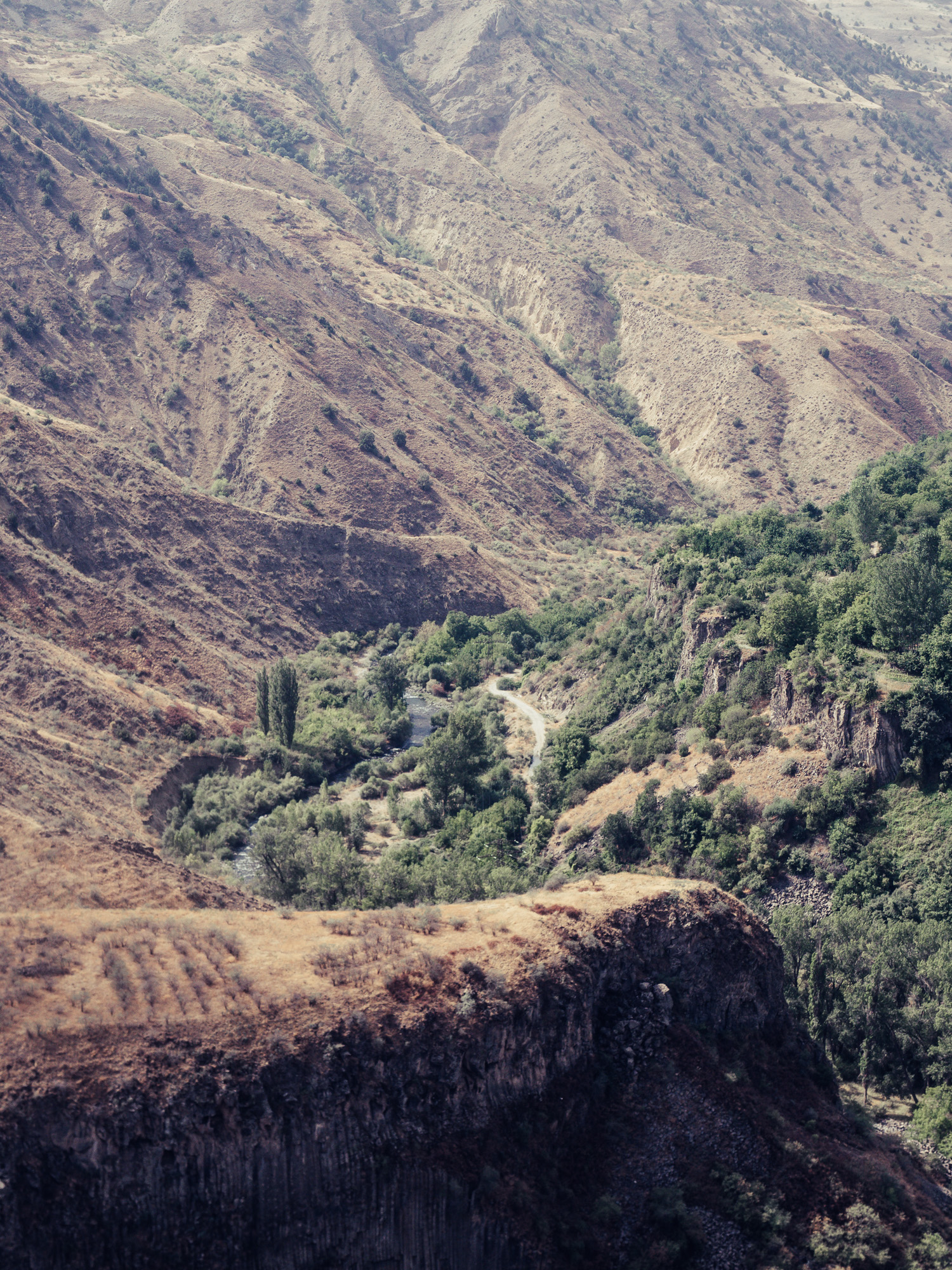
Gorge(ous)
It's located just on the cliff of this beautiful gorge.
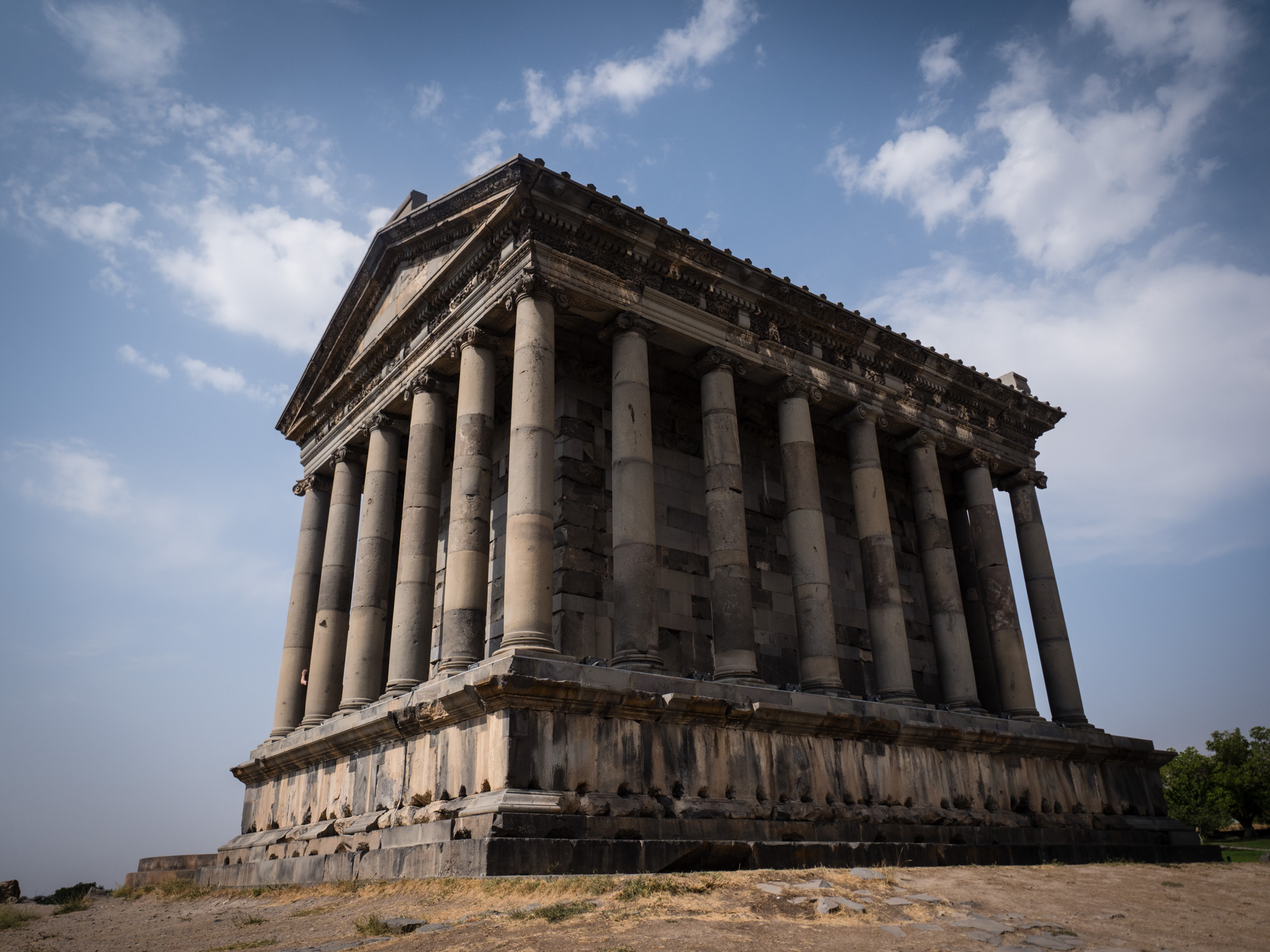
Standing
After its reconstruction in the 1970s.
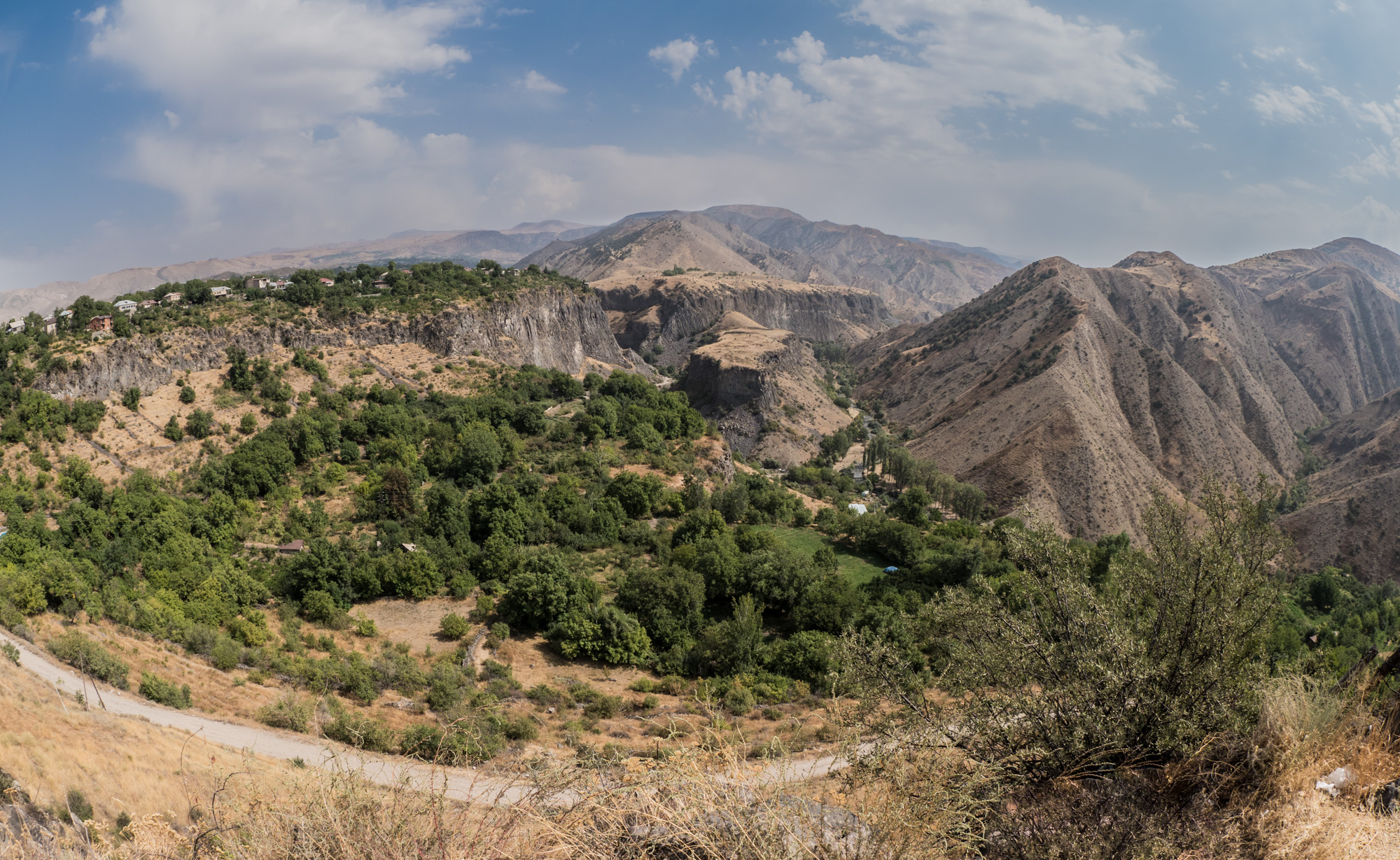
Cliffs
Overlooking the surrounding landscape.
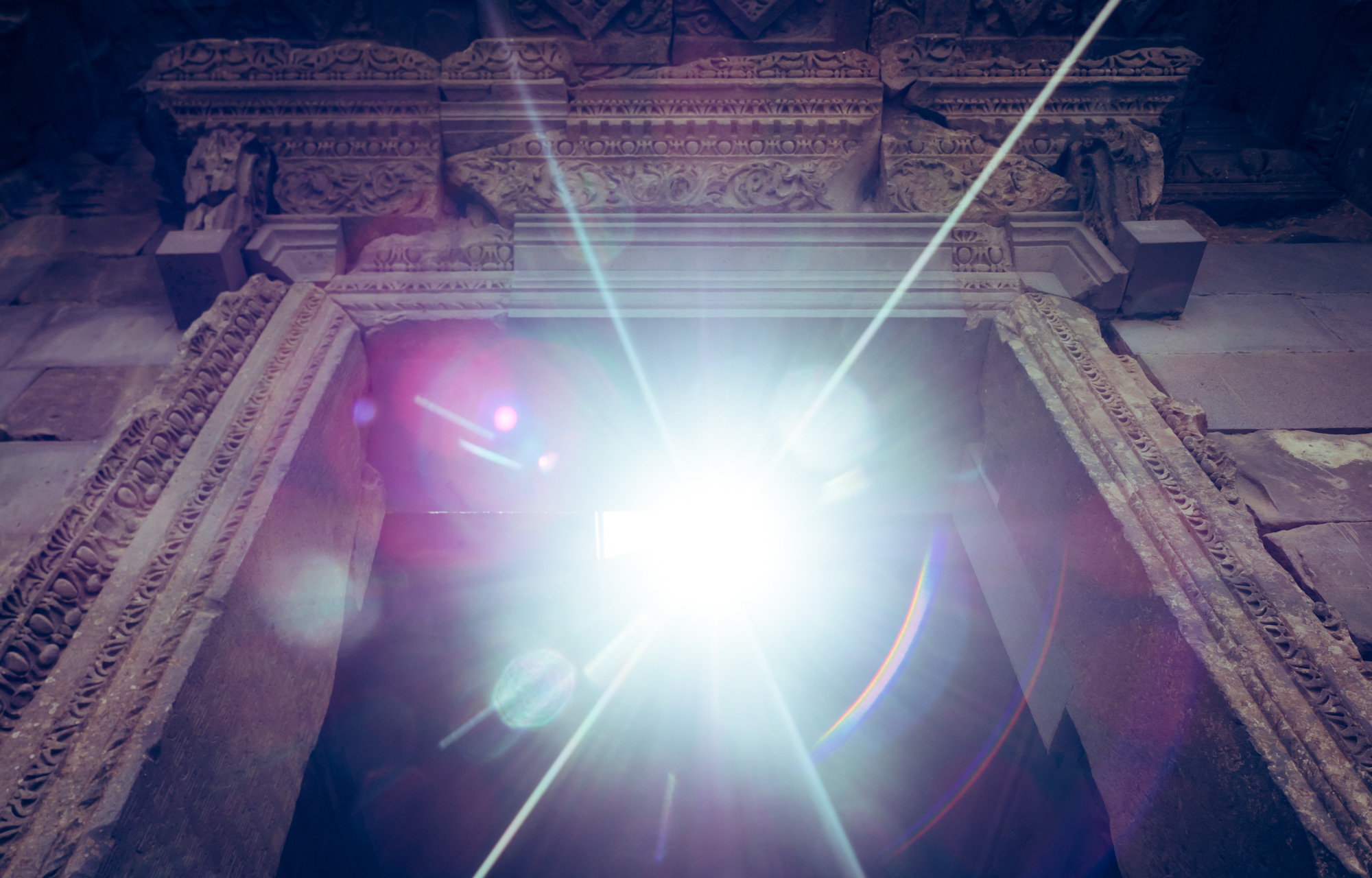
Light
The roof has a whole where the sun shines throgh in the centre, creating some interesting effects.
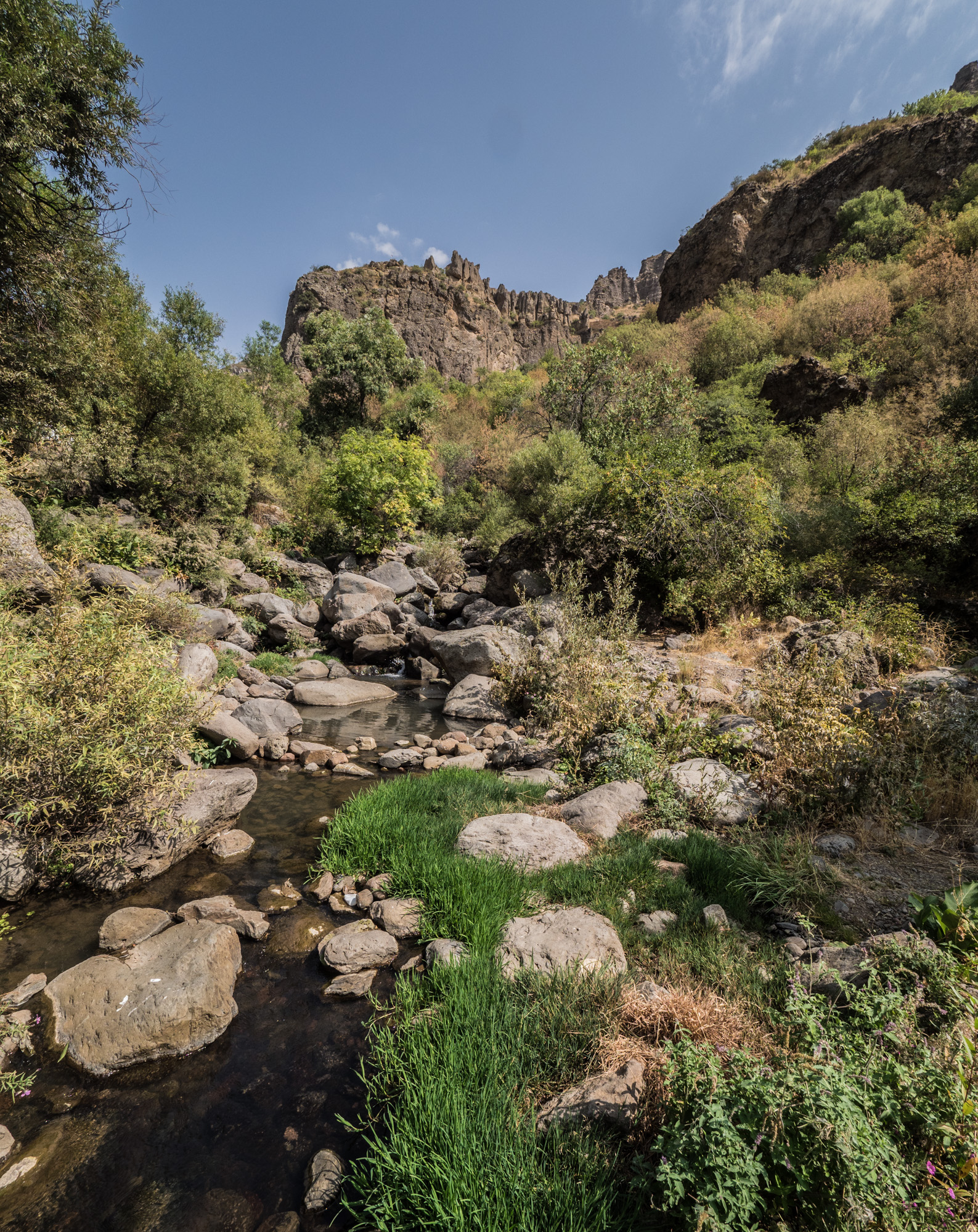
Nature
While there was not a lot of greenery left from the summer, the rivers kept some of the landscape full of colour.
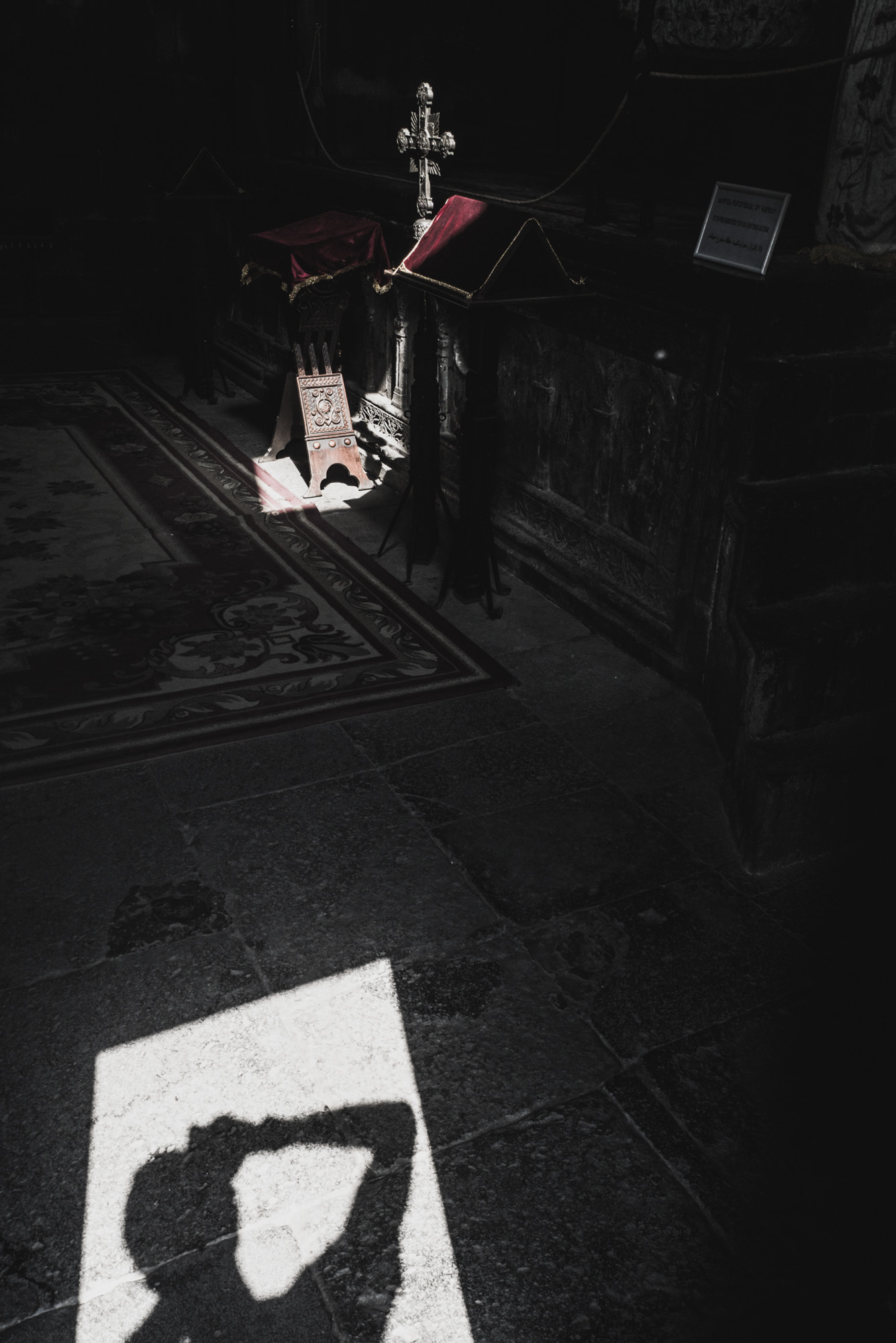
Geghard Interiors
Lucky moment as the sun was shining through the door on the cross.
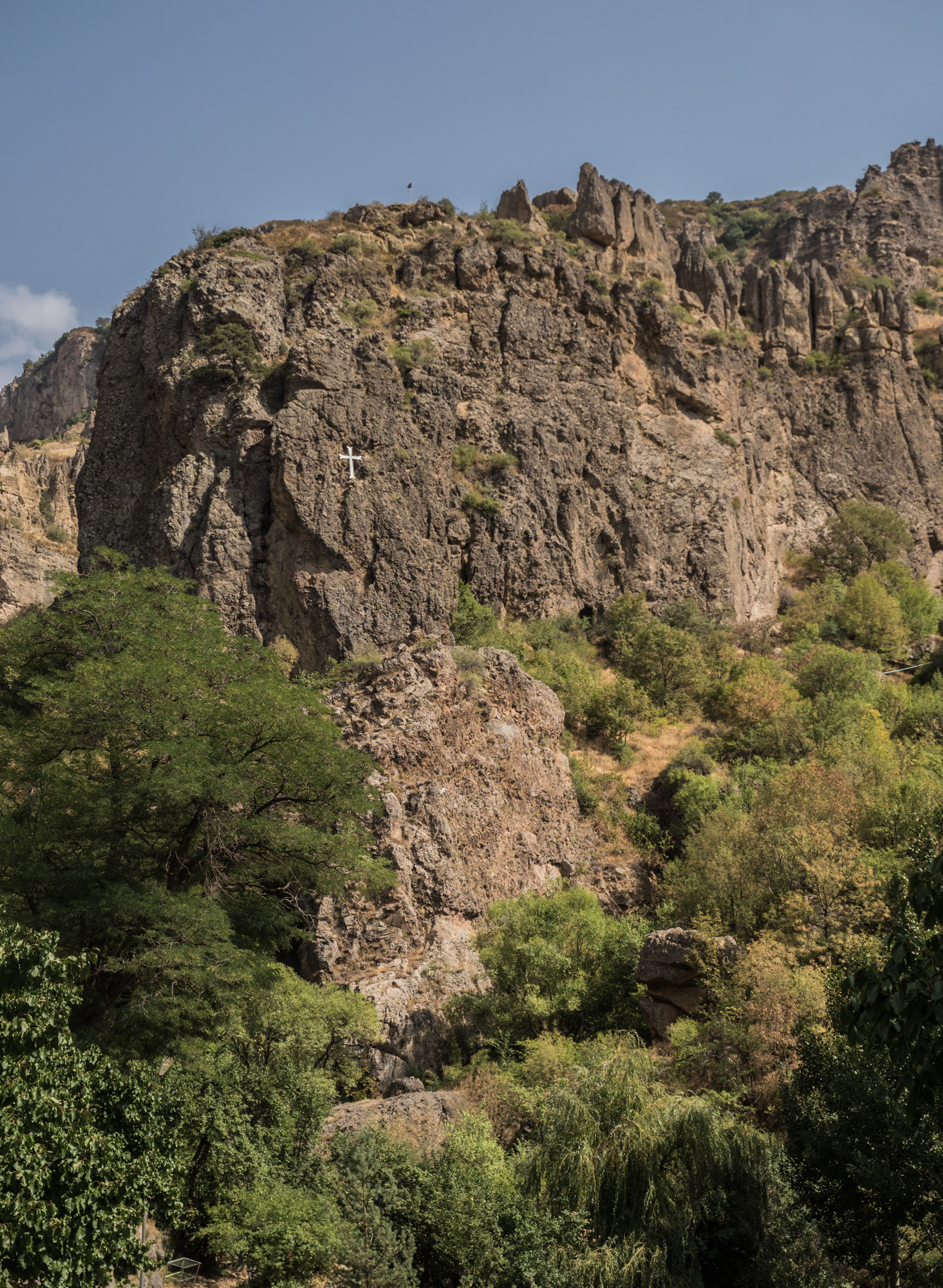
Cross
The cross in the rocks near Geghard monastery.
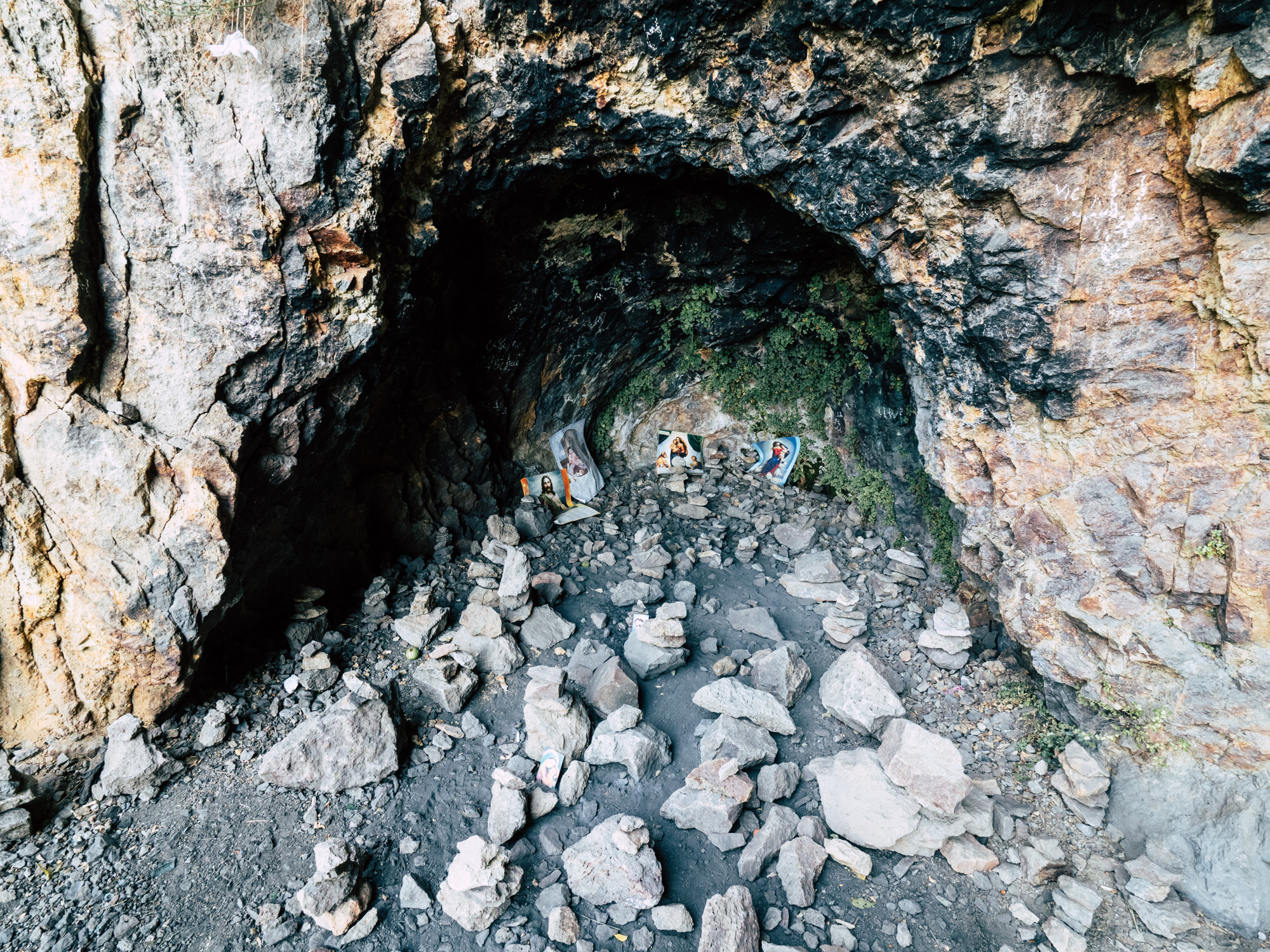
Artifacts
The mountains around the monastery feature various small chapels another other remnants attracting pilgrims.

Geghard
The monastery was built around a spring in the mountains - part of it now runs through the actual church building.
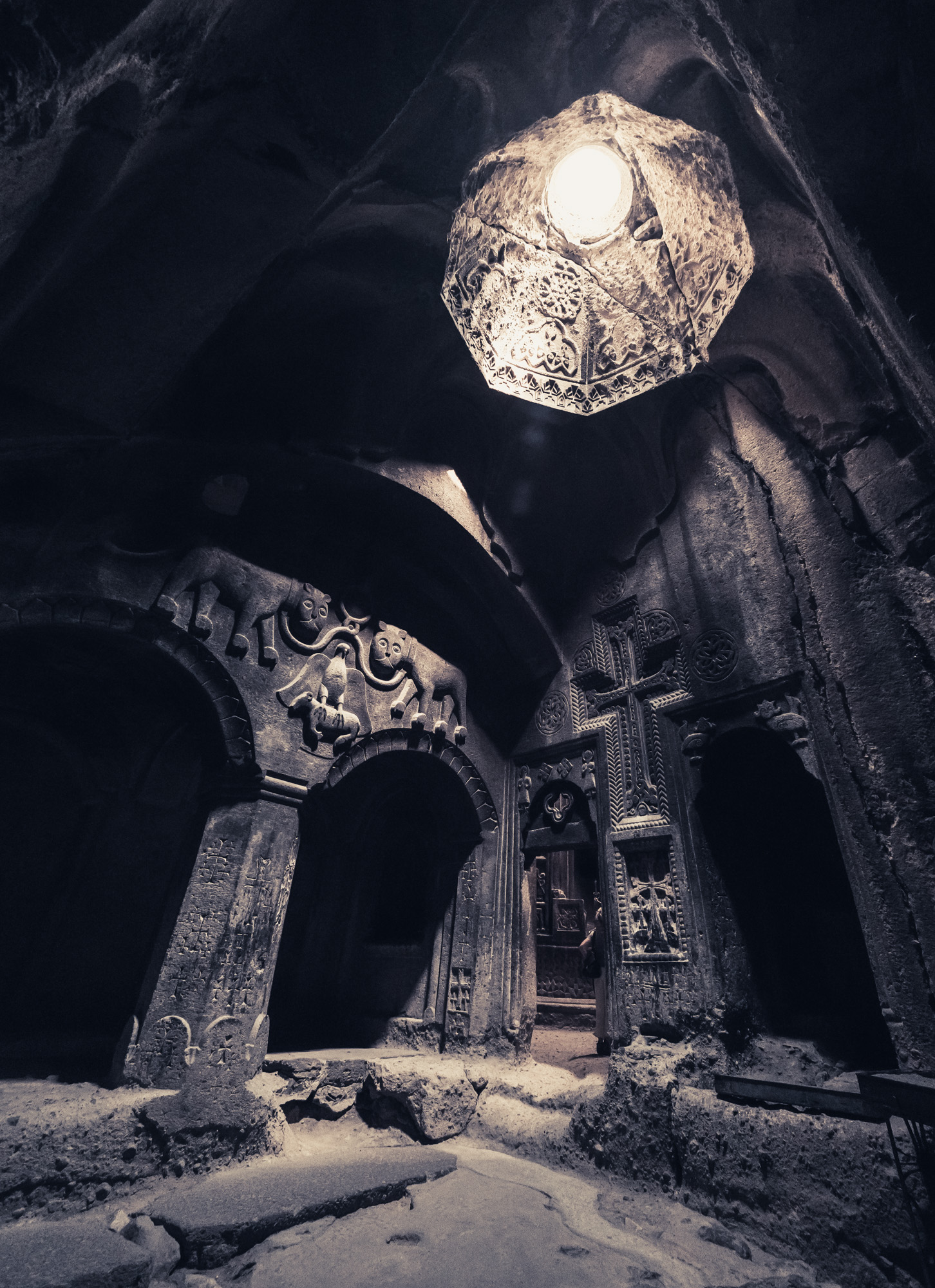
Jamatun
The rock cut champer.
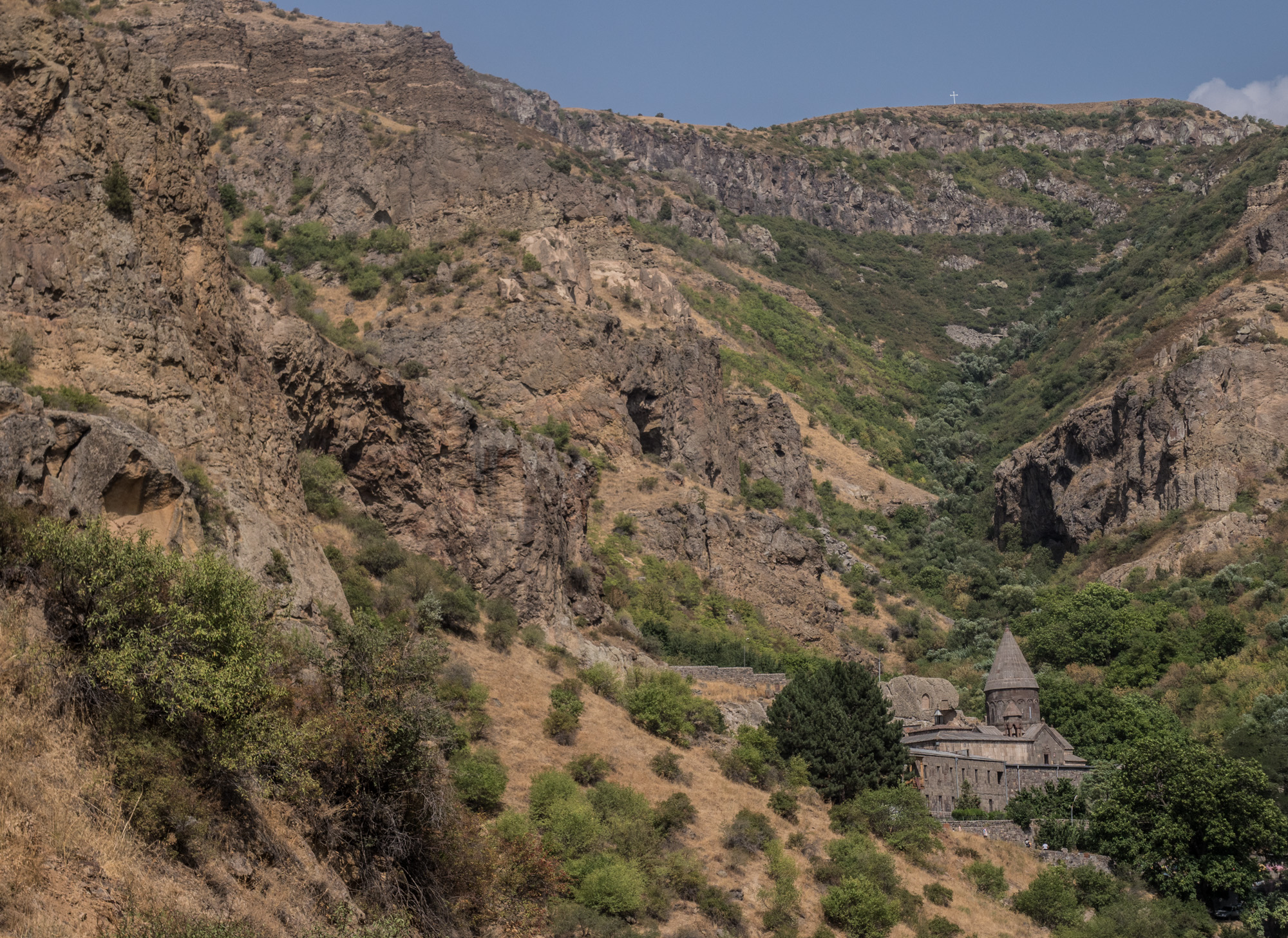
Location
The monastery literally sits in the mountain.
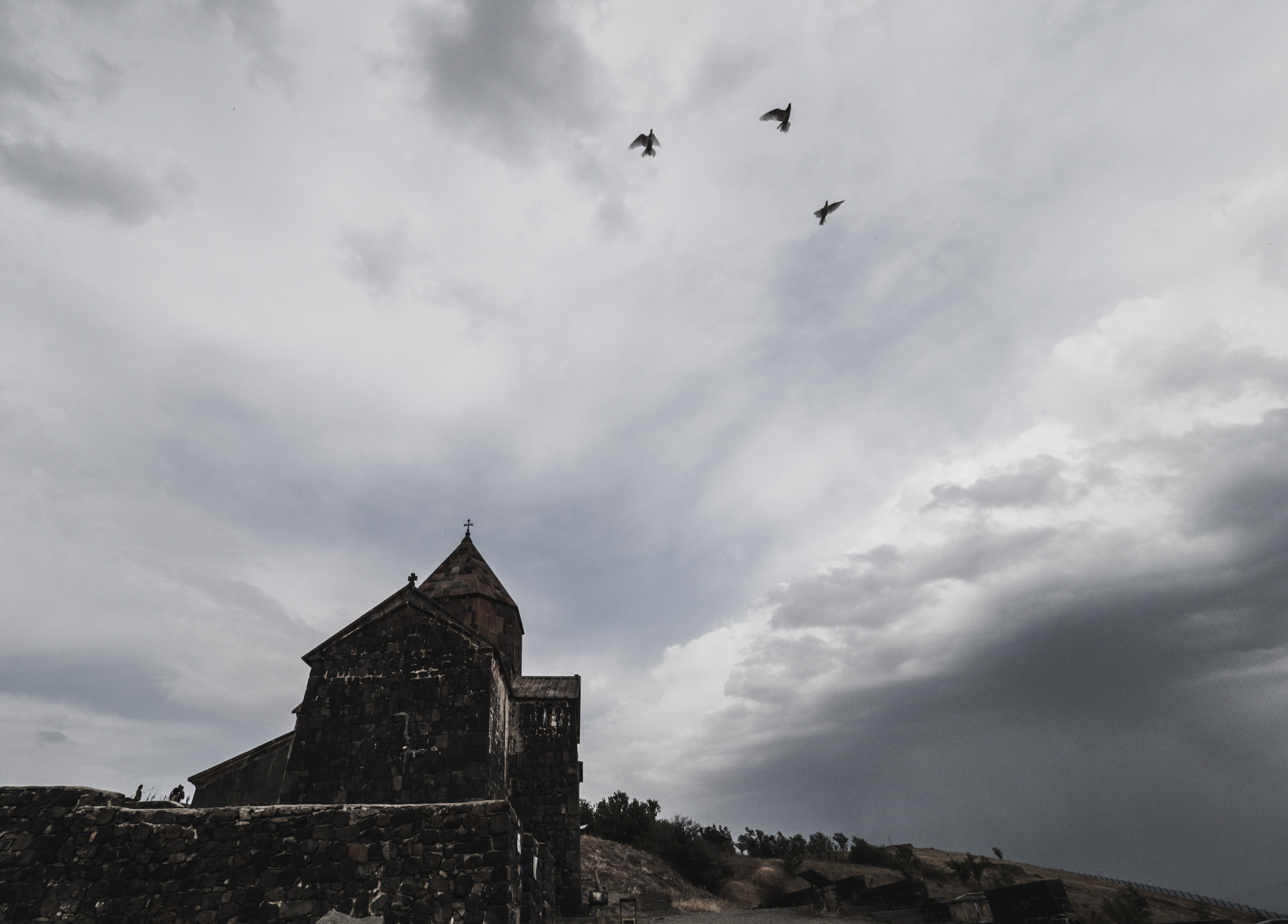
Birds
A view of the Sevanavank monastery at Lake Sevank, north of Yerevan.
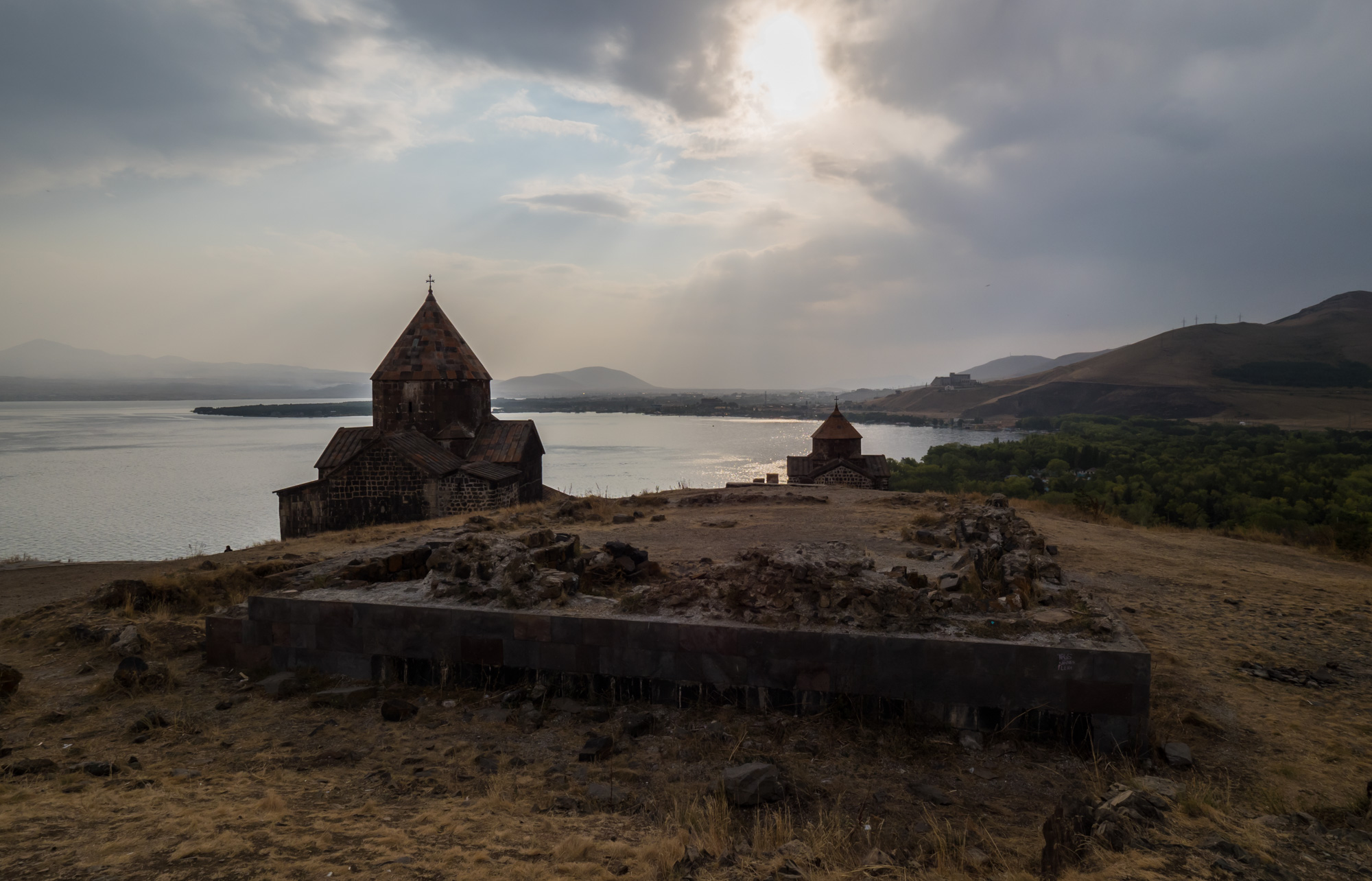
Sevanavank
With its two churches Surp Arakelots (left) and Surp Astvatsatsin (right).
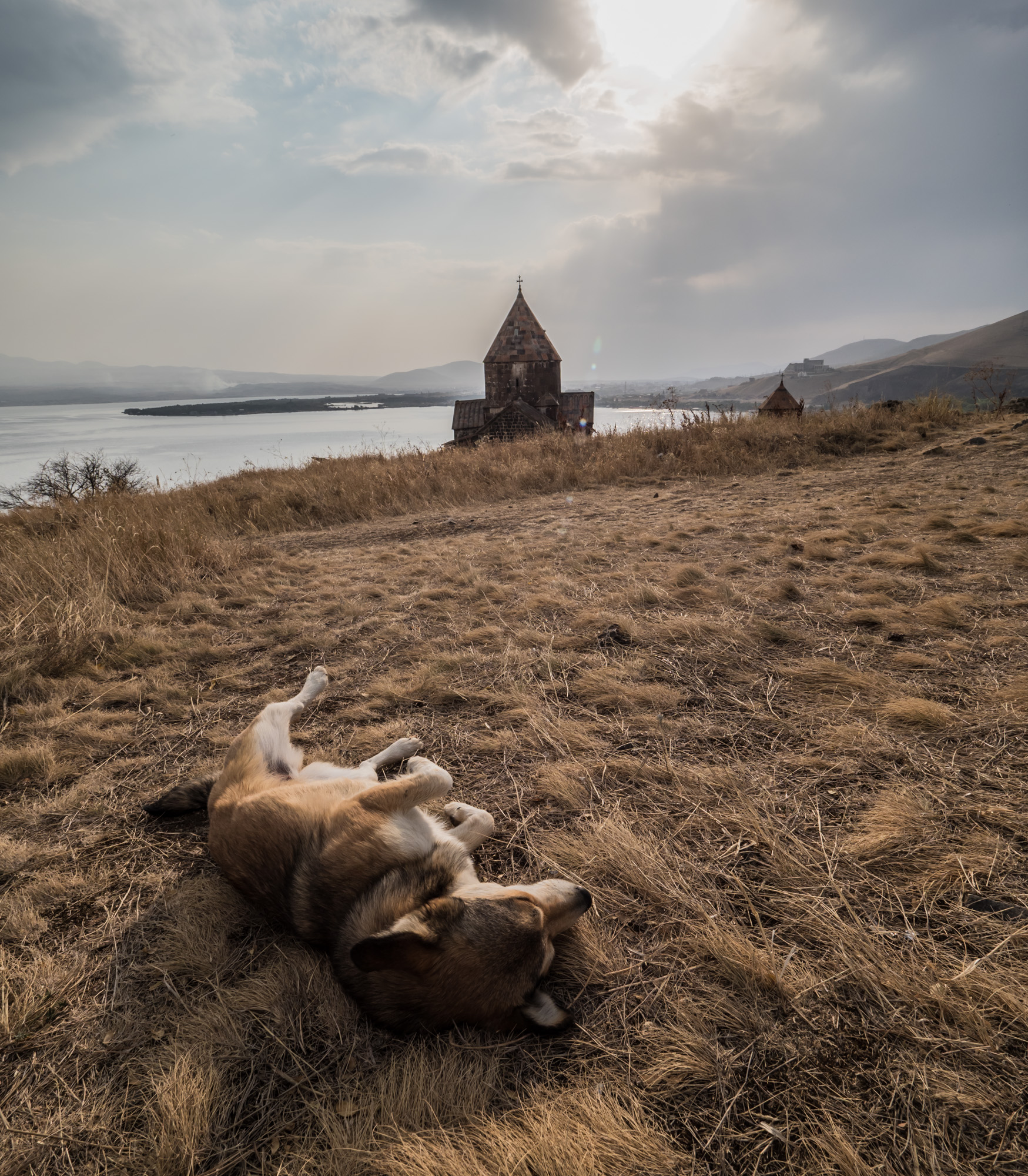
Views
The monastery used to be on an island, but since then the water level fell to turn it into a peninsula.
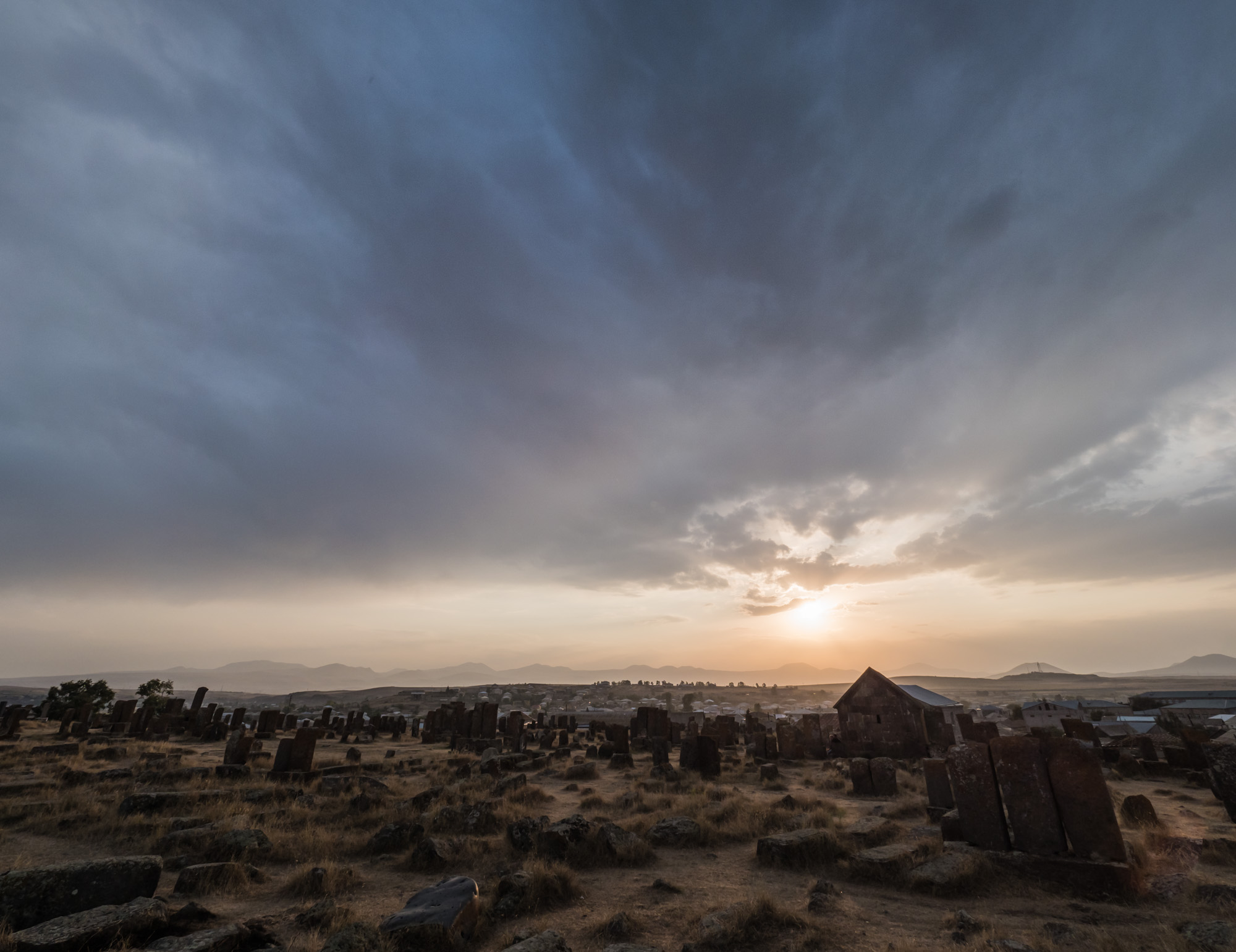
Noratus cemetery
With Khachkars (cross stones) dating back to the 10th century.

Chapel
There are two small chapels on the cemetary.

Company
We were all alone - except this woman.
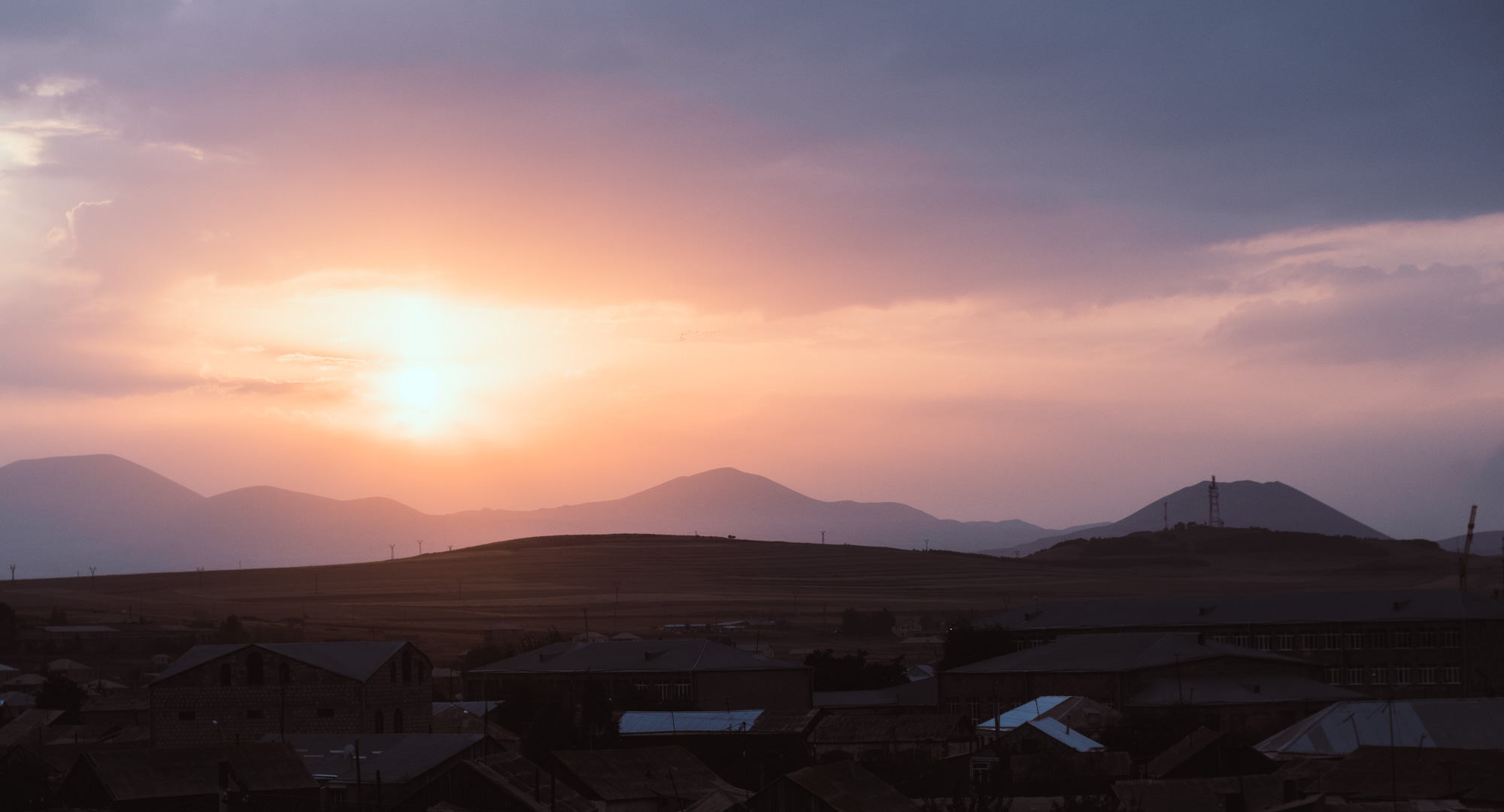
Sunset views
The view from the cemetary at sunset.

Another one...
I didn't get tired of the churches and monasteries. This one is called Hayravank, from the late 9th century.
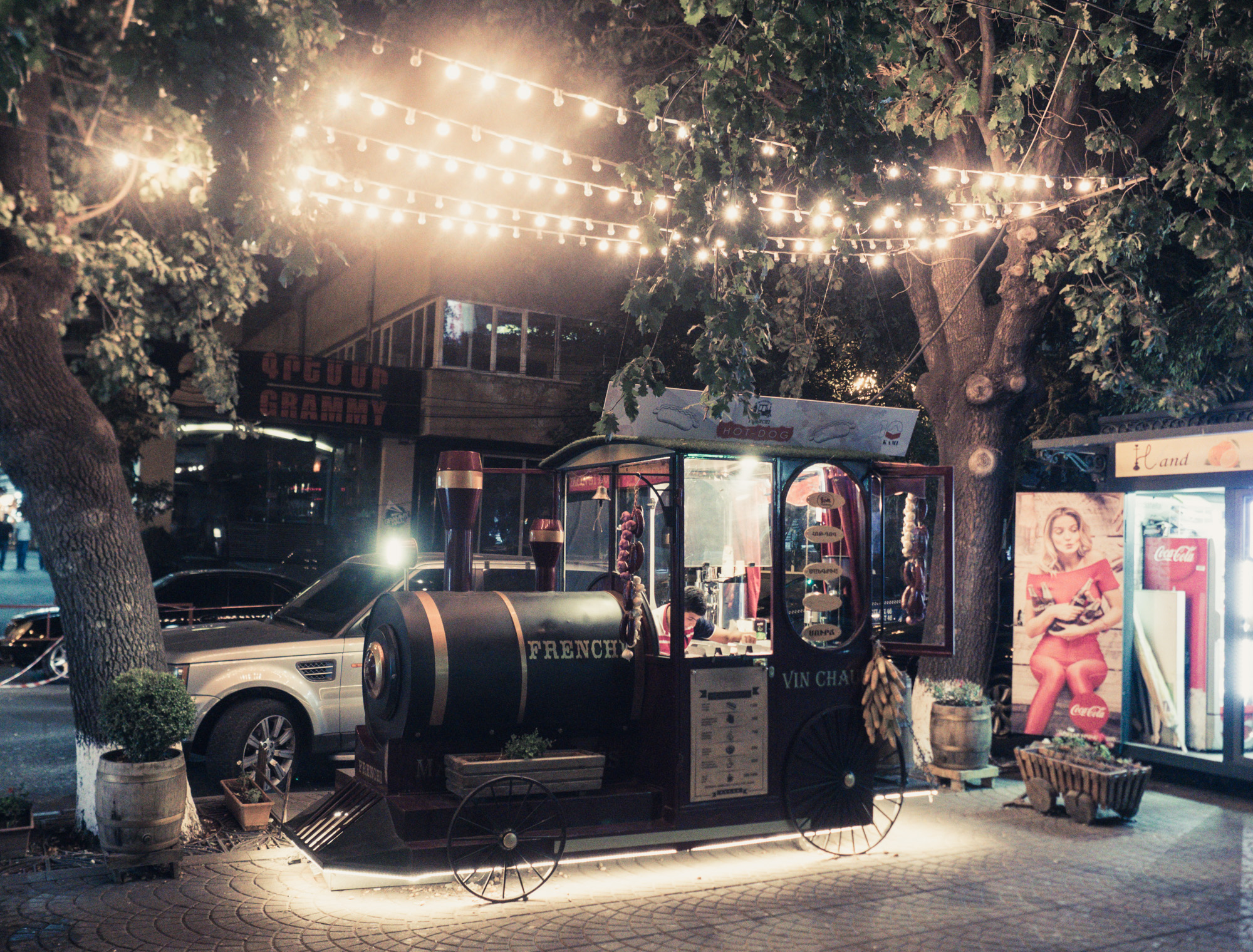
Yerevan Street Life
Was surprisingly lively.
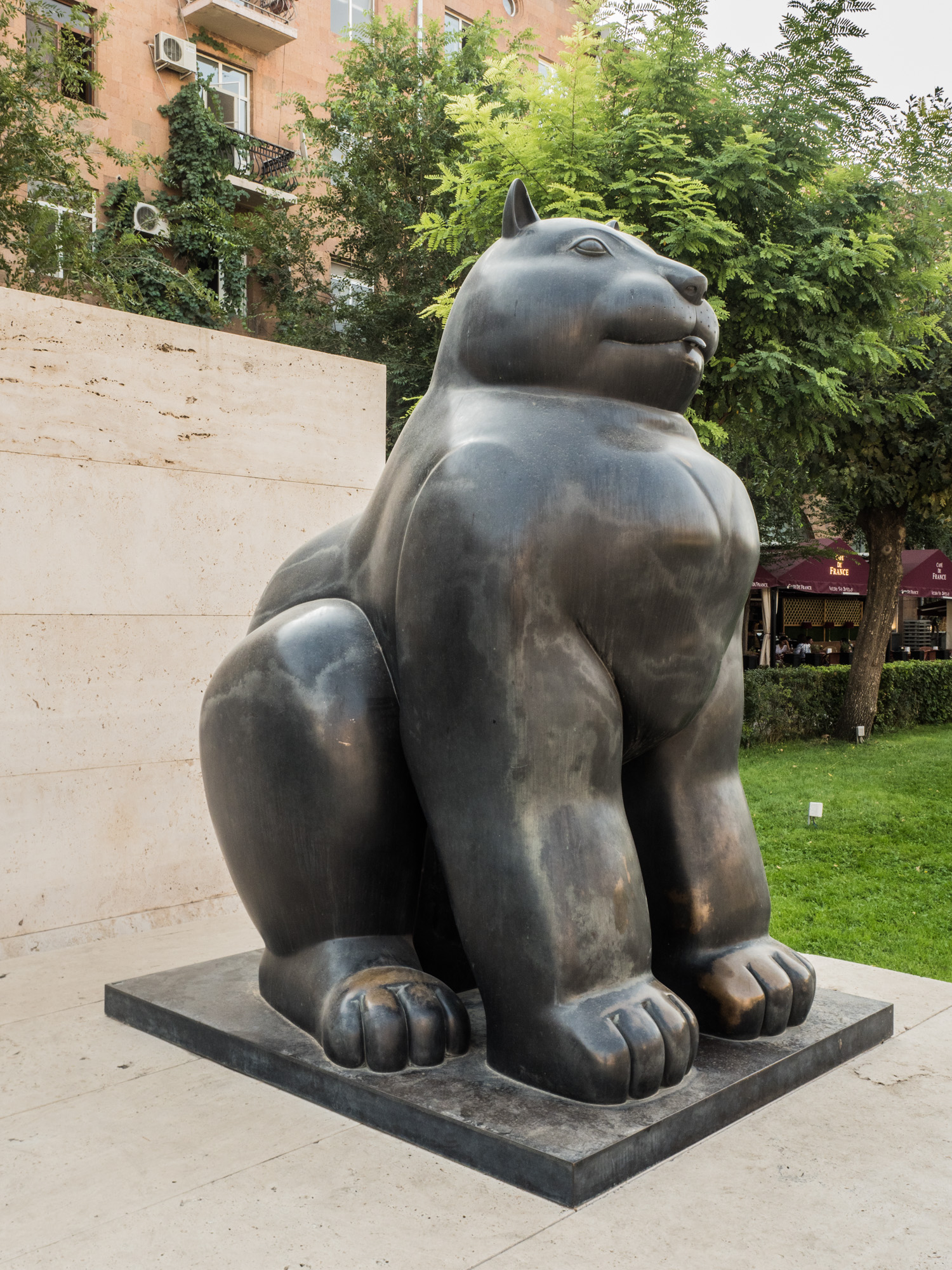
Sculpture Fernando Botero, Gatto
Or: The fat cat.
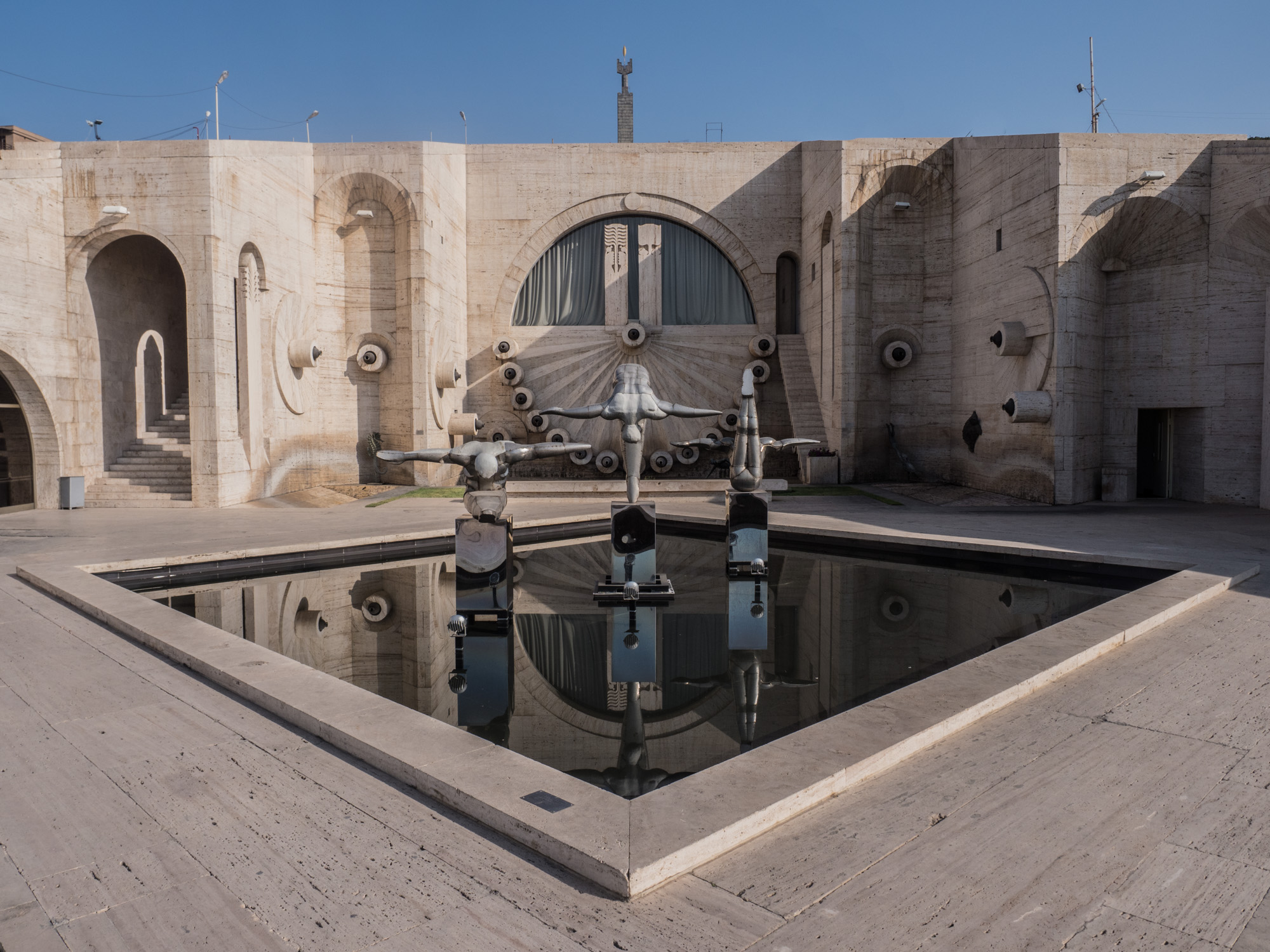
Cafesjian Center for the Arts
With its many statues and installation.
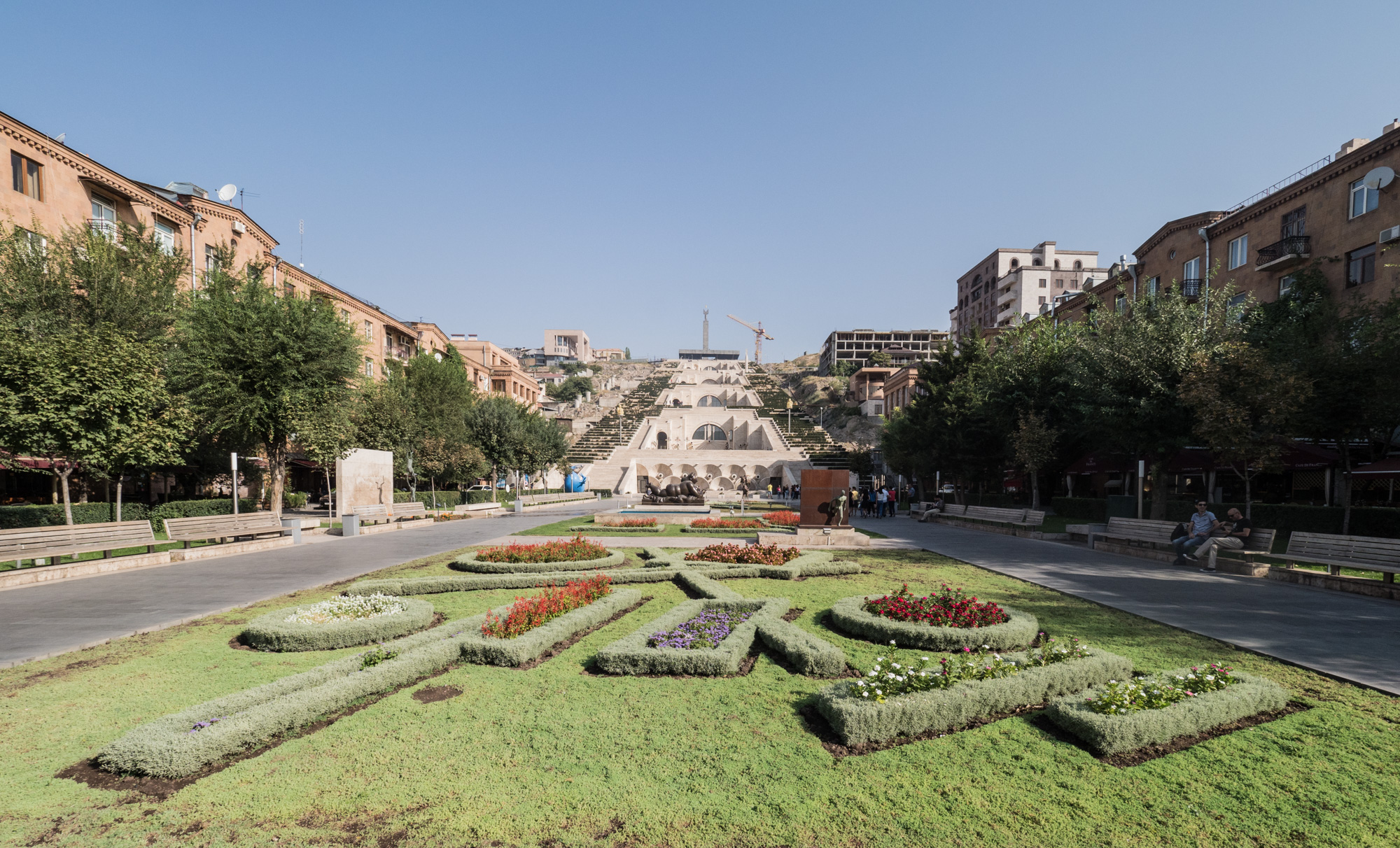
The Cascade
Seen from the bottom, with some of the Cafesjian Center for the Arts installations.
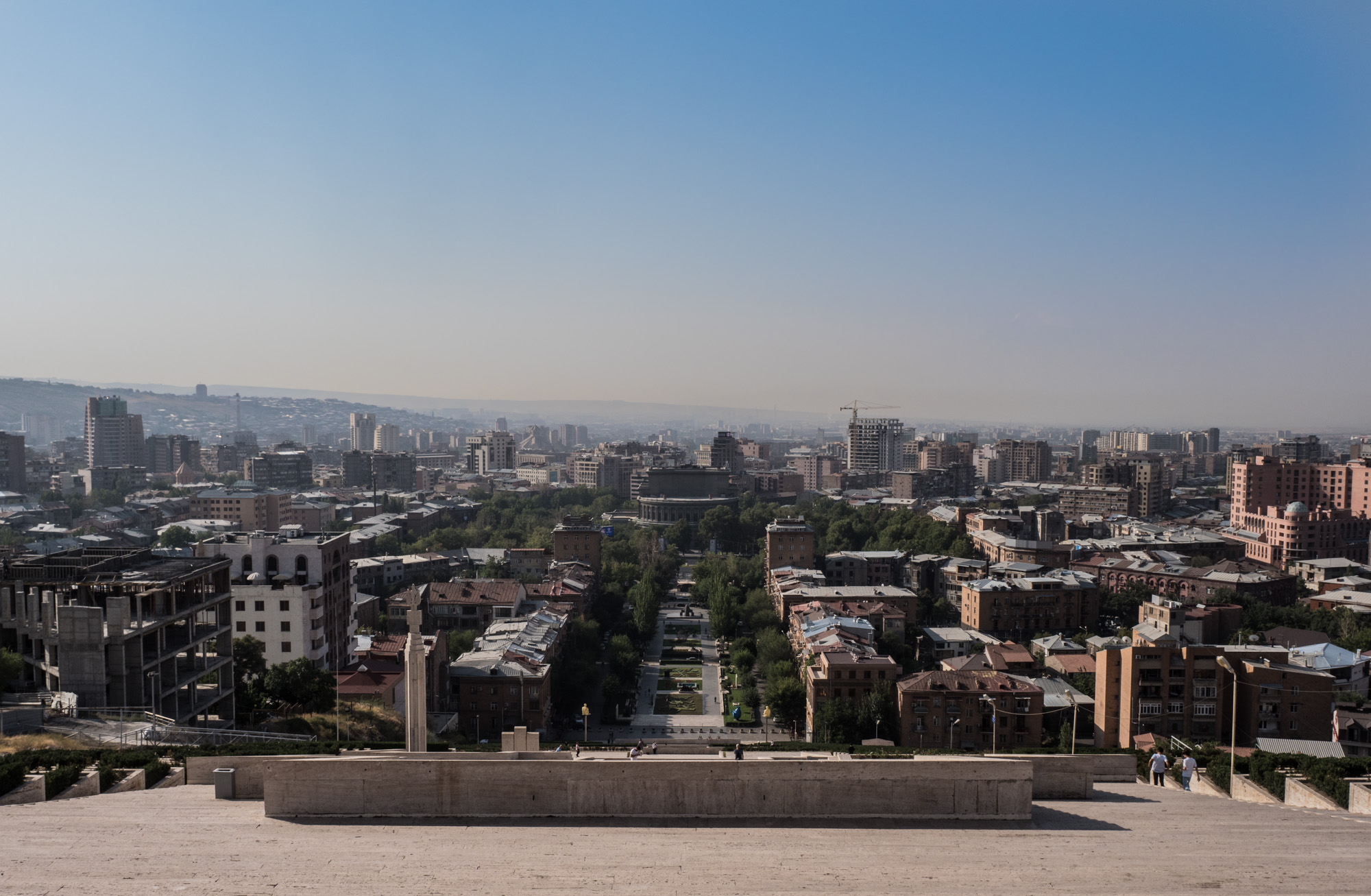
Views over Yerevan
From the Cascade. On a clear day, you get to see mount Ararat from here. No luck for me.
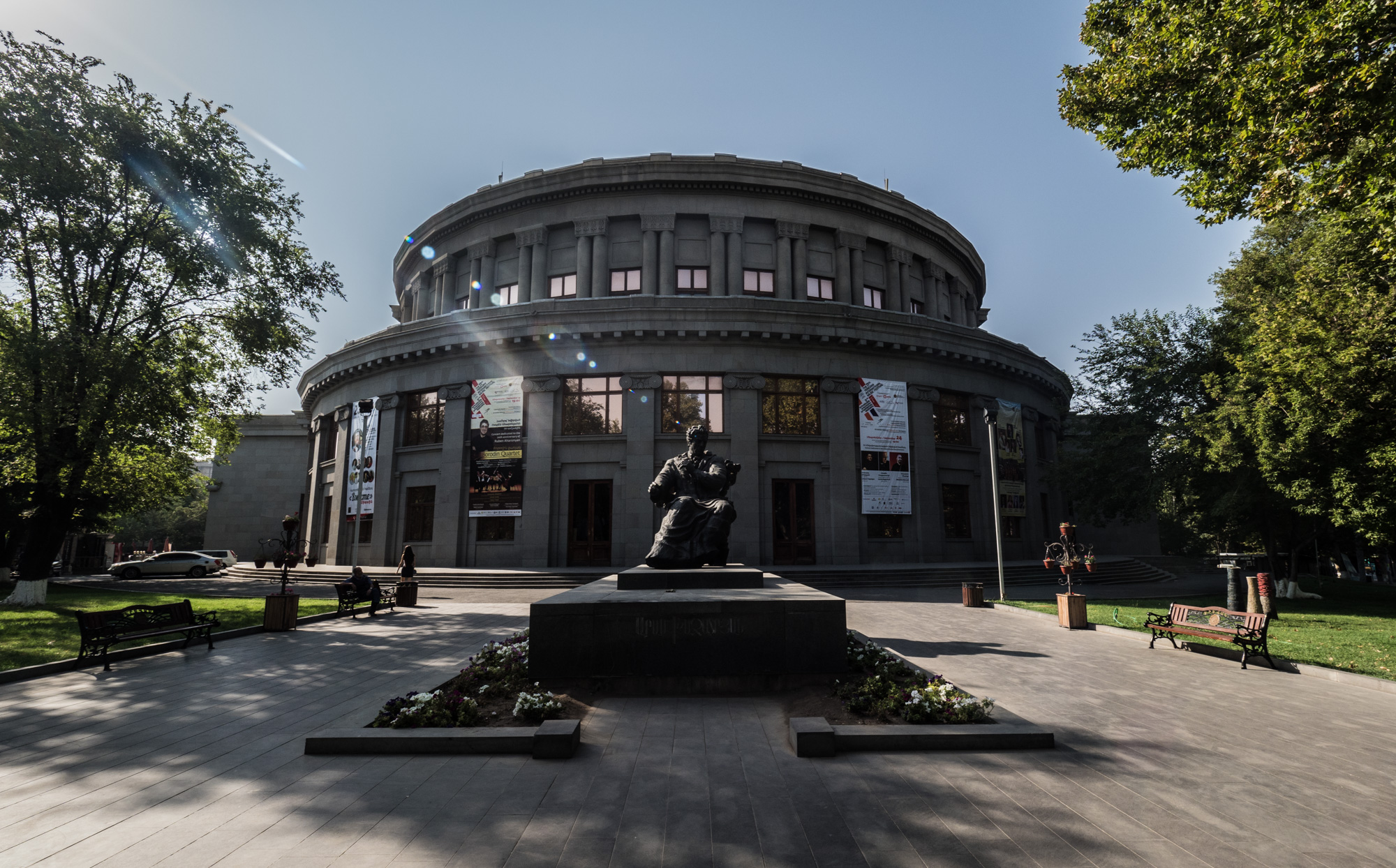
Yerevan Opera
From the northern side.

Fruits & Vegetables
Armenia is famous for them and they are on sale everywhere.

Obligatory
Need to add a photo of a real cat to the statue.
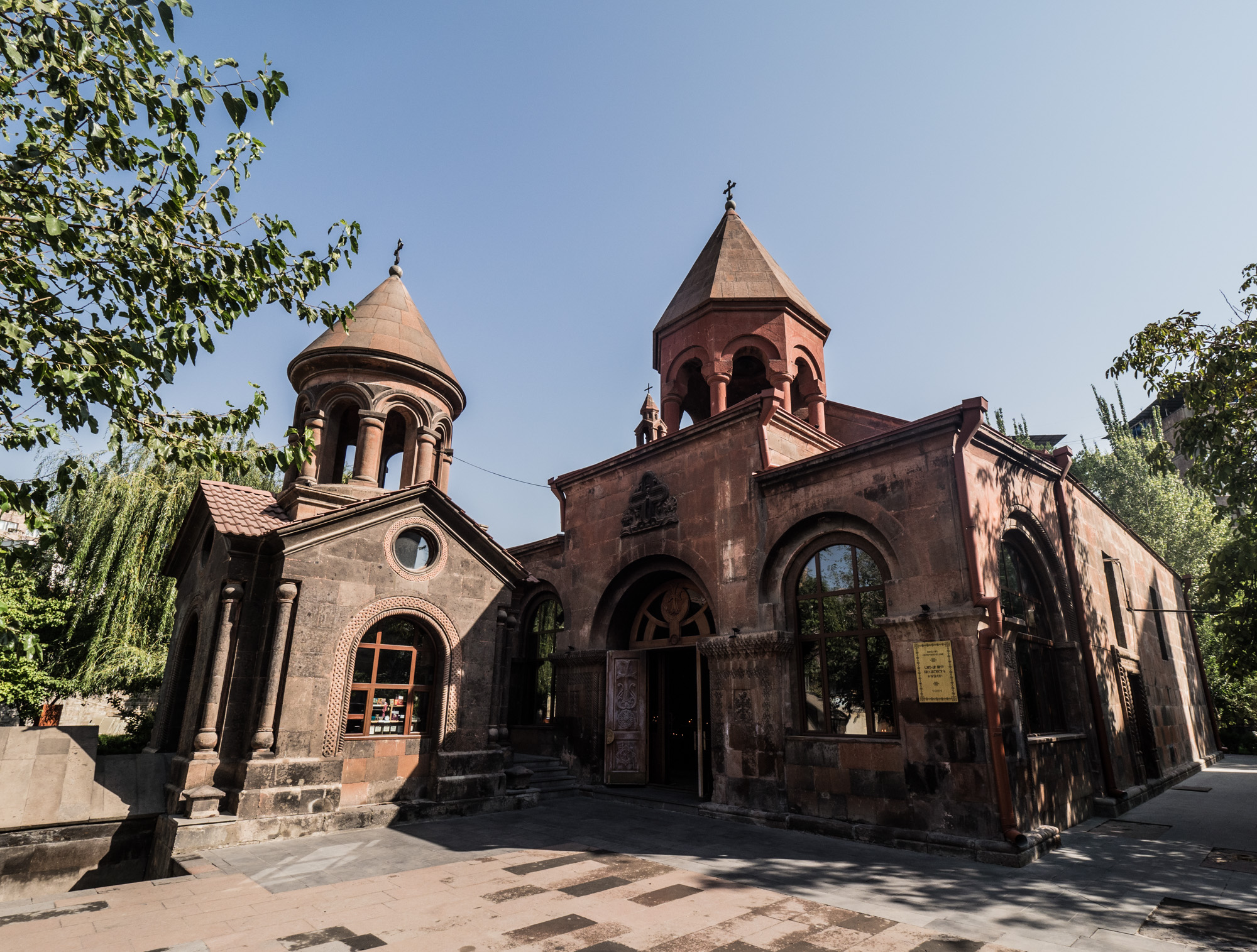
Zoravor Surp Astvatsatsin Church
A long name for what is the oldest church in Yerevan, from 1694.

Kond
One of the three original oldest districts of Yerevan.
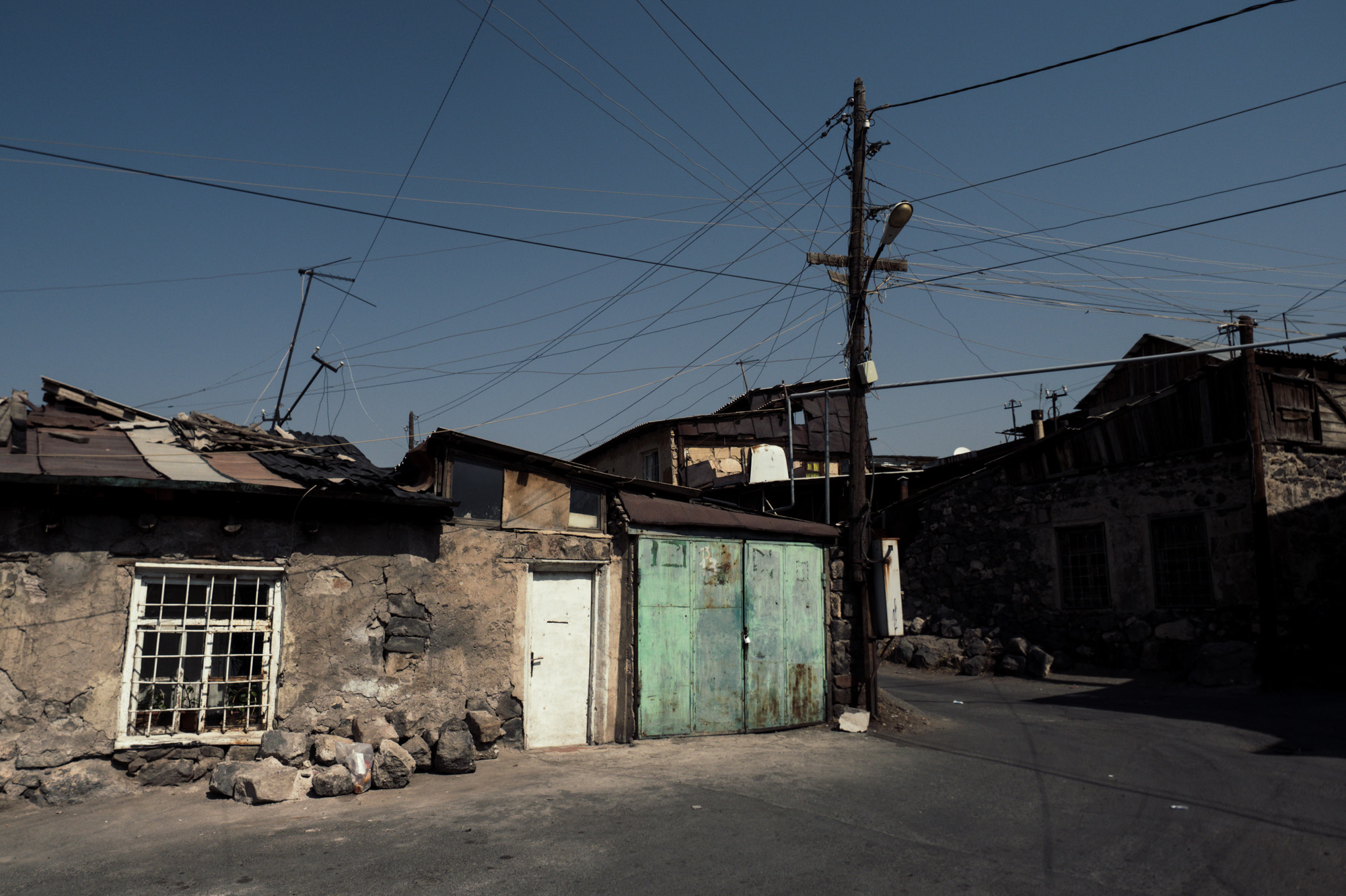
Different
A very different style of city than just a few hundred meters further.

Contrasts
The Kond district - which doesn't seem like the right place for this car.

Lunch Time
Like in Georgia, there's a lot of good food to enjoy in Armenia.
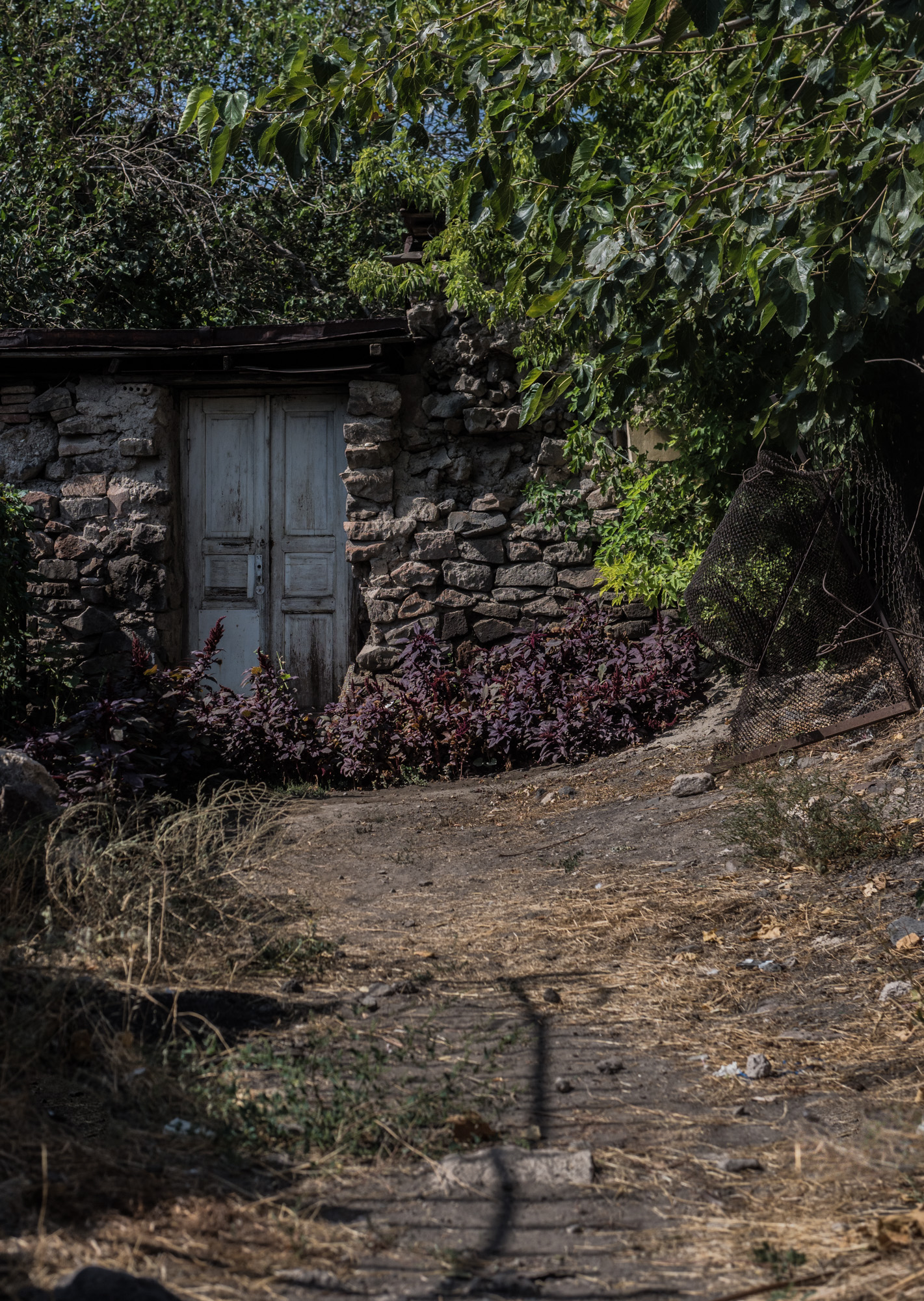
Stone Houses
Houses in Kond are made of old stones and bricks.
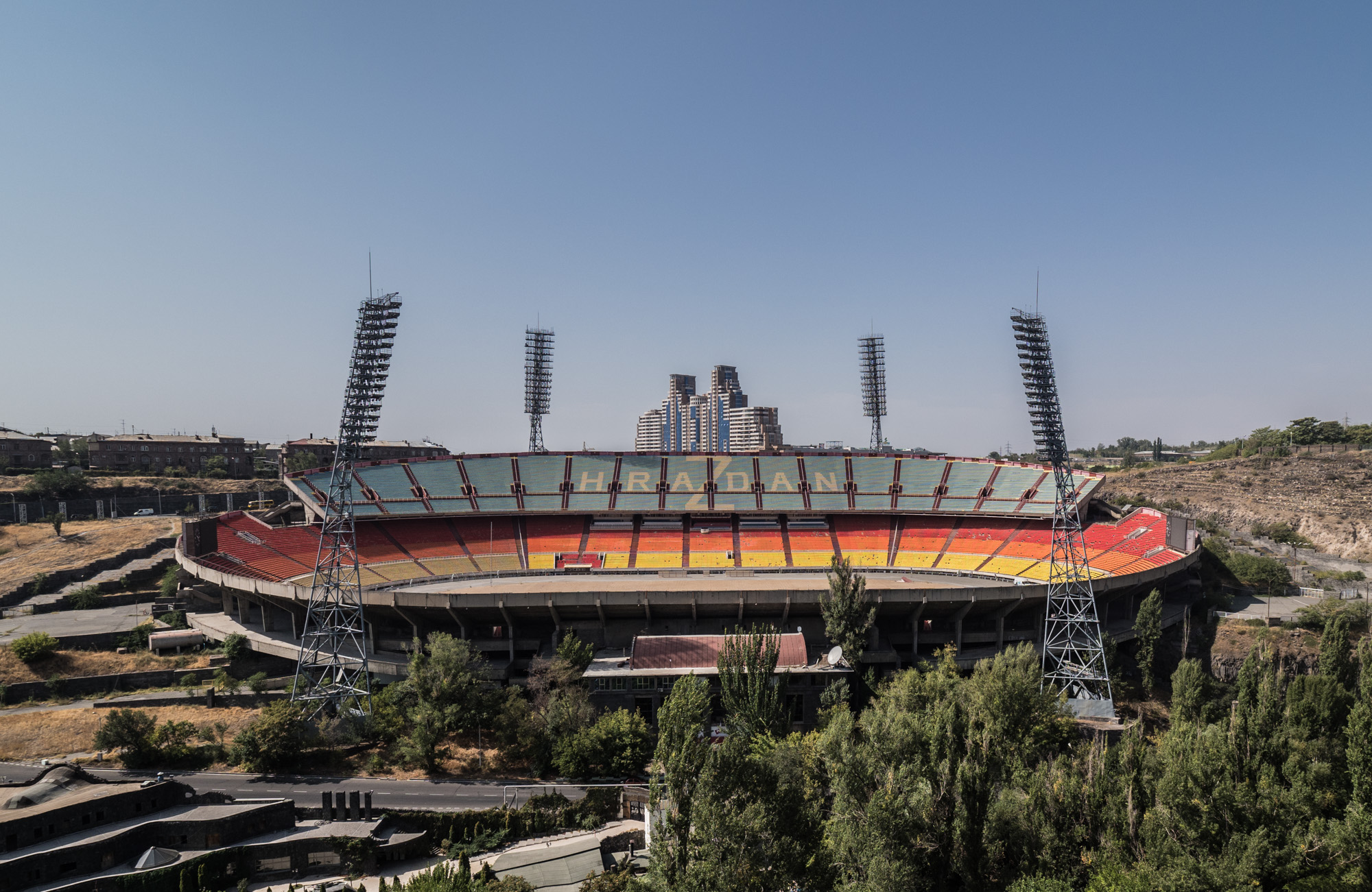
Hrazdan Stadium
Built just on the cliffs of the gorge of the same name.
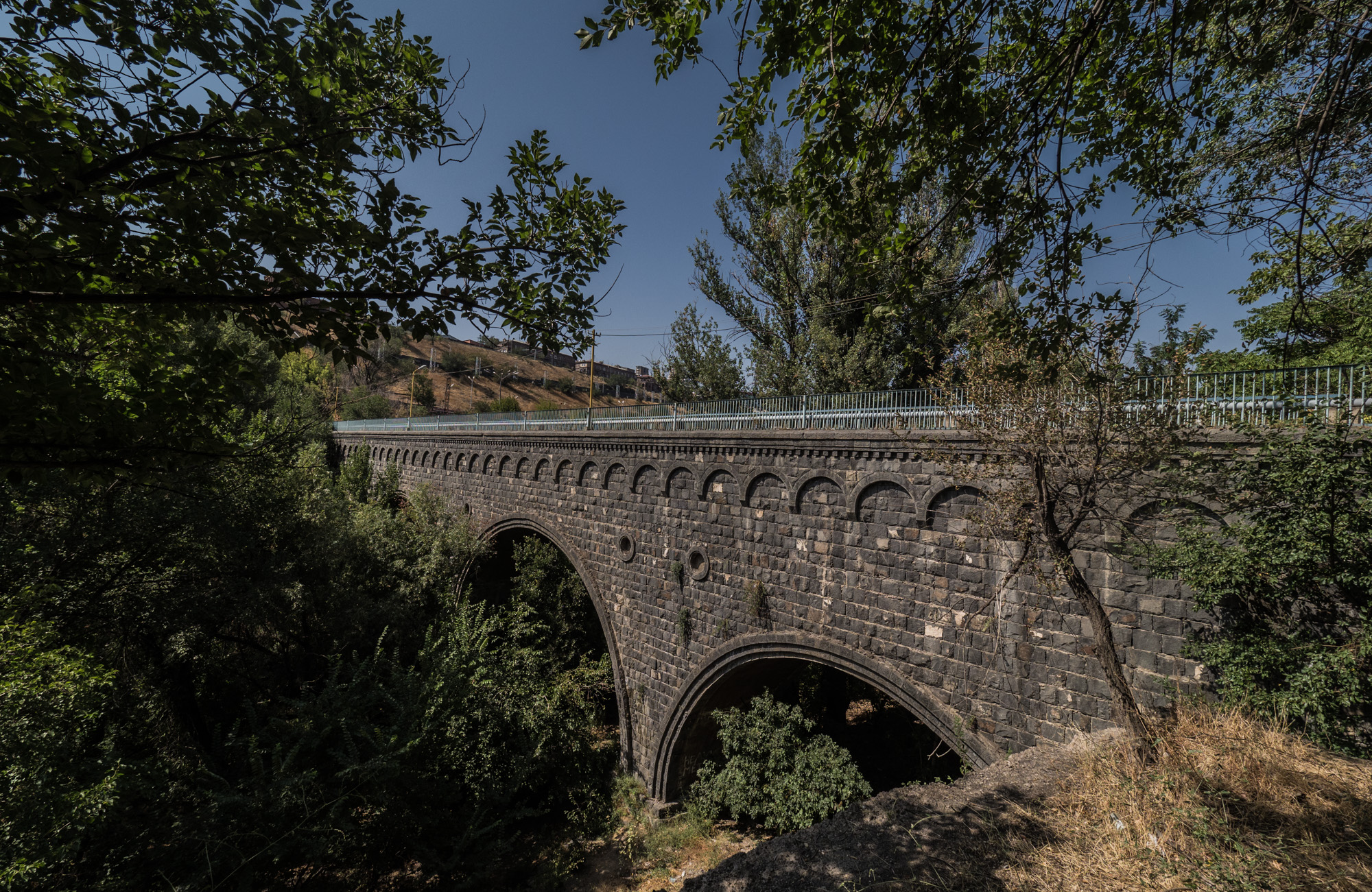
Hrazdan Gorge
And one of the bridges crossing it.
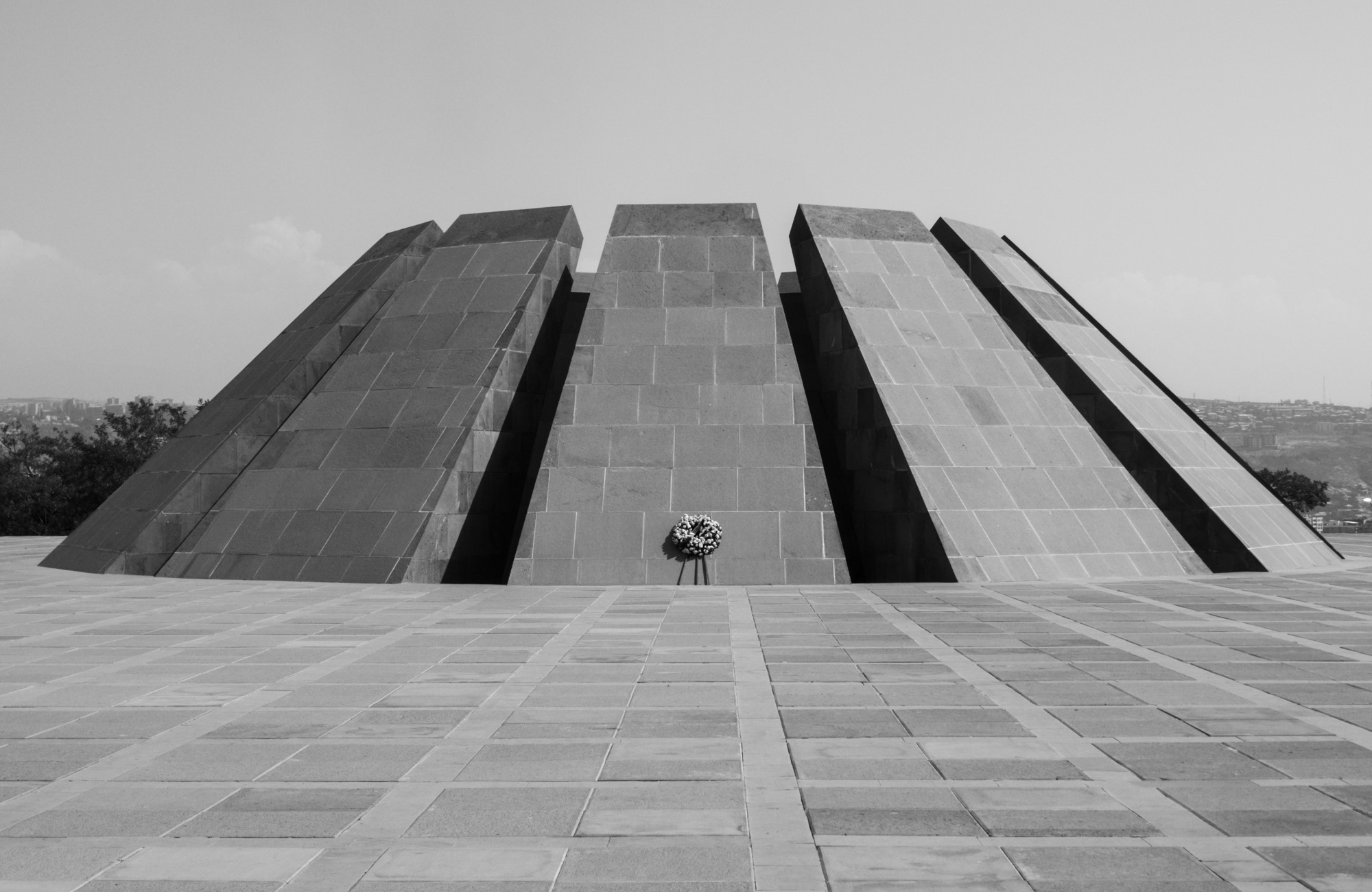
Armenian Genocide Monument
Truly a captivating place.
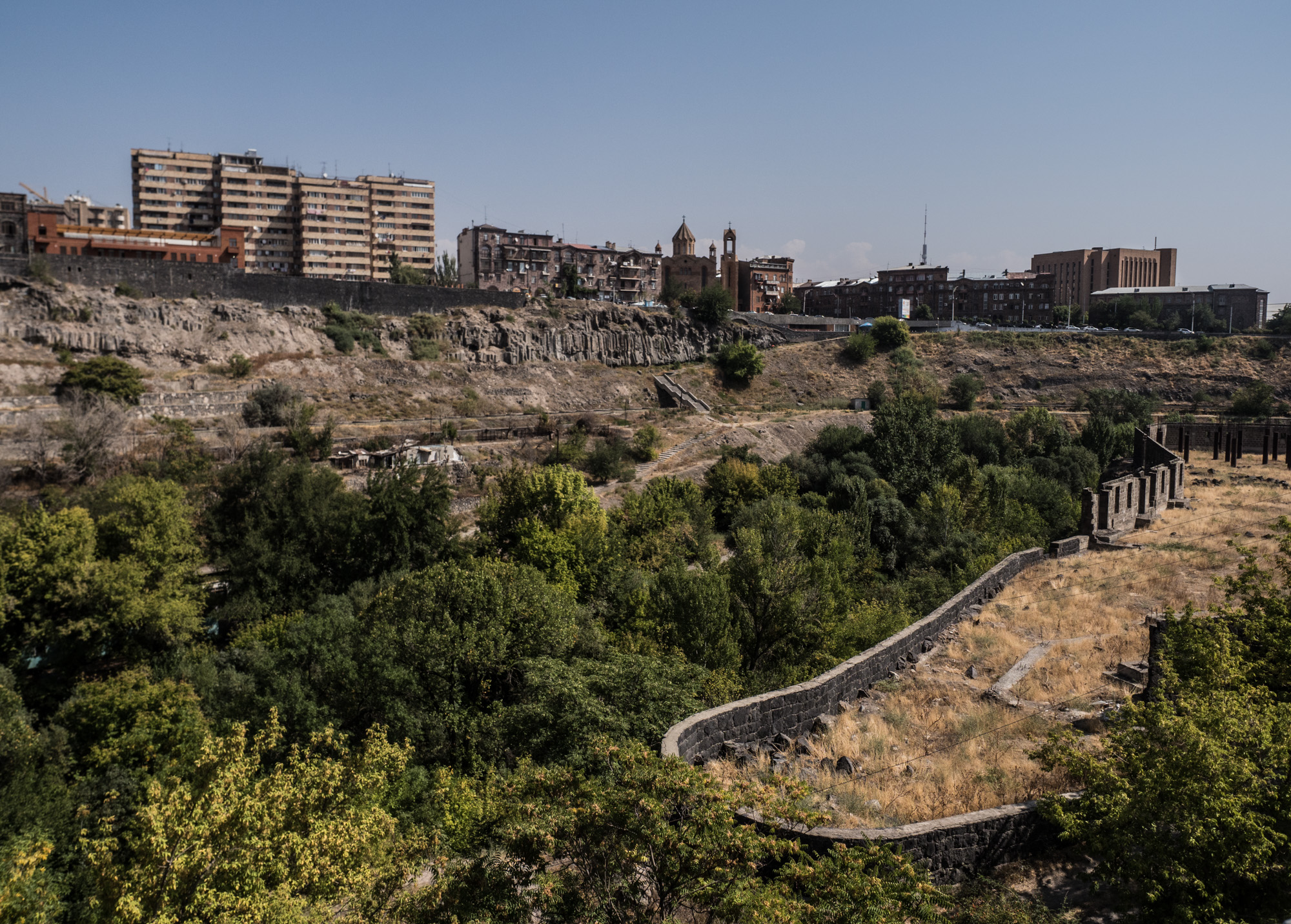
Yerevan Views
Looking across the gorge.
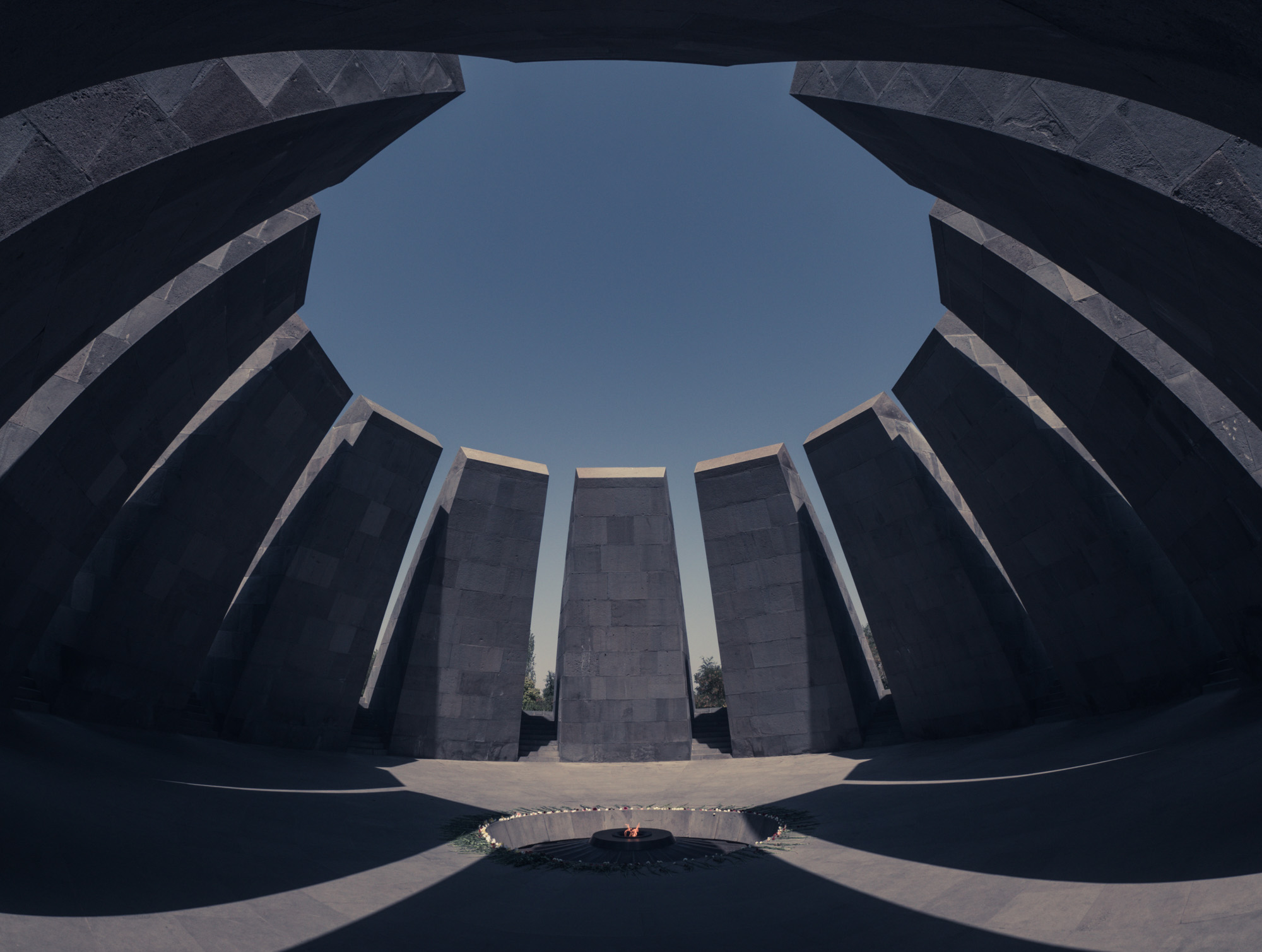
Flame
Paired with some very haunting music, the place feels special.
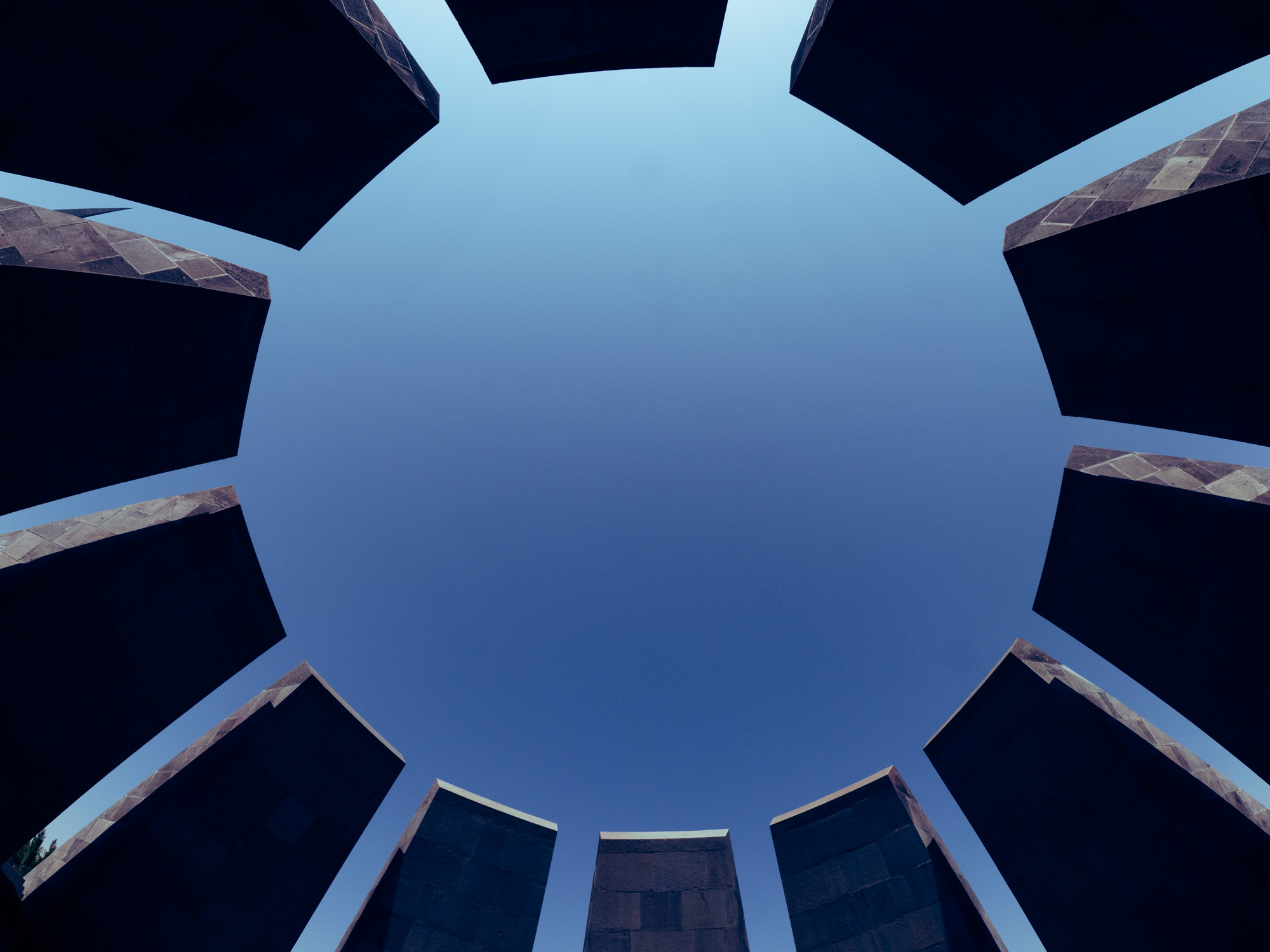
Sky
Looking up from inside the monument, which was built in the 1960s.

The Monument
The pure concrete stone created bare atmosphere.
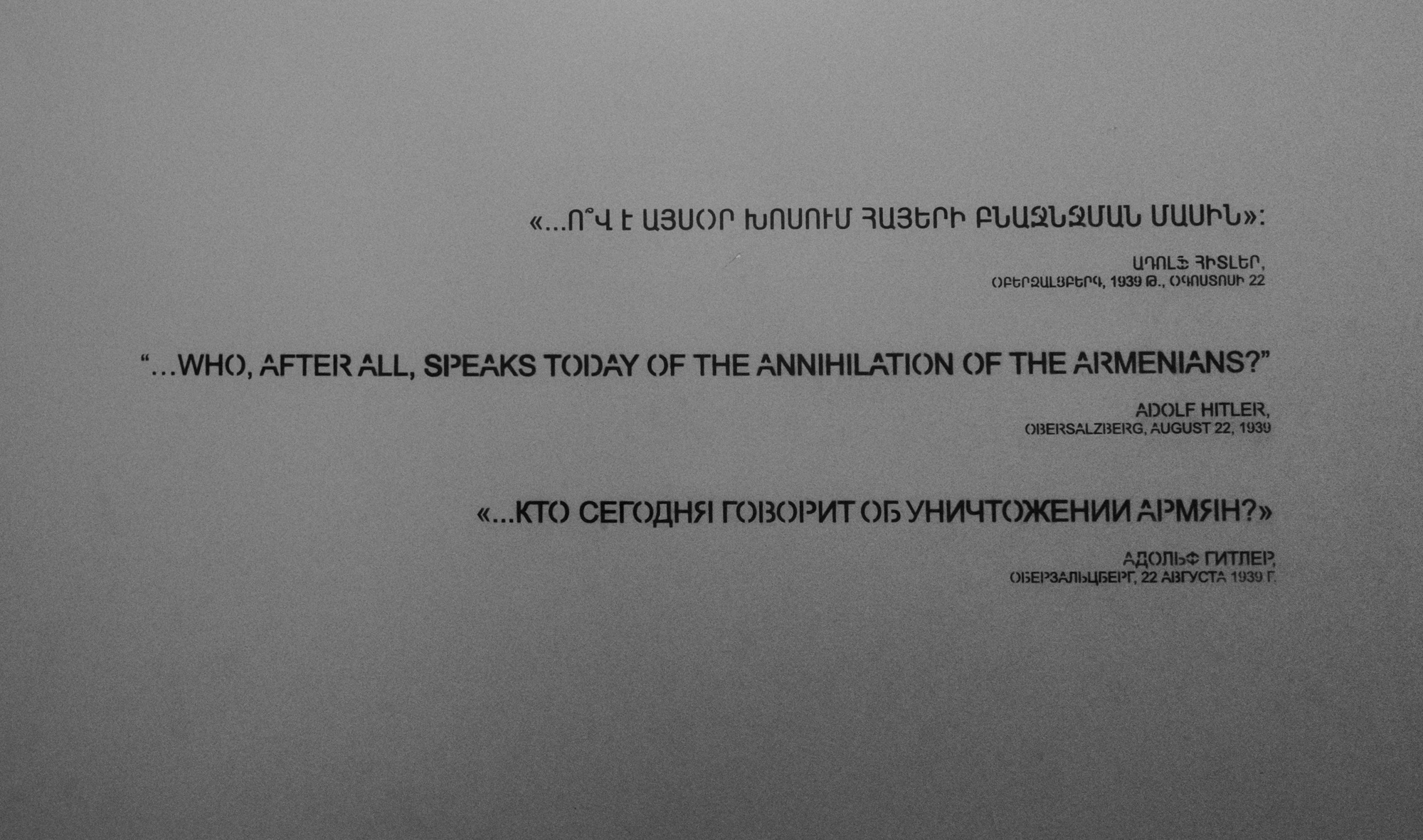
Sad Truth.
The Armenia Genocide feels underrepresented in people's mindset, despite being a truly tragic occurance.
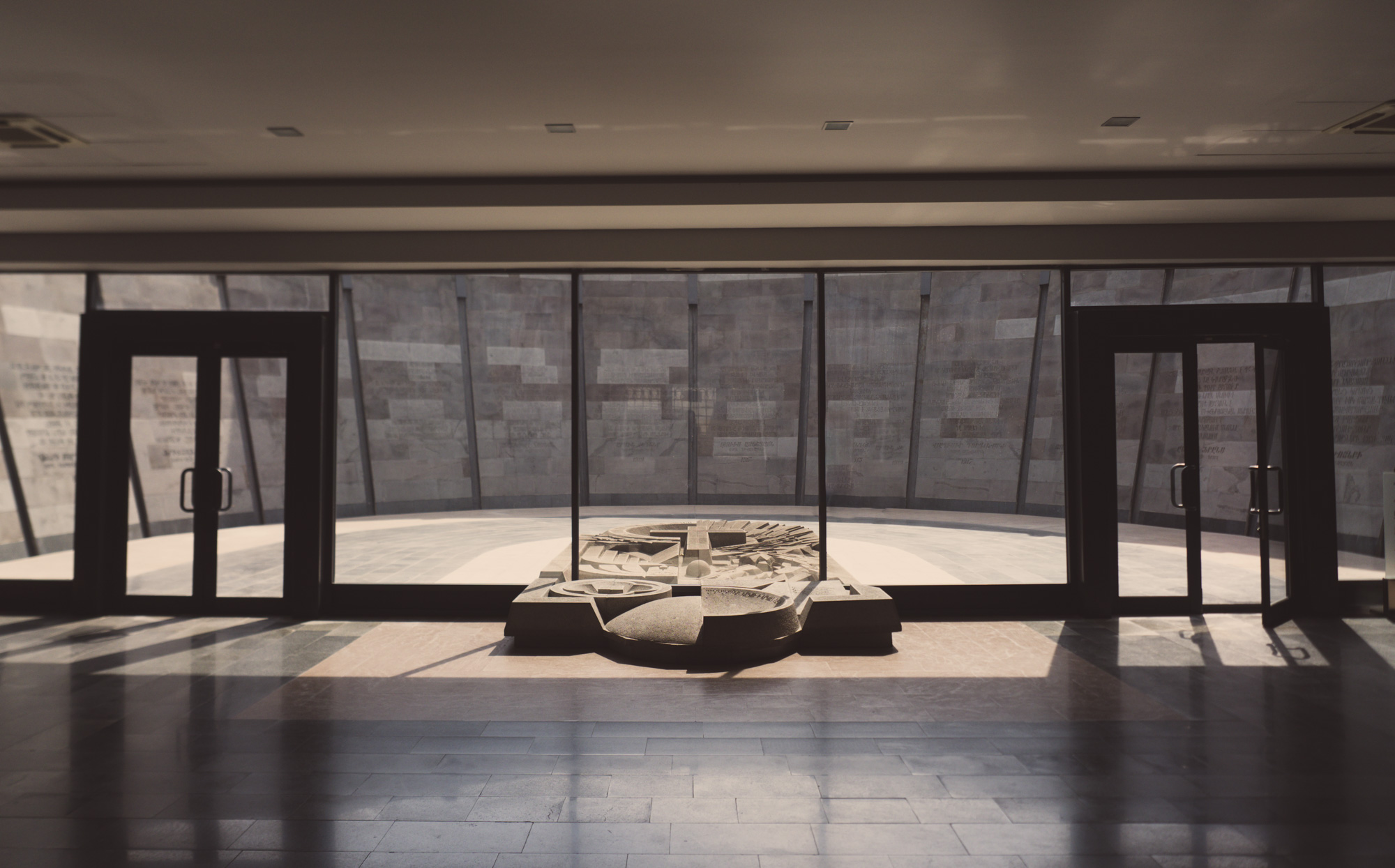
Interiors
Of the museum.
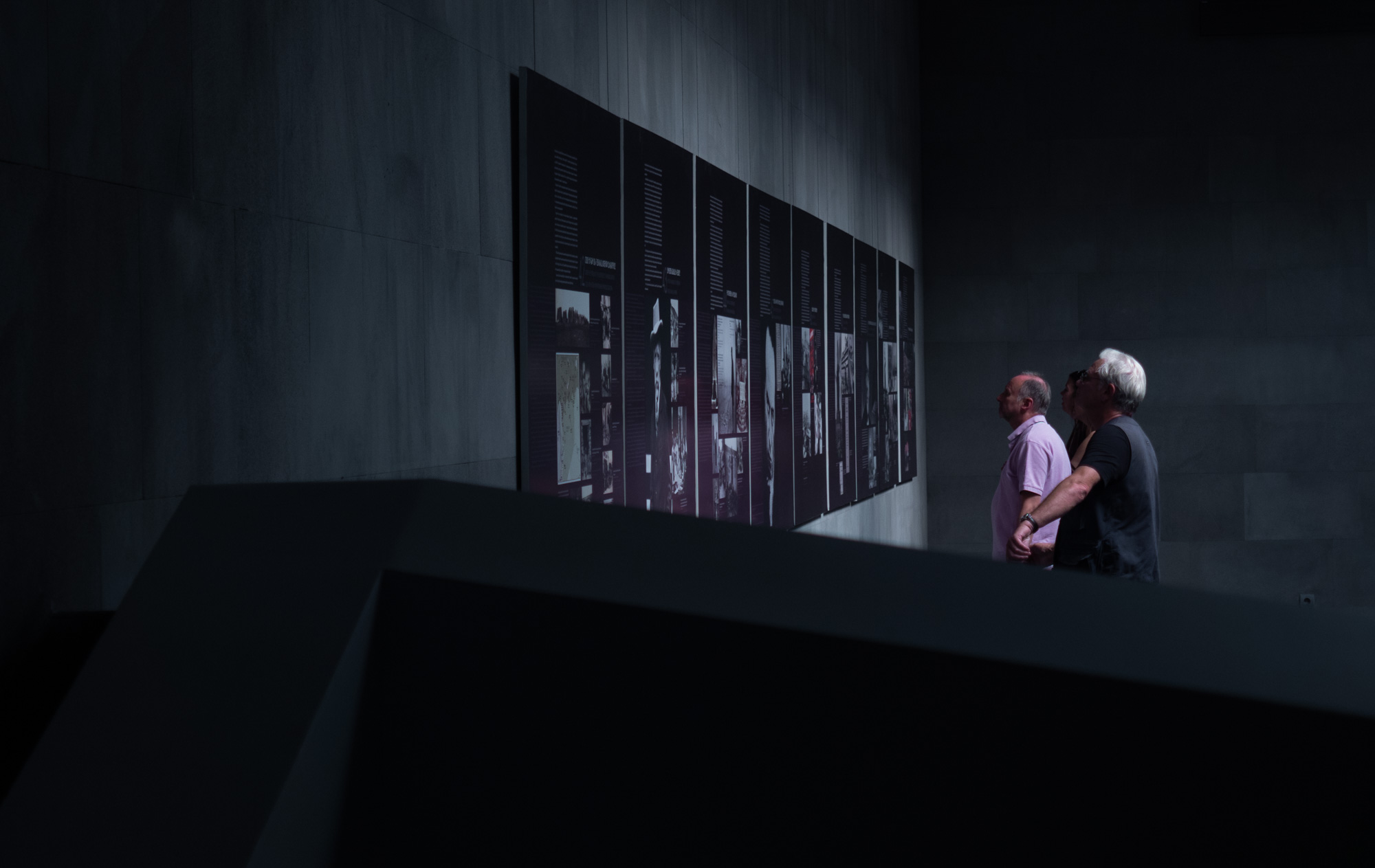
Reading
The museum explains the events well. Worth a visit.
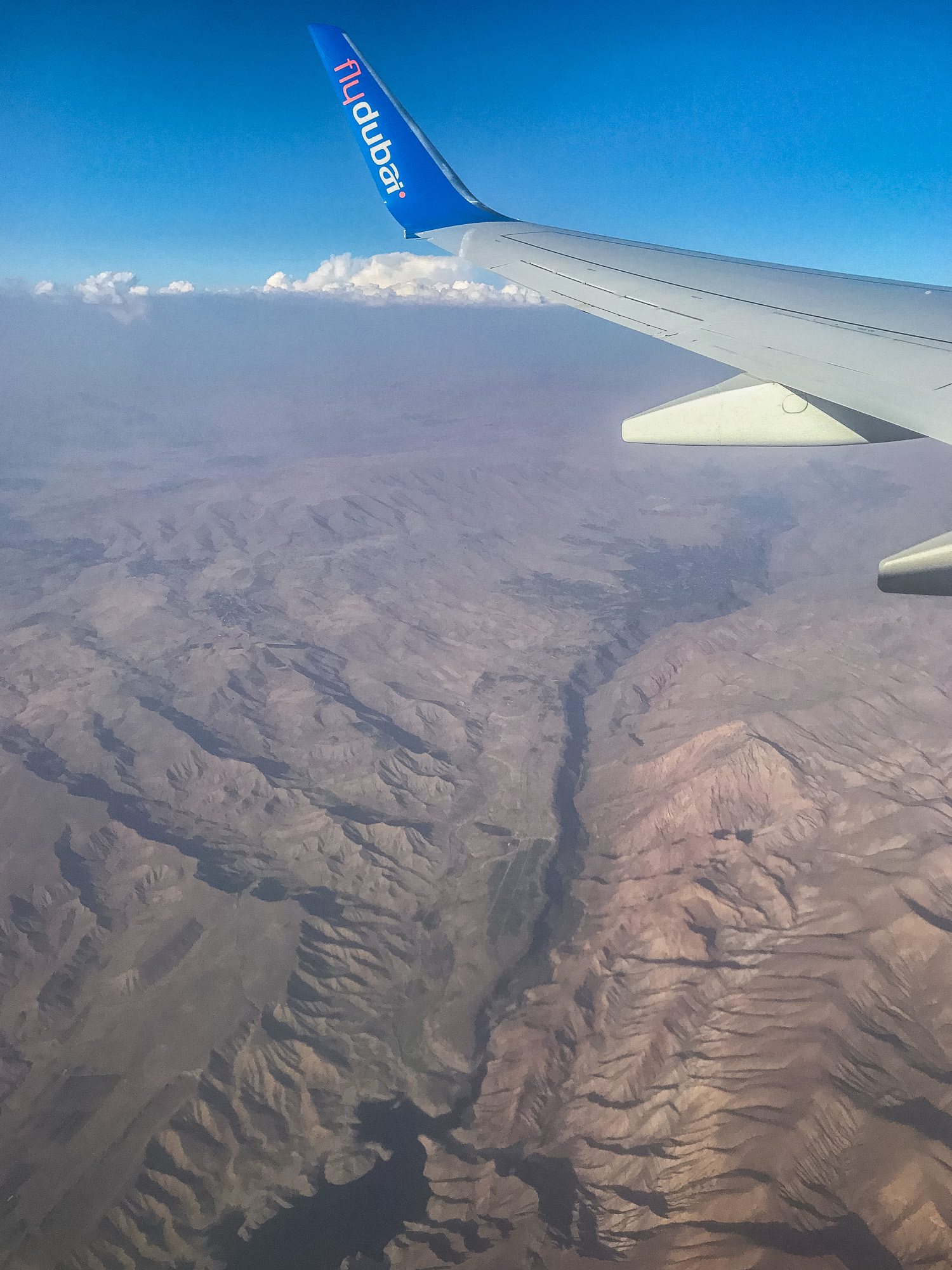
And back...
A 3h flight from Dubai, and definitely worth it.
Singapore & A Day Trip to Bintan (Indonesia)
Had the chance to visit Singapore a second time, more than 10 years after the first visit. Definitely a city I could live in. Only an hour by ferry is the island of Bintan, belonging to Indonesia. Perfect for a day trip and full of peculiar and amazing sights.

Had the chance to visit Singapore a second time, more than 10 years after the first visit. Definitely a city I could live in. Only an hour by ferry is the island of Bintan, belonging to Indonesia. Perfect for a day trip and full of peculiar and amazing sights.

Panorama from Marina Barrage
Definitely a spot worth visiting.

Universal Singapore
A view over the Hollywood and Sci-Fi areas of the park, as well as the world's tallest dueling coasters.
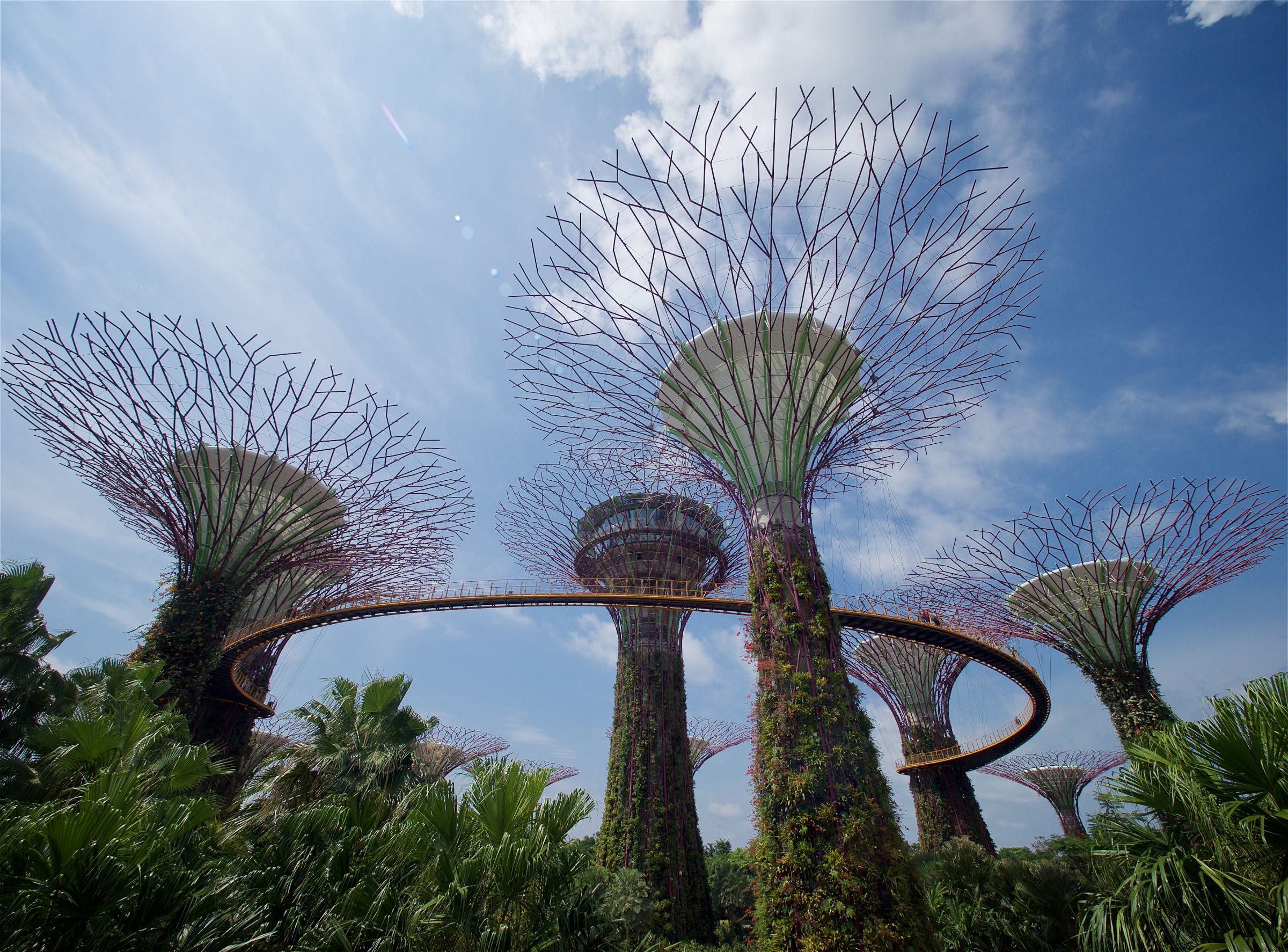
Supertree Grove
The famous Supertrees at Singapore's Garden by the Bay behind Manila Bay.
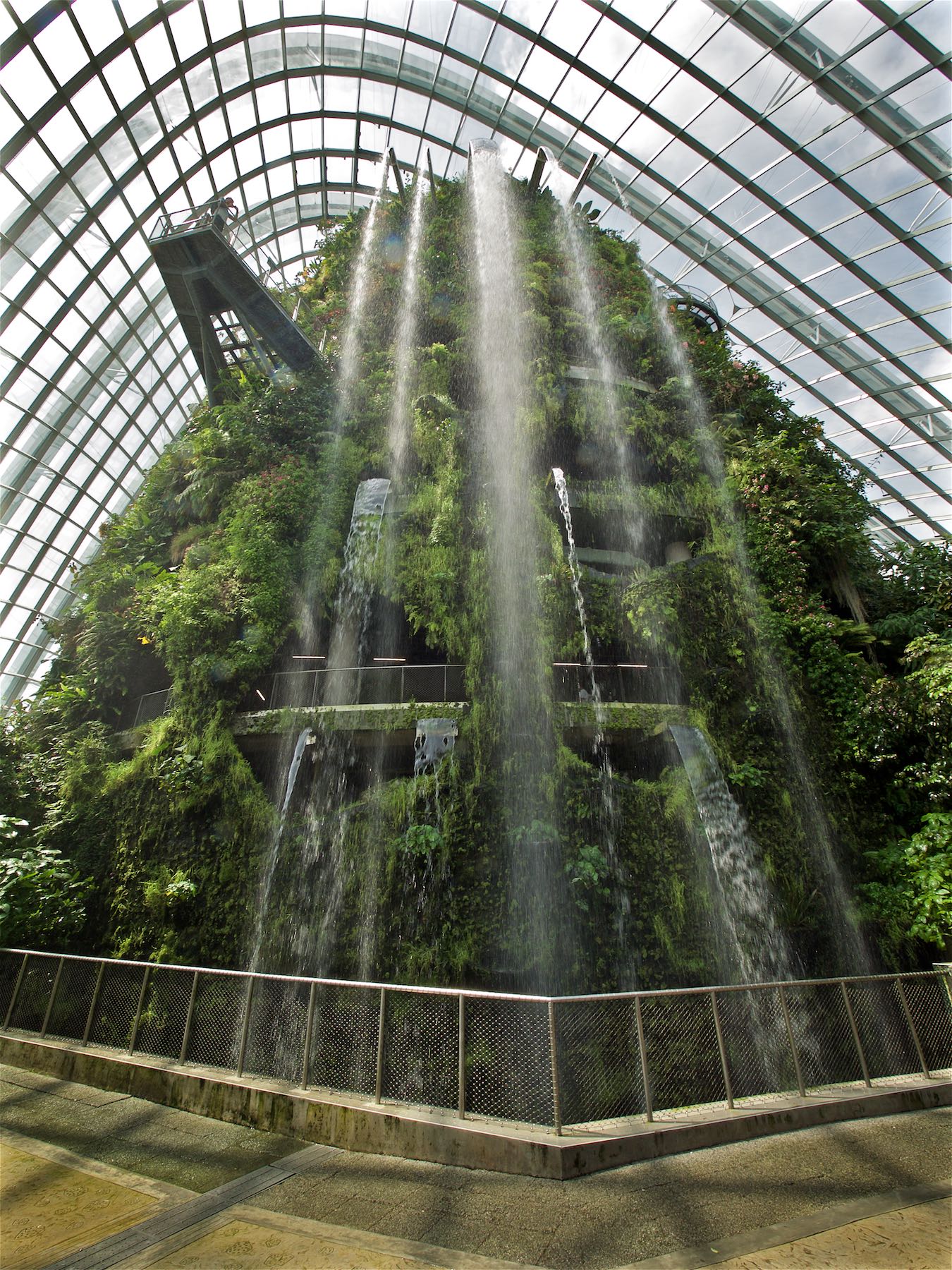
Falls
The Cloud Mountain in one of the two domes in Gardens by the Bay. Worth a visit.

Cheshire Cat
Never stop smiling.
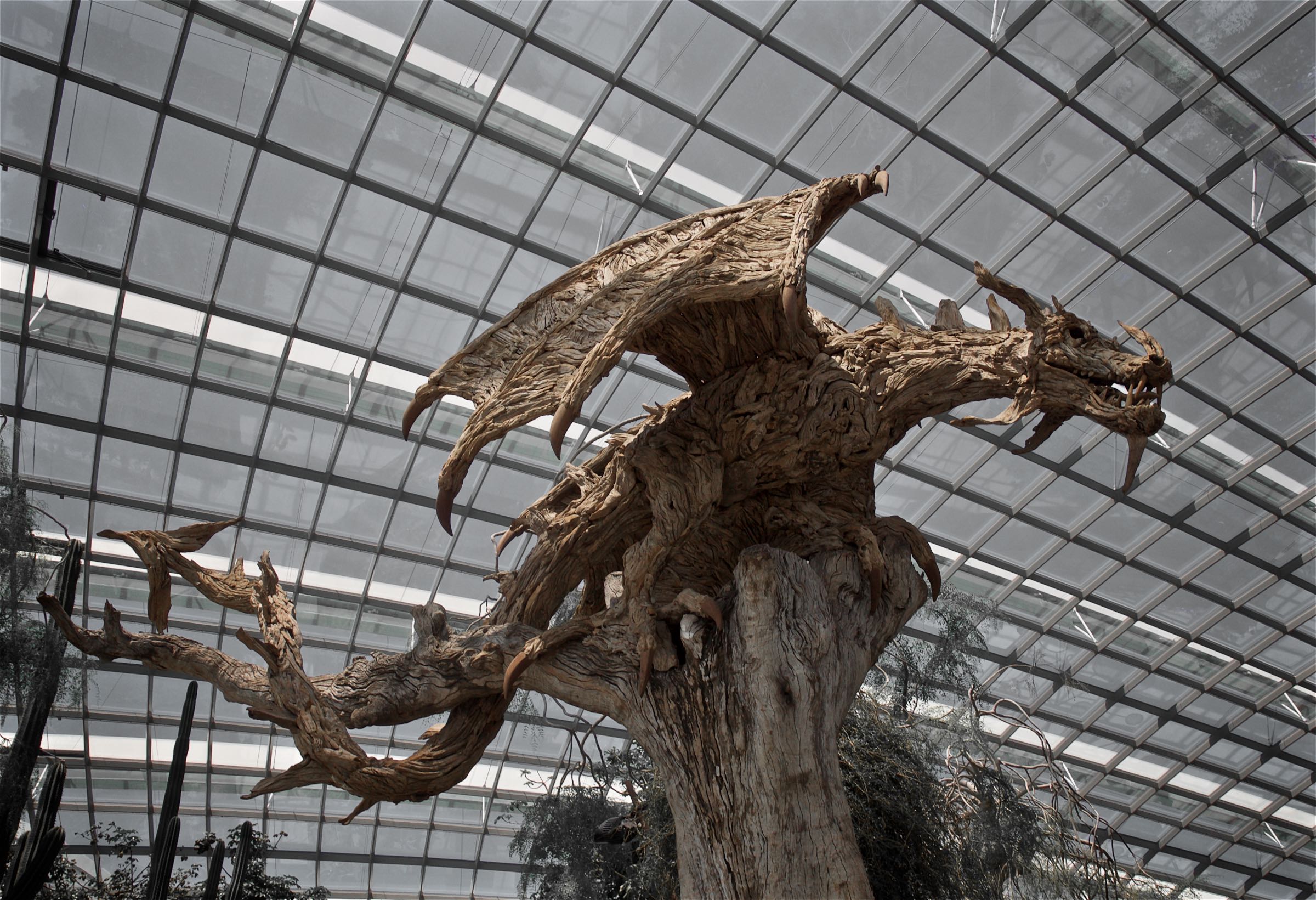
Dragon
Reminds me of the dragons from Harry Potter and the Goblet of Fire.
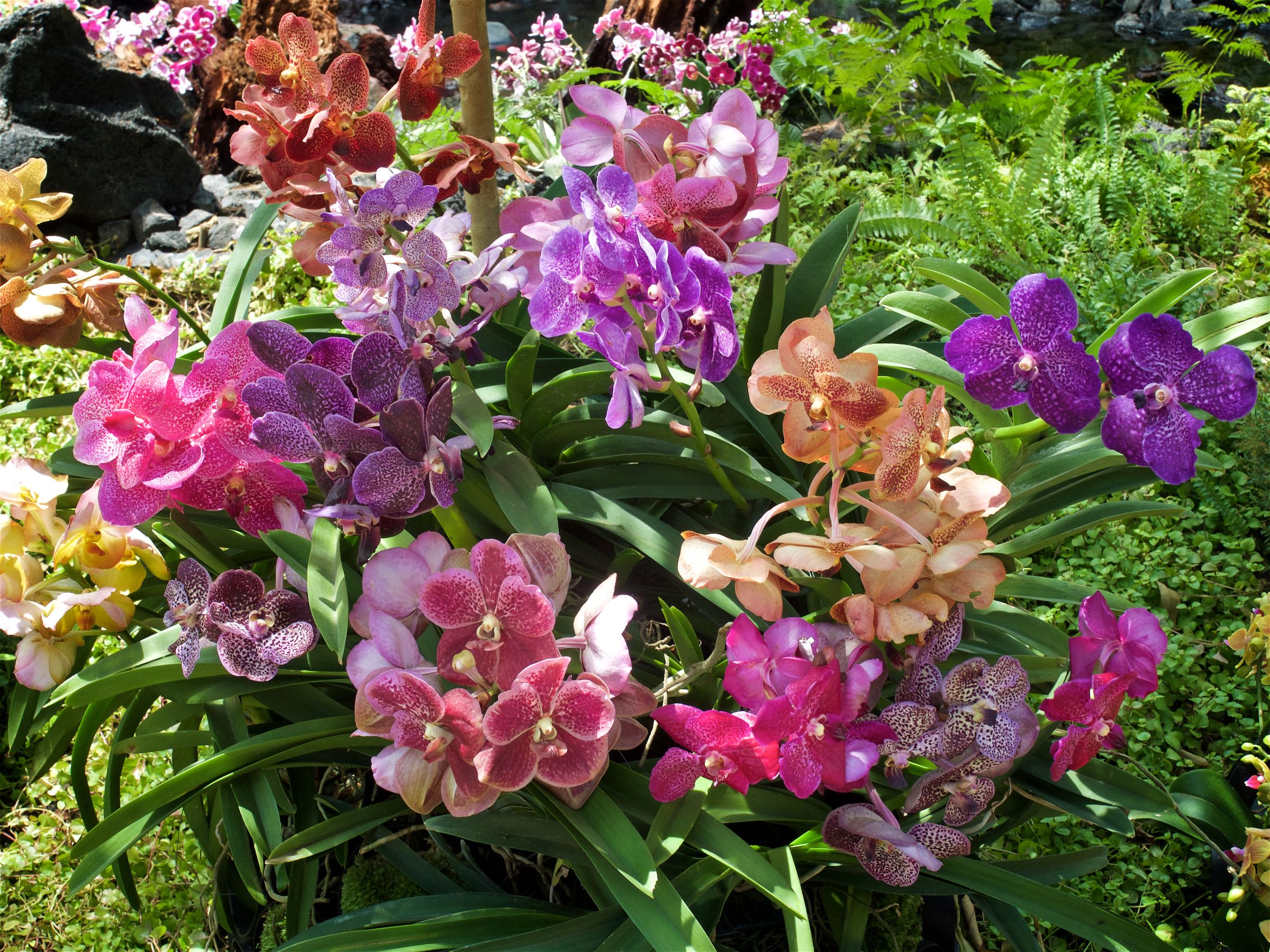
National Flower
Singapore's national flower is the Vanda Miss Joaquim orchid.

Rose
Interesting geometry.
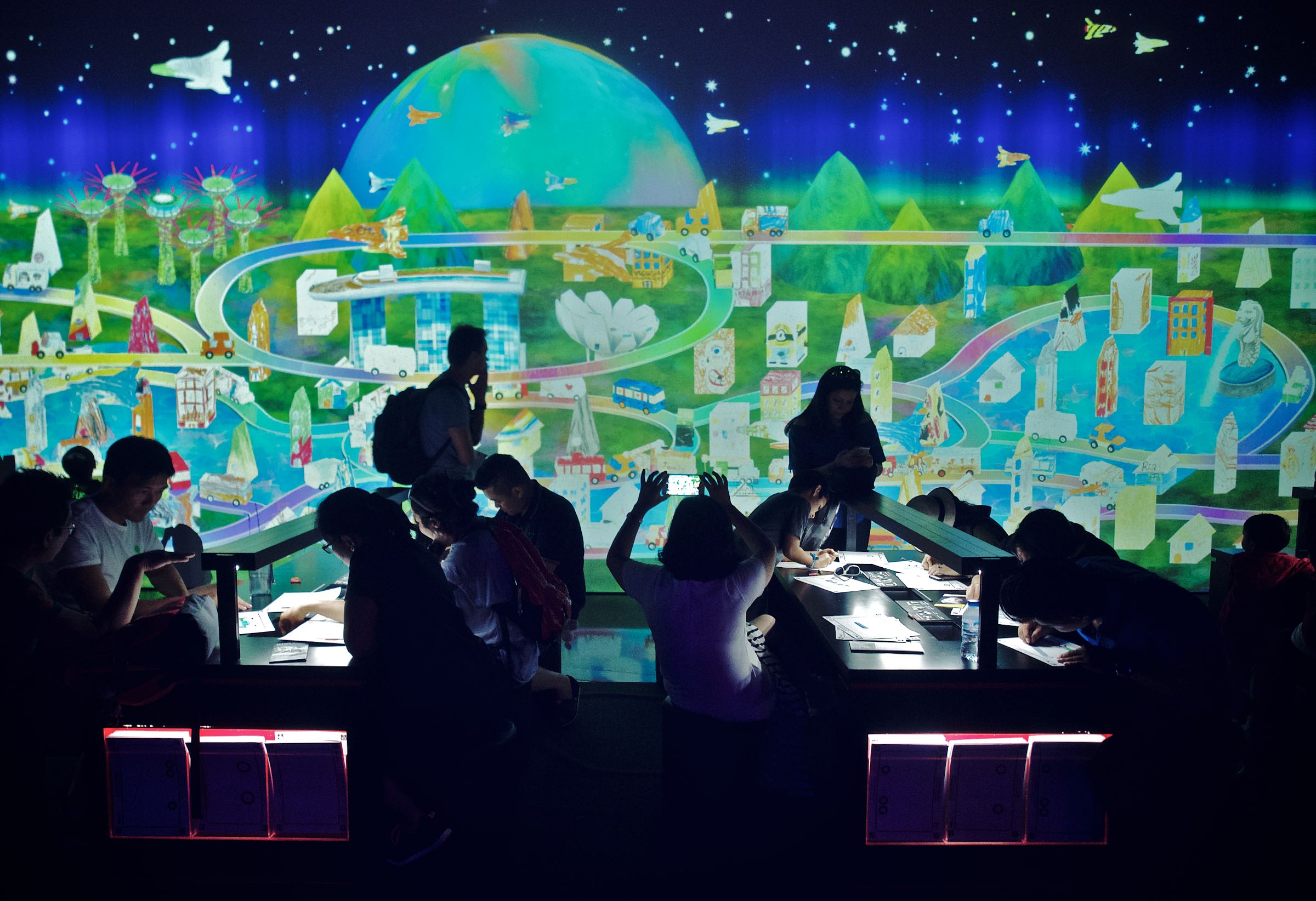
Playground
Kids (and me) could draw vehicles on papers, scan them, and they would appear moving on the projected back wall. Totally cool.
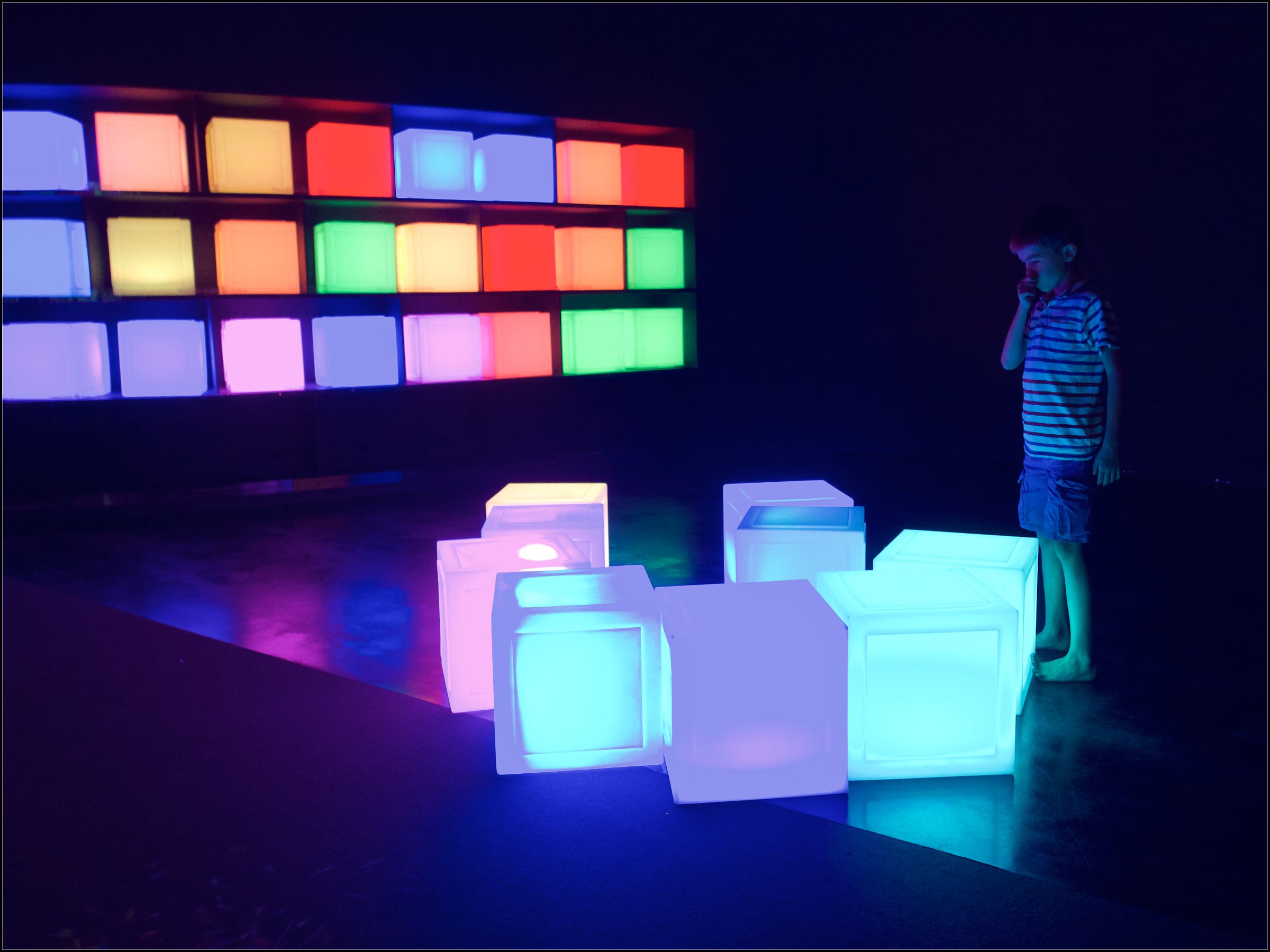
Puzzles
Arrangement required.
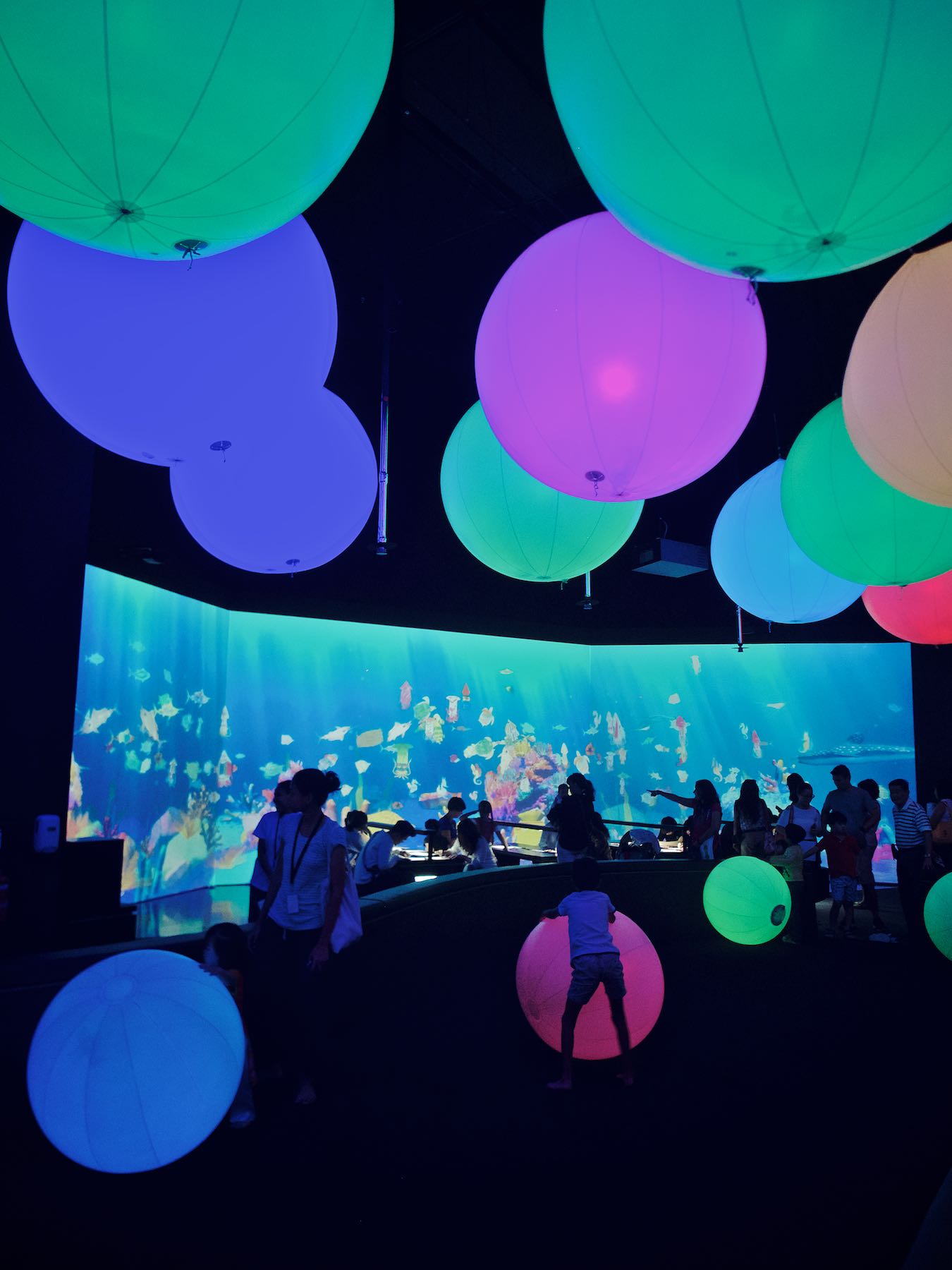
Balloon Fun
Another installation at the Art Meets Science exhibit.
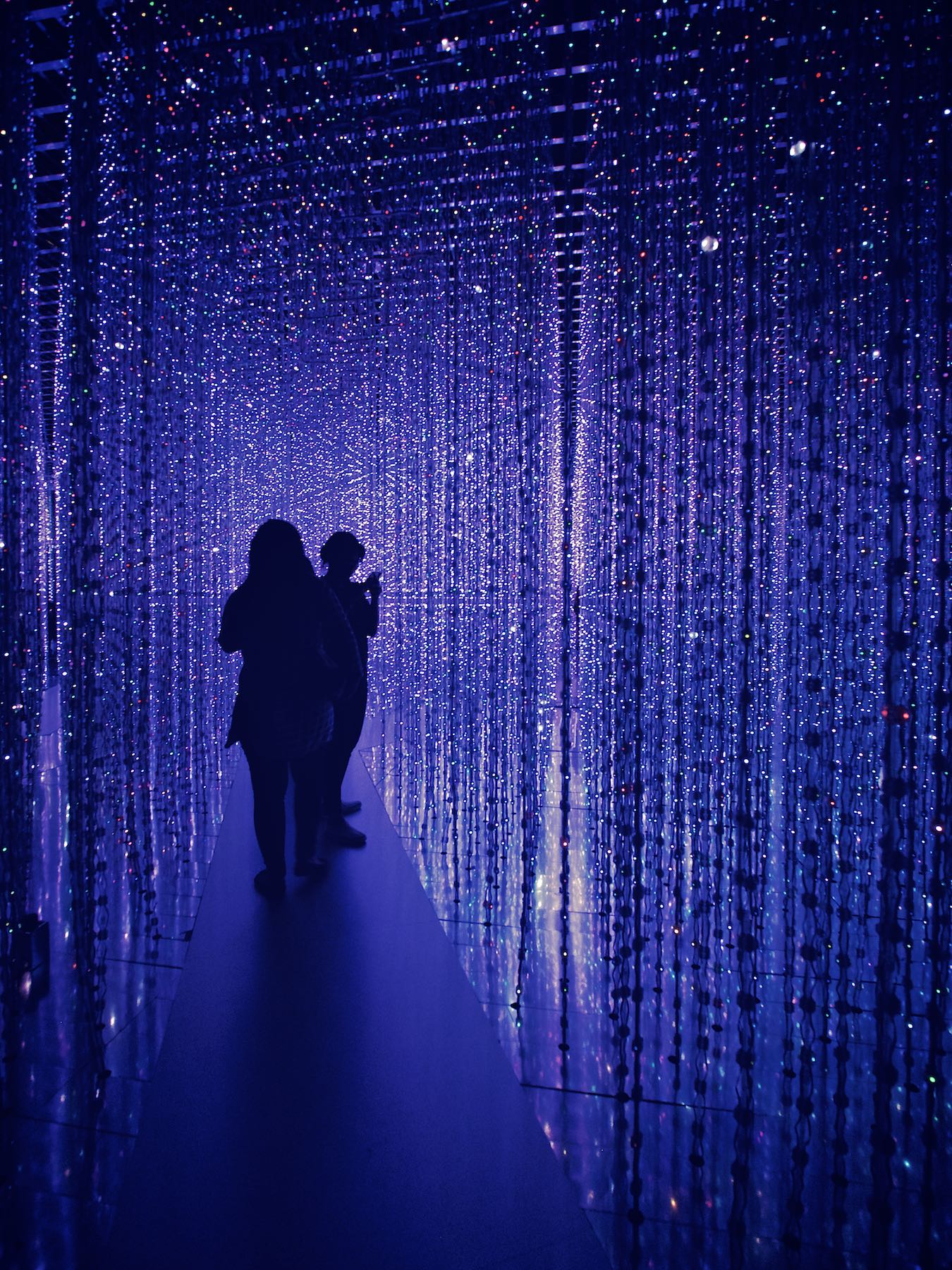
Future World
The ArtScience Museum by the Marina Bay Sands showcased Future World: Where Art Meets Science, including this really cool installation.

Atmosphere
The installation included a la Arrival / Interstellar and the occasional burst of fast moving light flashes. I think I spent 30min there.
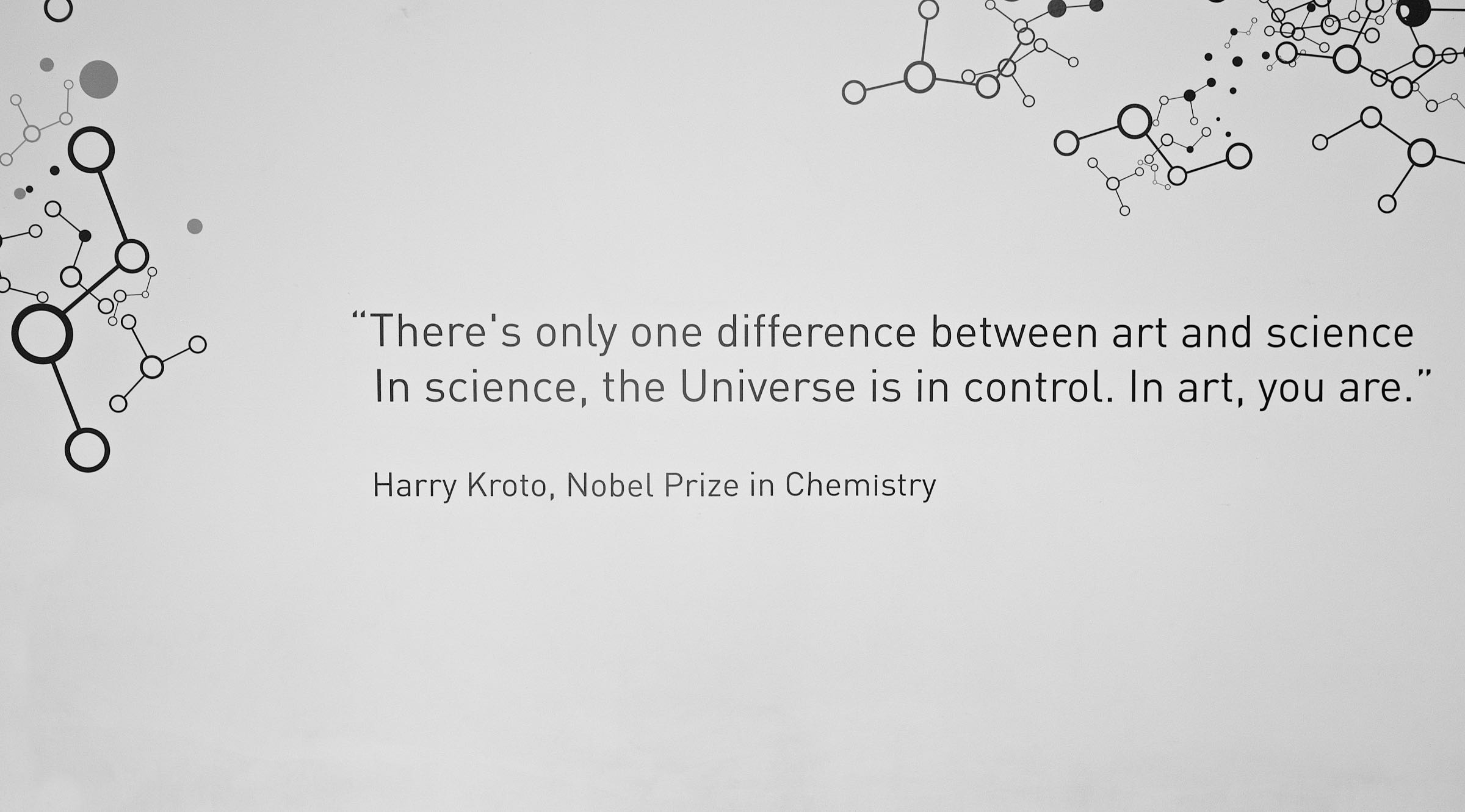
Wise Words
Harry Kroto won his Nobel Prize for discovering fullness. Don't ask me what it means.
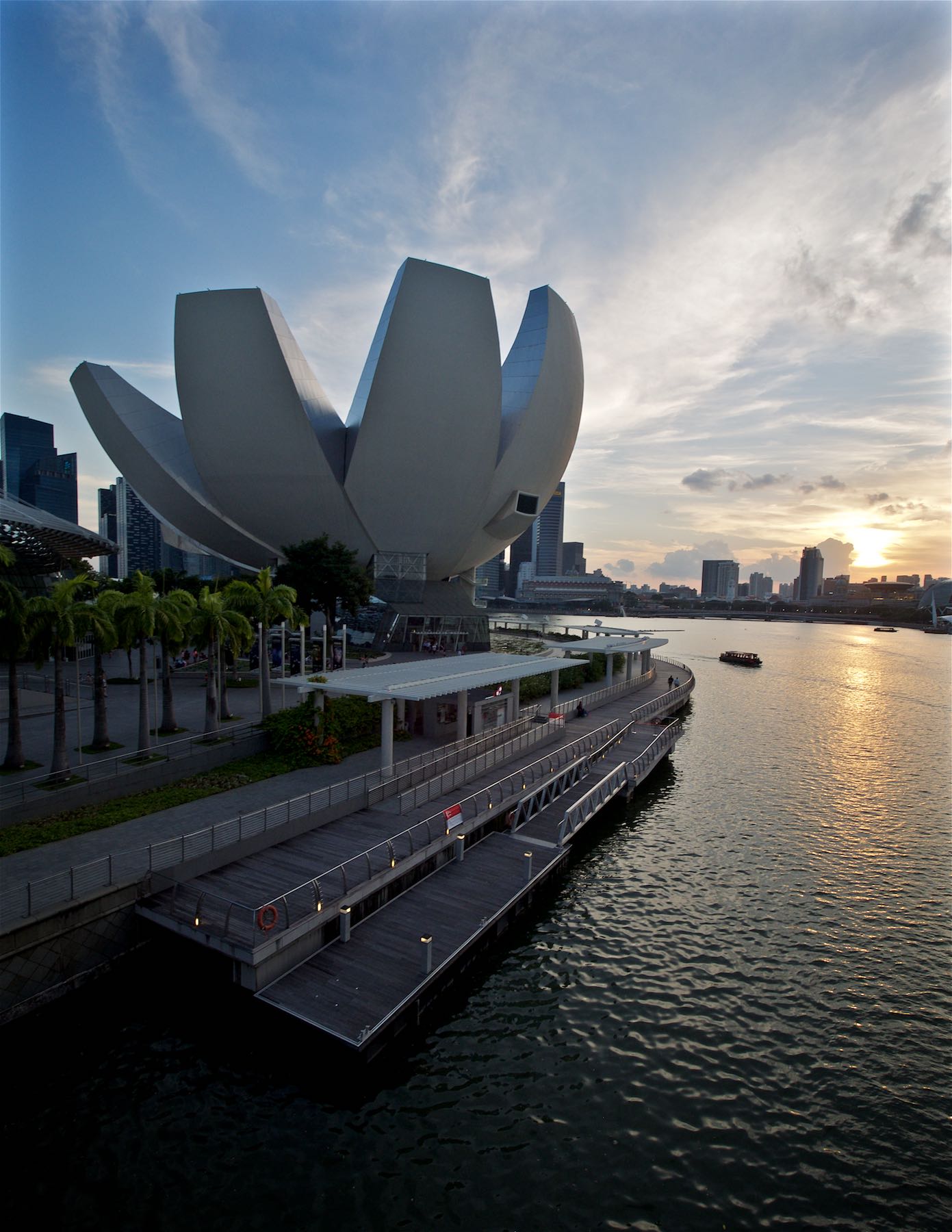
ArtScience Museum
At sunset seen from the Helix bridge. The museum opened in 2011.
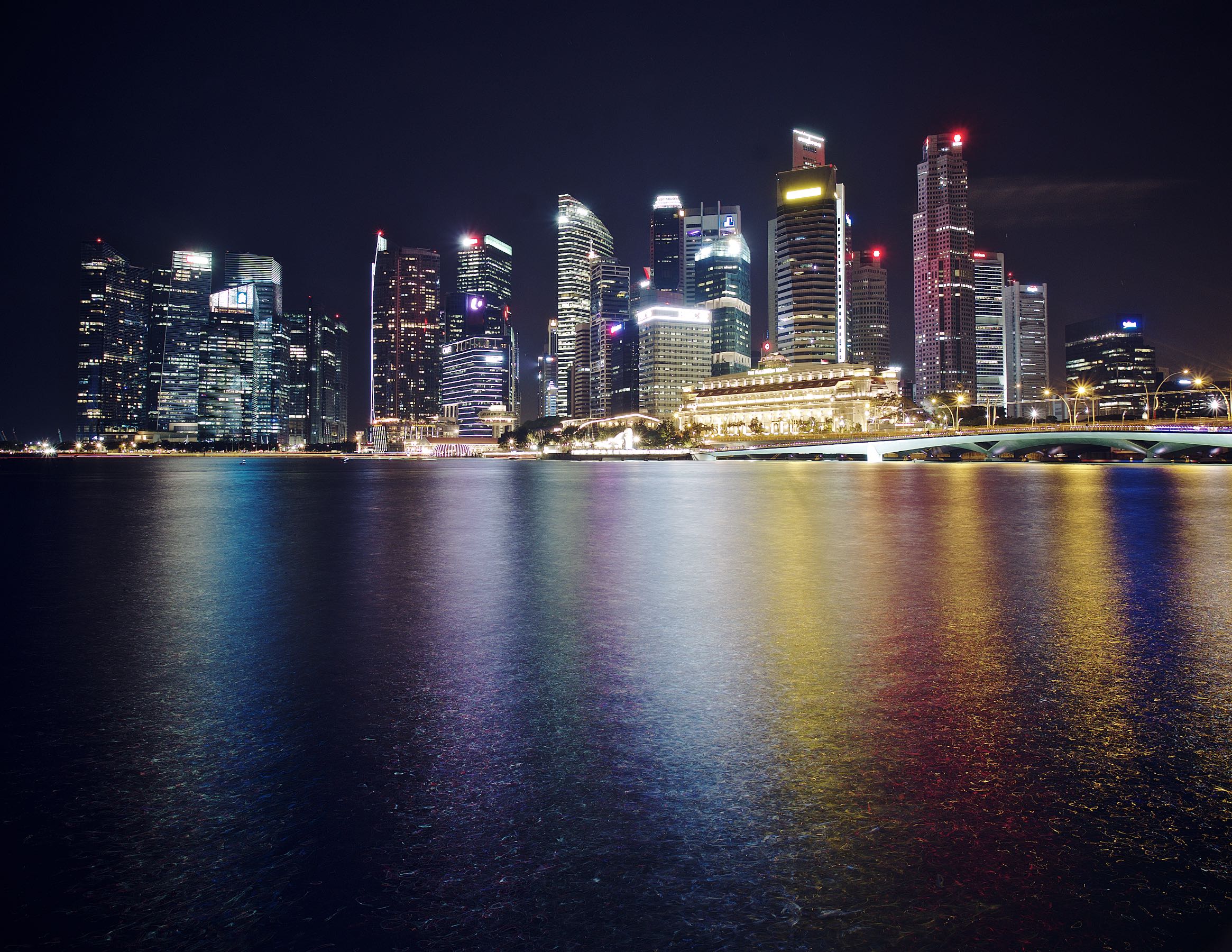
Downtown Core
The Singapore skyline, seen from the Helix bridge.
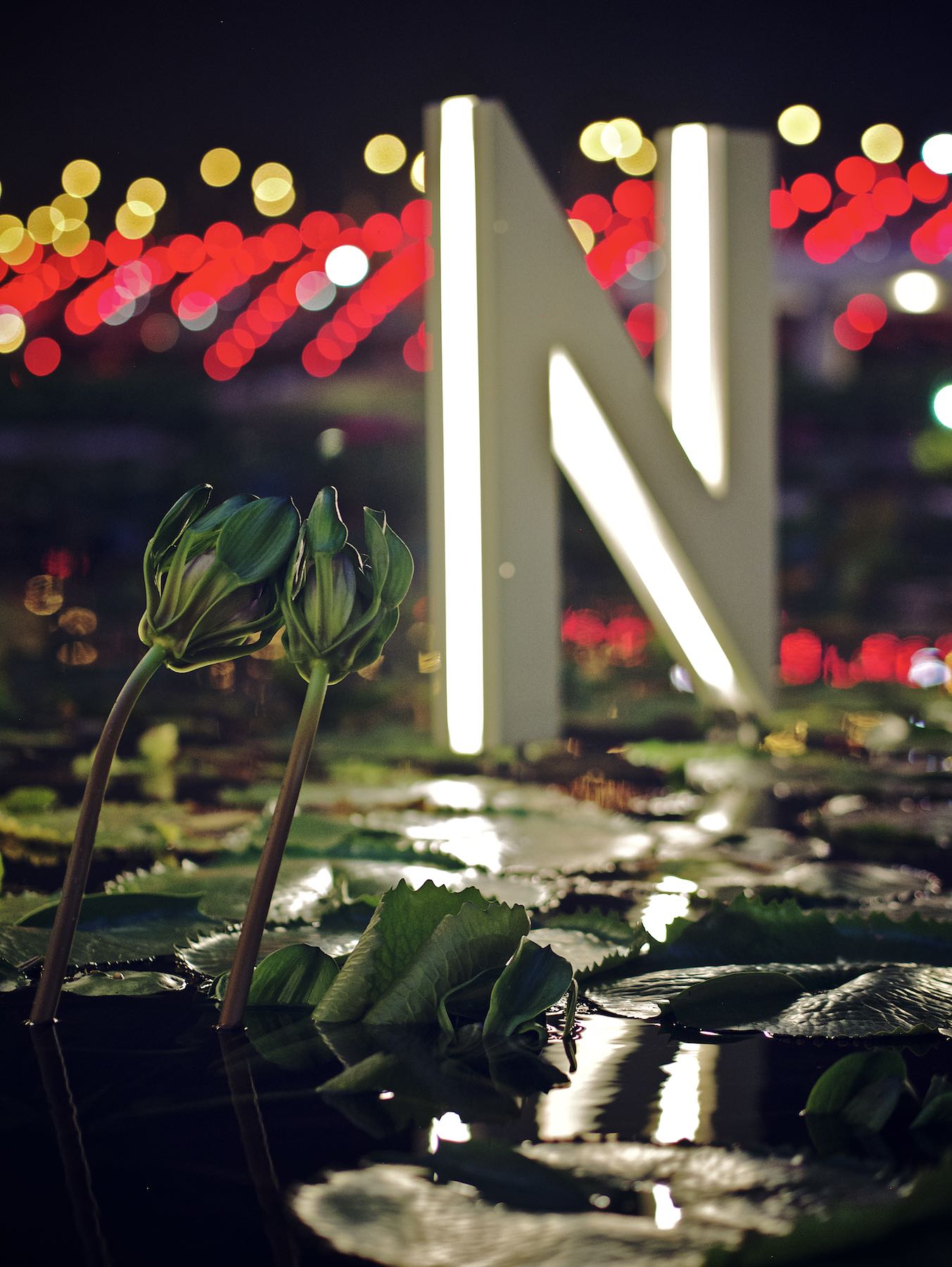
N
One letter of the Art and Science Museum
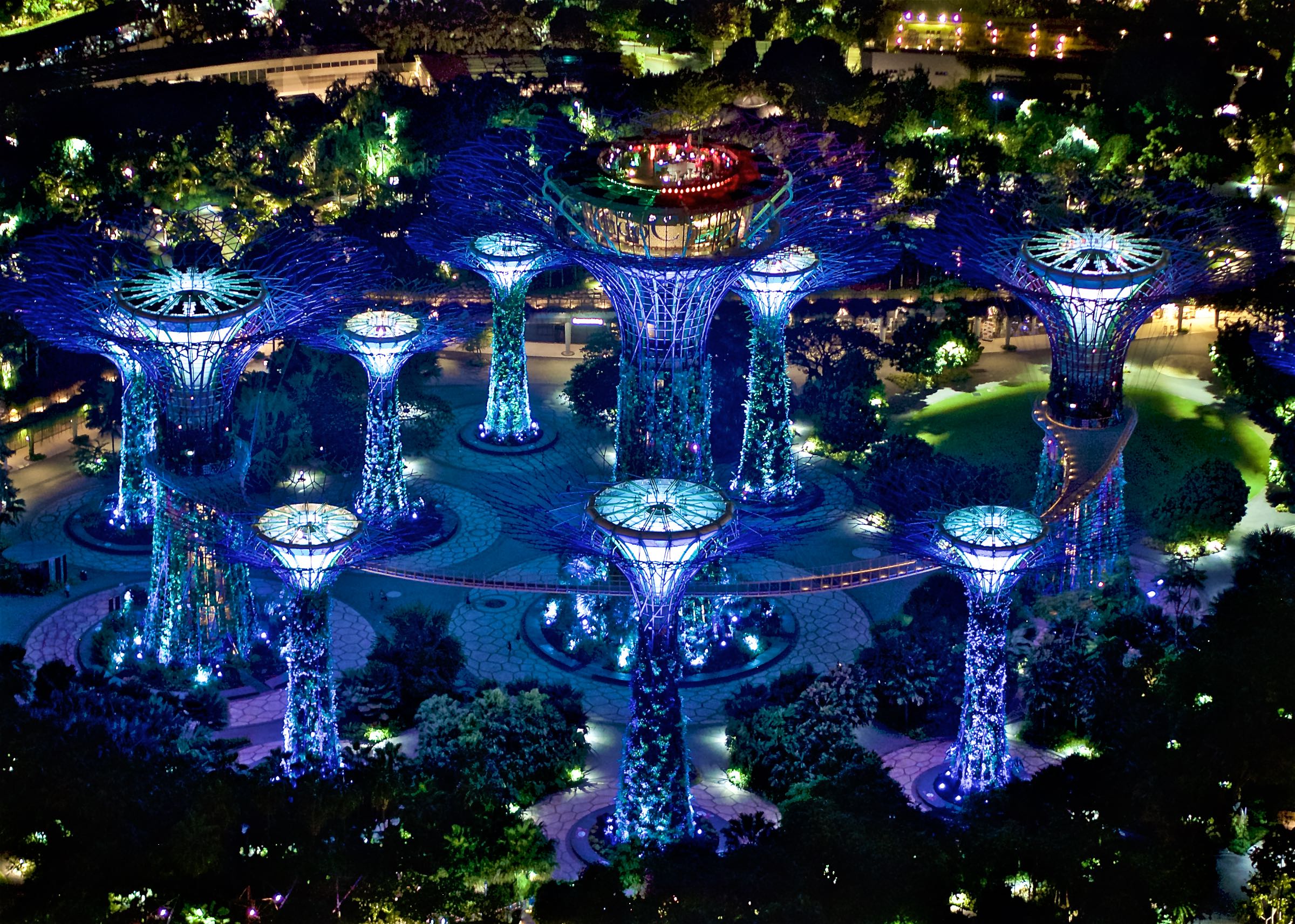
Supertree Grove
Seen from the Marina Bay Sands roof at night.
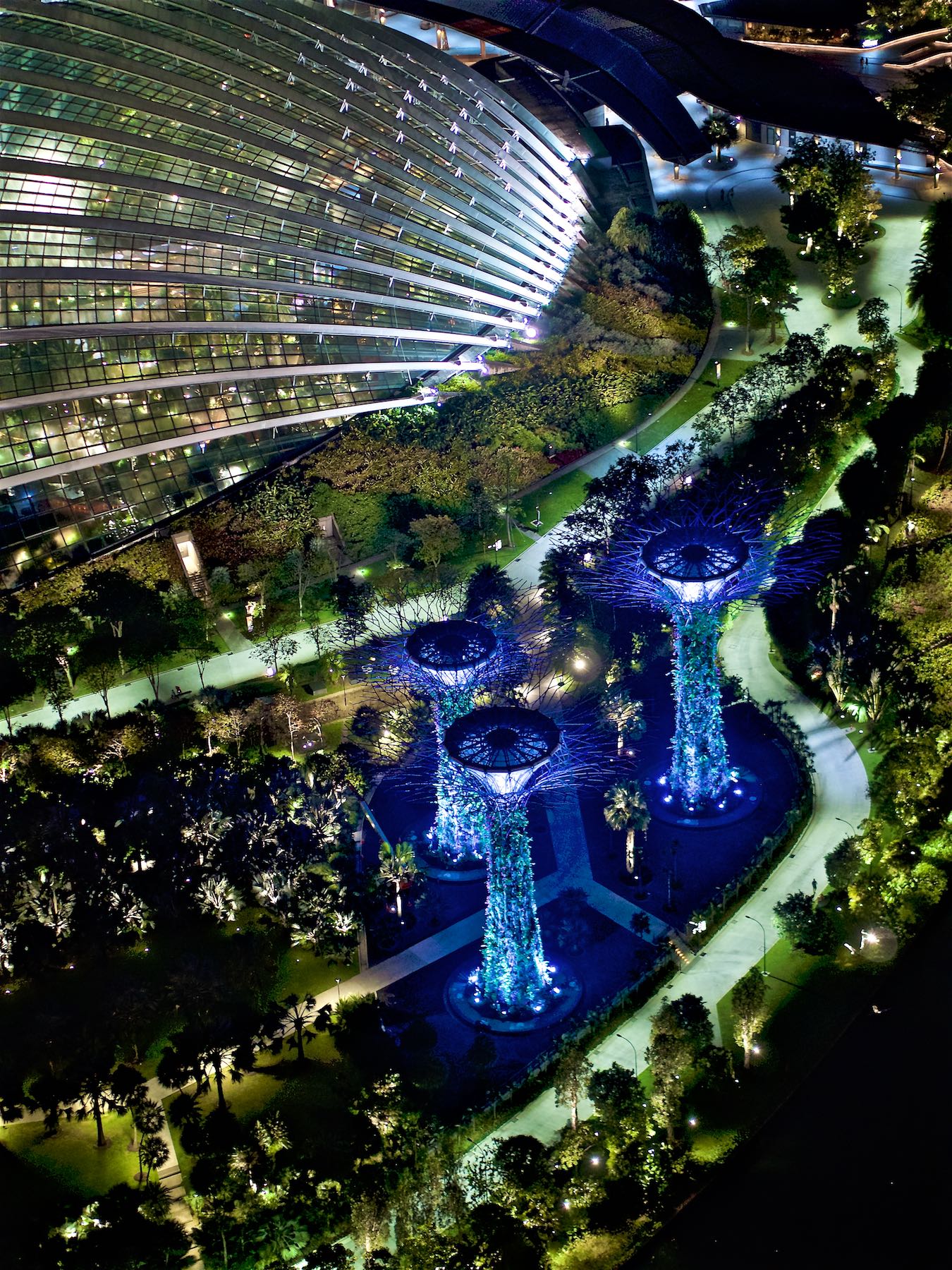
Supertree Grove & Cloud Forest
The park was part of the plan to transform Singapore from a "Garden City" to a "City in a Garden"

Textures
Green, concrete, glass, culture, business, old and new in synergy - Singapore.
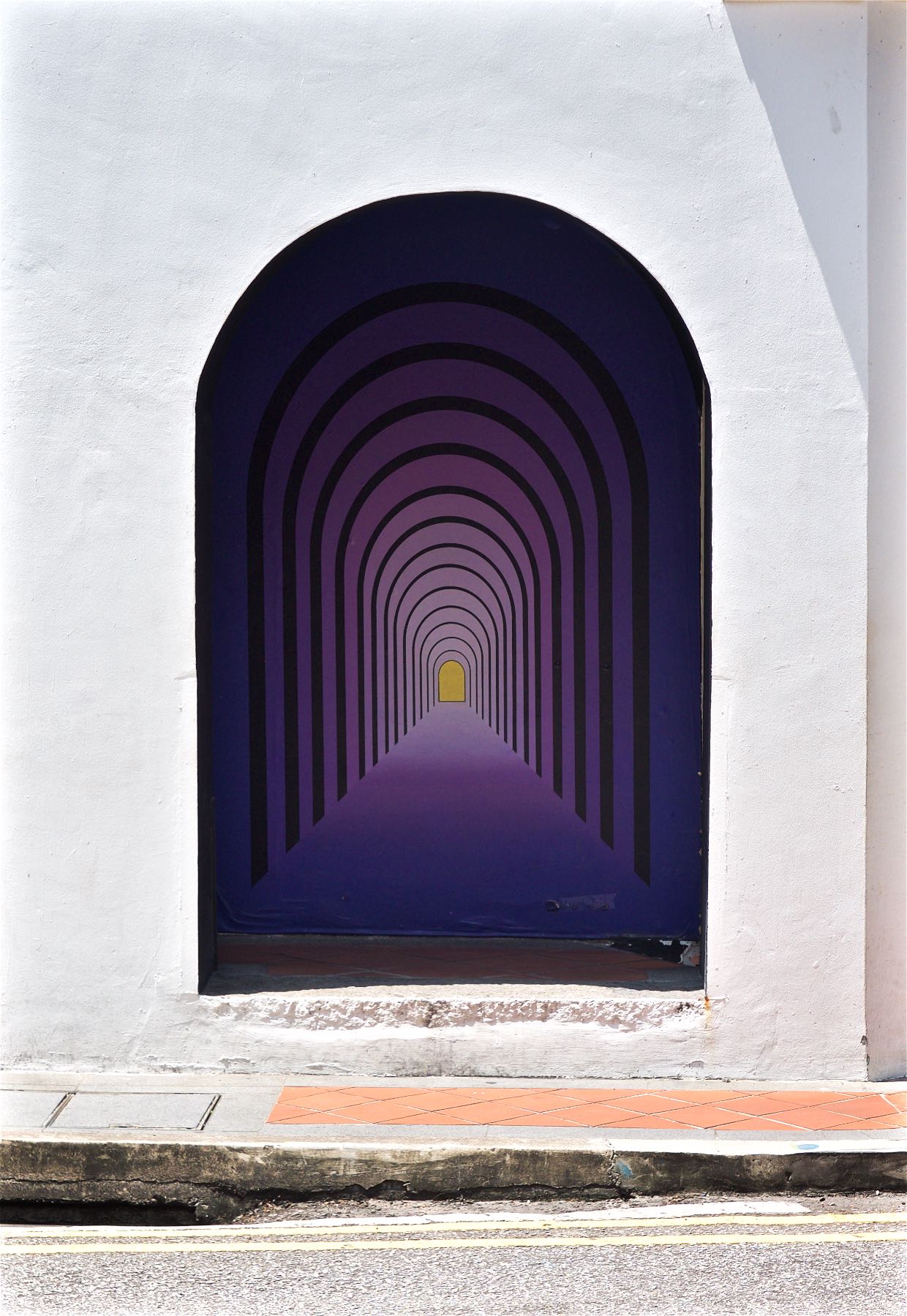
Portal
Try and run towards the light.
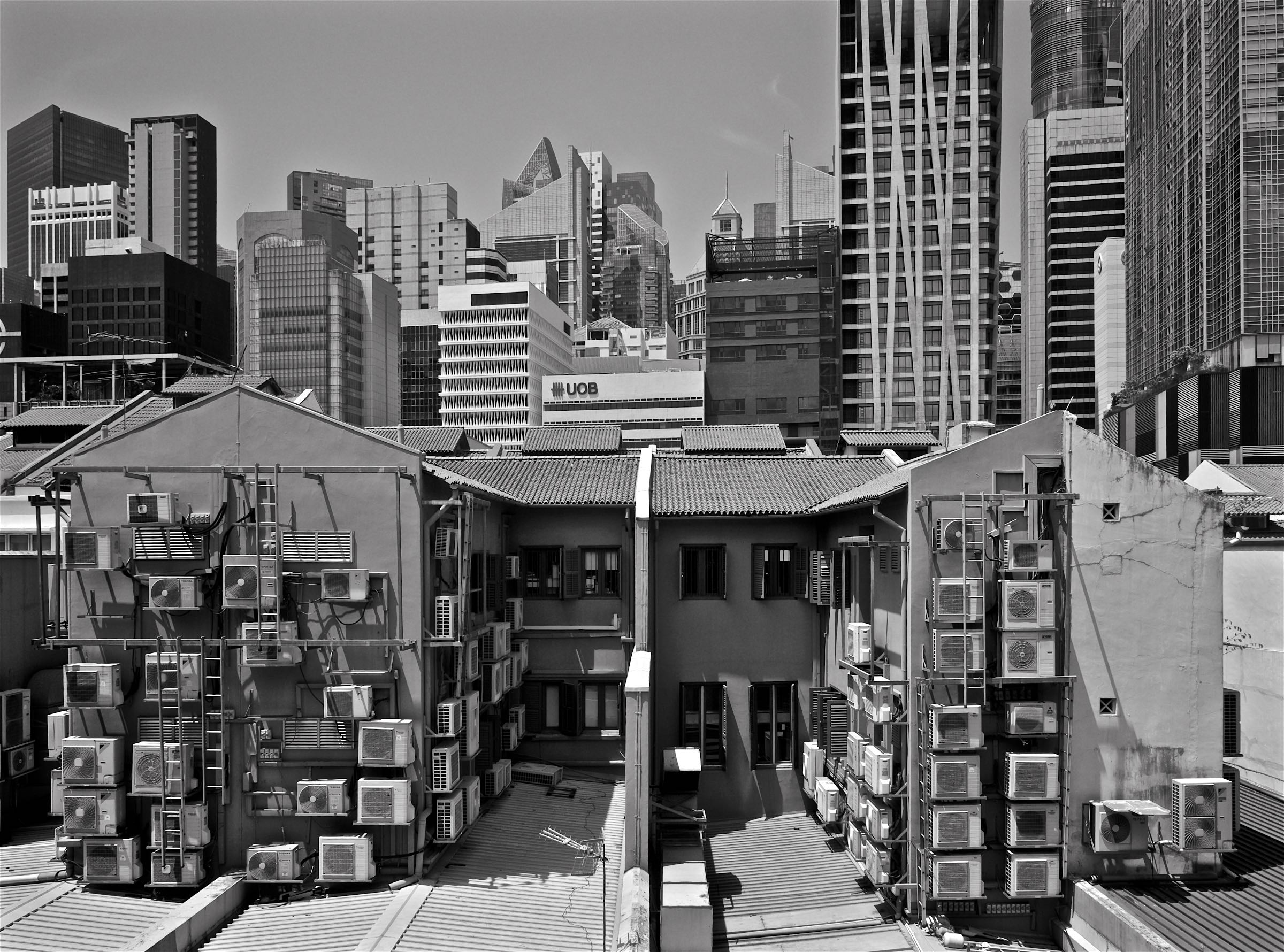
AC Galore
Singapore is hot and humid. The result is here.
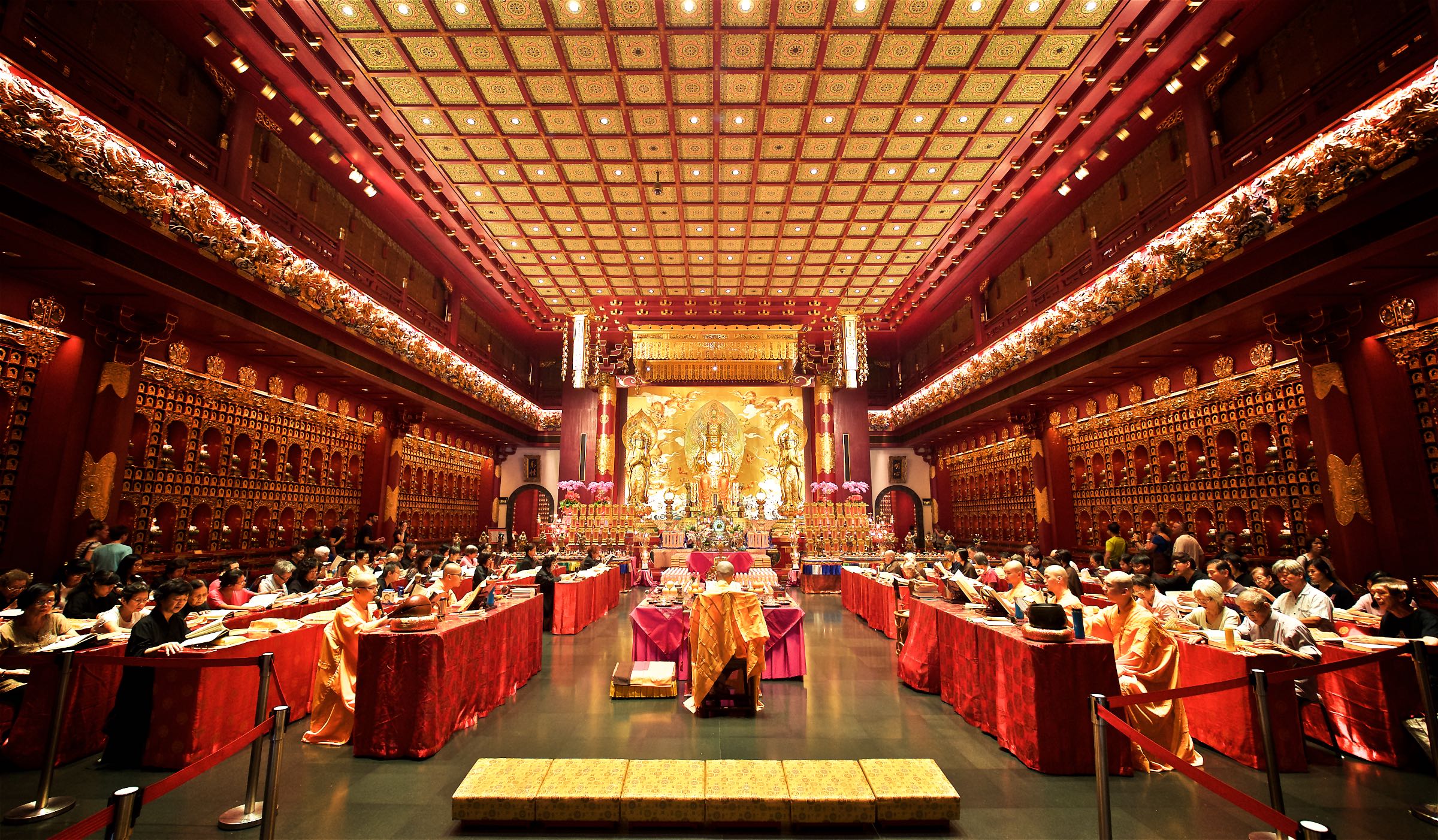
Interior
The inside of the temple during an ongoing ceremony.
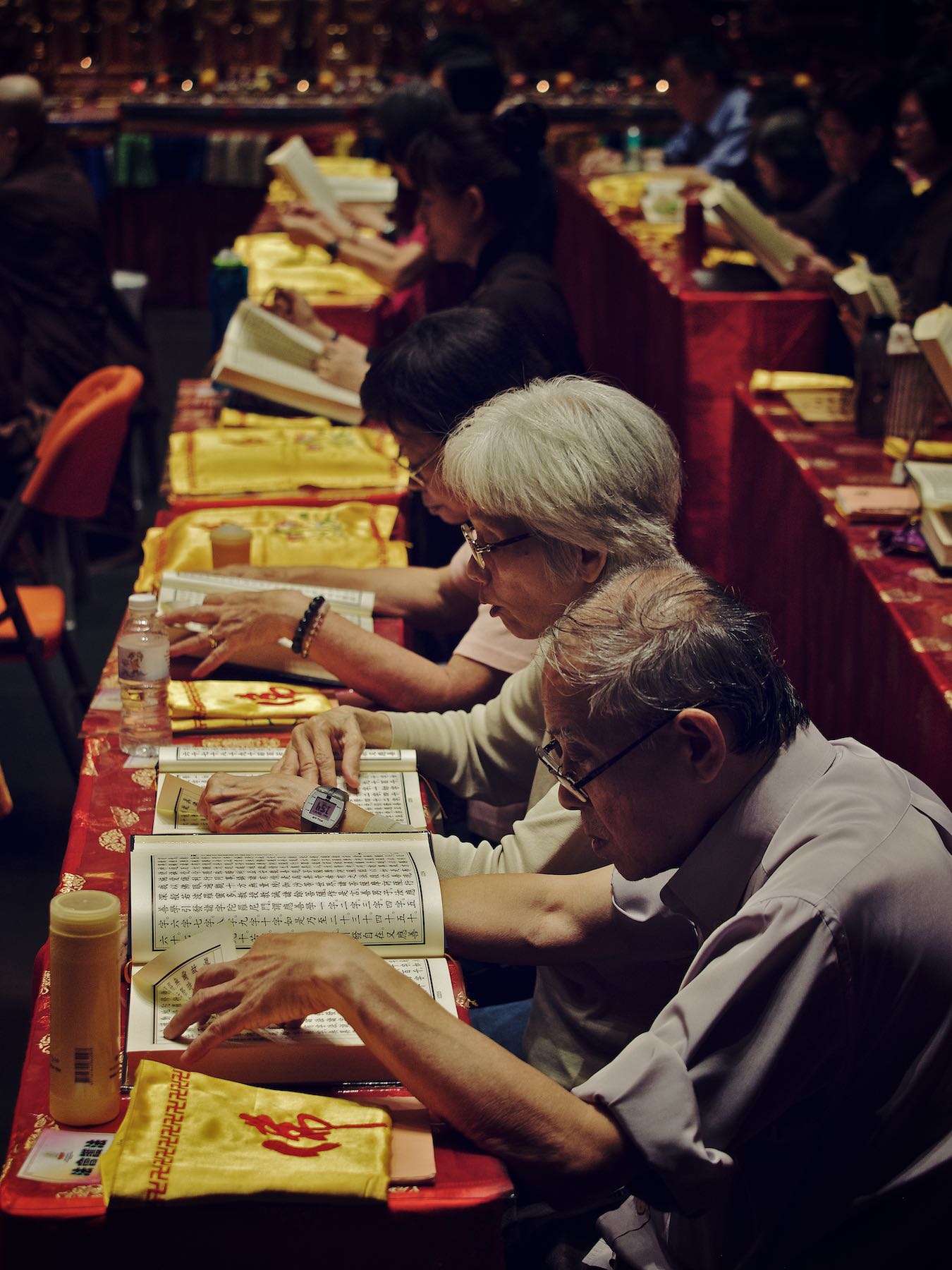
Prayers
The ongoing mumbling during the proceedings had a somewhat soothing effect.
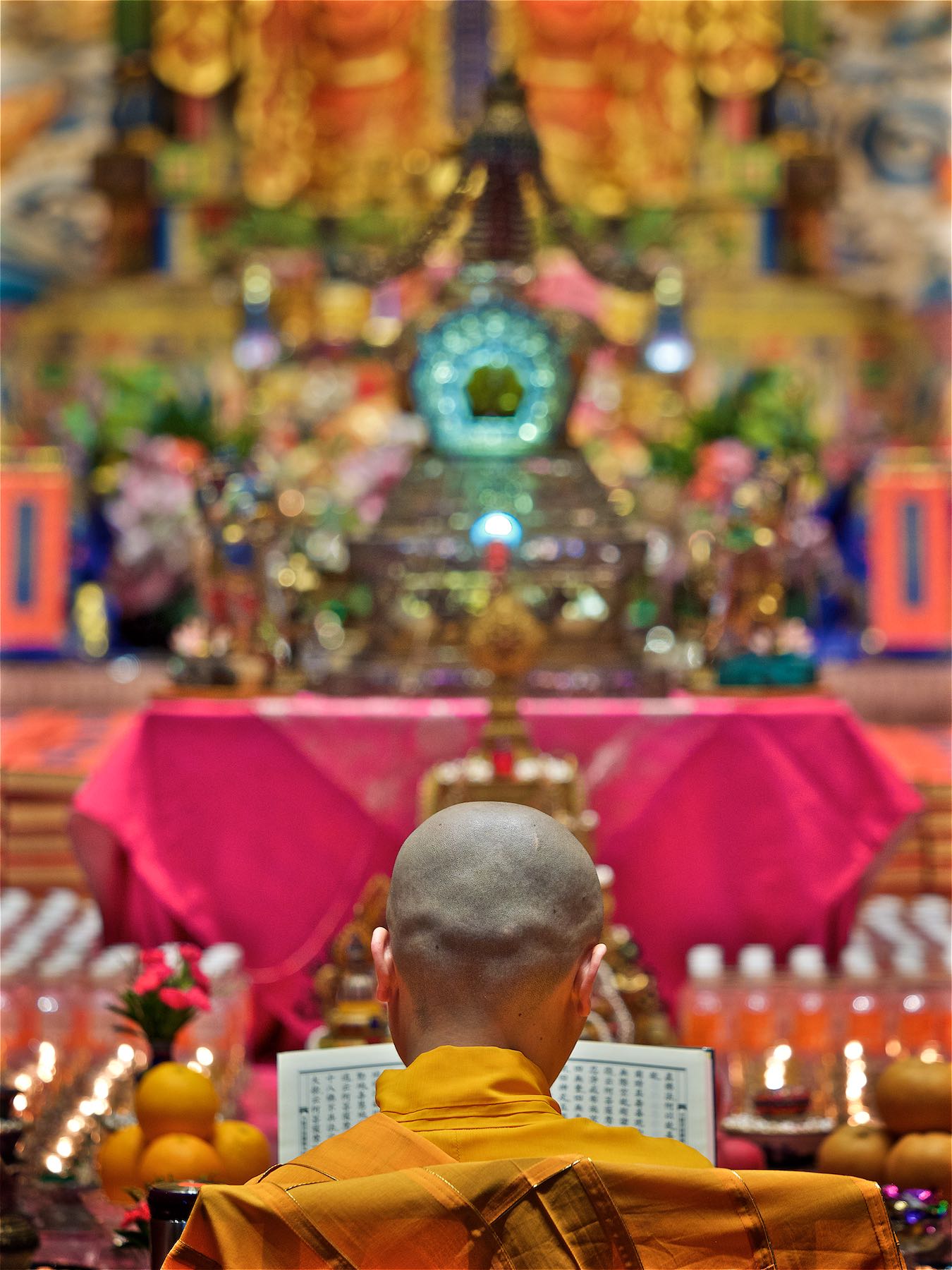
Monk
The monk in the central position during the ceremony.

10000 Buddhas
At the roof of the Buddha Tooth Relic Temple.
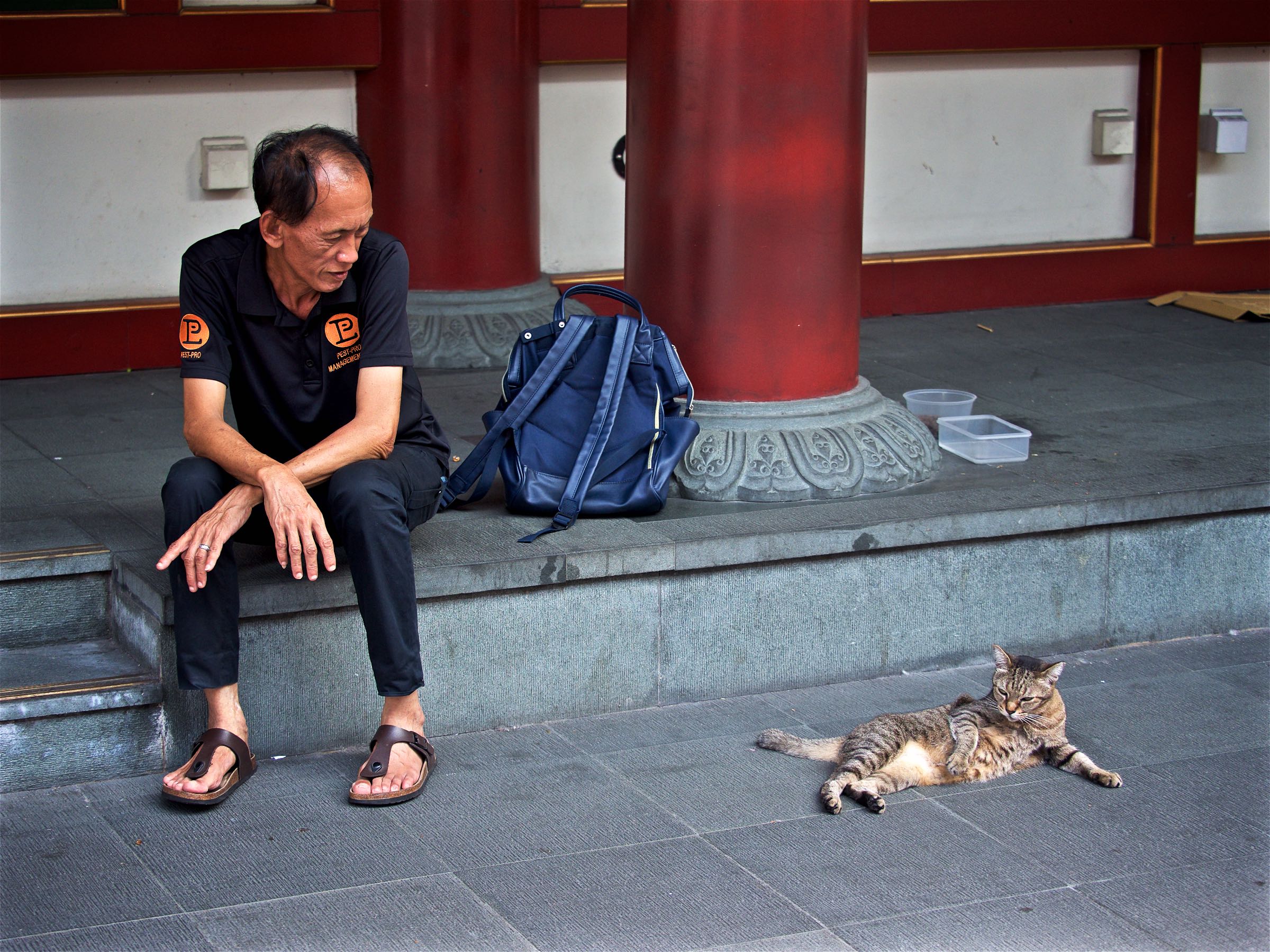
Just chilling.
Obligatory cat shot.

Gambling
Traditional gambling is highly regulated in Singapore - not this type of street games though. Anyone knows what it is?
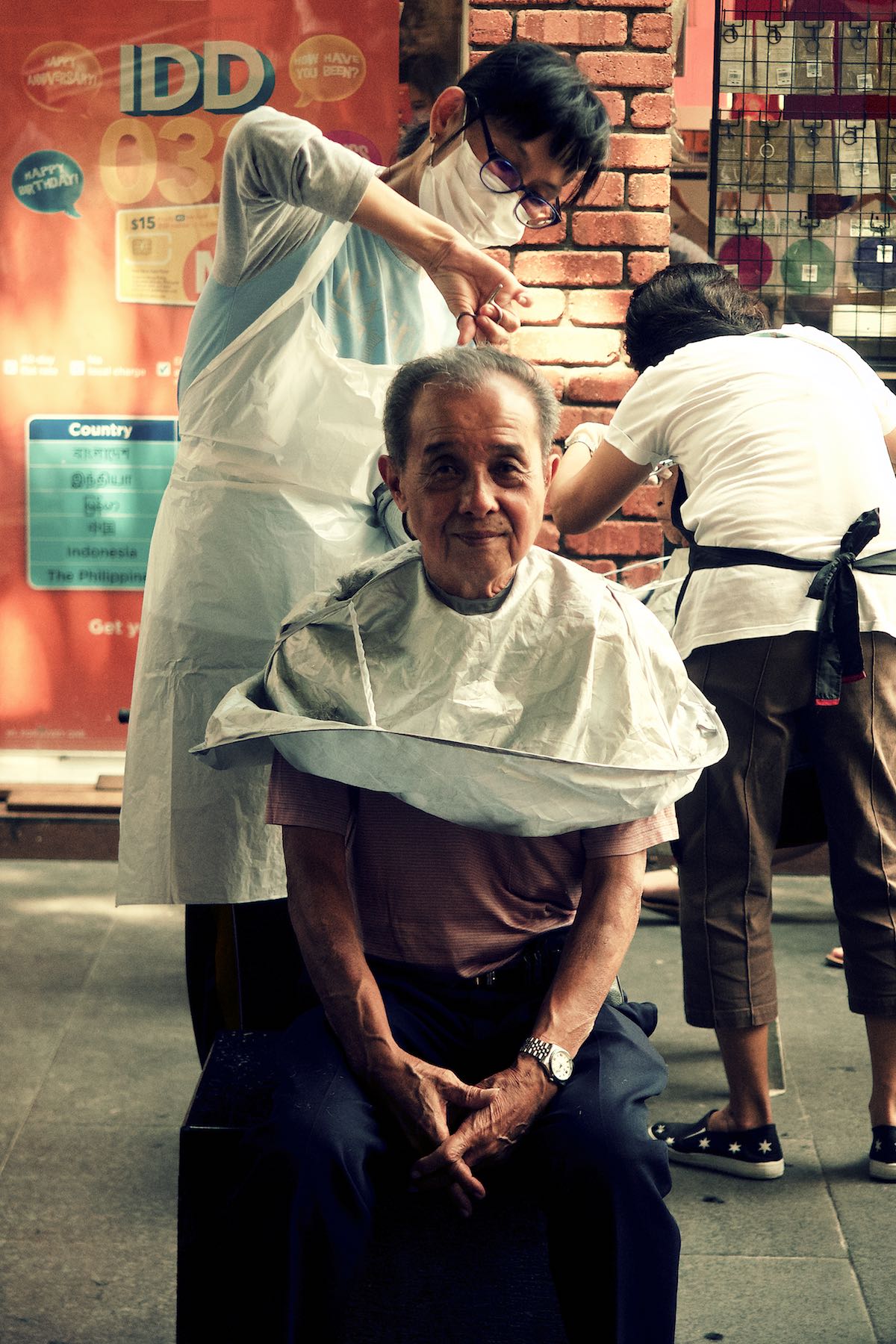
Free Cut
Free haircuts for the homeless and elderly in the Chinese quarter.

Inventive Laundry
I wonder how much gets lost.
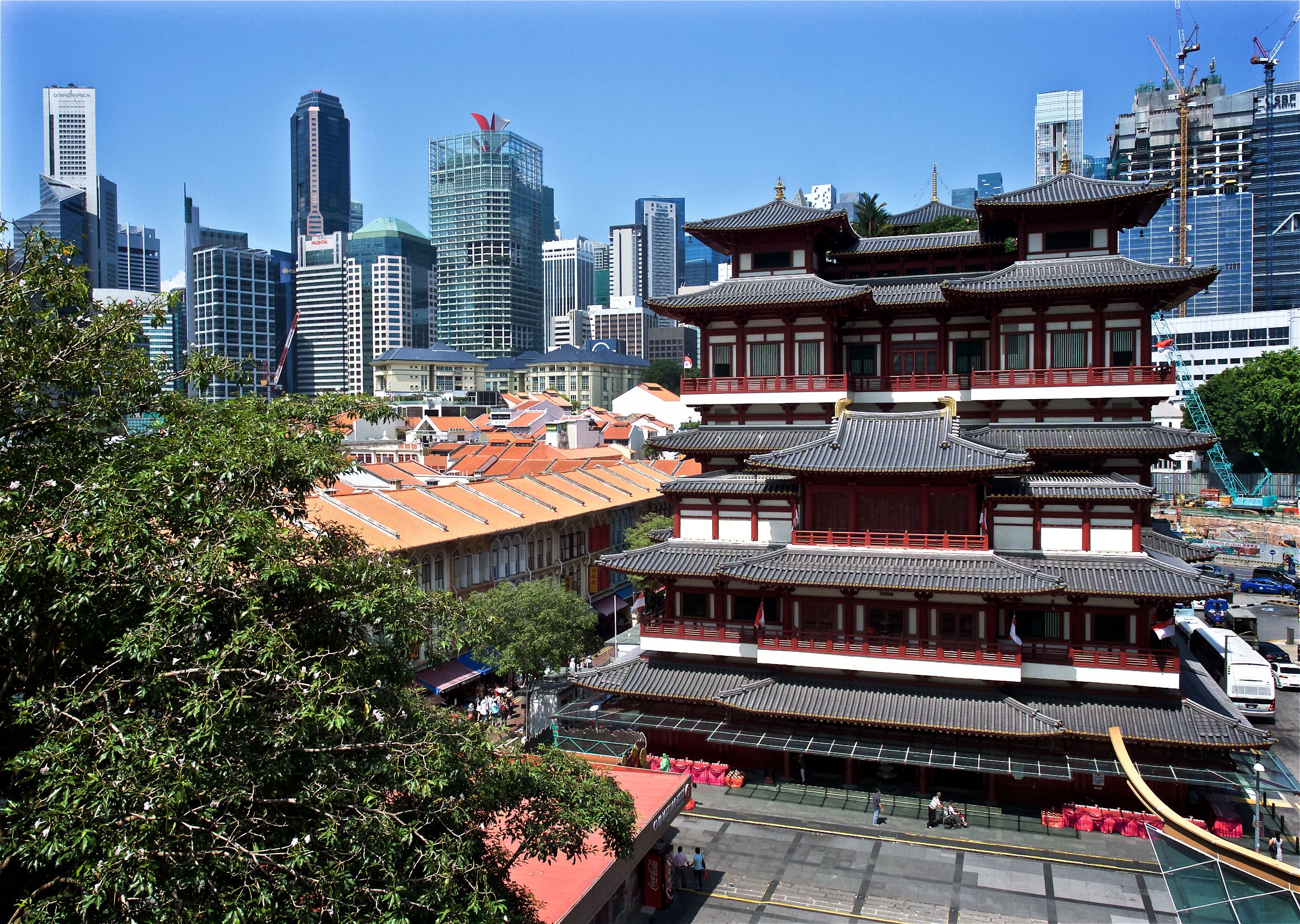
Buddha Tooth Relic Temple
Worth a visit for sure.
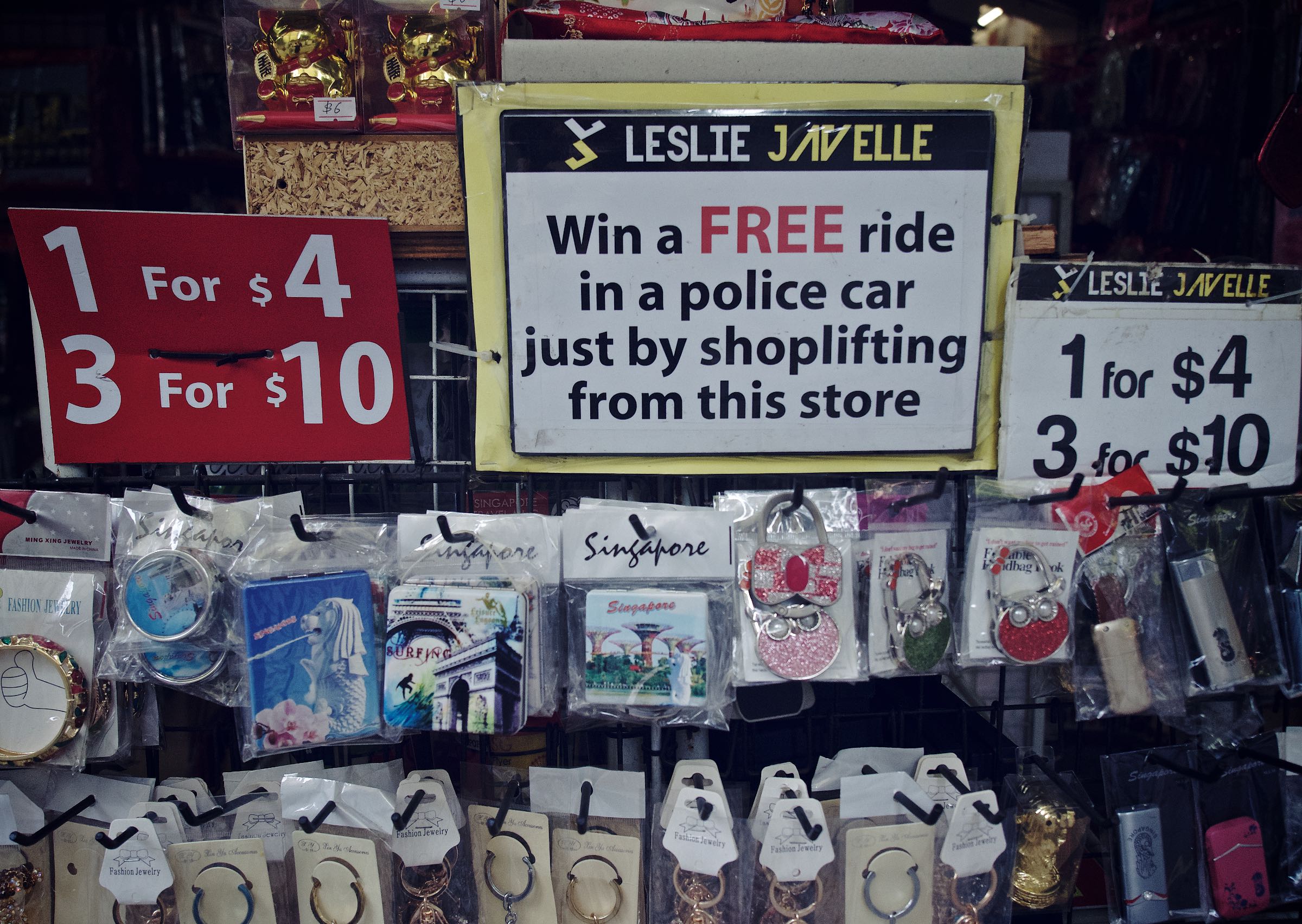
Great Offers
I didn't take advantage.
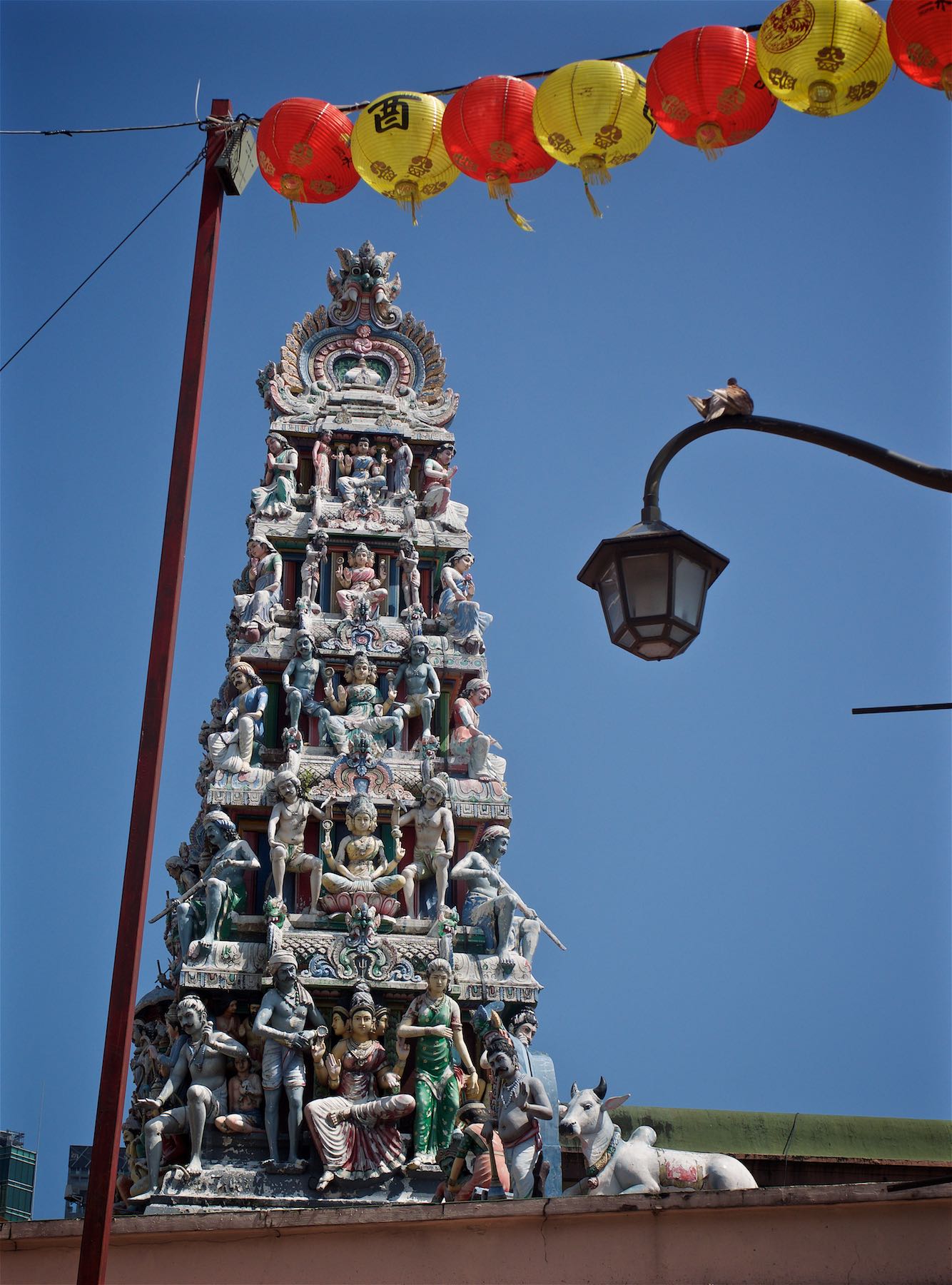
Sri Mariamman Temple
Unfortunately the temple was closed for cleaning.
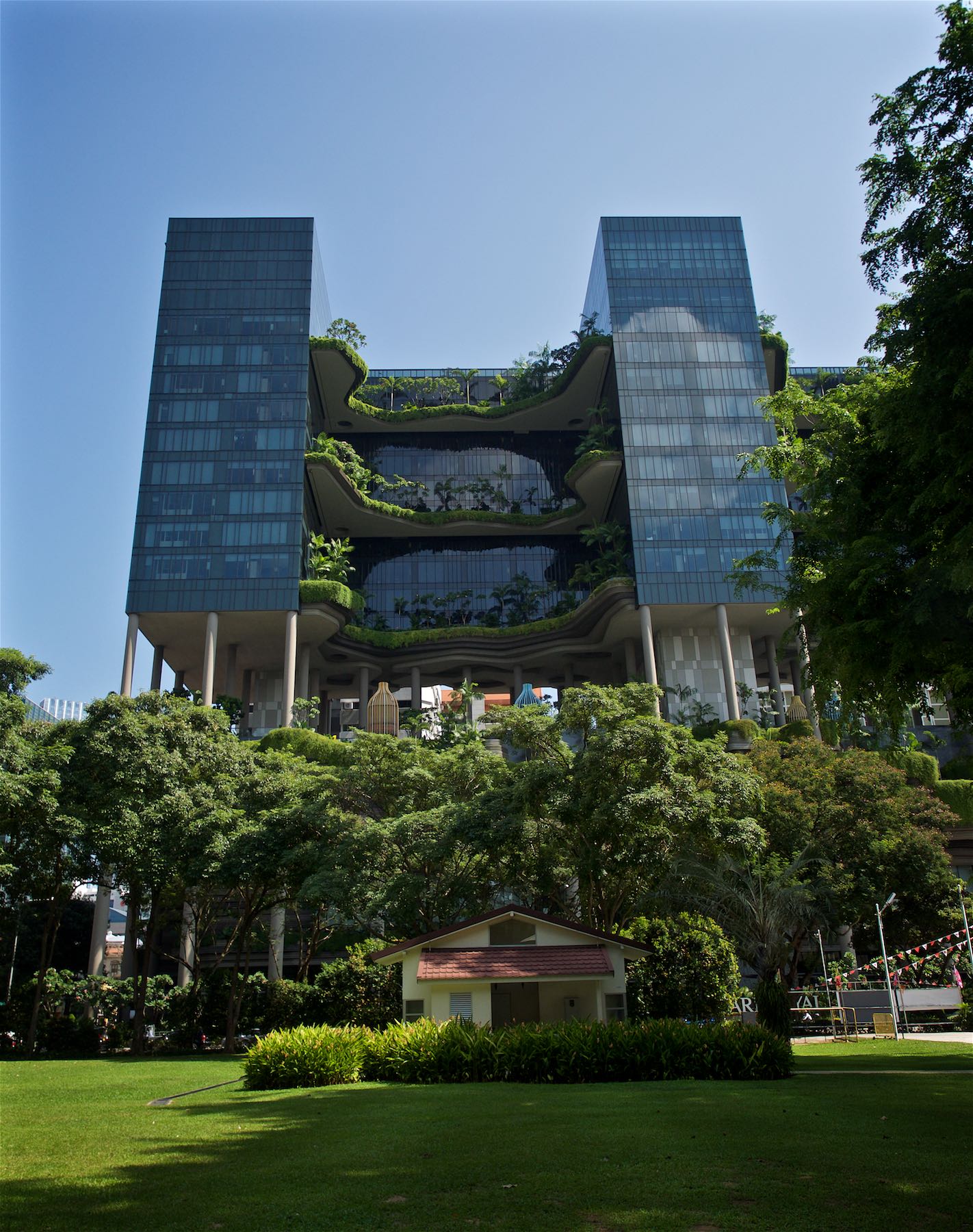
Park Royal Towers
With their built in sky gardens.
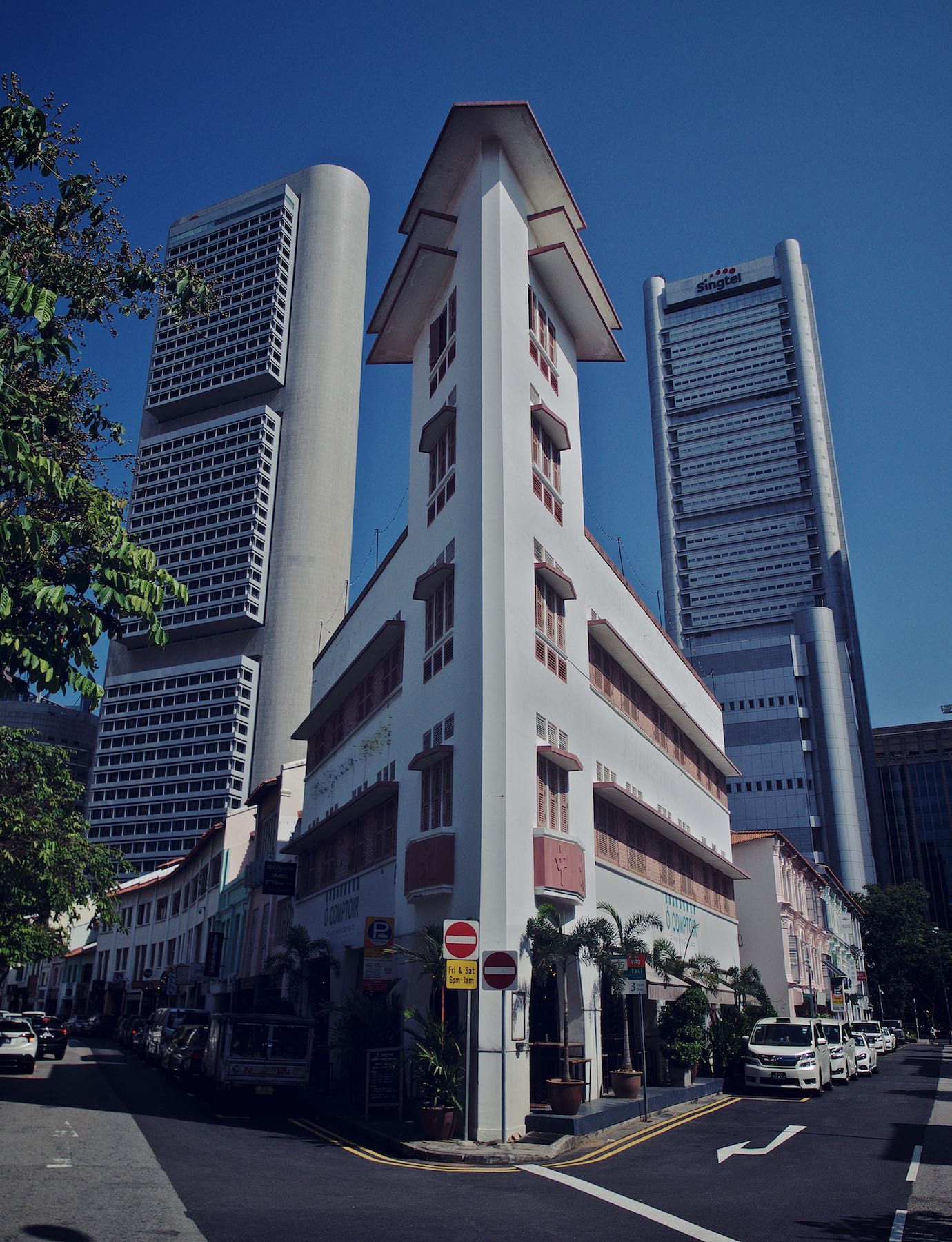
Little flat iron
A building in the old district by the Boat Quay.
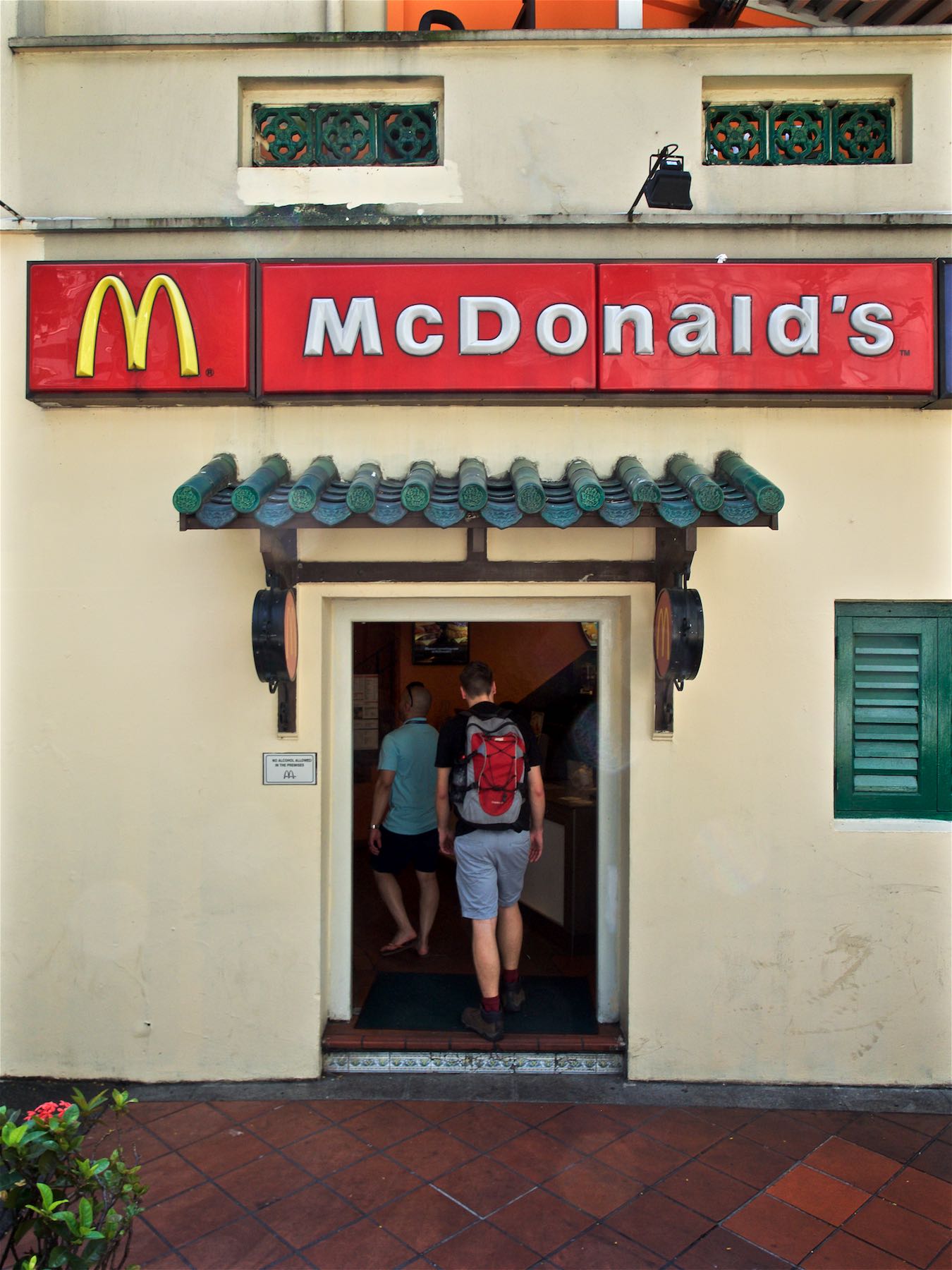
Tiny McDonald's
Maybe the smallest one I've seen.
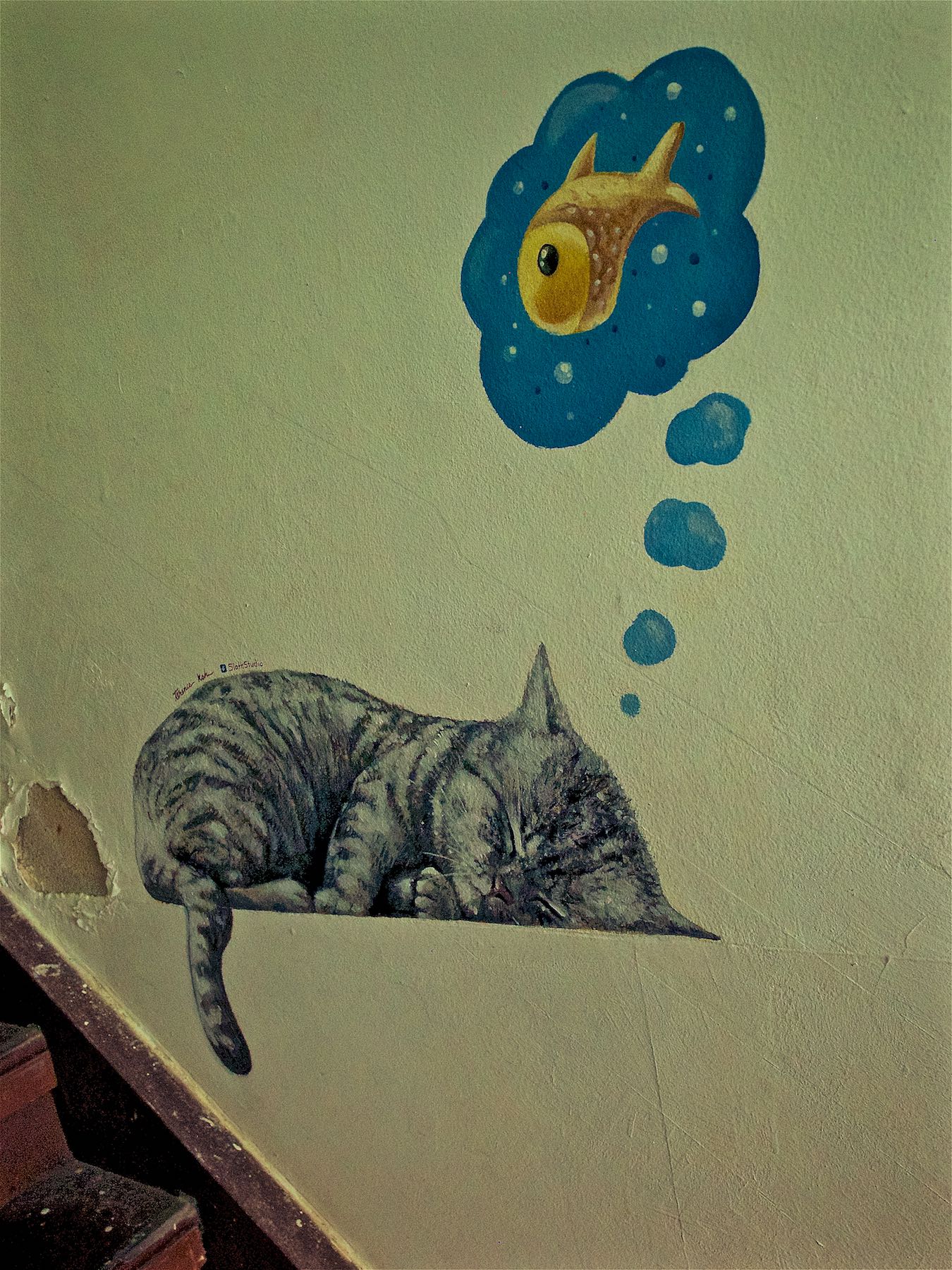
Fishy Dreams
On the way up to Singapore's cat cafe. The one in Dubai is nicer!
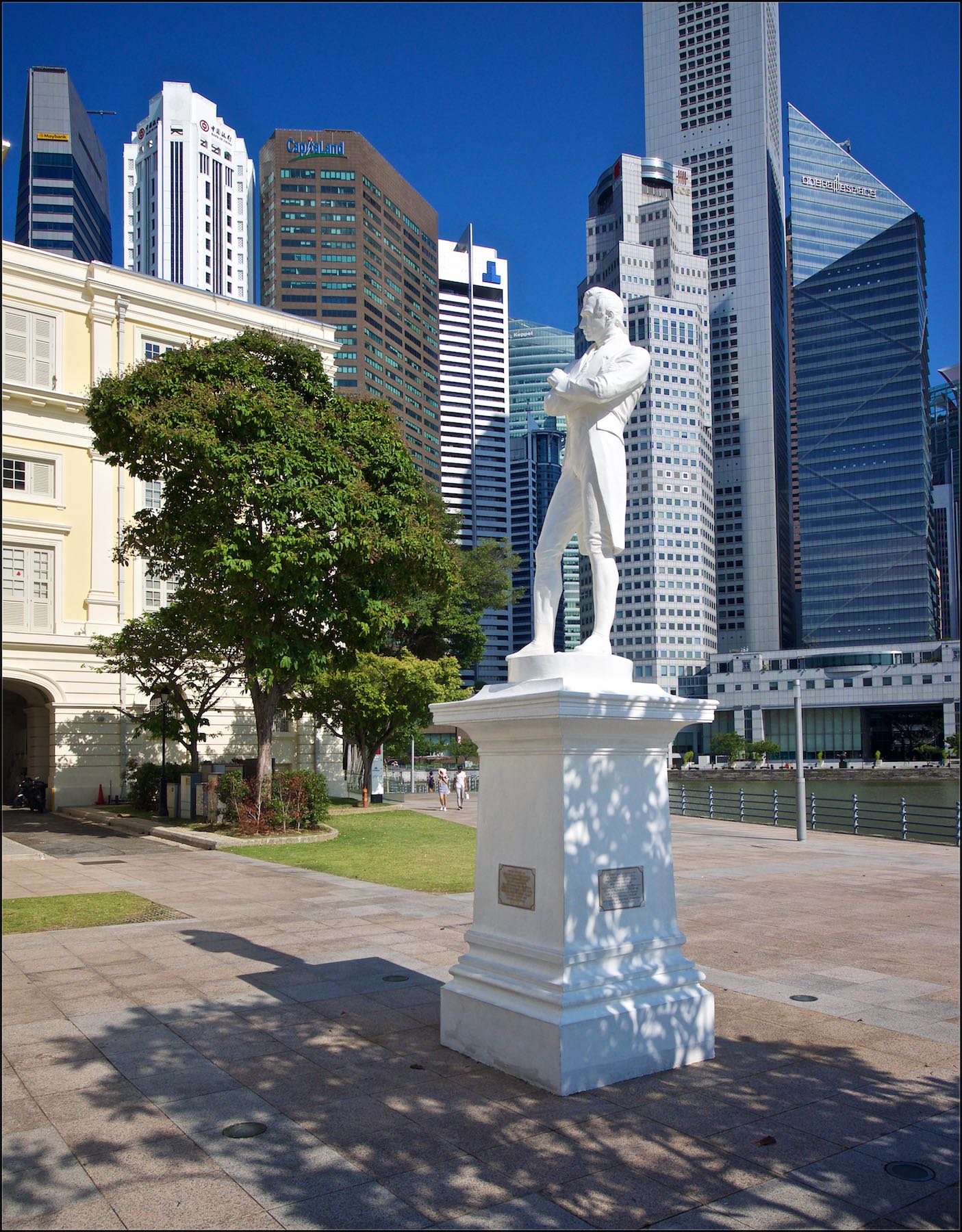
Stamford Raffles
The founder of Singapore in the early 19th century.

Reflections
An installation near the Victoria theatre.

Contrasts
Looking towards Downtown Core and it's low rise buildings on the Singapore river.

St Andrew's Cathedral
Early gothic style and originally opened in 1861.
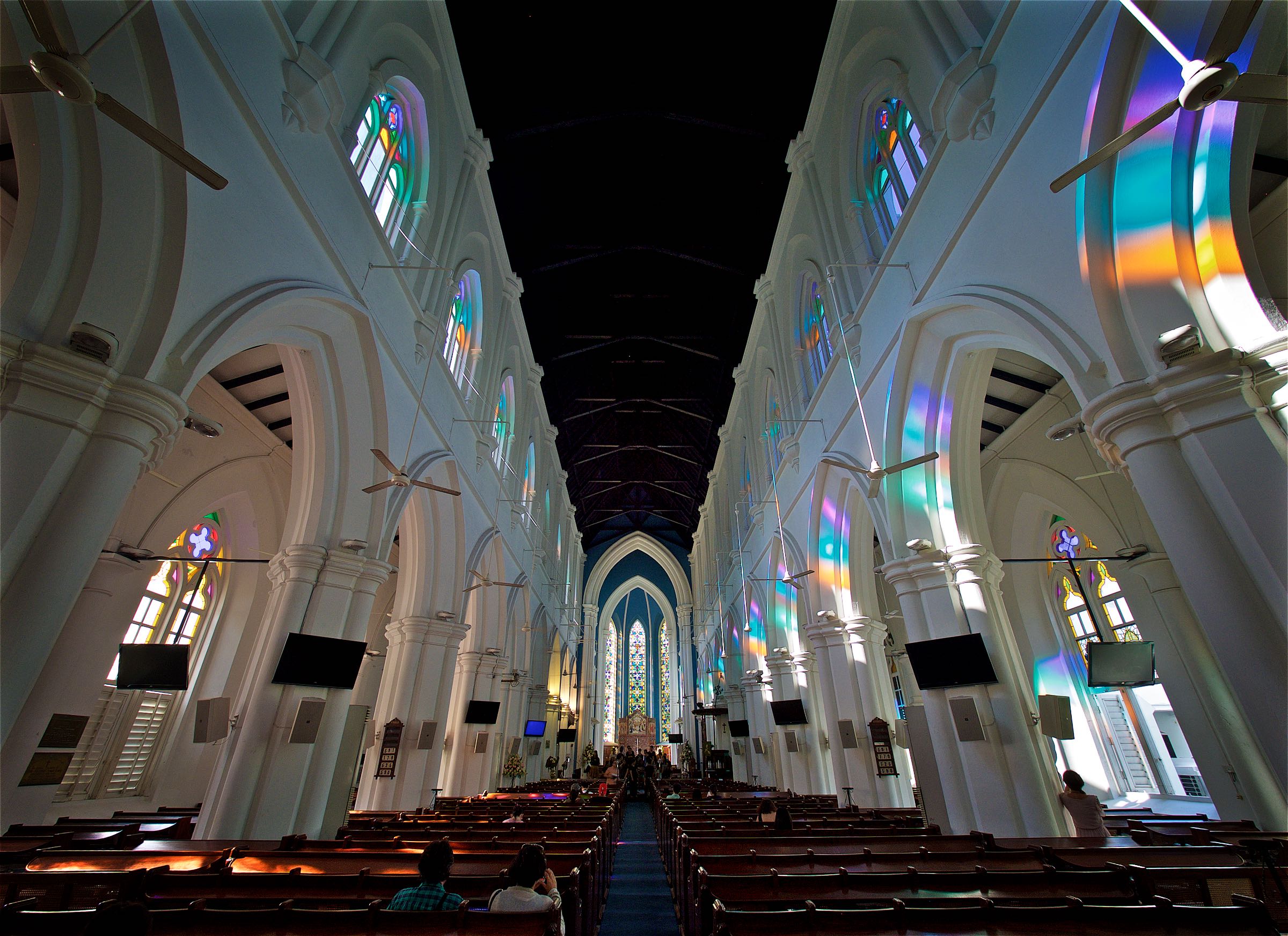
Interiors
The colorful windows create an interesting atmosphere.

Greenery
Singapore's flora is really amazing in parts.

Sri Thendayuthapani Temple
From the 1850s.
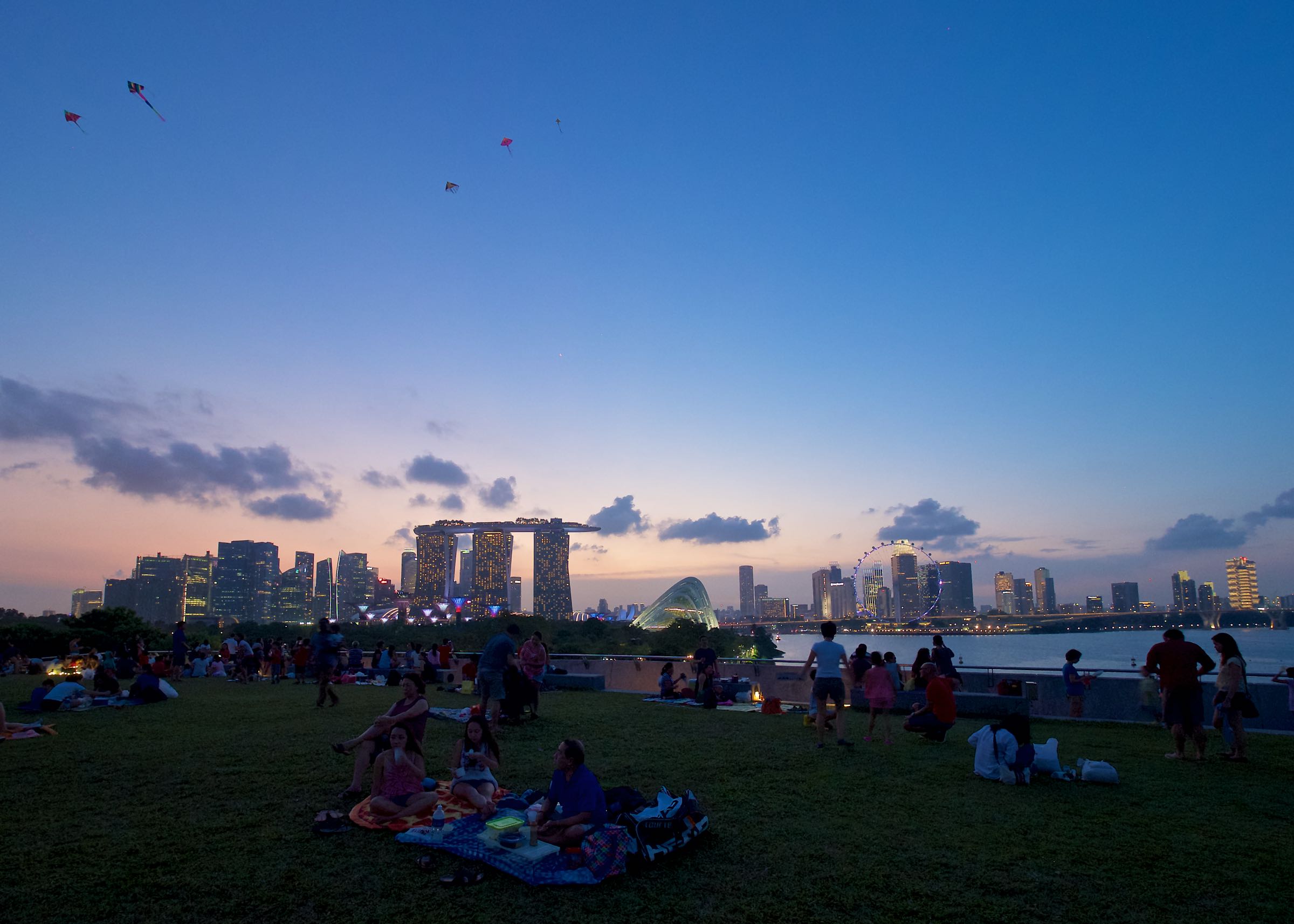
Bliss
The place was full of local families and kids, and it seems every weekend the sky is filled with dozens of kites. Great view.
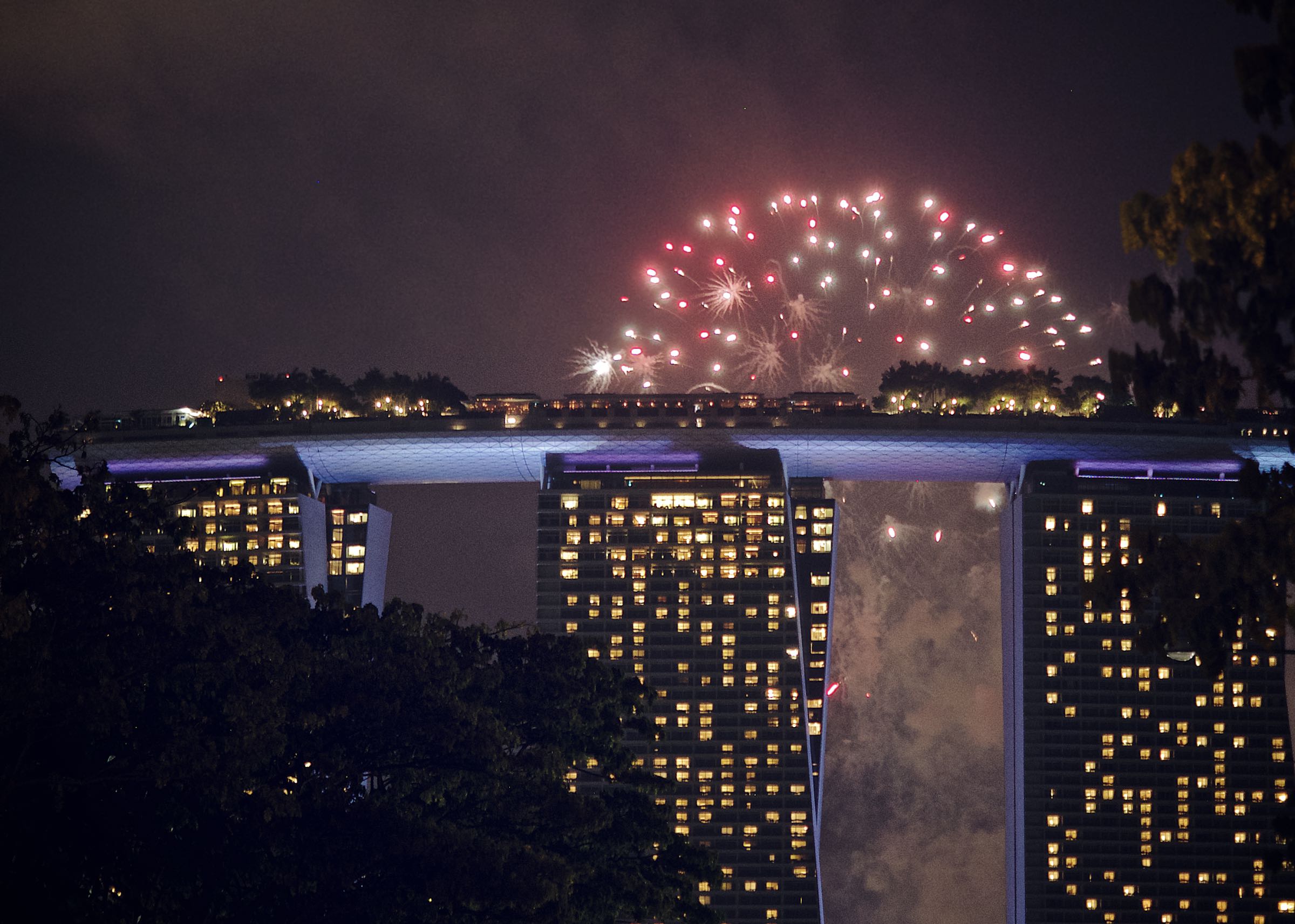
Fireworks
Unfortunately I missed a much better view by a few minutes. Every Saturday in July, fireworks take place in preparation for National Day.
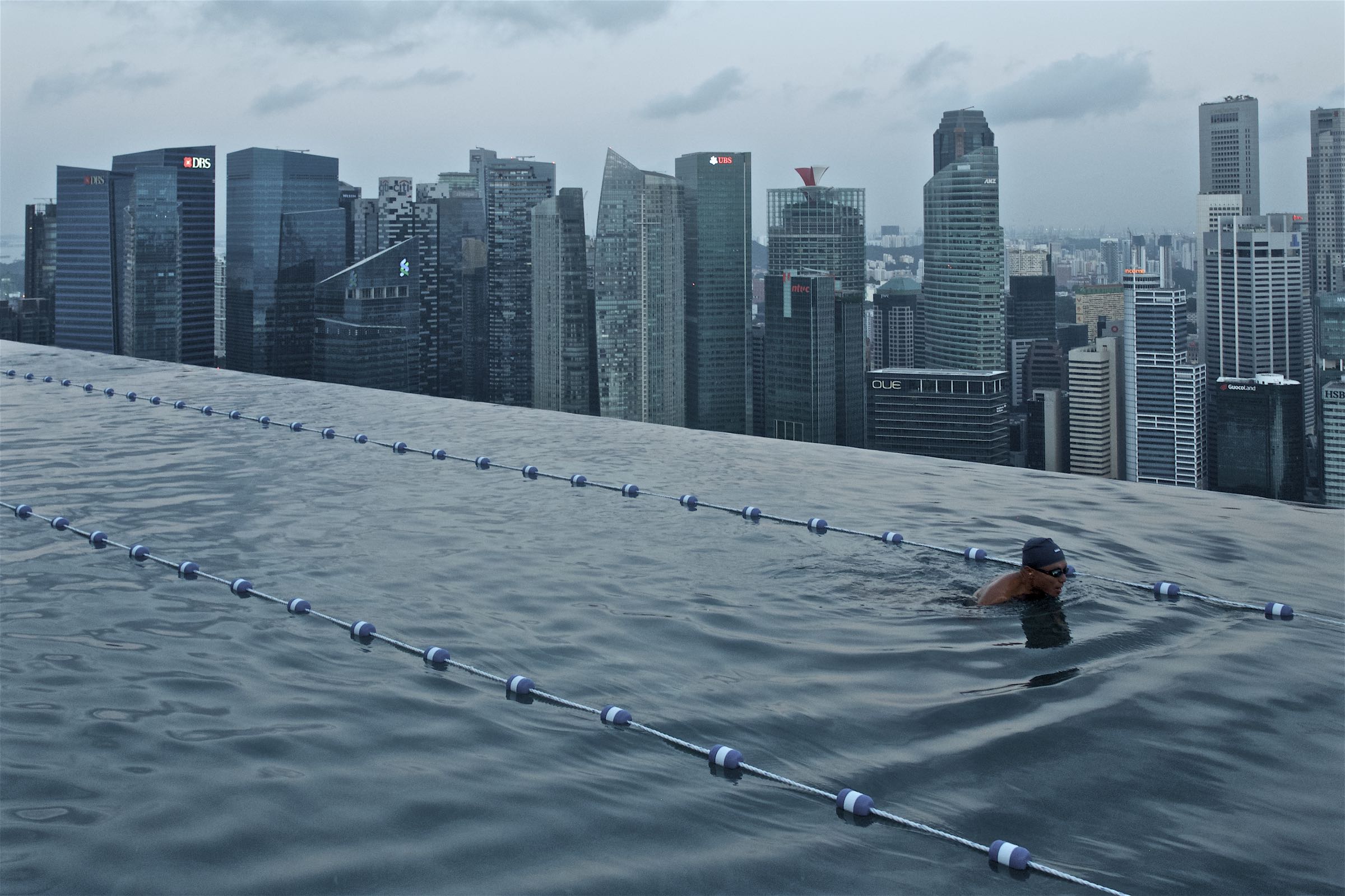
Lonely Swimmer
The very early morning is the only time you'll see the Marina Bay Sands pool this empty.
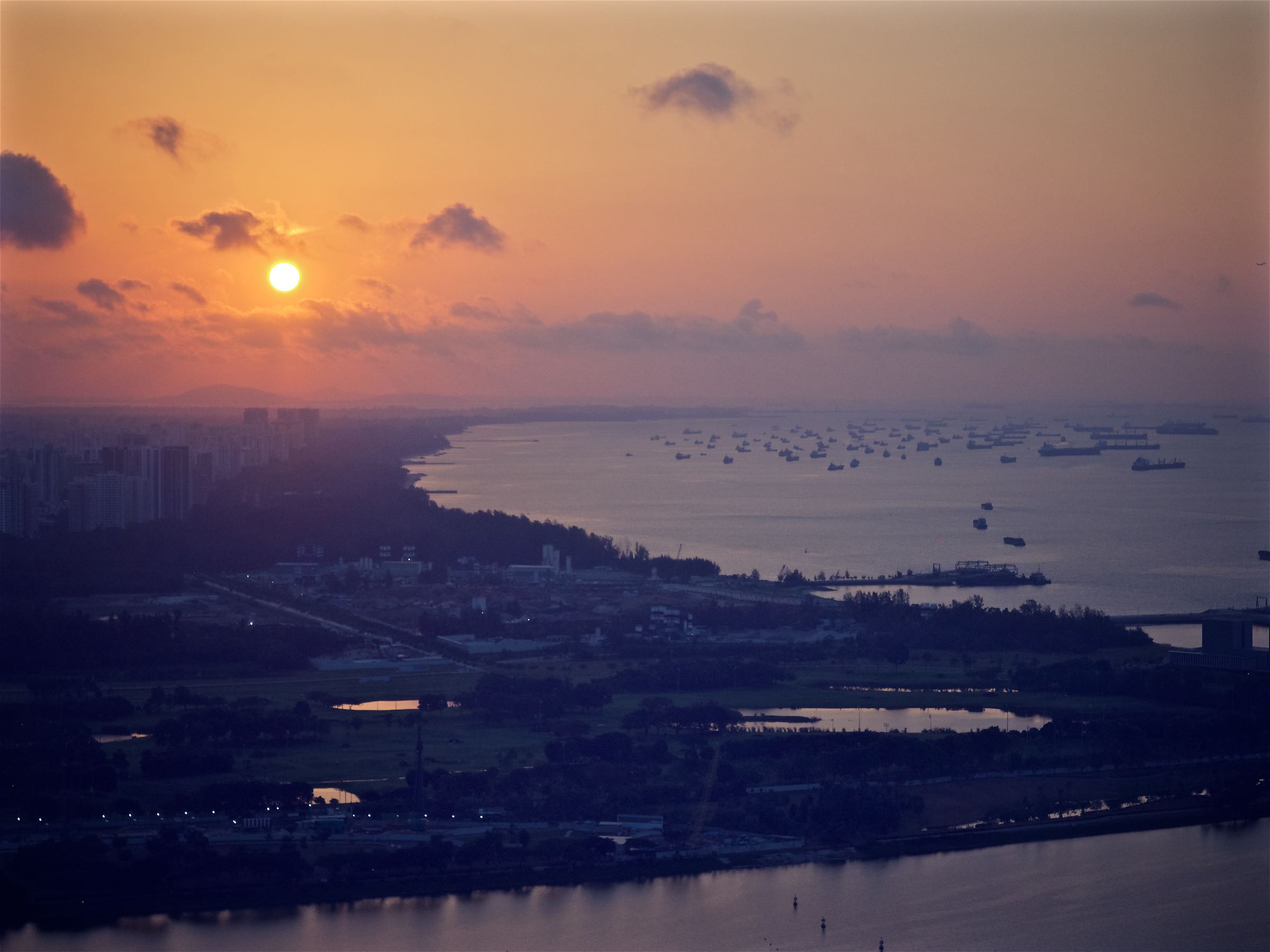
Sunrise
Looking east from the Marina Bay Sands rooftop.
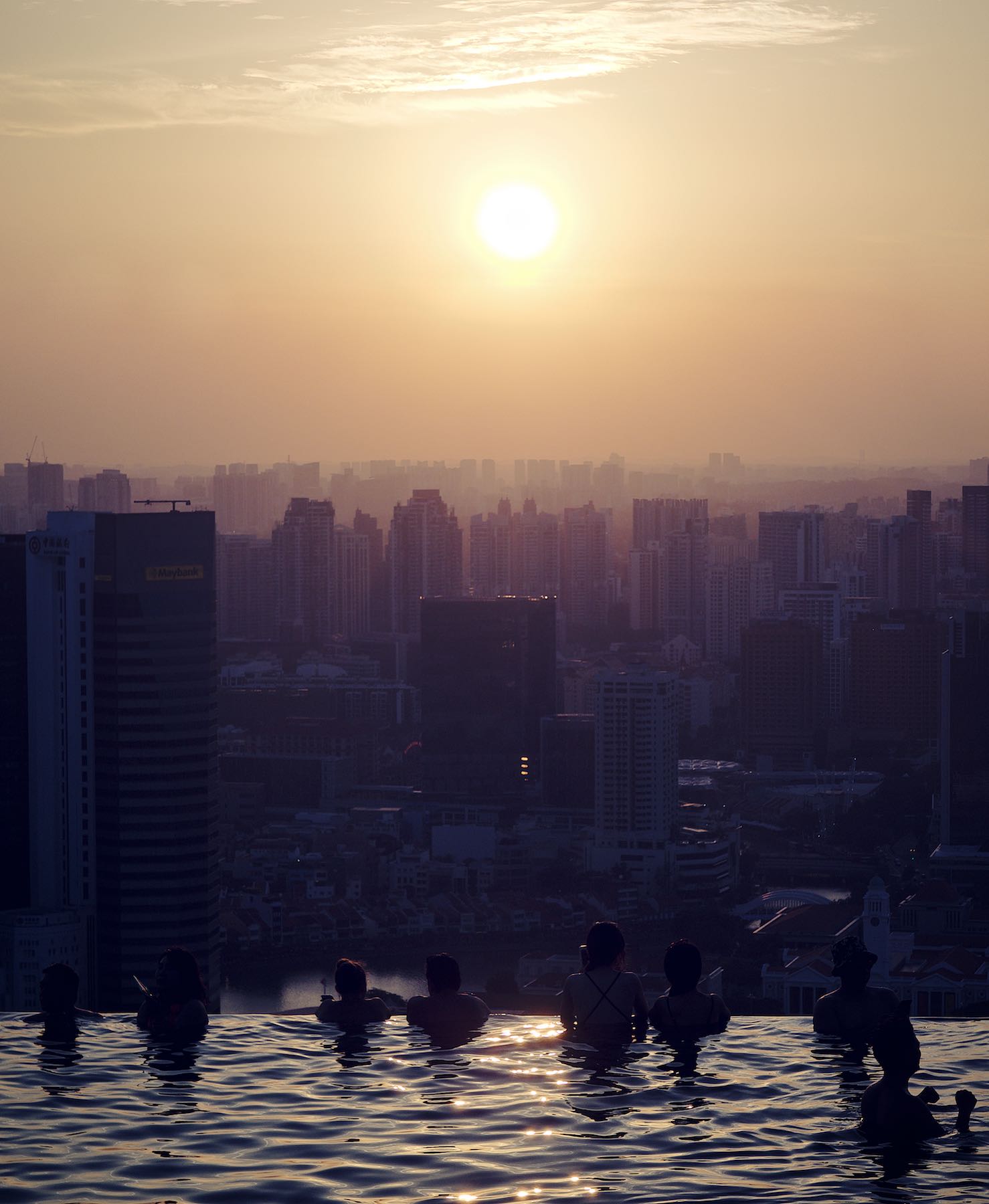
Sunset
Looking west over the Marina Bay Sands infinity pool.
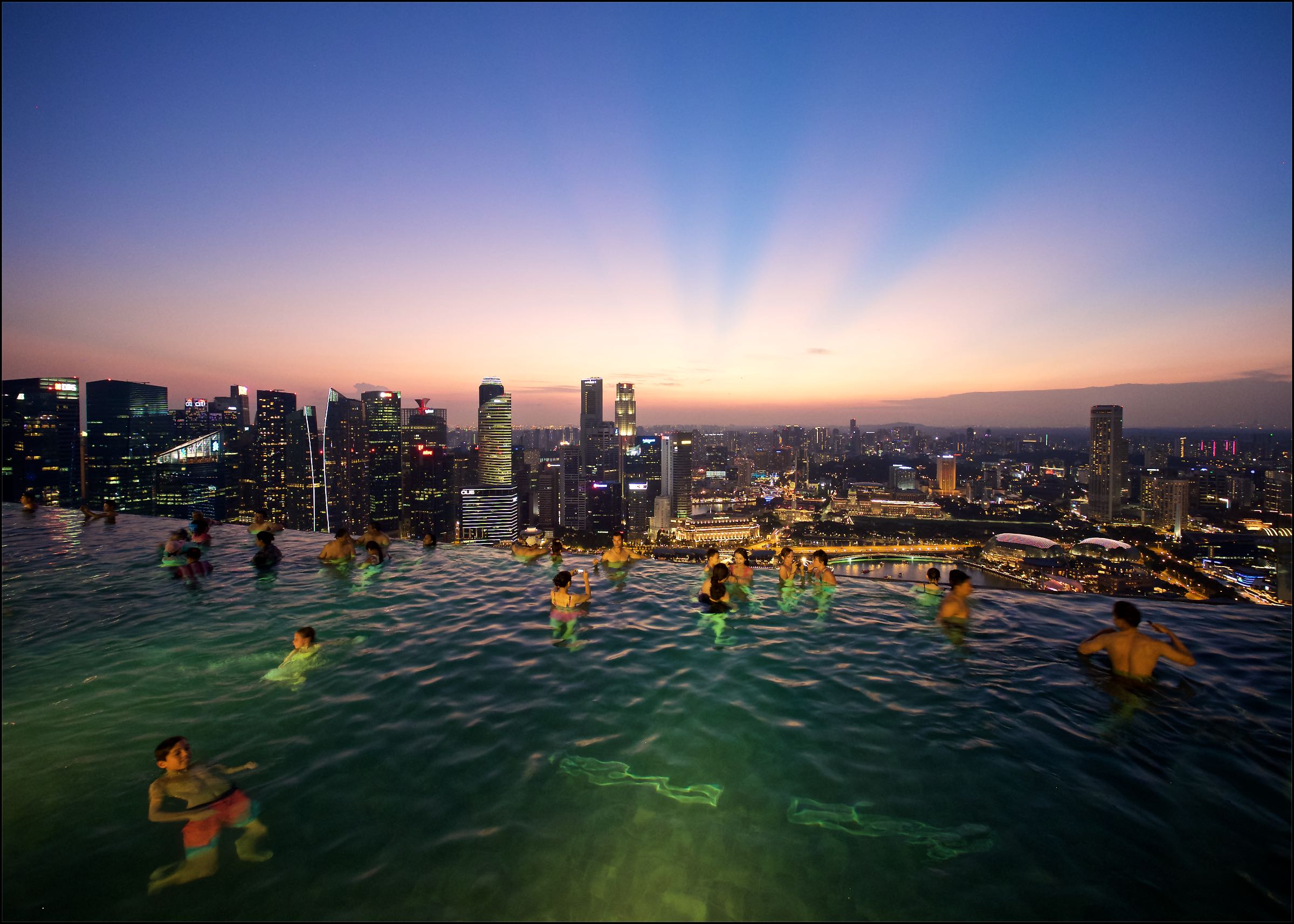
Marina Bay Sands
In all likelihood the most famous infinity pool in the world.
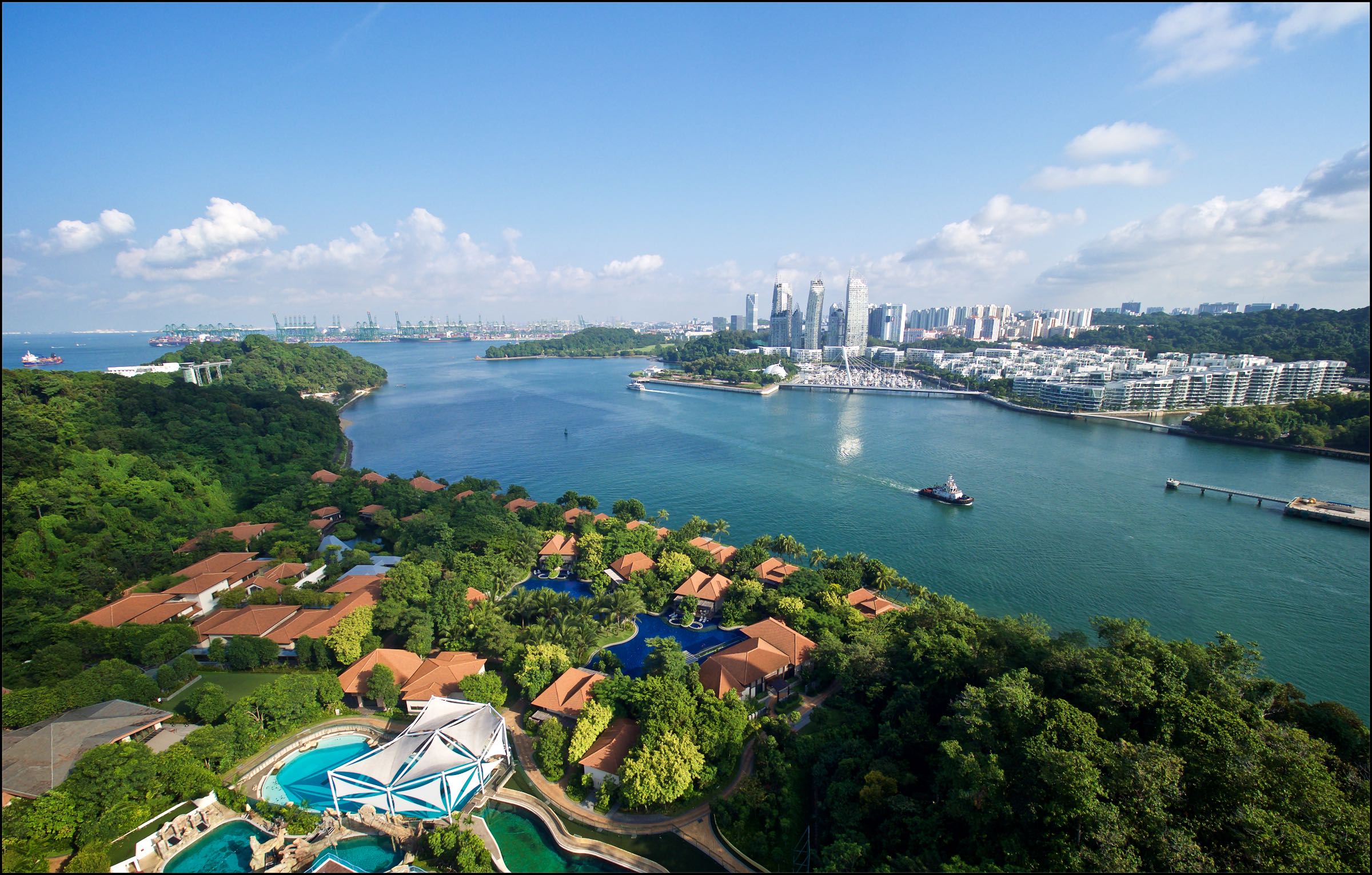
Sentosa Island
Looking down at Sentosa island, Singapore's entertainment district, from the cable car that transports you to the island.

Universal
The signature entrance.
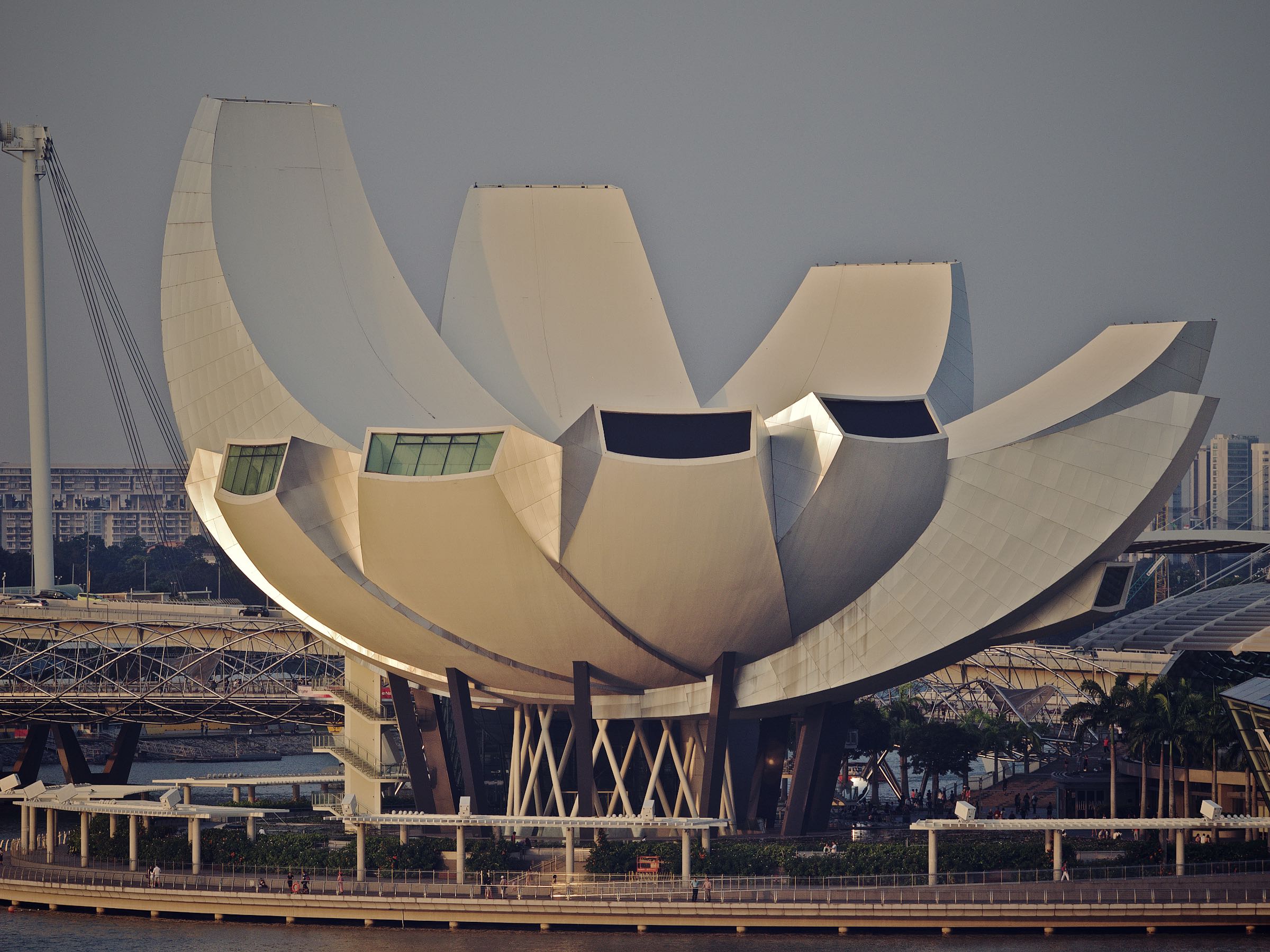
ArtScience Musem
Seen from the other side of the bay.
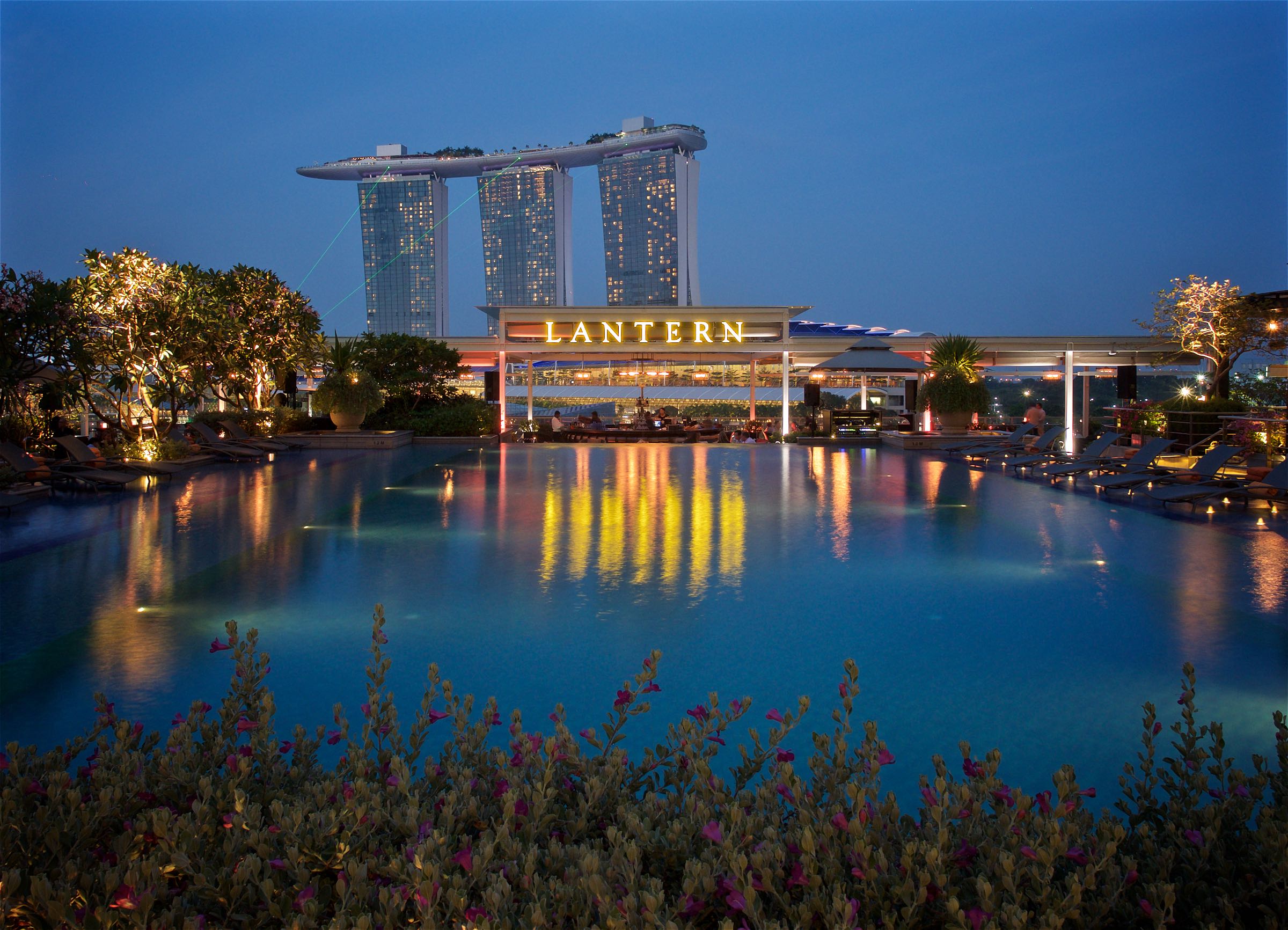
Lantern
The rooftop at the Fullerton Bay hotel, with it's pool.
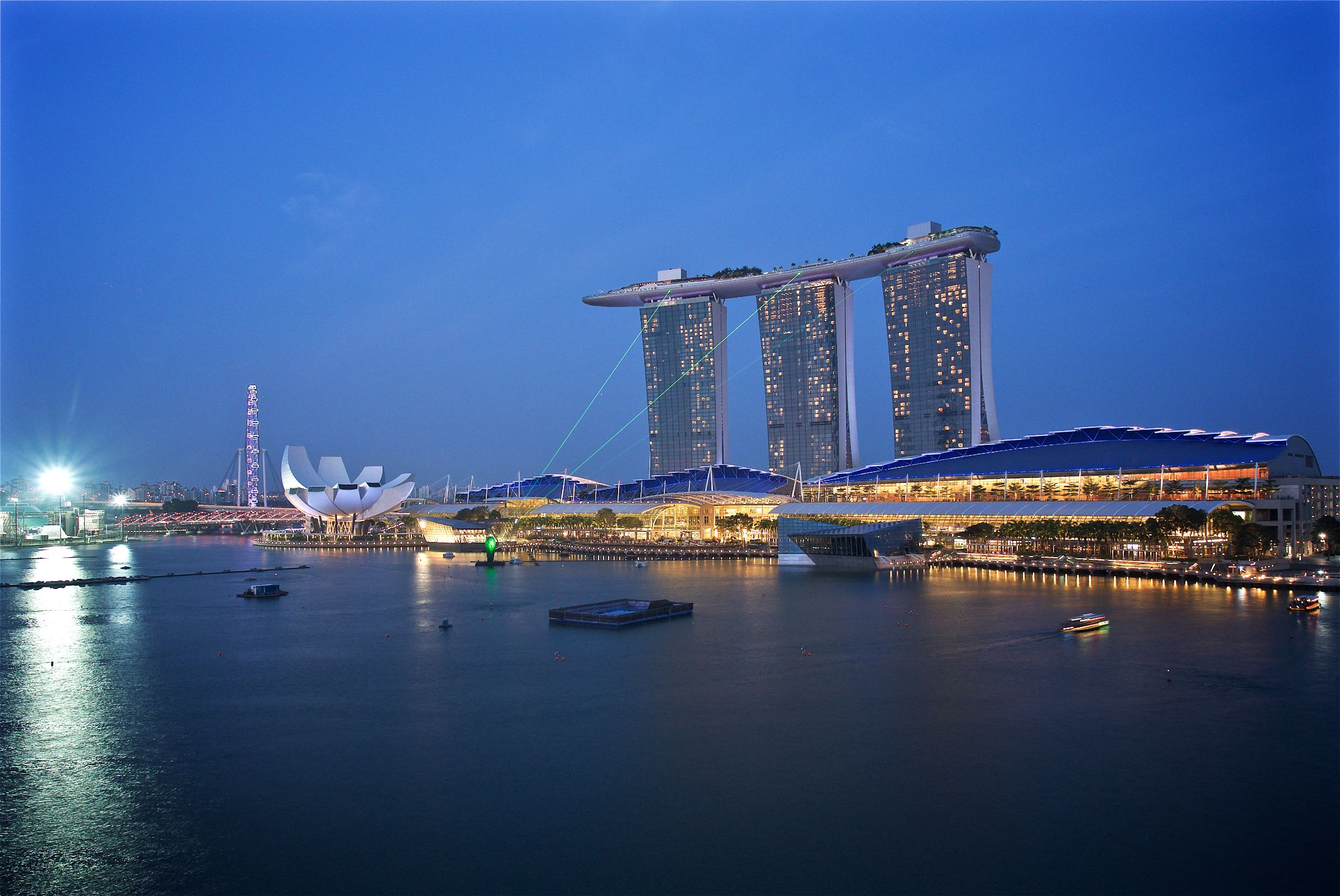
Attractions
Singapore Flyer, ArtScience Museum and Marina Bay Sands seen from the Fullerton Bay.
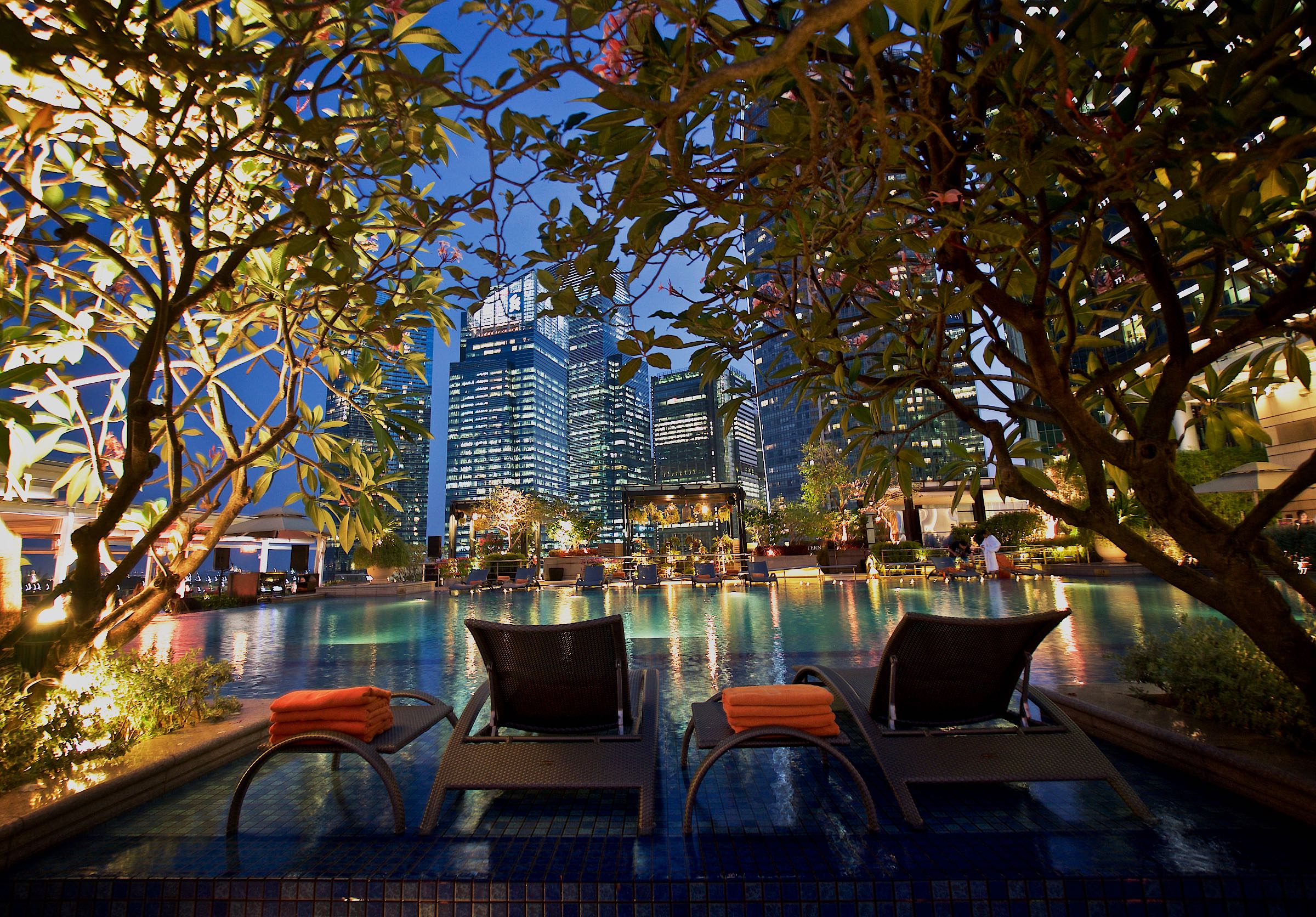
Fullerton Bay Poolside
A relaxing place in the concrete jungle.
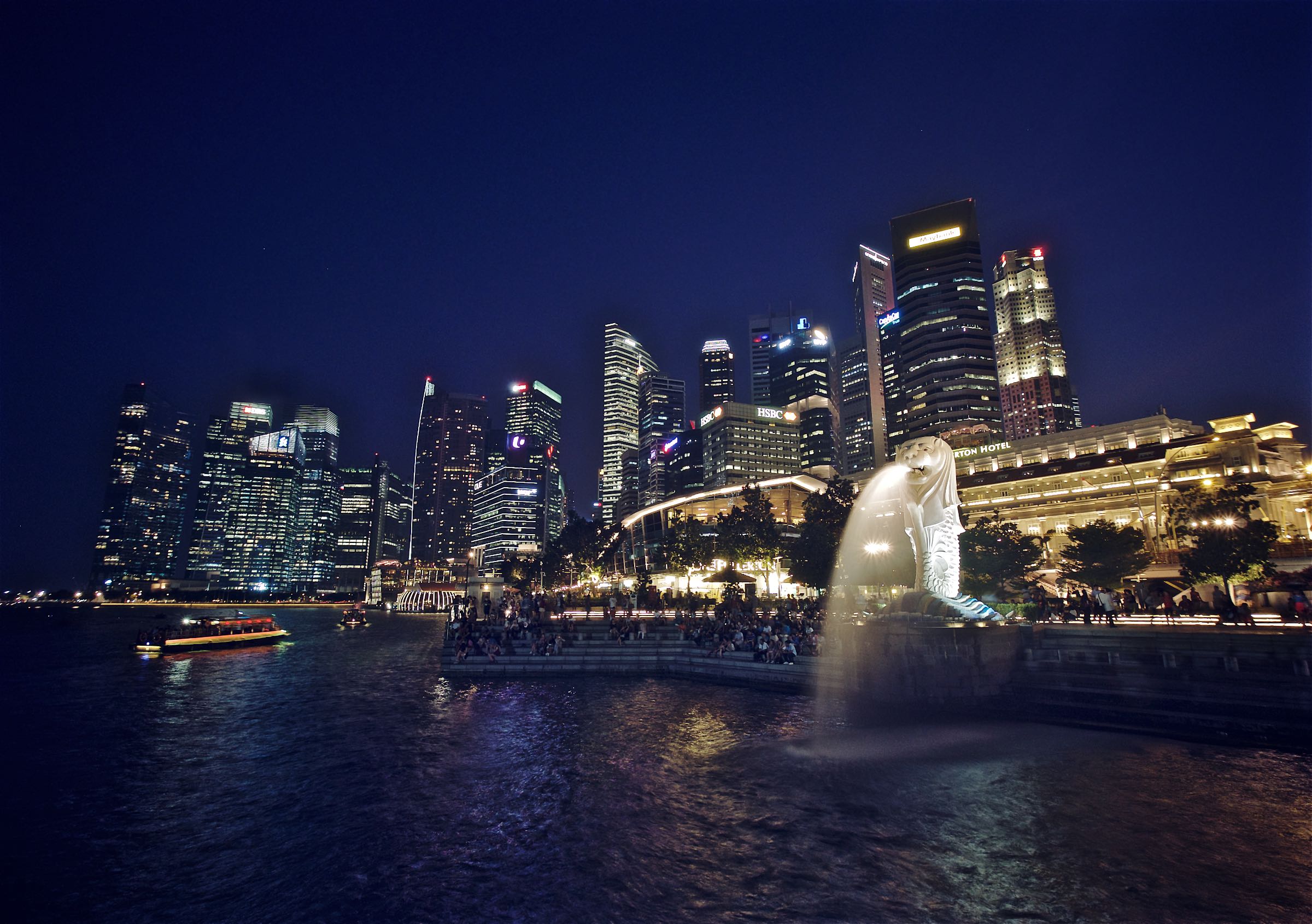
Downtown Core & Merlion
Singapore's mascot and it's skyline in the background.
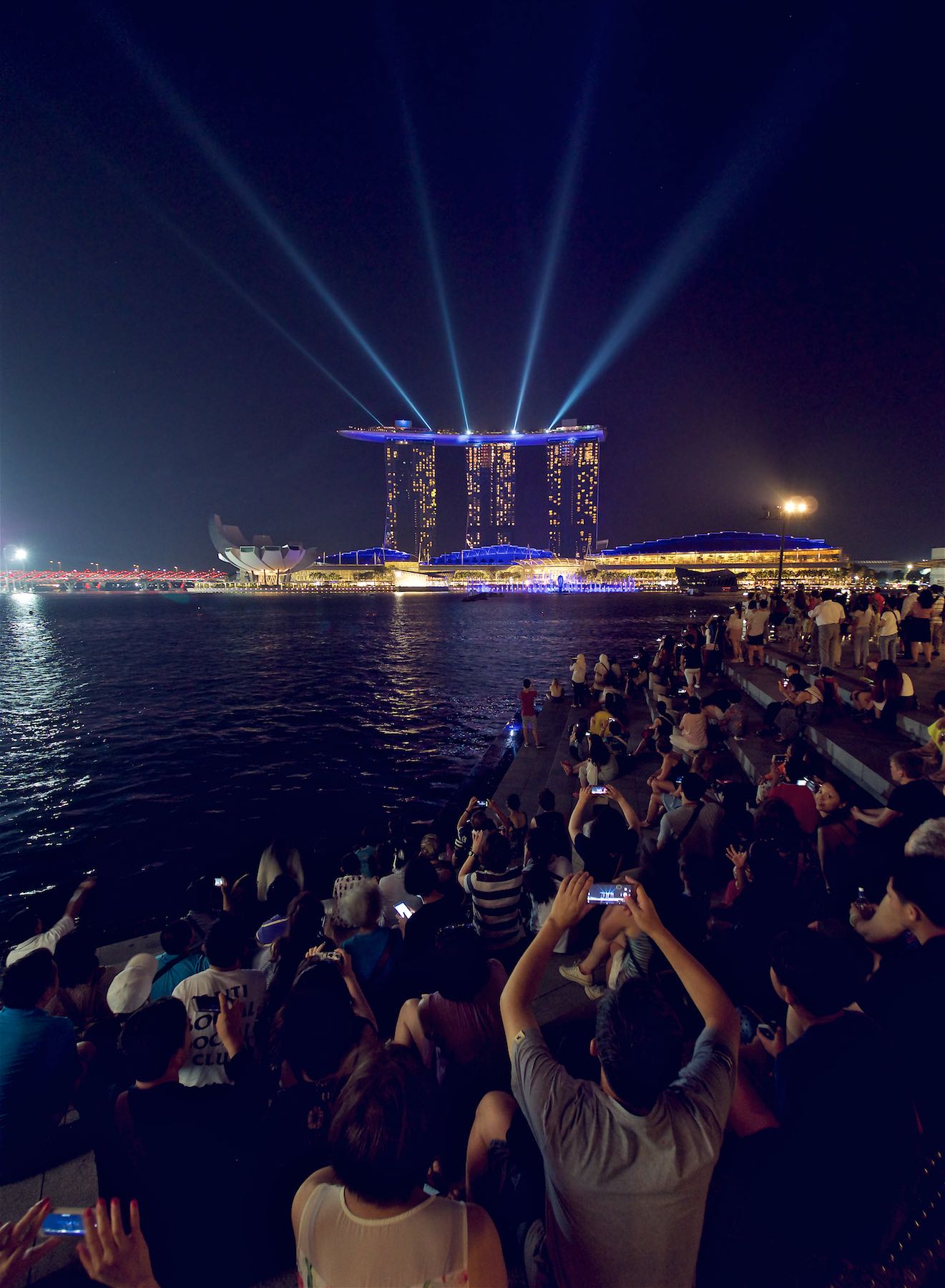
Lightshow
The daily fountain and light show attracts lot of people on the other side of the bay.
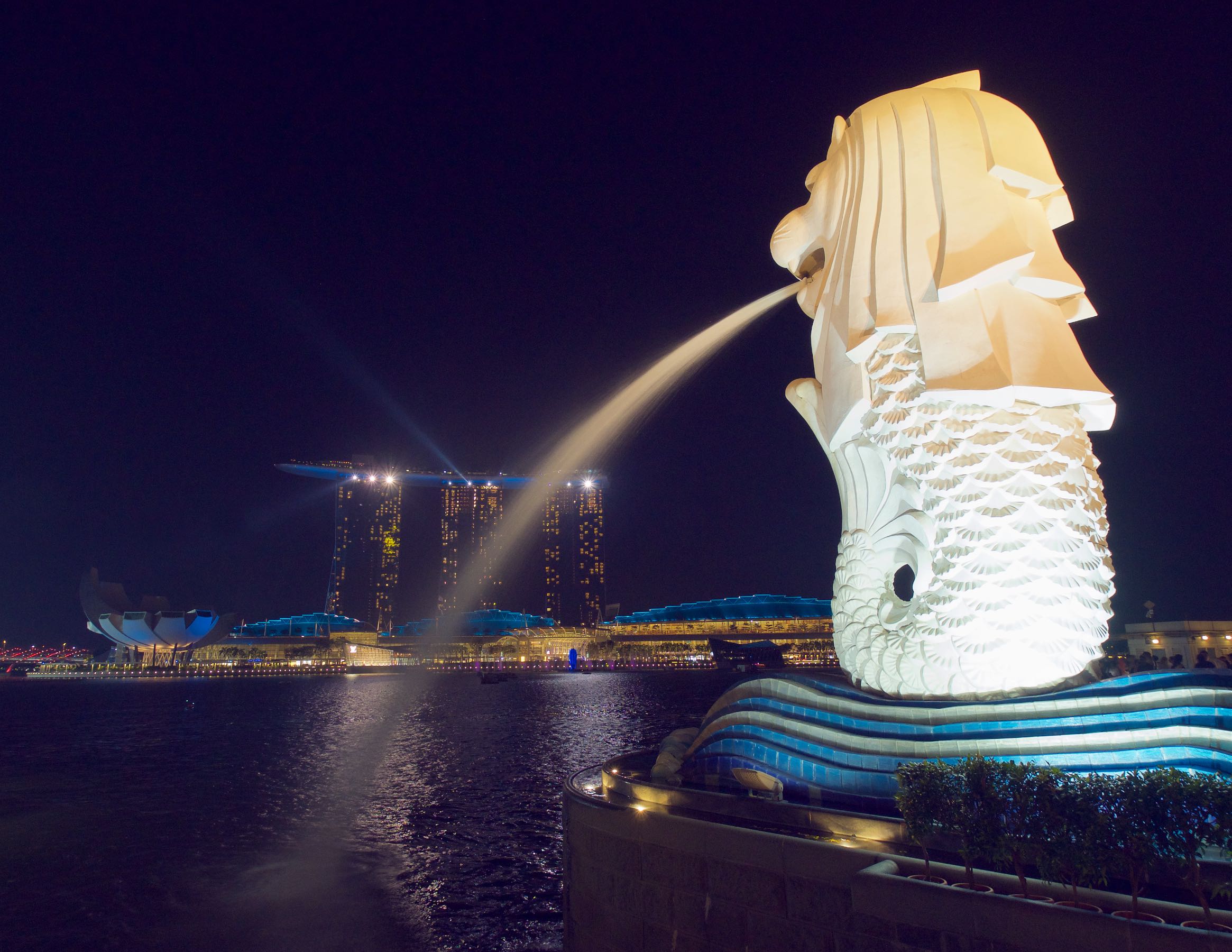
Merlion
Singapore's mascot comes with a few stories. For example, it was relocated in 2002, and in 2009 it was struck by lighting.
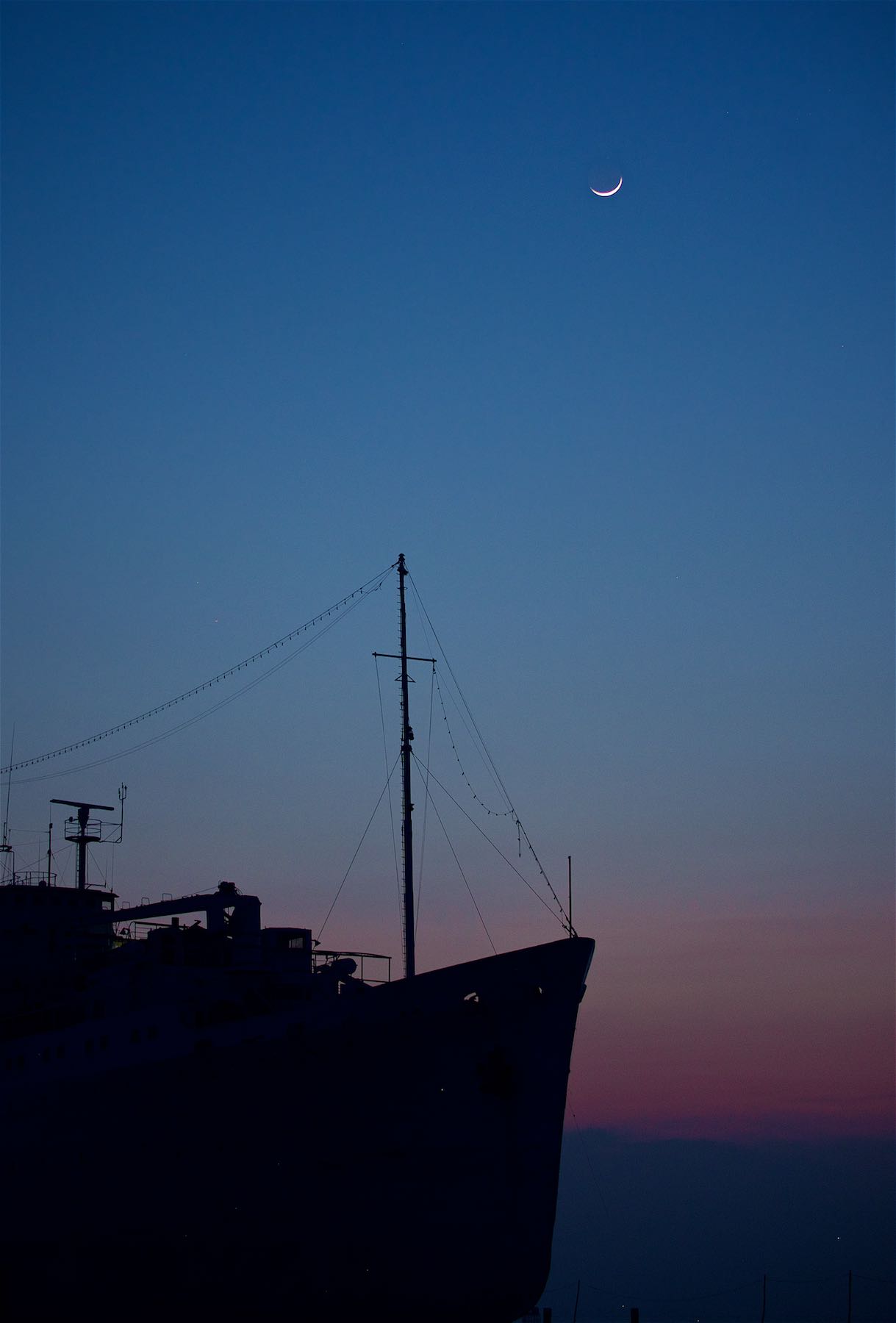
Moonset
The moon was setting in the late evening during my time in Bintan, just coming down behind the Ghost Ship shortly after sunset.
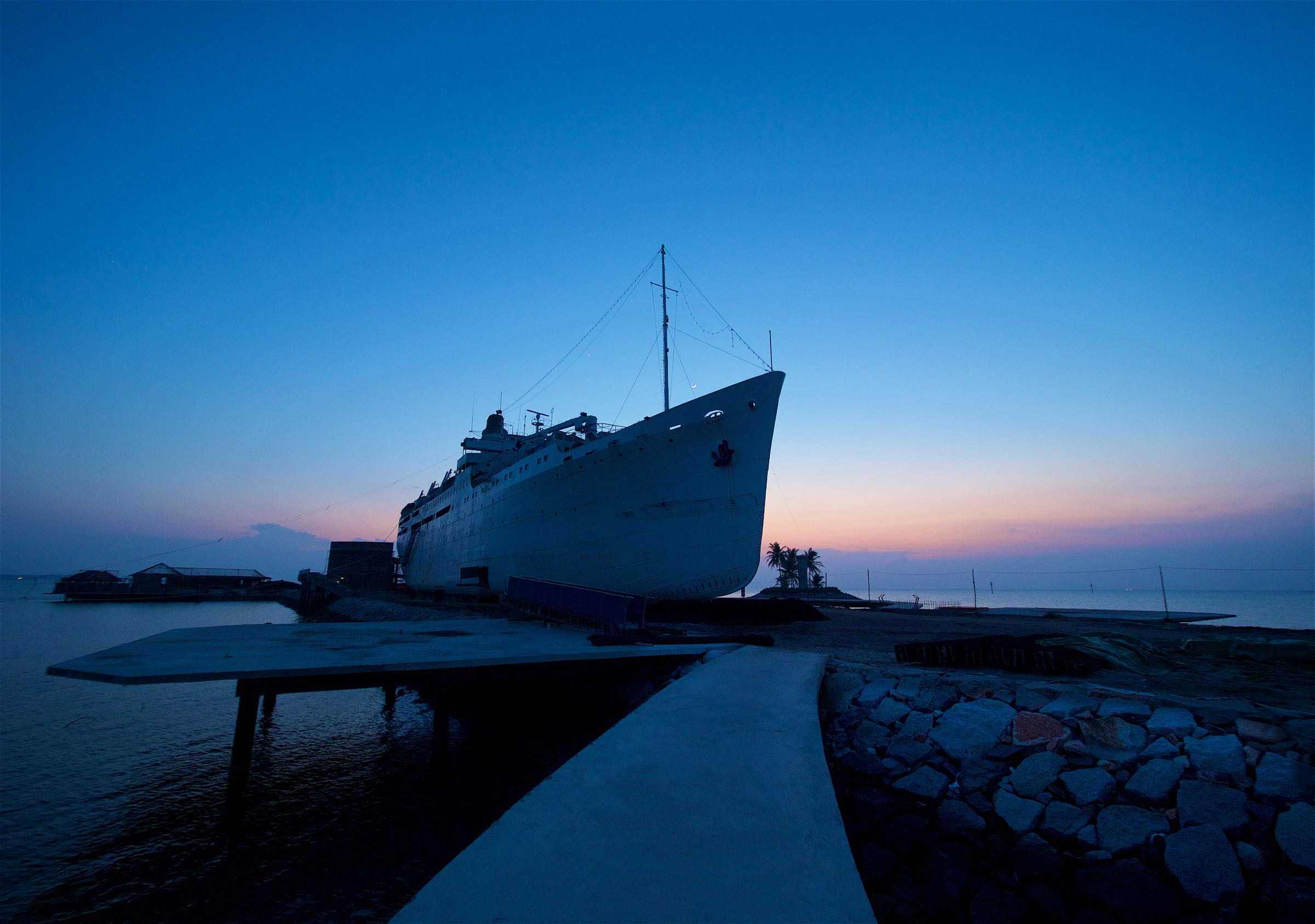
Construction Site
It was brought to Bintan a few years ago to turn it into a hotel. The work is ongoing and the hotel is expected to open in 2018.

MV Doulos
The ship was built in 1914 and held the record for the oldest active ship roaming the oceans.
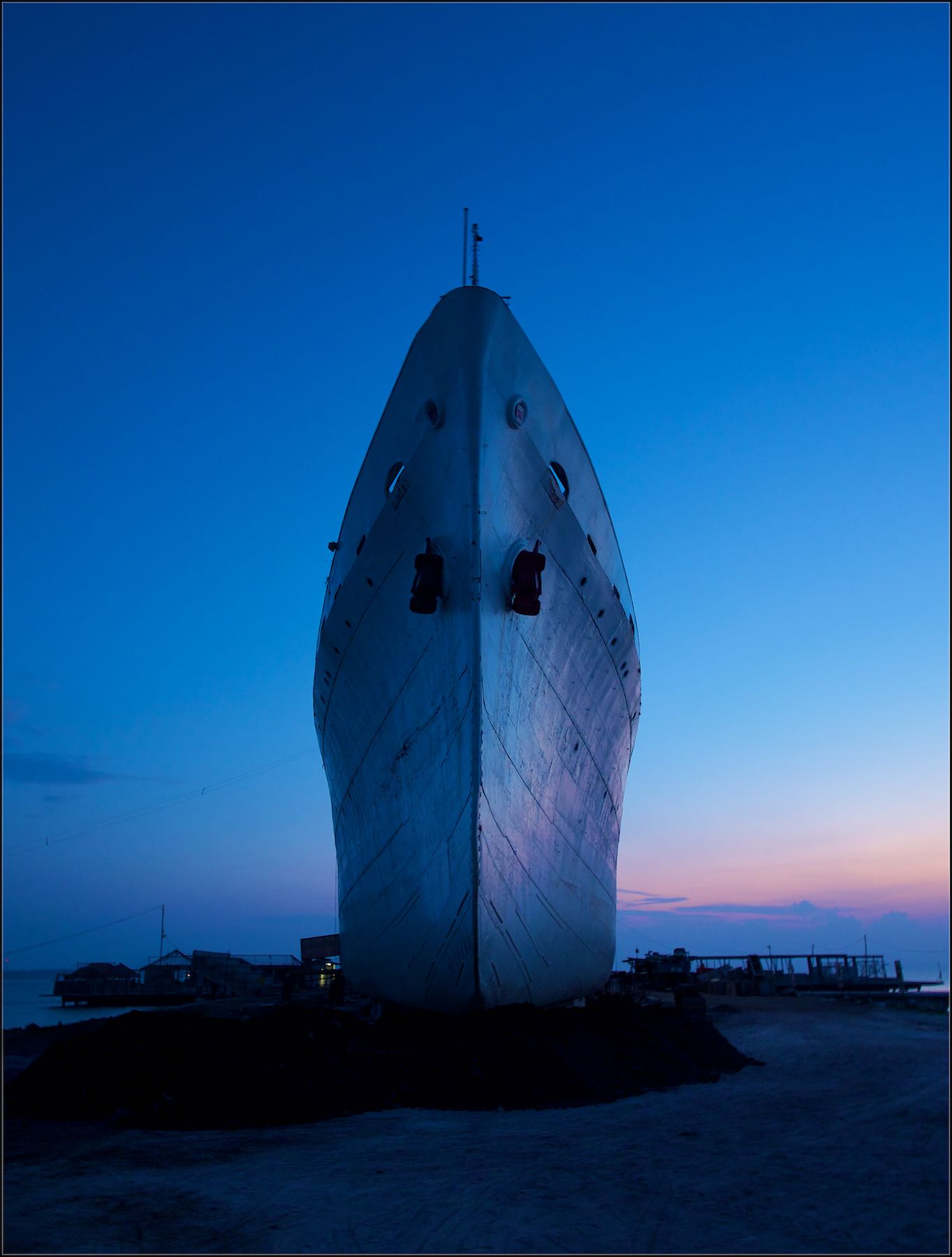
The Ghost Ship
Close to the main ferry terminal is the "Ghost Ship" of Bintan.
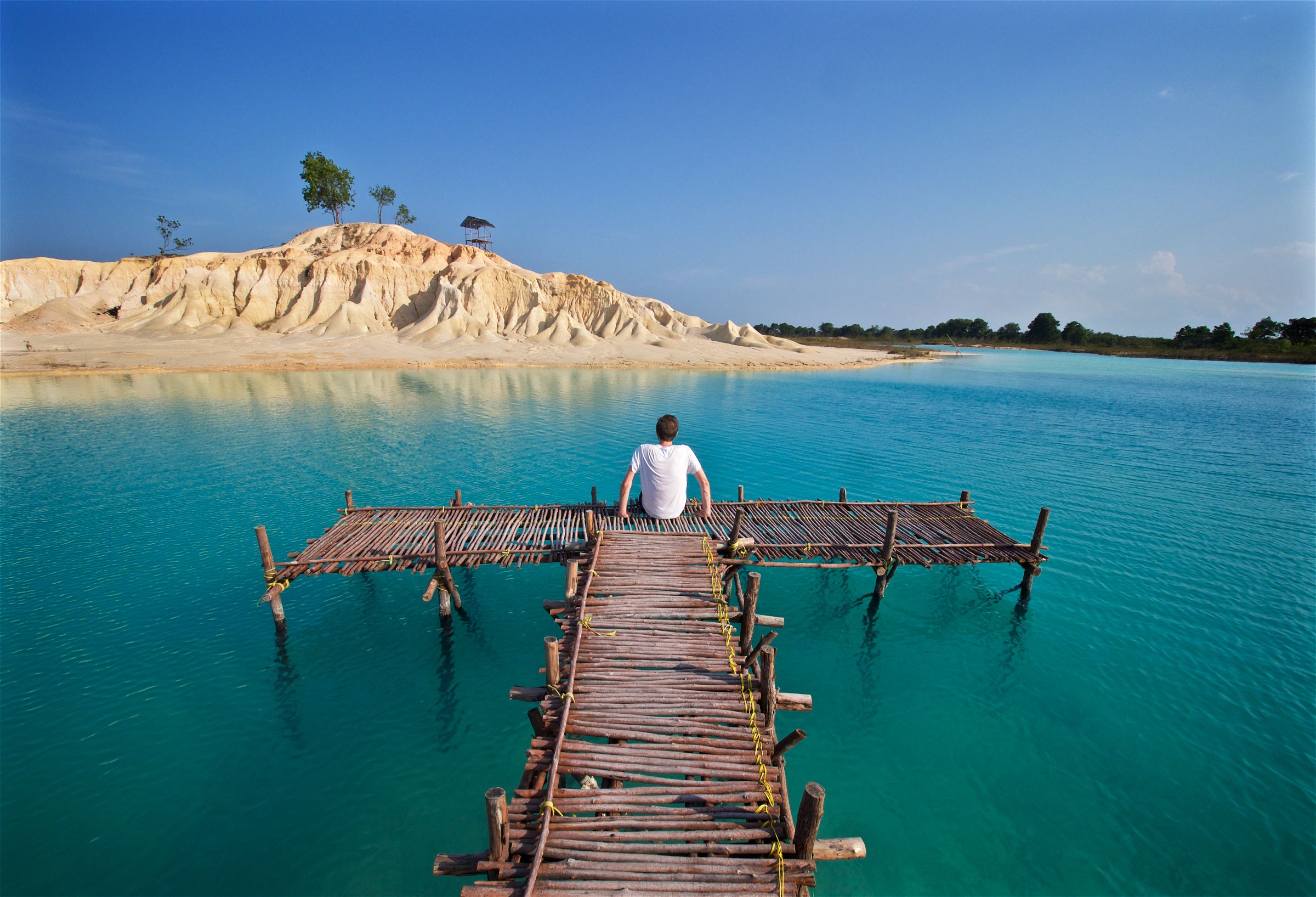
Colours
The color and clarity of the water comes from the filtering of the stone.
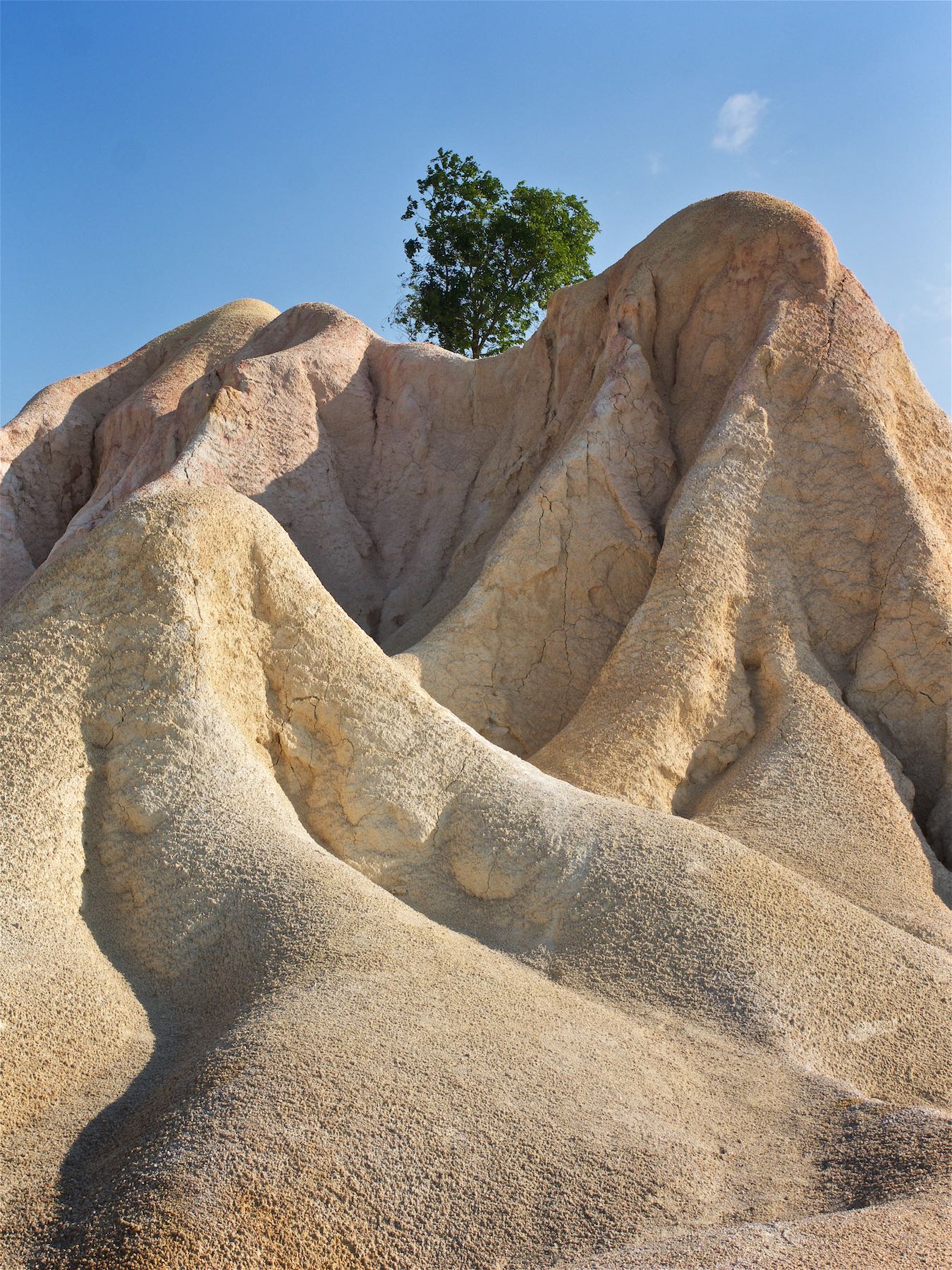
Transformation
Most of the site used to be a quarry, and now looks like sand dunes of the desert.

Out of this World
Walking around here felt like another planet.
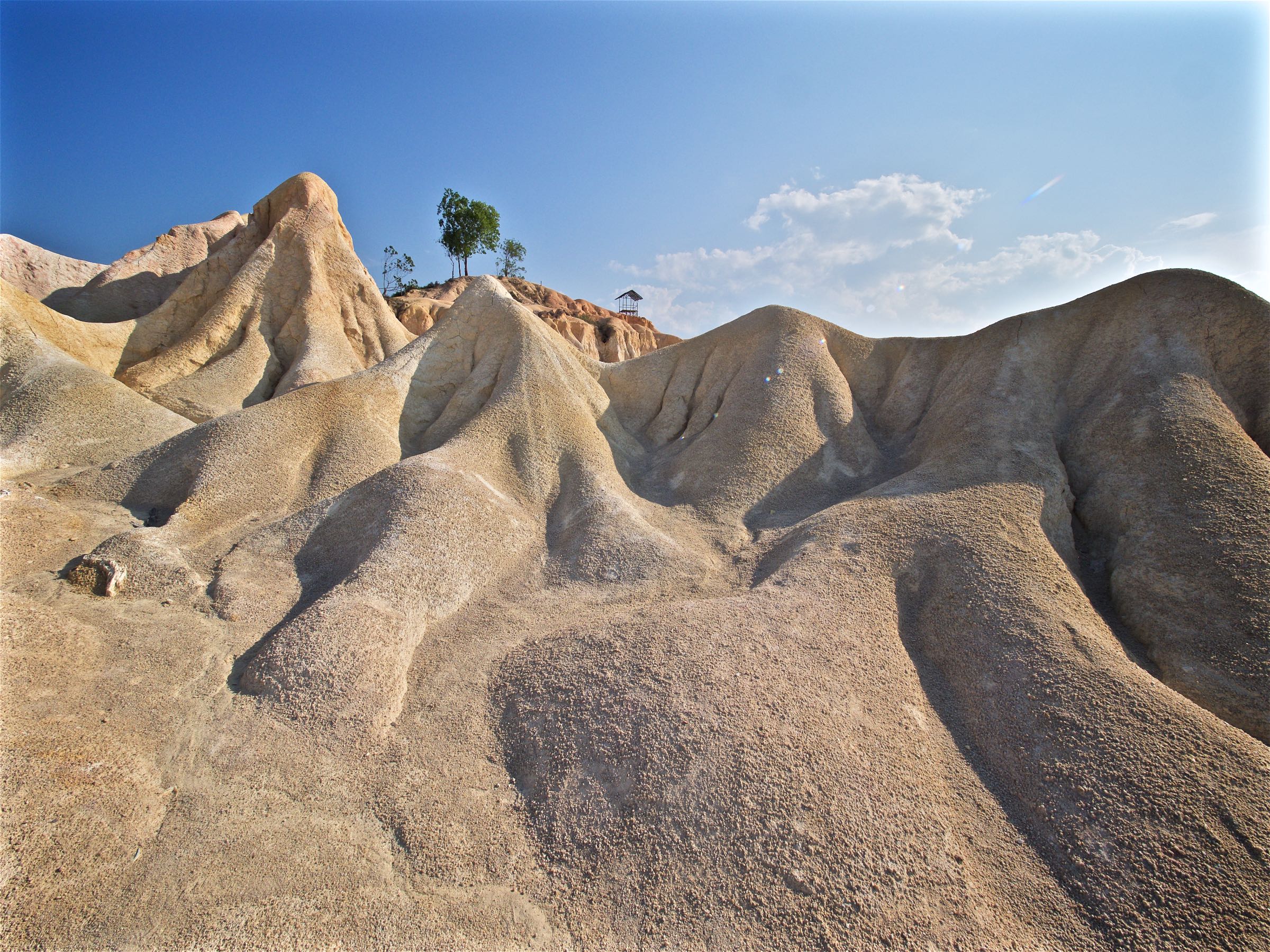
Rock Formations
Definitely one of the most interesting landscapes I've had the chance to photograph.
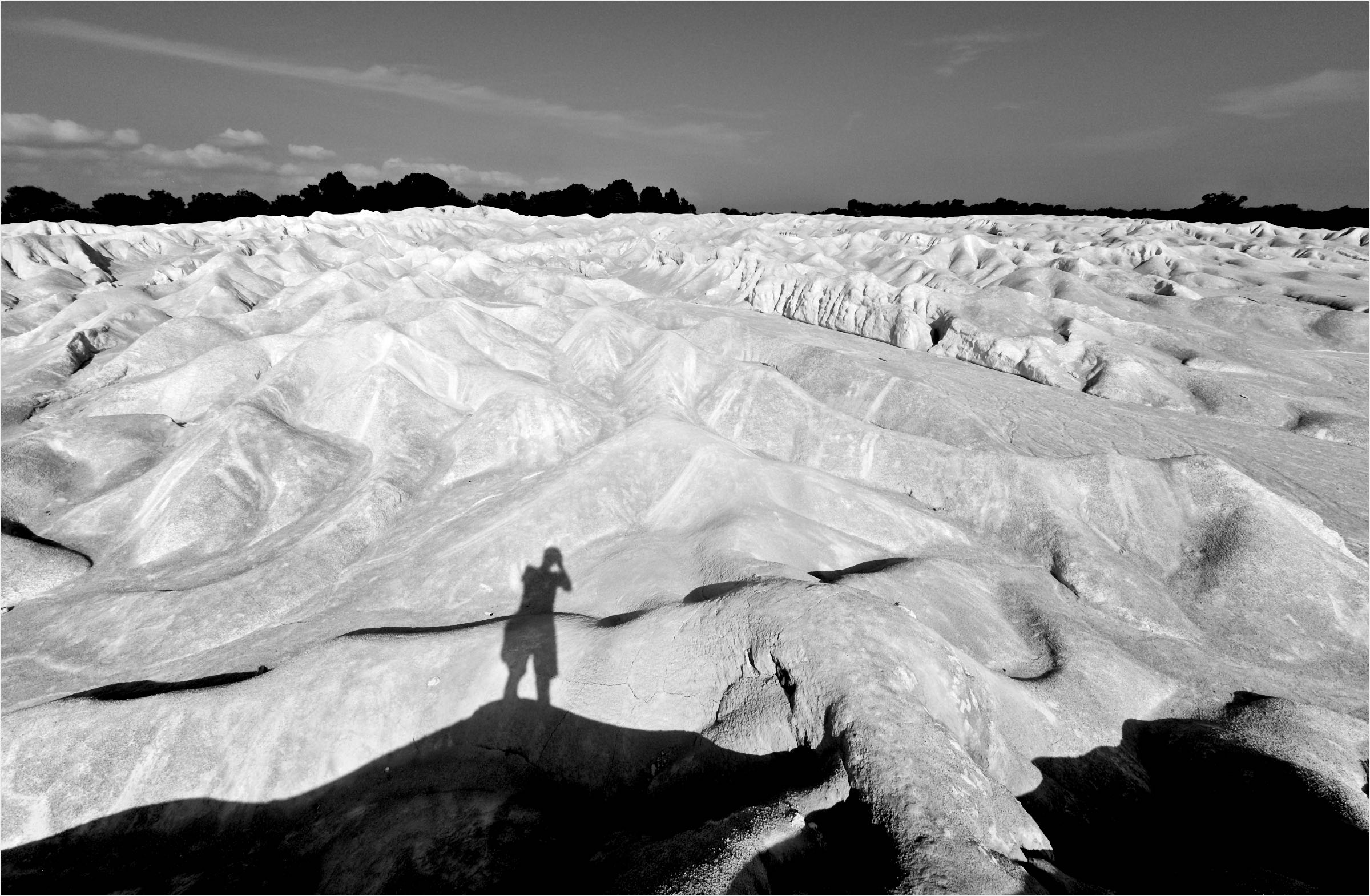
Hills
The landscape surrounding the lagoons is natural though, and certainly looks unique.

Sand & Salt
... makes up the landscape in this area of the island.
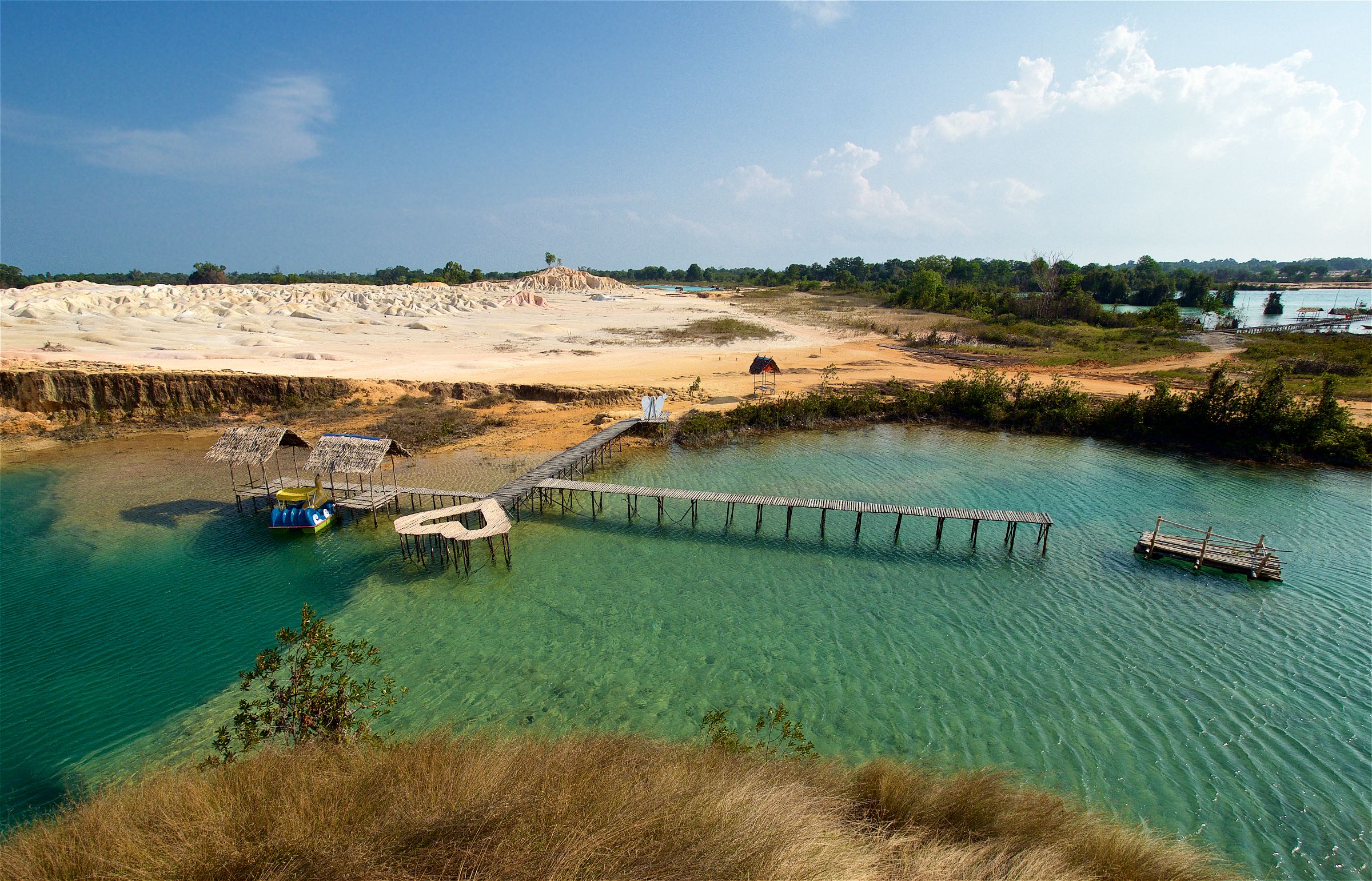
Danau Biru Lagoon
These amazing lagoons are not actually natural, but evolved out of the wholes dug when the land used to reclaimed Changi airport in Singapore was dug out of Bintan island.
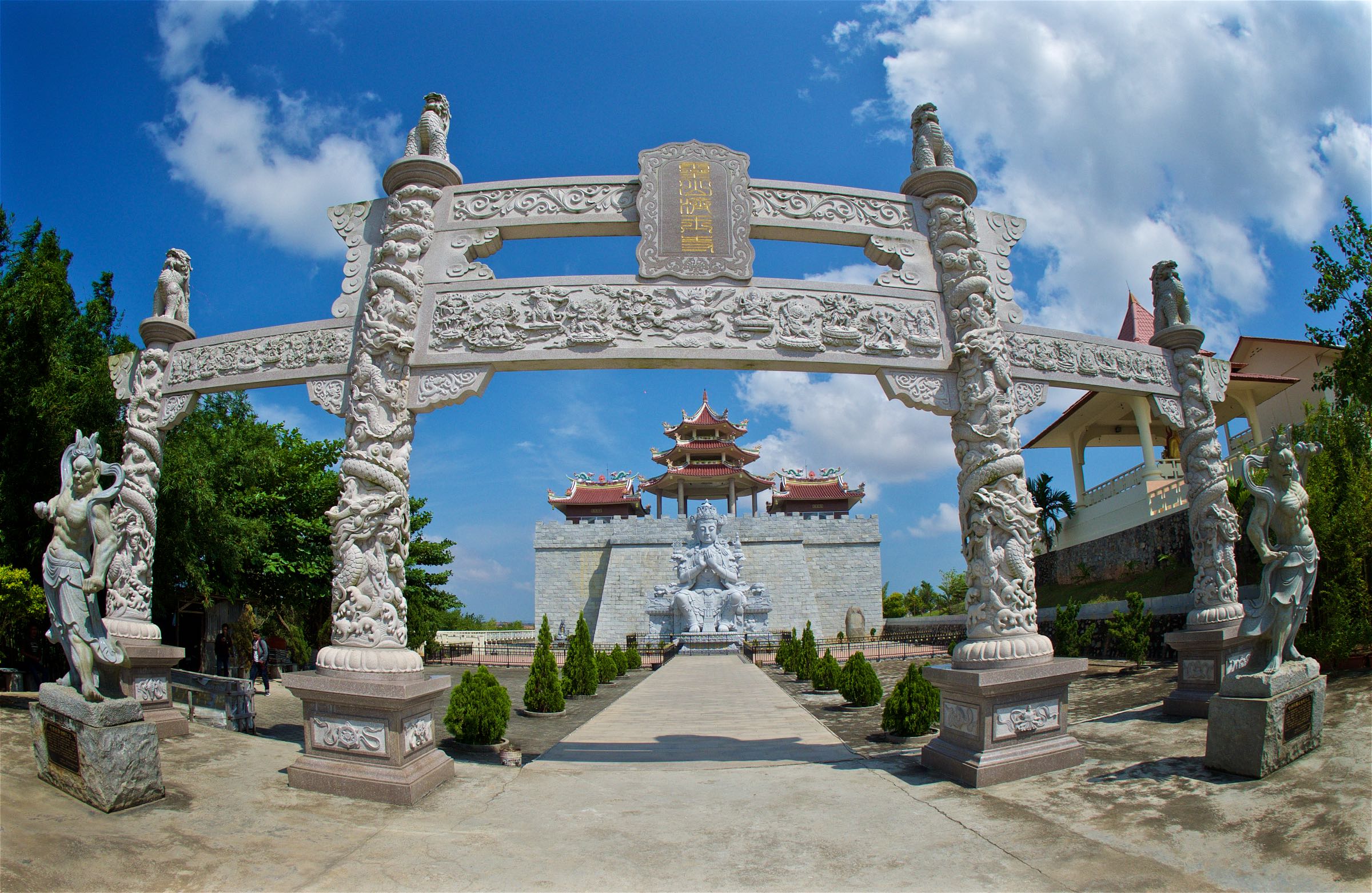
500 Lohan Temple
The entrance to the temple, which in its current form only opened in 2017.
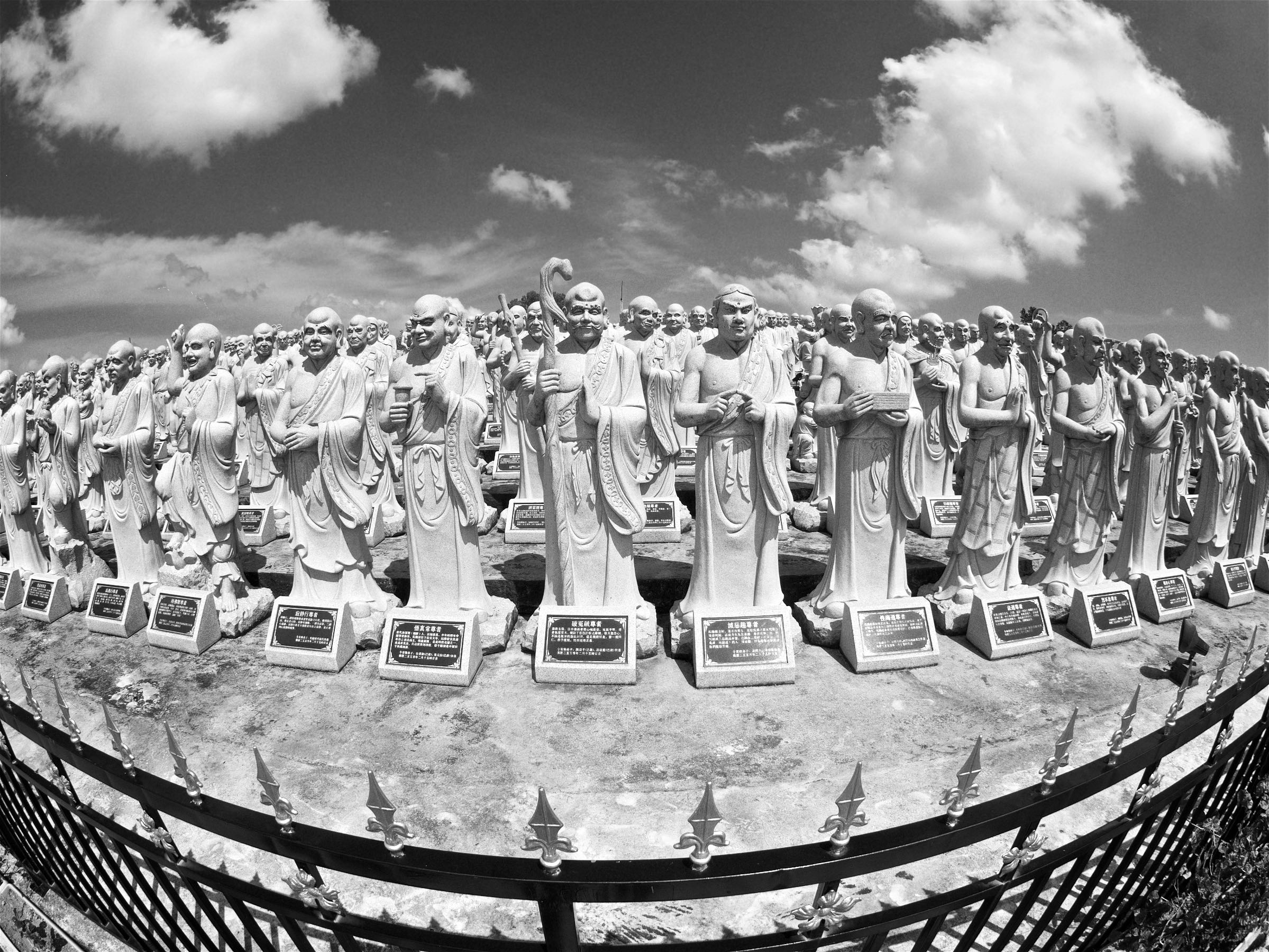
500 Arahats
500 lifelike status of the perfected persons following the buddhist religion, displayed at the 500 Lohan Temple. Worth a visit.

Cemetary
Close to the church is a cemetery with colorful gravestones.
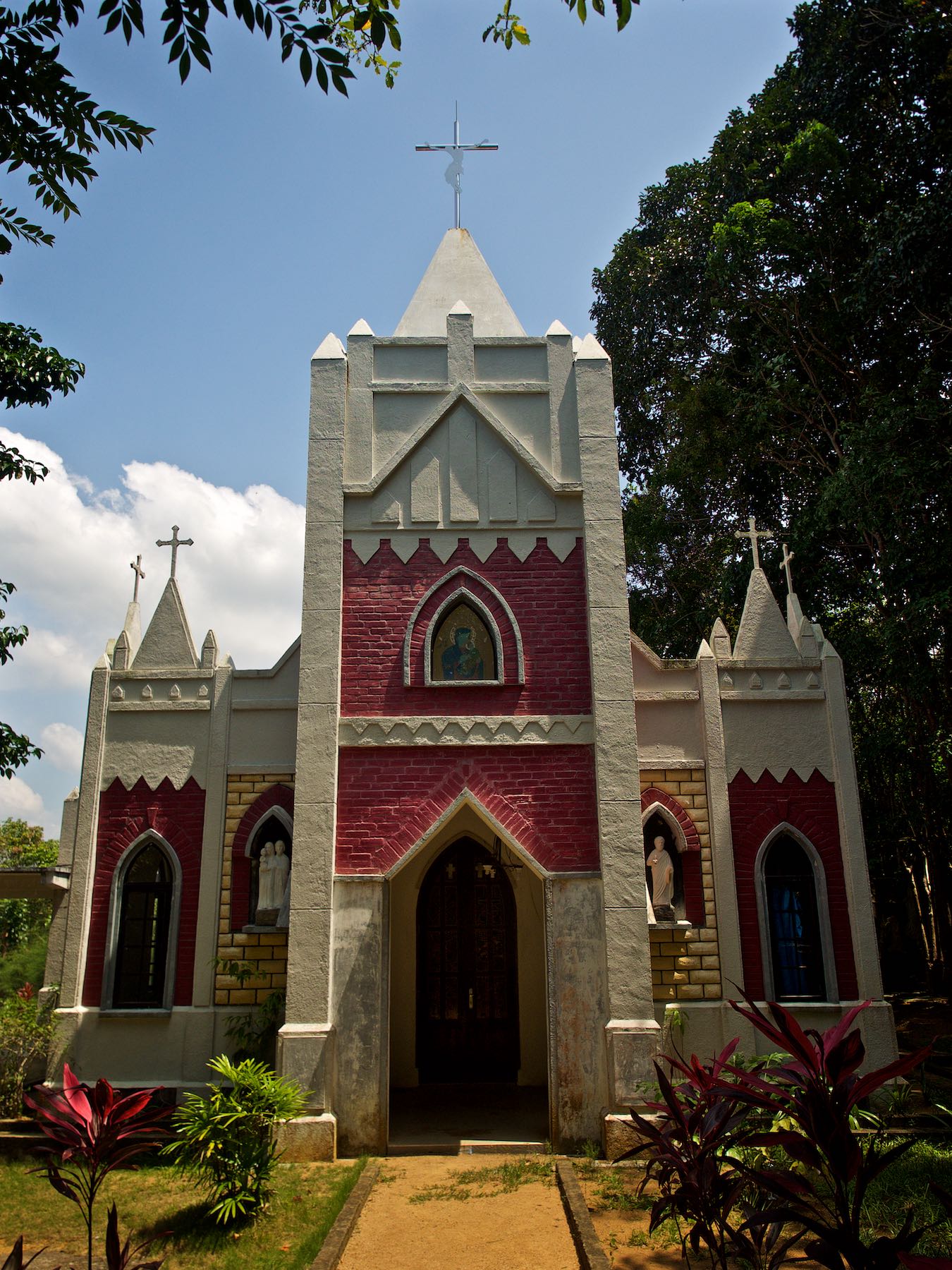
Island Church
Despite the largely muslim population, there's a church on the island near the Grotto Santa Maria, originally built in the 1800s by a Dutch pastor.
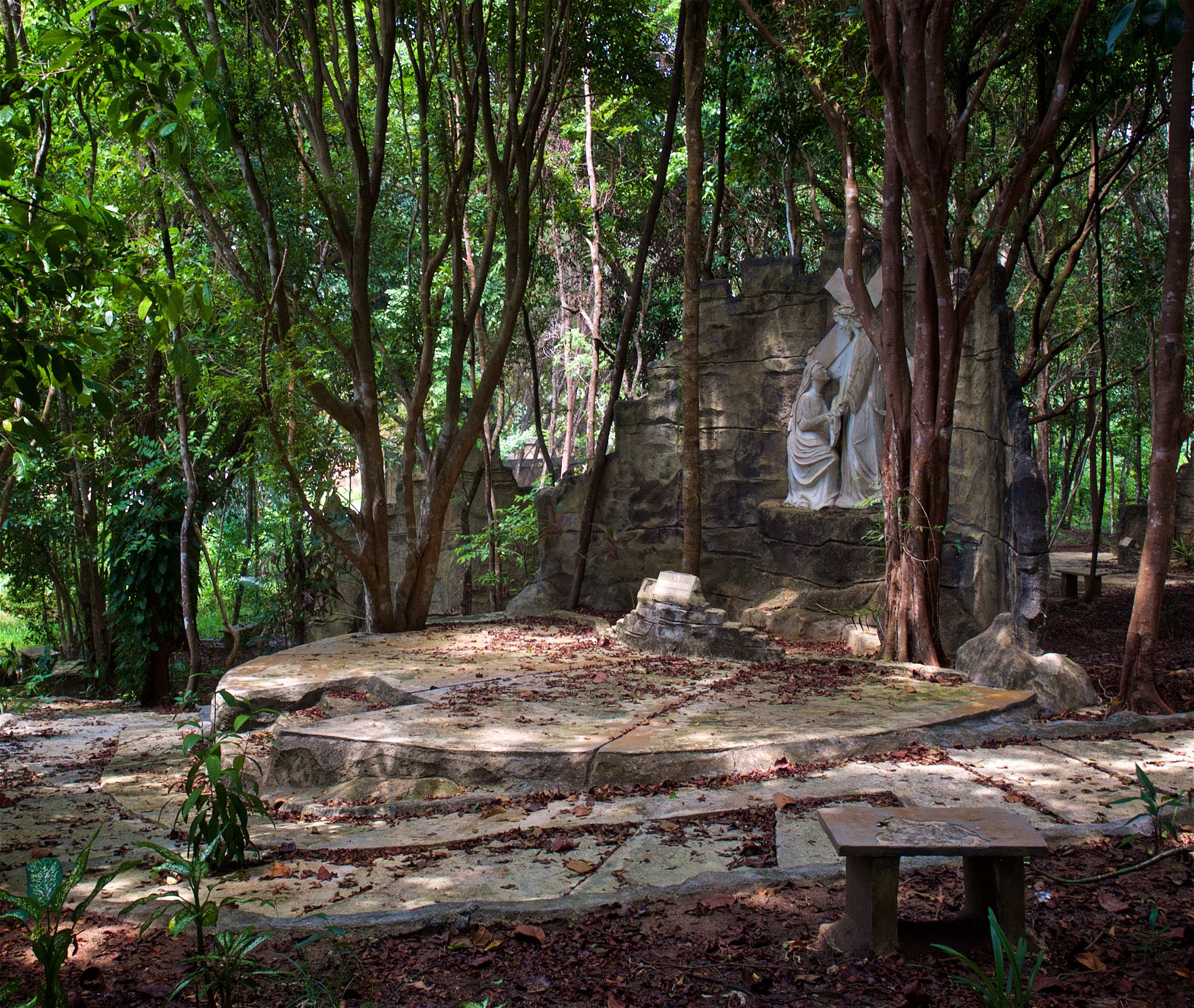
Path of Jesus
One of the weirdest religious monuments I've encountered so far - deep in the jungle of Bintan is a path depicting the 14 stations of the cross.
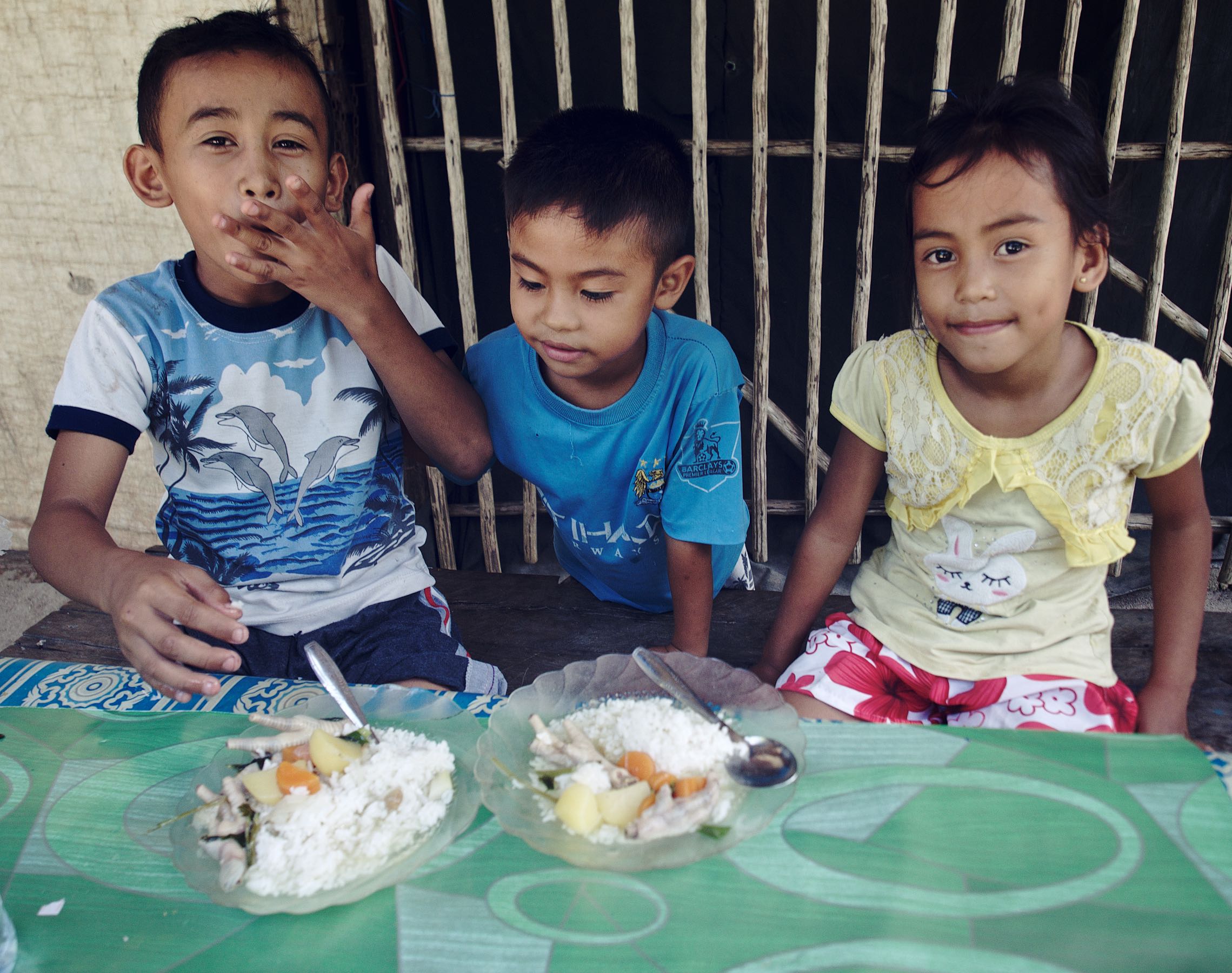
Lunch time
Soup with chicken feet. Tasted good, or so they said.

Smiles
Although with a few missing teeth.
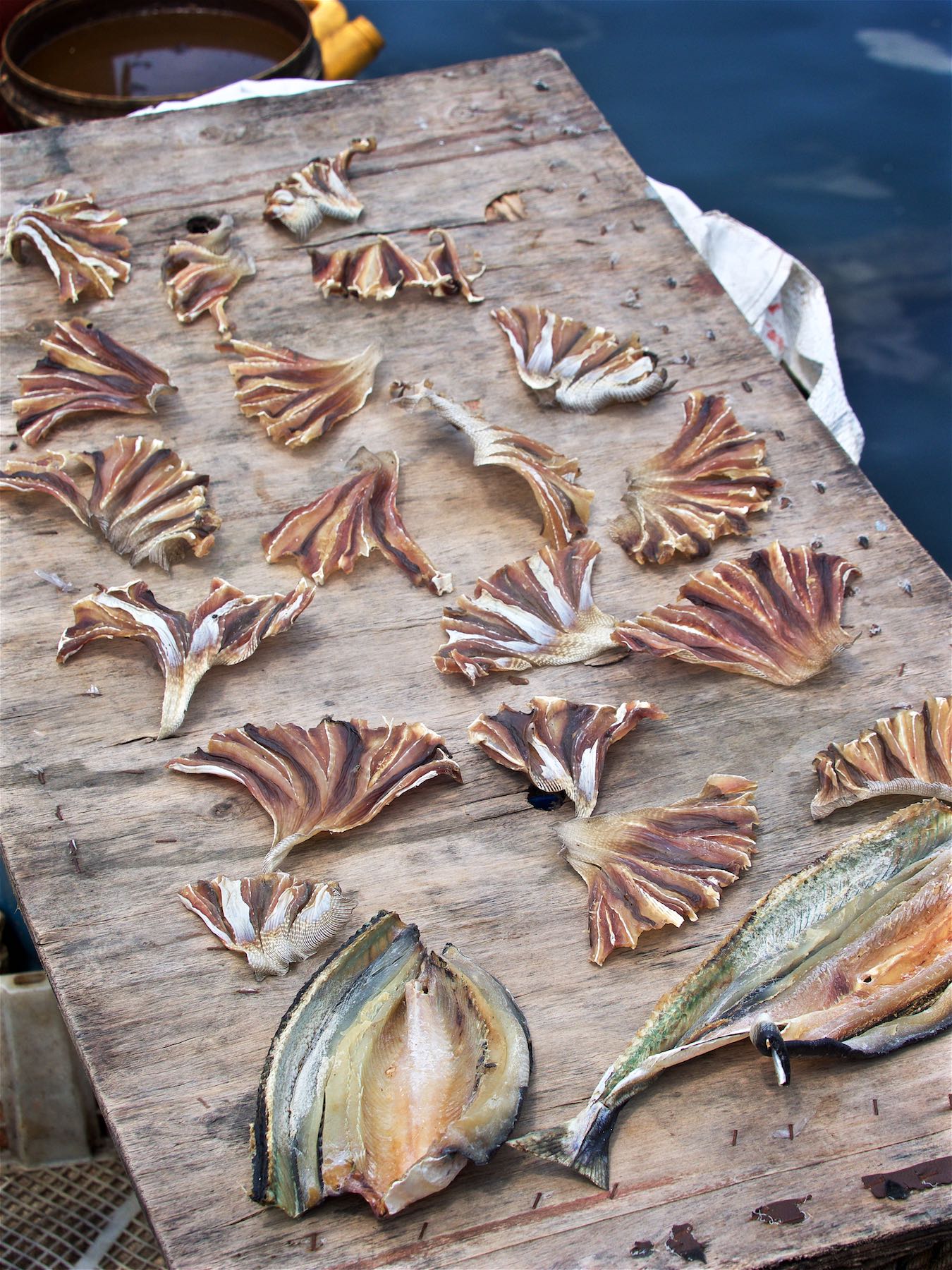
Dried Fish
Locals preparing fish to be dry in the sun.
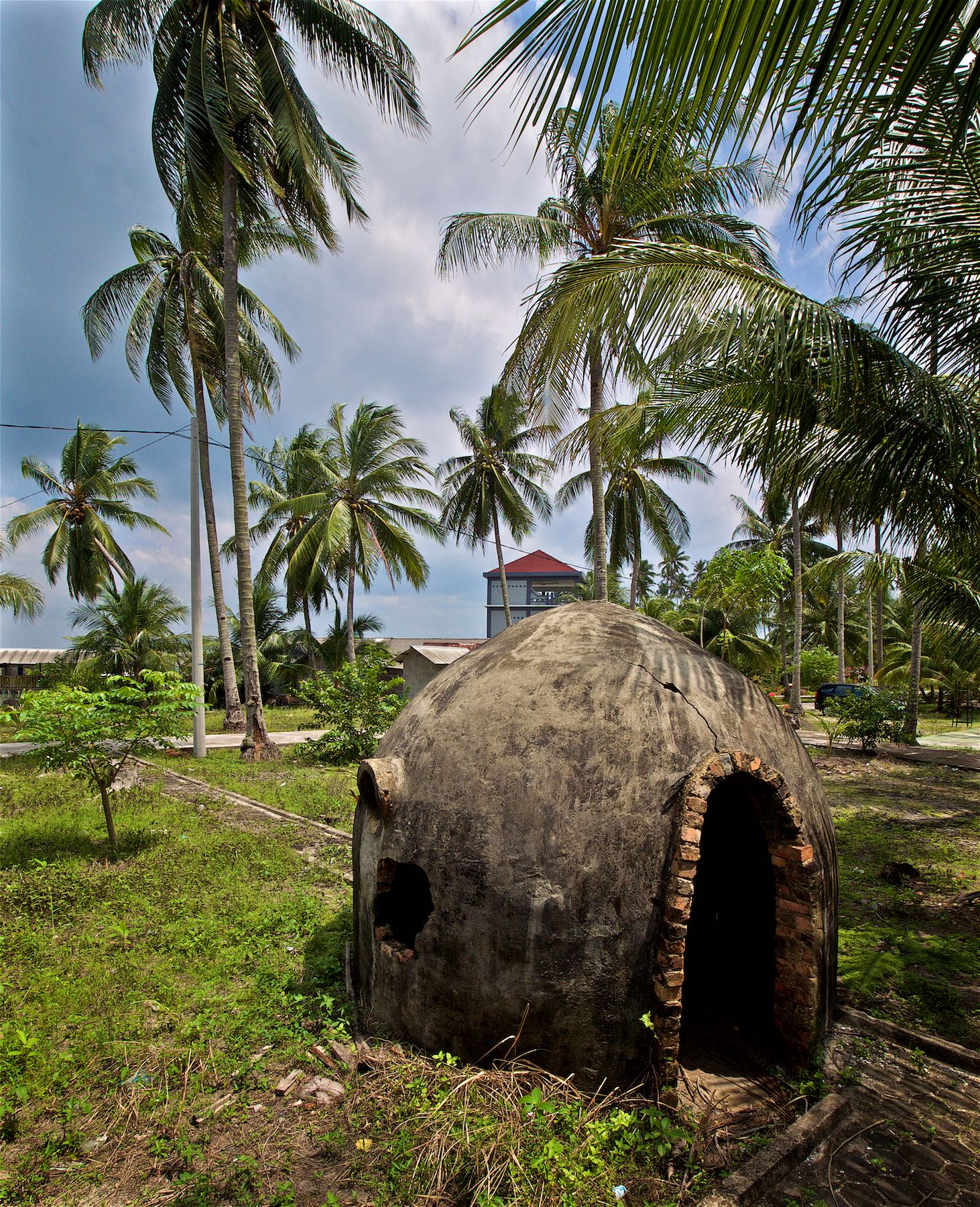
Coal Factory
Up until a few years ago, locals still used these to burn mangroves to turn it into coal and export it. Mangroves are since protected by law.
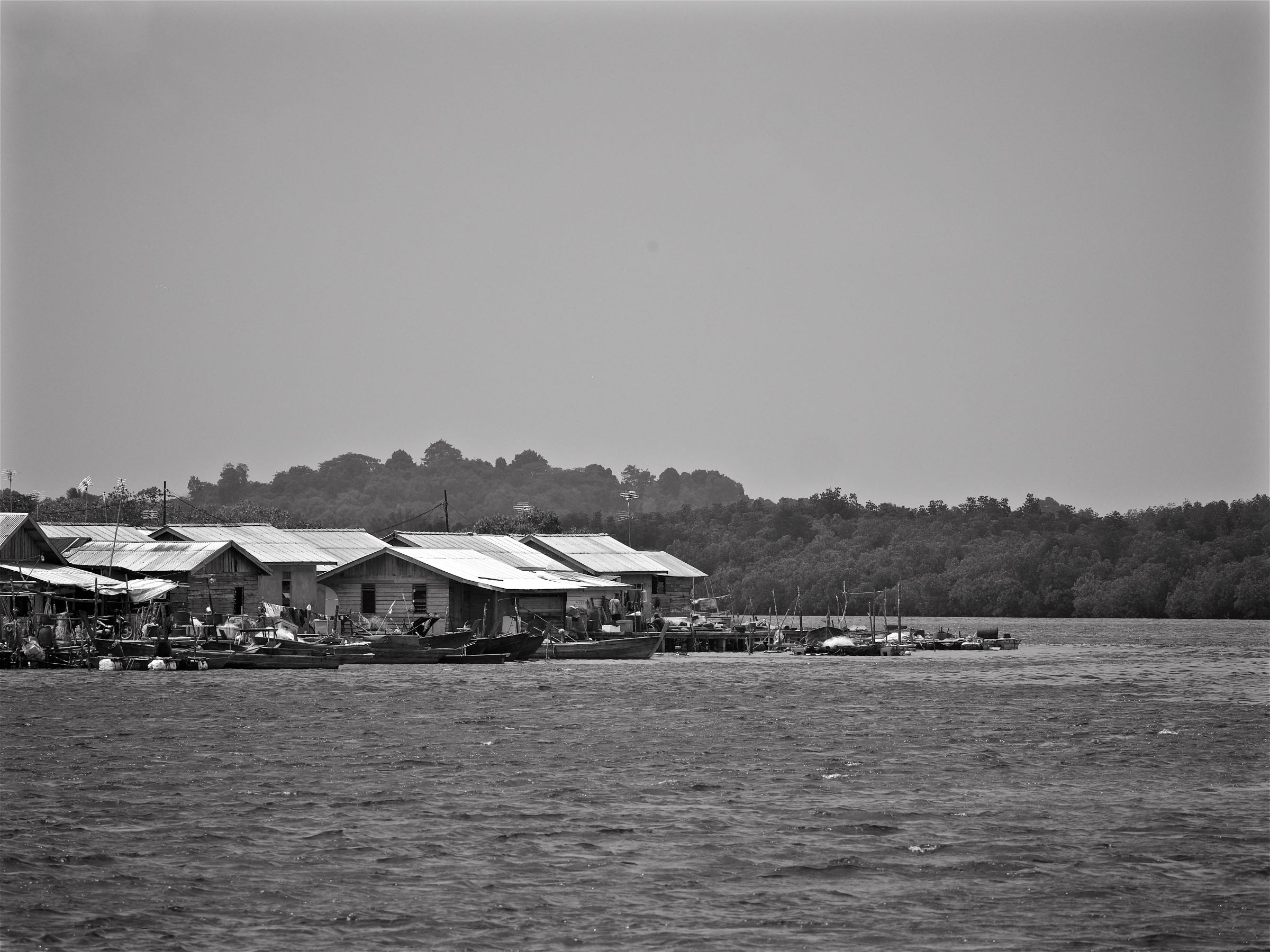
Fishermen's Village
Bintan island is still home to a local population of gypsies, a few hundred of them permanently live on the sea.
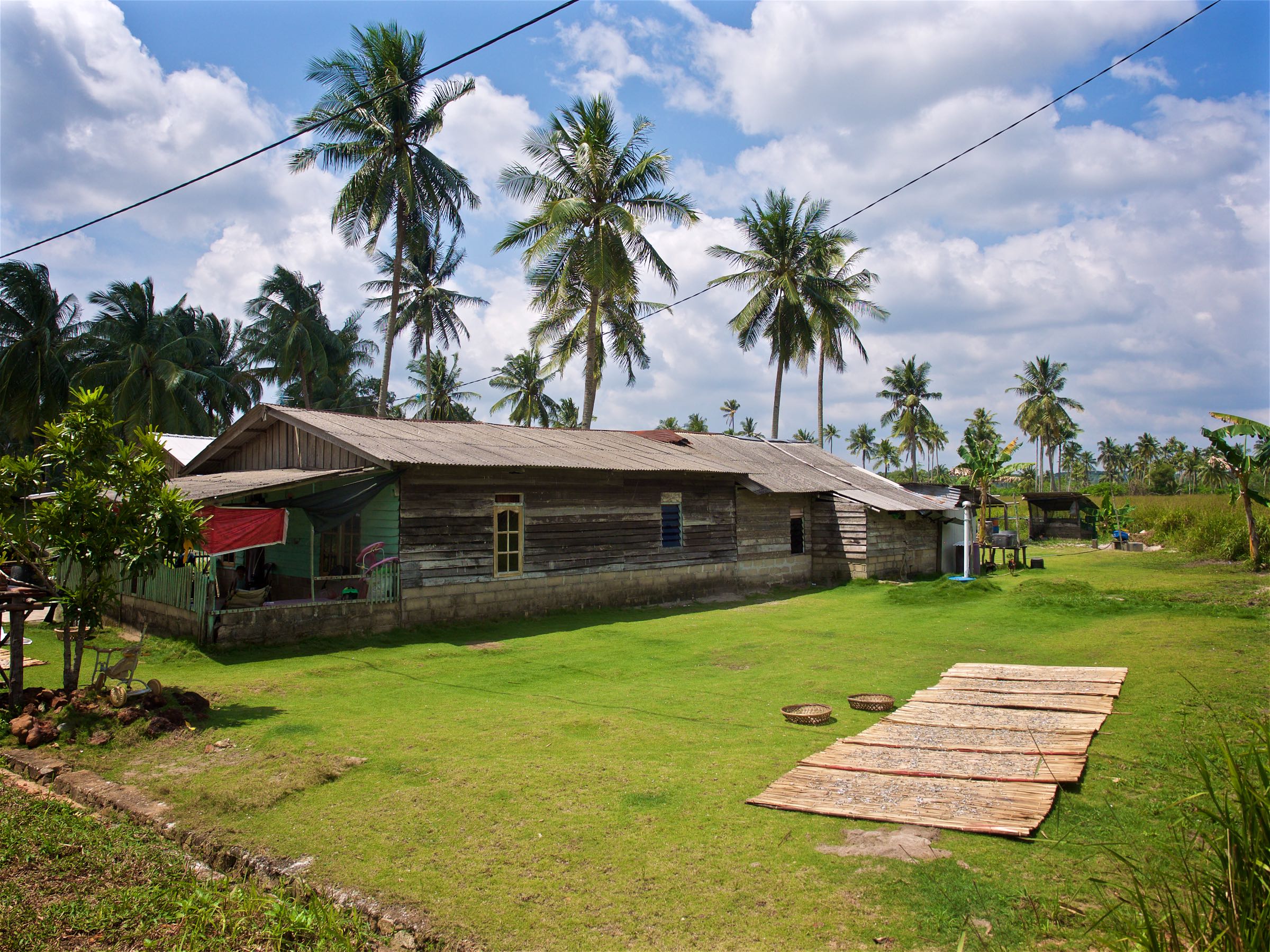
Drying Fish
The locals dry young fish in the sun for later consumption.
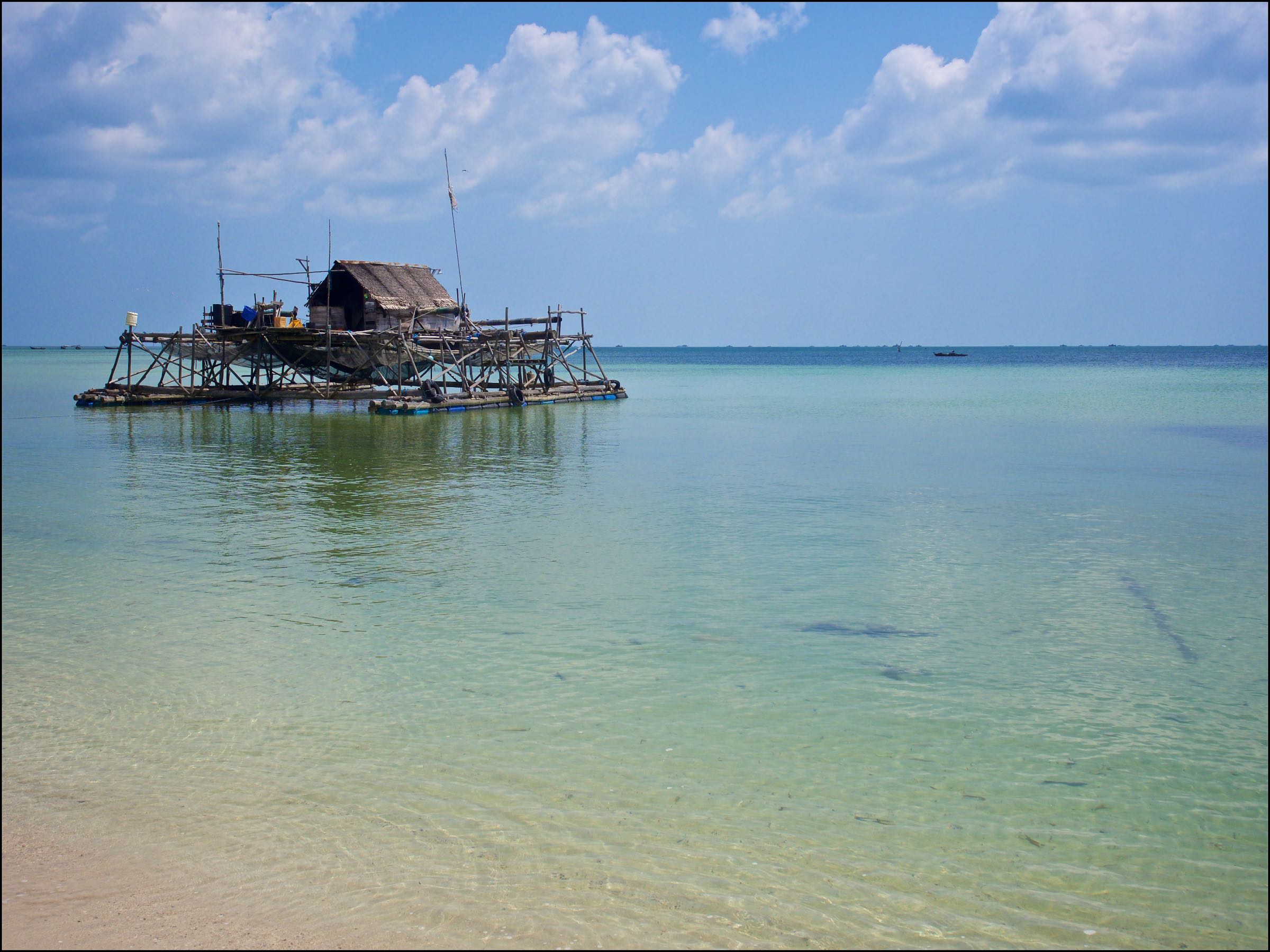
Floating House
Local fishermen live in floating houses.

Island Bliss
Fisherboats on the beach of Bintan Island.
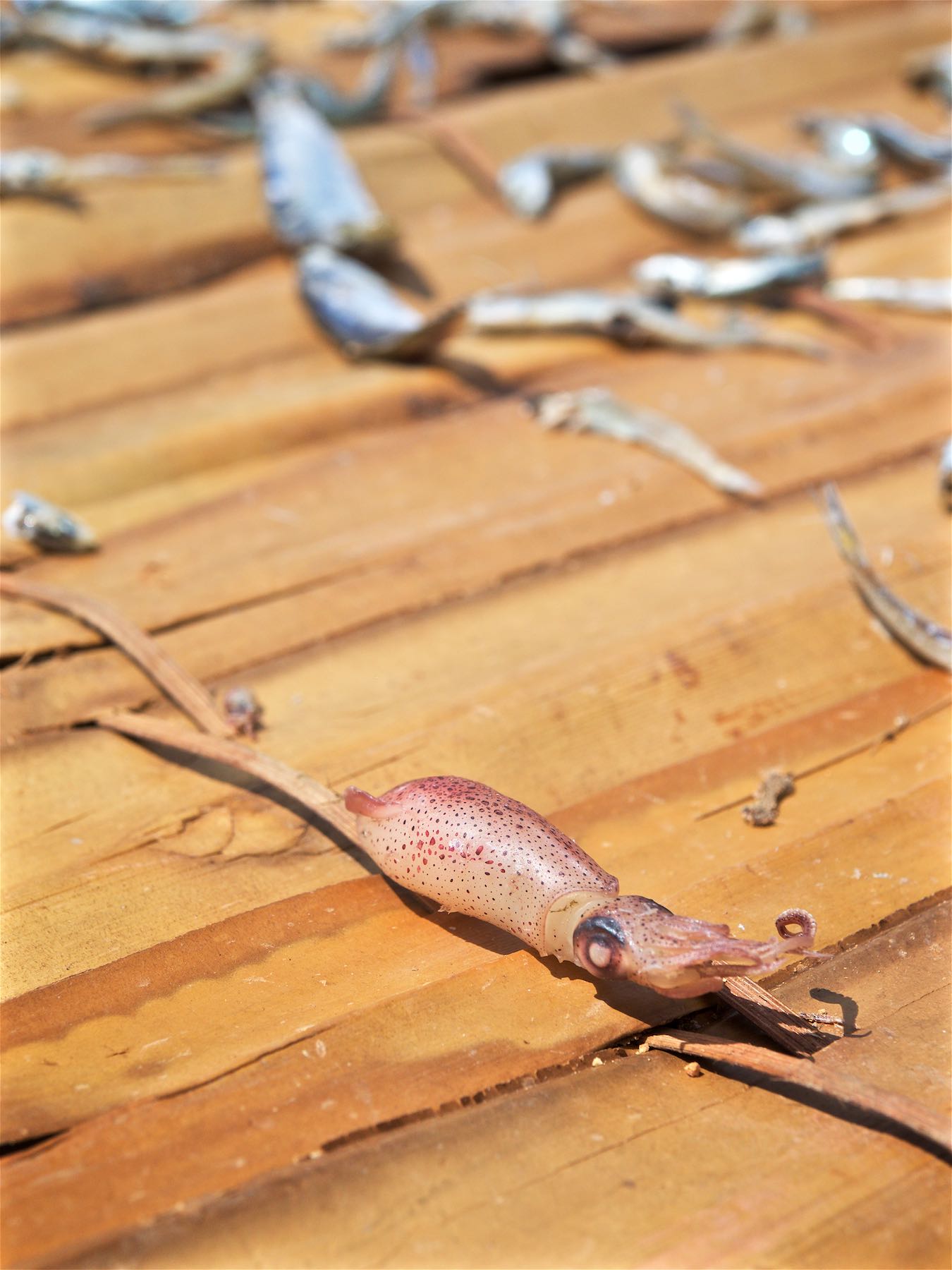
Baby Squid
Caught alongside the school of young fish.
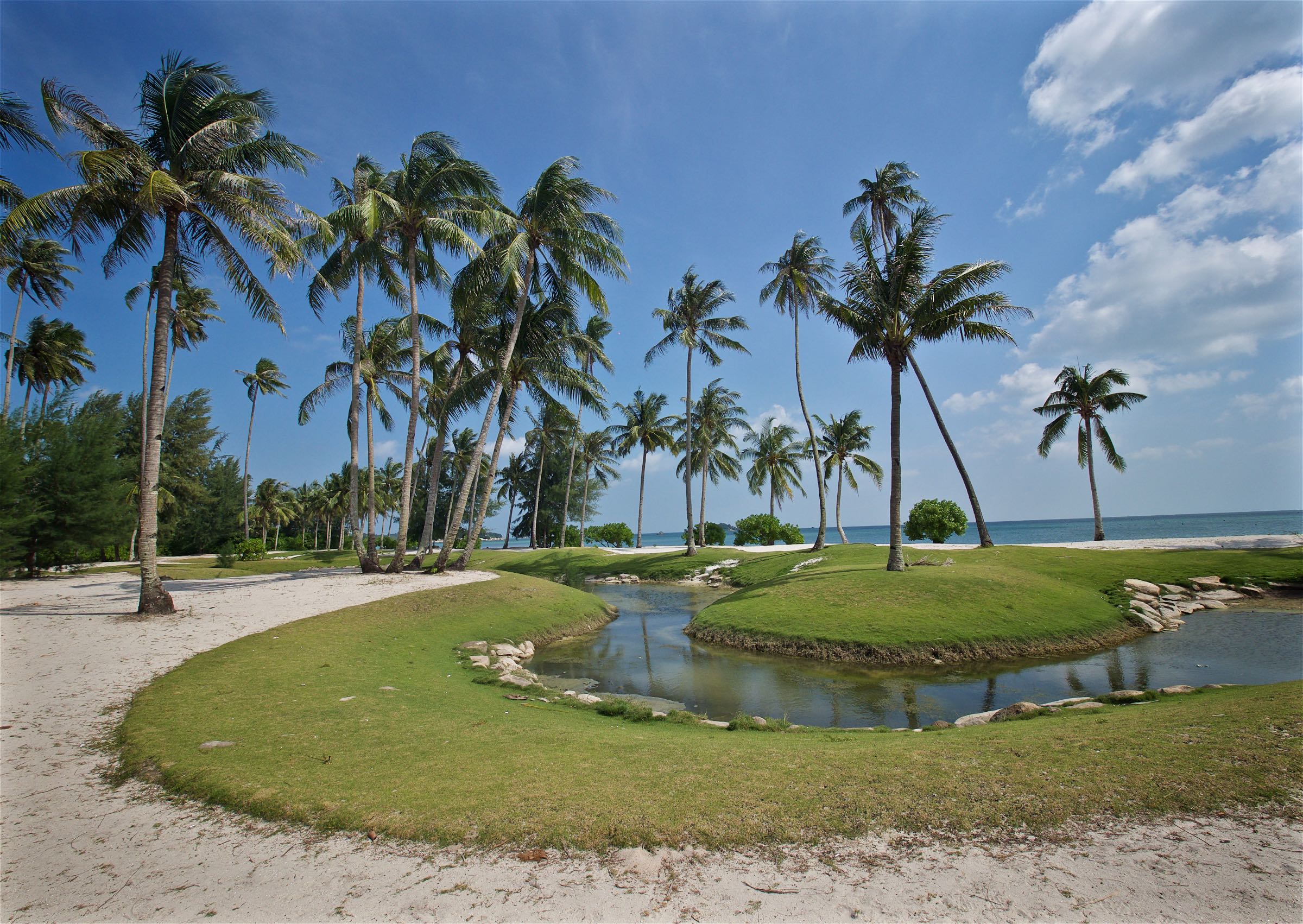
Bintan Resort Beach
The island has a few nice resort areas, but there's a lot more to explore... look further!

Human vs Natural Palm Trees
You judge who wins.


